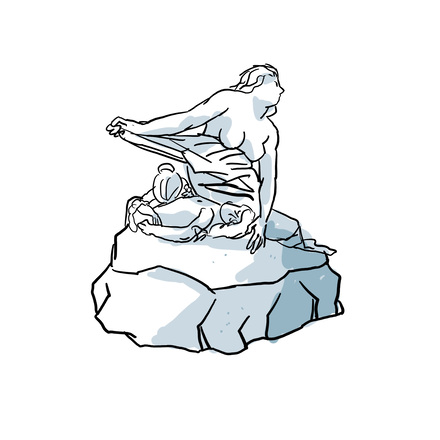
Summer Garden
You've reached the Summer Garden of Arles, which stands between the Boulevard des Lices and the Roman Theater.

You've reached the Summer Garden of Arles, which stands between the Boulevard des Lices and the Roman Theater.
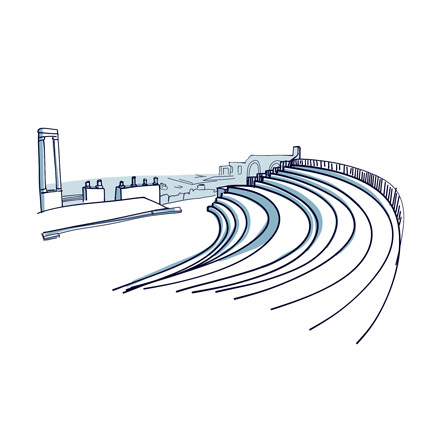
Just a stone's throw from the amphitheater lies the Roman theater! Not nearly as well preserved as its neighbor. ,Well okay, it's a century older, but then again, at their age, who's counting the decades? It was built at the end of the first century BC, making it one of the earliest Roman stone theaters.
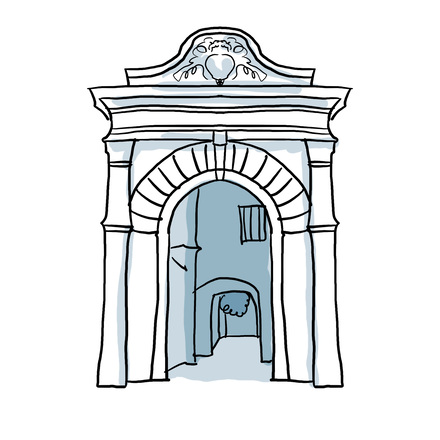
The arch before you is one of the few remnants of what was once an important abbey.
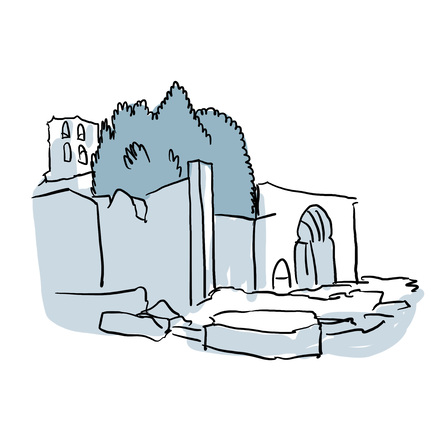
From here, we'll take Rue Vauban and continue along the Avenue des Alyscamps, all the way to our next point of interest.

See the small church perched atop the hill? It's Notre-Dame de la Major.

From the Place Major, right next to the church, you have a lovely panoramic view of the city's rooftops and its surroundings.
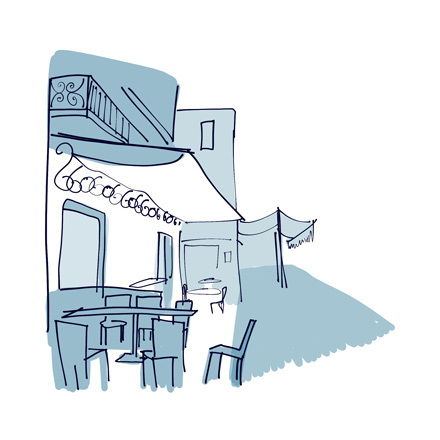
Vous voilà arrivés sur la place du Forum. Van Gogh l’a immortalisée dans le souvenir populaire en peignant sur toile le café Nuit.
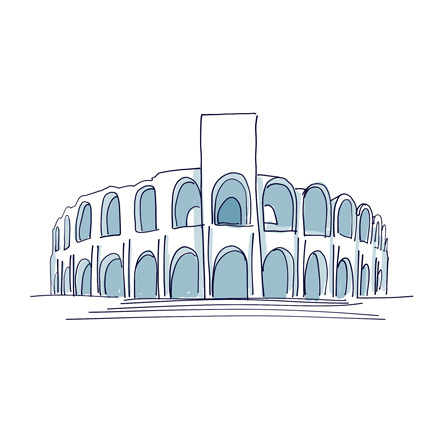
Next up are Arles' magnificent arenas, the city's most visited monument.
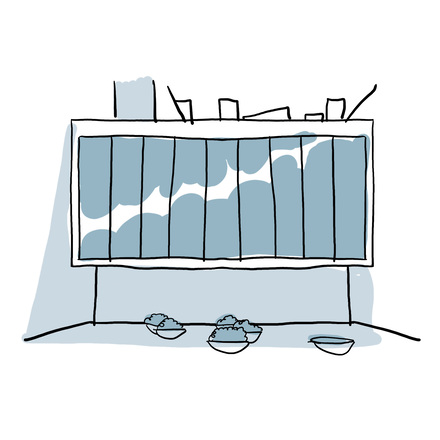
The Van Gogh Foundation is a must-see on your route.
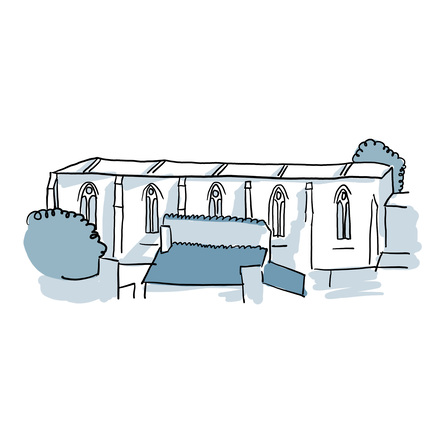
Right at the end of this dead-end street, you'll find the disused Church of the Friars Preachers. It's a 15th-century Gothic church.
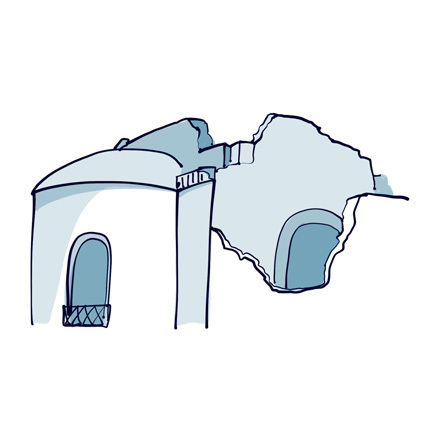
These are the ruins of the Baths of Constantine, some of the best-preserved Roman baths in Europe!
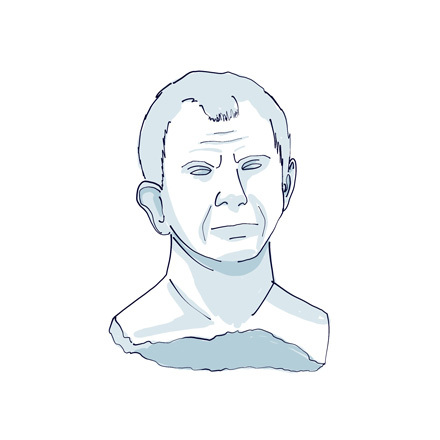
You're now walking along the banks of the Rhône. Believe it or not, this very spot not only inspired van Gogh's "Starry Night over the Rhône," but also yielded a major archaeological discovery in 2008. They found a bust of Julius Caesar face down, 6 meters underwater!
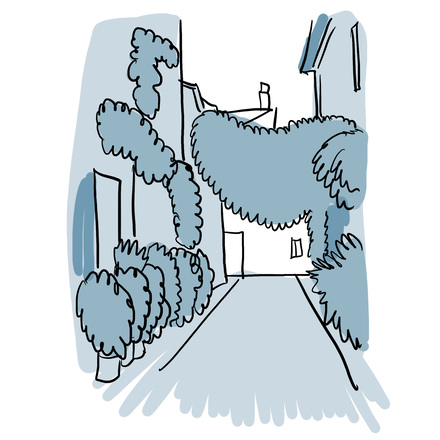
You're now at the heart of the historic Roquette district. Narrow, winding streets lined with charming houses, sun-kissed stone façades adorned with climbing plants and brightly painted shutters adding a splash of color – a picturesque backdrop that will capture the hearts of romantics and photographers alike.

This utterly charming little square is the perfect place to unwind. Grab a coffee in one of the terraces and watch life unfold.
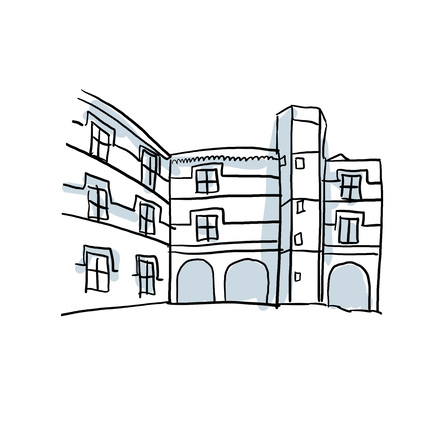
We're now passing by the beautifully restored façade of the Arlaten Museum. It was founded in 1896 by the famous Provençal writer and poet Paul Mistral, who was deeply committed to preserving the cultural heritage of his region.
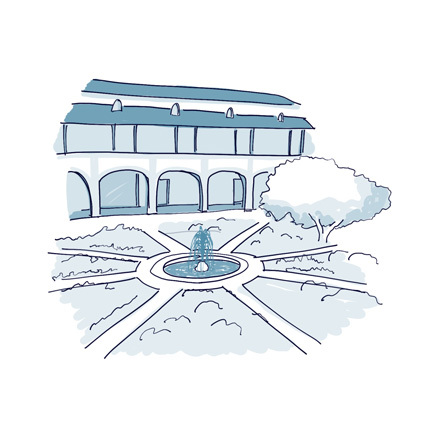
Welcome to Espace Van Gogh! Step inside and you'll be greeted by lush greenery, beautiful flowers, and colorful arcades.

Welcome to the Place de la République, a must-see during your visit to Arles. This little Italianate-style square crams together diverse cultural and architectural influences.
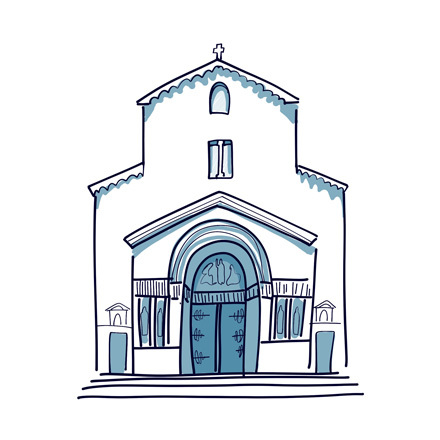
Introducing the Cathedral of Saint-Trophime. The Christian community of Arles was one of the oldest in Gaul.

Well, the road of the Germans naturally led us to the Porte des Allemands, Germans’ gate! Funnily enough, the name doesn't come from its direction toward Germany, nor does it have anything to do with a German occupation! Nope, this gate gets its name from its proximity to the hospice of the Teutonic Order knights
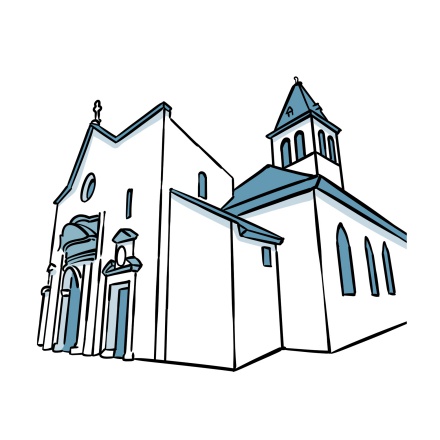
So, down this little lane of La Baue, you stumble upon Saint-Maximin Church, right on your left. This place might fly under the radar, but trust me, it's worth the detour! Step inside, because that's where the magic happens. Its pastel stained glass windows and the brightness of its walls give it this unique softness.
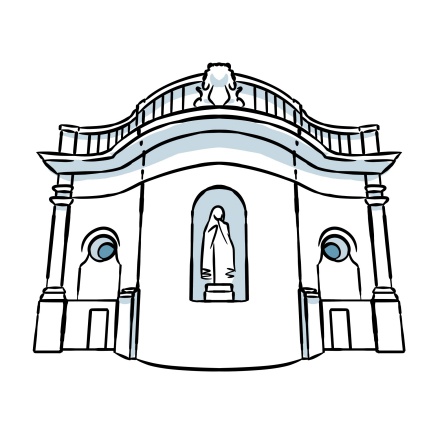
See the statue of Our Lady of the Prisoners on your left. It marks the Gothic portal of the former Saint Nicolas Hospice. Created out of charity to care for the most destitute, it is considered the oldest and most important hospital in Metz. Its construction date is somewhat vague, probably between the 9th and 11th centuries
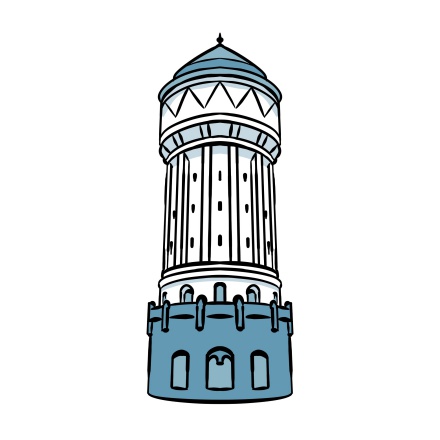
Just in case you're wondering, the tower you see on your left is the old water tower. It was built at the same time as the train station to supply steam locomotives! It stands 40 meters tall and has a water capacity of 300 cubic meters. Plus, it's really beautiful with its balcony and balustrade surrounding it.

Welcome to Saint Louis Square, where the main streets of downtown Metz converge. It's a favorite spot for both locals and tourists alike. Saint Louis Square dates back to the Middle Ages. In fact, in the 3rd century, the Roman rampart of Divodurum ended here.
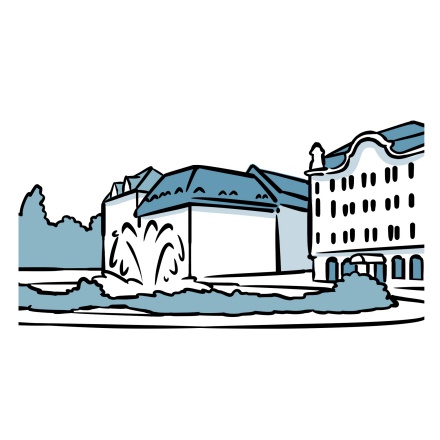
This elegant square, with beautiful buildings is the magnificent Raymond Mondon Square. I believe you wont be surprised if I tell you, it used to be the imperial square. It was built at the same time as Foch Avenue,in 1904, on the site of the old fortification ditch, to connect the old city to the new city.
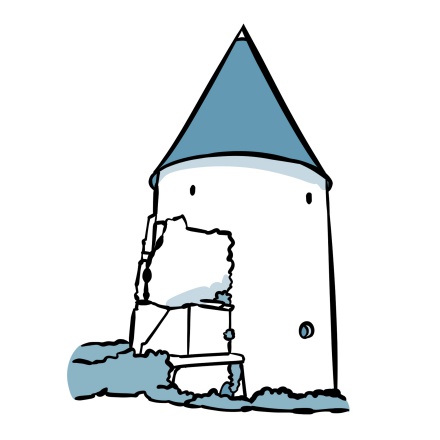
The Camoufle Tower you see there is a remnant of the old medieval fortifications of Metz. It's one of the few towers that have been preserved. It was built in 1437 during the strengthening of the city walls on the site of an ancient Gallo-Roman tower. Round, with 3 floors and a high roof: it was designed from the start for artillery .
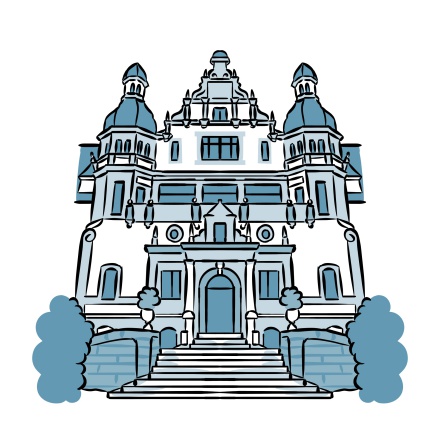
This beautiful German neo-Renaissance style palace in front of you is the Governor's Palace. It used to be called the "Commando General." It served as a prestigious residence for the General Commanding the XVI German Corps. But if it's so classy and looks more like a princely palace than a military construction, it's because it also served as a pied-à-terre for Emperor Wilhelm II.
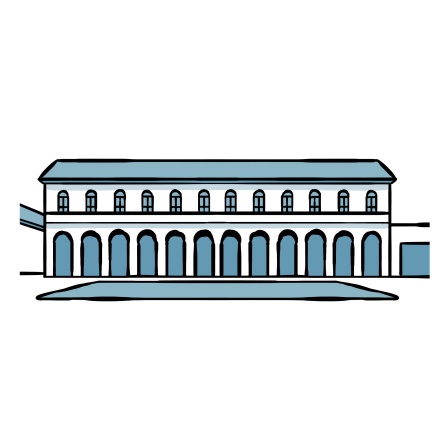
You're in front of the old arsenal of Metz, built on the orders of Napoleon III in the 1860s, in response to the growing power of Prussia. This military building, where weapons and ammunition were manufactured and stored, is now a magnificent concert hall. You should know that from the 16th century
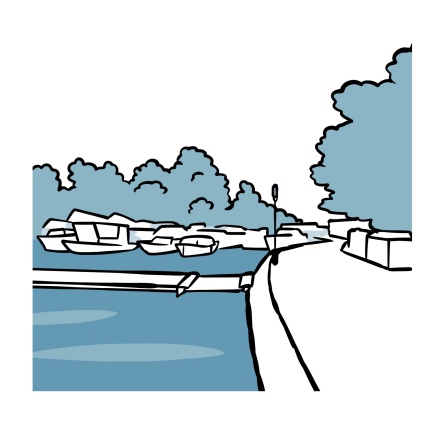
You've arrived at the charming Quai des Régates Marina. This small marina is certified with the Blue Flag of Europe, which, by the way, means that the place follows a policy of sustainable tourism development and ensures good environmental quality.
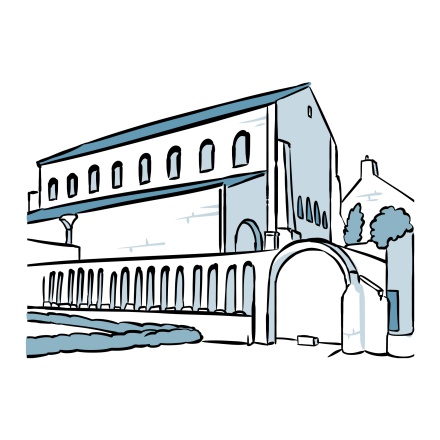
The complex you are now looking at is the church of Saint-Pierre-aux-Nonnains. Built in the 4th century, it is one of the oldest churches in the world! If it's still standing today, it's mainly because it has adapted to the needs of each era. In fact, it has been deconsecrated and is part of the same complex as the Arsenal, playing an important role in the cultural life of Metz.
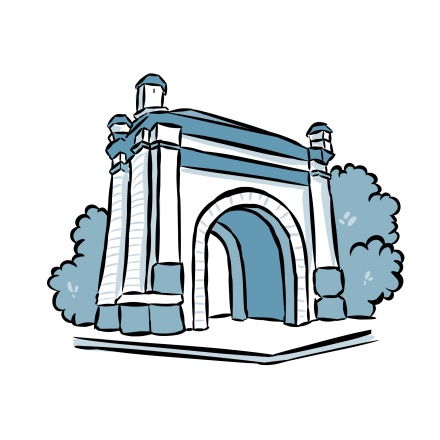
On your left, is the Serpenoise Gate. Nowadays, cities expand and merge, but this was not the case from the 3rd century, when the first Roman rampart was built, to the destruction of the last rampart at the beginning of the 20th century, when city limits were clearly defined and protected.
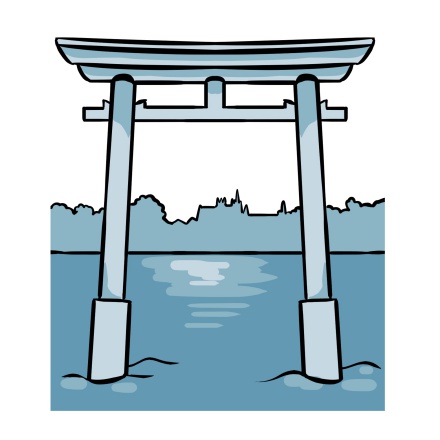
The Metz waterfront is the perfect place to take a nature break during your city exploration. You could go for a stroll around it, it isjust one kilometer, or settle down to fully enjoy the tranquility of the place. The waterfront offers multiple activity options, both sporty and contemplative.

You're crossing the Moyen Bridge, without which you wouldn't have access to the superb postcard view of Metz. This bridge, built over 700 years ago, now has only one of its original arches remaining. As you may have noticed, water is an inseparable natural element of the city, which is built on several islands separated by the arms of the Moselle

This little stroll along the quays takes you to the Saint-Georges Bridge, which offers a lovely view of the other bank, the old thermal mill, and the old washhouse. With the abundance of water in Metz and all its river branches, you can imagine that the city had several mills.
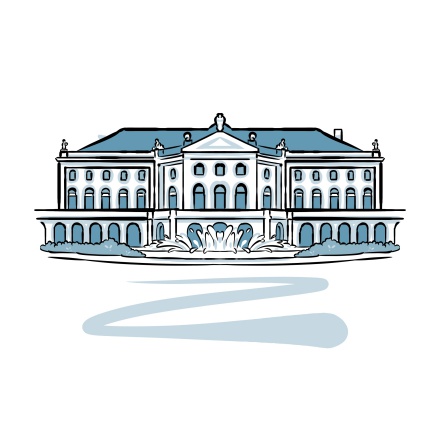
Here you stand, right in the heart of Place de la Comédie, facing the magnificent Opera Theatre of Metz, . one of the first theaters ever built in France and also the oldest one still in operation. It's also one of the last to have its own workshops creating it’s own costumes and sets. Let's go back to 1732.
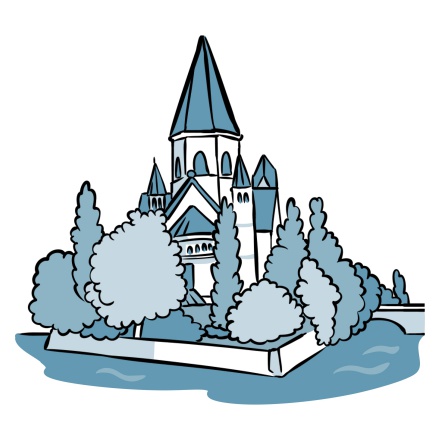
So here it is, the famous New Temple! Built during the rule of Metz by the German Empire, its beautifully sculpted details make it even more beautiful up close. ! . Wilhelm II's desire was to transform the city into a showcase of his Empire, this is why Metz saw new constructions popping up everywhere.
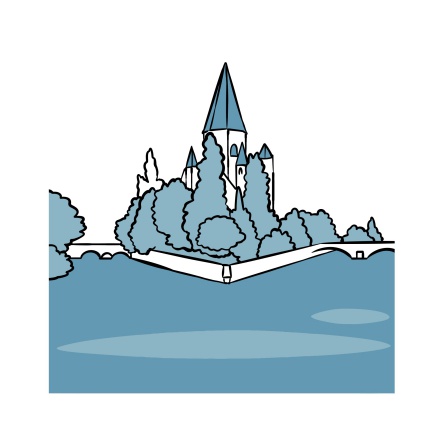
Now you're on the other side of the waterfront. You probably didn’t realize it, but you're on an island. Saulcy Island. This is where you'll find the most pleasant university campus in France. Who among you has studied on a lush island, surrounded by a river and a waterfront?
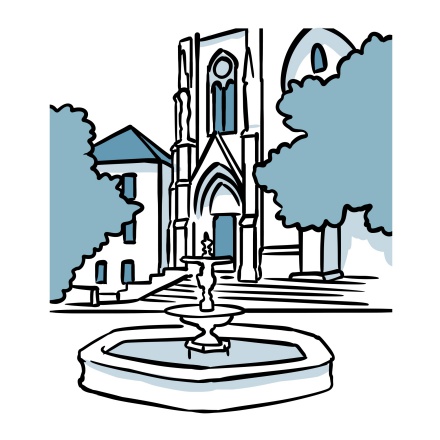
You have now arrived at Place Jeanne d’Arc, which was developed in 1905 during the reconstruction of the beautiful Sainte-Ségolène Church. At that time, the place was called Place des Quatre Maisons, in memory of the houses demolished to make way for its development.

The historical building on your left is home to the FRAC de Lorraine. FRAC stands for "Fond Régional d’Art Contemporain" (Regional Contemporary Art Fund). It was created by Jack Lang in 1982. These are public collections of contemporary art, and every region of France has such a fund.
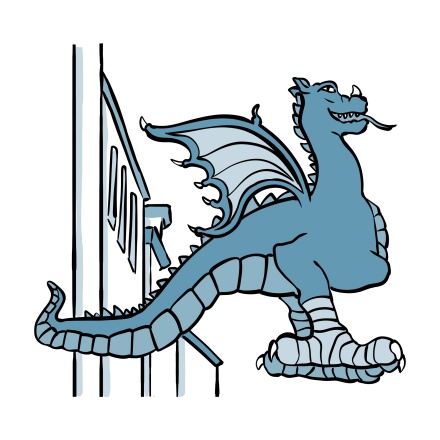
Do you know why the street you're walking up is called Taison Street, “taison” being “quiet” in french? Because people used to whisper: "let's be quiet, let's be quiet, the Graoully hovers over the city!" The Graoully, is the fearsome dragon you see suspended in the street!
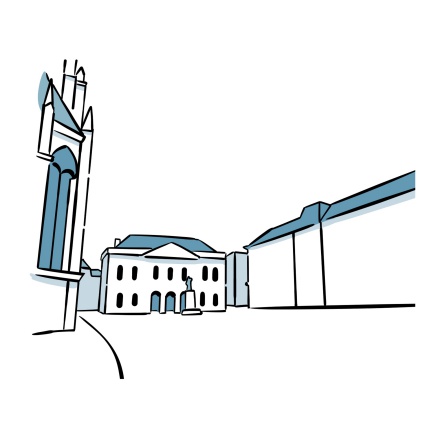
You've now arrived at Place d’Armes. It was envisioned at the end of the 18th century as the centerpiece of urban planning desired by Belle Isle in 1754 and realized by the architect Jacques-François Blondel ten years later. It's a large rectangular paved square that hosts the great powers of this world
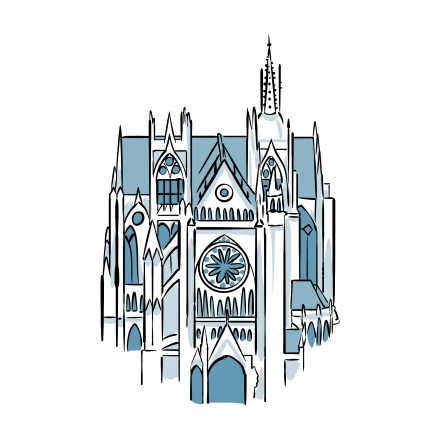
Here it is at last, the magnificent Saint-Étienne Cathedral. It's one of a kind and among the most impressive cathedrals in France. Its construction spanned three centuries, and continued to evolve until the 20th century. It's nicknamed the Lantern of God. With its 6,500 square meters of colorful stained glass windows, it is indeed the most glass-covered Gothic cathedral
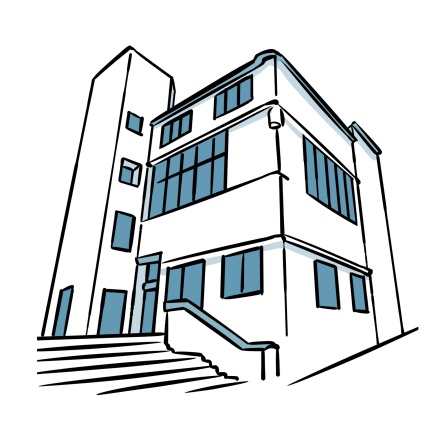
The cozy little square that opens up on the right side of the street gives you a perfect view of the beautiful facade of Maison des Têtes. Fournirue Street, where it stands, has been known for its stunning buildings since the late Middle Ages.
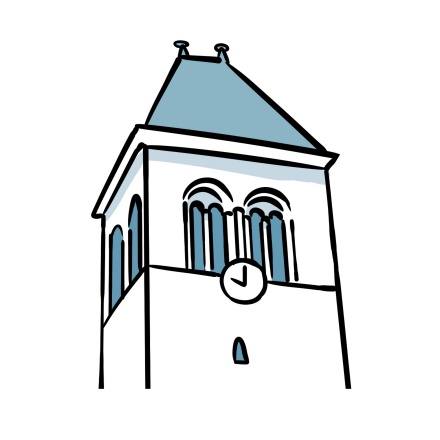
This cozy little church sitting comfortably on its cobbled square is Saint-Eucaire Church. The very first version of this building dates back to the 5th century, and used to stand outside the city walls. It's dedicated to Saint Eucaire, who was the first bishop of Trier
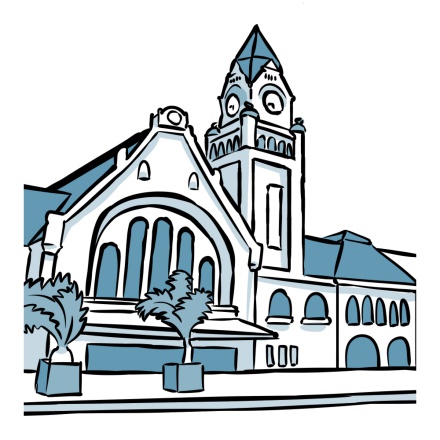
No, you're not in front of a cathedral or an old castle, this is actually Metz train station! Monumental and impressive, there's no shortage of adjectives to describe it. Voted France’s most beautiful train station for several years in a row, its extravagance is credited to the German Emperor Wilhelm II.
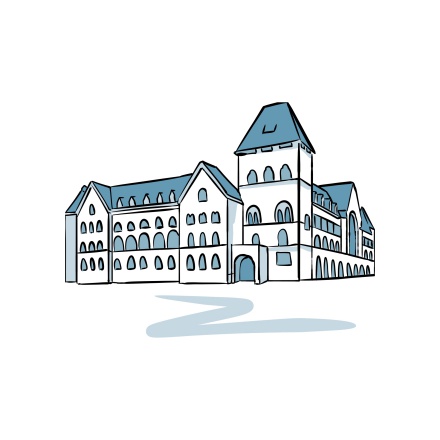
Another imposing monument is the huge Post Office building opposite of the station. This central post office is a gem of neo-Romanesque architecture and is actually classified as a historical monument. If it's so beautiful, it's once again thanks to Wilhelm II. Indeed, for the emperor, Metz had to be a showcase of German power!

Whether someone tells you to head to Casco Viejo or Siete Calles, they’re pointing you to the same place, the heart of old Bilbao.
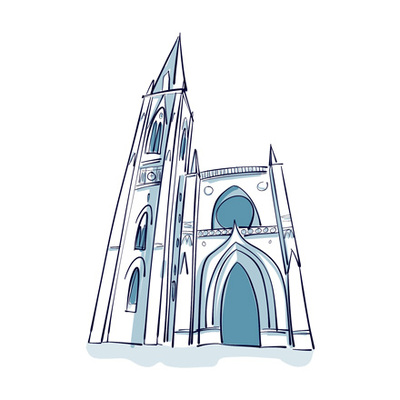
You’re now standing in front of the oldest monument in the city. Santiago Cathedral dates back to the 1300s, when Bilbao was still just a small fishing village. At the time, the city had no grand religious buildings, just a modest church, which was destroyed in a fire in 1374.
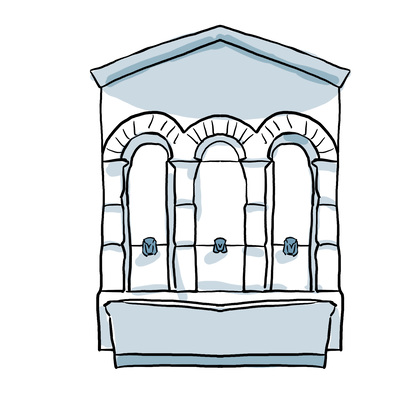
Tucked at the entrance of one of Bilbao’s narrowest alleys, the Dog Fountain is one of the Old Town’s most charming curiosities. Long ago, animals on their way to the market would stop here for a quick drink.
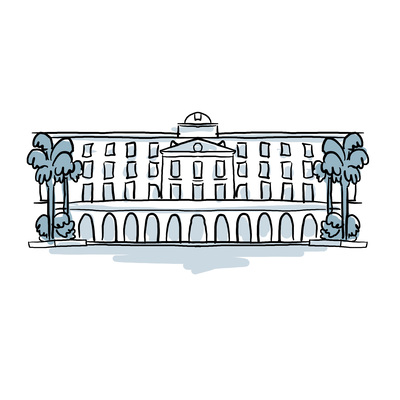
Plaza Nueva is a key landmark in Bilbao’s historic centre, and has been at the heart of the city’s social life since 1851. When locals aren’t strolling through the surrounding streets, this is where they come to unwind.
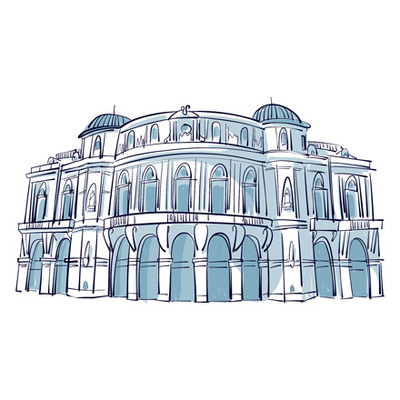
Welcome to the Arriaga Theatre, one of Bilbao’s most iconic and beautiful buildings. It was built between 1886 and 1890 by architect Joaquín de Rucoba, who also designed Malaga’s Atarazanas Market and bullring.
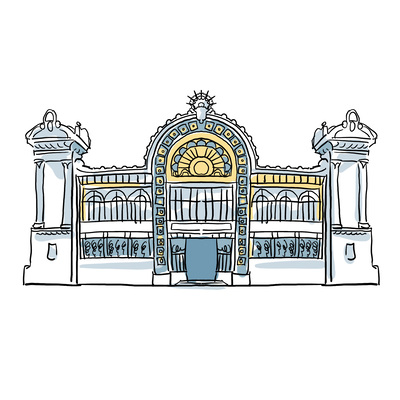
Bilbao has three railway stations, but only one leaves such a lasting impression. When it first opened in 1902, Concordia Station helped to transform the city’s long-standing industrial image
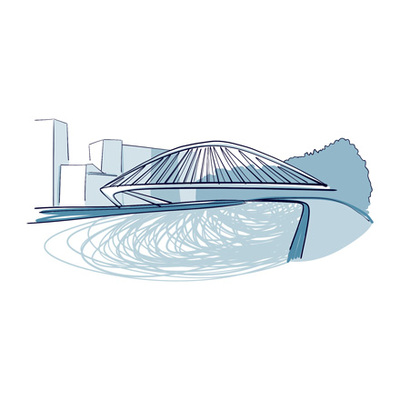
Tall, white, and suspended 10 metres above the Ria River, the Zubizuri Bridge is a sight to see. The Zubizuri, or 'white bridge' in Basque, is a pedestrian walkway that first opened to the public in 1997.
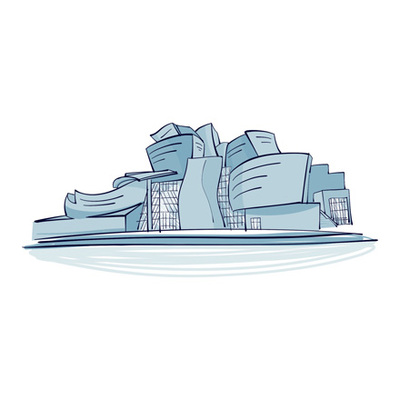
A true icon of contemporary design, the Guggenheim Museum has found its home in Bilbao. It’s now an international landmark that needs no introduction.
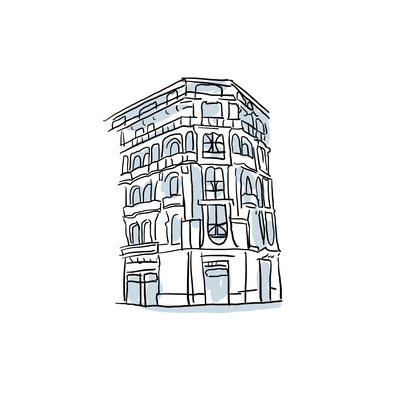
Barcelona or Bilbao? Casa Montero is one of Bilbao’s finest examples of Art Nouveau, and the only one in the city originally built as a private residence.

Minimalist in style and deeply cherished by Bilbao’s residents, the Museum of Fine Arts is one of Spain’s leading cultural institutions. Founded in 1908 with the help of local art collectors, the museum has stood here since 1945, after merging with the Museum of Modern Art.
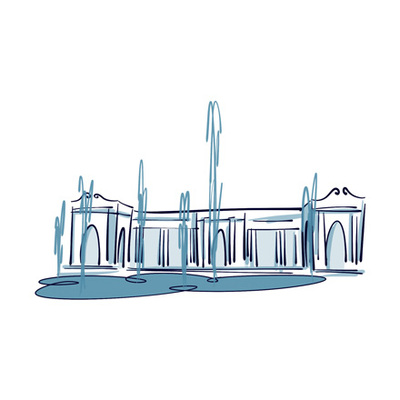
Long regarded as Bilbao’s only real green space, Doña Casilda Iturrizar Park is one of the city’s favourite outdoor spots, spanning 11 hectares. Although this area was part of Bilbao’s expansion plans since 1876, its story really begins in 1907.
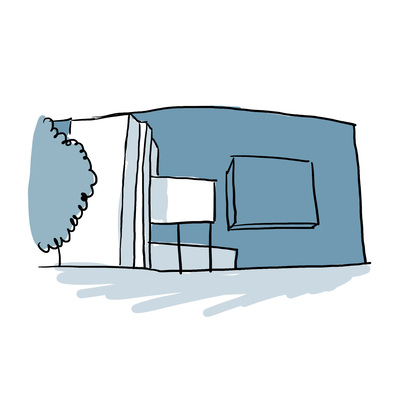
Inaugurated in 1999, this building is considered one of the most striking examples of contemporary Spanish architecture. Made mostly from corten steel, its structure is said to resemble a ship under construction. At first glance, the comparison might not be obvious, but with a little imagination, the vision comes into focus.
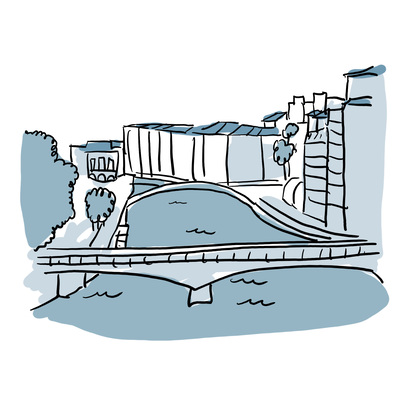
Bilbao and the Ria River share a connection that almost feels like a love story. The river has always been at the heart of the city’s development.

When people think of Bilbao, they often picture a city where the old and the new meet. On one side, there’s the historic core with buildings dating back to the 16th century. On the other, the Ensanche district, where the architecture is increasingly bold and futuristic.
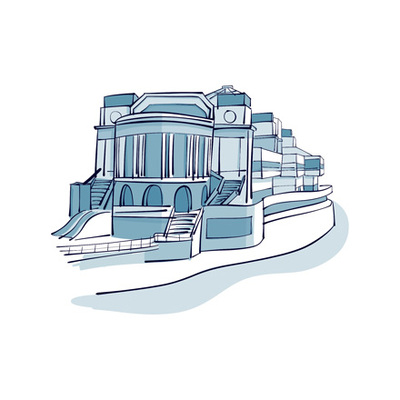
No tour of Bilbao’s architecture would be complete without a stop at the massive grey and red building along the banks of the Ria River. La Ribera Market has been a key commercial hub for the city and the region since the 16th century, though the striking structure you see today was completed in 1929.
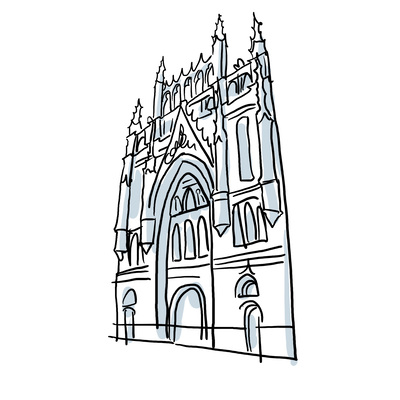
While exploring the Old Town of Bilbao, you’ll come across the former Corazón de María Church, now home to the Museum of Artistic Reproductions.
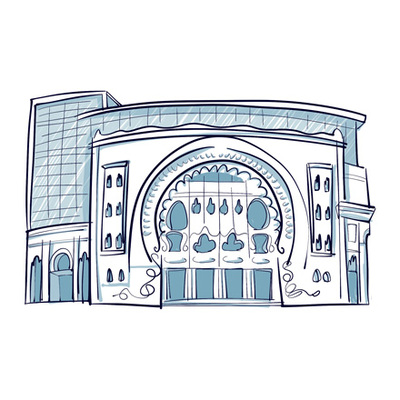
Bilbao is full of architectural gems, but the Campos Elíseos Antzokia Theatre stands out from the rest. Iconic and unlike anything else in the city, this striking cultural landmark leaves a lasting impression the moment you see it.
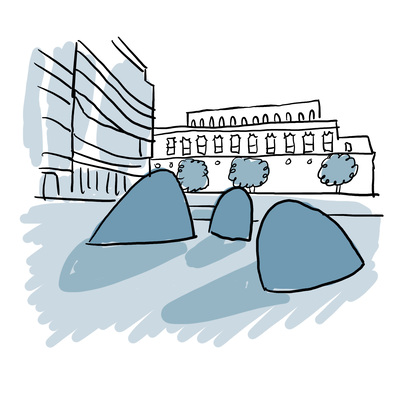
Since its reconstruction in 2008, Plaza Bizkaia has become the modern face of Bilbao. The pergolas and side waterfalls that once defined the square were removed to create a space that’s more open, comfortable, and pedestrian friendly.
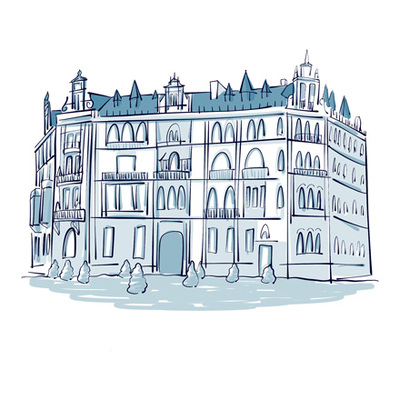
The Chavarri Palace, at the heart of Plaza de Federico, is impossible to miss. Walking through the square, your eyes are drawn to this striking building, of otherworldly design. In the 19th century, Víctor Chavarri, a prominent industrialist at the time, set out to build a new family residence in Bilbao.
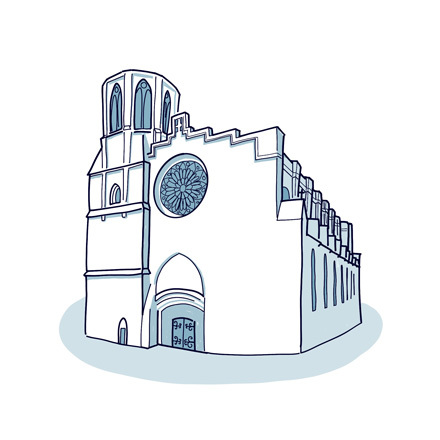
Introducing the Saint-Michel Cathedral. Back in 1803, it dethroned the Basilica of Saint-Nazaire in the medieval city to become the official cathedral. At the time, the bastide was truly booming, while the medieval city
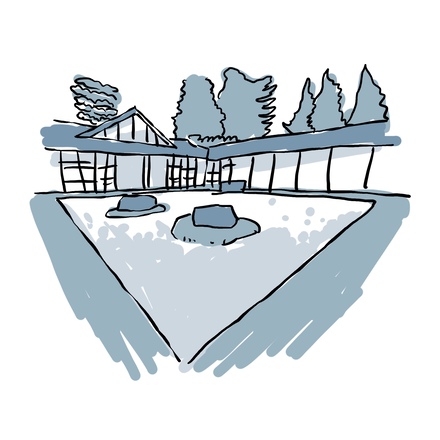
We'll take a left here, but for those up for a little detour, you can continue a little further down the Aimé Ramond Street, to find the Former Ambassador's House at number 50, on your left. As its name suggests, the
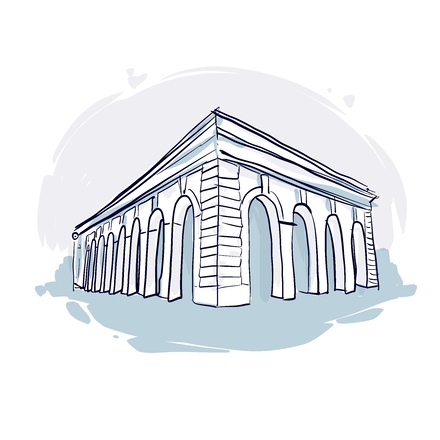
Welcome to the Halles de Carcassonne, the city's covered market that is sure to delight many. Built in the mid-18th century, it was once a grain market in what was then known as Place du Pilori, the Pillory Square, notorious for the public punishment of thieves. Today, it houses the city's bustling indoor market.
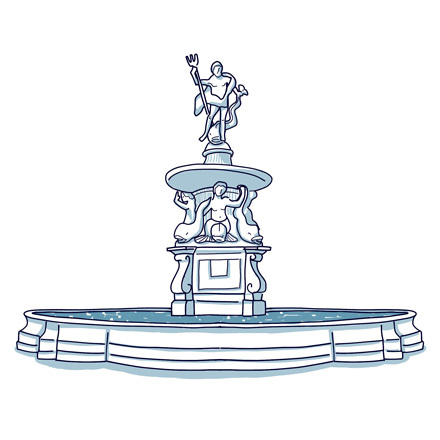
You've now reached Carnot Square, the bustling heart of the city. It's the perfect spot to grab a drink or sample the local specialties at one of the many restaurants. Take a look around at the beautiful townhouses lining the square: these beautiful buildings are fine examples of Carcassonne's signature bourgeois architecture.
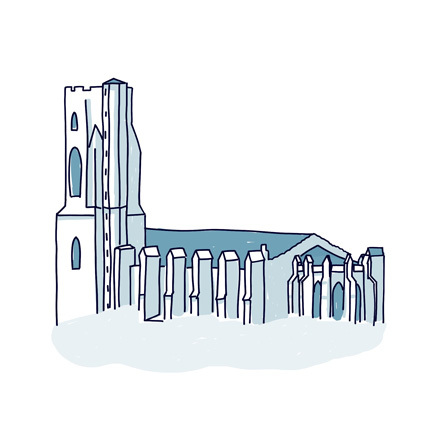
This church is a real gem for a number of reasons. First, for just a few euros you can climb the bell tower and get stunning panoramic views of Carcassonne. It is also a fine example of Southern French Gothic architecture. We don't know its full history, but what we do know is that it was built in the 14th century
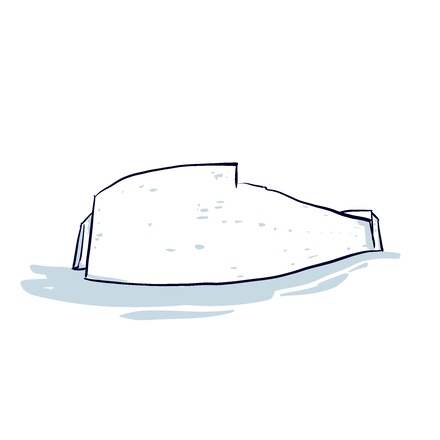
Check out the wall to your left! It's part of the Saint-Martial bastion, built in the 16th century. The town once had 5, but only three have stood the test of time. The others were demolished together with the city walls back in the 18th century, in an effort to open up the city.
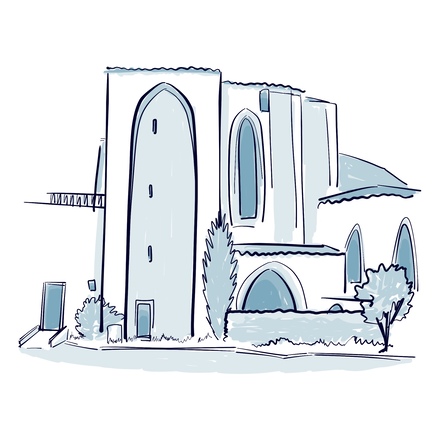
This church was built at the very heart of the Bastide during the 13th century, in 1297 to be exact. Like most of the town's churches, it sports a Southern French Gothic style, with a single nave bordered by ten chapels. While not as grand as the Saint-Vincent church or the Saint-Michel cathedral
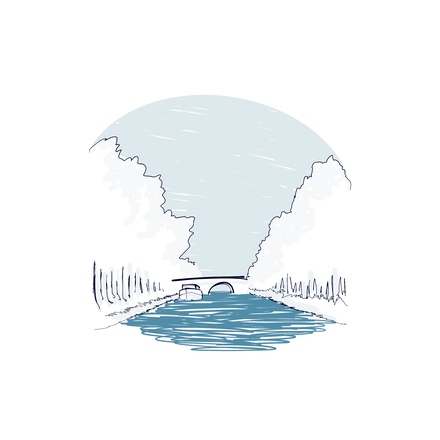
Welcome to the André Chénier Square, named after the French poet and journalist guillotined in Paris in 1794, during the French Revolution. One of France's best-known waterways is stretching out before you: introducing the Canal du Midi. Do you know the history behind it? Back in the 17th century
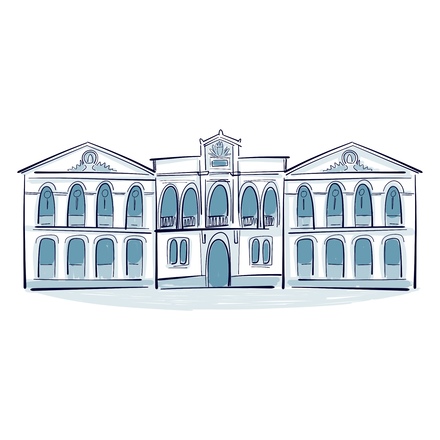
The beautiful building before you is the Museum of Fine Arts, created in 1836 by several art and architecture enthusiasts from Carcassonne. They set up an Arts and Sciences Commission to collect and preserve historical artworks, and then built a museum to exhibit them to the public.
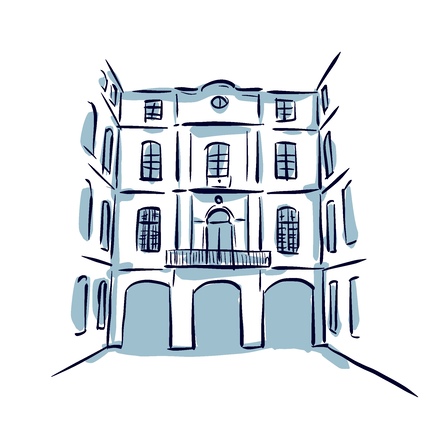
If you look to your left, you'll see the Hôtel de Rolland, now home to the town hall of Carcassonne. It was originally built as a private mansion for the son of a wealthy local merchant and manufacturer, Jean-François Cavailhès. He bought and tore down 4 houses and 3 stables just to make way for his new residence.
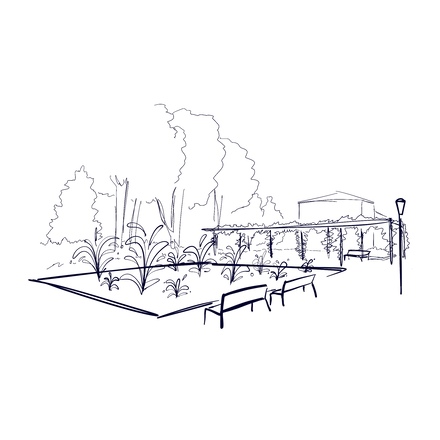
Situated just steps away from the Museum of Fine Arts, the Gambetta Square is the perfect little spot to escape the city's hustle and bustle. It was originally laid out in 1861 and it's been through several name changes. It was first called Place du Charbon (Coal Square), followed by Saint-Cécile Square, and finally Gambetta Square in 1883

Right across from the Pont-Vieux, the old Bridge, is the Pont-Neuf, the New Bridge. Much more recent than its neighbour, the latter was built in 1840 as a second passageway between the medieval city and the bastide. Beyond its practicality for the city, the Pont-Neuf offers spectacular views of the Pont-Vieux and the medieval city in the
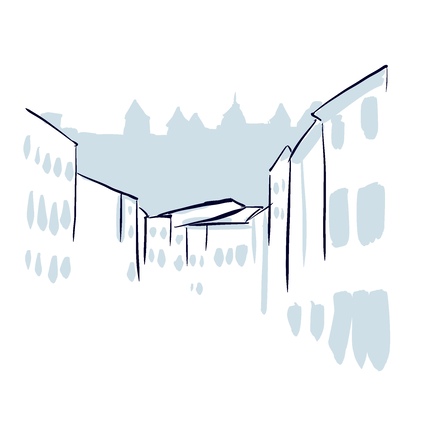
You are now in Trivalle Street, located in the oldest neighborhood of Carcassonne. It winds along the path of an ancient Roman road that once connected Narbonne to Toulouse, making it quite possibly the city's most historic street in Carcassonne. In fact, it was once a busy thoroughfare. Imagine a time before the 19th century
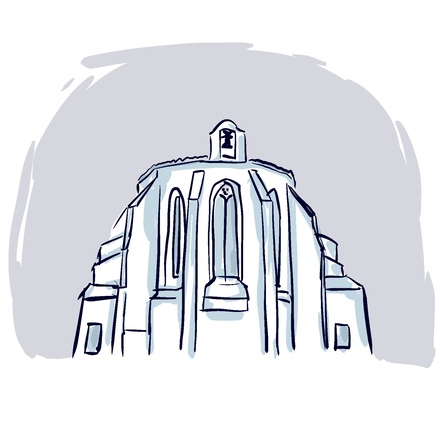
Hidden behind this wall is Notre-Dame de l'Abbaye, Our Lady of the Abbey, an ancient monastery dating back to the Middle Ages. To this day, it boasts a charming cloister, the town's oldest church, restored by Saint Louis in the 12th century, and a museum, the Musée Trésor, housing religious objects
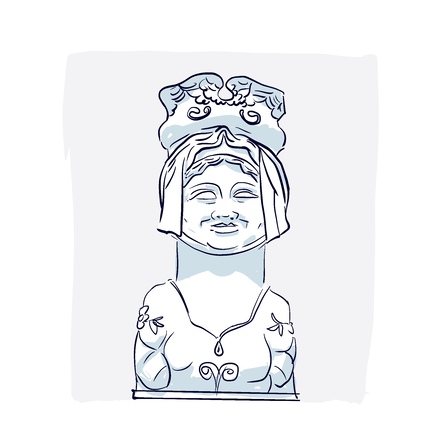
What you're looking at is a statue of great importance to Carcassonne. It welcomes visitors to the medieval citadel and depicts Lady Carcas, a woman said to have left her mark on the city's history long ago. Let's journey back to the 8th century, when Charlemagne was already laying siege to the city for five years to conquer it from the
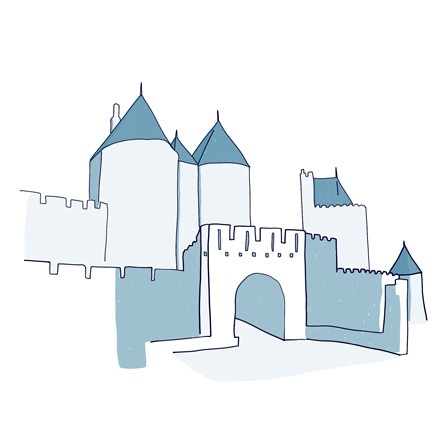
You're now standing before the main entrance to the medieval city. Introducing the Narbonne Gate, facing the city of Narbonne, hence the name. It's part of the impressive fortifications that protected the city. It was built at the end of the 13th century, under Philip the Bold, King of France at the time.
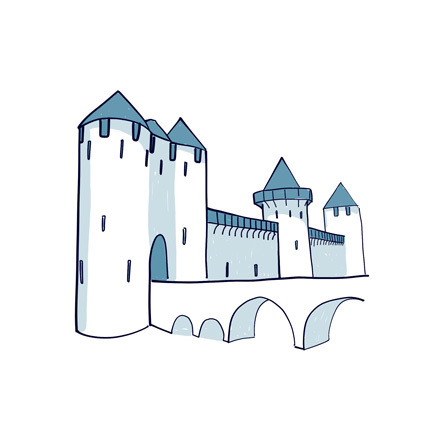
Standing before you is the gate to the Count's castle. It's a barbican, built here to protect the castle. Once you've passed through it, you'll have a clear view of the immense fortress lying behind. You have the castle gate, framed by two towers opposite a long stone bridge. Carcassonne is thought to have always had a castle
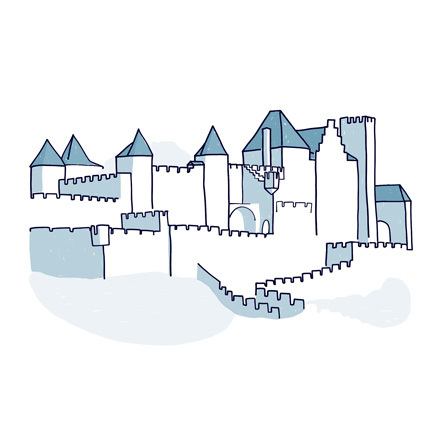
With over 2 million visitors a year, the medieval city of Carcassonne is one of the most visited tourist sites in France. It was listed as a UNESCO World Heritage Site in 1997, and it's one of the best-preserved medieval complexes in the world. Some of its remains even date back to the Visigoth era, notably 2 of its towers
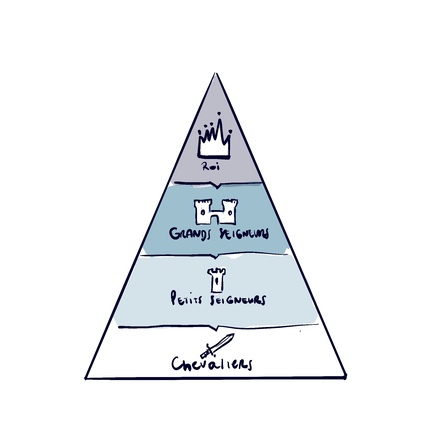
Time for a brief historical detour. If you've already listened to the audioguide recounting the town's history, then you'll know that Carcassonne was a feudal town for several centuries. This was an important chapter in its history, marked by the rule of the powerful Counts of Carcassonne.
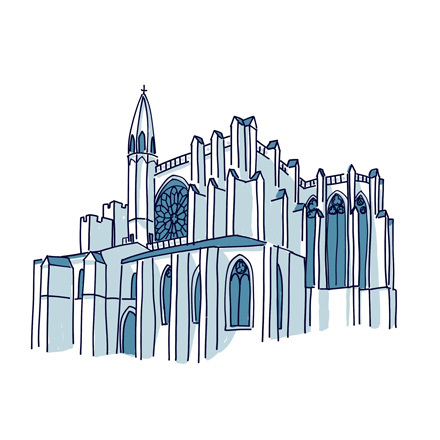
The basilica of Saints Nazarius and Celsus, to give its full name, was the first building to be restored by Viollet-le-Duc as part of his great restoration project here. It is believed that an earlier cathedral was built here, or outside the fortifications, as far back as the 6th century, only to be destroyed during the Saracen occupation.
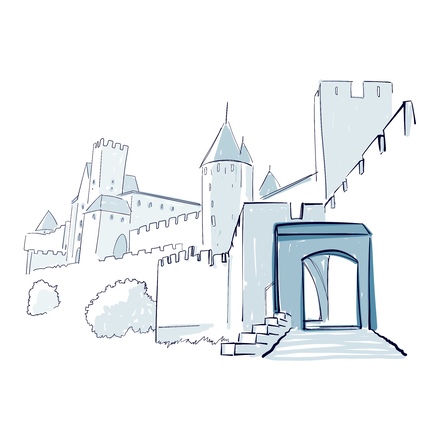
From here, you can exit the medieval city through the Aude Gate, right next to the Count's castle. Bet this setting looks familiar... This gate was featured in the famous film "The Visitors”, as well as in "Robin Hood: Prince of Thieves". It's so named because it faces the Aude river, which flows through Carcassonne and has lent its name
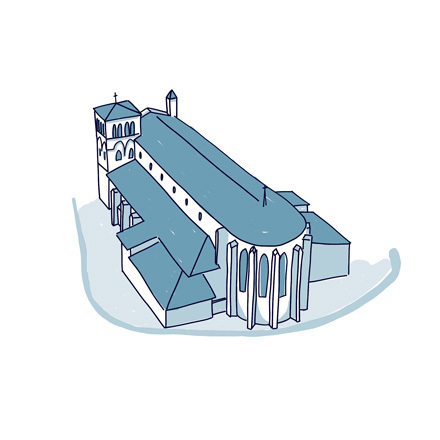
The church of Saint-Gimer is not nearly as old as the fortifications of the medieval city. Indeed, it was only built in 1859 by Viollet-le-Duc. This very spot was once home to a barbican, a defensive structure keeping watch over the Aude Gate and the river crossing. But during the medieval city's restoration
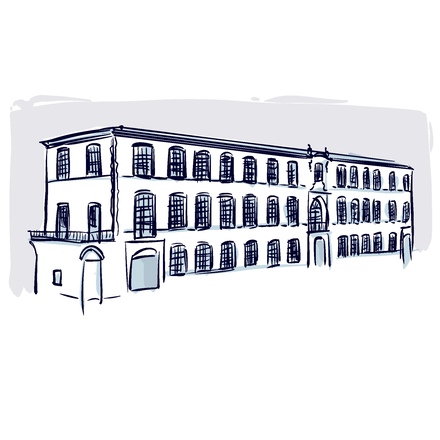
On your right, just before the Pont-Vieux, you'll find the former Royal Cloth Factory. Restored back in 2013, this building recounts an important chapter in Carcassonne's history. Wool trade had been the lifeblood of this city since time immemorial, all the way back to the 12th century! By the 14th century
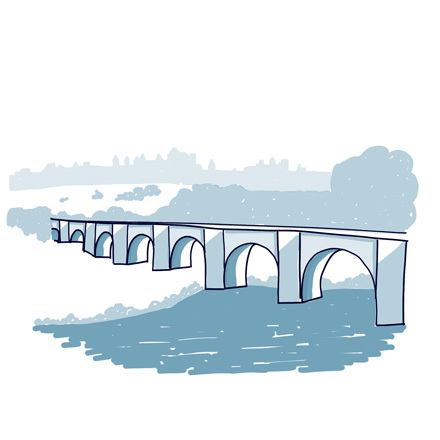
We'll now cross the Pont-Vieux, the Old Bridge, over the Aude river. It's been the link between the two halves of the city for centuries. For a very long time, it was the only way to get to the medieval citadel from the lower town. There's evidence of a bridge here since Roman times, though the first official record we have is from 1184.
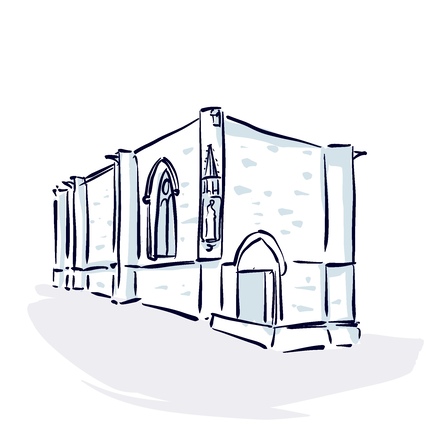
Just on your left, you'll find the Chapelle Notre-Dame-de-Santé, aka the Chapel of Our Lady of Health. There once was a large hospital right next to it, hence the name. It's also refered to as Notre-Dame-du-Bout-du-Pont, that is, the Chapel at the End of the Bridge. Families would come here to pray for the sick.

As you might have gathered by now, Carcassonne isn't just one city, but two! There's the medieval city, perched atop the hill and bordered by its suburbs, and there's the lower town, the so-called Saint-Louis bastide, on the other side of the Aude river. The latter was founded in 1247 by Saint-Louis, aka King Louis IX.
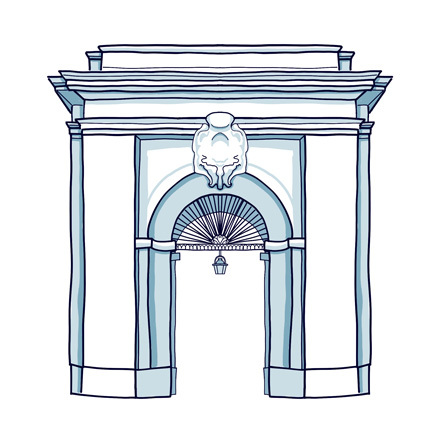
Welcome to the Square of Général de Gaulle. Here, you'll come upon what was once one of the city's most important buildings: the Jacobins' Gate. It’s just to your right, marking the entrance to the lower town of Carcassonne. Back in medieval times, the lower town, also known as Saint-Louis bastide, was surrounded by fortifications
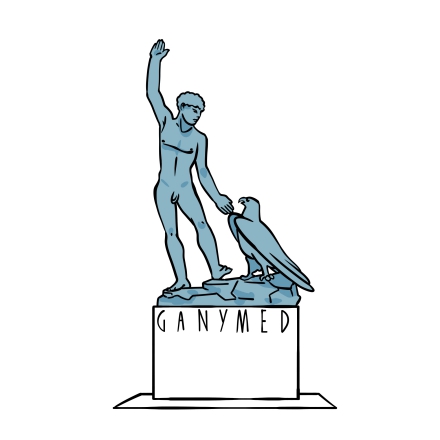
The bronze sculpture you see in front of you shows a young man raising one arm with an eagle by his side. That’s the statue of Ganymede! Since 1952, it has stood proudly by the lake on the popular Bürkliplatz—and is now a symbol of the
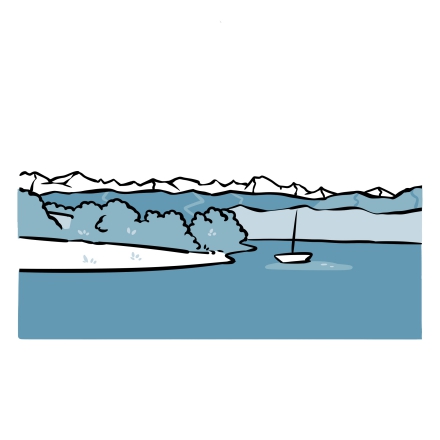
Here, you are standing at the northern tip of the lake. Switzerland is home to almost 200 lakes, and Lake Zurich—of which you can only see a small portion—takes the form of a 42-kilometer-long banana. It spans 88 square kilometers
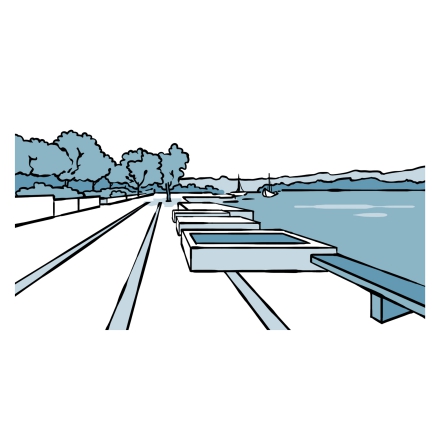
This pleasant promenade takes us around the lake, offering a splendid view on the turquoise water. If you continue along the quays, you’ll reach the Seebad Utoquai, a Zürcher facility built in 1890. You’ll find a wooden Moorish sur votre lancée et que vous continuez à longer les quais, vous arriverez aux bains Utoquai, une institution zurichoise construite en 1890.

You are now standing in front of the majestic Zurich Opera House. Opened to the public in 1891, the building was originally called the City Theatre since it hosted concerts, opera, plays, and even lectures. It was a kind of elegant all-in-
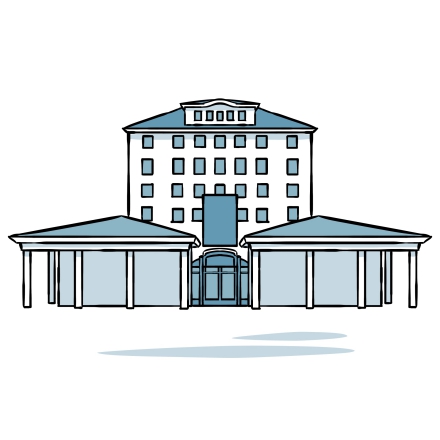
You’re now walking through the charming little Hechtplatz square, home to the theater that shares its name. It was founded in 1959 as a cabaret, and has been publicly funded by the city of Zurich since 1961. The building was originally
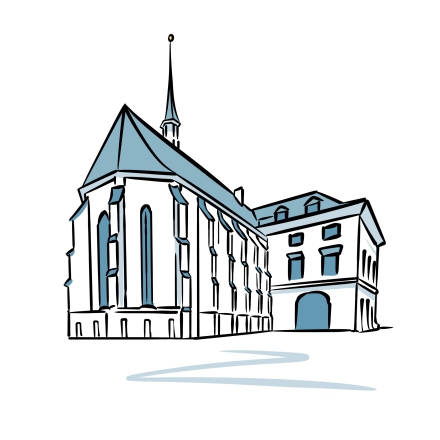
The church standing before you is the Wasserkirche, which means "Church of the Water." This mysterious name comes from the fact that the original church—this one is a later reconstruction—was built on a small island in the
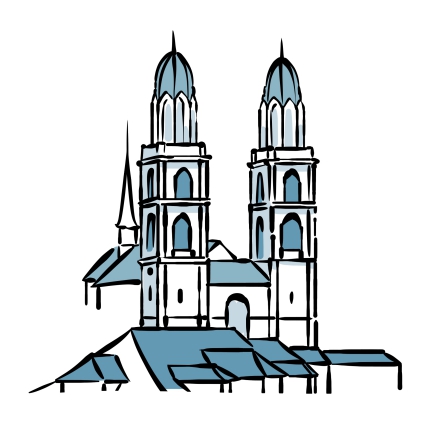
Here you are, standing before the star of this tour—Zurich’s famous Grossmünster, which means "Great Minster". Among the most important religious landmarks in Zurich it’s an absolute must-see during your visit. The origins of

The impressive building you see before you is the Rathaus, Zurich’s historic Town Hall. This striking structure was built in the 1690s to replace earlier wooden buildings that stood here in the 13th and 14th centuries. These premises

You’re walking along the Limmatquai, which—as the name suggests—runs alongside the Limmat River. The river actually begins here in Zurich, since it’s the lake that flows into the river, not the other way around. This street, once a

Are you familiar with Dadaism? If so, you’ll be pleased to know that it all began right here, at the Cabaret Voltaire in Zurich. If you’ve never heard of it, let me tell you the story of what happened here on the night of the 8th of February
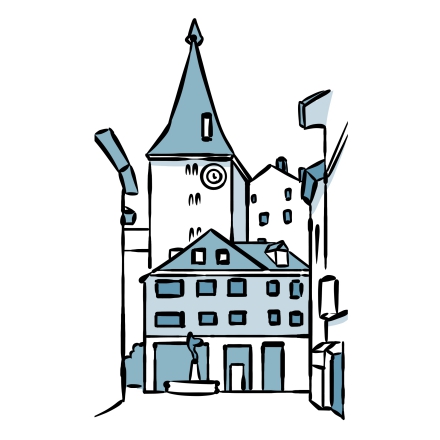
You are now in the Neumarkt district, in Zurich’s Old Town. On this quiet little square, you’ll find plenty of interesting elements. You’ll notice the large white guild house, which today hosts the Neumarkt Theater and an
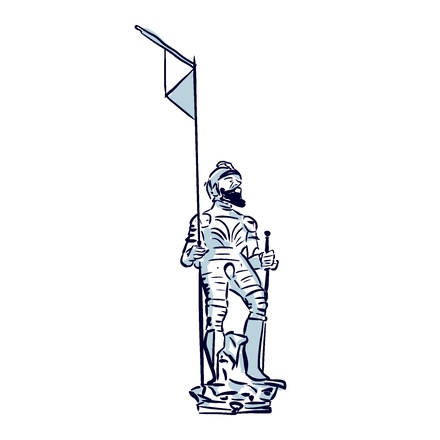
Here in the center of the square, you’ll notice a beautiful fountain topped with a statue of a man in armor. If you’ve ever visited Bern, you might be familiar with this type of decorative fountain, which is often seen as a hallmark of the Swiss
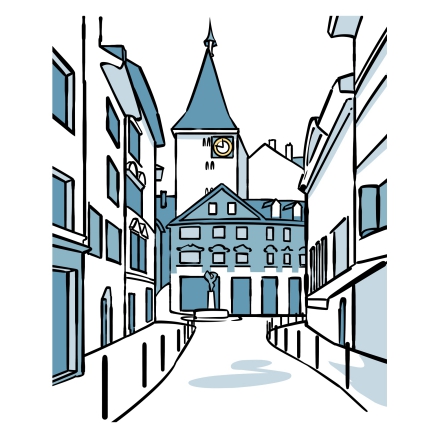
This lively street goes by the name of Niederdorf, an important artery at the heart of the neighbourhood bearing the same name. A popular spot in the Old Town for its many restaurants, cafés, and shops that line along some picturesque
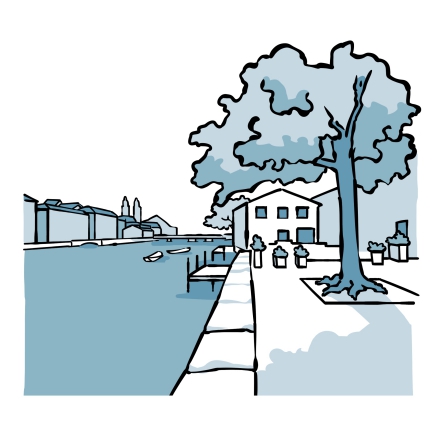
You’re now on the left side of the Limmat, right in the middle of Schipfe, Zurich’s oldest neighbourhood. Some historians even say that this place was part of Turicum’s port, a Roman city. Look around you and try to imagine

You’ve now arrived at Lindenhof Square, offering a fantastic panoramic view over Zurich’s historic centre. Know that this place is more than just a spot for photos. You’re standing on what remains of an ancient glacier, atop the

Passersby may not always notice Lindenhof, though things get a little more interesting when you learn that a Roman castle once stood here. On your left, take a look at the gravestone against the wall. Here lies Lucius Aelis Urbicus,
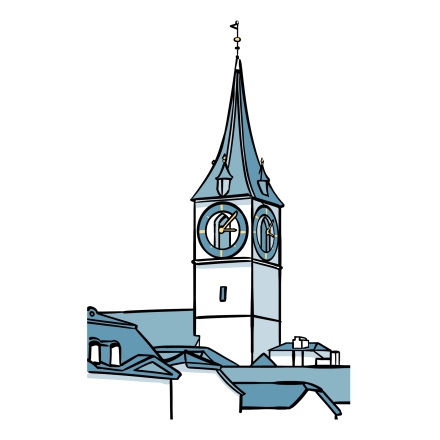
Here you are in front of St Peter’s Protestant Church. You’ve maybe noticed it’s quite different from the other churches in town. Inaugurated in 1706, this is the only Baroque church in Zurich. From here, but also from afar, you can easily
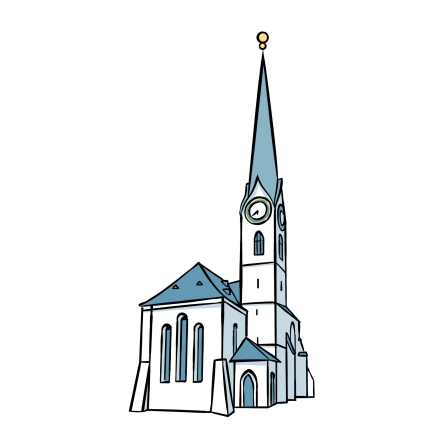
Another major church in Zurich is the Fraumünster, which you could translate as "the women’s abbey." The name comes from a convent founded here in the 9th century by Charlemagne’s grandson. Legend has it that two royal
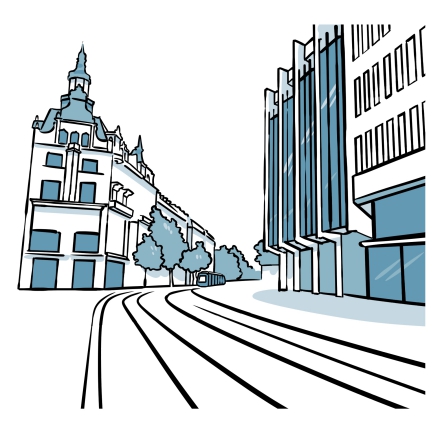
Take out your credit card—or actually, maybe it’s best putting it away. You’re now on Zurich’s most elegant avenue: the Bahnhofstrasse. Often called the most expensive street in Europe, or the Champs-Élysées of Zurich, this glamorous
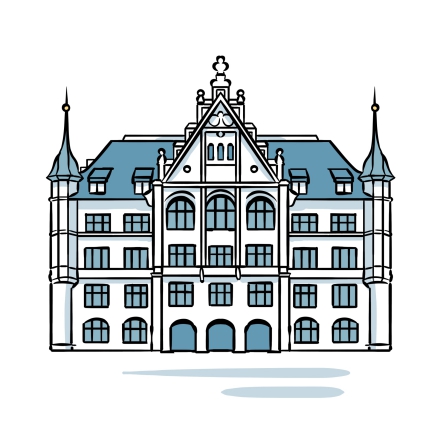
This beautiful neo-Gothic Town Hall is adjoined to a church, as it was built on what used to be an abbey for women. The reason behind the construction of such an imposing and vibrant city hall emerged from a phenomena called
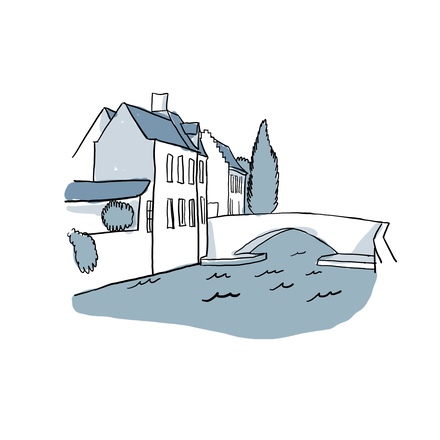
Bruges is a city shaped by water, woven together by a network of canals. Here, water isn’t just part of the scenery—it’s part of the city’s soul. As you walk, listen closely to the soft and calming sound of the canals. The Groenerei, which means

Welcome to one of Bruges’ most iconic photo spots! This isn’t just any quay—it’s something truly special. Rosary Quay is a dream setting, especially in the late afternoon when the sunlight turns warm and golden. It’s a favourite among artists—

The Gruuthuse Museum—perhaps the most important museum in Bruges—was closed for renovations until 2019. Before that, visitors could only admire it from the outside, but, lucky for you, its doors are open once more, so you can discover its

It may not be big or grand, but there’s something comforting about this little corner of Bruges. Modest in size yet full of charm, this spot has become a must-see—thanks to the small stone bridge that arches over the canal. Saint Boniface Bridge
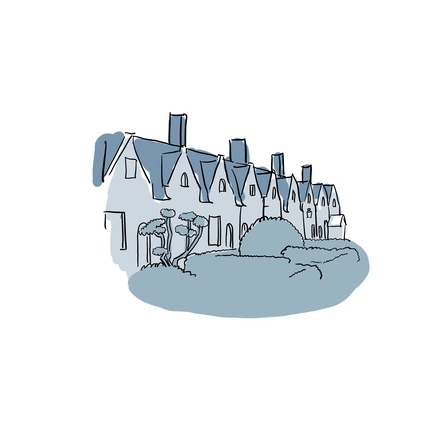
Scattered across the city like hidden gems, these clusters of whitewashed houses blend seamlessly into the urban landscape. Known as the Godshuizen, or “Houses of God,” they date back to the 14th century, when wealthy citizens and local

Our next stop takes us away from the bustle of the city centre and into something more peaceful. Welcome to Minnewater Park—one of the largest green spaces in Bruges. This is a true tribute to nature, with leafy paths, quiet corners, and the
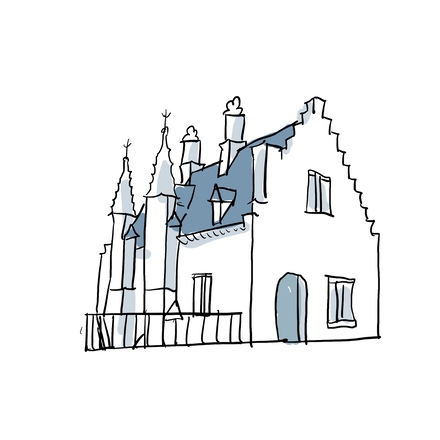
Welcome to the Sashuis Lock House, a charming Flemish-style building hidden near Minnewater park. Built in the 16th century, it once played a vital role in the city, regulating and supplying water to the centre of Bruges, as you can see from the
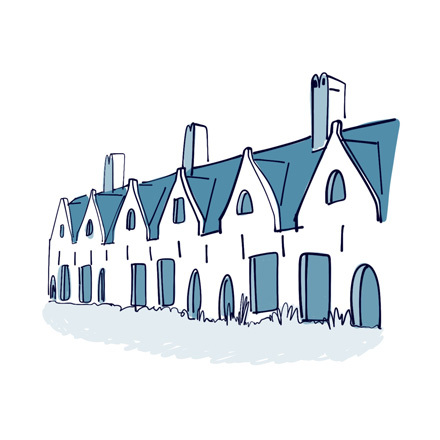
It’s in places like these—where time seems to have stood still—that we often find the greatest sense of peace. Once enclosed by a protective wall and set apart from the rest of the city, this quiet retreat dates back to 1245. It’s known as the
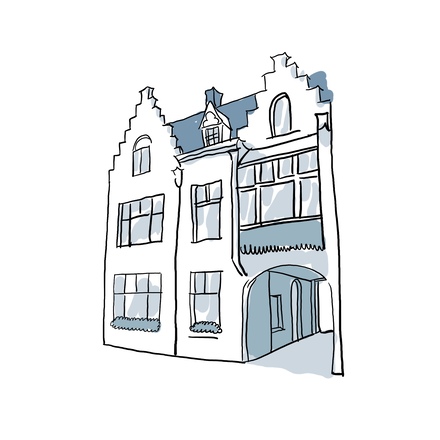
When people think of Belgium, beer is often the first thing that comes to mind—and who can blame them? This next stop proves exactly why that reputation is so well deserved. Part brewery, part museum, and part restaurant, the Halve Maan
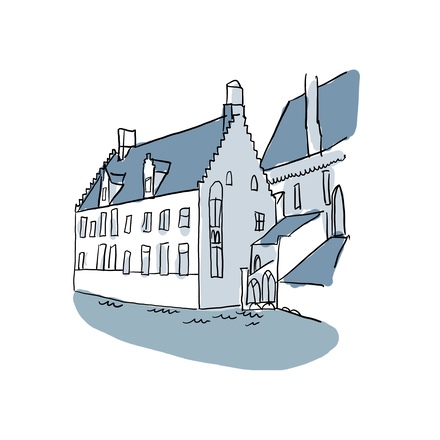
No tour of Bruges’ historic landmarks would be complete without the Old St. John’s Hospital, located on your right. Built from red brick in the mid-12th century, this complex was once the most important medical institution in medieval Europe.

Towering above the city with its 122-metre spire, the Church of Our Lady of Bruges is a must-see stop on your visit, and impossible to miss. Construction began in the year 744, back when a Romanesque church stood on this site. That original
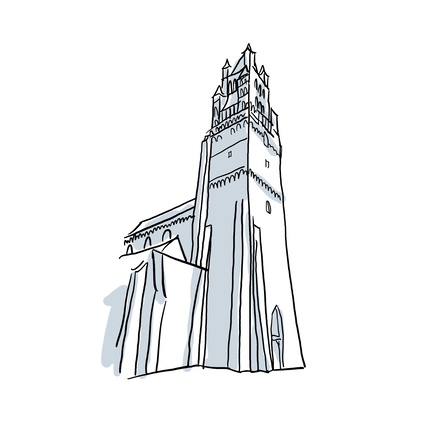
St. Saviour’s Cathedral is the oldest religious building in Bruges. The first stone was laid in the 10th century, and construction continued into the 15th century. Today, it stands as one of the city’s longest-surviving and most carefully crafted
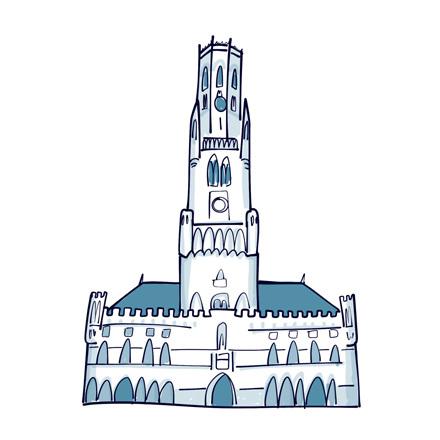
A UNESCO World Heritage Site since 1999, the Belfry of Bruges didn’t need a title to earn its fame. A powerful symbol of authority in the Middle Ages, this towering structure traces its origins back to the mid-13th century. Originally built from

Anyone visiting Bruges simply can’t miss this place. The Markt—at the heart of the old town—is often called the “Grand Square,” and for good reason. It’s the lively centre of the city, where all roads seem to lead. In the past, it was the main stage
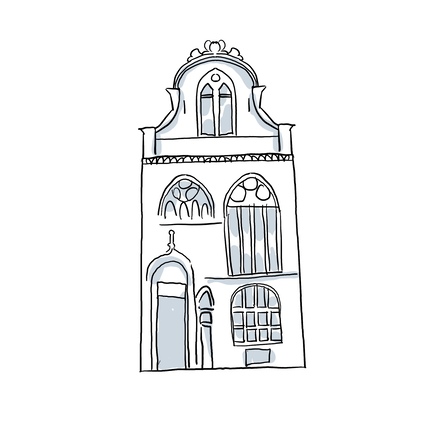
Welcome to the Fries Museum... yes, you heard that right—this is Belgium, after all, and fries are serious business here! In all honesty, who hasn’t dreamed of visiting a place dedicated to that crispy classic that’s captured hearts—and appetites—
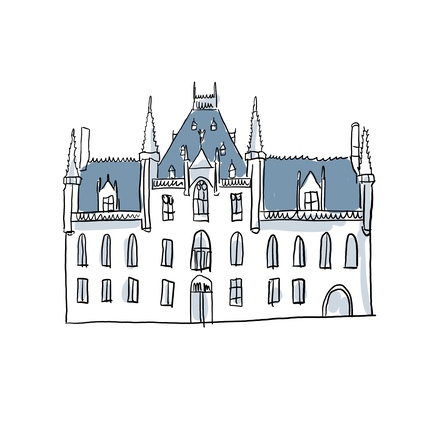
The Markt is lined with some of Bruges’ most important landmarks. You’ll see traditional Flemish-style gabled houses, the towering Gothic belfry, and the Provincial Palace of Bruges – a striking, decorated building with an ornate façade. In the

Standing at a height of 3 metres 75, the statue of Jan van Eyck, once known as the “Manhattan” of Burgundian Bruges, watches over the square. This bronze figure represents one of the most celebrated painters of the 14th century. Jan van Eyck
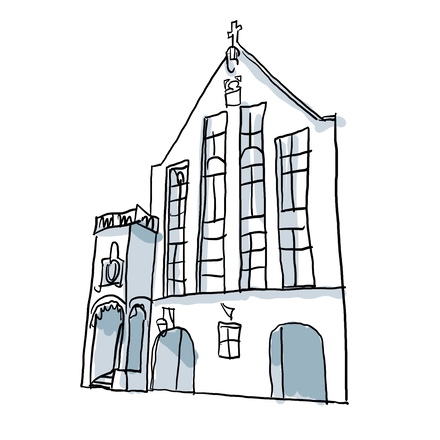
Despite its ornate façade, the Tolhuis often goes unnoticed, but it’s one of the square’s hidden gems. To make sure you’ve got the right building, look for the only one with a small flight of steps before its entrance. See it? Originally built in the

You can’t go to Bruges without seeing Burg Square, full of laughter and good spirits. Once a fortress dating back to the 2nd century, the square gradually saw the city expand around it. The 9th century was a turning point for Burg Square, when it
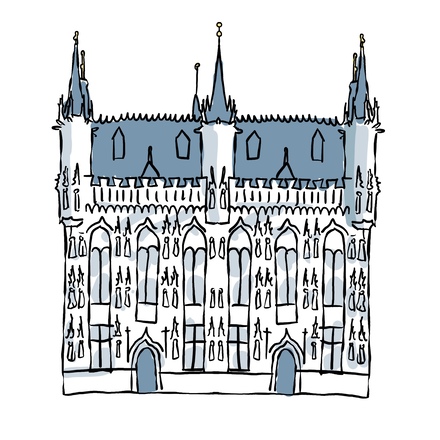
Bruges City Hall has been the beating heart of local government for over 600 years—and it's considered the oldest city hall in all of Flanders. Built between 1376 and 1421 on the site of a former prison, it was designed to show off the city’s rising
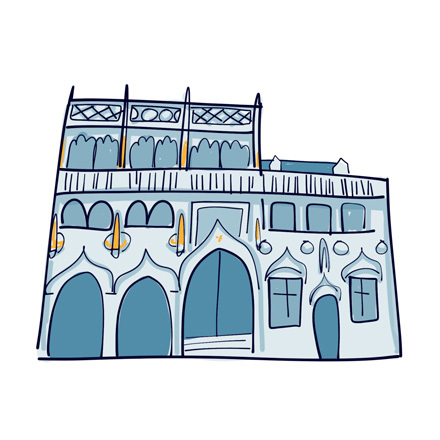
The Basilica of the Holy Blood may be modest in size compared to its grander neighbours, but it never fails to captivate those who pass by. It doesn’t look much like the churches we’re used to. With no bell tower and a dark, understated façade,
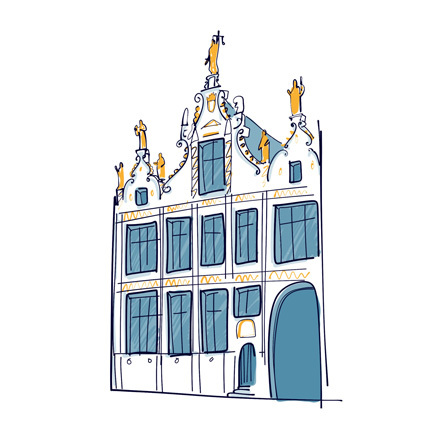
You can’t visit Bruges without stopping at the Liberty of Bruges Palace. Once the seat of real power, this is where major economic decisions were made for the city. The building played a crucial role in the Middle Ages, both for Bruges and the
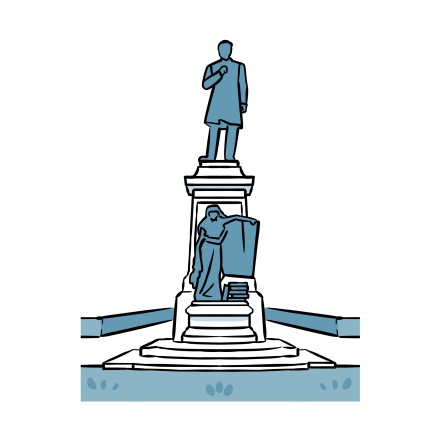
Esplanade Park, or Esplanadi in Finnish, is one of Helsinki’s most beloved promenades. Founded in 1812, it connects the city centre to the harbour and is lined with elegant 19th-century buildings. As you stroll along the

Let’s take a moment to talk about the Finnish language—one of Finland’s two official languages, alongside Swedish. Spoken across almost all of Finland and by over 90% of the population, Finnish is now a core part of the
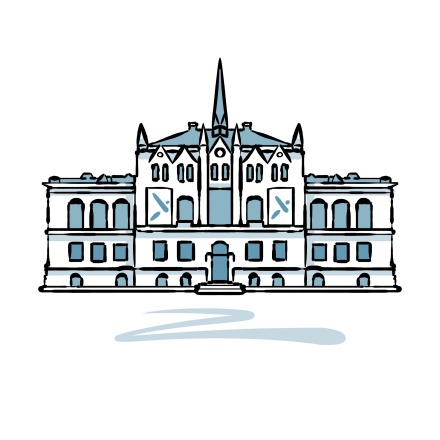
Helsinki is home to its own Design District, and the stunning Design Museum stands right at its heart. Housed in a striking Neo-Gothic building, the museum invites you to explore Finnish design through a wide variety of
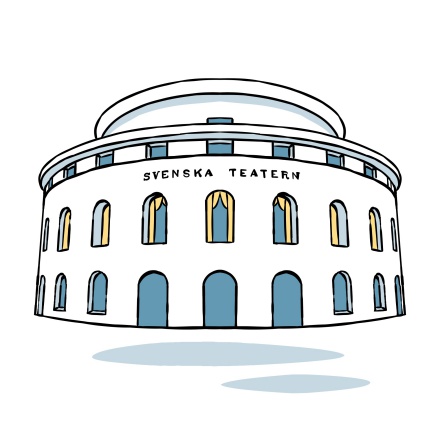
You’re now standing in front of the Swedish Theatre, at the edge of Esplanade Park. Since Finland has two official languages—Finnish and Swedish—it was only natural to have a separate theatre for each. The Finnish-
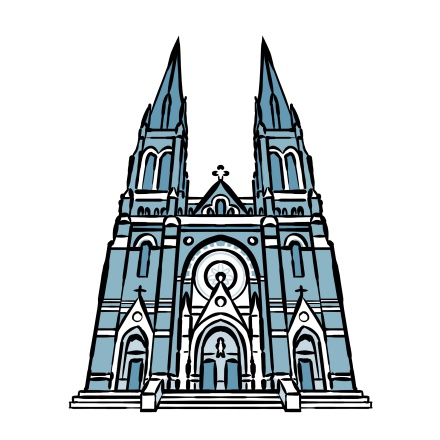
Built between 1888 and 1893, St. John’s Church is Helsinki’s largest Lutheran church and a striking example of Neo-Gothic architecture, designed by Swedish architect Adolf Melander. Its two towers, topped with matching
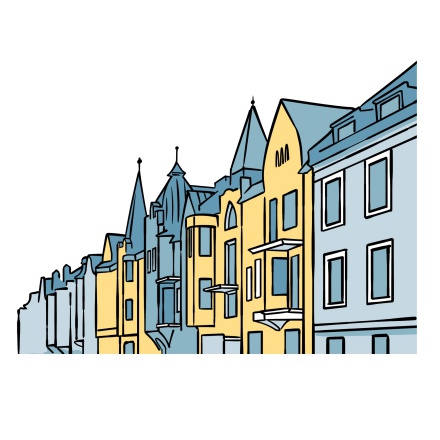
A must-see neighbourhood in Finland’s capital, the Design District is a vibrant, creative hub filled with designer boutiques, antique shops, art galleries, museums, and fashion stores. It’s one of the trendiest areas in Helsinki
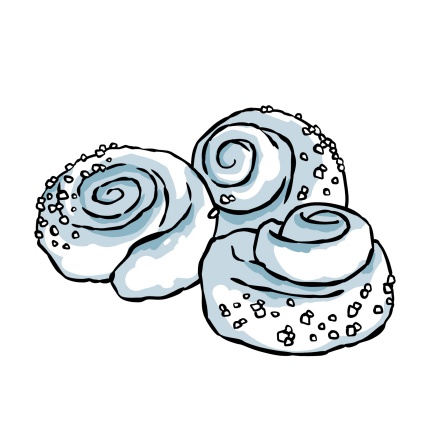
As you walk down Fredrikinkatu, one of Helsinki’s top shopping streets, let’s take a moment to talk about the local cuisine! Helsinki has plenty to offer for food lovers. This is a city where eating well is part of everyday life.
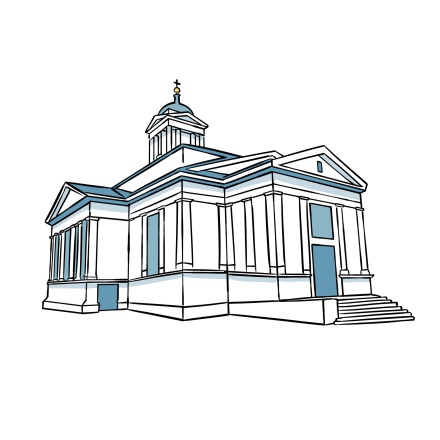
You’re now standing in front of the “Old Church of Helsinki.” As its name suggests, it’s the oldest church in the city centre! Built in 1826 on the grounds of a former cemetery, the church stands out with its crisp white-painted
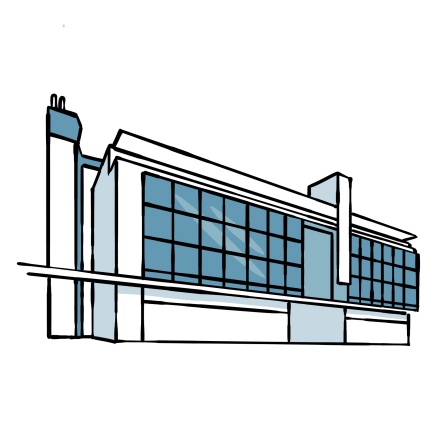
Welcome to the Kamppi district—one of Helsinki’s most central and vibrant neighbourhoods, brought to life by the large shopping centre in front of you. This is the biggest shopping mall in the city centre, a true paradise for
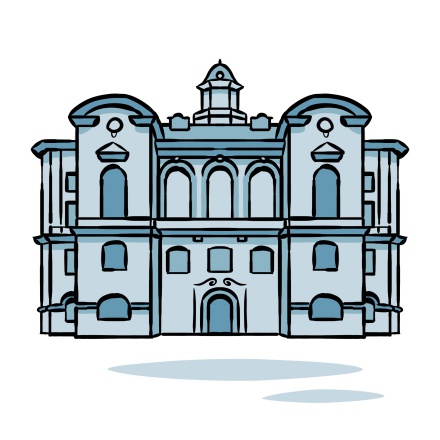
This beautiful building is Helsinki’s Natural History Museum. When it was first built in 1913, it was actually a Russian secondary school, designed and constructed by two Russian architects in an ornate and flamboyant style.
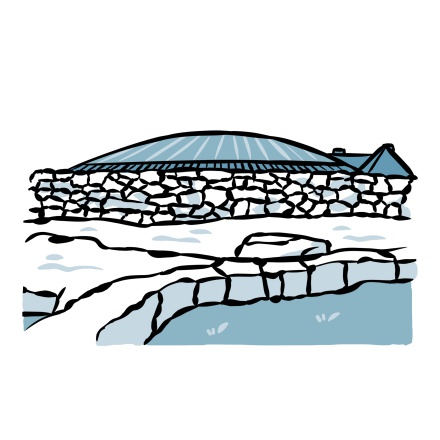
This is one of Helsinki’s true curiosities—and definitely not your typical church. In fact, you might be wondering if it is a church at all. From the outside, all you can really see is the dome, because the rest of the building is
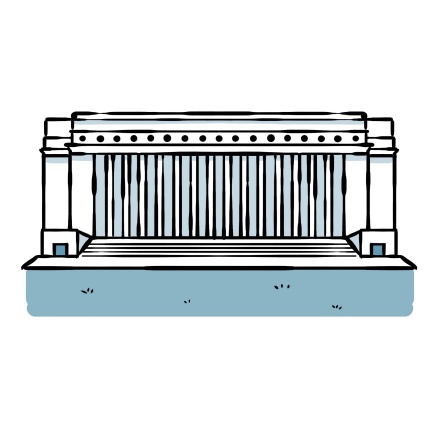
You’re now standing in front of the Finnish Parliament, designed by architect Pekka Helin, who won the design competition for the project. Completed in 2004, the building has nearly 300 offices and serves as the workplace
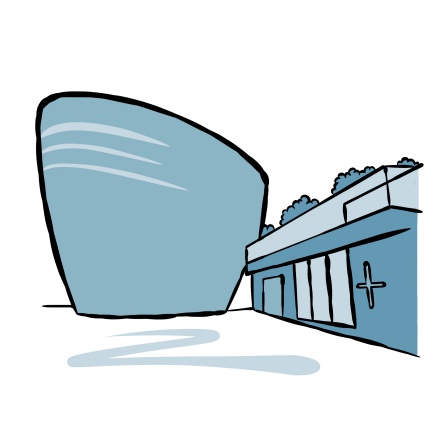
This striking building on Narinkkatori Square is the Kamppi Chapel—a true architectural gem and one of Helsinki’s most unique landmarks. Built in 2012 as part of the World Design Capital project, the chapel symbolises

On your right is Amos Rex, Helsinki’s museum of modern and contemporary art. The museum is housed in the Lasipalatsi, or “Glass Palace,” a striking Functionalist-style building from the 1930s. Originally built to host
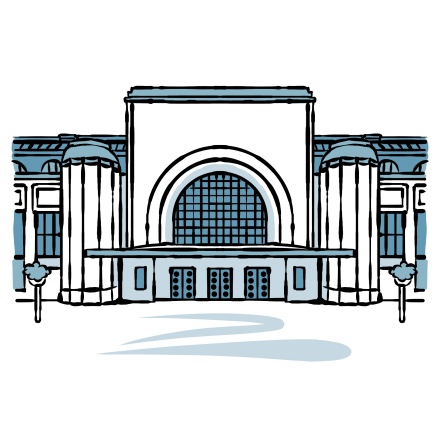
This stunning station is a masterpiece of Finnish Art Nouveau. Built between 1909 and 1919, it was designed to meet the needs of a booming capital. Helsinki’s population had grown from just 20,000 in the 1860s to nearly
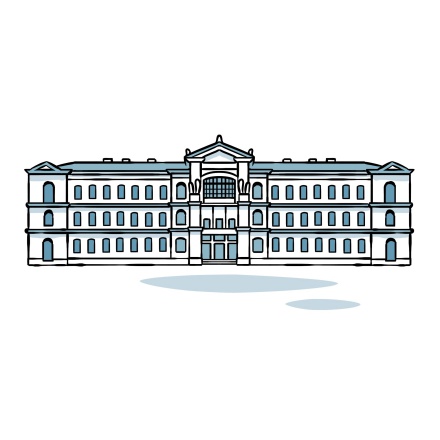
The Ateneum in front of you is widely considered one of the finest museums in Scandinavia, and holds the largest collection of classical art in Finland. Step inside to journey through the artistic movements that helped shape
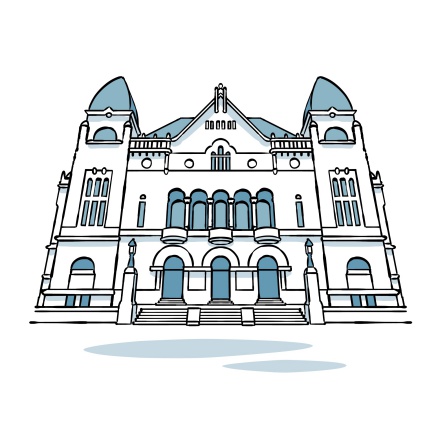
You’re now standing in front of the Finnish National Theatre, the oldest theatre in the country to perform in the Finnish language. It’s worth noting that Finland only gained independence in 1917. Before that, it belonged to
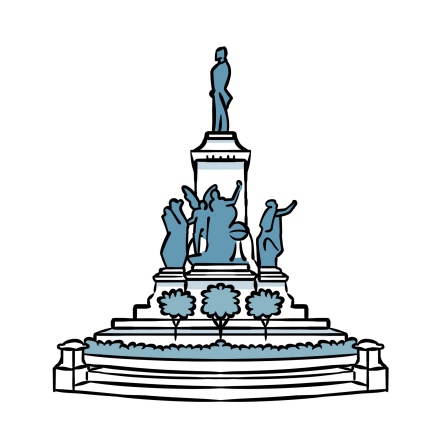
Senate Square is one of Helsinki’s most iconic landmarks—a place where religion, politics, and commerce come together in the heart of the city. Beyond the unmissable Tuomiokirkko Cathedral, you'll also find the
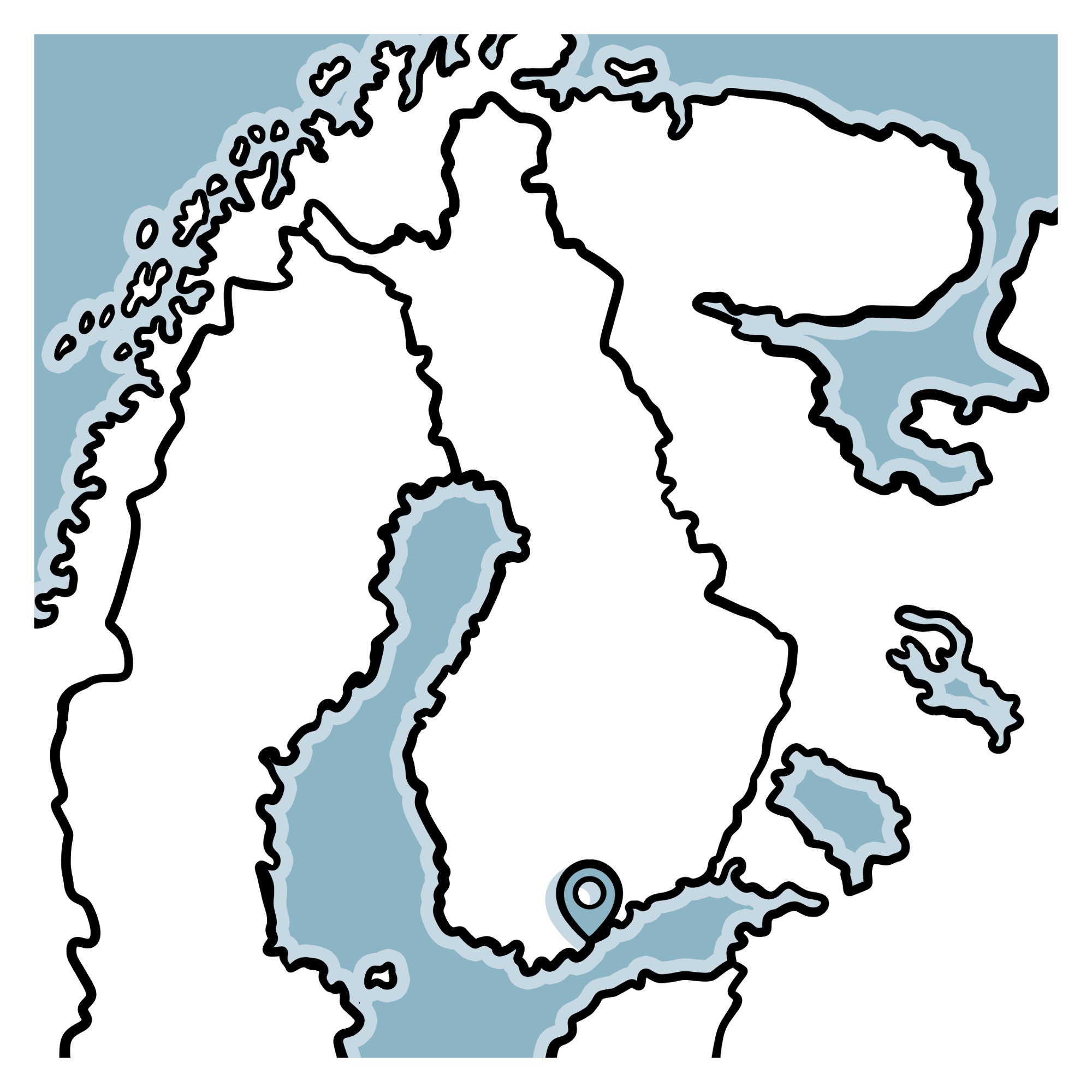
To better enjoy your visit to Helsinki and understand its monuments, it helps to take a quick dive into the history of the “White City of the North.” People have lived in Finland for over two thousand years. The first settlers

Overlooking Senate Square, Tuomiokirkko is the city’s Lutheran and most iconic cathedral. It was built between 1830 and 1852, based on plans by architect Carl Ludwig Engel, who also designed the surrounding square.

As you cross this little bridge, take a moment to enjoy the beautiful view of Uspenski Cathedral, rising above the island of Katajanokka—the very place you're about to explore. Beneath your feet flows the Katajanokka Canal,
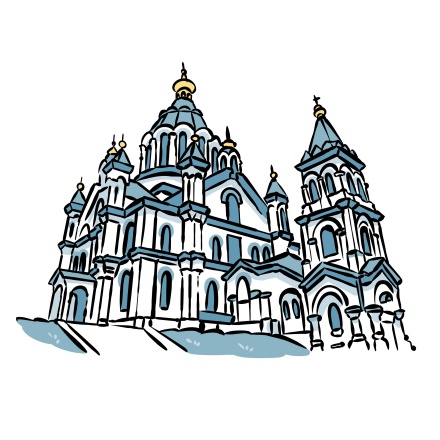
This striking red-brick cathedral is Helsinki’s Orthodox church, built in 1868 to serve the city’s Russian community during the reign of Tsar Alexander II, known as “the Liberator.” It rises here on Katajanokka Island, one of
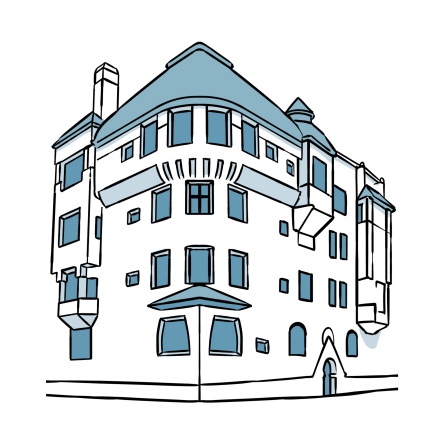
You’re now in the heart of Katajanokka, a small island just east of central Helsinki. It’s separated from the mainland by the Katajanokka Canal, which was dug between the 1830s and 1840s. In addition to the beautiful
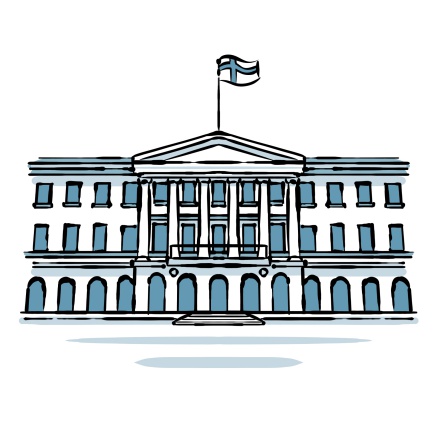
You’re now standing in front of Helsinki’s Presidential Palace, one of the official residences of the President of the Republic of Finland. The palace was completed in 1845—but before that, the site was home to a salt
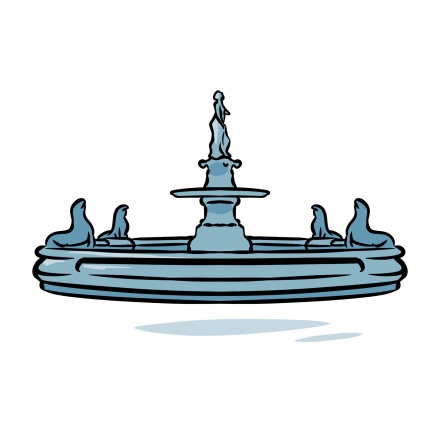
Market Square is one of the most vibrant spots in Helsinki—famous for its lively atmosphere and the Helsinki Market. Originally located on Senate Square, the market was moved here when the city’s main square was
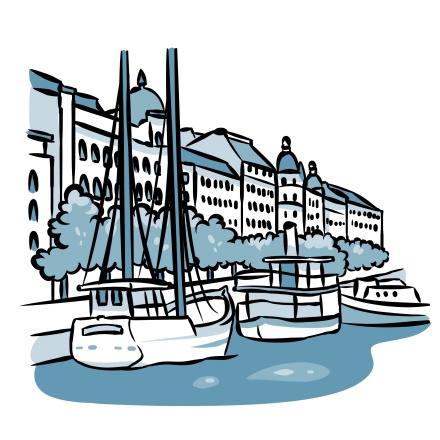
A true emblem of the city, Helsinki’s harbour has been here since the very beginning. It has evolved from a quiet fishing port, into a vibrant, tourist-friendly European capital. These days, the harbour serves a very different

A lively and agitated street, Strøget is the city’s main shopping avenue. The perfect place for a shopping spree as you are spoiled for choice here. Plan some time ahead of you because you’re in for a shock: Strøget is one of the longest pedestrian roads in Europe! You have it all here...

On your left, you have the oldest square in Copenhagen. There was once a market here, where pigs, poultry and eggs were sold. Ever since the city’s foundation in the 12th century, it has been the social, judicial and political centre of Copenhagen.
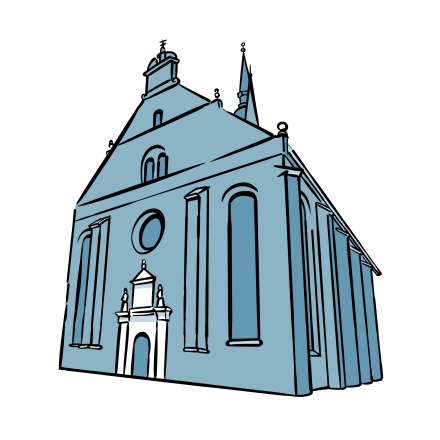
Here we are in front of the city’s oldest church, built in the 13th century! Formerly linked to the Catholic monastery, these premises were destroyed due to the 1728 fire, burning other buildings in the Danish capital. Restored since then, it now displays an elegant Baroque style.
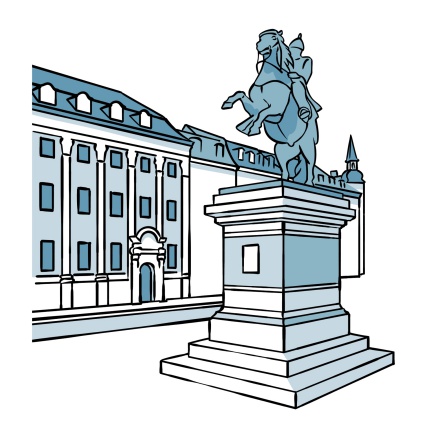
Højbro Plads is one of Copenhagen’s main squares. Established after the 1795 fire, it was built to stop future fires from starting or propagating, indeed, the city has known many fires in the past. Moreover, it also serves as an aeration system in the city centre—a place where residents can meet up and gather on this big vast square.
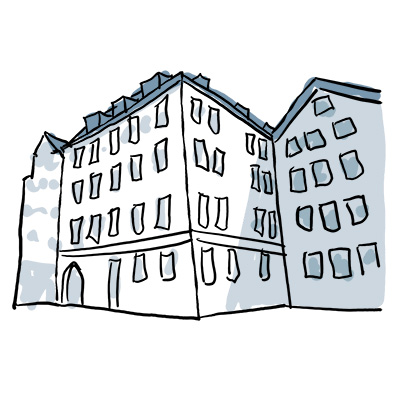
Here we are on beautiful Gråbrødretorv, a colourful square. It was given this name in 1841, yet it is much older than expected. The first buildings here were destroyed during the Copenhagen Fire of 1728, the biggest fire ever registered in the city. So big that over 20% of inhabitants were suddenly homeless.
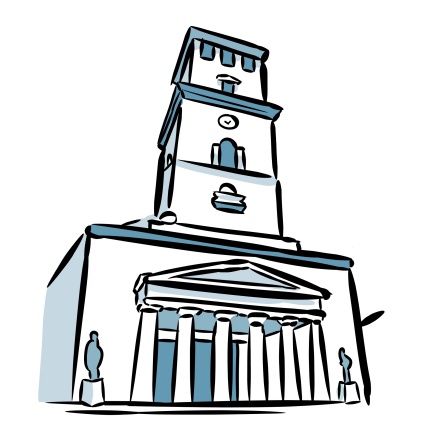
Reminiscent of ancient temples, this cathedral is the most important in Copenhagen. Although the current structure was completed in 1829, its history stretches back much further. The story begins in the 12th century, when the city's founder, Absalon, commissioned a grand church that was unfortunately destroyed by fire shortly after completion.

Nicknamed the Round Tower, this building is attached to its neighbour, the Trinitatis Church, built to accommodate a church, a university library, and an astronomical observatory on top of the tower. Commissioned by King Christian IV in 1637, it was completed 5 years later.

You are now in Købmagergade street, a shopping avenue with many lovely buildings. A good example is n°42, on your right. This is Varehuset Messen, a former department store built in 1895 by Danish architect Emil Blichfeldt. Everbody knew of this place, yet it still closed in 1971.
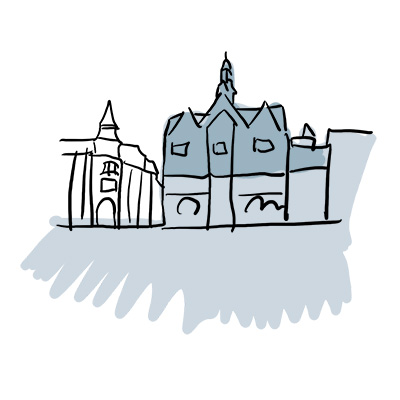
This is also a very nice square! It goes under the name of Kultovert, or the Coal Market, given its past business here. Built after the 1728 fire, its surrounding buildings were rebuilt over time...except for the one in front of you. Commonly known as n°14, it stands here since the 1730s, whereas the others have all been built or redone throughout the 19th century.

That’s the Copenhagen botanical garden on your left! If it’s open, don’t hesitate to enter and take a look. While you follow a route spanning over 10 hectares, you’ll find more than 13 000 plants, as well as an imposing greenhouse containing palmtrees, carnivorous plants and Arctic plants.
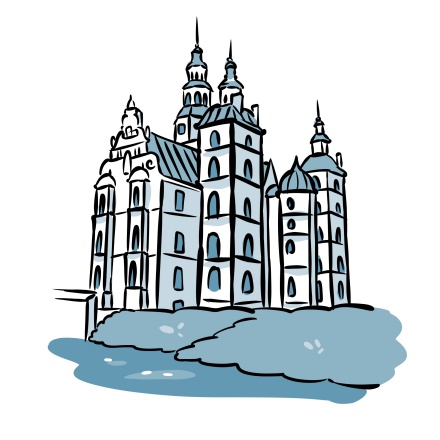
Commissioned by King Christian IV of Denmark, Rosenborg Castle was originally supposed to be a holiday house. Completed 30 years later, it soon became the King’s favourite; he even spent his final days here. An official residence, the Royal Family will start living here in 1633 before moving to Fredensborg Palace in 1710.

You are now in the King’s Garden, a beautiful green park surrounding Rosenborg Castle. It was commissioned by King Christian IV, one of the most important kings of Denmark. The garden stood here before the palace, for it was established here in 1606 while the palace only came later, in 1624.
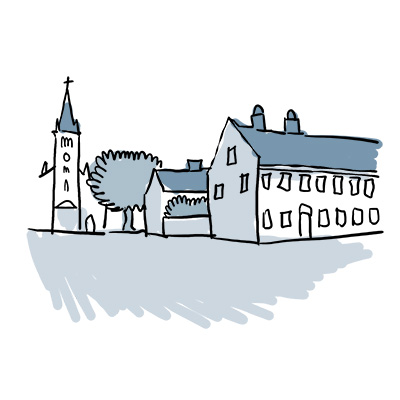
You are now in Nyboder district. Quite different, huh? Each ochre house on this street is far from going unnoticed. In fact, we’re in a residential area, built in 1631 under King Christian IV’s impulsive demand. At the time, the city was endlessly growing, a good thing, since the King was determined to transform Copenhagen into a major developed city.

What you see in front of you is the Nyboders Mindestuer, a must-see when visiting the neighbourhood. In fact, it’s the only building still standing here since the 17th century. It is a fine example of the single-story row construction houses that were built to form this neighborhood and to accommodate the soldiers at that time.
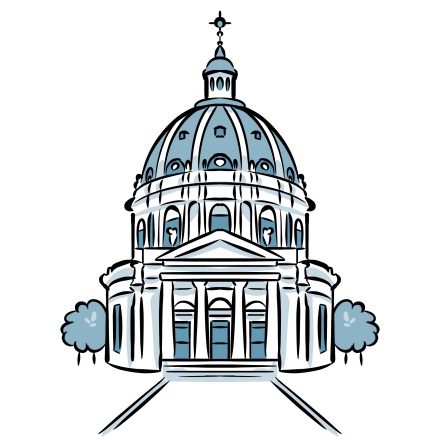
You are now standing in front of the “Marble Church”. Don’t worry, it’s not fully made of marble...though it was originally planned that way when construction began in 1749! However, the death of the architect, just five years after construction began, interrupted the project.
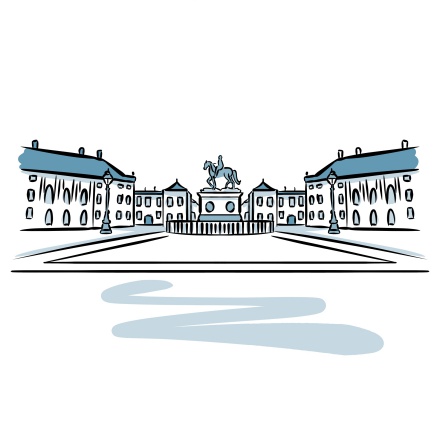
Amalienborg is an iconic landmark in Copenhagen, consisting of four imposing and elegant buildings that serve as the residence of the Danish royal family. With a neo-Classical front and Rococo interior, these premises each distinguish themselves from each other:
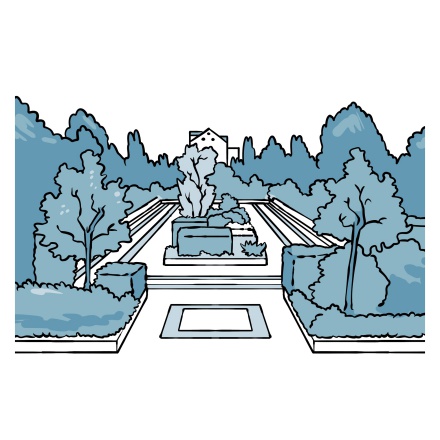
Right beside Amalienborg Palace, this little park is the perfect place for a little stroll along the port of Copenhagen. Designed in 1983 by Belgian landscaper Jean Delogne, it was built on what used to be a shipyard established in 1802. Here, you’ll find different types of flowers and plants embellishing the garden in the summertime.

It’s time to take THE best photo of Copenhagen! A beautiful pic of Nyhavn, revealing a bridge and colourful houses on either side of the canal full of moored boats, adding charm to this already perfect scenery.
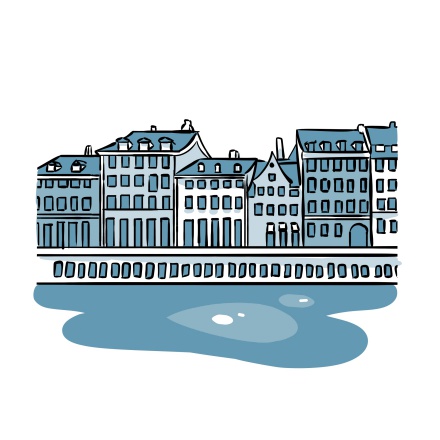
Here we are in the city’s most charming neighbourhood! Don’t be surprised if you’ve already seen a postcard of this place before. Quite understandable when witnessing all these quaint colourful houses, crossed by Nyhavn canal with quays and wooden boats. What a view! This district was established by King Christian V in the 17th century.

That’s Niels Juel standing in front of you. In statue form, silly! A Danish admiral from the 17th century, he has permanently marked Denmark’s history after winning many battles to defend his country. Notably, the Nothern Wars from 1658 to 1660, then the Scanian War from 1675 to 1679.

You are now on Holmensbro, one of the many bridges of the city. Passing above a canal, this landmark offers a great view on a few monuments. For example, on your left, you can see the church where Niels Juel was buried, which I talked about just before. On the other side, there is a construction zone a bit further away.

This castle has lived through 9 centuries to be standing here today in the centre of Copenhagen. Built in the 12th century, it was the Royal Family’s residence for many centuries. Know that Christianborg Palace has transformed over time. It was first a medieval fortress with moats and strong walls, of which you can still find in the palace when visiting.
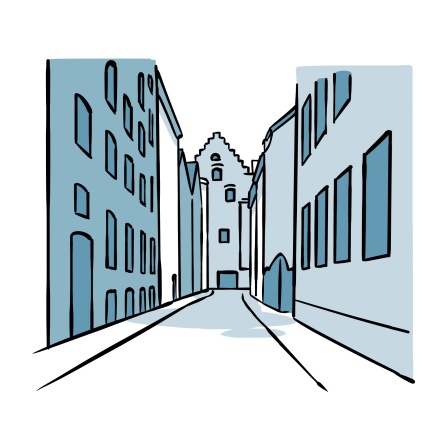
Here are two of the oldest streets in Copenhagen! As you can see, they’ve never lost their spark despite existing since the 16th century. Houses here clearly foreshadow what the city could have looked like at the time, showcasing their bright colours and beautiful Danish architecture.
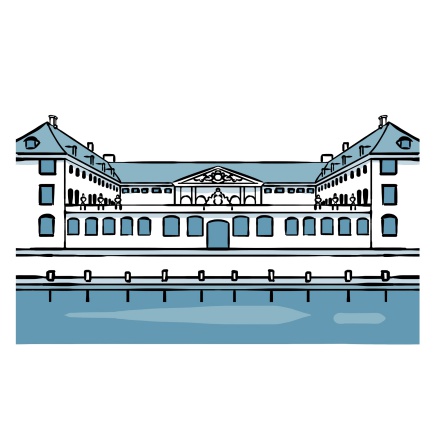
What you see in front of you is the National Museum, narrating the history and culture of Denmark with collections from prehistoric times to today! There’s everything in the country’s biggest museum: the Viking Age, Renaissance, Greek and Roman Antiquity...I guess that’s why it’s so big, there’s so much to learn!
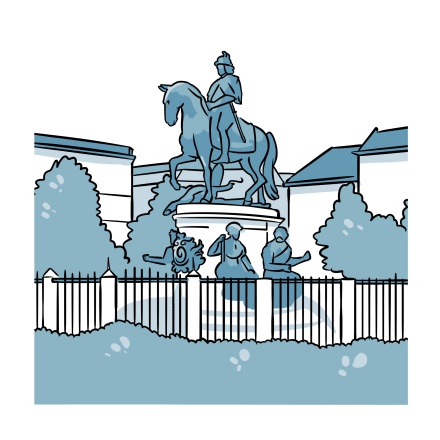
This is one of the main squares in the city. Kongens Nytorv is an important connection between the most touristic landmarks and monuments, so it would be a crime to avoid this place when visiting Copenhagen! On your left, you’ll find two important buildings: the Charlottenborg Palace, an ancient royal mansion (yes, another one) recognisable by its dark facade; and

I know, it’s quite an unusual building! Don’t hesitate to cross the road to get a little closer. But first, take a look at the big column in front, in the middle of the street. The statue on top of it is none other than Dante, a great poet, author,
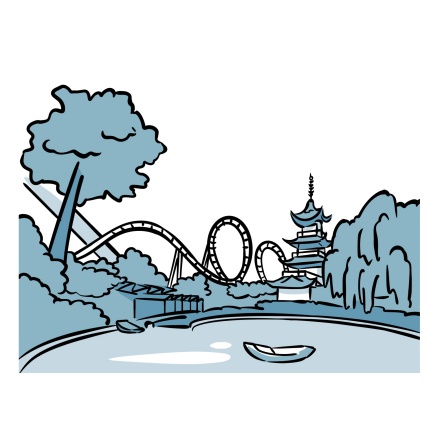
Look to your left at this unique garden. Yes, with all this noise, you’ve probably guessed that this is an amusement park right in the city centre! Open since 1843, Tivoli Gardens counts as one of the oldest amusement parks in the world! And one of

Strange statue, isn’t it? In the middle of Dantes Plads, this sculpture means a lot to locals here. Made in 2021 by Danish sculptor Jens Galschiot, it was to oppose a project aiming to transform this square into a parking. He called it “Fuck Q-
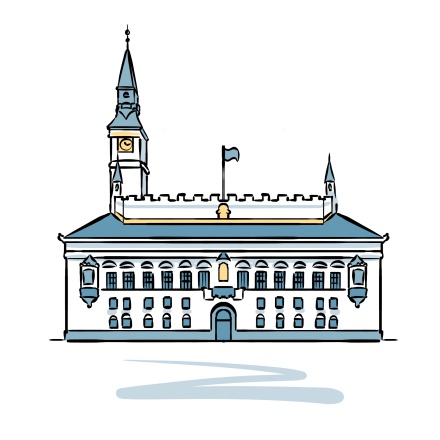
Opposite from Tivoli Gardens, the City Hall was built in 1905 by Danish architect Martin Nyrop. As surprising as it can be, this means that Tivoli was here before the City Hall! Made in a neo-Renaissance style, this building went through many

Before you is the famous Upper West Side, overlooking the lake and trees that make up the west side of Central Park. The Upper West Side is home to some of Manhattan's most prestigious buildings, with some of the highest rents in the metropolis.

This part of the park was designed so that locals could have a fully wooded area to enjoy leisurely strolls and escape the hustle and bustle of New York. It's also a great place for birdwatching, with a total of 230 different species identified since its creation.

This panoramic view of Bow Bridge and the lake is straight out of a romantic movie, right? In fact, it's a very popular spot in Central Park, especially with Instagrammers who love to snap pictures here.
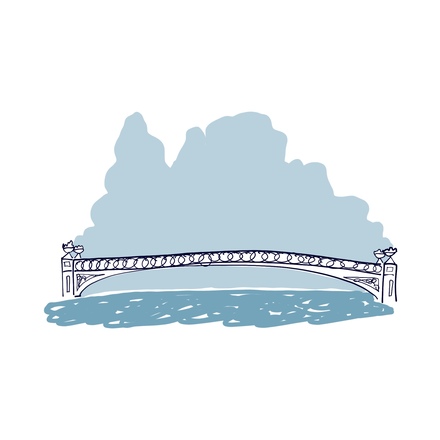
At 26 meters long, the Bow Bridge is the longest and arguably the most romantic bridge in Central Park. Built in 1862 by Calvert Vaux and Jacob Wrey Mould, the park's leading architects, it sports a wrought-iron structure and Greek-inspired decorations.

This circle on the ground is a memorial to John Lennon, one of the most talented songwriters of all time and a member of the legendary Beatles. He lived with his wife at the far end of the Upper West Side, in the so-called Dakota Building, overlooking this very park.
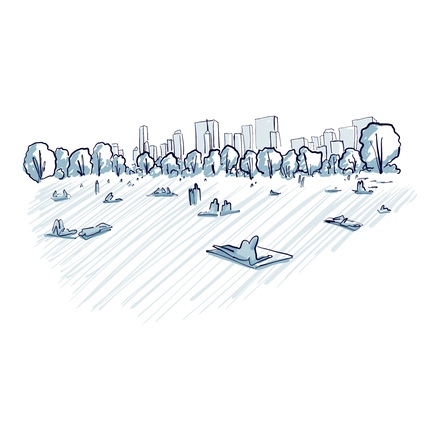
This vast, verdant field on the right is known as Sheep Meadow. Don't worry, you won't find any sheep here! That was a long time ago. Locals and tourists come to this peaceful oasis to unwind and recharge, whether they're with their friends, family, or that special someone.
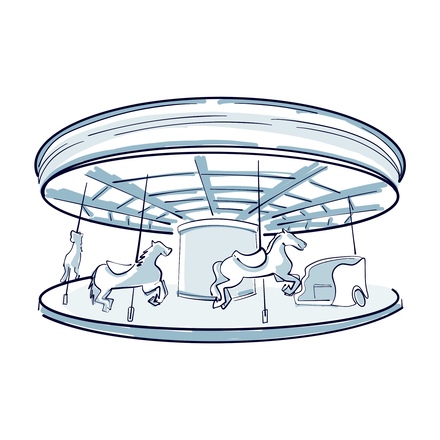
The Central Park Carousel is a major attraction, drawing children from all over the world! It opened in 1871 and quickly became a favorite with New Yorkers. The original carousel, powered by real horses and mules, operated until 1924.
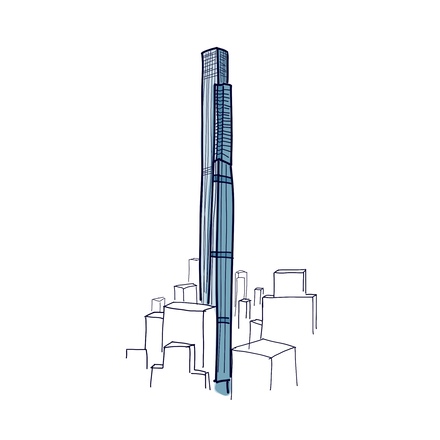
You're now standing at the foot of the Central Park Tower. It's the second-tallest tower in New York, rising to 472 meters. Construction started in 2015 and the top 88 floors were designed to house luxury apartments. The first seven floors house a shopping mall.
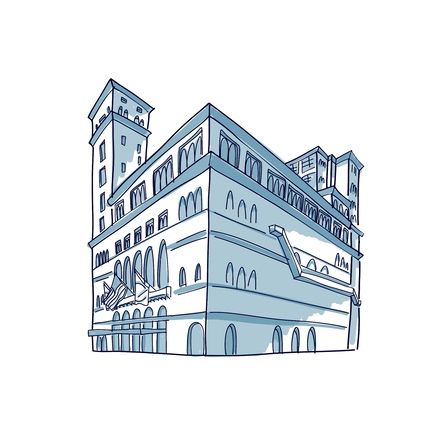
You are looking at one of the world's most famous concert halls. Carnegie Hall was built in 1890 by Andrew Carnegie and opened its doors a year later to host the world's greatest musical performances.
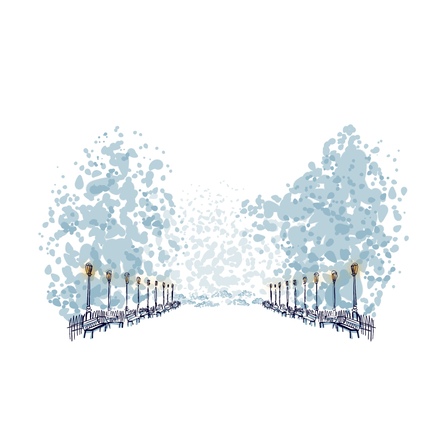
You're now walking down “The Mall,” also known as “The Promenade.” This is Central Park's main walkway and the only straight one, actually. You're now in the southern part of the park, known as the "Literary Promenade" because of the many statues of writers, dating back to the 19th century.
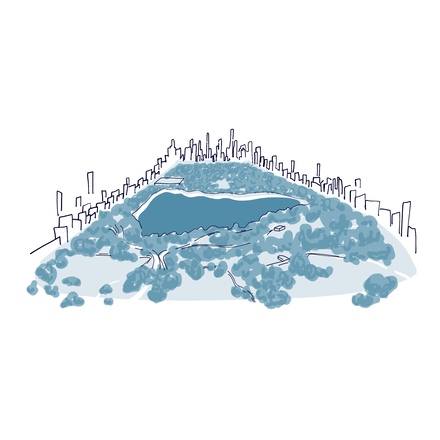
Welcome to Central Park, the most famous park in the United States, if not the world! Some 42 million people visit it every year. Tourists and locals come here to play sports, have fun with their kids or enjoy a picnic on the vast green lawns.
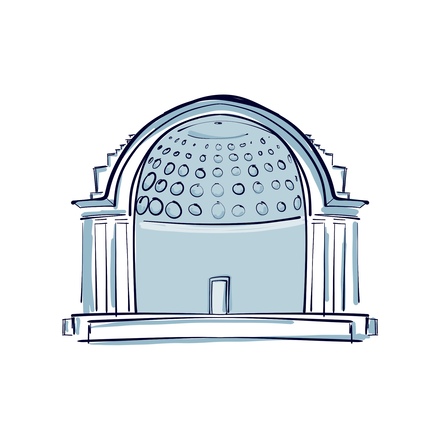
This park has hosted classical, jazz and rock concerts for many years. It all began in 1860 with a simple bandstand, which at times attracted over 45,000 people. In response to its great success, a new open-air stage was built in 1923 in the form of a neo-classical bandshell,
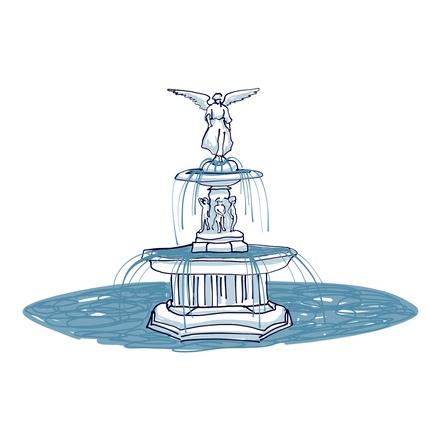
Before you is the Bethesda Fountain, the most beautiful in the park. It's a popular meeting spot for many New Yorkers, who come here to enjoy the park and its lake. This is also where people come to rent a rowboat so they can see the park from a different viewpoint.
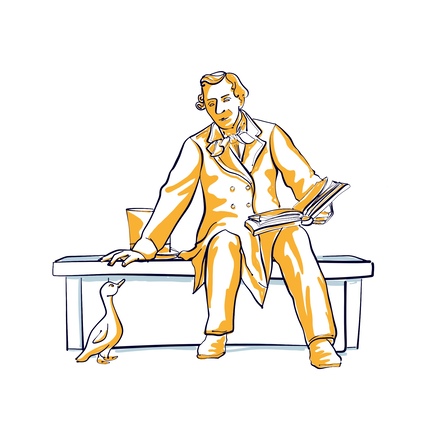
This beautiful statue depicts Hans Christian Andersen, the Danish novelist and playwright behind classics like "The Little Mermaid" and "The Little Match Girl". The statue was designed in 1956 to celebrate the 150th anniversary of his birth,
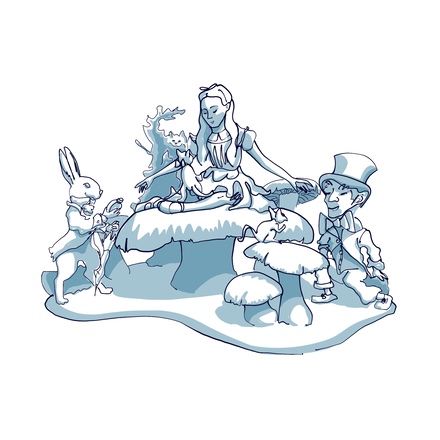
This lovely statue, a favorite with young and old alike, shows the five main characters from "Alice in Wonderland." There's Alice, the White Rabbit, the Mad Hatter, the Cheshire Cat and the Mouse from the Pool of Tears.
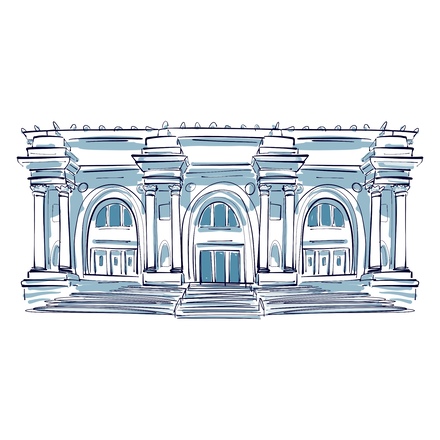
On your right, you'll see the Metropolitan Museum of Art, the largest museum in New York City. Its main entrance is on Fifth Avenue, but its eastern side has stood in Central Park since 1880. When founded in 1870, the museum, more commonly known as the Met,
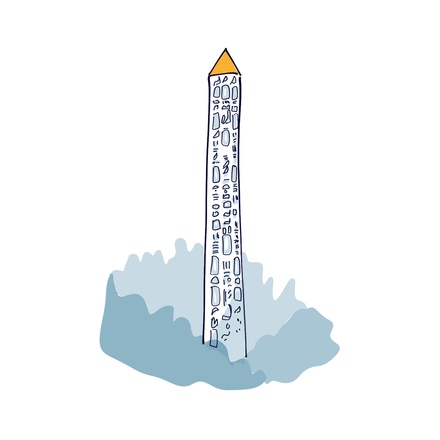
This nearly 21-metre-high obelisk was installed in Central Park in 1881, in the presence of some 10,000 people who had come to see this historic object erected in New York's most beloved park. The Egyptian government gifted it to the United States in 1879.
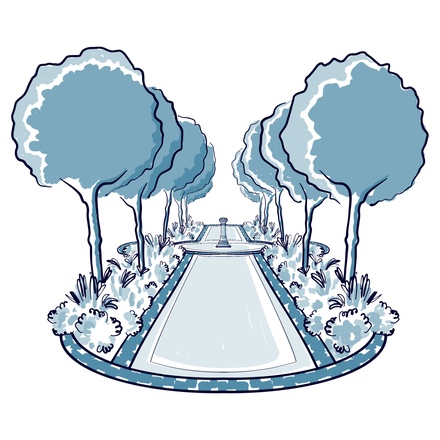
This beautiful garden, dedicated to one of the world's greatest playwrights, is the epitome of romance. It was laid out in the heart of Central Park back in 1916, to celebrate the tricentennial of William Shakespeare’s death.

Amazing, isn't it? A real medieval castle in the heart of Central Park! Belvedere Castle was built by Calver Vaux and Jacob Wrey Mould in 1865. It sits on Vista Rock, the second-highest point in the park, and was inspired by Scottish castles in the Victorian era, hence its Romanesque-Gothic architecture.
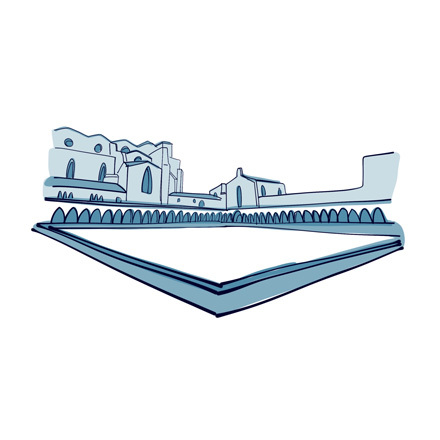
Passing through this gate into such a large, empty courtyard can leave you wondering. Where exactly are we? Why is this area enclosed like this? What are the secrets hidden behind these arcades? Exactly the kind of questions this historic site in Perpignan stirs in all of us.
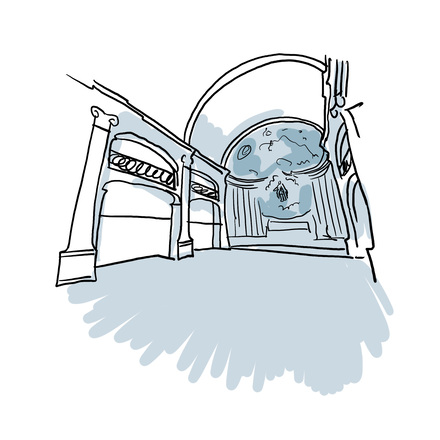
Tucked into a corner of Place de la Révolution française, the Chapelle du Tiers Ordre isn't exactly easy to spot. But don't let its plain facade and small size fool you. Inside, it’s full of artistic and historical surprises.
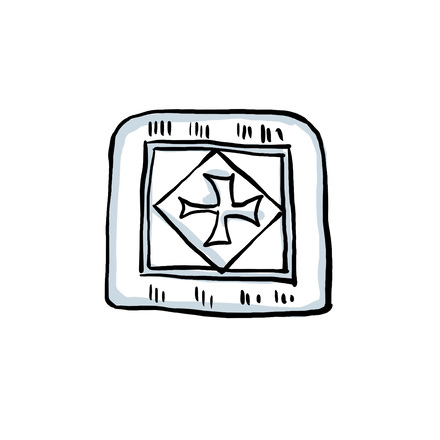
On your right, you’ll see a red-toned building with a fountain at its base, its façade adorned with a small white square.
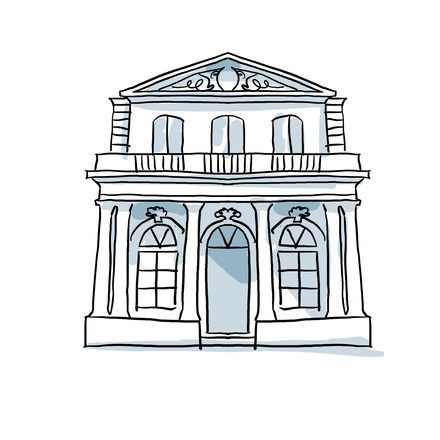
If you’ve just walked along the street next to us, its name might already have given you a hint — the story of Perpignan’s old university is just a few steps away. All you need to do is turn left, and head towards the large wrought-iron gate in front of you.
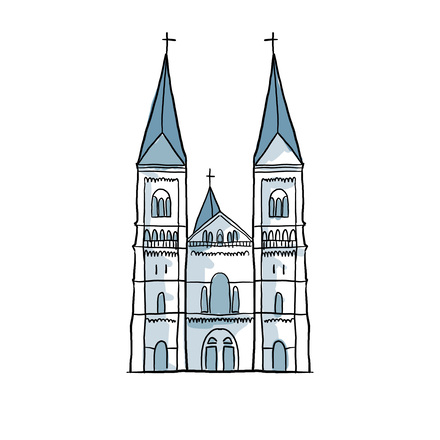
Historically, the Church of Notre-Dame de la Réal, right here in front of you, was the fourth parish in Perpignan — after Saint-Jean, Saint-Jacques, and Saint-Matthieu. But don’t let that ranking fool you. It played a major role in the city’s history.
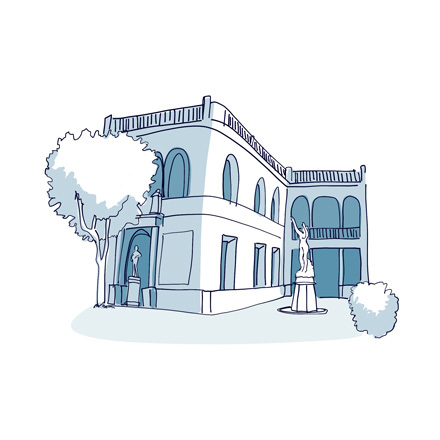
Of all the sayings we still hear today, there’s one in particular that rarely gets proven wrong. You know the one — “don’t judge a book by its cover.” And here, at 18 rue Emile Zola, that’s exactly the advice to follow. Not for a person, this time — but for a building.
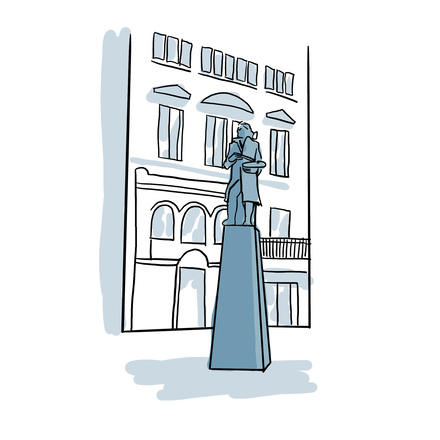
You’ve arrived at Hyacinthe Rigaud Square, where a large statue of the man himself stands right before you.
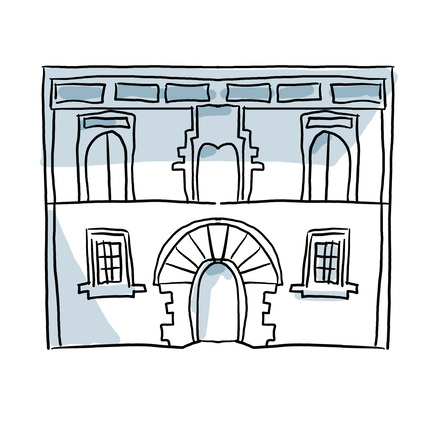
When it comes to Perpignan’s rich heritage, you’ll often hear about its most famous monuments. But others — less well-known, yet just as rich in history — also deserve a moment of your time. One of those is this civil gem, just 20 meters up the street, on rue de la Main de Fer.
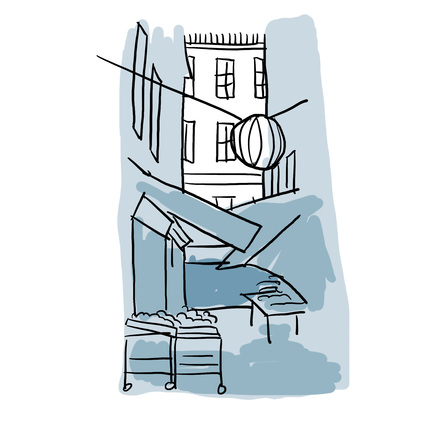
Nicknamed “Spice Street” — or sometimes just “the street that smells good” — rue Paratilla is sure to wake up your senses… and maybe your appetite too. It may be only about a hundred meters long, but it brings together at least nine well-known local shops — all packed with goods that are a feast for the eyes and the taste buds.

Accessible from every direction, lined with various shops, lively throughout the year, and eternally well-situated, the Place de la République has no shortage of attractions that draw us to it, whether intentionally or unintentionally. Beyond being a great meeting point for locals and a useful landmark for visitors, this square is also a fascinating witness to the city’s history.

If you have a passion for fine art, there's no better place in Perpignan to satisfy your curiosity. The Hyacinthe Rigaud Art Museum is one of the most visited and important cultural sites in the Occitanie region. For over 200 years, it has embodied the cultural development of the Catalan city of Perpignan.

Much smaller than the Têt — the coastal river that runs through the city of Perpignan — the Basse, named for its low water level, still knows how to make an impression. It’s more than just a quiet little river with peaceful banks.
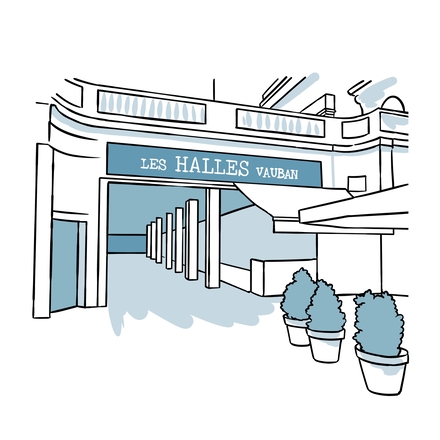
Food lovers, flavor seekers, and curious tasters — get ready, because here you are in one of Perpignan’s most mouthwatering attractions. A place full of color, fragrance, and flavor. Officially opened on November 2nd, 2017, the Halles Vauban are one of the city’s latest culinary concepts — much to the delight of locals and visitors alike.
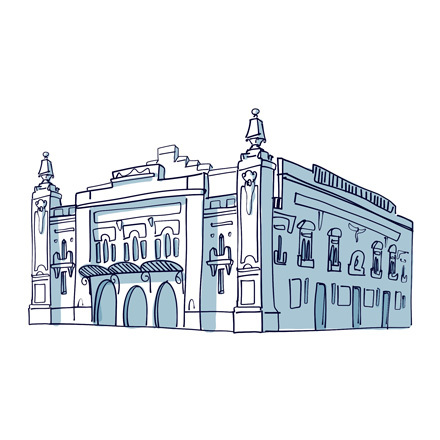
At a time when virtual reality is becoming more and more a part of everyday life, the Cinéma Castillet offers a beautiful step back in time — to when the first joys of the silver screen were just beginning to blossom in this Mediterranean city. For over 110 years now, it’s been a key part of Perpignan’s cultural life.
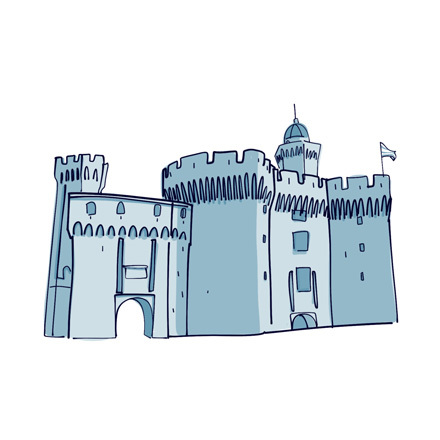
From the banks of the Bassa, it’s hard to miss the building that has become one of Perpignan’s most iconic landmarks. Striking, unusual, and above all, historically significant, the Castillet bears the marks of time — a clear sign of its importance in the city’s past.

Since the Middle Ages, Place de la Loge has been the political, commercial, and civic heart of Perpignan. You can see that clearly from the three major buildings lined up as you approach it: the Loge de Mer, the Town Hall, and the one right in front of you — the focus of this part of the audioguide.
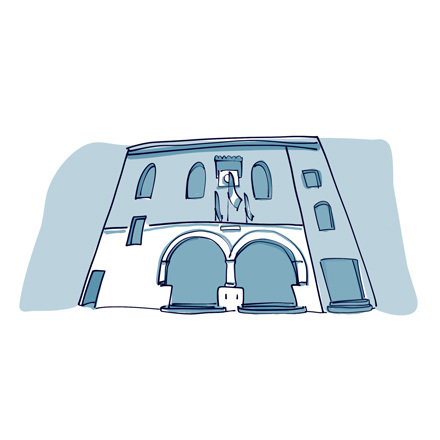
Just look at this glowing façade — built from cayrou brick, local marble from Baixas, and smooth river stones. For a quintessential example of Perpignan's traditional Roussillon-style architecture, look no further.
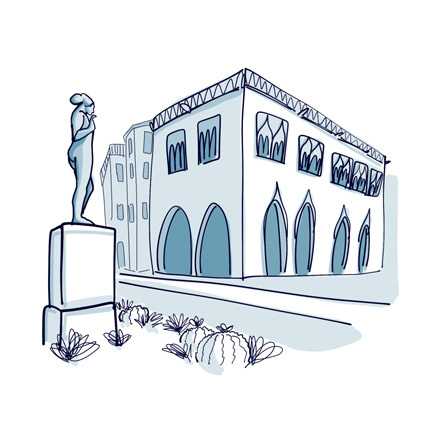
On your right, you can admire the Loge de Mer, or the Sea Lodge in English. Massive, rectangular, and yet surprisingly elegant, the Loge de Mer is a truly unique landmark in Perpignan. Alongside its neighbours — the Town Hall and the Palace of the Deputation — it proudly forms what was once known as the “trident of political and commercial elites.”
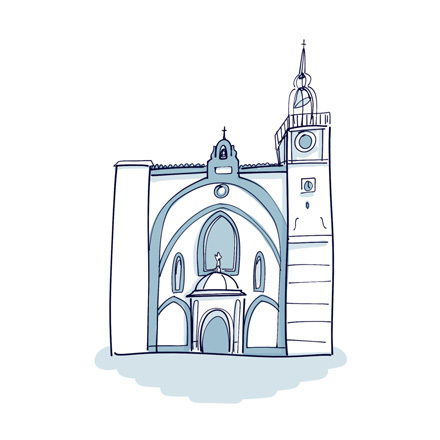
With no fewer than 167 cathedrals across the country, France is home to an exceptionally rich Christian heritage. These buildings offer both architectural and historical insight into the cities and regions they represent. Here in Perpignan, at the foot of the Saint-Jean-Baptiste Cathedral, French Catalonia shines in all its glory.
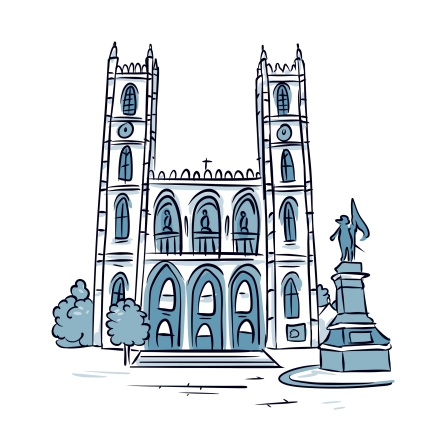
Here stands a precious gem: the Notre-Dame Basilica, a magnificent neo-Gothic structure dating from 1824. With over a million visitors each year, it is not only the mother church of Montreal, but also the largest in the archdiocese. Stepping inside
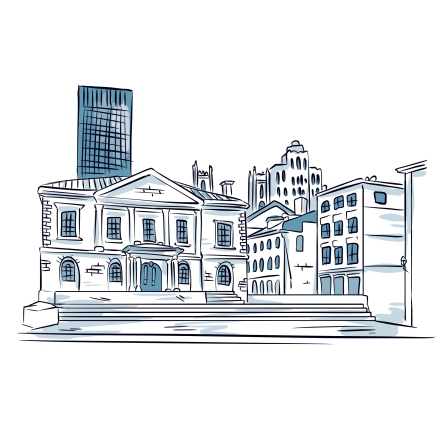
You’re standing where it all began. Place Royale bears witness to over a thousand years of human presence. Let’s take a quick skip back into time. In 1535, during his second travel to Canada, Jacques Cartier landed at the semi-sedentary Iroquoian village
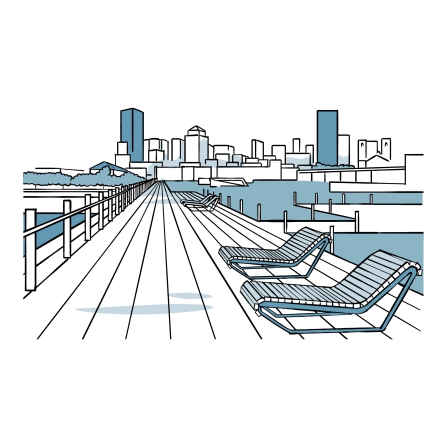
You're strolling along the pleasant promenade of Montréal's Old Port—a well-deserved break by the water. The revitalized quays can be explored on foot, by bike, by pedal car, or even by boat—it depends on how you want to discover the place. Along the way,
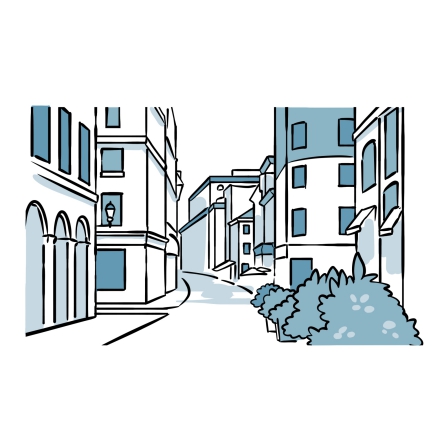
You're now walking along Saint-Paul Street—the oldest and historically richest in Montréal. In 1645, just after the foundation of Ville-Marie, this street was already drawn for urban planning. If you look at a map of the city, you’ll notice that the streets of Old
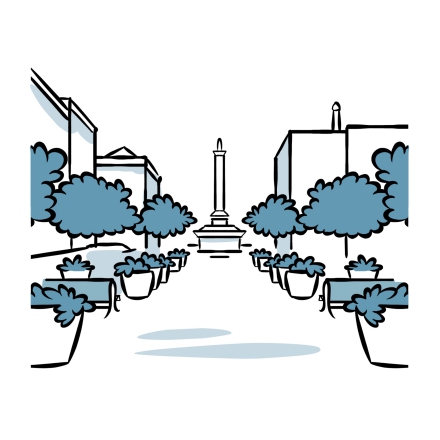
You’re now standing on Place Jacques-Cartier. Before becoming the charming Old Town pedestrian square you see right now, this site was home to Château de Vaudreuil, the former residence of the Governor of New
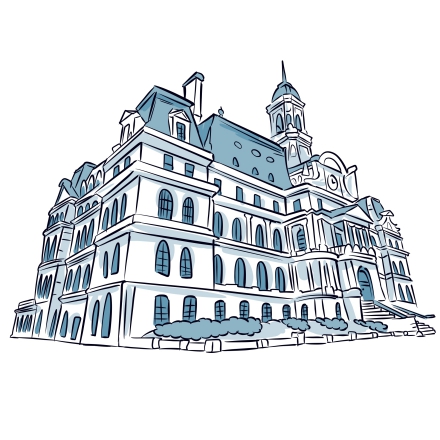
Here you are on Place Vauquelin, nestled between two massive municipal buildings. On your left stands the former courthouse, and on your right, Montréal’s City Hall. Both were designed by architect Henri Maurice

We’ve purposefully chosen this place for you because it offers such a great view! Of course, the large Ferris wheel behind you is another great way to rise above the city and enjoy a panoramic view of Montréal. But
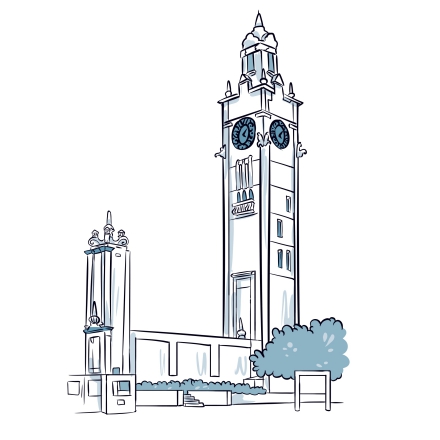
You can spot it at the very end of the quay—Montreal’s Clock Tower, its silhouette rising against the skyline. Built in 1922, this striking structure is a proud symbol of Montreal’s past and was designated a Federal Heritage
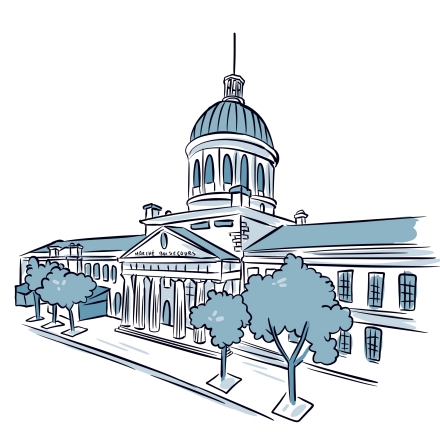
With its gleaming silver dome, Bonsecours Market is another iconic symbol of Montreal. It’s an impressive sight—so much that it ranks among the top 10 most beautiful buildings in Canada, as listed by the federal

It probably feels strange to come face-to-face with a lonely bell tower, seemingly standing out of place right next to the sleek modern buildings of the CHUM—Montreal’s University Health Center. Yet, this is the only remaining
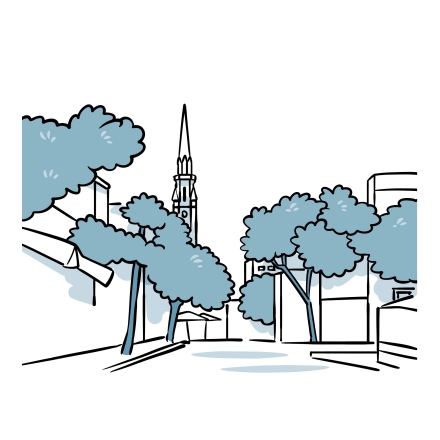
When you reach the intersection of Sainte-Catherine and Saint-Denis streets, you’re at the gateway to Montreal’s Latin Quarter. While this tour doesn’t take you through it, I highly recommend coming back to

Here you are on Sainte-Catherine Street, Montreal’s most important commercial artery—and I’m not kidding! It boasts the highest concentration of clothing stores in the entire country, which comes as no surprise given its
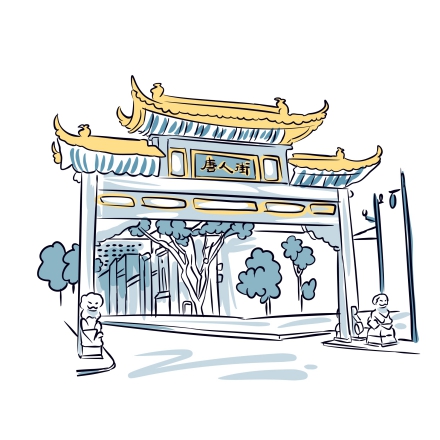
No need for a master’s degree to know you’ve arrived in Chinatown! The striking mural and traditional arch mark the northern entrance to Montreal’s Chinese district. Compact yet full of character, this neighborhood in
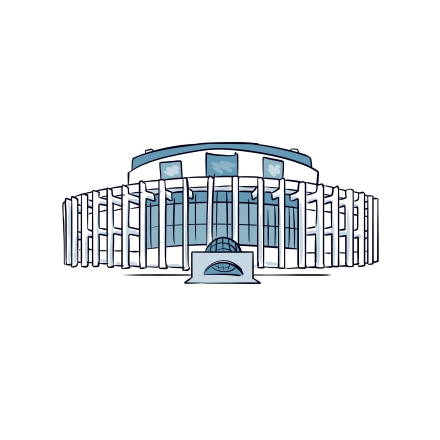
Welcome to Place des Arts, right in the heart of Montreal’s entertainment district. Dedicated to showcasing the performing arts, this cultural venue was created in 1955 under the leadership of Mayor Jean Drapeau, who

You’re now standing in front of the beautiful Saint James United Church, the second-oldest Protestant church in Quebec. When it was built in the late 19th century, it was the largest Methodist church in Canada. While
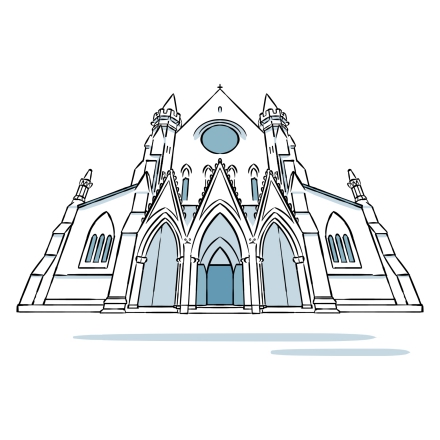
This is Christ Church Cathedral, an Anglican church dedicated—as its name suggests—to Jesus Christ. Anglicanism is often seen as a middle way between Catholicism and Protestantism—a sort of theological
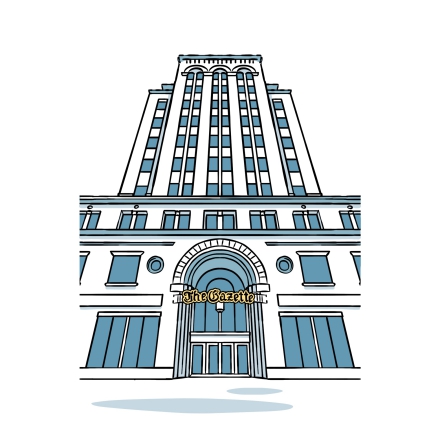
Take a look at the beautiful structure in the corner: that’s the Dominion Square Building, a true architectural icon in downtown Montreal. It was built in the 1930s in a Beaux-Arts style—which, like eclecticism, blends
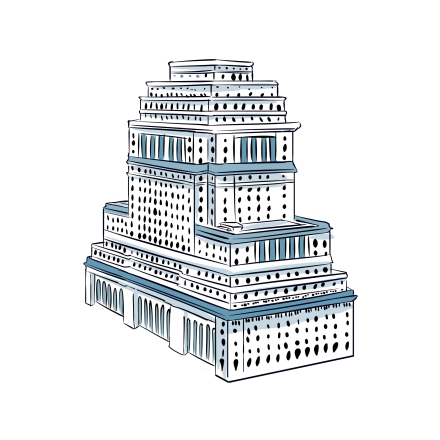
Just across from Dorchester Square stands one of Montreal’s most imposing—and perhaps most jaw-dropping—buildings. If you feel tempted to call it a behemoth, you’re absolutely right: it’s made up of 60,200

After crossing Place du Canada, you’ve just arrived in front of the awe-inspiring Mary, Queen of the World Cathedral. If it looks familiar to you, that’s no coincidence—it’s a smaller replica of St. Peter’s Basilica in the
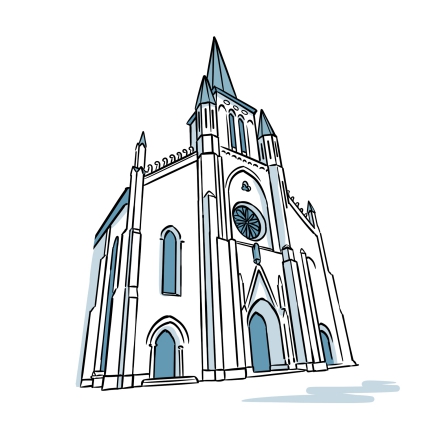
Here is Saint Patrick’s Basilica, which, as you might expect, has deep historical ties to Montreal’s Irish community. In the 1830s, Canada saw a significant wave of Irish immigration, driven by the severe economic
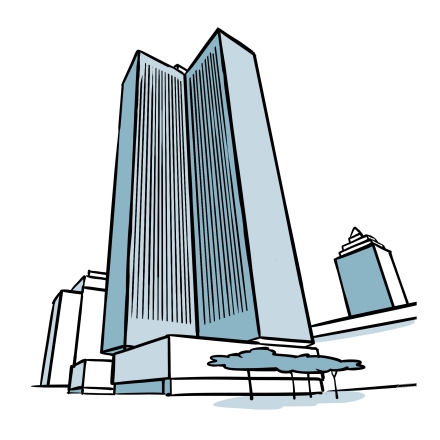
You're now crossing through the Ville-Marie complex, surrounded by towering skyscrapers reflecting each other in endless panes of glass. Standing here, it’s easy to feel a little overwhelmed—like you’ve stepped into a
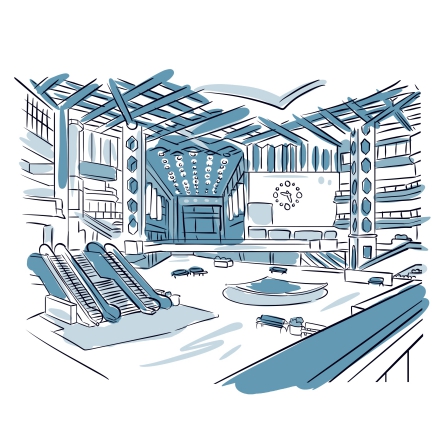
You’re now entering Montreal’s parallel universe, its underground city. Welcome to the World Trade Center, one of the many gateways into the famous RESO, Montreal’s official underground pedestrian network.

You're not dreaming—what you see here is indeed a Parisian Métro entrance, brought straight from the French capital. This iconic wrought-iron structure, a true emblem of Paris, was designed in the early 20th century by
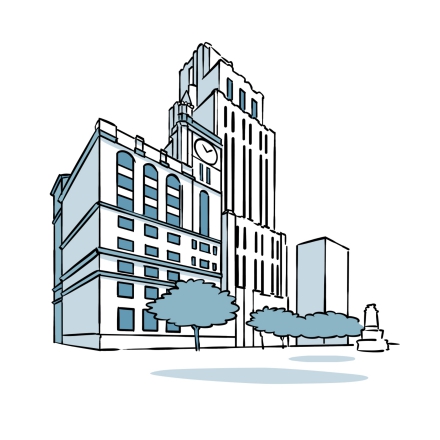
You’re now in the heart of the Ville-Marie borough, on Place d’Armes—one of Montreal’s most iconic squares. First built in the late 17th century, this historic site captures over 300 years of architectural evolution and
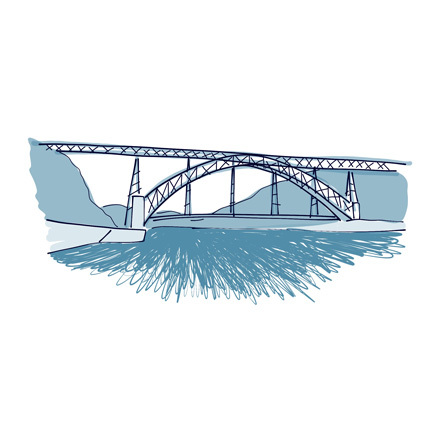
If we were to draw a skyline of Porto, then this iconic landmark would, without any doubt, be part of it. Framed by this breathtaking scenery, you can spot the Dom Luís Bridge, a metal structure connecting the heart of Porto to the Vila Nova de Gaia wine cellars.
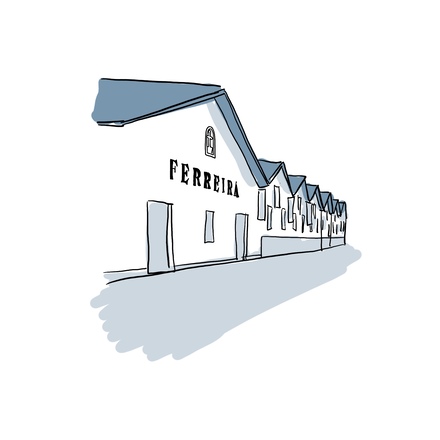
To all those who have never tried Porto wine, raise your hand! Aha, caught red-handed! I’m joking, of course. Those who felt concerned by the question, no need to stress it, because you’re in THE right place to finally try it out.

Where there's a bit of climbing involved, there's often a clear view as a reward. That's right, we didn't make you climb all this way just for exercise. Take a look at the place we've taken you to. Great spot for a photo, isn’t it?
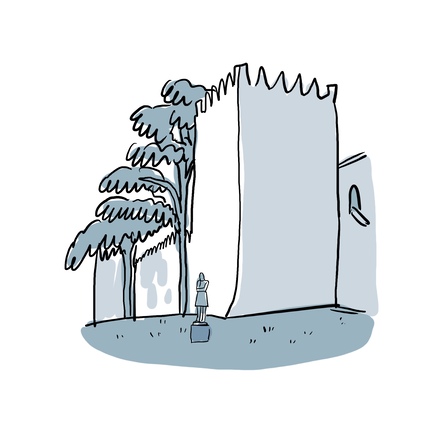
Stretching out in front of you are the famous Fernandine Walls. Far from matching the Great Wall of China’s size, this Gothic fortification remains a striking testament to Porto’s rich history. Built throughout the 14th century, it was part of the surrounding
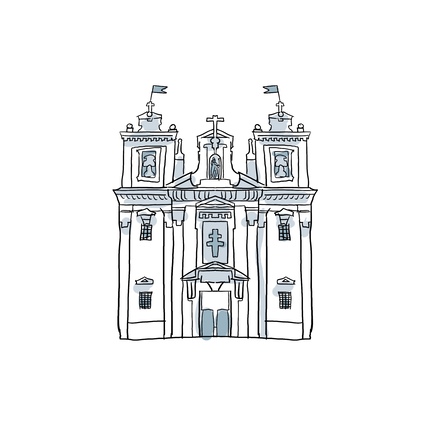
It’s in this quite little street that you’ll find one of Porto’s hidden gems, the Santa Clara Church. Unlike many others of its kind, this church keeps its beauty within. Step through its Gothic stone entrance and let the magic begin. Originally built in the 15th century
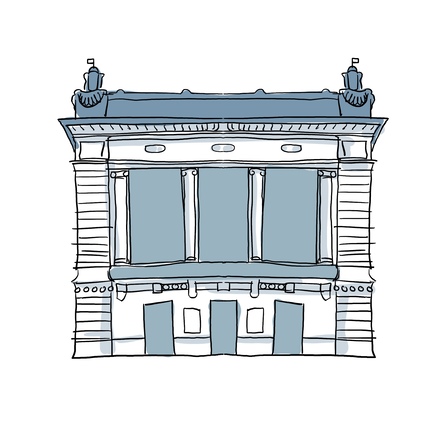
The São João National Theater was built in 1798 with the primary purpose to equip Portugal’s 2nd largest city with an opera house. Named after Prince João IV, the building soon met an unfortunate fate.
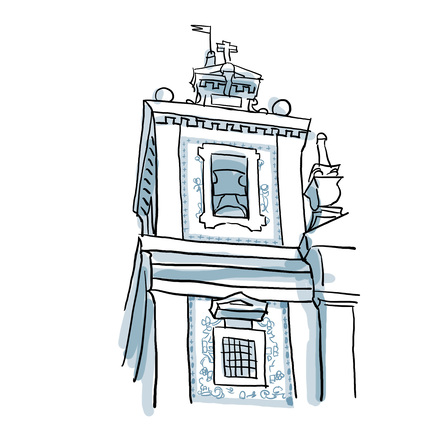
While it might not be Porto’s most famous landmark, the Church of Saint Ildefonso is certainly a lovely sight along your route. Built between 1709 and 1739, this religious gem pays tribute to the art of azulejos—iconic Portuguese ceramic tiles.
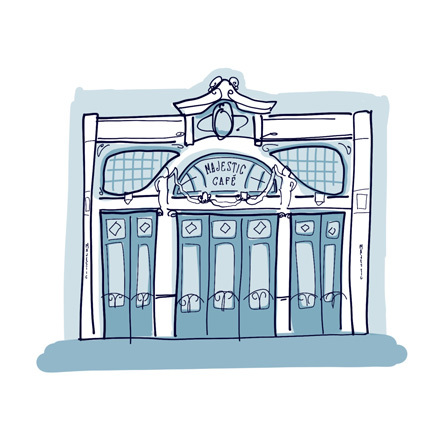
As you approach this iconic Porto adress, you’ll be transported back into time. So buckle up, ‘cause you’re in for an adventure! Opened in 1921 as the Elite Café, this small yet historical venue quickly became home to many important names of Porto’s cultural scene.
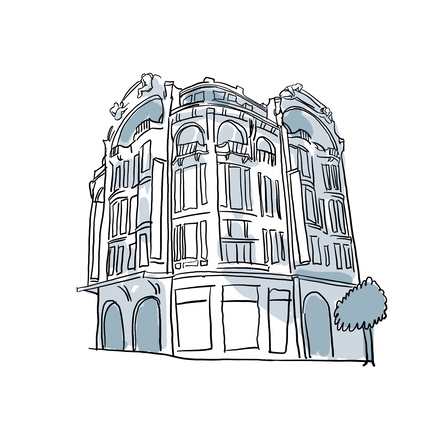
Often frequented by shopping lovers, Rua Santa Catarina is Porto’s main shopping street. It first emerged in 1662, though it reached its current length of 1500 metres in 1784, as it was extended towards Marquis of Pombal square.
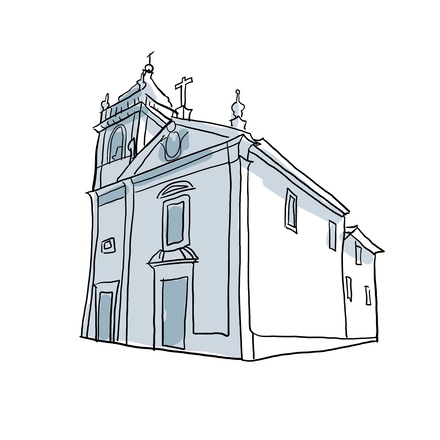
Tucked among the street’s liveliness and brands of all kinds, you’ll find one of Porto’s most delightful churches. Here since the beginning of the 18th century, the striking Chapel of Souls will simply amaze you for its creative facades.
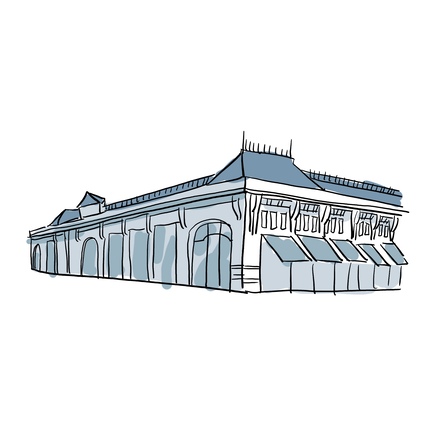
You’ve now reached the edge of Bolhão Market, one of Porto’s absolute must-sees and a listed historic monument since 2006. Built in 1914 over what used to be a marsh, it gathered merchants in one lively hub

Can you tell me which building you’re standing in front of right now? Here’s a clue: it’s not a courthouse, nor a theatre or a museum. So, what’s your guess? Equipped of 6 floors and a 70-meter-high tower, this imposing masterpiece is none other than the City Hall.
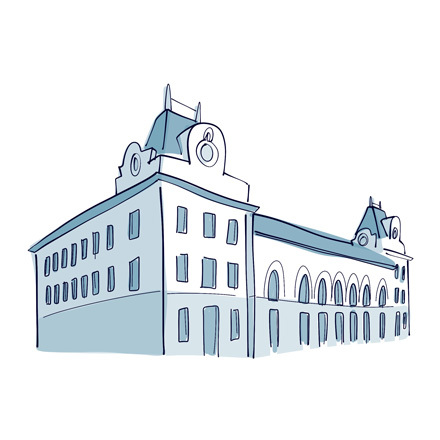
Don’t worry, we aren’t trying to send you off somewhere else! Quite the opposite, we’re keeping you here with us! When visiting Porto, it would be a shame not to stop by the São Bento railway station, because it has such a lovely building front.

Every big city has a main square, and Porto makes no exception! You are standing on the Liberty Square, the most important one here. It connects the Old Town to the more recent part, making it a must-see when visiting the city.
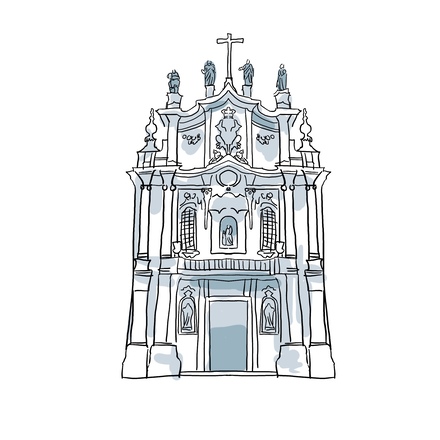
As you cross the square—named Lions’ Square due to its lovely fountain—you’ll soon discoverthe façade of one of Porto's most fascinating places of worship! And here's a surprise—what you're looking at is actually two churches!
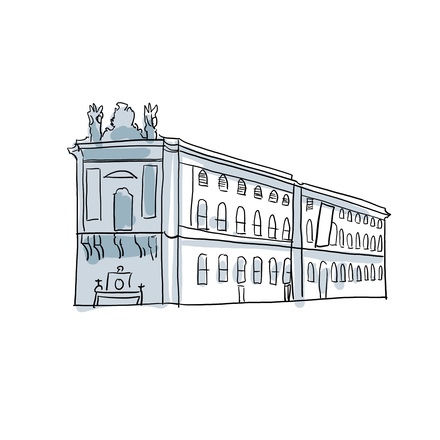
Just around the corner, you’ll find this imposing building of a radiant yellow, surrounded by relaxing gardens. Repurposed as the Portuguese Centre of Photography in 1997, these thick walls shelter a darker reality of its past. Starting as a courthouse in the 18th
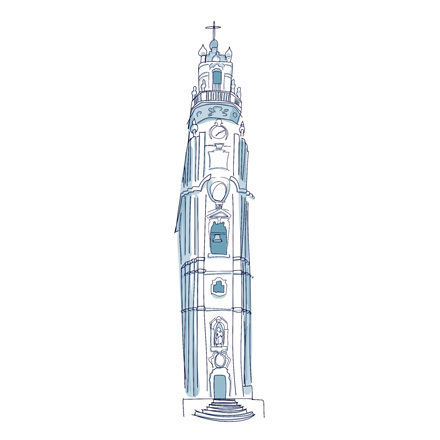
Part of Porto’s beautiful landscape, this 76 meter tower is an important symbol here. It was built in the 18th century, at the same time as the Clérigos Church which you can see at the back. You’re probably wondering why they aren’t joint together.

It’s when you find these hidden gems that Porto starts feeling like a picture-perfect postcard. That’s the Old Town stretching out before you, and a little more of the city too. From here, you get to see Porto’s treasures as well as Vila Nova de Gaia wine cellars.
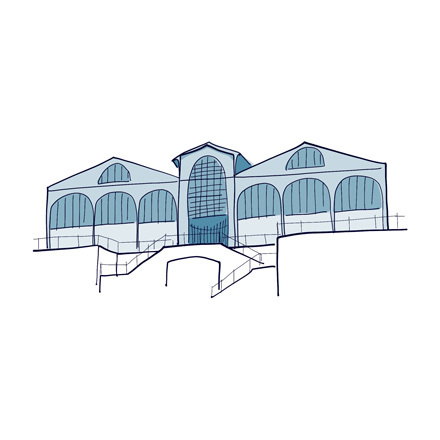
What a beautiful red iron structure we have right here! Built in 1885 by the city council, the Ferreira Borges Market was to replace the former Mercado da Ribeira. A great idea at first, but the merchants too fond of this place refused to leave.
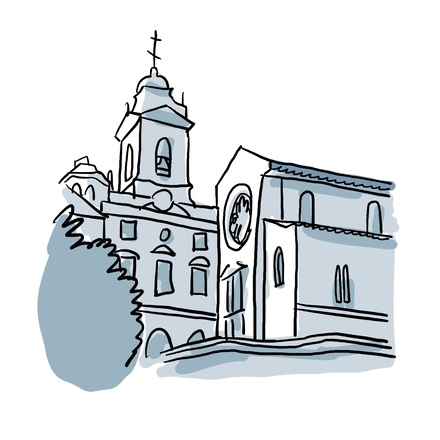
Here we are in front of one of the most stunning examples of Baroque architecture in all of Portugal! It went under a long period of construction from the 13th to the 18th century to finally present this beautiful facade, blending both Romanesque and Gothic styles.
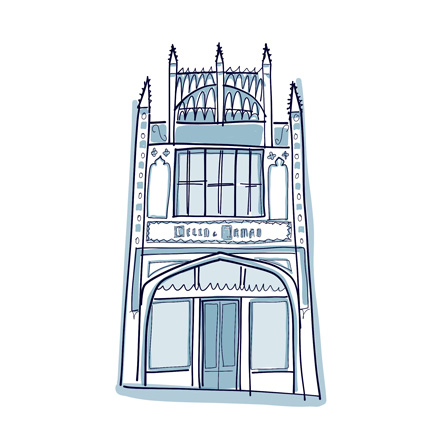
Squashed in between two buildings, this white neo-Gothic facade is not a church, but a library. Sorry, I mean THE library Lello & Irmão! Open since 1906, this place has always been successful, whether that is before, today, or later.

It almost feels as if it’s gently resting on the Douro’s waters, offering a truly stunning view. Here, you follow two steps. First, you take in the scene among all this peace and quiet. Next, you take a photo of this unforgettable view spanning out in front of you.
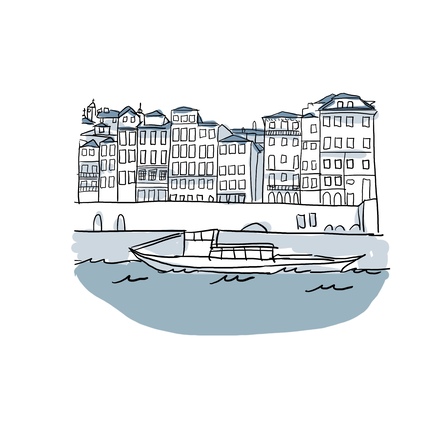
Can you feel that energy? It’s coming from the Ribeira district, the heart of our beloved city. Everybody loves this authentic neighbourhood, locals or tourists alike. Walking around here, you’ll come across tall and old brightly coloured homes
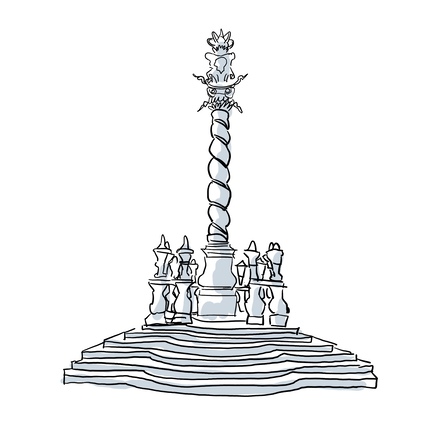
Facing the Sé, the city’s cathedral, you should be able to see a twisted stone column, which is a “pelourinho” in Portuguese. In the past, former justice systems used pillories to publicly humiliate a convicted person, with the aim to punish him for his crimes as well as

Set high above the city, Porto’s cathedral, the Sé, doesn’t give itself away easily — it invites you to come find it. Built in the 12th century, it was reconstructed multiple times throughout history, now presenting a harmonious yet diverse architectural ensemble.
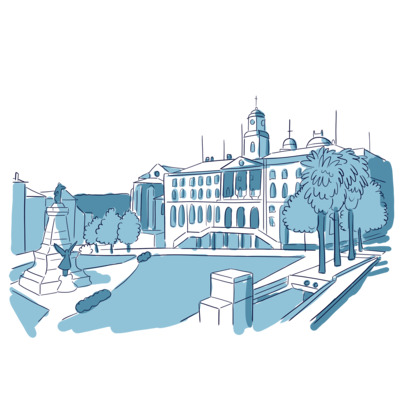
On your right stands the Stock Exchange Palace. Built in the 19th century, this big neoclassical building replaced the Franciscan convent that had been destroyed by fire. This new one is both imposing and huge, which is no surprise given how influent the Commercial
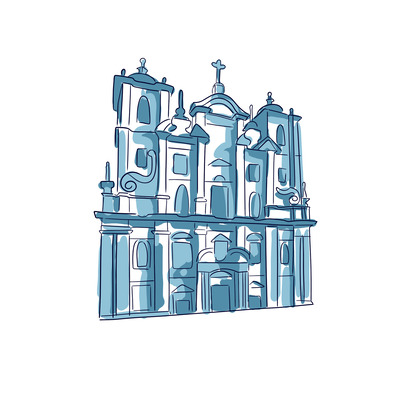
You've arrived at this square and now find yourself face-to-face with the Church of Saint Lawrence, also known as the Church of the Crickets. This nickname has an interesting origin: it was affectionately given to the Spanish monks who later occupied the church,
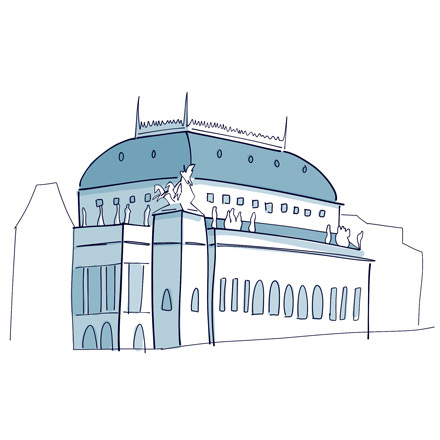
This emblem of national revival, known as “The Golden Chapel,” is hard to miss. Built in a neo-Renaissance style with a golden roof, this charming building is the official stage of the Czech Republic. Its story begins in 1881, from a collective

Dividing the Czech capital in two, the Vltava is more than just the longest river in the country. From its source to its confluence with the Elbe, spanning approximately 430 km, it has breathtaking natural and urban landscapes that have
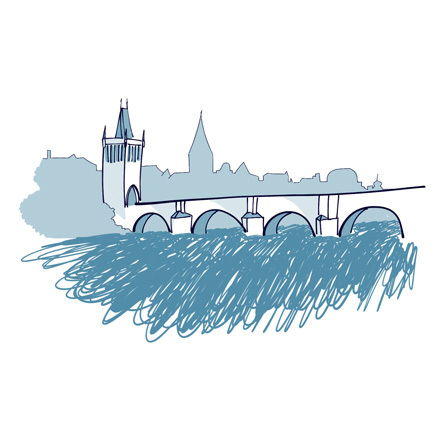
Connecting the Old Town to the Malá Strana district, Charles Bridge is undoubtedly the star of Prague. Converted into a pedestrian-only bridge in 1974, this giant structure stretches over 500 meters long and 10 meters wide

Slightly resembling the Berlin Wall, this is the John Lennon Wall, —still standing, — and is a must-see part of Prague. Neither an official monument nor a designated memorial, its origins are far from random. Beneath the layers of graffiti
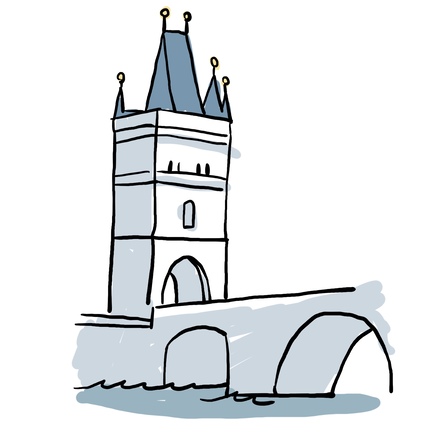
You may think that we've already shown you this tower... Well, you’re not entirely wrong. At the other end of Charles Bridge, on the Old Town side, stands a similar structure. But similar doesn’t mean identical. The tower before you is
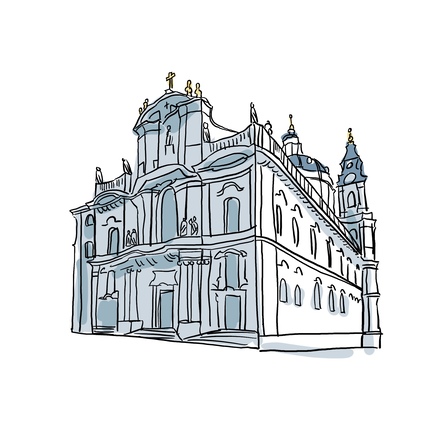
St. Nicholas Church is an artistic masterpiece that rises above the rooftops. There is also a church of the same name in Old Town, so try not to get confused between the two! Before its construction, a Gothic parish church stood here.

More than just a mode of transport, the Petřín funicular represents a chapter of history. It first opened in 1891, powered by a water traction system. Then the technology advancements of the 1930s meant that electricity modernised the
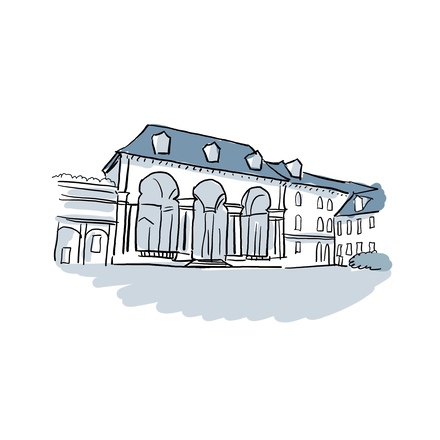
Prague is a city full of grandeur, best shown by its architecture. The Wallenstein Palace is one of the most significant pieces of Baroque architecture in the Czech Republic. It was built between 1623 and 1630 by Albrecht von Wallenstein

Three-piece suit, bowler hat, chubby figure, cigar in hand, and fingers spread in a V-shape for victory—this is how most of us imagine Winston Churchill. Well, except for František Bělský, the Czech sculptor behind this bronze bust.

It takes some walking to reach Prague Castle, perched high above the Malá Strana district. If you're listening to this part of the audio-guide, it means you've made it to the top of the seemingly endless stairs. And as you can see
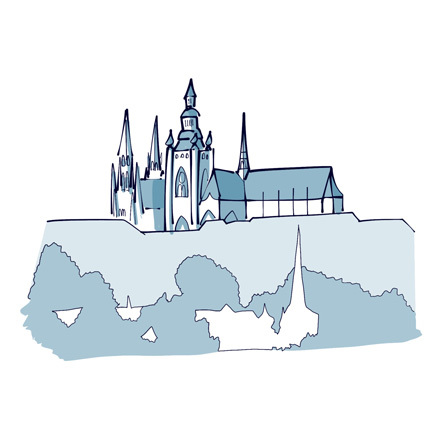
When you hear the word "castle," you probably picture a medieval fortress, protected by ramparts, high on a hill. Well, the Czech capital will change your mind ! Prague Castle is truly one-of-a-kind. Covering an immense area of 7.30

Welcome to St. Vitus Cathedral, a spiritual symbol of the Czech Republic. Known as the largest religious building in the country, its construction was an immense, seemingly endless project. It all began in the 10th century when Saint
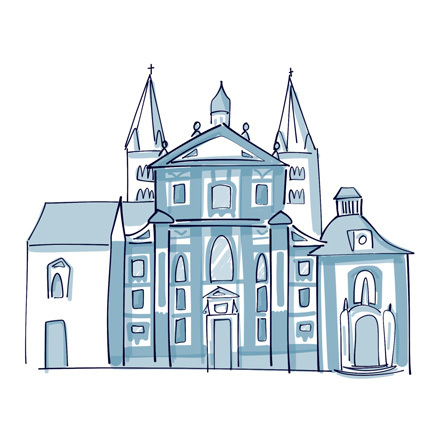
You don't come across religious buildings as colourful as this one very often! Saint George’s Basilica, founded in 920, is one of the oldest preserved places of worship in Prague. The exterior blends Romanesque and Baroque styles.
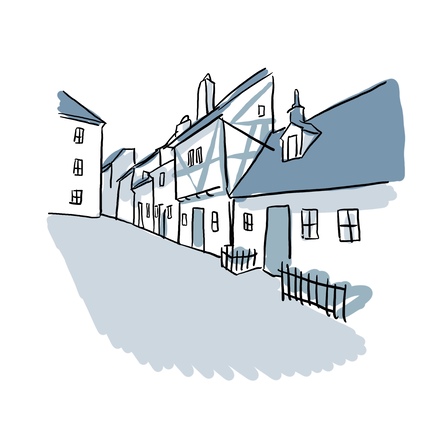
Stopping by the legendary Golden Lane is a rite of passage for any tourist in Prague. However, to walk through it, you’ll need to head to Zlatá ulička street a little further along and buy either an individual or group pass that includes a visit
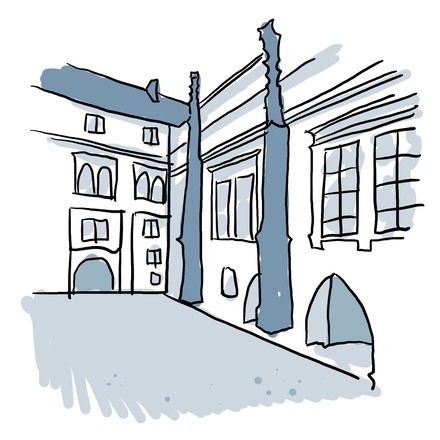
A cathedral, a basilica, a few residences... doesn’t it feel like there’s something missing from your Prague Castle tour? Something very important... a seat of power, in fact. That’s why we’re showing you this building, the Old Royal Palace.
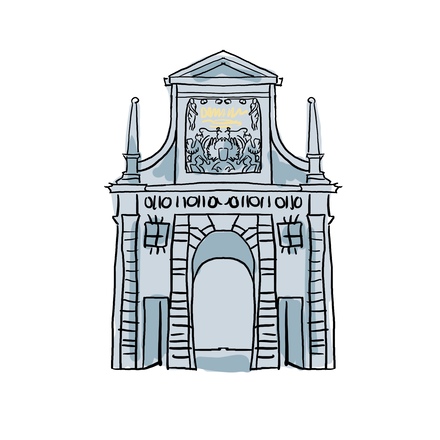
If you see visitors with their heads tilted back, and cameras in their hands, try following their gaze. They're pointing you towards one of the must-see attractions on our tour. Connecting the first and second courtyards of Prague Castle

Schwarzenberg Palace is just as fascinating as Prague Castle, and the two are very close to one another. At first glance, its structure stands out, and it looks even more striking at the foot of the building. This grand residence perfectly reflects
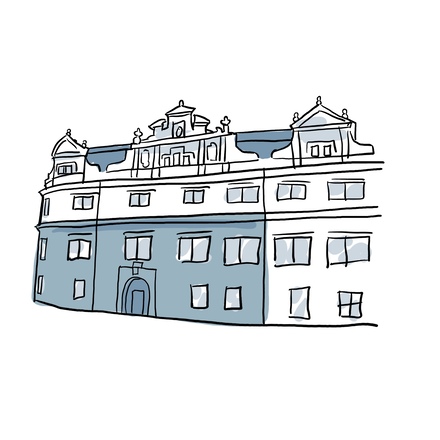
You may have noticed that Prague is a city full of palaces. It's like the most important and wealthiest citizens all agreed to settle in Prague, and everyone wanted to have the most beautiful property in the neighbourhood.
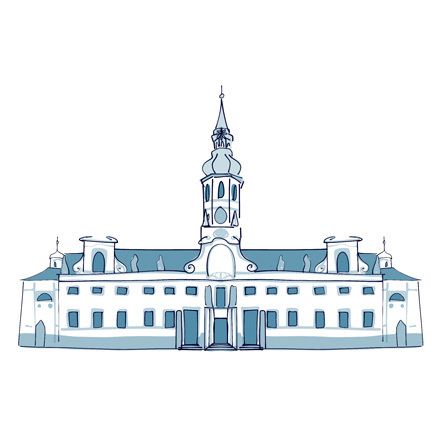
An important pilgrimage site in the Czech Republic, the Sanctuary of Our Lady of Loreto is a beautiful white Baroque building. Inaugurated in 1626 and blessed five years later, this religious site houses one of the many European replicas of
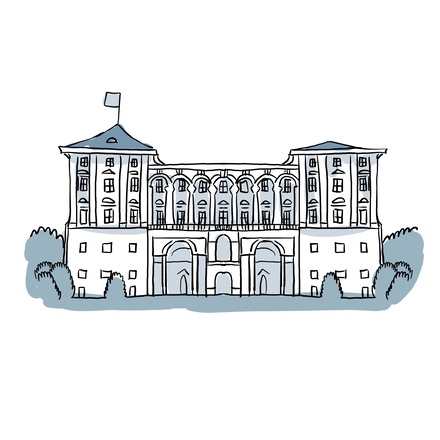
Czernin Palace is quite the beautiful sight. Built between the late 17th century and the Baroque era, it's renowned for having the most monumental façade in Prague. But beyond its imposing architecture, the building stands out for its
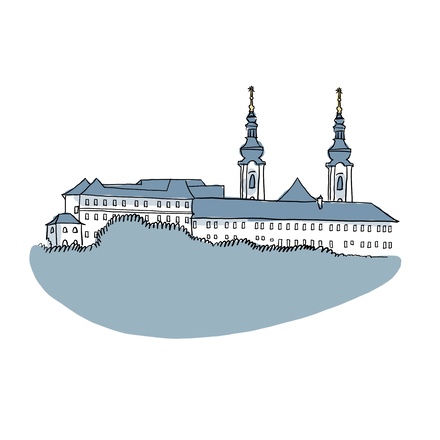
The Strahov Monastery has stood on this small square since 1140. It was founded by the Premonstratensians, a Catholic order of canons established over 900 years ago. In Czech, “Strahov” comes from the word strážit, meaning to guard.

When we're on holiday, we all look for the same things: less stress, less fatigue, and more time to recharge and do what we love. A trip to a capital city may not be our first thought. However, Prague is certainly a capital that checks all of our

After some walking, you’ve made it to the Petřín Tower. It really does look like a miniature Eiffel Tower has taken a trip to Prague. Let us tell you exactly why this small replica is here... In 1889, the Eiffel Tower was unveiled at the World’s
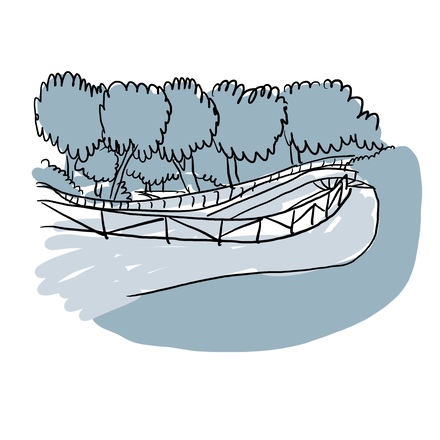
Just 327 meters above sea level, Petřín Hill still manages to dominate the landscape. Covering 78 hectares, part of it is bordered by the "Hunger Wall." This fortification was built by King Charles IV to protect the Malá Strana district.
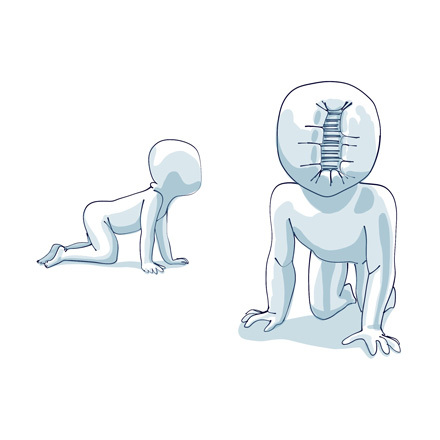
Housed in the former Sova water mills, the Museum Kampa is both elegant and simple. Opened in 2003, this museum has been managed by the Mládek couple for years. Driven by their commitment and passion for art, the couple has
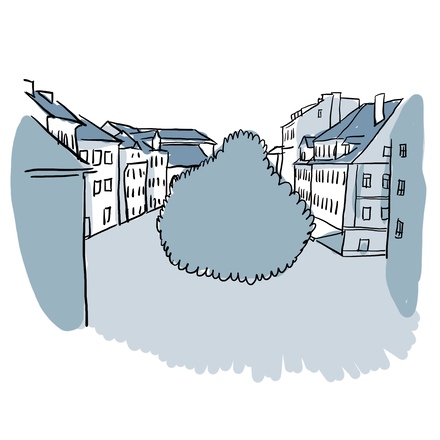
You may not know this, but the Czech capital is home to nearly a dozen islands. In the heart of the city center is the largest and most famous of them all: the picturesque Kampa. While the earliest known mention of this island dates back to
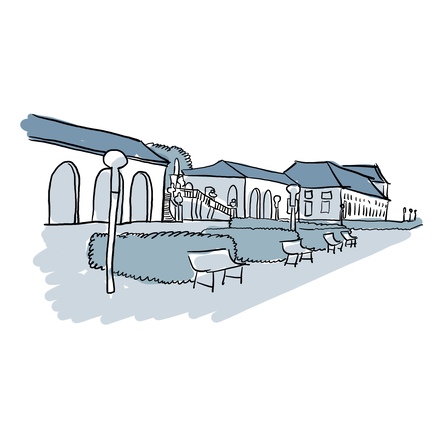
This square is at the heart of Malá Strana, one of Prague’s oldest districts. Founded in 1257, it was spared from the radical upheavals and destructive wars of the 19th and 20th centuries. Malá Strana feels like a secluded village, untouched

Historical, legendary, romantic... Prague can be a thousand things at once. Visitors are in constant awe of its huge artistic treasures and beautiful architecture. You might want to pay extra attention as you stroll through the Czech capital.
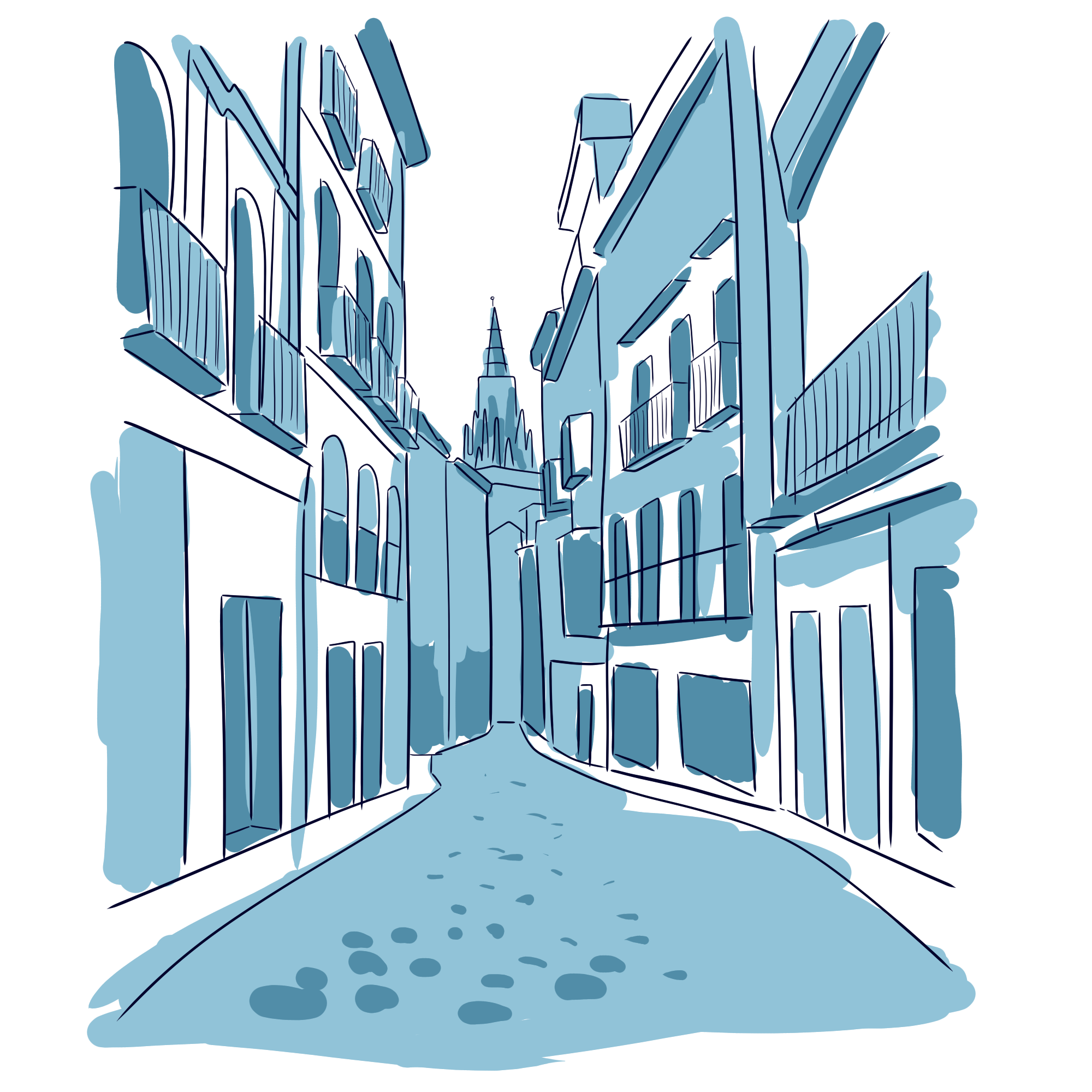
You're now walking along Calle Comercio. With a name like that, and the sheer number of stores lining the street, it’s clear you’ve reached Toledo’s most commercial street. Among major fashion brands, you’ll also find
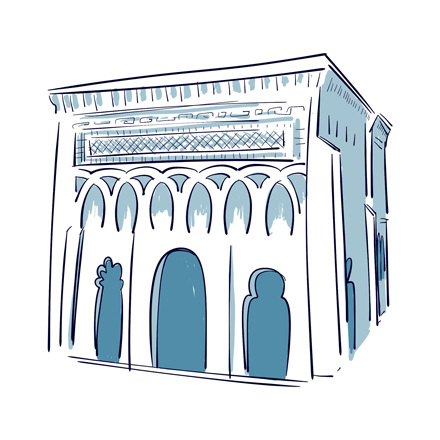
At the bottom of the street of the Discalced Carmelites, you’ll come face to face with the small Cristo de la Luz mosque. Churches, synagogues, mosques—you now understand why Toledo, just like Córdoba, is nicknamed
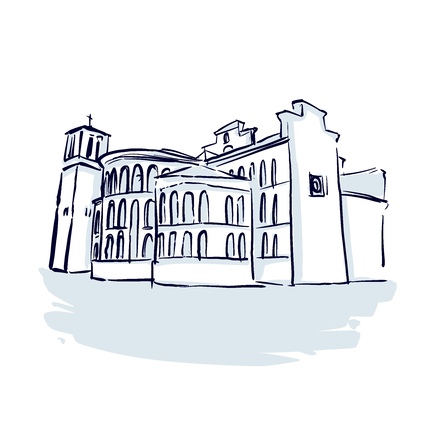
Yes, another church, sorry! As you’ve probably noticed, there’s lots of them in Toledo. This one is called Iglesia de Santiago del Arrabal, also known as Saint James of the Suburbs. Like many of its counterparts, it’s
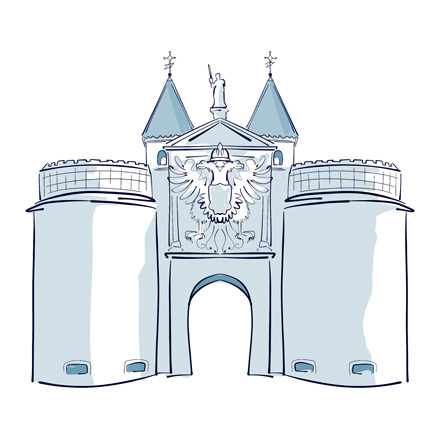
Toledo still bears the lasting marks of its defensive past. A city so fiercely coveted had no choice but to defend itself—and the medieval walls still standing today are proof of that, especially with gates as monumental as
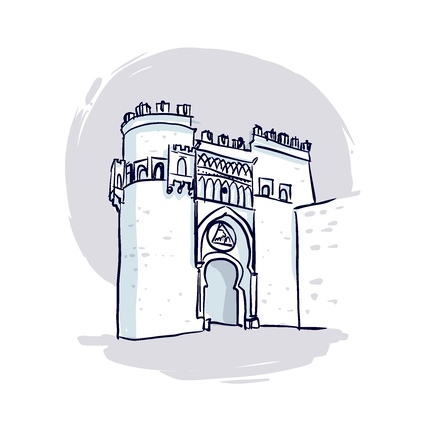
You’re standing before another monumental city gate. Obviously, when a city is surrounded by fortified walls, it needs multiple doorways—otherwise things can get quite complicated. These ramparts evolved throughout

Alright, I’ll admit that it’s a bit of a climb, but what a view! The Paseo del Mirador was specially built above the Conference Palace to offer visitors stunning panoramic views over the surrounding landscape. It’s the perfect

You’re standing at the foot of the city, in front of the beautiful Alcántara Gate. Built in the 10th century during the time of the Umayyads, it’s one of the last remaining traces of their presence in Toledo—along with the Bab

The Alcántara Bridge also offers a lovely view on the Castle of San Servando, which rises on the opposite bank. Originally built on the ruins of an Arab fortress, it was initially intended to serve as a monastery dedicated to

As you arrive on Zocodover Square, you’ll quickly realize you've reached the very heart of Toledo—the historic and social nerve center of the city, where life has pulsed for centuries. Part of the square dates back to the 16th
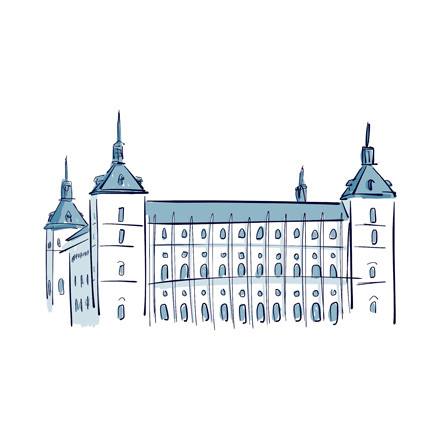
A massive fortification towering over the city, with its four pointed towers—this is the famous Alcázar of Toledo. The name Alcázar comes from Arabic, and means “fortified palace.” You might be familiar with the

You’ve probably spotted it from afar. It surrounds the city with its green waters. Yes, here’s the star of the region, the Tagus River ! The longest of the Iberian Peninsula, it spans from Spain down to Portugal, before pouring into

We’re passing by the Church of Santos Justo y Pastor, where one of Toledo’s most famous legends was born. Plus, since we’re in the city that forges the finest blades in the world, why not share a little swashbuckling
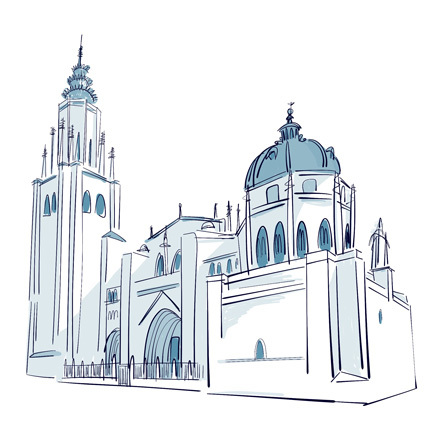
Here you are in the heart of Toledo, standing on the Ayuntamiento Square, which means the City Hall Square. On the one side, as the name suggests, you’ll find the city’s town hall, and on the other, the magnificent

You're now passing by the El Greco House-Museum. Although the famous painter didn’t actually live in this house—though his real residence is nearby—this historical building is home to many of his artworks painted

Crossing this charming, flower-filled park offers you a spectacular view of the river and the Toledo hills. You’ll also find a commemorative monument to El Greco. From up here, you can see that the city is surrounded by the
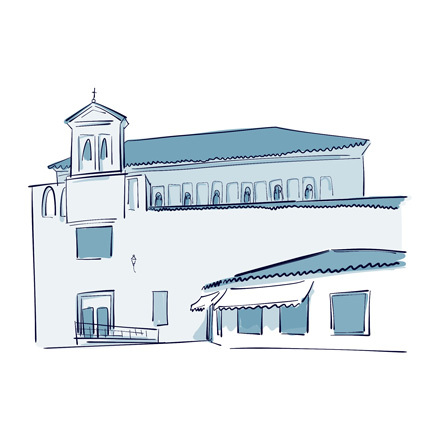
Exiting the gardens, you’re greeted by the lovely façade belonging to the Synagogue of El Tránsito. Do not be fooled by its simplicity—its interior is a striking contrast: richly adorned with intricately carved mudéjar
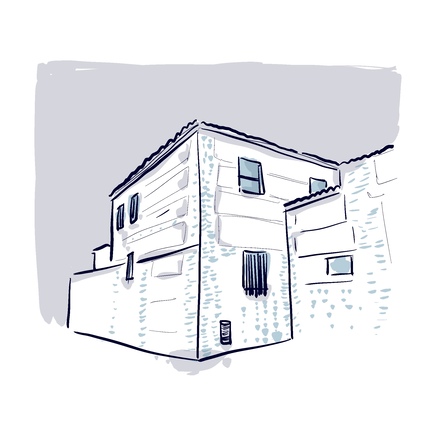
Still within Toledo’s former judería, you now stand before the Synagogue of Santa María la Blanca—one of the oldest synagogues in Spain. It was built in 1180 by mudéjar craftsmen, who were in fact Muslims remaining in
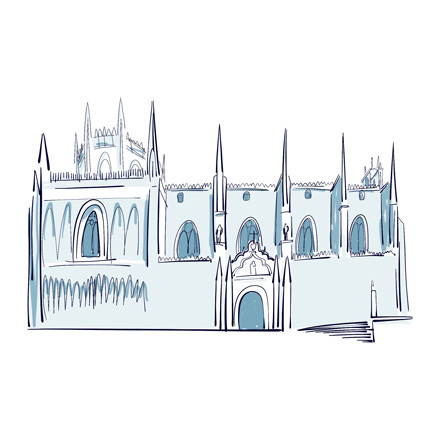
As you arrive in front of the imposing façade of the Monastery of San Juan de los Reyes, you immediately catch on that this place means business! Even though the exterior doesn’t reveal much, you can tell the

Just a quick word about the Cambron Gate, which you can see on your left. It’s one of the oldest in the city, most likely dating back to the time of the Visigothic wall. It was rebuilt in the 1570s in a Renaissance style, and is now

You’ve arrived at Cardinal Silíceo Square, facing the stunning Royal College of Noble Maids—and you’re in for some luck: it was recently renovated and is once again open to public. If you’ve opted for Toledo’s tourist

You’ve arrived in front of the San Román Church, arguably one of the most striking examples of Mudéjar architecture in Spain. Walls here are adorned with magnificent 13th-century Romanesque frescoes, painted in

Another church, another style. Welcome to the baroque Jesuit church of San Ildefonso. At the top, nestled in the niche between the two towers, you can spot a statue of Saint Ignatius of Loyola, founder of the Jesuit
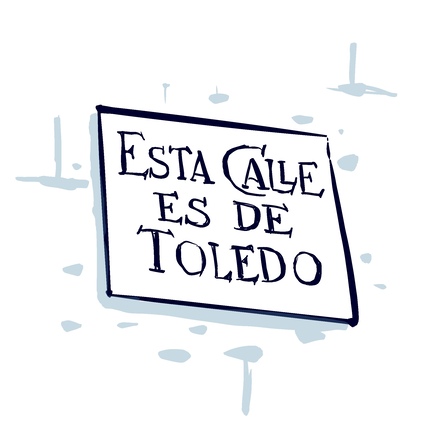
Arriving in front of the San Vicente Church, take a moment to notice the small alley on the left. See how it’s blocked by gates? That’s what’s known in Toledo as a calle robada, meaning “stolen street.” As you walk
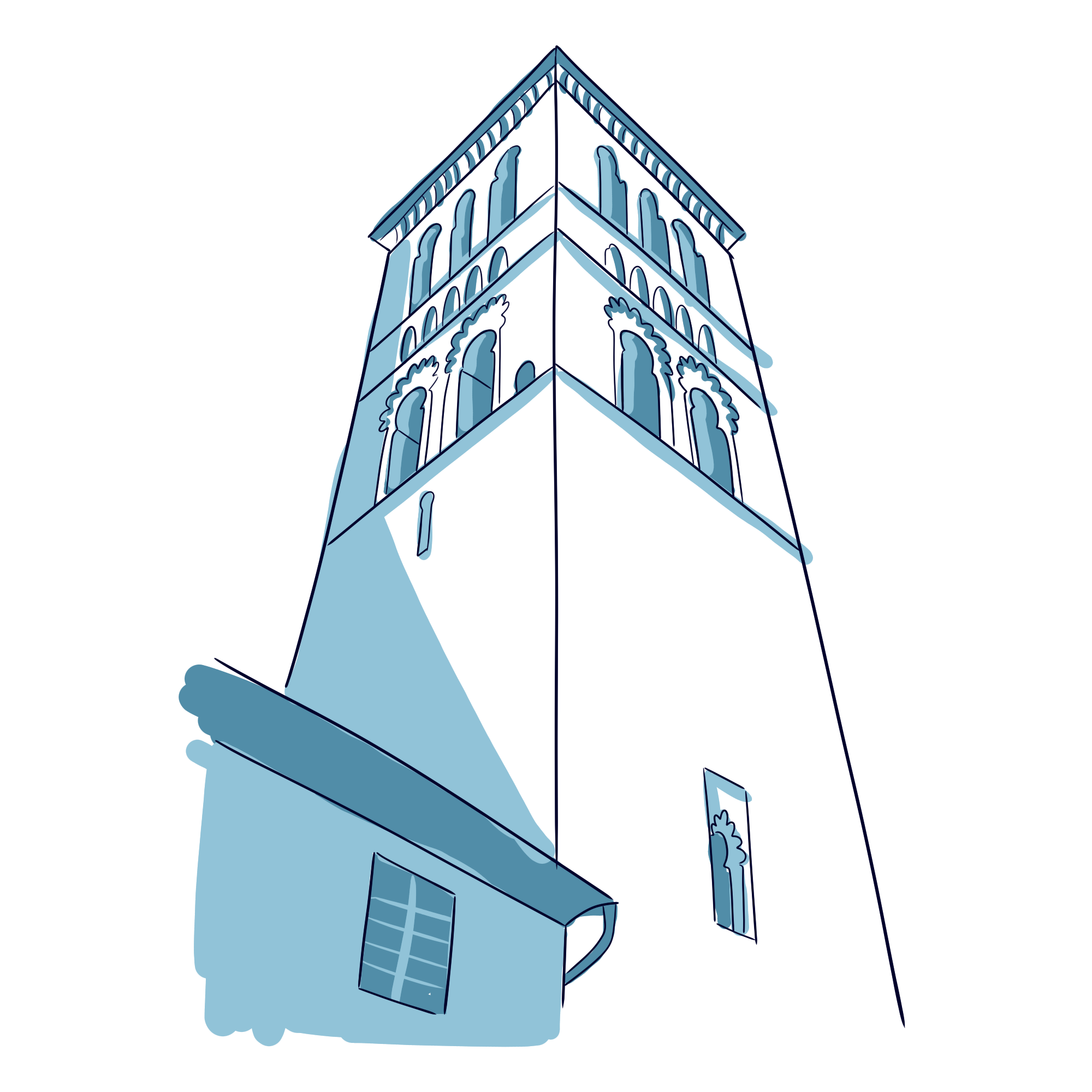
Look up at the tall bell tower rising before you—it's one of the finest examples of Mudéjar art in Toledo. If you're unfamiliar with the term Mudéjar, get ready to hear a lot of it during your visit! It’s a style you’d find

The staircase before you leads to the gateway to Roanne's history. Unfortunately, you can only climb them on European Heritage Days, which is the only time they are open to the public. Preserved underground at the bottom of these steps
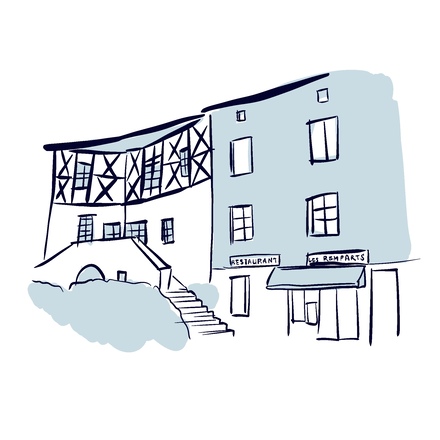
On your right, you'll find a charming medieval house that stands out in this square thanks to its outstanding timber-framed walls. It's known as the Ramparts Mansion, a nickname inspired by its unusual shape, which once followed the curve of the fortified wall.
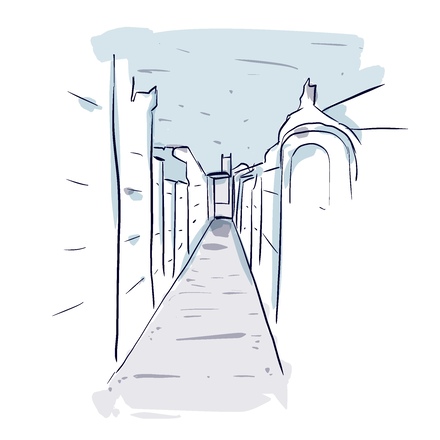
Shopaholics, unite! Roanne's city centre is the place to be! Here, you'll find all the most famous brands, alongside a rich historical heritage in what is now known as Charles de Gaulle Street. Along with Maréchal Foch Street a little further down,
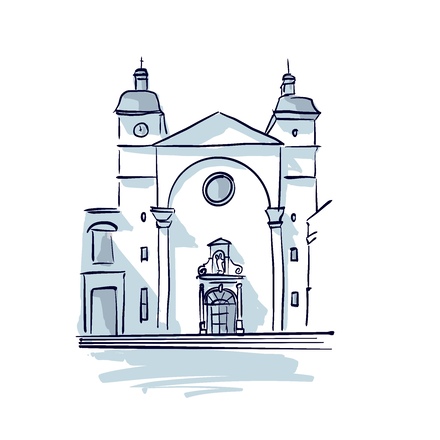
You are now standing in front of the Saint-Michel Chapel, or the Lycée Jean-Puy Chapel. It was built by Etienne Martellange and belonged to the high school founded by Pierre Coton, a Jesuit priest and confessor to Kings Henri IV and Louis XIII.
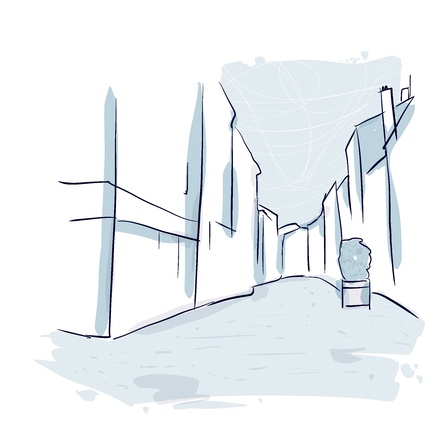
Together with Charles de Gaulle Street, Maréchal Foch Street is one of Roanne's main thoroughfares. In fact, the locals still call it Commerce Street. With its many clothing, shoe, and accessory shops, it leads straight to the Town Hall Square.
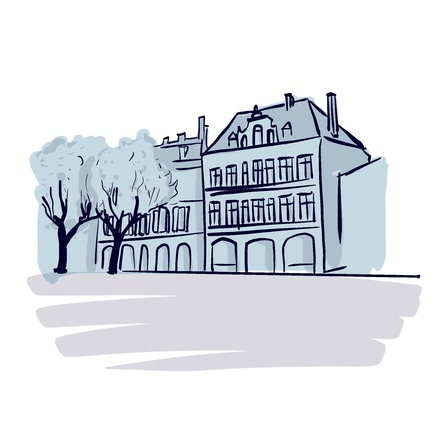
This is the heart of Roanne's city centre known as Market Square. As its name suggests, every Tuesday and Friday morning it hosts the stalls of numerous local producers who showcase all the delicious flavours the town has to offer!

Roanne's Town Hall is one of the town's most beautiful buildings. It was built on the site of a former convent which was already used as the town hall. This typical 19th-century building was completed in 1874, and features a stunning combination of different stones
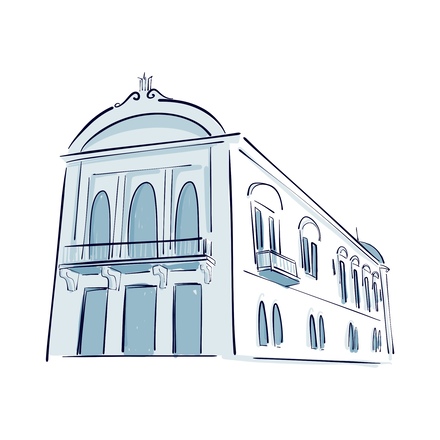
In the heart of the Town Hall Square, which hosts the annual Christmas market and music festival, you'll find a very special building: the Municipal Theatre. At the end of the 19th century, the people of Roanne petitioned for the construction
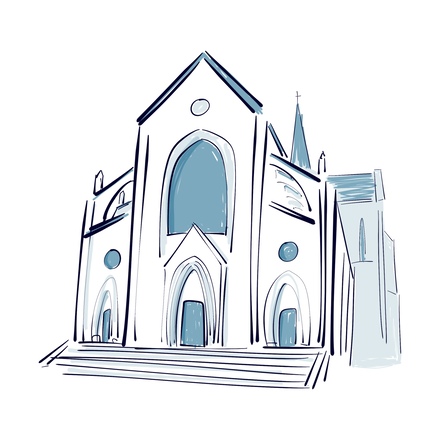
Introducing the Church of Notre Dame des Victoires, also known as Minimes Church, in reference to the former convent that stood here from 1634. In 1860, the city decided to build a church in a beautiful neo-Gothic style, based on plans by Lyon architect Desjardins.
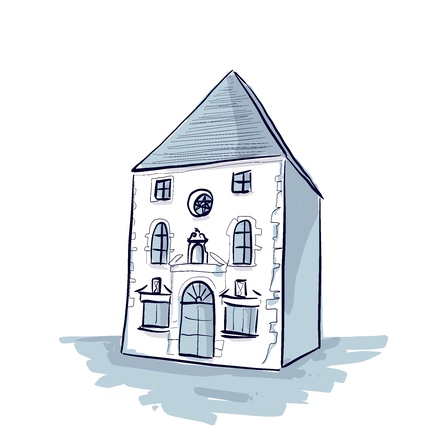
The little building standing here, as if out of nowhere, is the Saint-Nicolas-du-Port Chapel, which was built in 1630 by bargemen. At that time, the plague had just swept through the town, leaving many victims in its wake.

You're now standing on the banks of the Loire. This new space that was recently developed here is called les Bords de Loire and is divided into 2 parts: the first, on your right, is called Roanne Plage or Roanne Beach.

You have arrived at the marina, overlooking the banks of the canal. It’s one of the most popular spots in town! This 60km-long canal links Roanne to Digoin, connecting the Auvergne-Rhône-Alpes and Bourgogne-Franche-Comté regions.

While you're on your way back to Roanne's historic centre, I'd like to mention one of the things you absolutely must try during your stay here, and that's wine. The Côte Roannaise vineyards are the pride and joy of local winemakers and wine lovers alike.
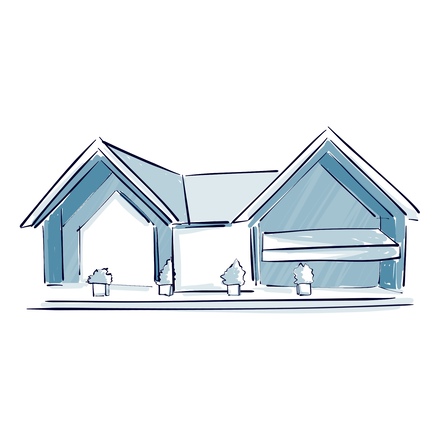
Welcome to the Diderot Covered Market, renowned for its gastronomic delights! Located in a building that opened in 1983, the Diderot covered market features the finest specialities from the town and the region. It replaced the old covered market on the Bourse du Travail Square,
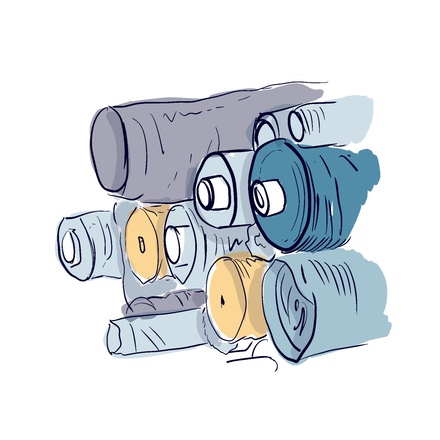
Did you know that, in the 19th century, Roanne was a major industrial town that was almost as important as Lyon? In fact, Roanne was also renowned for its textile industry, especially when the Canuts crisis broke out in Lyon.

This beautiful church is one of Roanne's historic gems. It is believed that a place of worship had already been established here in Roman times, however, the first church to be officially built here dates back to 1610, making it the oldest in Roanne.
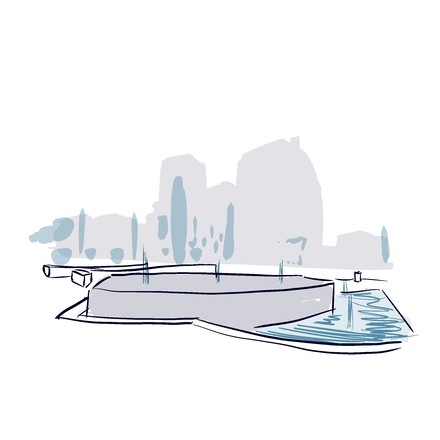
George Clémenceau square is home to 2 of Roanne's landmarks. The first is the building on the other side of the road which is the courthouse. Formerly located within the walls of a castle, in 1810 it was transferred to this building,
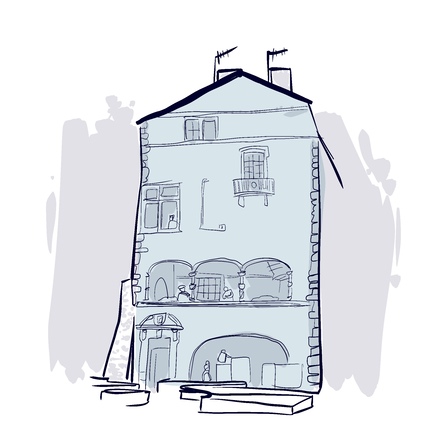
This fresco takes us straight back to medieval times. In the Middle Ages, Roanne was known by its Roman name, Rodumna. In the 11th century, its castle was built, of which all that remains today is the keep, on your left.
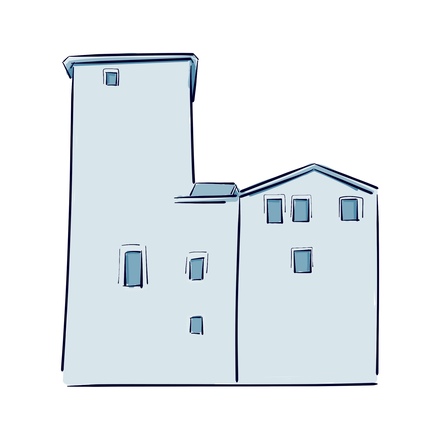
A few centuries ago, this was the site of a large fortified castle. Its construction began in the 11th century. Nowadays, all that remains is the building in front of you, which was the castle's keep. Unfortunately, it is not open to visitors.
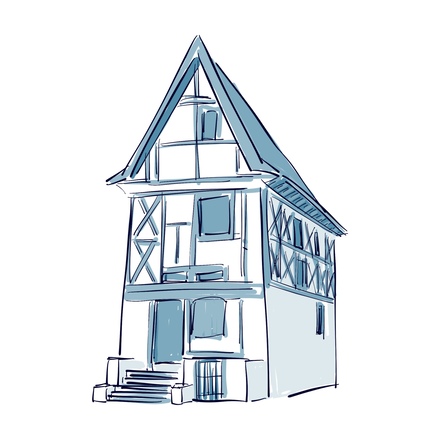
Take a look at the two houses in the middle of the square. With their magnificent timber-framed facades, these Bourbonnais houses are a true testament to Roanne's medieval past. They are remnants dating straight back to the 15th century!
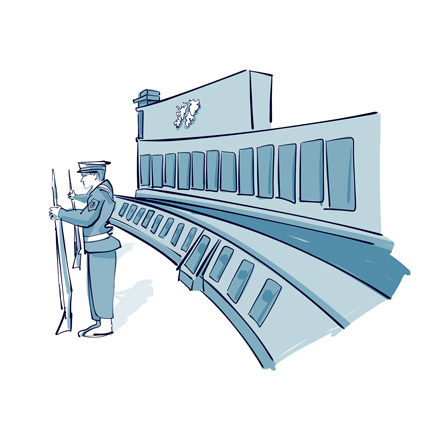
You're standing in front of a very important war memorial for Argentina, in remembrance of the 649 soldiers who were sent to their deaths by the British in the Falklands War. Their names are engraved on the stones in front of you.
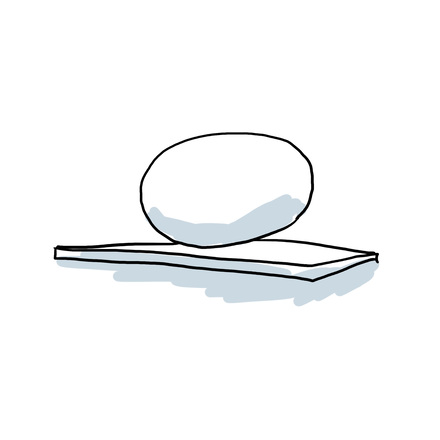
What on earth is that huge white egg doing in front of the San Martín Square? It's actually a tribute to the avant-garde Argentinian artist, Peralta Ramos. Ramos created a giant egg sculpture back in 1965, called "Nosotros Fuera", aka "We the Outsiders”.
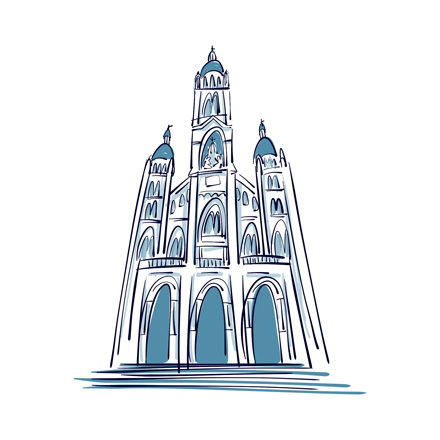
If you look to your right, you'll see the Basilica del Santisimo Sacramento peeking over the neighbouring buildings. The Basilica of the Blessed Sacrament, as it's called in English, was consecrated in 1914.
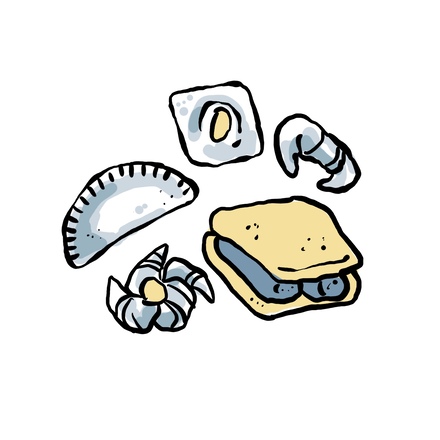
Why not take advantage of our stroll down this quiet street to talk food? Let's face it, exploring the local cuisine is half the fun of traveling. And well, you're in luck, because Buenos Aires is a foodie's paradise.
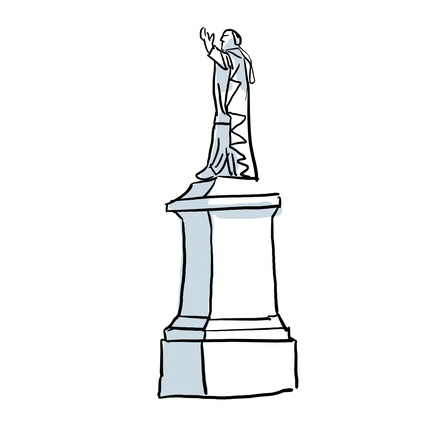
On your left, you'll find the charming Liberty Square, which is more of a garden than a square. It's a lovely spot to rest if you're in need of a break. There, you'll see the statue of Adolfo Alsina, an Argentine politician and founder of a liberal party back in 1812.

On your left, you'll see the Basilica of St Nicholas of Bari. This Catholic church was built on the site of a chapel dating back to 1733. The latter was demolished in the early 20th century to allow the widening of the Corrientes Avenue
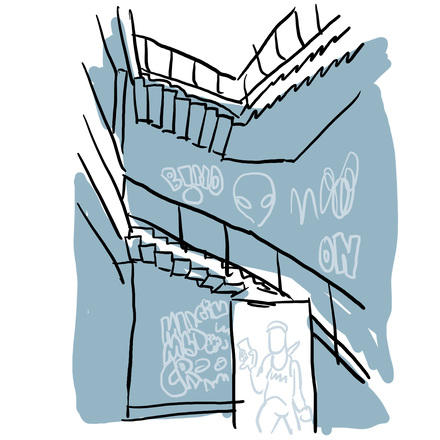
If you are a fan of alternative culture, you have to check out the Galeria Bond Street on your left. This place is a goldmine! It was built in 1963 as a high-end shopping arcade right at the heart of Barrio Norte.
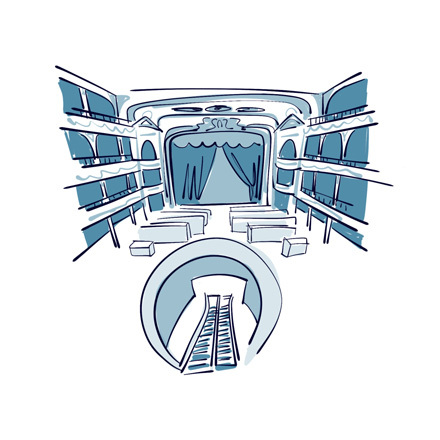
You've arrived at the incredible Ateneo bookstore. Step into this magnificent building and let yourself be whisked away on a journey to the magical world of books. The Ateneo Grand Splendid has been named “the world's most beautiful bookshop” by National Geographic
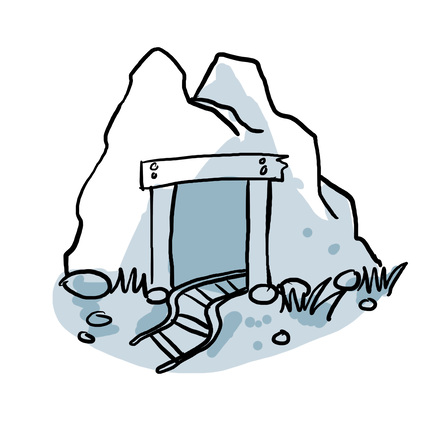
We've got about five minutes before we reach our next stop, so let me fill you in on the story of Buenos Aires and the origin of its name. You've already heard about the May Revolution, the War of Independence, the dictatorship and the domestic politics,
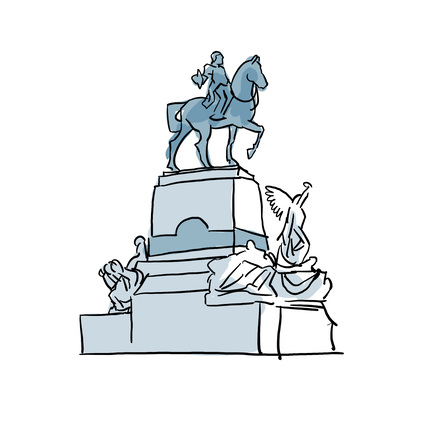
Introducing La Isla, a hidden gem in Recoleta. This green oasis was designed in 1906 by French architect Joseph-Antoine Bouvard. You see, the city wanted to create a small green space with beautiful townhouses in line with the garden city movement.
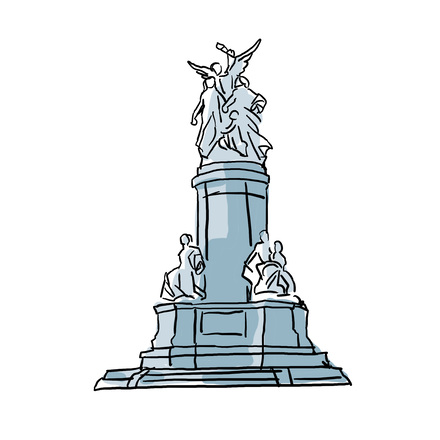
You'll quickly notice the strong ties between Argentina and France during your stay in Buenos Aires. From the Parisian-style architecture to a shared love of good wine and heated political debates, there's a real connection between the two countries.
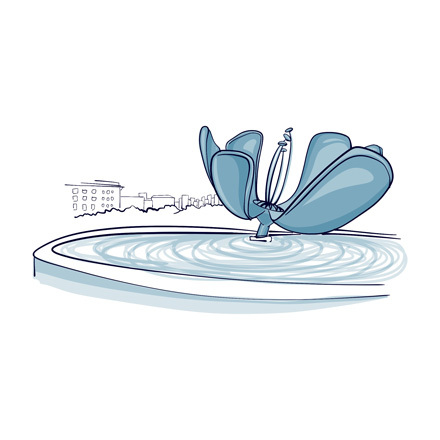
As you enter the 4-hectare Plaza de las Naciones Unidas, aka United Nations Square, you can't miss the stunning Floralis Generica, a colossal metallic flower that sits in the center of a small artificial lake.
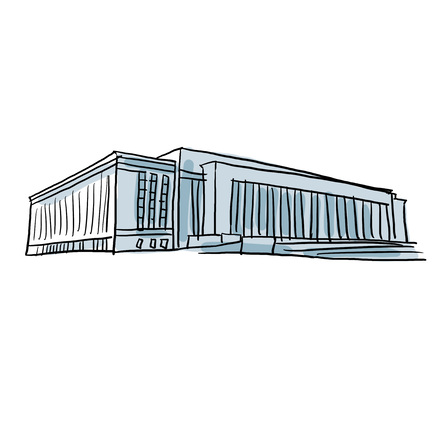
This massive building, which looks more like a courthouse, is actually the Buenos Aires Law School. It's one of thirteen faculties in the city. Argentina has one of the most advanced and progressive education systems in all of Latin America.

You're now walking on the pedestrian bridge that leads to the Faculty of Law. Behind you are the Recoleta Gardens and the imposing Law School building, near that striking metal flower sculpture in the Plaza de las Naciones Unidas.
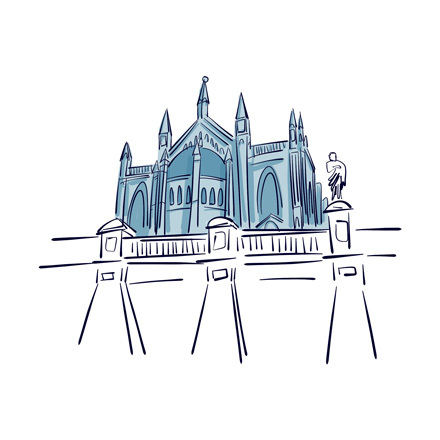
You've arrived at the entrance of the Recoleta Cultural Center. This site originally belonged to a group of buildings run by the Recollects, a Franciscan order of monks who were given this plot of land in 1716.
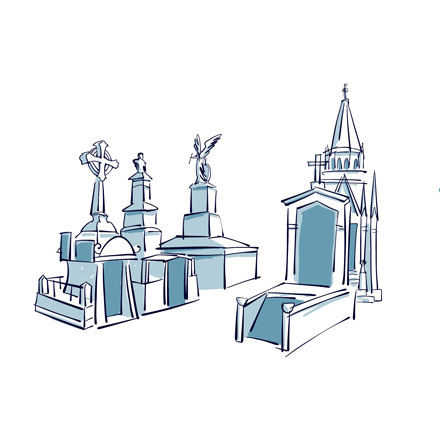
The Recoleta Cemetery is the real highlight of this neighborhood. This miniature city, a living art museum of awe-inspiring tombs, has quickly become one of the city's must-sees.
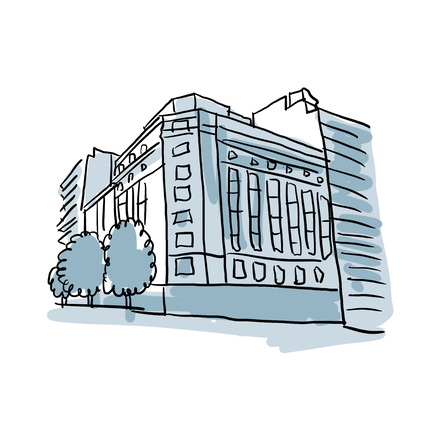
The avenue you are now walking up is arguably the most elegant in the city. It’s named after Mr Alvear, the first mayor of Buenos Aires back in 1885. It was he who gave the city its Parisian look, for he launched a number of major urban planning projects, modeled on those of Baron Haussmann.
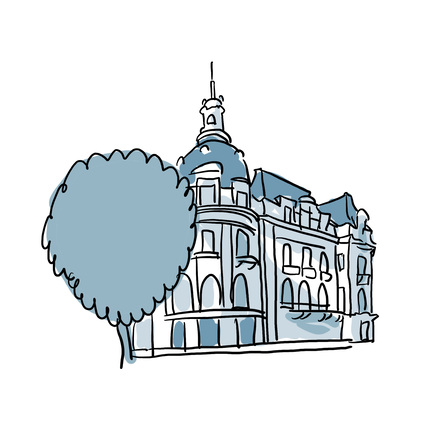
Yet another beautiful palace! That’s right, we're definitely on the w side of town, but there's still a whole other world to explore in Buenos Aires. This chic, elegant building before you is the French Embassy, housed in the former Ortiz Palace.
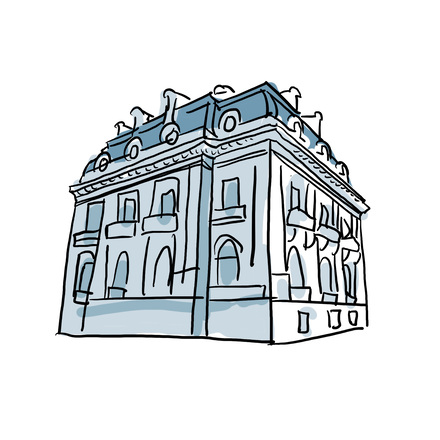
This imposing Beaux-Arts-style palace was built for Mercedes Castellanos, a local high-society lady who also funded the construction of the Basilica of the Blessed Sacrament. The building was completed in 1909 and became the property of the Argentine government
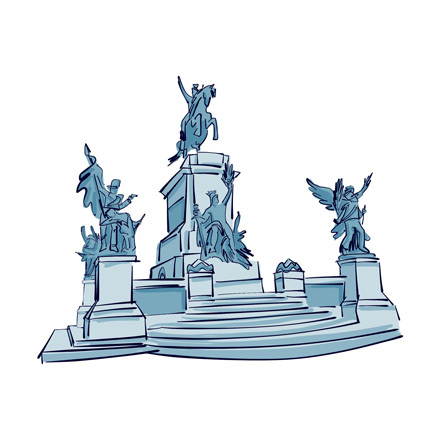
Well, we couldn't take you to the Plaza San Martín without introducing you to the famous General himself! Look at him, proudly riding his horse, with the Republic at his feet, offering him a laurel wreath. This impressive monument honoring him was the first equestrian statue in Buenos Aires.

From here, you have an unobstructed view of the area and the park of the San Martín square. The tower straight ahead is the Torre Monumental, the Monumental Tower, formerly known as the Torre de los Ingleses, the Tower of the English.
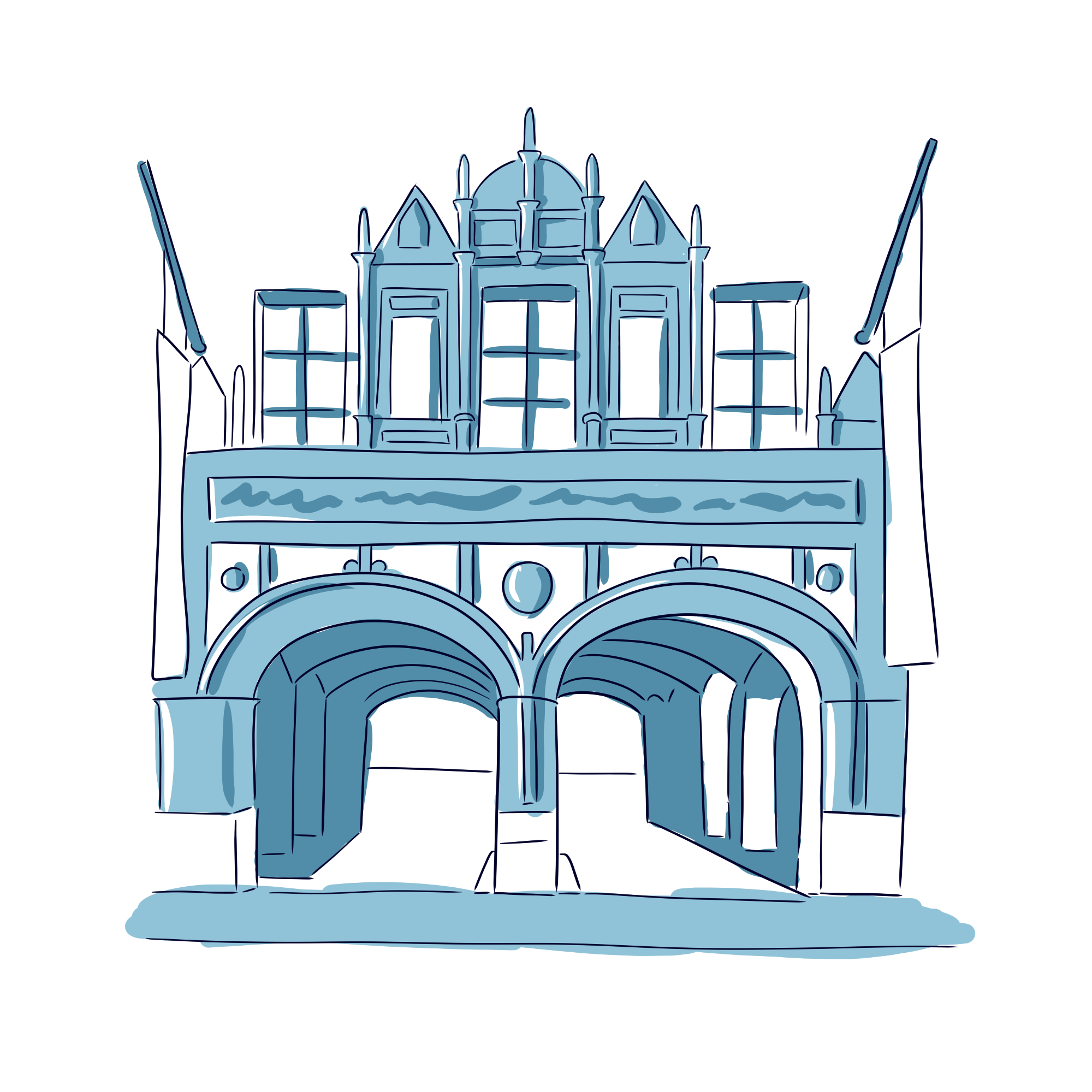
As you leave the small church park, you come face to face with an entrance porch whose decoration stands out sharply from the rest of the buildings on the street. Since we’re here to answer any questions that might cross your mind,

You are now entering the famous Hackesche Höfe, a series of interconnected courtyards, each with its own unique style. Located in the heart of one of Berlin’s liveliest neighborhoods, this is one of the city’s most popular tourist sites, waiting to be explored.
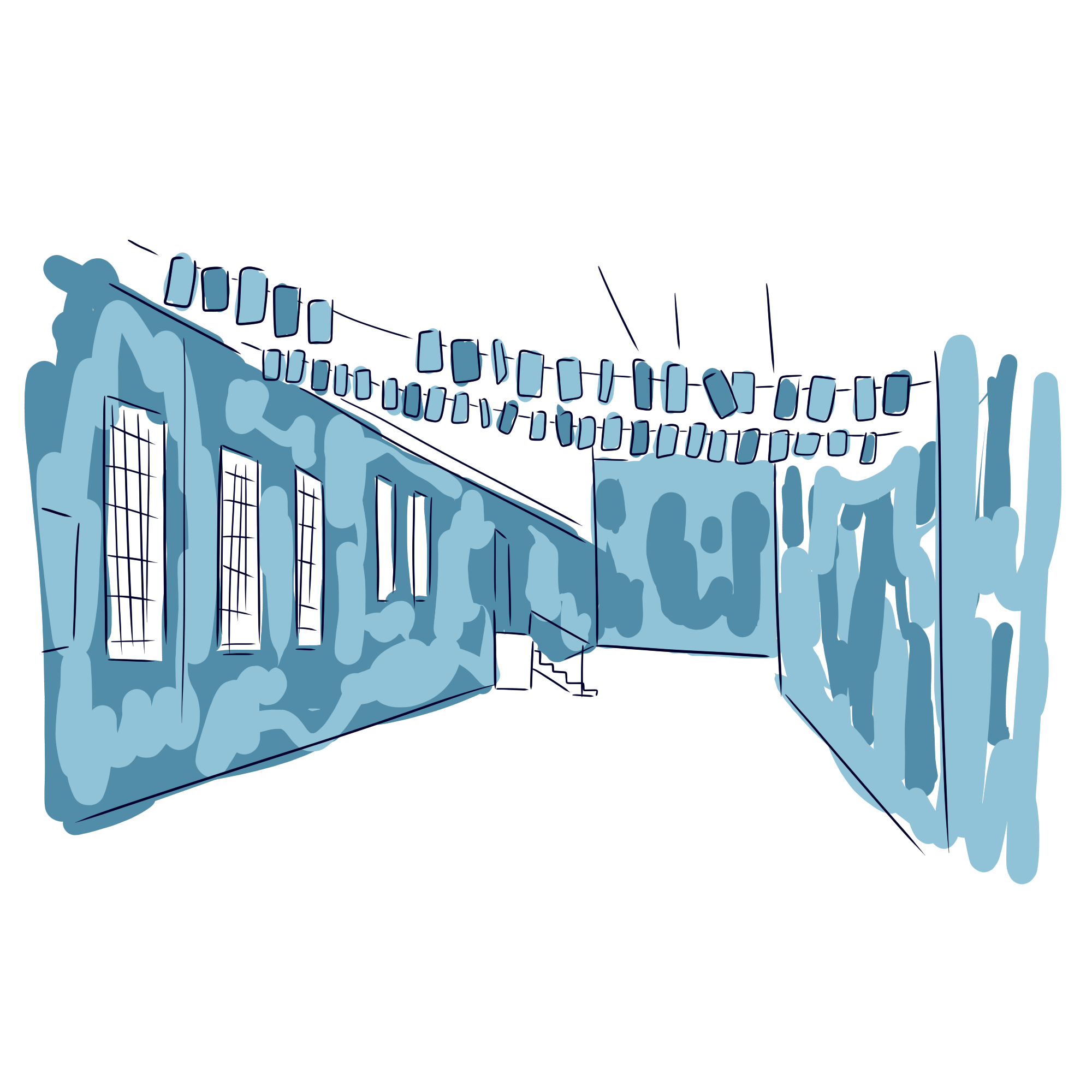
You are now stepping into Berlin’s most fascinating alleyway: the famous Haus Schwarzenberg, also known as Dead Chicken Alley. The moment you enter, you directly sense that something is different in here.
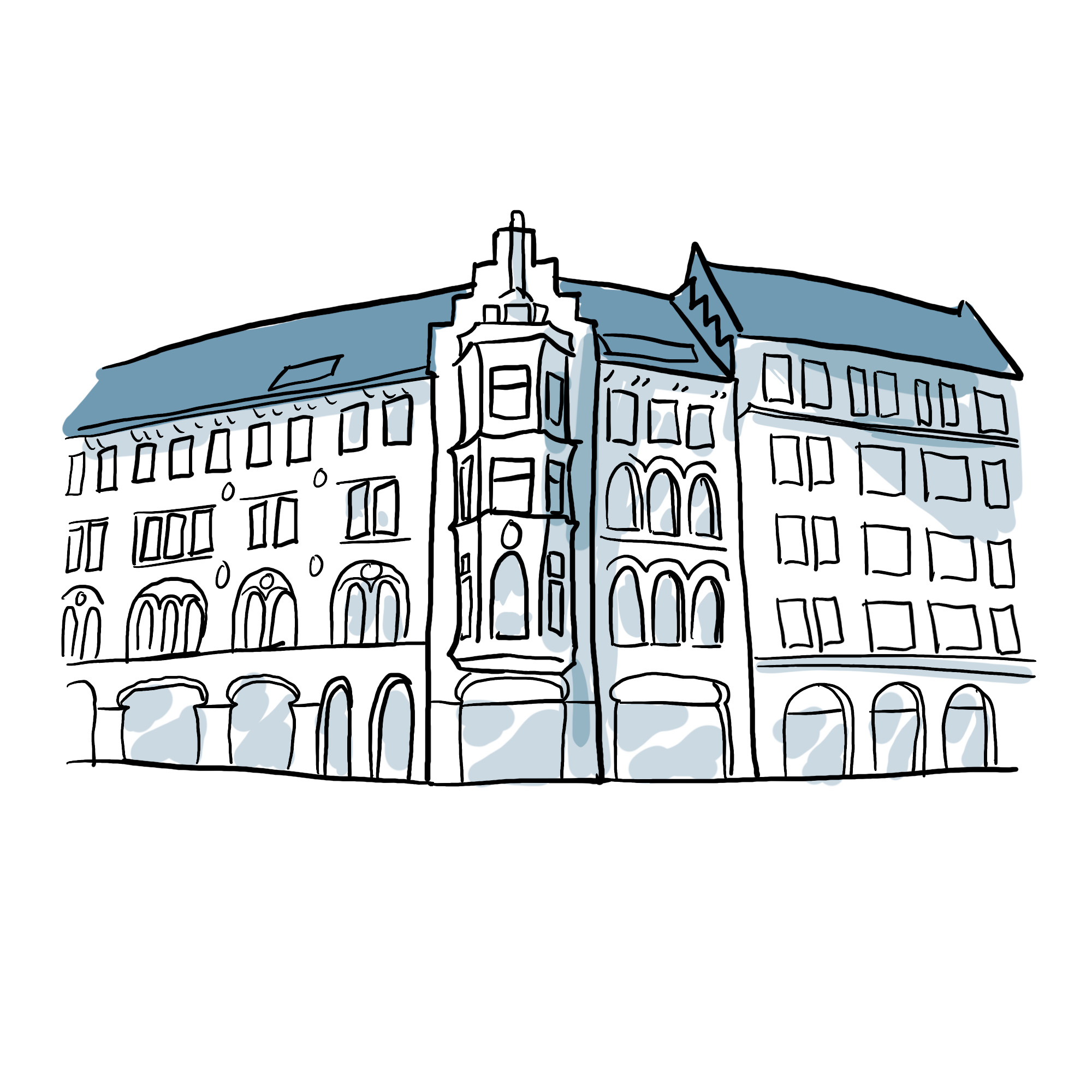
Now standing at the junction between Neue Schönhauser Strasse and Alte Schönhauser Strasse, in the Mitte district. The name Mitte means "middle" or "center," as this is indeed Berlin’s city center. This iconic street was first mentioned in the 18th century,
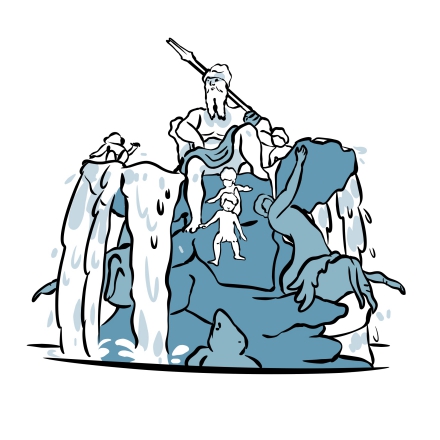
In front of you is the beautiful Neptune Fountain. A name not so surprising as you can see Neptune at its summit, who is the Roman god of freshwater and the sea. If you take a closer look,
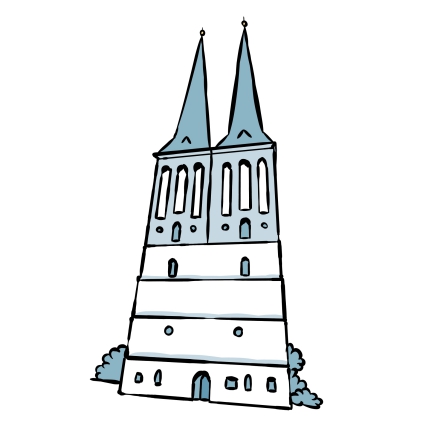
You are now in the heart of Nikolaiviertel, the oldest neighbourhood in Berlin. In front of you, the Saint Nicholas Church was founded in the 1230s, making it the oldest religious building to have survived in the capital to this day.
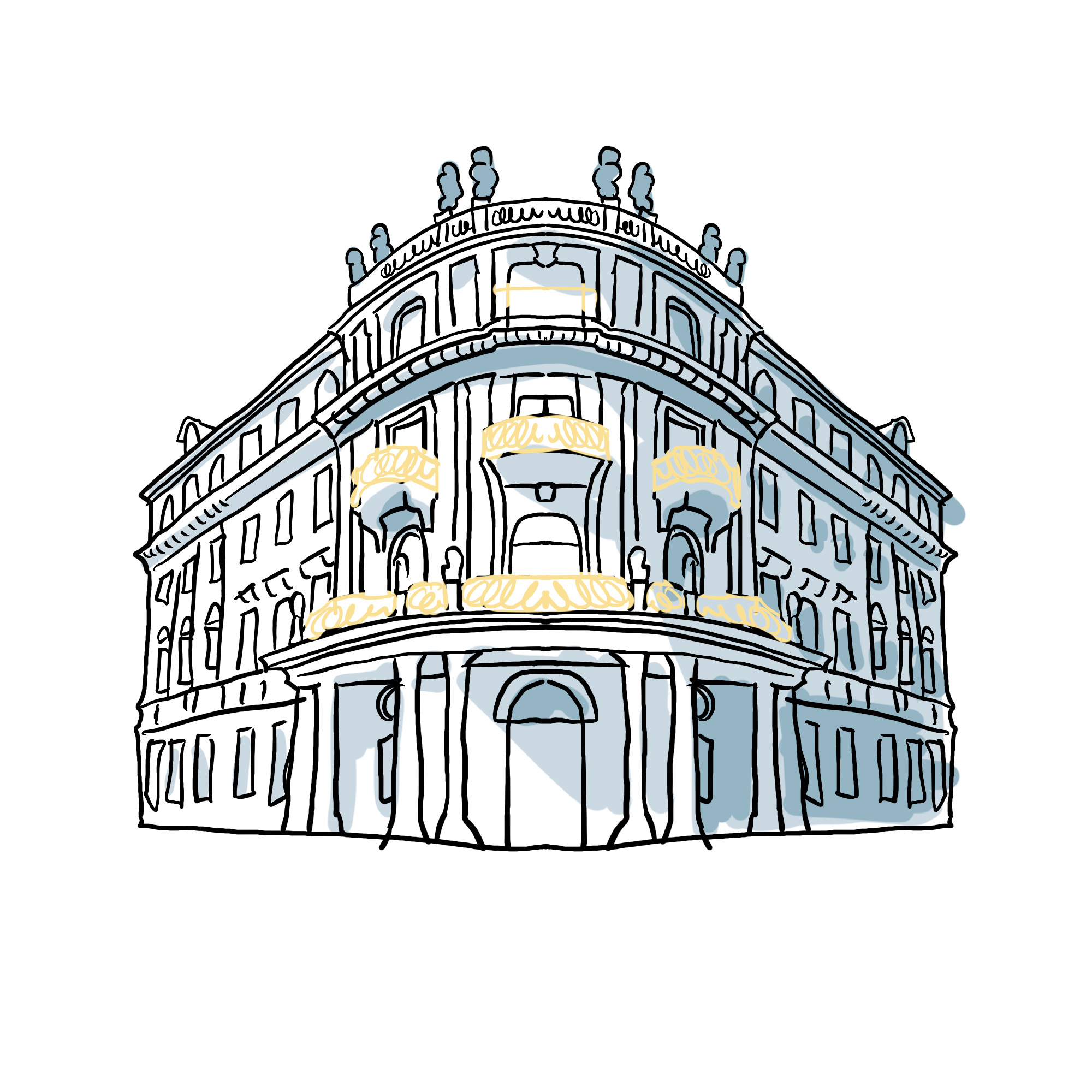
The beautiful building you see on the corner is the Ephraim Palace. Built in 1762 in a Rococo style, it is characterized by its abundant curves and decorations. Its grandeur is no coincidence as it was designed for the King of Prussia’s royal jeweler and financier!
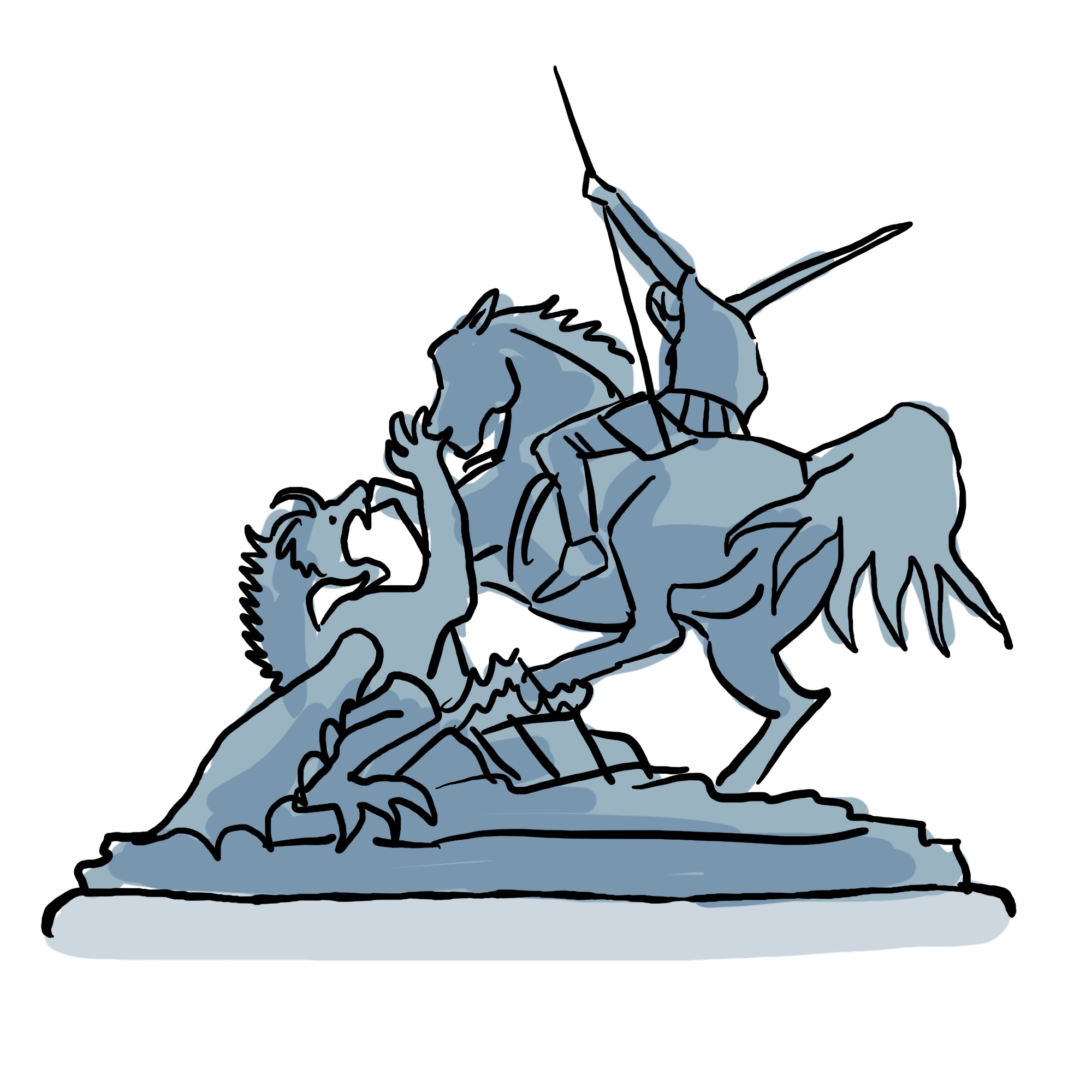
You are now passing the famous statue of Saint George slaying a dragon. There are many artistic representations of the saint battling the dragon. However, the one standing before you was created in 1855 by August Kiss for the King of Prussia at the time.

You are now walking along the Spree River, which divides the German capital into two. From here, you have a stunning view of the newly built Humboldt Forum on your left, Berlin Cathedral straight ahead, and the TV Tower on your right.
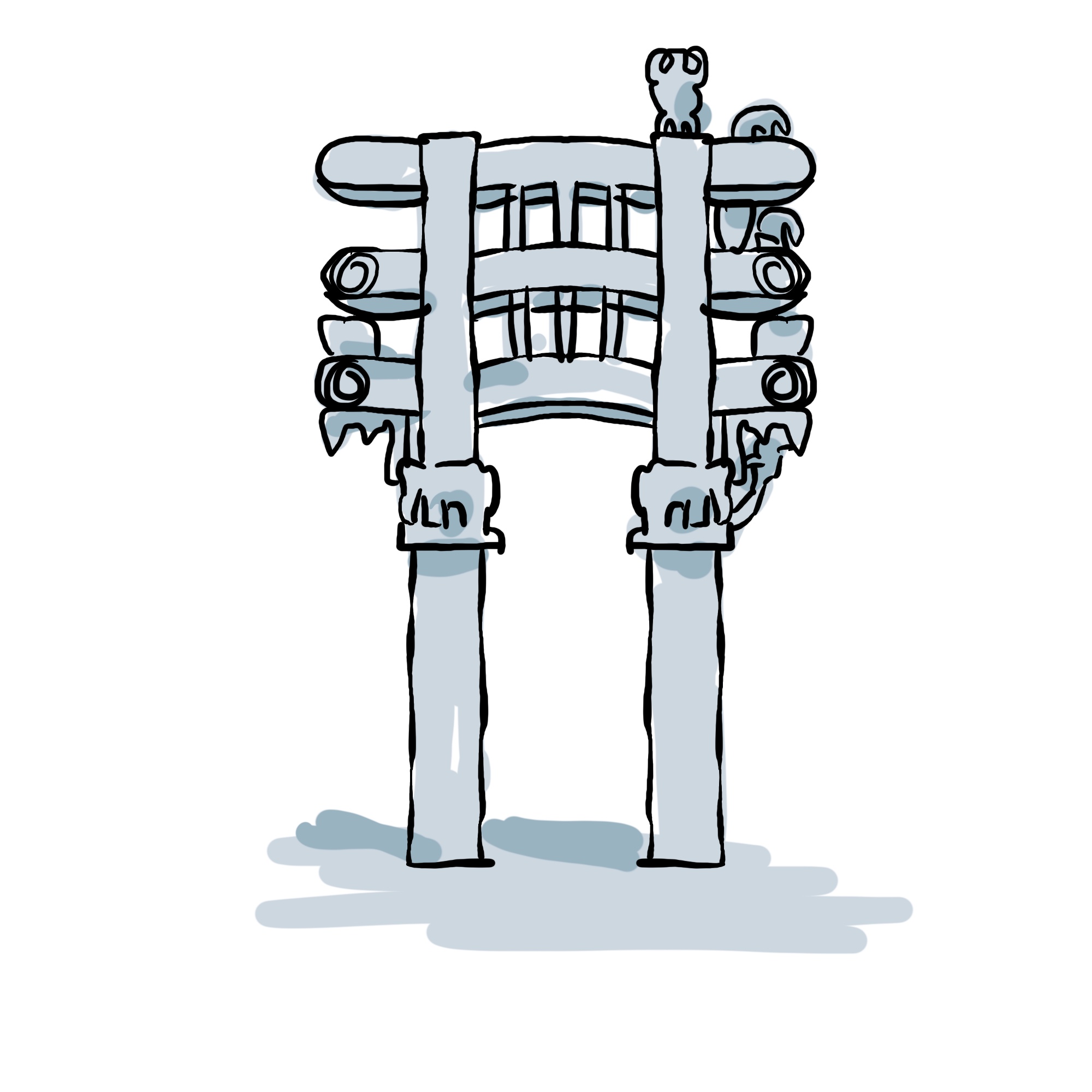
You're not dreaming, this is an Indian gate right in the heart of Berlin! What you see standing before you is an exact replica of the Sanchi Stupa Gate, one of the best-preserved Buddhist stupas in India.
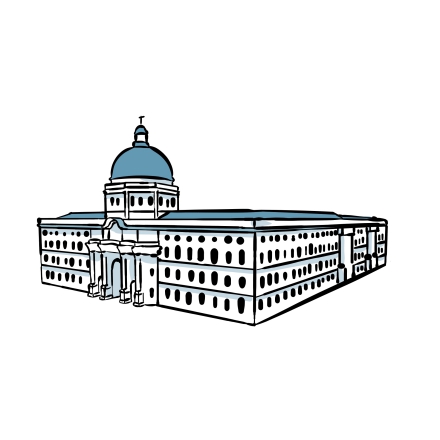
You are now standing in front of the entrance to the new Humboldt Forum. Yet, the Baroque façade before you belongs to the former Berliner Schloss, in other words Berlin Palace. The first version of this palace was built in the 15th century for Elector Frederick II.
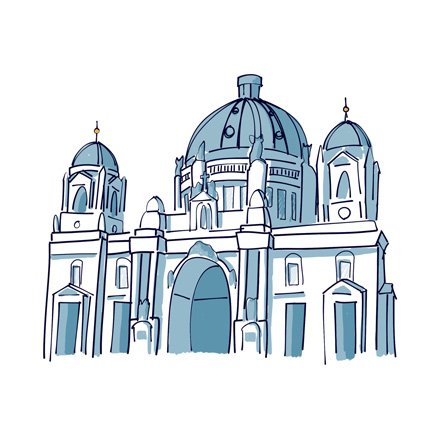
You are now standing before Berlin Cathedral! Also known as Berliner Dom, its grandeur and lavishness are no coincidence; which reflect its role as the church of the monarchy. The cathedral’s history is closely linked to the Berlin Palace,

You are now standing on the Spree Island, the birthplace of Berlin. The 13th-century Berlin was nothing more than a small village of fishermen and hunters. The island is divided into two parts. You are currently standing at the northern tip, which is what interests us the most.
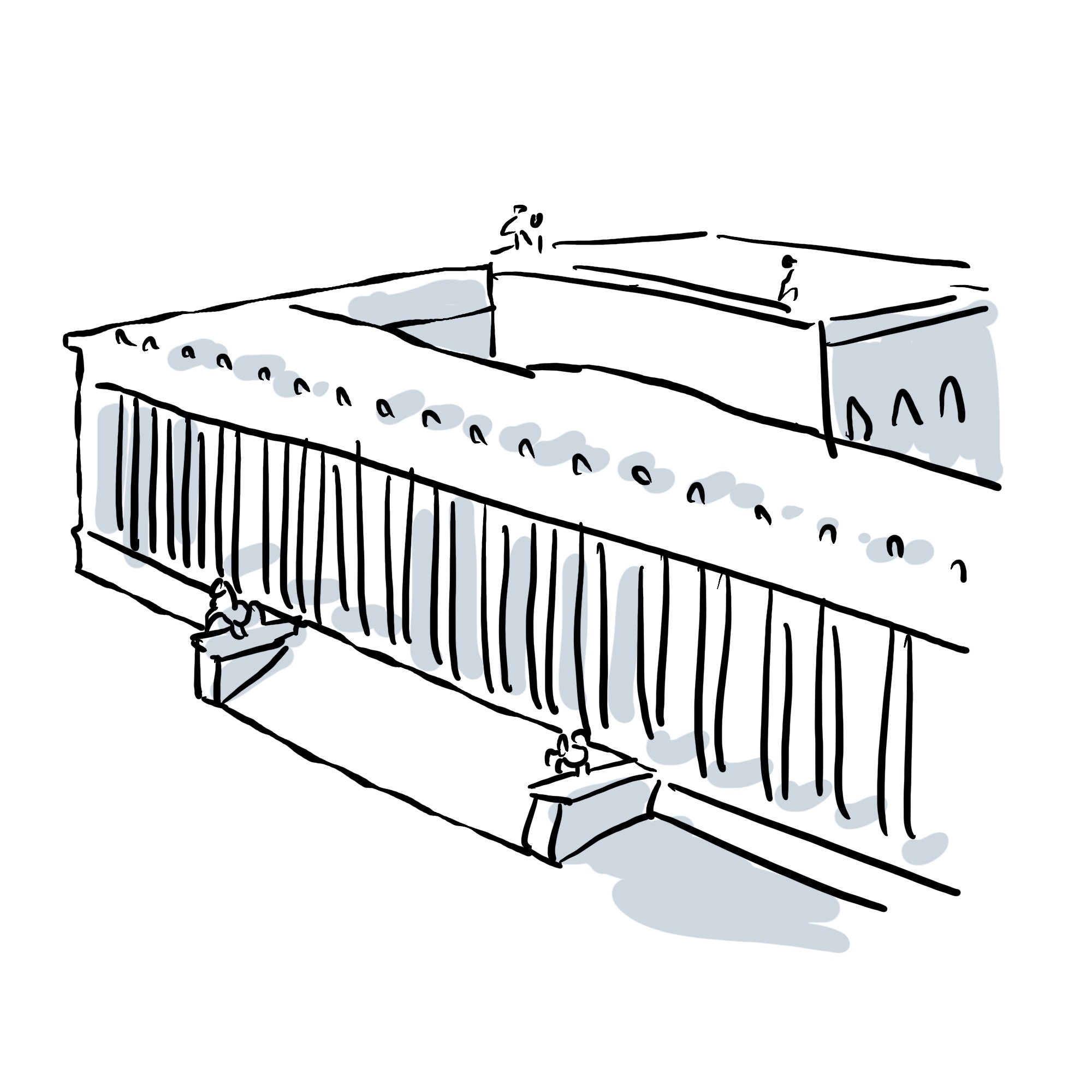
Let’s start at the very beginning with the first museum built on the island: the Altes Museum. If you’re not familiar with German, "Altes" means "Old", so this is quite literally the Old Museum.

Elevated on a pedestal like a great ancient temple, this mesmerising building is home to the Alte Nationalgalerie, meaning the Old National Gallery. Behind its rows of Greek columns lies an important collection of 19th-century paintings
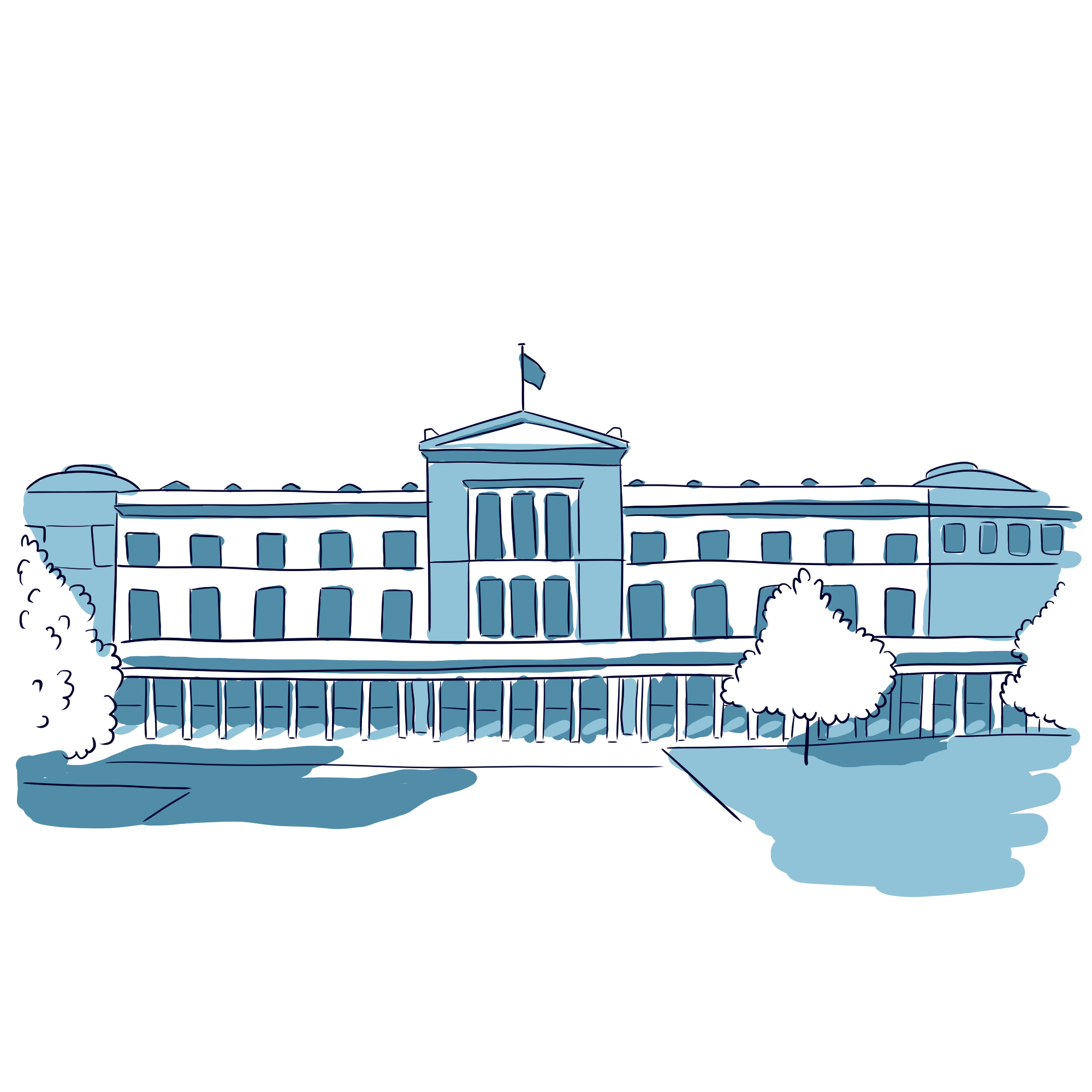
Here you are standing before the Neues Museum, meaning the New Museum. If it doesn’t seem all that new to you, that’s just because it is simply named in response to the Altes Museum, the Old Museum, next door. A few years after the island’s first museum opened,
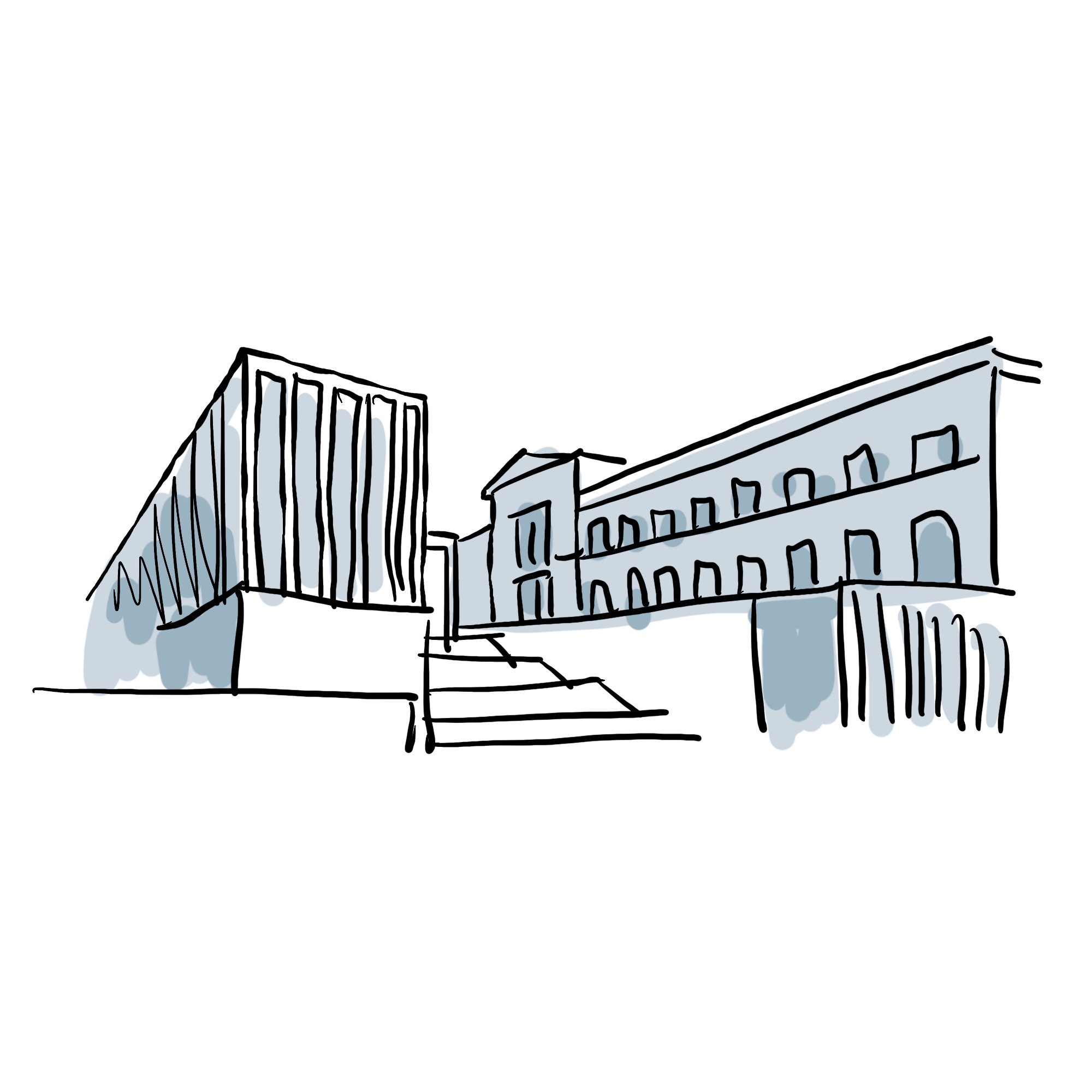
On your right, you’ll see the entrance to the James Simon Gallery. This is the new visitor center for Museum Island, designed by architect David Chipperfield with the brilliant idea of creating both a shared entrance hall and intersection between the various museums.
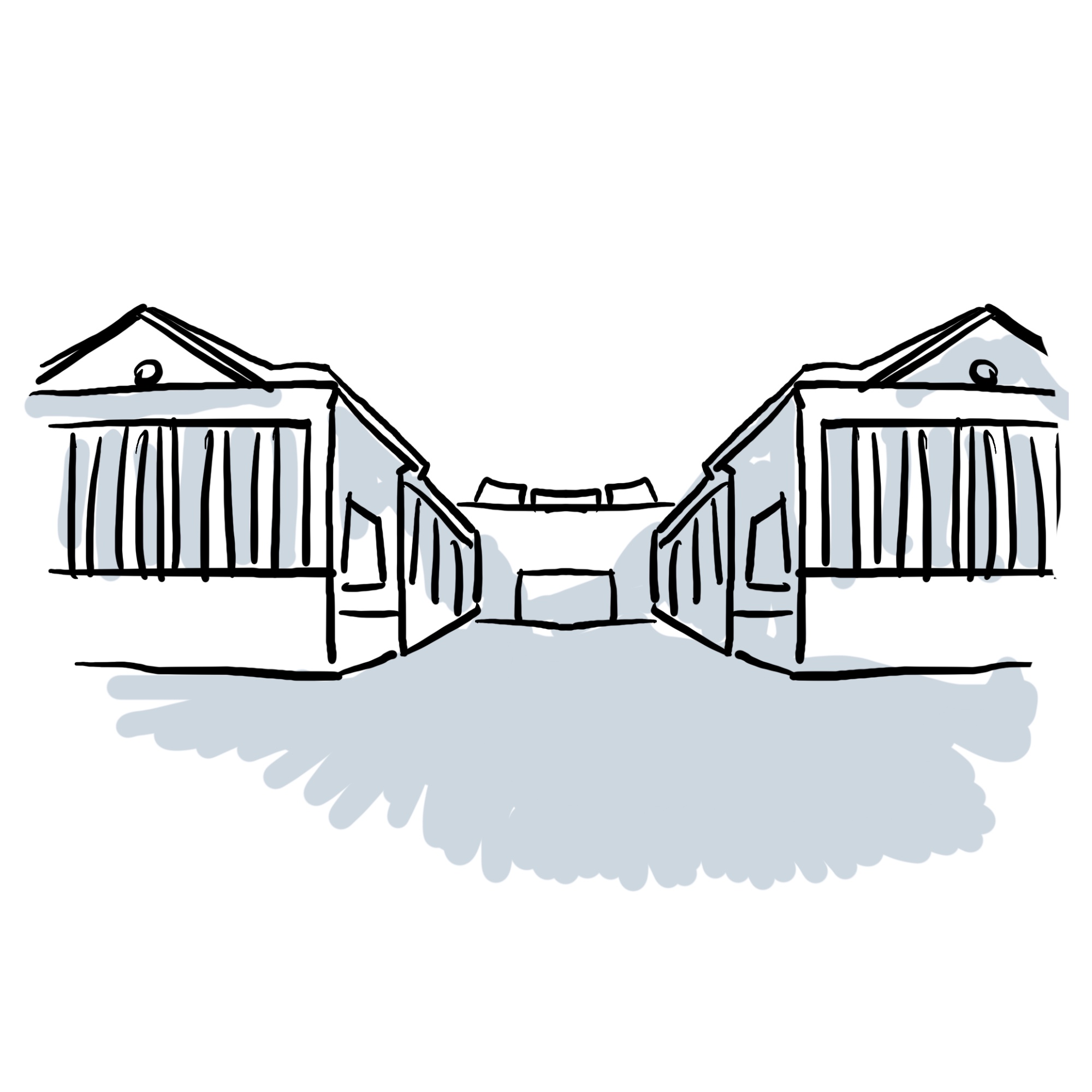
Its strictly neoclassical architecture contrasts sharply with the modern, bright design of the James Simon Gallery: this is the famous Pergamon Museum! Welcoming over a million visitors each year, it is the most visited in Germany,
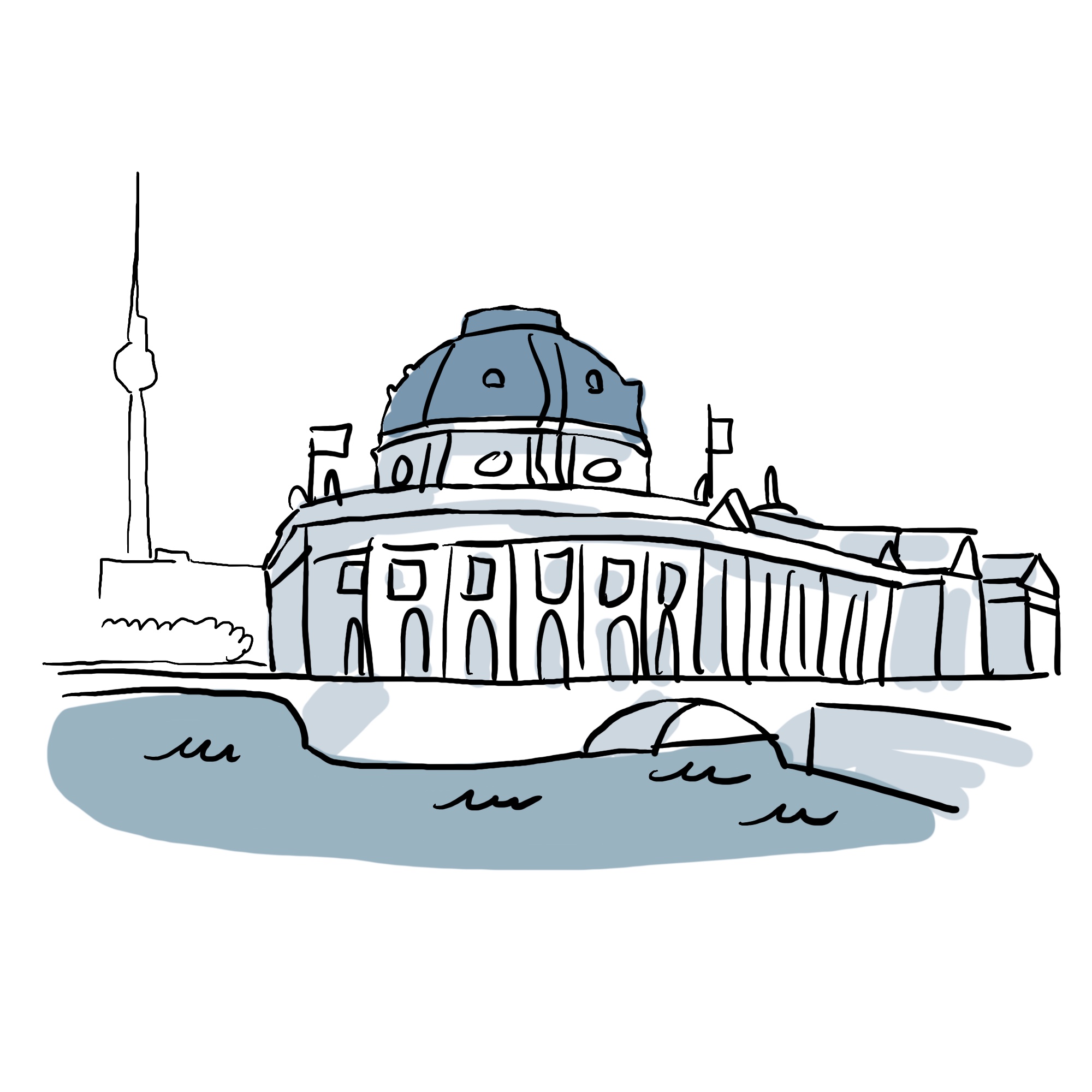
You’ve arrived at the tip of the island! Curving gracefully around the end of the island, this elegant neo-Baroque building is the Bode Museum. Inaugurated in 1904, it reopened in 2006 after a long restoration.
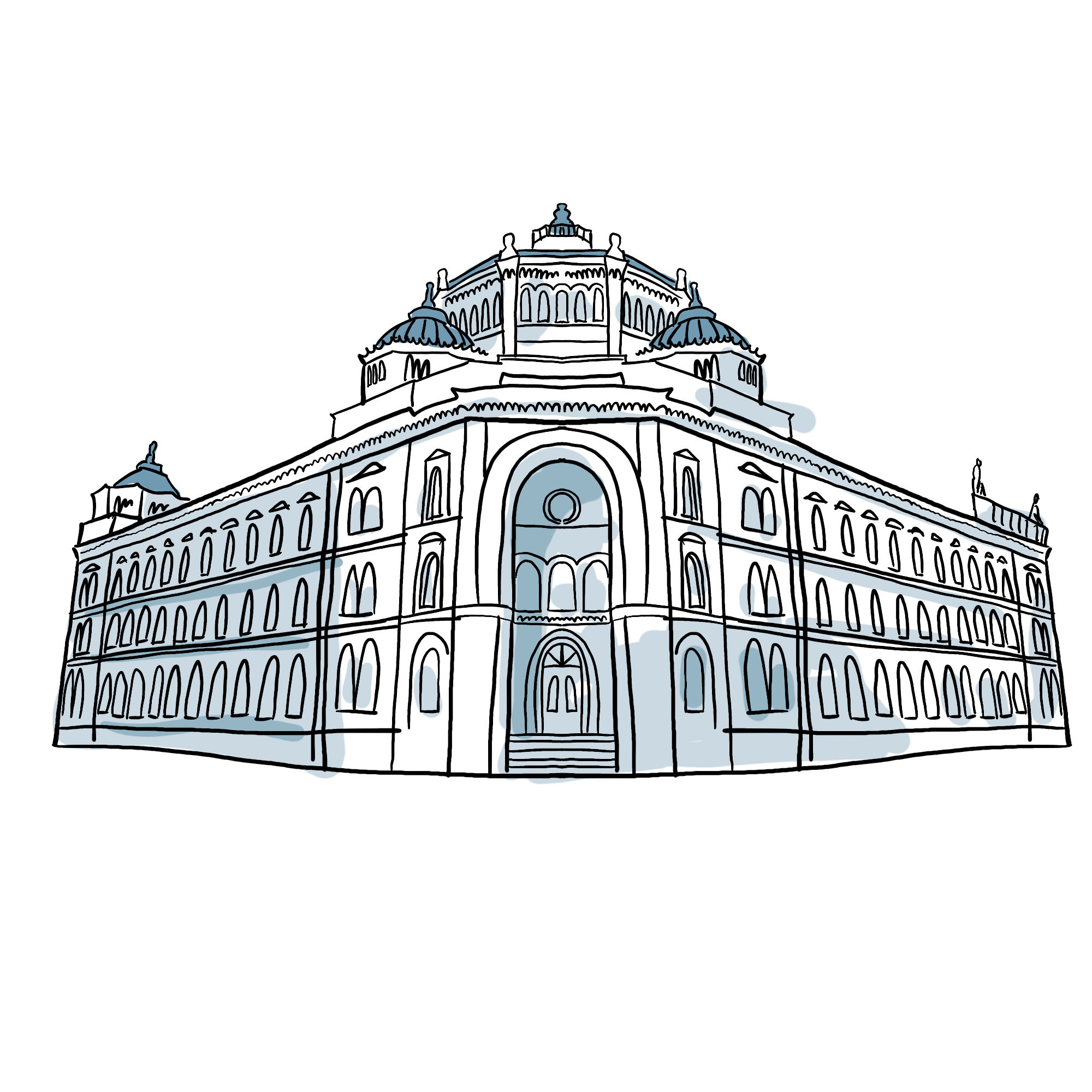
This beautiful building on the street corner is Postfuhramt, the former postal office. It’s a rather big structure, with its octagonal tower accompanied by two small domes and a stunning neo-Renaissance architectural style. Yet, few people know its story or even its name.
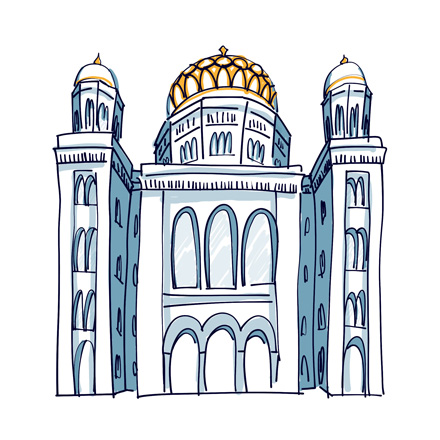
You are now standing in front of Berlin’s New Synagogue, or rather a faithful reconstruction, as the original building was destroyed during World War II bombings. When it first opened in 1866, it was the largest synagogue in Germany.
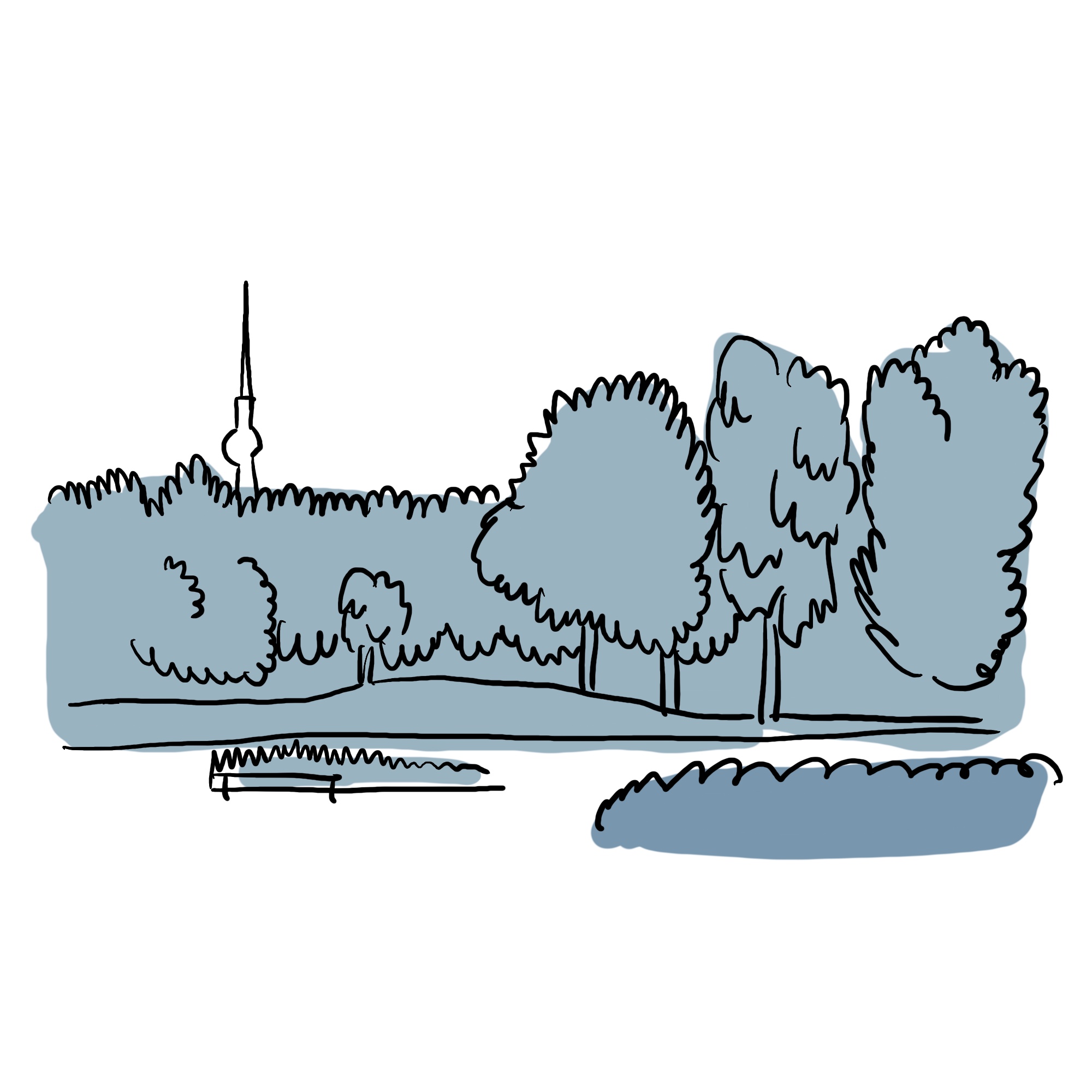
You are walking alongside the Monbijou Park, a French name referring to the eponymous Monbijou Palace, a royal residence that stood here from the late 17th century At the time, it was common to use French to give an image of refinement and prestige.
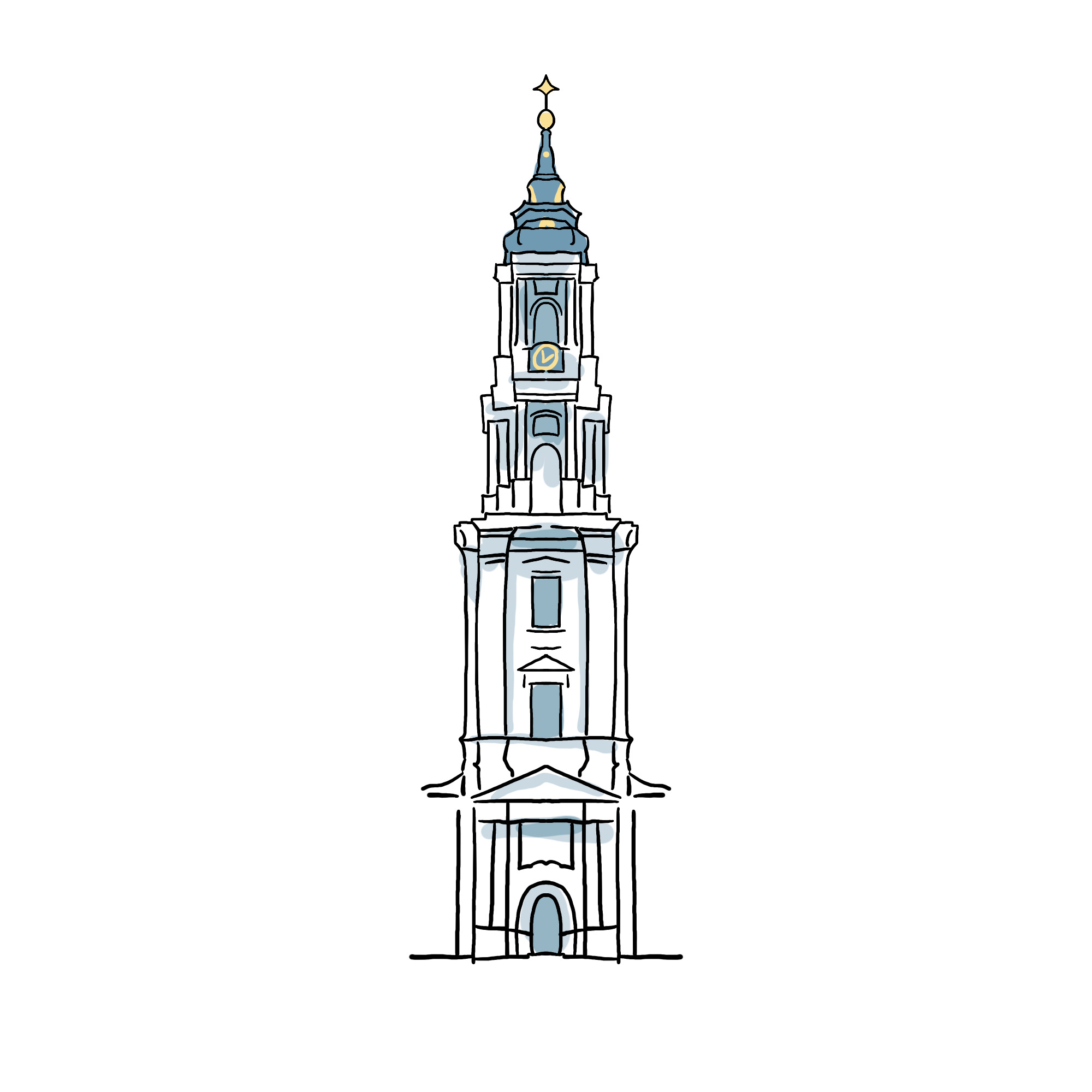
Listed as a historic monument, the small Baroque church before you is Saint Sophia’s Church. It is named after Princess Sophia Louise, the wife of King Frederick I, who commissioned its construction in 1712.

On your right, you’ll see a moving statue depicting a group of people, adults and childrenwith emaciated faces and vacant expressions . This memorial reminds us of the presence of Berlin’s once oldest Jewish cemetery, desecrated by the Gestapo in 1943.

You are standing on the vast Alexanderplatz, one of Berlin’s most iconic landmarks. It was named in 1805 in honor of Tsar Alexander I of Russia when he was visiting the King of Prussia.
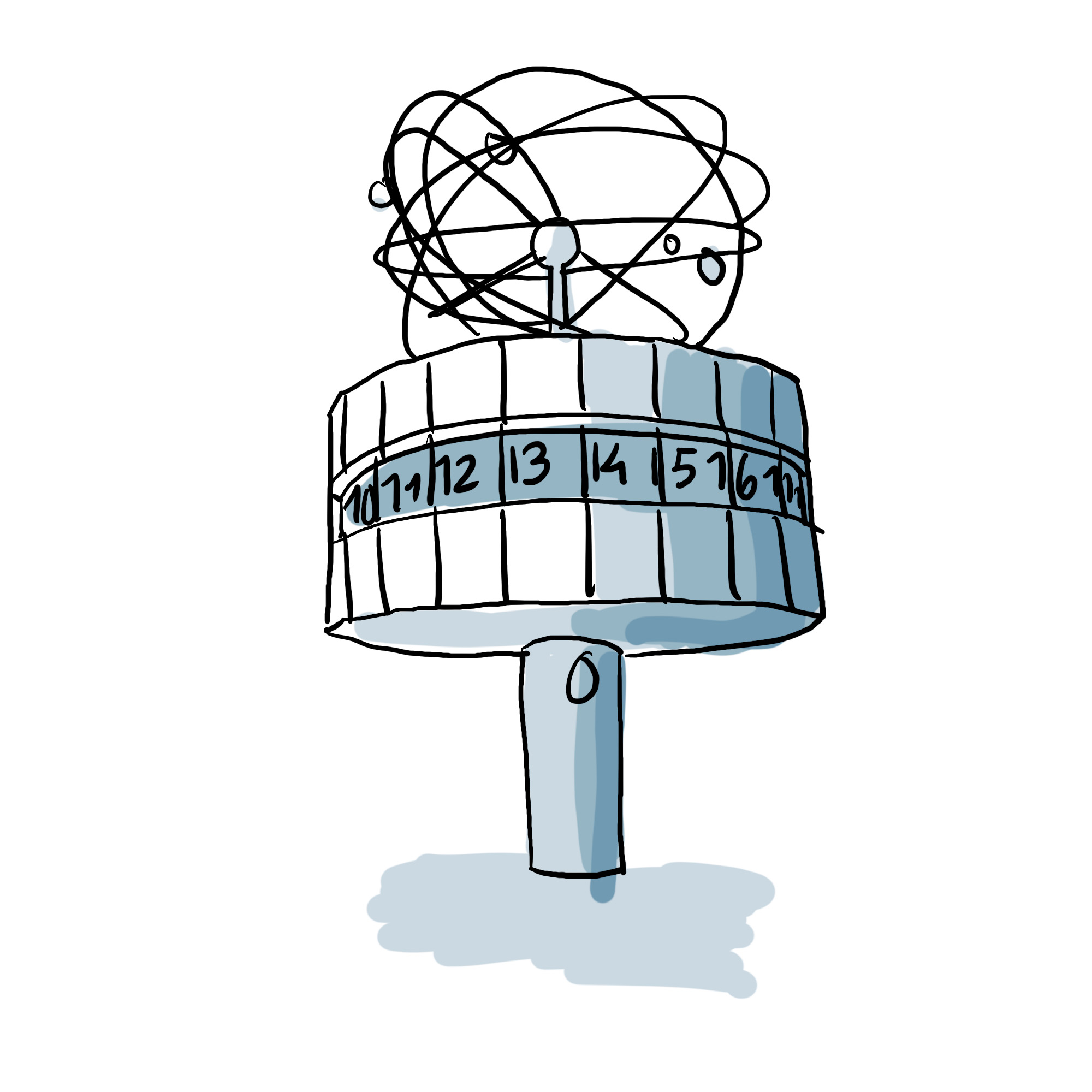
The strange clock standing before you is the Urania World Clock. Its rotating structure displays the time in 148 big cities around the world! It was inaugurated in the same year as the Berlin Television Tower.

The TV Tower near Alexanderplatz is one of the most iconic buildings in Berlin’s skyline, and arguably the most visible at 368 meters high. When it opened in 1969, it was ranked as the third tallest structure in the world.

The palace on your right was built in the 15th century and is a fine example of Renaissance architecture — typical of private residences from that era. Its construction was ordered by the banker Filippo Strozzi, who wanted an elegant home

Tornabuoni Street is one of the most central and historic streets in Florence. Built on the site of the city’s ancient Roman walls, it’s now lined with luxury boutiques and several palaces constructed between the 15th and 17th centuries for the
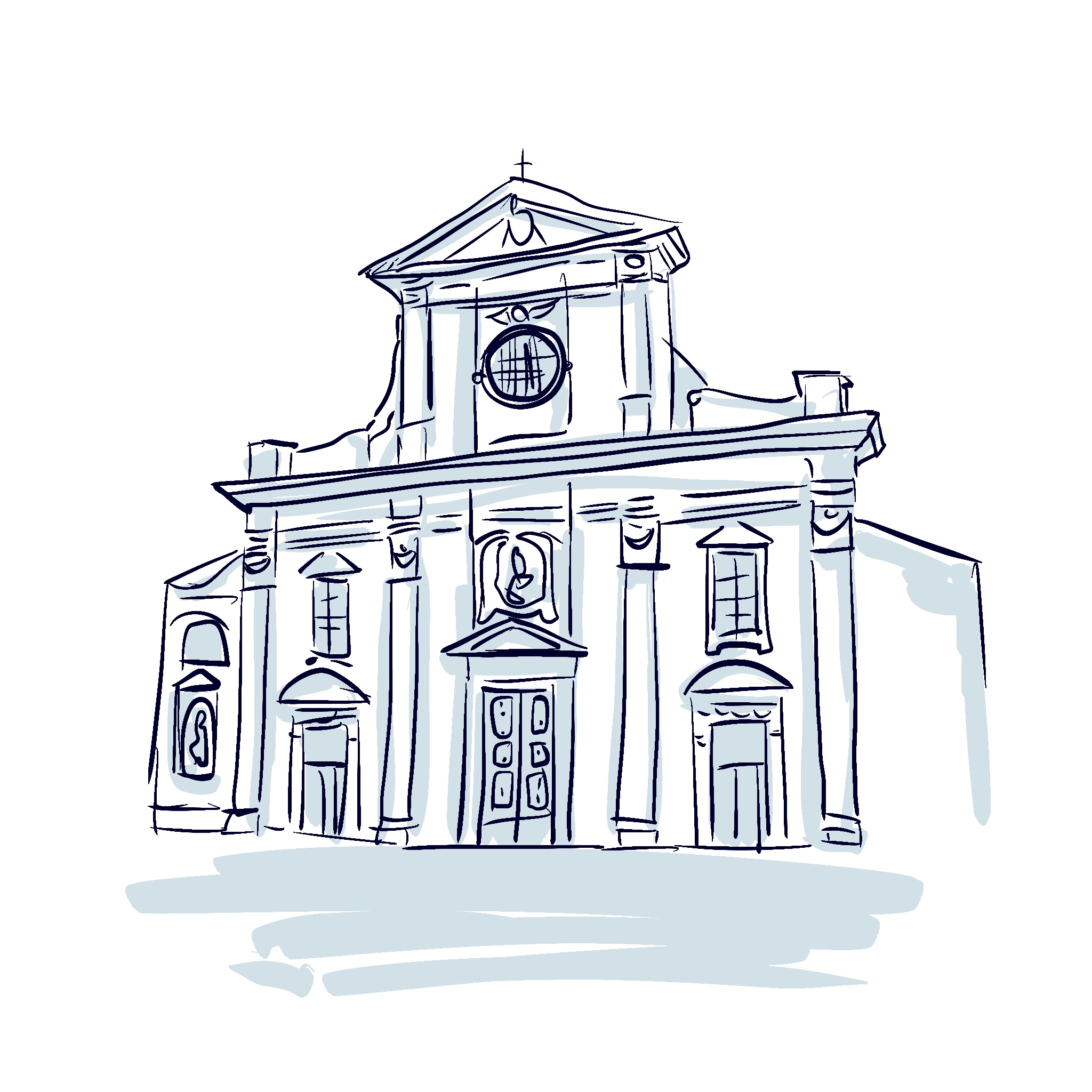
Built in the 11th century and expanded in the 14th, the Gothic-style Santa Trinita Basilica was a favourite among Florence’s wealthiest families. Its façade reflects the Renaissance style of the 16th century. Inside, you'll find chapels with beautiful
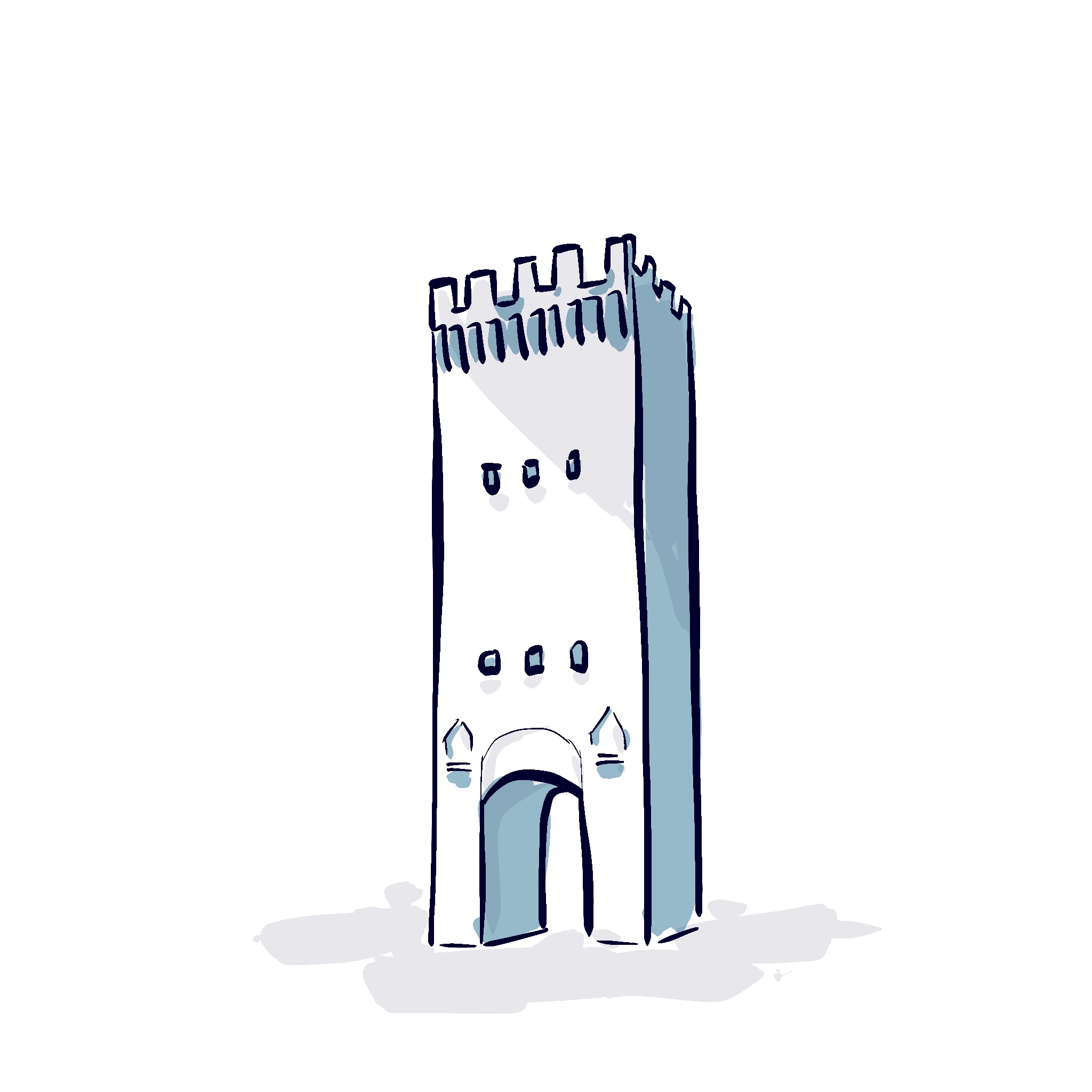
A true relic of the 14th century, the San Niccolò Gate was one of the city’s entrances during the Middle Ages. Built in 1324, and designed by Arnolfo di Cambio, it is one of the few remaining traces of Florence’s old city walls. These fortifications

The best view of Florence is from Michelangelo Square, overlooking the southern part of the city! You can see Florence's rooftops unfolding, with the city's most iconic landmarks rising among them: the cathedral and its impressive dome, the
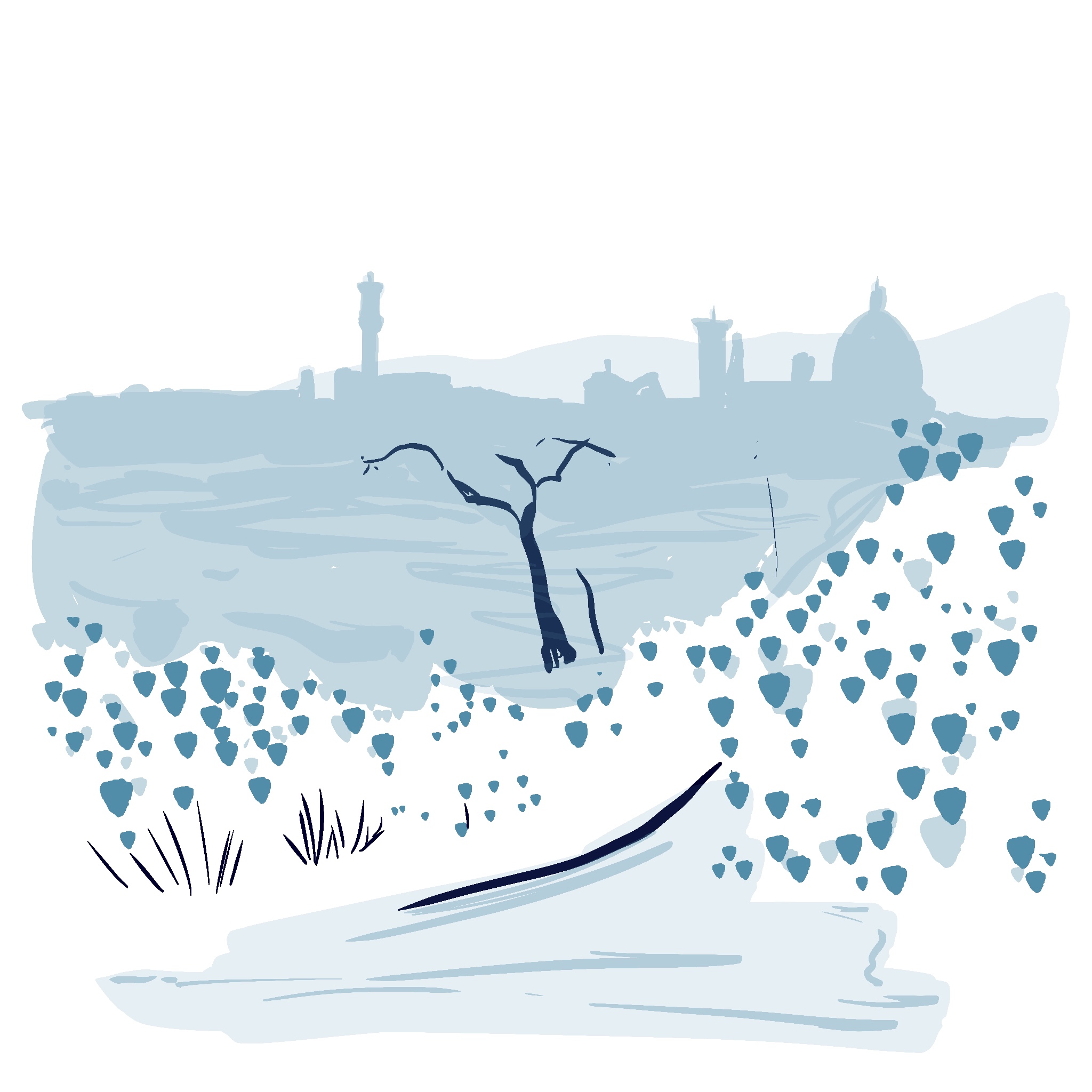
The Rose Garden is a panoramic garden park connecting the Oltrarno district to the Michelangelo Square. It lives up to its name, housing a large collection of roses, but also lemon trees and a small Japanese garden, a gift from Florence’s twin
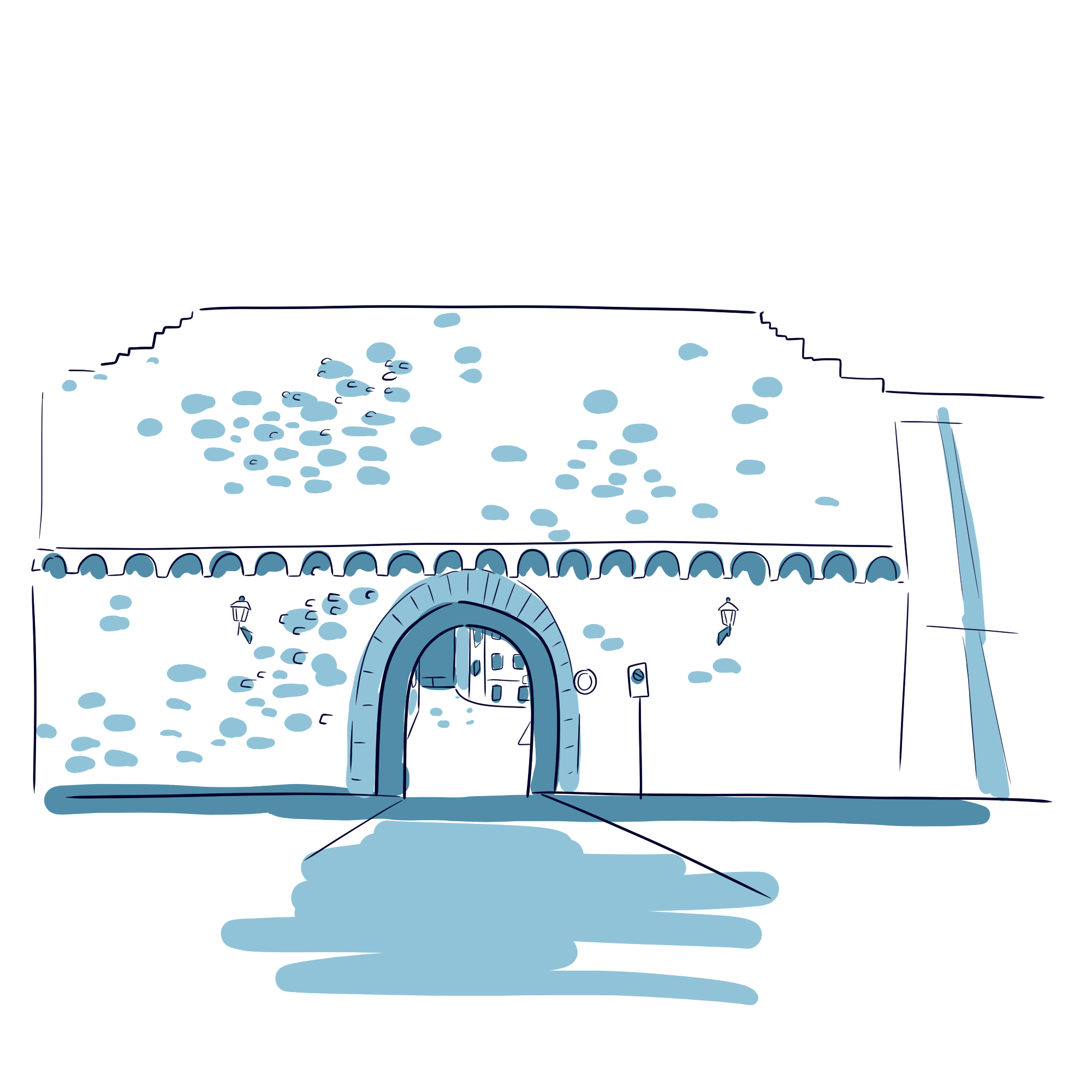
You're now walking under the 14th century San Miniato Gate. Unlike most city gates, this one doesn’t have a tower. Instead, its main feature is a simple walkway where guards would stand, watching over the area. This gate leads to Michelangelo
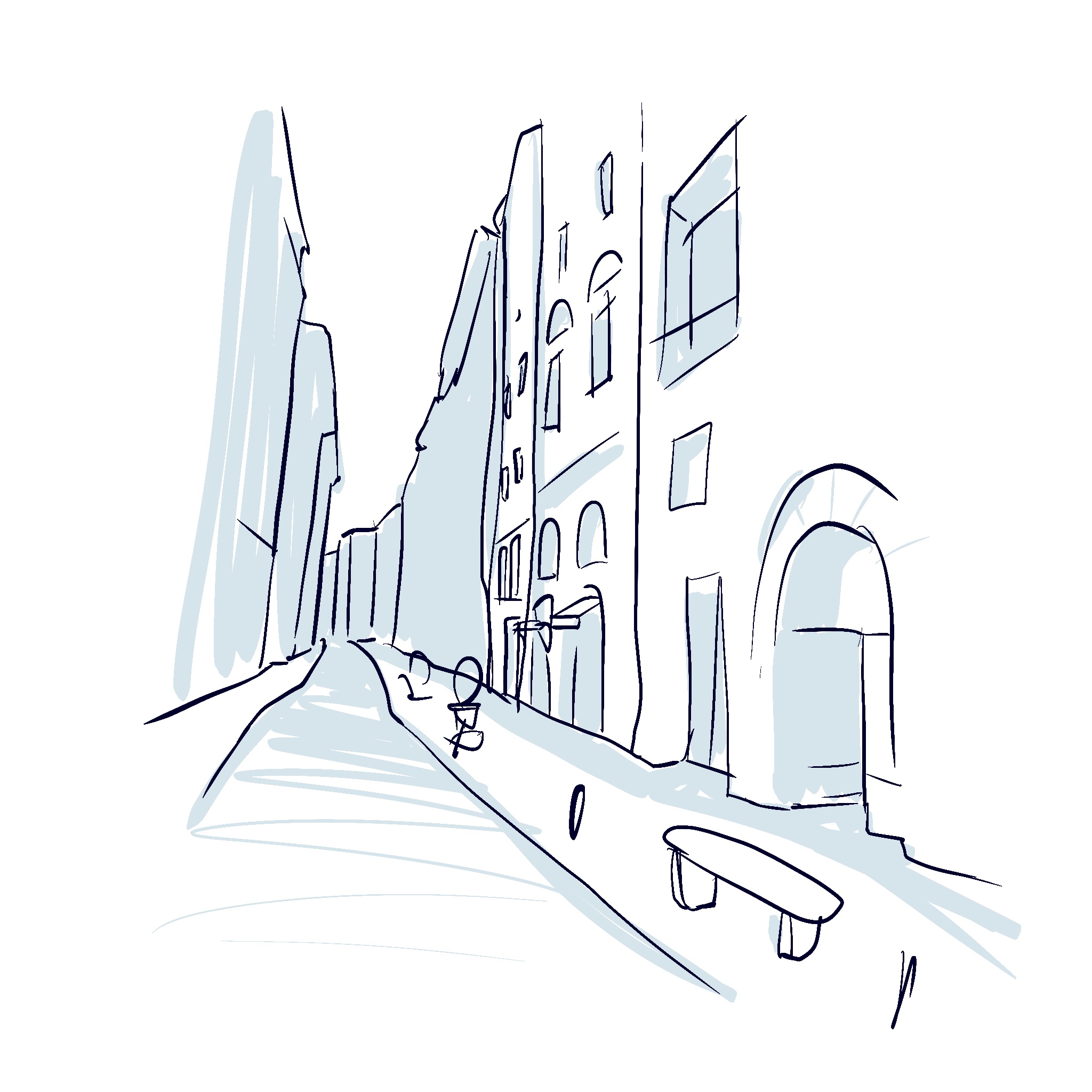
Situated on the left bank of the Arno, the Oltrarno district is generally quieter and less touristy than those on the right bank. But that doesn’t make it any less lively! It’s home to several historical monuments, and is a favourite among locals
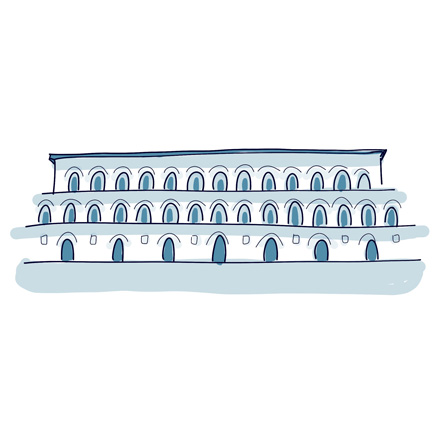
This impressive palace was built in 1458 by Brunelleschi, the brilliant architect who designed Florence cathedral’s dome. It was originally Luca Pitti’s residence, a wealthy Florentine banker seeking to rival the Medici ruling dynasty—especially
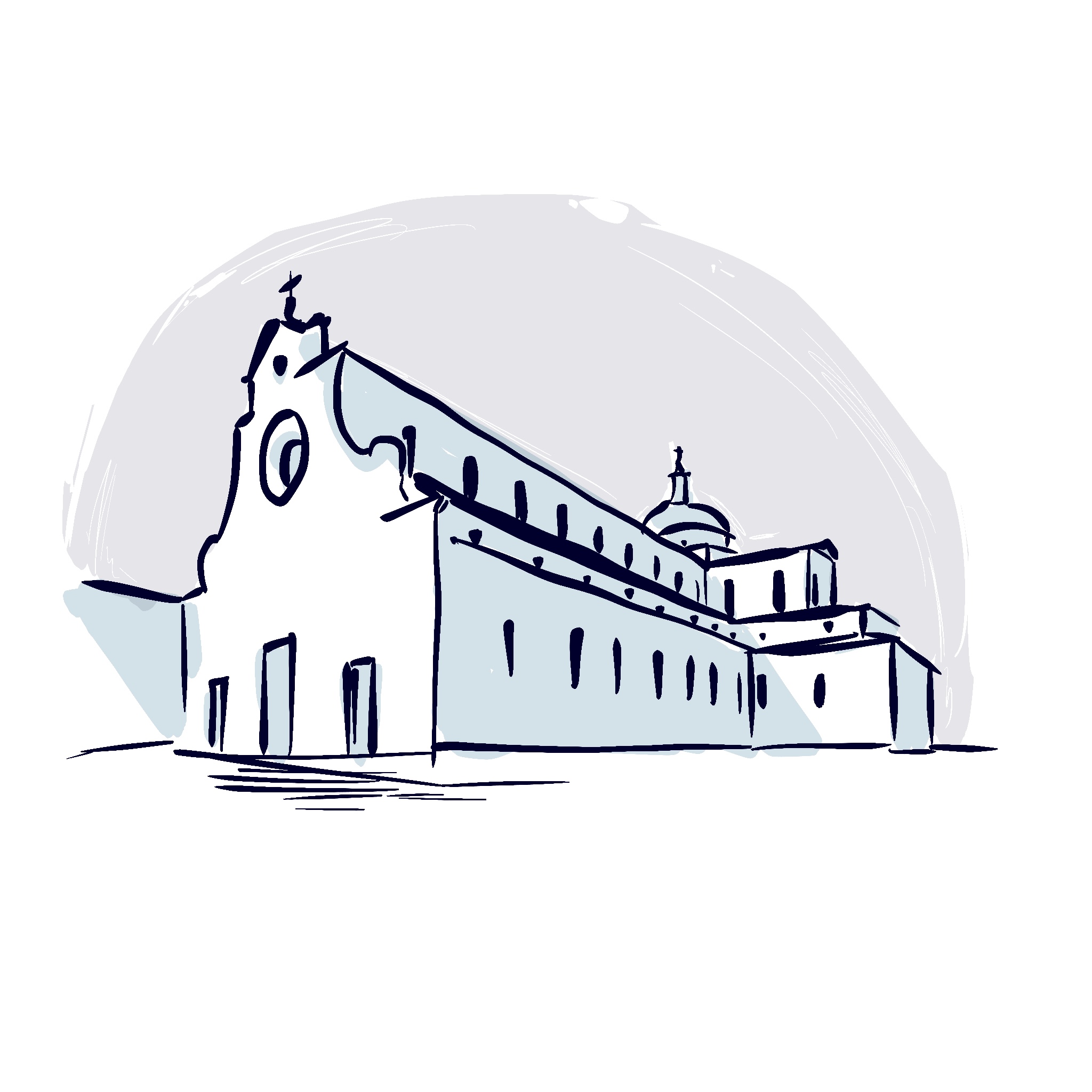
The name Filippo Brunelleschi may ring a bell... He’s the mastermind behind many iconic landmarks in Florence, such as the Pitti Palace, the cathedral’s dome, and the basilica in front of you. He designed the blueprints in 1444, but passed away
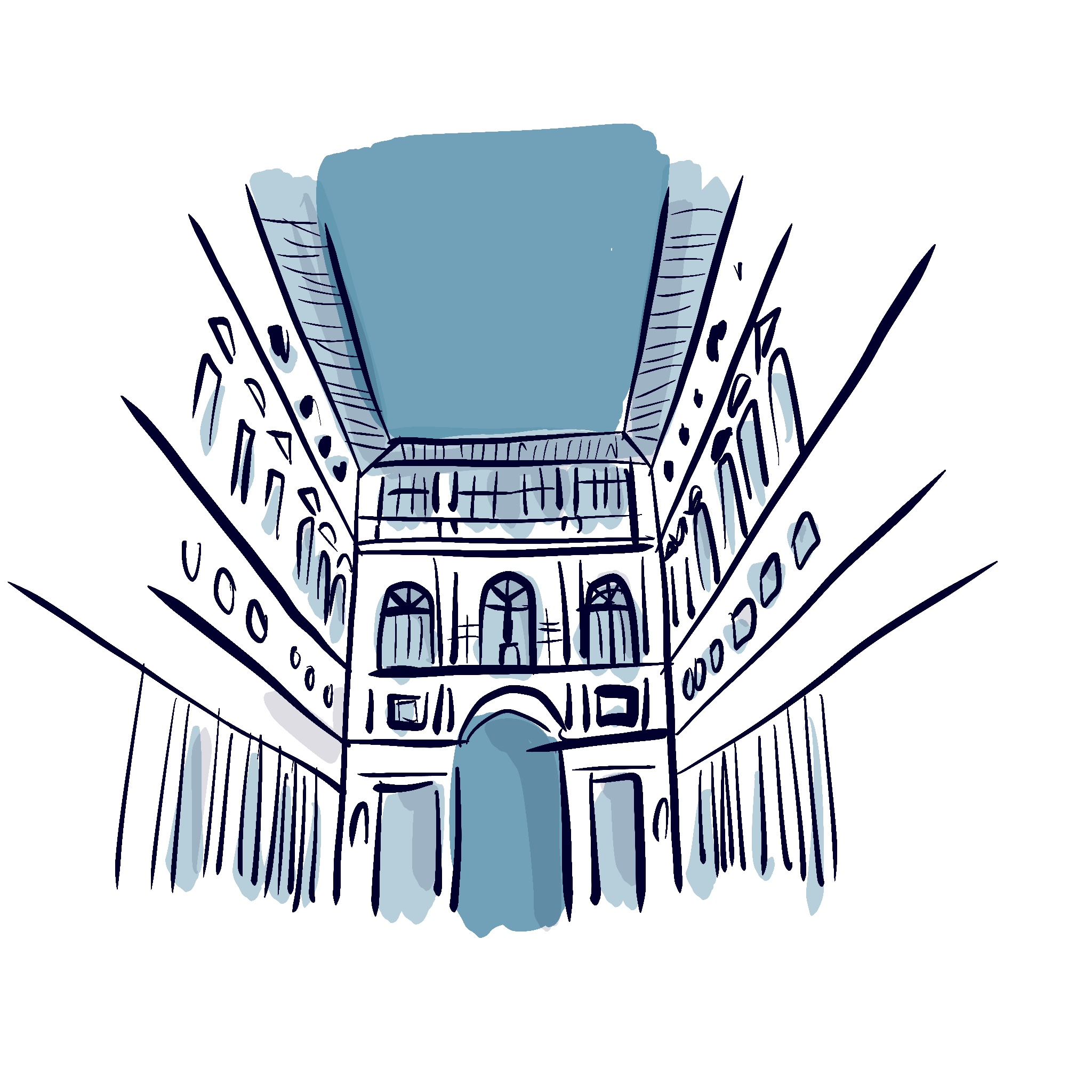
Welcome to the Uffizi Gallery, yet another symbol of the powerful Medici dynasty. Cosimo de’ Medici ordered its construction in the 16th century. Today, this gallery is renowned worldwide for its Florentine Renaissance art, housing one of the
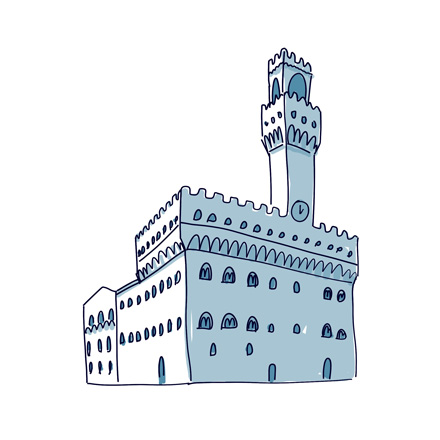
A symbol of the city, the Vecchio Palace originally served as the seat of Florence’s government. Its name translates to “Old Palace”, as Cosimo de’ Medici lived here for several years before moving into the Pitti Palace. It then housed the

An important symbol of the city, the unique Ponte Vecchio is the oldest stone bridge in Europe. The earliest bridge at this site was constructed during Roman times, though its wooden structure repeatedly fell victim to the River’s floods over the
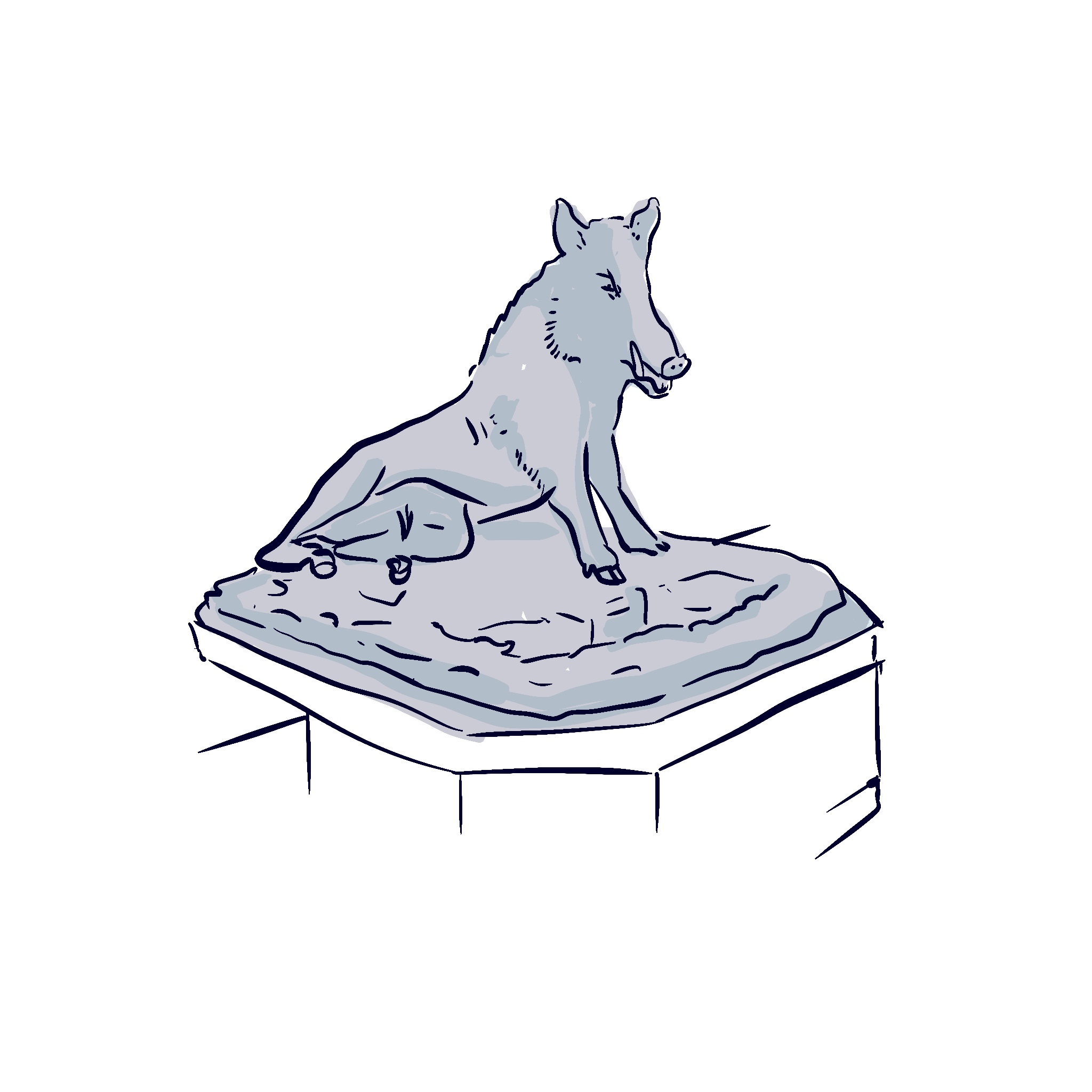
Although it depicts a wild boar, this fountain is known as the Fontana del Porcellino — the "little pig" fountain. The sculpture you see here is actually a replica of one created in the 17th century for the Pitti Palace, which itself was inspired by an
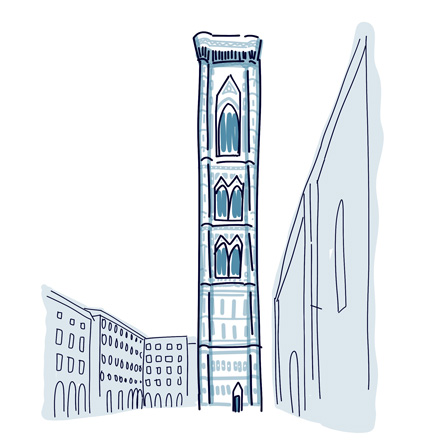
Construction of Giotto’s bell tower began in 1298, just two years after work started on the cathedral. Serving as the cathedral’s bell tower, it’s nearly 85 metres high, and takes its name from one of its first architects. This was Giotto, he designed

The Ponte alle Grazie was built in 1237 over the Arno River, which spans 240km across Tuscany. The bridge was named after the magistrate who governed Florence at the time. Back then, it resembled the Ponte Vecchio, with small wooden
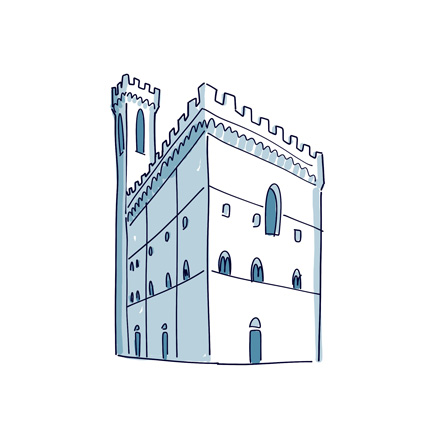
Since 1859, this 13th-century palace has been home to the National Bargello Museum. Inside, you’ll find some of the finest sculptures by Donatello, Michelangelo, and Cellini. These Italian Renaissance artists are celebrated and renowned across
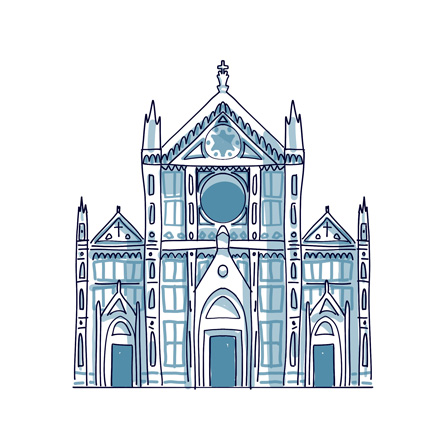
Welcome to the largest Franciscan church in the world, the Santa Croce Basilica! The Franciscans are a group of Catholics that emphasise poverty and humility. They follow Saint Francis of Assisi’s rule from the 13th century. This basilica was
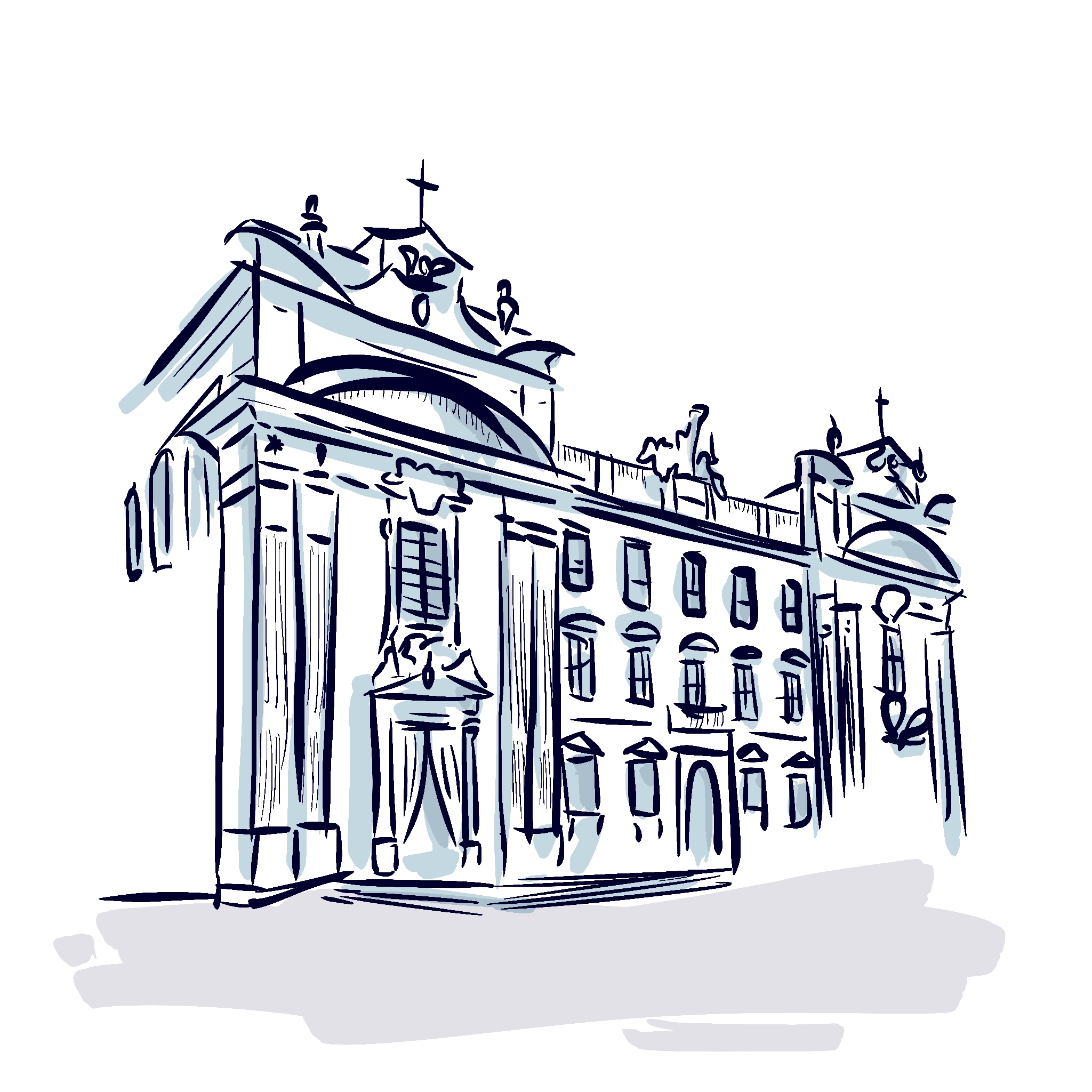
The building on San Firenze Square used to be a convent, and now serves as a courthouse. Built in the 16th century, the Baroque-style façade was added a century later – a rare sight in Florence’s historic centre. If you step inside, you’ll find the

Florence was once the Roman city of Florentia, with this historic square, the Piazza della Repubblica, at its heart. In the 19th century, Florence briefly became the capital of Italy, and the square underwent a complete transformation. It was
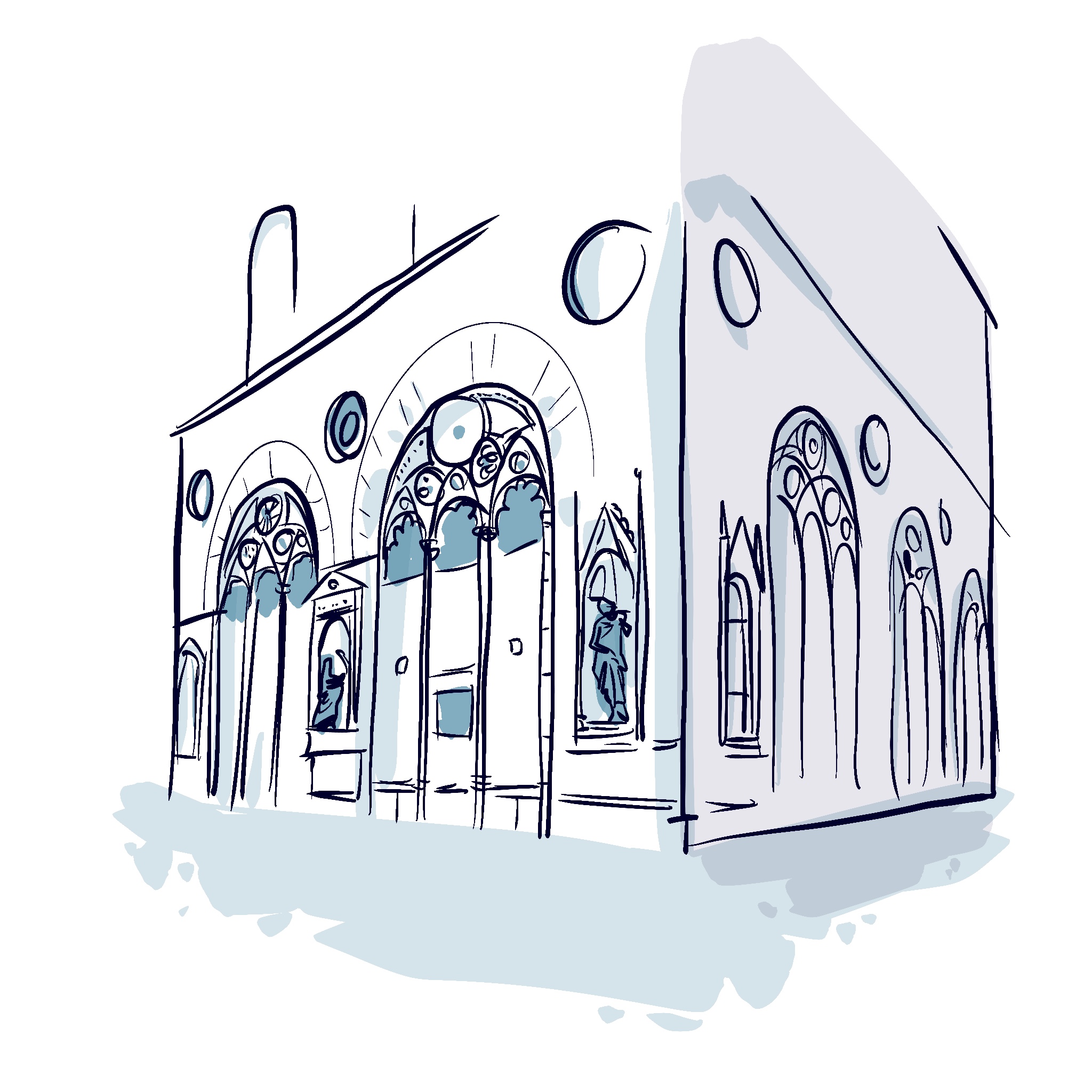
Orsanmichele Church is a classic example of Florentine architecture, dating back to the 14th century. Built on the site of a former grain market, it was later expanded to become a place of worship. But for several years, its second and third floors
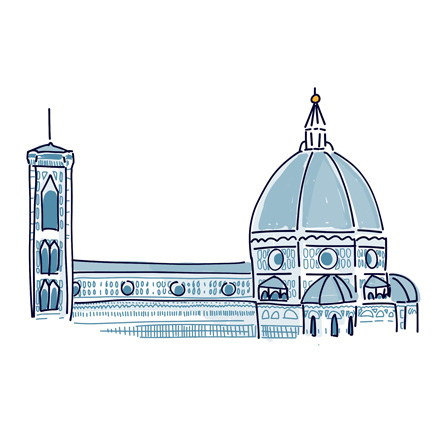
Impressive, right? This is one of the largest cathedrals in the world, with dimensions that were astonishing for its time. Built during the 13th and 14th centuries by several renowned architects, the Cathedral of Santa Maria del Fiore stood
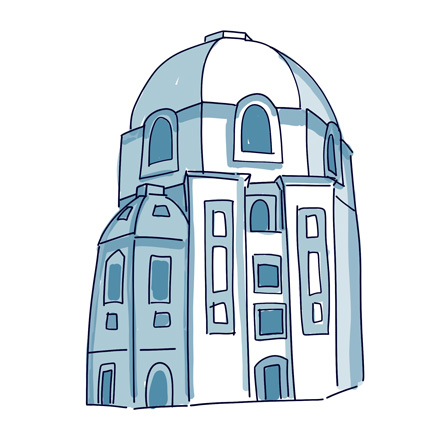
The powerful Medici family left their mark all over Florence. In fact, it’s impossible to walk through this city without coming across reminders of the dynasty that ruled it for centuries. Right now, you're standing in front of their private chapels
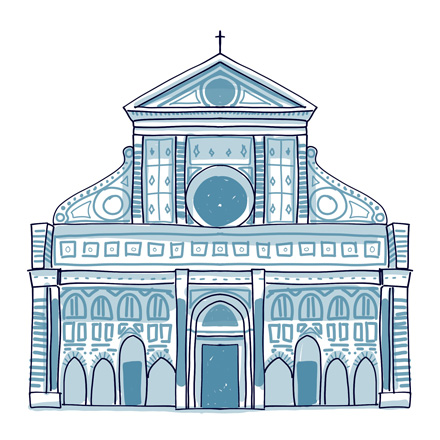
While the Santa Croce is dedicated to the Franciscans, the Santa Maria Novella Basilica is linked to the Dominican order, and was constructed from 1246. Blending Florentine Gothic style with Cistercian influences, the church features a bell
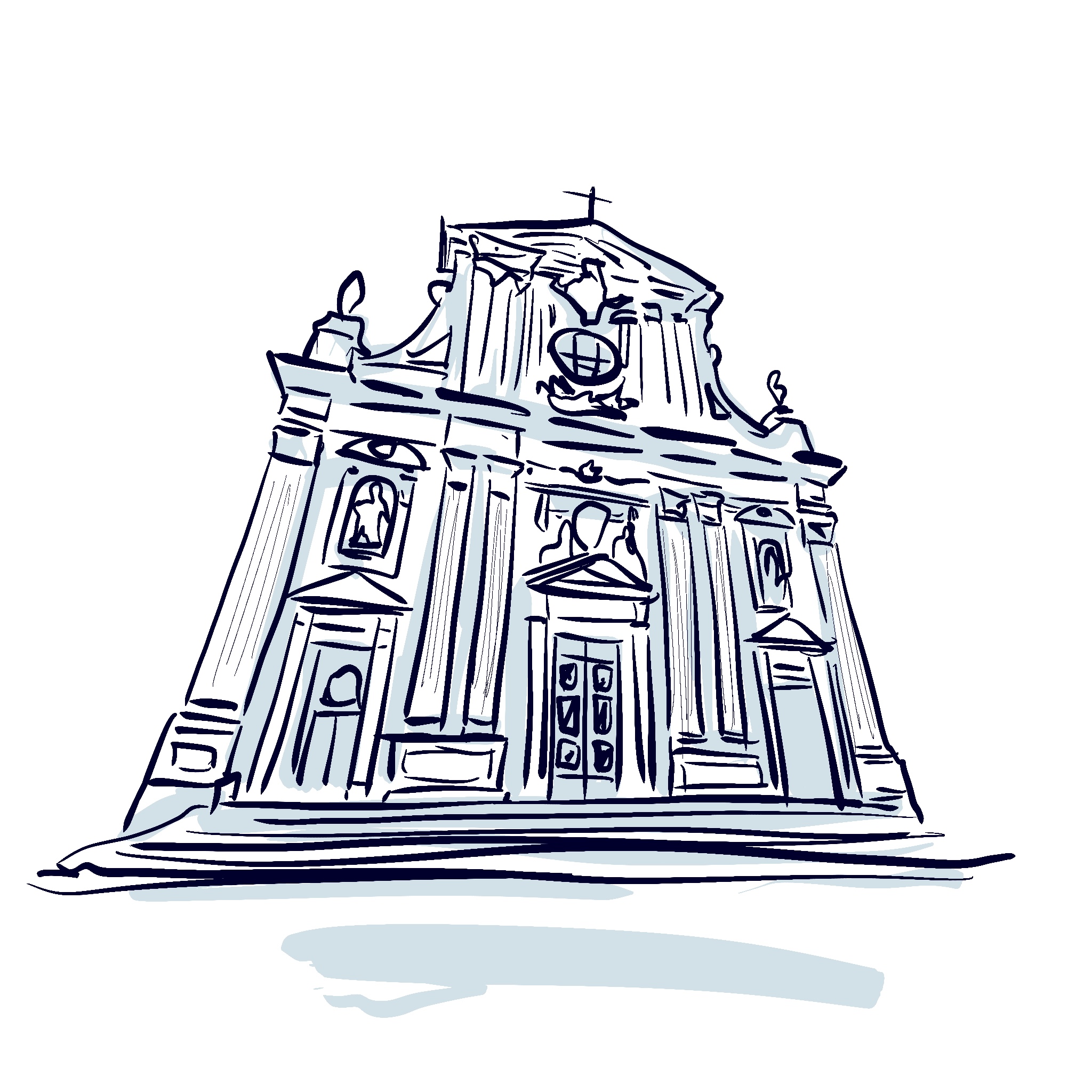
On your right, you’ll find one of Florence’s most beautiful examples of Baroque architecture: the Church of Saint Michele and Gaetano. Originally designed by Bernado Buontalenti, several Italian architects were tasked with its construction
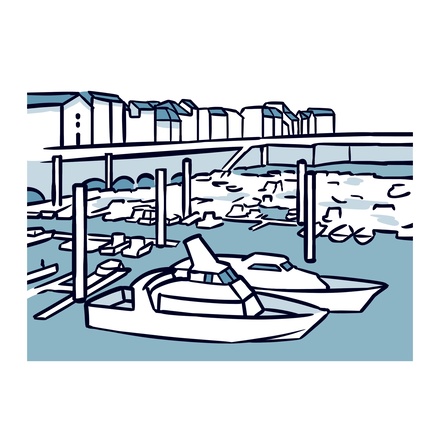
Isn’t it strange how you slow down and simply start wandering around, as you approach a port? Located at the heart of the city, with its docks serving as the hub of life, the port of Dieppe is both the identity and the economic engine of the destination.
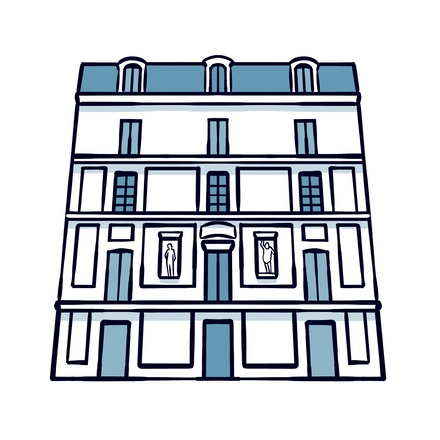
The Alabaster coast, known to the french as La Côte d’Albâtre, which streches from Le Tréport to Le Havre has traditionally been associated with seaside resorts. A historic leader in the field since 1824 in France, Dieppe was the preferred destination for the Parisian and
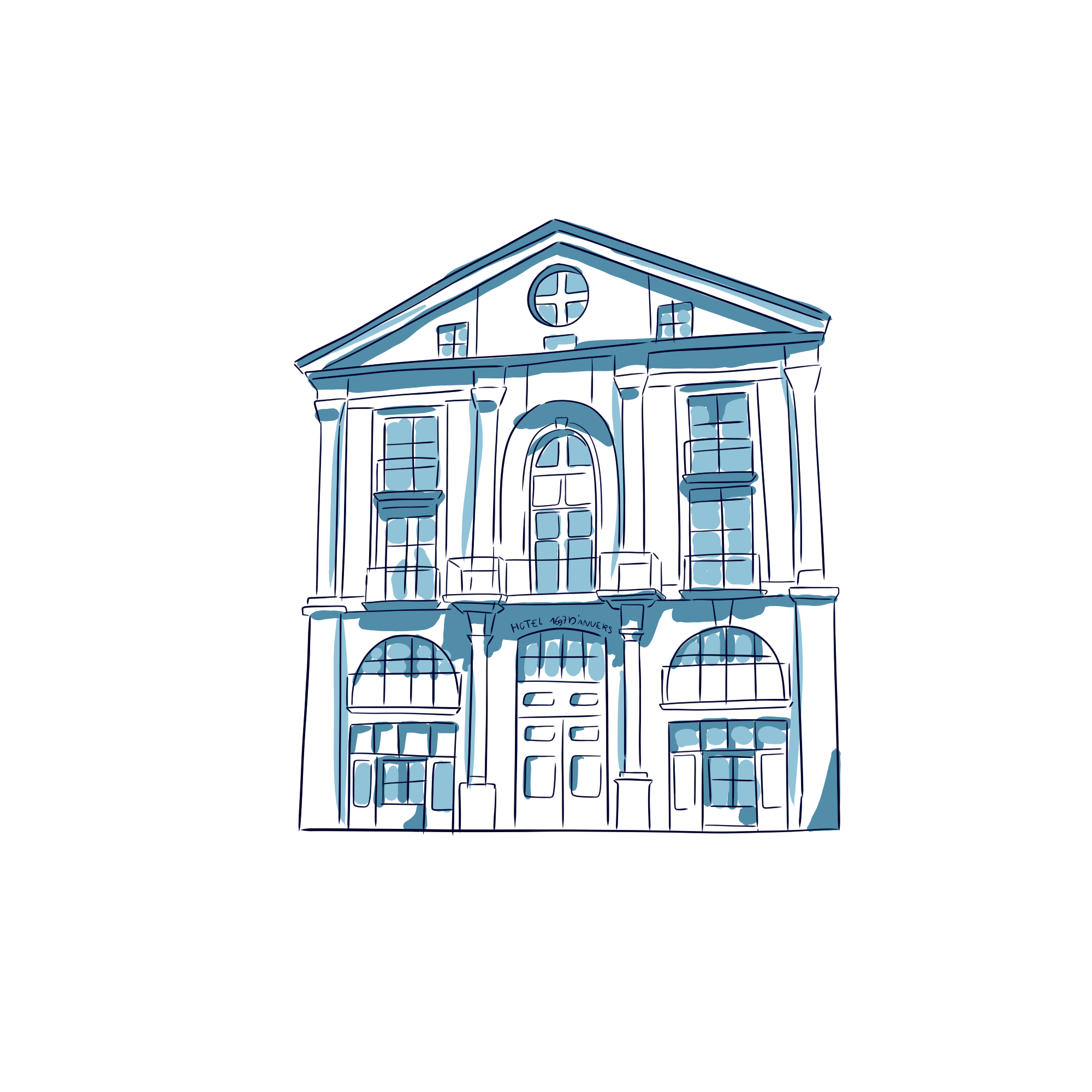
Henri IV Quay is an iconic part of Dieppe, the kind of place that livens up any stroll just by its string of colourful facades overlooking the marina. However, if you're going to remember this charming image of the Norman town,
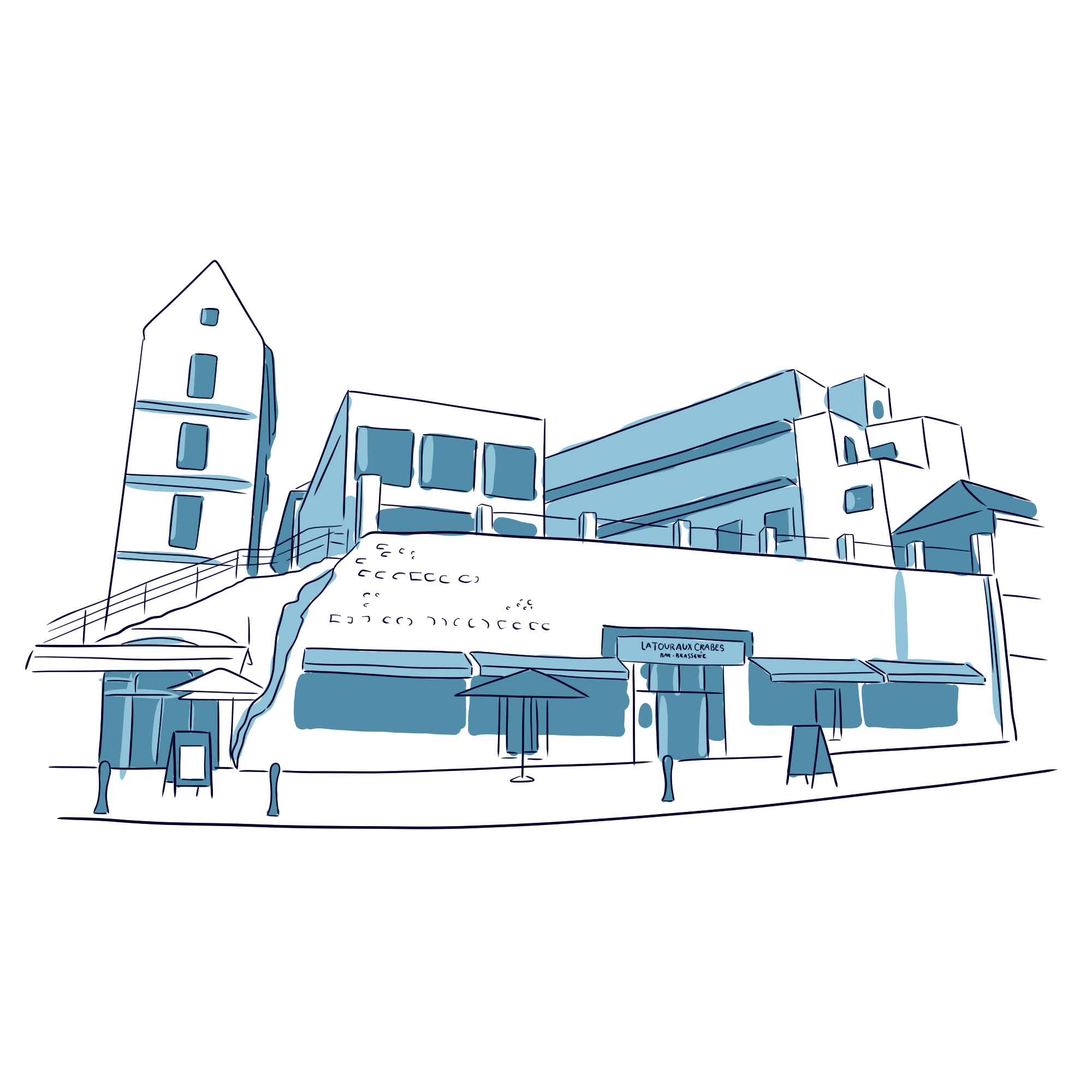
You’d be hard pressed to find a local who hasn't heard of this address at the very end of Henri IV quay. They've either enjoyed a meal in the bistro here, or heard about the history of the place. While we’ll leave you tojudge the quality of the menu served here,
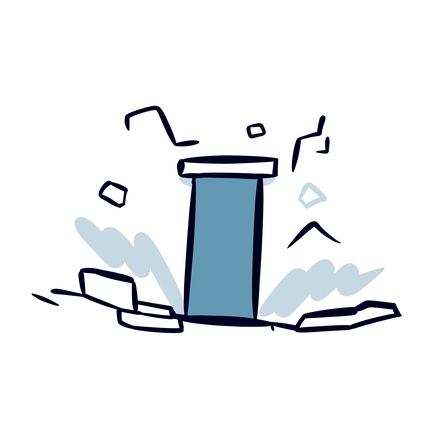
Before we tell you what to see and where to look, have you ever heard of the Gobes? If you're not familiar with the term, it refers to ancient quarries dug into the cliffs where chalk was extracted to make lime.

Dieppe is one of the most beautiful seaside resorts on the Côte d'Albâtre with its seaside baths, beaches and harbour. Consequently, it's a must-see destination for all sea lovers. If you're one of them, then you'll certainly enjoy visiting the attraction in front of you.

When it comes to French seaside resorts, we almost automatically thinks of the French Riviera and Atlantic coast destinations. In other words, Biarritz, La Ciotat, Saint-Tropez, La Grande-Motte and Biscarrosse.

In Normandy, there is not just one type of tourism to attract visitors: in fact, there are several types such as cultural, green, seaside and religious tourism. Not to mention the unmissable remembrance tourism so dear to the region.
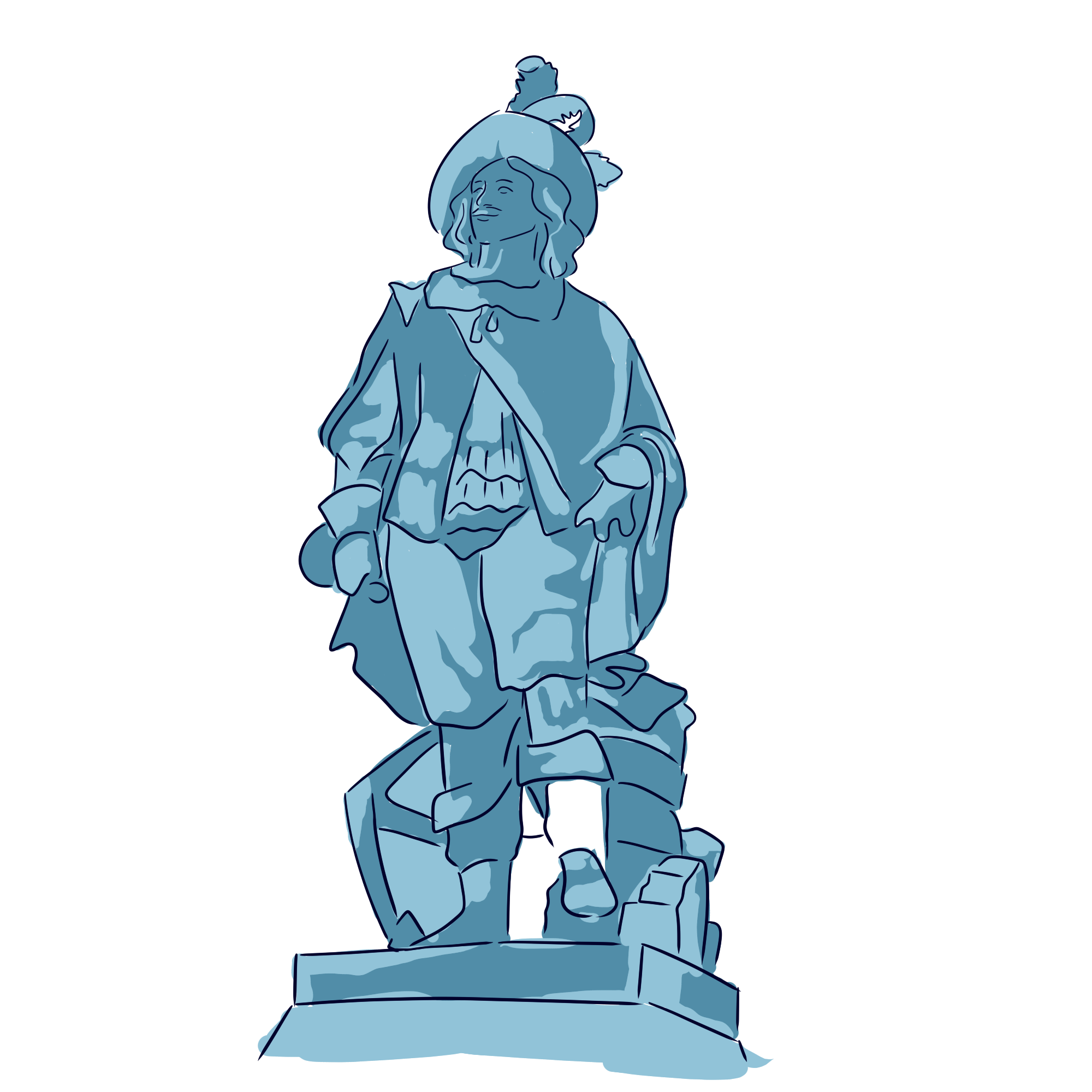
Be it on market days or the ever-present cars parked in the National Square car park, spotting the statue of Abraham Duquesne can be quite an ordeal. However, as soon as you set eyes on it, you are instantly captivated by the man it represents,
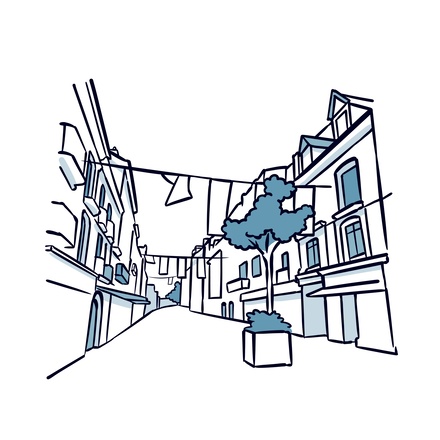
Grande Street is Dieppe's main shopping thoroughfare and is entirely pedestrianised. Dating back to Gallic times, it was used to facilitate passage from one cliff to another. As you stroll along it, you'll come across many houses and mansions dating from the town's reconstruction

If you glance across the Verdun Boulevard, you'll notice that the building in front of you stands out as it possesses a little something that its neighbors lack and that would be its historical heritage. The Tourelles are two circular sandstone and flint towers.
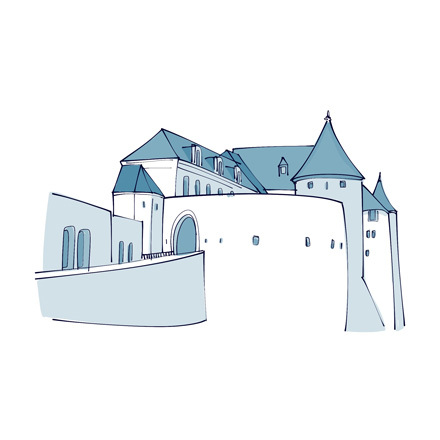
From here, turn slightly to the right towards the cliffs, as if by magic you'll see Dieppe's famous Castle-Museum. The name Castle-Museum is a strange combination. However, as you'll see, it's an excellent way of linking Dieppe's past and present history.
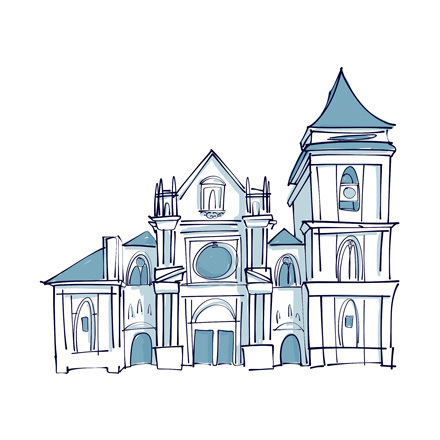
Discover Dieppe's religious heritage at Saint-Rémy church. It was built in the 16th century, when Thomas Bouchard, the town's alderman and parish treasurer, laid the first stone as a church fell into ruin at the foot of the castle hill.
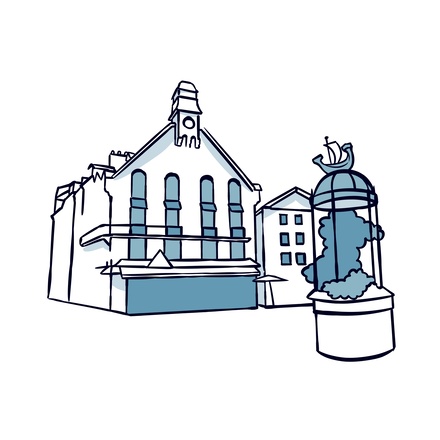
Located at the junction of not two, but six streets, Puits-Salé Square is undoubtedly Dieppe's liveliest and best-known square. Its rather unusual name — which means "Salty Well" — refers to the slightly brackish water that once flowed from

Saint-Jacques church was built between the 12th and 16th centuries on the remains of a previous chapel, and owes its existence to the Archbishop of Rouen. As a result of its location on the famous pilgrimage route to Santiago de Compostela by sea,
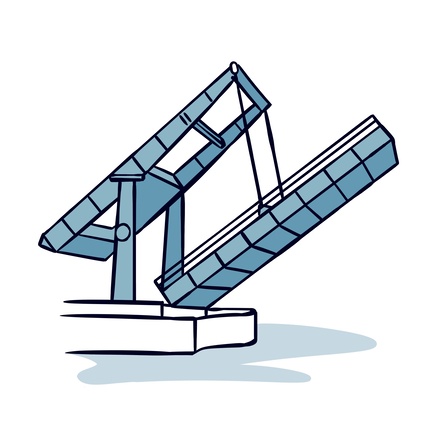
As a sea port city, Dieppe has two separate bridges that allow residents to move easily from one basin to another. The bridge in front of you is the stunning Jean Ango Lift Bridge. It links the town centre to the Pollet peninsula by land, and the Duquesne basin to the outer harbour by sea.
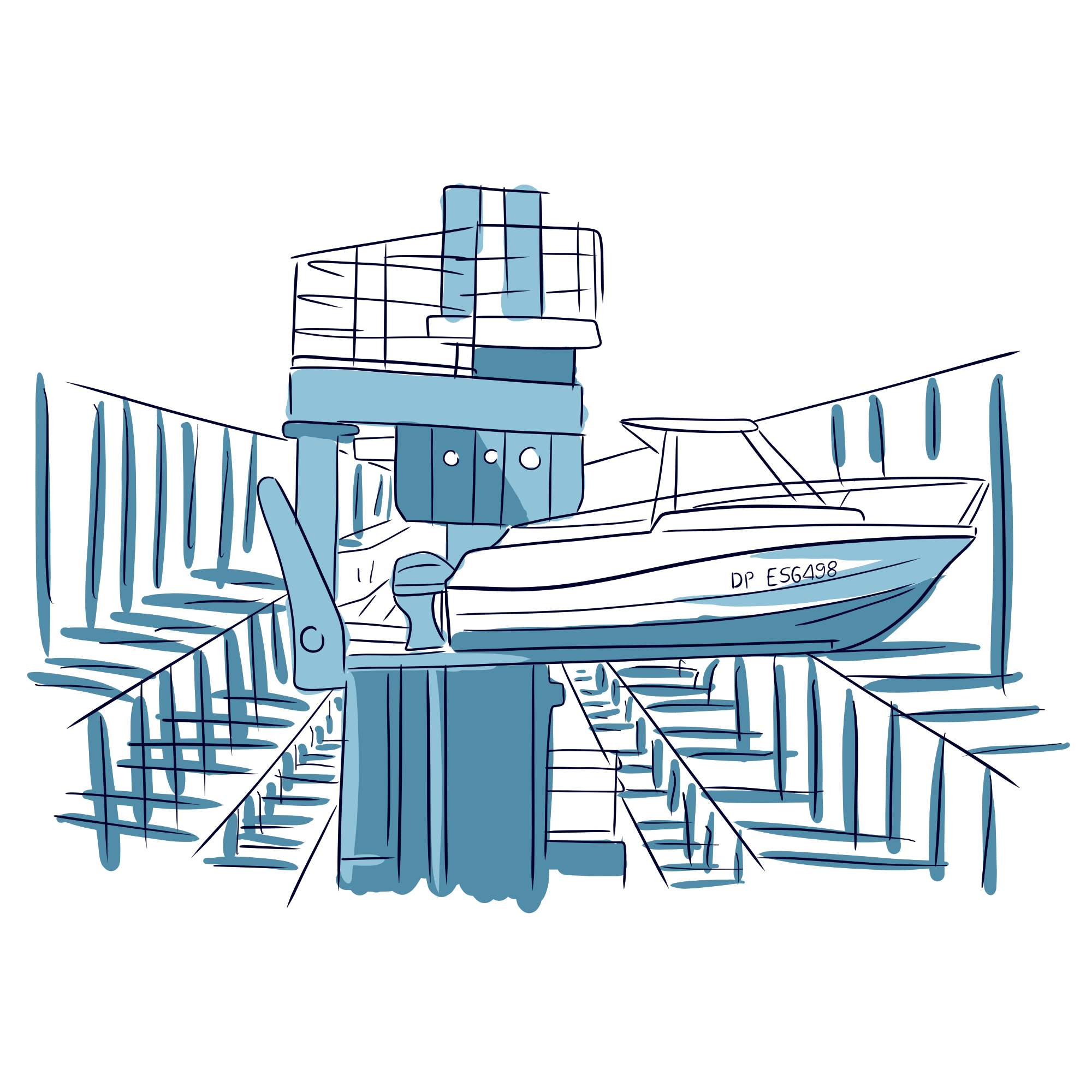
Oh my, boats are levitating instead of sitting on water. A visit to Dieppe is bound to surprise you. The reason behind such an unusual sight on Pollet Island is that the town never lacks imagination when it comes to finding effective solutions to its problems.
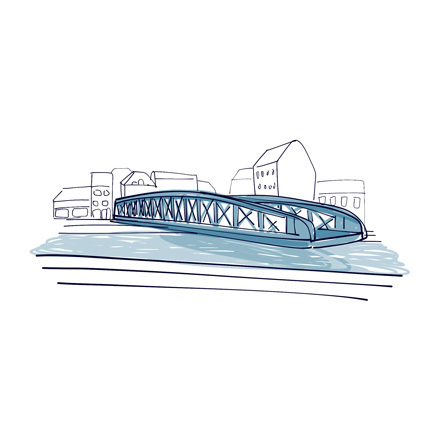
Hidden behind this metal frame, slightly worn out by time and the salt that floats in the atmosphere, is a Dieppe landmark with a history that is more than endearing. The Colbert Bridge was opened in 1889 and is currently one of the last swing bridges in Europe still in operation.

A Dieppe slogan says " dieppois fish, premium quality fish ". Sounds a bit chauvinistic, doesn't it? Well, it's hardly more chauvinistic than any other belief held by French people who are proud of their home region or town.
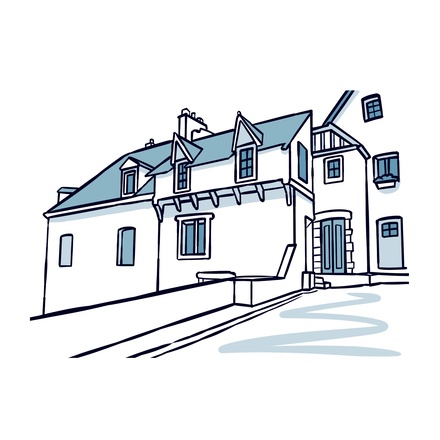
Strolling through the streets of the Pollet district is the best way to discover the old traditional heart of Dieppe. Located on the right bank of the Colbert Bridge, this area was already bustling in the Middle Ages, since fishermen used it as a base for their traditional dwellings
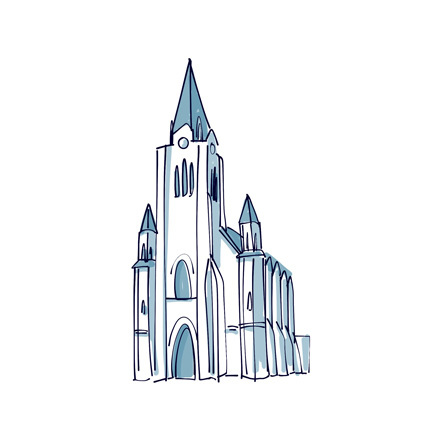
As you can read on the signs hanging from the low wall on the left, the Notre-Dame de Bonsecours chapel is not far away. Though you can spot its outline from the Henri IV quay and the Hâble quay, it's highly recommended that you make the trip up to the chapel

Once you've reached the waterside and turned your back on the traffic, you'll be able to enjoy one of the most beautiful sights of your visit to Dieppe. The numerous outlines of moored boats can be seen directly in front of you, against the backdrop of the famous Henri IV quay
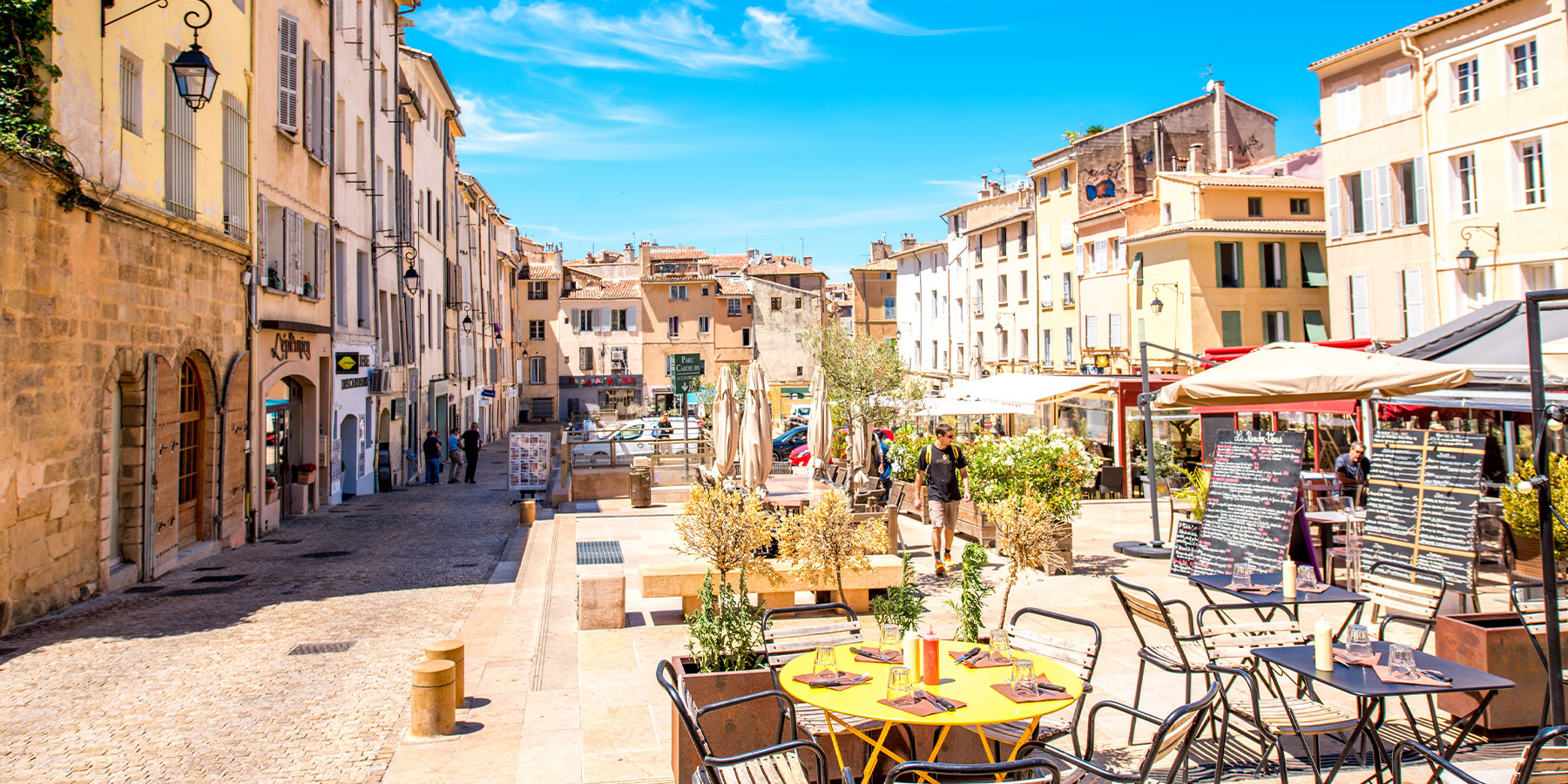
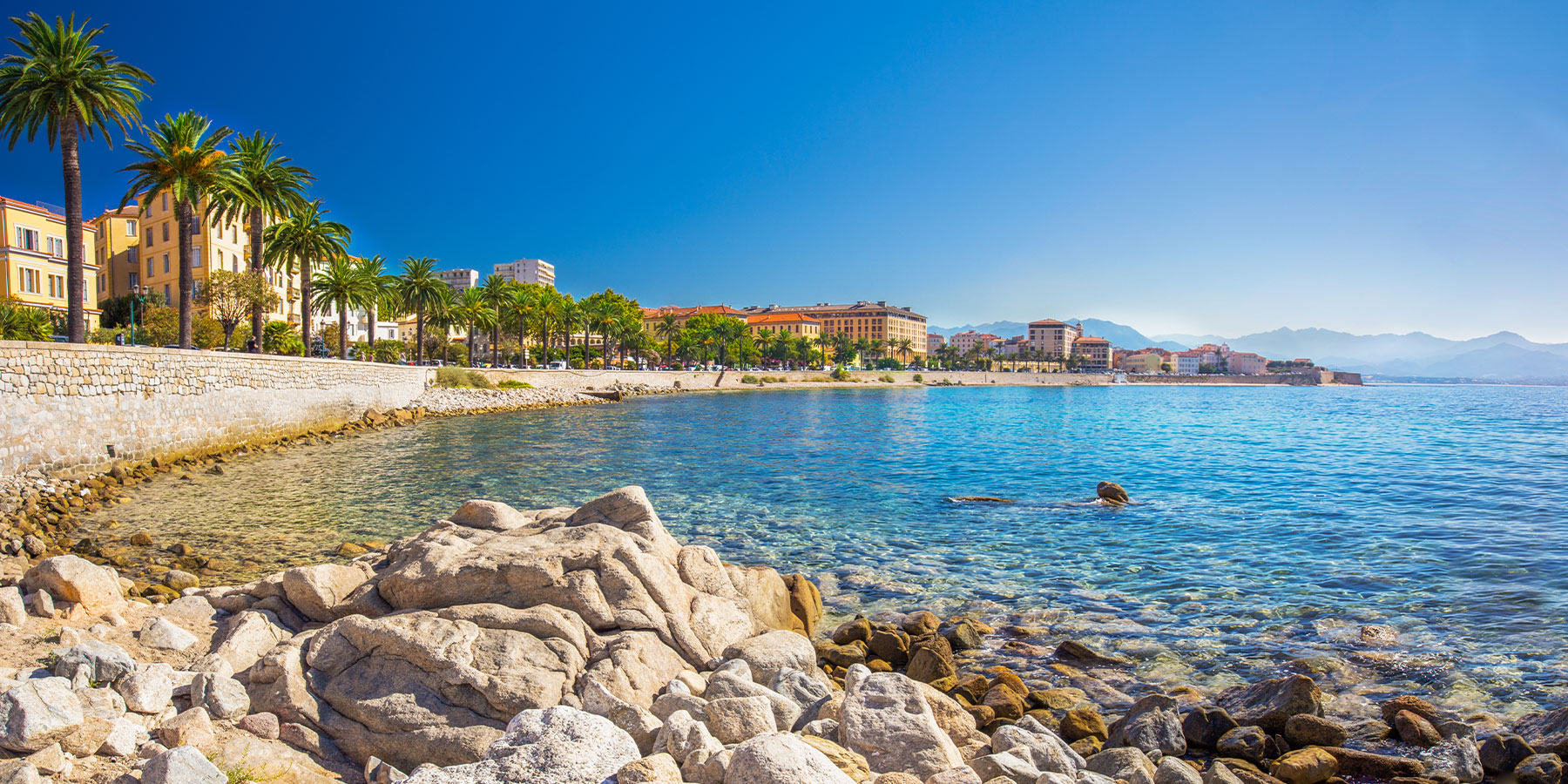
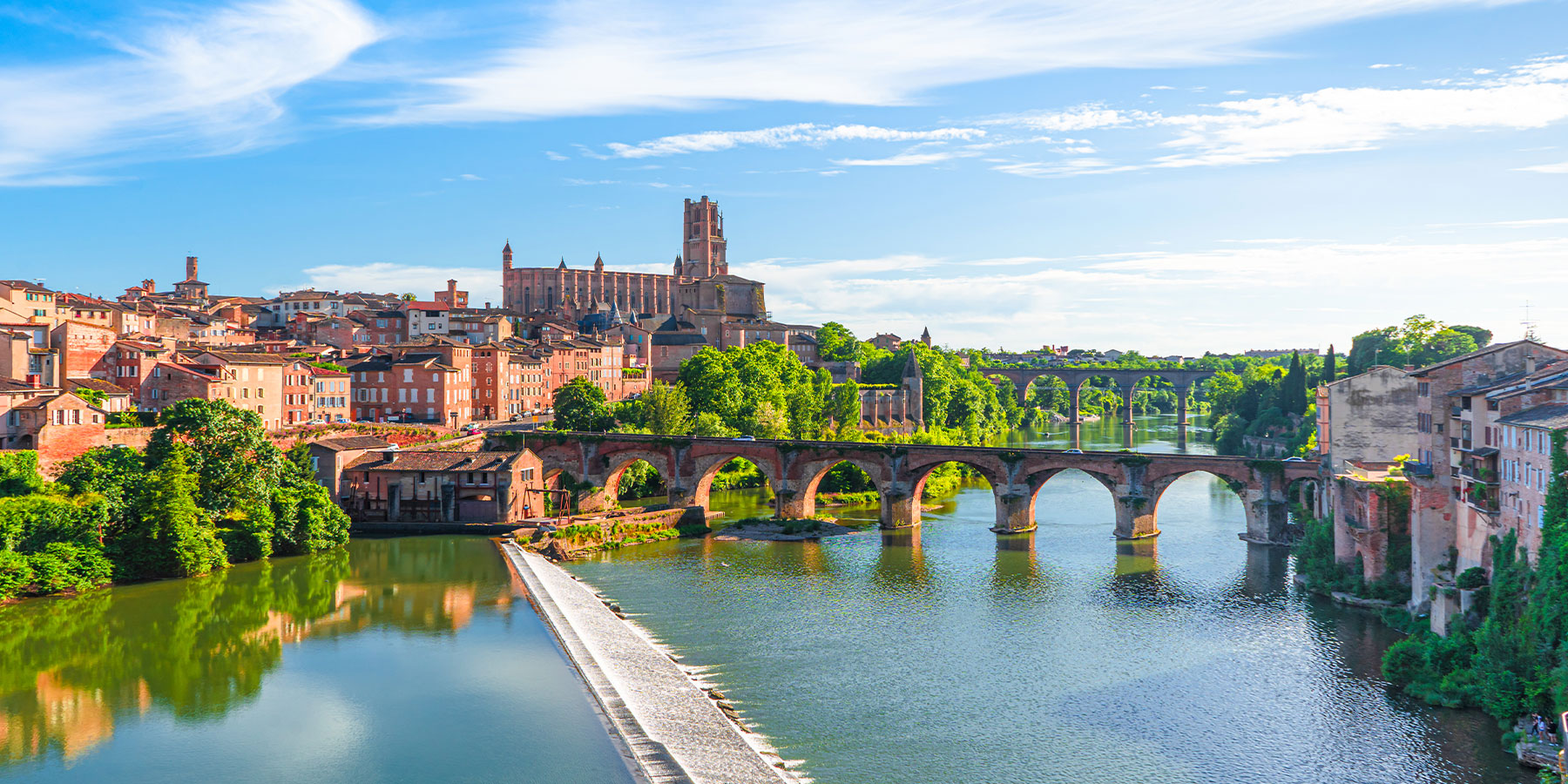
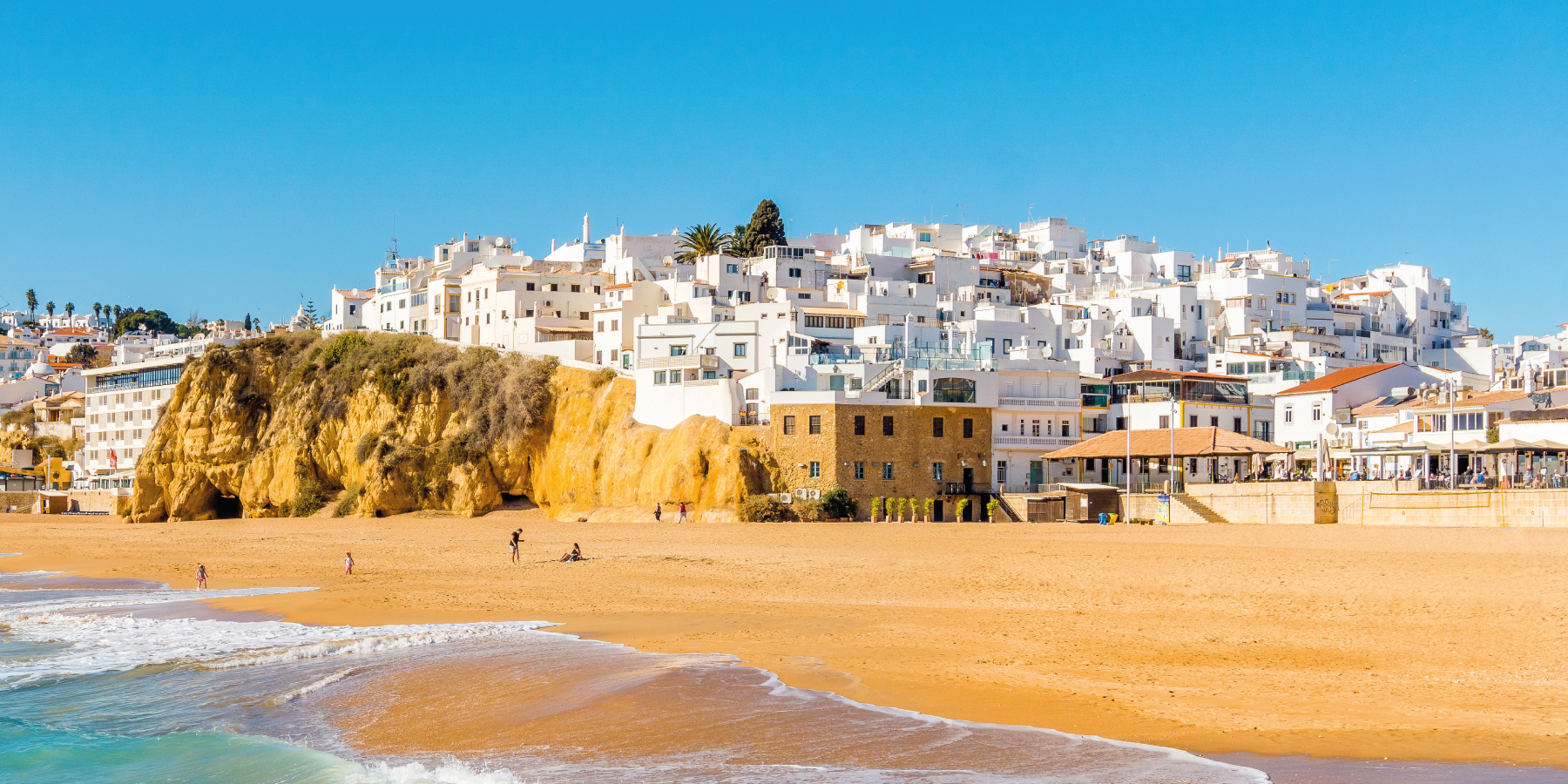
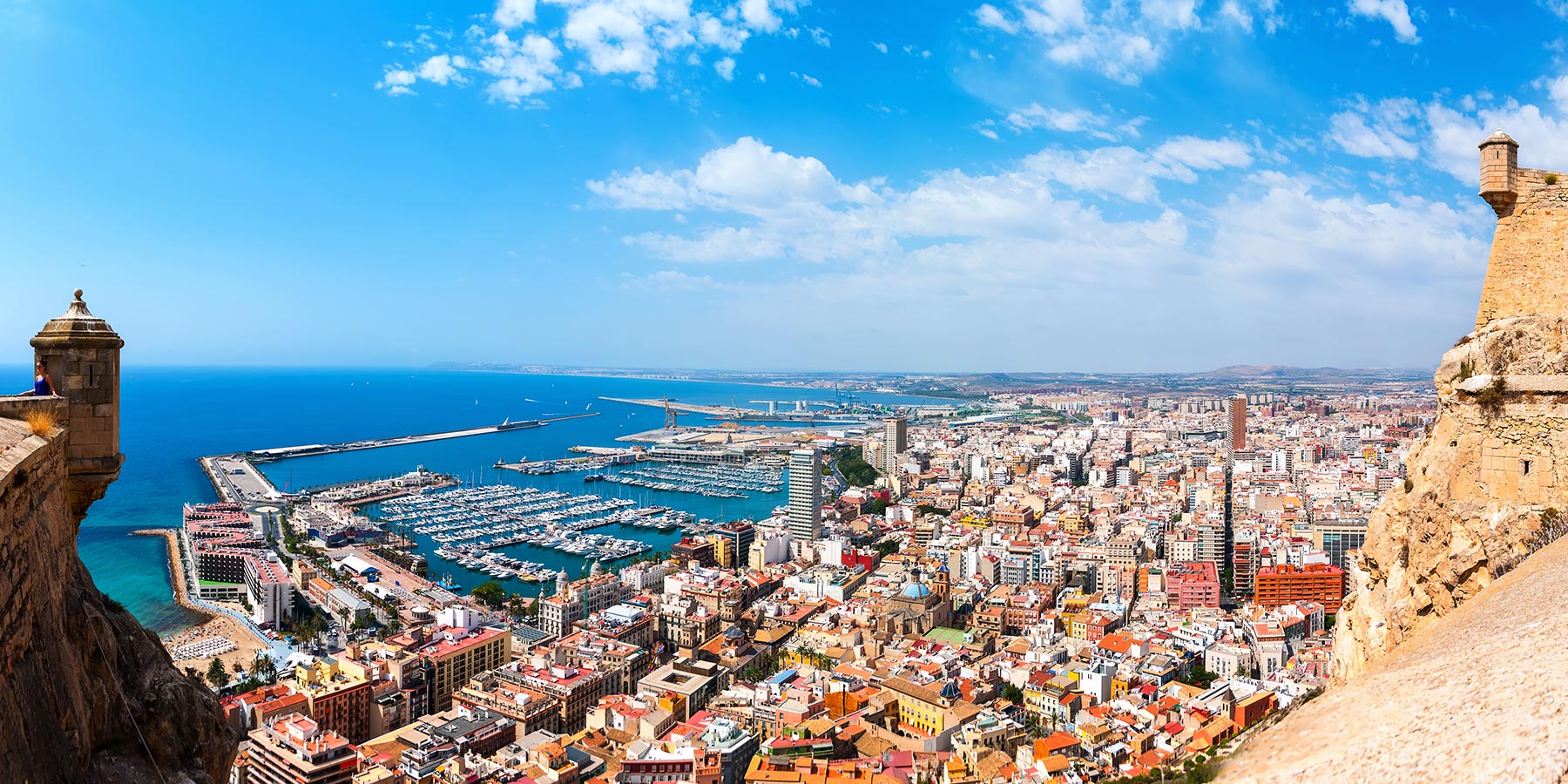

Here, you'll find a remarkable row of Corsair houses. After the bombing in 1944, they were all reconstructed to their original designs.
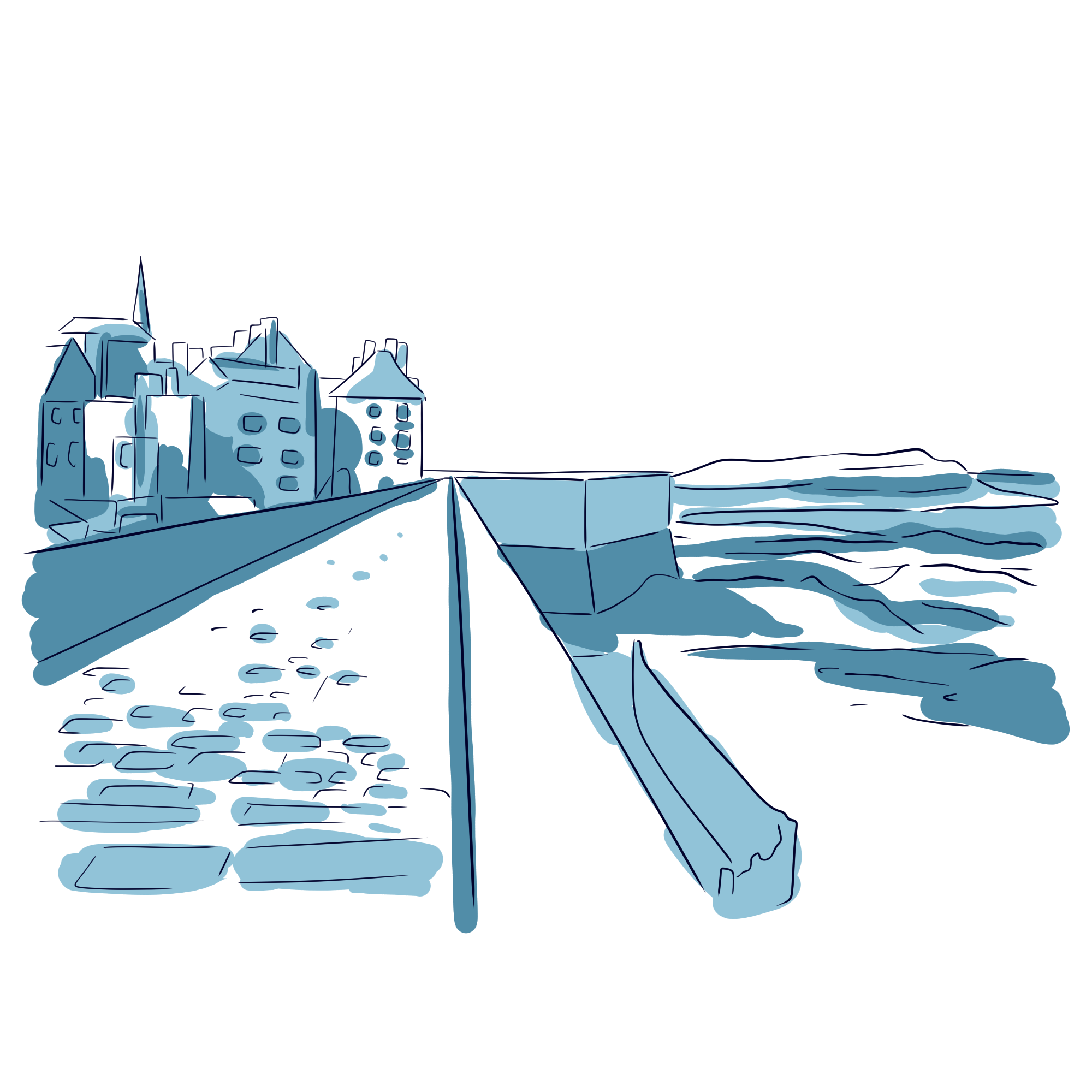
Now, you've reached Saint-Louis Bastion, named in honor of Louis XIV. The houses surrounding the bastion were the only ones spared by the bombing in 1944.
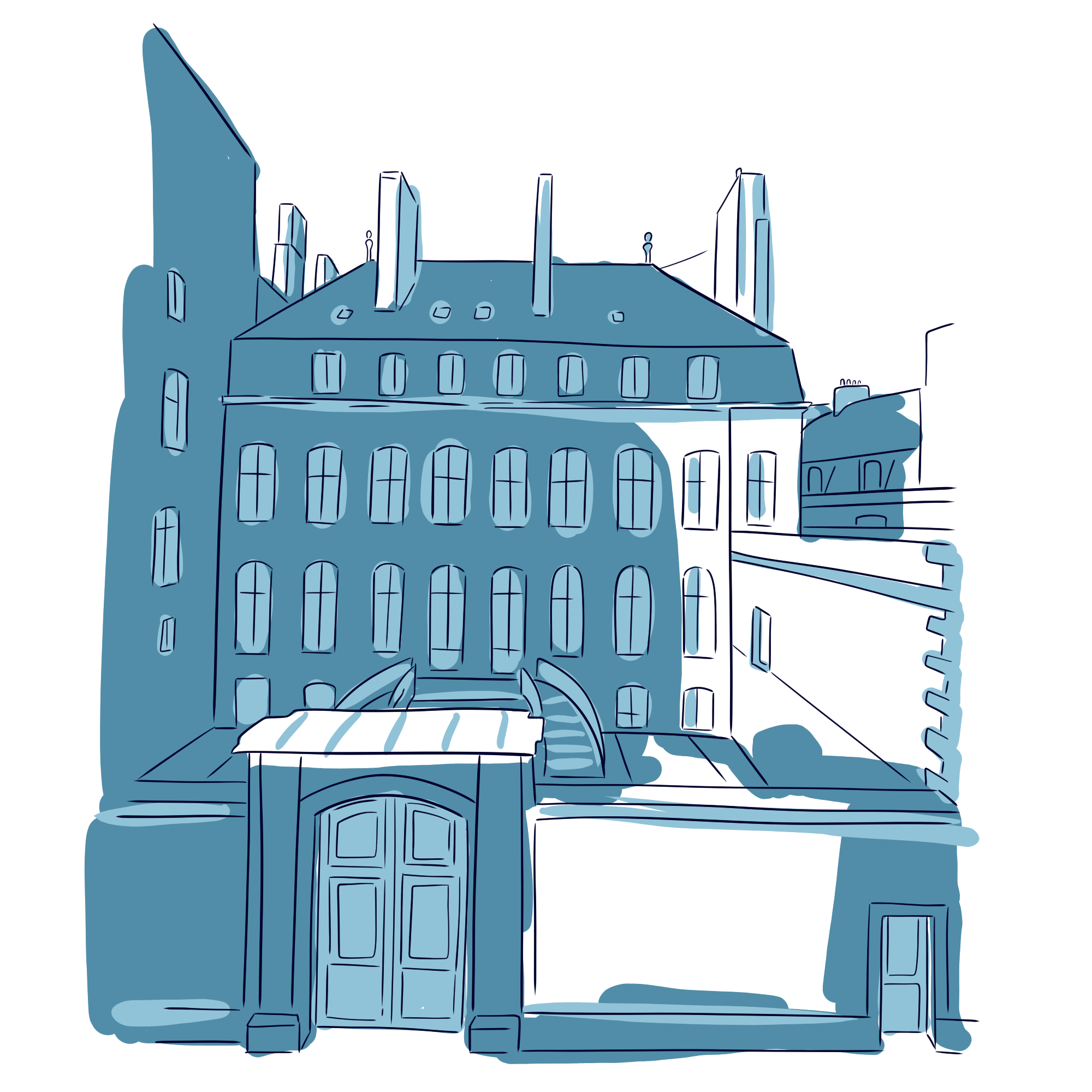
Next up, you'll pass by the renowned House of the Corsair, listed as historical monument! It's among the few remaining shipowner houses.

This beautiful closed bridge crossing the street is part of the remains of the old convent of the Récollets. The Récollets brothers were part of a reform movement within the Franciscans.
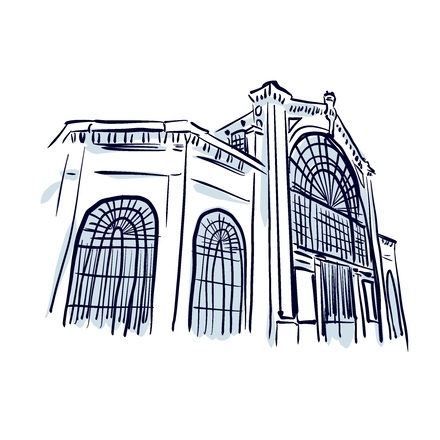
Here we have the lovely building with its impressive glass dome and metal framework known as the "Halle au Blé," or the Wheat Covered Market.
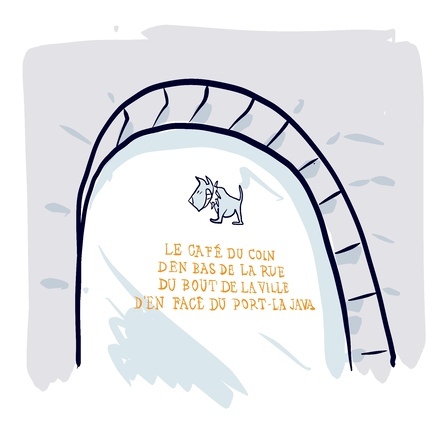
That’s a rather original café standing before you. If its exceptionally long name makes you smile, or this “historical and hysterical” mention intrigues you : allow me to tell you a few words about this corner café.
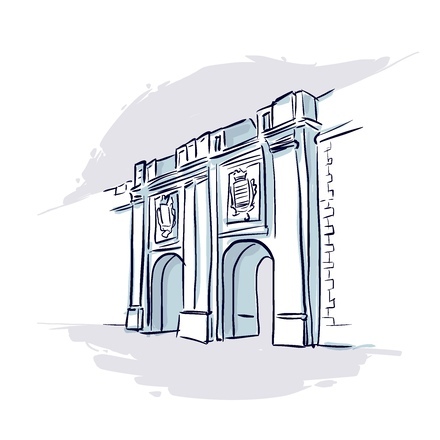
Now, let's go over to Chateaubriand Square, where you'll be greeted by stunning townhouses and a plethora of cozy cafes and restaurants.
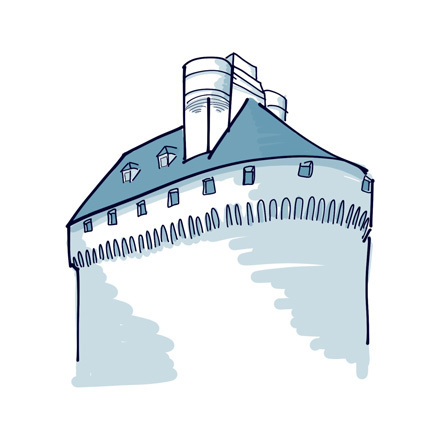
Check out this castle overlooking the ocean! What makes it stand out is that it was built in several stages under various governors, yet always with the same goal : ensuring the guardianship of the Dukes of Brittany over the city of Saint-Malo.
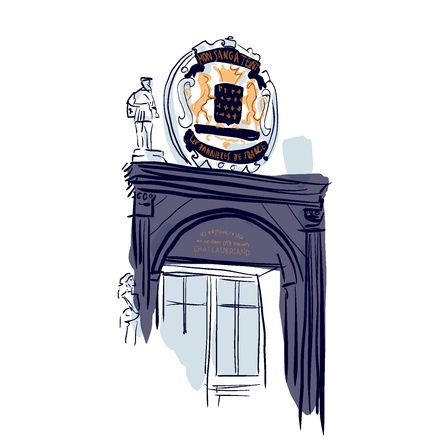
Have you noticed that everything around here is called "Chateaubriand"? The square, the street, the cafes, the hotels...
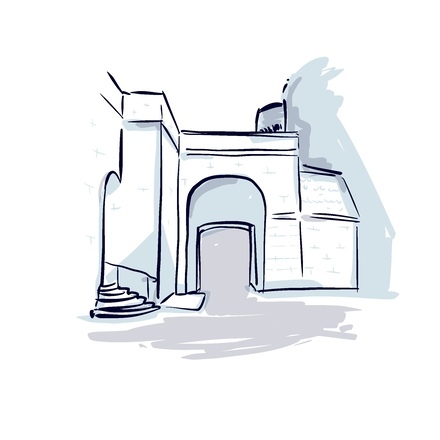
Let's talk about Saint Thomas Gate, built in 1740 during the city's expansion.
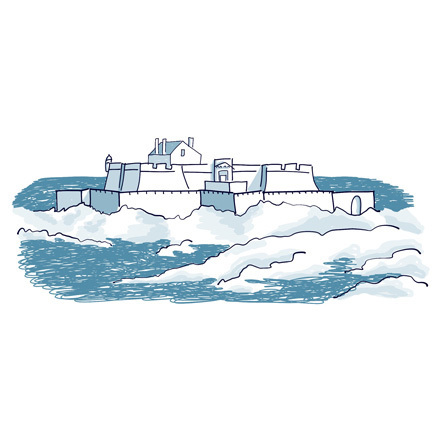
Welcome to the rocky headland where the National Fort proudly stands!

From National Fort, you can enjoy a fantastic panoramic view of Saint-Malo, overlooking its ramparts and fortified castle.
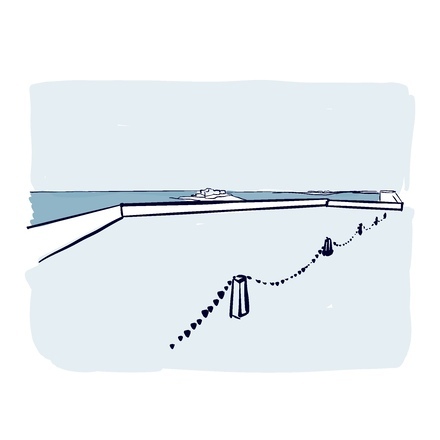
The bastion you've reached is called "Fort La Reine," which translates to "Queen's Fort.
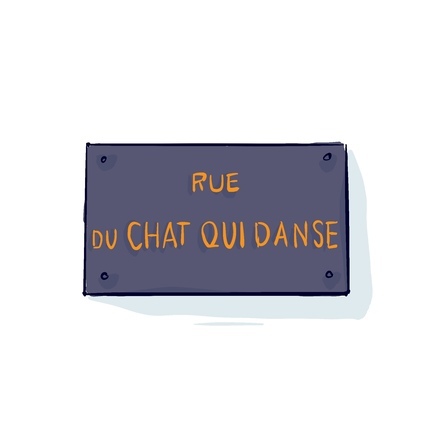
Street names in Saint-Malo often carry fascinating tales. “Rue du chat qui danse” for example, meaning “The Dancing Cat street”, refers to the most famous English attack.

Built at the corner of the ramparts, on top of the rocky headland, Bidouane Tower is shaped like a horseshoe, as any respectable artillery tower would be in the 15th century.
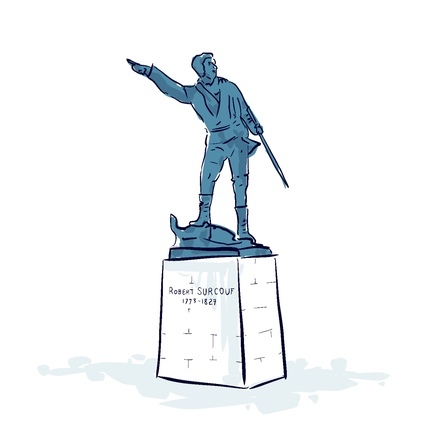
Enjoy the beautiful Place du Québec with its white and blue flags floating in the French sky, and admire the view over the bay.
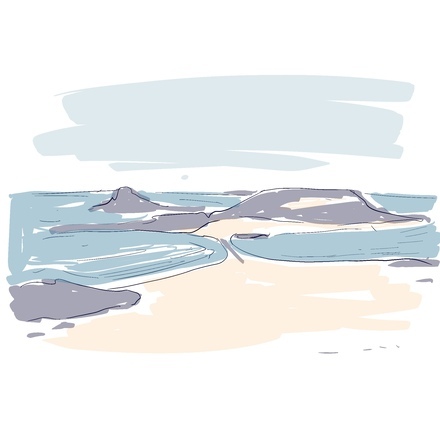
Watch out for the tides, I ’ve saidit and I'll say it again: watch out for the tides!
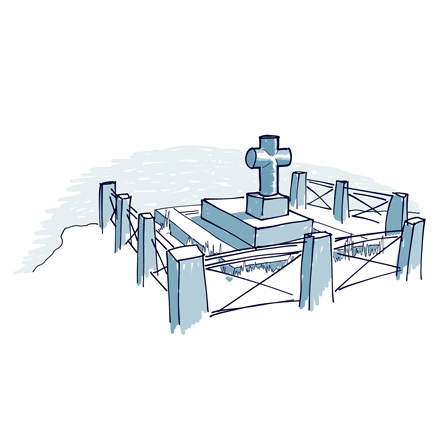
Respecting his wish to be buried here in order to continue, I quote, "his conversation with the sea," Chateaubriand's grave, simple and without a name, lies with only the epitaph: "A great French writer wished to rest here to hear nothing but the sea and the wind.
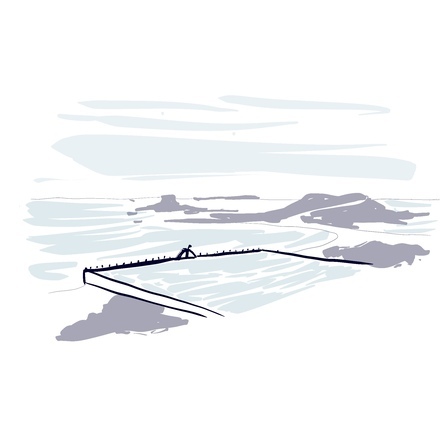
The natural pool you see below in front of you is a powerful image of Bon-Secours Beach.
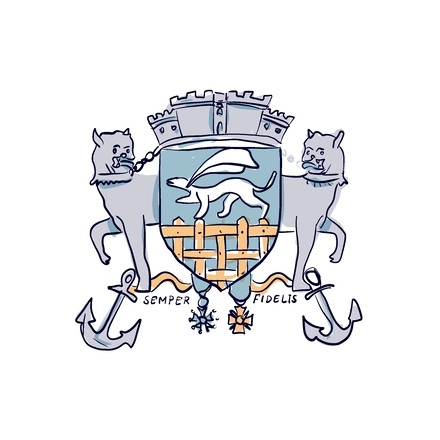
As you stroll past Saint-Pierre Gate on the ramparts, take a moment to admire Guet Square below.
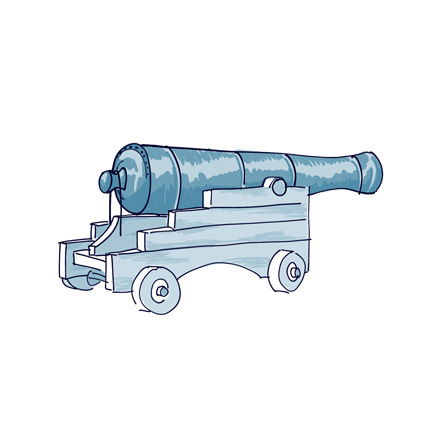
This bastion was built after a section of the rampart wall collapsed. It was named "Netherlands Bastion" because, during its construction, Saint-Malo was at war with the Netherlands.
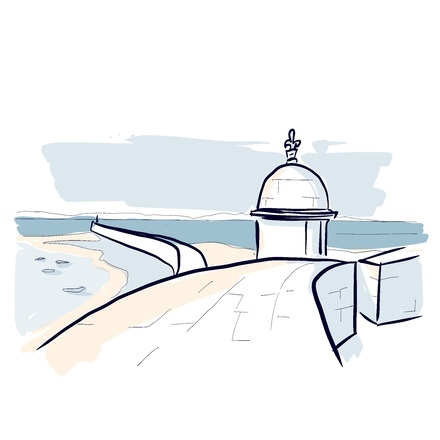
You've reached Saint-Philippe's bastion, which was constructed during the city's second redevelopment between 1714 and 1720.
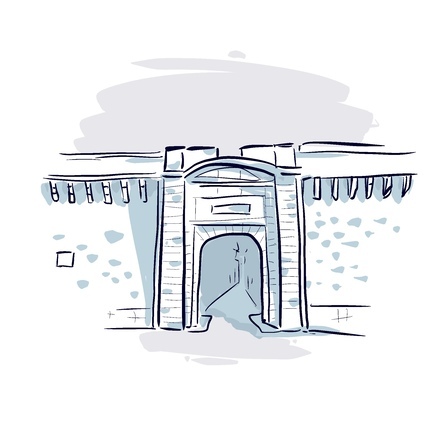
Taking a complete loop around the citadel allows you to uncover the secrets of the nine fortified Gates.
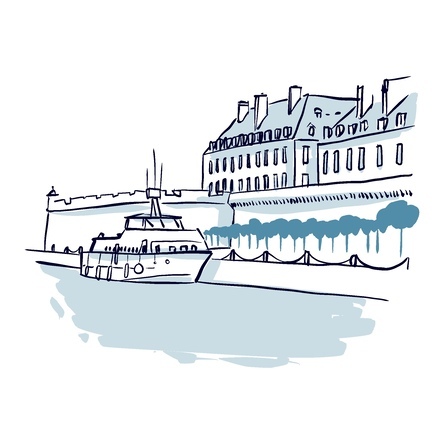
Across the bay of Saint-Malo lies the famous seaside resort of Dinard. It's famous for its grand villas from the "Belle Epoque" era, which was a time of remarkable economic and social growth in France between 1890 and 1914. Dinard is also known for its British Film Festival.
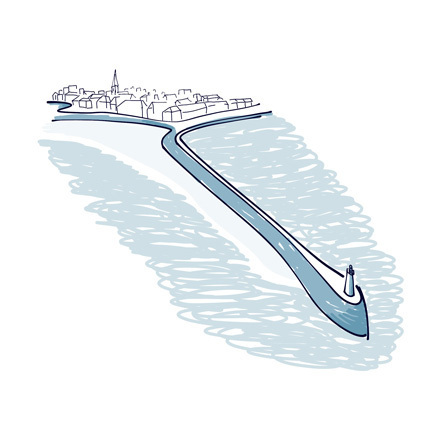
Head down to Môle des Noires beach, a cozy spot sheltered from the wind, right at the foot of the city.
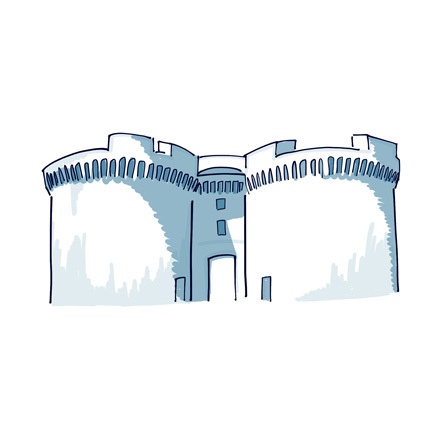
Here is the oldest fortified gate of Saint-Malo! Try to imagine that, at that time, people would arrive at this gate by boat!
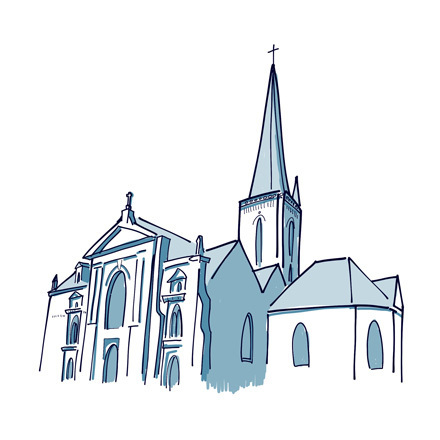
Here you are in front of the Saint Vincent Cathedral, built during the 12th century.
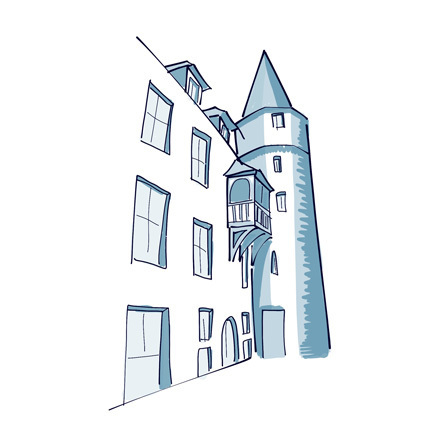
Here you can catch sight of the house, known as Duchess Anne’s! One can recognise it easily thanks to its distinctive spiky tower and time-worn balcony.
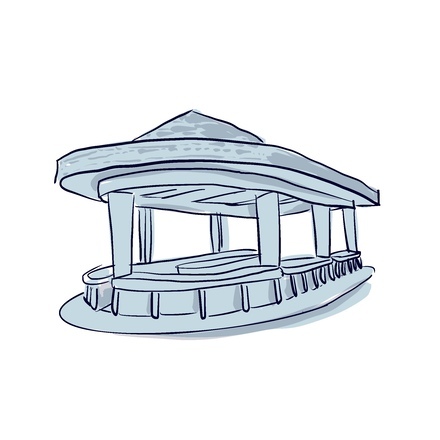
Here you are at the "Marc'had Pesked" - pardon my Breton - here's the Fish Market!

You are now in Singel Square, and no, you’re not dreaming— there really is a massive flower market in front of you! But this isn’t just any market—it’s a floating one! Not to worry though, you probably didn’t even notice it as it is securely
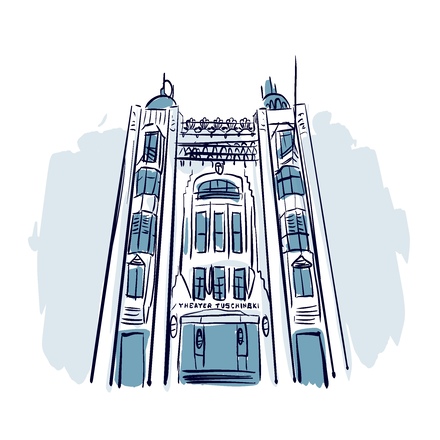
Built in the 1920s, this peculiar building is both a cinema and a theater. Its architecture takes inspiration from Art Nouveau, Art Deco, and the Amsterdam School, making it one of the most distinctive cinemas in the city.
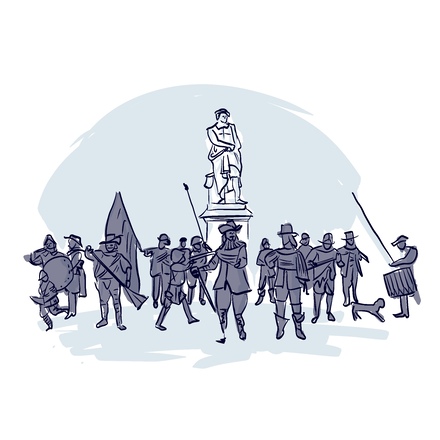
Attention all art and painting enthusiasts, welcome to Rembrandt Square! Does the name ring a bell? That is because Rembrandt is one of the greatest painters of all times, especially from the Baroque movement.

By crossing this beautiful bridge near the opera house, we are now entering Waterlooplein, the former Jewish quarter of the city. Here, you'll find the country’s oldest flea market, the house where Rembrandt used to live, and the National

Formerly a Catholic city, Amsterdam then became a Reformed city in 1578, transforming Catholic churches into Protestant ones. This church welcomed worshippers for centuries, until 1929. It even caught the attention of the famous
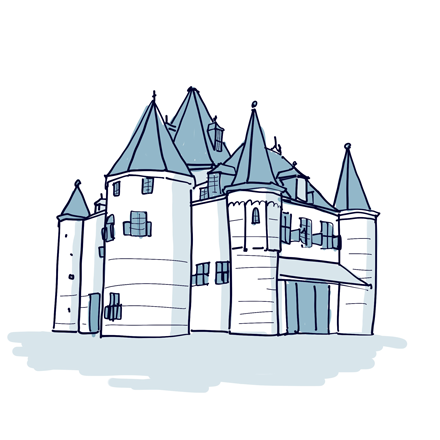
The picturesque building before you is De Waag. It is famously known as the place where Rembrandt painted his renowned masterpiece, The Anatomy Lesson of Dr. Tulp.
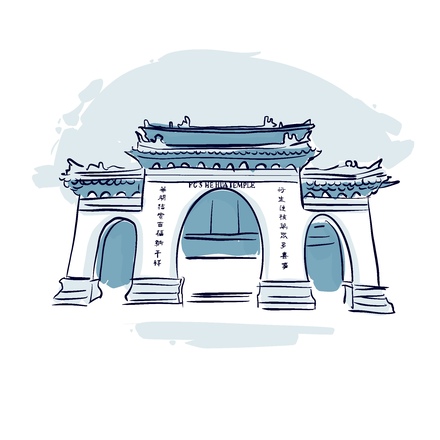
No need to tell you that you’re in Chinatown—this temple speaks for itself! Built in 2000, this is the largest traditional Chinese-style Buddhist temple in Europe. It is dedicated to Guanyin, the bodhisattva of compassion and one of the rare
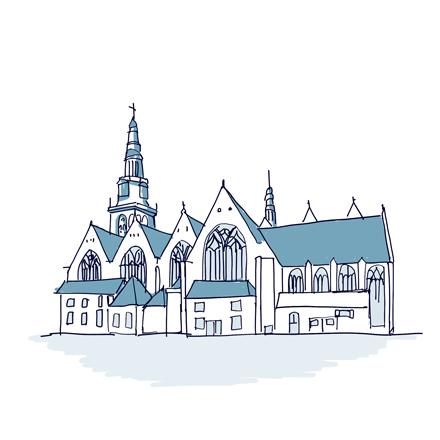
This is the oldest and certainly one of the most beautiful churches in Amsterdam! The Oude Kerk was built in 1302, originally as a small wooden chapel. Hard to believe when you see its impressive size today, right? Over the centuries, it

You are now entering the most visited district in the city. Located right in the center, everything you’ve heard about this area is true—here, eroticism and sexuality are openly displayed, with prostitution being legal and accepted without any
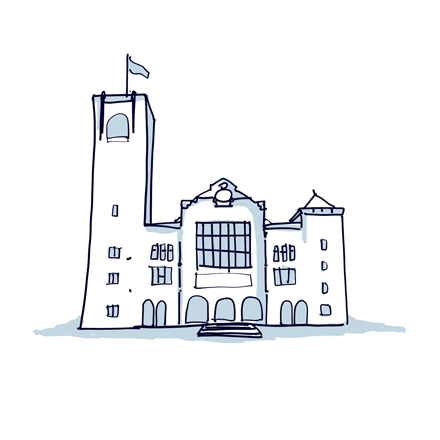
141 meters long, this building is one of the most impressive in Amsterdam: the Beurs van Berlage. Contrary to other buildings in the city, this one offers a new aesthetic with its red bricks and large size. It came into existence thanks to
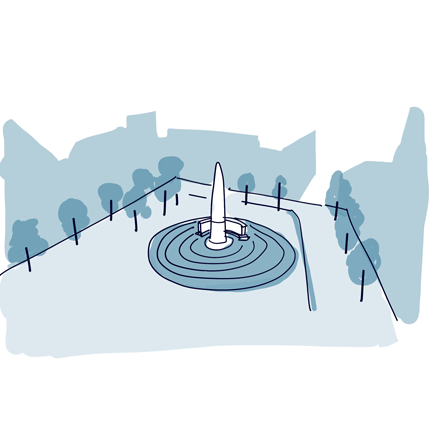
It is hard to know if it’s a square or a city itself! This is Dam Square, one of the most iconic places in Amsterdam. A regular passage for locals, it is also a favorite among tourists for its past and the beautiful historic buildings surrounding it.
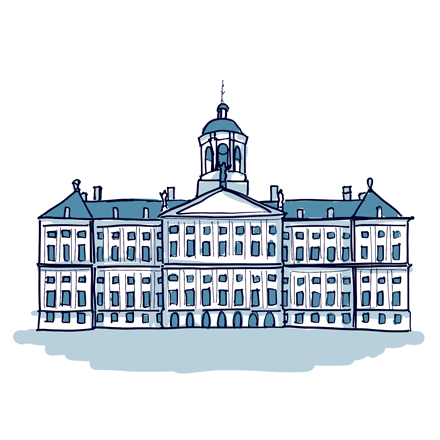
Ah, the Royal Palace. A symbolic monument of Amsterdam poudly standing on Dam Square. You simply cannot miss it! Does the name Napoleon Bonaparte ring a bell to you? Well, it was his brother, Louis Bonaparte, who chose this
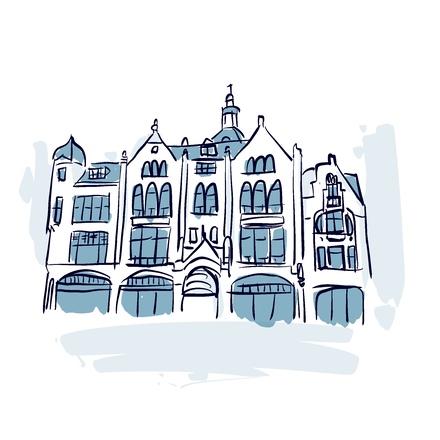
This is a neighbourhood you cannot miss! The Jordaan district came into existence in the early 17th century as a working-class area for laborers and artisans—hence the narrow form of its houses. Quite a contrast from the residences in the
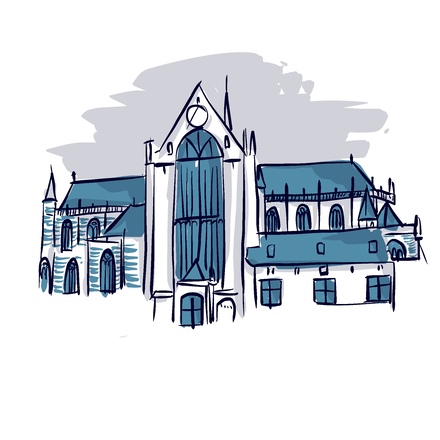
In front of you stands another of the city’s important monuments, right beside Dam Square. This church is called the Nieuwe Kerk—or in English, the New Church. Despite what its name suggests, this church isn’t as new as you think—it’s
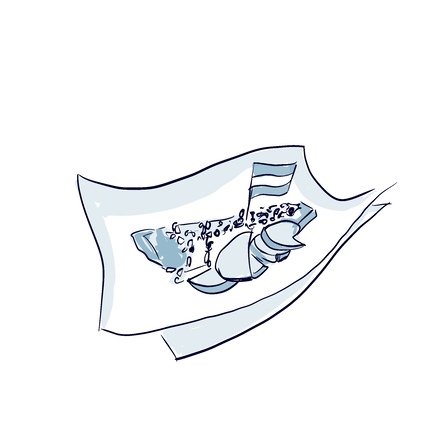
The Netherlands is known for its beers, no doubt about that. However, Amsterdam’s cuisine has plenty to surprise food lovers as well! Among the local specialties, one of the most intriguing is the raw herring sandwich, sold in

Let’s take a moment here by the canals to share some fascinating facts about the Netherlands’ capital. You may have noticed that Amsterdam is gradually banning cars from its city center… to make space for walking and, above all, cycling!
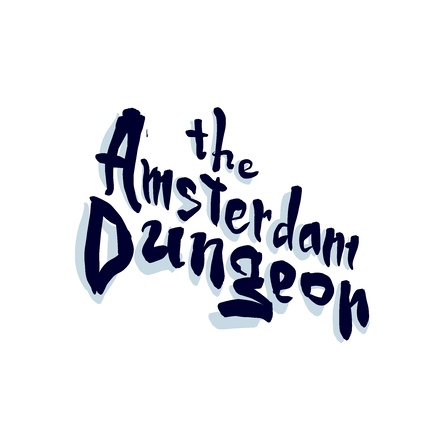
Ready for a thrilling experience? The Amsterdam Dungeon welcomes only the bravest souls for a journey into its horror-themed house, where terrifying shows unfold one after the other—something that thrill-seekers will love.
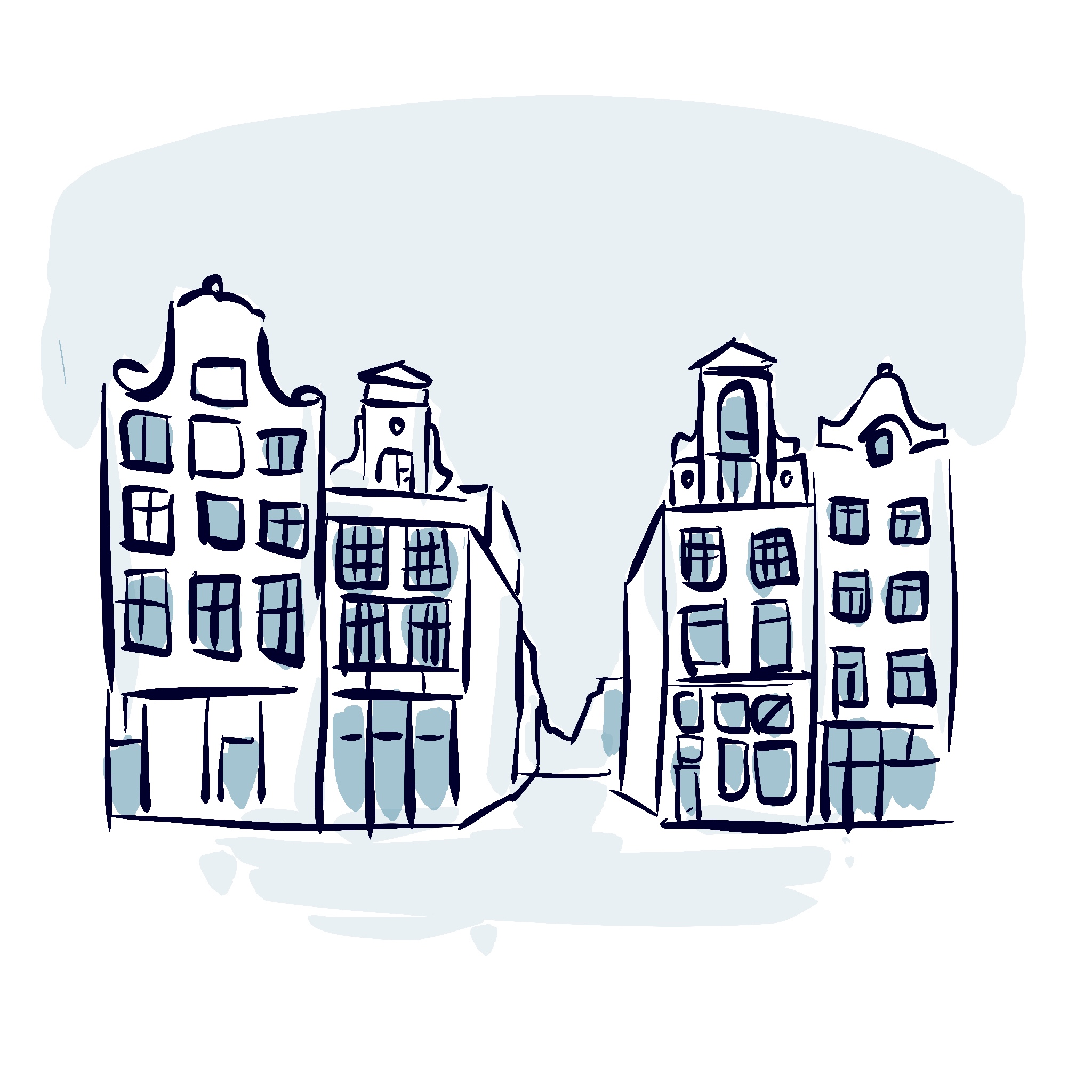
Surprising, isn’t it? This hidden courtyard, right in the heart of the city, is the Begijnhof of Amsterdam. Existing since the Middle Ages, this peaceful enclave was home for centuries to a community of Beguines—single Catholic women not

Here we are along the Herengracht canal, one of the most beautiful in the city. And for good reason—as every house along its banks once belonged to wealthy families. They were designed by architects during a period of economic growth
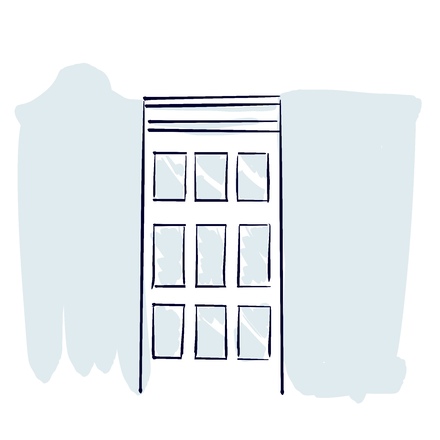
Symbol of the city, country, and resilience during the Second World War, this is where a Jewish teenager hid from the Nazis for more than two years. This person is no other than Anne Frank. She wrote a deeply moving diary during that
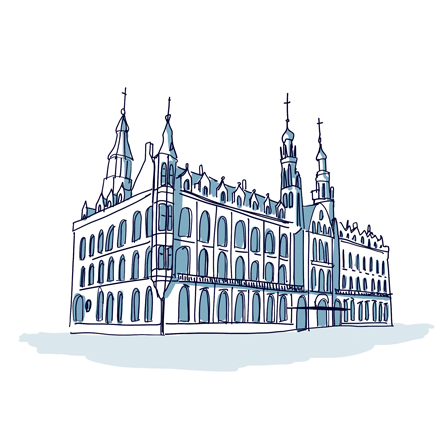
Here, you can admire the stunning Magna Plaza shopping center, built in the late 19th century in a Dutch Renaissance style. Its architect, a religious man, chose to apply church construction techniques to design this building.
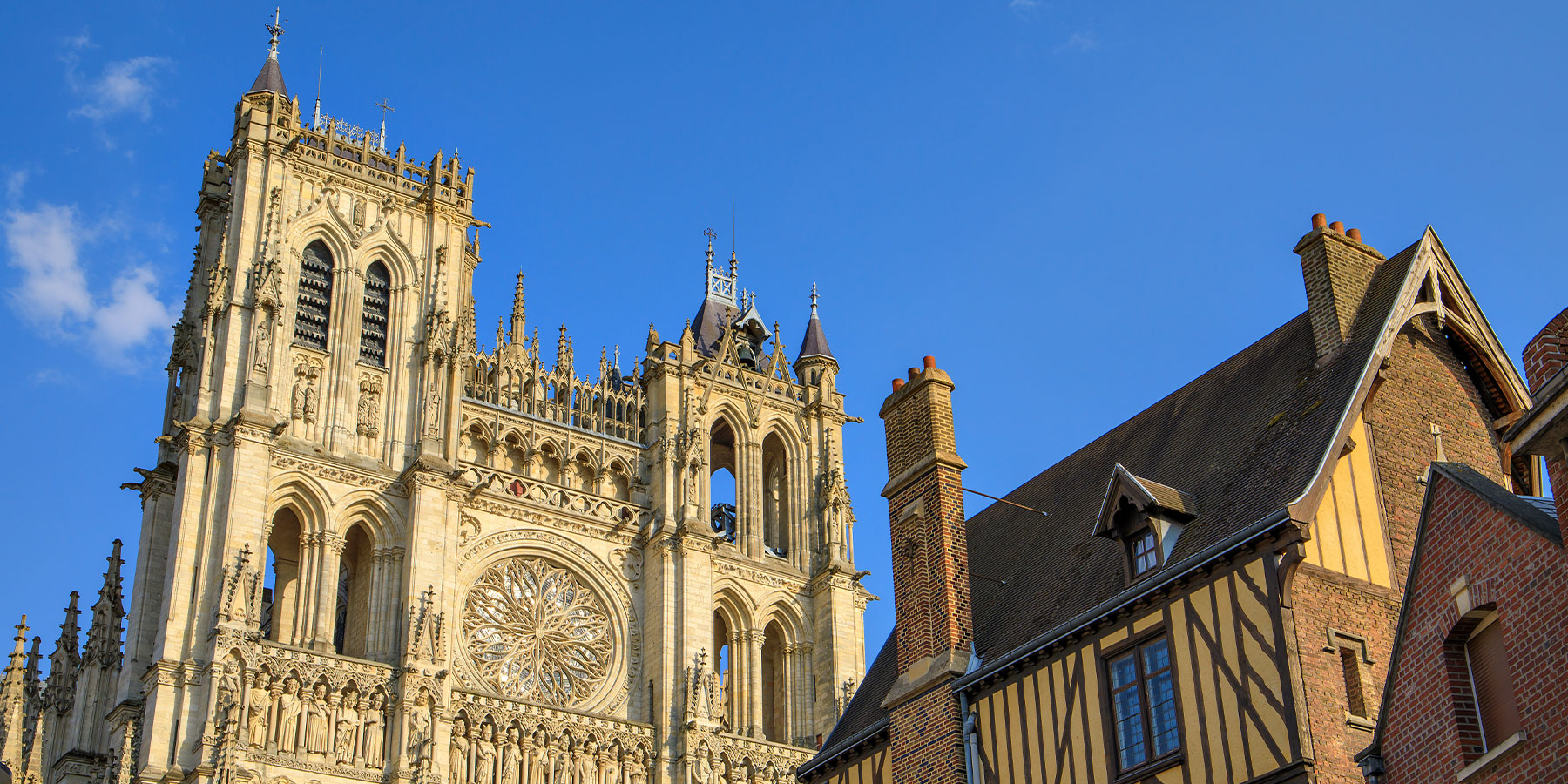
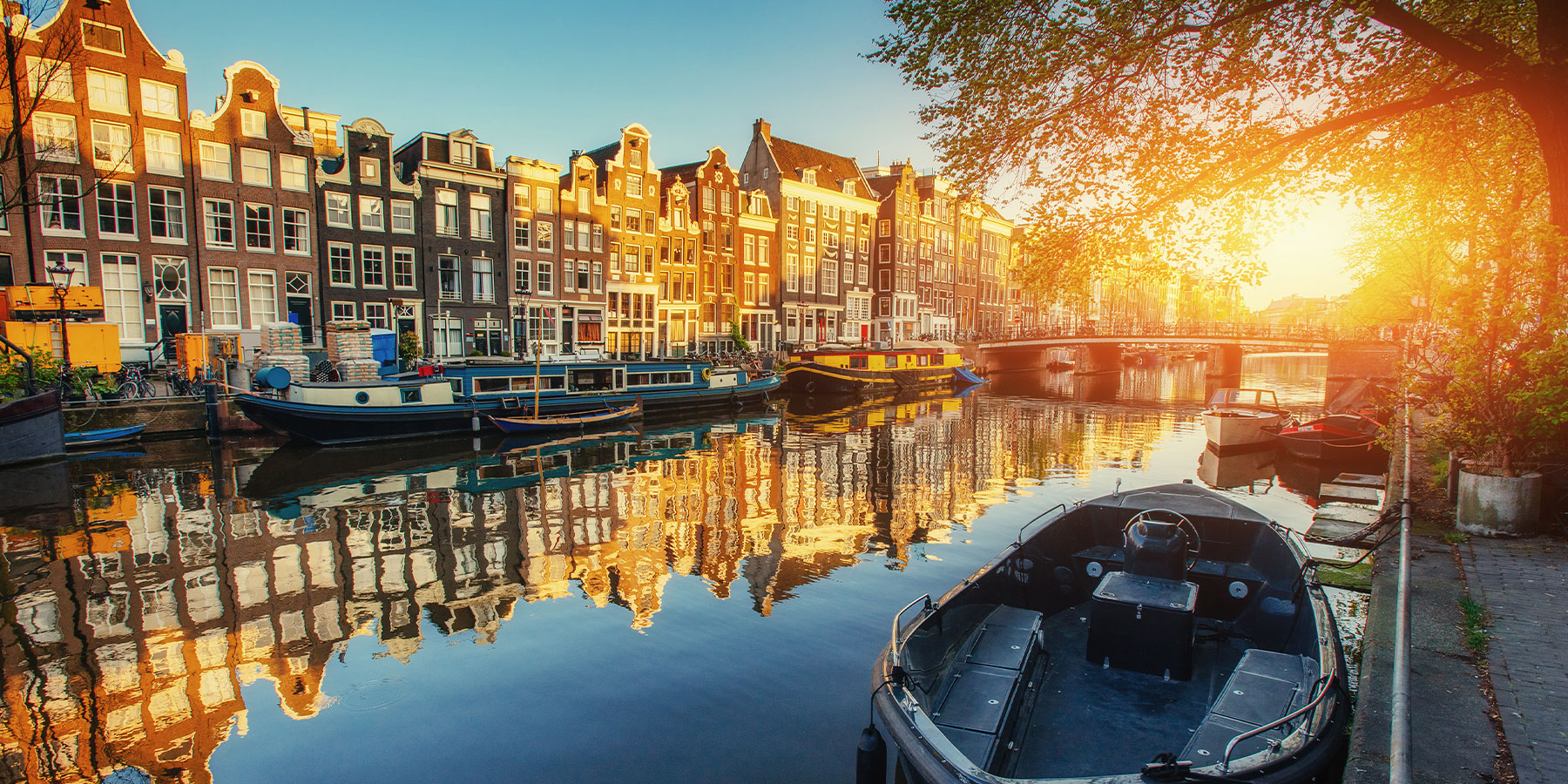
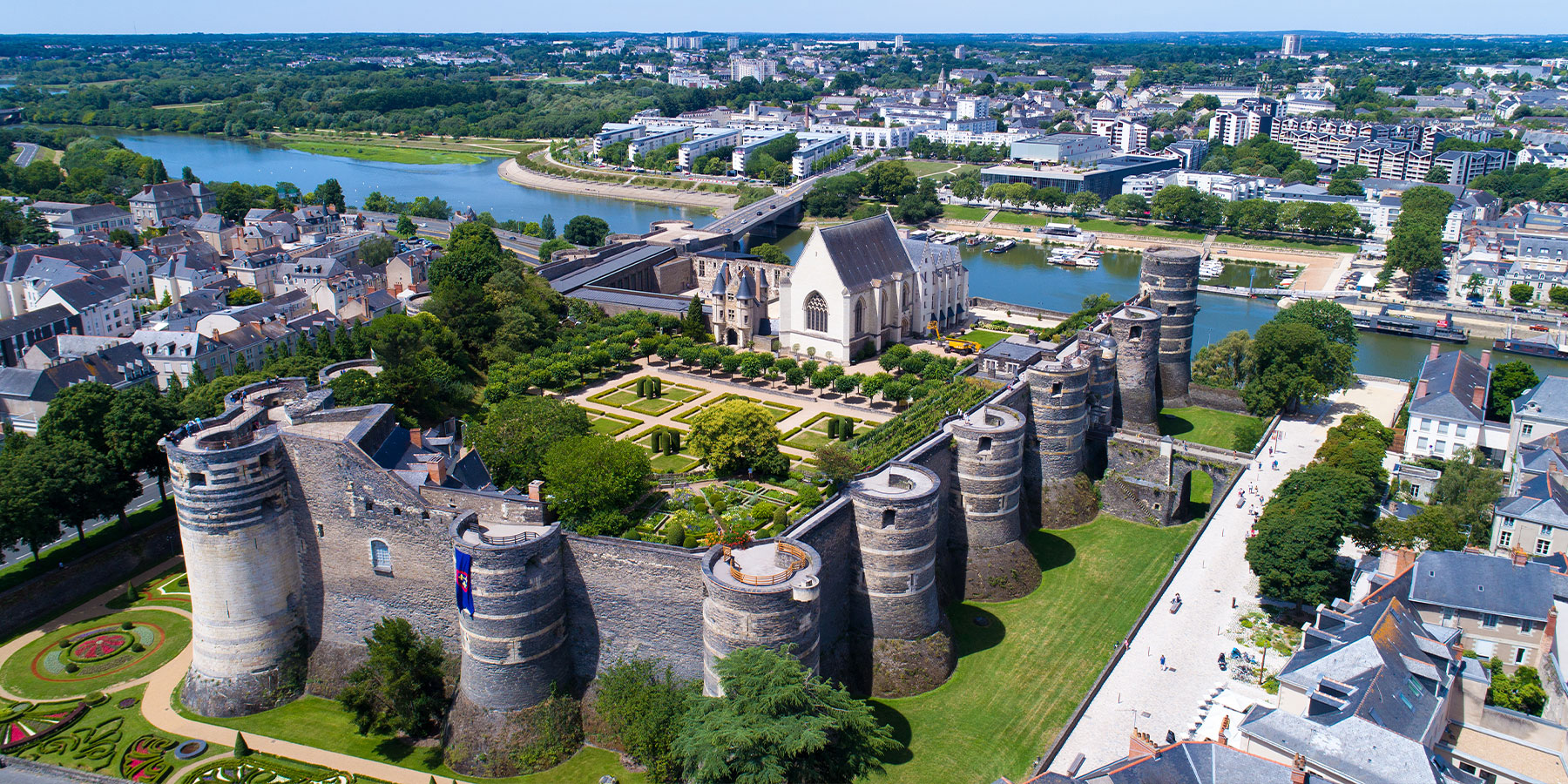

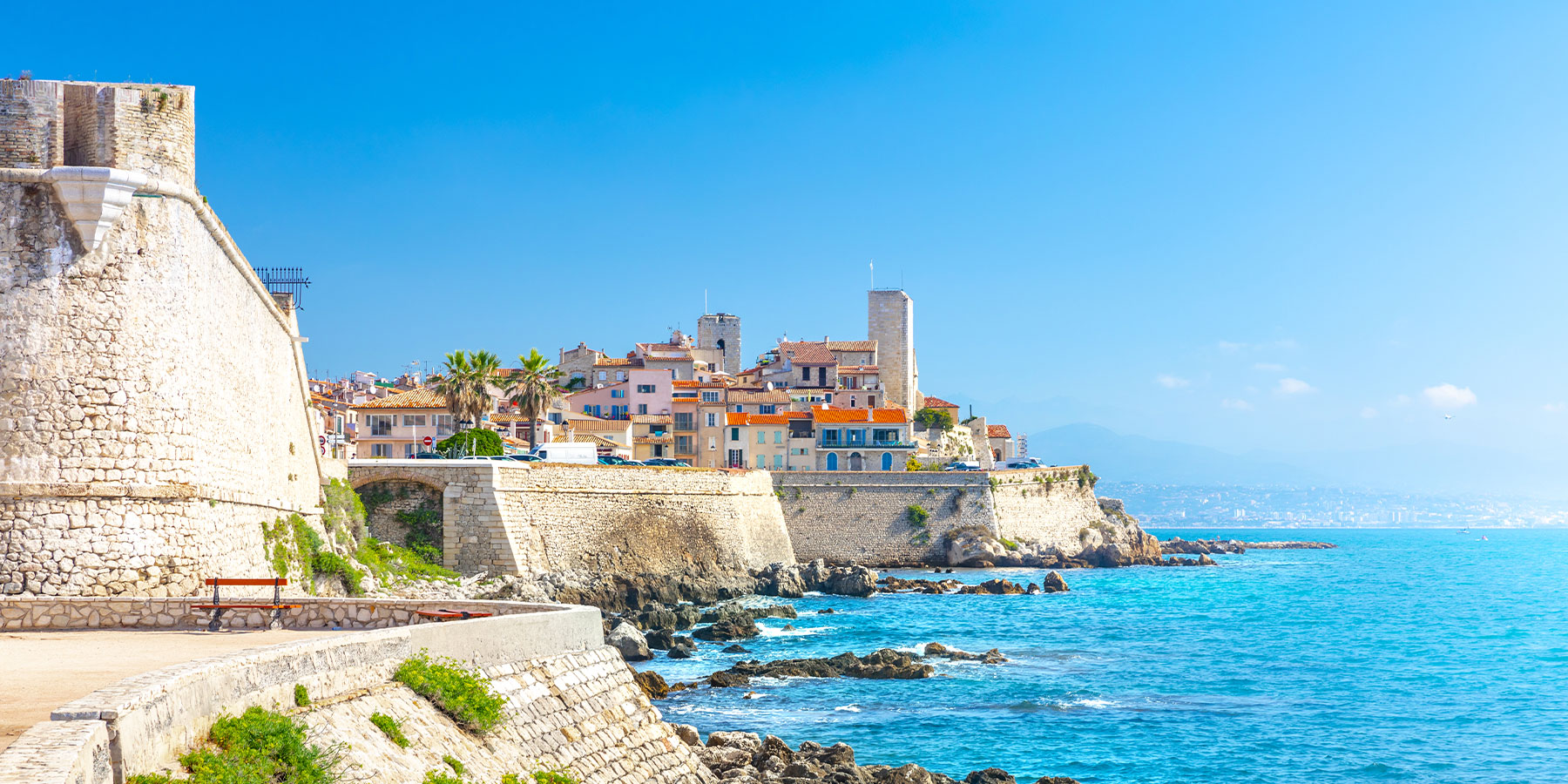

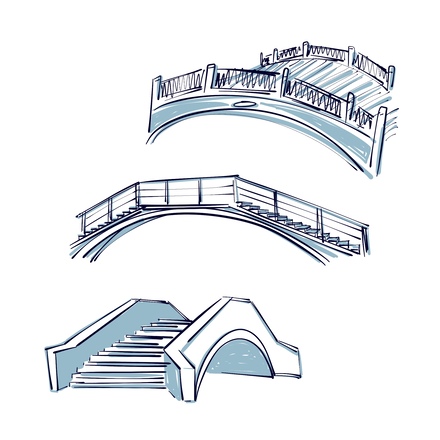
What would Venice be without its bridges? A question many have asked before... To know the answer, we have to go back in time. The Venice we know today is very different from what it used to be. That’s because there used to be no bridges at all.
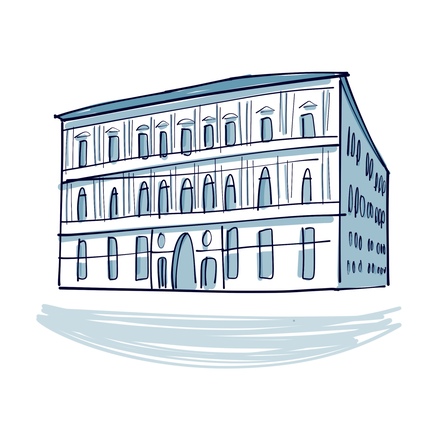
Now that you’re at the edge of the canal, look across to the opposite quay— notice the first three-storey building to the left of the bell tower. Built between 1748 and 1772 for a wealthy Venetian family, who it’s named after, the Palazzo Grassi has been one of Venice’s
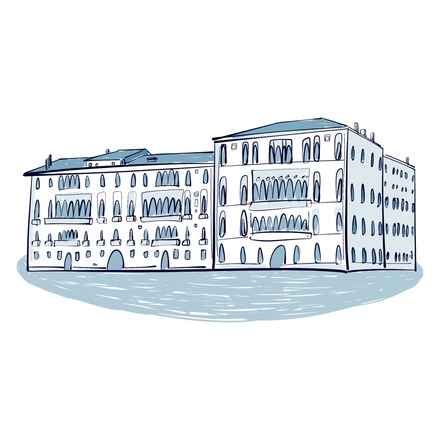
Once the home of Francesco Foscari, the 65th Doge of Venice, the former palace on your right has always been linked to education. In 1866, a Venetian Jew founded the Royal College of Commerce here, aiming to educate merchants and train secondary school

The Basilica dei Frari is the second largest building in Venice, and took over 100 years to build. Its striking 70-metre-high bell tower dates back to the 14th century. The basilica’s façade is made of brick, with traces of white and pink stone
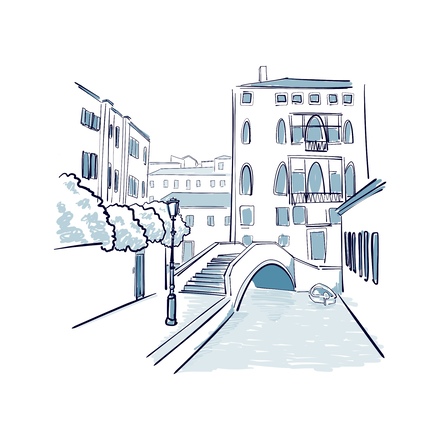
Venice is made up of six districts. The smallest, and one of the oldest districts is right beneath your feet. Welcome to San Polo! According to legend, back in Antiquity the city’s first inhabitants decided to settle here, as this compact area was saved from flooding.
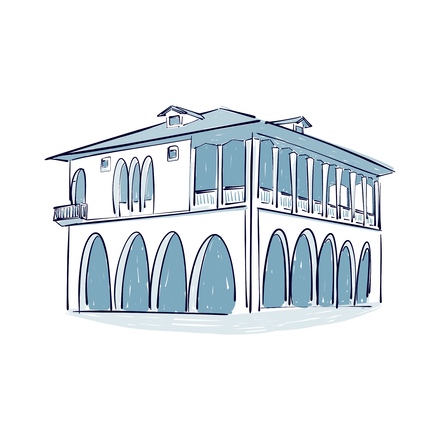
Full of colour and delicious smells, welcome to another classic Venetian spot. An area once bustling with textile merchants, spice traders, and all kinds of goods exchange, the Rialto Market has been an integral part of Venice’s identity since the 13th century.
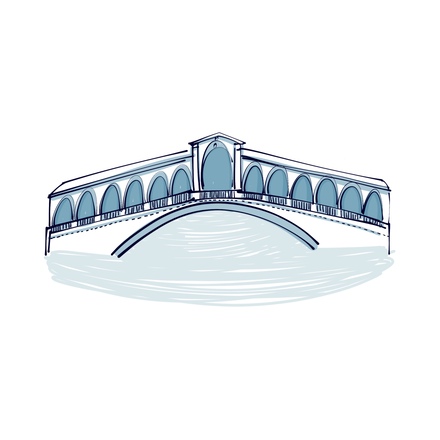
The star of Venice’s tourism adverts, the Rialto Bridge is an iconic symbol of the City of the Doges. But it hasn’t always been this famous... The monument has a very long and complicated history. Back in the 12th century, a series of boats were tied together
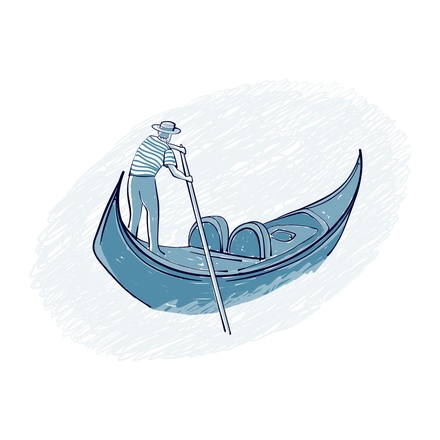
Venice is one of those places that you keep coming back to. Maybe it’s the romantic atmosphere, or the calm waters of its lagoon that charm you everytime. But how well do you really know Venice? Let us share a few juicy scoops about the city.
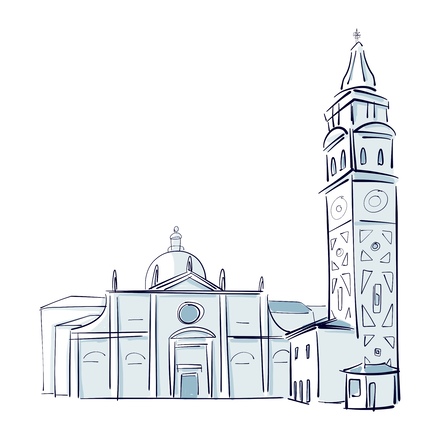
Venice is a city full of narrow alleyways, arched bridges, and town squares. But if you don’t want to offend the locals, you should know that St. Mark’s Square is the city’s only true square. The others are mistakenly called squares, or piazzas in Italian
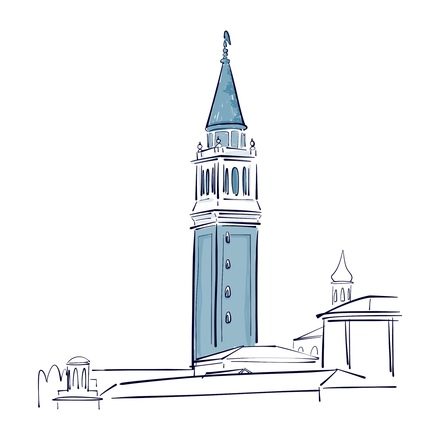
Standing across the canal, you can see a tower rising into the sky. It’s actually a bell tower called the Campanile of San Giorgio, located on the island of the same name. It’s the city’s third tallest tower, reaching 63 metres high,
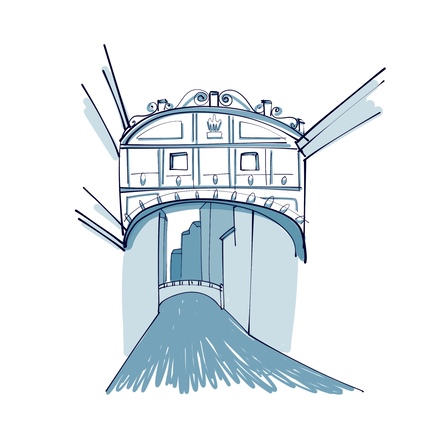
Everyone that visits this Venetian landmark becomes fascinated by its beauty, history, and legends. The Bridge of Sighs was built in the early 17th century, to serve as a passageway between the Doge’s Palace and the new prison on the other side.
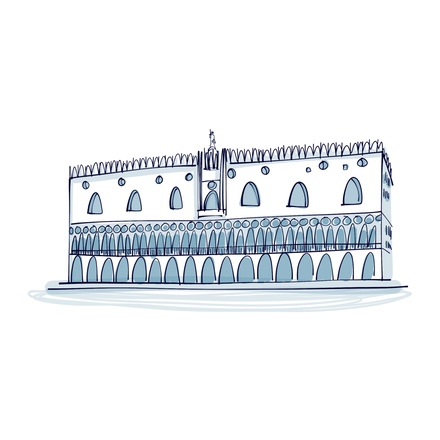
If there's one palace that surpasses all others in Venice, it's definitely the one on your right. Due to its prestigious past and sublime architecture, the Doge's Palace remains one of the city's most powerful symbols. Its history began in the 9th century
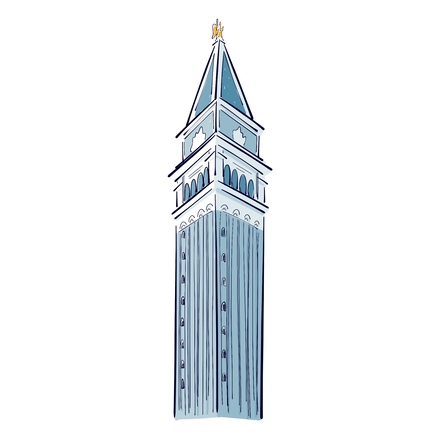
Nicknamed the “Master of the House” by Venetians, St Mark’s Campanile is one of the city’s oldest symbols. Its construction was first ordered in 888 by the 17th Doge of Venice. While the tower was being built, the ground collapsed, and the initial construction

Before you stands the “mamma” of all religious buildings in Venice. In search of prestige, the Doges wanted an elegant place to store significant relics. In 828, two Venetian merchants found the evangelist Saint Mark’s body hidden under pig carcasses in Alexandria
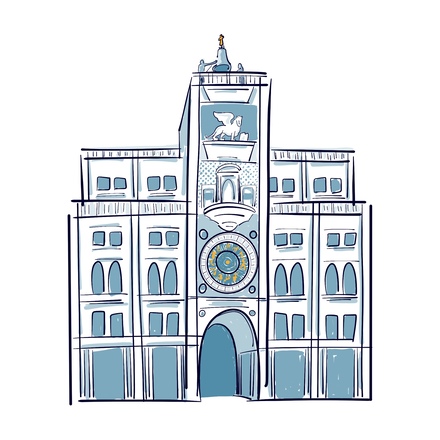
Standing on the left side of St Mark’s Square, St Mark’s Clock Tower is a remarkable blend of artistic and mechanical beauty. The Senate of Venice ordered its construction in the 15th century. They wanted to mark the passage between the city’s largest square to the narrow
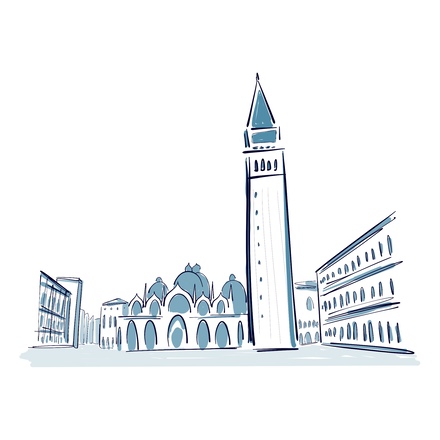
St. Mark’s Square is the heart of Venice, and known as the city’s only “grand” square. Its construction began in the 9th century, but its final layout wasn’t completed until 1177. Well... By layout, we mean its dimensions—180 metres long and 70 metres wide
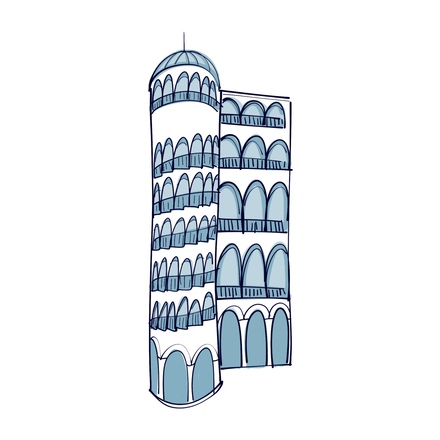
The Contarini del Bovolo Palace is a hidden gem tucked away among dead-end streets. Built around the 14th century, the building gained prominence when a branch of the Venetian Contarini family settled here.
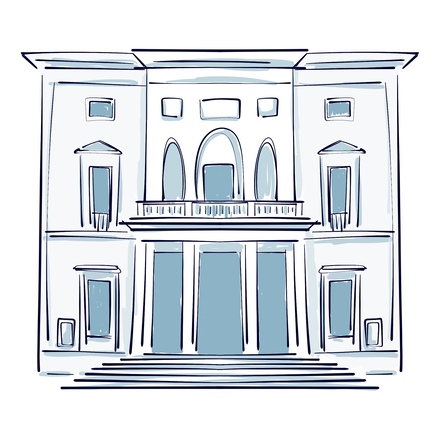
I’m sure you’ve heard that appearances can be deceiving... well, this is a prime example! One of the most beautiful opera houses in the world hides behind this modest neoclassical façade. The neighbourhood’s previous theatre was destroyed by a fire in 1773.

Welcome to another one of Venice’s many campaniles, Santo Stefano, standing at 61 metres tall. Its origins date back to the 12th century, but its current appearance is much more recent. Here's why! In the 15th century, the structure was ravaged by a devastating fire.
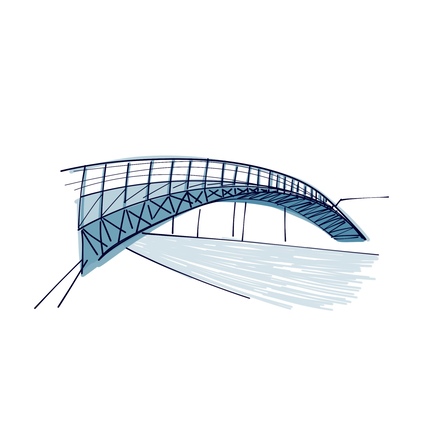
When it comes to Venetian bridges, they all look quite similar, except for this one! The Accademia Bridge is one of the four bridges spanning the Grand Canal, and was built by Austria. The neighbouring nation ruled here from 1848 to 1866, and gifted the city

It may as well be one of the most beautiful avenues in the world. Stunning churches and palaces line its waters, like trees lining a road. The Grand Canal is usually the first thing you’ll see in Venice, stretching four kilometres and cutting the city in two.
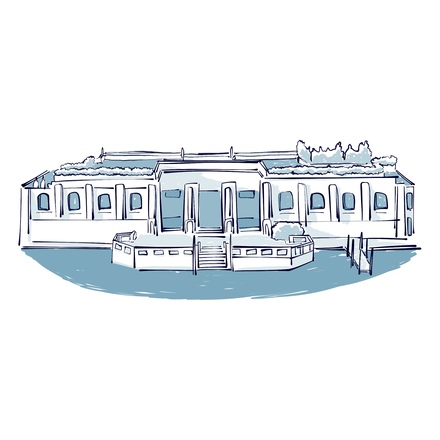
Hidden away from the centre and tourists, the Peggy Guggenheim Collection is one of Venice’s most important cultural landmarks. In the 18th century, this land belonged to the powerful Venier dei Leoni family. The family dreamt of building the most beautiful palace
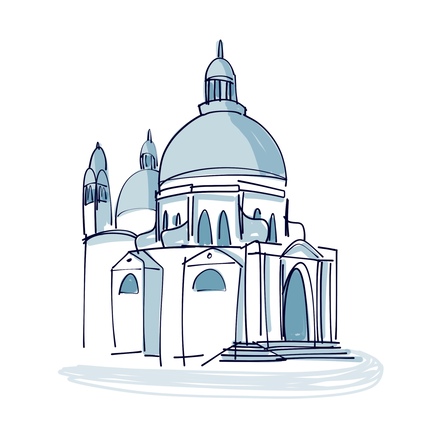
St Mark’s Square isn’t the only place in Venice with iconic landmarks... Located in the Dorsoduro district, at the southern end of the Grand Canal, the Basilica of Santa Maria della Salute is both symbolically and physically significant for Venetians.

Having reached the tip of the Dorsoduro district, you've also arrived at the Punta della Dogana. In the 15th century, ships docked right here for customs inspections. If the inspection passed, the chain blocking the canal would be lifted, and the vessels continued
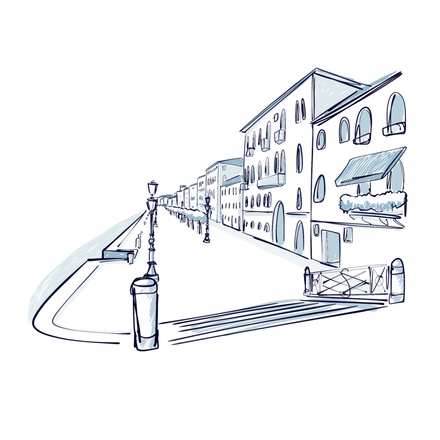
Welcome to Zattere. A charming and lesser-known spot, boats used to dock here to unload their timber cargoes. Back then, everything was built from this natural material — bridges, houses, and boats. Many wooden boats were, and still are, repaired in the workshops
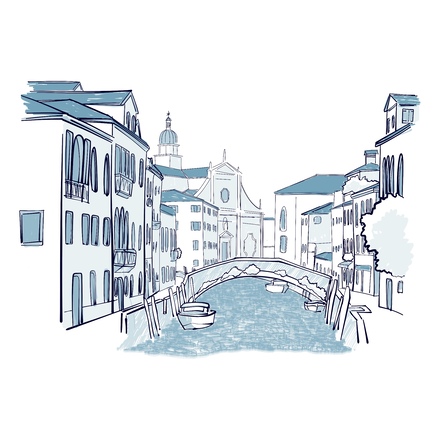
The southwestern part of the city is home to the Dorsoduro district – translating to "hard back". It takes its name from the firmer, more solid ground on which it was built. Although its art galleries and universities give it an artistic and cultural vibe,
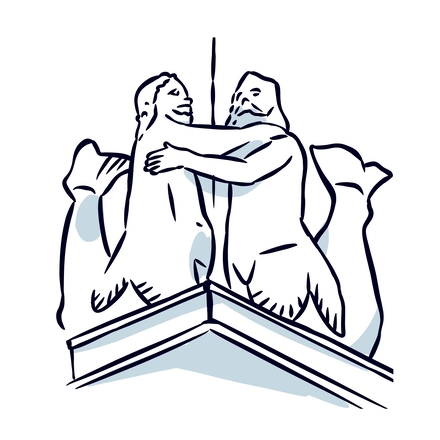
Look up, right at the corner of Rue Saint-Michel and Rue Saint-Épvre. Do you see those two small intertwined figures? Despite the house’s name, they’re not mermaids at all, but two bearded tritons. This sculpted detail gave rise to the name Maison des Deux Sirènes, a townhouse built in 1586 for Raymond Luyton,
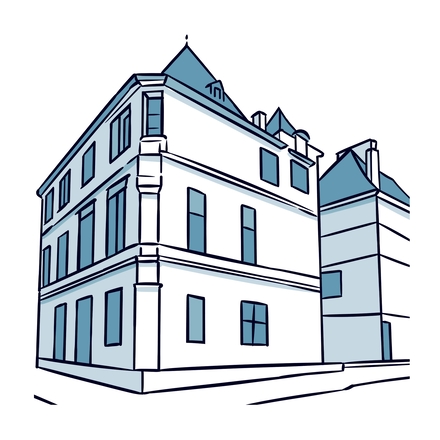
Your legs gradually bring you to one of the most spectacular places. Just past the black gate, a little higher on the right, you’ll find one of the most beautiful residences in Nancy. We'll let you take the last few steps to get there. Like the former palace of the Dukes of Lorraine, the Hôtel d'Haussonville is one of the rare buildings to have magnificently preserved its Renaissance
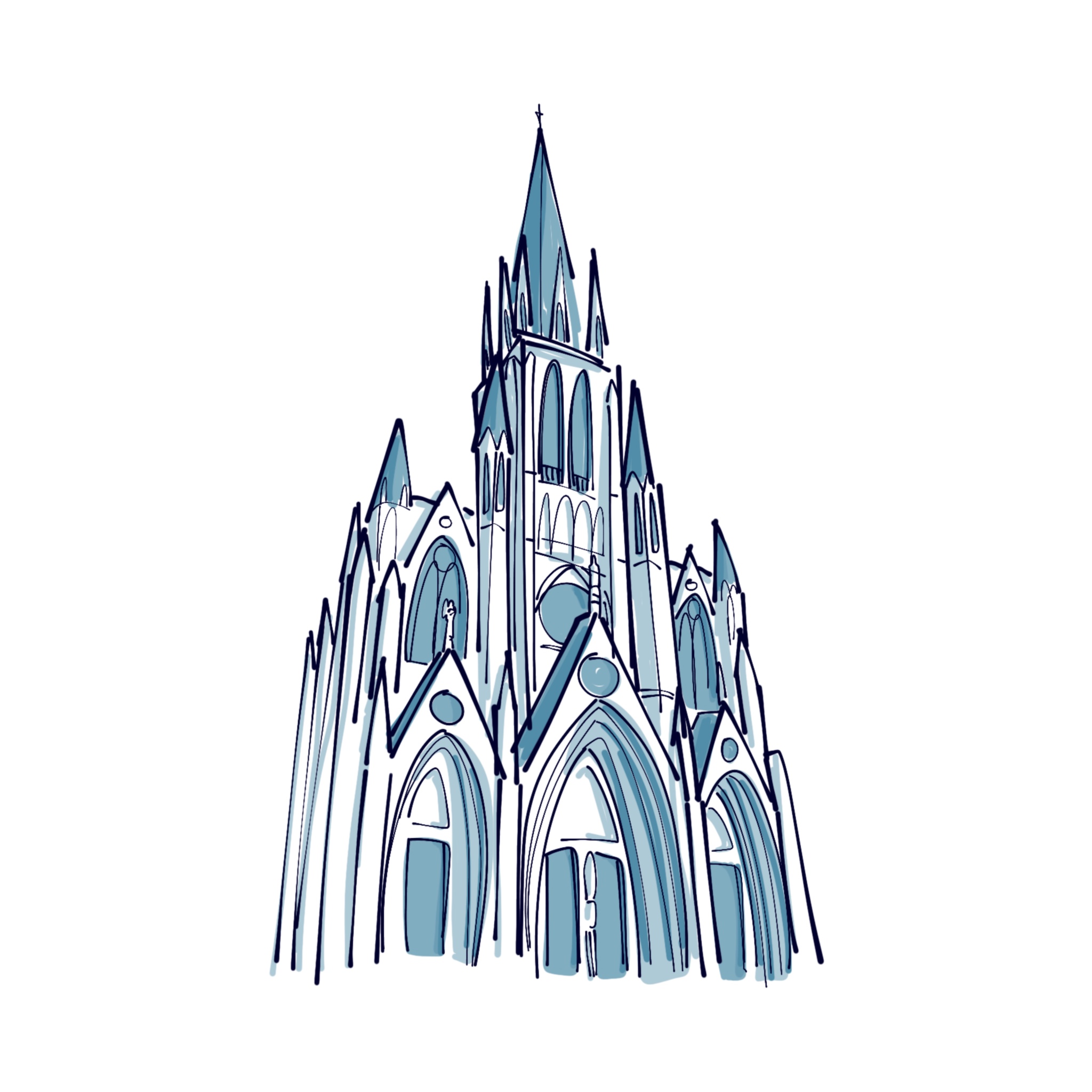
With its Gothic features and magnificent spire reaching a height of 87 meters, the Saint-Étienne Basilica, on your right, seems to have been watching over the city for centuries. But don’t get too carried away, because, surprising as it may be, this version of the religious sanctuary was only completed at the end of the 1800s.
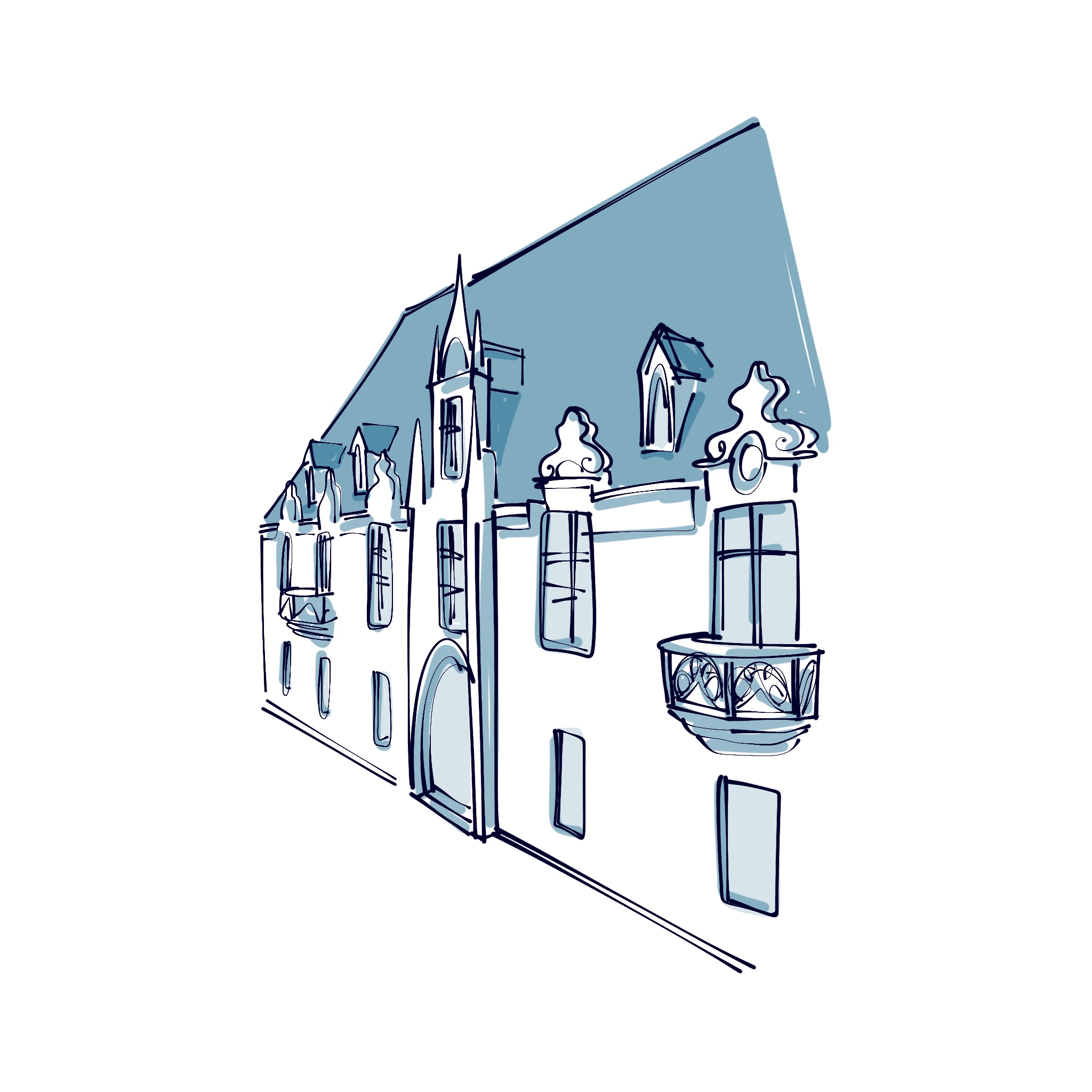
In the architectural landscape of the Old Town, this beautiful building is formal proof that before Stanislas and his multiple urban transformations, Nancy was already quite grand. A grand ducal city, to be precise. Its history dates back to the medieval era, when Gerard I, the first hereditary Duke of Lorraine, decided to consolidate his territory by establishing a central
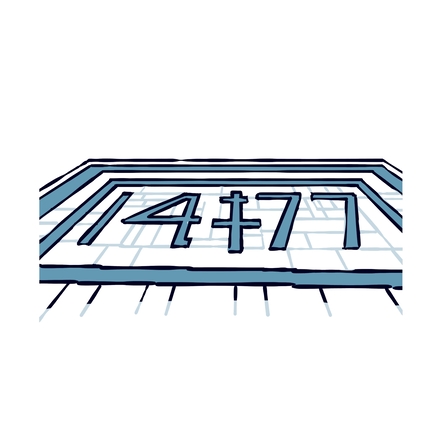
Every day, hundreds of people walk right over it without even noticing it's there. This is the eternal fate of the inscription marked "1477," located at 30 Grande Rue in Nancy. Though at first glance this simple black-and-white paving might seem ordinary, it commemorates a decisive moment in the city’s history—the Battle of Nancy, famously depicted by Eugène Delacroix

Orléans, Lyon, Blois, Arras, Poitiers, Marseille… all these cities have something in common: somewhere in their streets, you’ll find a statue of Joan of Arc. And really, what place in France would pass up the chance to honor this legendary figure? A fearless warrior, a national heroine, and a symbol of resistance during the Hundred Years’ War, Joan of Arc is without a doubt
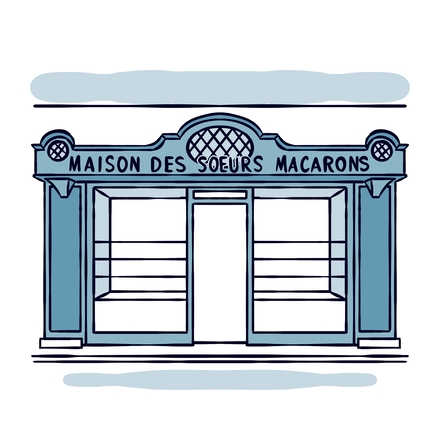
In the world of french pastry, few topics spark as much debate as the true origin of the macaron. Some say Picardy, others swear by the Basque Country, and a few point to Ardèche. But here in Nancy, this delicate little treat has a story of its own. Perfect for satisfying a sweet tooth, the macaron of Nancy was born from a mix of creativity and necessity.
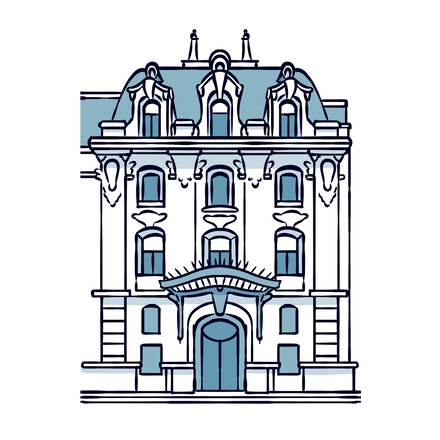
If you look up toward the top of the entrance, you’ll see the words: Chamber of Commerce and Industry of Meurthe-et-Moselle. And while this public institution certainly plays an important role for local businesses, what really draws our attention here is the building itself. Take a good look at those floral ironwork details, the stained glass windows with leafy motifs…
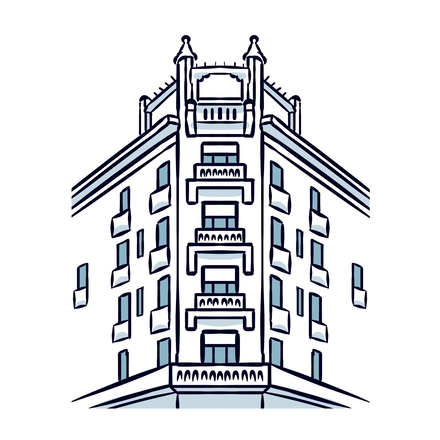
With its dignified façade, grand windows, and wide red awnings weathered by time, everything about this place tells you you’re standing in front of a Nancy institution. With a Latin name meaning “higher” or “more elevated,” Brasserie Excelsior wears its ambitions on its sleeve. Opened in 1911 by Louis Moreau, a brewer from Vézelise, it was quickly hailed by the regional
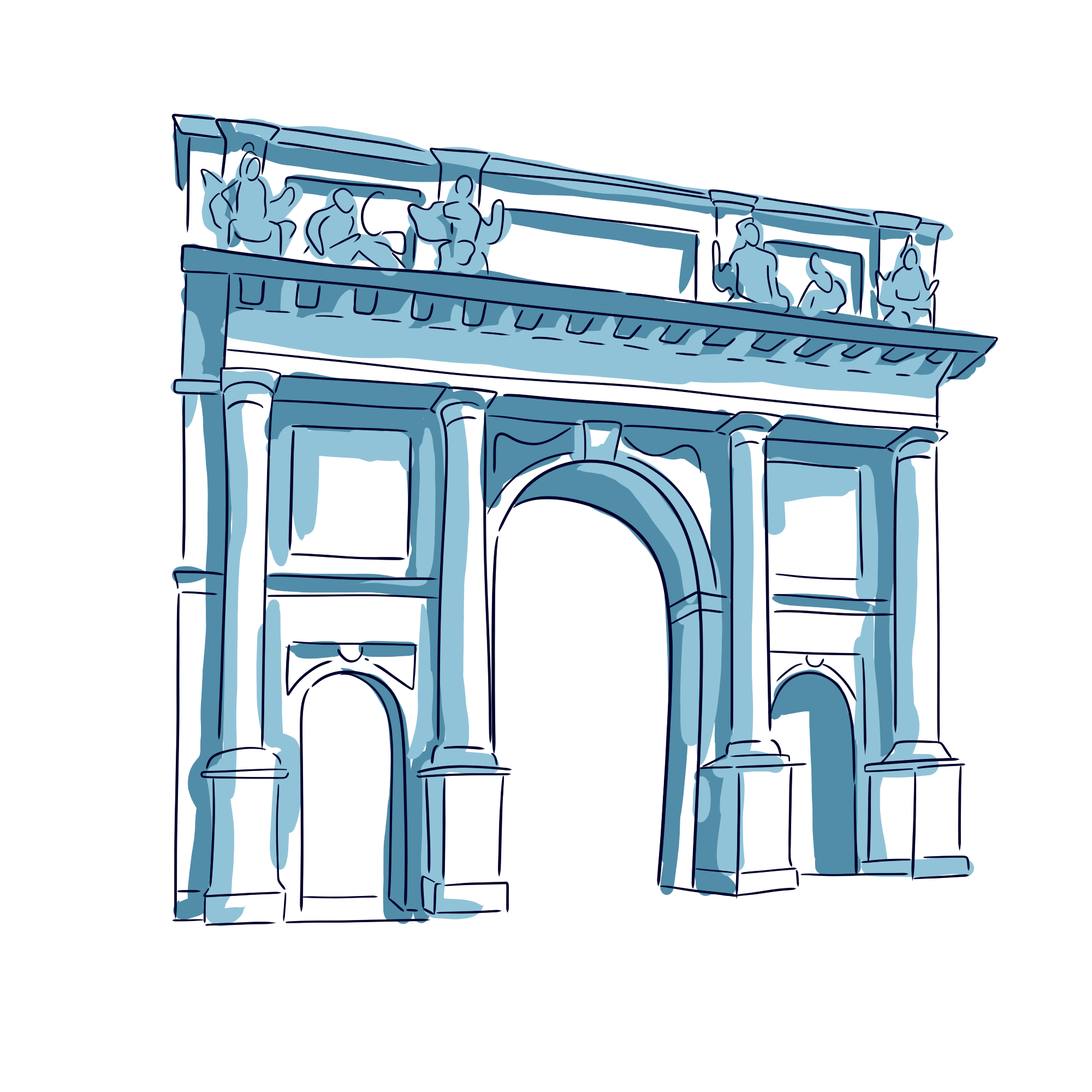
Of the seven historic gates of Nancy, let us introduce you to the Stanislas Gate. Like many of the city’s emblematic monuments, this elegant archway was part of an ambitious urban makeover led by the former King of Poland, Stanislas Leszczynski—the very man it was named after. Determined to leave a princely mark on the ducal city of Lorraine—entrusted to him by his son-in-law
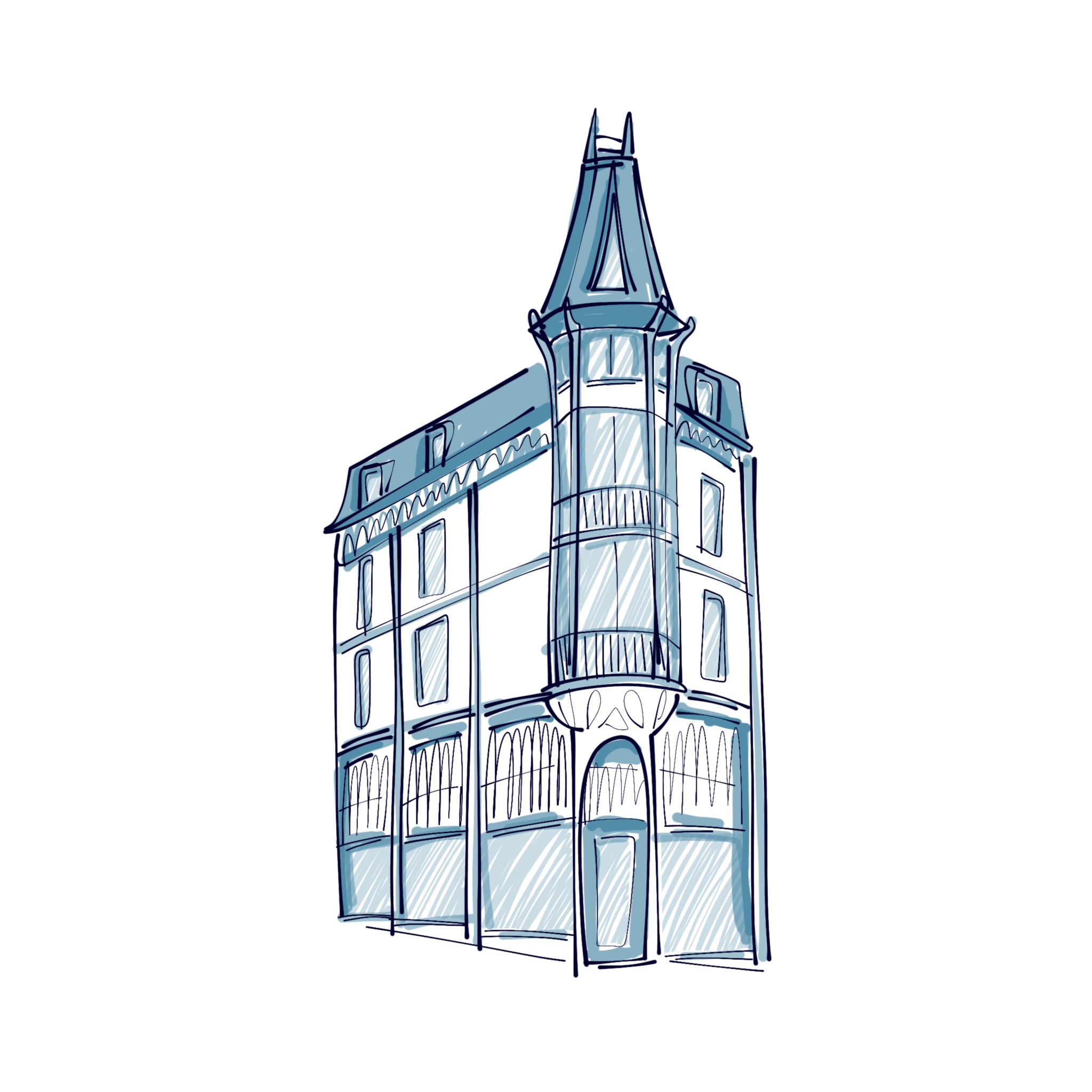
In case you're not familiar with Art Nouveau, a style known for its flowing curves and nature-inspired motifs, keep your eyes peeled for the stunning blue building on your left. Built in the 20th century by Henri Gutton, an architect from Nancy, this building was once a seed shop for many years.

If you’re wondering why we’ve brought you to this building instead of another, well, the answer is waiting for you inside. Built in the 20th century, the Crédit Lyonnais building holds an unexpected treasure, one that’s far more valuable than the money stored there. As you step inside, you'll be struck by the brilliant light pouring in from the massive glass roof

The sound of bells? Yes, but not just any bells. These announce the presence of Nancy’s cathedral, Our Lady of the Annunciation. While it may not be listed among France’s great cathedrals, it’s still an incredibly fascinating site. The story behind its creation is quite the tale. Back in the Middle Ages, Nancy was under the bishopric of Toul, which was independent from the Duchy of

Of all the must-see attractions in Nancy, this is undoubtedly the most iconic. Beloved by the people of Nancy and even more so by the people of Lorraine, Place Stanislas is the city's crown jewel. In fact, it’s probably one of the main reasons, if not the main one, that brought you to the ducal city. So, as a reward for your journey to experience it firsthand, let’s dive into its story.
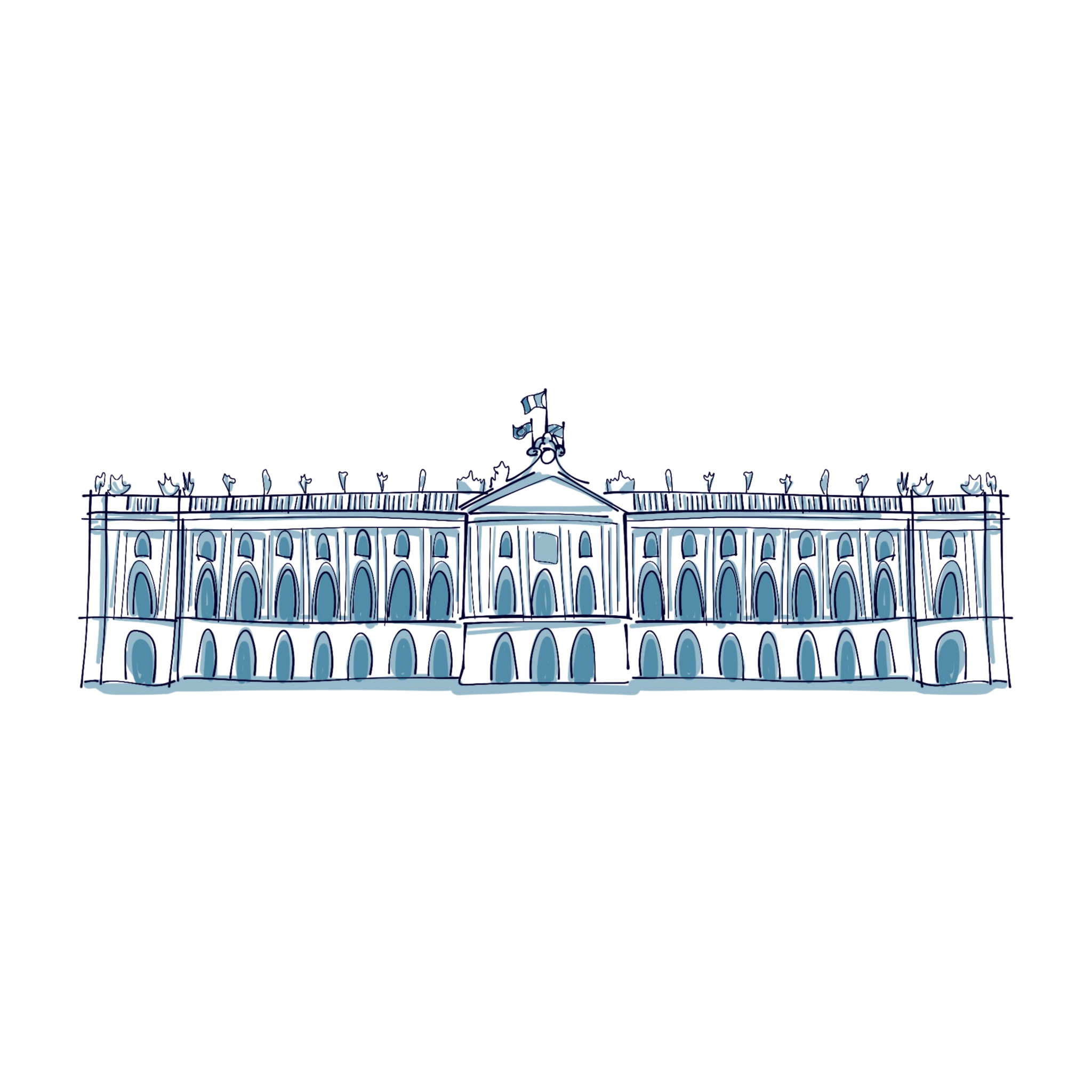
In the breathtaking surroundings of Place Stanislas, it’s impossible to miss the grand building that occupies a vast portion of the square: the Nancy City Hall. From its stunning decoration to its prime location, not to mention its sheer size, everything about it screams that this is one of the most beautiful palaces ever built for the magistrates of the Republic.
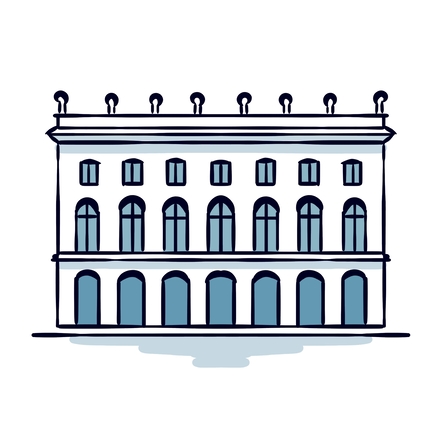
A luminous square, finely crafted gates, majestic fountains, and a central statue dedicated to its founder—Place Stanislas is a perfect blend of all these elements. Above all, it’s a magnificent example of French classicism, thanks to the seven pavilions that beautifully frame the square. The one before which you’re standing houses the Nancy Museum of Fine Arts
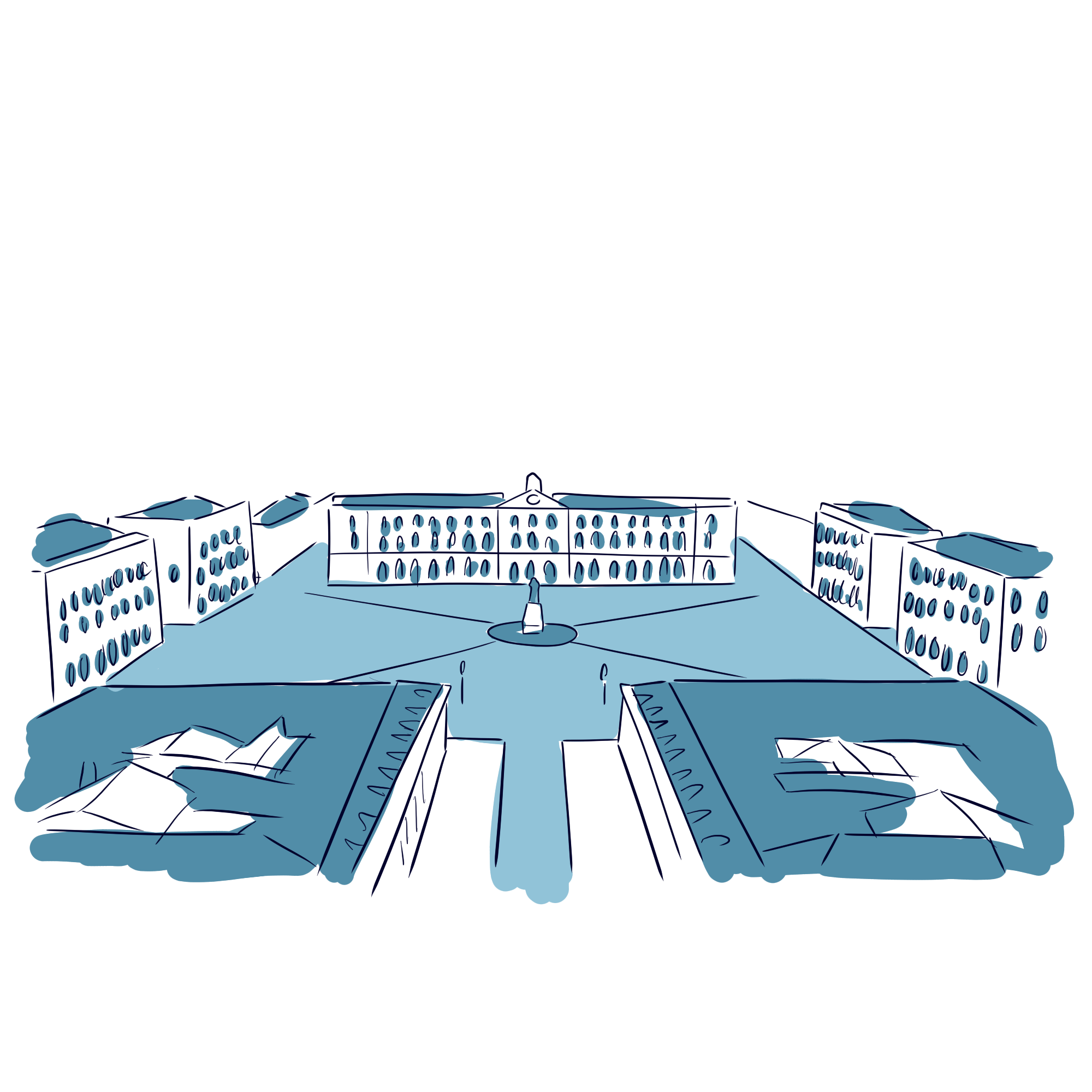
Praised by both locals and thousands of visitors, Place Stanislas is no stranger to compliments. It’s been called beautiful, harmonious, immense, luminous, but did you know it can also be full of surprises? Indeed, Nancy’s favorite square holds a collection of anecdotes and secrets that will only deepen the excitement you feel for it. From its creation to today, Place Stanislas
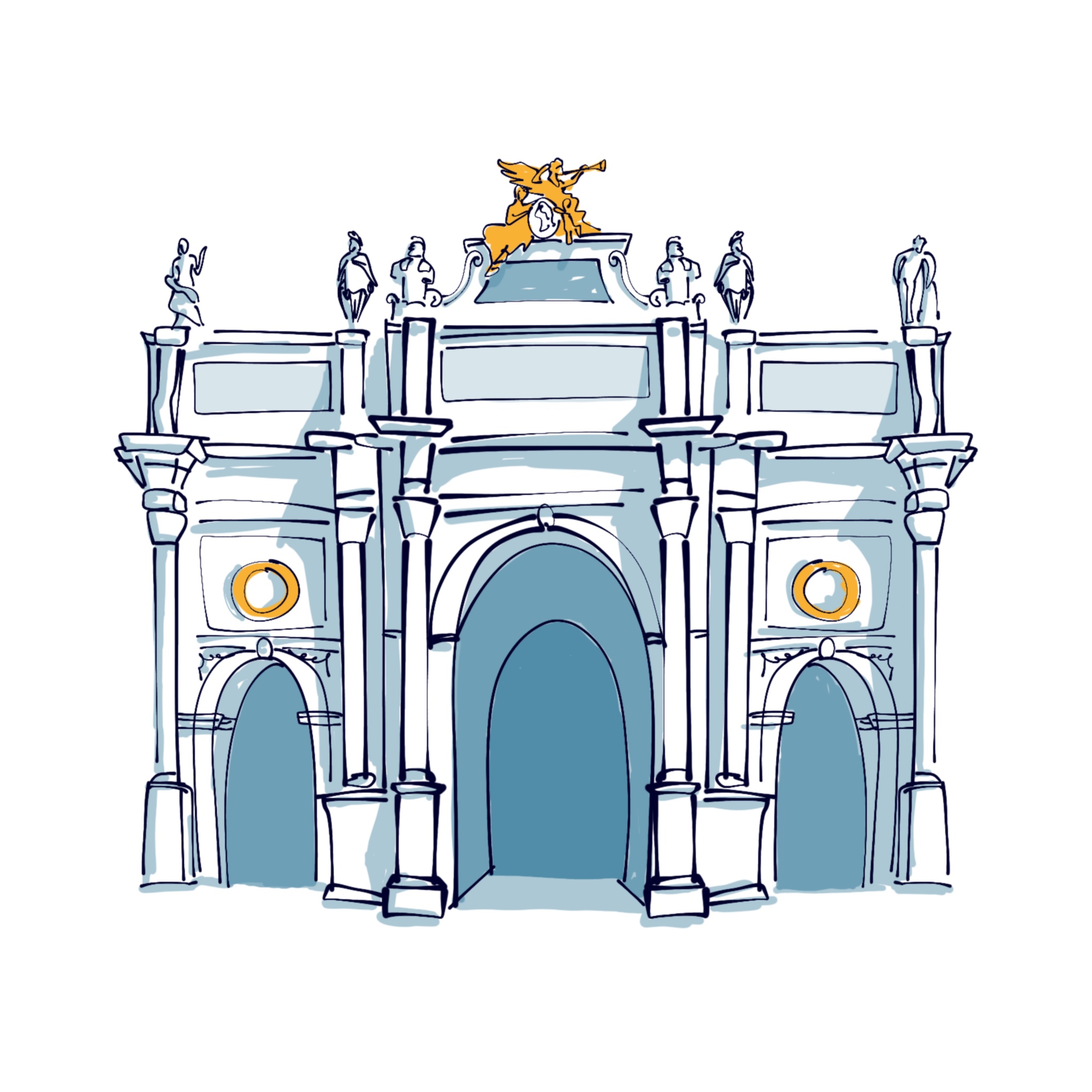
Here you are in front of the Arc Héré, the triumphal arch that elegantly links Place Stanislas with Place de la Carrière. Contrary to what its name suggests, this arch wasn’t built as a mere decorative flourish, but as the ingenious solution to a real urban challenge in the 18th century.
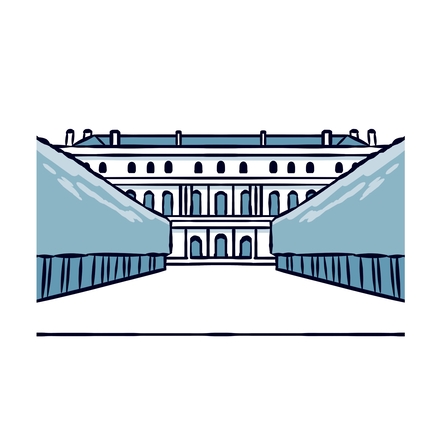
Located as an extension of Place Stanislas, Place de la Carrière often unfairly stays in its shadow. However, it too has a rich history that deserves to be recognized. Created in the mid-16th century, its establishment was made possible by the expansion of the medieval ramparts surrounding the Old Town. Fresh and new, the square was
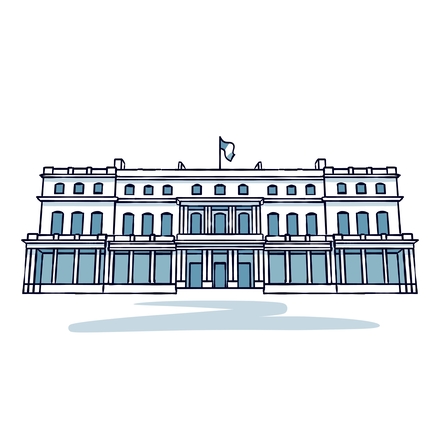
Opposite City Hall, the Government Palace also reflects the architectural style chosen in the 18th century by the former Polish king, Stanislas. Originally, the land was intended for a project known as the "New Louvre," commissioned by Duke Leopold, who found his ducal palace "cramped, dark, and outdated." However, while the work was being led by architect Germain
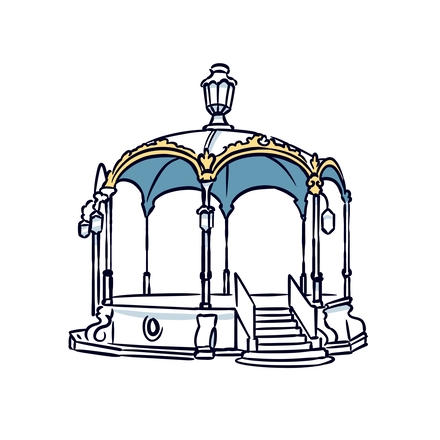
Just a stone's throw from Place Stanislas, Pépinière Park stretches over 21 hectares of lush greenery. Every day, walkers, students, and joggers gather here, often unaware of the park's fascinating history. Like many of Nancy’s landmarks, Pépinière Park owes its existence to Stanislas Leszczynski.

One of the city's most famous landmarks, the Craffe Gate has a fascinating history. The only remaining part of the medieval fortifications that once surrounded Nancy, this grand structure has always marked the entrance to the Old Town. In fact, the Dukes of Lorraine used it as a ceremonial gate until 1610. The origin of its name is uncertain, but some suggest it may come from the
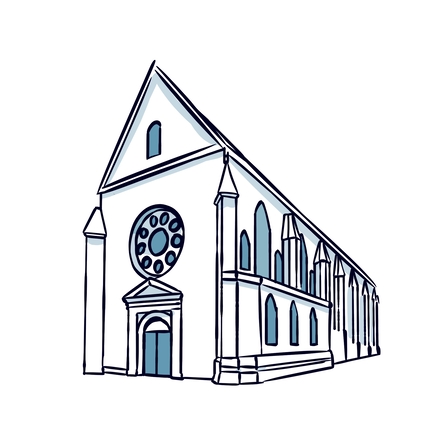
Counted among the few religious monuments in the Old Town, the Church of Saint-François-des-Cordeliers owes its existence to one man. During the 1477 siege of Nancy, Duke René II of Lorraine achieved a remarkable victory over the Duke of Burgundy, Charles the Bold.
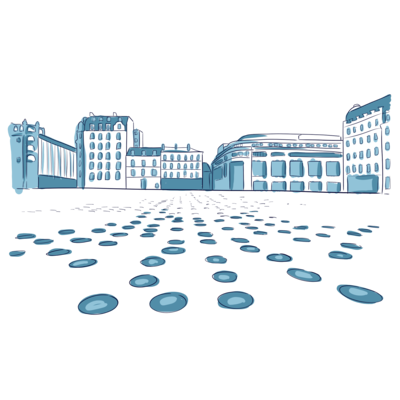
Right now, just to your right, you’re about to pass by Simone Veil Square. One of France’s most iconic public figures, Simone Veil has given her name to parks, schools, streets, buildings—and of course, city squares—across the country. A true symbol of women’s rights, her life and legacy have become an essential part of French history, told in countless books
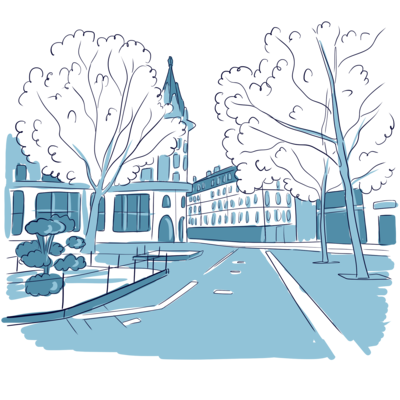
As you reach Place Maginot, you'll notice a striking building right in front of you. It’s called L'Est Républicain, located next to the Printemps department store, just across from the pharmacy. This architectural gem is closely connected to the former Magasins Réunis building, now home to Fnac and Printemps. Both buildings were designed by the same architect
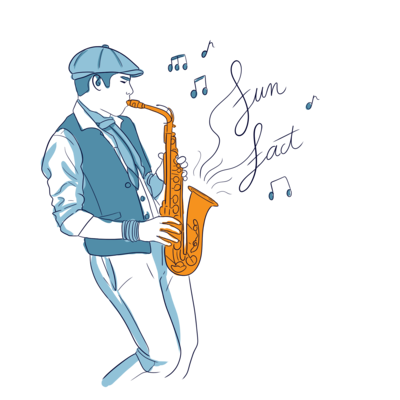
Every city has its little anecdotes, legends, and mysteries, and Nancy is no exception. The city is full of fascinating stories, and you might even know a few of them. Let’s share some of them with you now. First, there are four major events that make Nancy famous. One of them is the Book Fair held in September on Place Carrière.
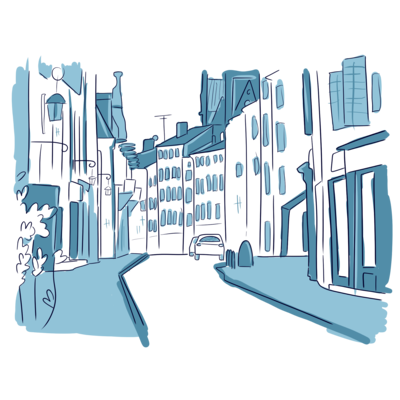
The Grande Rue is one of Nancy’s main thoroughfares and is definitely worth exploring. Passing through part of the city’s historic heart, it conveniently leads to the legendary Place Stanislas, Nancy’s most iconic landmark. Historically, the Grande Rue was the most important street in the old ducal city. Its origins date back to the 14th century when Duke Ferri III

On your left, you'll find the entrance to the Acropolis Museum, where you'll discover over 4,000 artifacts recovered from the so-called Sacred Rock

As you've surely noticed, you are at the foot of the Acropolis! It's towering on your right, perched on top of the so-called Sacred Rock, nearly 160 metres high. You're now walking along Dionysiou Areopagitou Street.

You're in one of the liveliest neighborhoods of the Greek capital! This charming district at the heart of the historic center captivates visitors with its picturesque alleys lined with small shops selling handmade goods and souvenirs.

Monastiraki Square is a vibrant hub right at the heart of Athens. No wonder thousands of tourists flock here daily. This square is a living timeline of Athens' history, home to monuments dating from the Byzantine, Ottoman and Neoclassical periods.
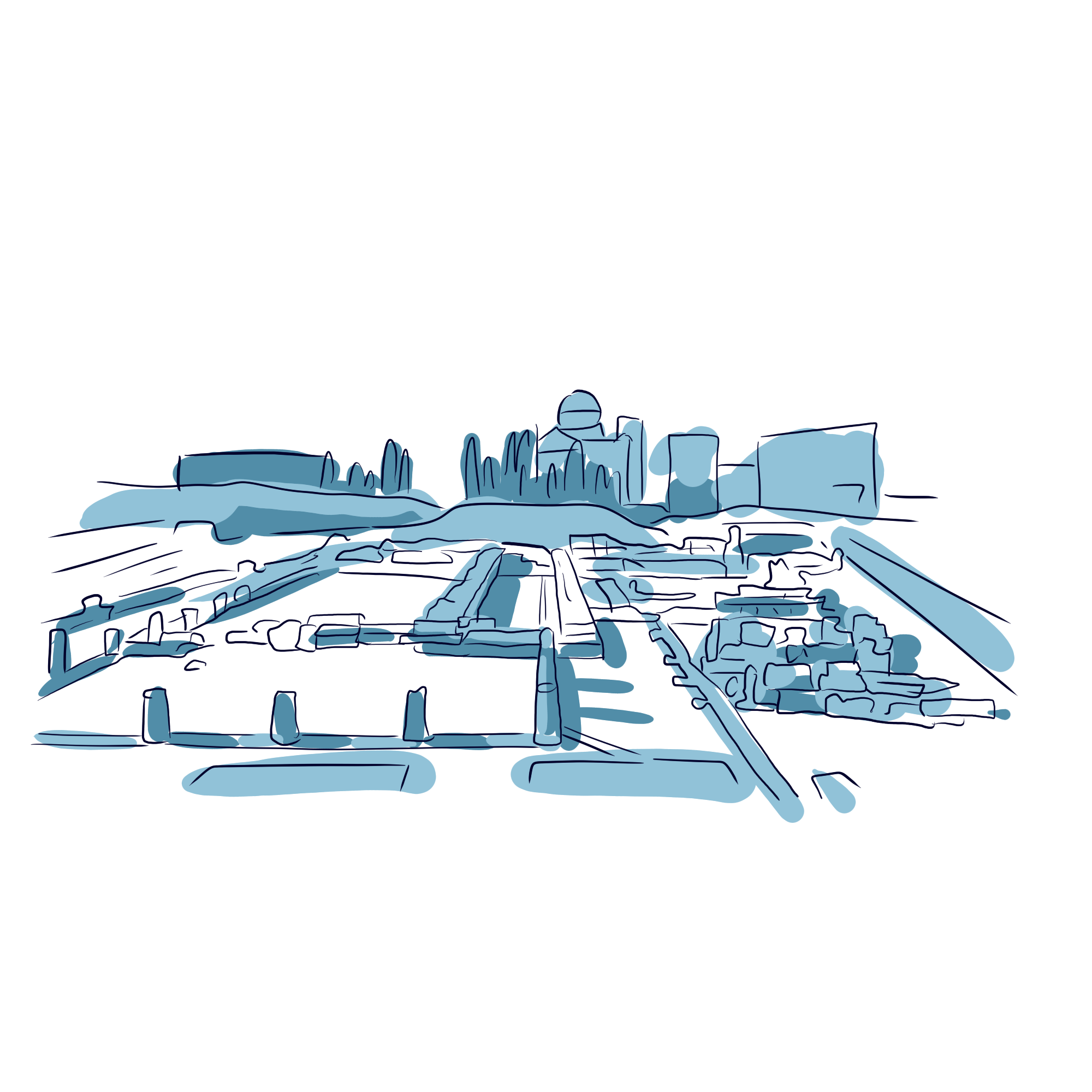
Next, we'll take a right onto Adrianou Street. Should you continue straight ahead, however, you will find yourself in the Kerameikos district. The name itself gives it away: you see, 'kerameikos' means 'ceramic' in Greek

After a short hike up the Philopappos hill, you've now reached the summit, where you'll find an impressive 2nd century AD funerary monument! These rocks, dating back almost 2,000 years

Look at this view! Needless to say, this is one of the best viewpoints in all of Athens. From here, you can see the entire city and the Acropolis in the distance.
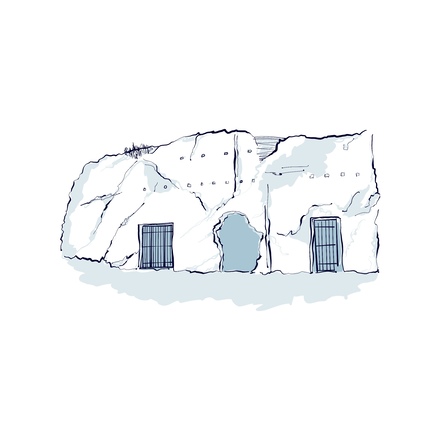
Socrates, the founding father of philosophy and free thought, is an iconic figure inextricably linked with ancient Greece and Athens in particular, as this is where he spent all his life.
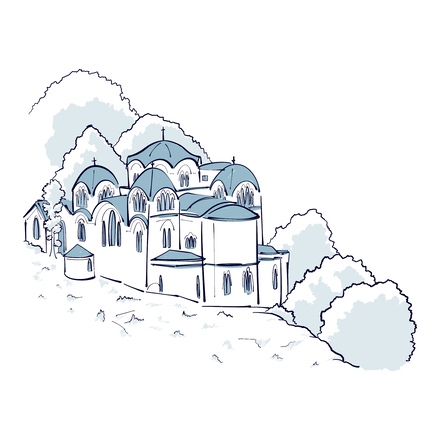
Look to your left and you'll spot a stunning edifice high up on the hill. This beautiful Byzantine-style church looks nothing like the city's ancient monuments, as it was only built in 1927.

Just behind the Tzistarakis mosque, you'll find some amazing remains dating all the way back to Roman times, between 300 BC and 400 AD. Yet another historical era!

Right now you can see a glimpse of the Ancient Agora of Athens. You need to buy a ticket to visit it, but you can still admire a small part of it from the outside.
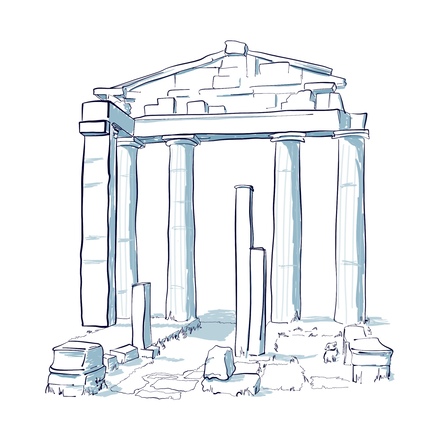
You're now standing in front of the impressive Gate of Athena Archegetis, the entrance to the Roman Agora. You need a ticket to visit the archaeological site, but hey, you can admire it for free from the outside.

The construction of the Roman Agora began under Julius Caesar, the famous Roman emperor. It was completed two centuries later during the reign of Hadrian. It was designed to be an administrative, political and commercial center – essentially, it was the Roman version of the Athenian Agora.
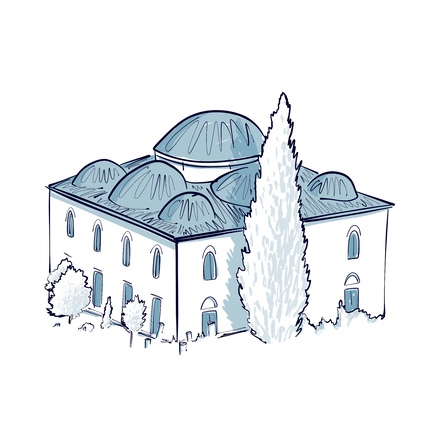
You're probably wondering why there's a mosque in Athens' Roman Agora, an ancient public square. Well, let me tell you that the mosque in question does not date from the same period as the rest of the buildings in this archaeological site.
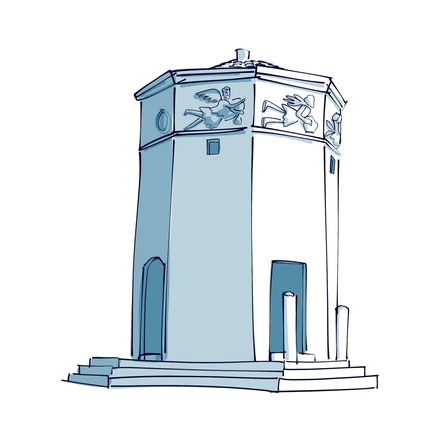
The Tower of Winds is one of Athens' most impressive landmarks, no doubt. It might not be the biggest or most ornate building, but what it lacks in grandeur it makes up for in its upkeep over the centuries.

Introducing the Metropolitan Cathedral of Athens, dedicated to the Annunciation of the Virgin Mary. It looks fairly recent compared to the ancient Greek and Roman ruins all around the city, doesn't it?
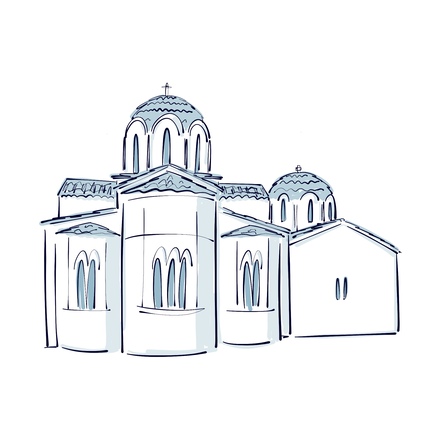
This church dates all the way back to the 11th century and seems to have been expanded during the 13th century. Its name's a bit of a mystery – some say it's named after its architect

Forget the cute little boutiques you've been seeing – Ermou Street is a whole new ball game! This is Athens' prime shopping street! Here, you will find all your favorite international brands.
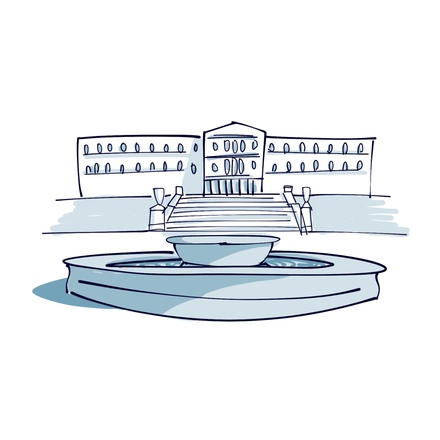
You're right in the heart of Athens, at one of its busiest and most iconic squares, and certainly the most emblematic! Athenians love to hang out here to catch up with friends, join a heated protest or meet up to hit the shops on Ermou Street that's just around the corner!
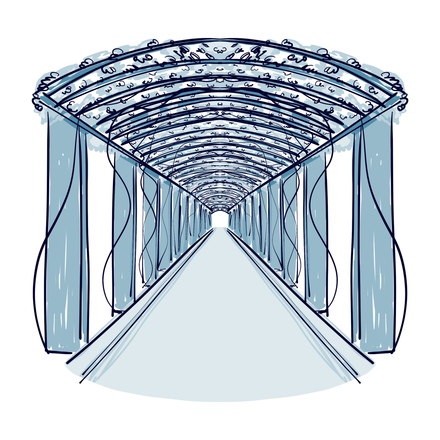
No visit to Athens is complete without a stroll through its National Garden! It's a true oasis of green right at the heart of the city!

Just steps from the National Garden, you'll find the Zappeion Hall. Built in 1874, it's entirely dedicated to the modern Olympic Games. As you surely know, this tradition began in ancient Greece with athletic competitions held between the different Greek cities.

The first modern Olympic Games were held right here, in this very stadium! Believe it or not, there's been a huge stadium here ever since the 4th century BC. It had wooden seats and it hosted the ancient Olympic Games.
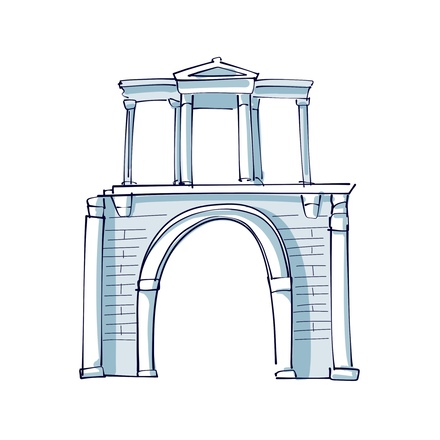
The Arch of Hadrian, also known as Hadrian's Gate, is a Roman triumphal arch built in the 2nd century AD in honour of Hadrian, the great Roman emperor who visited Athens in 131 AD.

Besides the famous Olympic Games, ancient Athens also hosted dramatic competitions, called the Great Dionysia. Every four years, troupes of actors, musicians, and playwrights battled it out for victory.

Right in front of you is yet another Byzantine church. It whispers stories of Athens' long history, of a time when the city was part of the Byzantine Empire, way back between the 4th and the 15th century.
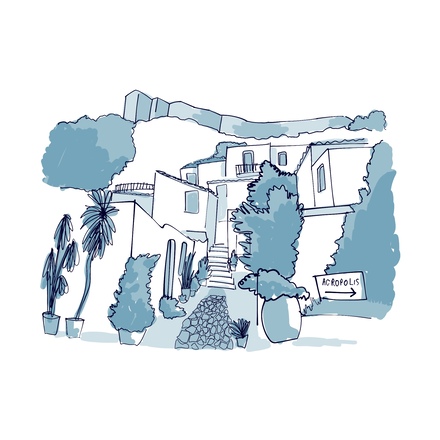
One could say that this picturesque neighborhood at the foot of the Acropolis looks like a Cycladic island! It may be small –meaning you can explore it in no time– but it promises to enchant you with its uphill cobblestone alleys and picture-perfect whitewashed houses.
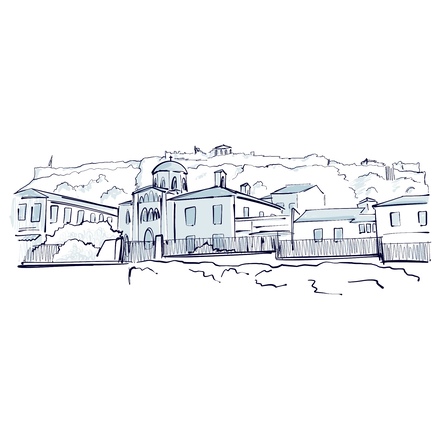
Plaka is easily the most famous neighbourhood in Athens, and therefore the busiest. It is the historic heart of the Greek capital, and it's located at the foot of the Acropolis.
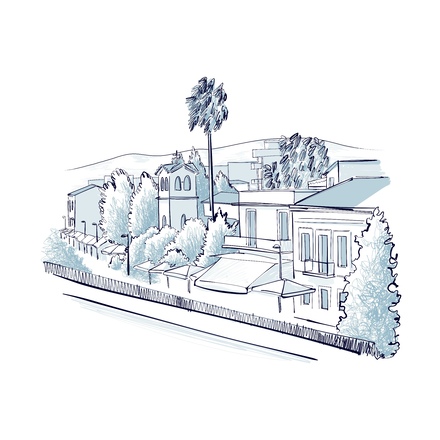
This is Adrianou Street, one of the busiest streets in Athens. It's packed with cafés and restaurants with a view of the Ancient Agora, one of the most important archaeological sites in the city.

Hidden away between the local houses, this small square is the haunt of antique and second-hand goods dealers! Every Sunday, it transforms into Athens' biggest flea market – a paradise for souvenir hunters, bookworms, and anyone seeking unique finds.
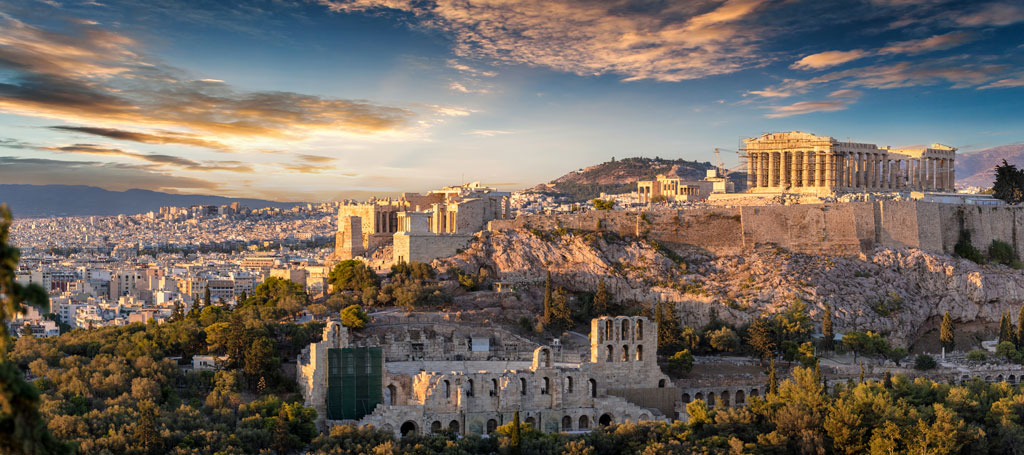

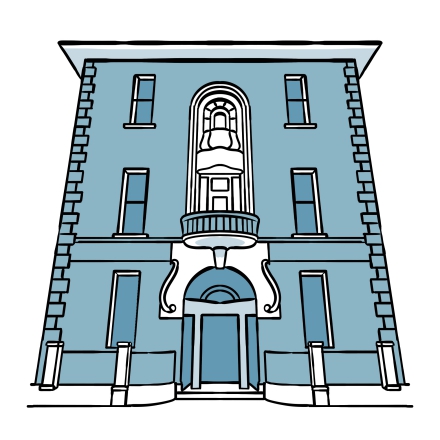
I'd just like to draw your attention to the house on your right. With hardly any Art Nouveau buildings in Melbourne, this one deserves a peek, even a quick one.

You've reached the Treasury Gardens entrance, with a view over Fitzroy Gardens. The latter are Melbourne's best-known green space and span almost 26 hectares.
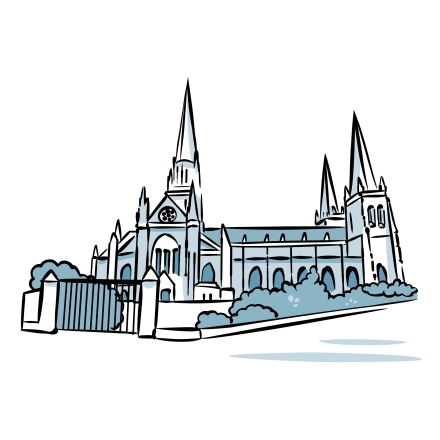
You're now standing in front of St. Patrick's Cathedral, the seat of Melbourne's Catholic archdiocese. It holds the title of both the biggest and tallest church in the country.
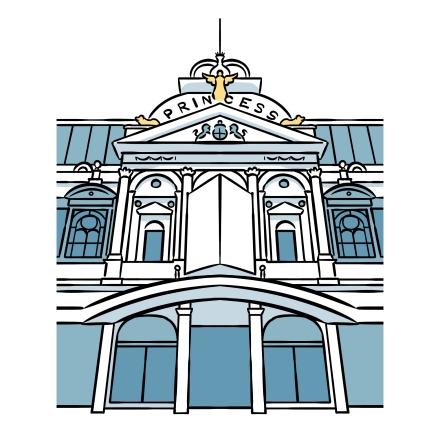
As you leave the Parliament Gardens, your eyes are drawn almost unwillingly to the opulent façade of the beautiful Princess Theatre right across the street.
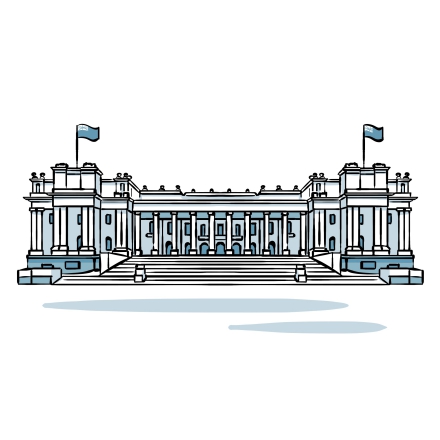
This imposing building before you is the Victorian Parliament. Built in the 19th century, it's considered one of the finest examples of civil architecture of the British Empire.
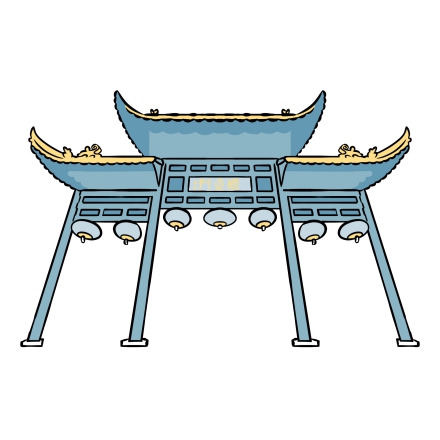
Welcome to Chinatown! Like every great city in the world, Melbourne has a sizeable Chinatown, dating back to the 1850s. At that time, the Victorian gold rush drew immigrants from all over the world

The huge building before you is the State Library Victoria. Founded in 1854 as the Melbourne Public Library, it is Australia's oldest public library and one of the first in the world with free access for all!
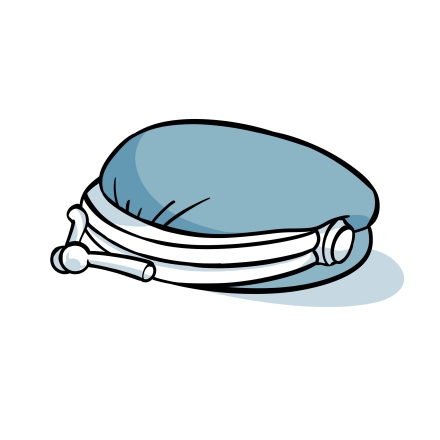
Well, someone seems to have forgotten their wallet. This giant sculpture is one of Australia's "Big Things" – quirky roadside giants you'll stumble upon all over the country.
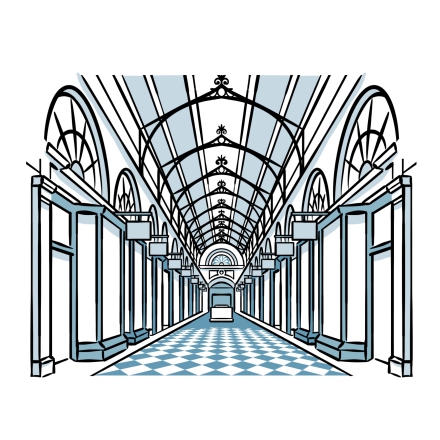
You've just entered Melbourne's magnificent Royal Arcade. Just look at this beauty! No wonder Melbourne is often called Australia's most European city!
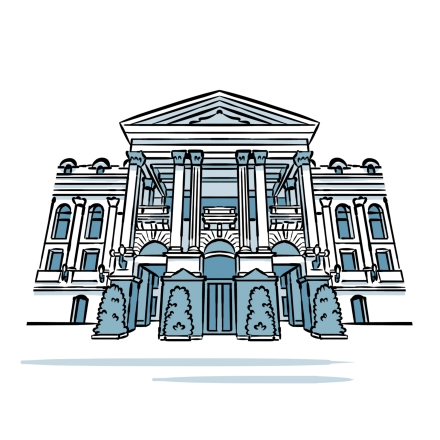
You're now standing in front of Melbourne’s City Hall. Melbourne was officially declared a city on December 13, 1842, with Henry Condell as its first mayor.

Heard all the buzz about Melbourne's hidden backstreets packed with quirky cafés, one-of-a-kind shops, and enough delicious food to keep you coming back for more?
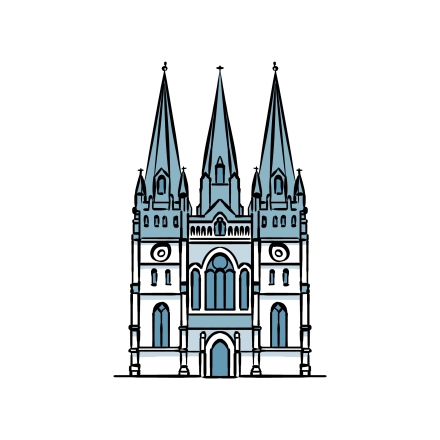
This is St Paul's Cathedral, a neo-Gothic church that stands out in the modern Melbourne skyline. It was built on the site where the first public Christian service was held in 1835.

From the Southbank promenade, you have a superb view of Melbourne's CBD. Skyscrapers tower over the Yarra River, while the Flinders Street Station sprawls across the other bank.
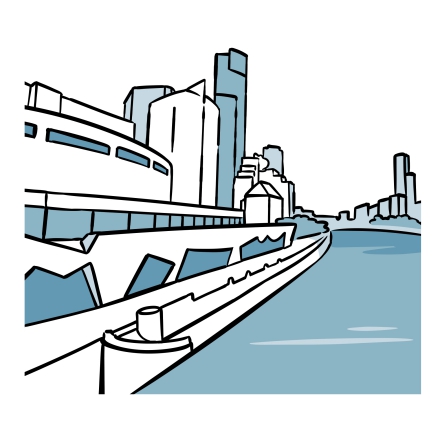
Cross the Even Walker Bridge and you'll be right in the heart of the South Bank district. This modern, bustling suburb lies just 1 km south of the CBD.

You've probably recognized it by now, after all it's the city's most emblematic and most photographed landmark. So here you are, in front of Flinders Street station, Melbourne's railway station.

You're now crossing Princes Bridge, built on the site of one of the world's oldest river crossings. It opens onto the historic city center from the south.

You've reached the AC/DC lane - it's right there on your right! A whole street dedicated to the iconic Australian hard rock band. It’s living proof of Melbourne's fond love for grunge rock
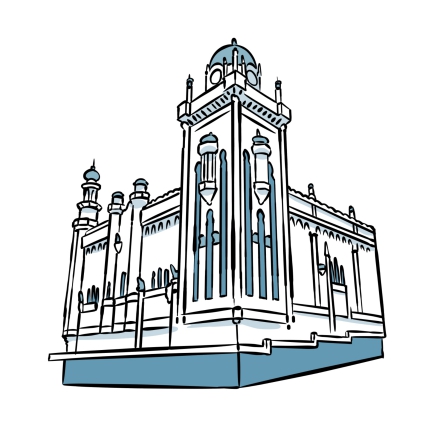
As you leave Federation Square, you'll be instantly wowed by the immense and ornate building right across the street. It's the Forum Theatre, a historic theater and former cinema, now converted into a concert hall.
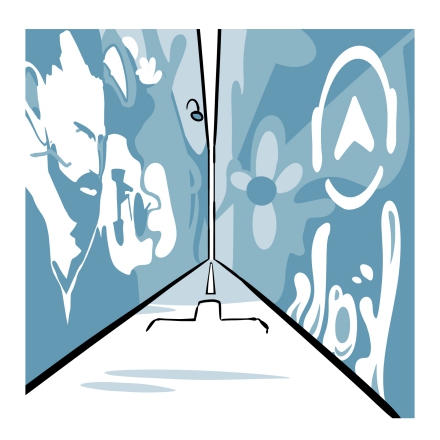
Melbourne's a city that never sleeps, always lively and buzzing. Look around – Hosier Lane is a perfect example! This place is a living canvas, constantly evolving.

Welcome to Federation Square, or Fed Square as the locals call it! This modern square is Melbourne's cultural hub! It roared to life in 2002, opposite the iconic Flinders street station,
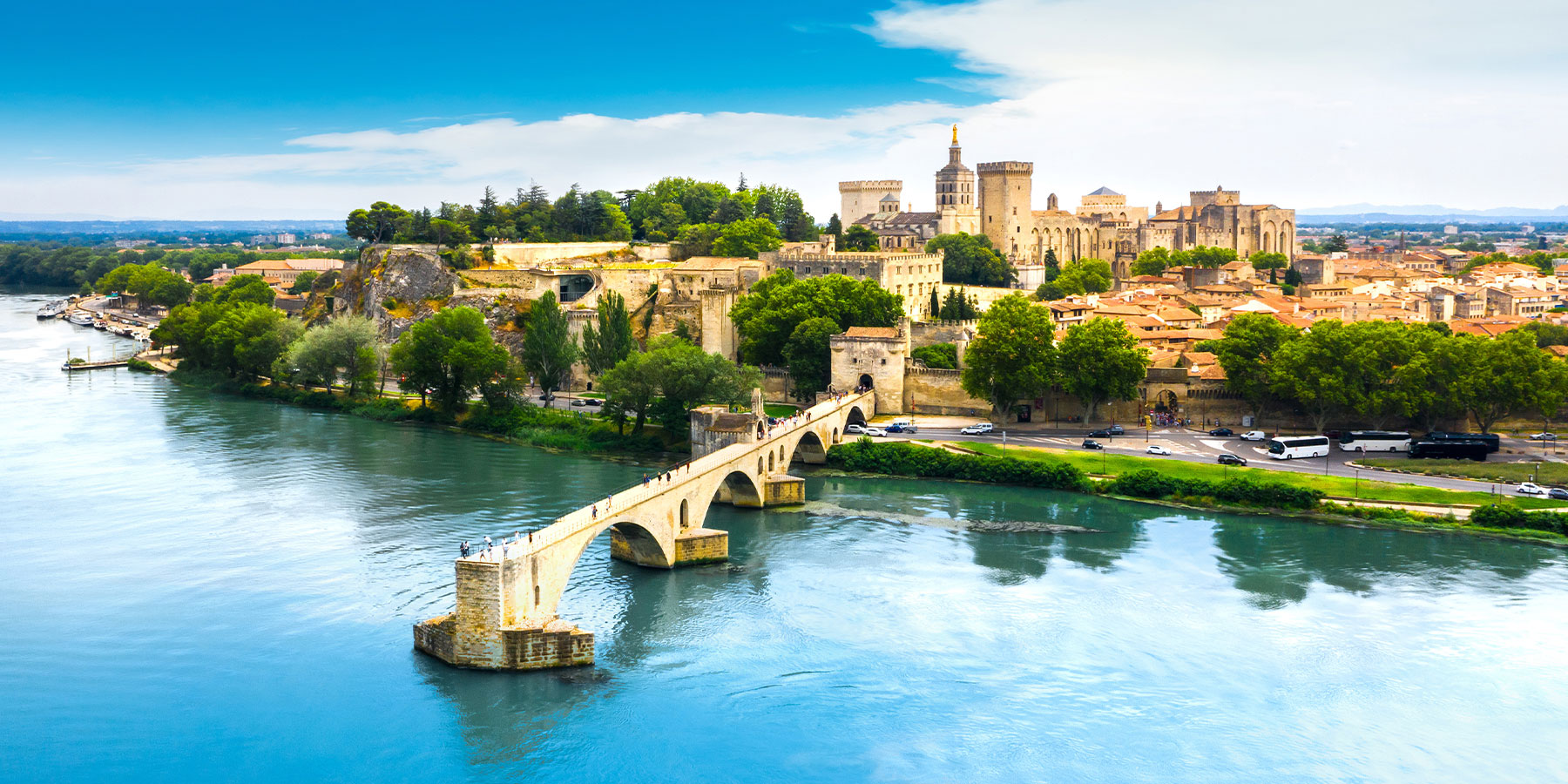
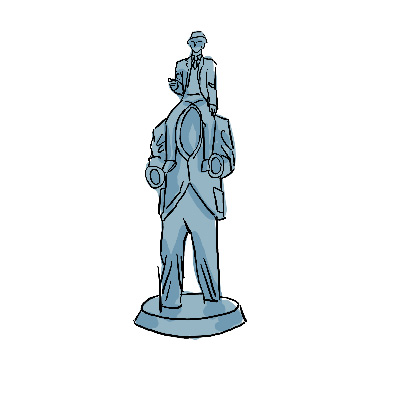
Behind each statue hides a story, and this one will most definitely catch your attention. If, during your visit, you haven’t yet encountered or heard of Franz Kafka, then that’s about to change. At the top of this statue stands the world-renowned writer, standing 3.75 meters high.
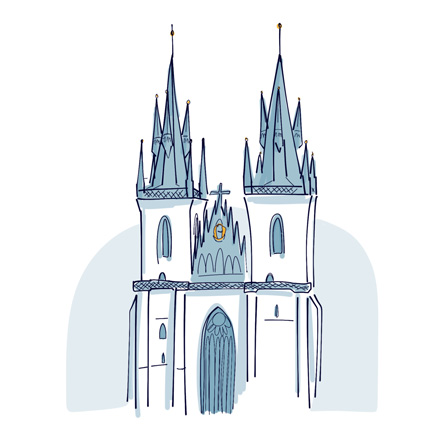
Many people cannot choose between enchanting or intimidating when it comes to this building. We won’t take any side, except showing you that the Church of Our Lady before Týn fully deserves its place on our itinerary. Replacing a 4th-century Romanesque church, it was built in four phases between 1380 and 1511.
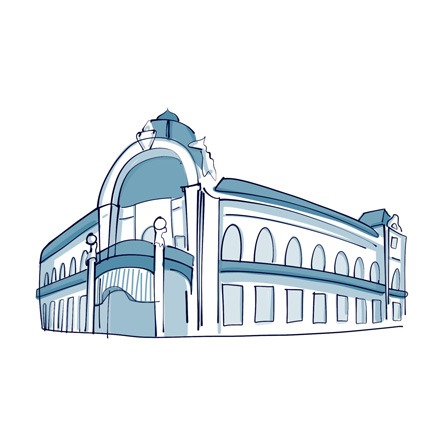
On an aesthetic level, there’s little room for complaints when seeing this gorgeous masterpiece. It stands on what used to be the former imperial palace, home to Bohemian sovereigns for over a century, and to which only the Powder Tower is left of it. Here, the Municipal House immerses visitors into a parallel artistic universe.
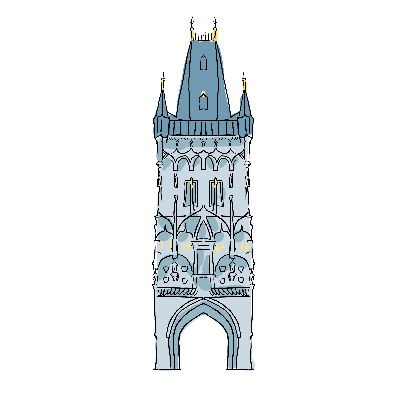
Dark, austere, and intimidating, the Powder Tower does not attract as many tourists as its flamboyant neighbour, the Municipal House. Aesthetically, a stark contrast separates the two, yet historically, they stand as equals. In the 14th century, as Prague flourished in trade and craftsmanship, King Charles IV dreamed big for the future of his city.

You are now standing at the foot of the tallest independent bell tower in Prague, with 65.7 meters high. Built in the 15th century, Henry’s Tower (Jindřišská věž) originally served as a watchtower, then as a bell tower for St. Henry’s Church, hence its name.

Located outside the Jewish ghetto where all other Jewish structures are concentrated, the Jerusalem Synagogue—or the Jubilee Synagogue—is the only Jewish place of worship still in activity in Prague. Hidden in the middle of a street, it still easily catches your attention.
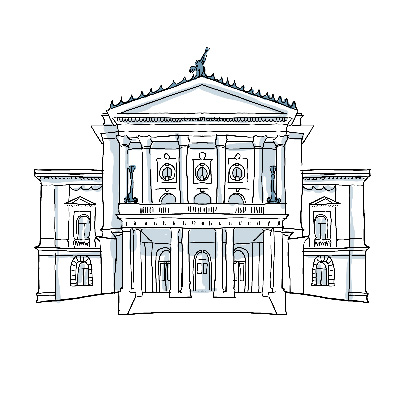
Welcome to the Prague State Opera. A magnificent Neo-classical building, home to one of Europe's most important and renowned opera venues. Until the early 1900s, right before Czechoslovakia was formed, musical culture was a source of competition between the Czech people and Prague's German community.

Before starting, I challenge you to take a full photo of this building! You’ll see, it’s not easy! Spanning over 13,600m², so more than a rugby field, this giant is the National Museum of Prague. A symbol of the Czech cultural revival. Along with the State Opera, it dominates Wenceslas Square since 1890.

At first glance, it may seem like just any other boulevard. But don’t judge too quickly! 750 meters long and 60 meters wide, this historic square is the true center of Prague’s New Town, a place where many important events in Czech history happened. When Emperor Charles IV delimited its layout in 1348, the site was enclosed by two large gates, both gone since then.

In case you don’t know where to sleep tonight, this is a legendary address in Prague. Located on the city's main road, Hotel Evropa is still as great and radiant as during its early days. Built in 1905, it quickly became a meeting place for the elite, both from Czech society and Europe.
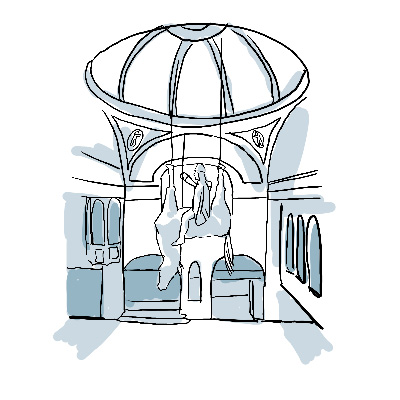
Admit it—if it wasn’t for us guiding you, you would never have thought to wander into this hidden passage. That’s why we’re here! Welcome to Kino Lucerna, the oldest operating cinema in Bohemia. Inaugurated in 1909, it was the first to screen silent and talking films in the country—which shows how important it is in Prague’s history!
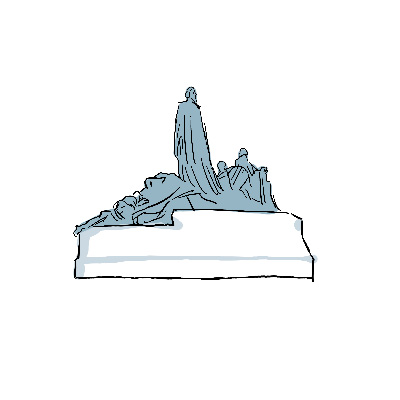
An important person in Prague’s history, Jan Hus is a name you’ll hear over and over again during your stay. This bronze memorial, inaugurated in 1915, actually proves the point. The statue commemorates this 14th-century religious reformer, burned at the stake in 1415 due to his reformist views that went against the Catholic Church.
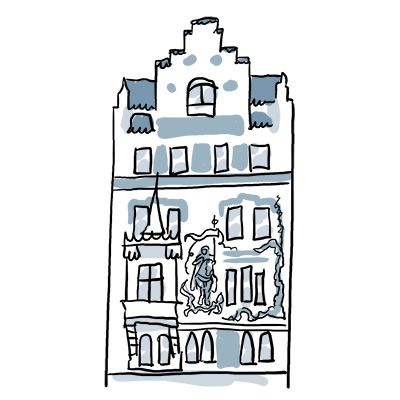
What about listening to an audio guide in Prague’s Old Town Square? Better twice than only once! First, because it’s one of the most pleasant places in the city, despite its popularity with tourists. And second, because there’s so much to see on this giant open-air stage.

This is where Prague’s heart beats the loudest. If people were to describe the Old Town Square in two words, they would say that it is both ancient and welcoming. Ancient, because there’s no way its 12th century origins could possibly contradict this. From a distant timeline where the square has lived through a large number of key events and historical changes.

What Oxford Street is to London, Wenceslas Square is to Prague. In other words, this place has it all, with its grand and elegant boulevard lined with boutiques and historic landmarks. I think it’s the perfect time for a souvenir photo! And how could you not want one with this beautiful view?
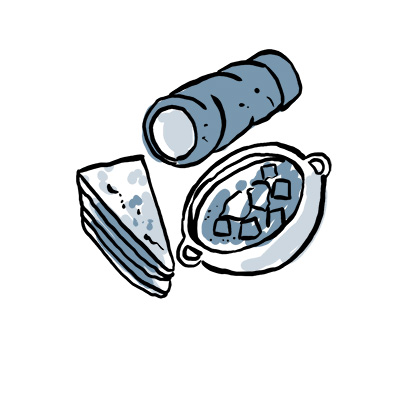
When it comes to cuisine, some nations have a reputation to uphold. If you consider the best nations, well, Czech food isn’t exactly on the podium. We can all agree that its specialties are unknown to the world. Hence, it is hard to find too. So while you’re here in Prague, there’s no excuse for not trying it!
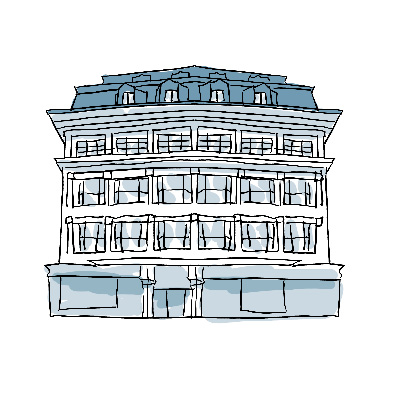
Sometimes, you can stumble upon a great landmark right at a street corner. However, don’t try searching for perfection in the smallest details. The true wonder here is big, brown, and with many windows. Yes, you guessed it right: this is the House at the Black Madonna —the kind you may pass by without looking twice.
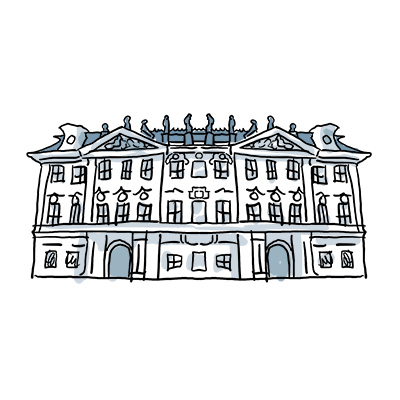
Did it ever happen to you to rewatch a movie for the hundredth time and still notice new details you hadn’t seen before? Well, that’s the same feeling you’ll get on Prague’s Old Town Square. No matter how many times you come here, there will always be a wall, a statue, or a hidden detail that gives you this strange sensation, as if you were seeing it all for the first time again.
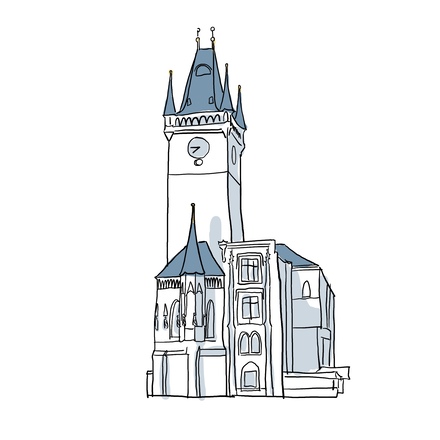
Not the image that you had of a Town Hall, huh? This one reflects the Old Town’s past and power. Its story begins in 1338, when the city council took possession of a Gothic house on the square, easily recognizable by its pink façade and stone moldings.
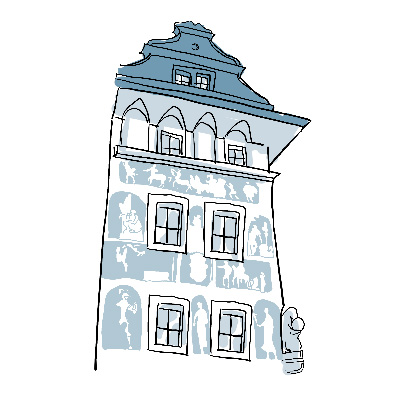
This beautiful dwelling covered in sgraffito, decorative wall engravings with a scratched effect, was once home to the Kafka family from 1889 and 1896. The name may not ring a bell to everyone, but it is deeply connected to the Czech capital. Franz Kafka, a 20th-century Austro-Hungarian writer, spent his whole life in Prague.
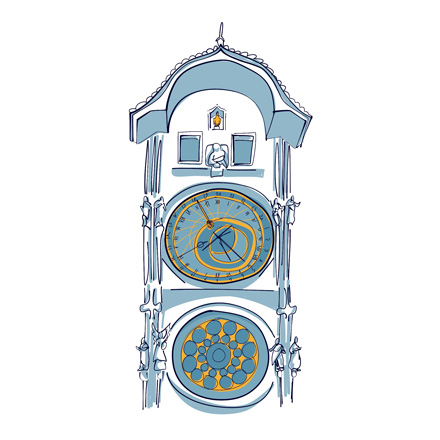
As you explore Prague, you’ll quickly notice that towers aren’t what’s missing in this city. Only one’s worth remembering, and it’s this one. Why so? It’s not its size nor its architecture that make it exceptional, but the colorful treasure adorning one of its façades.
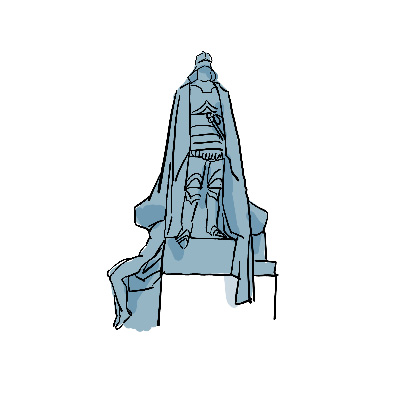
Wandering ghost, hidden treasures, endless horror stories...Prague plunges us into a world overflowing with mystery in every corner. And believe me on this, you’ll soon understand why with this statue near New Town Hall in the Old Town. As dark as the fate that befell him, the Iron Man of Prague is one of the city’s most famous legends.
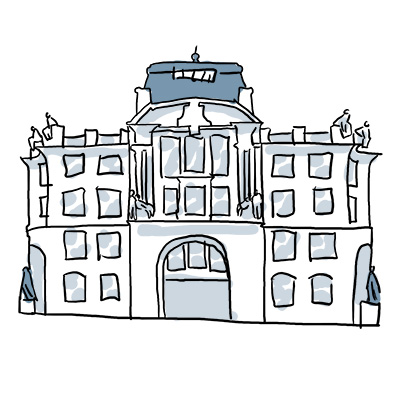
In Prague’s city center, there’s room for two Town Halls. The Old Town Hall, famous worldwide for its extraordinary astronomical clock. And the New Town Hall, more discreet, more isolated, yet just as fascinating. The idea of creating a new building emerged in 1904, when the City Council launched a competition to find the perfect architect for the project.
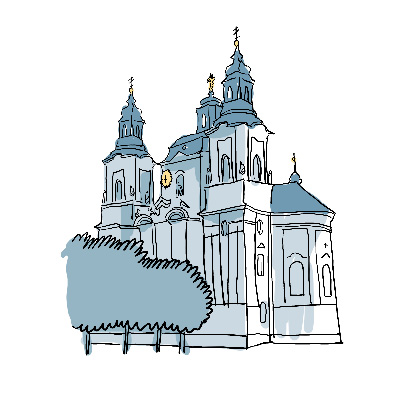
Easily noticable thank to its white façade and green rooftops, this is St. Nicholas Church. Different from the one in Malá Strana, it has stood here in Old Town Square for 800 years. The most remarkable feature of this Baroque masterpiece is its massive dome, reaching 79 meters in height, lantern included.
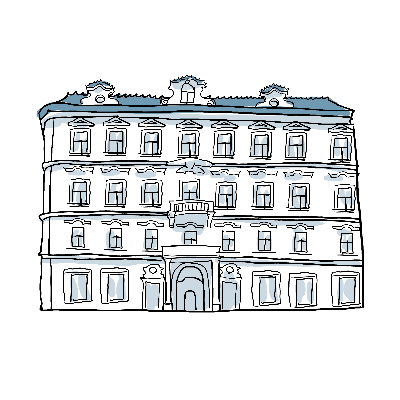
"Destroy yourself to know yourself. Build yourself to surprise yourself. The important thing is not to be, but to become." How many of you can guess the brilliant mind behind this beautiful proverb? A tricky question—unless you’re a connoisseur of Czech literature and, more specifically, of Franz Kafka. This Jewish Austro-Hungarian writer is part of the city’s fabric.
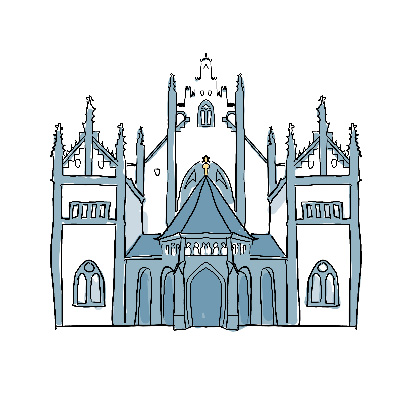
Among Prague’s seven famous synagogues, Maisel Synagogue was once the largest and most beautiful building in the city’s Jewish ghetto. Built between 1590 and 1592, it was named after its founder, Mordechai Maisel, the great leader of Prague’s Jewish community during the 16th century.

In Old Town Prague, a district particularly stands out—yet remains deeply rooted in the city’s history. You can easily guess when you’ve entered the Jewish Quarter without checking your phone. It was named Josefov after Emperor Joseph II, a man who granted freedom to Jewish communities during the 18th century.
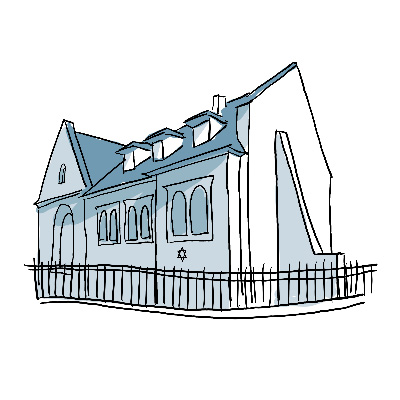
With its refined Gothic-Renaissance style, Pinkas Synagogue was built in 1535 for one of Prague’s Jewish leaders. Originally designed for his family’s private use, it was later opened to accommodate the growing number of Jewish worshippers.
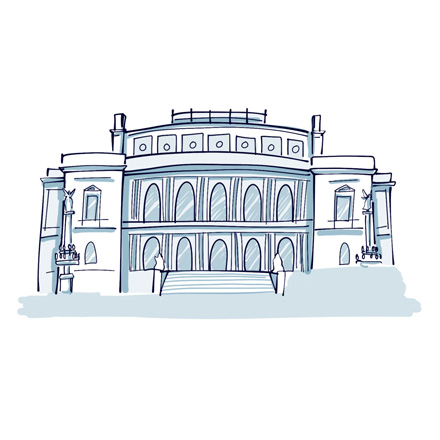
Not far from the Vltava River, you may hear a more cheerful melody guiding you toward this grand building. The Rudolfinum is a world-renowned concert hall, famous for hosting the first-ever performance of Antonín Dvořák’s New World Symphony in 1896. A great classical music artist of Czech origin whose statue can be found at the building’s entrance.
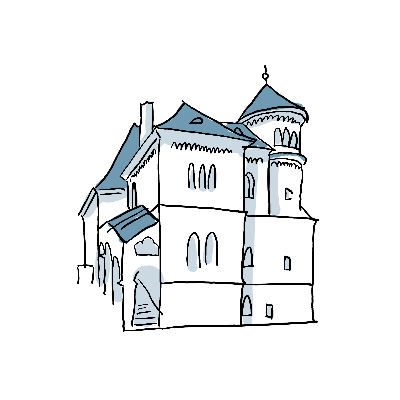
Despite being closely located to the Old Jewish Cemetery, this monument is more than just a haunted house. This is the only Baroque-era synagogue still preserved in Prague, named after three small structures that once stood here, the "Klausen". The first one was a higher education school dedicated to studying the Talmud, the fundamental text of Judaism.
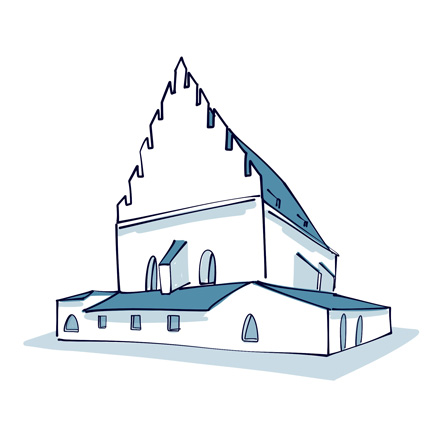
Please do not underestimate the rather austere building standing before you, because it’s no other than the oldest synagogue still in activity in Central Europe. I know, it doesn’t look like it, but it’s true! When it was built in 1270, it was originally called the “New Synagogue” as it replaced an even older structure.

Though our knowledge of architecture may be limited, we’re confident in saying that this building is a remarkable and radiant piece of construction. And you better agree! With its Arab-Andalusian influences similar to the Alhambra in Granada, the Spanish Synagogue offers us a breathtaking contrast from Prague’s usual scenery.

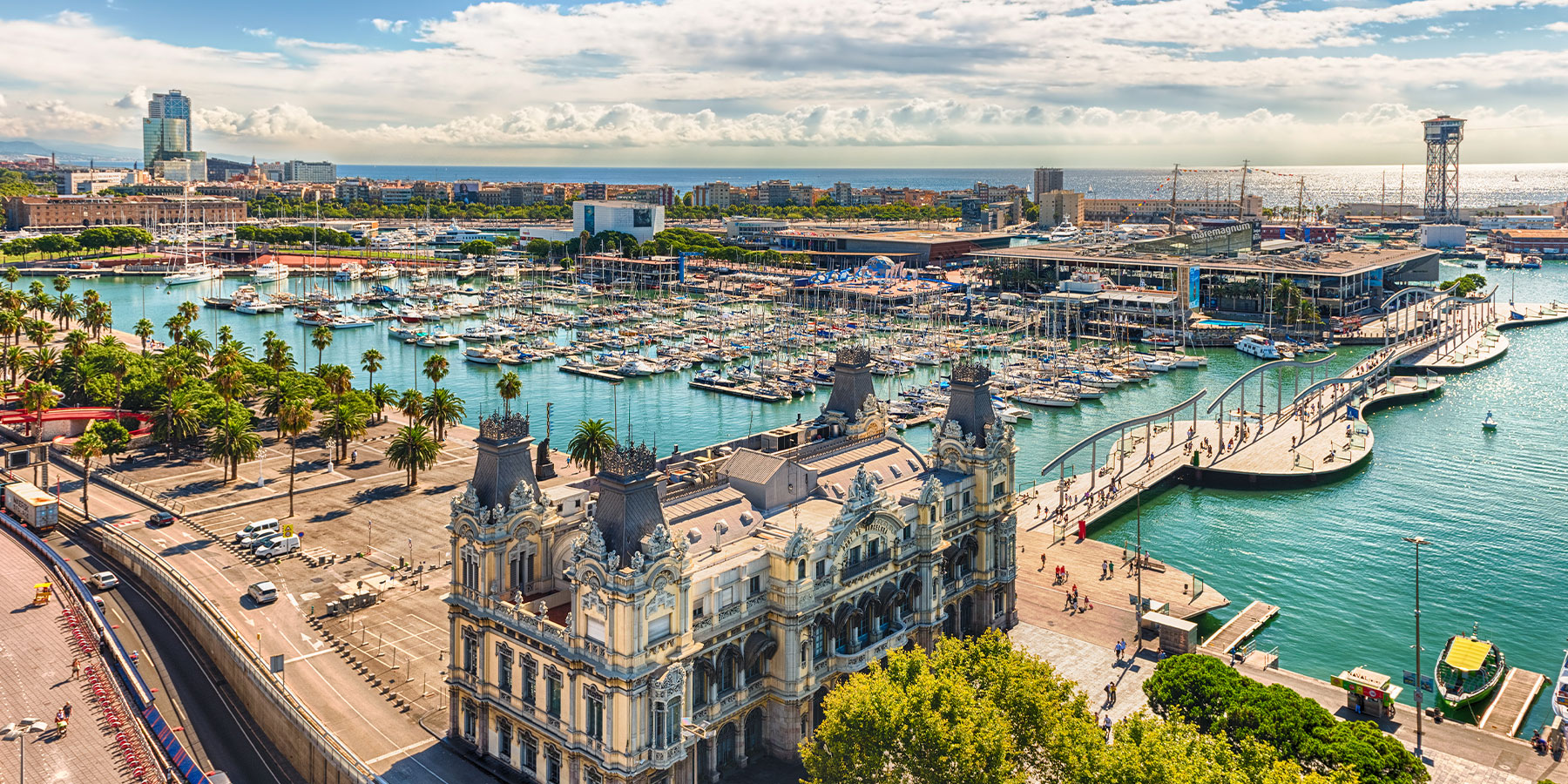

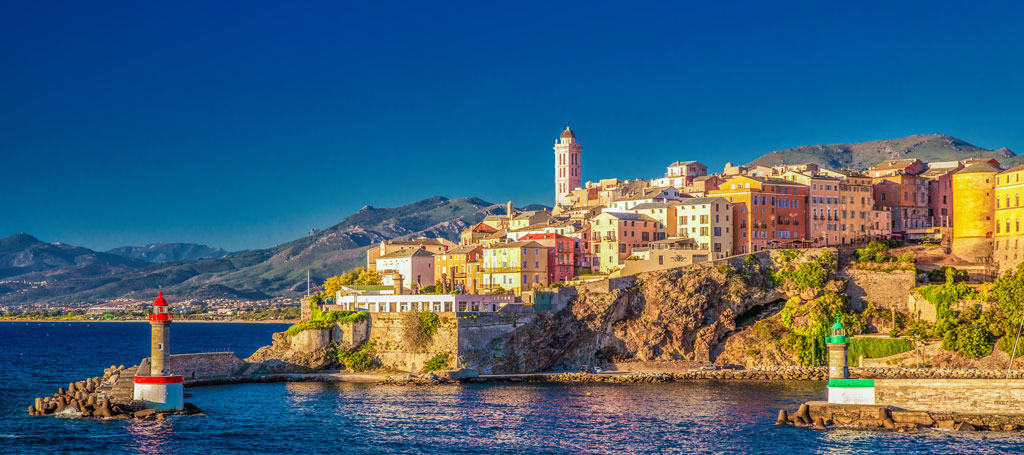
Governors’ Palace

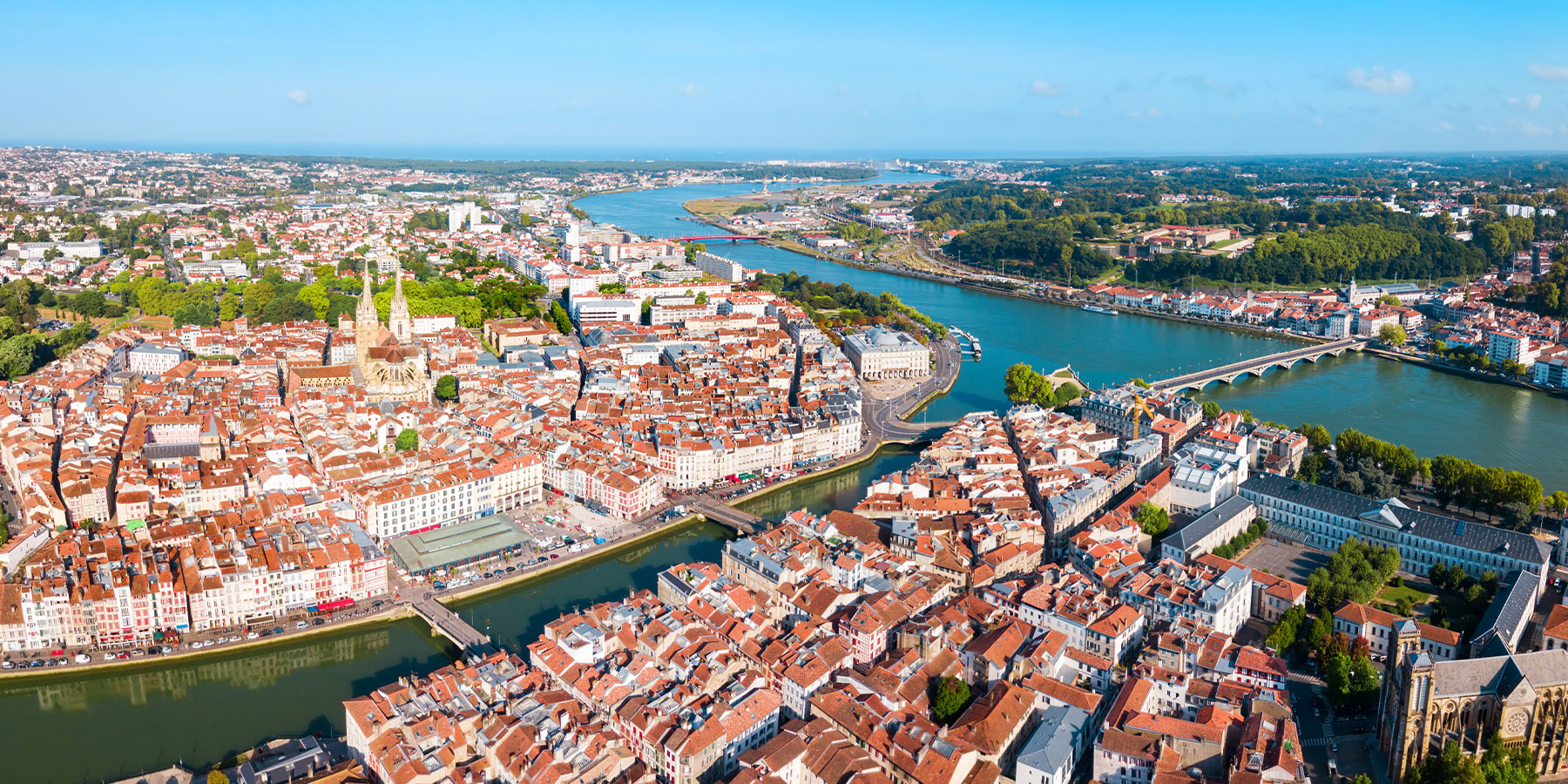
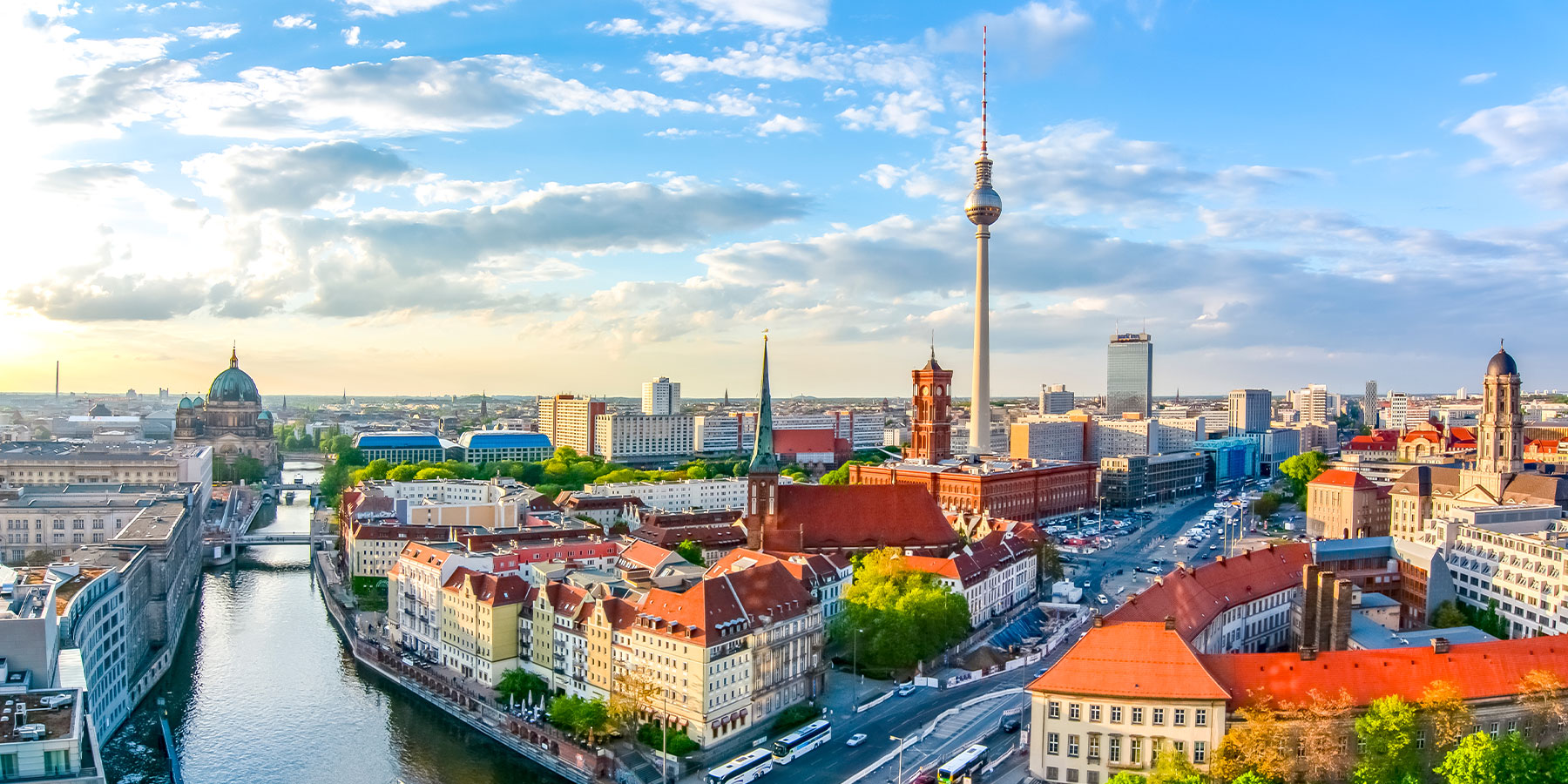

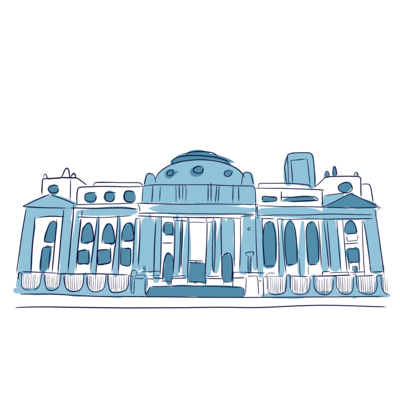
The building in front of you is so elegant that it could be mistaken for the Fine Arts Museum, but it’s actually the National Library of Chile, one of the first institutions
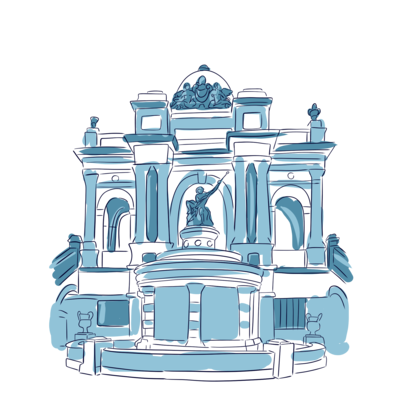
You’re now standing on the Neptune Terrace, in front of the stunning fountain that shares its name. This grand tribute to the Roman god of the sea was built between 1897 and 1903 as the dramatic entrance to Santa Lucía Hill. At the time, Santiago was in the middle of a major beautification effort, and the city’s mayor, Benjamín Vicuña,

Climbing to the top of Cerro Santa Lucía might leave you a little breathless, but it’s worth every step. You’re now standing on Pedro de Valdivia Square, named after the Spanish conquistador who defeated the local Indigenous forces and founded Santiago. Back then, the hill was called Huelén, which means “curse” in the Mapuche

During the Reconquest—the Spanish Empire’s last attempt to maintain control over Chile—Cerro Santa Lucía was transformed into a royalist stronghold. You’ve probably already noticed the old cannons and fortified gates, and now you’re standing in front of the Castillo Hidalgo. This small castle at the top of the hill was built in 1816 on the
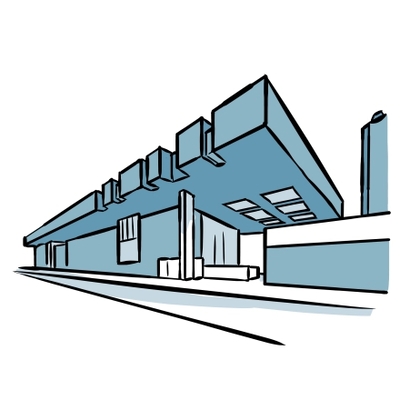
We’re now at a very special place in Santiago—the Gabriela Mistral Cultural Center, better known as the GAM. It’s one of the city’s most dynamic cultural spaces, hosting everything from theater and dance to visual art, music, and public debates. The center opened in 2010, but the building itself has a much longer story. It was
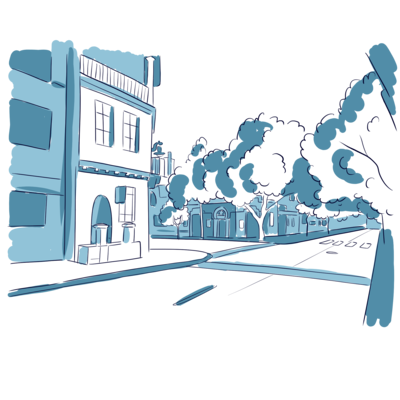
You’re now in the heart of the Lastarria district, Santiago’s artistic and creative hub. Within just 2 or 3 streets, you’ve got everything for a perfect day out—an artisanal market, second-hand book stalls, the Gabriela Mistral Cultural Center, several museums, an indie cinema, charming hotels, and a wide range of bars and restaurants.
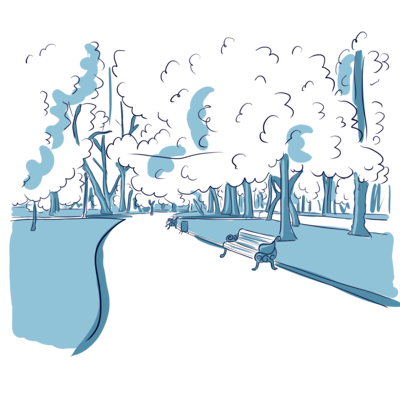
You’re now in Santiago’s beautiful Parque Forestal, one of the city’s favourite green spaces. This park was created in the 19th century on land reclaimed after the Mapocho River was channelled, which still runs alongside the park today. Locals love it for lunch breaks, weekend strolls, or simply lying on the grass and soaking up the sun.

The Pio Nono Bridge takes you across the Mapocho River and into the vibrant Bellavista neighborhood. Behind you is Baquedano Square—though most locals still call it by its old name, Plaza Italia. It’s more than just a traffic hub; it’s widely seen as the symbolic dividing line between Santiago’s wealthier neighbourhoods and its working-

Welcome to the bohemian neighbourhood of Bellavista. You’ve just passed through Patio Bellavista, a buzzing area packed with shops, restaurants, and energy, and now you’re strolling down Constitución Street, lined with colourful houses, open-air terraces, and a laid-back vibe. During colonial times, the area north of the
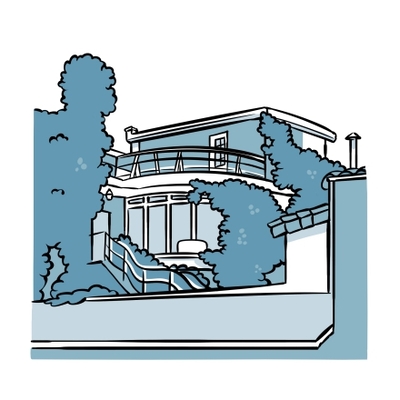
You’re now at La Chascona, Pablo Neruda’s third house—and the only one he owned in Santiago. “Chascona” means “woman with messy hair,” a playful nod to the curly red locks of Matilde Urrutia, Neruda’s third wife and lifelong muse. The couple met nearby in Parque Forestal and eventually settled here, in this quirky blue
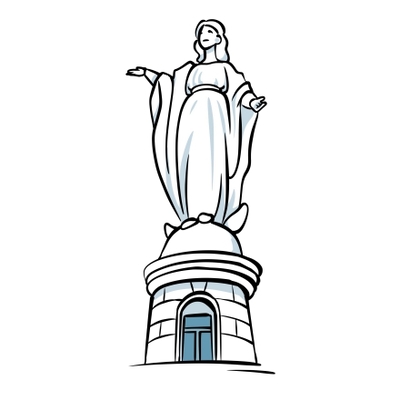
You’re now at the foot of the famous Cerro San Cristóbal, one of Santiago’s most iconic landmarks. Rising 860 meters above sea level, this scenic hill offers sweeping views of the city and the Andes Mountains beyond. It’s a perfect spot to take in Santiago’s landscape. If you’re not quite ready to climb it now, no worries—you can always come

You’ve probably noticed that Bellavista’s streets are covered in colourful, creative, and politically motivated street art. While Valparaíso tends to get most of the attention for its poetic and vivid murals, Santiago holds its own with pride. Street art first emerged here during the Pinochet dictatorship as an act of resistance, a quiet but powerful

Welcome to the Museum of Fine Arts. This grand neoclassical palace, inspired by the Petit Palais in Paris, was designed by Franco-Chilean architect Emilio Jéquier and inaugurated in 1910 to mark the centennial of the Republic. It was built to give a proper home to the Museum of Fine Arts, which had been founded in 1880 but was

You’re now just a short walk away from Santiago’s main market, the perfect place to be if you’re feeling the slightest bit hungry. Stepping into the Mercado Central is a full-on sensory experience—the colours, smells, sounds, and constant buzz of activity have filled this iconic space since it opened in 1872. If you’re a seafood lover, you’re
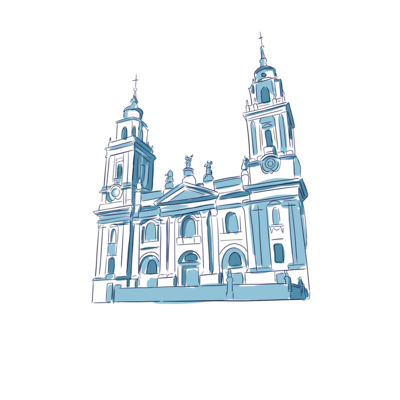
On your right stands the Church of Santo Domingo, founded by the Dominican Order—the third religious order to arrive in Chile after the Order of Mercy and the Franciscans. Building a church in Chile is one thing, but getting it to survive the country’s relentless earthquakes is something else. The first chapel was built back in
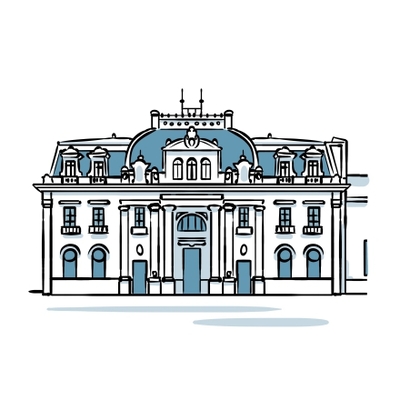
This northern side of the Plaza de Armas once belonged to Pedro de Valdivia, whose equestrian statue stands behind you. After his death, the land was divided into three sections, and several key institutions were built here. The elegant sand-colored building in front of you is now home to Chile’s National History Museum, but it
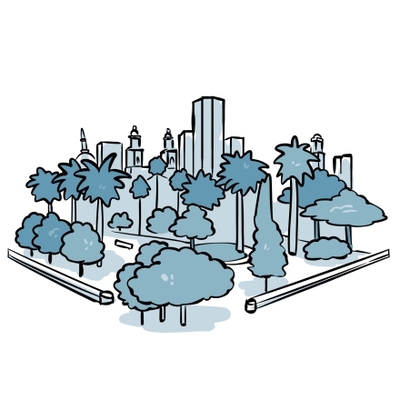
Welcome to Santiago’s Plaza de Armas. Like many major cities in South America, Santiago has its own “Plaza de Armas” right at the heart of the old town. These squares were laid out by the Spanish conquistadors to concentrate all the key powers of the time in one place. You’ll usually find the cathedral and the cabildo—the old
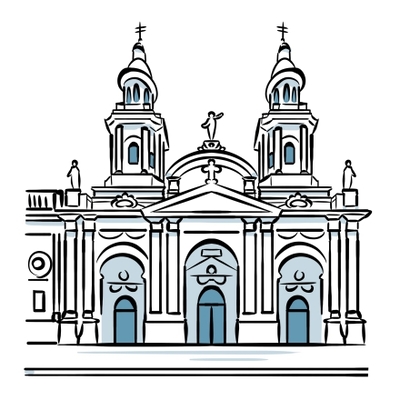
On the corner of Plaza de Armas stands the Metropolitan Cathedral, the seat of the Archdiocese of Santiago. Building it was no easy feat. This stunning church is actually the fifth version to stand on this site, with the earlier ones all falling victim to fires or earthquakes. The Spanish settlers hadn’t grasped how frequently the country is hit by
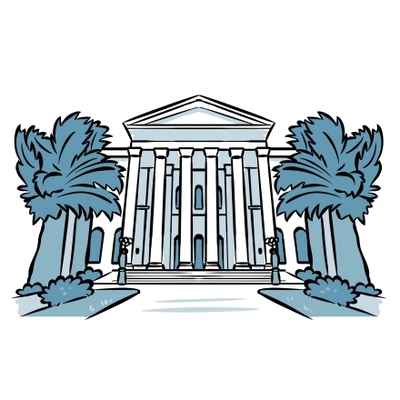
You’re now standing between two of Santiago’s most important landmarks: the former National Congress and the Palace of Justice. On your right is the old National Congress building, standing behind iron gates and lush gardens. It was founded in 1811, during Chile’s fight for independence. Back in the 16th century, this land belonged
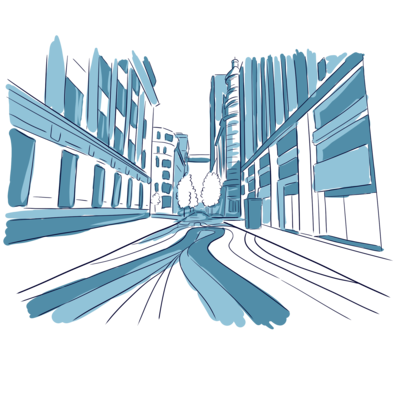
You’re stepping into a Technicolor dreamscape, an initiative of the Paseo Bandera project. What used to be a regular street filled with cars and people has been reimagined as a massive open-air artwork by Chilean street artist Dasic Fernández. Growing up in 1990s Chile, Fernández was surrounded by street culture. Today, his bold and
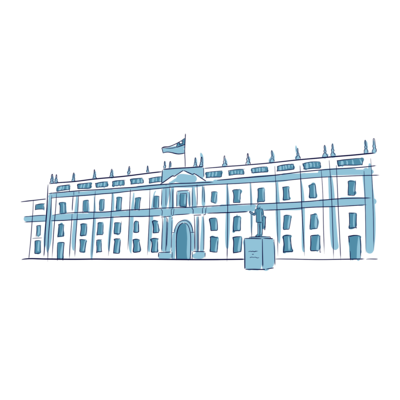
Welcome to Plaza de la Constitución, the heart of Santiago’s civic district, surrounded by numerous government buildings. In front of you stands the grand Palacio de La Moneda, flanked by the Ministry of Finance, the Ministry of Foreign Affairs, the Ministry of Justice, the Central Bank of Chile, and what was once the Intendencia of
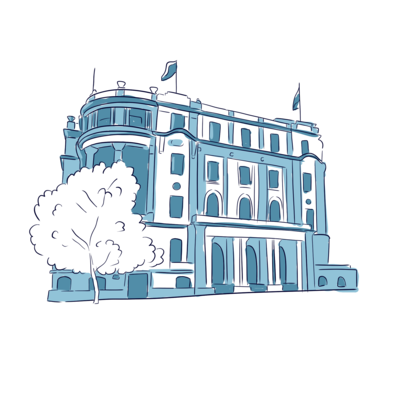
The elegant, stately building in front of you is the Club de la Unión, founded in 1864 as an exclusive meeting place for Chile’s aristocracy. Since colonial times, the country’s elites had a tradition of gathering to debate, socialise, and exchange ideas. This club quickly became the top spot for political and social life after independence.
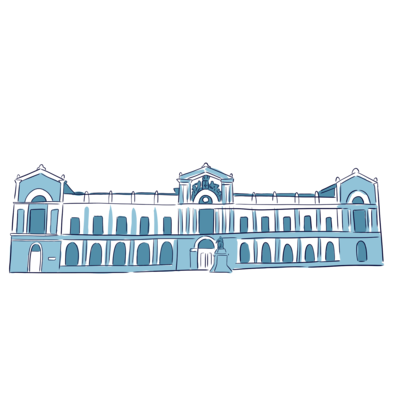
The yellow building you see here is the University of Chile, fondly known as “La U.” Founded by the Chilean state on September 17, 1842, it was the first university established in the new Republic and is considered the country’s most prestigious academic institution. When it was created, “La U” replaced the Real Universidad de San
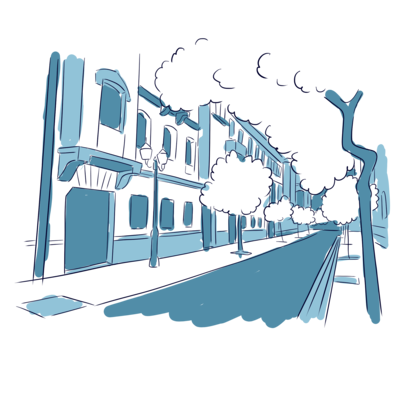
Time for a quick detour to Europe, as we wander through the charming streets of Paris and London, pronounced “París” and “Londres” in Spanish. This land originally belonged to the Franciscan friars of San Francisco Church, but in the early 20th century, the Church began selling off parts of its property after facing financial troubles.

Welcome to the San Francisco Church and Convent—one of Santiago’s most important historical landmarks and the oldest colonial building still standing in the city. It was founded in 1622 by the Franciscan friars, to whom it owes its name and long legacy. Take a moment to look at the thick stone walls, that have stood firm through
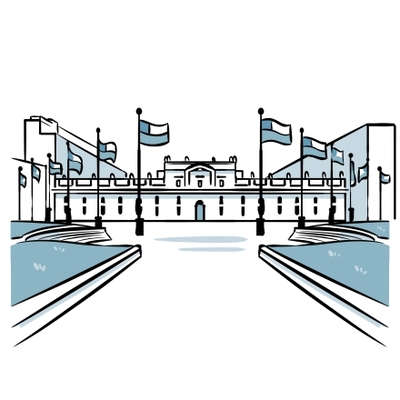
You’re now standing on the other side of the grand Palacio de La Moneda, the official residence of Chile’s president. It’s called the Palace of the Mint because it started out as the country’s coin mint in 1814, and held this role until 1922, even though the presidential offices had already moved in by 1846. The palace was designed in an
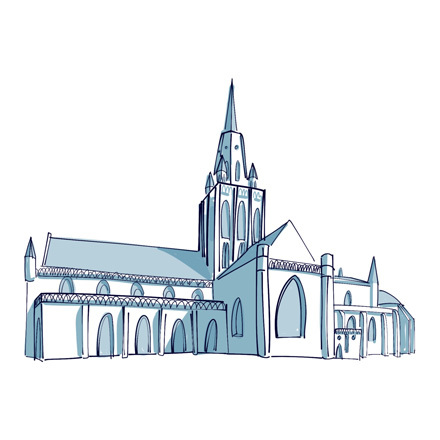
Right in the heart of the old town, Notre-Dame Church is one of Calais’s most symbolic landmarks. Construction began in 1223, and continued with various additions until the 16th century—a period during which the city was,
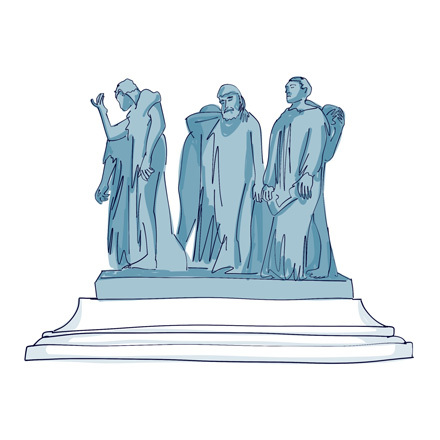
By the early 1880s, Auguste Rodin was still trying to make a name for himself. He’d faced several setbacks in public commissions—until a new opportunity arose. In 1884, he was commissioned to create a monument for
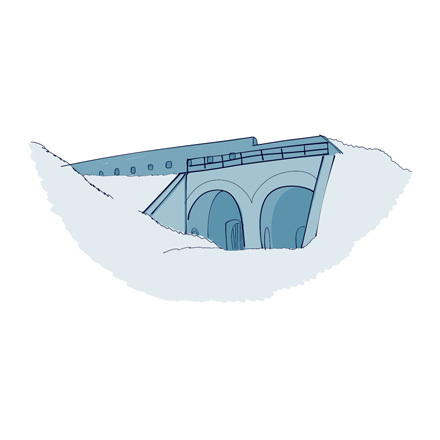
Perched at the end of the outer harbor, Fort Risban is a powerful reminder that Calais has long been a prized location on the Channel. The first fortifications here date back to the 14th century, during the Hundred Years’
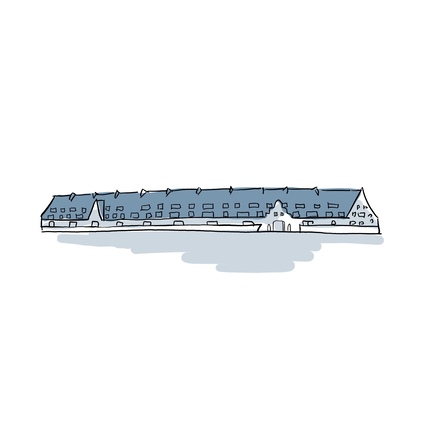
A simple row of houses, a small dock, a basin that dries up at low tide—it may not look spectacular at first glance. But Courgain Maritime is the heart and soul of Calais’s maritime heritage. Known as the Paradise
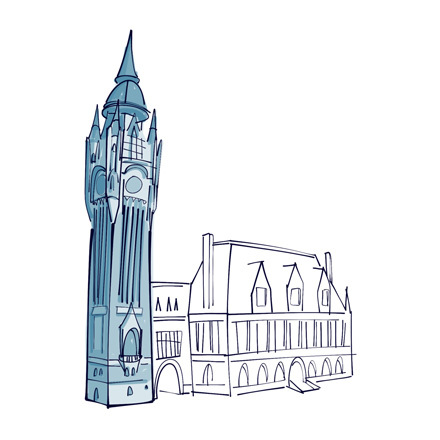
Belfries are deeply rooted in the heritage of northern France. They once symbolized civic pride and power, while also adding vertical drama to landscapes that were mostly flat. In Calais, the belfry—attached to the
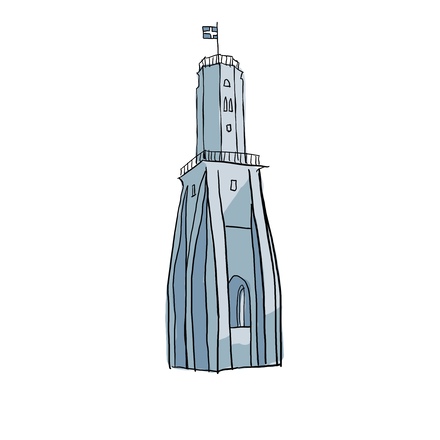
With its shops, cafés, and restaurants, Place d'Armes is the favorite spot for local demonstrations and the main meeting place for residents. This square both brings Calais to life and keeps it alive. And here's the
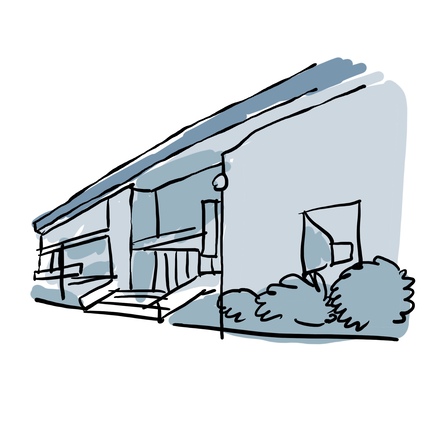
Let’s be honest: in terms of architecture, the Calais Museum of Fine Arts might not be the most charming museum in France. Unlike others housed in former palaces or grand old mansions, this one stands in a large
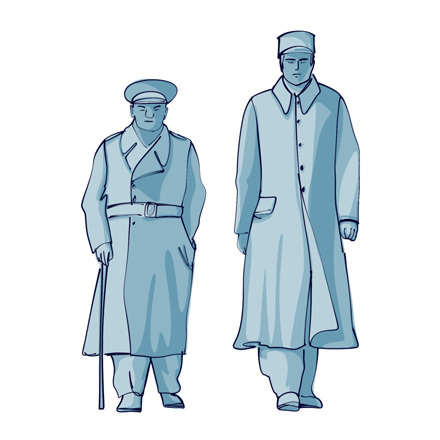
Calais has always lived in the shadow—and in the light—of its proximity to England. On a clear day, you can see the British coastline from the seafront. In the Saint-Pierre district, English lace traditions live on. Here, in
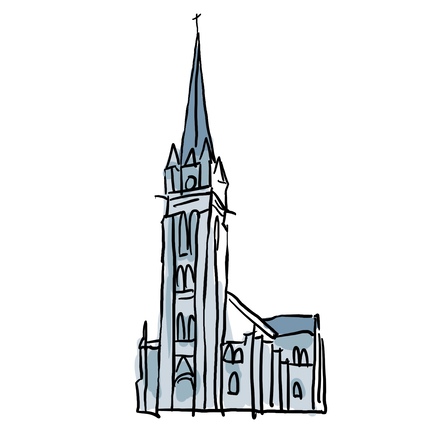
When you think of Calais, what comes to mind? A seaside city with ferries, a bustling port, and generations of fishermen? Or perhaps a place known for its centuries-old tradition of crafting some of the world’s most
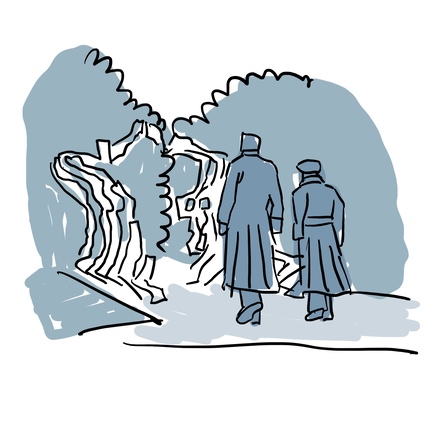
Grassy lawns, shady trees, and a wide cascading water basin—Richelieu Park is one of those places that just makes you want to slow down and breathe. It's the perfect backdrop for discovering some of the stories this
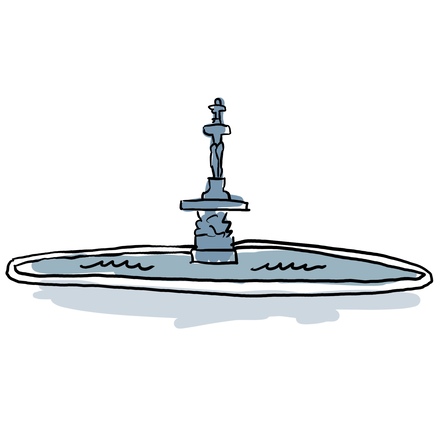
Yes, Calais is a coastal city—but it’s also a green one. Of its 3,350 hectares, around 350 are dedicated to parks, gardens, and wooded areas. One of the oldest and most beloved of them is Saint-Pierre Park. Opened in 1863

The Town Hall may share its elegant brick-and-stone look with the belfry, but it’s still waiting for its own UNESCO status. And honestly, it deserves a bit more love—especially when you hear what it went through to
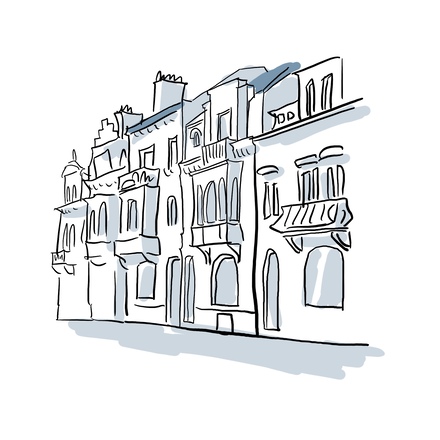
Calais played a key strategic role for both the British and the Germans. As a result, the city suffered deeply during the conflicts of the 20th century—especially during World War II. From the very beginning of the war
Lace from Calais isn’t just beautiful—it’s iconic. A shining example of French craftsmanship, this delicate fabric is woven into the city’s identity. While the Lace and Fashion Museum, located further along the
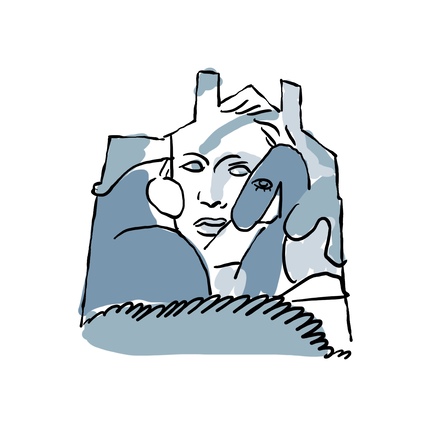
Think Calais is all about lace? Think again. The city also embraces another, more modern form of artistic expression—street art. Just look to your left and you’ll see what we mean. On walls, sidewalks, and entire

After reclaiming Calais from the English in 1558, the French kings had one goal in mind: never to lose it again. To secure the city, they spared no effort—demolishing the medieval castle once occupied by the Counts of
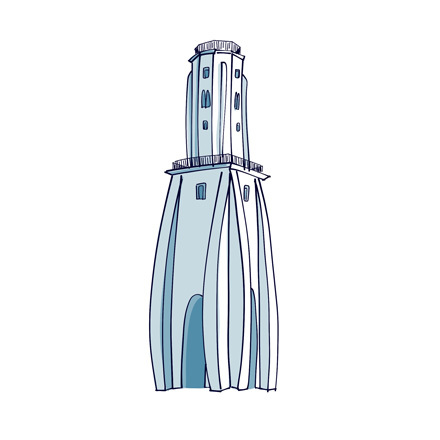
Though much of Calais was destroyed during the two world wars, one proud medieval structure still stands: the Watch Tower. Dating back to the 13th century, it’s believed to have been part of the old castle’s defensive system.

At first glance, you might not notice them among the passersby, but this sculpture in Place d’Armes is actually the first official statue of a presidential couple in France. Since 2013, Charles and Yvonne de Gaulle have
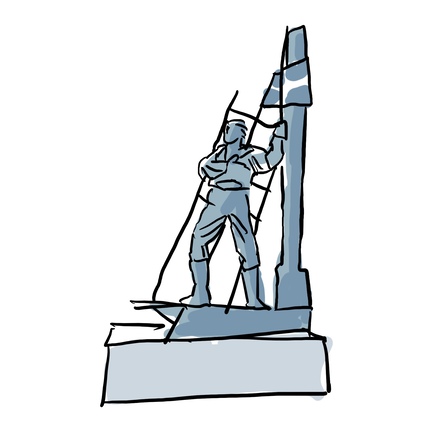
From the Henri Hénon Bridge, you’ll notice many markers of Calais’s heritage—like Fort Risban, the Courgain Maritime district, and the marina’s pleasure boats. But one statue in particular watches over the port with

You may be struggling to identify this corroded bronze shape before you—but don’t worry, we’re here to explain. This moving sculpture holds deep meaning for the people of Calais. Created in 1910 by artist Émile
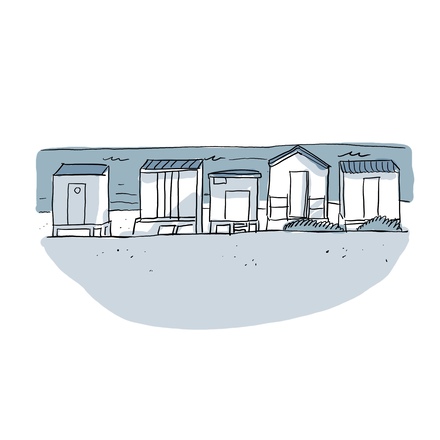
Let’s be honest—Calais’s seafront just wouldn’t look the same without the rows of beach chalets facing the English Channel. Battered by sand and salt-laden winds, these charming little huts are part of a long-standing

Beyond the usual scene of sand and chalets, one striking structure steals the show on the Calais seafront: a massive glass shelter housing something quite extraordinary. Yes—the dragon is here. After Nantes, La
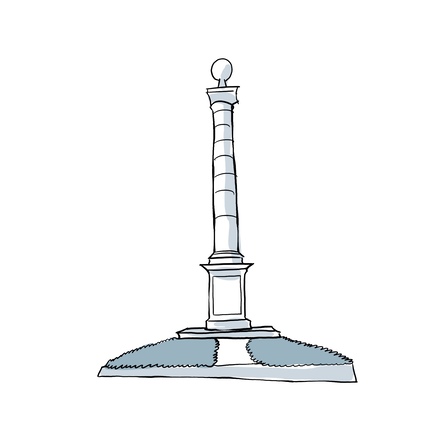
With its elegant silhouette, this white stone column in the Courgain Maritime district commemorates a rather curious moment in Calais’s history. Let’s rewind a bit: after Napoleon's defeat at the Battle of Waterloo and his
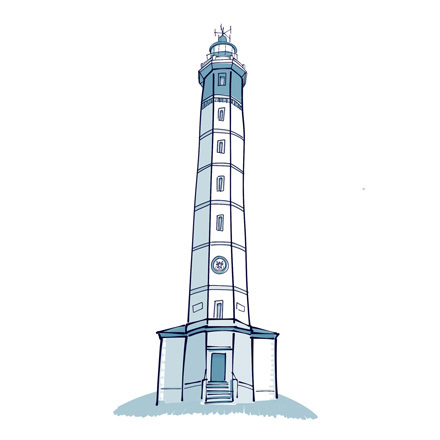
Calais’s long-standing role as a major port has made it vital to maritime navigation. Before the current lighthouse was built, sailors were guided by the old Watch Tower on Place d’Armes. In 1848, a brand-new

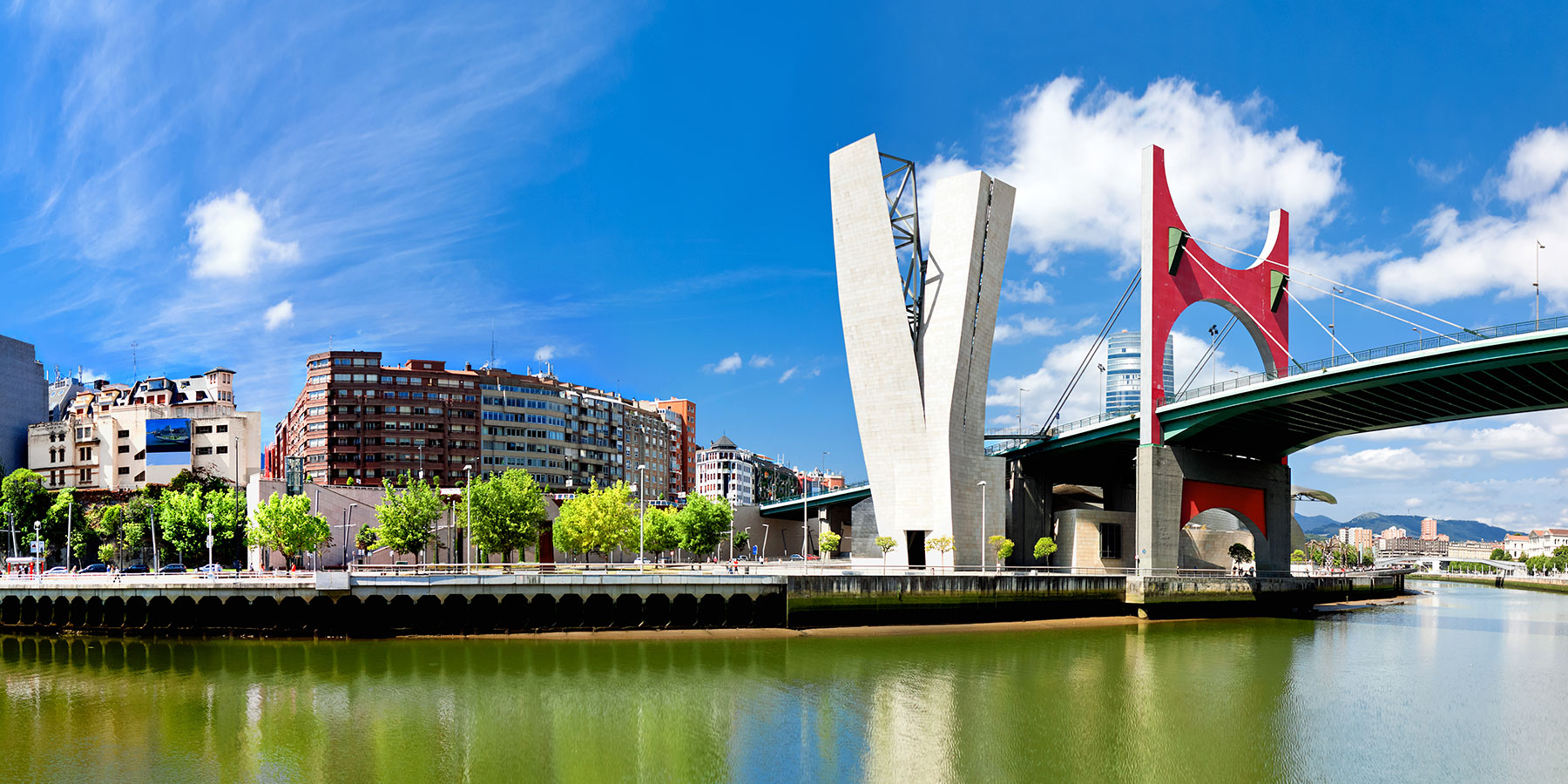

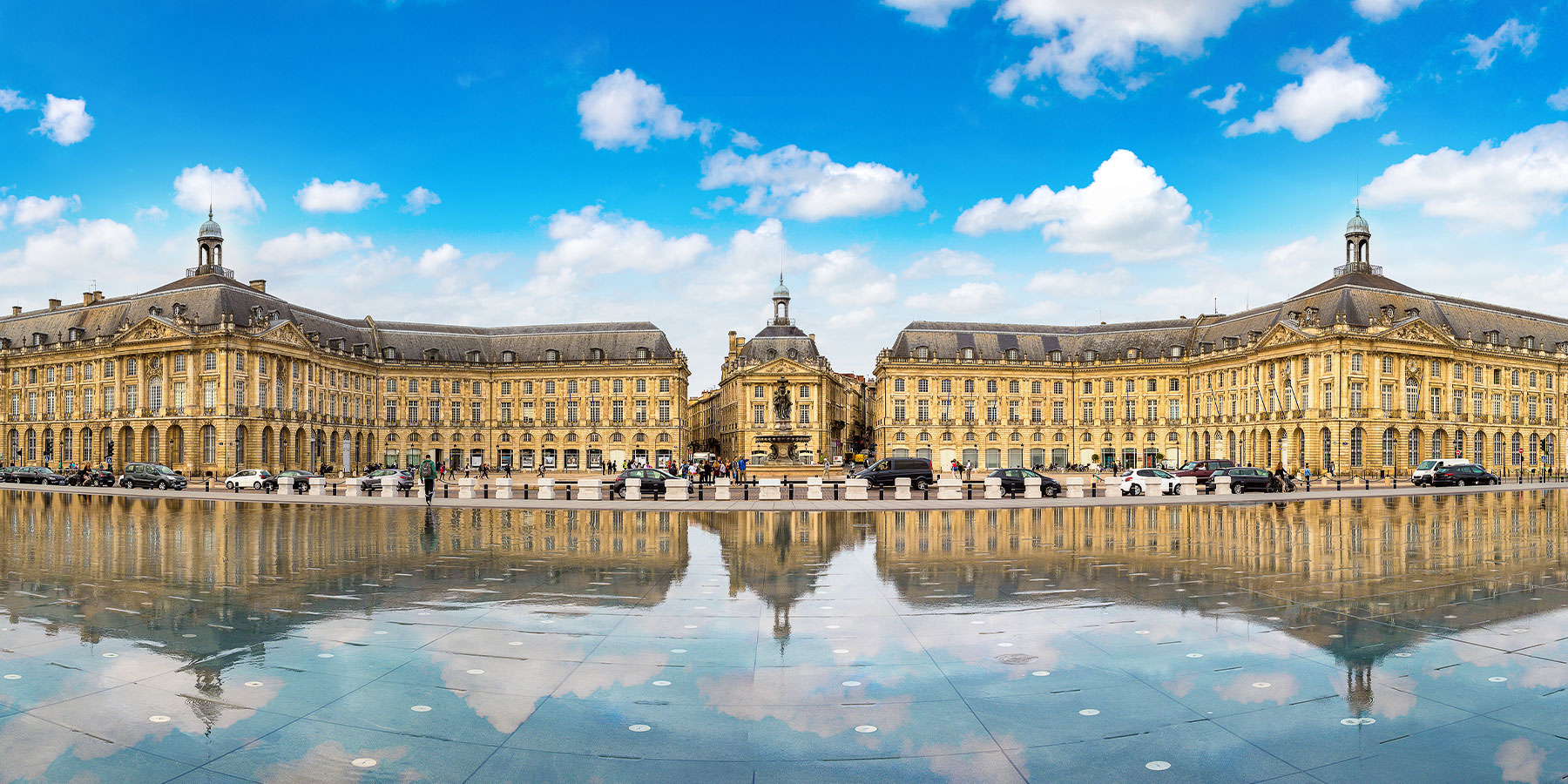
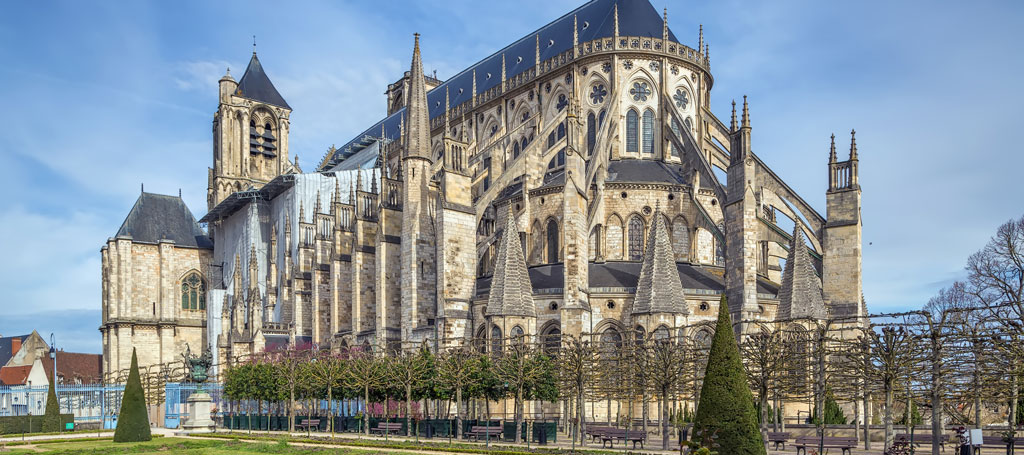
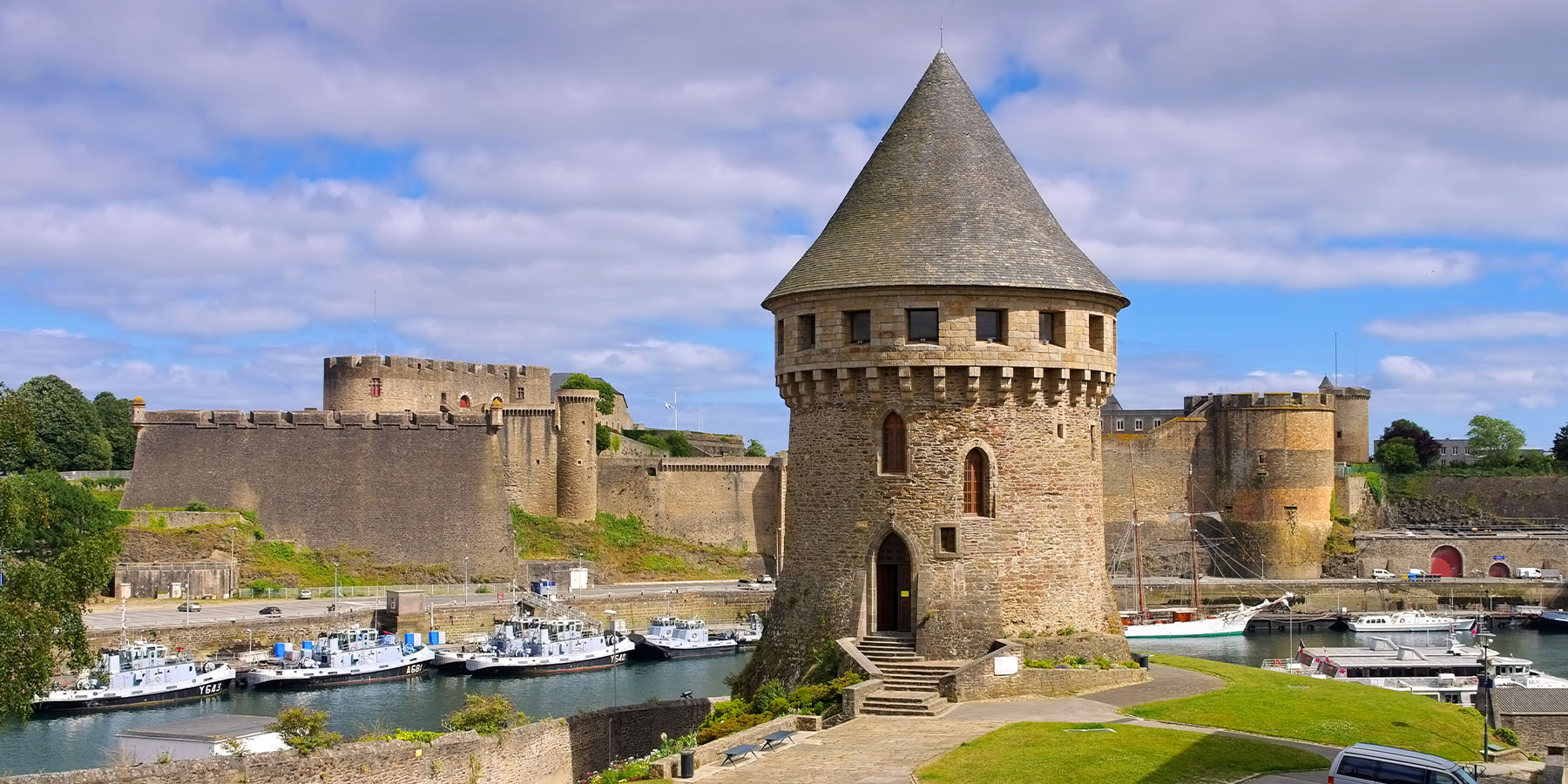

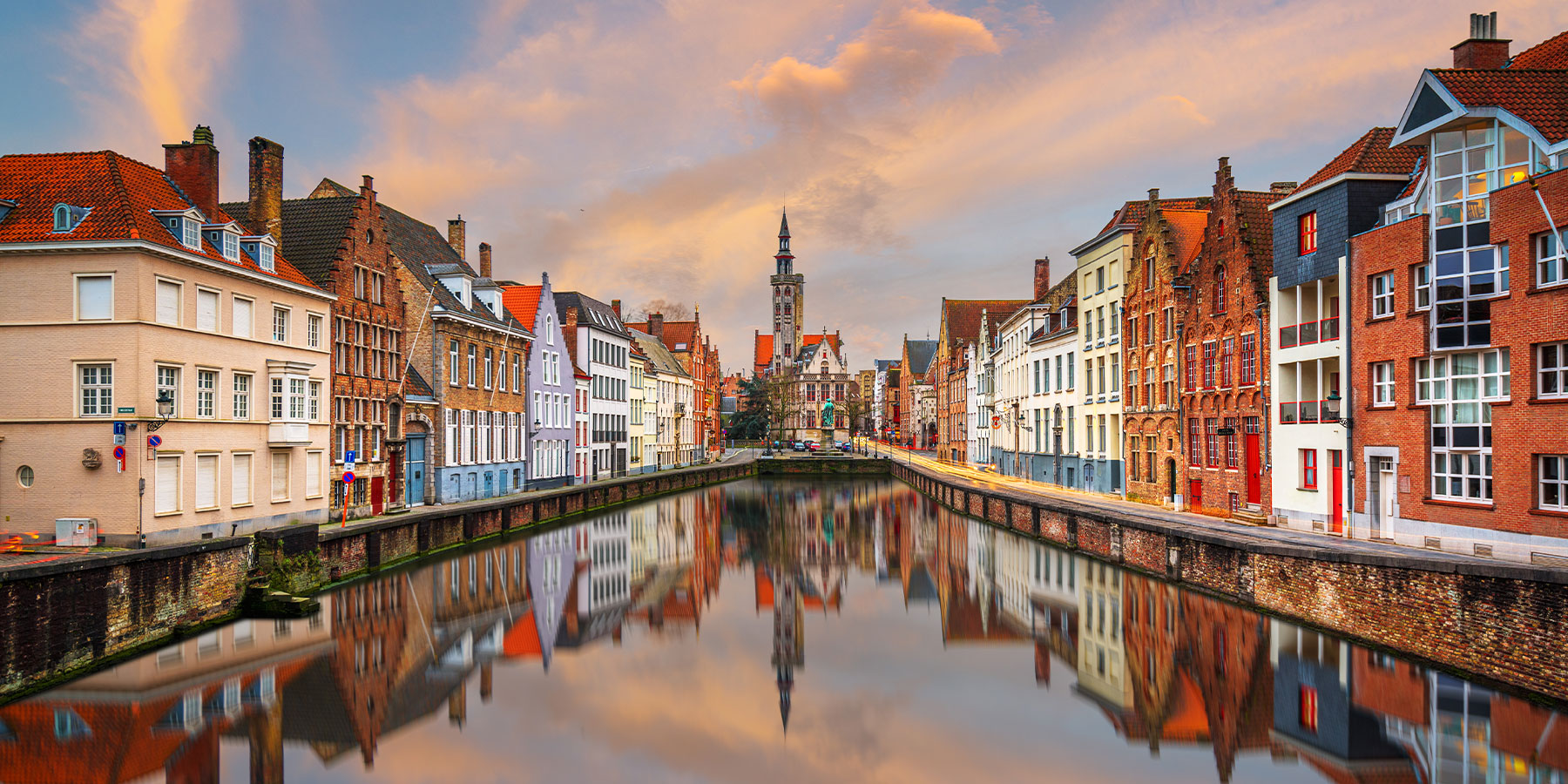
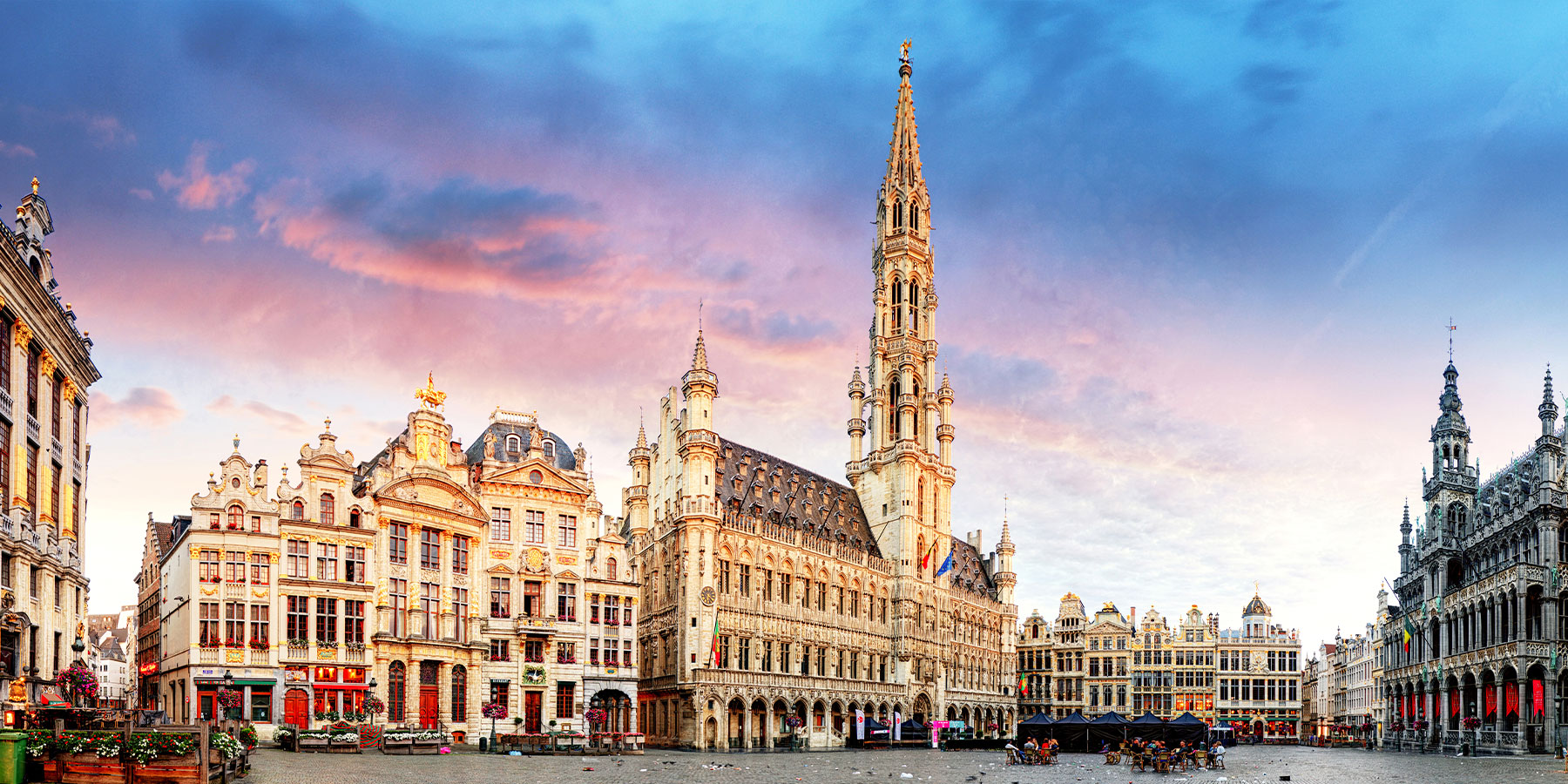
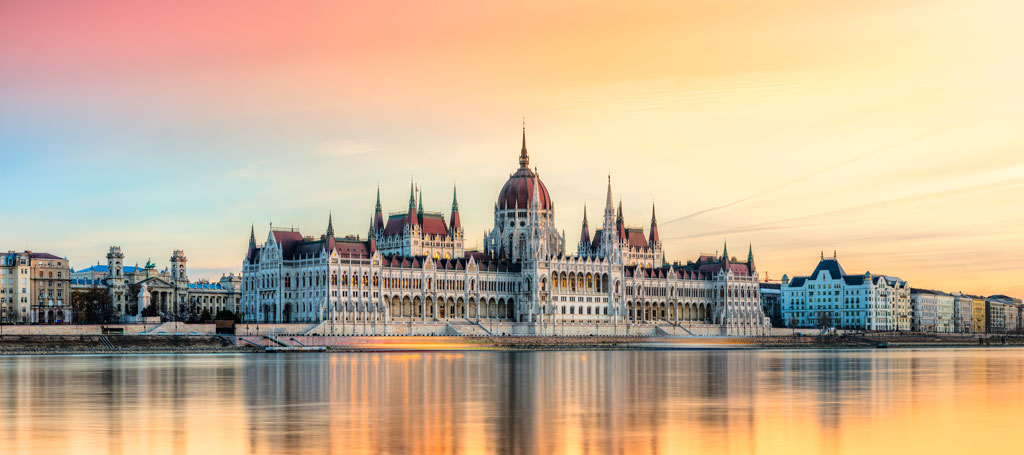
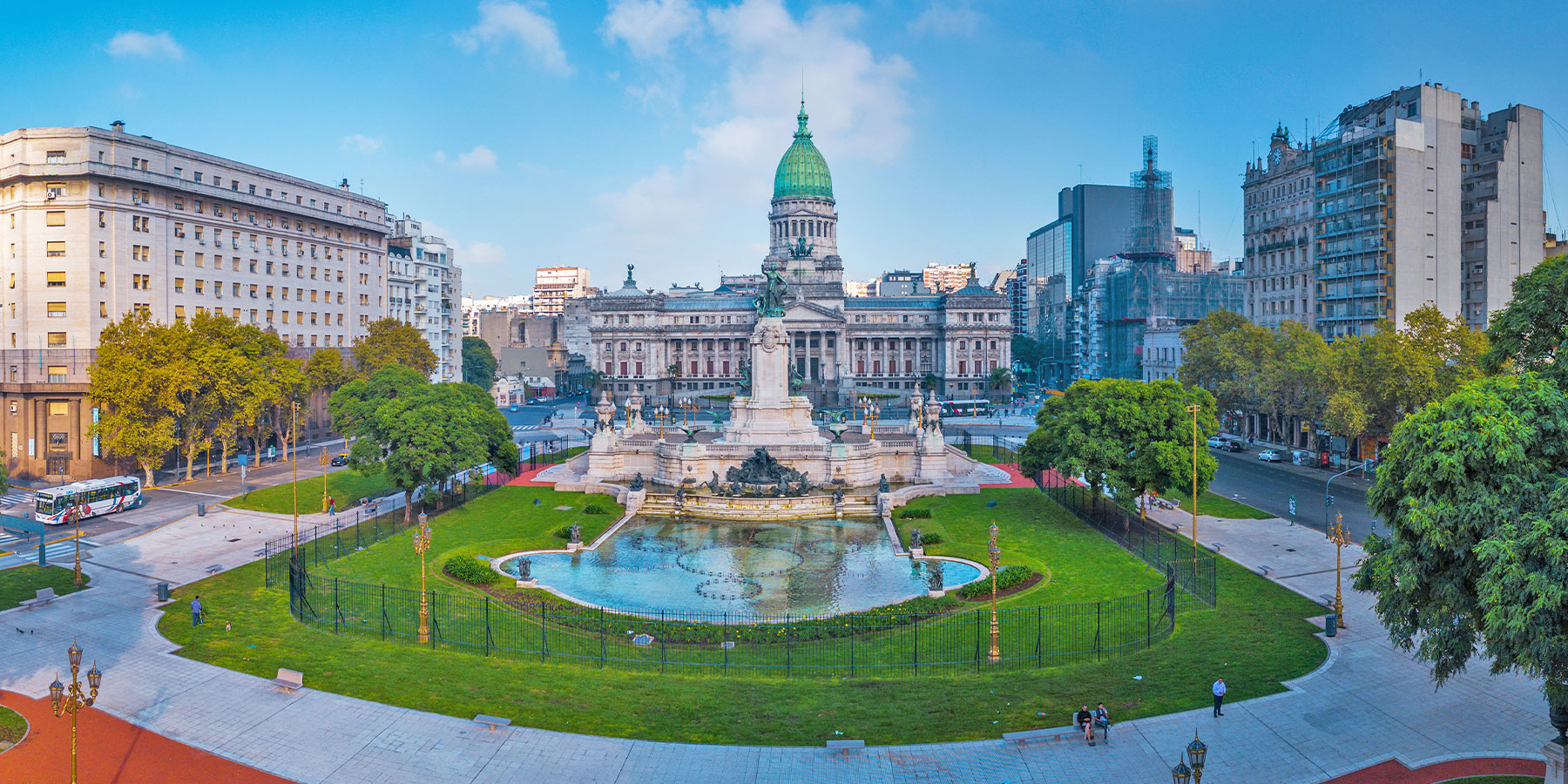

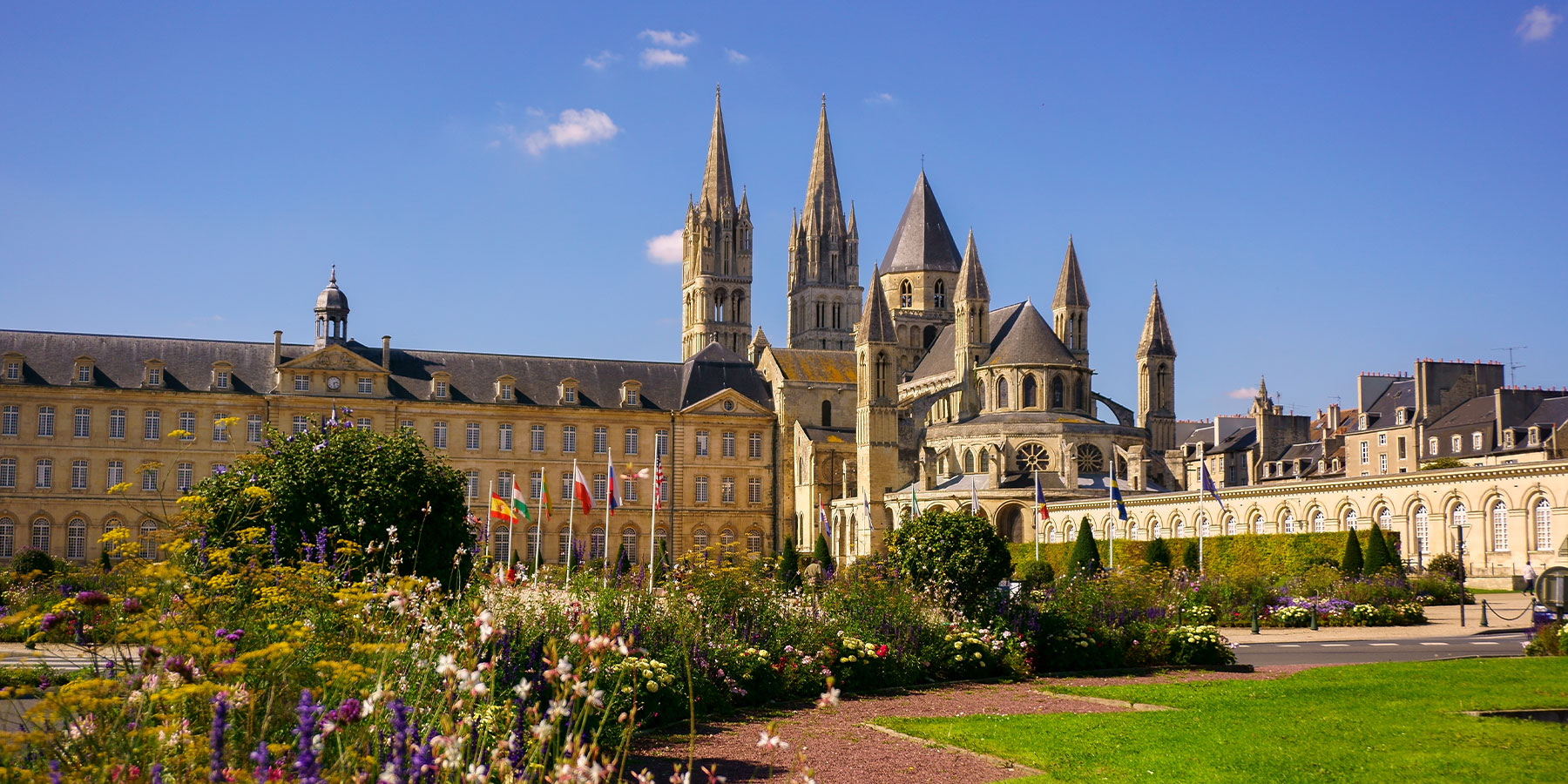
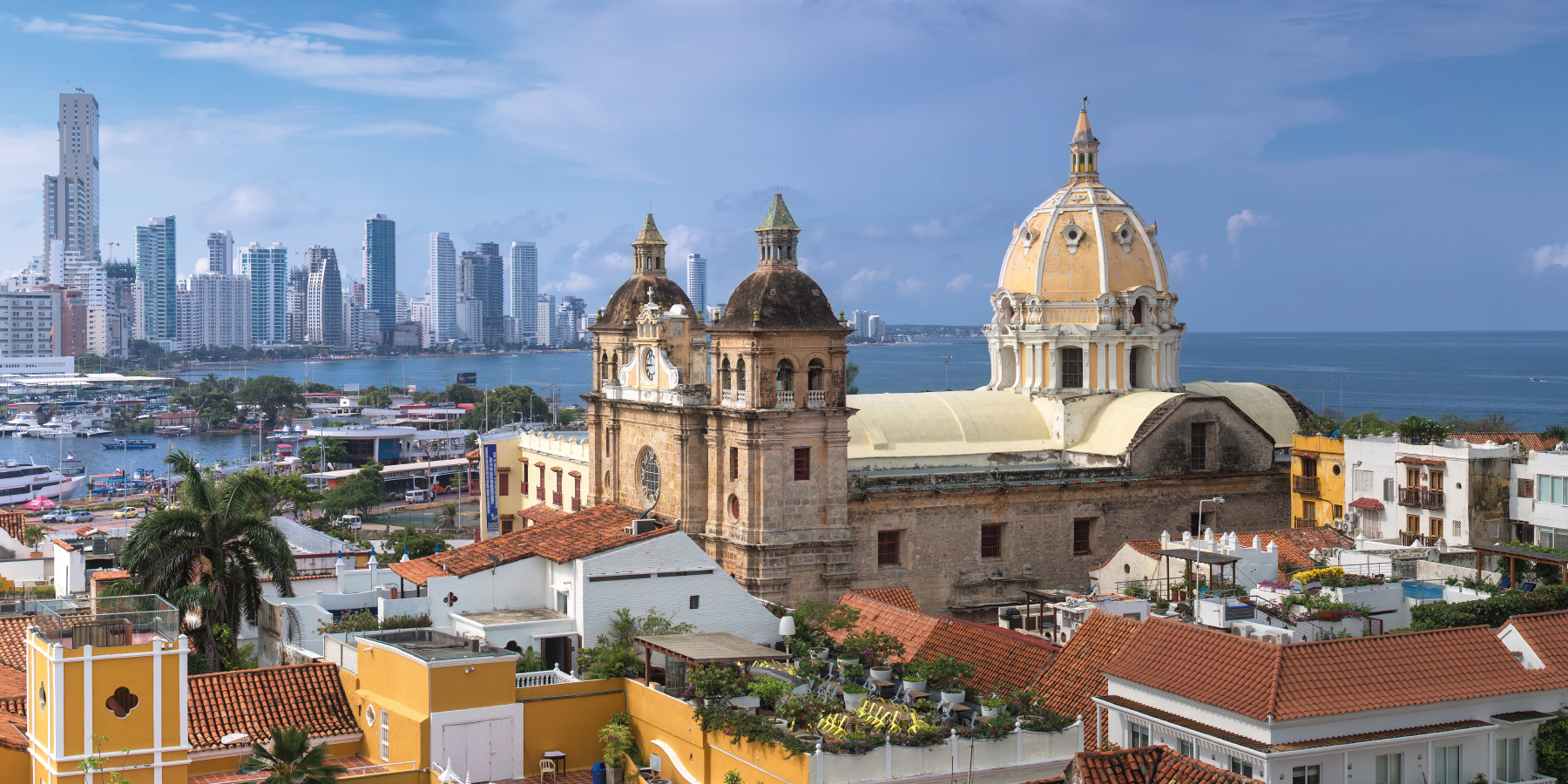
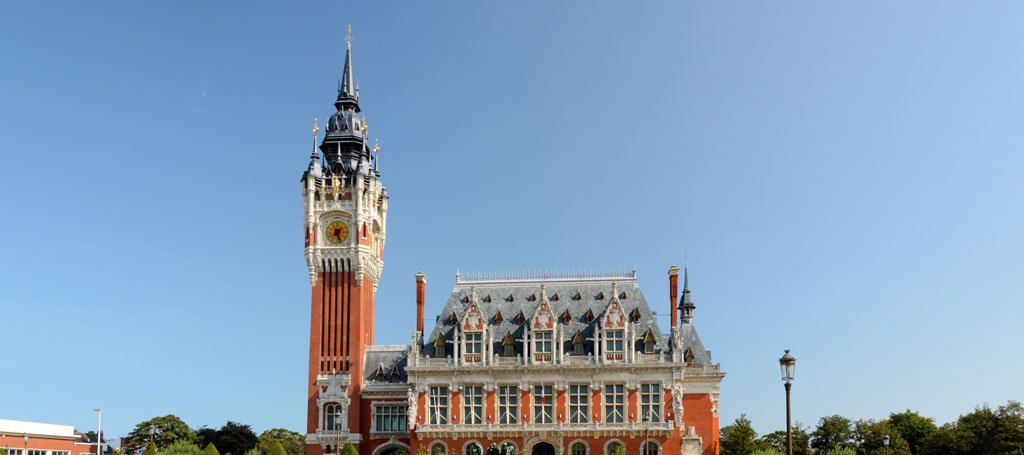
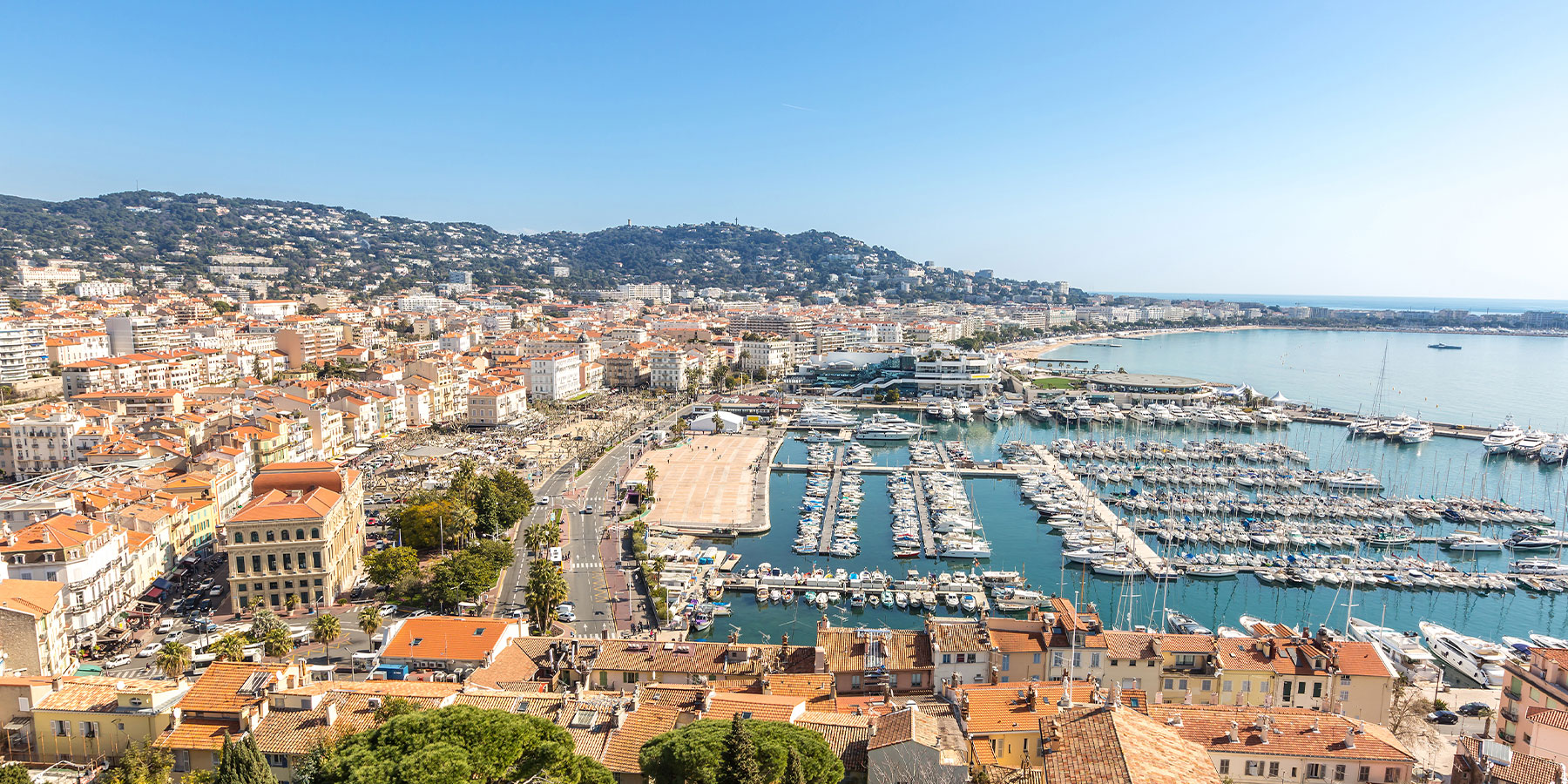
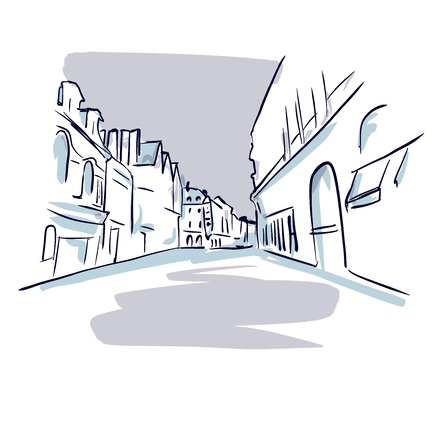
This is Dijon's main shopping street. Dating from the 15th to 18th centuries, it is lined with listed buildings.

Laid out in 1911, Grangier square offers a superb view of the Hôtel des Postes, built in 1907 in Louis XVI style on the site where the Dijon castle once stood.

Darcy square stands at the foot of the Guillaume Gate, one of the twelve gates that surrounded the city in the 12th century.
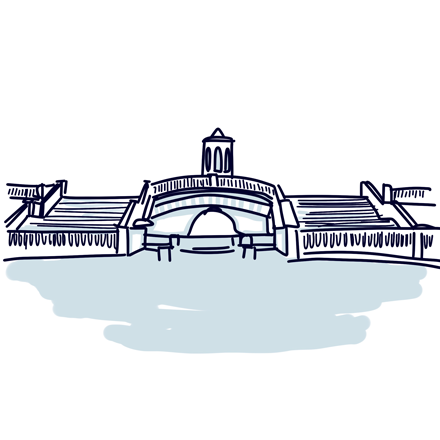
Laid out in 1880, Darcy was Dijon's first public garden. It was built over a large underground drinking water reservoir created in 1838 by Henri Darcy to supply the city's fountains.
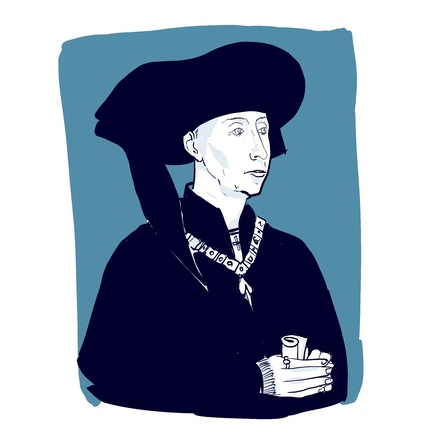
Now that we've reached the historic centre, let's get down to business. The history of Dijon is inextricably linked to the history of France, thanks to the presence and reign of the powerful Dukes of Burgundy.
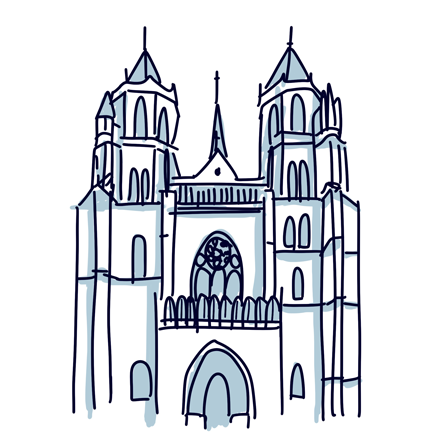
Prior to being a cathedral, this building was a monastery built in 871. It was rebuilt as a cathedral in the 11th century by Guillaume de Volpiano.
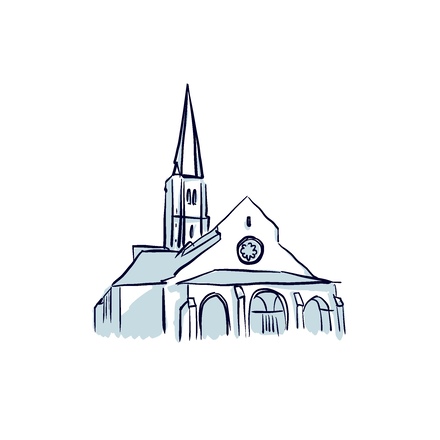
Built in the 12th century after the great 1137 fire, Saint-Philibert is the only Romanesque church in Dijon. It was once dedicated to the winegrowers who lived in the area.
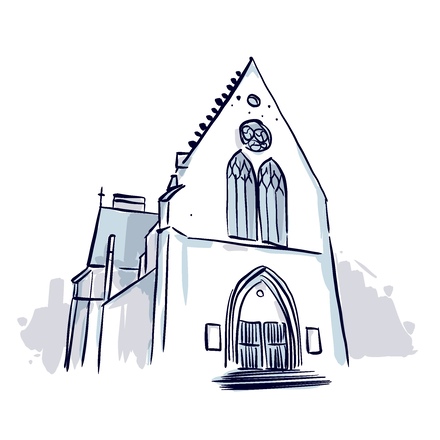
It is indeed a third church that can be seen here, just a few metres from Saint-Bénigne Cathedral.
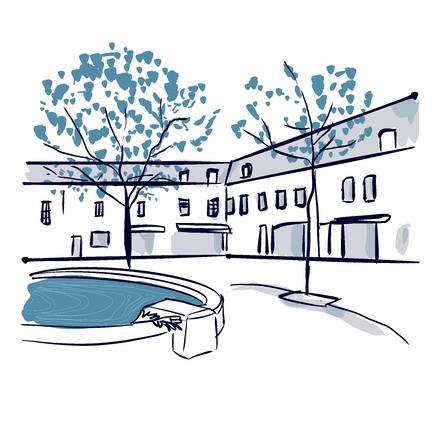
This is Emile Zola Square, a popular spot for locals and visitors alike.
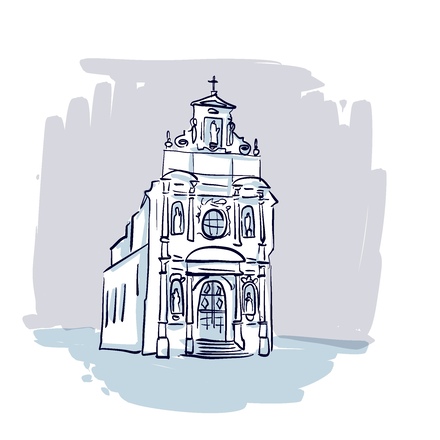
The pretty building in front of you is the Chapelle des Carmélites. Formerly a Carmelite convent in the 17th century, it was carved out of blonde and pink stone in 1642.
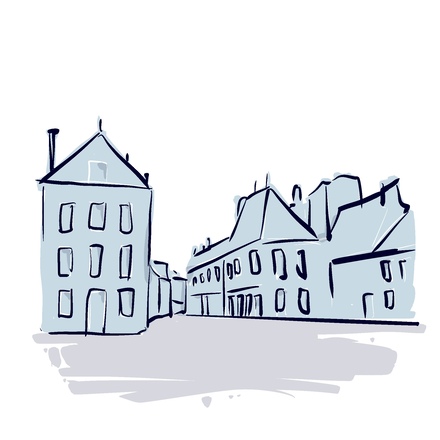
Turn left and you'll see Cordeliers Square, with its typical Burgundian glazed roofs.

The two buildings opposite you, on your left, date back to the 17th century.

Here, you are in front of the city's landmark! If there's one thing Dijon is famous for, it's its incredible Dukes' Palace.

Dijon's Fine Arts Museum is one of the oldest and richest in France. It was founded in 1787, with the primary aim of collecting works that would serve as models for students atof the drawing school.
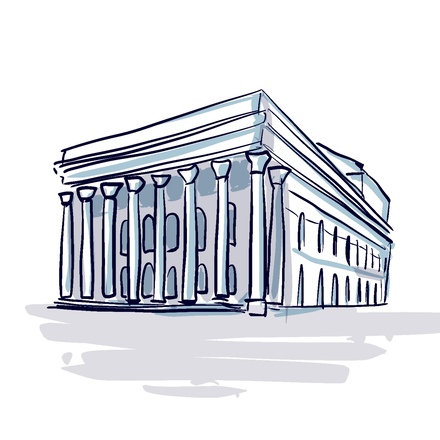
The first stone of this majestic theatre was laid in 1810, but construction was soon suspended due to the fall of Napoleon's Empire, and was not resumed until 1823.
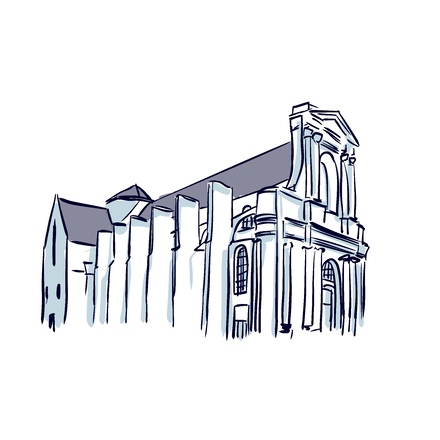
Located a stones throw from the Dukes' Palace, this church seems to have lived several lives, as seen on the different centuries drawn on its walls. Built in the 15th century, it was restored in the 17th century and its facade dates from the 18th century.

It took over 150 years to build this sumptuous church. As a result, it boasts a blend of two different architectural styles.

Built between 1552 and 1558 for Philibert Berbis, a councillor at the Dijon Parliament, this house, with its remarkable watchtower, is a private mansion.
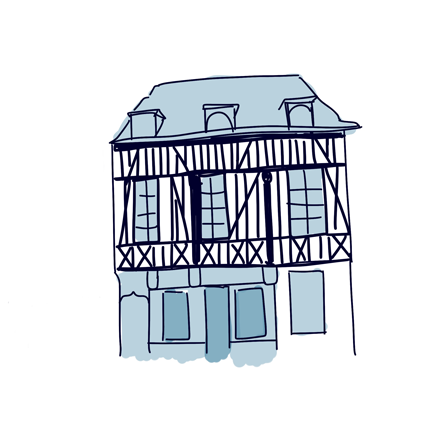
This is a house that will undoubtedly take you back in time. As you've already noticed, there are plenty of half-timbered houses here in Dijon, bearing witness to its rich medieval past.
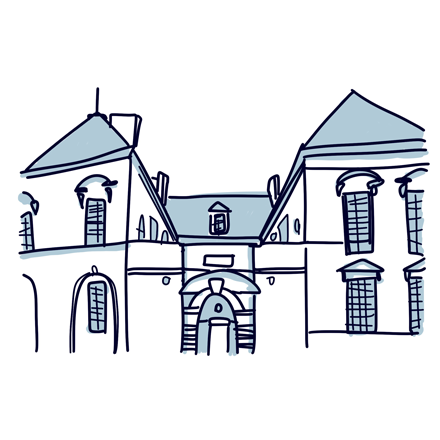
On your right is one of the most prestigious private mansions of the 18th century.
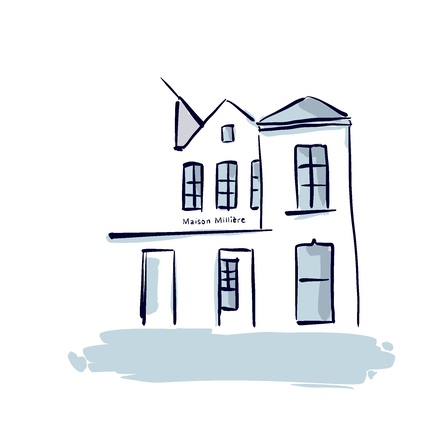
Built more than 500 years ago, this house is an essential part of the town's history. Its Gothic architecture dates back to the end of the Middle Ages, precisely to the 15th century!
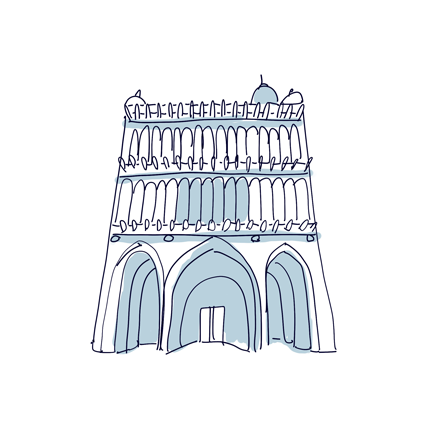
A masterpiece of 13th-century Gothic architecture, Notre Dame church is the oldest church in Dijon.
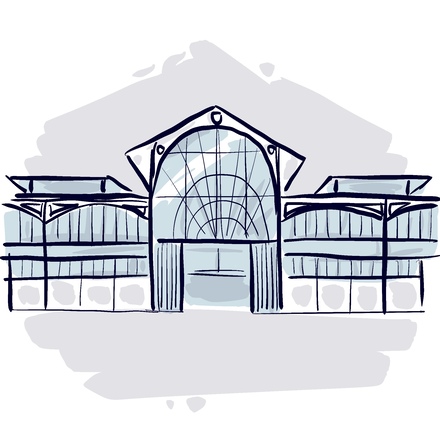
What better way to soak up Dijon life than sampling its culinary specialities?
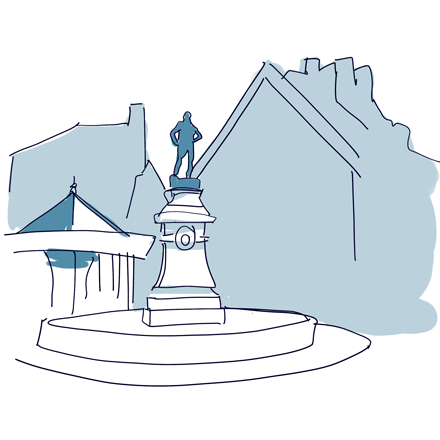
Built in 1905 as a tribute to sculptor François Rude, born just a few blocks away, this square is very recent compared to the other buildings in town.
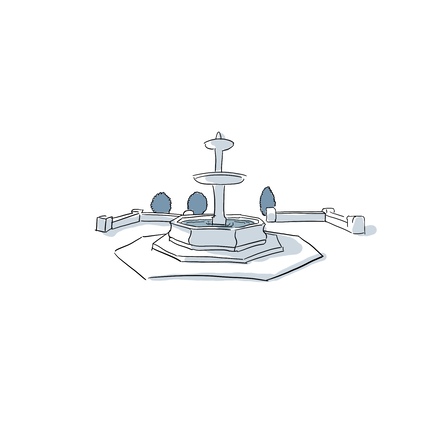
This charming walkway runs alongside the Darro River, which winds through Granada at the foot of the Alhambra, just above you on the hillside to your left.
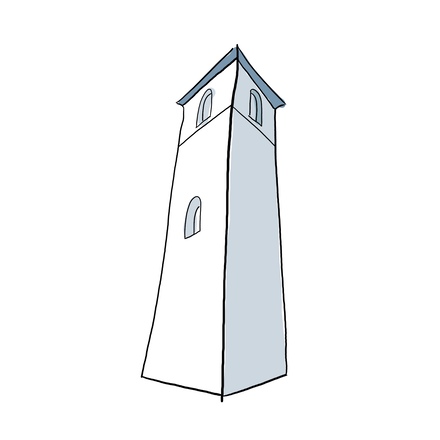
The tower that rises in the middle of this narrow street is believed to date back to the 10th century, or perhaps even earlier.
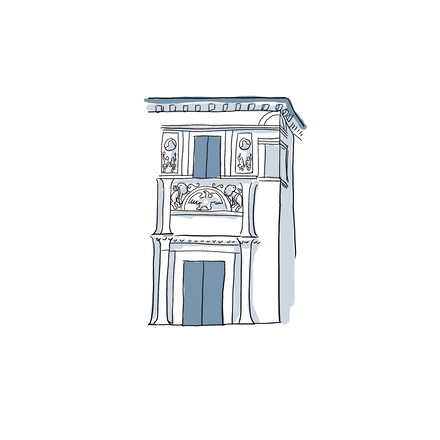
The richly decorated house on your right is known as the Casa de Castril, one of Granada’s most iconic buildings. This former 16th-century palace is among the finest examples of Renaissance architecture in the city.

This small church, located in the heart of the Albaicín district, shares its name with the square where it’s stood since the 16th century. It was built to replace a former mosque that once stood here when the Moors ruled the city.
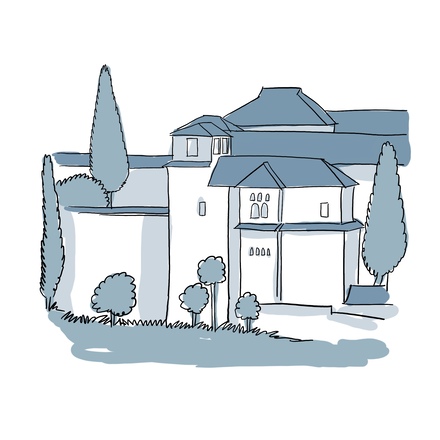
You’re now standing at the foot of the Dar al-Horra Palace, one of the last remaining traces of the medieval Muslim district that the Albaicín once was.

This is the most iconic view of Granada, the one you’ll find on postcards, in travel books, and all over tourism websites! And for good reason, it offers a breathtaking panorama of the city’s most famous landmark, the Alhambra.
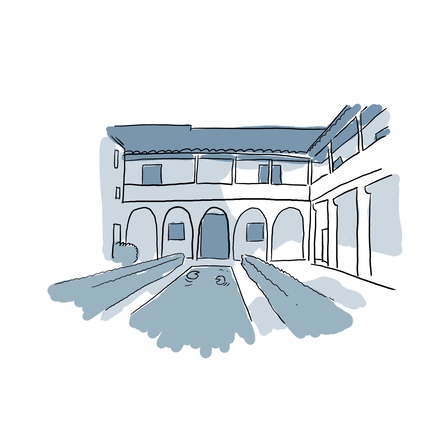
Here’s another beautiful example of Mudéjar architecture, a style that blends Christian and Muslim architecture. These two houses were likely once part of an Arab palace, and in the 16th century, they were inhabited by Moriscos, Muslims who had converted to Christianity after the Reconquista.
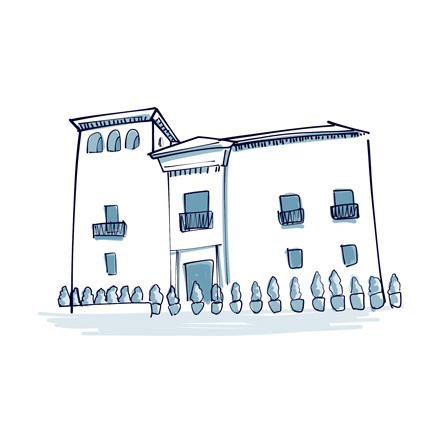
You’re now standing in front of the Palace of los Córdova, with its beautiful Renaissance-style façade. Built in the 16th century, it was originally located in the city centre of Granada before being reconstructed here, in the heart of the Albaicín district.
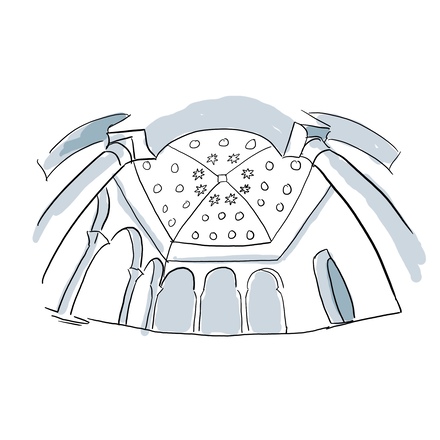
The building to your right houses the oldest and best-preserved baths in all of Andalusia. Built in the 11th century, they’re even older than the Alhambra! Arab baths served two purposes: they were places for personal hygiene, but also for socialising.
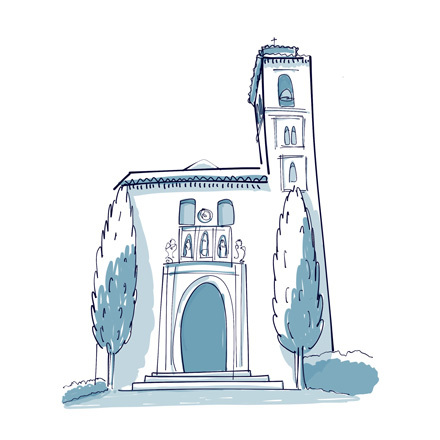
Built in the early 16th century on the site of a former mosque, just like many of the churches in Granada, it showcases a beautiful Mudejar style, making it one of the most stunning churches in the city.

In front of you is a sweeping view of the Albaicín district, known for its bright whitewashed houses. Perched on one of Granada’s hills, you can now see the neighbourhood stretching out before you from this stunning spot, called the Churra viewpoint.
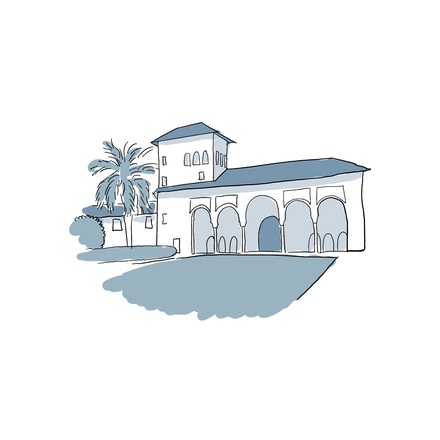
You’re now wandering through the gardens that lead up to Granada’s iconic monument, the Alhambra.
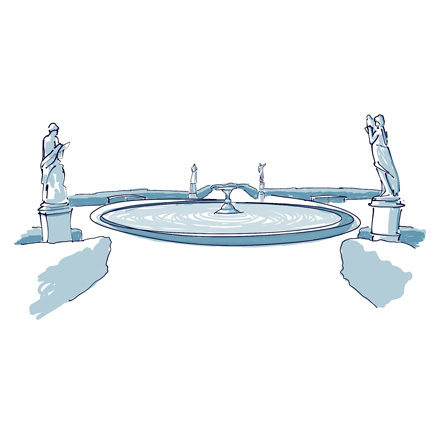
The Carmen de los Mártires is a charming mix of French and English-style gardens, just steps away from the Alhambra.

As you walk along the Paseo de los Mártires, a lovely view opens up on your left. You’re now on the hill of the Alhambra, with a scenic outlook over the rooftops of Granada and the surrounding mountains.

We’re now in the Realejo district, the former Jewish quarter, known for its beautiful whitewashed houses.
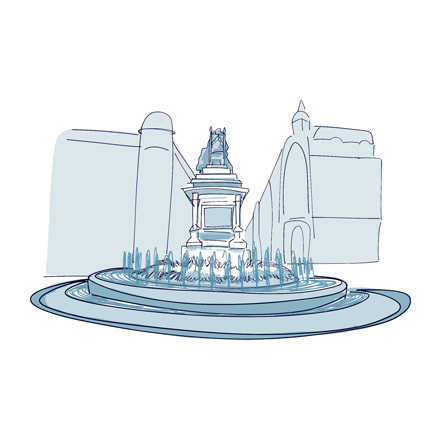
As you may have guessed, this square is named after Isabella the Catholic, Queen of Castile and León, Aragon, Majorca, Valencia, Sardinia, Sicily, and Naples.
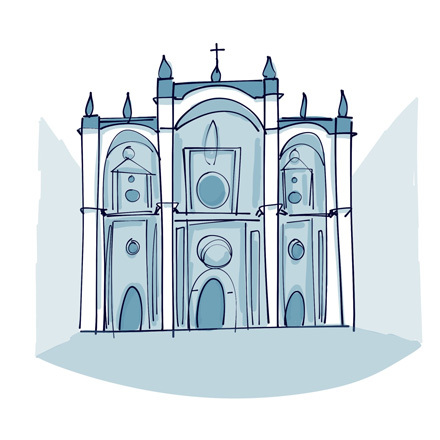
Granada Cathedral is one of the city’s key landmarks, known for its elegance and striking proportions. It’s the first Renaissance cathedral built in Spain.
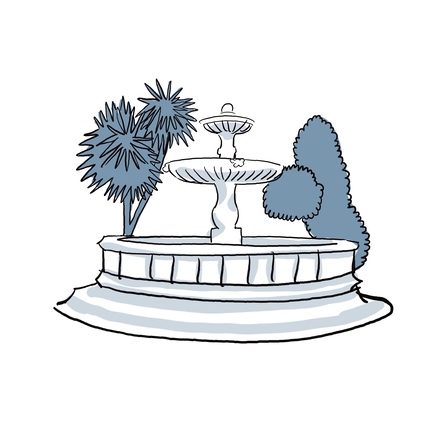
Plaza de la Trinidad sits at the crossroads of Granada’s main shopping streets, and takes its name from the former church that stood here in the 16th century.

This large central square is one of the liveliest spots in Granada, only a stone’s throw away from the cathedral.
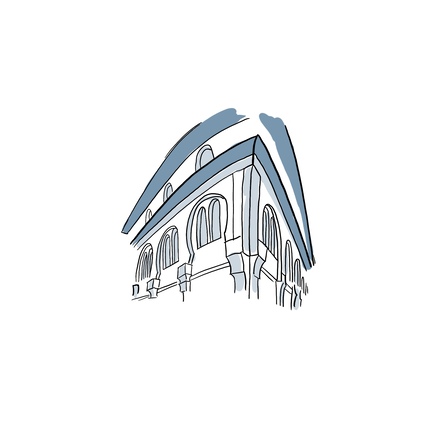
This is one of Granada’s most iconic streets! It echoes the city’s rich historical past, shaped by successive Muslim dynasties. With its small, traditional shops that feel like something out of a North African souk, Calle Ermita is laid out like a traditional bazaar, where stalls once overflowed with Arab silk and exotic spices.
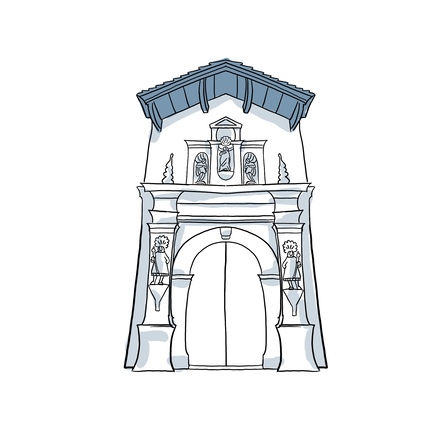
You’re now standing at the entrance to the Royal Chapel of the cathedral. Construction began in 1506, during the reign of Charles V.

Opposite the Royal Chapel entrance stands the beautiful Palace of the Madraza, just on your right. It was founded in the 14th century during the reign of Yusuf I, the seventh Emir of Granada, and originally showcased a very different architectural style, one that was distinctly Moorish. After the Reconquista and the arrival of the Catholic Monarchs, the building was completely redesigned in the Baroque style you see today. This building once housed the first public university in al-Andalus and was considered a true temple of knowledge, drawing great philosophers, poets, and mathematicians who came here to teach. After the Christian conquest, its library was dismantled and burned in nearby Bib-Rambla Square, and the building was turned into Granada’s city hall, a role it held until 1841. This was where the municipal council would gather. The only remaining trace of the palace built by Yusuf I is the oratory inside the building, as well as its splendid white marble gateway, now housed in the Archaeological Museum of Granada. Today, the Palace of the Madraza is home to the University of Granada’s Centre for Contemporary Culture.

You’re now entering Granada’s most iconic neighbourhood, the Albaicín, the city’s former Arab quarter, known for its whitewashed houses, called cármenes, rising along one of the city’s hillsides.
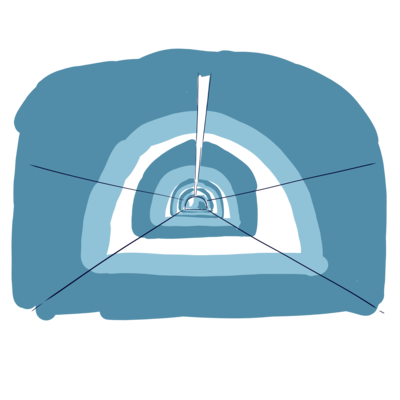
At the bottom of these stairs, you'll find the Sadi Carnot Shelter, a famous local landmark. It's a bomb shelter, built during World War II, between 1942 and 1943. In 1940, Brest was taken over by the Germans. Their submarines docked in the harbor, making it impossible for the Allies to arrive by sea.

As you stroll across the Penfeld River, keep an eye out for the Building of the Lions on your right. It's tucked away in a recess – you'll recognize it by its military architecture, built in stone and featuring a row of nine rounded arches.
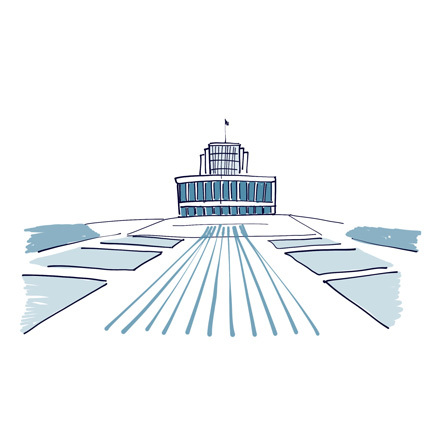
Welcome to Liberty Square, Brest's central square! But it hasn't always been so. As a matter of fact, it was outside the city walls up until the end of the 19th century. It wasn't until 1889 that the city gates were torn down, making way for bigger squares in the heart of town.
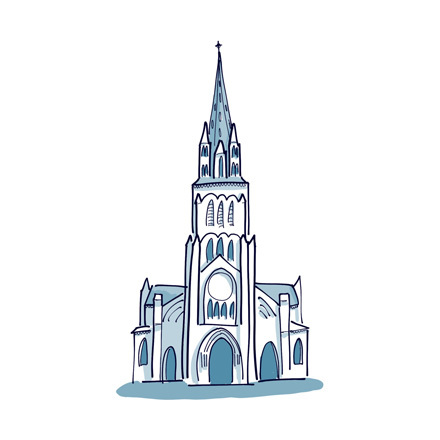
The church before you dates back to 1877. It was built in a neo-Romanesque and neo-Gothic style, and sits in the heart of the Saint-Martin district. It was named after the then-mayor of Brest, Hyacinthe Martin Bizet. The building was severely damaged by bombing during World War II, and underwent restoration work between 1946 and 1948,
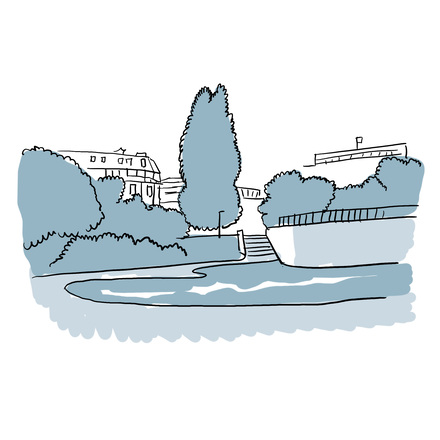
This park in the heart of the city is a go-to spot for the locals, who come here for some peace and quiet to enjoy a picnic on the lush green lawns. Kennedy Garden is also a favorite with sports enthusiasts, as it is home to a brand-new,
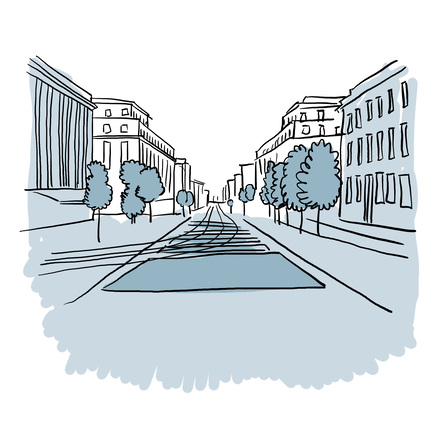
Situated between Liberty Square and Recouvrance Bridge, Siam Street is one of Brest's busiest thoroughfares, and with good reason. Its many stores make it a prime shopping spot downtown! It owes its name to the Siamese ambassadors who came to Brest from Thailand in the 17th century,
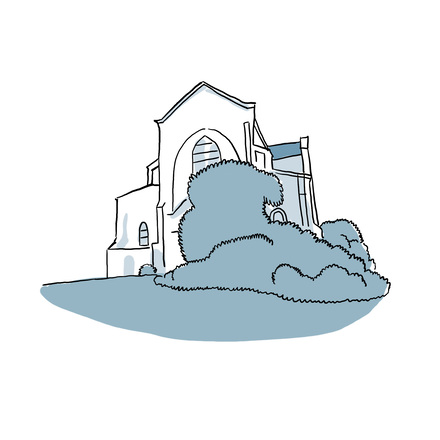
The Saint-Michel Church was built in the 20th century, when the Saint-Martin Church could no longer accommodate the growing number of worshippers in the neighborhood. It was designed in the Gothic style and opened its doors in 1913.
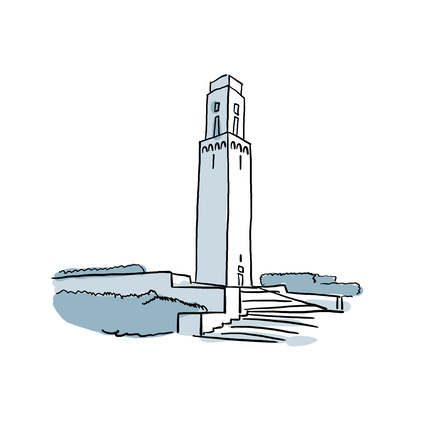
The Cours Dajot is a lovely promenade overlooking the Brest bay and port. It was laid out in 1800 to plans by Louis-Lazare Dajot, Director of Brittany's fortifications. It's a favorite with Brest locals and visitors alike, and makes for a pleasant stroll away from the hustle and bustle of the city center,
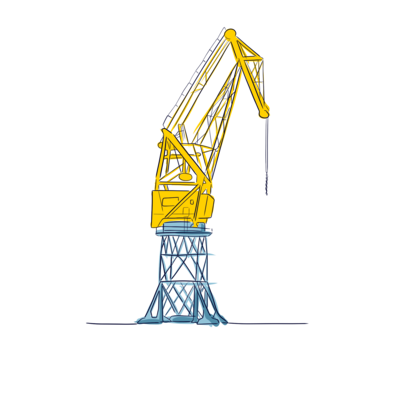
Check out that big yellow crane on your left, overlooking the waterfront buildings! That's the Paindavoine n°4, named after the Lille-based company that designed it. It doesn't look like much, but, believe it or not, it’s actually a piece of history!
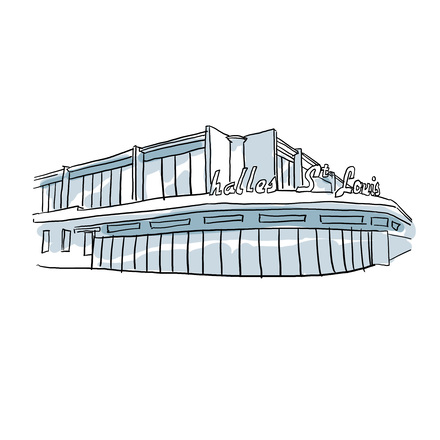
Indulge in local specialties! The Saint-Louis Covered Market is a foodie's paradise, packed with stalls serving mouth-watering local produce. And let me tell you, the list is pretty long! Even if you've never set foot in Brittany, you've probably heard of one or two of the region's specialties,
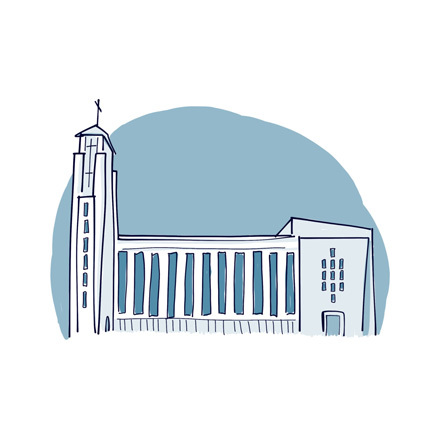
Located just a stone's throw from the market, Saint-Louis is France's largest post-war church. The original church was completely destroyed by bombings, and so the city had to build a new one on that very spot, starting in 1955.
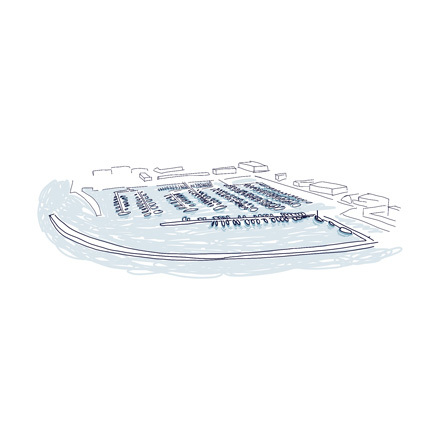
This street is one of Brest's main thoroughfares, offering a superb view of the Castle Marina – one of the most beautiful harbors in the world. Over 700 boats are moored here! Every four years, Brest's marina also hosts major international maritime festivals, as well as transatlantic races, much to the delight of the locals.
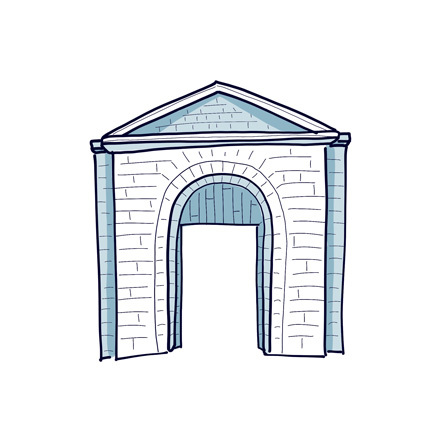
This small square, known as Square l'Herminier, is home to the Guépin Barracks Gate, that is, the remains of a 17th-century barracks that was destroyed during World War II. The gate was once part of a religious school that later became the Guépin military barracks.
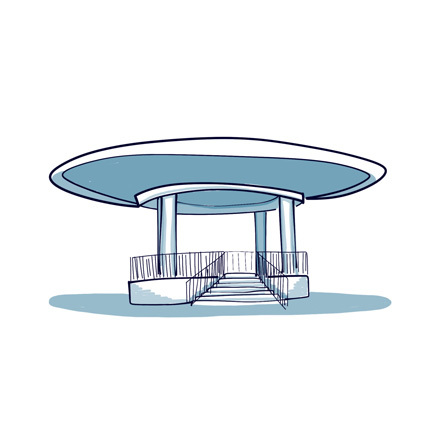
The square you're in has a history spanning over 300 years! Designed in 1694 by the famous architect Vauban, it was originally used as a parade ground for the Guards of the Navy. It was known as the “Champ de Bataille” (the “Battlefield”), and later as Place de la Liberté (“Liberty Square”) during the French Revolution.
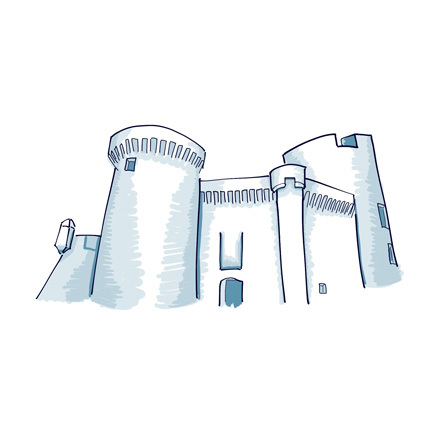
Before you is the Brest Castle, an iconic landmark of Brest and Brittany in general, and a testament to the city's power in medieval times. It was built on top of the Gallo-Roman ramparts dating back to the 3rd century.
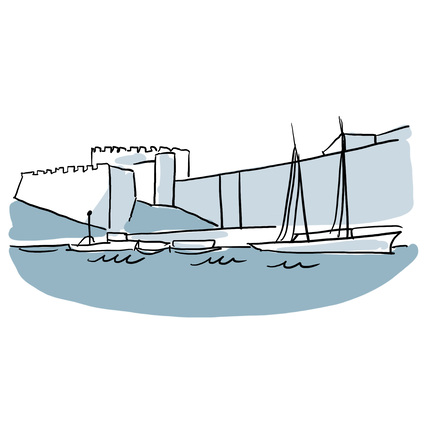
The Commandant Malbert Quay is certainly one of those places where you can really get a feel for the spirit of this port city. It's named after Commandant Louis Marie Malbert, a local man who became captain of a tugboat anchored in Brest since 1924.
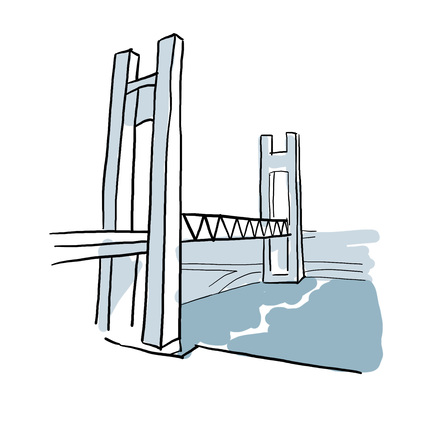
You're now standing on the Recouvrance lift bridge, connecting the city center to the historic Recouvrance district across the Penfeld River, which flows through Brest and into its harbor. Inaugurated in 1954, this bridge has long been Europe's largest lift bridge.
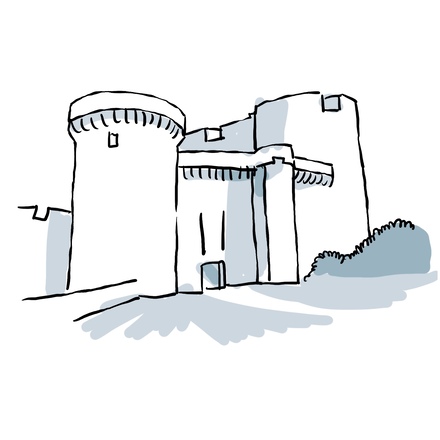
So, here we are at the castle entrance. We'll talk more about this famous landmark right after. But first, let's check out the National Maritime Museum. That's right, these two share an entrance.

This four-metre-high bronze statue is the work of local sculptor Jérôme Durand. It depicts two local legends, that is, the heroes of two sea chanteys long known to the people of Brest. One song tells the tragic story of Jean Quémeneur, a young man from the Recouvrance district,

Built in the 14th century, the Tanguy Tower is one of Brest's oldest landmarks. Sadly, you're not looking at the original, as it's been rebuilt twice in the course of its history. It's located on the right bank of the Penfeld River, opposite the Brest Castle,
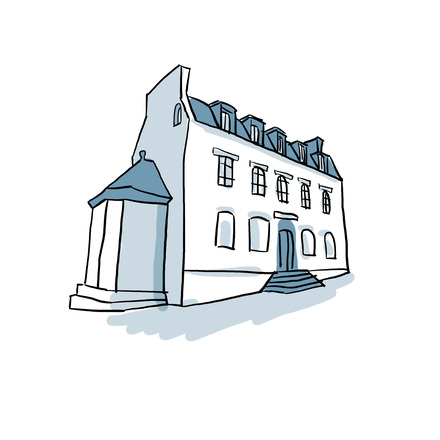
This is one of Brest's oldest houses! It was built in Logonna yellow stone, black kersantite and pink granite, and is believed to date from the 18th century, although some might disagree. In fact, several 17th-century city maps show a building already standing here a century earlier.
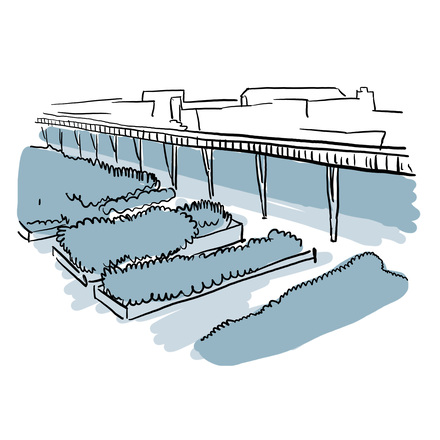
You're now in the heart of the Garden of Explorers, offering stunning views of the city. This garden is a tribute to the men who set sail from Brest in the 18th century to discover new lands – Louis-Antoine de Bougainville, Philibert Commerson, Jacques-Julien Houton de La Billardière and Etienne Raoul.

As you've surely noticed by now, Brest has a cable car that runs over the Penfeld River, connecting the city center with the Capucins district on the opposite riverbank. Nowadays, it's more than just a mode of transport; it has become a real attraction in the heart of Brest,
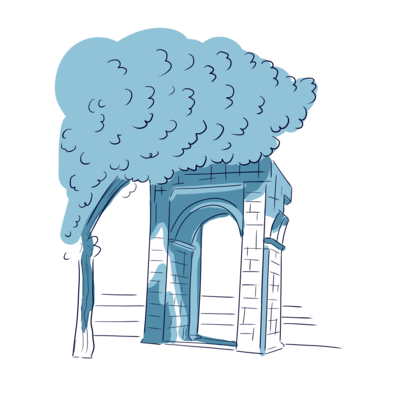
On your left, you'll see the remains of an arch and four columns. They're the ruins of an old naval barracks built in the 1870s, in the wake of the Franco-Prussian war. It housed French troops and was named after General Jean Fautras, a 19th-century French officer.

If you've ever read the famous Tintin comic strip or watched the animated series, then you've most certainly heard Captain Haddock exclaiming *Thundering typhoons!*. That would be "Tonnerre de Brest" in French, literally meaning “Thunder of Brest.”
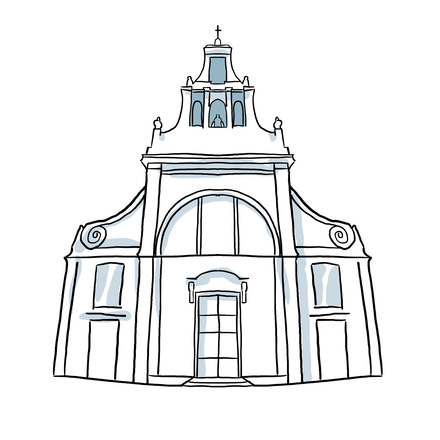
This Jesuit-style church was built between 1740 and 1749 on the site of a former 17th-century chapel. The Recouvrance district was rapidly growing at the time, and they needed to build a new, bigger church to accommodate all the faithful.

Trendy boutiques, bars, restaurants and cinemas are all to be found on Jean Jaurès Street, one of the busiest shopping streets in the Capital of the Oceans. In addition to its many stores, which will enthrall the most avid shoppers,
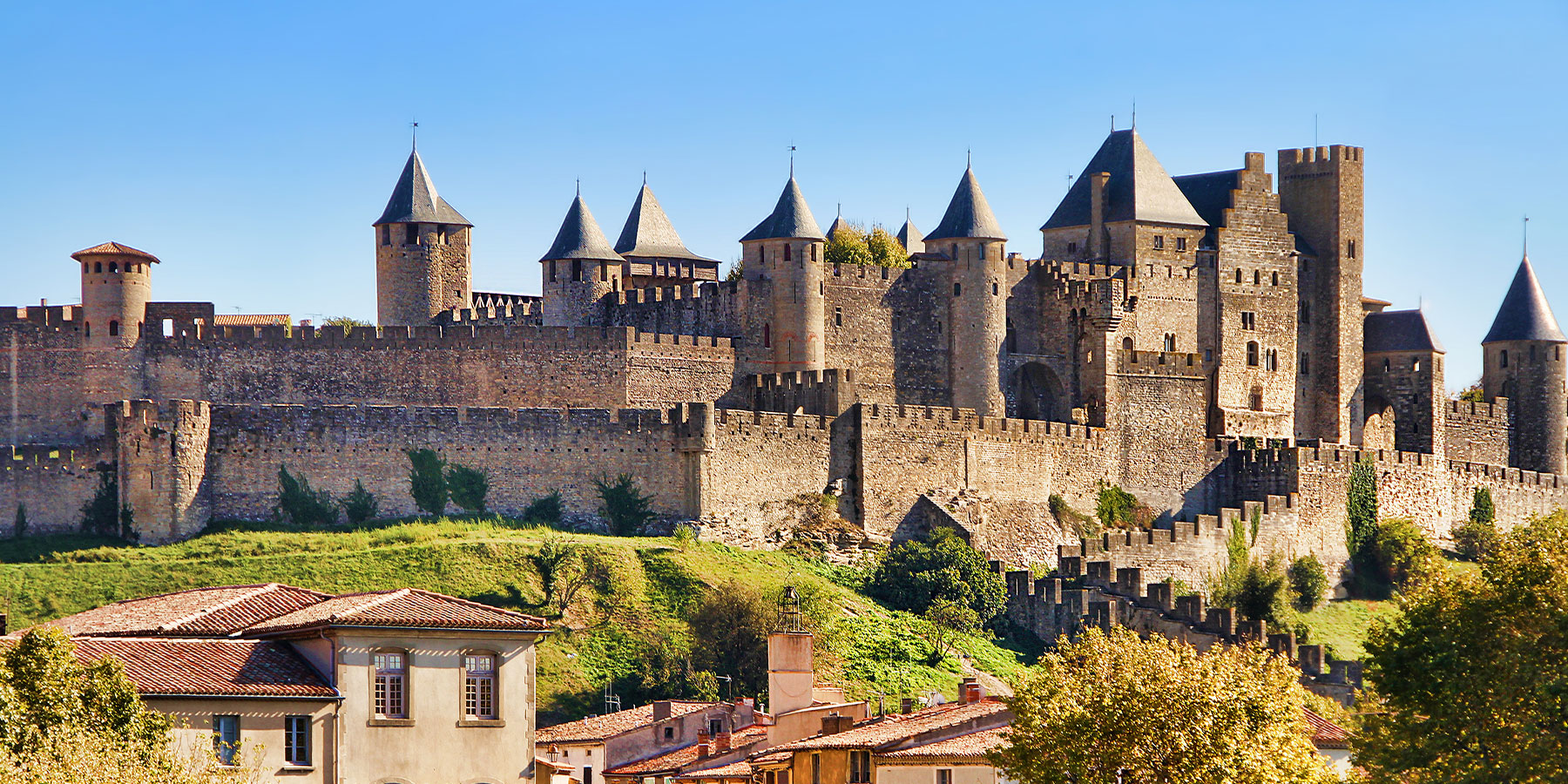

Blois, a city crossed by the Loire River, is a haven of green spaces and parks. You're now in the perfect spot to take in the surrounding scenery and snap an Instagram-worthy photo of the river flowing under the Jacques Gabriel Bridge.
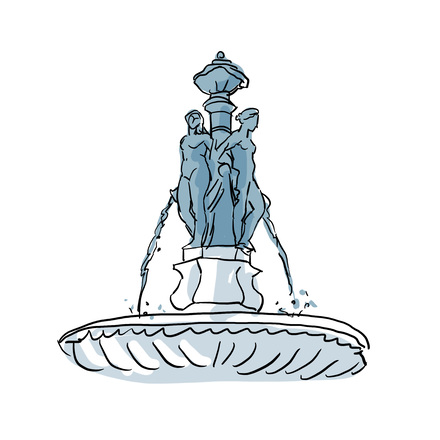
Welcome to Place Louis XII, one of the liveliest squares in Blois! You’re right in the heart of the historic center, in a largely pedestrian area where heritage and the French art of living come together beautifully. The square was laid out between 1819 and 1823 to link the royal château towering above with the old neighborhoods of the lower town.
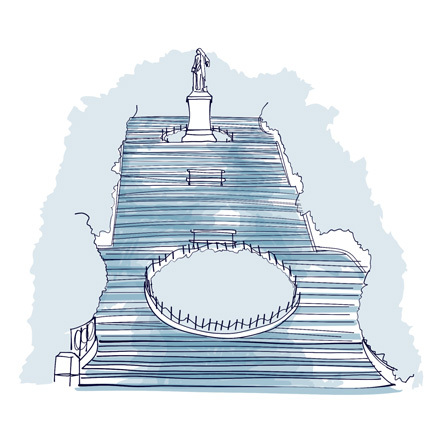
On your left is the Denis Papin staircase, one of the city’s most iconic landmarks. Step closer if you’d like to get a better look. Climbing its 120 steps is a bit of a workout, but the dizzying views from the top are worth it. For your information, I'm using 'dizzying' both literally and figuratively here.
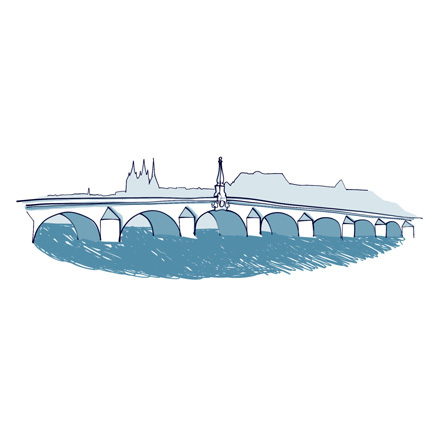
Here you are, standing in front of one of Blois’ most iconic landmarks: the Jacques-Gabriel Bridge. For almost three centuries it’s linked the historic city center to the Vienne district, stretching elegantly across the Loire. Its story begins back in 1716, when a massive flood swept away the old medieval bridge.
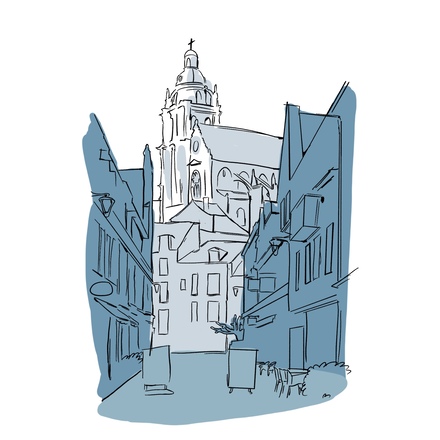
Nestled in the heart of the city's historic center, Puits-Châtel is a district with a rich history. It's known today as the eastern part of the city, and stands as a vivid reminder of its medieval past, beautifully preserved thanks to 19th-century urban redevelopment projects.

They say that the best way to discover a city's hidden gems is to simply lose yourself in its streets. One look at this Gothic building before you, and you'll see why this suggestion is spot on.
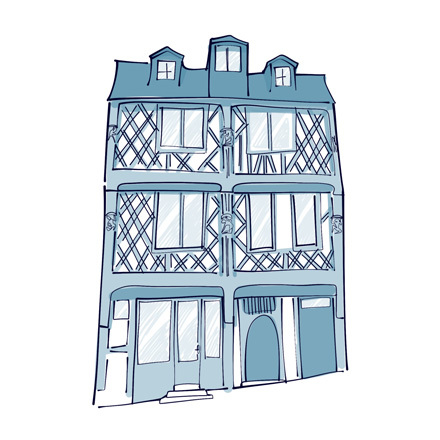
On Saint-Louis Square, one house in particular immediately catches the eye: the one on your left. This is the House of the Acrobats, one of the finest residences in Blois. Built around 1470 during the reign of Louis XI, it’s among the city’s oldest examples of civil architecture.
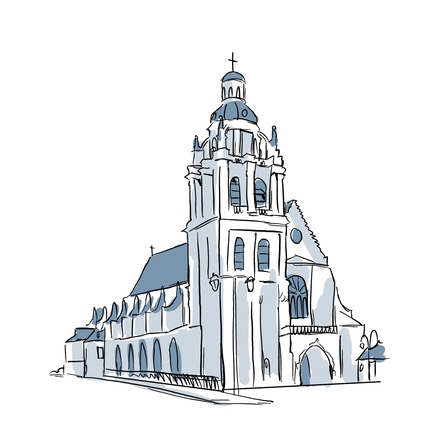
You’re standing in front of the cathedral that dominates both the city and the Loire. Originally, this was the site of the Church of Saint-Solenne, but on the night of June 6 to 7, 1678, a violent hurricane almost completely destroyed it. By order of Louis XIV, and with the support of his minister Colbert—whose wife was from Blois—reconstruction began at the end of the 17th century.

With those French flags and the Republic's motto inscribed on the facade, it's pretty clear that we're standing in front of the Blois Town Hall, located just behind the Saint-Louis Cathedral. But it hasn't always been a town hall. It's seen its share of changes over the centuries.

From the Bishop’s Garden, your eyes are drawn straight to the Loire. Wide and majestic, this royal river has shaped both the history and the identity of Blois. Just below, the tightly packed slate roofs of the old town recall the days when the city revolved around its château and bustling river port.
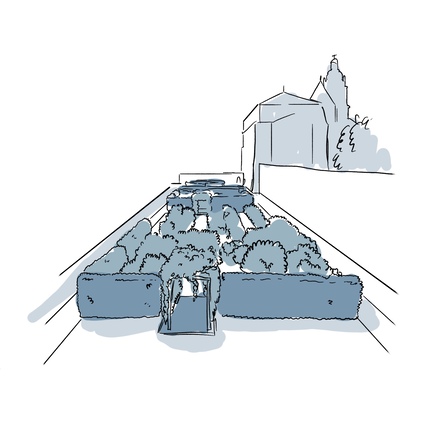
The gardens of the Bishop's Palace are a popular hangout spot nestled above Blois and the Loire River. It's home to a small collection of plants and it's just perfect if you're looking to escape the city's hustle and bustle.
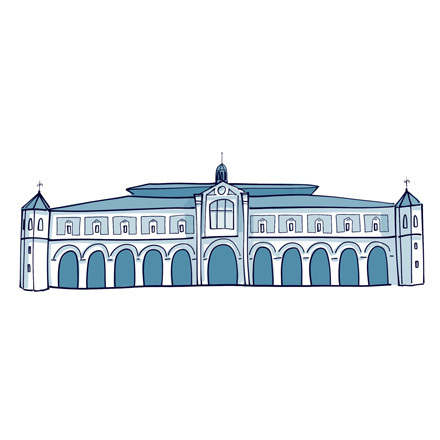
Built by the first Dukes of Orléans and the Counts of Blois back in the 15th century, the Corn Exchange was once divided into two parts, with the actual market on the ground floor and a courthouse upstairs.
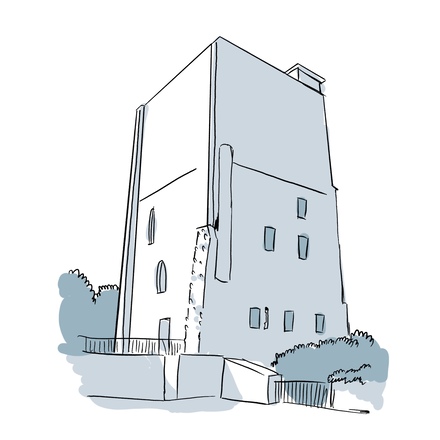
Introducing the Beauvoir Tower, thought to be one of the oldest monuments in Blois, and perhaps even in France. It has stood the test of time, having been built between the 11th and 12th centuries by the Lords of Beauvoir, vassals of the Counts of Blois, whose fief stretched from here all the way to the Loire River.

From the 15th to the 16th century, Blois was the royal capital under Louis XII and saw the construction of numerous mansions to accommodate the royal court. Among them was the Alluye Mansion, on your right.
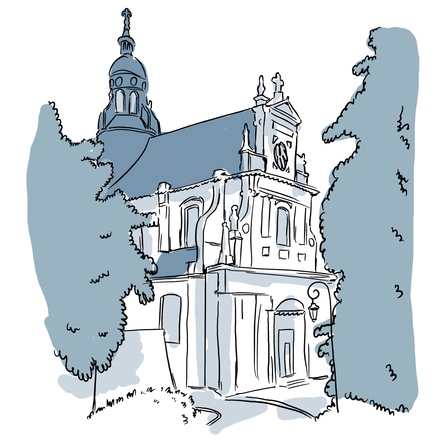
While not as big and famous as its neighbor, aka the Blois Castle, the Church of Saint-Vincent-de-Paul is well worth a visit. Its earliest origins go back to 1634, with the intention of building a chapel for the Jesuit college founded a few decades earlier.

Introducing the Royal Castle of Blois, the crown jewel of the Loire Valley, known for its great history and architecture. It was a favorite residence of French royalty and has seen centuries of royal dramas, schemes and power plays. You see, it has welcomed a total of seven kings and ten queens.
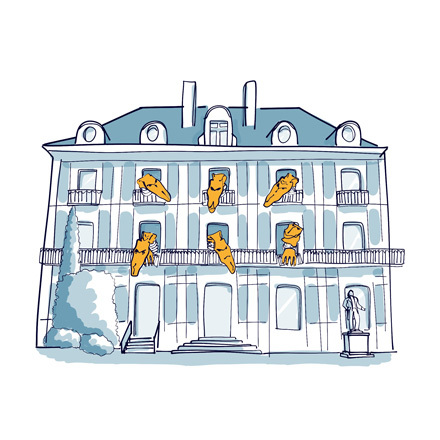
Surtout, ne vous laissez pas intimider par le premier coup d'œil donné à cette bâtisse. Reconnaissable entre mille, la Maison de la magie est une étape indispensable de Blois.

Facing the Royal Château of Blois, you can’t miss this grand 19th-century building. And if it already looks impressive from the outside, just wait until you step inside… Welcome to the House of Magic, the only museum in Europe entirely dedicated to the art of illusion.
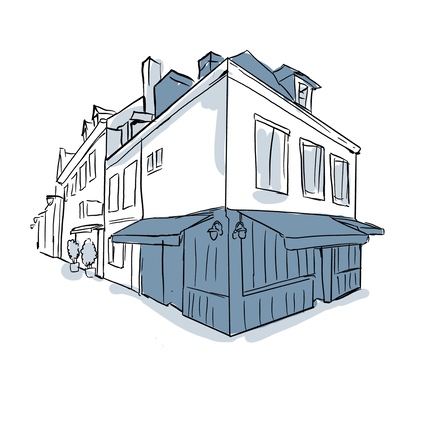
Welcome to Rue Saint-Lubin, a true gem of Blois’ historic center and a genuine journey back to the 15th and 16th centuries! The street owes its name to Saint Lubin, Bishop of Chartres in the 6th century, preserving the memory of the former Church of Saint-Lubin, once the main place of worship in Blois until it was destroyed by fire in 1114.
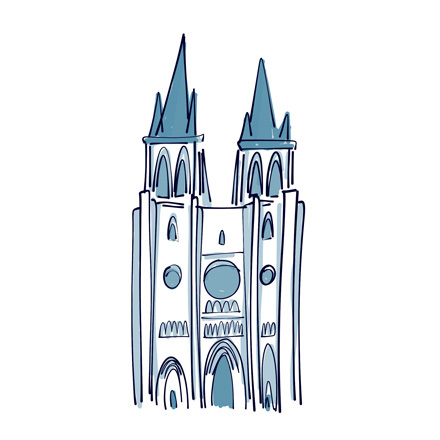
Saint-Nicolas Church is the oldest religious building in Blois and one of the true gems of the Loire Valley! Look up at its majestic silhouette, standing proudly over the banks of the Loire for nearly nine centuries. What you’re seeing is a remarkable example of the transition from Romanesque to Gothic art, built between 1138 and the early 13th century.
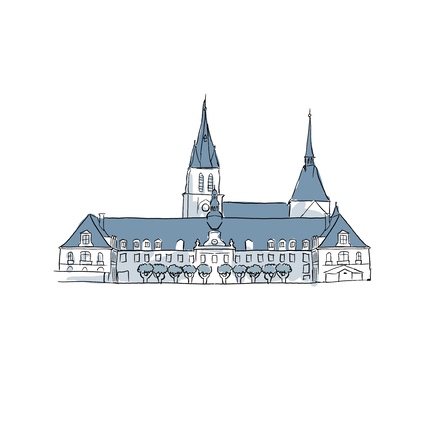
Introducing the Hôtel-Dieu of Blois, a monumental complex of great importance, nestled on the banks of the Loire River. Originally a monastic property owned by the Benedictine order since the Middle Ages, the building underwent a complete transformation in the 19th century to become a full-scale hospital.
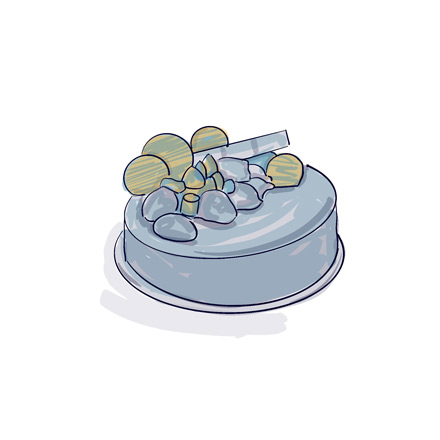
As you stroll down Rue Porte Côté, let’s tempt you with a few of the delicacies that make Blois so special. The city has managed to both preserve age-old traditions and create new specialties that reflect its history as much as its terroir. And of course, we can’t talk about Blois without talking about chocolate.
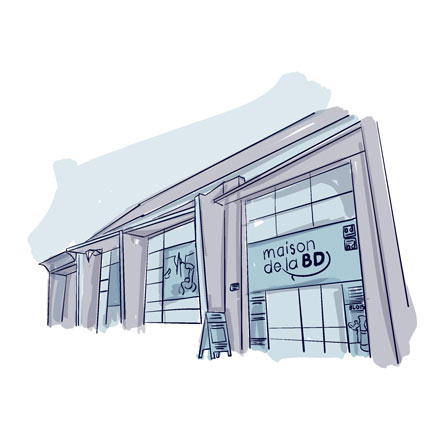
In Blois, comic art has truly found its home. Set inside a former 19th-century post office, the Maison de la BD is a one-of-a-kind venue entirely devoted to the ninth art. Step inside and you’ll find temporary exhibitions, a vast specialized library, and even workshops where you can try your hand at creating your own comic strips.
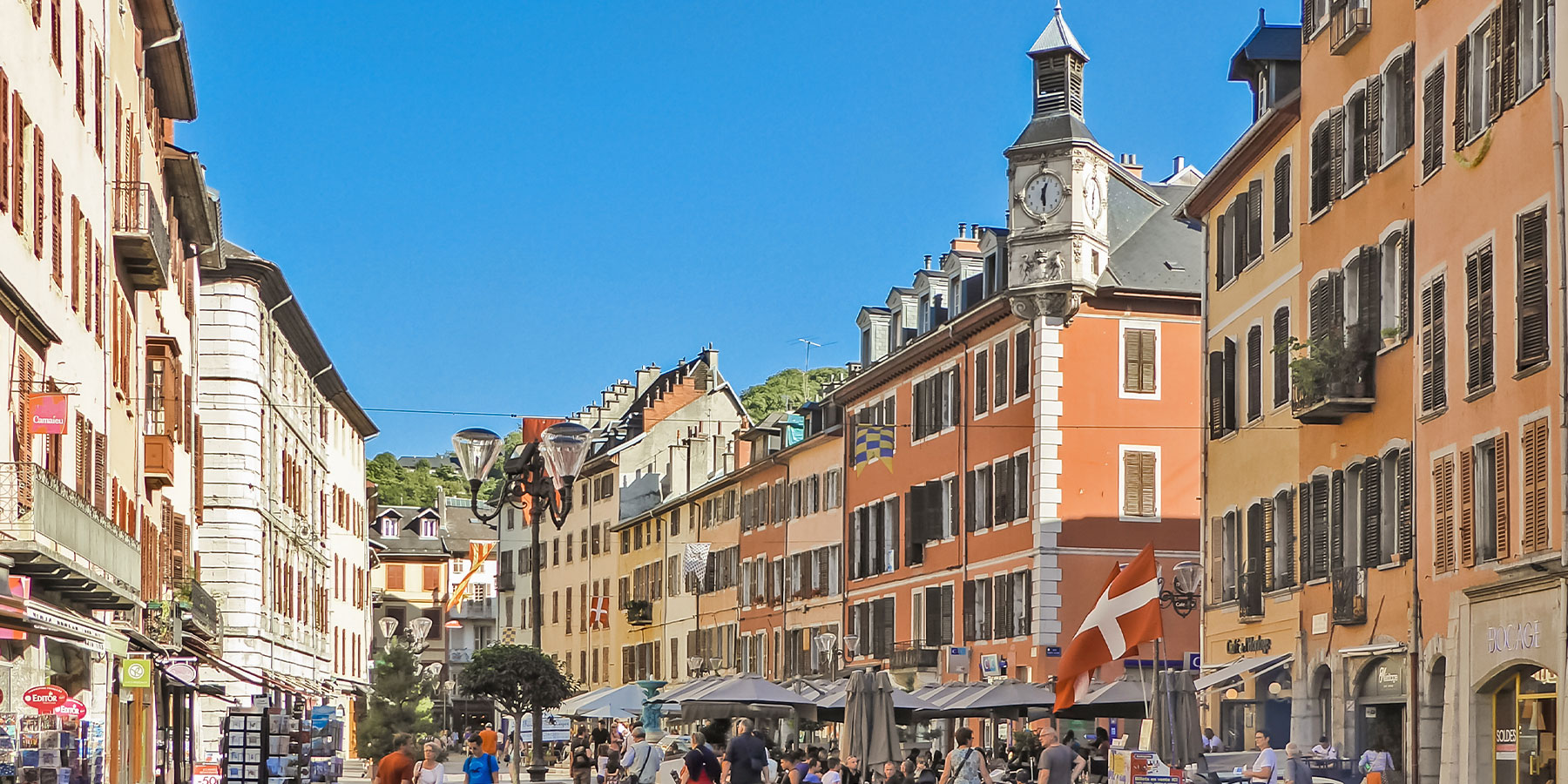
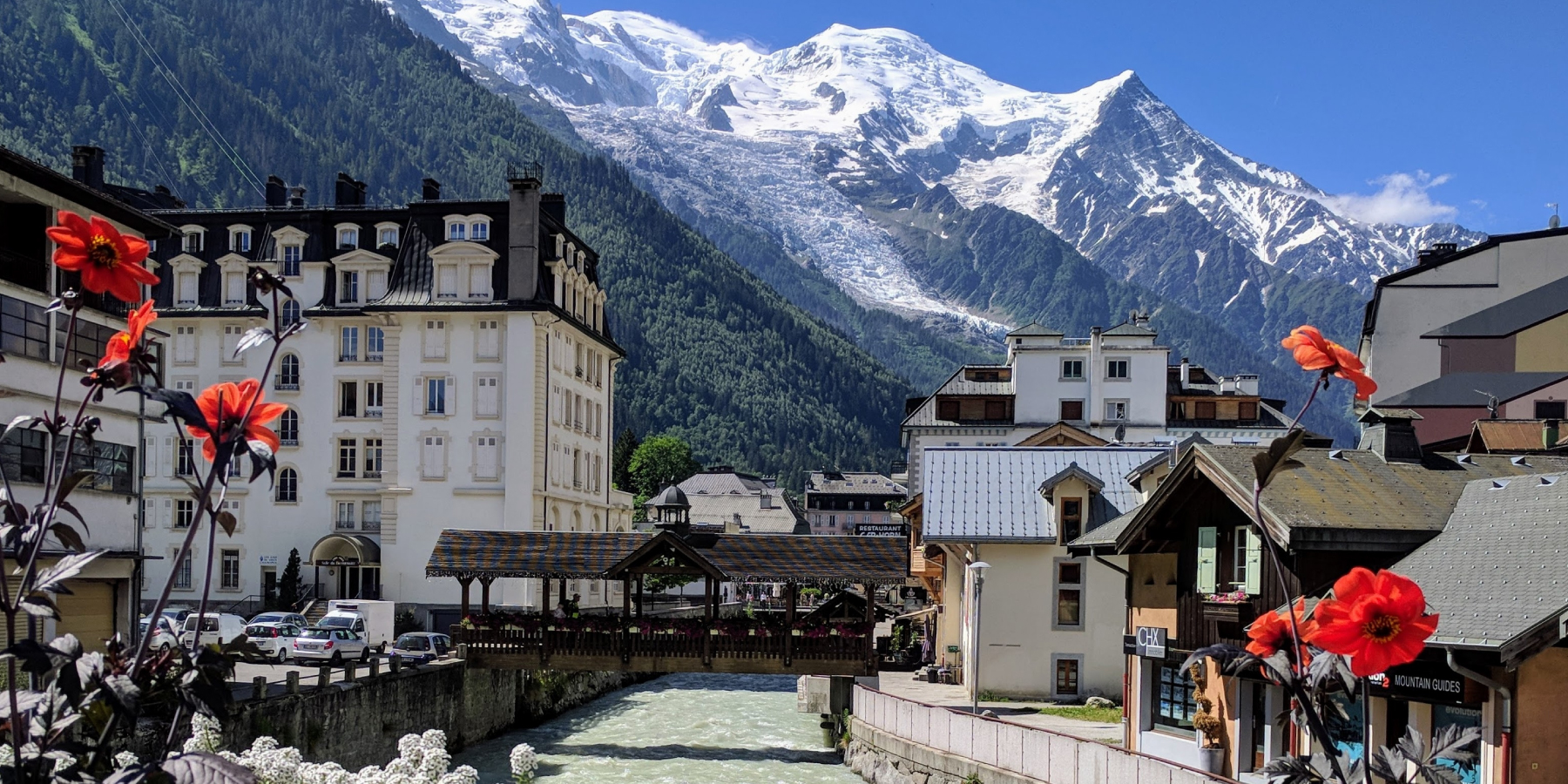
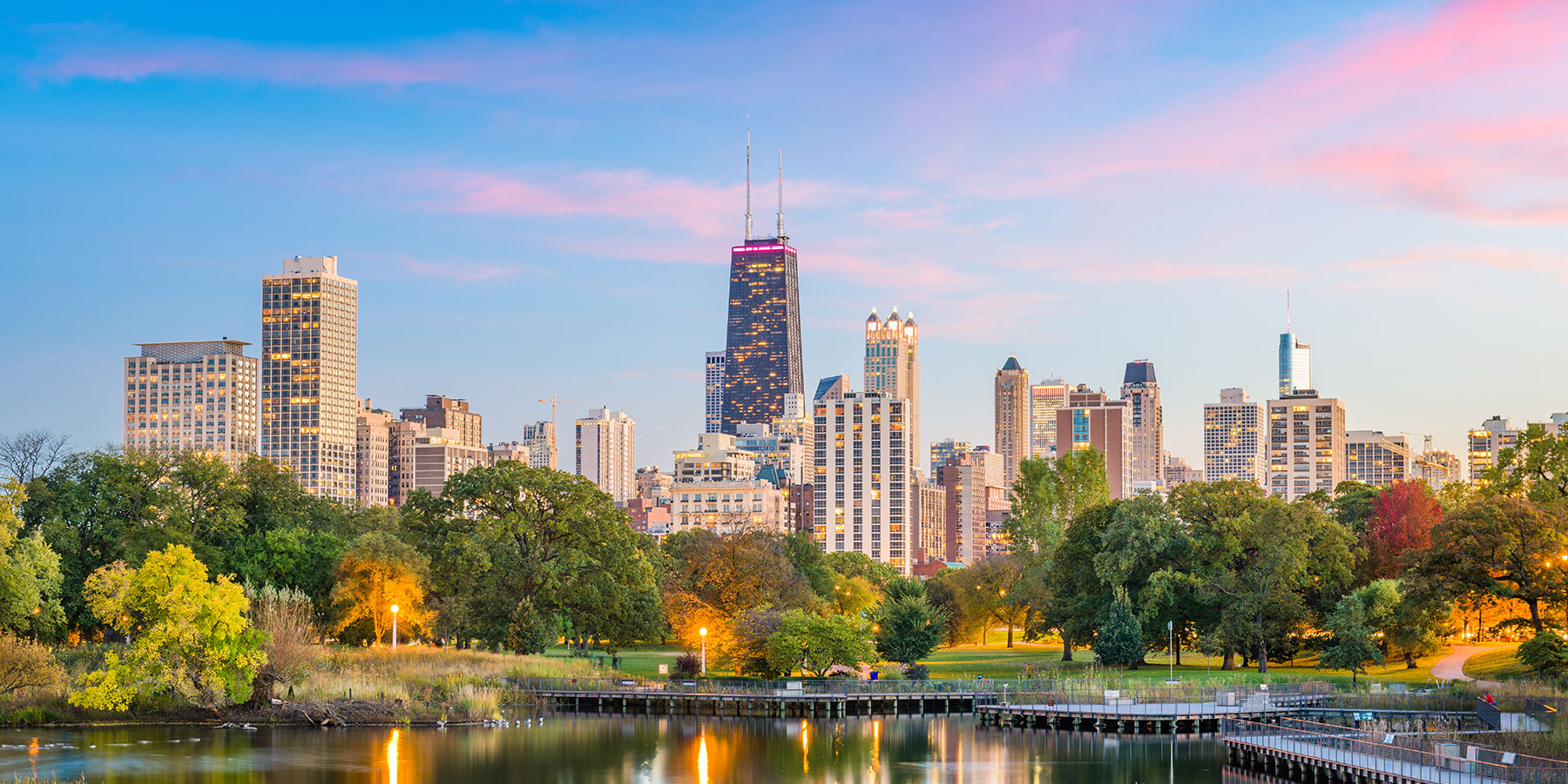
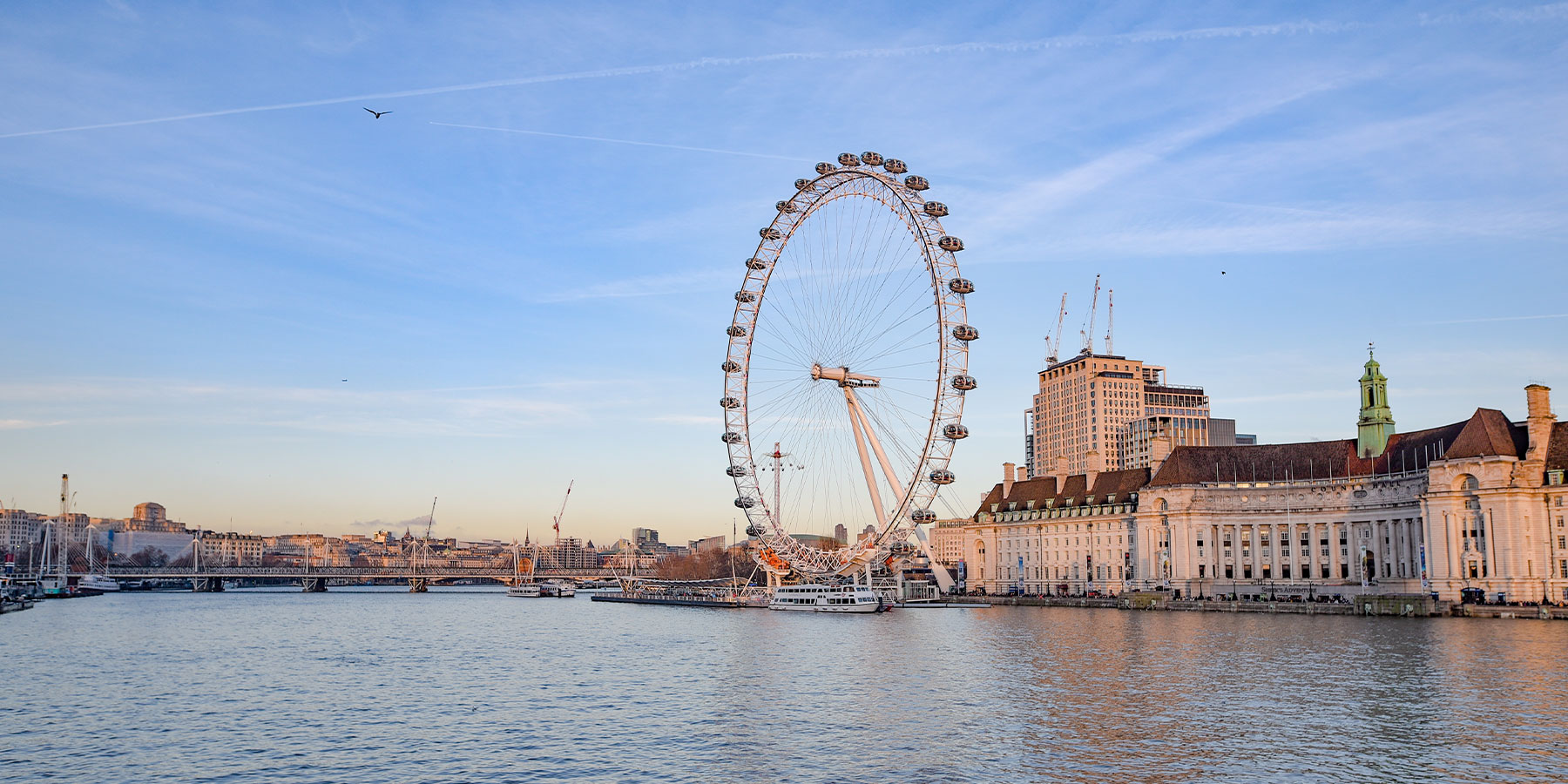
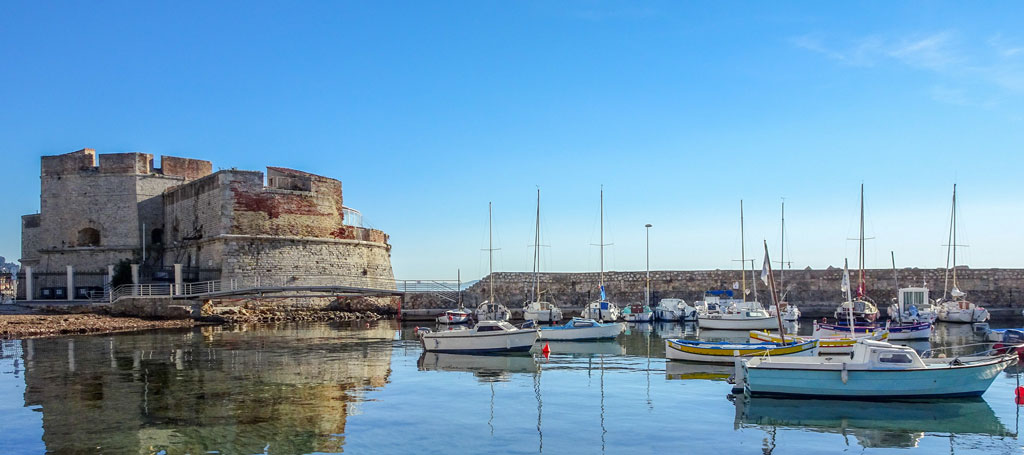

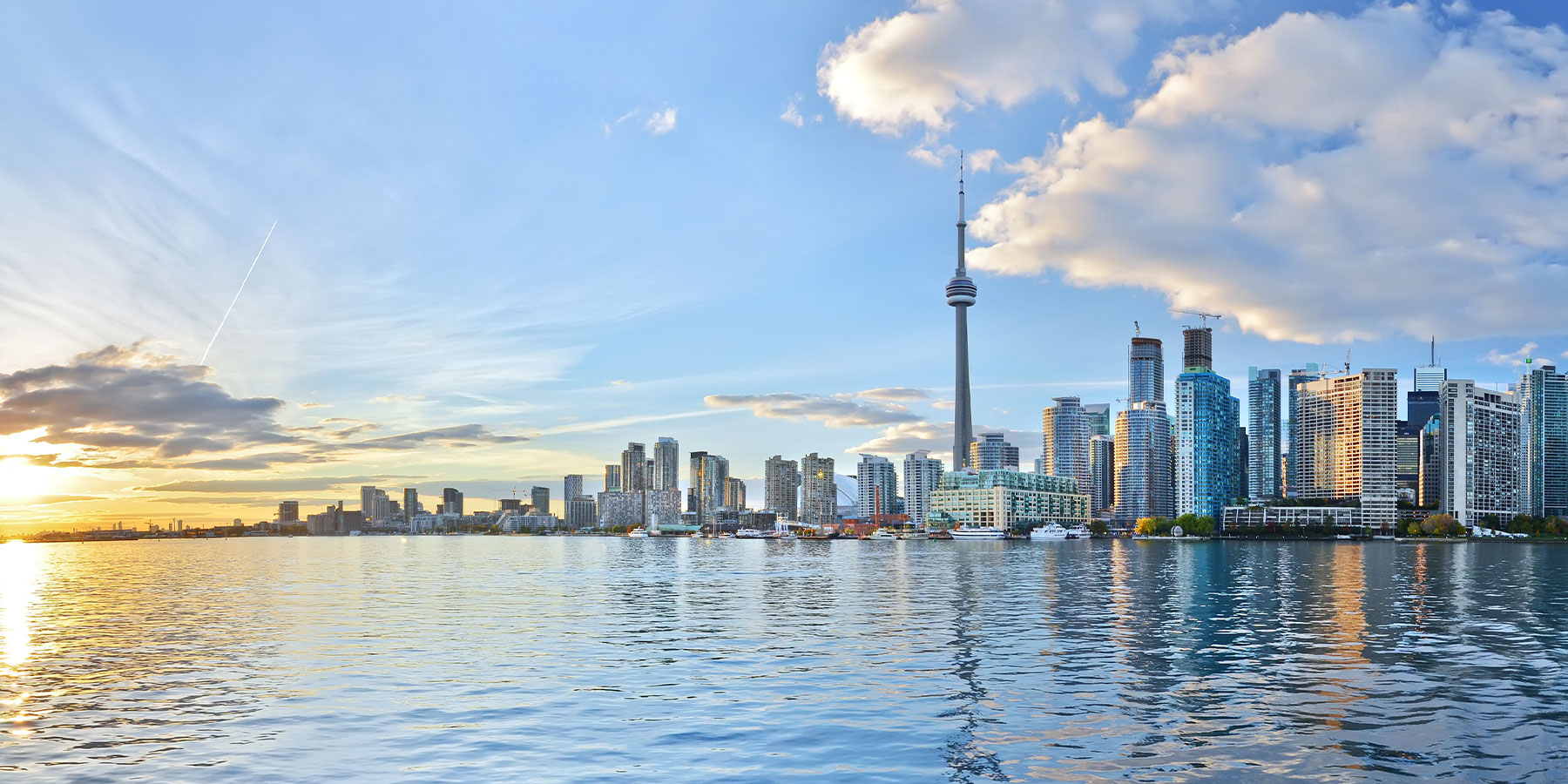
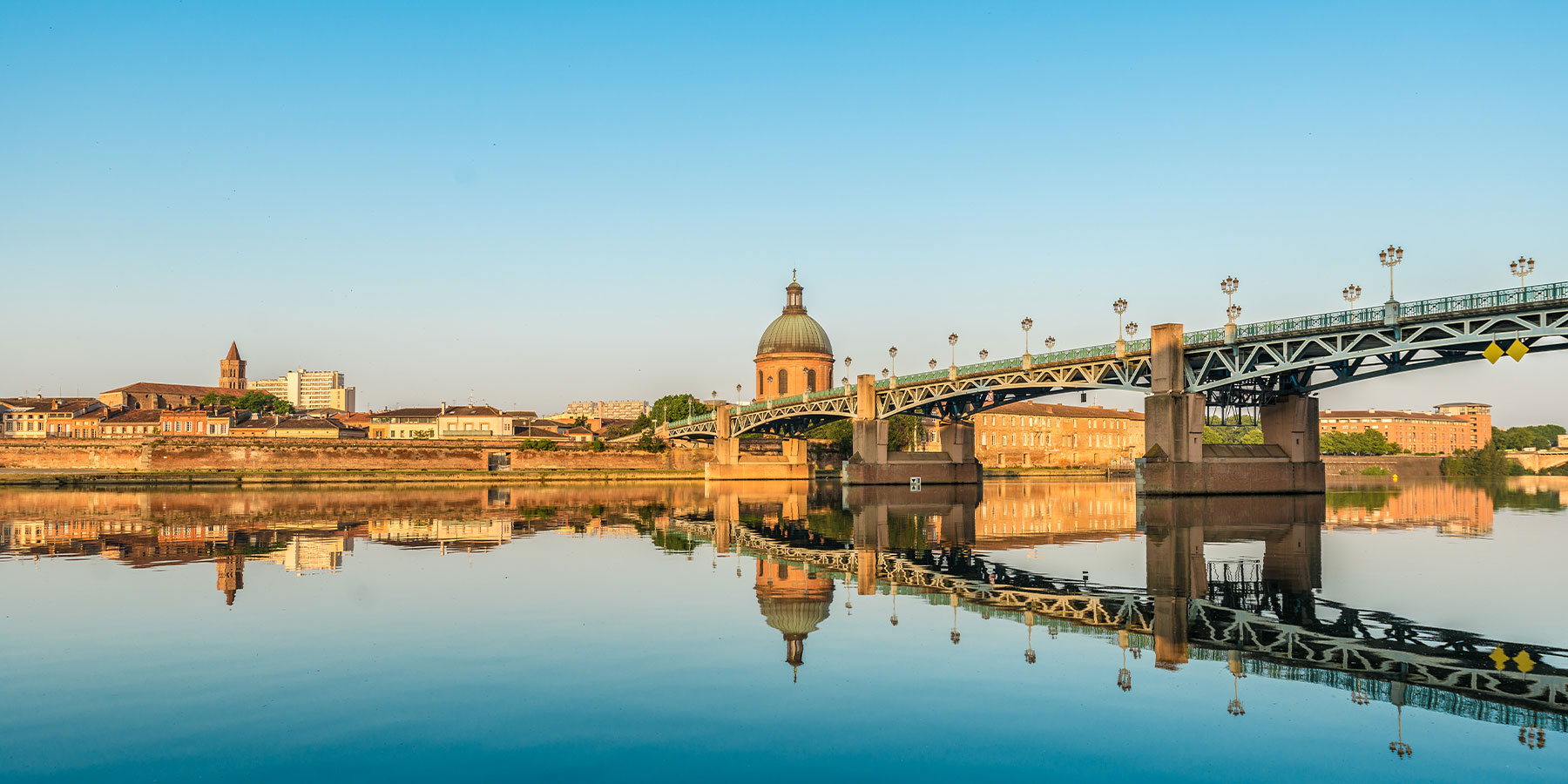
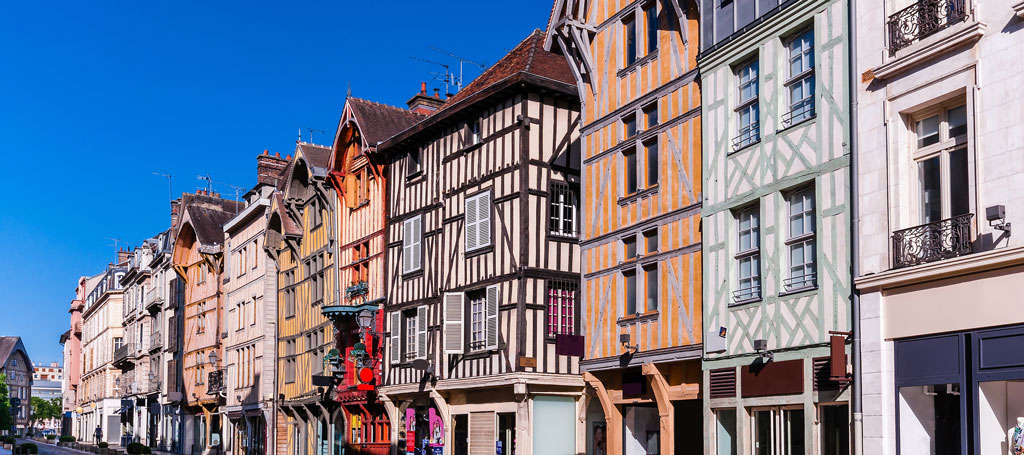
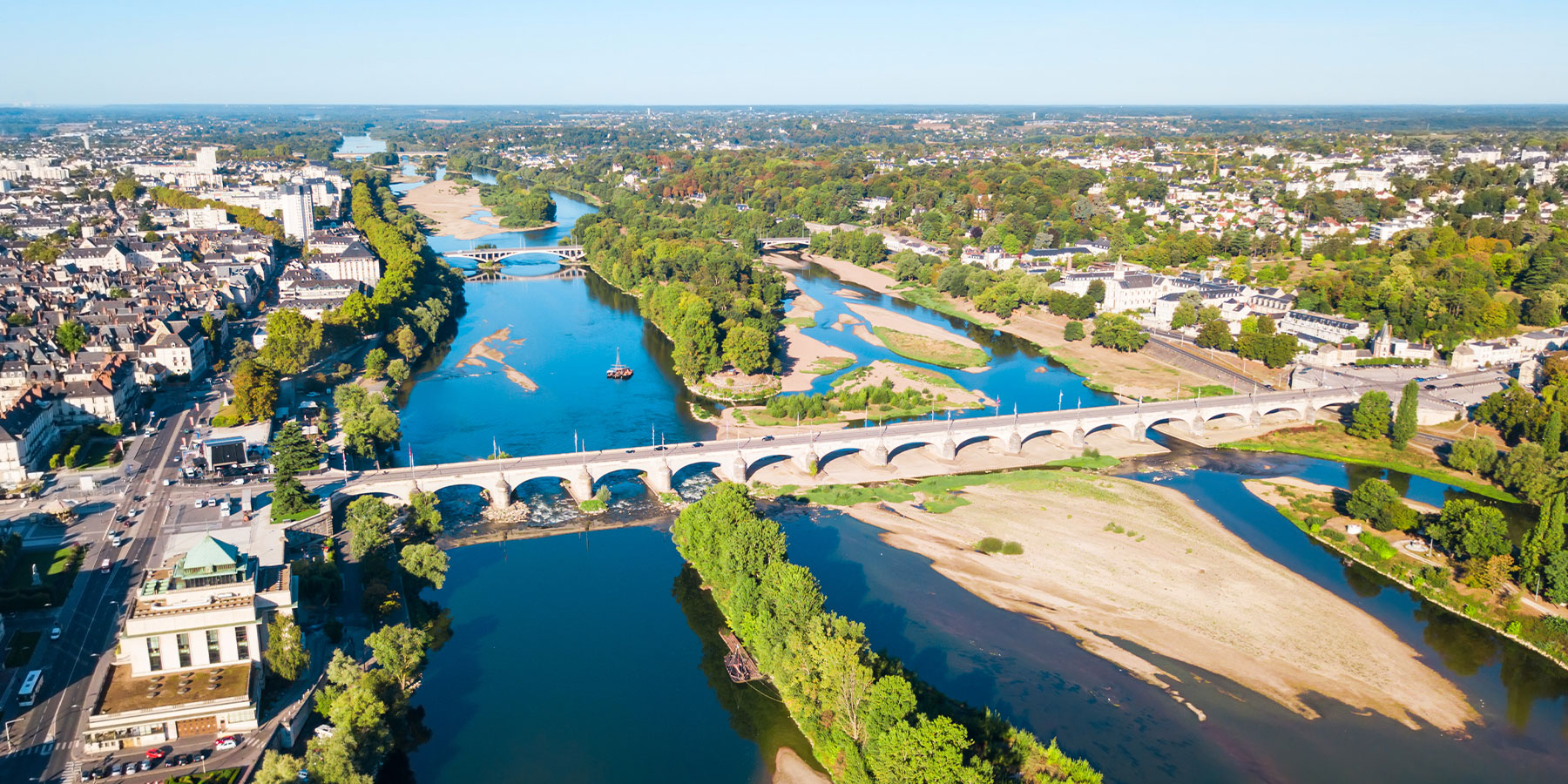
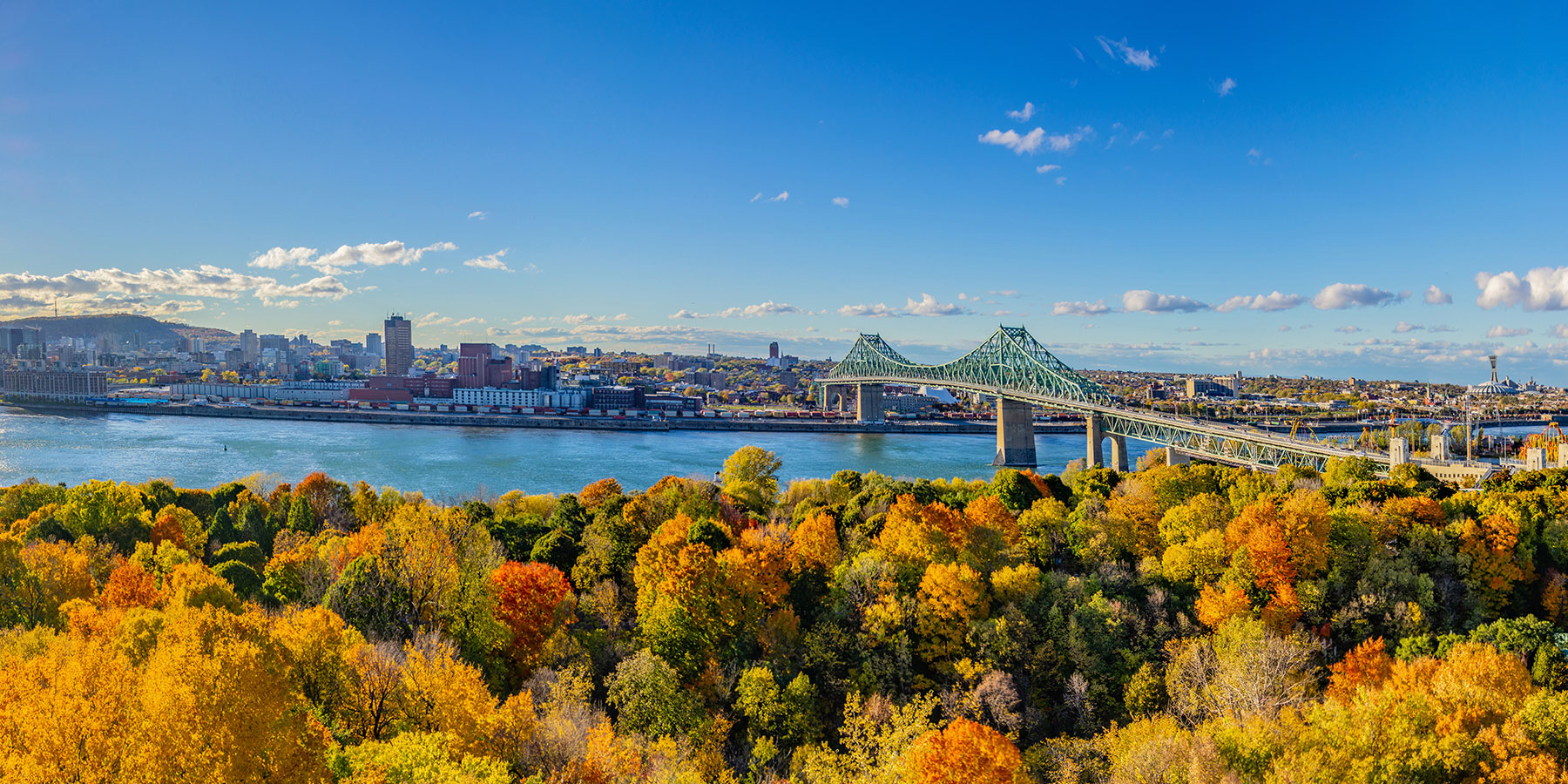

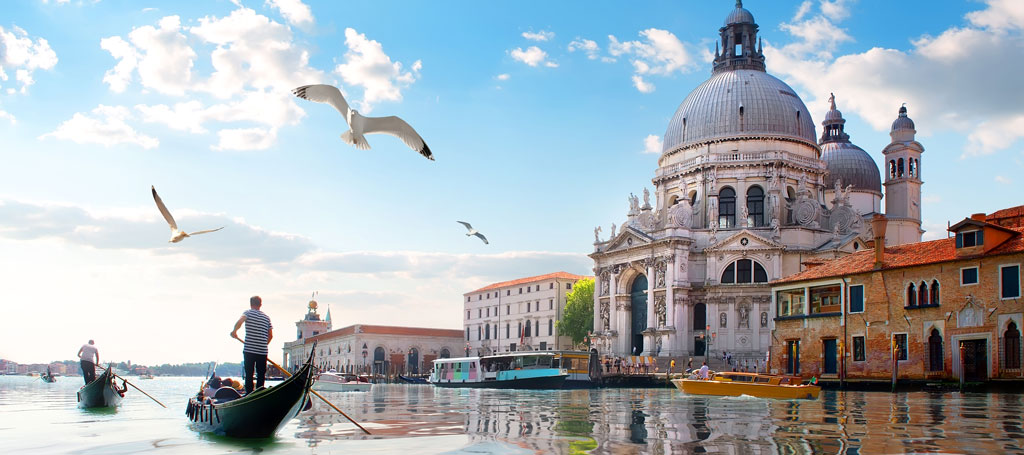
Conociendo a la “Serenísima”
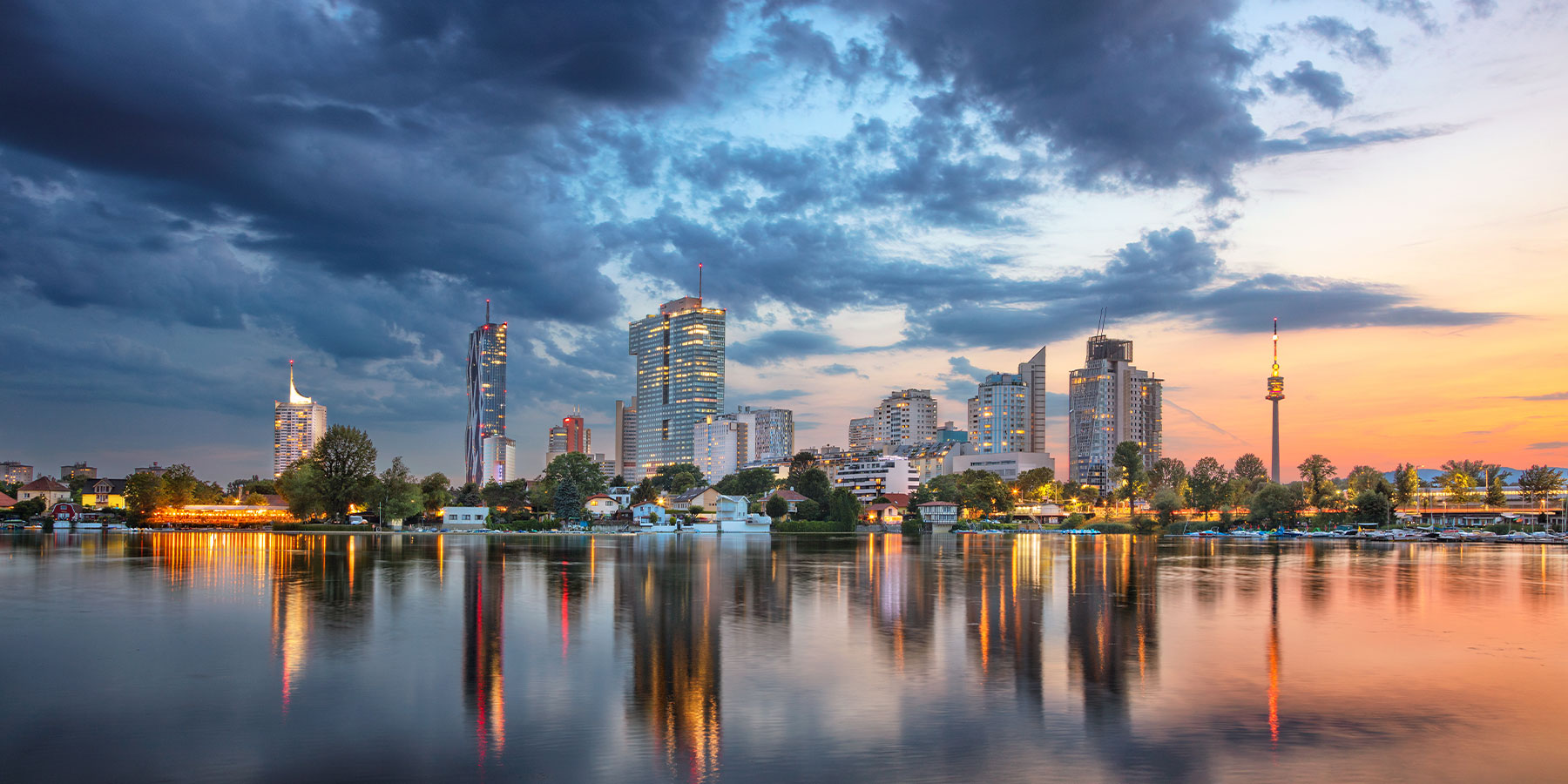
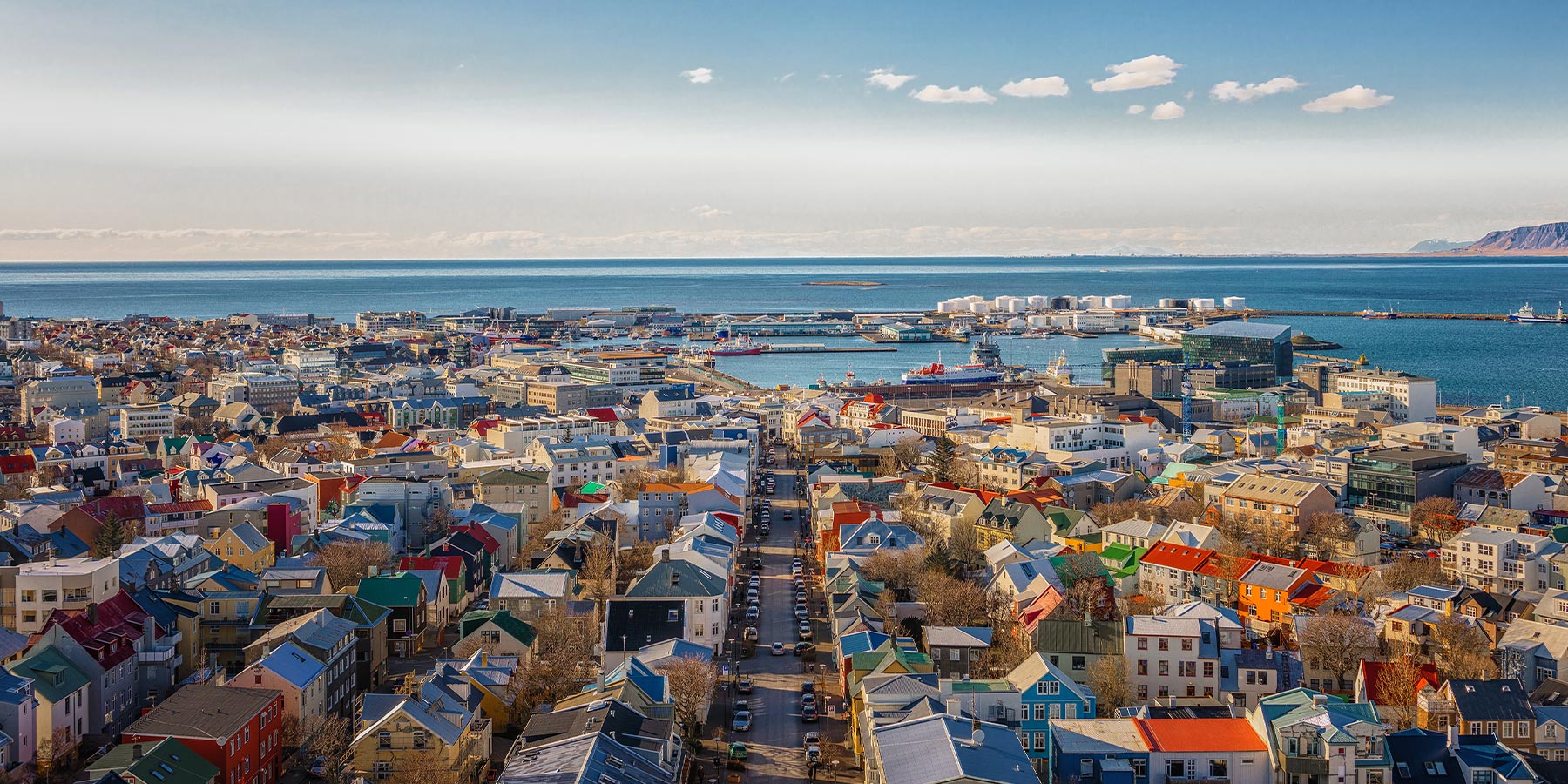


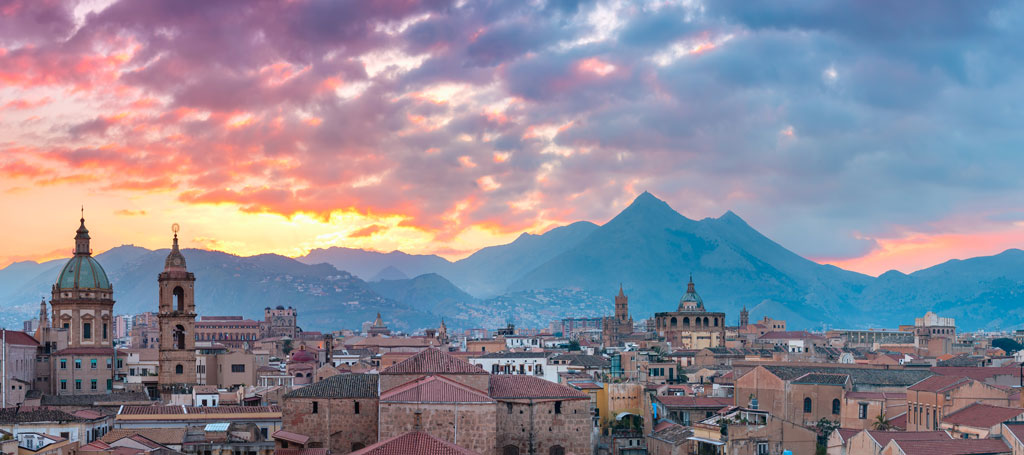



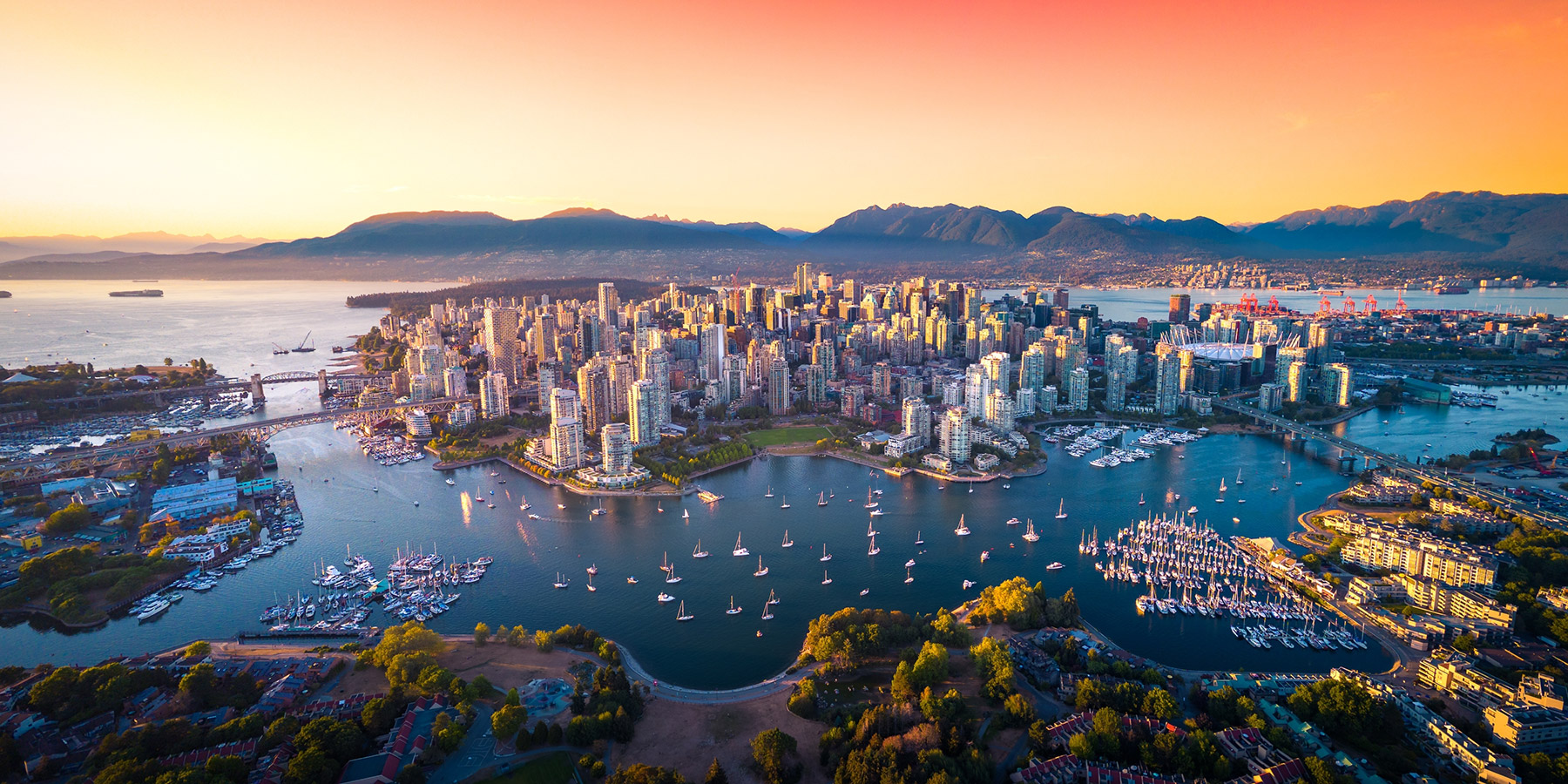
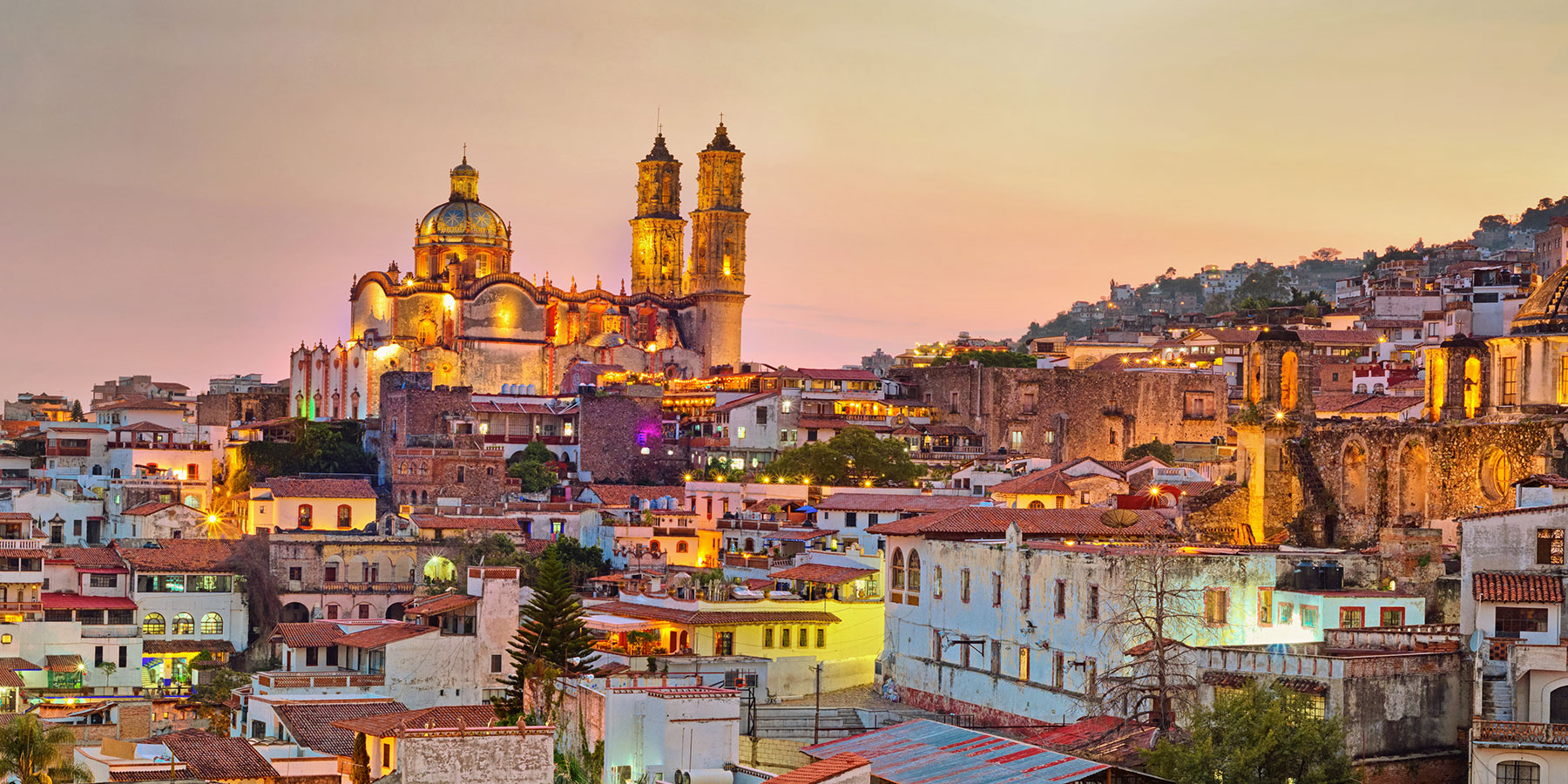
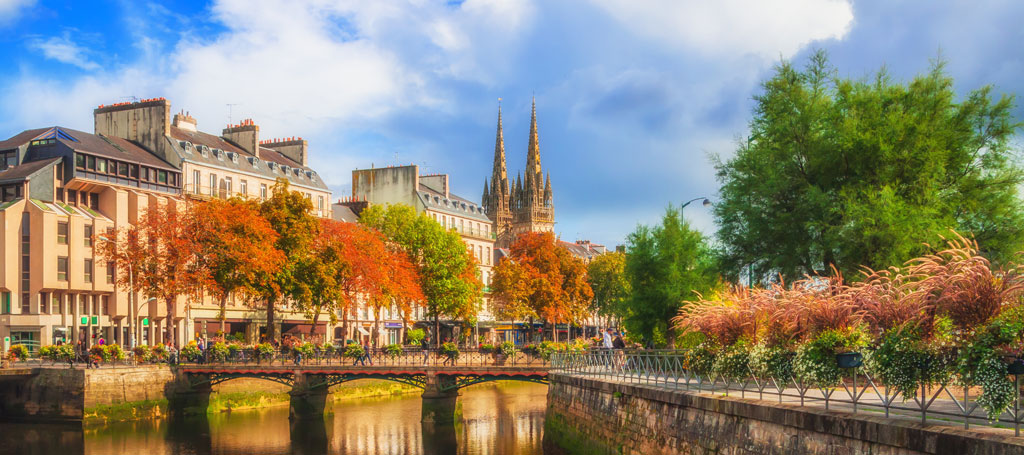
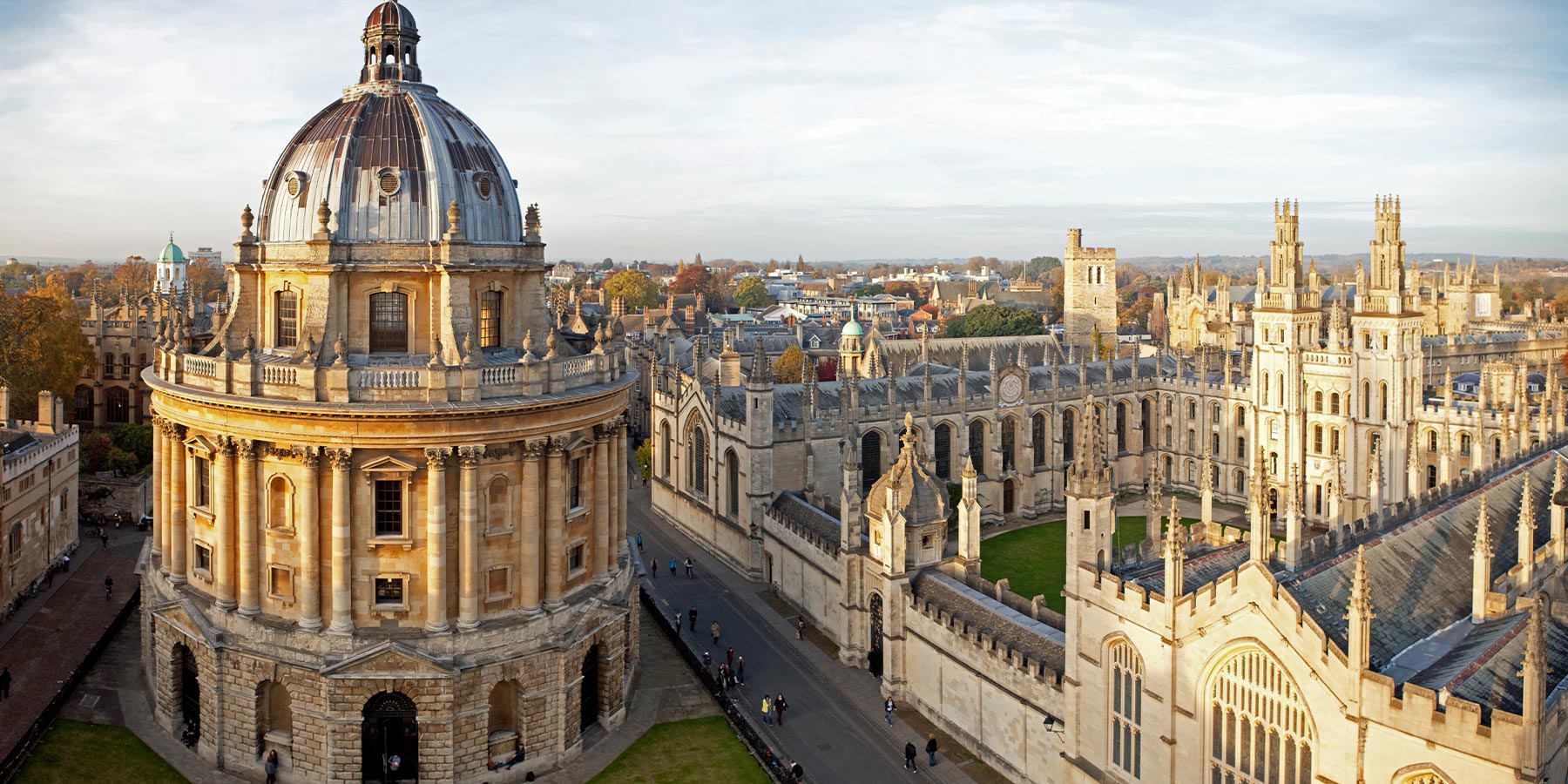



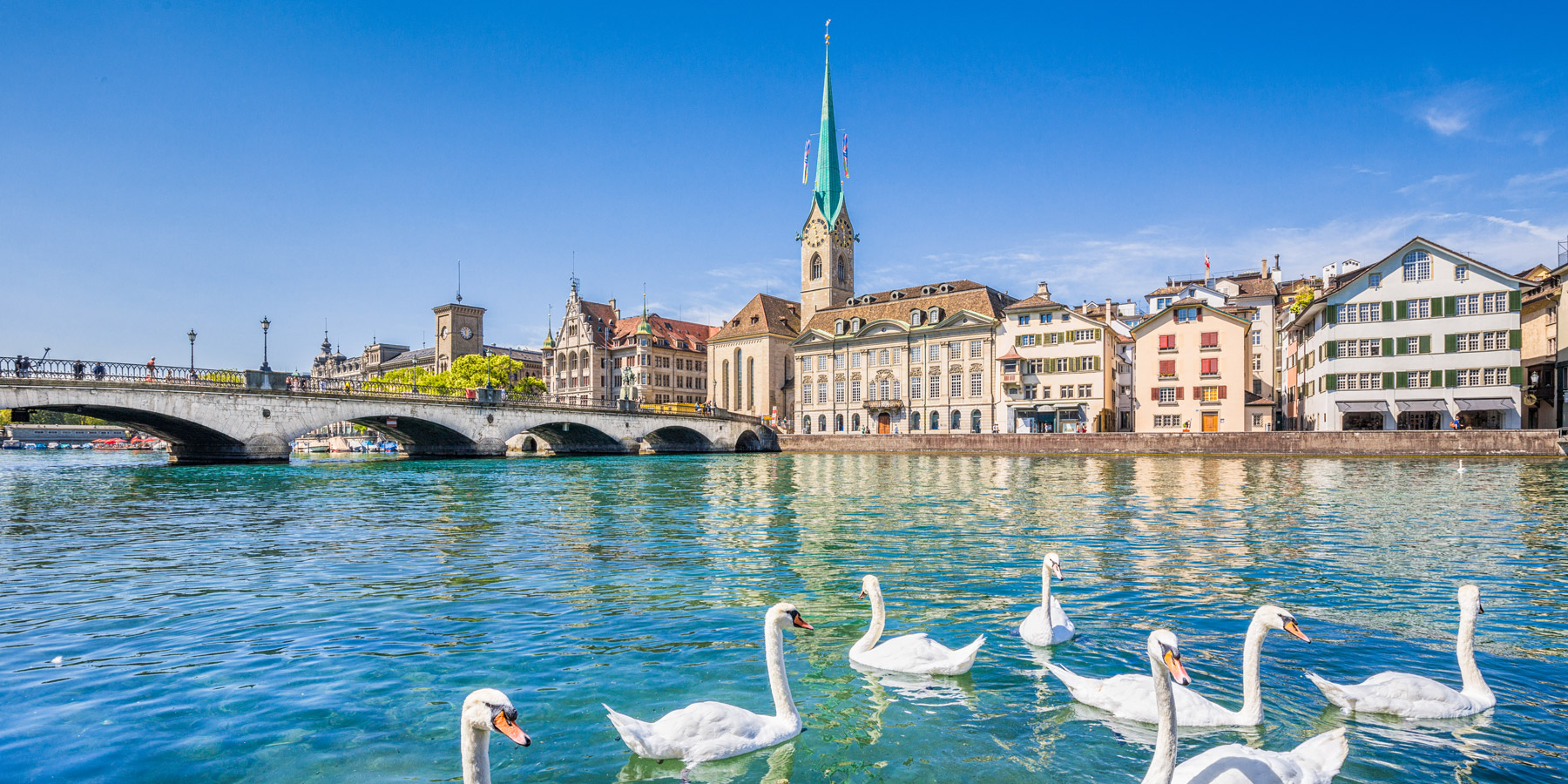
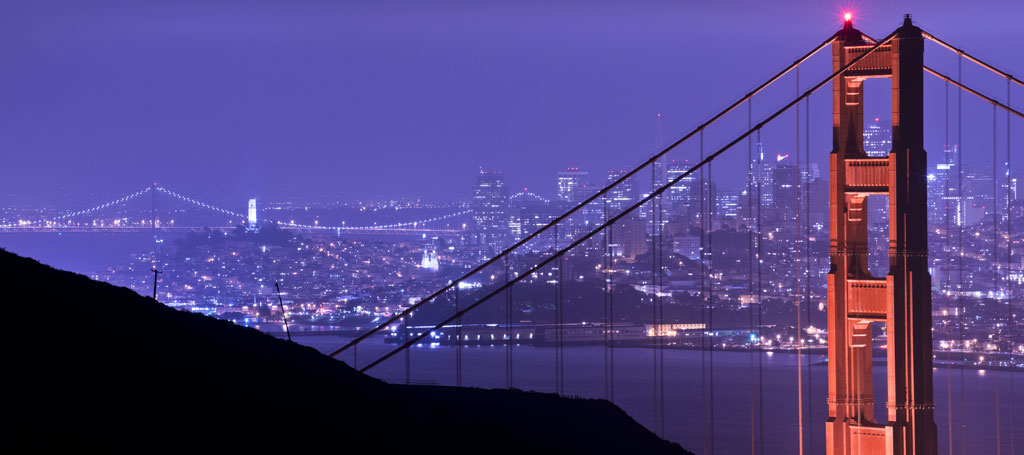

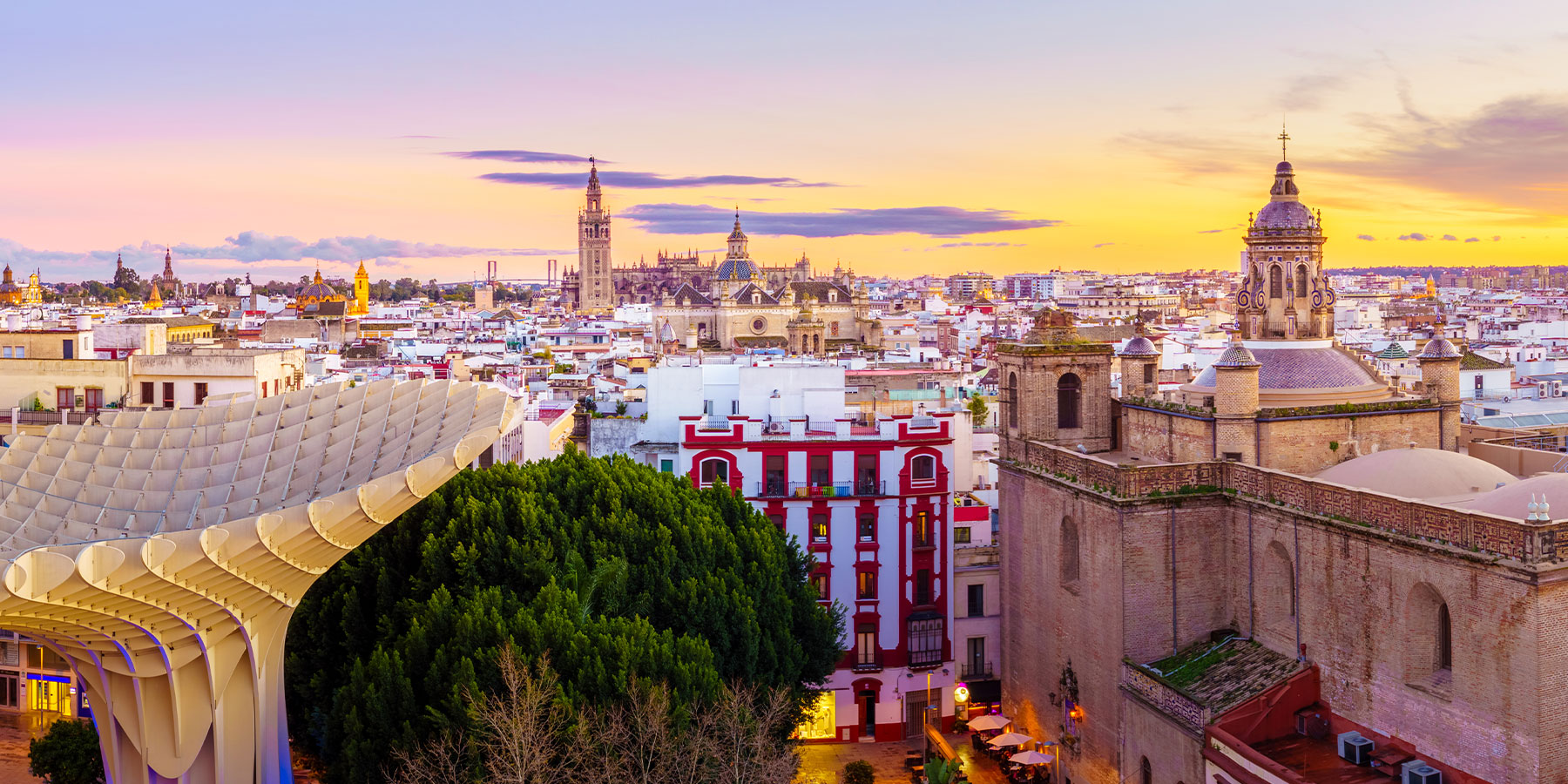

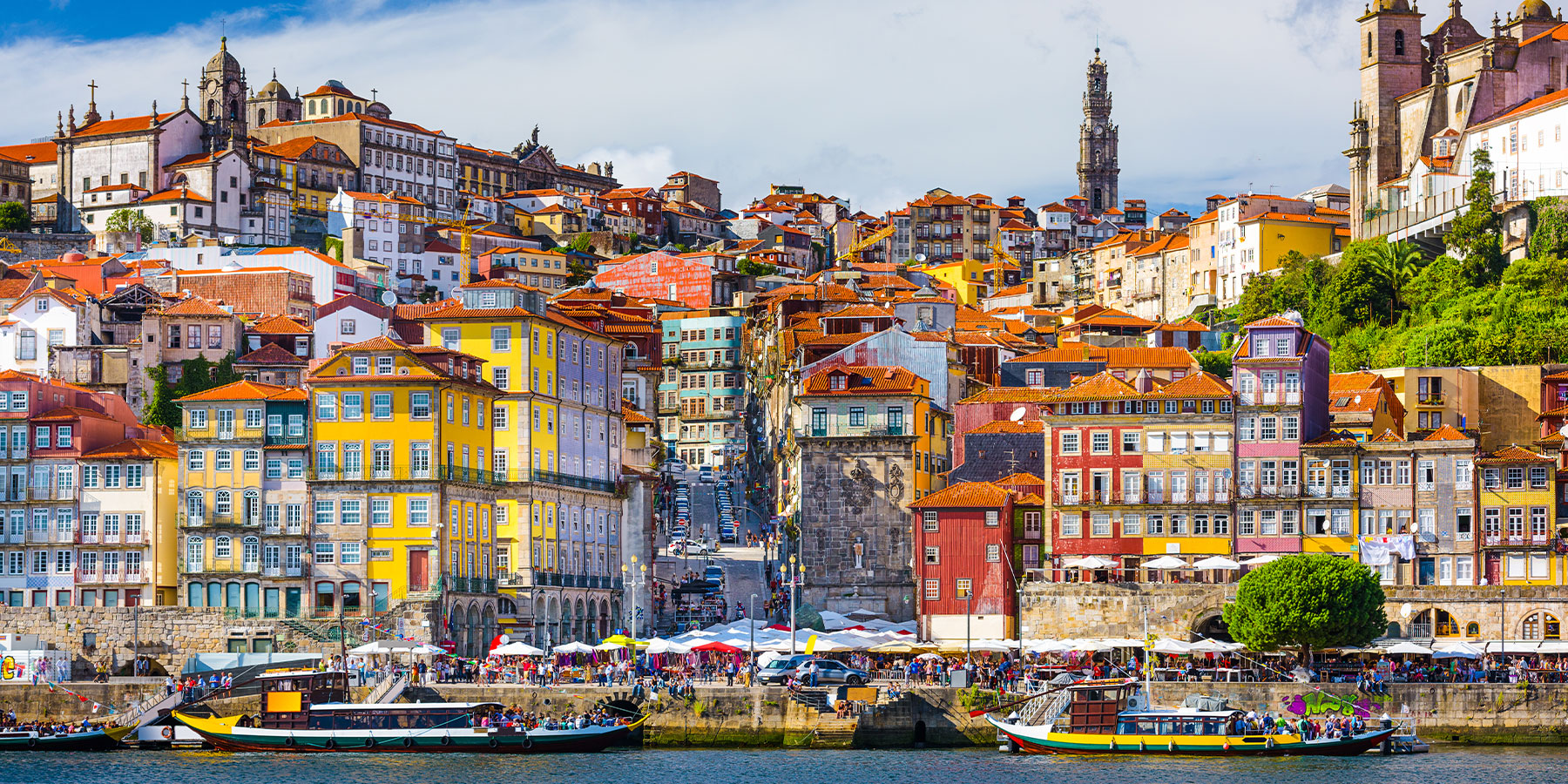


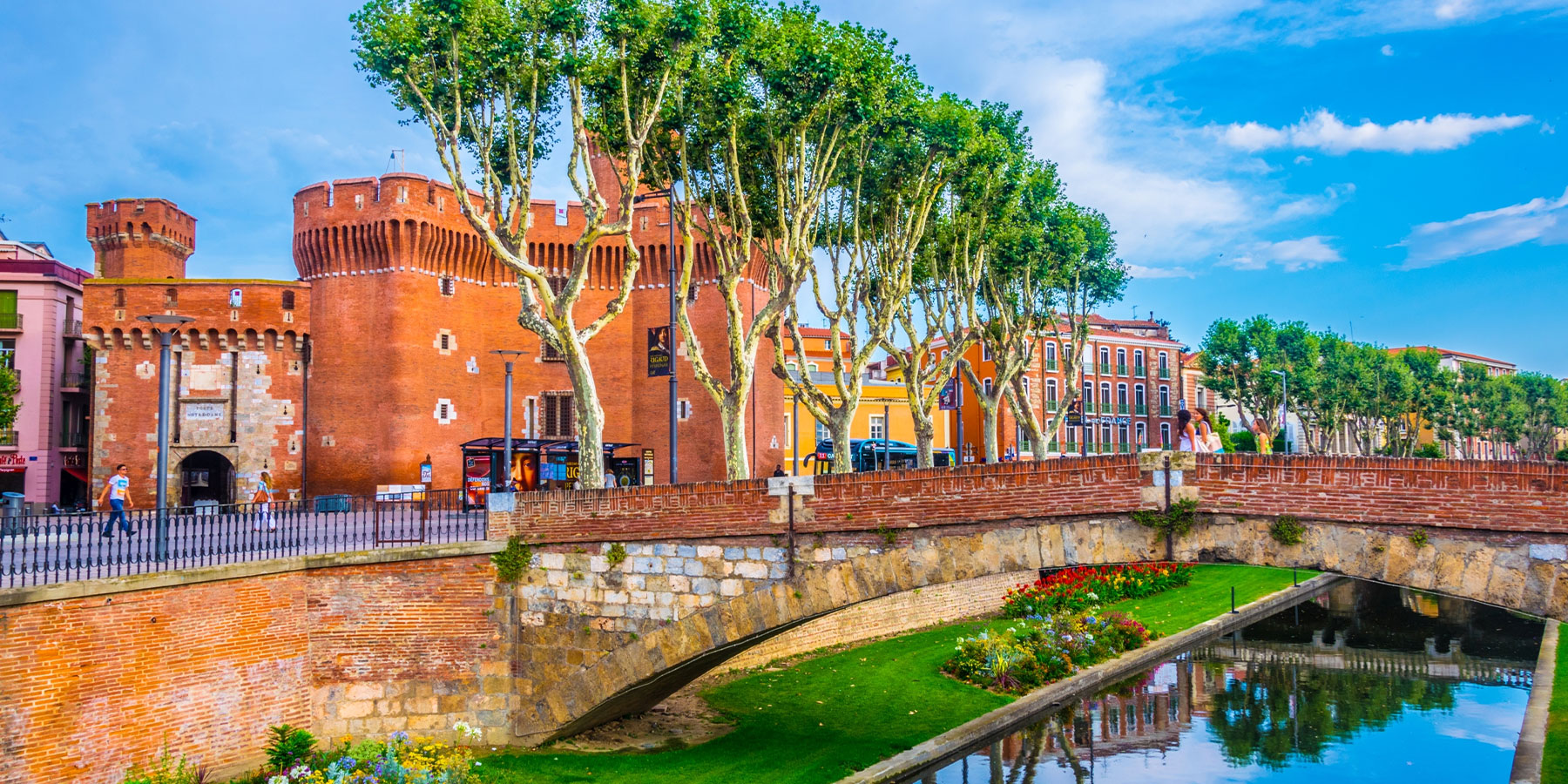
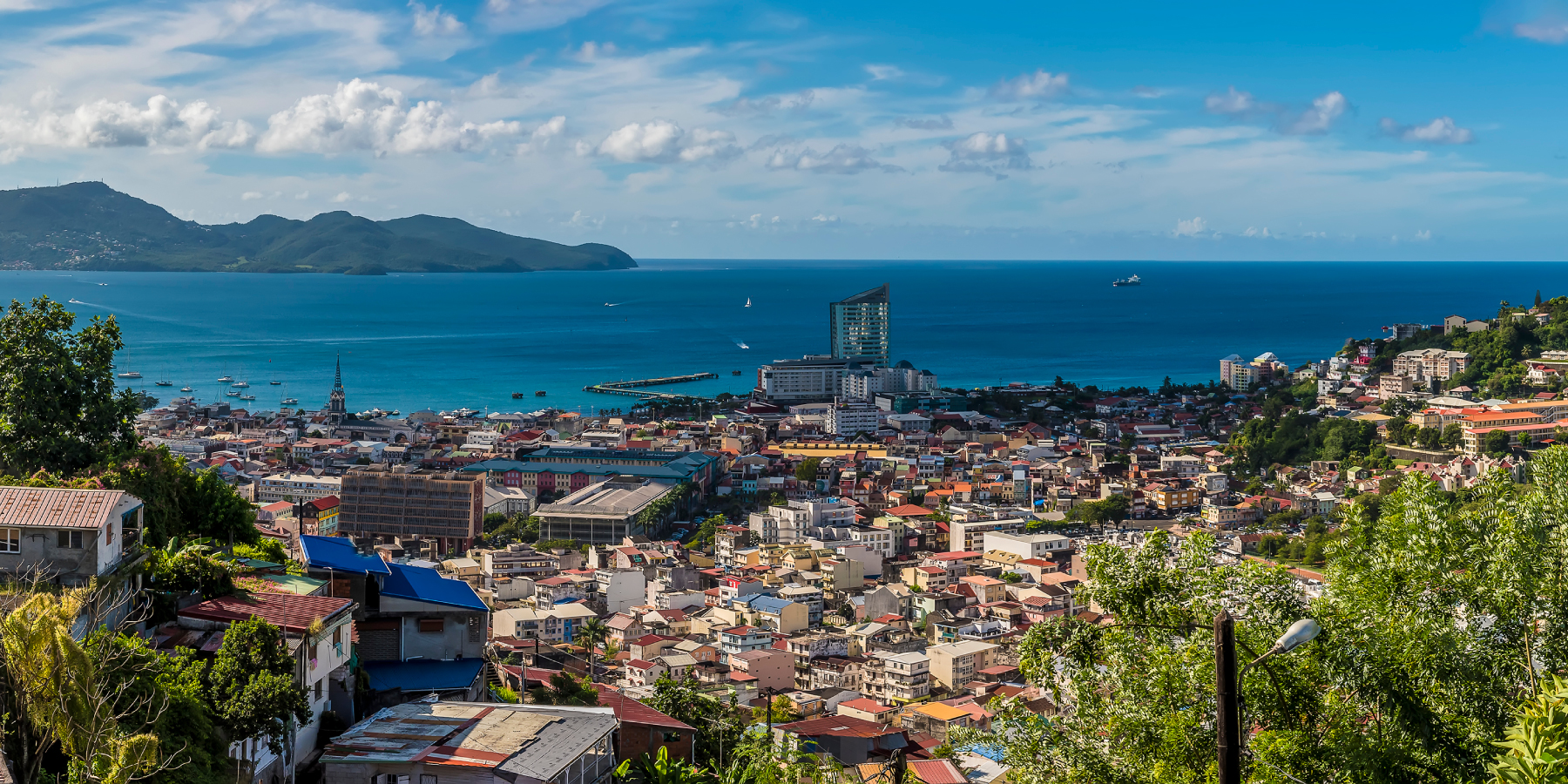


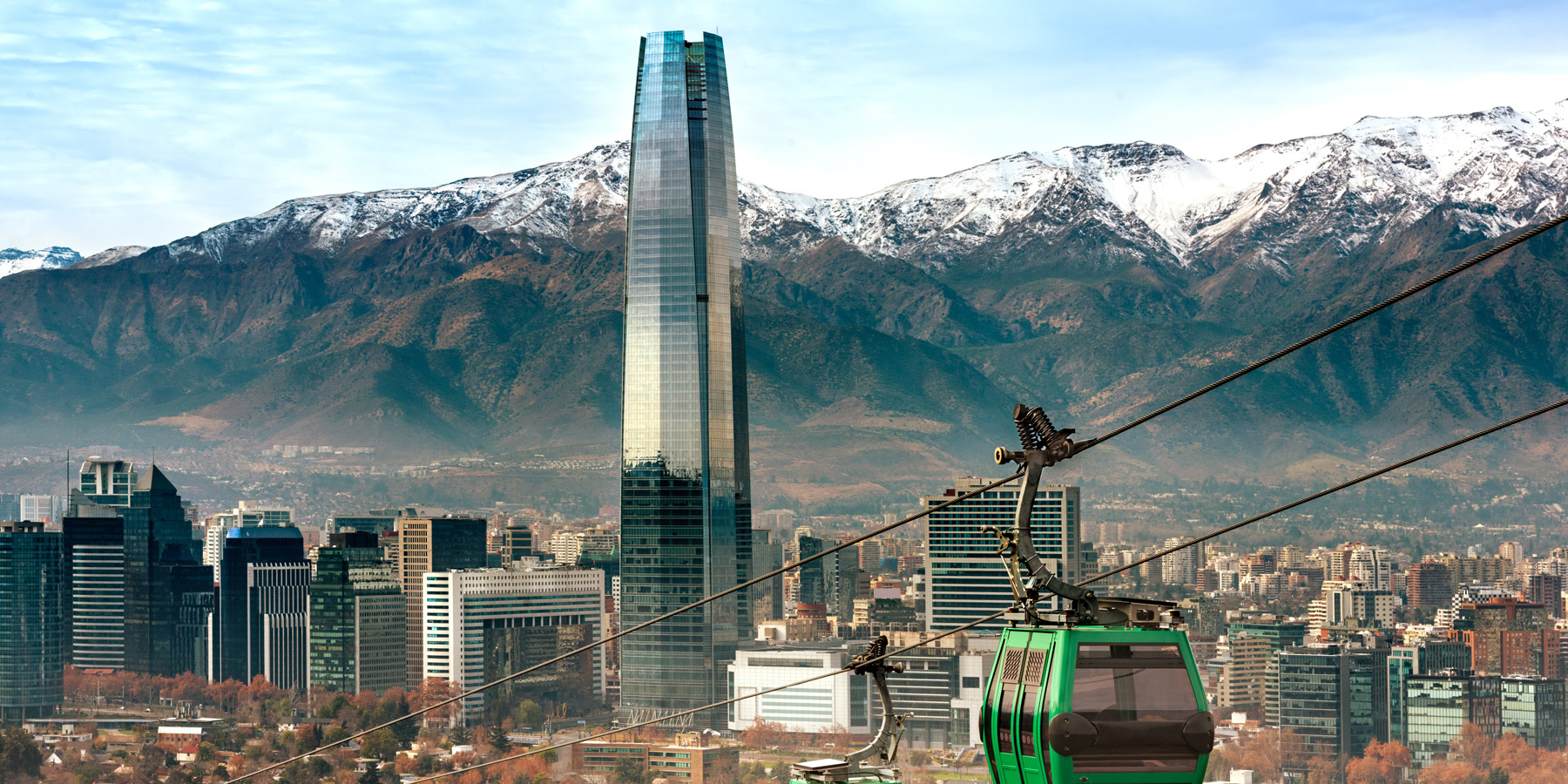

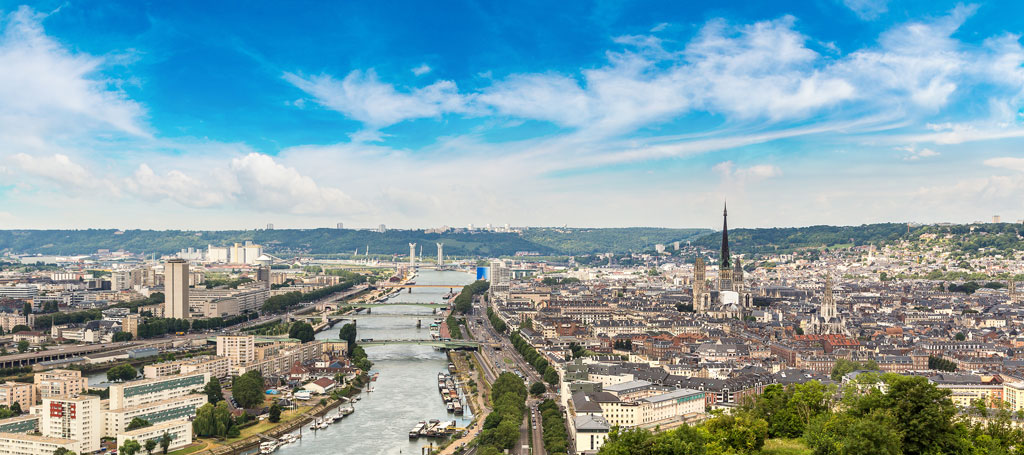

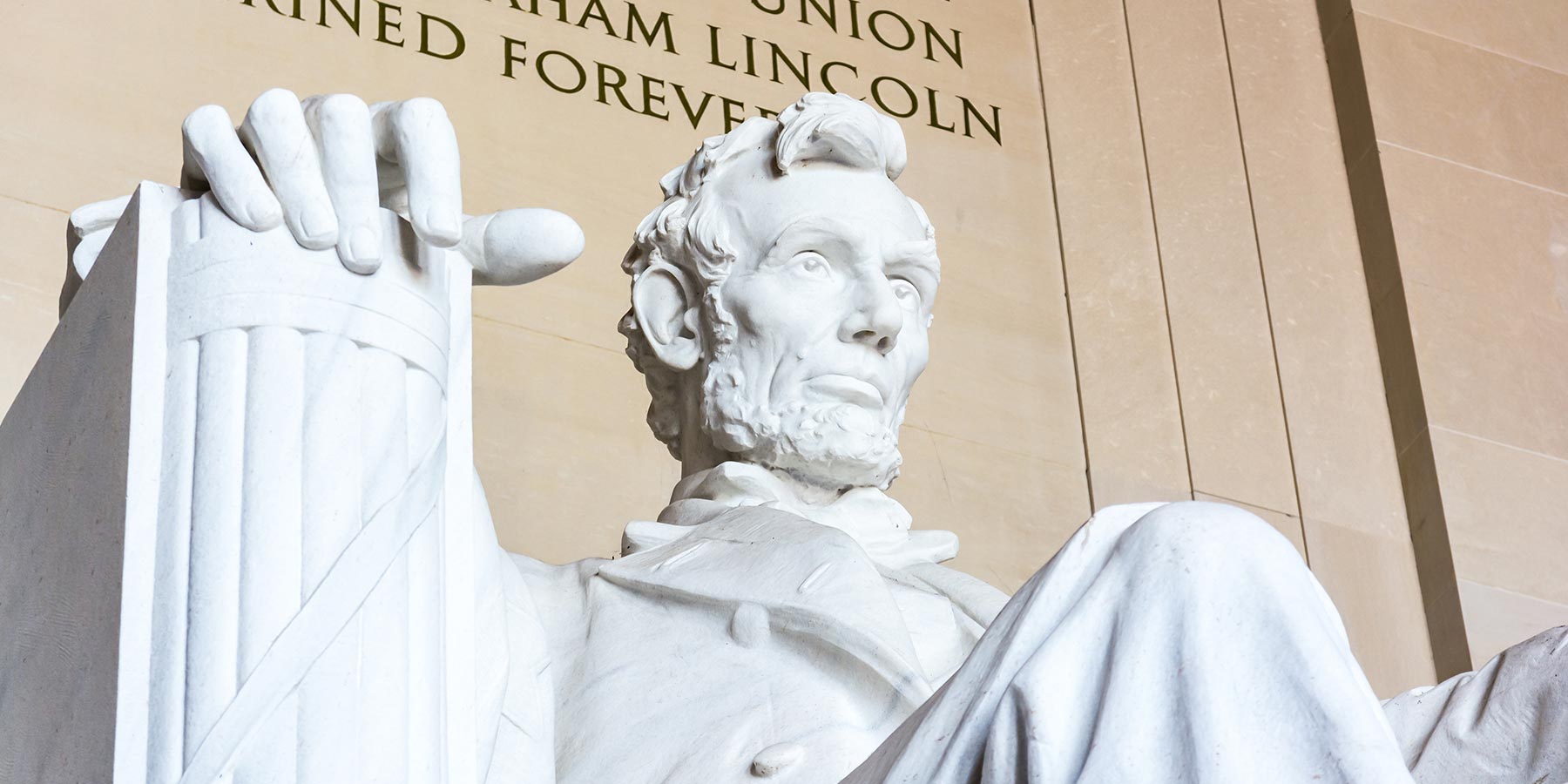


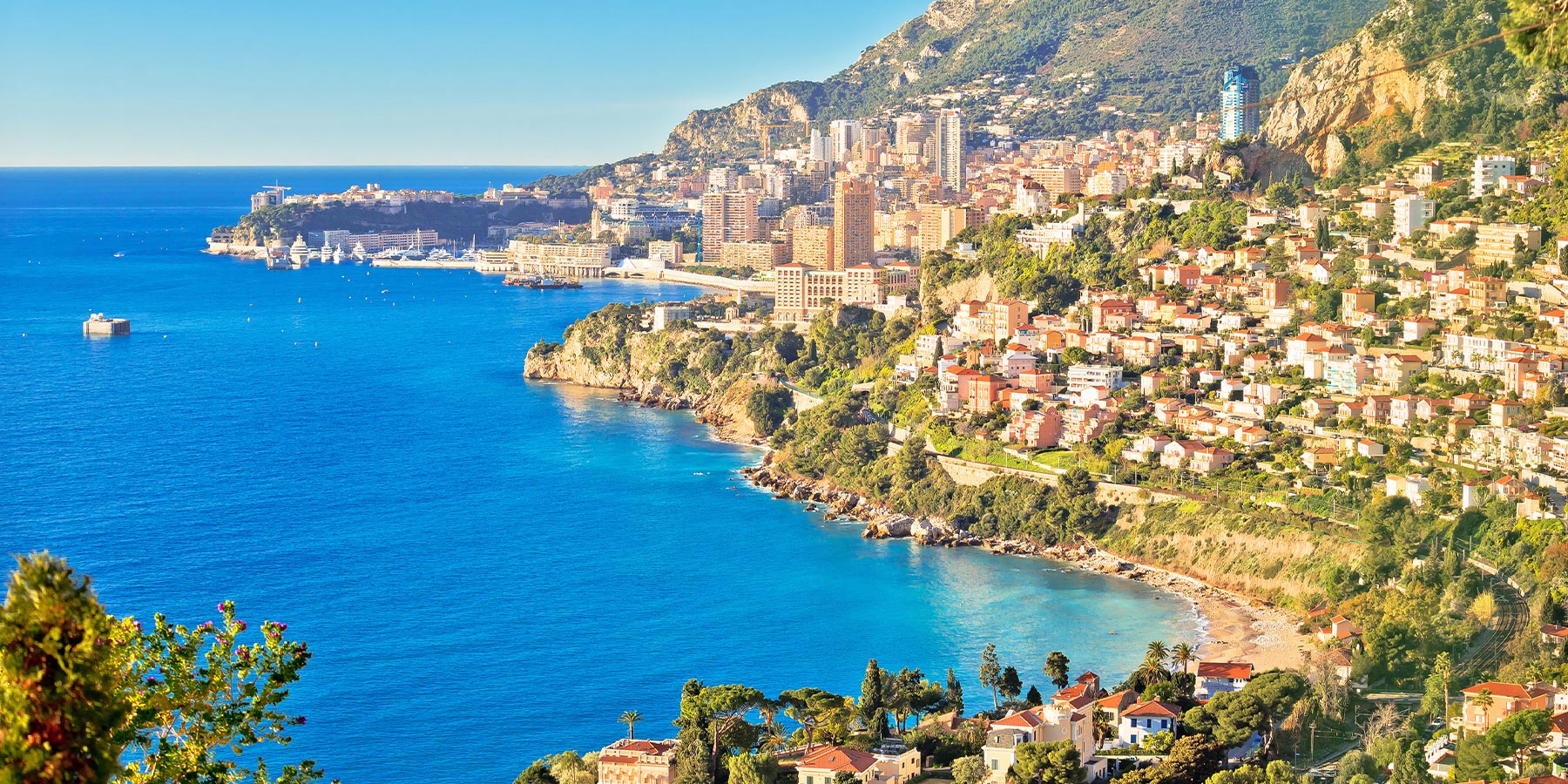
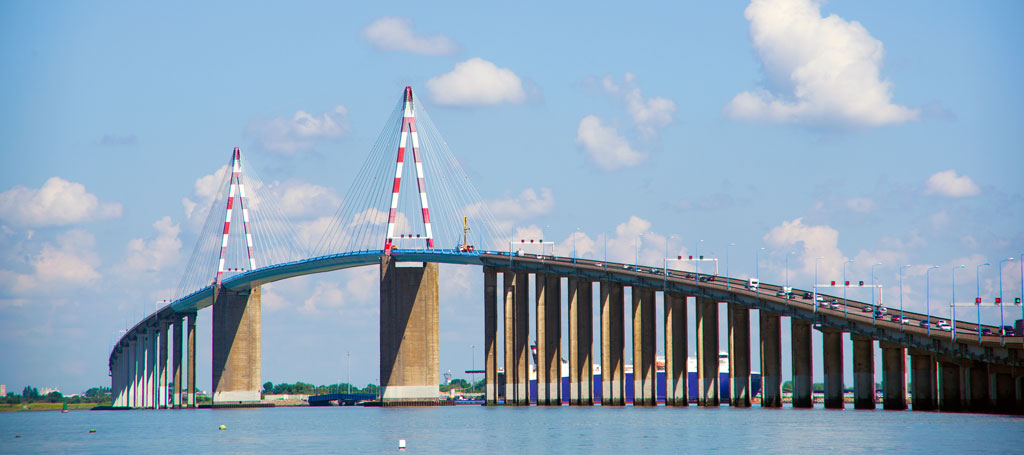
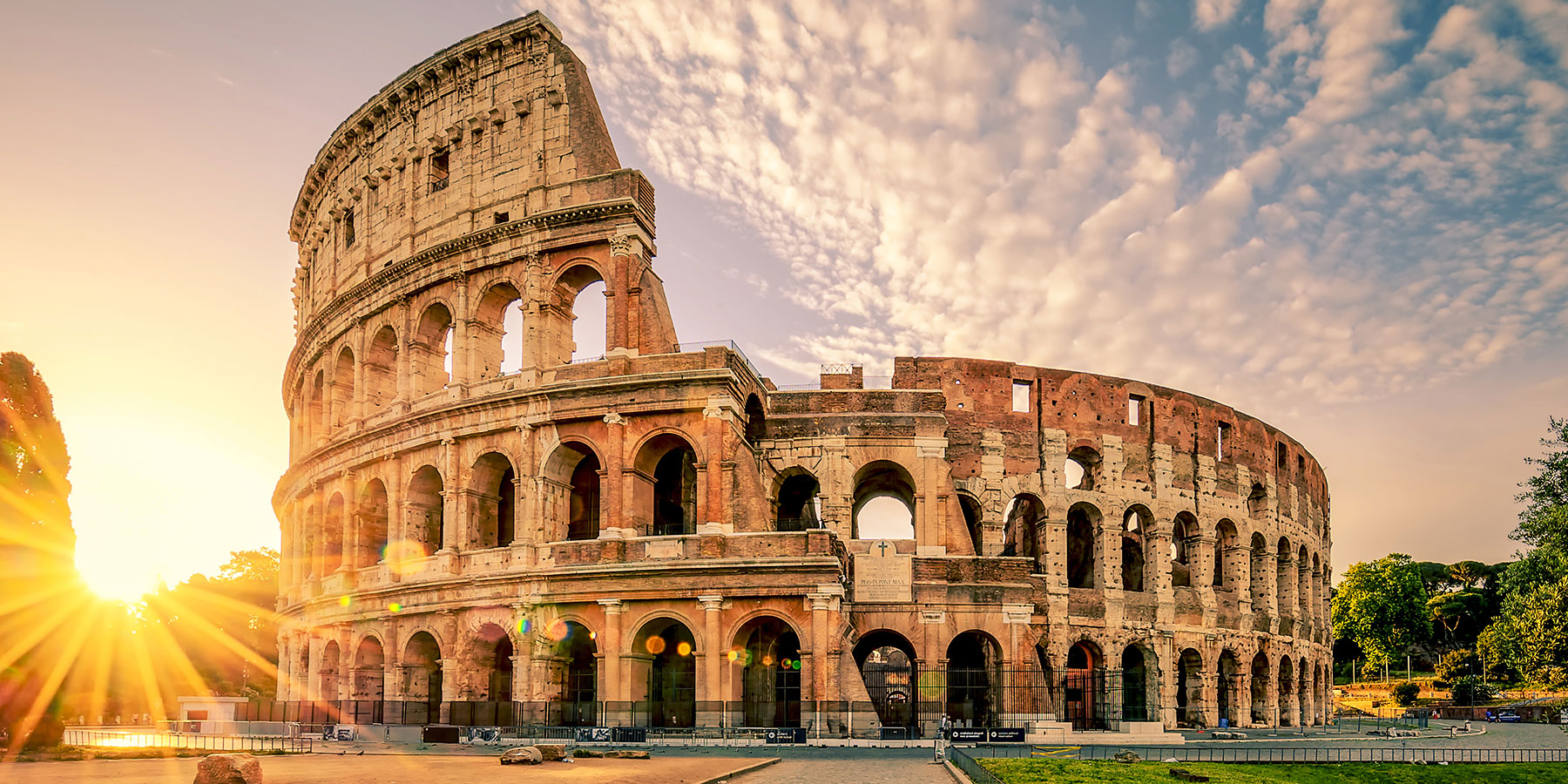
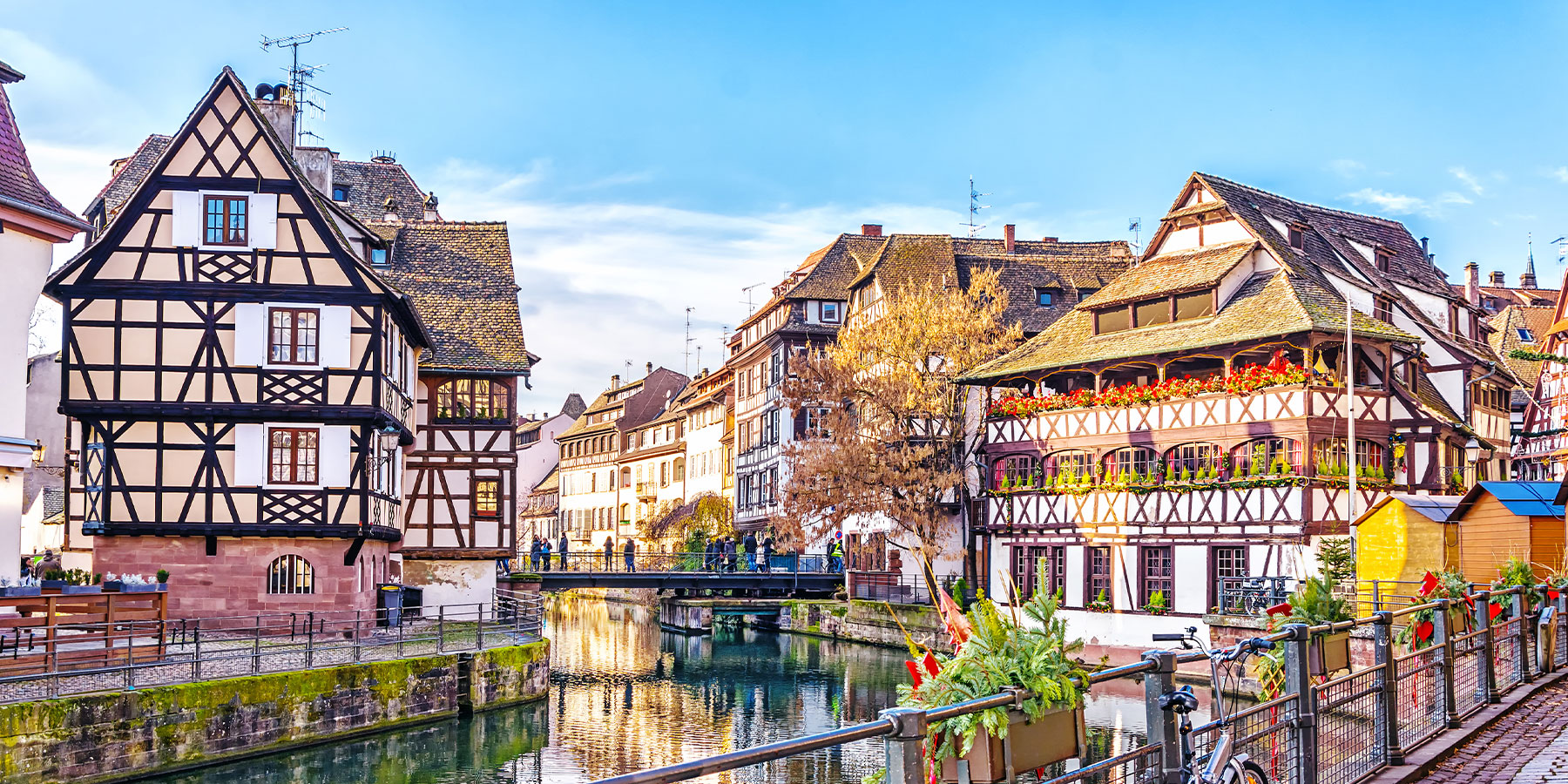

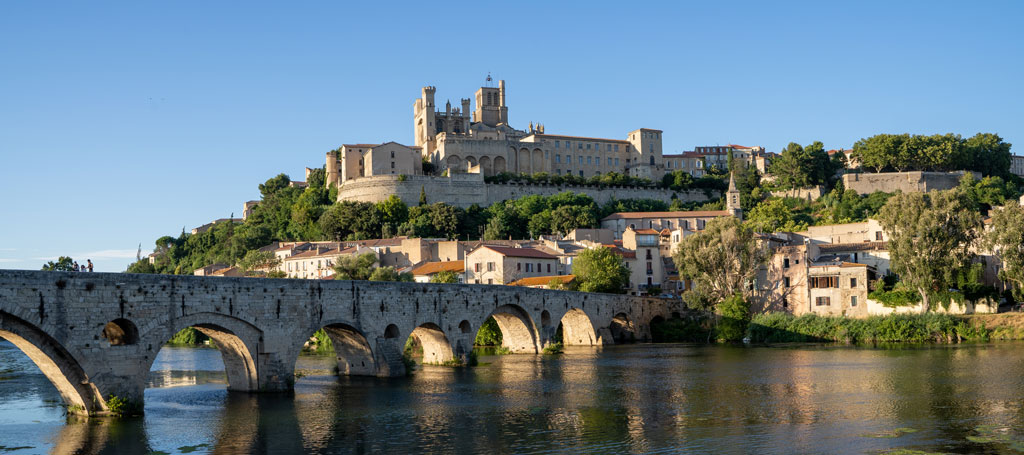
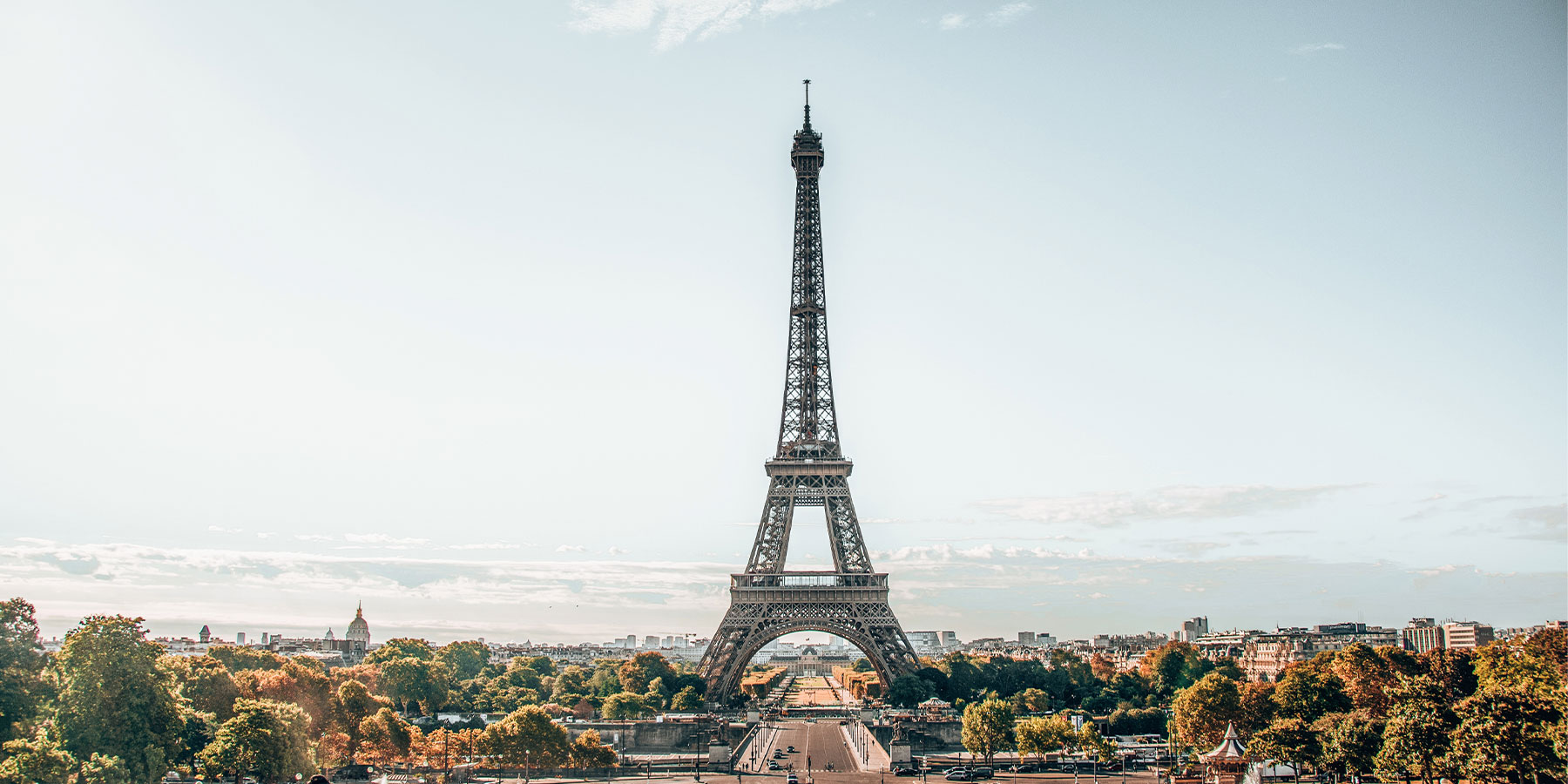
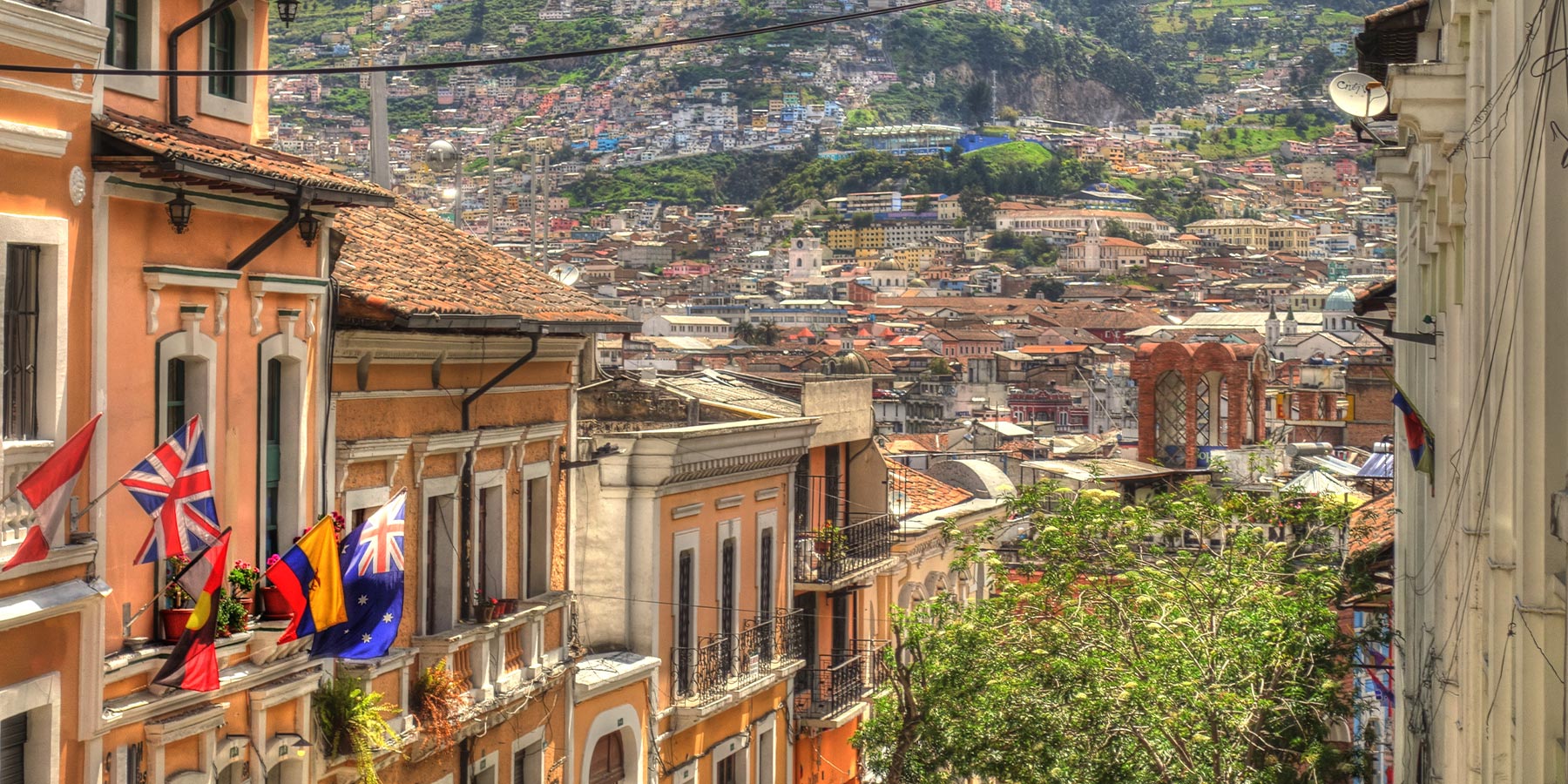
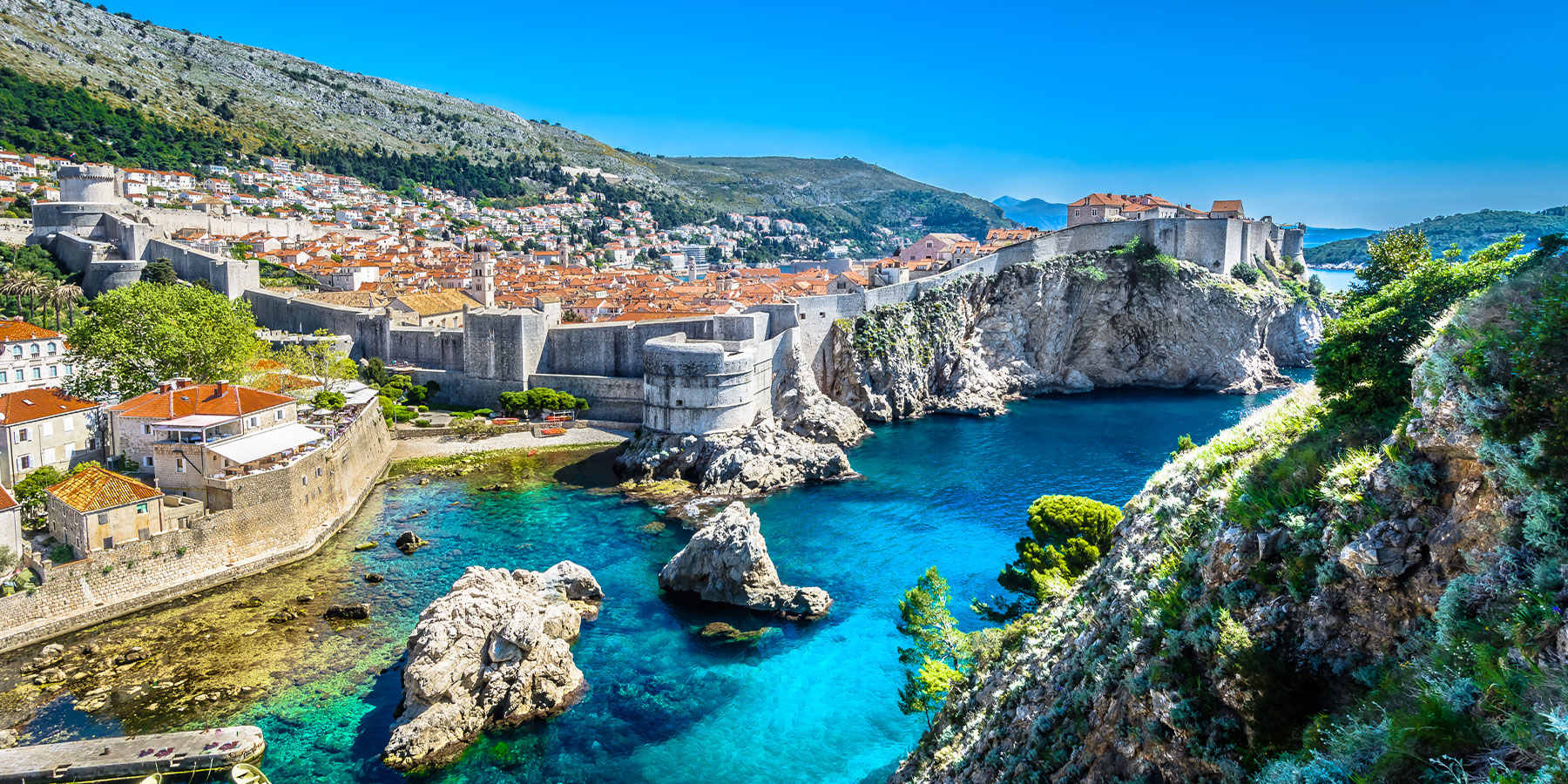
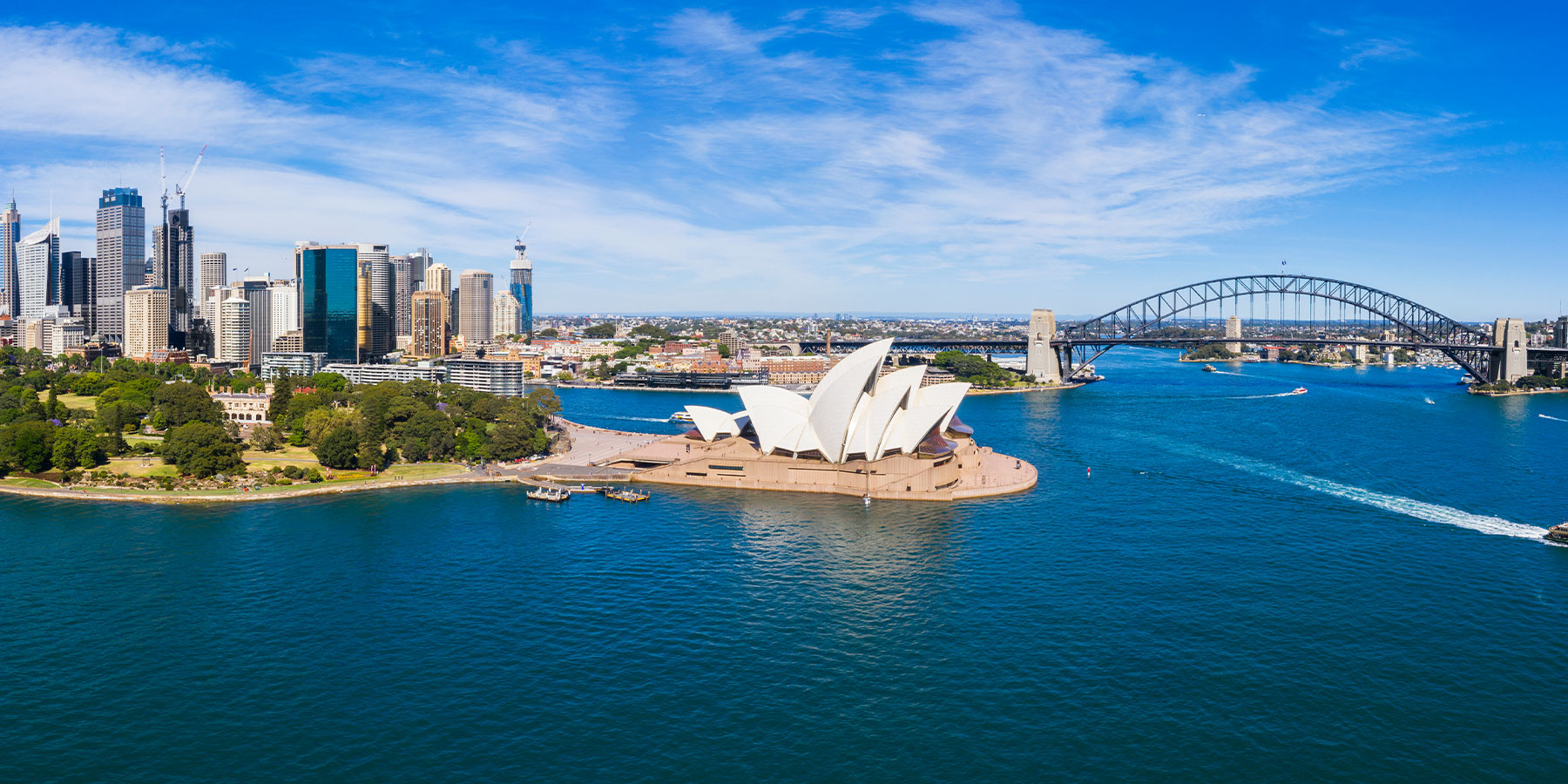
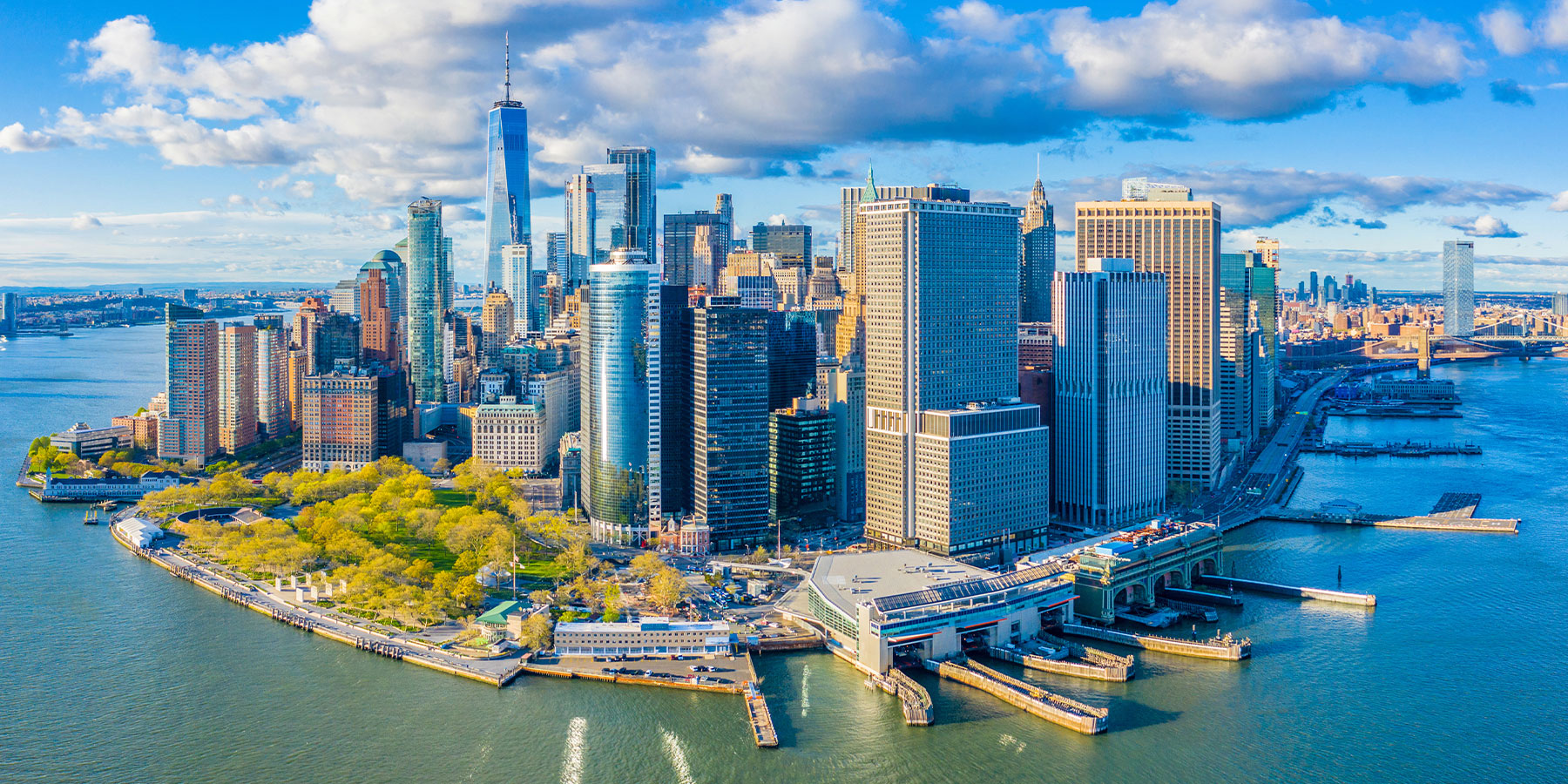
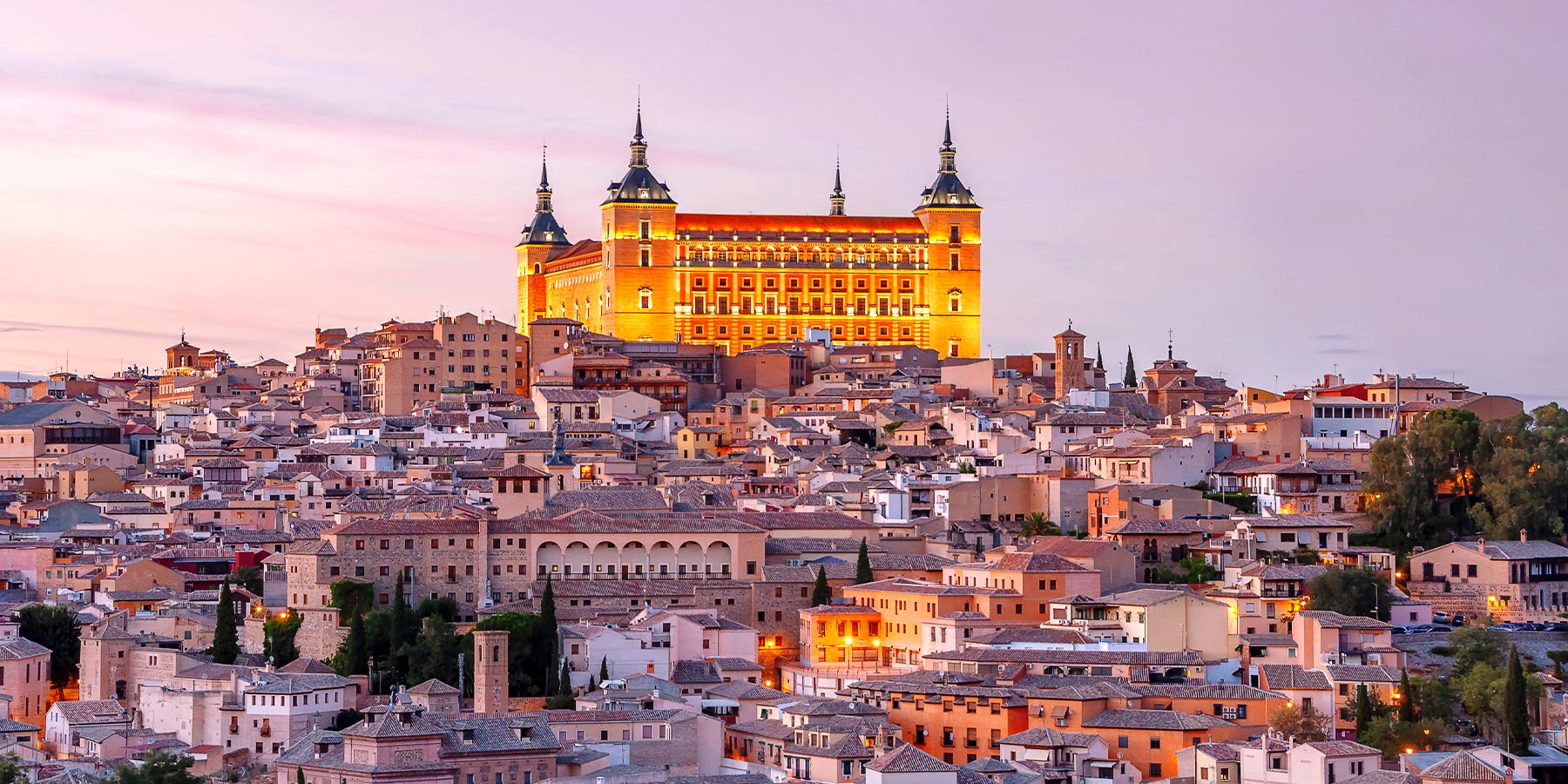
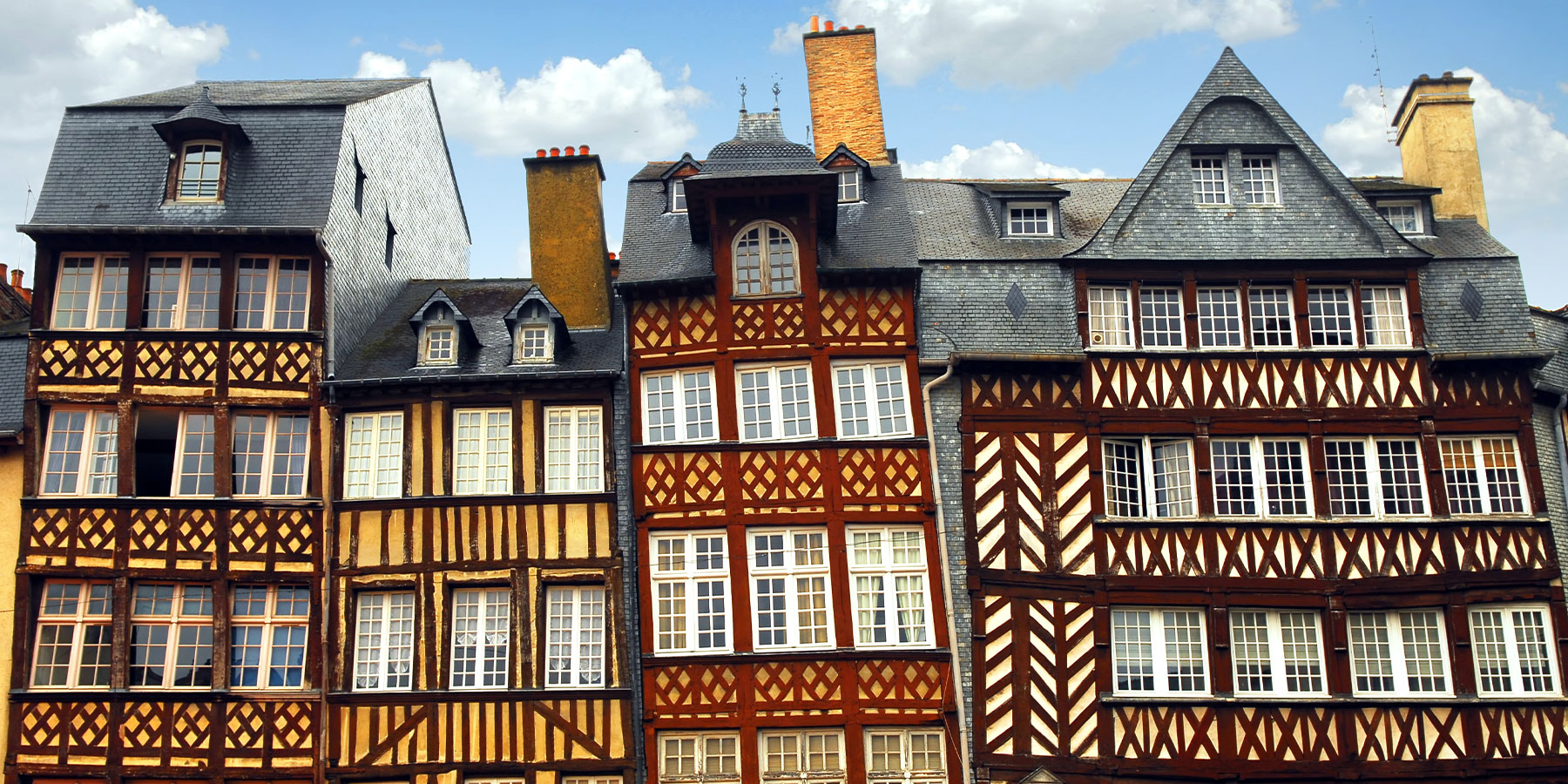
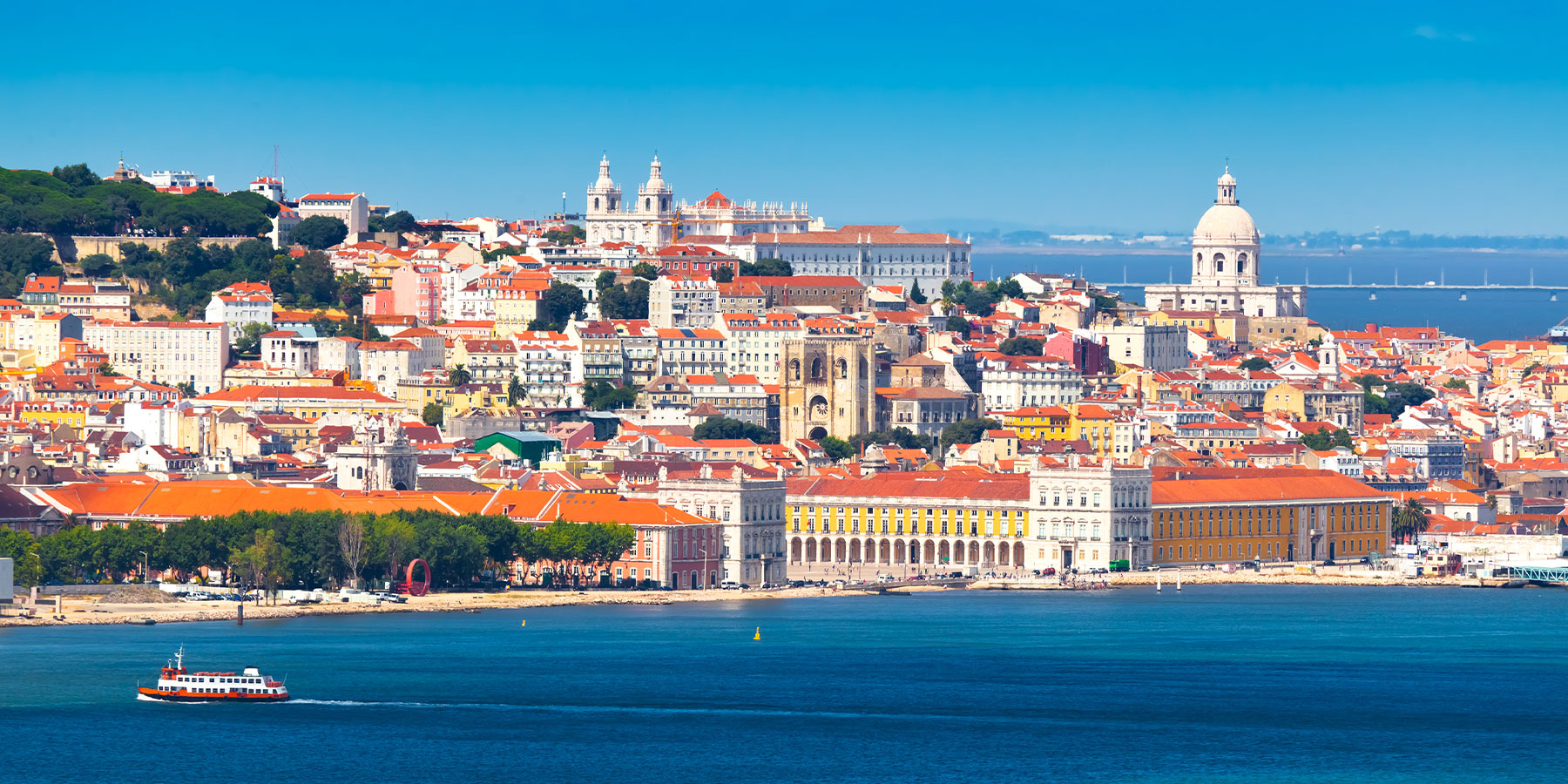
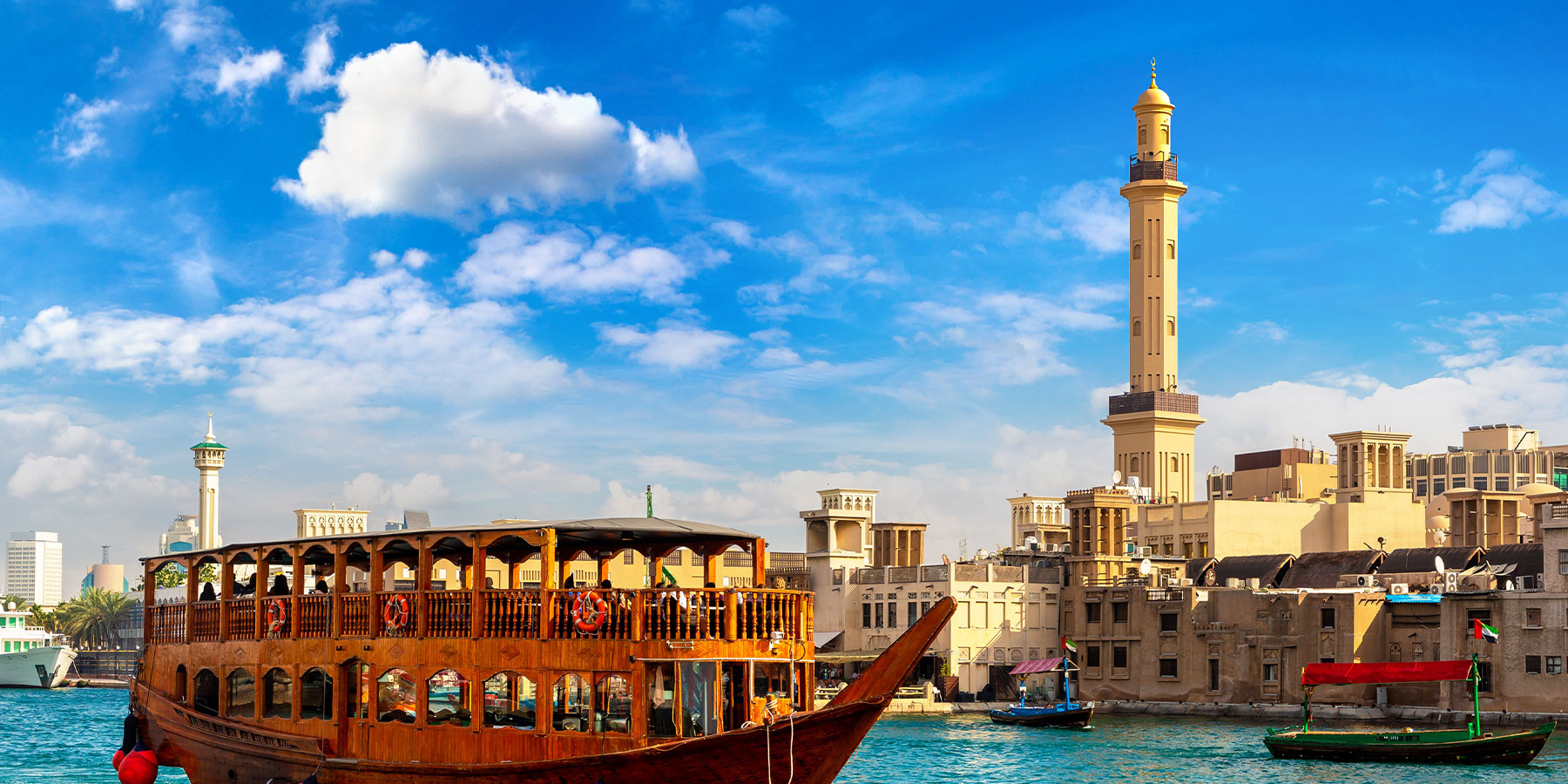
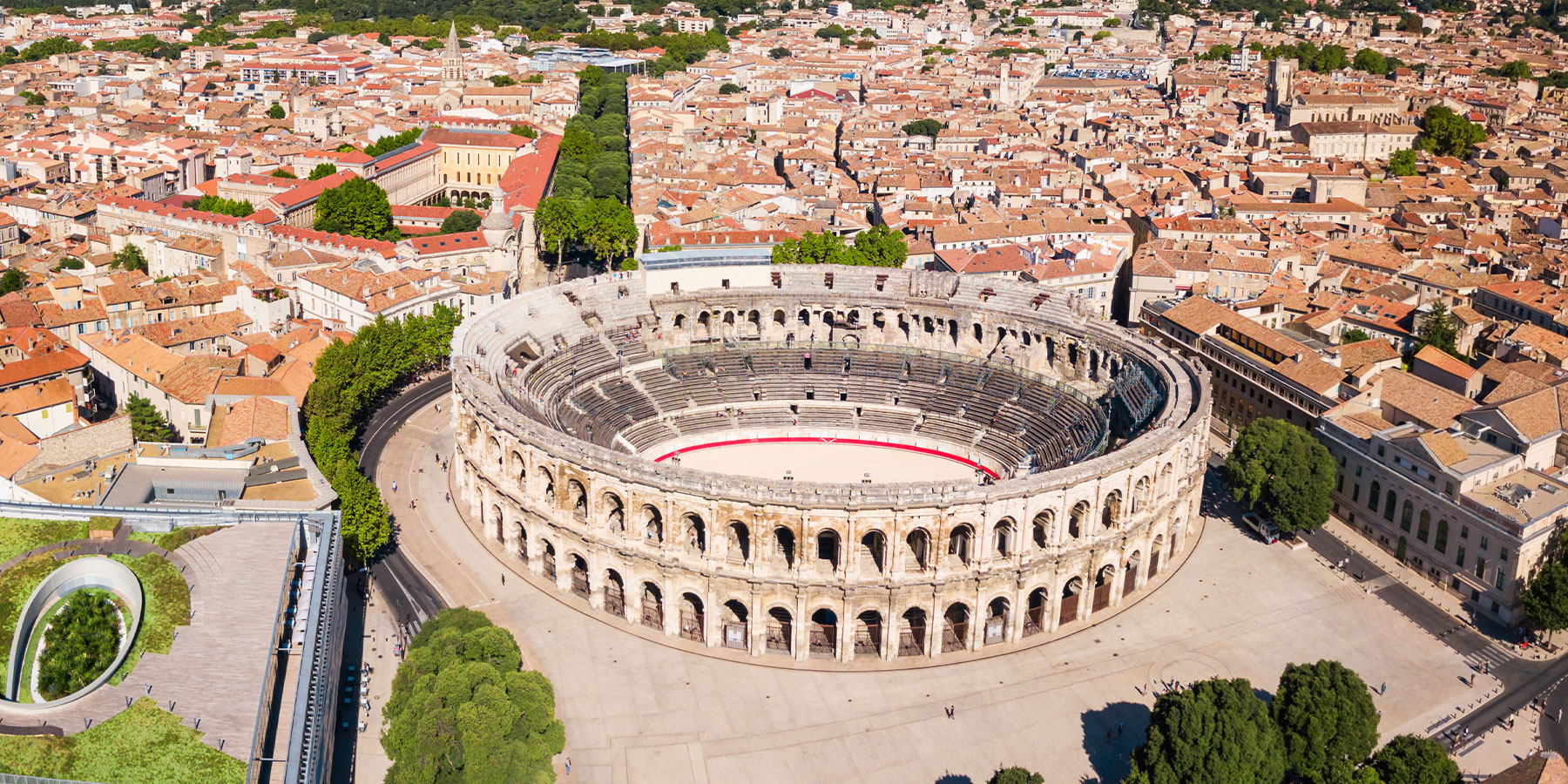

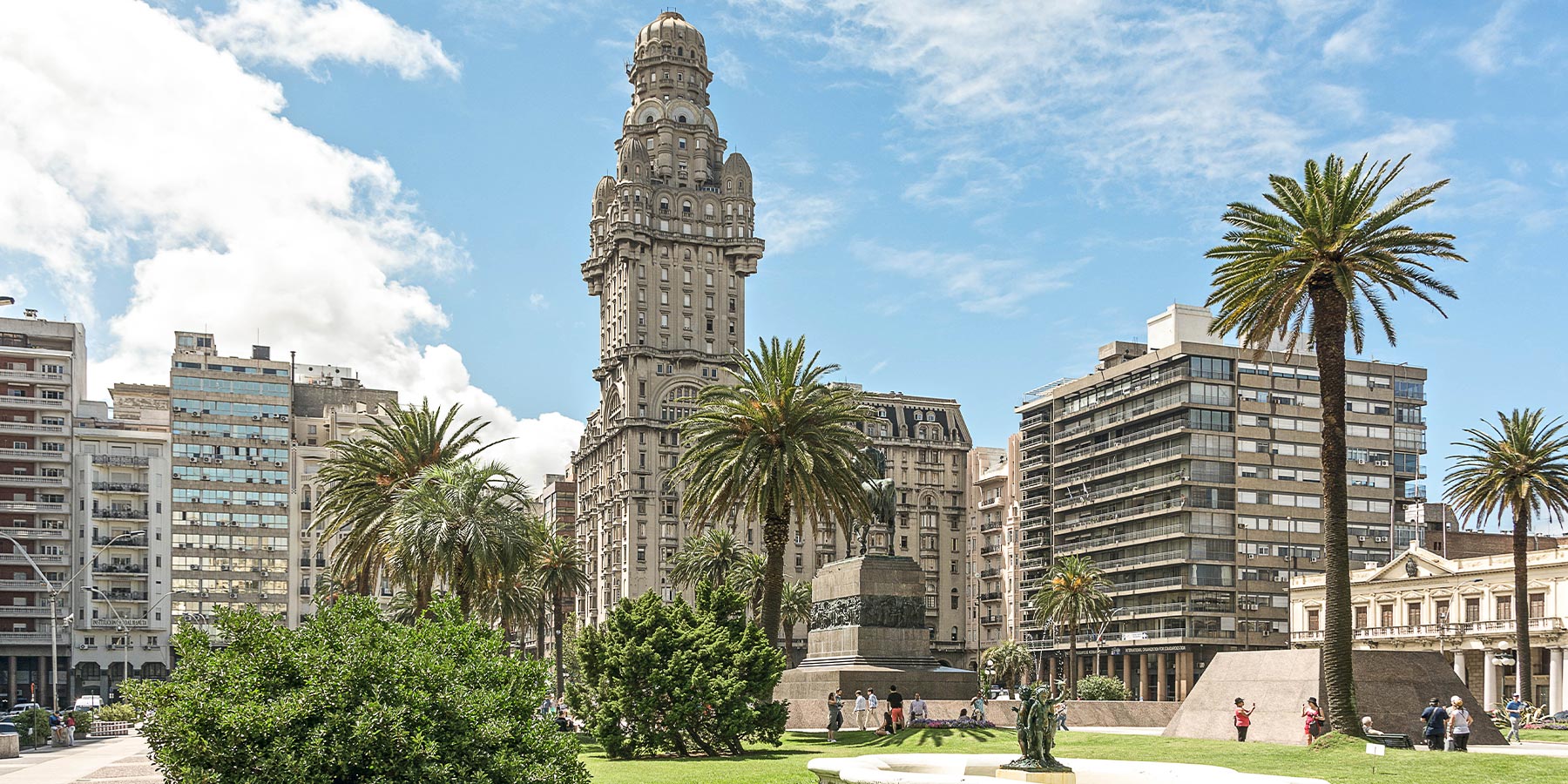


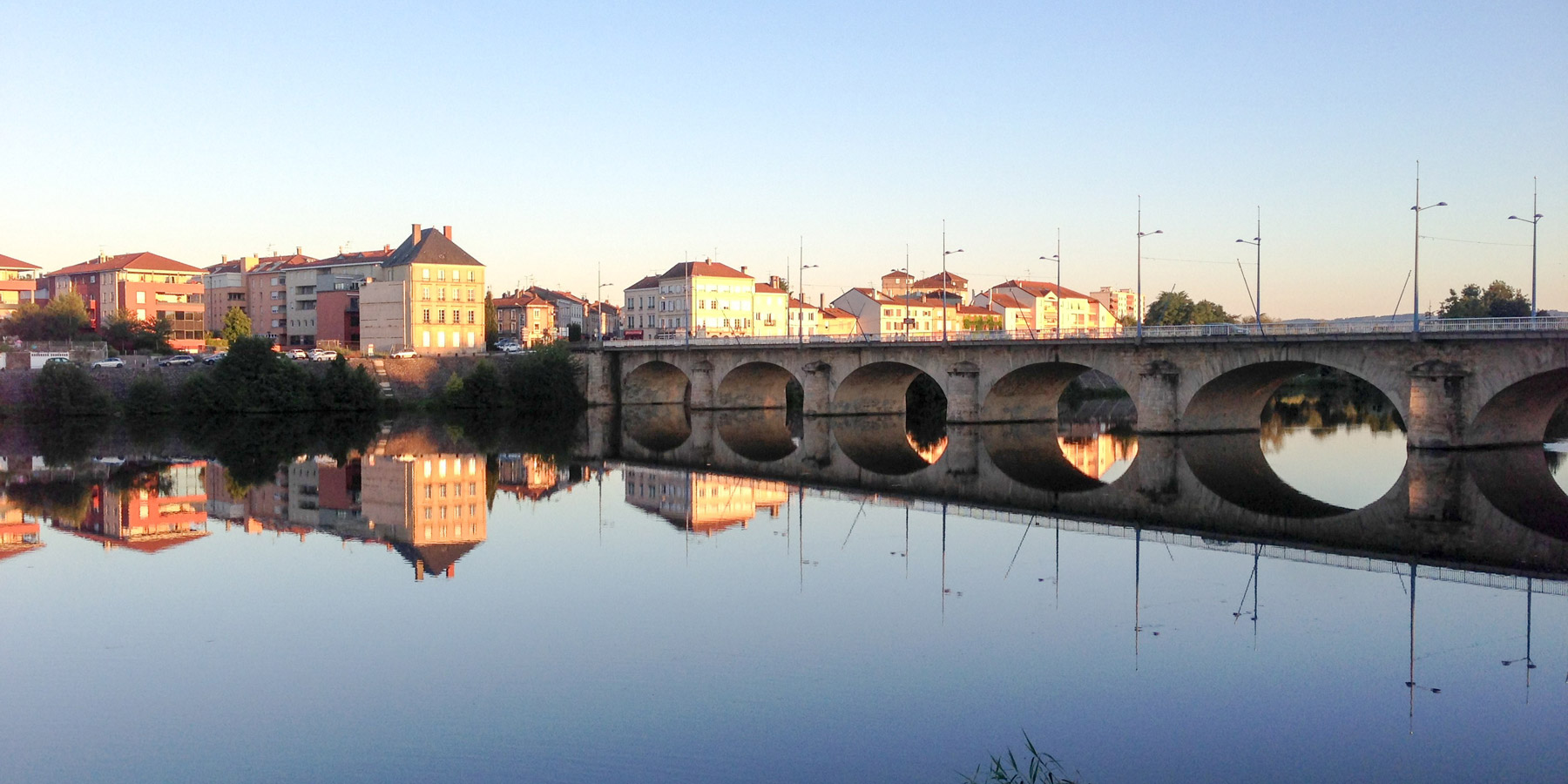
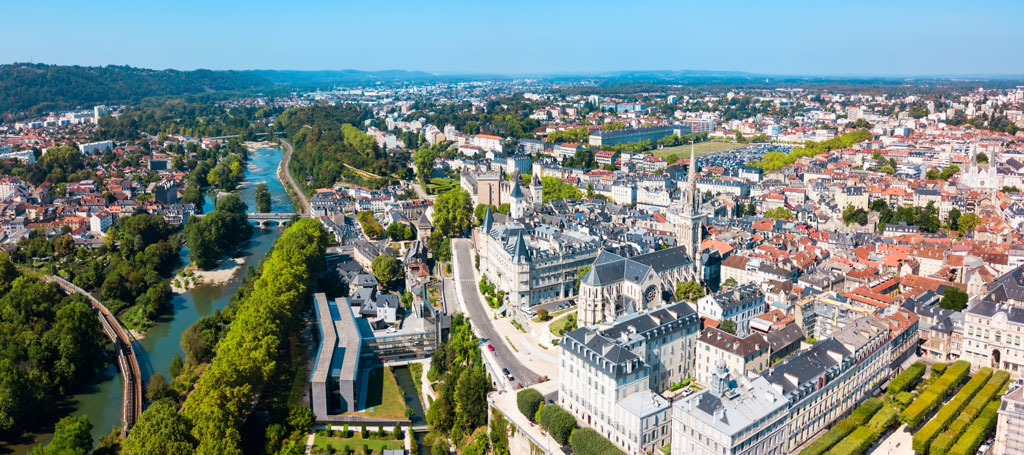
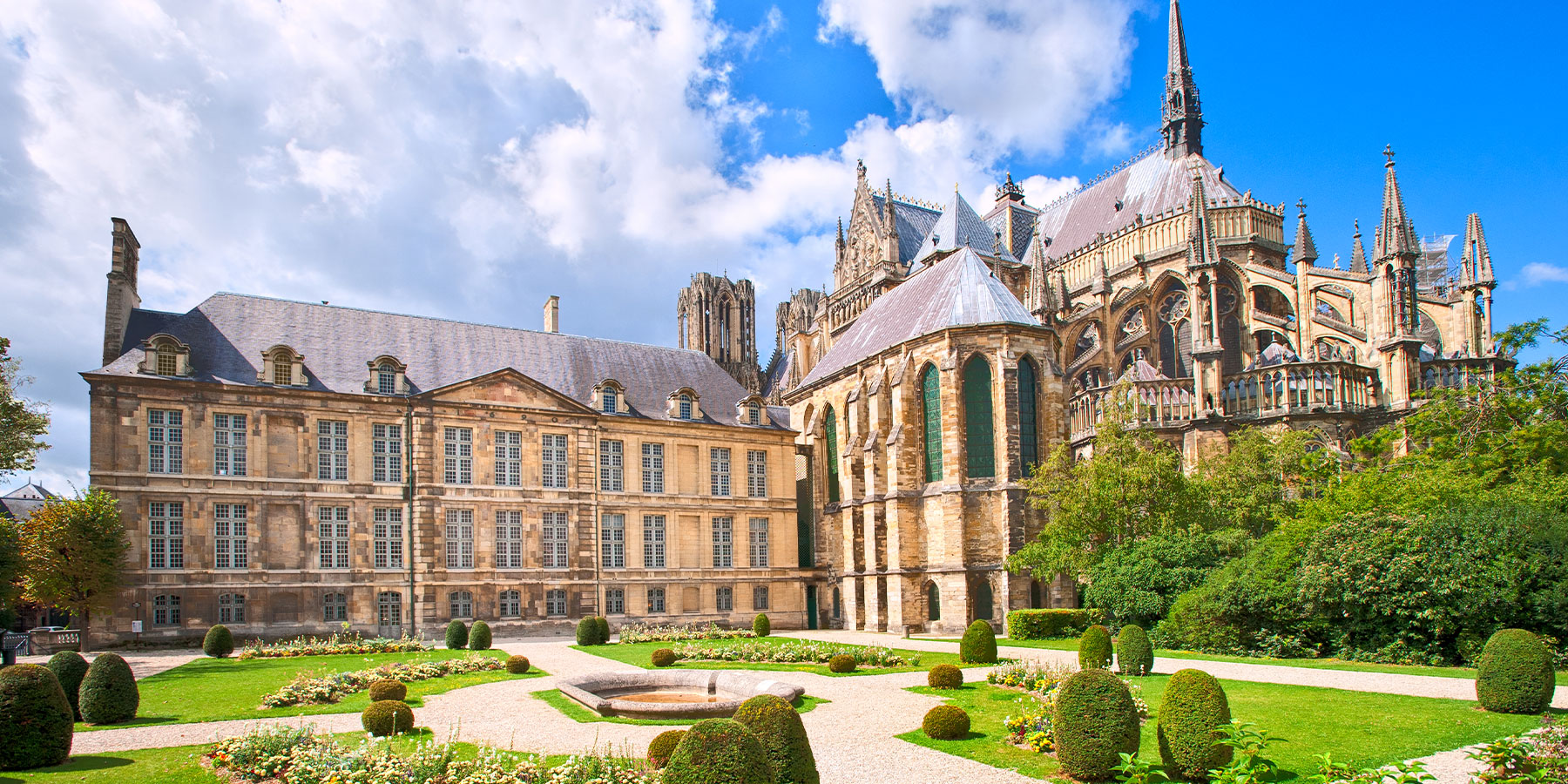


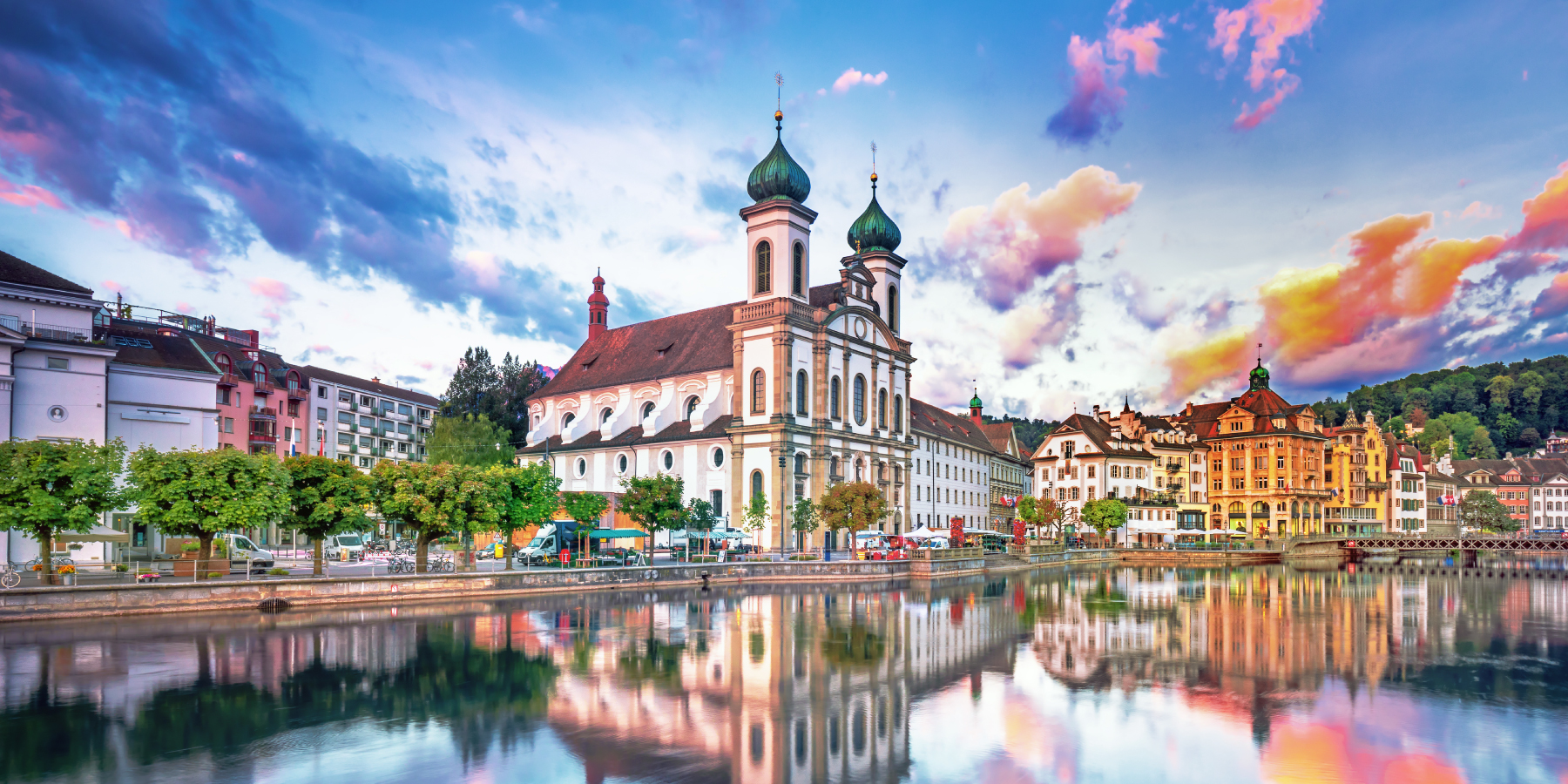
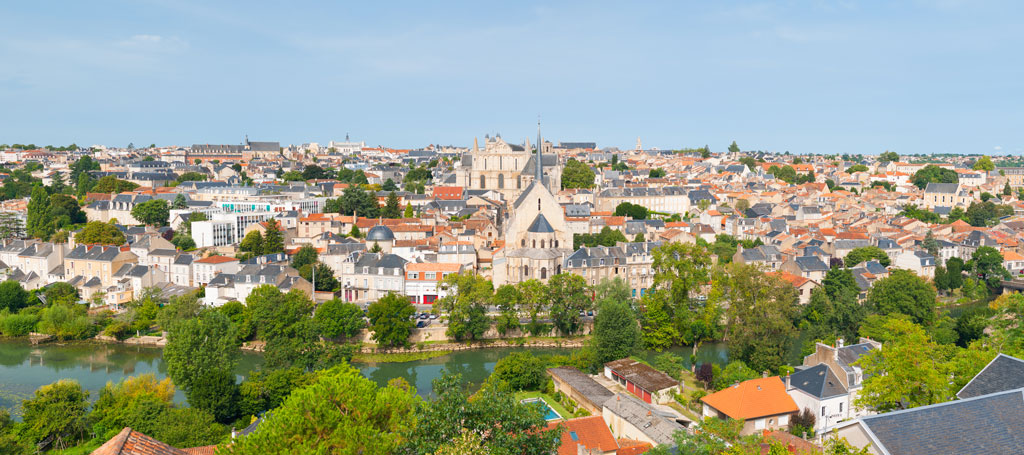
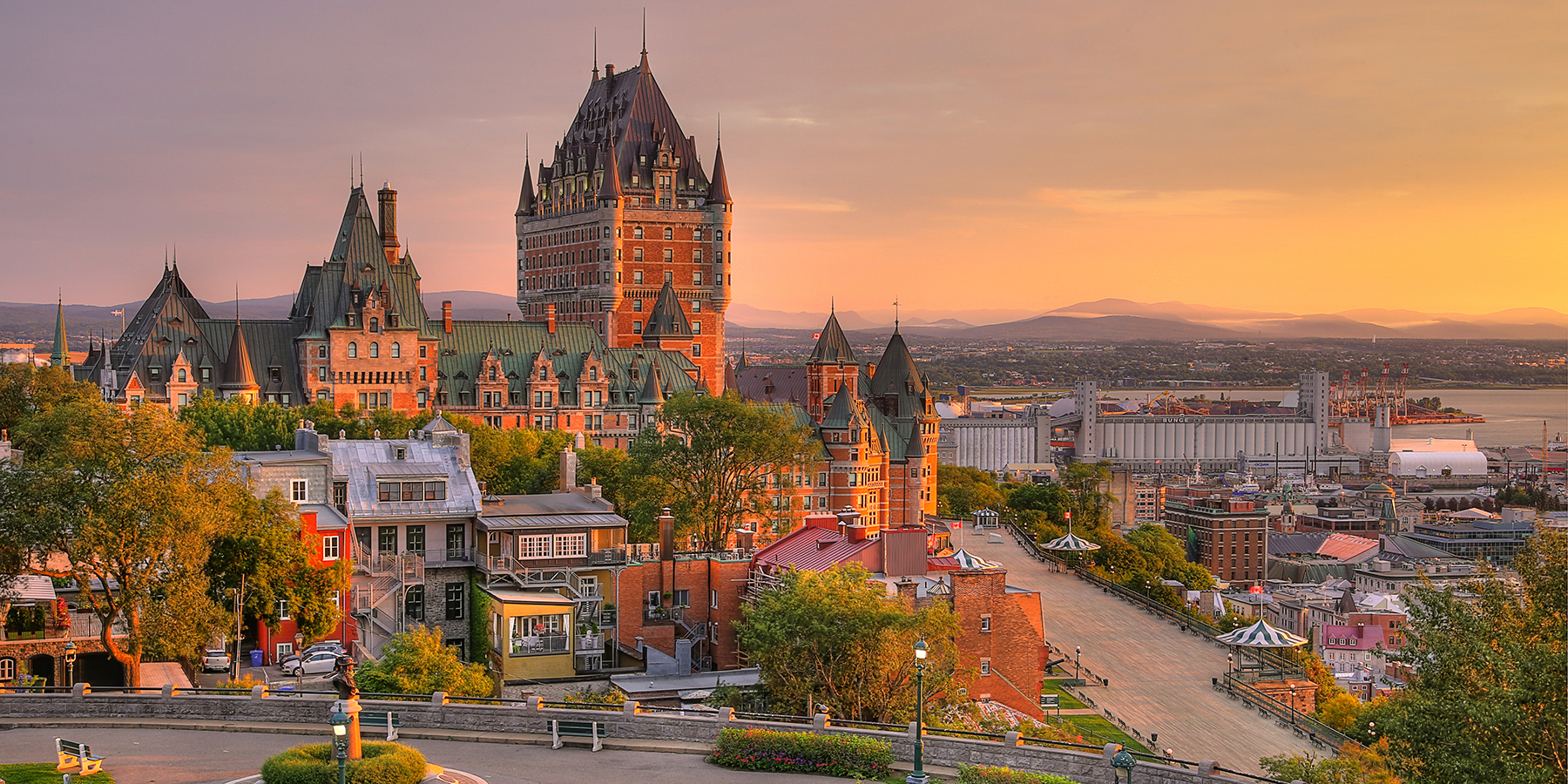

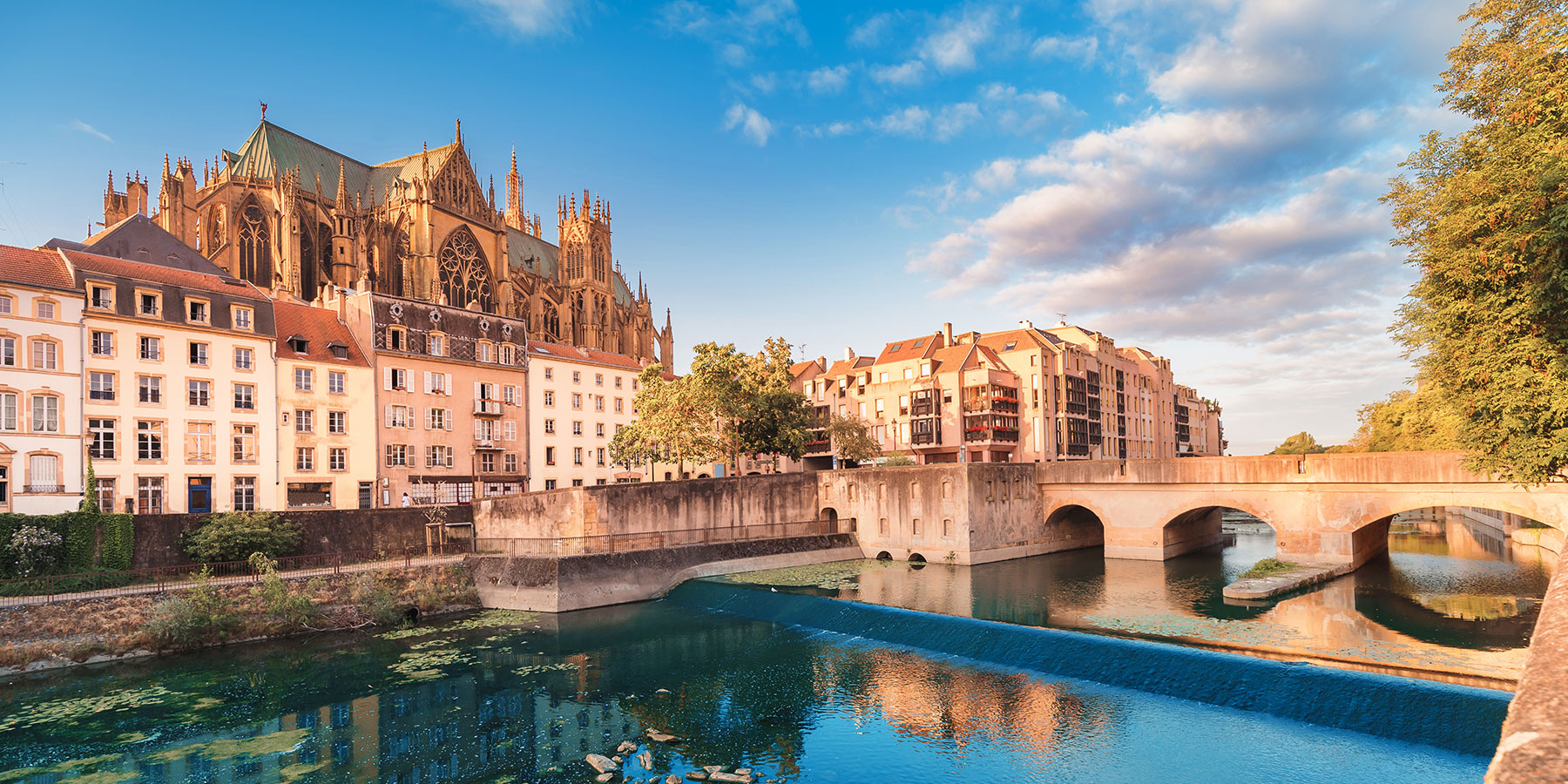
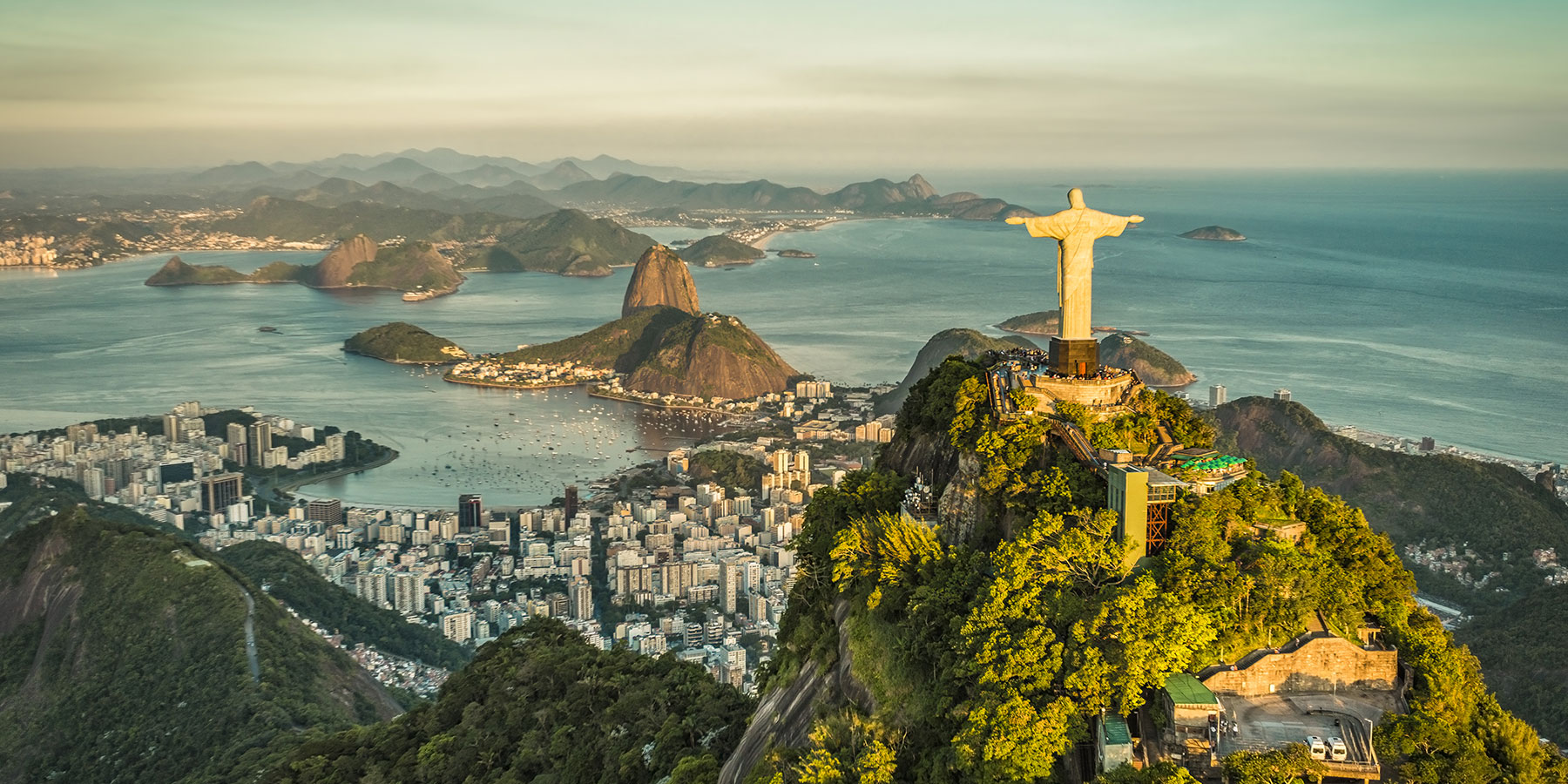
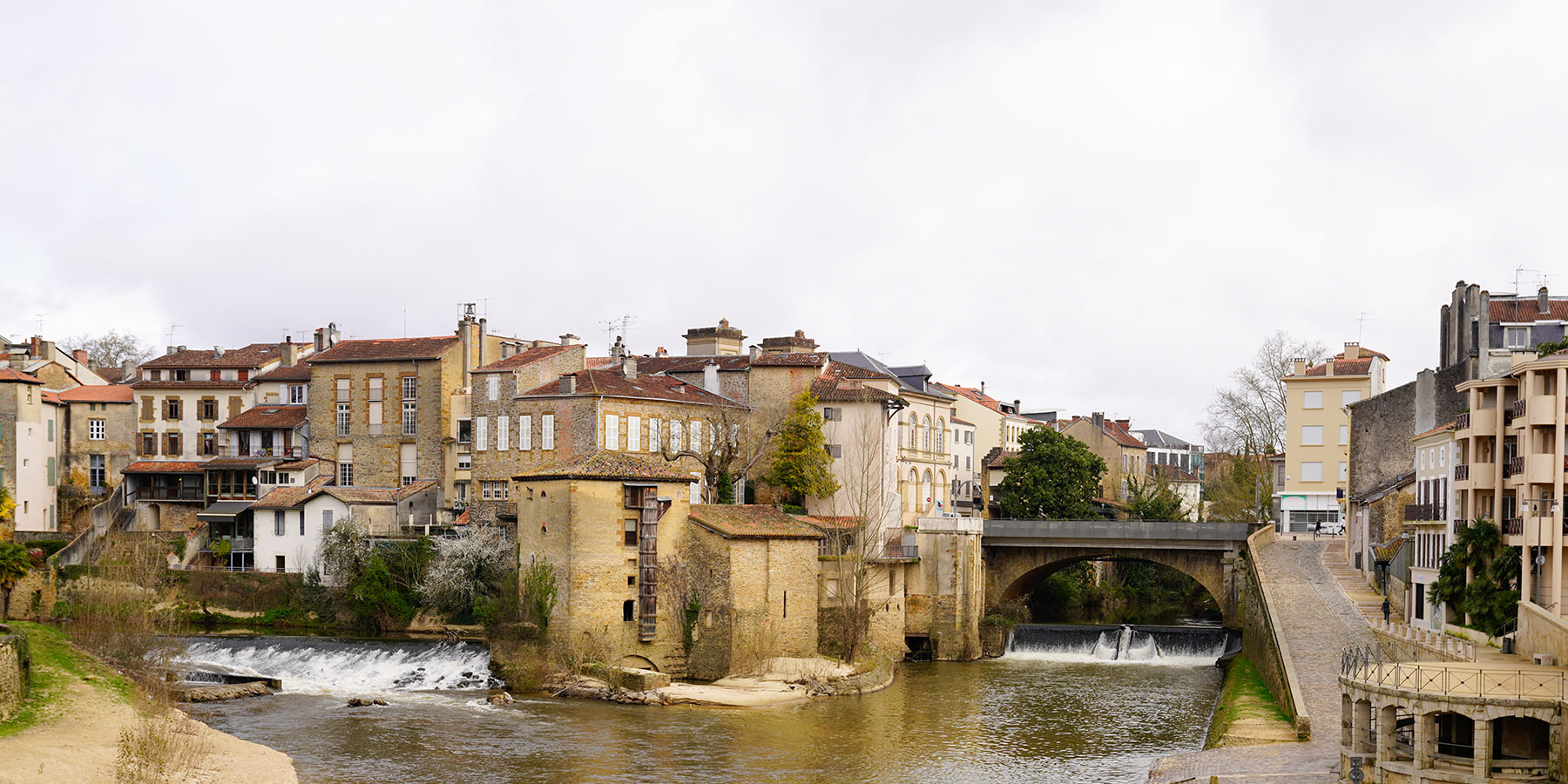

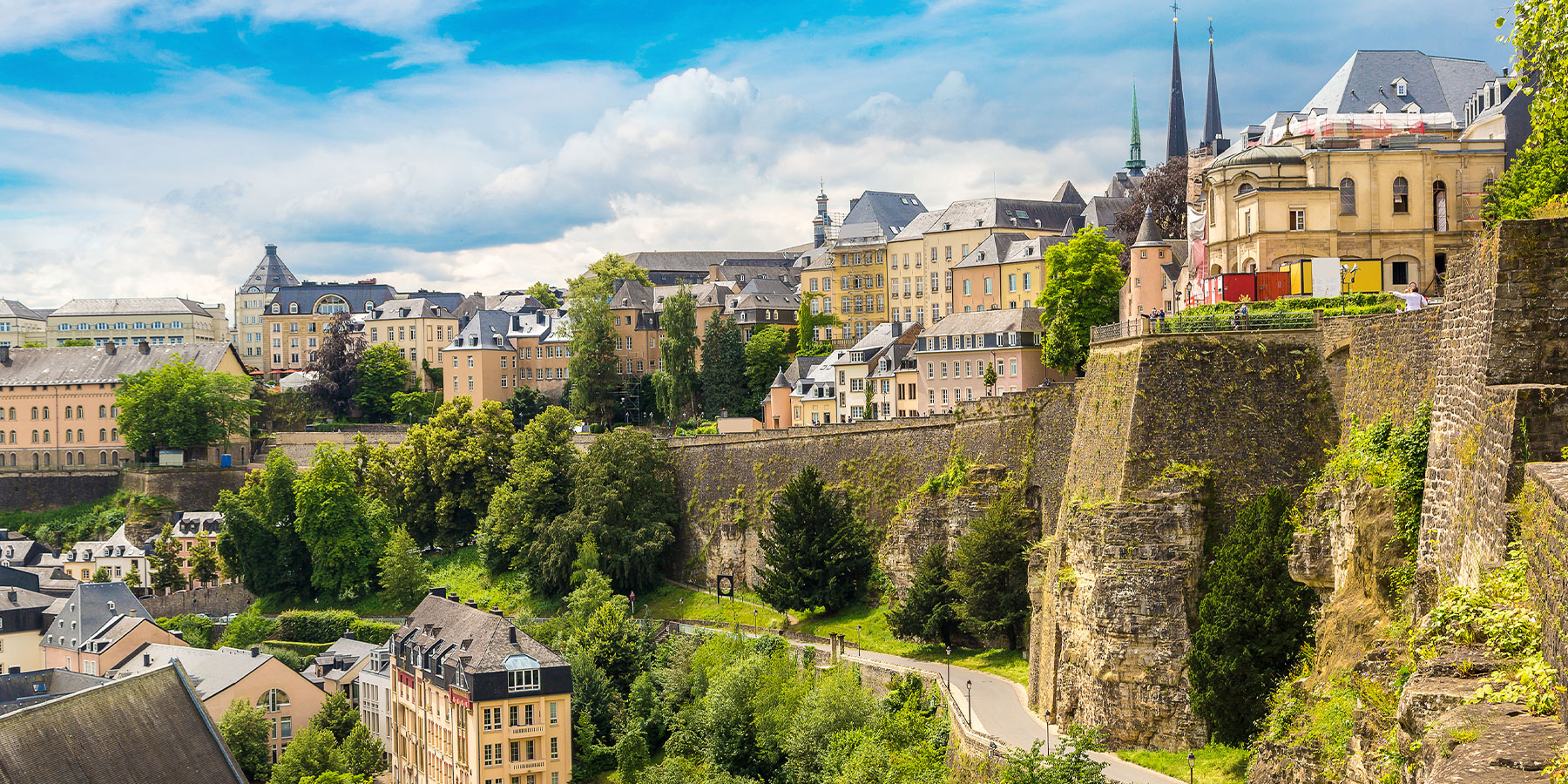
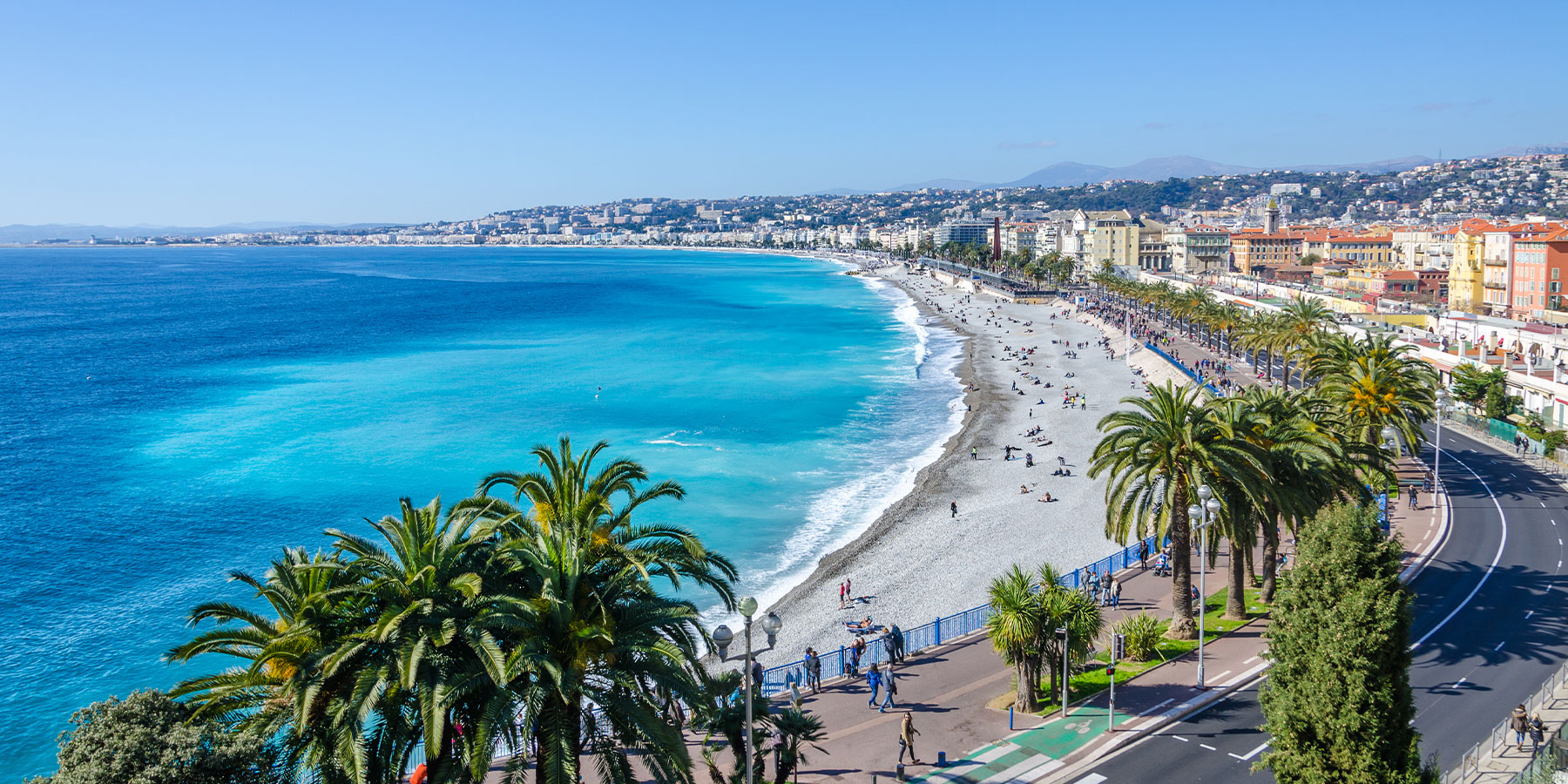

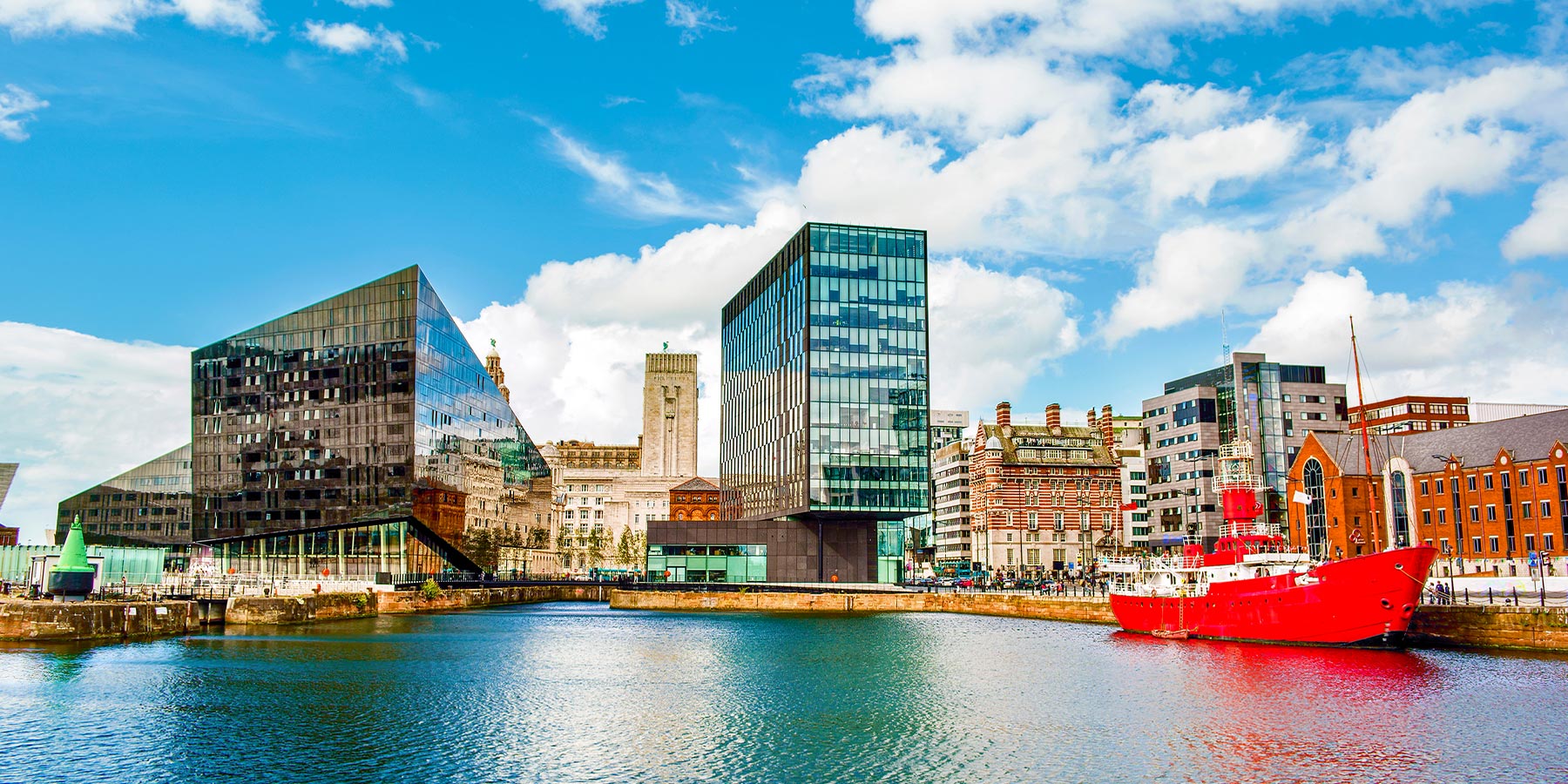
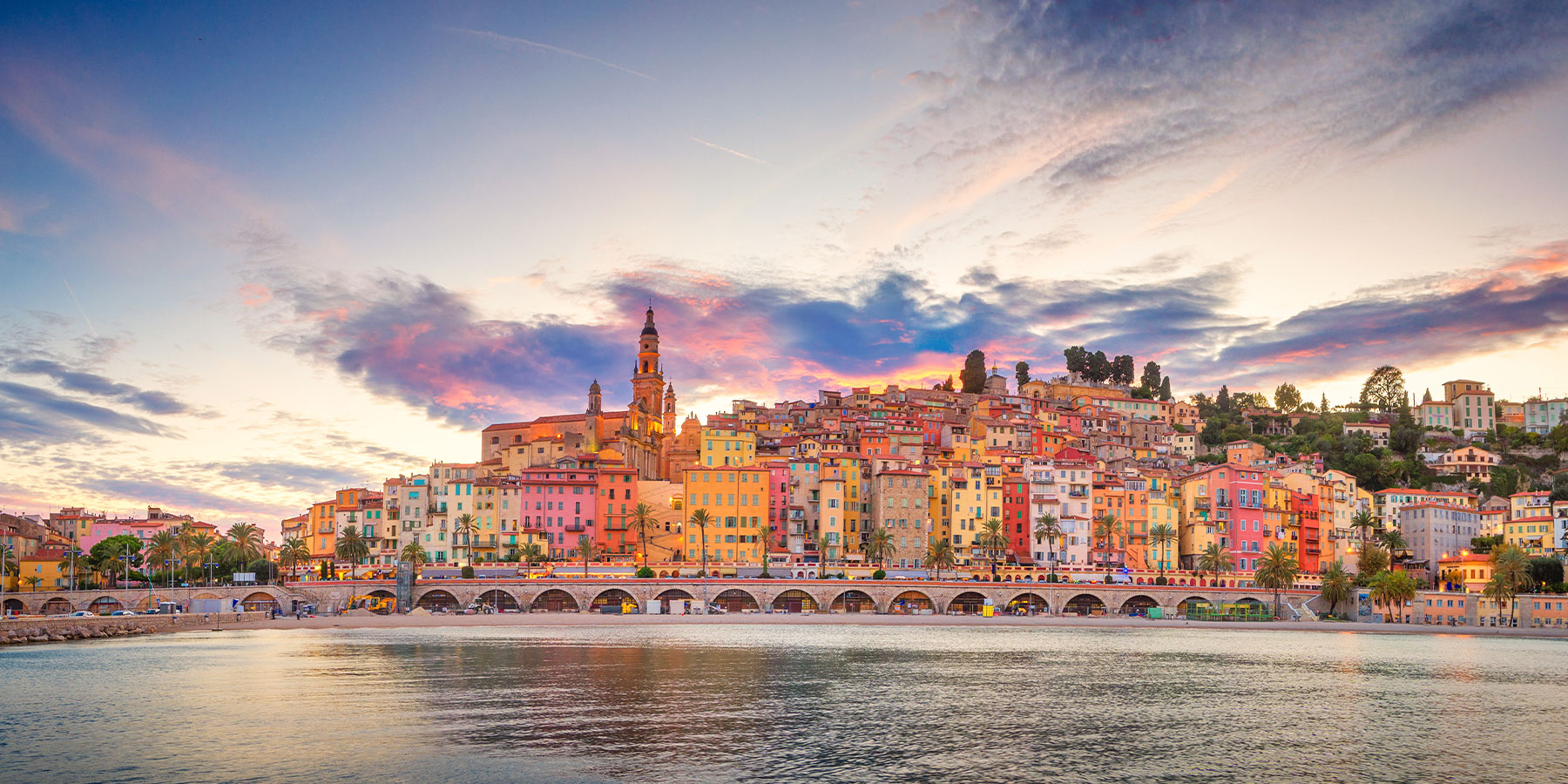

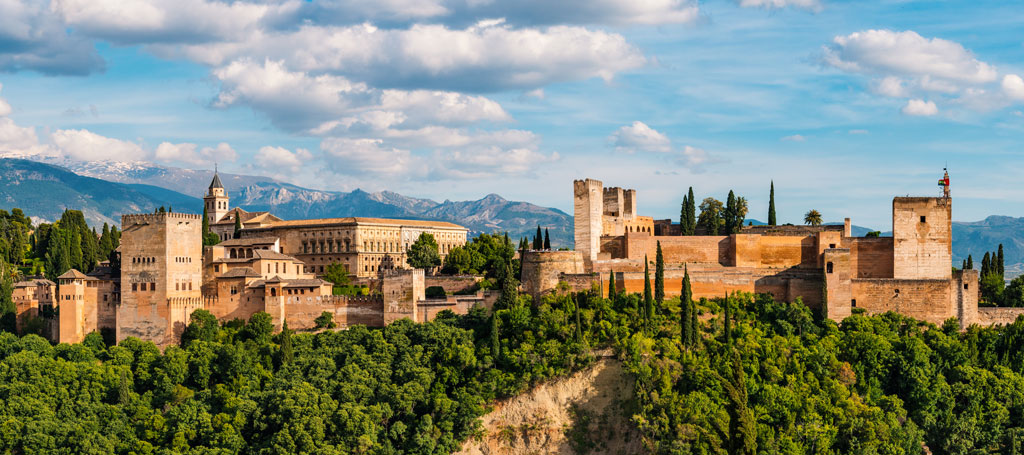
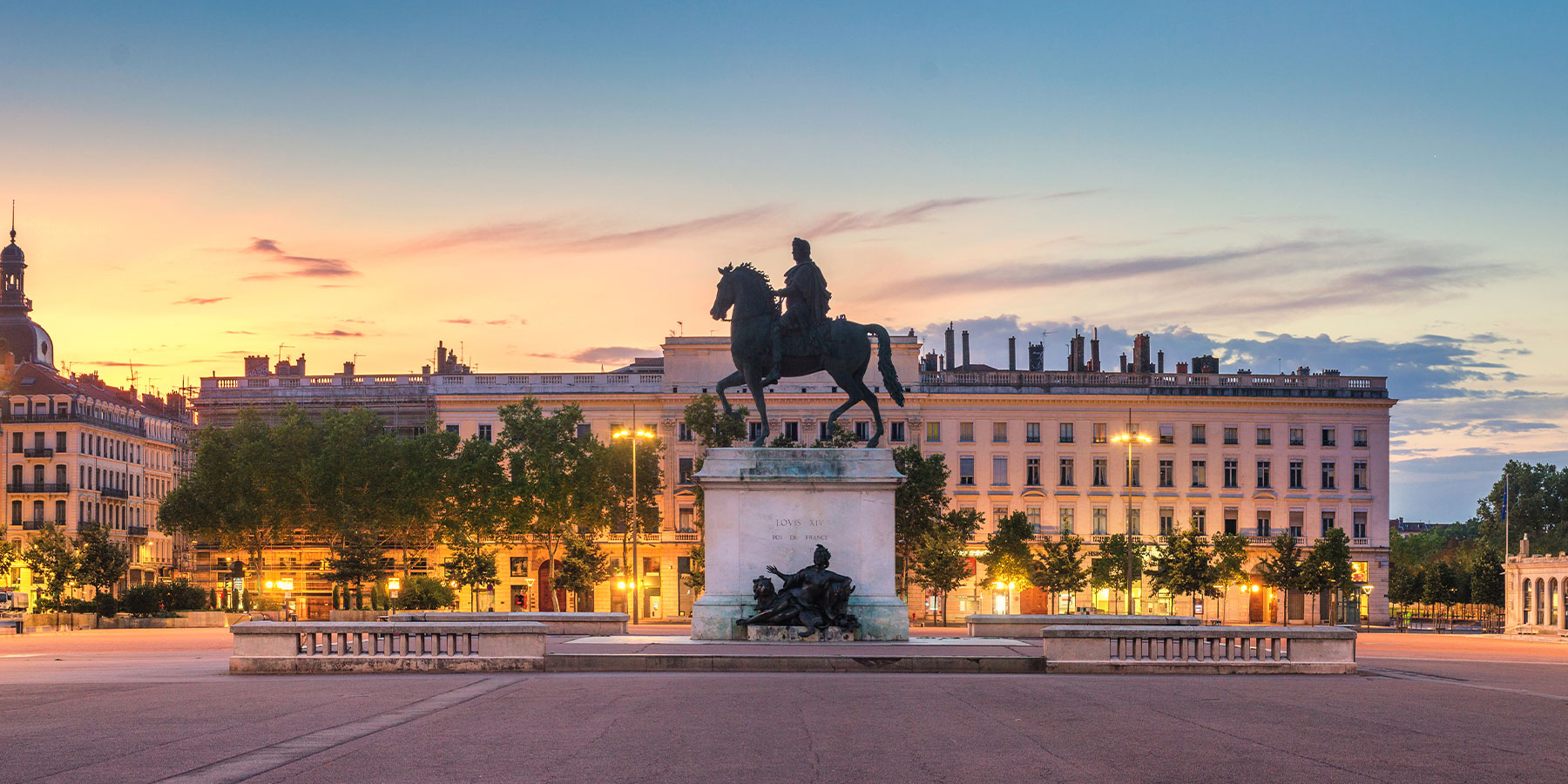
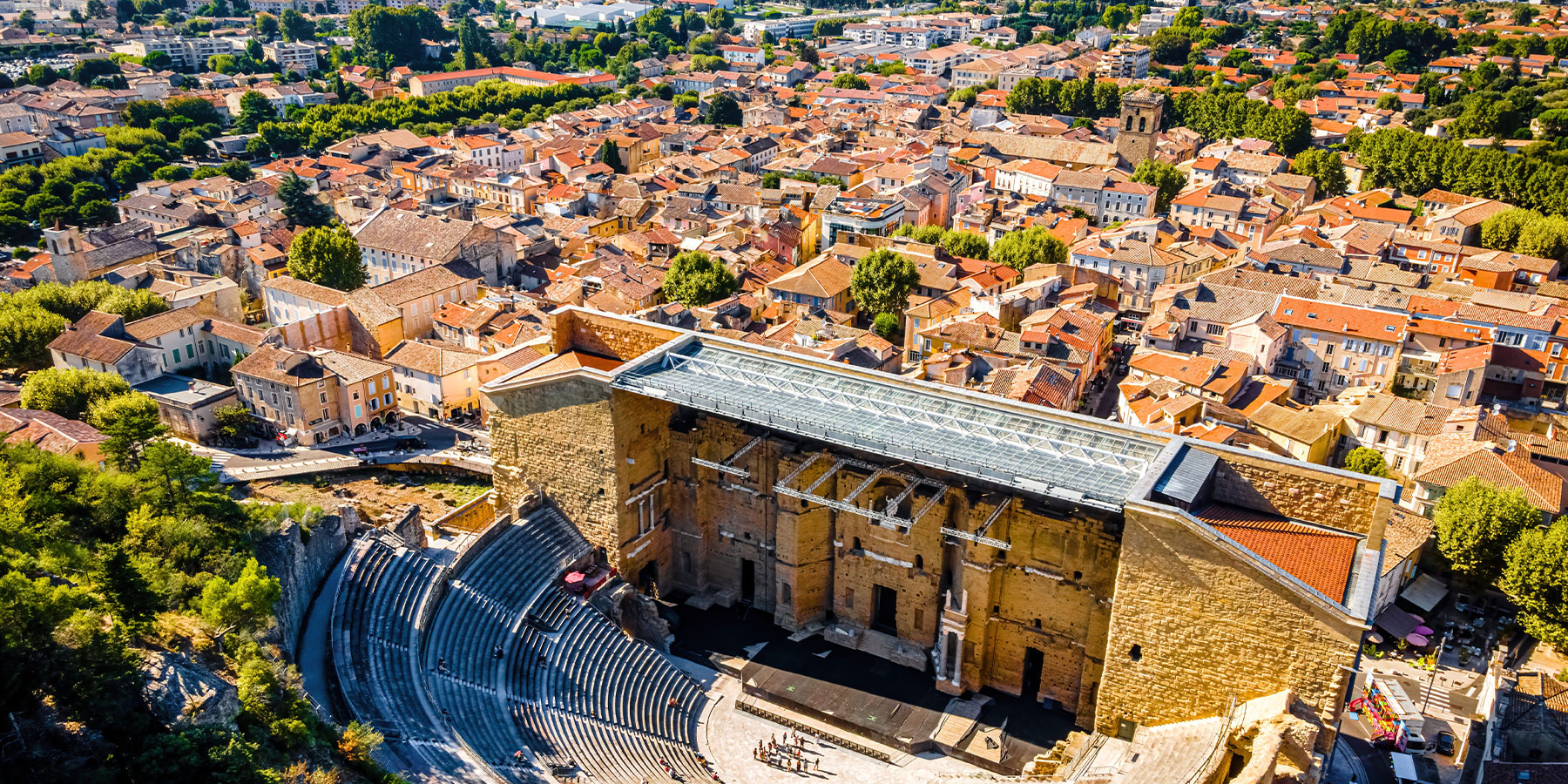

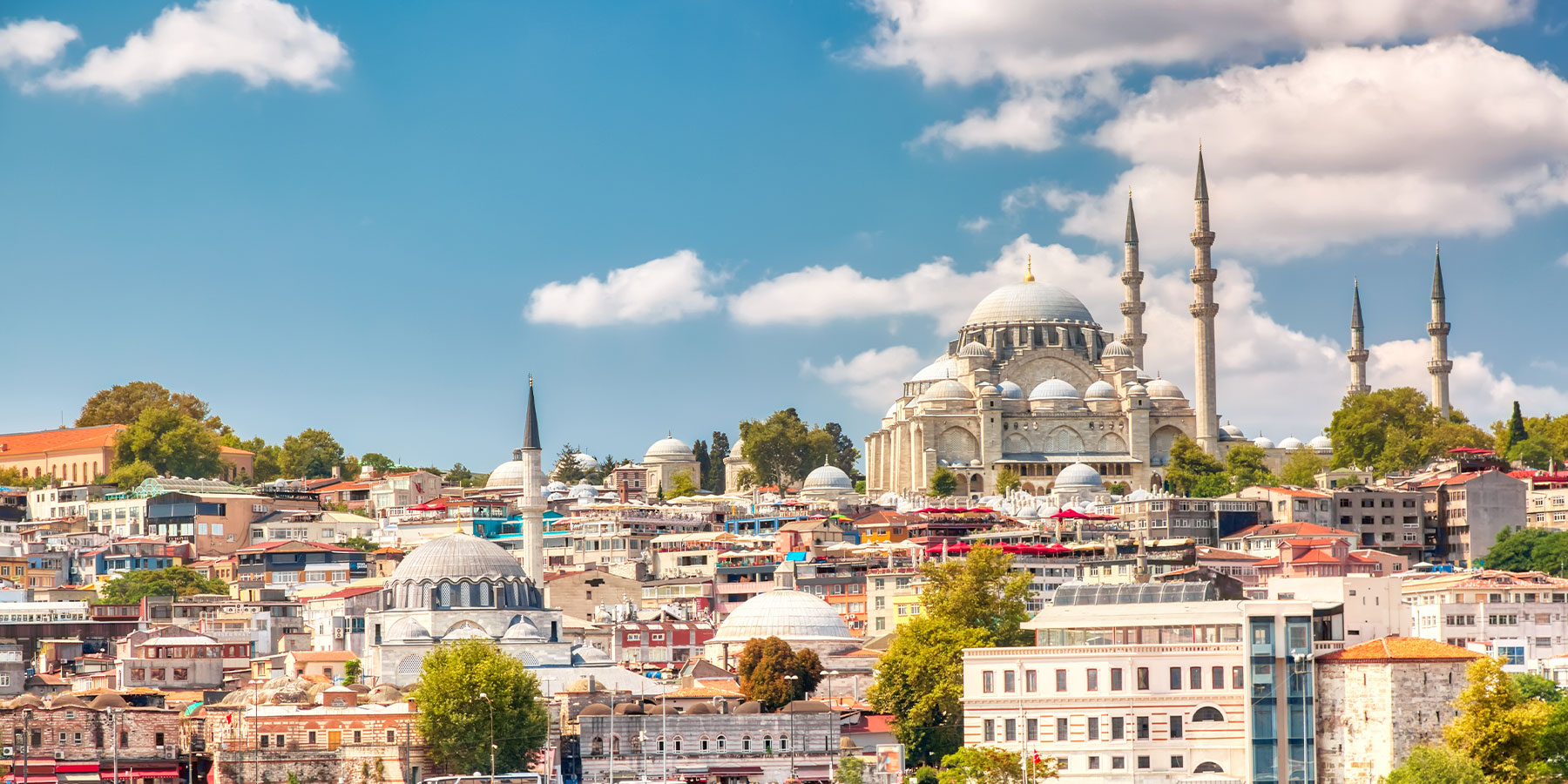
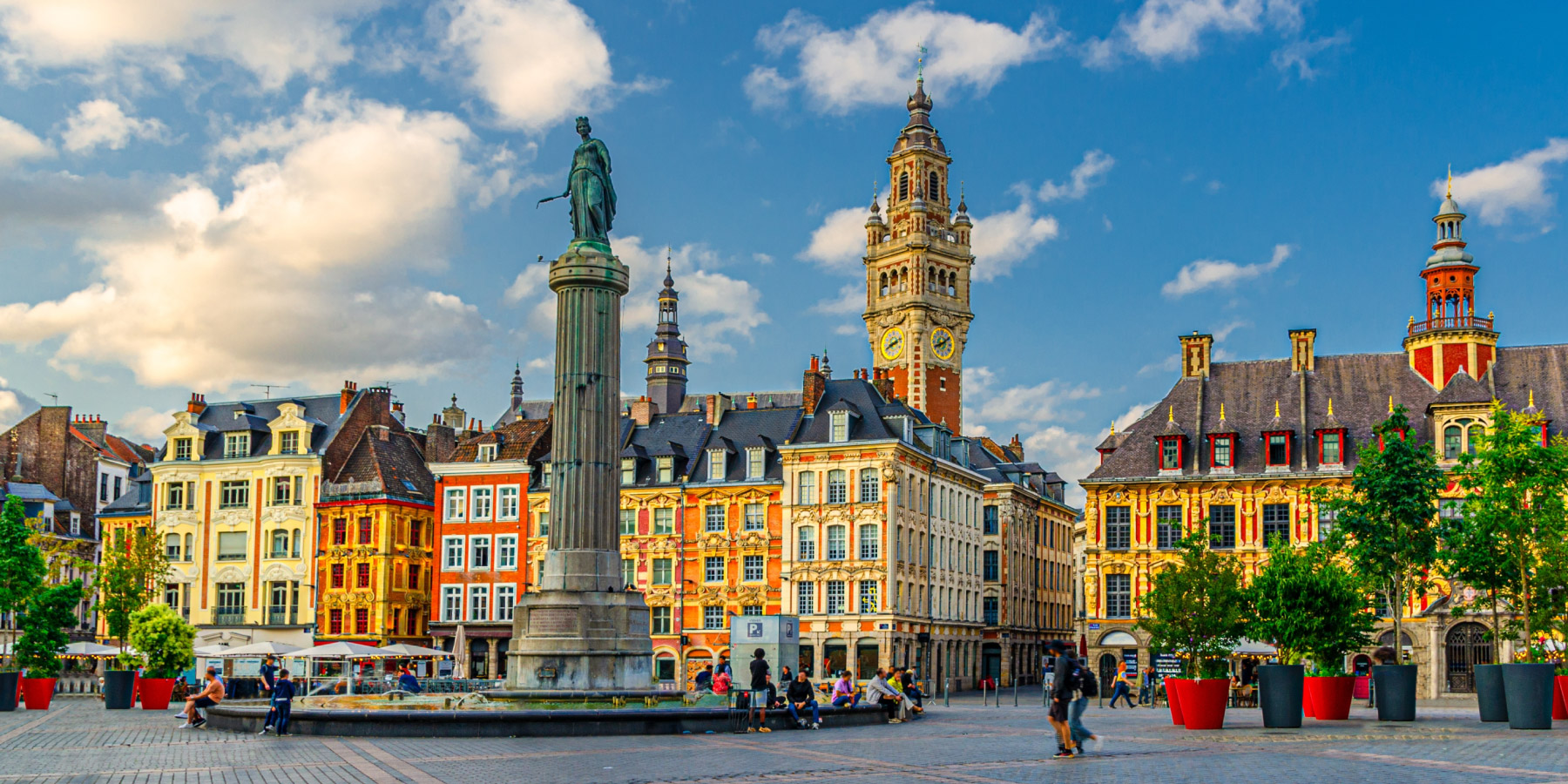


Heart of the Somme Valley


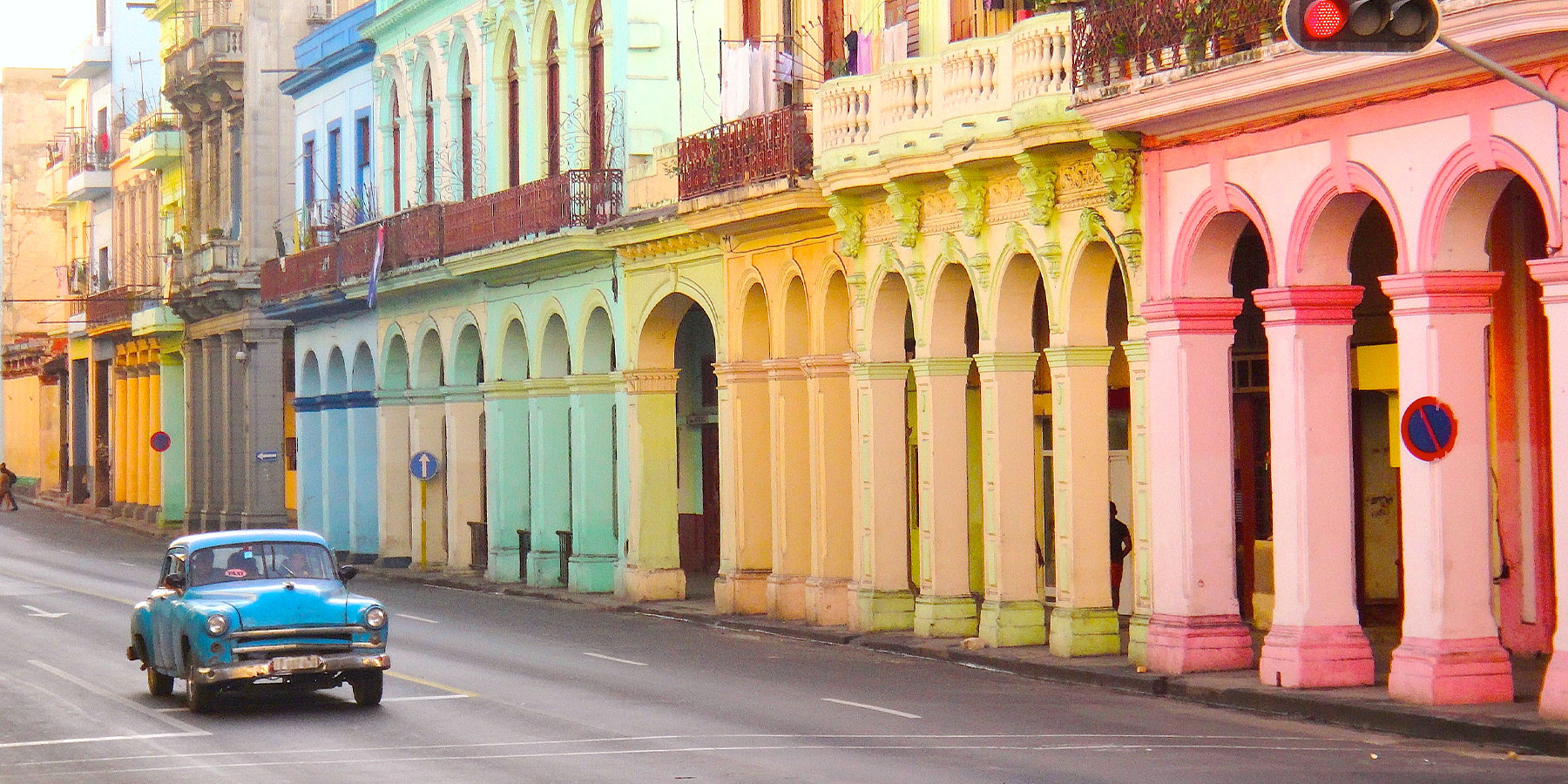

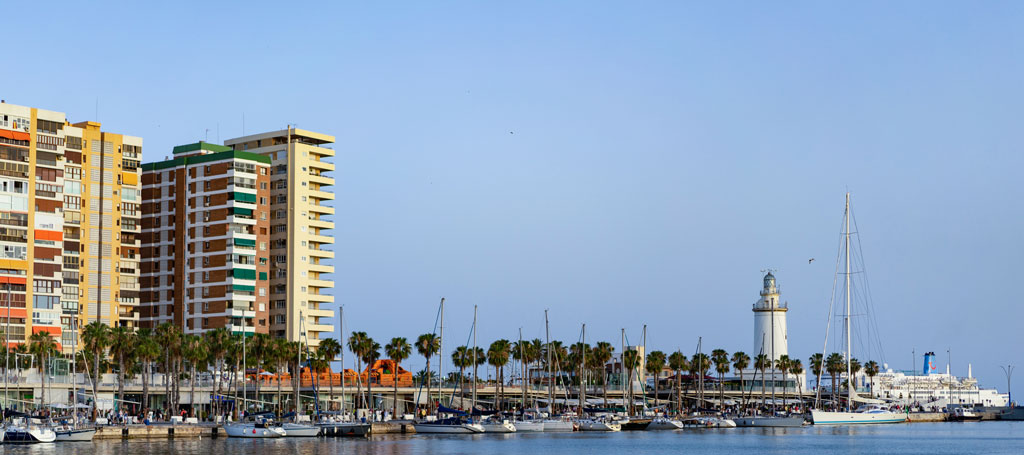
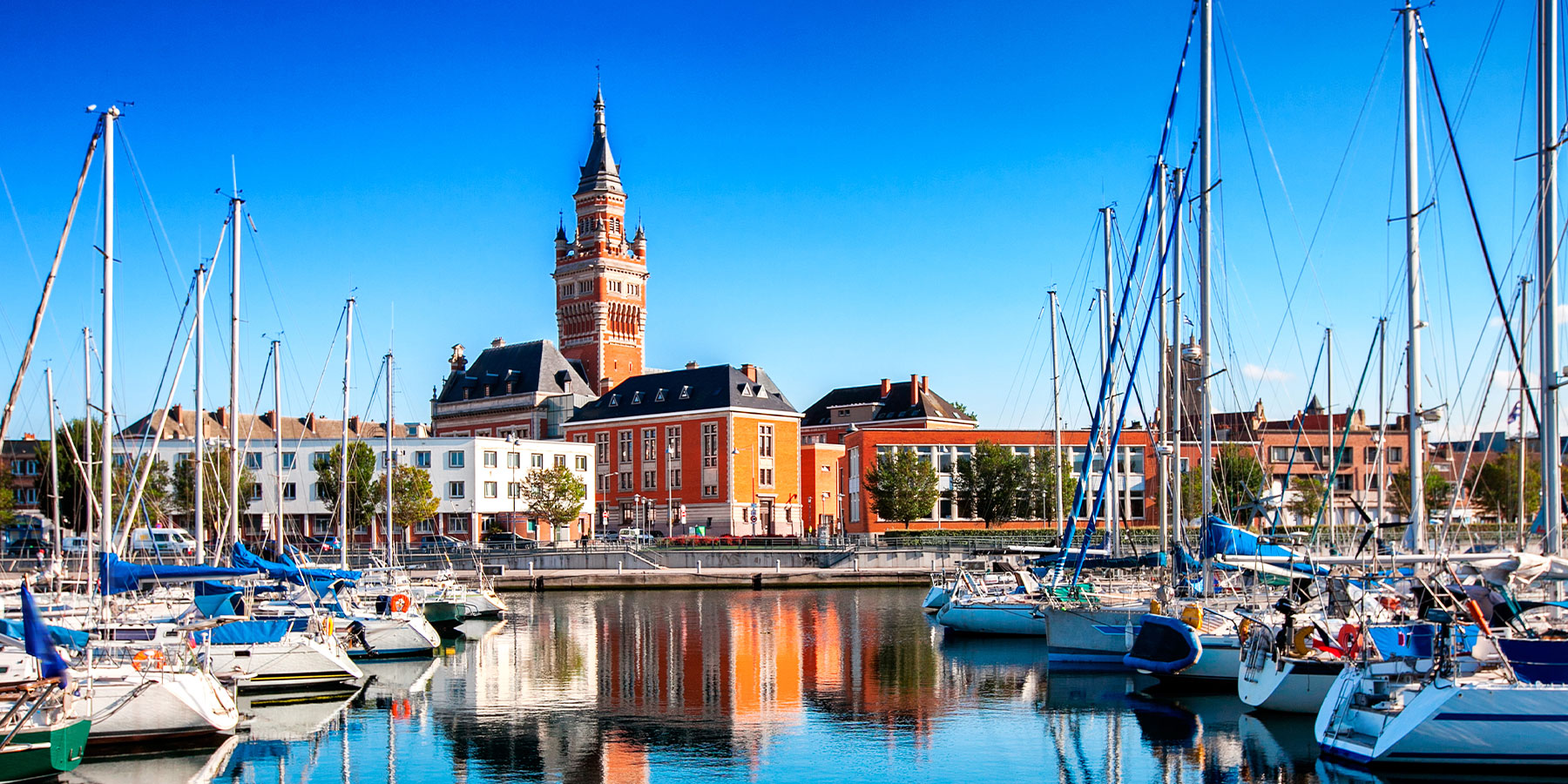

Governors’ Palace
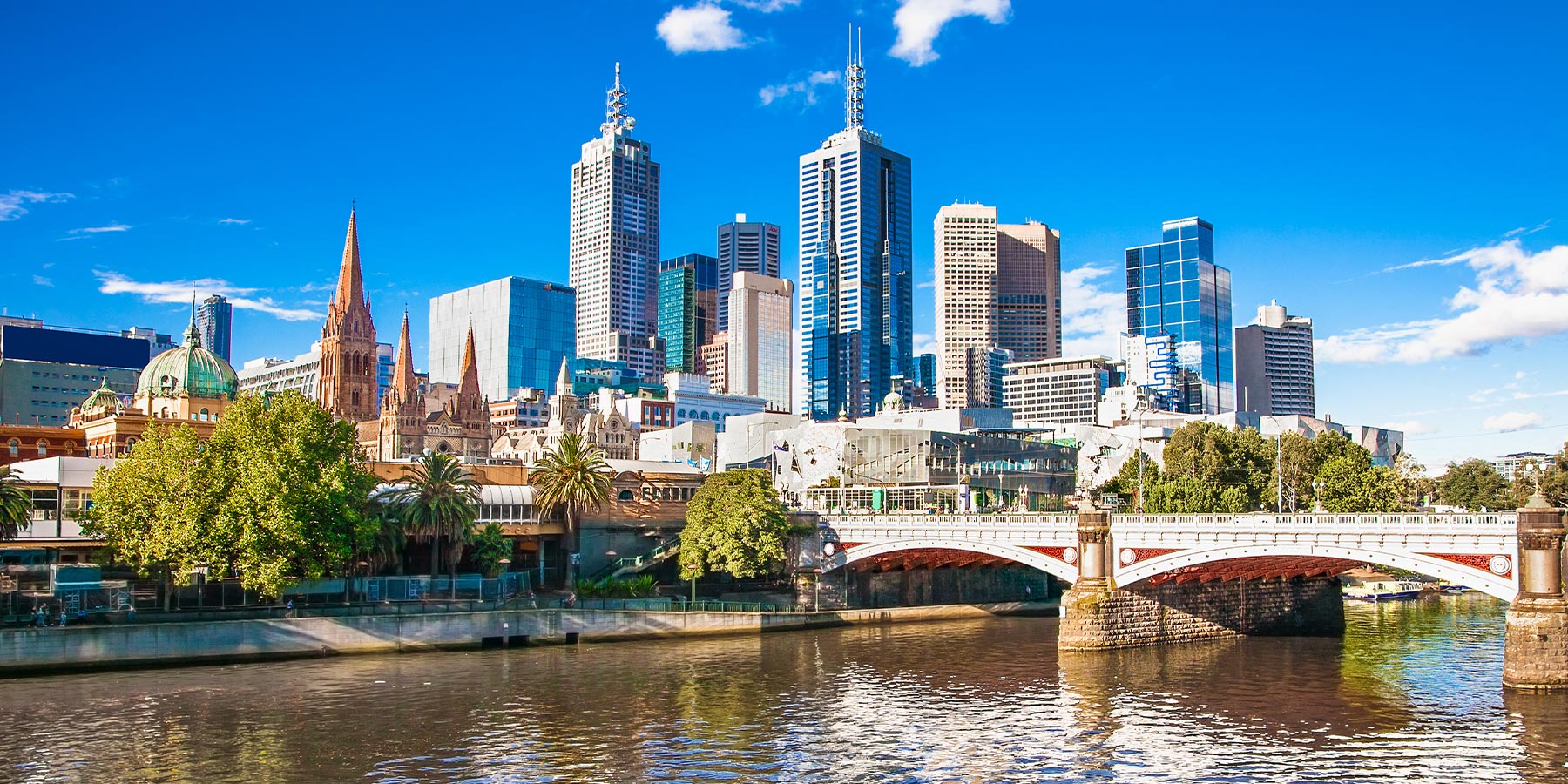
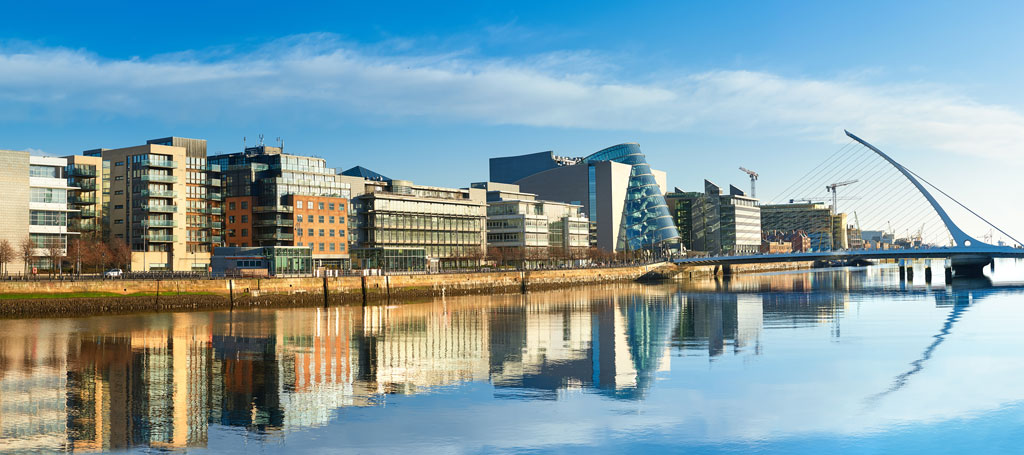



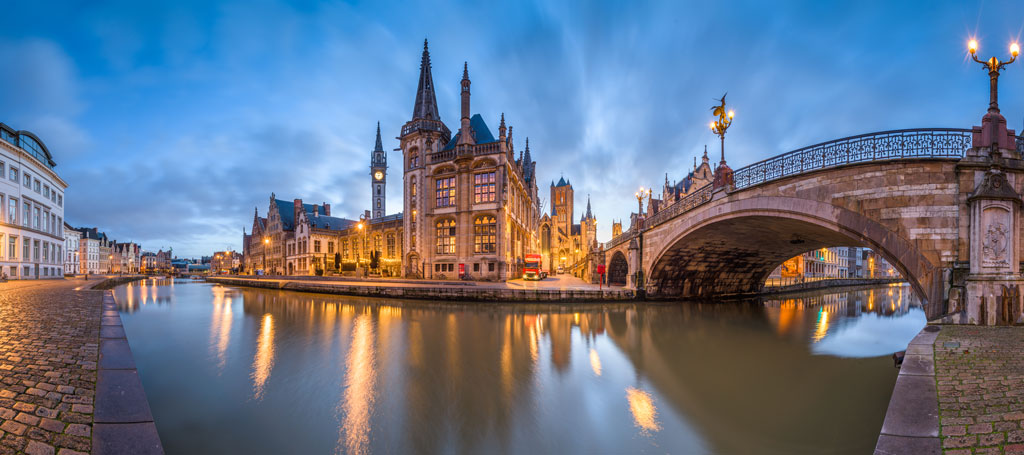
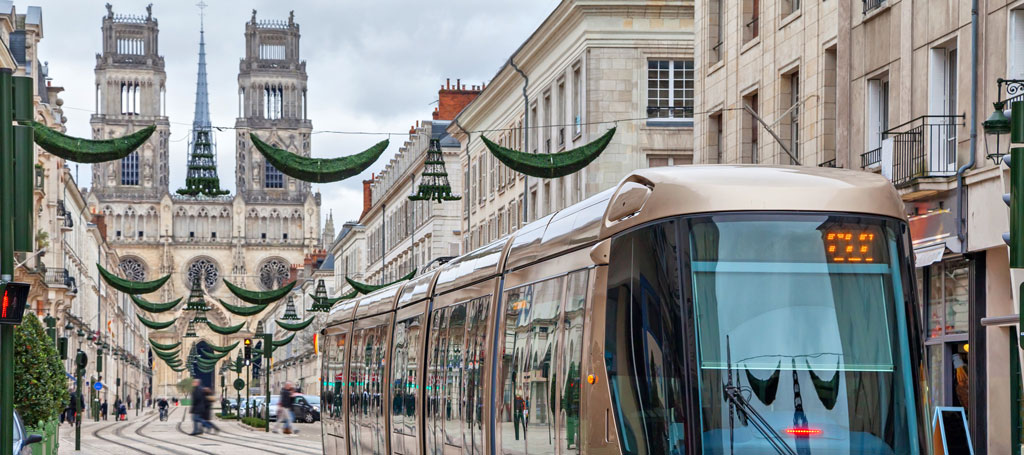
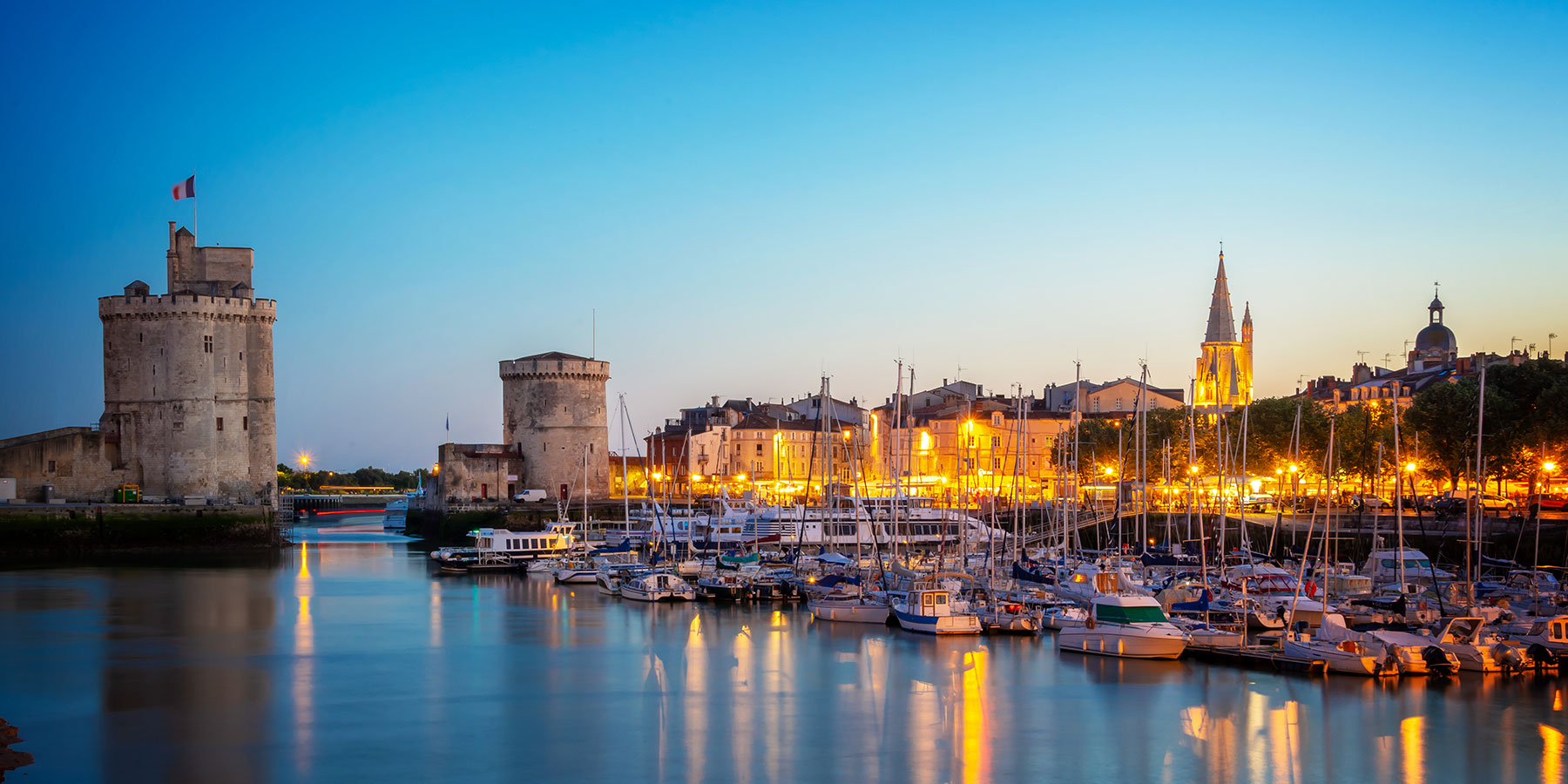

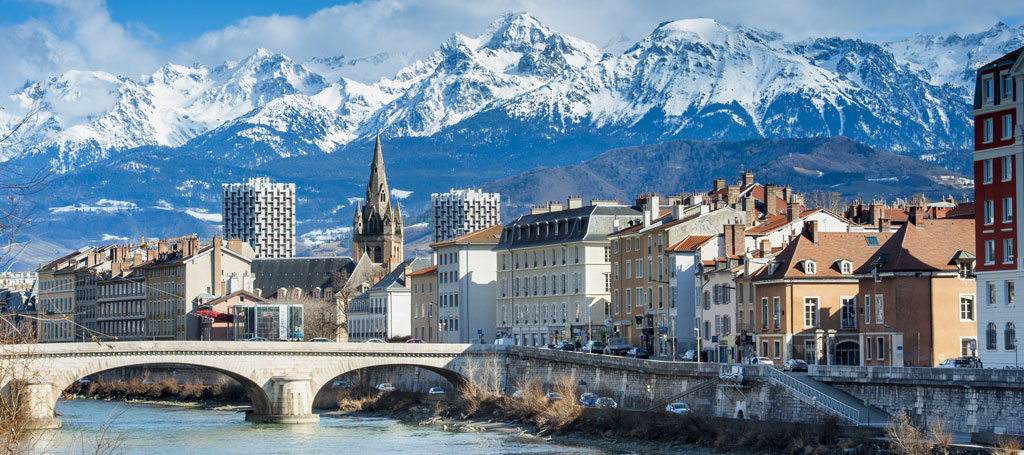
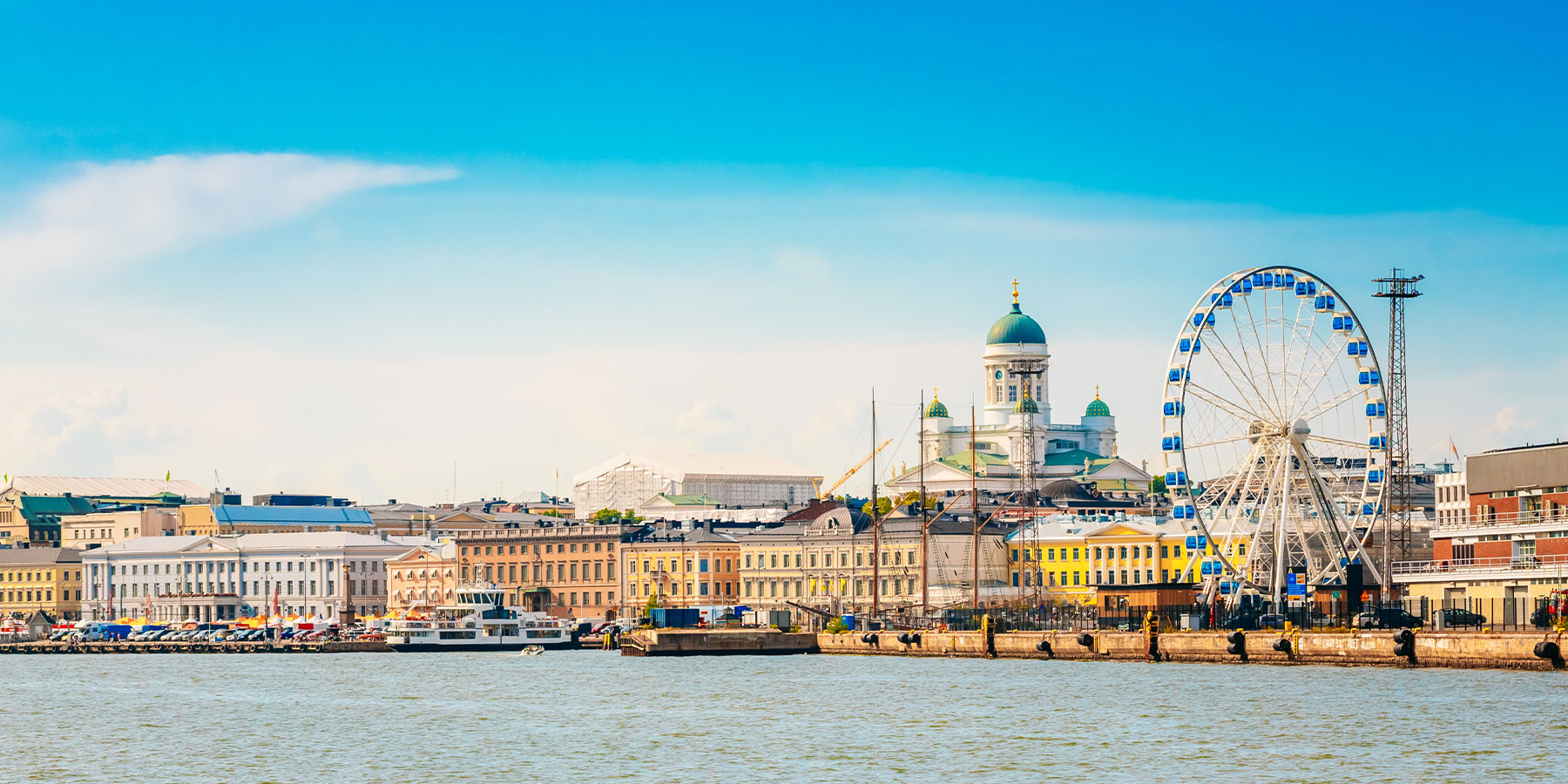


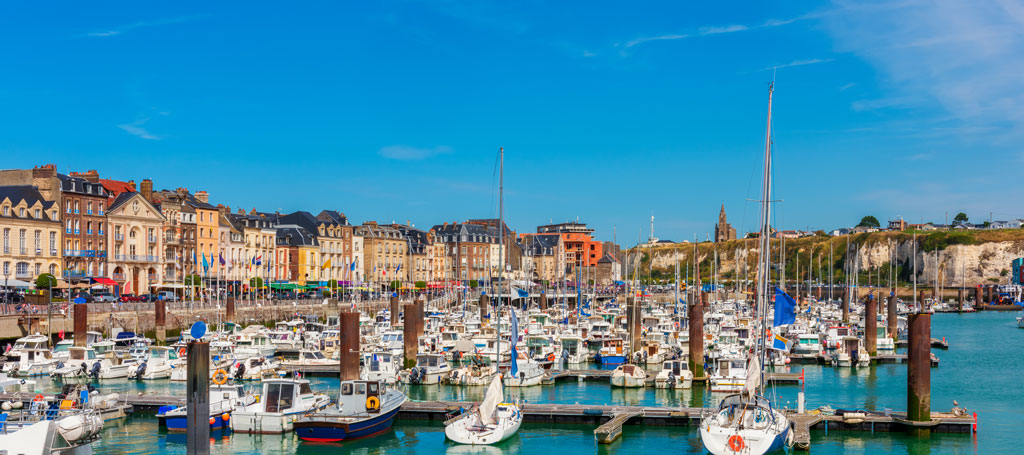





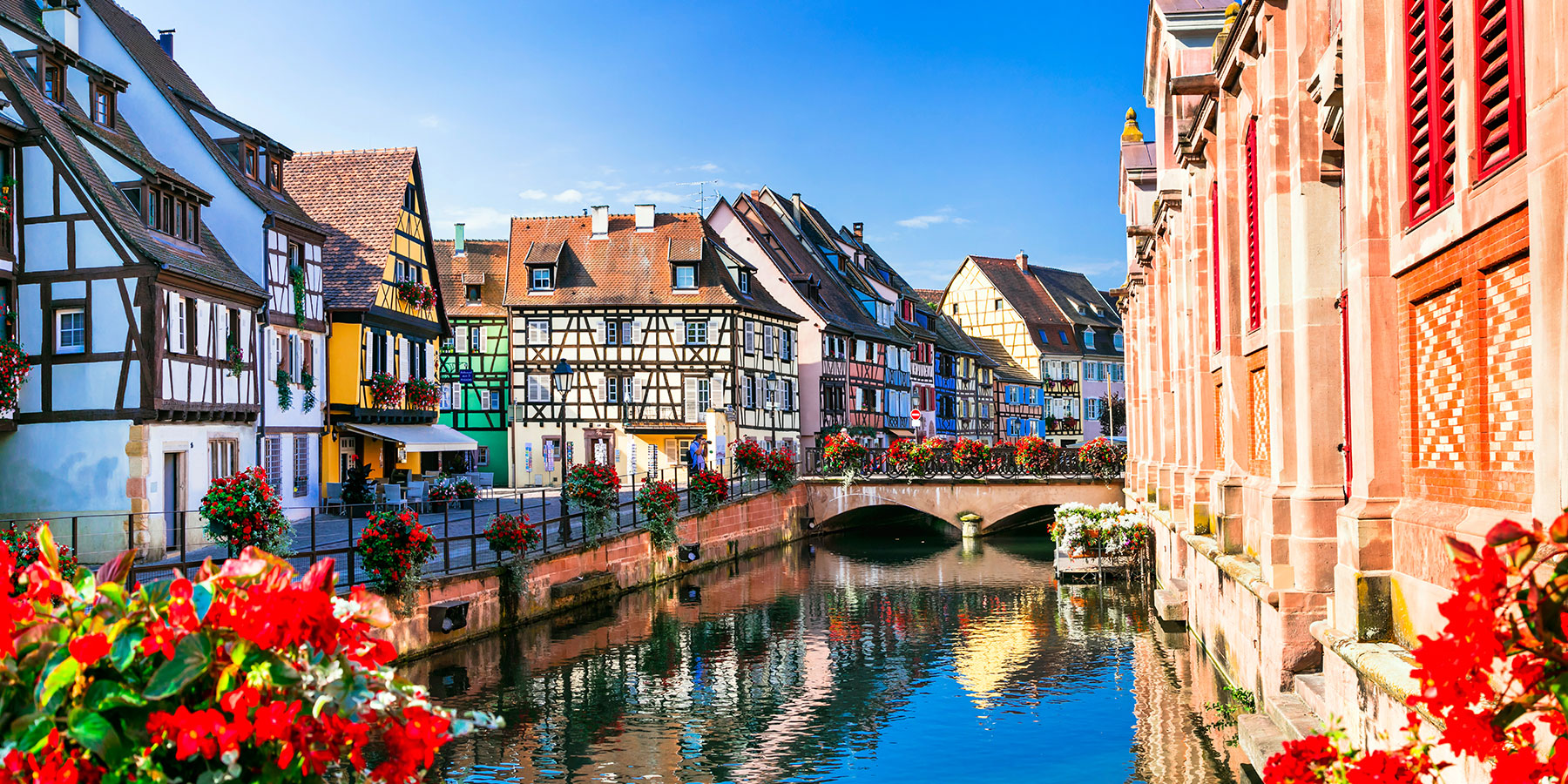



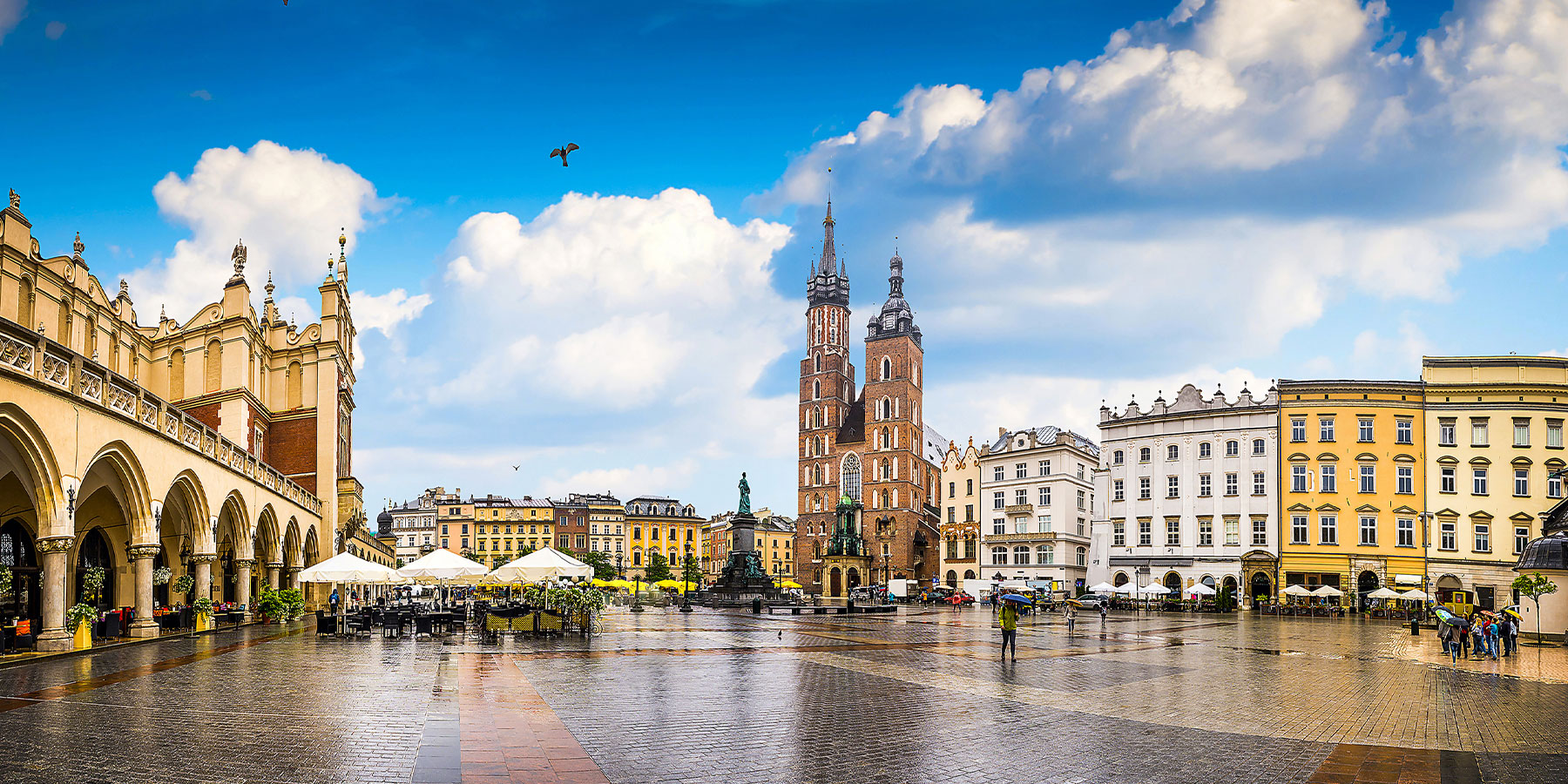











The Museum Siam is housed in a graceful neoclassical building from the early 20th century, once the headquarters of the Ministry of Commerce. Since opening in 2008, it has offered a fresh, interactive journey into Thai history and identity. Inside, you can explore nearly 3,000 years of culture and influences, from the earliest Southeast Asian kingdoms right up to modern-day
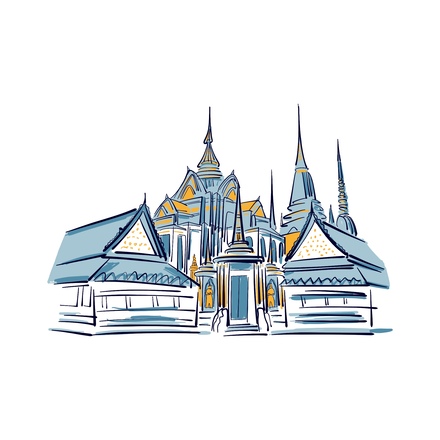
In the middle of Bangkok’s nonstop bustle, you’ll suddenly step into eight hectares of quiet and calm. This is Wat Pho, one of the oldest Buddhist temples in Thailand. The complex we see today was built in the eighteenth century, expanded under King Rama I, and beautifully restored by King Rama III. It’s best known for its astonishing collection of more than a thousand
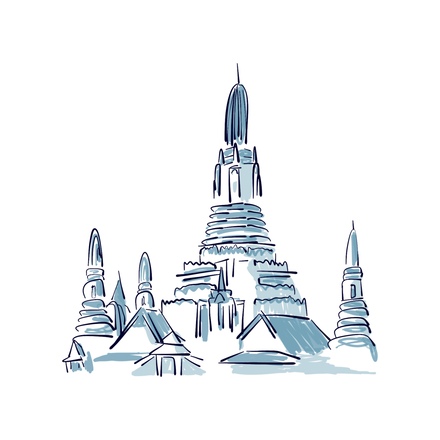
Standing proudly on the right bank of the Chao Phraya River, Wat Arun is one of Bangkok’s unmistakable landmarks, its five towers rising high above the water. The temple’s story is closely tied to the history of the capital. After Ayutthaya fell to the Burmese in the seventeenth century, a sanctuary was built here, but it quickly lost importance
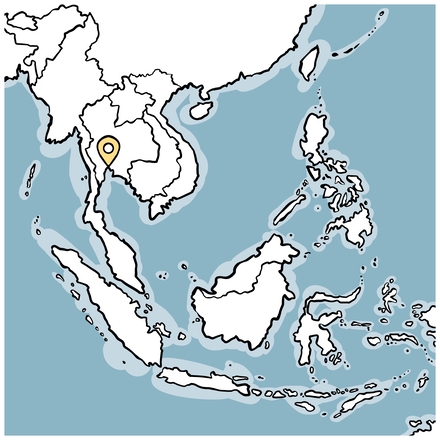
Behind these dazzling white walls lies one of Bangkok’s most iconic landmarks: the Grand Palace. And if you look up, you can already glimpse golden spires rising above the ramparts, a promise of the wonders hidden within this immense complex. Founded in 1782 by King Rama I, at the very moment of his coronation and the birth of Bangkok as a capital,

As essential to Bangkok as its temples, the National Museum is one of the city’s greatest cultural landmarks. It was founded in 1874 by King Rama V, who had just come to the throne and wanted a place to preserve and display the private collections of his father, King Rama IV. At first the museum was housed inside the Grand Palace, but in 1887
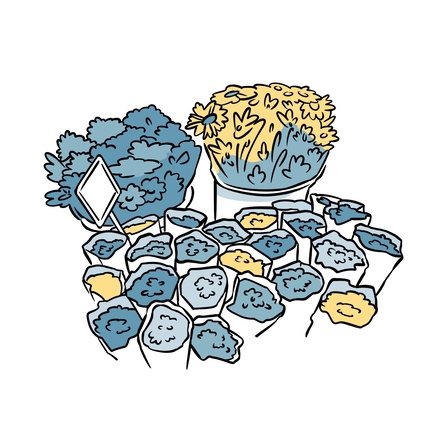
Buddhist temples aren’t the only colourful part of Bangkok. The city is full of beautiful flower markets, with delightful smells! The largest of them — and in fact, the biggest in the entire country — is Pak Khlong Talat. It originally began as five separate markets selling various goods, which eventually merged into one.
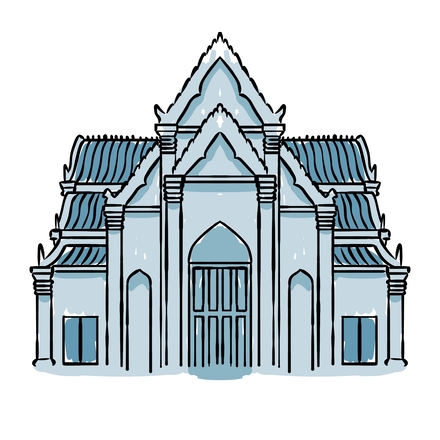
With its striking red façade and traditional Thai architectural style, the Thawornwatthu Building immediately catches the eye. Built in the late 19th century, it was originally intended to serve as the royal crematorium for Crown Prince Vajirunhis, the eldest son of King Rama V. But in 1895, tragedy struck the dynasty: the young prince died suddenly
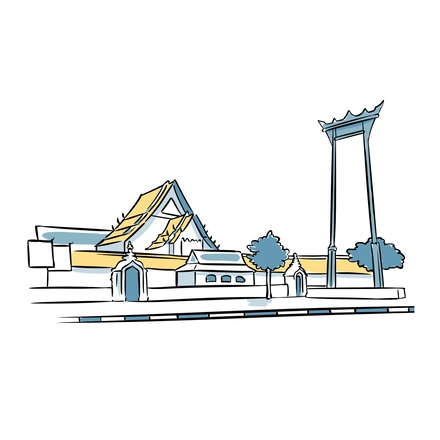
Bangkok today is made up of fifty districts, but none is more iconic than Phra Nakhon, whose name means “the royal city.” This is where it all began in 1782, when King Rama I founded the new capital and the city began to grow outward from here. Phra Nakhon is Bangkok’s historic heart and still its richest area for sightseeing.

You’re now in Saranrom Park, a nineteenth-century royal garden that has become a green oasis for locals and visitors alike. With its shaded paths, ponds, and tropical trees, it’s a refreshing pause right in the middle of Bangkok’s historic quarter. And while we’re enjoying this break, let me share three surprising facts about the city.

Wat Suthat is one of only six royal temples of the highest rank in Thailand, a distinction that makes it truly special. Construction began in 1807 under King Rama I and was completed nearly forty years later during the reign of Rama III. The temple is admired for its graceful architecture and the magnificent murals inside its main chapel.

After passing so many temples, this is the perfect moment to pause and talk about religion in Thailand. Spirituality is everywhere here. More than 90 percent of the population are Theravāda Buddhists, around 64 million people, making Thailand home to the second-largest Buddhist community in the world after China.

With nearly four hundred Buddhist temples, Bangkok holds an extraordinary religious heritage. And while they may differ in form and color, most follow a common layout. A wat, as a temple is called in Thai, is usually made up of three main buildings. First comes the sala, an open pavilion where monks and laypeople gather
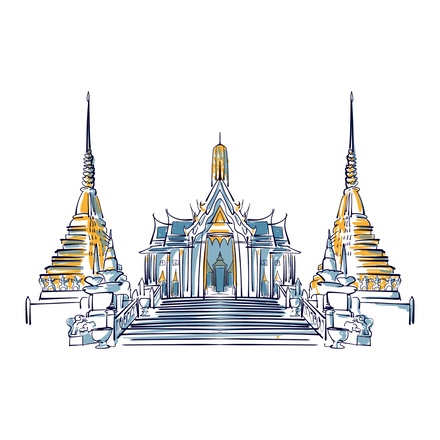
You are now standing at the main entrance to the Grand Palace, the Wiset Chai Si Gate on Na Phra Lan Road. This is where all visitors enter to explore the palace grounds and the Temple of the Emerald Buddha. The other gates are reserved for the royal family and official ceremonies. Access requires a ticket and is not part of this tour, but let me tell you why this sanctuary is

You cannot miss the Grand Palace, Bangkok’s most iconic landmark, spanning 29 hectares. King Rama I ordered its construction in May 1782, and he moved in a month later during his coronation ceremony. It was initially built from wood and logs, as this was all that the dynasty could afford.

Right in front of you stands Wat Ratchabophit, a temple that immediately catches the eye with its dazzling detail. Built in 1869 during the reign of King Rama V, it is a striking blend of tradition and innovation. From the outside, everything is classic Thai: layered roofs, golden spires, and vibrant mosaics. Step inside, however,
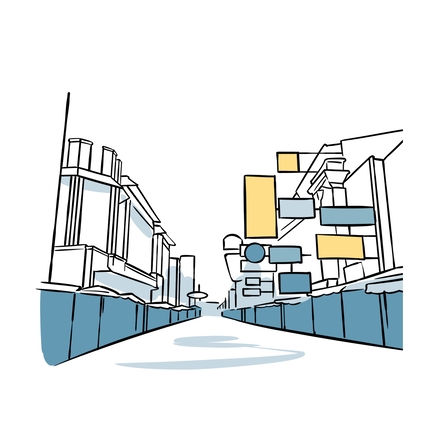
At just 410 meters long, Khao San Road is one of the most famous streets in Bangkok. When it was created in 1892, it served as a major rice market—its name, “Khao San,” literally means “milled rice.” The street’s true fame, however, came much later. From the 1980s onward, its central location made it the natural meeting point for backpackers from around the world.
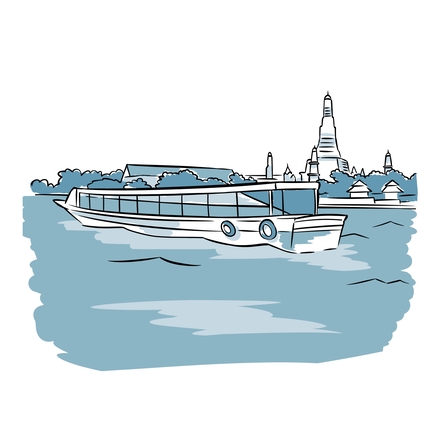
Bangkok has a few nicknames, such as the “City of Angels” or the “Venice of the East”. The first refers to Bangkok’s etymology, and the second highlights water’s symbolic place in the Thai capital. It has an impressive canal network, known as the khlong, and the city is built around the Chao Phraya River, which flows in front of you.
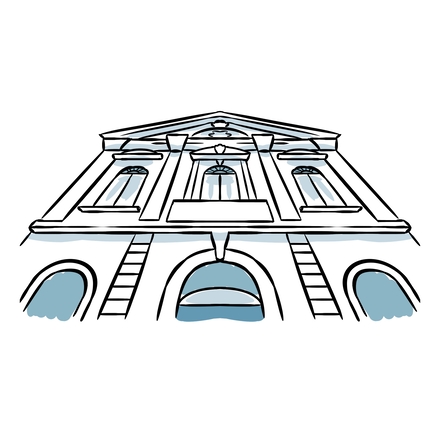
Across this wide double avenue that looks almost impossible to cross, you’ll notice a pastel yellow façade framed by palm trees. Behind those walls lies one of Thailand’s key landmarks of artistic creation: the Bangkok National Gallery. The building itself is a historic monument: it once housed the Royal Mint

Among Bangkok’s many temples, Wat Mahan holds a special place. Construction began in 1850 under King Rama III, and it was completed thanks to the support of his successor, King Rama IV. But the temple’s role goes beyond religion. In 1884, it became the very first site in Thailand to host a public school,
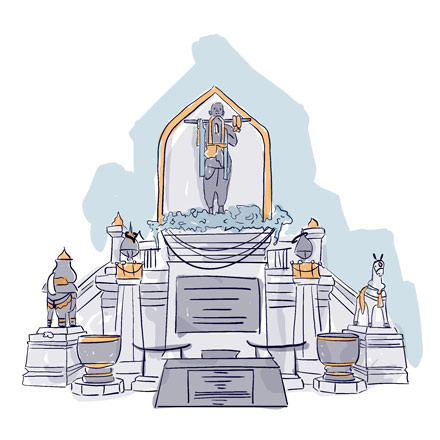
Just next to you stands the Monument to Maha Sura Singhanat. This courageous general was the younger brother of King Rama I, founder of the Chakri dynasty. Appointed as vice-king, he led the army of the Kingdom of Siam — the former name of Thailand — during the War of the Nine Armies in 1785.

Standing next to the National Museum is the National Theatre, inaugurated in 1965 as a stage dedicated to preserving and showcasing Thailand’s performing arts.
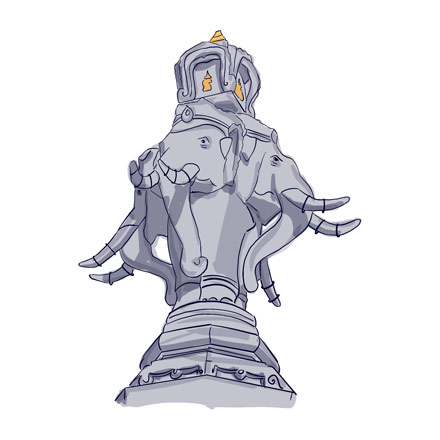
In Bangkok, it’s perfectly normal to come across commemorative monuments, royal statues, shrines, or small altars right in the middle of major avenues, roundabouts, or traffic islands. The city often feels like an open-air museum, with a striking contrast between the heavy traffic and these little islands of memory or spirituality.
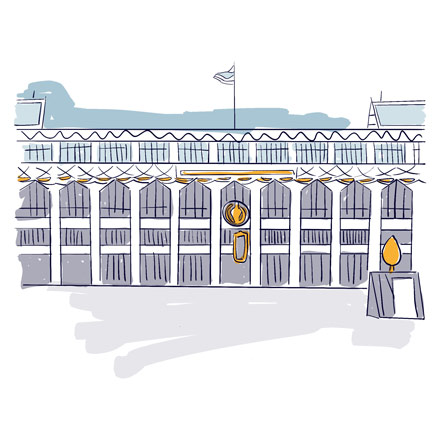
In front of you stretches one of the largest squares in Bangkok’s historic center, dominated by the imposing building of City Hall, officially known as the Bangkok Metropolitan Administration. This is where the governor of the capital works, a unique position in Thailand. To understand it, we need to start at the top.
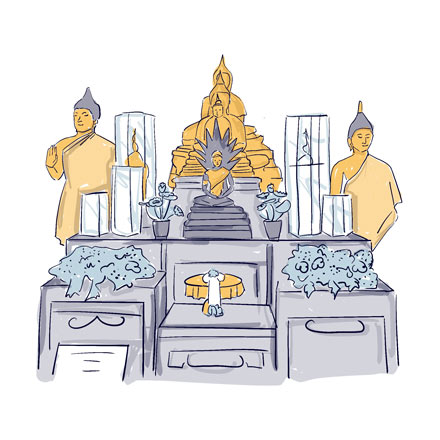
This is San Chao Pho Ho Klong, a small Sino-Thai shrine whose name means the “Shrine of the Spirit of the Drum Tower.” Back in the reign of Rama I, a nearby tower
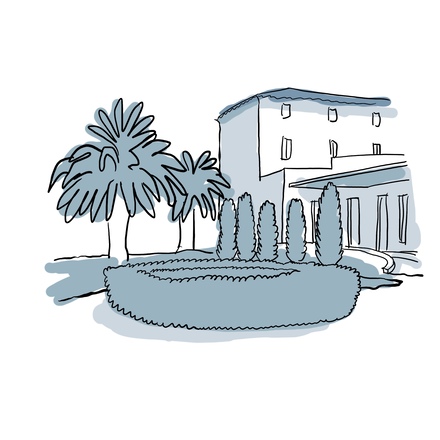
The small garden you’re standing in now was created in the 1990s—but this peaceful green space hasn’t always looked like this. Back in the Middle Ages, part of the city’s fortifications stood here, connected to the Archbishop’s Palace. Then, from
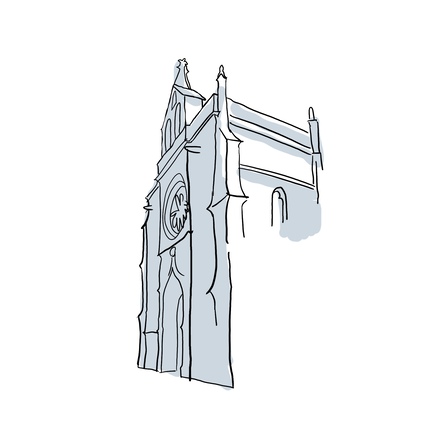
The elegant façade you see on your left belongs to the Saint-Sébastien Church. Originally built in the 15th century as a chapel, it was expanded and transformed in the 18th century into the striking Gothic-style building you see today. During that
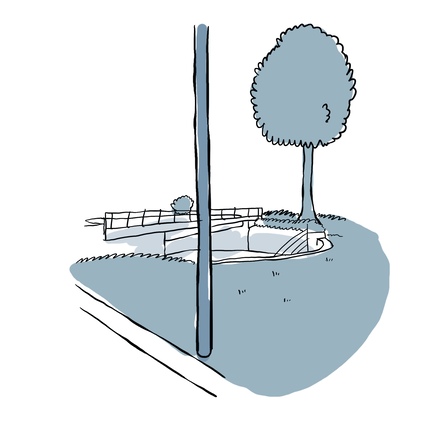
This small square, Place Thérèse Léon Blum, is named in honor of this influential French statesman, known for championing major social reforms in the 1930s—like paid vacations, shorter working hours, and the inclusion of women in
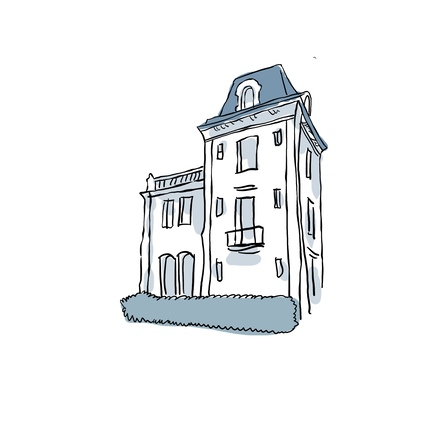
Along this street, you’ll come across several elegant private mansions, including the Hôtel de la Brigade at number 12 and the Hôtel Benavent at number 7. Both were built between the 17th and 18th centuries. The Hôtel Benavent, which you’ll find
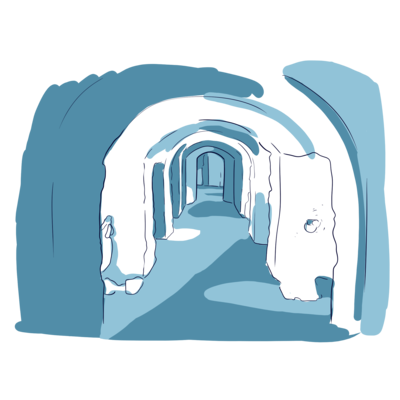
Just down the street on your left—Rue Rouget de l’Isle—you’ll find the entrance to the Horreum, a fascinating monument dating back to the 1st century BC. In Roman times, a horreum was a warehouse used to store all sorts of goods: grain, wine,
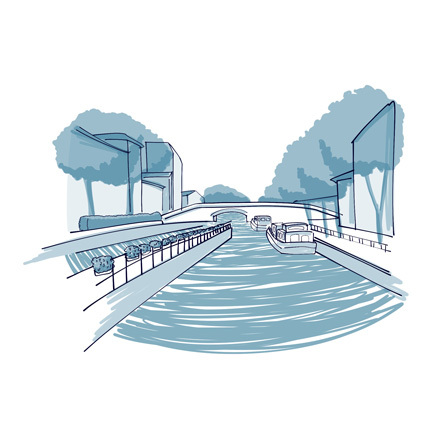
The Canal de la Robine, now listed as a UNESCO World Heritage site, is a beautiful place for a walk or bike ride—especially through central Narbonne, where it offers a peaceful escape from the city’s bustle. There’s nothing quite like strolling

From the Barques footbridge, you get a perfect view of Narbonne’s famous Merchants’ Bridge! Looking at it from here, you might be reminded of the Ponte Vecchio in Florence—and for good reason: it’s built in the same way, as an inhabited
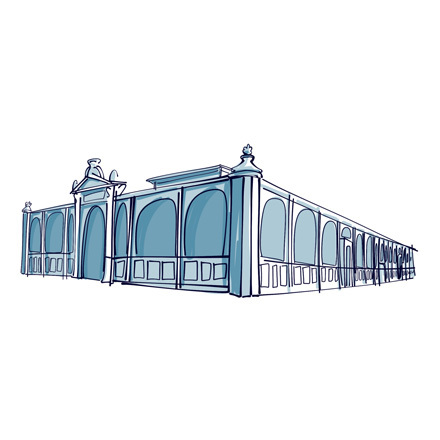
Let’s dive into some of Narbonne’s culinary delights! Inside this bustling market hall, you’ll find over 70 stalls offering fresh fruits, vegetables, cured meats, seafood, and more. It’s the perfect place to sample local specialties. Alongside the many
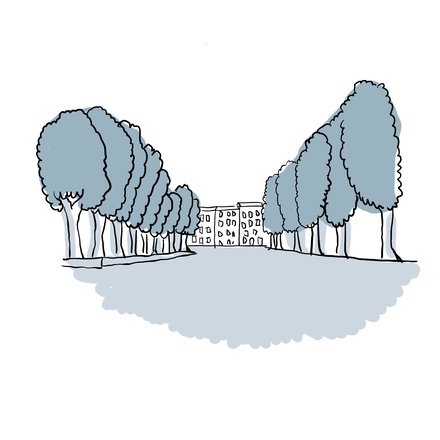
It’s impossible not to enjoy a stroll along Cours Mirabeau, which runs alongside the right bank of the Canal de la Robine. This wide, tree-lined avenue, dotted with café terraces and restaurants, is a favorite with both locals and visitors.
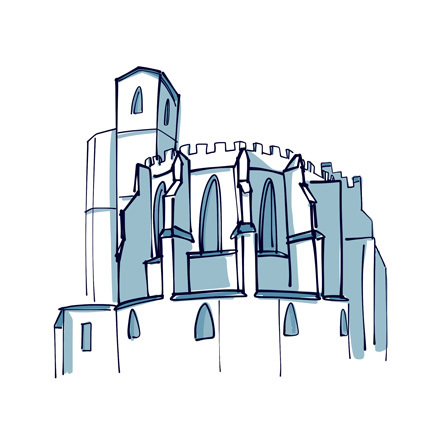
You’re now standing in front of a beautiful example of Languedoc Gothic architecture. Long known as Notre-Dame-du-Bourg, named after the medieval Bourg district where it’s located, this church was originally built in the 11th century. Over
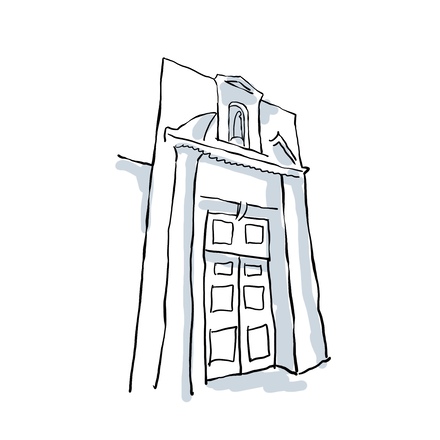
Tucked among the residential buildings of the Bourg district, you’ll spot the façade of Notre-Dame-de-Grâce Church. Originally part of an Augustinian convent, the building took on a very different role in the second half of the 20th century—serving as a performance venue and even a cinema. In 1985,
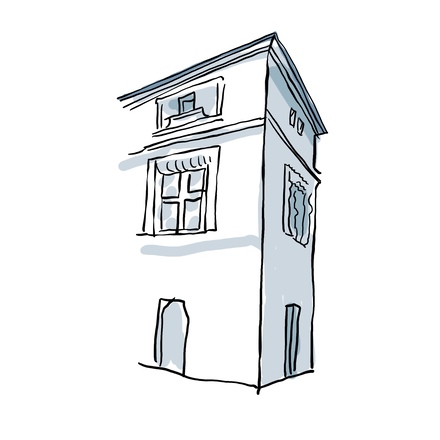
On your right, you’ll see a rather unusual house—this is the House of the Three Wet Nurses. Built in the 12th century, it only became a private residence in the 16th century, when it was acquired by the powerful Guissane family, whose members included several of Narbonne’s consuls. They
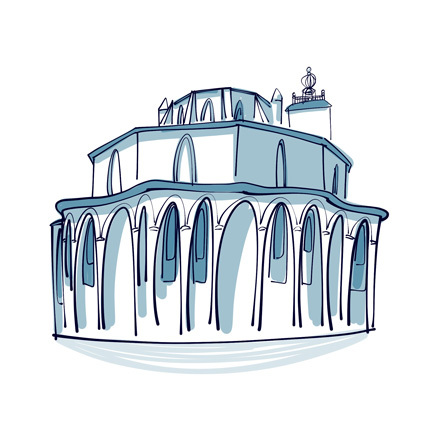
Welcome to Saint Paul’s Basilica—one of the oldest churches in southern France, and the very first Gothic church built in Narbonne. It was constructed starting in the 12th century on the site of a much older church that dated back to the 5th century. Inside, you’ll even find a
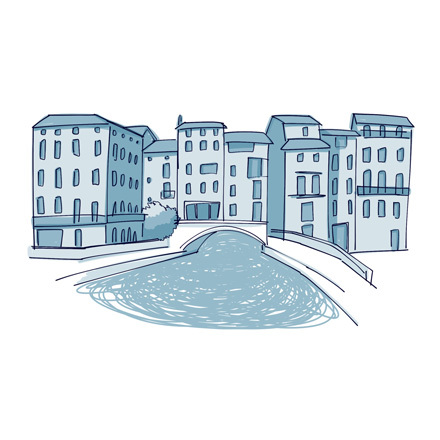
It might not be obvious at first, but you’re actually standing on a bridge —right in the middle of it, in fact! This is the Merchants’ Bridge, one of Narbonne’s most curious landmarks, and almost unique in France. In fact, along with the Rohan Bridge in Landerneau, Brittany, it’s one of just two
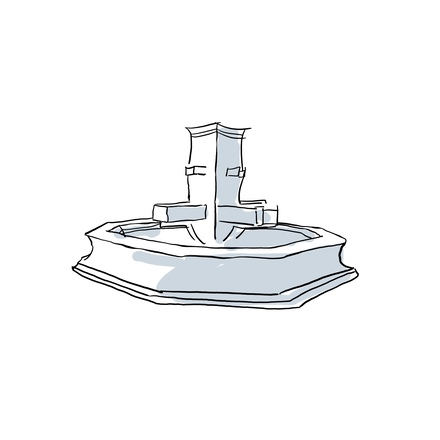
We’re now in the Bourg district, on the right bank of the Canal de la Robine, which runs through the heart of Narbonne and splits the city in two. Quieter than the historic centre, this medieval neighbourhood still has plenty to offer, with beautiful façades and monuments well worth a look. Its
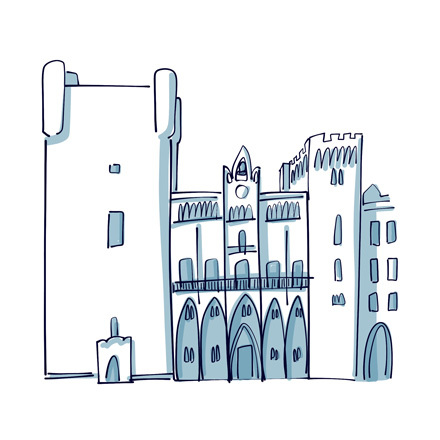
Welcome to Town Hall Square—there’s a lot to take in here, and the impressive Archbishop’s Palace right in front of you has a lot to do with that! Try standing in the center of the square to get the best view. You’ll quickly notice that the building is made up of several parts, each with its own

Right in the middle of the square, just in front of the Archbishop’s Palace, you’ll find a remarkable relic from the Gallo-Roman era. You’re standing before a section of the Via Domitia, a Roman road that dates all the way back to 118 BC. It was built to link Italy with the Iberian Peninsula, mainly
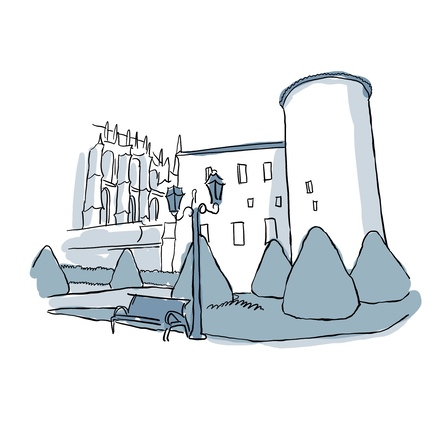
To your right, the Archbishop’s Garden is the perfect spot to pause and unwind right in the heart of the city. Enclosed by ancient walls—some dating back to Roman times, when Narbonne was known as Narbo Martius, and others from the medieval era when the city was fortified—this garden is
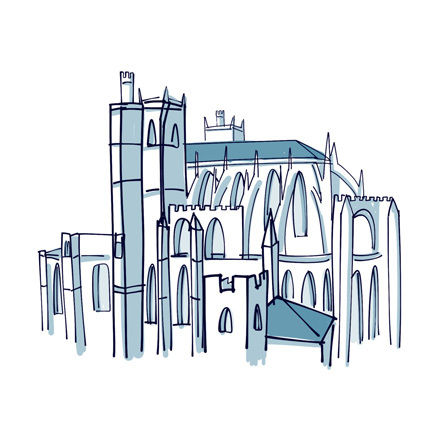
Although it’s located in the south of France, this remarkable cathedral has all the grandeur and features you’d expect from a northern Gothic cathedral. Built between the 13th and 14th centuries at the request of Pope Clement IV, it showcases a stunning example of radiant Gothic
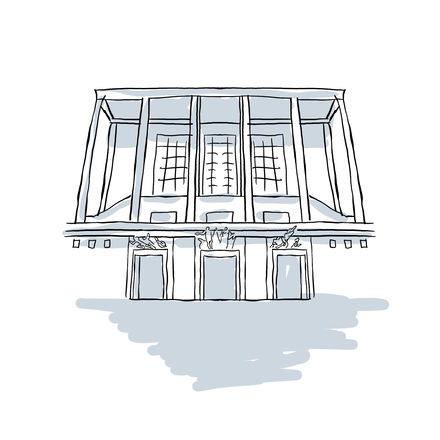
The building on your left is none other than the Palace of Sports, Arts and Labor. I'm stopping here because it's one of the rare examples of functionalist and rationalist architecture in the Languedoc-Roussillon region. Functionalism is an architectural style based on a simple idea: form




In the quaint town of Quimper, your eyes quickly get used to spotting medieval, Gothic, and Renaissance architecture—almost every building seems to tell an ancient story. Yet be careful not to assume that everything here is centuries old. The building known as Ty Kodak, right in front of you, proves otherwise.

The people of Quimper will proudly tell you that a visit to their city is also a chance to discover what they like to call the capital of Cornouaille. But unless you’re Breton, you might be wondering—what exactly is Cornouaille? Let’s break it down.
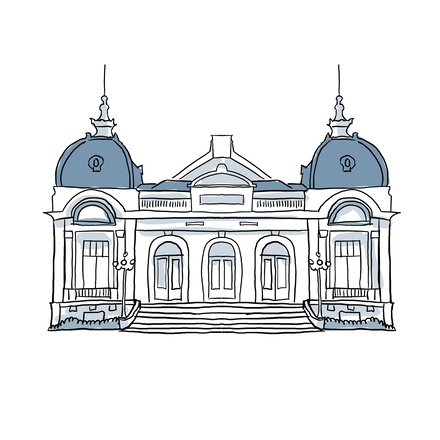
Along the banks of the Odet, Quimper offers a charming step back in time to the elegance of the Belle Époque and the energy of the Roaring Twenties. There’s no better place to start this architectural journey than right here at the Max Jacob Theater. Stylish and refined, this cultural landmark didn’t always have an easy place in the city’s heart.
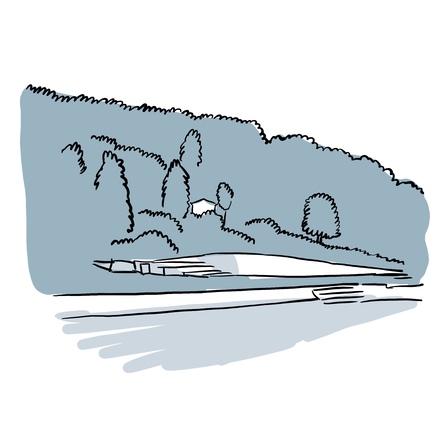
Rising like a vast green wall alongside the Odet, Mont Frugy is an inseparable part of Quimper’s landscape. Locals know it so well that they hardly notice it anymore—but for you, dear visitors, it’s quite the opposite. And it’s easy to see why—this hill towers 70 meters above the city and commands attention.

Breton, warm, ancestral, and authentic—Quimper isn’t the kind of city that tries to impress with grand displays. Quite the opposite! Modest in size and rich in old-world charm, the capital of Finistère embraces its identity with pride and honesty, especially when it comes to sharing its history.
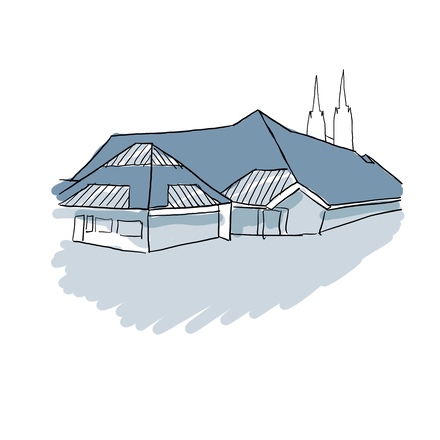
When it comes to good food in Quimper, one name comes up almost every time: the Saint-François market hall. Locals swear by it, claiming it brings together all the warmth, flavor, and quality of the city and its surrounding region. Beyond being a foodie favorite, it’s also a place steeped in history—176 years of it, to be exact.

A secret passage? Well… almost. Treuz Street is one of those delightful surprises that make exploring Quimper so rewarding. Rediscovered by chance just 46 years ago, this little lane has become a must-see in the old town center.
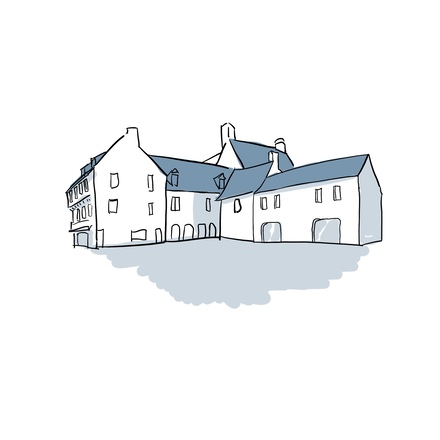
A name that makes us smile, a setting that delights the eye, and the mixed aromas of buckwheat and wheat that awaken the appetite—Place-au-Beurre, or the Butter Square, doesn’t need much more to win over its visitors. As for locals, it’s been their favorite spot for generations.

City center and tranquility don’t usually go hand in hand—but in Quimper, the Retreat Garden proves otherwise. Even its name invites calm. Sheltered behind a stretch of 13th-century ramparts, this 4,500-square-meter green space opens onto three themed gardens, each offering its own immersive atmosphere.

Breathtaking landscapes, age-old traditions, charming villages, an open horizon to the sea, and cuisine that’s briny, sweet, or decadently buttery—Brittany is a region that draws you in. For an enchanting twist to your jouney add a good dose of legends and mythical tales.

You’re about to cross the Steïr, Quimper’s second river. These days, it might seem like a simple, everyday crossing—but centuries ago, it marked a major divide. In the Middle Ages, the Steïr formed the boundary between two distinct zones: the suburb of Terre-au-Duc, under the duke’s authority, and the episcopal city of the bishop,

Brief but distinctive, that sound you just heard, is your cue to grab your camera — it means you’ve arrived at one of Quimper’s most photogenic spots. Trust us, this isn’t the last you’ll hear about this place—the one and only Kéréon Street.

“Another half-timbered house?” you’re probably thinking, and you’d be right—but get used to it! Quimper is home to no fewer than 73 of them, each with its own unique character. Some are tall, some small, some red or blue, some plain, and others full of flair.
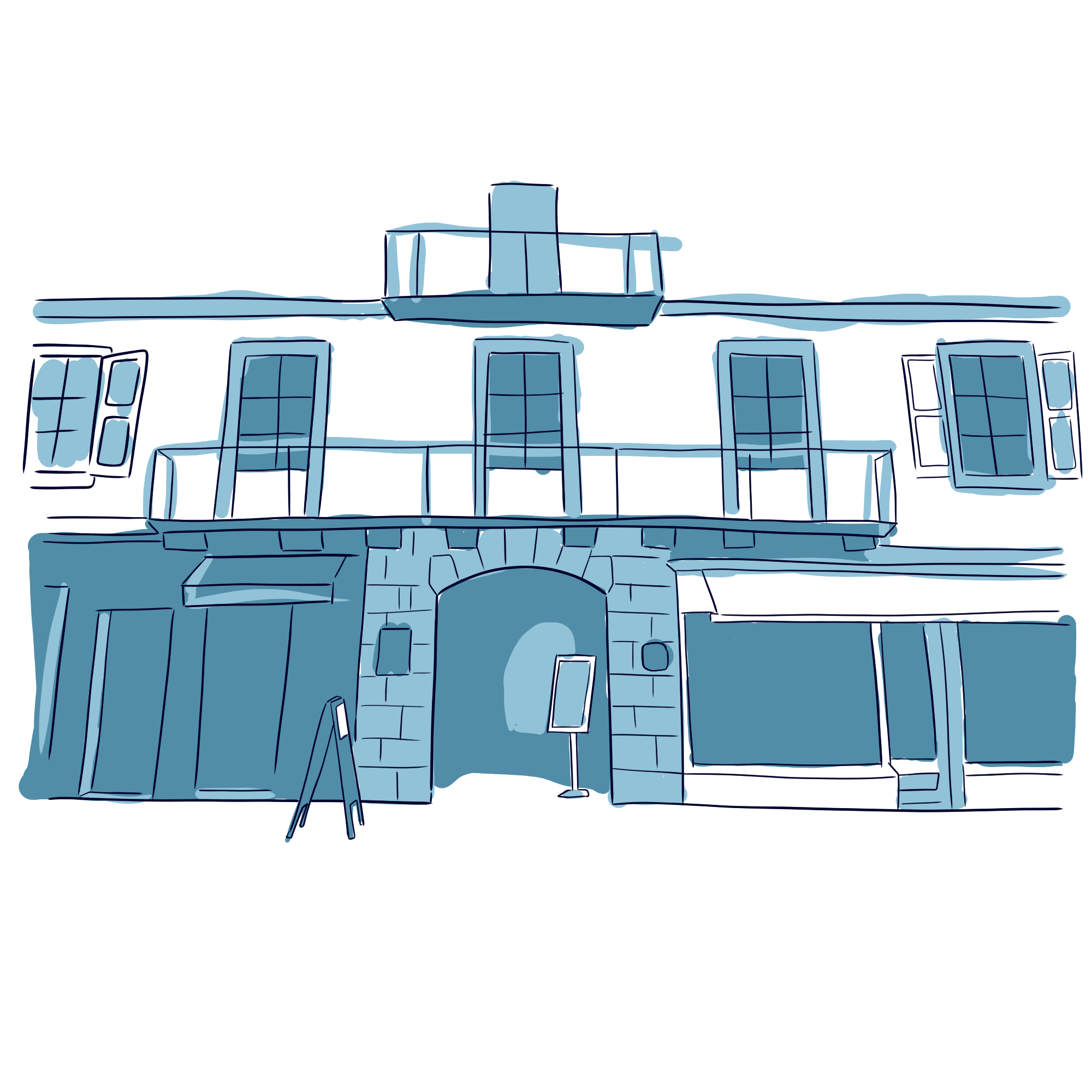
Though he liked to say he was “born for Brittany,” it was right here in Quimper that Max Jacob’s life truly began. A French poet, novelist, essayist, and painter, Max Jacob is often described as the most famous of the unknowns—an artist whose influence far outweighed his name recognition.

The Odet River often leaves a strong impression—its beauty and peaceful setting make it a perfect place for a stroll. During the Belle Époque, its banks were the preferred retreat of aristocratic families, who built grand mansions and private estates along the water.

The Steïr, the Odet, and the Frout—these are the three waterways without which the prefecture of Finistère would not be the same, both geographically and in terms of identity. Indeed, Quimper, from the Breton word "kemper," means "confluence."

Right next to Quimper’s City Hall stands the Museum of Fine Arts, housed in a grand classical building since 1872. It was designed by none other than Joseph Bigot—the very same architect behind the soaring spires of Saint-Corentin Cathedral.
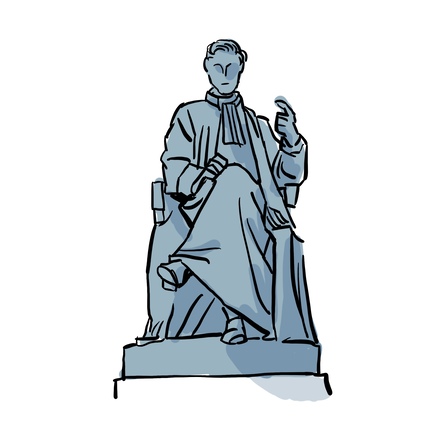
A visit to this charming Breton town wouldn’t be complete without stopping by this statue. After all, every local knows the man it honors—and by the end of this visit, you should too. His name is René Laennec, a native of Quimper whose keen eye and analytical mind helped revolutionize modern medicine.

Let the bells ring out—we’ve arrived at the heart and soul of Quimper: the iconic Saint-Corentin Cathedral. A cherished symbol for locals and a must-see for visitors, this majestic structure leaves its mark both on the skyline and in the history of Old Quimper.

A timber-framed façade decorated with colorful faience plates—you’d have to be seriously distracted not to notice this iconic Quimper landmark. Today, it houses a charming souvenir shop, but there’s much more to the story. Let’s take a little step back in time.

Place Saint-Corentin, the heart of historic Quimper, is surrounded by a collection of beautiful buildings—and right at its center, of course, stands the majestic cathedral. Like a crown around it, several remarkable sites catch the eye, and this elegant corner building is one of them.
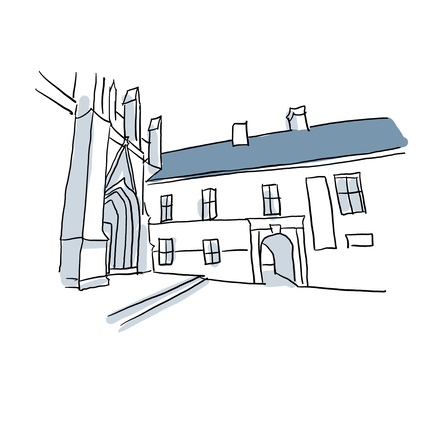
Whether you’re heading to the cathedral or just coming out, skipping this spot would be a real shame. After all, how often do you get the chance to visit the former Palace of the Bishops of Cornouaille? Since 1846, it’s been home to the Breton Departmental Museum.
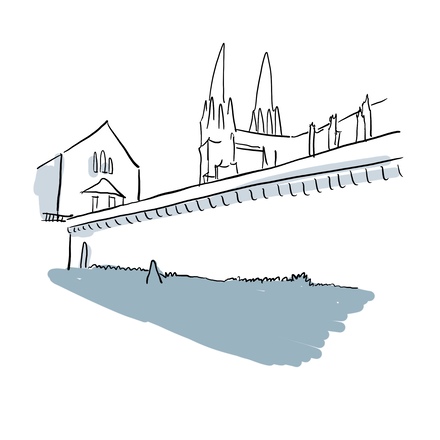
Here and there, Quimper has gone to great lengths to preserve the precious traces of its evolution over the centuries. Some remnants of the fortified walls that once protected the city from the medieval era still remain. They may be modest and not widely known, but they absolutely deserve to be seen and appreciated.
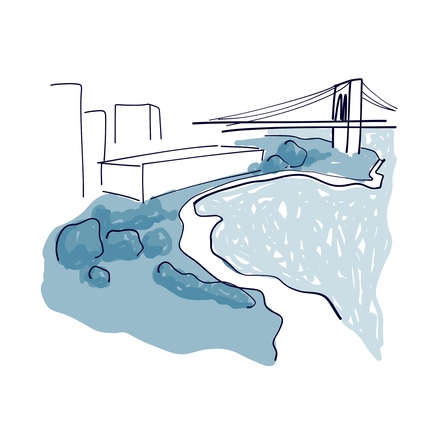
Brooklyn Bridge Park covers no less than 34 hectares, stretching along the East River from Atlantic Avenue all the way to the Manhattan Bridge. In addition to offering a wide range of activities on its various piers, including sports fields, merry-go-rounds
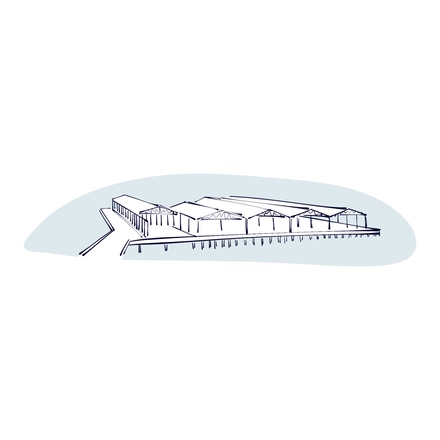
Sports enthusiasts rejoice! Pier 2 is home to multiple basketball courts bustling with activity every day, a skate park, and a roller rink. It's pretty clear that the piers at Brooklyn Bridge Park are all about sports.

That's right! You're looking at a beach right in the middle of New York City, in one of its most famous neighborhoods. You can't go for a swim, as swimming in the East River is forbidden, but this tiny beach is still a great place to hang out and relax in the heart
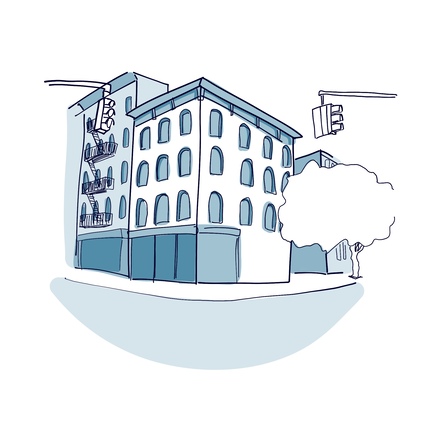
Welcome to Brooklyn, one of New York's five boroughs, nicknamed the “Borough of Homes and Churches.” Over the years, it has held on to its authenticity and reputation as a bohemian neighborhood, inhabited by artists attracted by its more affordable housing compared to Manhattan.
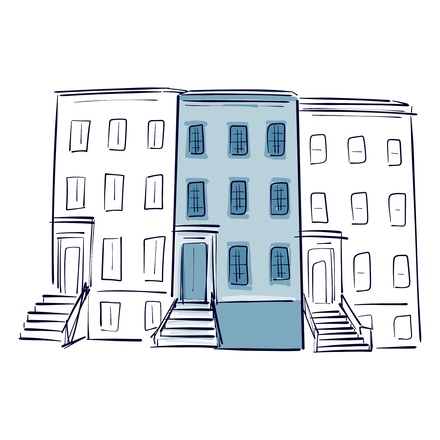
You're now on Joralemon Street. On your right, at no. 58, there's a very distinctive building. It looks like any other brownstone, but it's actually a clever disguise for a subway ventilation shaft! It ventilates the subway station right beneath your feet, just a few meters underground.

Brooklyn is so big, it's divided into different neighborhoods. This is Brooklyn Heights, where you'll find some of the finest Victorian-style brick houses. It's a pleasant residential area, prized by locals for its calm and authentic feel.
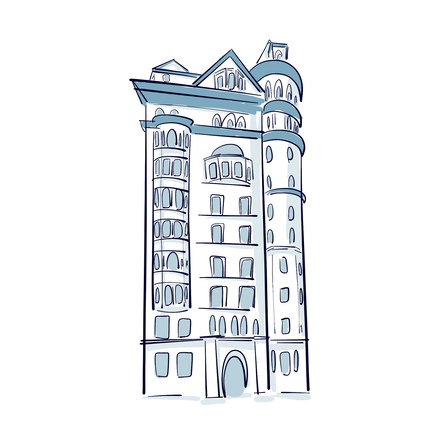
You're now on Montague Street, the main street of Brooklyn Heights. Like many streets in Brooklyn, it is lined with the iconic Brownstones that have made this borough so famous. These houses get their distinctive reddish-brown color from the sandstone used to build them,
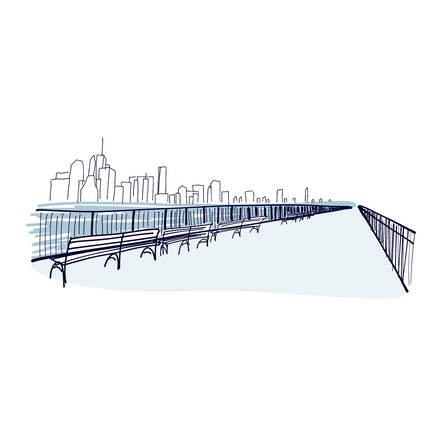
The Brooklyn Heights Promenade is a quintessential New York City experience. This pedestrian walkway offers breathtaking views of Manhattan and the New York skyline. From here, you can see One World Trade Center, Manhattan's tallest tower, and the famous Brooklyn Bridge to the right,
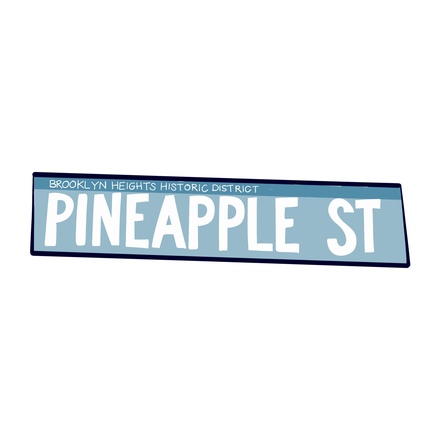
You're now walking down Pineapple Street. Before the 19th century, the streets here were actually named after the great aristocratic families who lived in the neighborhood. That was until Lady Middagh came along; she thought all that was rather pretentious,
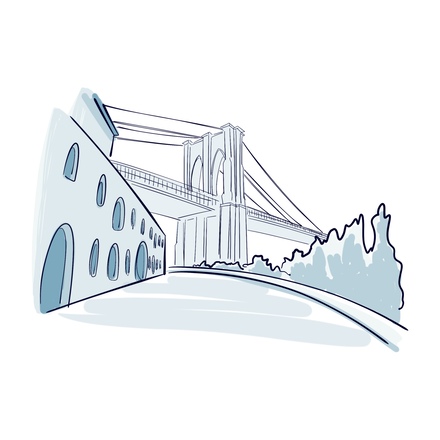
Welcome to DUMBO, a charming neighborhood tucked between the Brooklyn Bridge and the Manhattan Bridge. I know you're probably wondering if it has anything to do with Dumbo, the famous Disney character.
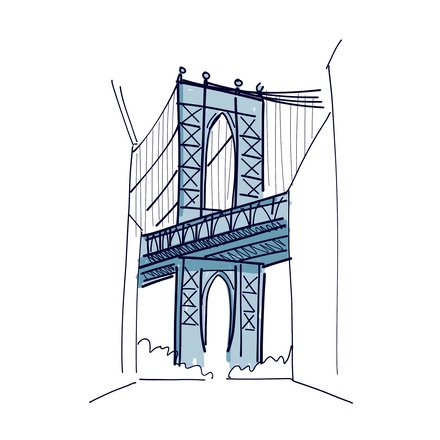
This is one of the most iconic views in New York, in the heart of Washington Street. You might recognize it from the movie “Once Upon a Time in America.”
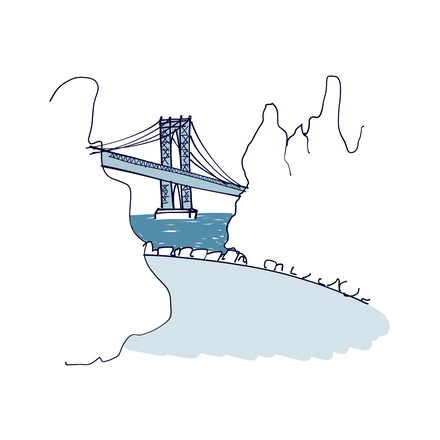
From here, you have a fantastic view of the Manhattan Bridge. While not as famous as its neighbor, the Brooklyn Bridge, it's no less impressive for its history and architecture. It was the last bridge to be built between Manhattan and Brooklyn,

Nestled between the Brooklyn Bridge on your left and the Manhattan Bridge on your right, Main Street Park is the perfect spot to take a photo of New York's two iconic bridges, the East River and Manhattan's towering skyscrapers, all in one shot.
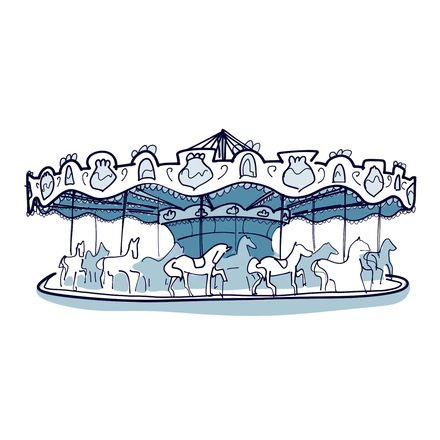
The Jane's Carousel is a favorite with young and old alike, inviting visitors to enjoy a ride in its stunning glass pavilion designed by Jean Nouvel. The carousel was built in 1922 and operated for many years as part of the Idora amusement park in Ohio,
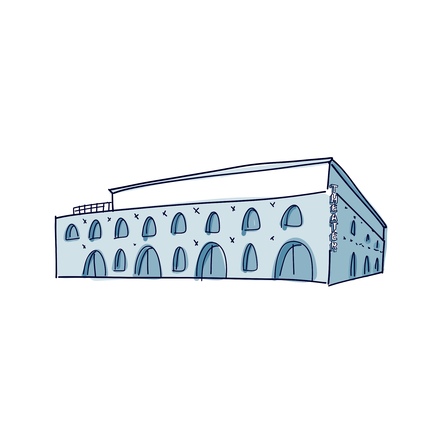
This classic Brooklyn brick warehouse is a former spice-grinding factory that now stages a diverse range of shows in the heart of DUMBO, just a stone's throw from the East River. Formerly housed in the Church of St. Ann and the Holy Trinity on Montague Street,

Get your cameras ready! This is one of the most iconic views in New York, and surely Brooklyn's most famous. Lower Manhattan stretches out before you, across the East River, which separates the city's two most famous neighborhoods.









Rising high above the Plaza de la Revolución, this striking monument honours one of Cuba’s most beloved and influential figures: José Martí. A symbol of courage, perseverance, and devotion to his homeland, Martí was a leading voice in the fight for Cuban independence, leaving a lasting mark on the nation’s history. He wore many hats

Steeped in history, this is one of Cuba’s most iconic public spaces. Covering around 72,000 square meters, it ranks among the largest squares in the world, and standing here in the middle of it all, you can’t help but feel tiny against such vastness. Designed in 1920 by French urban planner Jean-Claude Forestier, it was first known as the Civic Square

Over sixty years ago, Cuba went through one of the most defining chapters of its history: the Cuban Revolution. In Old Havana, and even more so here in El Vedado, those two words still echo with stories and memories. For anyone unfamiliar with its beginnings, here’s how it unfolded.
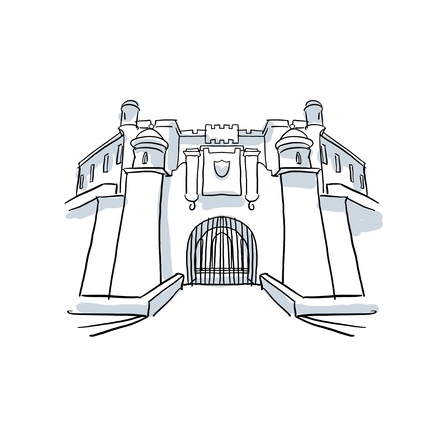
You might not feel it, but you’re standing near one of the highest points in Havana. To your right is the Loma de Aróstegui—one of the tallest hills in the city. Back in the day, hills were prime military real estate, perfect for building formidable
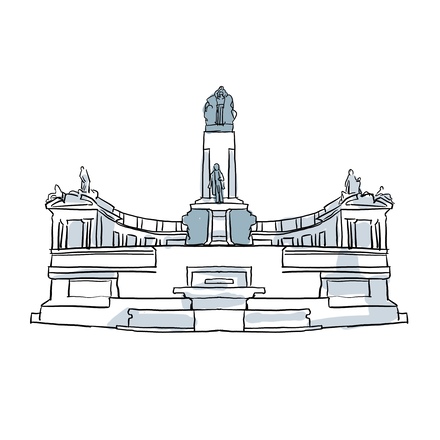
At the top of Avenida de los Presidentes stands the most striking monument along this central promenade — a grand marble tribute to José Miguel Gómez. A key figure in Cuba’s modern history, he became known for his relentless fight for Cuban
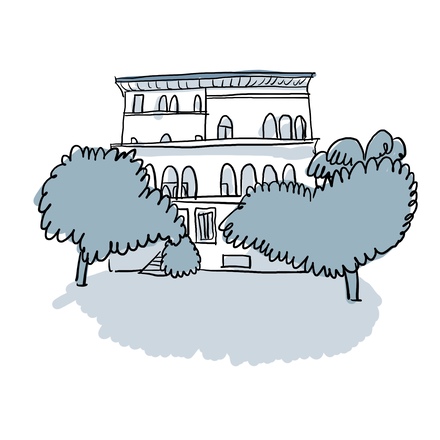
Even though we’re in Havana, this spot is dedicated to the legendary Napoleon Bonaparte. The museum before you was founded in 1961, by two Cuban art and history enthusiasts: Julio Lobo, a wealthy sugar trader, and Orestes Ferrara, a
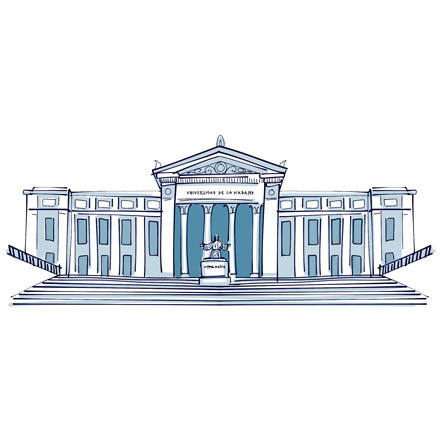
Originally located in the heart of Old Havana, the University of Havana has been part of the Vedado district since 1902. Founded in 1728 by Dominican friars, it’s the oldest university in Cuba — and one of the oldest colonial universities on the continent. At the time, it had 5 faculties: Law, Medicine, Surgery, Pharmacy, and Arts & Humanities.

Tucked away off the beaten path, Callejón de Hamel is one of Havana’s most unique alleyways. Like an open-air urban gallery, this space filled with eclectic Cuban folk art attracts both locals and visitors. Stretching about 200 metres, most of the works were created by self-taught artist Salvador González Escalona, who began transforming the alley in the 1990s.

Welcome to El Malecón, also known as Avenida Maceo. First laid out in 1901 to shield the city from the waves, this iconic seaside promenade has since grown into Havana’s favourite meeting place. It’s where Habaneros take romantic strolls, fish with friends, share music, and dance to the rhythms of Cuban music.
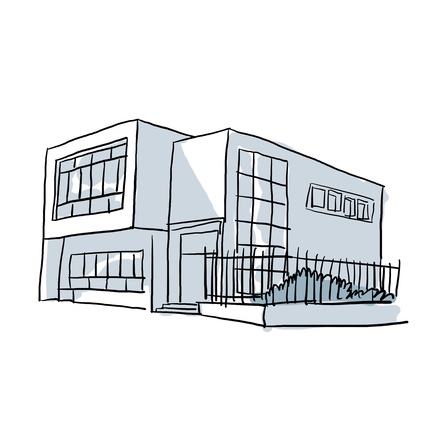
Before Havana began to flourish and expand in the early 19th century, this area was home to the San Lázaro quarries, where political prisoners were sent for forced labour. Among them was a young man named José Martí: philosopher, thinker,
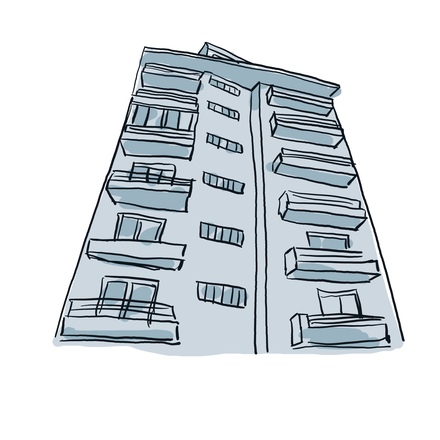
Here you are, at 120 Calle P, where Abel Santamaría once lived—a young Cuban who, in just a few years, went from being an ordinary citizen to the second-in-command of the revolution led by Fidel Castro. Let’s rewind a bit. Born in Encrucijada
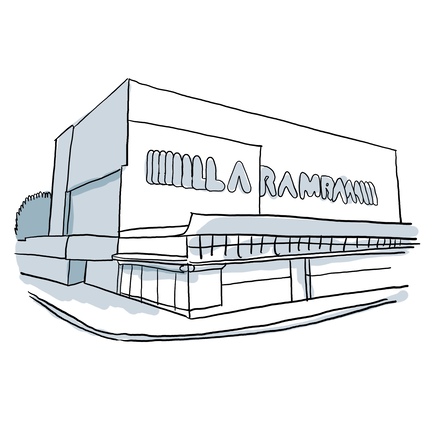
Black, red, grey, orange—these bold colours spell out “La Rampa” up on your right. You’re approaching the main street of Vedado, but that’s not all. Those seven large letters, in a 1970s-style font, also mark the name of the iconic La Rampa
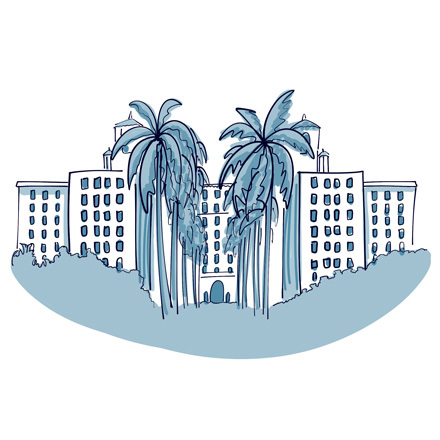
Easily recognisable by its Art Deco architecture, a rare sight in Vedado, the Hotel Nacional de Cuba carries a legendary reputation. Opened in 1930 on the site of the 18th-century Santa Clara fortress, this iconic hotel captures the elegance and

One of the most magical things about Havana is the feeling that you’re stepping through time — from the colonial era to the glamorous 1940s and 1950s. Here in Vedado, historic hotels like the one in front of you — the Hotel Capri — take you
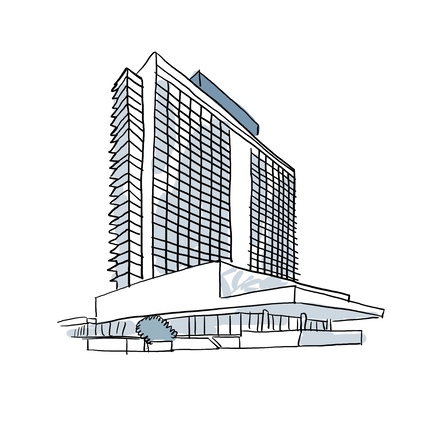
Opened in 1958 under the Hilton brand, the Hotel Habana Libre is a striking example of modernist architecture. At the time, it was the largest hotel in Latin America, with 25 floors and 572 rooms. Beyond its size and style, the hotel is closely tied
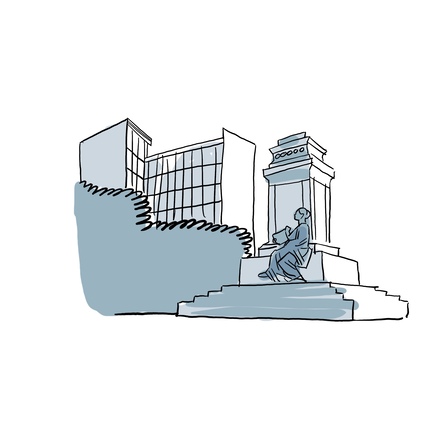
Within Vedado’s neat grid of streets, two grand avenues stand out. One is Avenida Paseo, and the other is Avenida de los Presidentes, which you’re now standing on. Stretching over twenty blocks and running all the way to the Malecón, this is
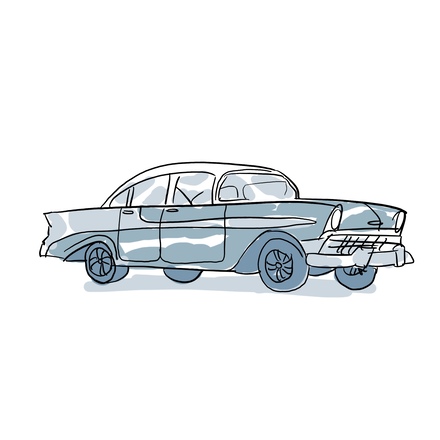
Round headlights, pop colours, curvy lines, and that unmistakable vintage rumble—Cuba’s classic American cars never fail to turn heads. Sure, it might sound cliché—but we’re all in. These legendary cars bring joy to every visitor exploring
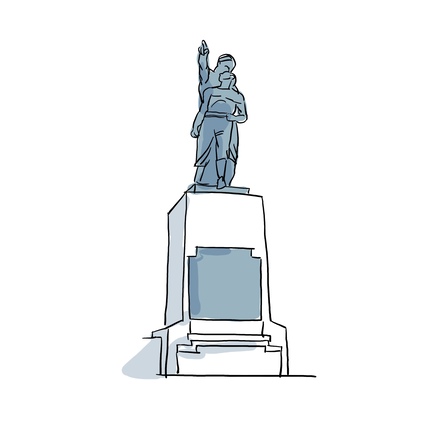
“There is not a heart in Cuba that does not feel indebted to this beloved old woman.” These were the words of Cuban national hero José Martí, in tribute to Mariana Grajales Cuello—honoured by this commemorative monument. Cuba will never forget this remarkable woman. Born on 26 June 1808 in Santiago de Cuba, Mariana Grajales Cuello made history through her deep commitment to the most important causes of her time. She fought for women’s rights, denouncing the patriarchy in Latin American society. She stood against slavery, fighting for the liberation of Afro-descendant communities. Above all, she committed herself to Cuba’s long fight for independence, playing a vital role in all three wars against Spanish colonial rule — the Ten Years’ War, the Little War, and the War of Independence, fought between 1868 and 1898. In the midst of war, Mariana was a beacon of courage and compassion. She organised supply missions for rebel camps, established and managed a hospital for the wounded—regardless of their allegiance—and often rushed to the battlefield to offer aid herself. She even led her husband and several of her children into the struggle for Cuba’s liberation, eventually losing many of them to the cause. A fearless, strong patriot, and a mother who paid the highest price for her devotion, Mariana Grajales Cuello became the heroine of a nation. To this day, she is remembered as the Mother of Cuba.
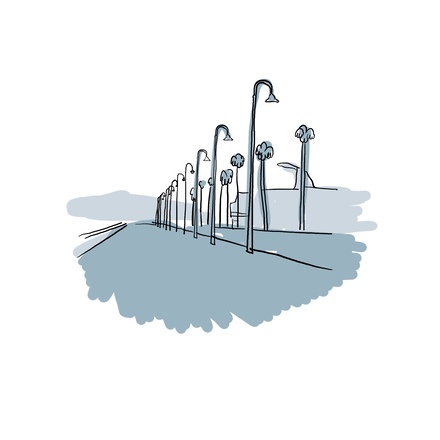
Vedado stands apart from much of Havana, showcasing the city’s more modern side. Built between the 1920s and 1950s, this residential and commercial district was developed on a wooded area that was off-limits to construction for years, which
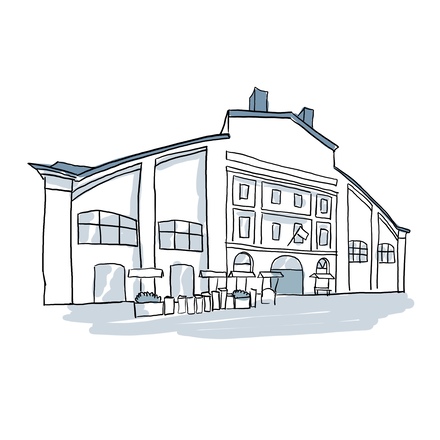
This significant building is only the southern part of the St. Lawrence complex, and it includes two more structures. Originally Toronto’s first city hall and later the city’s first jail, the idea of housing a large market emerged in 1803.

Toronto is a city full of unique characteristics. Its way of life, cultural identity, and distinctive style make Canada’s largest city what it is today. With all of this at hand, Toronto is both a delight and a surprise. Speaking of surprises, we’ve decided to share three little-known facts about the city.
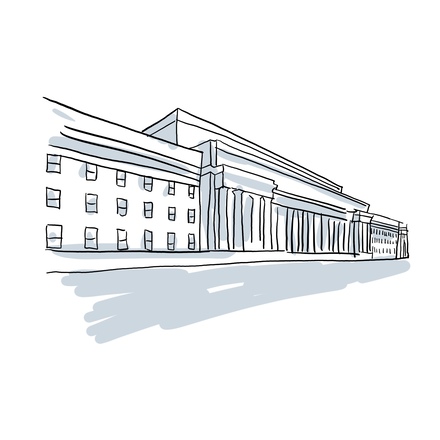
A major hub for inter-city transportation, Toronto Union Station has welcomed more than 300,000 travellers per day since its opening in 1927—a number far exceeding that of the country’s busiest airport.
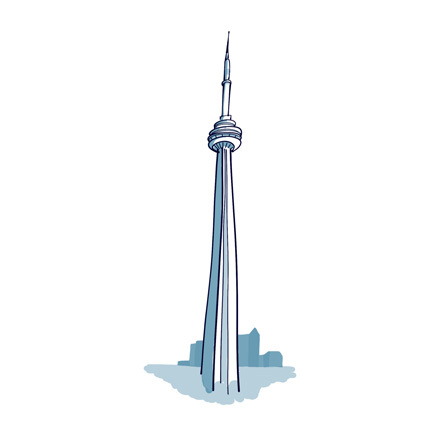
A key part of Toronto’s skyline, the CN Tower is Canada’s most iconic symbol. Before gaining all this fame, this engineering masterpiece was built for practical purposes. Toronto’s first skyscrapers were built in the 1960s and 1970s, but many households experienced significant reception issues.
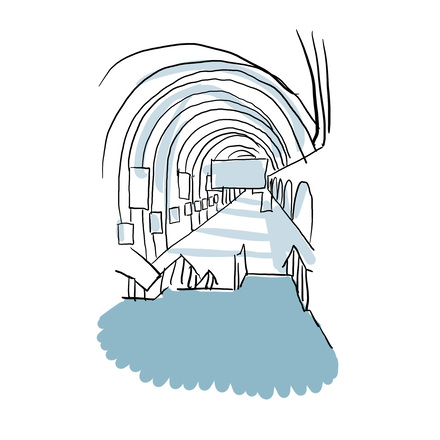
A major construction project on former railway lands, the Skywalk is an enclosed walkway in Toronto's PATH network – something that locals know well. It’s a 30-kilometer-long underground network of pedestrian tunnels connecting subway stations, office buildings, shops, hotels, and shopping malls throughout Toronto.
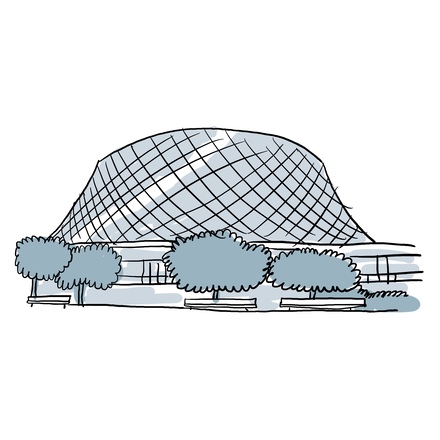
A celebration of music in Toronto, Roy Thomson Hall opened its doors in 1982. Its distinctive circular glass architecture has been home to the city's internationally renowned symphony orchestra since 2002. So musical performances must be the main attraction in the Hall’s programme, right?

In a city where we always want to look up, gazing at one towering skyscraper to the next, it might feel odd to focus on the ground—but trust us, it’s worth it. Established in 1998, Canada’s Walk of Fame honours the achievements and contributions of great Canadian personalities through a series of stars.
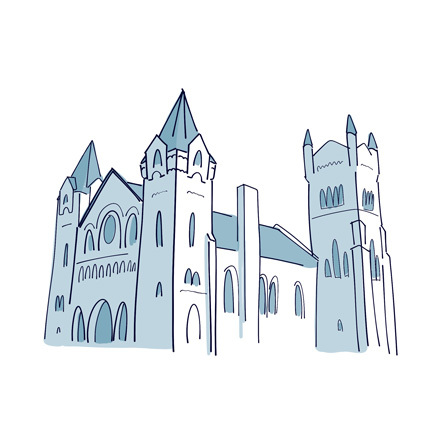
A surprising piece of history, lost in the city’s ultra-modern glass landscape, St Andrew’s Church immediately catches our eye. Designed in 1876 by a Canadian architect and businessman, this religious building is a place of worship for a Presbyterian congregation, where laypeople are elected to lead.
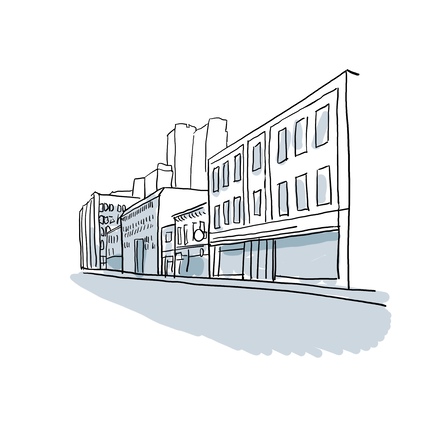
Queen Street West is one of Toronto’s most famous areas, and its numerous dining spots, independent shops, and art galleries are constantly buzzing with energy. This street and its neighbourhood are more renowned than any other part of the city – so iconic,
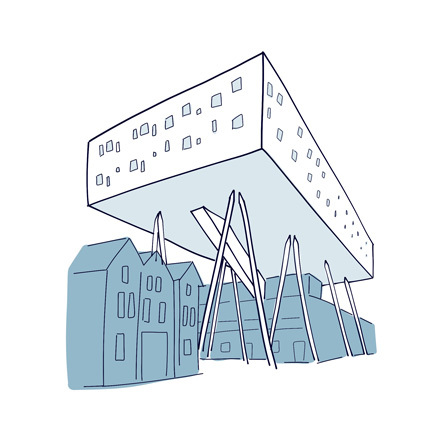
When we think of contemporary architecture, our mind goes to towering glass skyscrapers, rather than to a structure like this. Far from ordinary, the Sharp Centre for Design opened in 2004 as part of an expansion project for the OCAD University campus, Ontario’s College of Art and Design.
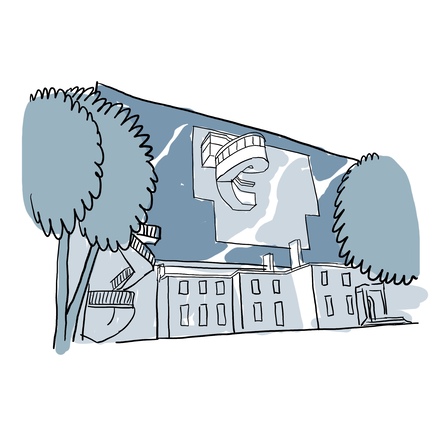
Known as one of the most beautiful museums in North America, the Art Gallery of Ontario is far from being housed in an old building, contrary to what we might think. The gallery was created in 1990, but not by the municipality or a public institution.
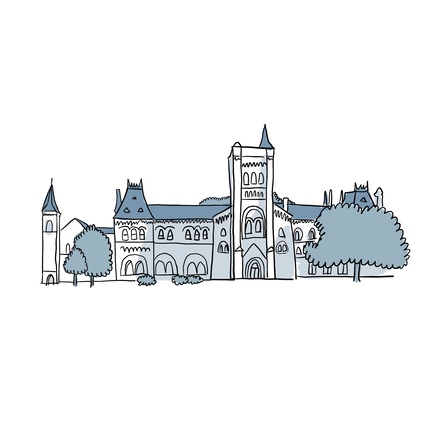
Before crossing the road, stop for a moment and look to your left. You are on University Avenue. A significant number of the city’s most prestigious institutions line both sides of this wide, eight-lane road. The street is actually named after one of these buildings: the University of Toronto.
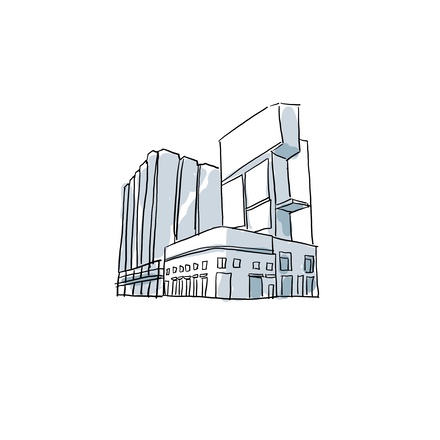
At the heart of the hustle and bustle, with dazzling lights and a vibrant atmosphere, Yonge-Dundas Square is one of Toronto’s busiest intersections. Opened to the public in 2003 as part of a downtown revitalisation project, this square is a unique gathering place for the 56 million people who visit each year.
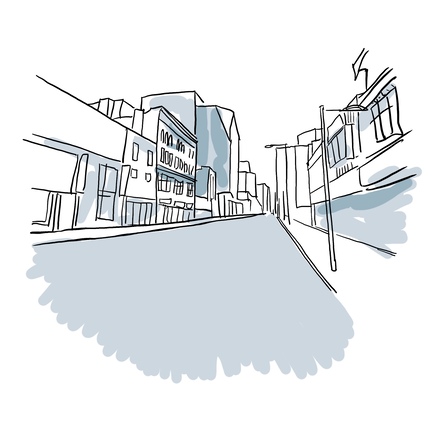
Dividing the city from north to south, Yonge Street is Toronto’s main thoroughfare. Designed by John Graves Simcoe, the first Lieutenant Governor of Upper Canada and the founder of Toronto, the street was part of the concession road system planned by the colonial government in Ontario.
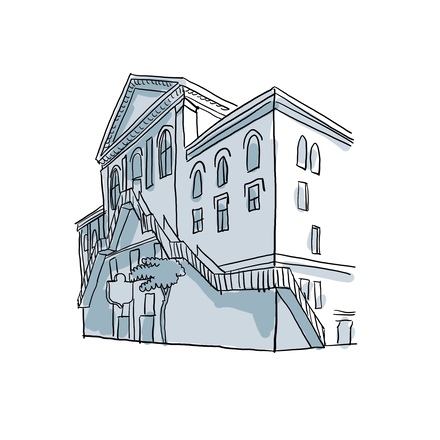
Known as the oldest and most prestigious concert hall in the country, Massey Music Hall rejuvenated Toronto’s music industry. It first opened its doors in 1894, thanks to the vision of one man: Hart Massey. A wealthy industrialist and city native, he built this venue as a tribute to his son Charles, who passed away from typhoid fever.
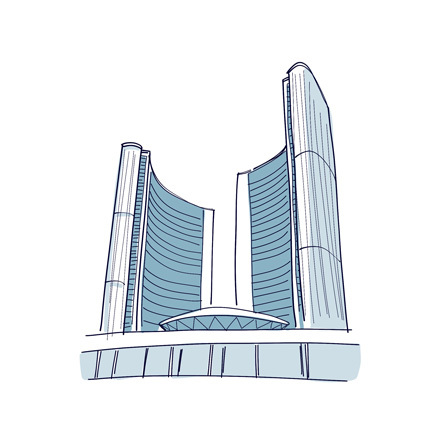
An example of modernism, Toronto City Hall is one of the most recognisable landmarks of the town. Inaugurated in 1965, this impressive structure was born from the largest architecture competition ever held by a city.

More than just the forecourt of City Hall, Nathan Phillips Square—named in honour of a former mayor of Toronto—is THE central plaza of the city. Inaugurated in 1965 on the grounds of a former 20th century immigrant neighbourhood, known as The Ward, this place is one of the main venues for festivals and various seasonal events.
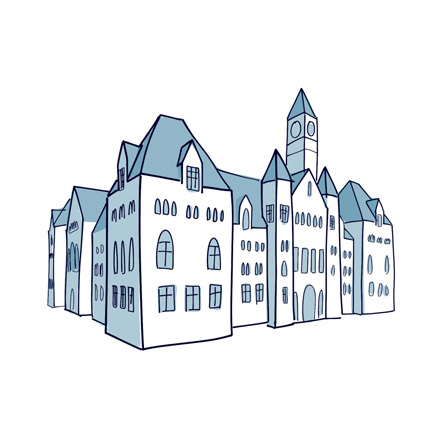
Far from being as modern as its successor, Toronto’s Old City Hall is one of the most emblematic monuments in the city's history. Inaugurated in 1899 after ten years of construction, this neo-Romanesque building was the largest municipal structure in all of North America at the time.
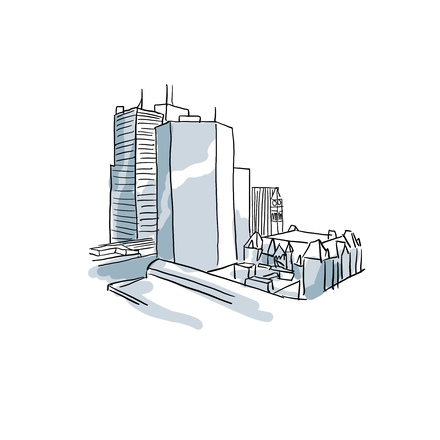
It’s hard to miss the numerous skyscrapers that make up Toronto’s renowned Financial District. While Montreal remains the hub of Canada’s financial industry, Toronto has increased its financial influence through a series of skyscrapers built into its skyline.
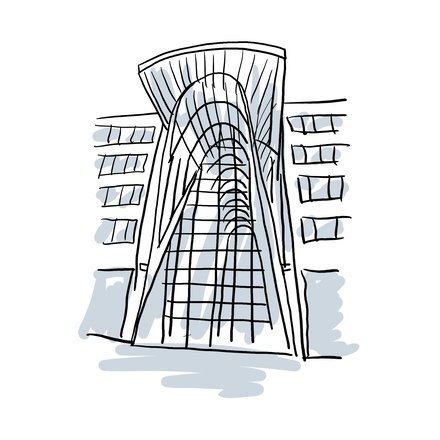
While it primarily serves as a pedestrian walkway between the two Brookfield towers, the Allen Lambert Galleria—named in honour of the former Toronto-Dominion Bank president—is a masterpiece of modern architecture. Its spectacular steel-and-glass roof is one of the most photographed spots in Toronto’s financial district.
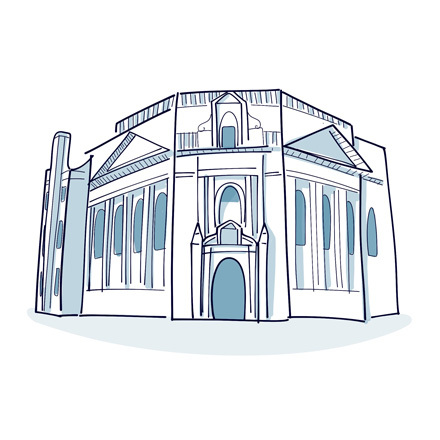
Since 1993, the Hockey Hall of Fame has been housed in the former Bank of Montreal building. A tribute to Canada’s national sport, it was meant to open over 200 km away in Kingston, the city believed to be the birthplace of hockey, but the Hall of Fame was ultimately established in Toronto on August 26, 1961.

The Gooderham Building is an iconic part of Toronto, with an irresistible old-world charm. Before its grand opening in 1891 at the intersection of Front and Wellington Streets, the corner was occupied by its smaller and shorter predecessor, the Coffin Block.
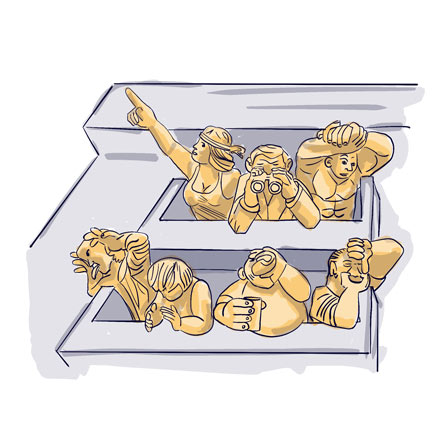
Opened in 2013, the Rod Robbie Bridge is an elegant elevated pedestrian walkway that links Front West Street to the CN Tower and Rogers Centre area. Walking across it, you take an outdoor route that pays tribute to one of Toronto’s most influential architects, Rod Robbie, best known for designing the iconic Rogers Centre and its groundbreaking retractable roof.
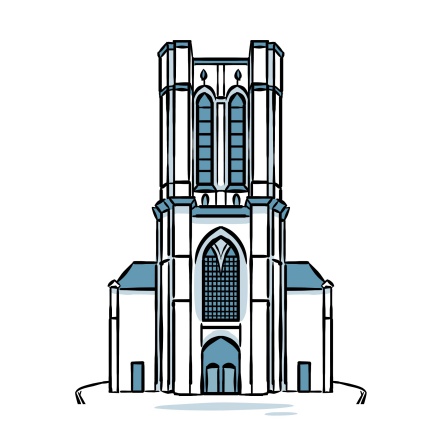
Just as beautiful by day as it is by night, Saint Michael’s Church shows up on plenty of Ghent’s postcards. But behind its picture-perfect façade lies a turbulent history. Construction began in 1440, replacing a Romanesque chapel from the 11th

To soak up Ghent at its most charming and laid-back, there’s no better place than along the canals. Two of the most beautiful spots in the city—Korenlei and Graslei—once formed the heart of Ghent’s bustling medieval port. Situated at the
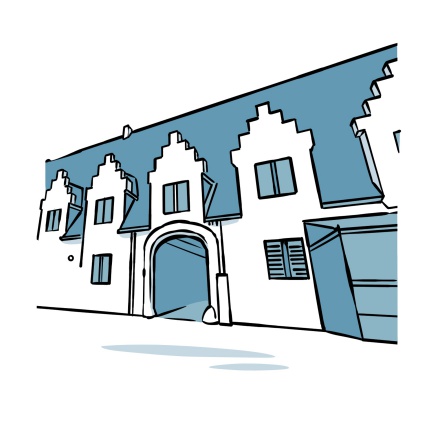
The long building in front of you is Ghent’s former Great Butchers' Hall, listed as a historical monument since 1943. It was built in 1407 by the city’s architect to replace an older wooden meat market that had fallen into disrepair. In medieval
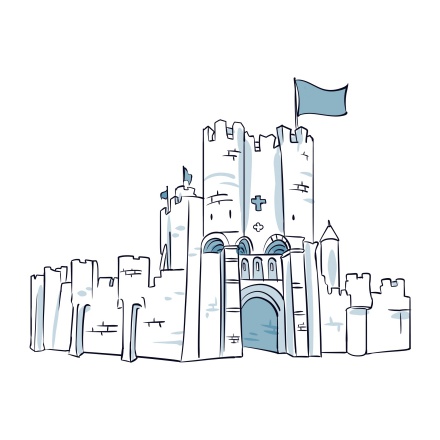
No visit to Ghent would be complete without stopping at the Castle of the Counts. Proud, imposing, and a little defiant, this fortress was built in 1180 by Count Philip of Alsace. It rose on the ruins of earlier wooden defenses dating back to the 9th
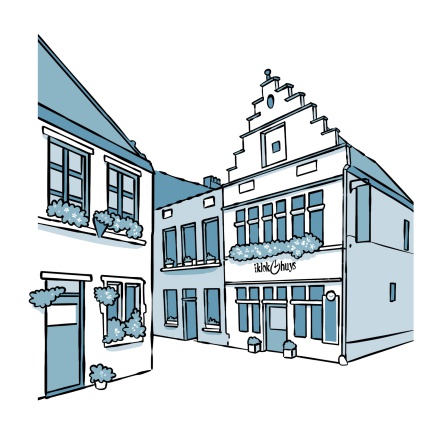
This is where Ghent’s medieval soul comes to life, just outside the castle gates. Welcome to Patershol—a city within the city. This charming district is like stepping back in time, with its narrow cobbled lanes and rows of medieval houses.
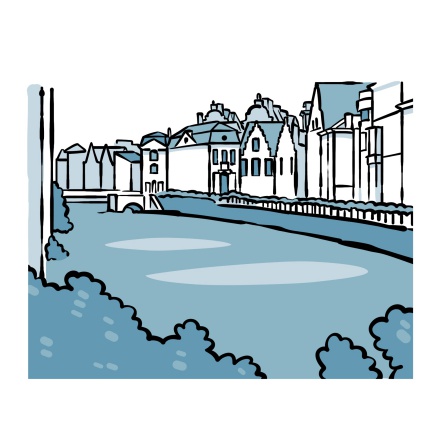
A city built on water, Ghent sits at the confluence of two rivers: the Scheldt and the Lys. This unique setting means that the city is woven through with canals—much like its older sister, Bruges. Historically, the Lys greatly contributed to the city’s
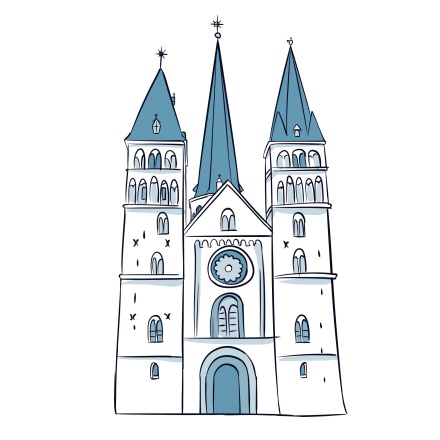
Saint James' Church reflects centuries of religious architecture, marked by several transformations, destruction, and expansions. It dates back to the 11th century, when a wooden church stood here, dedicated to Saint James and serving pilgrims
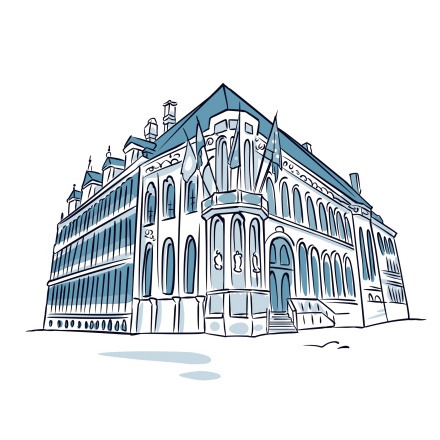
As you approach this impressive building, don’t be surprised if you spot a few grains of rice or rose petals on the ground—it’s a common sight here. That’s because Ghent’s Town Hall, just on your right, is a popular spot for weddings. Its
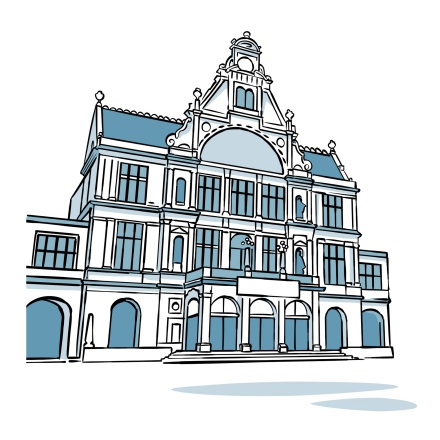
Tucked between two of Ghent’s most iconic landmarks, the Royal Theatre of Ghent is hard to miss, with its vibrant façade and statues of Apollo and the muses watching from above. It was built in the 19th century, on Sint-Baafsplein, one of
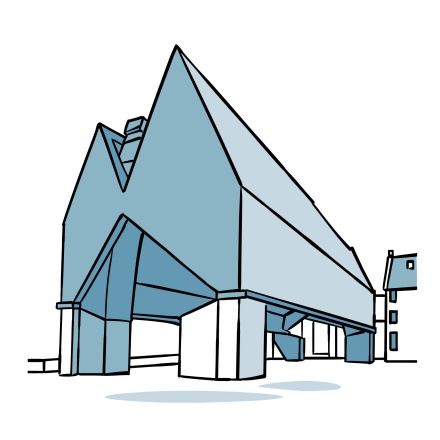
The Stadshal stands in stark contrast to the surrounding buildings, and has served as Ghent’s municipal hall since its inauguration in 2012. Designed by a team of Flemish architects, it’s a bold example of contemporary architecture—instantly
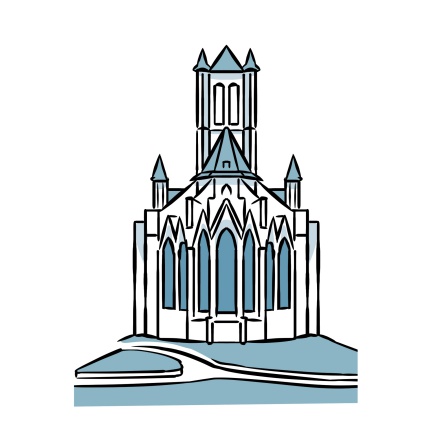
Whether for its age or its striking blue-grey Tournai stone, Saint Nicholas’ Church instantly catches your eye. Built in the 13th century, it’s a prime example of Scheldt Gothic—a Romanesque-Gothic blend typical of the old County of Flanders.
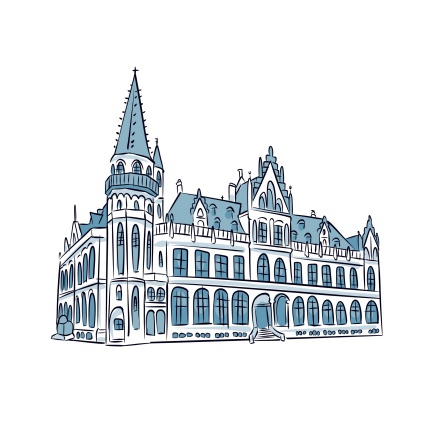
Built for the 1913 World’s Fair, the former post office building is a true Ghent gem, and a must-see. With its blend of neo-Gothic and neo-Renaissance architecture, the structure is remarkably well preserved, catching your eye from all sides.
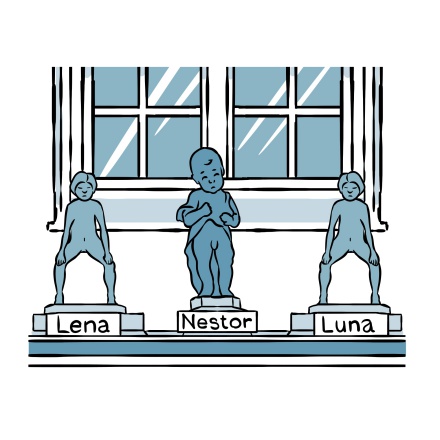
If Brussels is known for its famous Manneken Pis, Ghent can do one better—with not just one, but four of them! Look above the entrance in front of you, and you’ll spot three tiny statues—completely naked. The one in the center, also
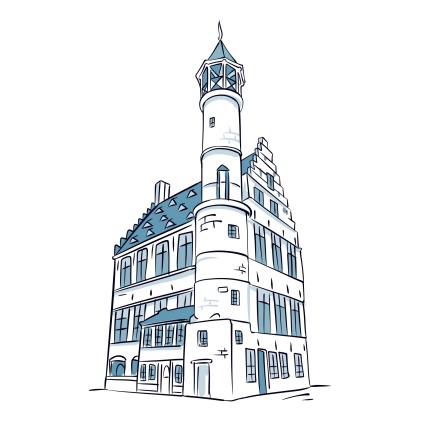
You’ll recognise the Toreken right away by the little turret in its corner. It’s actually the oldest building on this square called Vrijdagmarkt. Dating back to the 15th century, it was originally the Tanners' Guildhall, a place for selling leather goods. Over the centuries, this building has seen it all: joy, celebration, and some very dark moments.
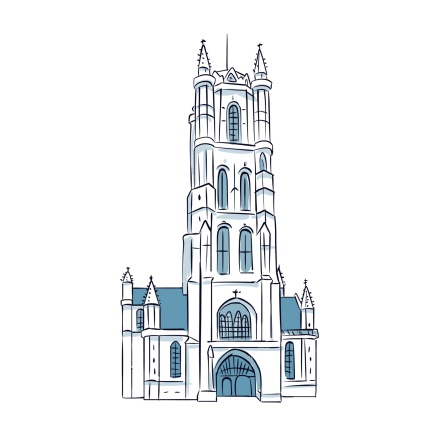
Undoubtedly one of Ghent’s most iconic landmarks, Saint Bavo’s Cathedral rises proudly above the city skyline—there’s no missing it. Back in the Middle Ages, as Ghent flourished and grew in power, it poured its wealth into grand religious
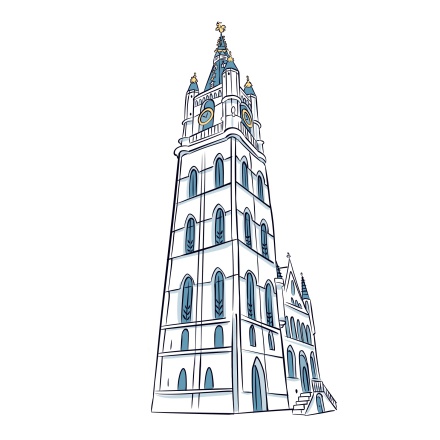
Rising 91 metres high, the Belfry is one of the most striking features of Ghent’s historic skyline. Built in two stages during the 14th century, this Gothic tower came to symbolise the city’s freedom, wealth, and growing independence. That

A favourite spot among romantics at heart, Saint Michael’s Bridge is known for its peaceful and picture-perfect atmosphere. Its history is quite simple—originally a flat swing bridge, it was replaced by the elegant stone structure you see today in
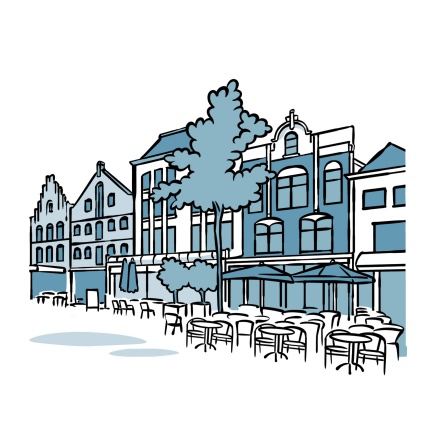
Korenmarkt is one of the city’s most iconic and popular squares, located at the crossroads of Ghent’s two busiest shopping streets. Taking a break here means joining the lively crowd of locals and visitors, whether it’s for a catch-up over coffee or
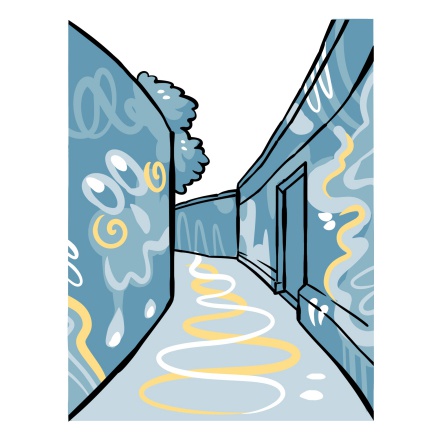
As you explore Ghent, you’ll notice street art nearly everywhere you look. Cultural, open-minded, and in with the times, this Flemish city has developed a real love for urban art. Keep an eye out for works by big-name Belgian artists like Roa or


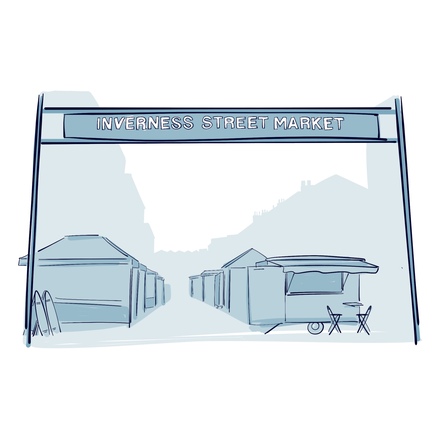
On your left is Inverness Market, Camden Town's smallest market. Here you'll find everything from food to cheap souvenirs and second-hand goods.
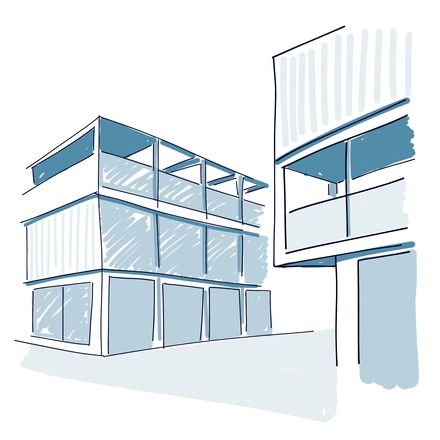
On your right, just a few meters from Inverness Market, you'll find Buck Street Market housed in a uniquely structured building made from recycled shipping containers.
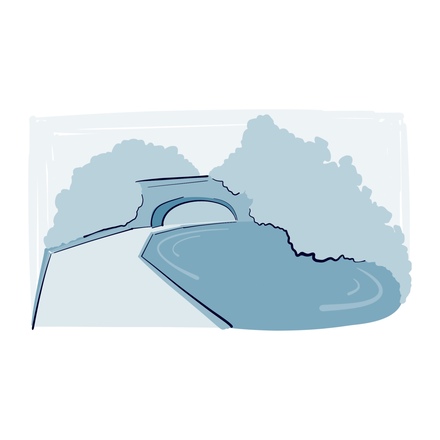
This is Regent's Canal, a man-made canal that gives Camden Town its charm!
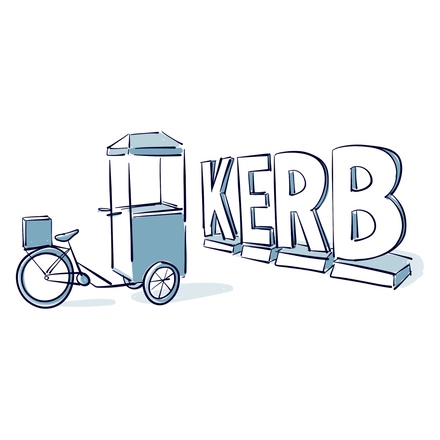
Right here is where you'll find the very best in fast food stalls, for a gourmet break in the heart of Camden Town!
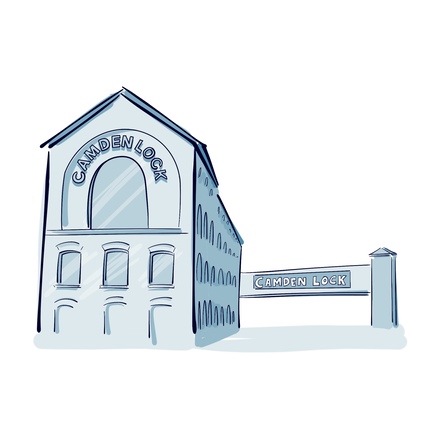
Camden Lock Market is full of little treasures to take home, from jewelry and accessories to handmade crafts.
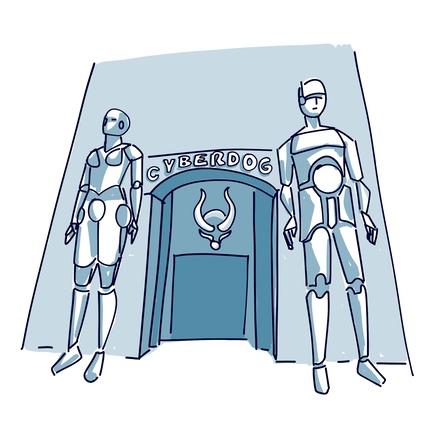
Here you are in front of the most extravagant shop in London! Amidst stands selling second-hand clothes, antiques and street food, this shop is totally futuristic!
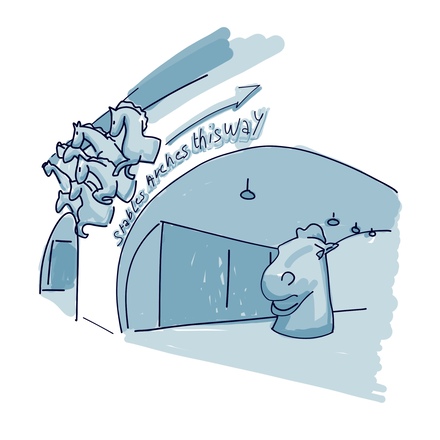
Here, you'll discover yet another market with its own distinctive feature: it's located in the heart of what used to be Camden Town's stables!
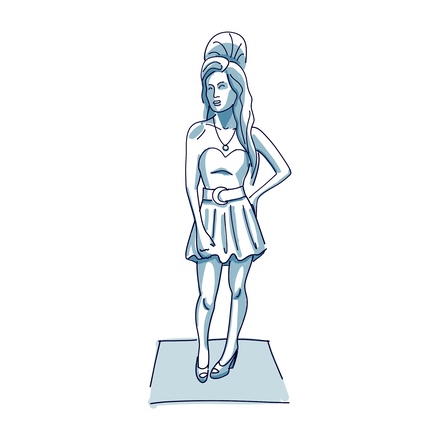
Amy Winehouse, an international music star with a highly recognisable voice, is honoured here with this stunning life-size statue

This is the heart of the charming Primerose Hill district. This neighbourhood is less busy than Camden Town, though it's just as fascinating!

Colourful houses line this small square in the heart of Primrose Hill.

Standingat the top of the famous Primrose Hill, you can enjoy one of London's most iconic and popular views.
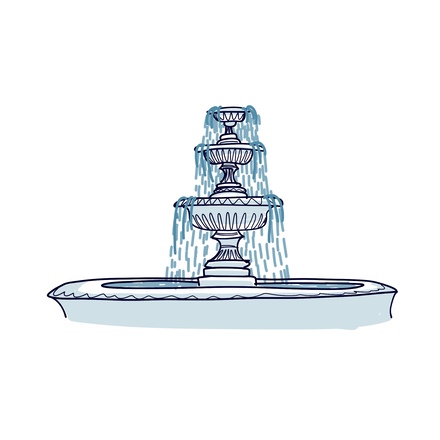
You're stepping into one of the capital's largest royal parks!
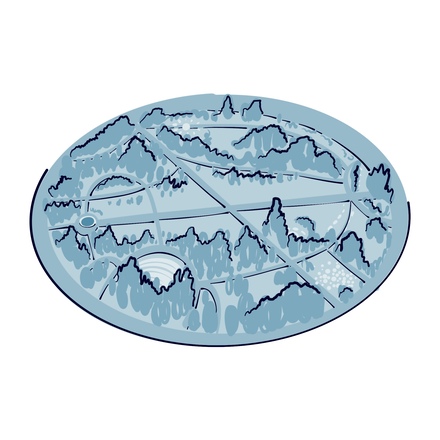
Regent's Park is surrounded by two circular ring roads, the Outer Circle and the Inner Circle.
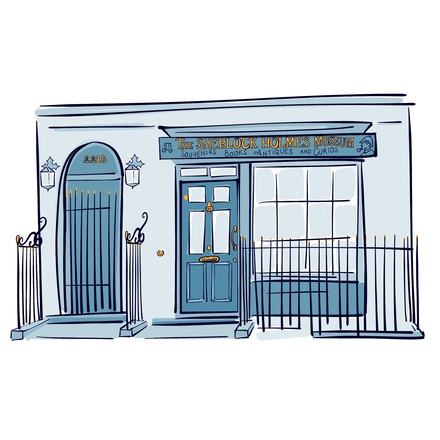
Fans of the great British detective should take note! Here you are in front of the Sherlock Holmes Museum, located at 221b Baker Street, the real address of this fictional character...
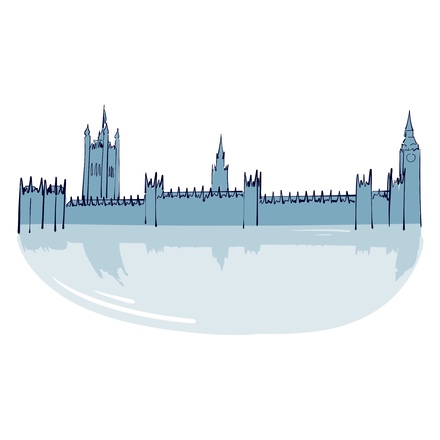
Welcome to the heart of the City of Westminster, which covers most of West London. Westminster is a historic district and the political centre of the English capital.
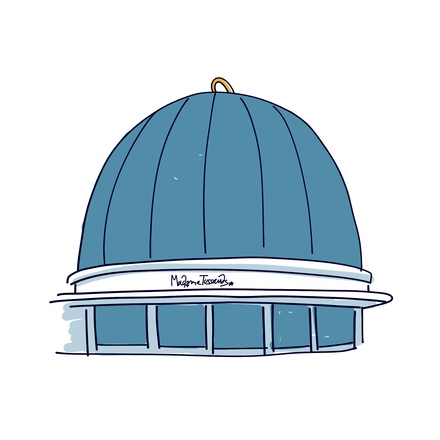
This is probably the most famous wax museum in the world! Here you can take photos with some of the world's biggest stars and most influential personalities.

This is one of the most beautiful parts of Regent's Park! Although the park was first laid out in the 19th century, it wasn't until 1930 that these sumptuous gardens were added.
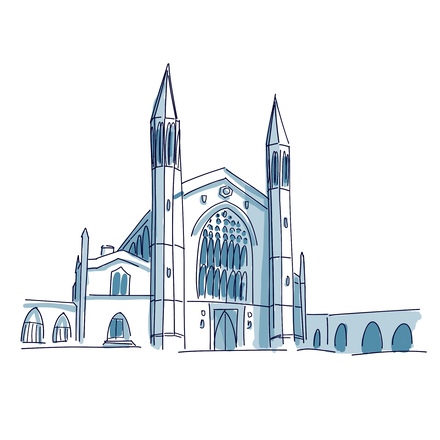
This pretty Danish church is just a stone's throw from Regent's Park.
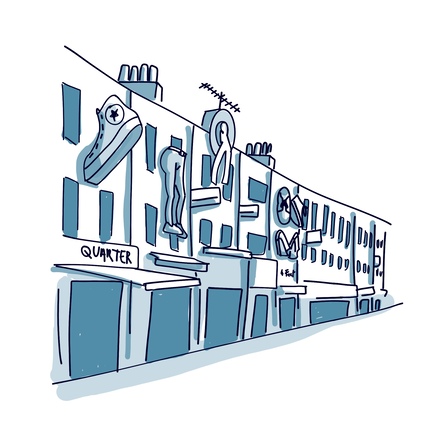
It's no coincidence that London is known as the cosmopolitan Capital!
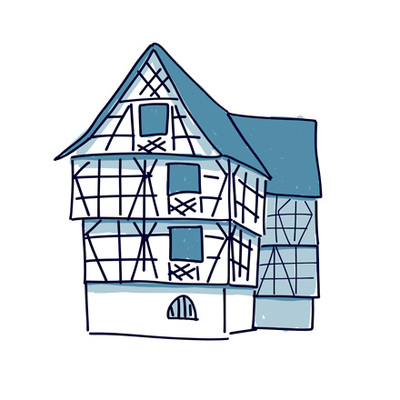
In the Middle Ages, this neighborhood was home to millers and tanners, as it was very convenient to have all these river channels at easy reach. The Tanners' House, listed as a historical monument, is a fine example of this. It was built in 1572, during the Renaissance period in Strasbourg.
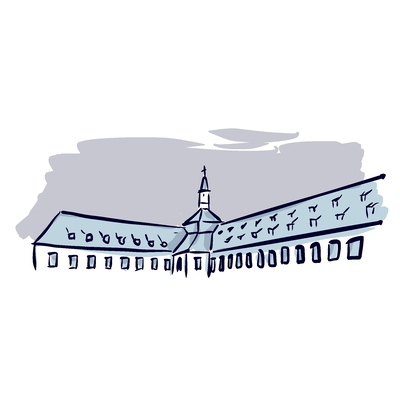
Here you find yourself at the crossroads of ancient and modern. Behind you, you'll find a contemporary building facing the former Sainte-Marguerite prison. And yet, the two buildings are joined as one to form the headquarters of the National Institute of public service, known as INSP.

Here you find yourself at the crossroads of ancient and modern. Behind you, you'll find a contemporary building facing the former Sainte-Marguerite prison. And yet, the two buildings are joined as one to form the headquarters of the National Institute of public service, known as INSP.
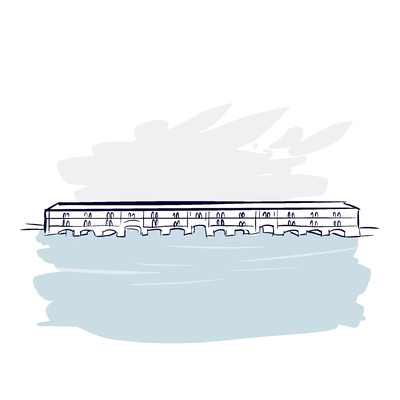
You're now standing in front of the Vauban dam. The moment Strasbourg became part of France, Vauban, French military engineer and Marshal of France, was requisitioned to upgrade the city's defenses.

You're now standing on Strasbourg's famous covered bridges. They've been uncovered since 1784, but hey, the name's quite catchy, so we might as well stick with it. The three imposing towers date back to the 14th century!

This historic little bridge, known as Pheasant Bridge or simply Swing Bridge, offers a picturesque view of Petite France. It swivels from right to left to allow barges and boats to pass.

You're now crossing the so-called Passerelle des Anciennes-Glacières, the Old Icehouses footbridge. The name may raise a few questions, so here's an explanation. The famous "anciennes glacières" are the group of buildings you see behind you, with the tower bearing the inscription "Hôtel".
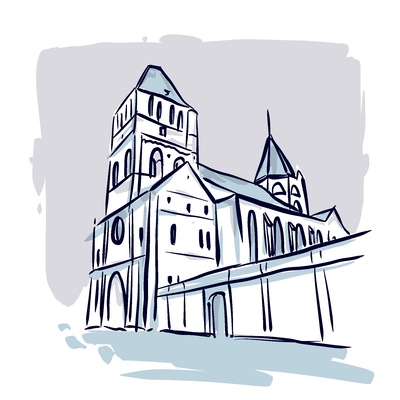
There's more to Strasbourg than its cathedral! The Protestant church of St. Thomas is a magnificent example of Alsatian Gothic art.
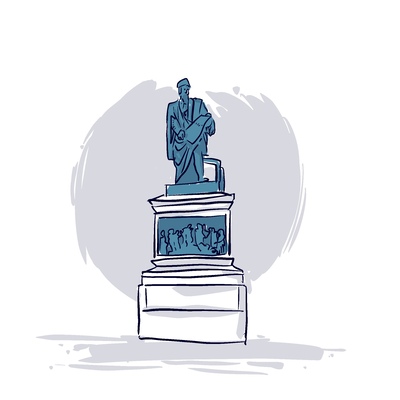
This square, built around 1100, is one of the oldest in Strasbourg. It was the city's historical center up until the French Revolution. It is occupied by a magnificent building, typical of Renaissance architecture; it’s the Chamber of Commerce and Industry.

Truth be told, the thing about this enormous cathedral is that you can't seem to stand far enough away to fully see it and get the best shots.

You'll find the entrance to the Alsatian Museum right on the Saint-Nicolas quay. The museum opened in 1907 and occupies three houses of typical Alsatian architecture. Here, you will find a vast collection of objects tracing the daily life of Alsatians over the centuries.

I'd like to direct your attention to the brasserie "Au Canon", at the corner of rue d'Austerlitz. You'll see a peculiar canon shell on its façade, which seems to have been halted in mid-flight. There are a total of 8 shells scattered around Strasbourg.
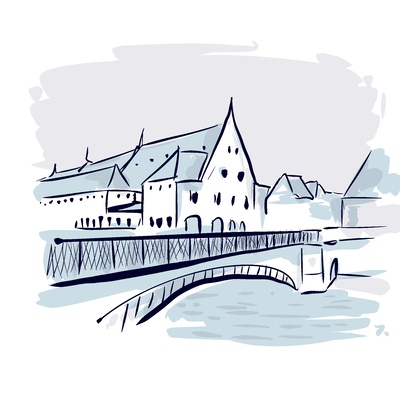
From the 14th to the 17th century, this square was known as "Bei der Schindbrücke". For those who don't speak Alsatian, this translates to "near the bridge of torment". Charming, isn't it?

Overlooking the town center, you have the old customs house on your left and the old butcher's shop on your right. A word about these iconic buildings. The customs house is a fine reminder of the town's prosperity thanks to its river trade.
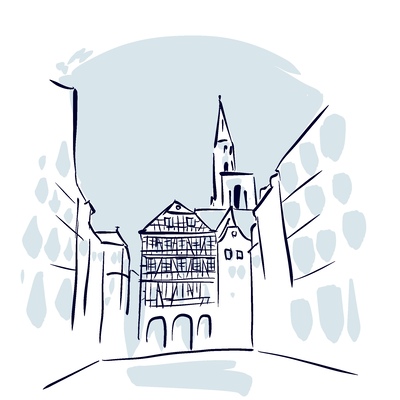
You've reached the suckling pig market square. Such a big name for such a small square. No subtleties here, they simply sold suckling pigs, and later pork in general.
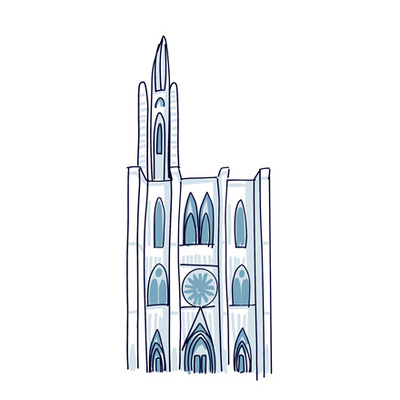
You're standing in front of Strasbourg's Notre-Dame Cathedral; about 4 million people visit it every year. It's a "gigantic and delicate marvel" as Victor Hugo put it.
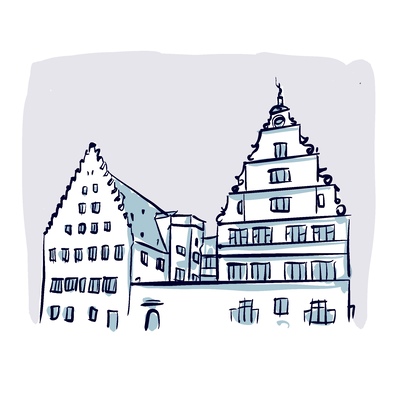
The two gingerbread houses opposite the cathedral are the œuvre de Notre-Dame Foundation and its museum, both raising funds for the maintenance of the cathedral. Right next door is Rohan Palace, another emblematic building of the city.

From here, you have a wonderful view of the exterior façade of Rohan Palace, with its 17 perfectly aligned windows overlooking the Ill river. It's the river that flows through Alsace.
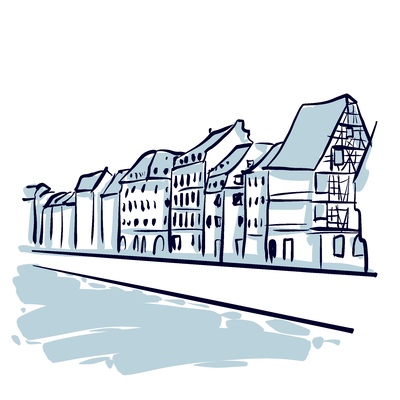
You're now walking along the quays, known as the boatmen's quays, named after the boatmen that once worked here. Today, they are entirely pedestrianized.
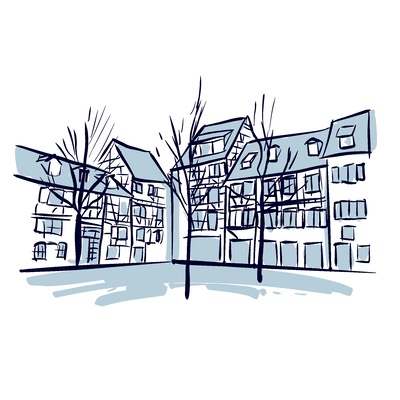
The Gayot market square greets you with open arms! It would be unthinkable not to stop for a drink in one of its many restaurants. But before becoming a popular and convivial place to live, the Gayot market square was once occupied by a canons' house.
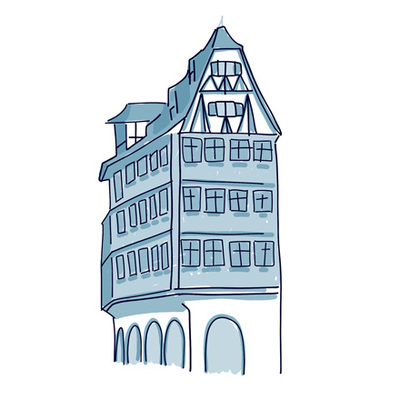
Right next to the cathedral, there's the famous Kammerzell house. It owes its name to the Kammerzell grocer who lived there in the 19th century.
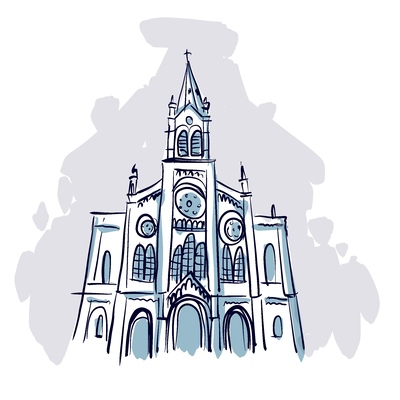
This huge church, standing on this semi-circular square, is Strasbourg's Temple Neuf. Back in the 13th century, it was home to a Dominican convent.

This long square, lined with lime trees and mansions, is home to the famous Strasbourg Christmas market year after year. If you've come for the occasion, the square is likely bustling and aglow with festive lights.

You're now looking at the Strasbourg Opera House. It's one of the three artistic departments of the Opéra national du Rhin, an opera company jointly run by the cities of Strasbourg, Mulhouse and Colmar.
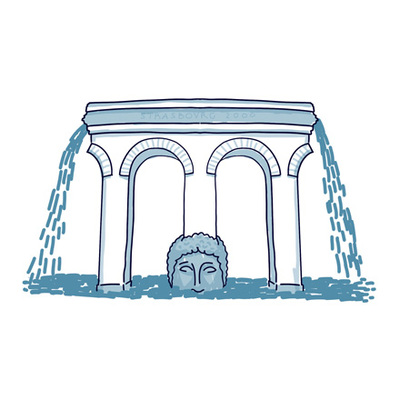
This beautiful fountain that must have drawn your attention is the Janus Fountain, also known as the Fountain of the Birth of Civilization. Janus is the Roman God of beginnings and endings.
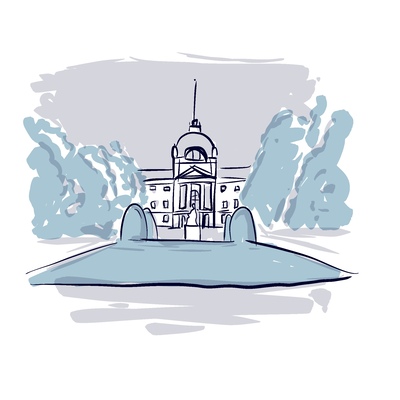
This park-like square tells us a lot about Strasbourg's history. You're at the very heart of the new city, built by the Germans – or, rather, at the time, the Prussians.

From the Fonderie bridge, you have a magnificent view of the Courthouse and the Catholic Church of Saint-Pierre-le-Jeune, a beautiful structure built in pink and red brick and crowned with the largest dome in Alsace.
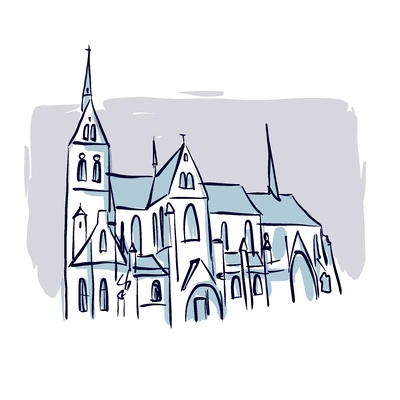
So, this is the Protestant church of Saint-Pierre-le-Jeune. Before the new Catholic church of Saint-Pierre-le-jeune was built, Catholics and Protestants shared the very same building, the one in front of you.
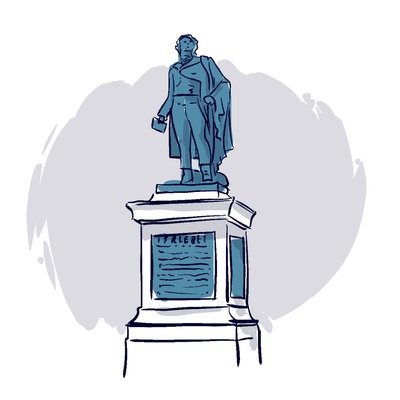
Like all main squares in France, this is where the crowds meet, whether for a World Cup victory, a gigantic Christmas tree or a protest. The square was named Kléber in honor of the Strasbourg general assassinated during the French campaigns in Egypt.

Take a moment to look at the imposing Galeries Lafayette building. Yes, it's a department store, but its architecture is quite remarkable.
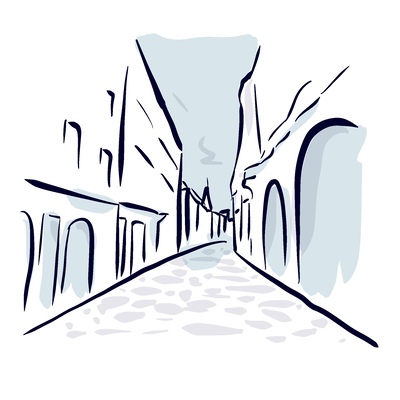
Grand-Rue, the town's historic thoroughfare, follows the ancient Roman road that ran from Strasbourg all the way to Saverne. It was split in 2 in the 1920s during the Grande Percée, a rather ambitious urban modernization project at the end of the 19th century.
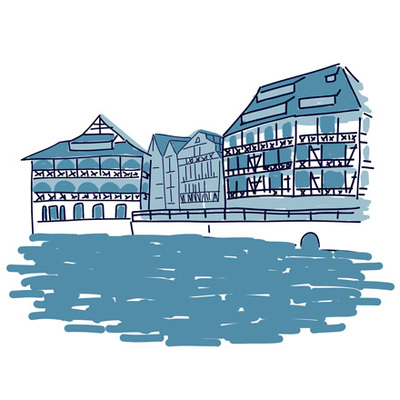
Let's jump into the heart of the matter! The Strasbourg you had in mind. The postcard of the famous Petite France. But why Little France? The origin of the name is far less charming than the actual neighborhood.
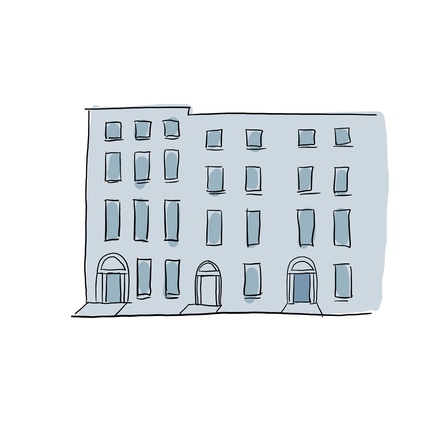
Scattered throughout the city, Georgian houses are a common sight in Ireland, even more so in Dublin. You can easily recognise them with their brick facades and white-framed windows.
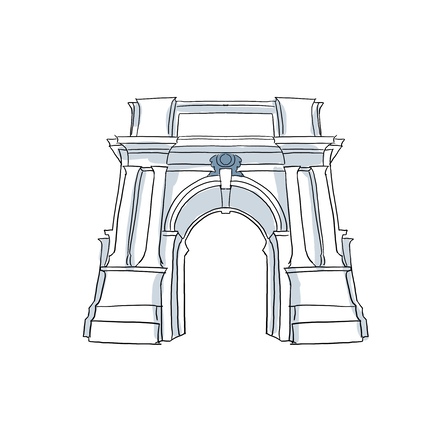
Whether in winter or summer, you can appreciate St Stephen’s Green at any time of the year! Used as grazing land until 1663, the government then enclosed the 9-hectare plot. This area was transformed the following year
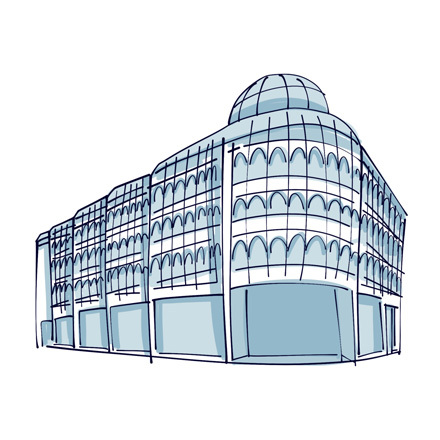
A sanctuary for any shopaholic, Stephen’s Green Shopping Centre is an absolutely gigantic shopping mall, built on the site of the former Dandelion Market, where U2 held their first concerts.
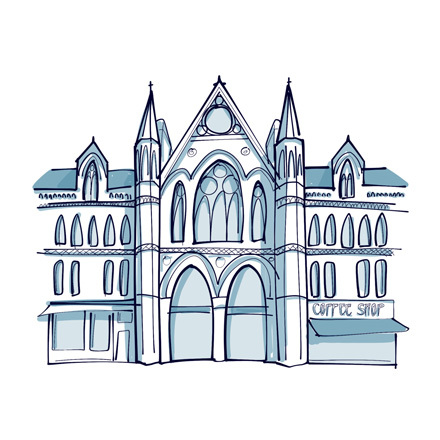
George’s Street Arcade has been a popular spot in Dublin ever since its opening in 1881. It is a stunning example of Victorian architecture with characteristic red brick façade. It used to be called South City Markets.
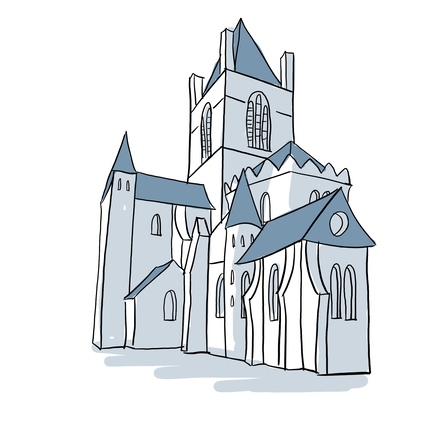
A true jewel of the city center, Dublin Castle itself represents a big part of the city’s history. Ordered by King John of England, it was built in 1204 on what was once an old Viking fort.
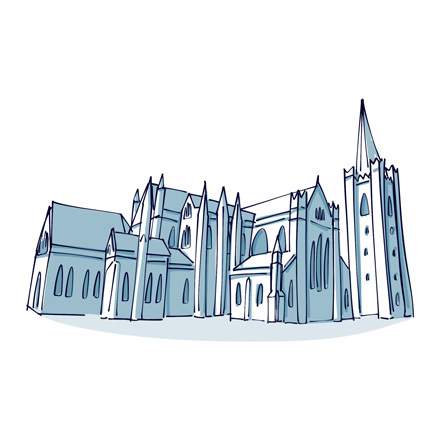
St. Patrick’s Cathedral was built on an ancient place of worship dating back from the 5th century. According to Irish tales, in the year 450, Saint Patrick used a well at this very spot to baptise several of his
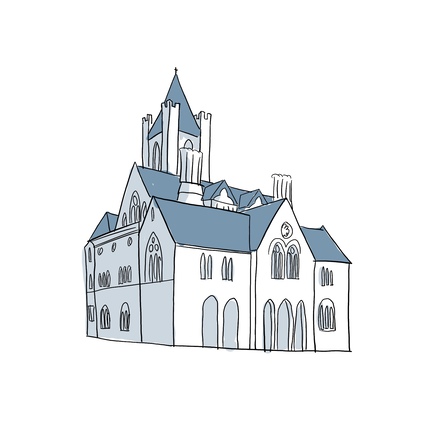
Unmissable, the Dublinia Museum is the perfect place to learn about the city’s medieval history. A favorite among tourists for its striking cultural offering, the site benefits from a neo-Gothic style that instantly
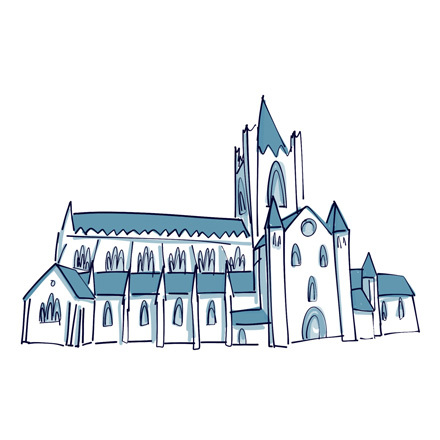
A true emblem of the city's medieval heritage, Christ Church Cathedral is a must-visit for history fans. To set the scene, it's important to know that the first wooden structure was built on this land in 1038 by Sitric

You’ve probably already guessed it from the bright red façade of the famous pub on the corner—you are now in the heart of the very popular and vibrant Temple Bar district. No, the area wasn’t named after the pub

Dublin is crossed by the famous River Liffey, offering more than 23 bridges to travel from one bank to the other. With so much choice, it can be hard to decide which one to take—but luckily, the Ha’penny Bridge is here
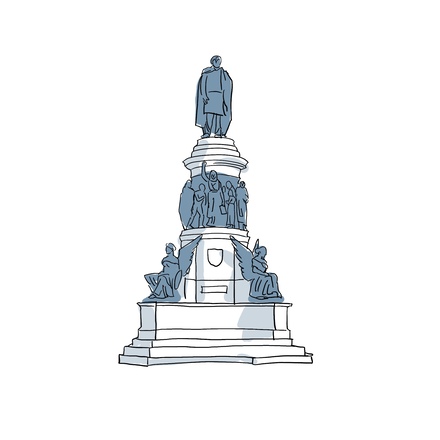
Just like Oxford Street in London, O’Connell Street is Dublin’s main road. No matter what time of the day you come here, this bustling shopping and tourist destination is almost always packed with people.
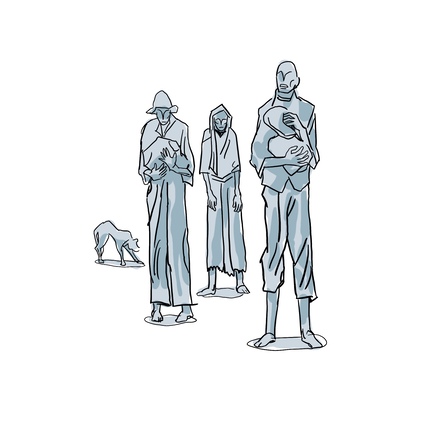
Neither crowded nor particularly massive, this memorial holds a special place in Dubliners’ hearts. Between 1845 and 1849, Ireland was devastated by the Great Famine, a period of extreme poverty and mass death.

Moored along the north quay of the city, this magnificent three-masted ship is the Jeanie Johnston. A faithful replica of the Canadian-built vessel, it was originally constructed in Quebec in 1847.

Standing proud on the north bank of River Liffey, the Custom House is a landmark of Georgian architecture. Designed by James Gandon, one of the most influential architects of his time, the building required a massive
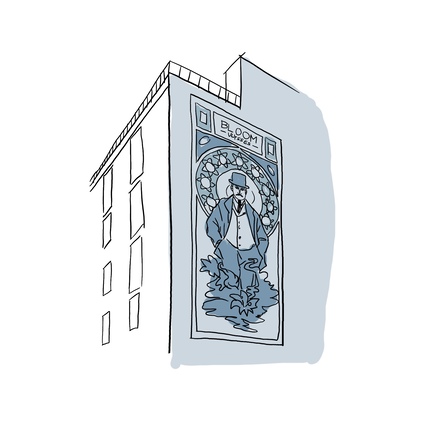
More famous for its façades than for its certainly respectable services, the Bloom Hotel is a completely unplanned stop on our itinerary. For those who might not know, Dublin is as inseparable from its Guinness beer as
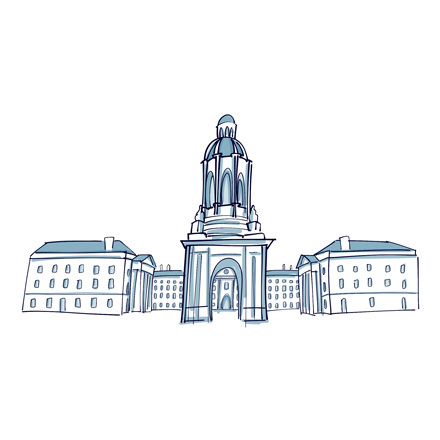
What would Dublin be without its prestigious Trinity College? Considered one of the best universities in Europe and the oldest in Ireland, this institution has long been a cornerstone of education. Founded in 1592 by
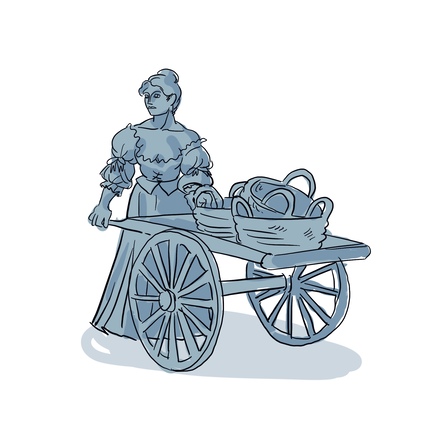
Hidden among passersbys since 1988, this ancient statue tells visitors an important story for Irish people. While some may start singing the city’s unofficial anthem to tell her story, we’ve opted for a more reserved

Just like a film you watch many times before finally understanding it, Dublin reveals its history little by little. There are some things you’re already aware of before coming here, like its countless pubs and its beer
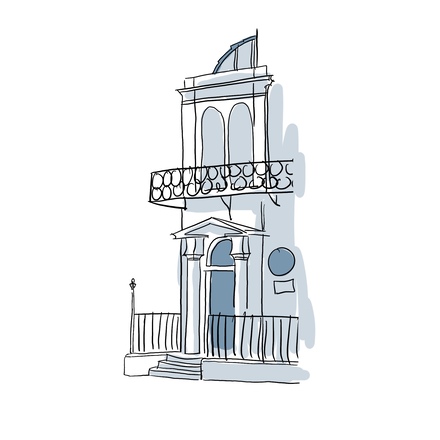
Welcome to one of Dublin’s many cultural landmarks! This Georgian building opposite Merrion Square is where Oscar Wilde used to live. It is now both a museum and home to the prestigious American College Dublin

Dublin is home to an endless number of statues honoring figures who forever marked the city’s history, but the one before you is particularly striking. This is Oscar Wilde, his grand statue reflecting the inspiring
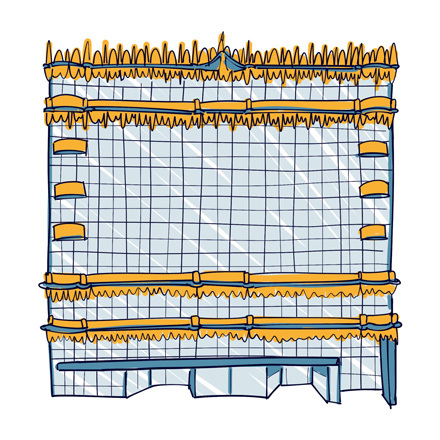
Yes, we're in the Financial District, so of course what we're primarily admiring here are historical buildings! Let me introduce you to you the rather incredible looking Hallidie Building. Well, you have to like picture windows and gilding, but it sure has style.

I think this arch speaks for itself and you probably understood that you're about to enter San Francisco's famous Chinatown. This is the Dragon's Gate marking the southern entrance to the district. The gate was gifted in 1969 by the Republic of China, which provided the materials for its construction.

Here we stand before the Old St. Mary's Cathedral. Yes, the "Old" part implies there's a "New" St. Mary's Cathedral nearby, and if you're interested in a rather peculiar religious structure, I'd suggest paying it a visit as well. For now let's focus on the original St. Mary'.

The junctions of Chinatown's main streets usually offer great photo opportunities. Here, you'll get a good overview, with the typical street lamps, the painted walls mixing Chinese tradition and American dream, the red lanterns, the view of the skyscrapers, and even a few representations of the soldiers of the Xian Terracotta Army.

In the 19th century, city laws prohibited Chinese people from settling outside of Chinatown. That's why you'll find the oldest temples nestled in this neighborhood. As you walk along, on your left, you'll spot the Tin How Temple.

Before heading down Columbus Avenue, take a look at the building on the corner. This mini pedestrian plaza links Chinatown to North Beach. The painted wall is a tribute to jazz, and the open books hanging from cables is a permanent work of art called the “language of birds”.
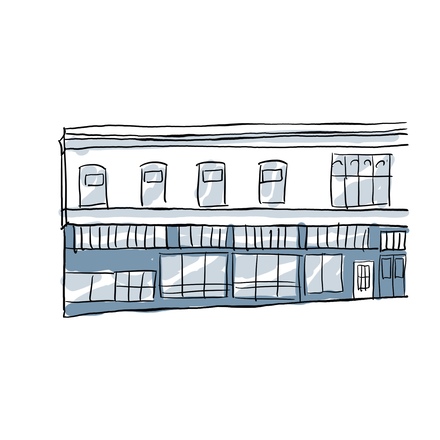
On your right, you'll find the iconic independent bookstore: City Lights Booksellers. A highlight for literature enthusiasts and fans of Beatnik culture, this bookstore stands as a symbol of the Beat Generation. It was among the pioneering bookstores to offer paperback books

Colombus avenue is the only diagonal street in the neighborhood. It offers the perfect perspective to admire the Transamerica Pyramid. Trust me, it's much more impressive from this angle than head-on! Despite facing heavy criticism during its construction for its futuristic and somewhat unsettling appearance

The reason we took a detour down this small alley is to visit a true local gem: the Golden Gate Fortune Cookie Factory! But before we dive into that, let's talk about the "Golden Gate" label. You've probably noticed that everything in this area seems to be named Golden Gate something, right?
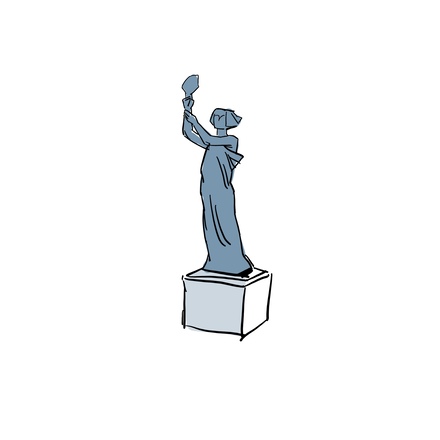
Here we are, right in the heart of Chinatown, and as a matter of fact, in the heart of San Francisco itself. Portsmouth Square is located on the spot of the first Mexican settlement in Yerba Buena, which was San Francisco's original name until 1847.
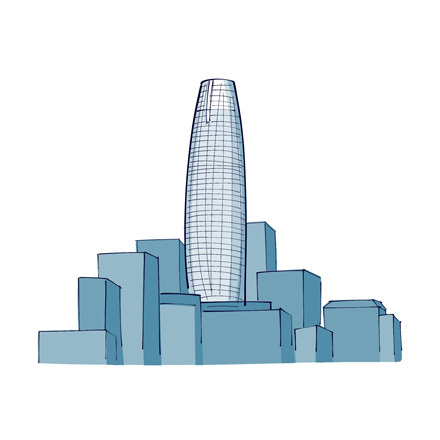
You are now at the base of the city's tallest skyscraper. Yes, it's hard to appreciate its gigantism from up close, but of course you've been seeing it from a distance all day. What we're interested in now is its interior, because yes, quite frankly, I'd advise you to take a tour

Take a look at this little plaza on your left, across from Golden Gate University. Here you'll find several small but rather uncommon artworks. Urban art flourishes here and there, lending a lighter tone to the seriousness of the Financial District.

Here you stand, on the small plaza at the corner in front of the famous Market Street. This is one of the city's main streets. If you follow it, you'll go through the entire downtown area, past the Civic Center, the Castro district and end your journey at the base of the Twin Peaks hills.
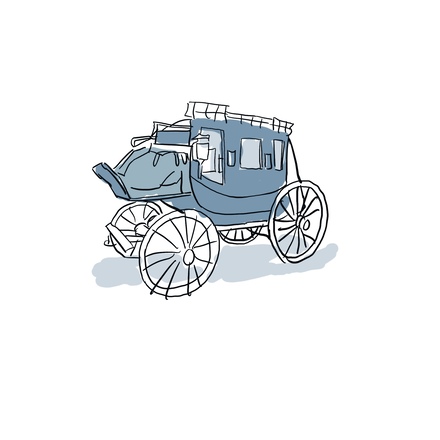
Alright, it's time to channel your inner gold seeker! The Wells Fargo History Museum is an absolute highlight for adventure enthusiasts and anyone fascinated by America's Gold Rush era. And the best part?
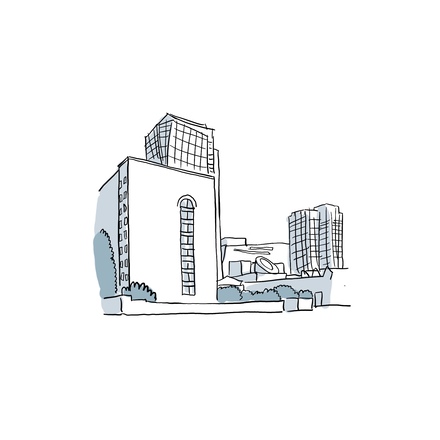
Here you are at the pleasant little Jessie Square, facing both the Contemporary Jewish Museum and Saint Patrick's Church. The museum, founded in 1984, presents a modern and in-depth vision of Jewish culture and history.
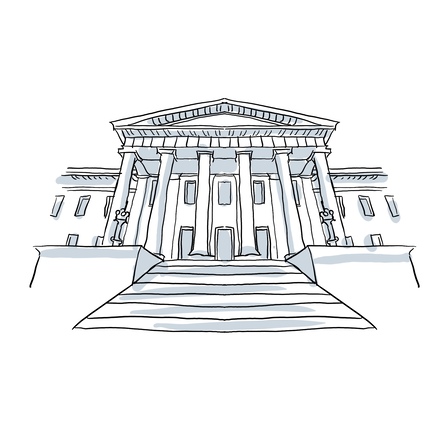
That huge columned building right in front of you is the Old San Francisco Mint. It's a branch of the United States Mint, an independent government agency responsible for producing and putting American coins in circulation.

Ever wondered how San Francisco's iconic cable cars manage to turn around? Well, the answer lies right here at the cable car turntable! San Francisco's tramway system is unique — it's actually a cable car system, or a lift system, as cars are pulled by cables.
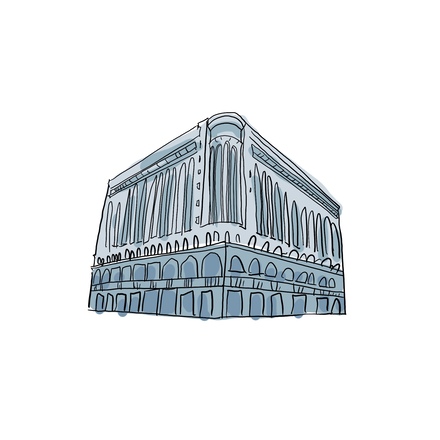
Take a moment to inspect this the green-toned building you see across the street. This is the Pacific Building built in 1907, right after the devastatingearthquake. At the time, the city was looking for an architect who could build earthquake-resistant structures.
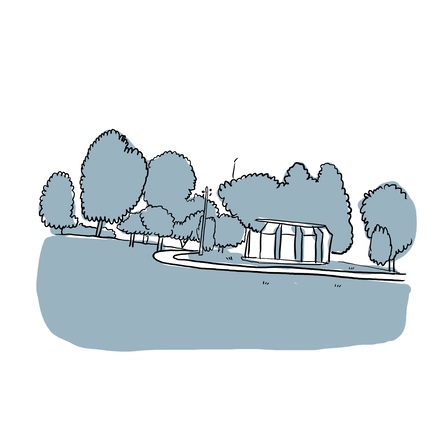
The Yerba Buena Gardens are just on the other side of the street. As you may know, Yerba Buena was the original name of San Francisco. Allow me to tell you it’s story while you wander through the gardens.

That cast iron fountain is quite beautiful. So beautiful that it's almost strange to see it wedged between two crosswalks. It’s called Lotta's Fountain. Lotta, named after the actress who commissioned and donated it to the city of San Francisco in 1875.

If you can, do sit down here , on the steps around the subway exit for example, and look up. Lost in the middle of skyscrapers, sometimes you have to stop and take the time to look up to realize the beauty and singularity of each building.
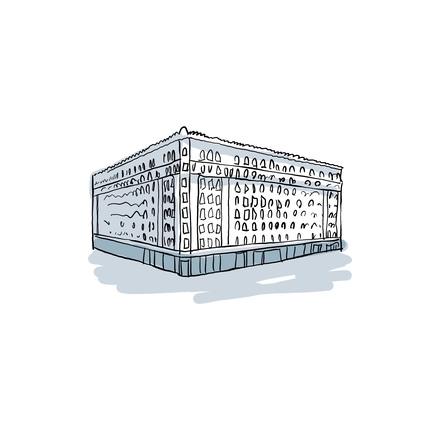
You're now standing in front of the entrance to the Palace Hotel. This splendid Beaux-Arts style hotel is definitely worth stepping into! Entrance is free and you might as well grab a coffee or brunch there under its sumptuous glass roof.
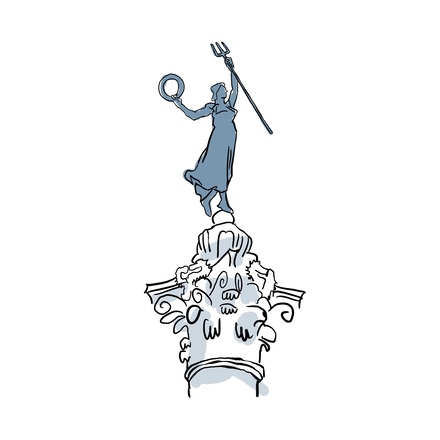
This charming paved street, considered a European interlude, is Maiden Lane which is rather ironic, given that until the early 20th century, it was San Francisco's red light district. By the way, did you know that this expression originated in France?
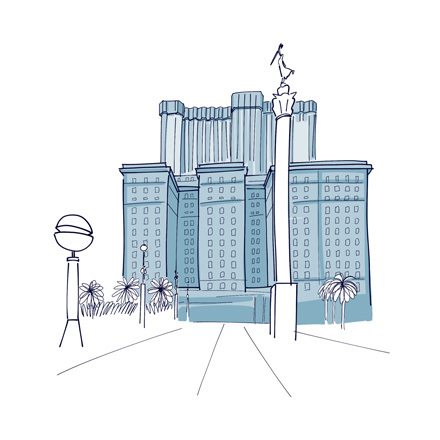
Welcome to the heart of the city's most vibrant neighborhood, where San Francisco truly comes alive: Union Square.. Its name comes from the rallies in support of soldiers which were held here during the American Civil War.
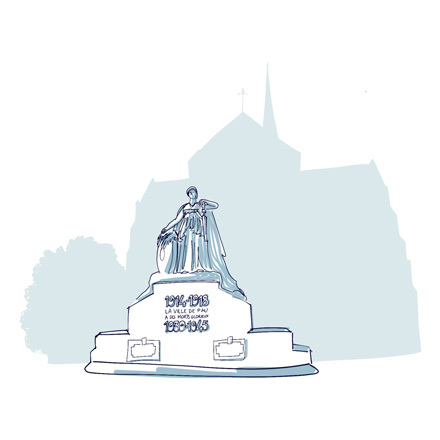
The imposing war memorial behind the church is personified by Athena, the goddess of war and representative of victorious France. It was built in 1927 to commemorate those who fought in World War I. Other battles fought by the 18th Pau Regiment were later added.
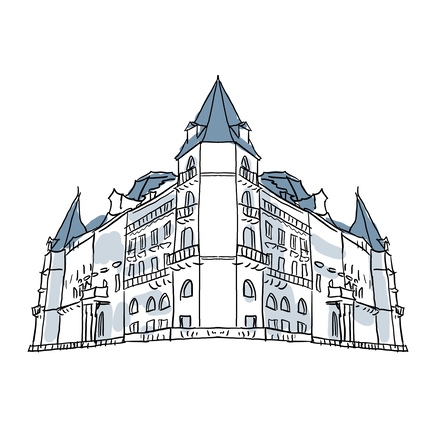
The prestigious Gassion Hotel on your left says a lot about the buildings erected in Pau during the tourist boom. As you can imagine, the hotel was built to accommodate a certain class of tourists and is renowned as being the most modern in Europe.

The white building in the square tells the story of a significant part of Pau's history. Today, it houses the Pyrenees Atlantique Departmental General Council. However, it has served many other functions in the past. Look at its tower, for example - it looks exactly like a campanile!
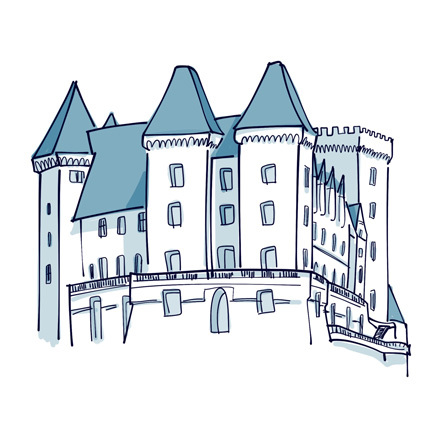
You've finally arrived at the beautiful Pau Castle! Before it became this magnificent Renaissance palace, Pau Castle was a simple fortification designed to monitor the watchtower on River Gave. It was surrounded by a wooden palisade, known in Béarnais as the " pau ", which gave
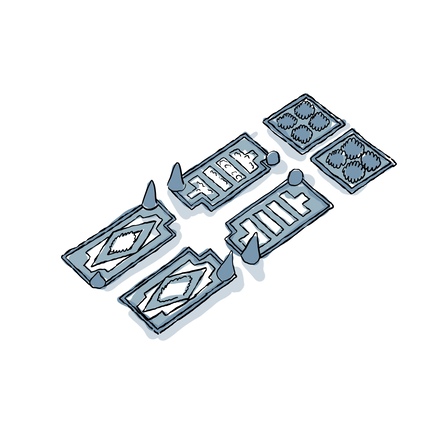
Pau is one of the towns with the most flowers in France. You are now passing through the Renaissance garden of the castle. If you want to go further, you can continue your visit by crossing the Nemours bridge, leading you to the beautiful royal park with its exceptional views of the castle.

Below the castle, Place de la Monnaie enables an excellent overview. From here, you can clearly see the different eras the castle has gone through. There's the old watchtower from its early days, now a mint and more recently a lift, as well as the imposing brick donjon
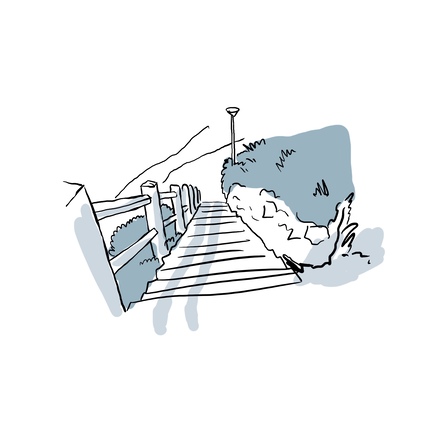
You can now take a stroll along the pleasantly landscaped paths known as the "King's Paths". This delightful walk has recently been upgraded and provides access to the lower part of the town. The King's Paths are
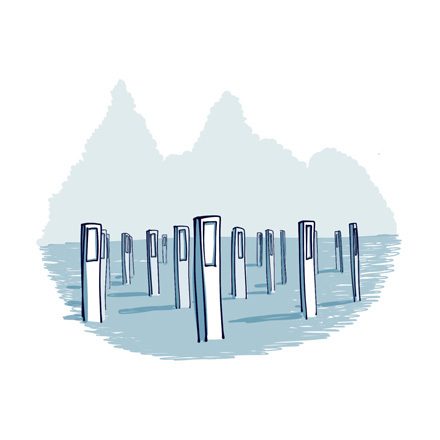
Welcome to the site of the old Pau Velodrome, built in 1901. With a hundred or so start and finish points, Pau is considered the Capital of the Tour de France. This exhibition is dedicated to those who have contributed to the magic of the Tour.
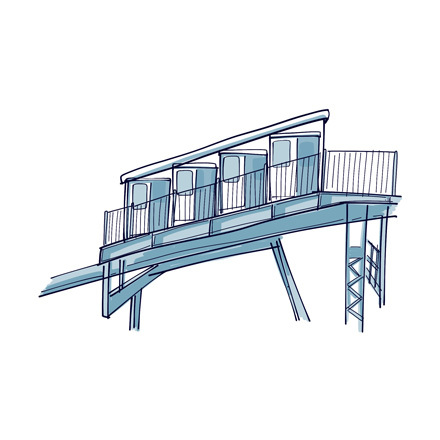
Pau's funicular is the emblematic image of the city in the Roaring Twenties! In 1905, the rich and famous from all over the world were flocking to Pau and the city did everything it could to give its distinguished guests a fitting welcome!

As you get off the funicular at the top of Pavillon des Arts, you are immediately rewarded with a spectacular view of the surrounding area. The Royal Square has only been open to the landscape since 1808, when Napoleon ordered it to be enlarged. The square was originally laid out

As you can see, Pau was strongly influenced by the mass arrival of aristocrats from all over the world. But where did this sudden infatuation for the city, which had not been a royal capital for centuries, come from? It all started with a best-seller! In 1842,
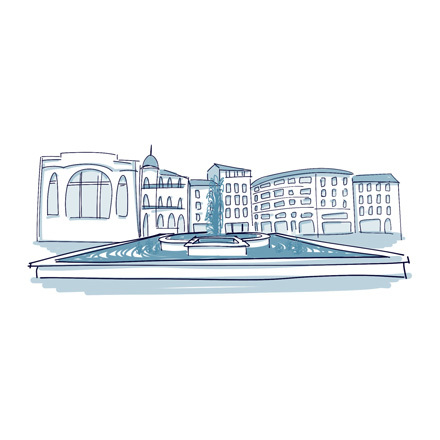
The avenue you just walked along, lined with beautiful shops, is the new version of the old Pyrenees Palace, whose roof and dome were removed to turn it into an open, airy, and dynamic shopping street. Now known as Pyrenees Promenade, it’s like a new breeze blowing through the city centre.
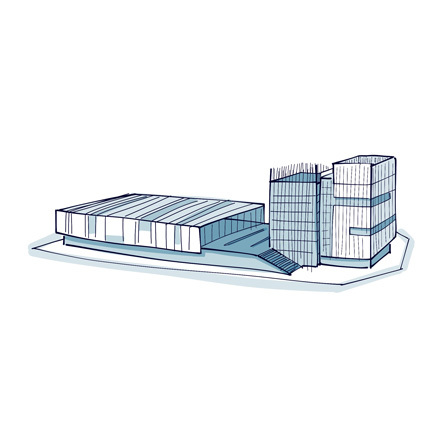
The beautiful Covered Markets of Pau are brand new! You'll be able to discover the Béarn region in the best possible conditions! The architecture is innovative, to say the least! The Halles of Pau even won the Wan Award, a prize awarded by the international jury of the World Academy of Architecture.
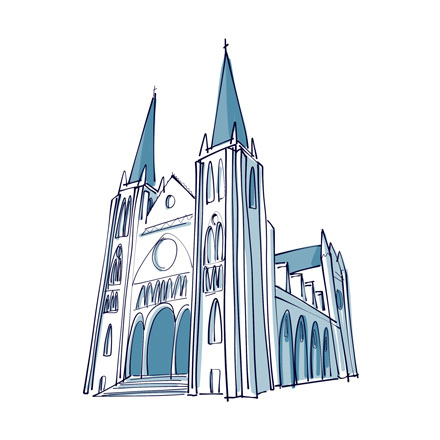
Right after Palais de Justice, you'll see Saint-Jacques church, built on the site of the former Cordeliers convent chapel. It was a stopover for pilgrims on their way to Santiago de Compostela. But by the 19th century, Pau's two churches were too small to accommodate
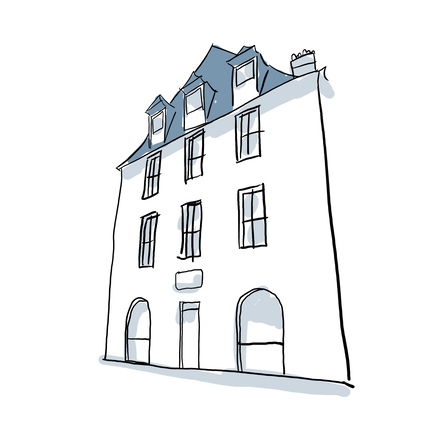
The beautiful stone house in front of you is the birthplace of Jean-Baptiste Bernadotte. You might not be familiar with the name, but we are actually talking about the King of Sweden and Norway! As unlikely as it may seem to you, it's true.
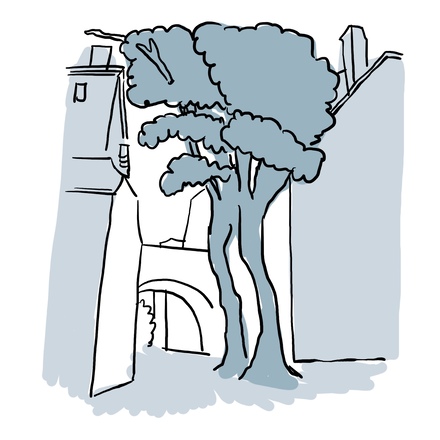
The Hédas neighbourhood has quite a story to tell! Hédas street, which stretches out beneath your feet, follows the bed of the former stream bearing the same name. If you could see it from above, you'd notice how it winds its way through the city.
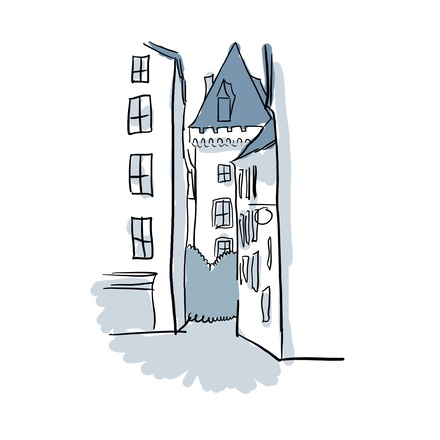
This is the Grand Street, the town's main thoroughfare in the Middle Ages, which ran from the castle and extended ever further eastwards. In fact, you couldn't really go in any other direction. The south was cut off by the Gave River and the north by the Hédas stream,
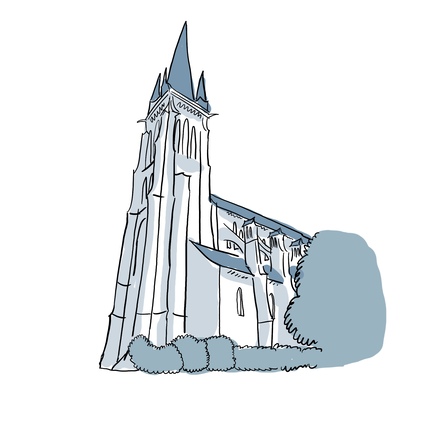
Saint-Martin church is the second of its kind to be built in Pau. The first Saint-Martin church was built in the 15th century opposite the Pau castle, on what is now Deportation Square. It remained the town's only parish until 1803.
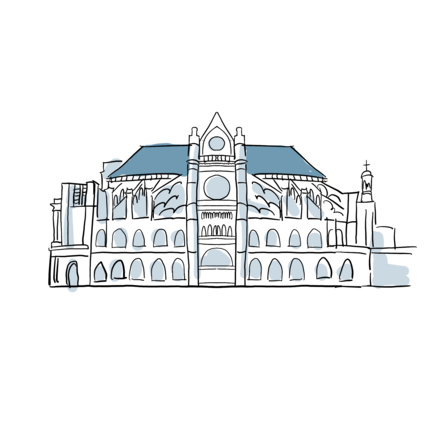
You've reached the forecourt of Saint-Eustache Church, famous for housing one of the biggest pipe organs in France. It was built at the behest of Francis I, who dreamed of a big church in the...
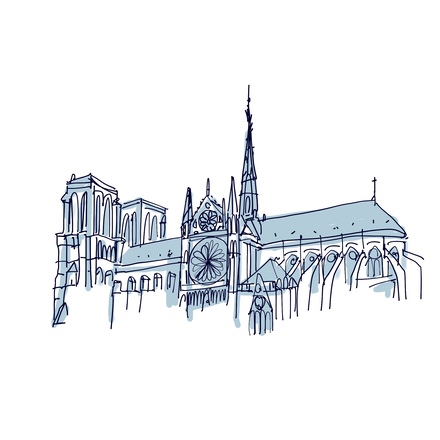
This is kilometer zero, also known as the zero mile marker. It's from here, on the parvis of Notre-Dame, that all distances to French cities are measured. And it's no coincide; there's a reason...

Moving on to more recent times to revisit a dark chapter in French history. You're standing in front of the Memorial to the Martyrs of the Deportation, dedicated to all French citizens...

That building opposite you on the left bank is the Hôtel-Dieu de Paris. It's the city's oldest hospital! It was founded in 651, at the behest of the Bishop of Paris, to care for those most in...
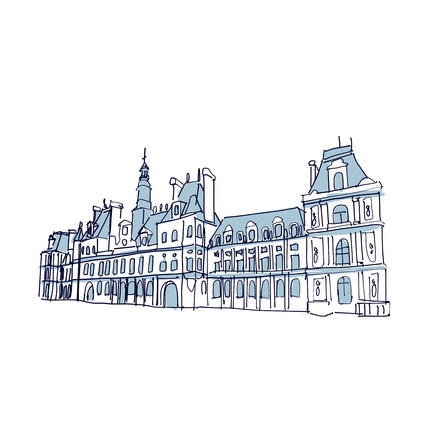
You're now standing in front of the Paris City Hall. This stunning building, with its Neo-Renaissance façade, is one of Paris's oldest landmarks. The city council first settled here in the...
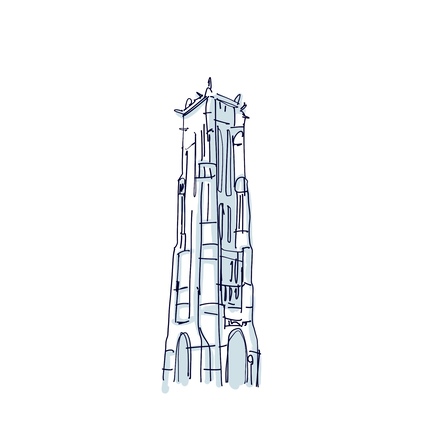
I know, it's pretty strange to see a beautiful tower like the Tour Saint-Jacques standing all alone in a park. Well, believe it or not, it's just the bell tower of a church that's no longer in existence...

You’ve arrived at the fascinating Igor Stravinsky Square, a tribute to the famous Russian composer. This square is a captivating blend of old and new, home to a Gothic church, a...

Love it or hate it, the Georges Pompidou Center attracts over 3 million visitors a year and ranks as one of the most visited buildings in Paris! After all, it's home to Europe's largest modern art...

You're now walking past the Forum des Halles. This huge shopping center is one of the busiest in all of France, drawing in a whopping 150,000 people a day – that's a staggering 50 million...
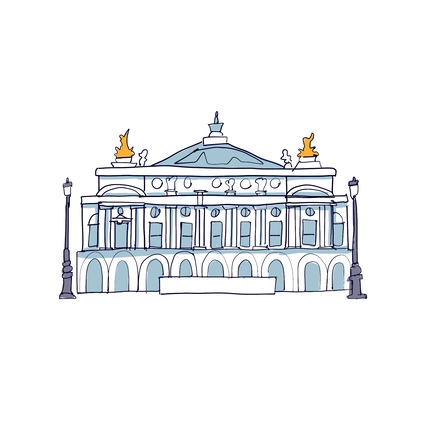
The beautiful rotunda building before you is the former Paris Commodities Exchange. Make your way around to the majestic entrance. The building was constructed on the site of the Hôtel

Though less well known than other royal squares, the Place des Victoires is a beautiful circular square flanked by Louis XIV-style townhouses, all of which are listed as historical monuments. It...
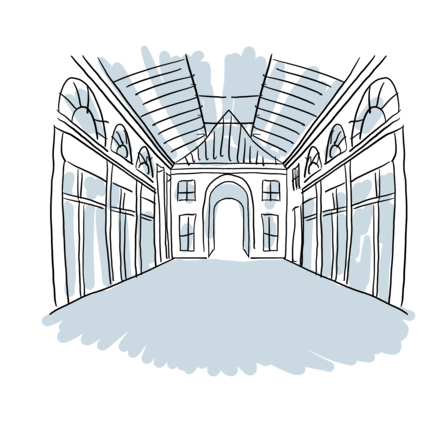
It'd be a shame to visit Paris without checking out one of its gorgeous covered passageways. The Vivienne Gallery, which you're about to enter, is considered the most beautiful in the city!
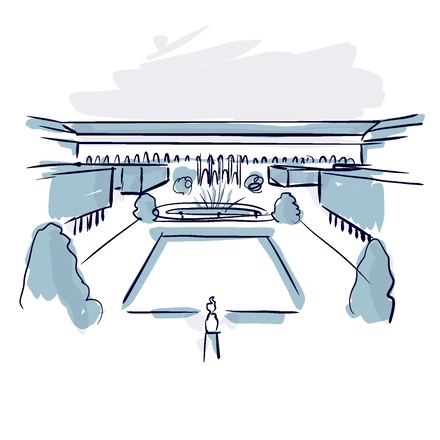
You've just crossed the little Perron passageway, which takes you into the beautiful gardens of the Palais Royal. This 30-meter-long gallery, dating back to 1784, leads to a staircase that...
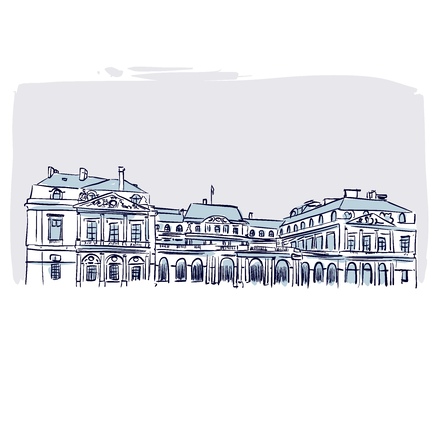
We're now in the main courtyard of the Palais Royal. Pretty impressive, huh? The palace may be called royal today, but it was actually built at the behest of Cardinal Richelieu in 1633. He wanted...
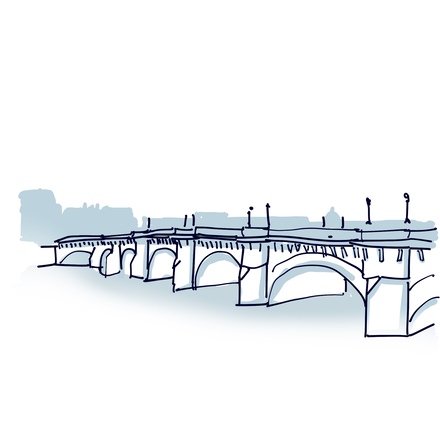
You're now on the Pont Neuf, the New Bridge. Weirdly enough, it's actually the oldest bridge in Paris. As is so often the case, a city's 'new bridge' is actually one of its oldest. This one was...

There's nothing quite like the peaceful feeling of watching a boat glide across the water. You're now on the Île de la Cité, in the heart of the Green Gallant Square, built in honor...

You're standing before the iconic Louvre Pyramid! The Louvre Museum is the world's largest and most visited museum of art and antiquity, attracting over 10 million visitors each year. It's...

What would Paris be without its beautiful bridges? The Pont des Arts offers a stunning 360-degree view of the Seine River, with the Louvre on one side and the Institute of France on the...
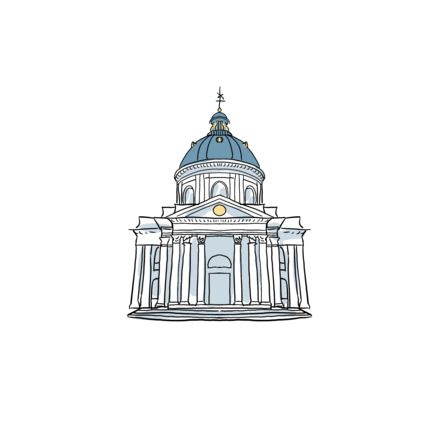
The magnificent building before you is the Institute of France, often called "The Parliament of the Learned World." Founded in 1795, it was created to bring together the brightest minds from...
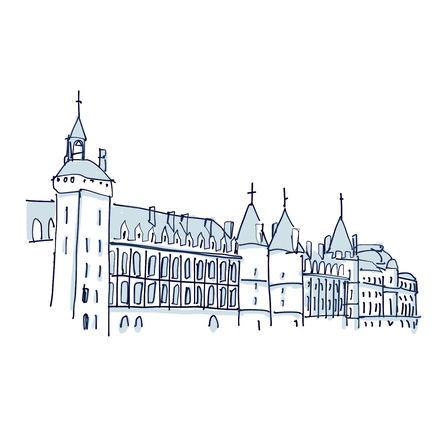
We can always rely on Paris's bridges to help us find our bearings! You're now standing on the Pont au Change, one of the 37 bridges crossing the Seine. It was named after the currency...

You're standing before the Clock Tower of the Palais de la Cité. This stunning clock with its blue backdrop was the very first clock of Paris! The belfry was originally built...
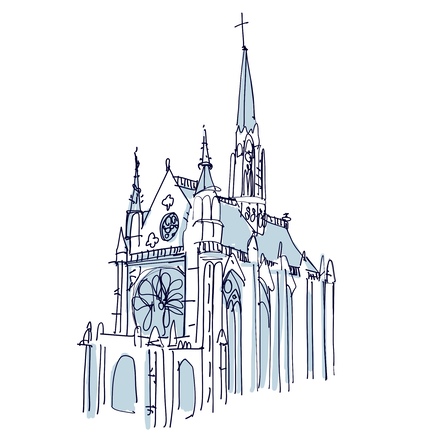
This is the entrance to the Sainte-Chapelle, the Holy Chapel. Now, there's an entrance fee, but if you decide to visit, you'll discover an absolute masterpiece. It's a prime example of Flamboyant Gothic architecture with no less...
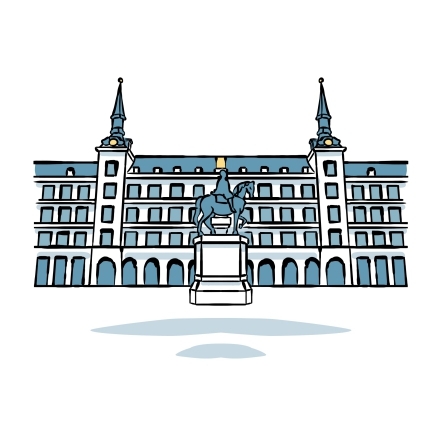
This is perhaps the most beautiful square in Spain — the Plaza Mayor. Its construction began at the end of the 16th century, when King Philip II ordered the redesign of the chaotic Arrabal Square. Its real transformation took place under his son, Philip III, who is
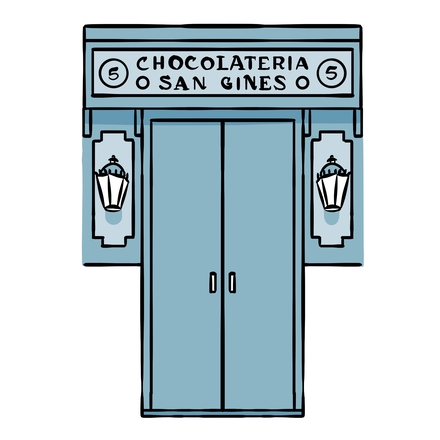
Welcome to a true Madrid institution — the city’s oldest chocolate shop, Chocolatería San Ginés. It’s been a local favourite since it opened in 1894, thanks to theatre audiences that flocked here after shows. Its timeless, traditional style even inspired Luces de

As you stand on the Gran Vía, facing Callao Square, it’s easy to see why this avenue is often compared to Broadway. You get a real sense of what the street used to be like from here — back when it was lined with cinemas, far more than you see today. Two

As you reach the end of Gran Vía, you’ll spot several striking buildings. These skyscrapers, serving as luxury hotels, share something special — like many others in Madrid, they have stunning rooftop terraces open to the public. Feel free to head up, grab a drink, and
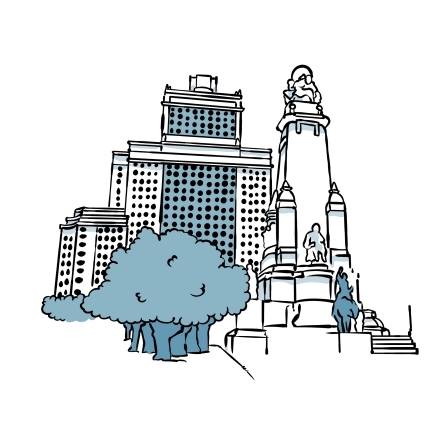
We’re now in the northwest of the city, standing on the vast Plaza España. It’s the largest square in Spain, covering 36,900 square metres. Here, you’ll find some of Madrid’s most iconic landmarks. At the centre stands the city’s most photographed monument: a
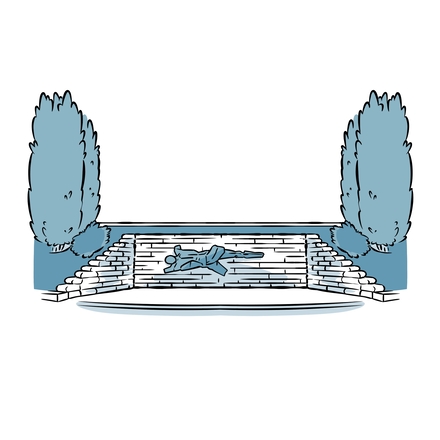
You’ve arrived at the foot of the Montaña del Príncipe Pío hill, a name that dates back to the 18th century. Back then, a palace belonging to Prince Pío of Savoy stood where Madrid’s North Station stands today. The prince inherited the estate from his wife, the
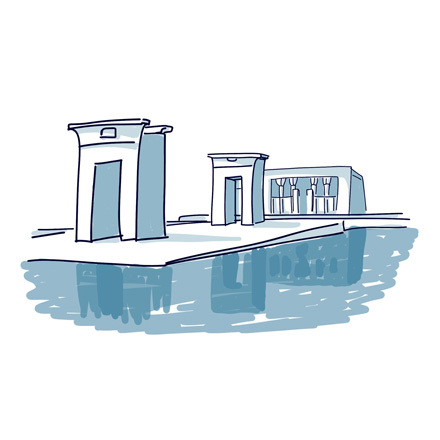
Let’s take a quick detour to Egypt, without leaving Spain. It’s time to explore the Parque de la Montaña and admire the stunning Temple of Debod. This isn’t a replica, but a genuine Nubian temple, built in honour of the god Amun, dating back to two centuries

Visiting the Egyptian temple also brings you to one of the best viewpoints in Madrid. From here, you’ll get a stunning view of the Almudena Cathedral and the Royal Palace. Locals often come here to watch the sunset against this beautiful backdrop. If you’re
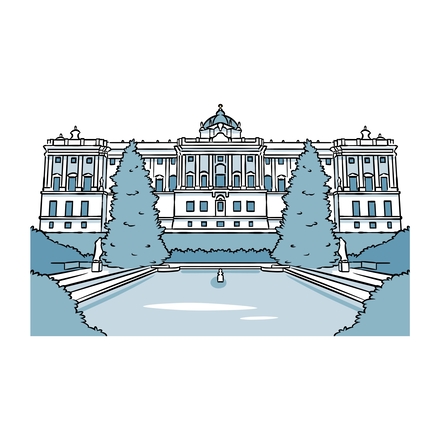
You’re now walking alongside the elegant Sabatini Gardens, named after one of King Charles III’s favourite architects — though he wasn’t the one who designed them. The gardens bear his name because they were built on the site of the former royal stables, which
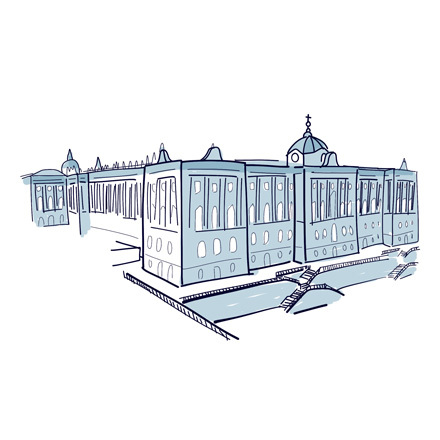
Finally, we’ve reached it ! The famous Royal Palace, built in 1738 as the residence of the Spanish royal family. From Charles III to Alfonso XIII, generations of monarchs lived here. This is the largest royal palace in Europe, and one of the largest in the world,

During the revamp of the area around the Royal Collections Museum, which opened in 2022, Madrid added a thoughtful touch. The city created a public viewing platform on the Plaza de la Armería, between the cathedral and the Royal Palace, so you can enjoy a
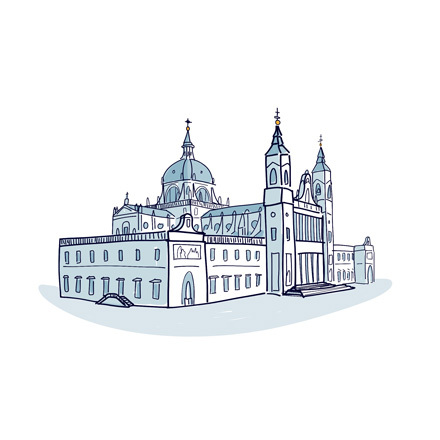
You’ve seen it from afar, and now you’ve finally arrived before the beautiful Almudena Cathedral. Unlike the grand cathedrals found in most major cities, this one is relatively young. Standing opposite the Royal Palace, its construction began in 1883 and
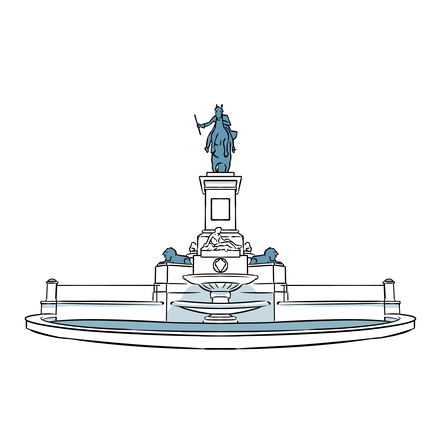
You’re now on the eastern side of the Royal Palace — which is why the square is called Plaza de Oriente, or the Orient Plaza. It’s best known for its impressive layout, offering views of the Royal Palace, the theatre, and a collection of statues of 20 Spanish kings. These
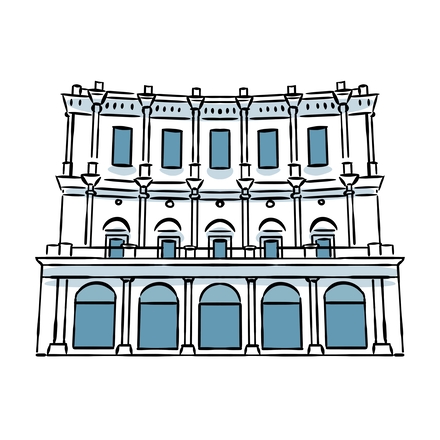
You’re now standing in Plaza de la Ópera. In front of you is the Teatro Real — Madrid’s Royal Theatre, commissioned by Queen Isabella II, whose statue is at the centre of the square, giving the theatre its “Royal” name. It was inaugurated in 1818 and even hosted
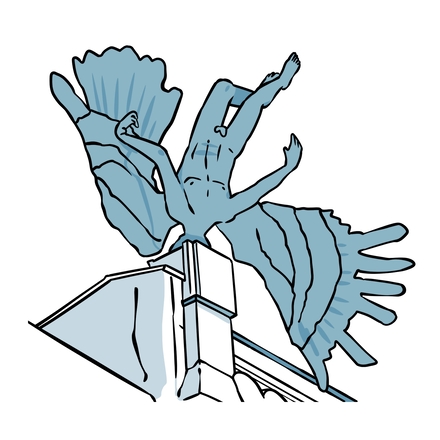
Look up at the rooftop on the corner buildings with elegant, glass balconies that curve like a pin. See the upside-down wings? That’s Accidente Aéreo — The Plane Crash — a sculpture depicting a life-sized winged man who crash-landed headfirst onto the rooftops of
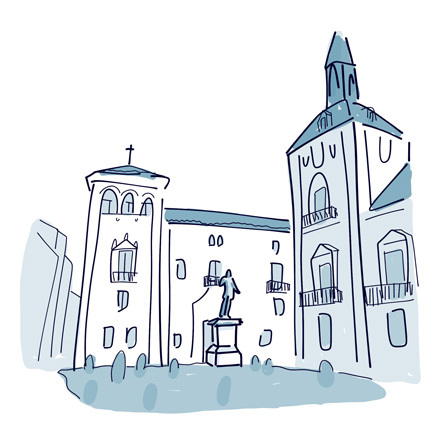
This charming little pedestrian square is one of the best-preserved historic sites in the city, featuring light brick façades and a cobbled ground. It showcases a beautiful mix of architecture from the 15th to the 18th century — a true time capsule of the city’s past. Picture
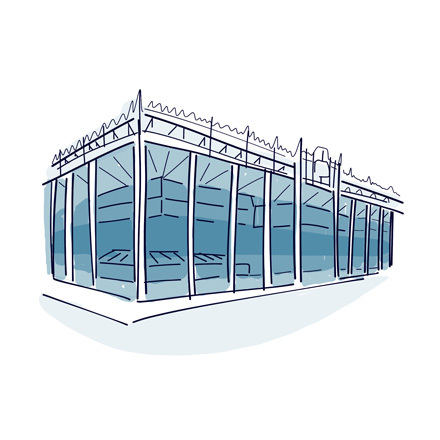
Welcome to the San Miguel Market Hall, one of the city’s rare examples of iron architecture, and certainly one of the most beautiful. This square has hosted a market since the Middle Ages, but it only became a covered market in 1916. Today, it’s a true temple of
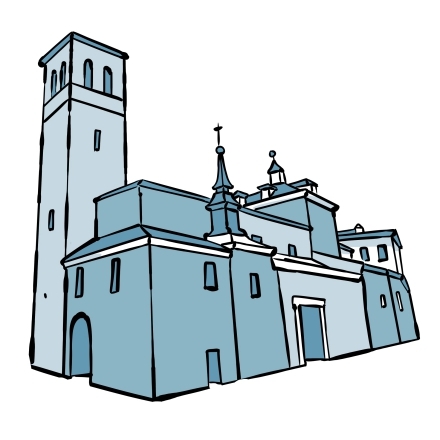
The red-brick church with the tall tower you can see is the Iglesia de San Pedro el Viejo, one of the oldest churches in Madrid. Its exact origins are unknown, but the name appears in Madrid’s town charter from 1202. The current structure, shaped by multiple
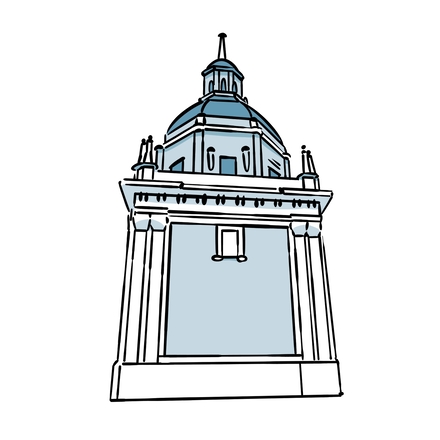
In this charming square, you’ll find one of the oldest churches in Madrid — San Andrés — and the museum that shares the same name. The current church dates from the late 17th century, but its origins go back to the 12th century. It’s also where Saint Isidore the
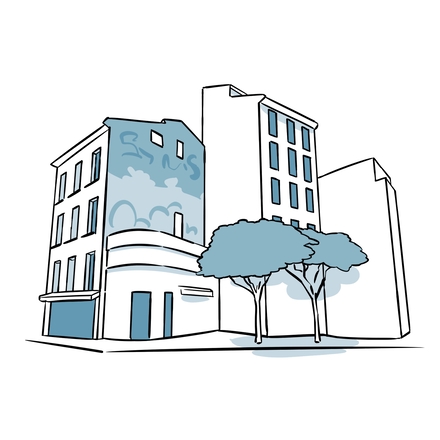
Welcome to the heart of the La Latina neighbourhood. All these winding streets date back to medieval times, when this area was a cluster of suburbs outside the city walls. This is where traders arriving in Madrid would settle — and this history is reflected in the
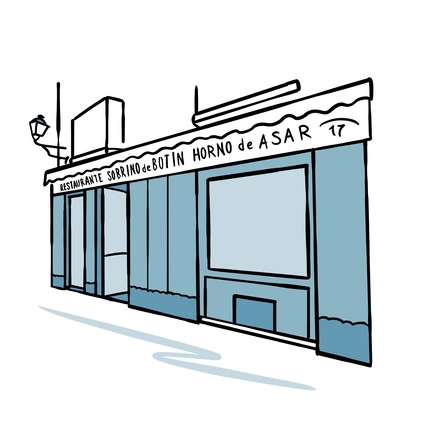
On your right, you’ll spot Botín - a restaurant with countless stories to tell. It’s officially the oldest continuously operating restaurant in the world! At least, the oldest one with a written record to prove it. There’s a document from 1590 in which the owner requested
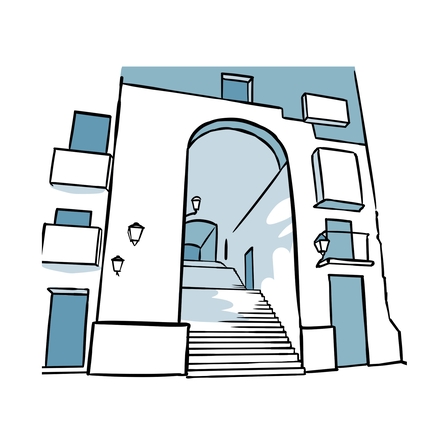
This beautiful archway is called the Arco de los Cuchilleros. It was built as part of a plan to enclose the square, after a fire had damaged Plaza Mayor in the 17th century. It served as one of its main entrances, linking it to Cava de San Miguel. Its impressive
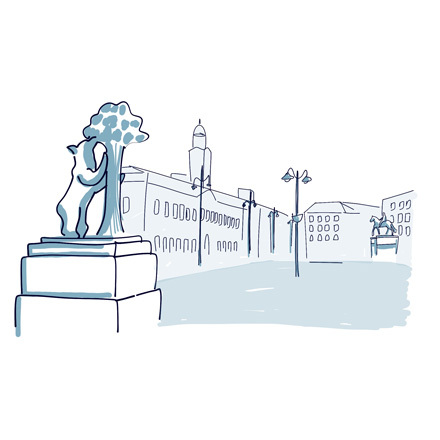
Welcome to the most famous square in Madrid — Puerta del Sol, which means Gate of the Sun. The name traces back to the 15th century, when a city gate stood here, marking the entrance through the old city wall. As for “sun”, there used to be a large sundial on

Before you is the entrance to the beautiful Galleria Sciarra. Step inside and take a moment to admire the magnificent paintings all around.

On your left, right opposite the Piazza della Pietra, you'll see the 11 Corinthian columns that were once part of the Temple of Hadrian, also known as Hadrianeum.

Welcome to the Piazza Navona, arguably the most beautiful square in Rome. It's this big and rectangular as it served as a chariot-racing stadium before the Colosseum was built.

From here, we have a great view of the Palace of the Supreme Court of Cassation. It is the seat of Italy's highest court, a legacy of the French Revolution, whose ideas were brought to Italy during Napoleon's conquests.
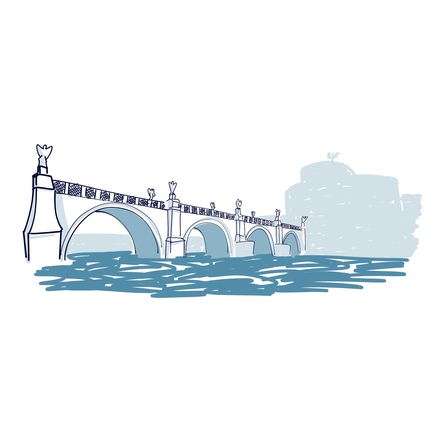
Just look at this view! We're on the Ponte Sant'Angelo with its stunning line-up of statues and the castle of the same name in the background! This bridge is yet another iconic landmark of Rome and a famous pilgrimage site.
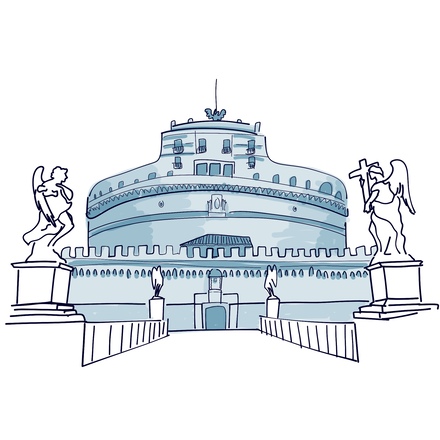
The majestic Castel Sant'Angelo before you has served as a tomb, fortress, papal palace, prison and museum. Built under the reign of Emperor Hadrian around 135 AD, it was originally an imperial mausoleum.
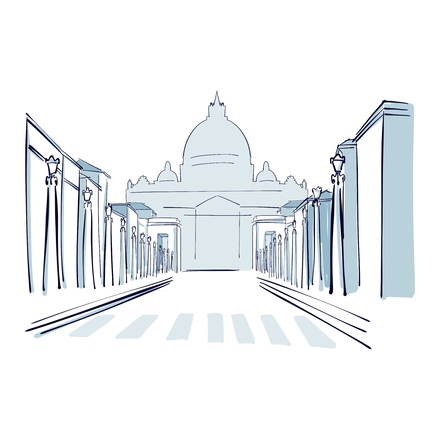
We're now walking down the famous Via della Conciliazione, the Conciliation Street. This wide, straight road connects the Castel Sant'Angelo to St Peter's Square.
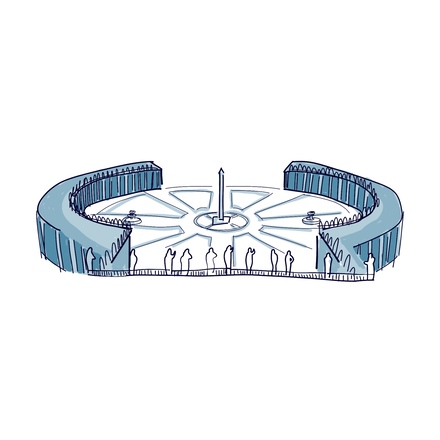
It's finally here, the moment you've been waiting for – welcome to St Peter's Square in Vatican City. This is where the Pope holds all major religious gatherings and celebrations.
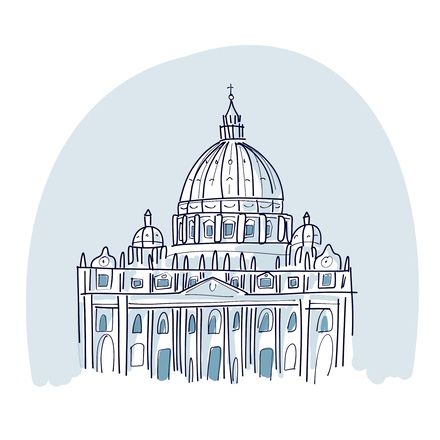
Where do I begin to tell you about St Peter's Basilica? You're looking at the most important building in the history of Christianity, which also happens to be the biggest church in the world.
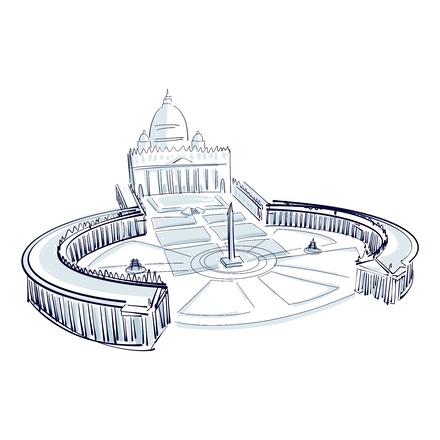
Now's a good time to visit the Vatican. The 11 Vatican Museums are among the very best in the world. They'll have you craning your neck for a peek at the Sistine Chapel ceiling painted by Michelangelo
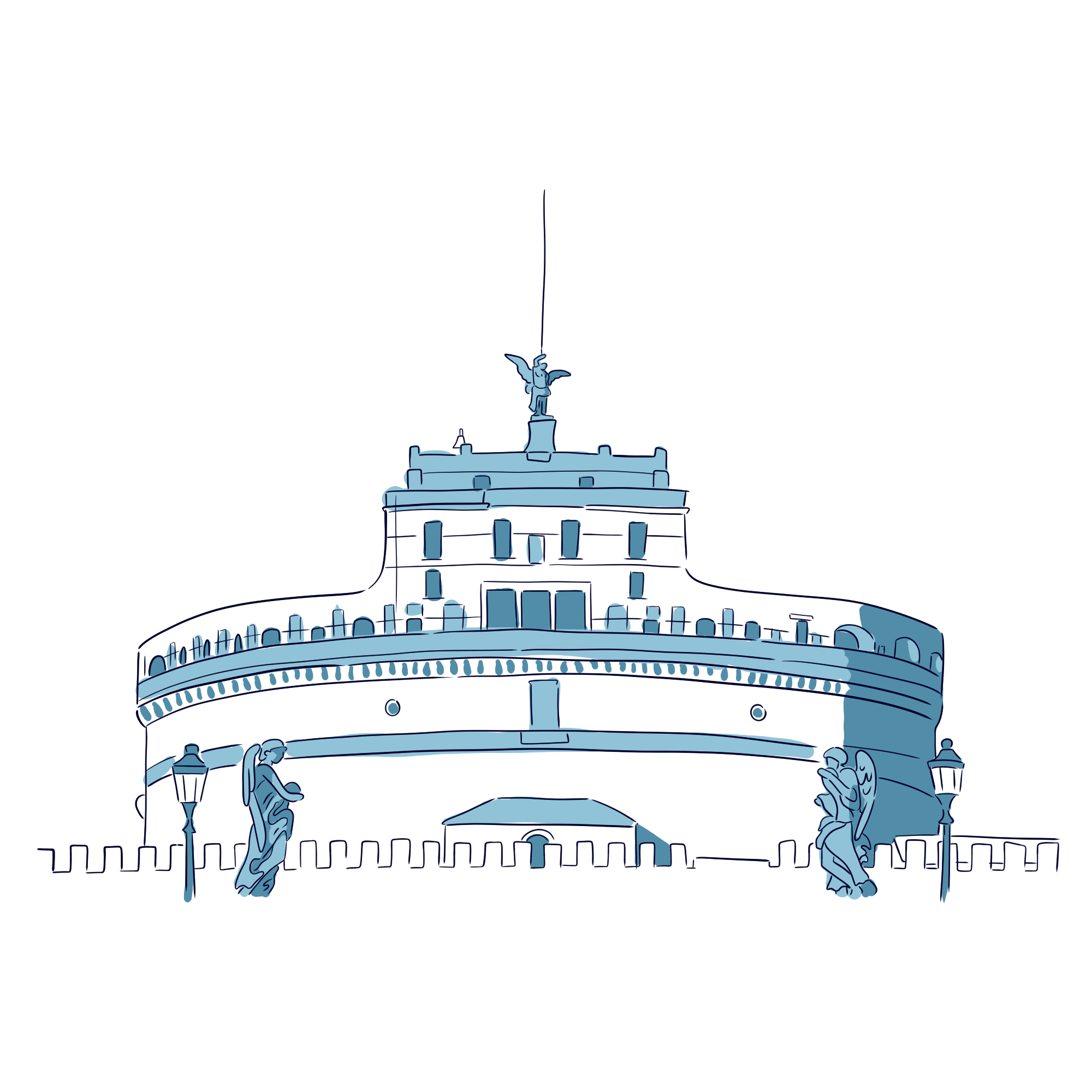
Walking along the moat around the Castel Sant'Angelo, you’ll notice how it's built inside a fortress.
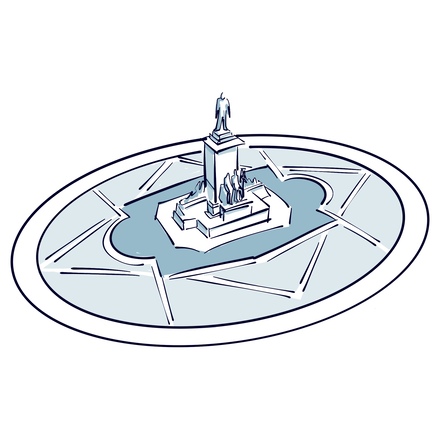
Welcome to Cavour Square, just behind the magnificent building housing Rome's Supreme Court. The monument in the center is a tribute to Count Cavour, also known as the Father of the Fatherland, alongside Victor Emmanuel II, Garibaldi and Mazzini.
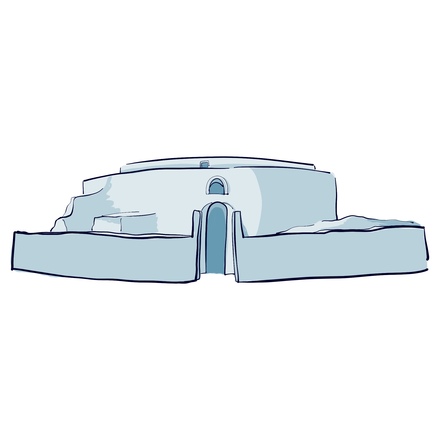
On your right is the Mausoleum of Augustus. It's one of the most important monuments of Roman Antiquity; you can find out more about that time period in our first tour. It was built at the behest of Augustus, the adopted son of Julius Caesar and the first Roman emperor, to serve as a tomb for the imperial family.
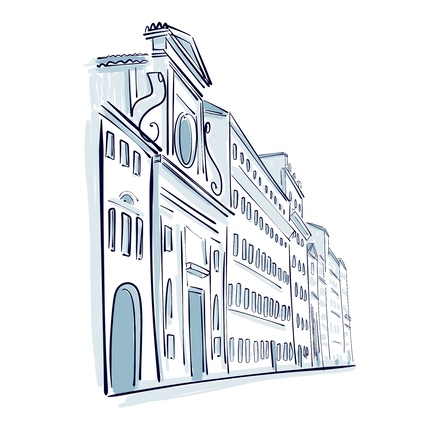
You're now walking up the Via di Ripetta, a historic street of ancient Rome, dating back to the 1st century BC. Today, it's an integral part of the so-called Tridente of Campo Marzio, that is, three straight roads in the shape of a trident, leading to the Piazza del Popolo.
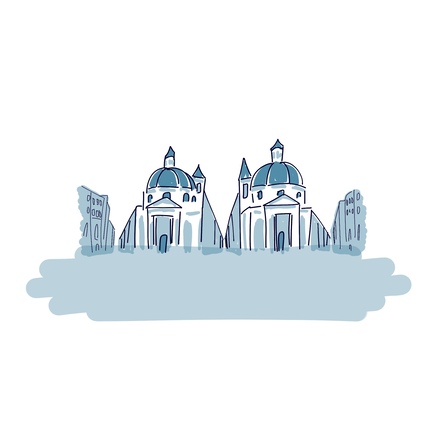
We're now at one of Rome's most popular squares: the Piazza del Popolo, that is, the People's Square. Yet the name actually comes from the poplar trees all around it.

We're now on the Terrazza del Pincio, right atop the hill of the same name. From here, you have a spectacular view of the Piazza del Popolo. If you continue uphill, you'll soon find yourself in Rome's largest public park, that of the Villa Borghese.

You're now before the entrance to the French Academy in Rome. It was founded in 1666 by Louis XIV, and has been housed in the Villa Medici since 1803. The academy supports artists and researchers, and it's also responsible for the upkeep of the villa and its gardens.

We've made it to the top of the Spanish Steps! This huge Baroque staircase is a popular hangout spot for locals, offering great views of the square below. You can take a break here and watch the world go by from one of the 136 steps.
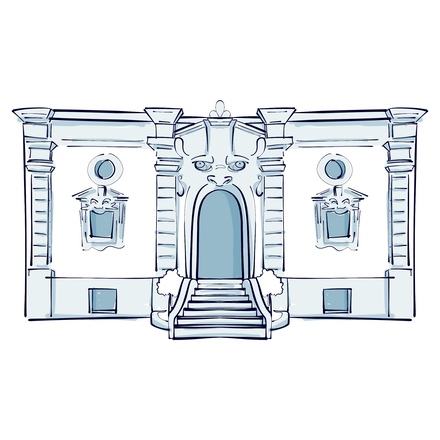
We've made a slight detour here to show you the striking Palazzo Zuccari. Let's face it, it's not every day you get to see a building entrance shaped like a wide-open mouth of a monster.
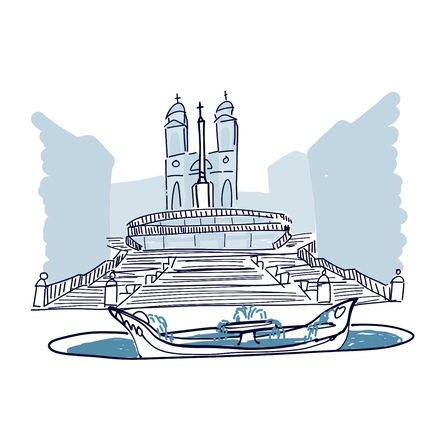
Back in 1620, the Piazza di Spagna was a Spanish foothold housing the country's Embassy to the Holy See. The whole square was under Spanish rule, and the Spaniards had their own administration and troops stationed there.

You're now on the famous Via del Corso, linking Piazza del Popolo to Piazza Venezia. It's popular for its six-kilometer stretch of shops, and follows the route of the Via Flaminia, one of the most important Roman thoroughfares of Antiquity.
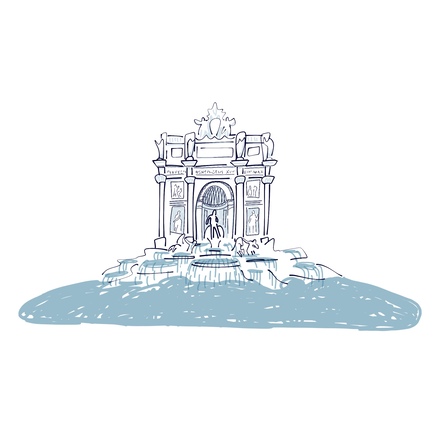
Rome counts over 400 fountains, but, of course, the Trevi Fountain is the real star of the show! With dimensions like that, it's no wonder you're impressed! Measuring 20 meters wide and 26 meters high, it's Rome's biggest fountain, tucked away in the back alleys behind the Palazzo Poli.

You're standing before a legendary landmark, a temple to all gods – introducing the famous Pantheon of Rome. This exceptional building was constructed in 27 BC, under the reign of Augustus. It was built by General Agrippa, a friend of Augustus who oversaw various urban planning projects at the behest of the emperor.
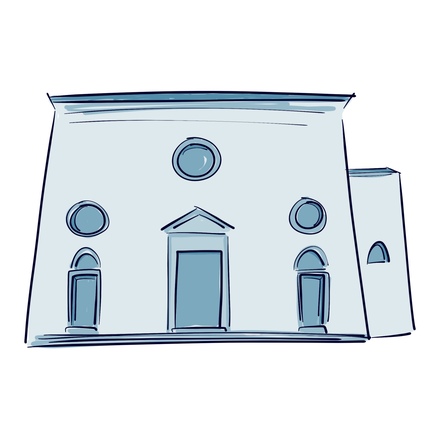
Check out this quirky sculpture in the Piazza della Minerva. It's known as the "Pulcino della Minerva," that is "Minerva's Chick." It shows a little elephant carrying an Egyptian obelisk on its back, and it stands right in front of the church of Santa Maria sopra Minerva. The inscription in Latin reads : “It takes a robust mind to carry solid wisdom.”






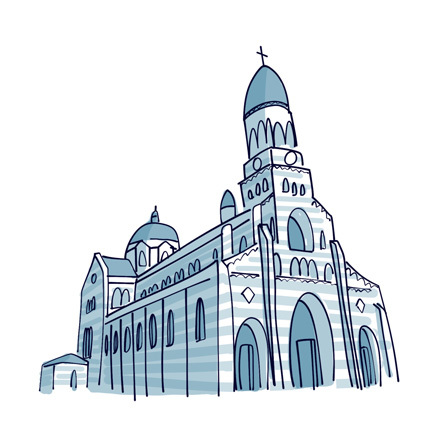
The construction of this church was closely linked to the expansion of the nearby railway, which ended up cutting off this part of the city — a neighbourhood known as the Vallée district. It became essential to build a new place of worship
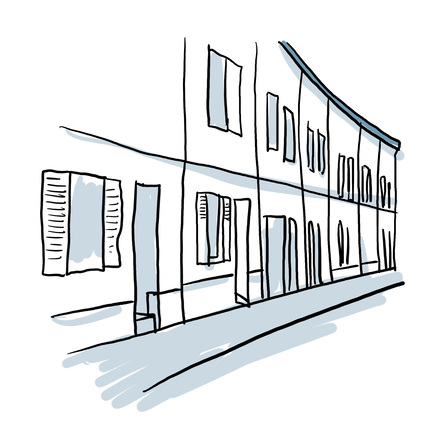
So iconic that they’re known as Amiénoises, these traditional terraced houses are a signature feature of the city. Built in the 19th century during the Industrial Revolution, these structures showcase characteristic red brick facades
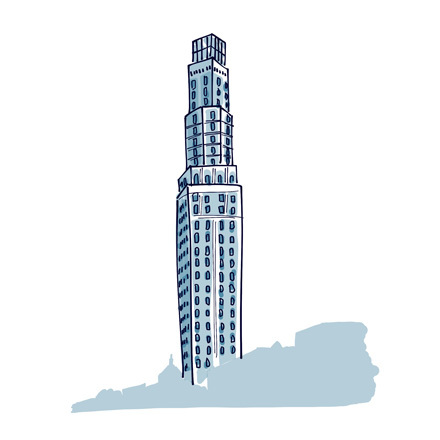
You're now standing in front of one of the most iconic landmarks in Amiens—second only to the cathedral, of course. Soaring 110 metres into the sky, the Perret Tower can be spotted from up to 10 kilometres away!

René Goblet Square is named after a lawyer from Amiens who rose through the ranks of French politics to become Prime Minister in the 1880s, after serving as Attorney General and representing the Somme region in parliament.

You're now walking along Rue des Otages. While we make our way to the next stop, let me tell you a bit about the long and fascinating history of Amiens. In fact, this very street dates all the way back to Roman times.
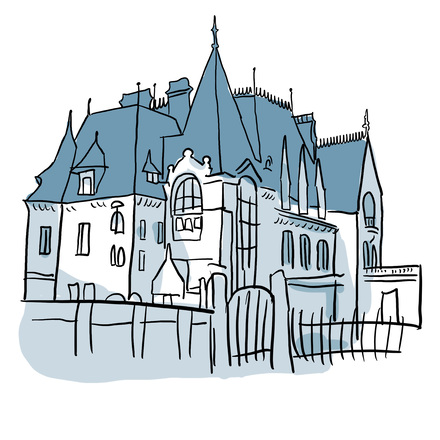
It’s hard to walk down this street without noticing this beautiful 20th-century townhouse. It was built for André Bouctot and Marie-Louise Vagniez, a wealthy young couple who moved to Amiens after their wedding. In 1911, architect Louis
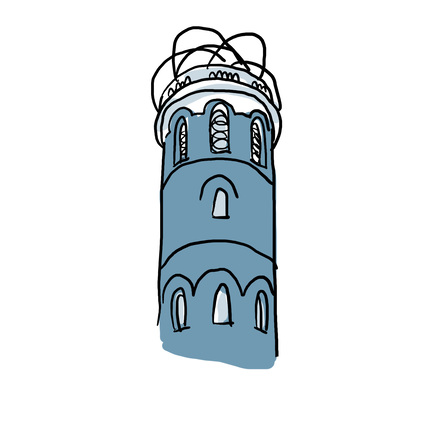
Twenty Thousand Leagues Under the Sea, Journey to the Center of the Earth, Around the World in Eighty Days… Those are just a few of the many stories written by Jules Verne—one of the most famous writers of the 19th century.

Now turn to your right for a great view of the top of the Perret Tower. You can really see how the architecture changes from one section to the next: some parts are square, others are rounded, and then there’s that glass cube sitting right at
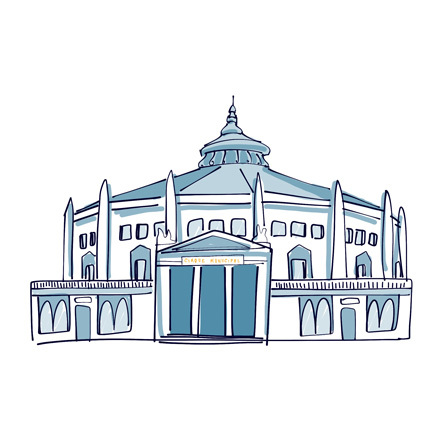
Standing before you is an impressive building with quite a unique role: it's one of the last remaining permanent circus venues in Europe! These types of venues began popping up in French cities during the 19th century, providing a fixed
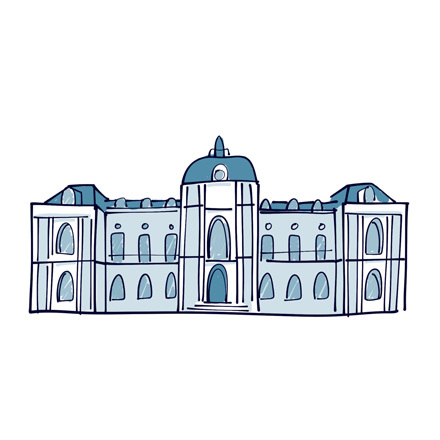
Art and archaeology take center stage in this museum, inaugurated in 1869. Housed in a magnificent 19th-century building, it was specifically constructed to showcase the city's art collections, making it the first structure in France
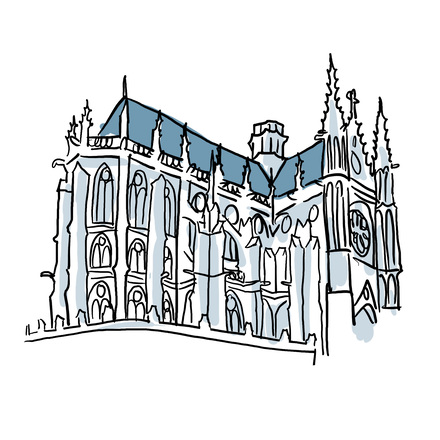
At the end of the 19th century, plans were made to build Saint-Rémi Church, replacing an older 16th-century parish church that had been demolished in 1850. Designed by architect Paul Delefortrie in a Neo-Gothic style, this beautiful
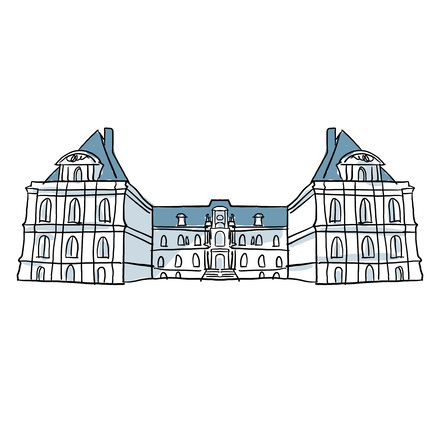
Here you are, standing on one of Amiens' central squares, right in front of the impressive City Hall. The building you see today, with its distinctive U-shaped design, was completed in the 19th century and restored the following century after
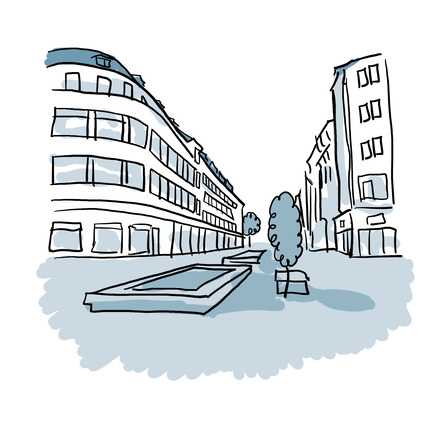
Here you are on Rue des Trois Cailloux, Amiens' main shopping street. This charming pedestrian area is home to a large number of the city center’s shops and is very popular among locals. It's also historic: this street likely dates back to the

To your left is the Passage du Logis du Roi, we'll take it in a moment to reach the next point of interest, but before that, take a look at the building slightly ahead on your right, at number 32. Feel free to move closer to see the façade at the
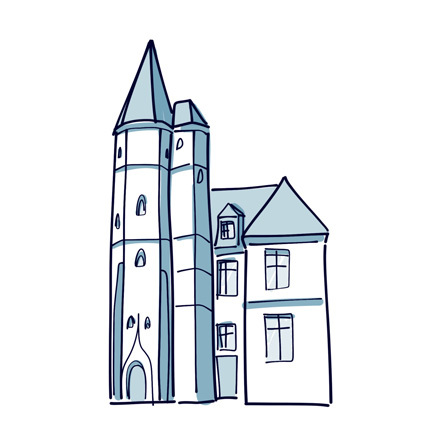
Take a look to your left. Built at the beginning of the 16th century, this remarkable building served as the official residence of the governors of Picardie for many years. It also hosted some of the era’s most prominent figures, including
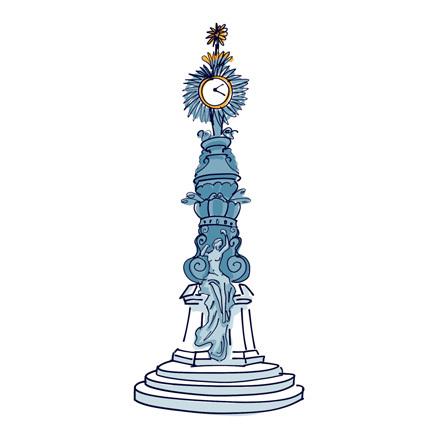
This clock is quite unusual, don't you think? This intriguing monument is one of Amiens' iconic landmarks, designed by architect Emile Ricquier—who also created the impressive Cirque Jules Verne. It was actually Mayor Dewailly who
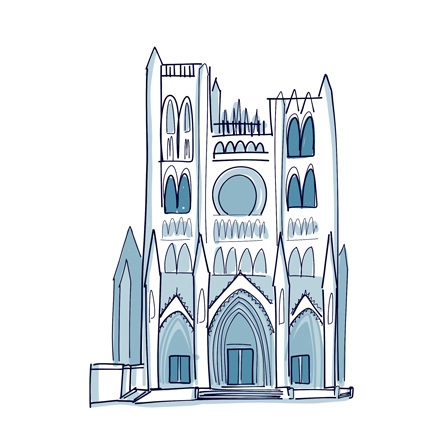
Majestic, massive, breathtaking… there’s no shortage of glowing words that come to mind when standing in front of the Amiens Cathedral, officially known as Notre-Dame d’Amiens. And “massive” really is the word — this is the largest
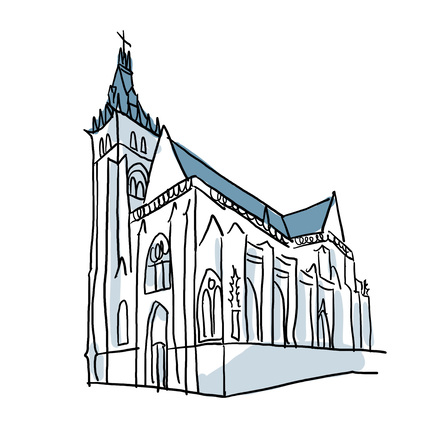
Built shortly after the Hundred Years’ War, Saint-Germain Church in Amiens is the oldest church in the city after the cathedral. Dating back to the 15th century, it’s a beautiful example of flamboyant Gothic architecture. What really sets it
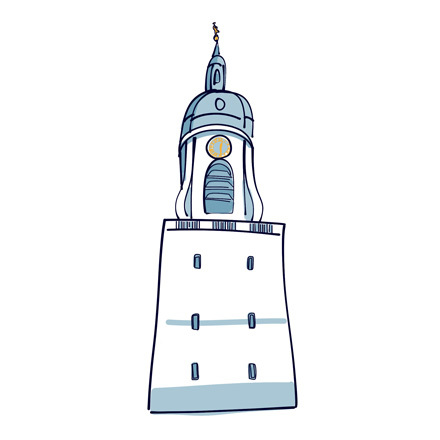
Standing 52 metres tall, the belfry of Amiens is a key part of the city’s history — and of the region’s as well. Belfries are especially common in northern France and Belgium, where they traditionally housed the town’s bells. The first version
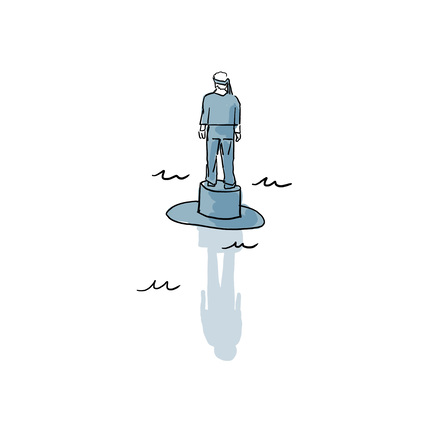
This is without a doubt the most picturesque district in Amiens. Originally built in the Middle Ages, the Saint-Leu quarter was once home to weavers, dyers and tanners, who made the most of the nearby water and the 25 working mills to
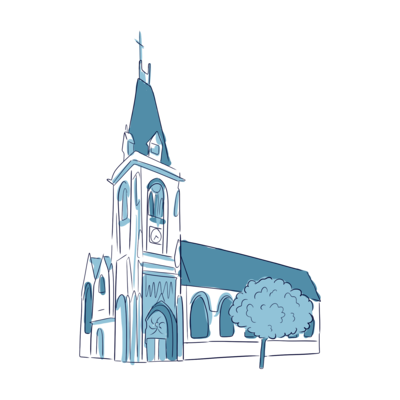
Right in front of you stands the Saint-Leu Church, one of the oldest in the city after the cathedral and Saint-Germain. It was built in 1449, though it’s believed that another church once stood on this very spot, likely destroyed some years

On your right is one of the liveliest and most festive squares in Amiens. This is Place du Don, home to several buzzing bars and restaurants. From here, you get a fantastic view of the cathedral and its spire, which rises to an impressive

Right now, you’re standing over the Somme — the river that flows through Amiens and gave its name to the entire valley. Right in the heart of the picturesque Saint-Leu district, rue de la Dodane is a historic street that used to be filled with
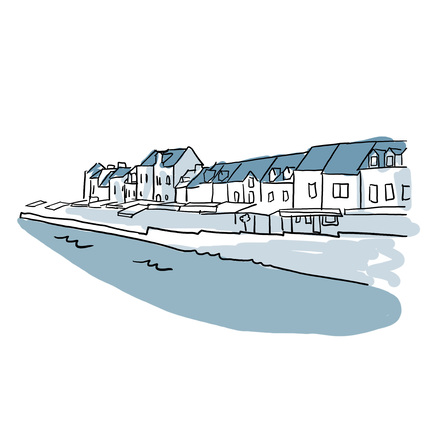
If you’re looking for a lively spot in Amiens, you’re in the right place! Quai Bélu is full of bars and restaurants offering a beautiful setting along the Somme — perfect for grabbing a drink or tasting some local specialties. The area took on its
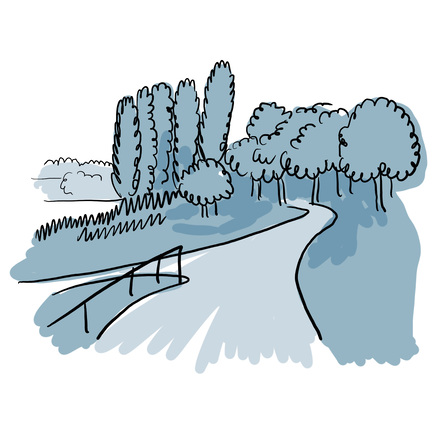
A little further on your left, you’ll see the lovely Saint-Pierre Park. Located between the Saint-Leu and Saint-Pierre districts, this 22-hectare green space is a local favourite for nature walks — all just a short stroll from the city centre.You’ll
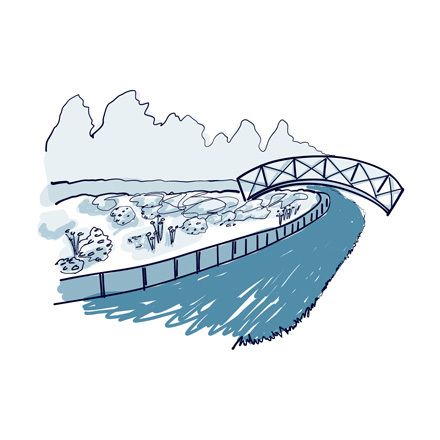
A true symbol of Amiens, the hortillonnages are a network of small floating gardens just a stone’s throw from the city centre. They begin just a few metres from here, on your left. These marshlands were transformed in the Middle Ages to
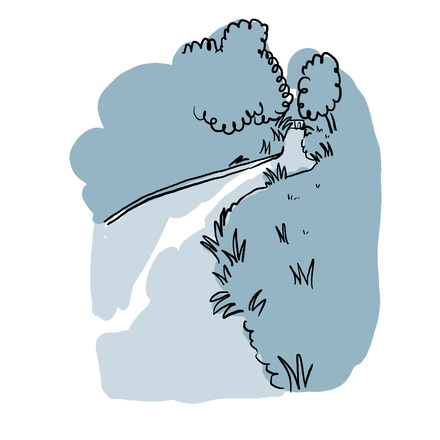
A lovely walk awaits you along the towpath, which starts at Saint-Pierre Park and runs for several kilometres along the Somme and the hortillonnages — unique floating gardens that have been cultivated here for centuries. Back in the day

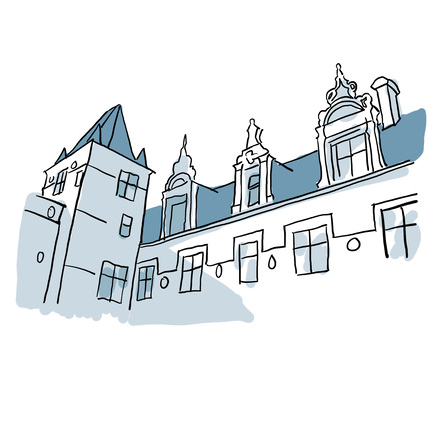
The mansion on your right is the Than Mansion. It was built around 1527 for Thomas Morel, who was lord of two communes in Calvados.
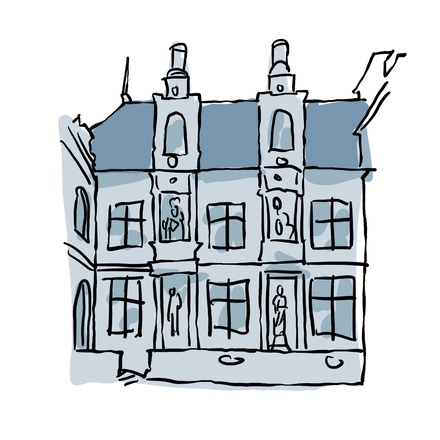
The most beautiful example of a Renaissance mansion in Caen can be found here, in the courtyard of the tourist office.
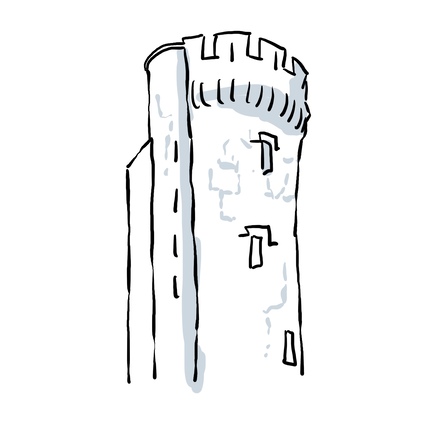
Caen's medieval heritage makes it natural to come across a 14th-century fortified tower right in the centre of town, between bus stops and traffic queues.

This is the Bassin Saint-Pierre, which today forms Caen's small marina.
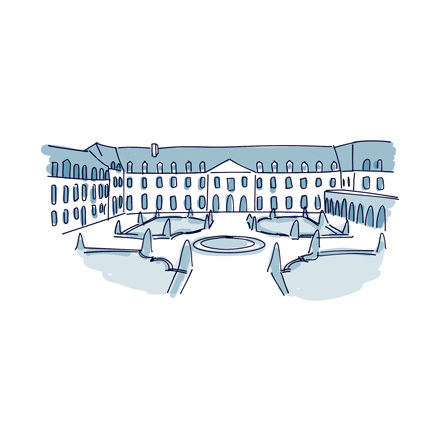
You've finally arrived at the Ladies' Abbey. The abbey was established by Duchess Mathilde in the 11th century while her husband was founding the men's abbey.
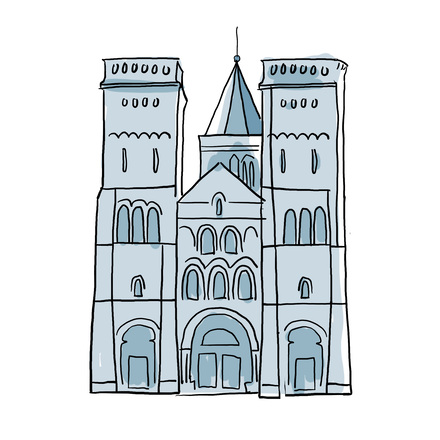
As you pass by, you will see the remains of the former Saint-Gilles church, which was completely destroyed in the 1944 bombing raids.
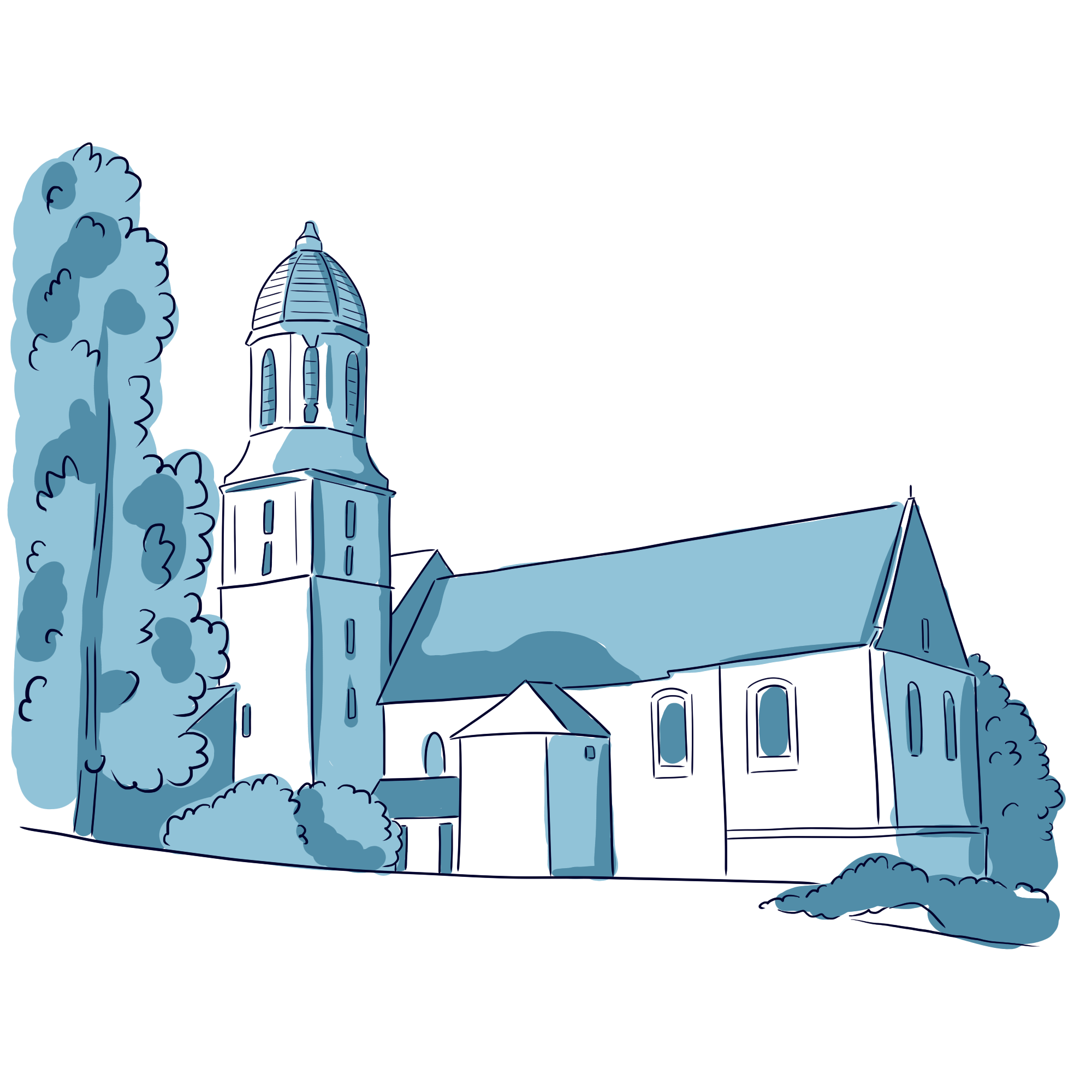
This is yet another decommissioned religious building in Caen. It was founded in the 13th century by Guillaume Acarin, a priest and adviser to King Philip Augustus.

One glance around you is all it takes to realise that you've arrived in the heart of medieval Caen.
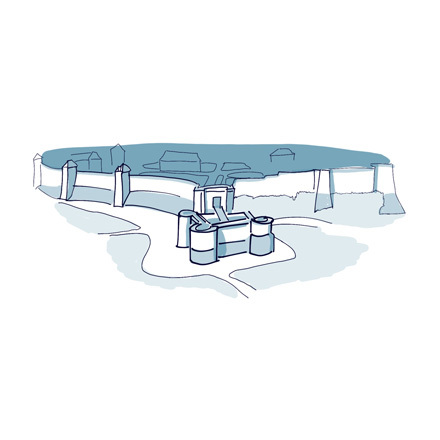
We have now arrived at the famous Caen Castle! It was built around 1060 by William the Conqueror, shortly before he became King of England!

Don't hesitate to climb all the ramparts where ever you can find an access point - it's the best way to enjoy the view over the city.
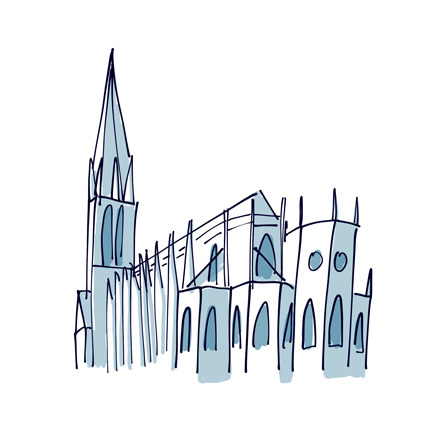
Granted, there are a lot of churches in Caen. The Saint-Pierre church, which stands in front of you, was the main building in Bourg du Roi.
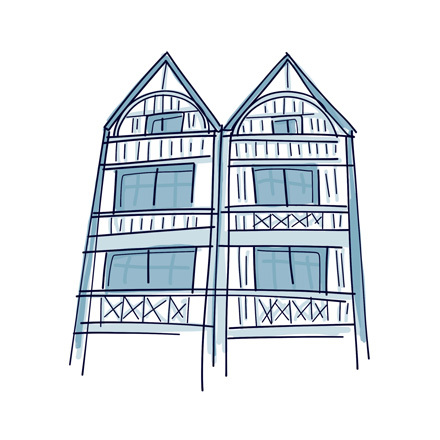
By chance, the two timber-framed houses standing proudly before you have recently been renovated! As a result, you can admire all the delicacy of this 16th-century work!
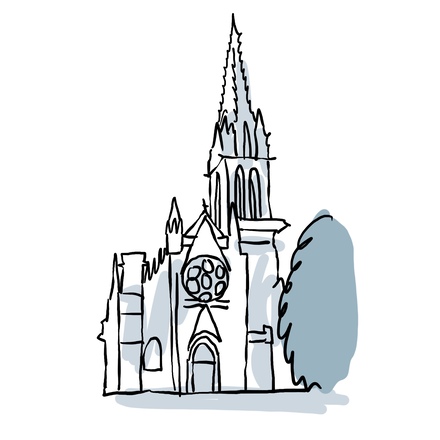
The church on your right is the enigmatic Saint-Sauveur Church, formerly known as Notre Dame de Froide-Rue.

You are now entering one of Caen's most fascinating streets.
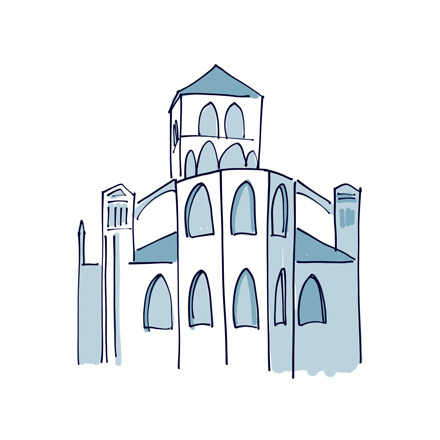
As you approach Saint Sauveur square, you come across Old Saint Sauveur Church.

Saint Sauveur square is one of the city's oldest public squares!
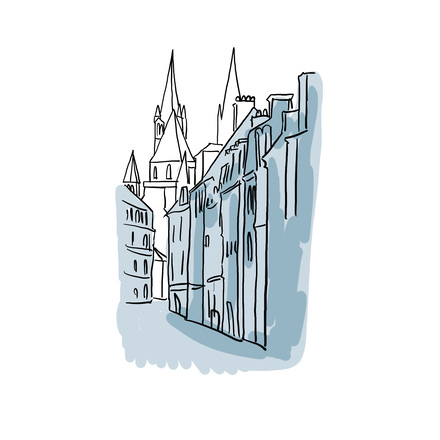
In France, and especially in the north, many towns have their own drinking spots.

Why not settle down on a bench on the beautiful Jean Louvel esplanade to discuss the fascinating history of Normandy?

Here, you stand on the Jean Marie Louvel esplanade, facing the impressive Men's Abbey.
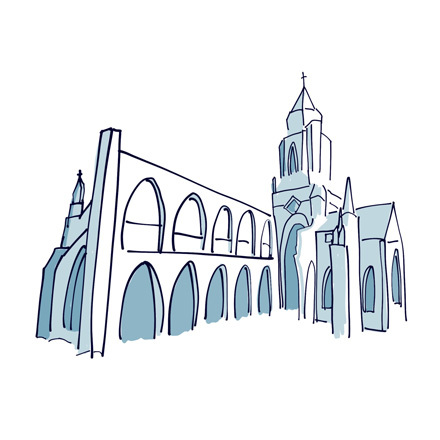
The ruins you see here is a church bearing the same name as the abbey church, but with one difference: this time it's Saint-Etienne-le-Vieux.
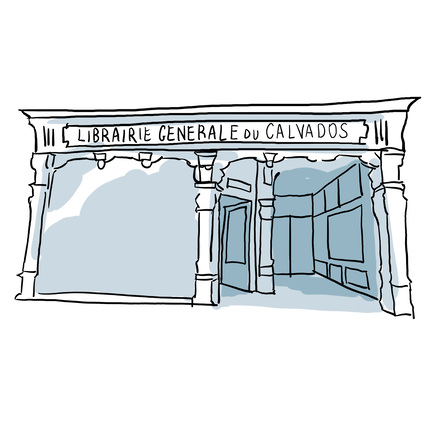
Caen is a city steeped in history and culture, with a host of lovely independent bookshops! One of which seriously stand out, you simply have to visit it. It's the Guillaume bookshop right in front of you.

Now that we've arrived in Moulin street, I'd like to use this opportunity to say a few words on the importance of water in Caen over the years.
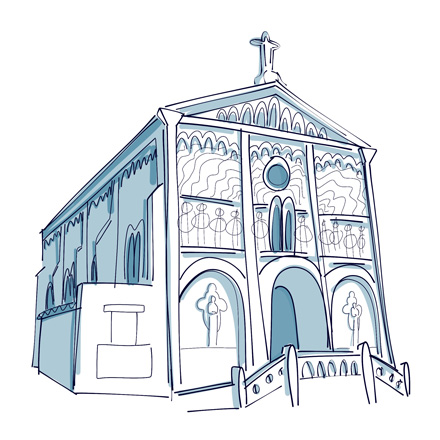
This beautiful white neo-Byzantine church is the Sacred Heart Church, located in the heart of the foreigners' neighborhood. It takes its name from the date of its consecration, June 7, 1920, the holiday of the Sacred Heart.
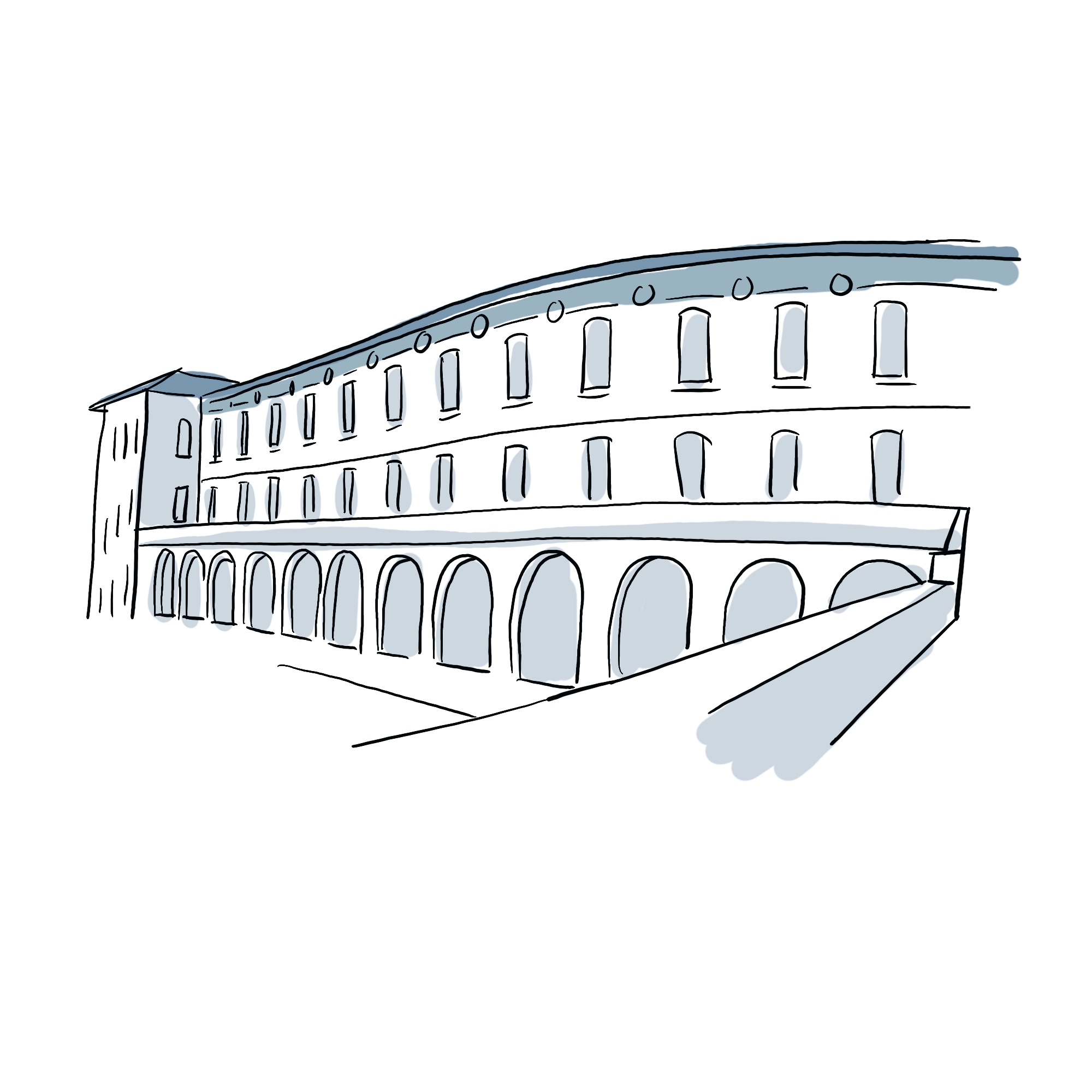
The huge yellow building you're now walking by is the Lycée Fesch. In 1805, an imperial decree handed over this former Jesuit house to the town, which transformed it into a college.
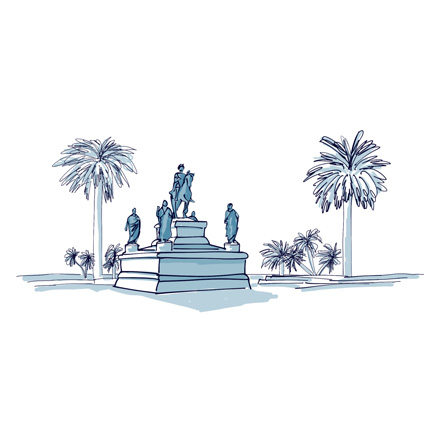
You now find yourself on the General De Gaulle Square, which marks the border between the old town of Ajaccio and the new districts. Back in the day, it was called “Place d’armes”, which translates to “Weapons Square”, as a reference to a time where soldiers used to train.
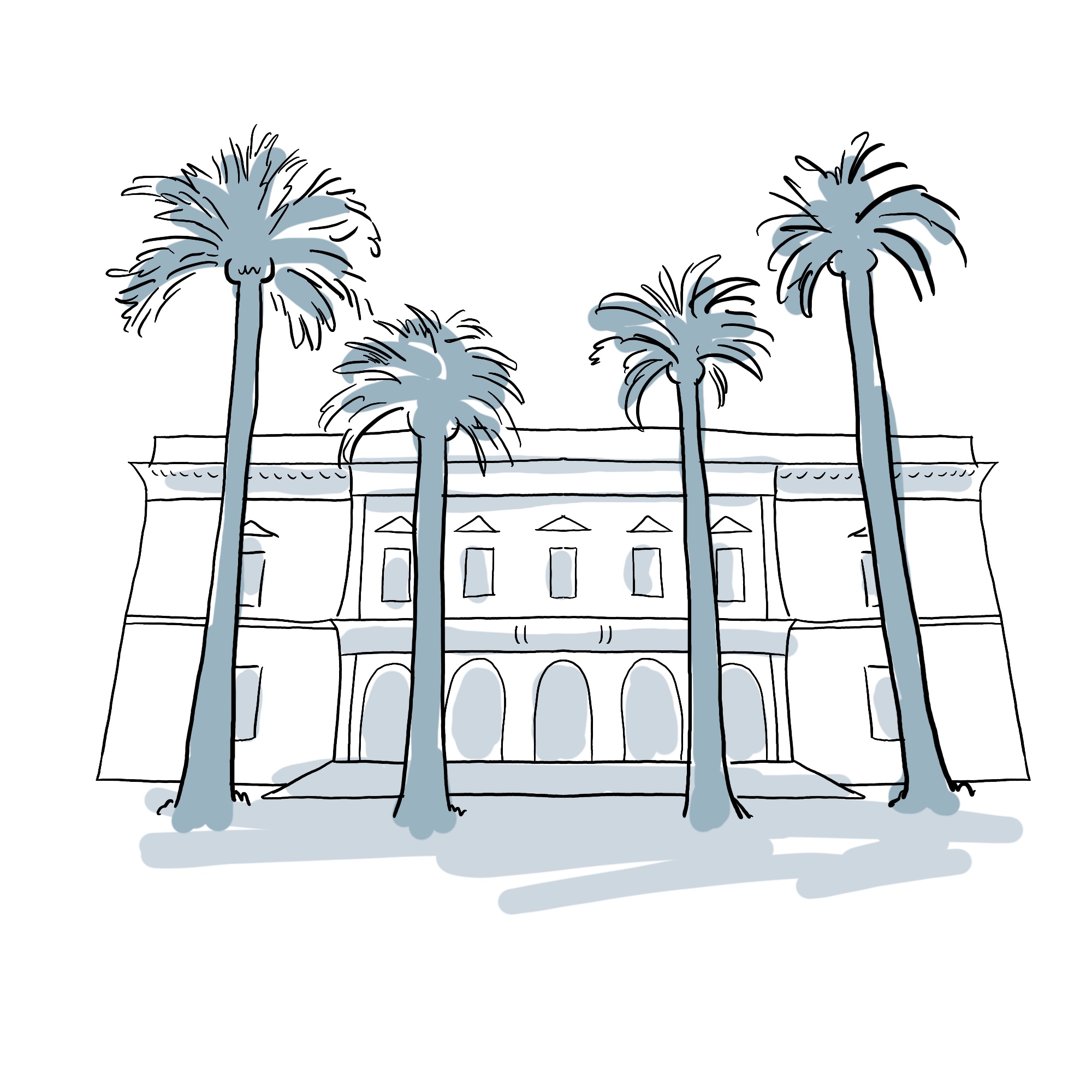
This beautiful yellow neoclassical building, in the middle of a tropical garden, is the head office of Corsica's prefecture. Its construction was authorized by royal order in 1822 and completed in 1830.
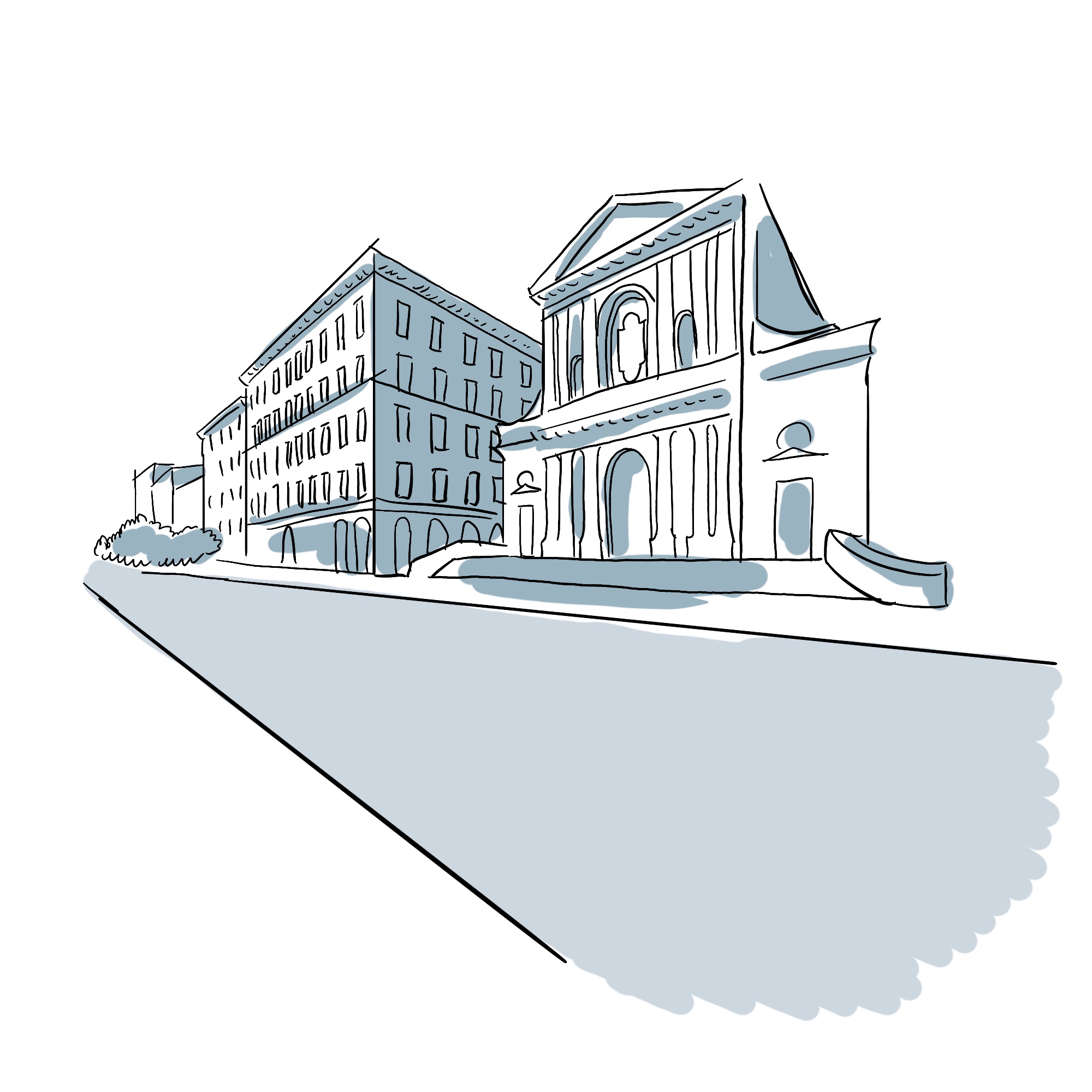
You're on Napoléon Avenue, the main street of the city center. Designed by Napoleon I, this street was at the heart of his great project to embellish his native city. As soon as it was inaugurated, it became a popular place to wander,
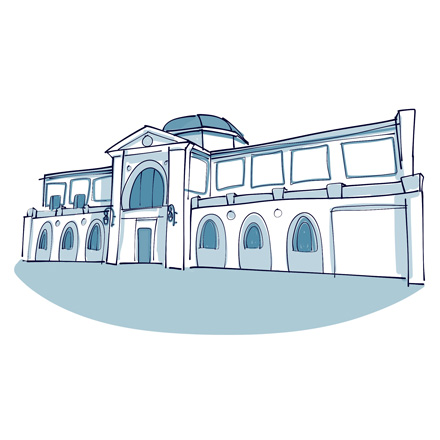
Let's talk a little about Cardinal Fesch. You've walked up his street, past his statue, the museum named after him and the imperial chapel we owe him. But who is this famous Cardinal?
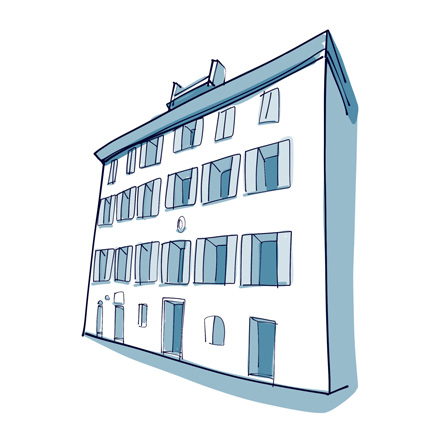
You're likely to see a crowd of people on this narrow street, but that's only to be expected as you approach the house of Napoleon Bonaparte. The future French emperor was born here on August 15, 1769.
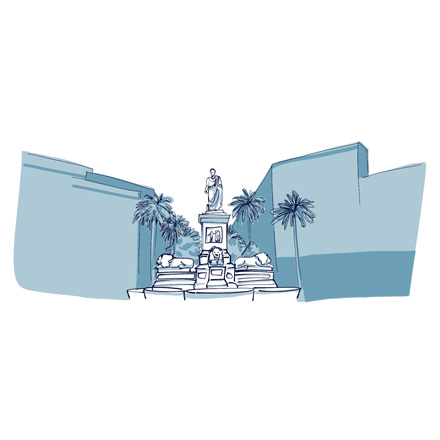
Commonly known as the Place des Palmiers, the Maréchal Foch Square was created in the early 19th century as the start of the faubourg leading to the old Genoese town. Overlooking the square,
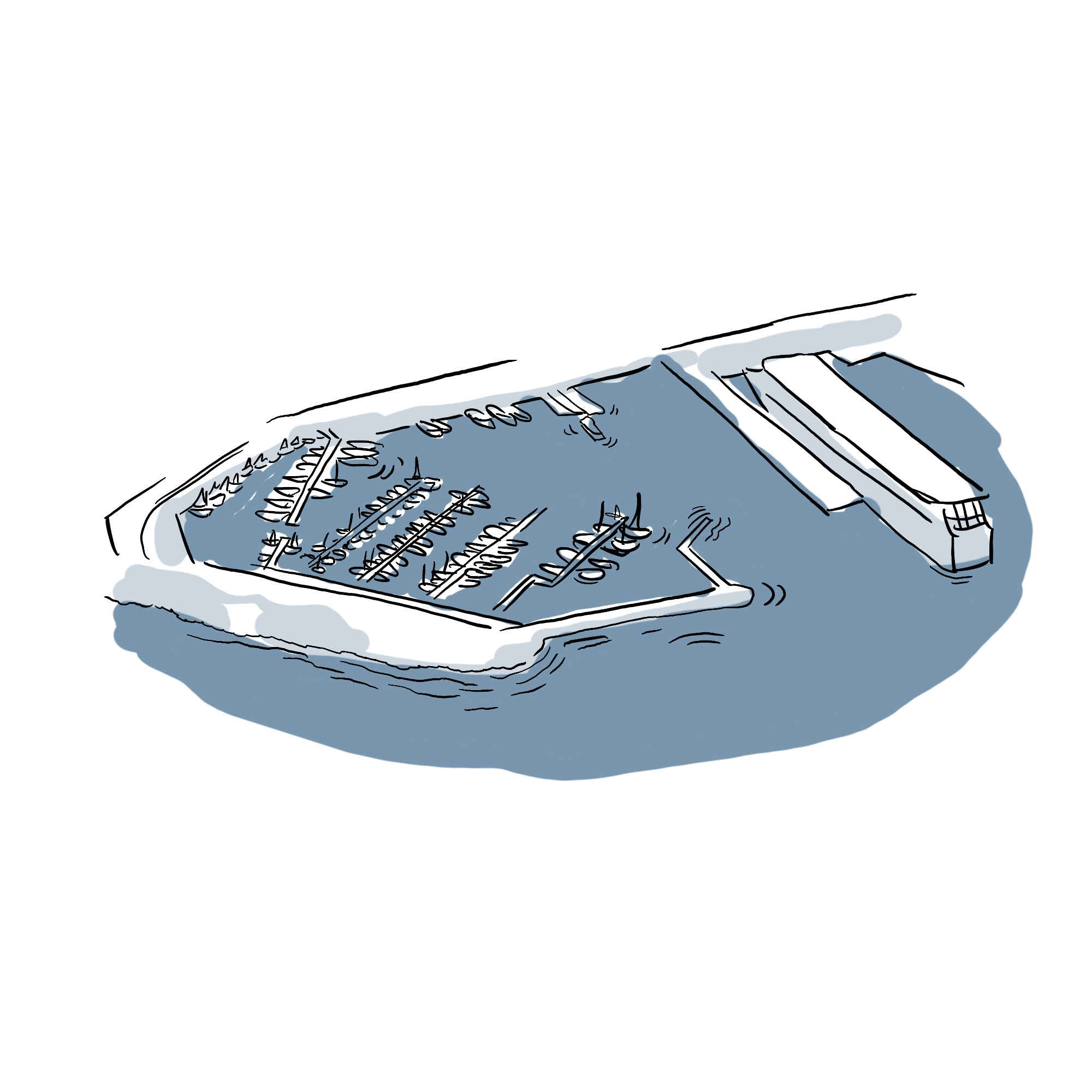
Here you are at Ajaccio's old harbor, Port Tino Rossi! He is a famous singer born in Ajaccio. Yes, the town wasn't just Napoleon's birthplace! It's an ideal place to sample the delights of Corsica.

From the citadel pier, you're face to face with the horizon. It's the ideal place to capture a shot of the old port. Located in the Gulf of Ajaccio, the port consists of 3 basins, separated by a cruise mole.

From the citadel pier, you're face to face with the horizon. It's the ideal place to capture a shot of the old port. Located in the Gulf of Ajaccio, the port consists of 3 basins, separated by a cruise mole.

Don't let its small size fool you, this pretty Baroque cathedral, with its ochre facade and blue-grey dome, is the Cathedral of Santa Maria Assunta. Dedicated to the Assumption of the Virgin Mary,

You now walk past the little church of Saint-Erasme. This former Jesuit chapel was consecrated to the patron saint of sailors after the French Revolution. It was built in the late 17th century.
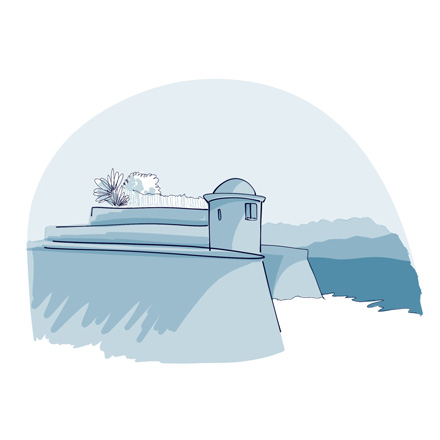
You now have a clear view of the silhouette of Ajaccio's citadel, outlined above the sea. In 2021, the citadel opened to public for the first time in 5 centuries! Don't hesitate to take a tour of this tourist landmark.
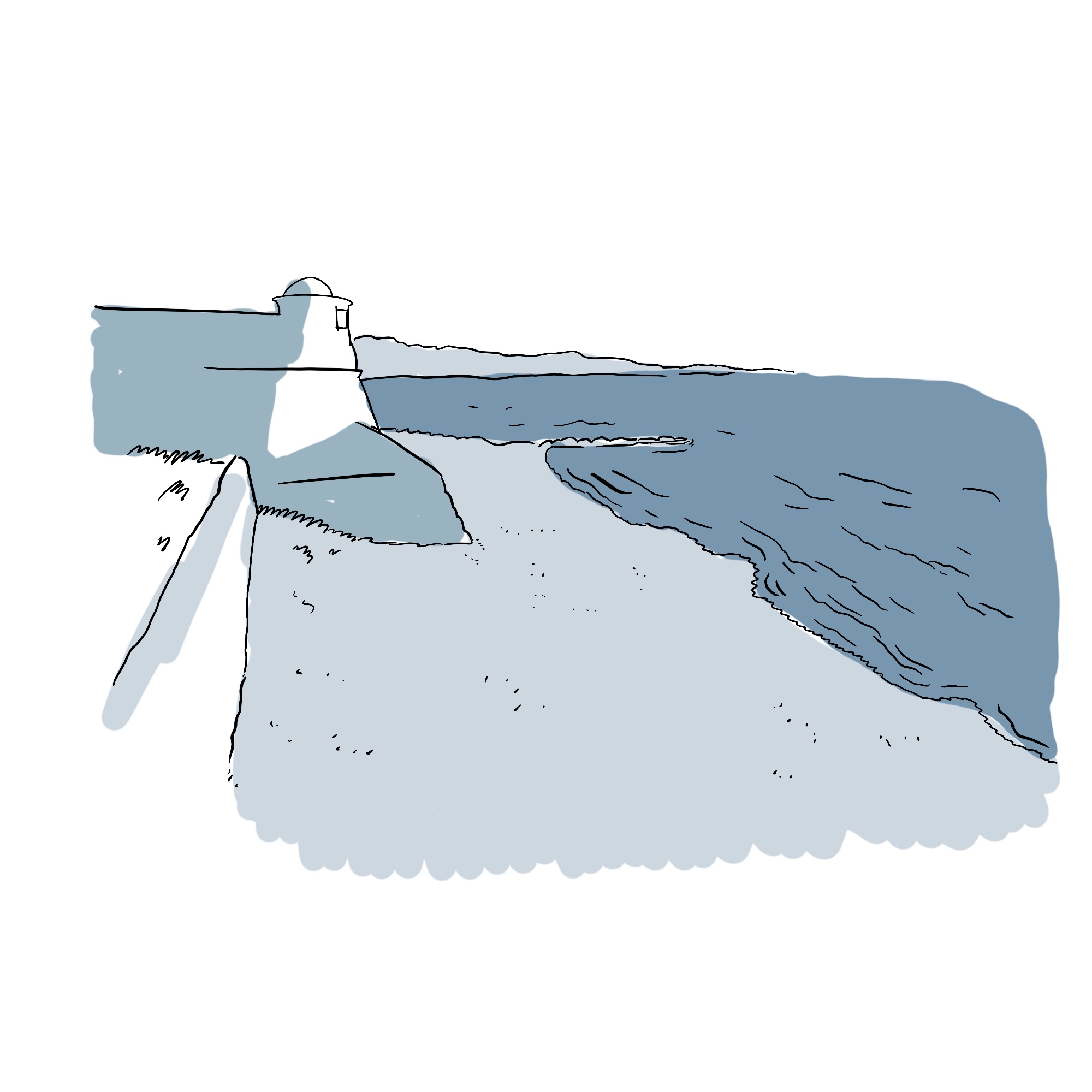
There's nothing like a bay to provide a great view of a beach. You're looking at the Saint-François beach, surrounded by a promenade of palm trees.
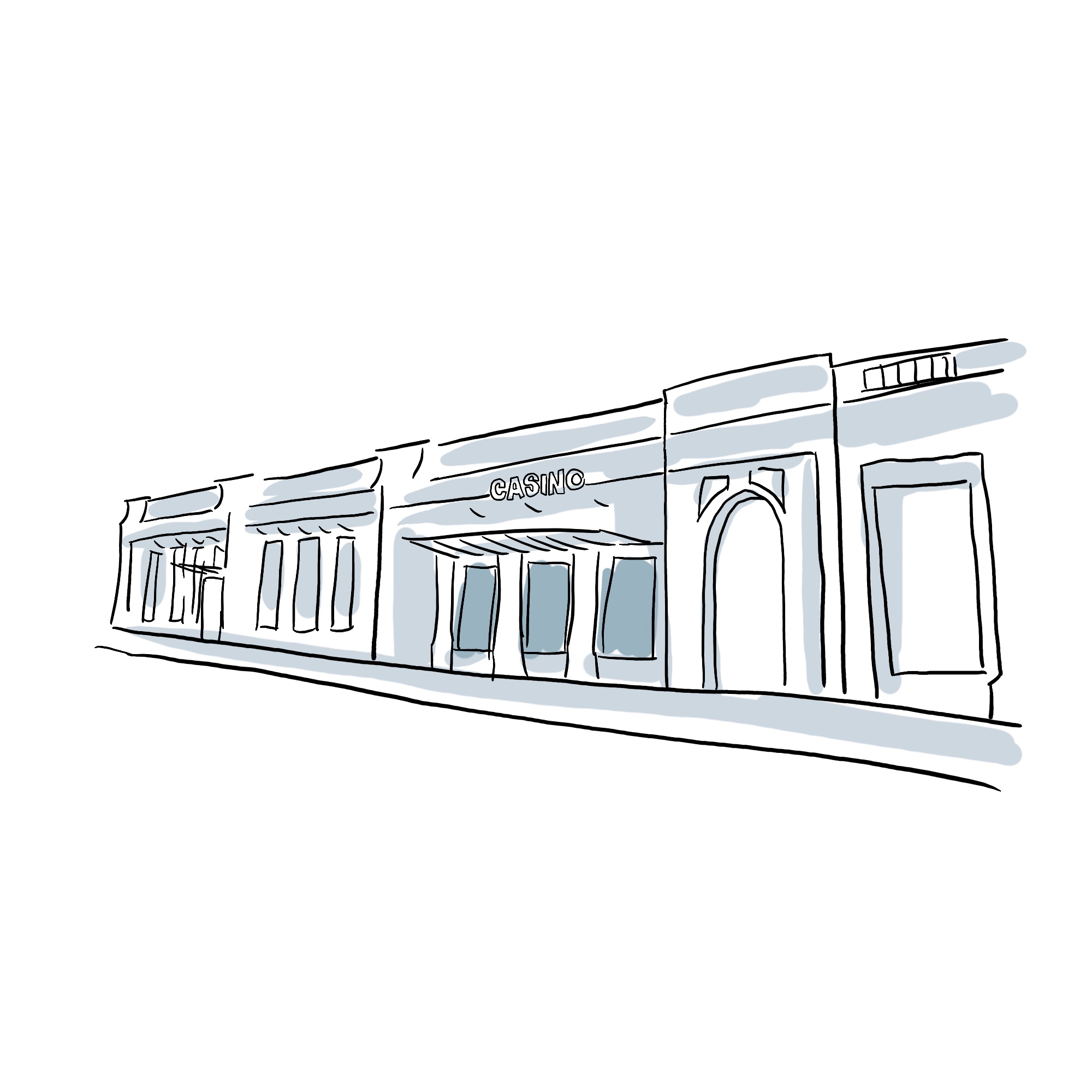
You'll walk past the Casino of Ajaccio, which stands peacefully facing the bay. It's well worth a visit, especially since it's Corsica's only casino! So if you enjoy slot machines and you're on holiday in Corsica,

We come back to our view of the sea at the highly popular Miot square. This great overhang on the Mediterranean sea is an ideal place to try your hand at panoramic photography and, why not, pétanque tournaments!
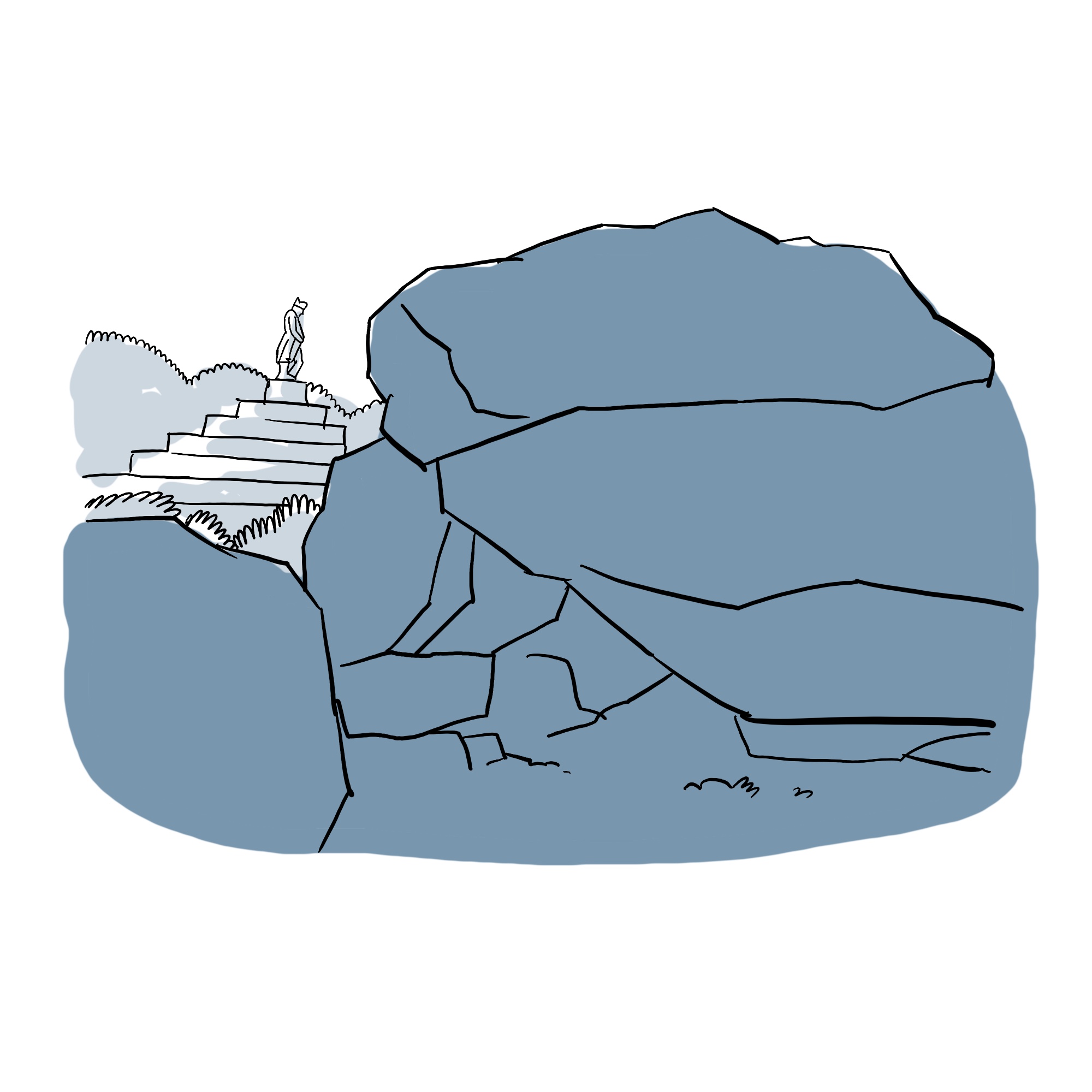
Arriving at Austerlitz square immediately sets the mood. This is the place to pay respect to Napoleon Bonaparte. The ramp leading up to the statue, identical to the one at "Les Invalides" in Paris, commemorates the emperor's military victories.
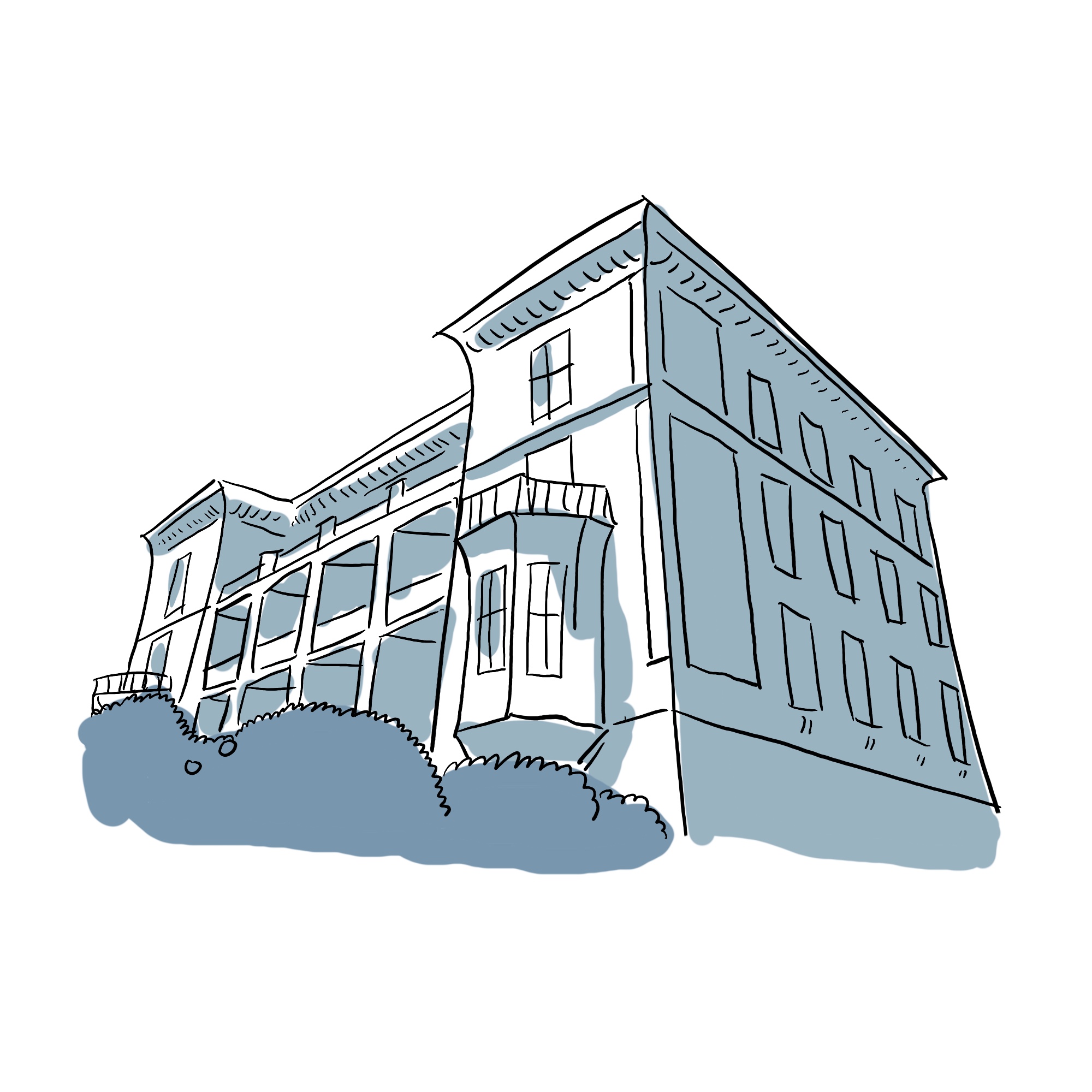
The beautiful, extravagant facade you see around the corner is that of the Cyrnos Palace. In 1870, a wealthy Scottish woman, Miss Campbell, travelled to the Mediterranean islands and fell in love with Ajaccio.
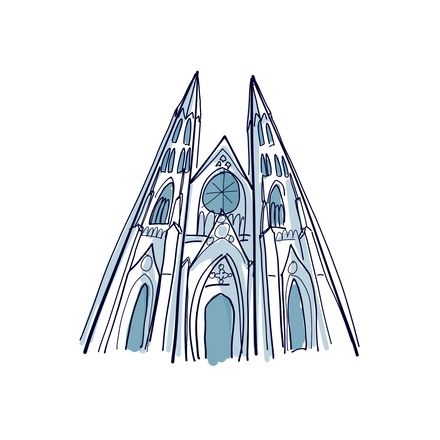
Right in the heart of 5th Avenue, one of New York's most famous streets, you'll find St. Patrick's Cathedral. This stunning white marble church stands out against the backdrop of the city's towering skyscrapers. Though it may seem tiny next

You're now looking at the majestic Rockefeller Center, standing in the heart of the city's theater district. Consider this the main entrance to Rockefeller, which is actually made up of 19 buildings in all, housing offices, restaurants, hotels and stores of all kinds!
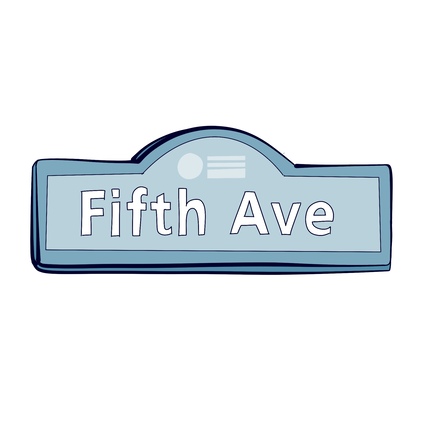
Often compared to the Champs-Élysées in Paris, Fifth Avenue is undoubtedly the most posh street in Manhattan. You'll find yourself surrounded by high-end boutiques, as well as must-see monuments and museums, like Rockefeller Center, St. Patrick's Cathedral,
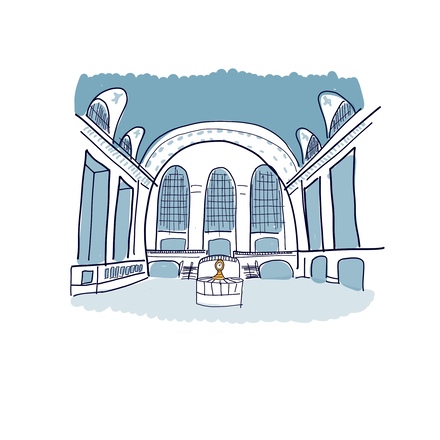
Grand Central Terminal is yet another must-see landmark in New York City. People from across the globe come to see this legendary station, often reminded of a scene from a movie, TV series or book.
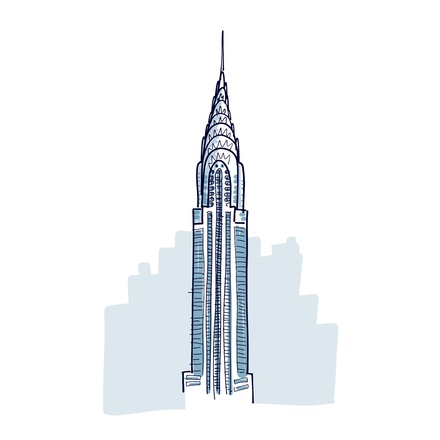
You're standing at the foot of one of New York's tallest skyscrapers, the Chrysler Building. Measuring 319 meters high, it was the tallest building in the world for almost a year after its construction! It was built by Walter Percy Chrysler,
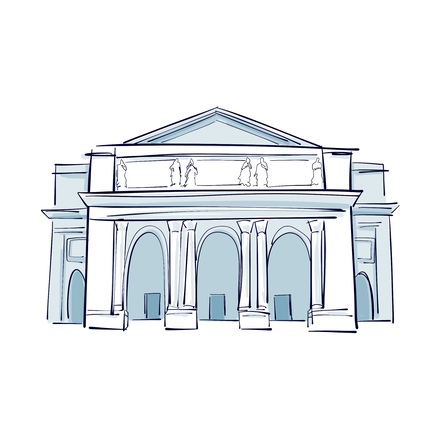
The New York Public Library, the second largest in the US, is brimming with literary and historical treasures, home to 56 million documents collected since its founding in 1895. Beyond its vast collection of books, research articles, and DVDs,
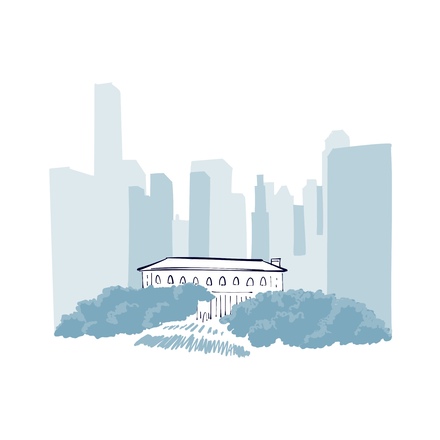
Welcome to Bryant Park, one of New York's most famous parks, right in the heart of Manhattan and just a stone's throw from Fifth Avenue. It's nicknamed “Little Luxembourg Gardens” because of its chairs, tables and carousel reminiscent of those in the Jardin du Luxembourg in Paris.
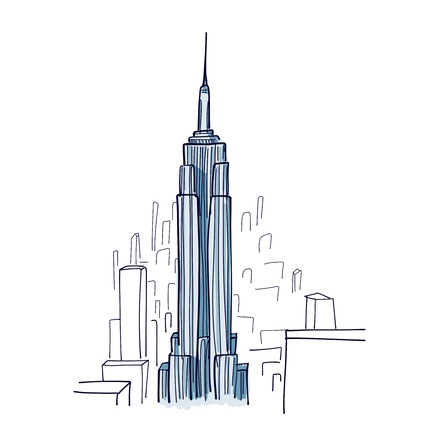
You've undoubtedly seen it while wandering the streets of New York City – the iconic Empire State Building, a source of immense pride for both New Yorkers and the entire nation. At a towering 381 meters, it's one of the tallest skyscrapers
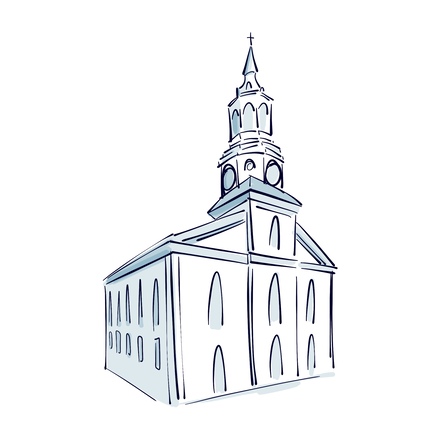
Nestled in the heart of Manhattan, this colorful Anglican church easily stands out on New York's 29th Street. The so-called “little church around the corner” was built in 1849 in a small neighborhood called NoMad, in reference to its location north of Madison Square Park.
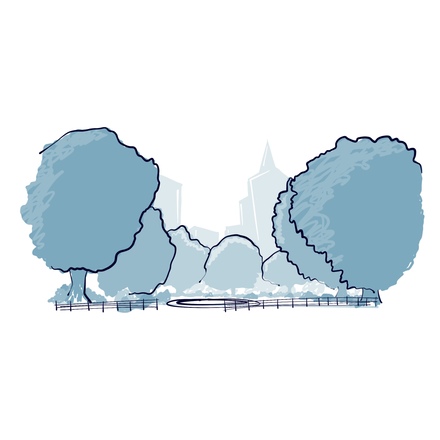
Introducing Madison Square Park, one of the many parks in the city, dating back to 1847! Back in 1876, the torch-bearing arm of the Statue of Liberty was placed here to impress the locals and encourage them to make donations to help build the statue's current pedestal.
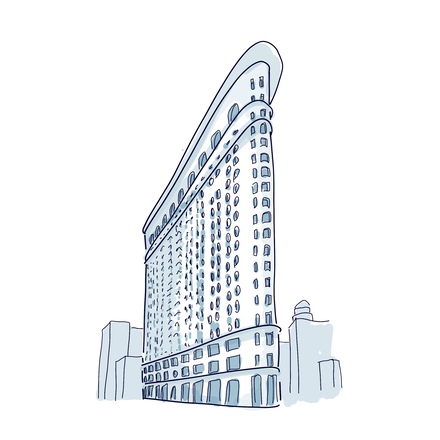
Behold! New York's famous Flatiron building, standing just a stone's throw from Madison Square Park. It only took two years to build and was one of Manhattan's tallest skyscrapers at its inauguration in 1902.
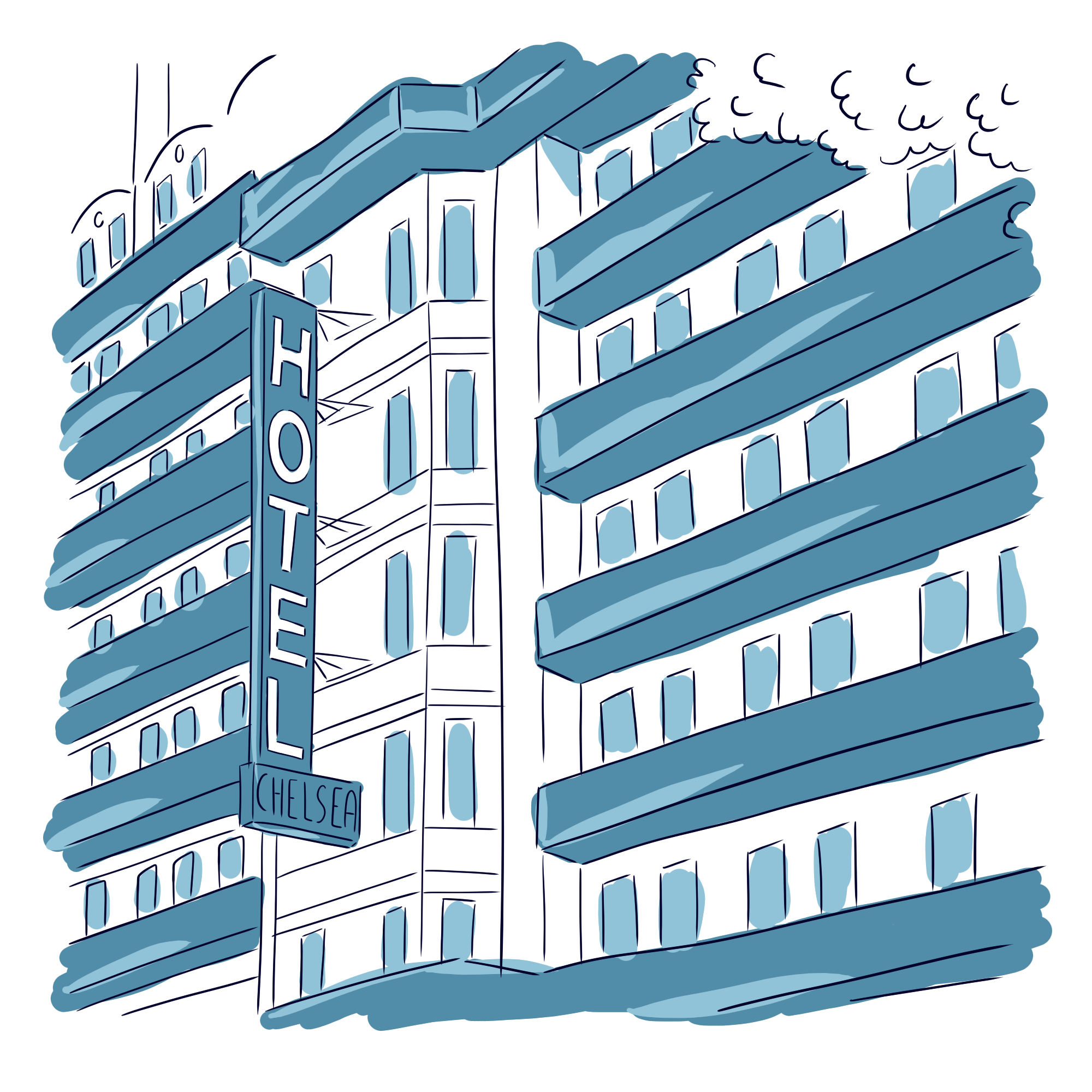
Located in the heart of the Chelsea neighborhood, the Chelsea Hotel has an extraordinary history that began in 1883, back when it opened its doors in Chelsea's former theater district. Its Victorian-Gothic style made it a standout at the time, yet it went bankrupt just a few years after opening.
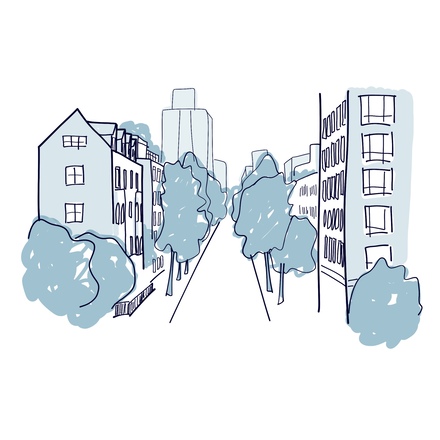
This is where you'll find the most art galleries in New York! This small residential neighborhood, with its red-brick houses, is a true art haven. The Chelsea Hotel is a prime example of this, having welcomed numerous artists seeking inspiration in the Big Apple.
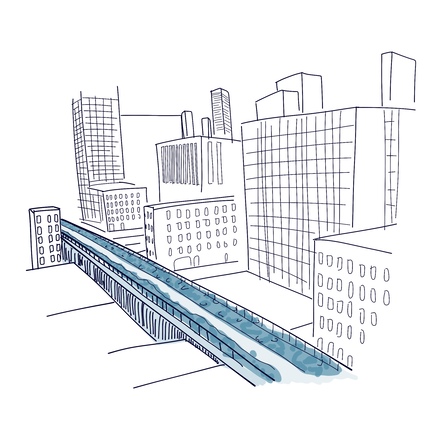
Have you ever heard of New York's High Line? You get to see the city in a whole new way. Plus, it's just a few blocks to your left, always in the Chelsea district. This elevated park is a must-see when visiting the biggest city in the US.

To your right, you'll find one of the most famous concert halls in the world! This iconic venue is a cornerstone of New York City's cultural life, hosting major sporting events and concerts by the biggest names in music, from Michael Jackson and Madonna to Elvis Presley.
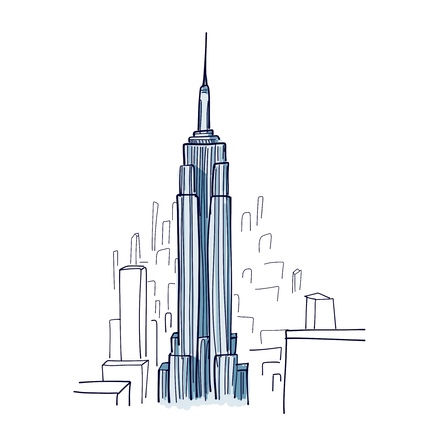
Standing here in the heart of 33rd Street, you have a great view of the Empire State Building, New York's must-see skyscraper! Measuring 448 meters high, its antenna included, it was the world's tallest skyscraper for over 30 years!
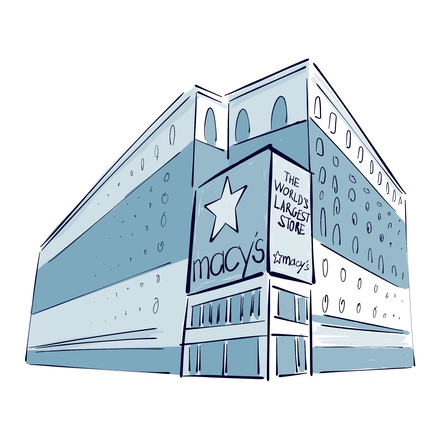
There's so much to see in this part of New York. It's one of the liveliest neighborhoods in the city! On your left, you can't miss Macy's, New York's biggest department store –and one of the biggest in the world– housed in an elegant 150-year-old building.
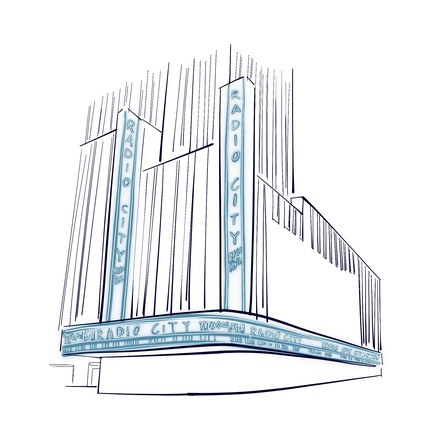
MTV Video Music Awards, Grammy Awards, Tony Awards – this legendary New York venue has hosted countless prestigious ceremonies, bringing together some of the world's biggest names for one-of-a-kind events!

We all know Broadway as the birthplace of musicals, theater, and shows of all kinds, but did you know that Broadway is actually the name of New York's oldest and longest avenue? Plus, it's also the only avenue in Manhattan that doesn't follow the strict city grid pattern,
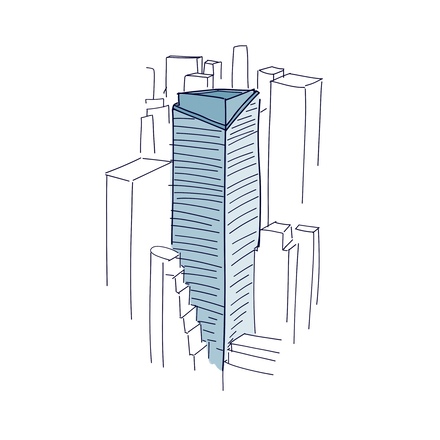
Take a look at the tower on your left. Standing 222 meters tall and 47 storeys high, the Times Square Tower was built in 2004 to house a large number of offices in Midtown Manhattan. Designed by architect David Childs, who built the iconic One World Trade Center,
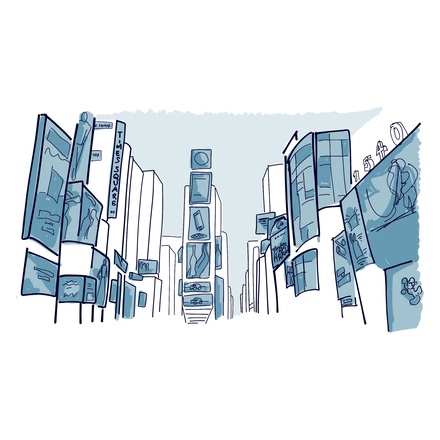
What could be more iconic than New York City's Times Square? Let's be honest, superlatives barely do it justice. It's the most famous square in the Big Apple, and surely one of the most famous in the world!
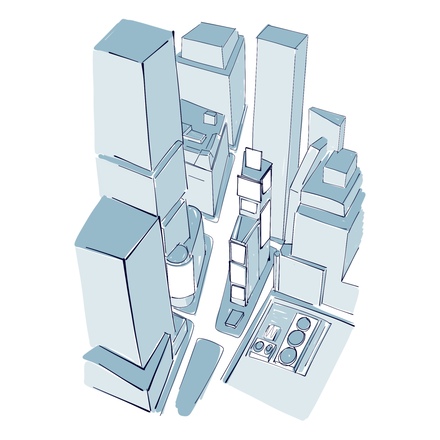
Hope you're not overwhelmed by all the dazzling lights, 'cause we're about to take a look at the history of Times Square. Before becoming the huge attraction it is today, this was just a simple square called Longacre Square.

Welcome to the National Opera of Lyon, a cultural haven where art comes alive. Located on the Place de la Comédie, opposite the City Hall, this iconic venue invites you to immerse yourself in a world of concerts, operas and ballets.Originally constructed in 1831, the building was redesigned in 1993 by Jean Novel, who adapted it to the
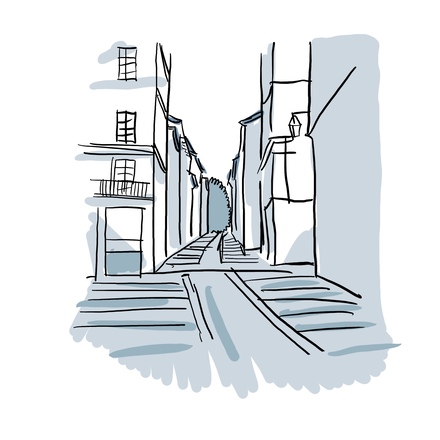
I have to admit that this is a steep climb but payoff lies in the rewarding views awaiting at the top, over the Croix Rousse plateau and several other districts. You are here on what is known as les pentes de la Croix Rousse, “slopes of” in English, the first district of Lyon. Since the 16th century, the people of Lyon have settled on the slopes
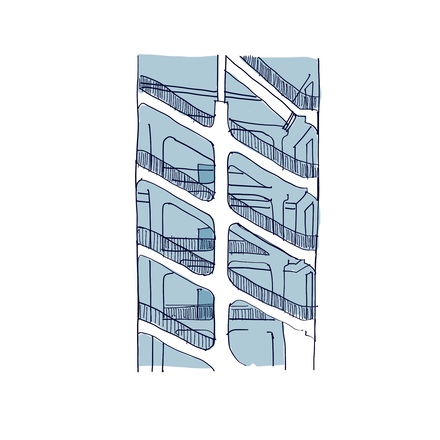
You are about to enter a traboule, a typical Lyonnais secret passageway, allowing a direct and discret passage from one street to the next. Once used to ensure faster transport of cloth out of the rain, and later during World War II to hide Resistance fighters, traboules have distinctive architecture combining spiral staircases, turrets
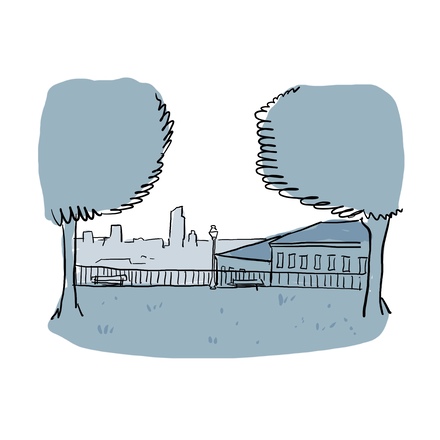
Let's take a break from our ascent of the Croix Rousse to take a look at this magnificent panorama of the city. Do sit down for a moment and admire the view from this square which, in my opinion, well deserves its name: Place Bellevue (Beautiful view square). From here, you can see the eastern part of Lyon: the towers of the Part Dieu
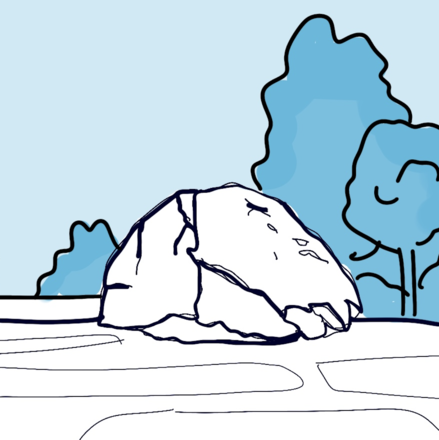
It is no coincidence that this place bears the name of "Esplanade du Gros Caillou" (Esplanade of the Big Pebble). Here you stand in front of the symbol of the Croix Rousse, a heavy rock that traveled almost 200 km to settle here 140,000 years ago. It was discovered in 1861 by the workers who were building the funicular, that would
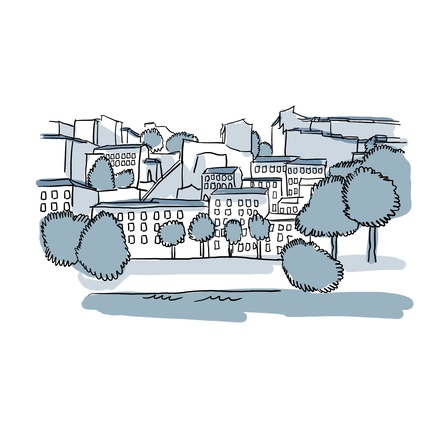
You're standing on the Croix-Rousse plateau, the district's highest point, also known as the "worker’s hill.". This non-conventional area was home to the "canuts" silk workers, who transformed the industry into a major force, propelling the city to the rank of France's leading industrial hub in the early 19th century.
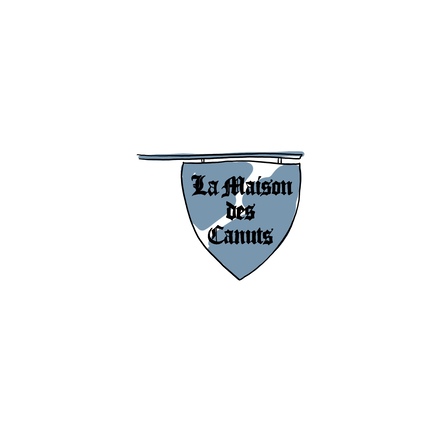
On your left, the Maison des Canuts, the Canuts’ House, is nothing less than a museum dedicated to the fascinating history of Lyon’s silk. Here you will have the opportunity to discover different weaving techniques, including the jacquard loom, the first programmable mechanical system.
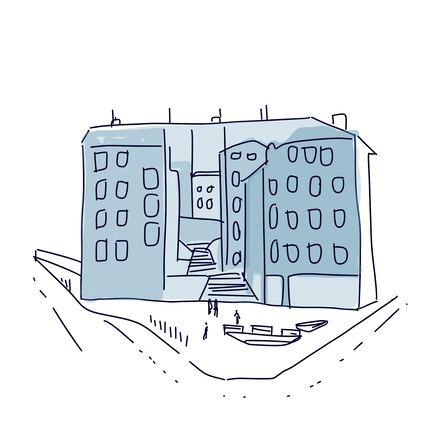
Here you are in front of the impressive Canuts mural. This 1200m² painted wall is the largest trompe-l'œil in Europe. Created in 1987, it has an incredible feature: it is considered to be "evolutive", in other words, it is regularly improved in order to be in line with the times. The first version was modified in 1997, to make it more modern
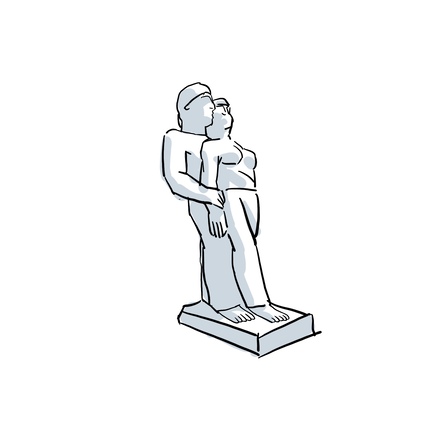
The Place des Tapis takes its name from the grassy slopes at the foot of the ramparts, known as "carpets". In the heart of Croix Rousse, this modern and convenient space enables inhabitants to meet, rest and chat. Here you will find a statue called "Le Chant des Canuts" (The Song of the Canuts), representing two lovers singing the

You are facing one of Lyon's most famous panoramas! This view takes in the Peninsula as far as the Confluence Museum, and in the distance, you can see the mountains of the Massif du Pilat, which is less than an hour ride from Lyon. I'll leave you to enjoy the view before starting the descent!
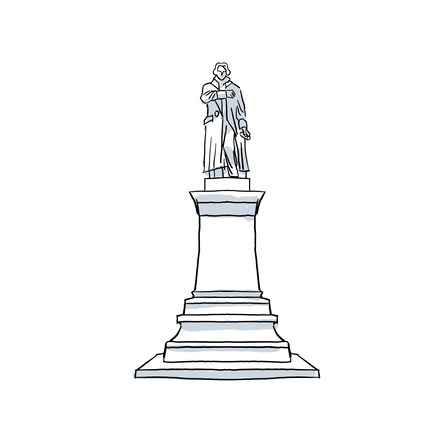
Today, the central square of the district, Place de la Croix Rousse, hosts the main events of the plateau as well as a food market several days a week. The statue of Joseph Marie Jacquard, famous French inventor who created the first semi-automatic loom in 1801, stands in the middle of the square.
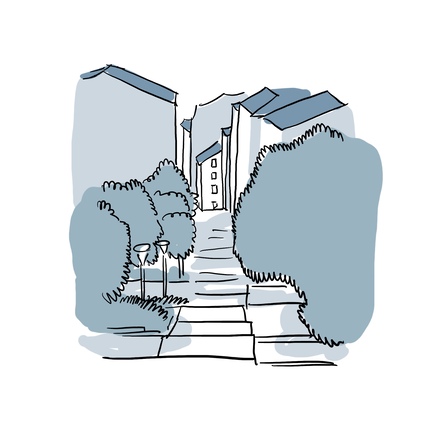
Arranged in several terraces, this esplanade is a privileged meeting place for the inhabitants of Croix-Rousse. Paved with Montalieu limestone, it has several green areas where you can find black mulberry, white mulberry, sycamore and paper mulberry trees, a testimony to the importance of the silk industry which grew in this district.
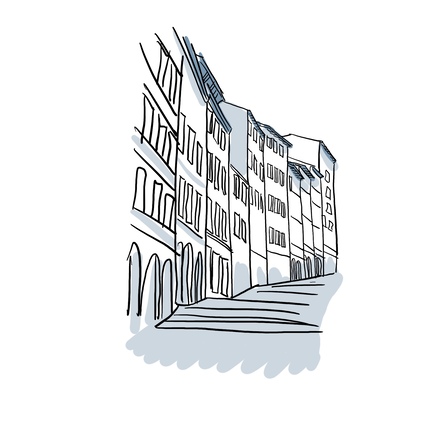
The Montée de la Grande-Côte, which links the lower slopes to the Croix Rousse plateau, is lined with typical buildings of this unique neighborhood. Some of these colorful houses date back to the 16th and 17th centuries, and add to the charm of this passage, which is the oldest on the hill.
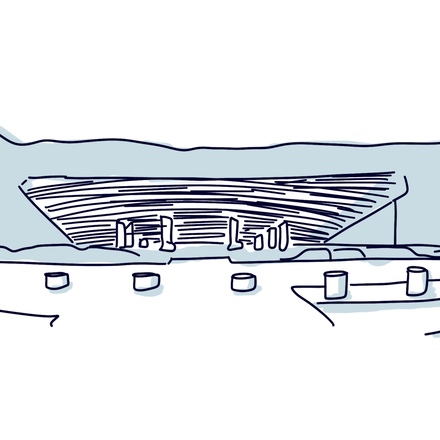
Located at the foot of the slopes of Croix Rousse, this amphitheater was definitively uncovered in 1958 by Amable Audin, who identified it as an amphitheater thanks to a dedicatory inscription. Built in 19 A.D. with 3,000 seats, it became the largest amphitheater in Gaul from the 2nd century onwards, with a capacity of more than
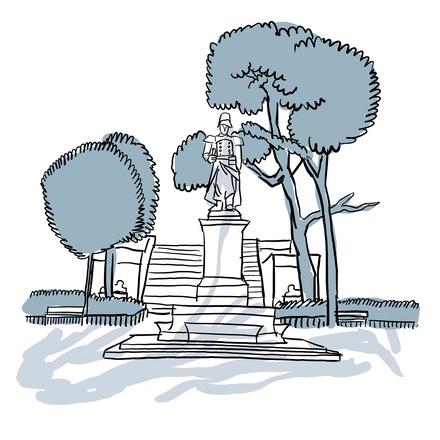
This square has a friendly atmosphere to it, with “pétanque” courts in the middle and numerous cafés and bars around it. Petanque is a French leisurely game involving strategy and skill to through metallic balls as close as possible to a smaller one. Inhabitants regularly gather under the shade of the trees that adorn it.
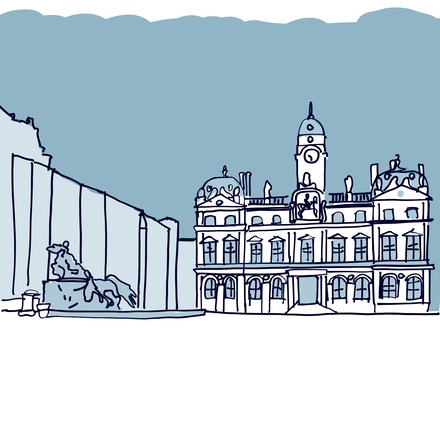
One of the liveliest squares on the Peninsula! With its expansive terraces and exceptional setting, Place des Terreaux appeals to both locals going out for a drink and visitors who appreciate history. The reason? The Town Hall, inaugurated in 1672 and restored in the 19th century, stands at the far end of the square and is one of Lyon's


Here’s another iconic statue that adds to the charm of Troyes. Her name is Lili, affectionately known as the lady with the hat. She was created by Hungarian sculptor Andras Lapis, who has a fondness for elegant women wearing hats—you can
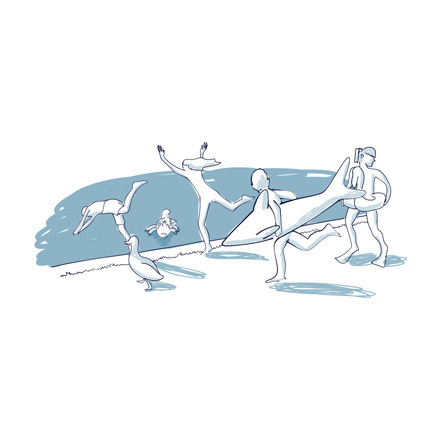
Here’s another statue by Belgian artist Tom Frantzen, offering a picture-perfect view over the fountain quay with the prefecture and the basilica in the background. This sculptor really is a genius. The energy and joy of this playful chain of

On your left, you’ll see the sign for the Cellier Saint-Pierre and the old painted inscription on the wall that reads “Special Factory of Prunelle.” This is where the famous Prunelle de Troyes liqueur is still distilled. It even won a gold medal at the
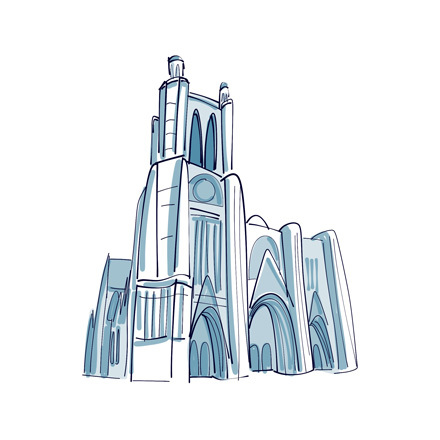
You’re now standing in front of the Cathedral of Saint Peter and Saint Paul, instantly recognisable by its single left-hand tower. The origins of Christianity in Troyes go back a long way, though legend and history tend to blur together.
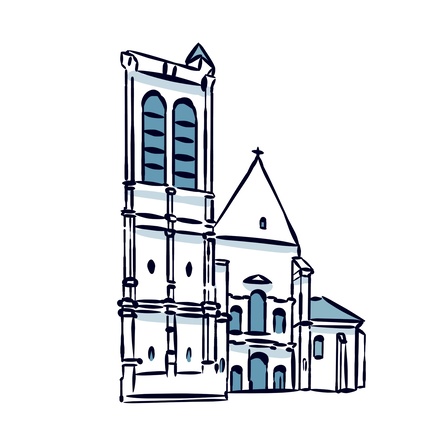
This charming little square brings you face to face with Saint-Nizier Church. Its colorful roof might remind you of the Hospices de Beaune, and that’s no coincidence—it features the same traditional Burgundian style with its beautifully glazed
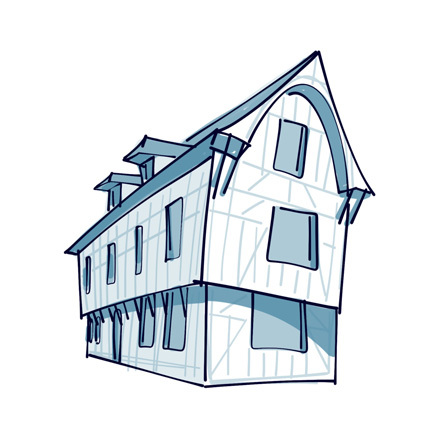
At the corner of Rue Kléber, you’ll find the oldest half-timbered house in Troyes—an absolute gem known as “La Maison du Dauphin,” or the Dauphin’s House. Built in 1472, this beautifully restored building gets its name from a carved coat of
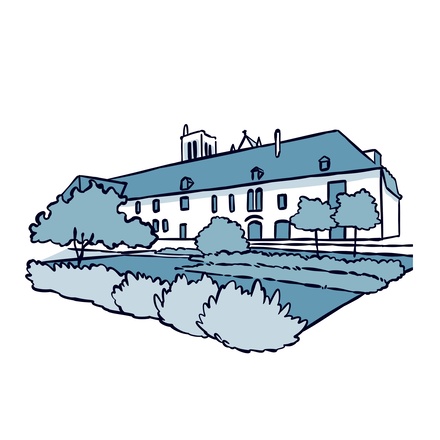
On your right, you’ll see the entrance to the gardens of the Saint-Loup Museum. This peaceful spot was once the site of a powerful abbey, founded in the 9th century to safeguard the relics of Bishop Lupus—later known as Saint Loup.
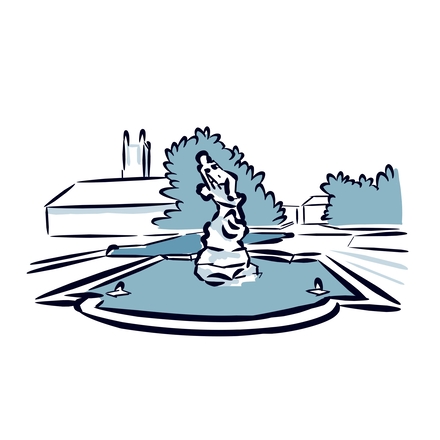
You’re now arriving at Liberation Square, a newly redesigned green space that’s just the latest chapter in a long and varied history. Originally, this area was home to an old cemetery and two churches. In the 18th century, the entire site was

You’re now standing right in the heart of Troyes—in every sense of the word. Geographically, you’re at the center of the old town, famously shaped like a Champagne cork when seen from above. Locals even call it the “Champagne Cork,”
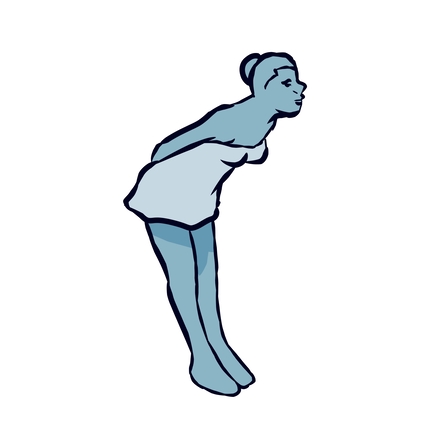
Discover Woman Blowing a Kiss Statue in Budapest with our audio-guided city tour on the Navaway® app.
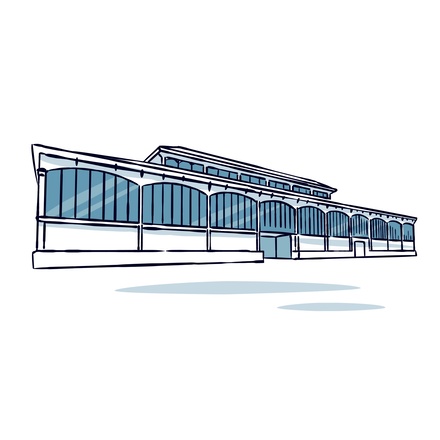
A visit to the local market hall is a must in just about every French city—and Troyes is no exception. In a country where people don’t just eat to live, but live to eat, it’s no surprise that every region is brimming with culinary talent and specialties
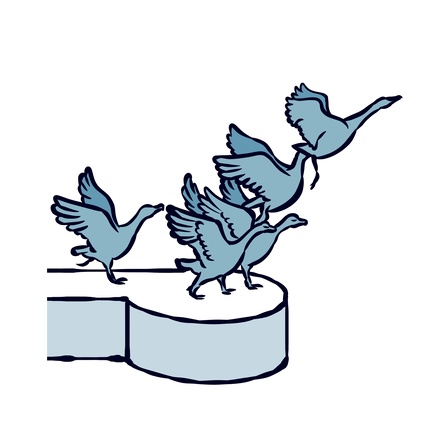
You're now standing on the site of the old swing bridge, where in 2018 a new piece of lively and poetic public art was added to brighten up the heart of Troyes. It’s called “Wait For Me”. It shows a little dog startling a flock of birds into flight.
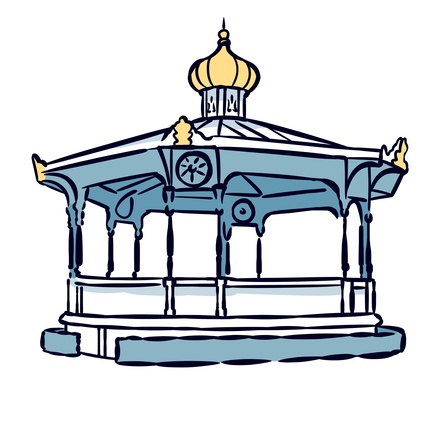
You’re now walking through the lovely Jardin du Rocher, a peaceful garden laid out in 1860 on the old city moats. It’s a charming spot, best known for its elegant bandstand—an eye-catching structure with a hint of Oriental flair.
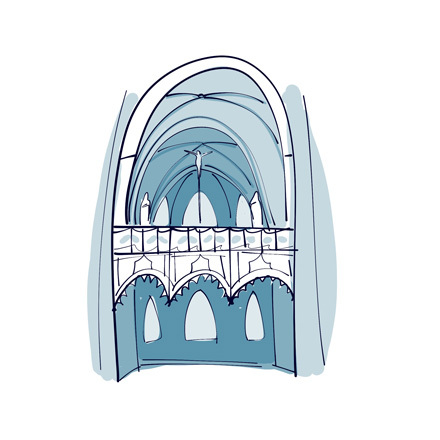
Tucked a little tightly among more modern buildings, this is the Church of La Madeleine—the oldest church in Troyes. First mentioned in 1157, it was largely rebuilt in the early 13th century, in the brand-new Gothic style that had just started
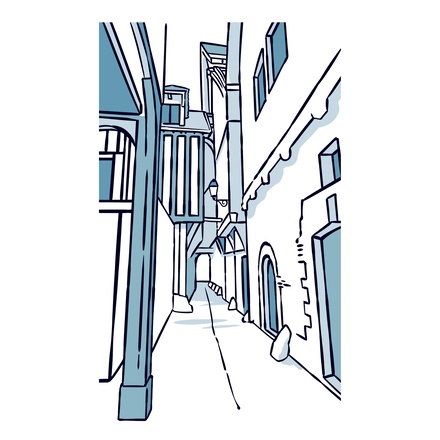
You’re now walking through the most famous alleyway in the city—so narrow that cats could leap from one rooftop to another without ever touching the ground. Look down and you’ll spot the original 13th-century cobblestones, complete with a
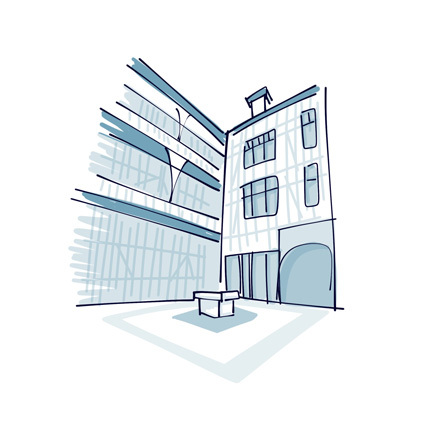
You’re now stepping into the Golden Mortar Courtyard—a hidden gem that offers a rare glimpse into what private courtyards once looked like behind Troyes’ half-timbered façades. Its beauty today is thanks to a meticulous restoration carried
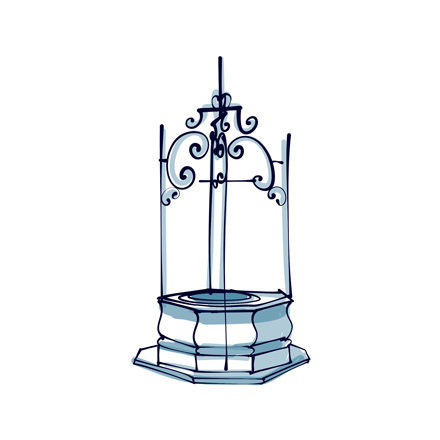
You’ve probably noticed along the way just how many old wells are scattered throughout the city—beautiful ones, too, with their carved stone wellheads and delicate wrought iron pulleys. That’s no coincidence. The city of Troyes has always had a
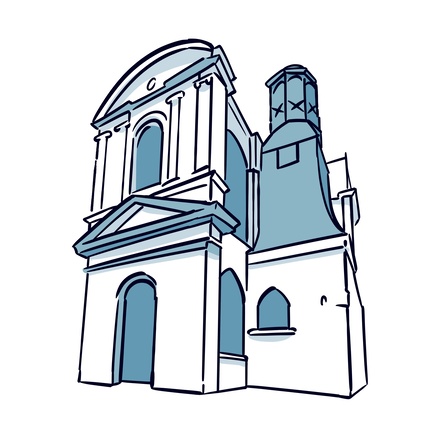
You're now standing in front of Saint Pantaleon Church. Historical records suggest that a synagogue once stood here, followed in the 12th century by a wooden church dedicated to the martyr Pantaleon. According to Christian tradition

On your right, you pass the fascinating Museum of Tools and Workers' Thought. This moving museum offers a collection unique in the world, gathering 12,000 hand-crafting tools dating from the 17th to the 19th century. Presented in display

You're now crossing the city's main shopping street—and chances are, you've already heard about Troyes' reputation as a shopping destination, especially for its famous factory outlets. What you might not know is that Troyes' connection to

We're now standing on what was once the historic site of the Champagne Fairs, known in the Middle Ages as the Money Exchange Square. Back then, there were no supermarkets stocked with goods from every corner of the globe, but there were
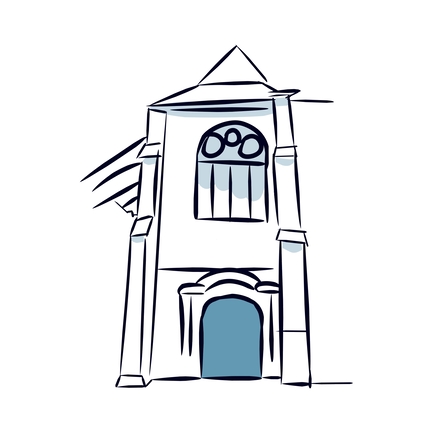
At the far end of the square stands Saint-Jean-du-Marché Church. A parish existed here as early as the 9th century, and it was in this very church that Louis the Stammerer, King of France, was crowned for the second time during the Council of
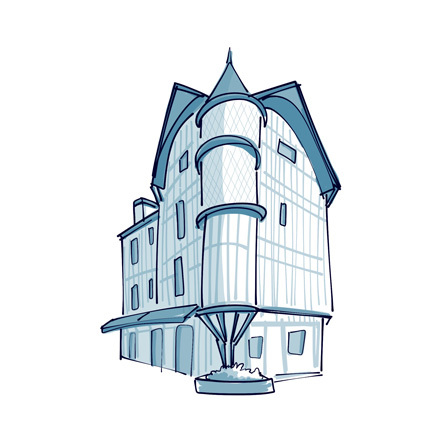
At the far end of the square stands Saint-Jean-du-Marché Church. A parish existed here as early as the 9th century, and it was in this very church that Louis the Stammerer, King of France, was crowned for the second time during the Council of
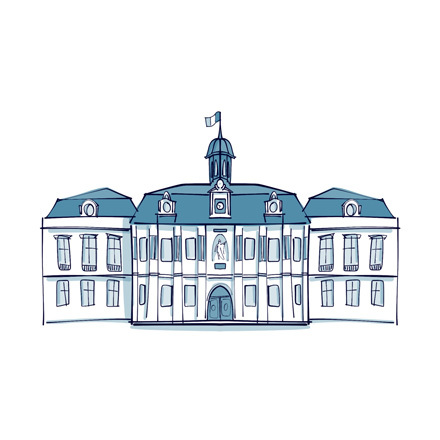
You’re now standing at a crossroads between wood and stone—with traditional half-timbered houses to your left and a beautiful row of 19th-century bourgeois buildings to your right. But take a moment to look at the façade of the City Hall.
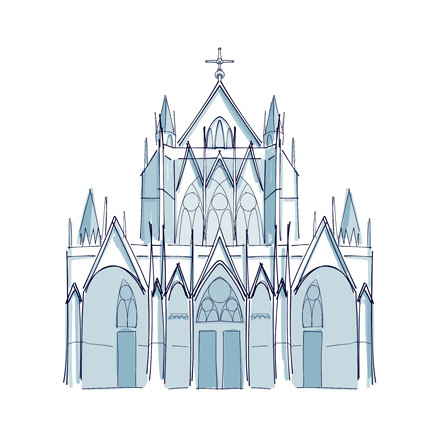
You’re now standing in front of the stunning Saint-Urbain Basilica, considered a perfect example of Gothic architecture. Troyes built this magnificent basilica in the elegant Rayonnant Gothic style to honor one of its own—Jacques Pantaléon


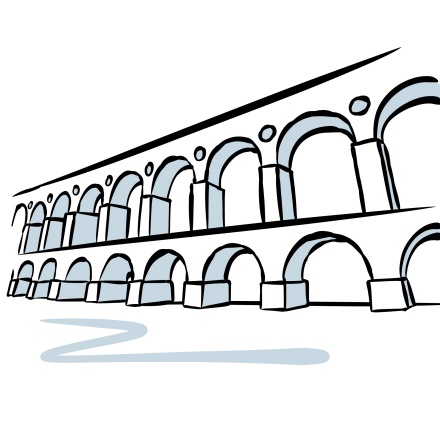
Introducing the famous Arcos de Lapa. It has earned its place among Rio's most iconic must-see sights, alongside Corcovado, Copacabana, and the Selarón Steps.
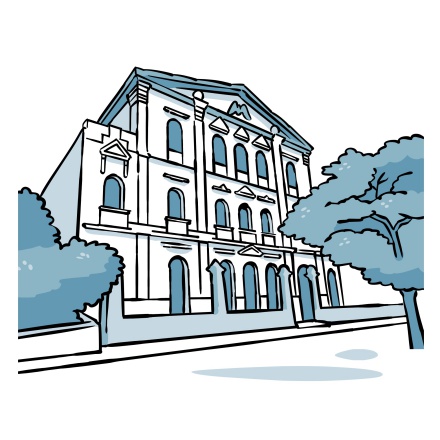
The pink-and-white mansion before you is the Masonic Lavradio Palace. Since 1972, it's been protected by INEPAC, the State Institute of Cultural Heritage, for its historical importance to Freemasonry during Brazil's imperial era.

You didn't expect to find a pyramid-shaped cathedral in Rio's historic center, didn't you? And yet, here you have it! The Saint Sebastian Cathedral is but an avant-garde take on pre-Columbian pyramids.
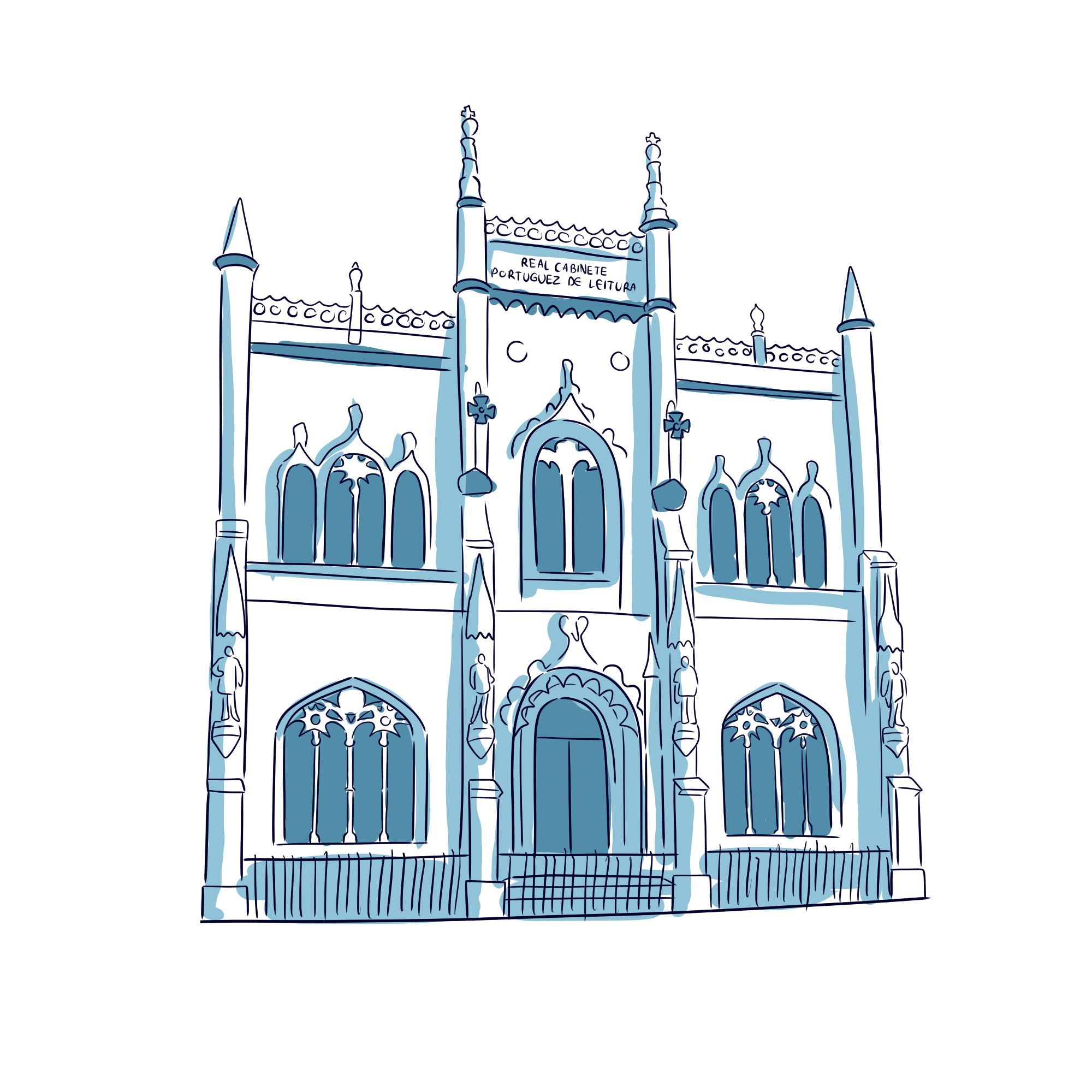
Feast your eyes on this beautiful, richly sculpted façade – it belongs to the Royal Portuguese Cabinet of Reading, a library like no other!

That big building opposite you on the left is the Bank of Brazil Cultural Center. As you can probably tell from the name, this neoclassical beauty wasn't always about art and culture.
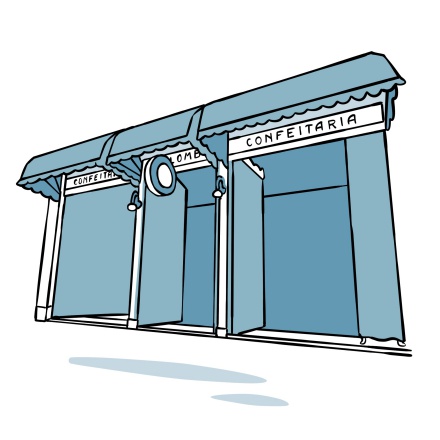
Take a look at the beautiful coffeehouse on your right. It's the Colombo confectionery, a local landmark.
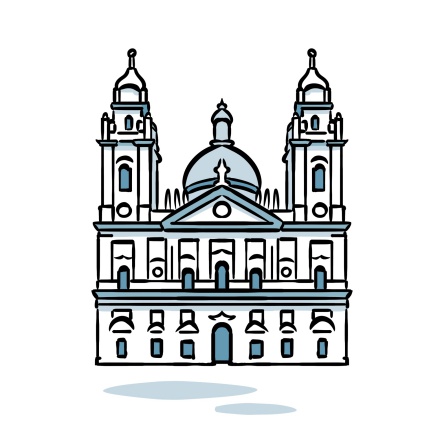
Introducing the beautiful Baroque Candelária church. Legend has it that, in the 17th century, a ship named Candelaria weathered a big storm at sea and barely made it to shore. Grateful to be alive, the shaken Portuguese sailors built a small chapel around 1609, fulfilling a vow they made during the tempest.
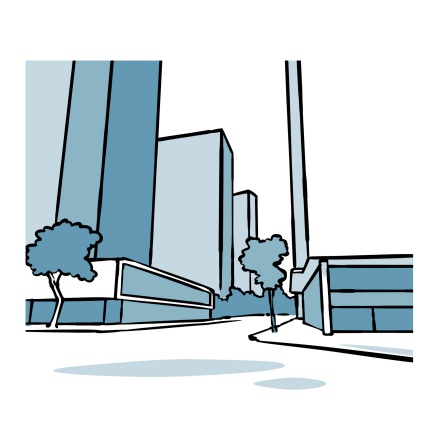
You're now heading up the Rio Branco avenue. Back in the early 1900s, Rio was essentially stuck in colonial times, and in desperate need of modernization, both in terms of urban planning and public health measures.
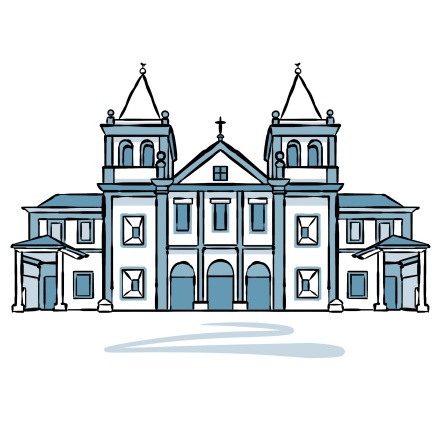
This is the entrance to the São Bento monastery. Feel free to pause the audio guide and explore the place yourself. The church's hilltop location and imposing façade hint at its dual role: a place of worship and a stronghold for defense.
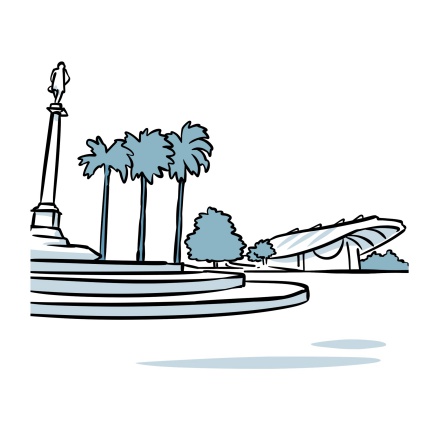
Welcome to the Mauá square, completely remodelled for the Olympics. Back in the day, this area was known as "Largo da prainha", meaning ‘Little Beach Square’, a nod to the beautiful cove stretching out just below.
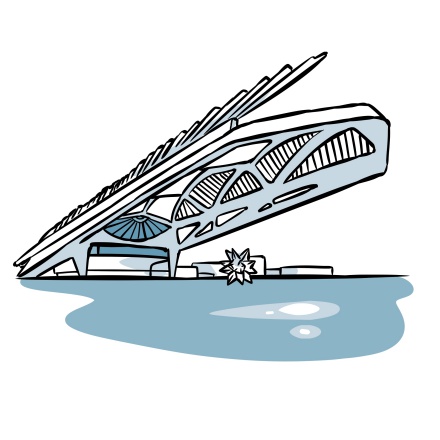
That eye-catching building by the bay is none other than the Museum of Tomorrow, the crown jewel of a major project to revitalize the Porto Maravilha district.

Take a few steps back from the museum and take a good look at it. That pristine white structure against the turquoise bay water is truly something special.
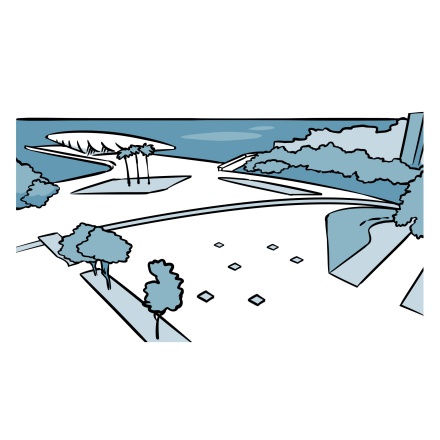
This is the Orla Condé Promenade, part of the Olympic Boulevard. It's a 3.5-kilometer-long walkway along the Guanabara Bay that will take you to the 15th of November Square. It's also part of the port's big makeover project.
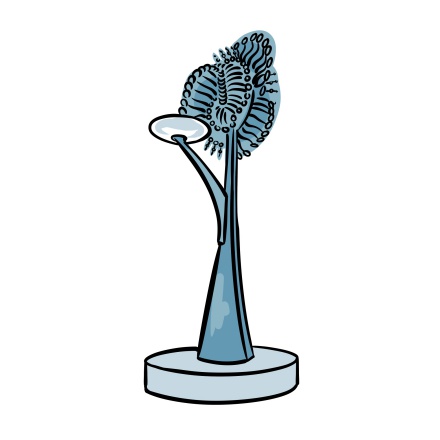
Take a look at this strange sculpture in front of you; it might have you reminiscing about childhood days spent blowing on pinwheels. It's actually the 2016 Summer Olympics cauldron.
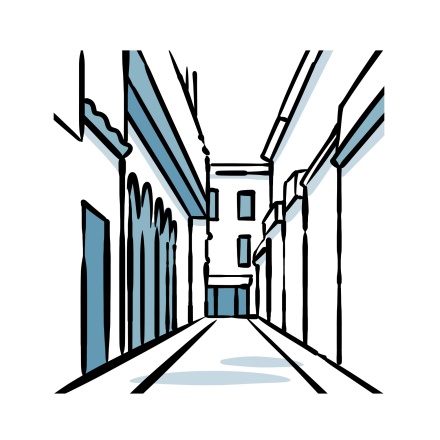
You're now walking down the Travessa do Comércio, meaning Trade Lane! This little cobbled street takes you back in time to colonial Rio, with its old stone houses lining the narrow sidewalks.
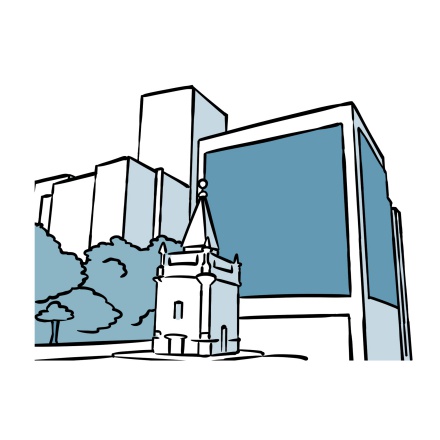
You're right at the heart of Rio de Janeiro's historic center, on the 15th of November square. November 15th is an important date in Brazil, as it marks the proclamation of the Republic.
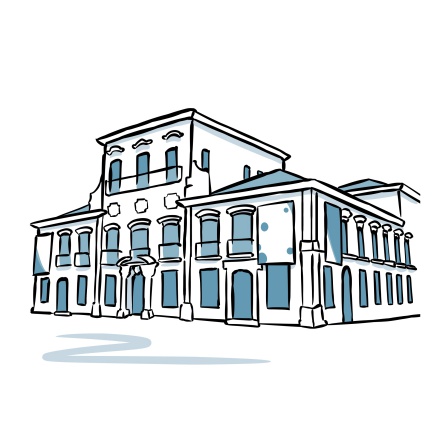
Take a look at the big white building across the square. This modest, plain structure was once home to the emperors Dom Pedro I and II.

Right next to the Imperial Palace is the Tiradentes Palace. It's the seat of the Legislative Assembly. Brazil is a federal republic, just like Australia, Germany, Switzerland, India and the United States.
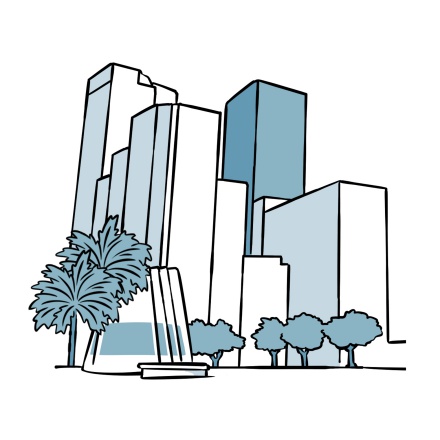
Introducing Carioca Square, one of the city's busiest spots, home to a huge metro station serving several lines. It may be modern, bustling with hundreds of suited businessmen, office workers and street vendors,
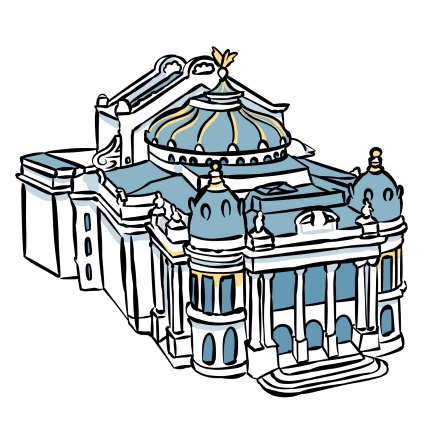
You're now standing in front of Rio's stunning Municipal Theatre. This architectural gem might look familiar – it was modeled after the famous Palais Garnier in Paris. No wonder it's considered one of the most beautiful and important theaters in the country.
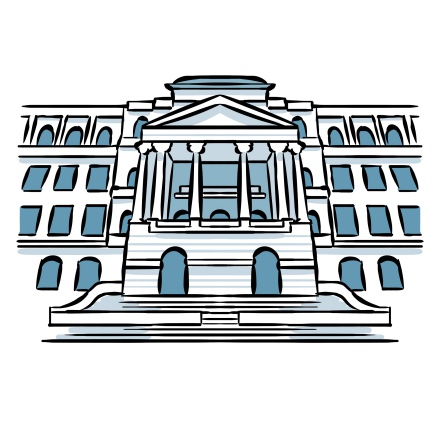
Here, on your left, you'll find Rio's National Library. It has an eclectic architectural style, fusing neoclassical and art nouveau elements, and it's here to impress. This library holds the key to Brazil's past.

This whole area around you is known today as Cinelândia. Ask anyone and they'll tell you that you're in Cinelândia Square, when in fact its real name is Floriano Peixoto Square, in honor of the second President of the Republic of Brazil.
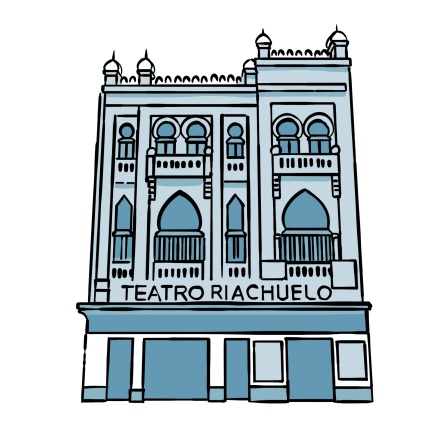
The Riachuelo theatre sticks out like a sore thumb! Its Islamic influences are a far cry from the modern buildings in downtown Rio. In fact, this type of neo-Moorish architectural style is rather rare in the city.
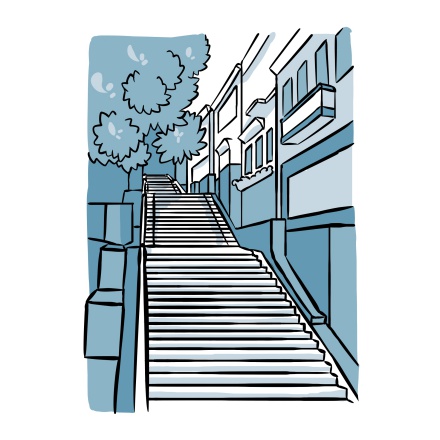
Here it is at last, the famous colored staircase you've all been waiting for! You've probably seen pictures online, but trust me, it's even more stunning in person!

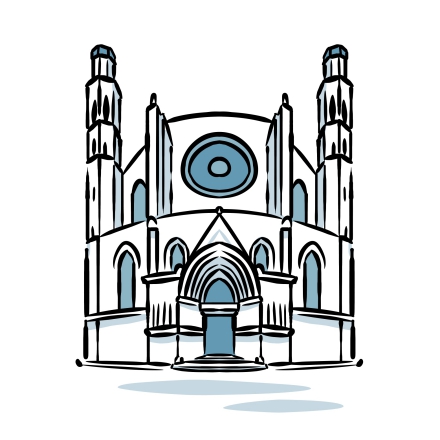
Welcome to the harmonious Santa Maria del Mar Basilica, one of the finest examples of Gothic architecture. What makes it so perfectly balanced is actually how quickly it was built. It took just 55 years! Most cathedrals took centuries to complete, usually subject to changes in style and disputes that came with changing times.
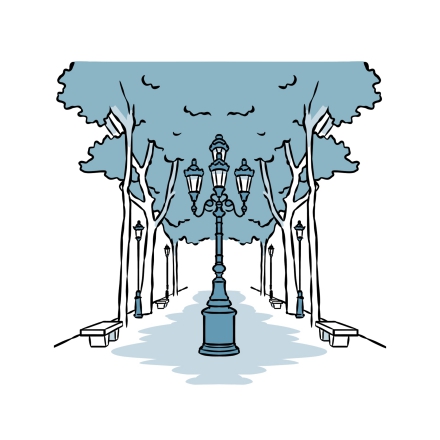
The wide, peaceful avenue you’re walking up is the Passeig del Born. Dating back to medieval times, this area used to host tournaments and jousting matches between knights. The word “Born” means “list”, referring to the enclosed arena where these tournaments were held. The first Carnival celebrations and the Easter processions of Semana Santa
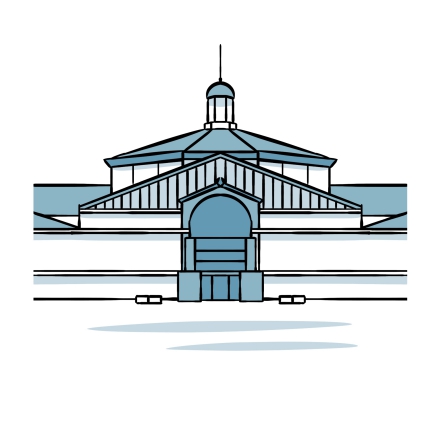
The huge metallic hall in front of you is home to the El Born Centre for Culture and Memory. Once a bustling market, it has now earned the nickname "cathedral of iron and glass". Today, it hosts a permanent exhibition on Barcelona throughout the 17th and 18th centuries. You can enter for free to see the archaeological remains which were uncovered when the market
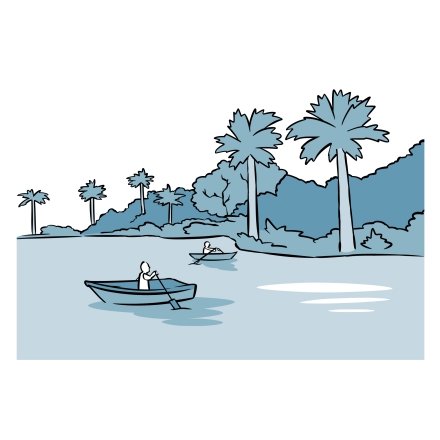
Welcome to Barcelona’s incredible urban park. Just like New York has Central Park and London has Hyde Park, Barcelona has the Parc de la Ciutadella. The park is named after the citadel that once stood here, built by Philip V after the War of Spanish Succession. A symbol of an oppressive regime, it was destroyed during the 1868 revolution.
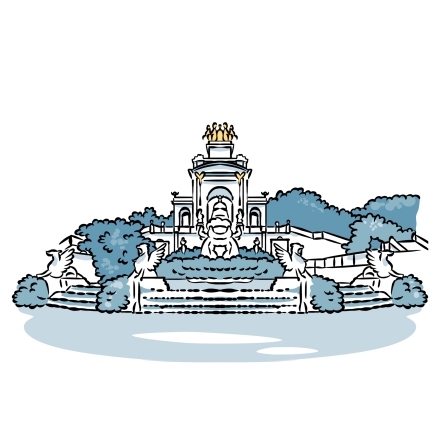
The magnificent Cascada fountain is the park’s highlight, inspired by the Trevi Fountain. But what’s the story behind it? Let’s set the scene. Barcelona is preparing to host the upcoming Universal Exhibition. Josep Fontserè, the park’s architect, and Antoni Gaudí, unknown at the time, are tasked with building something to impress visitors.
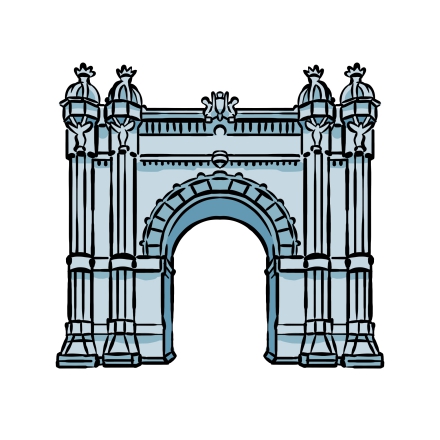
Barcelona’s Arc de Triomf was built as part of the Citadel Park complex for the Universal Exhibition. Visitors would cross under the arch to reach the exhibition grounds, following a promenade towards the fair entrance. It’s made entirely of red brick, quite different to its Parisian counterpart. Its style is distinctly Mudéjar—a unique blend of Spanish architecture

As you reach the corner of the street, you’ll be stunned by the extravagant red-brick building with mosaic-covered pillars and façades. This is the Palace of Catalan Music. It was designed by Lluís Domènech i Montaner, a brilliant modernist architect who also taught Gaudí
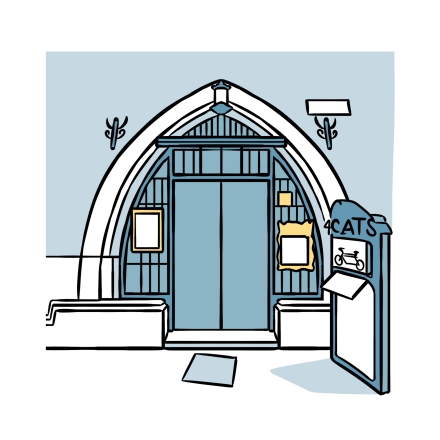
Yet another unique building that catches our eye! Els Quatre Gats — which you may have guessed means “The Four Cats” — was a famous cabaret that opened in 1897. Resembling a small medieval castle, this venue is the work of Pere Romeu. He worked with Rodolphe Salis at Le Chat Noir in Paris, and felt inspired to open an avant-garde and bohemian place in Barcelona.
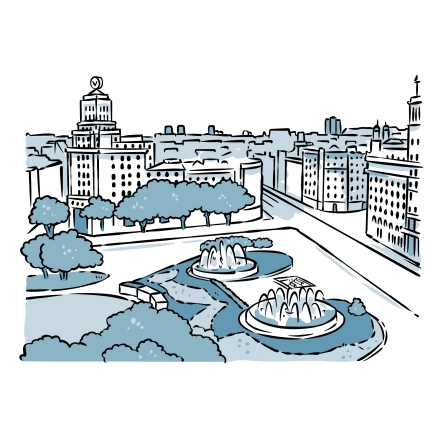
Welcome to Plaça de Catalunya, the heart of Barcelona. All the main shopping streets lead to this square. It’s also a popular meeting place, and no wonder why! There’s so much around you: shops, bus stops, statues, fountains, and a constant flow of people. There’s no better place to feel the city’s energy, it’s also where major public events and protests have taken place.
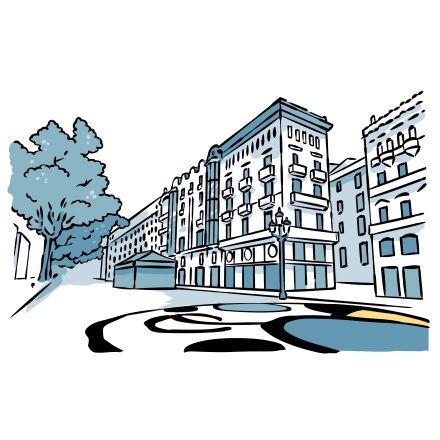
La Rambla, the most famous and crowded avenue in Barcelona. From above, you can see it winding through the city, resembling the path of a river. This is because it was built on the bed of a dried-up river. The Catalan word “Rambla” comes from the Arabic word “Ramla,” which means sand, but refers to a small, often dry stream.
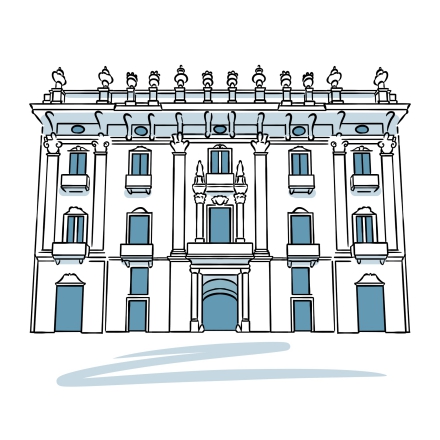
The entrance to the Virreina Palace is on your right , the name translates to "the Viceroy’s Palace". It was built in 1778 at the request of Manuel Amat. He was the former Viceroy of Peru, meaning he officially represented the Spanish Crown in the colonies of New Spain in South America. He commissioned architect Josep Ribes to construct
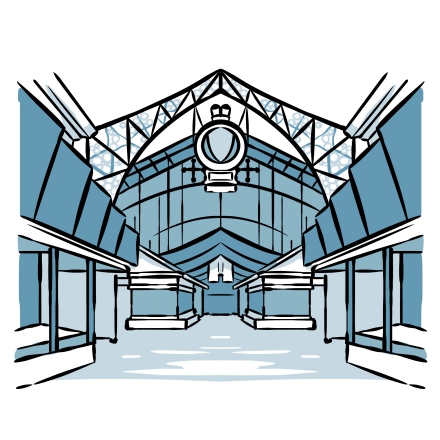
Step through the colourful glass and metal entrance in front of you to discover the enchanting La Boqueria market! This is one of the largest covered markets in Europe, with over 300 stalls of local and exotic products, spread across over 2,500 square meters. Centuries ago, this site was outside the city walls, so the taxes were much lower. Local merchants, farmers
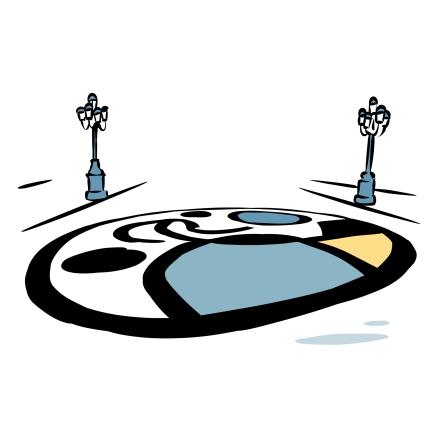
Even if you don’t visit the Miro Museum, don’t worry, Miro will find you! The famous Spanish painter’s huge mosaic is right under your feet. In 1976, Miro wanted to create art on the ground of La Rambla, so that passers-by would walk over it, even if it meant the artwork would get damaged. He chose primary colours, reflecting his intuitive visual language

Welcome to Plaça del Pi. In front of you is the basilica bearing the same name. The Santa Maria del Pi Basilica has an austere appearance, a massive façade and a single rose window. This gothic building dates back to 1319 – but the Church of Pi is documented as early as the year 987.
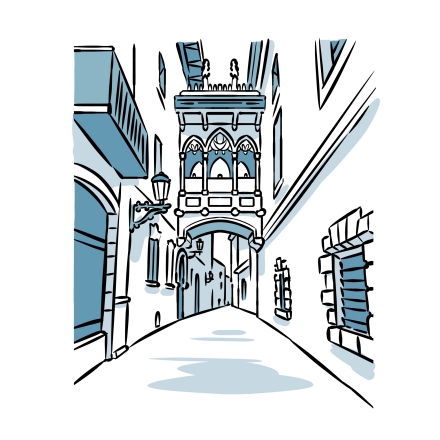
We’re now on “Carrer dels Banys Nous” street, which used to run along the outer edge of the Roman wall. Its name translates to “New Baths”, referring to the old public baths founded here in 1160, when water was abundant in the area. The building was inspired by Arab baths, and built with Romanesque techniques and decor.
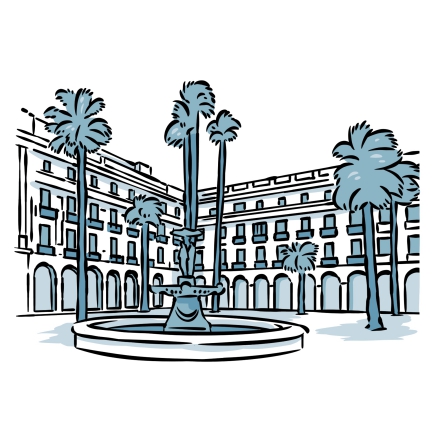
Plaça Reial is an incredibly elegant square with perfect proportions, arcades, palm trees, and a fountain. They say it was named “Royal” due to its beauty, but it was originally meant to be called the Square of the Spanish Heroes, referring to the War of Independence against Napoleon.
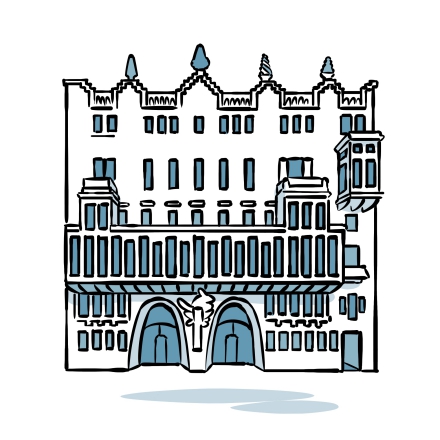
It’s hard not to do a double take walking past the Güell Palace, one of Gaudí’s many creations. It may be less famous than the Casa Milà or Casa Batlló, but you can visit this palace from top to bottom, unlike the others. The façade alone is already worth the visit, but you can go inside to see more—you just have to pay the entrance fee.
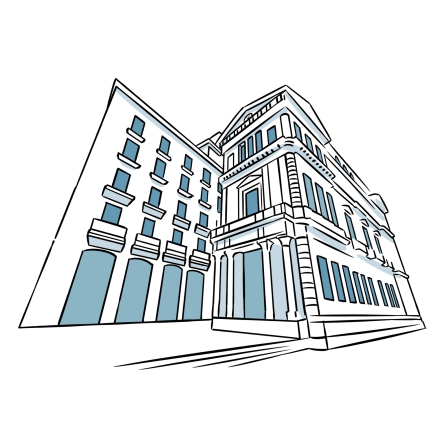
On the corner of the street, there is a small square called Plaça de la Veronica. Veronica was the woman who, according to the Gospels, wiped Jesus’ face during the Way of the Cross. The cloth she used was changed forever. The narrow building is called the Borsi. It’s made of light-coloured stone, and features columns, banisters, and Greek statues.
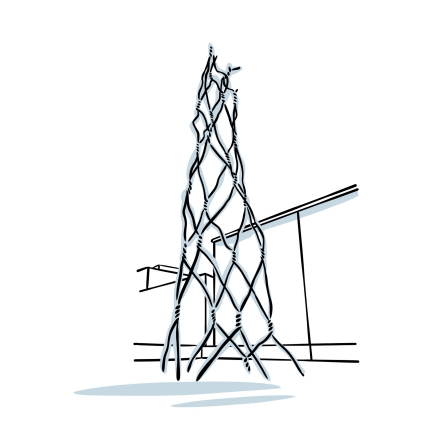
In front of you is Barcelona’s famous wire sculpture. Although it may seem like a piece of abstract art, and may not immediately capture everyone’s interest, it’s actually a tribute to the Castellers. Castells—or “castles” in English—are human towers made up of multiple floors of people, a tradition deeply rooted in Catalan culture.
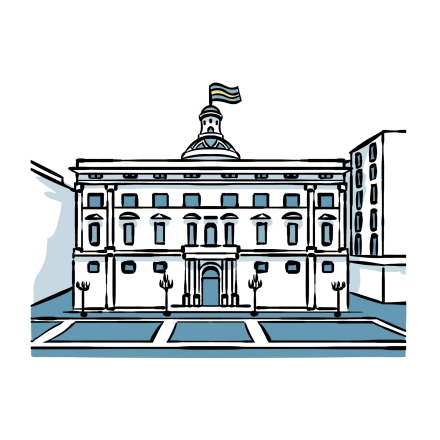
Let’s travel back in time to when Barcelona was still called Barcino. You’re standing at the crossroads of two major Roman roads, where the Roman forum and the Temple of Augustus once stood. The four columns from the temple that are still standing are just around the corner on Carrer del Paradís. The square gets its current name from the former Church of Sant Jaume
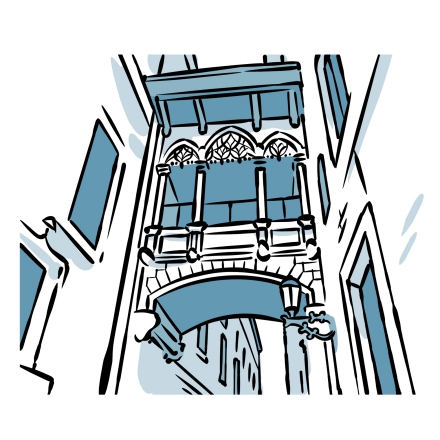
This stunning marble bridge is usually the landmark most heavily associated with the Gothic Quarter. Suspended above Carrer del Bisbe, it blends perfectly into the scenery, yet it was only added in the 20th century. It’s part of the neo-Gothic elements introduced in the 1920s to make the district more appealing and reminiscent of the fluorishing Catalan cultural splendour
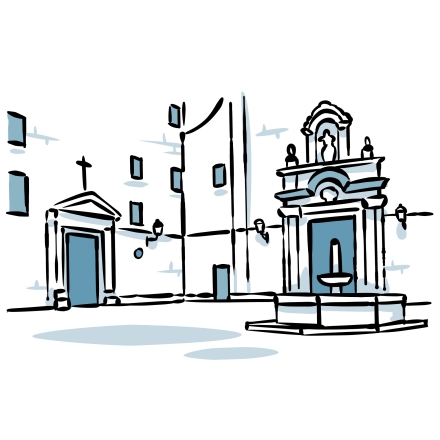
Welcome to the small Plaça Sant Felip Neri — a secret, peaceful square tucked away in the bustle of the city. A rare example of Baroque architecture in Barcelona, it’s named after the church that presides over it. Built in the 18th century as an annex to the Oratory of Saint Philip Neri, a congregation of priests, the square sits on the grounds of a former medieval cemetery
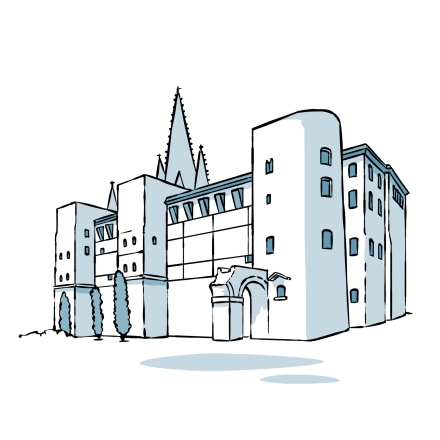
Just a few steps away from the cathedral, you'll find a hidden gem called Casa de l’Ardiaca – meaning the Archdeacon’s House. This title refers to a religious class that no longer exists. In 1921, the house was turned into the city archives and has since been listed as a cultural heritage site. Entry is free and well worth your time – inside, you’ll discover a charming little patio

Here she is! The patron saint of Barcelona, Saint Eulalia. This cathedral is dedicated to both her and to the Holy Cross. It’s the second biggest church in the city after the Sagrada Família, and it’s the seat of the Archdiocese of Barcelona. This impressive cathedral is far from being the first structure to stand on this site.
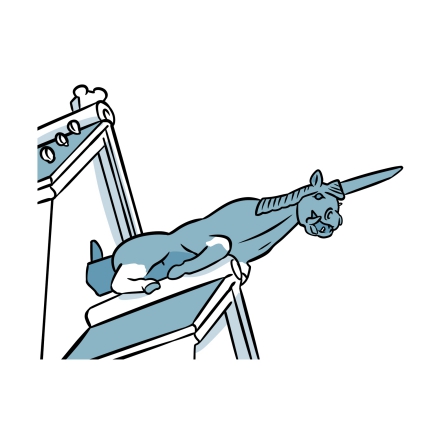
I’d like to draw your attention to some of the gargoyles on the cathedral. The building is covered in these enchanting and mysterious sculptures. You could spend hours staring at them, trying to decipher hidden messages. Gargoyles were born in the 13th century, during the rise of Gothic architecture. They’re actually water spouts, designed to swallow rainwater away on
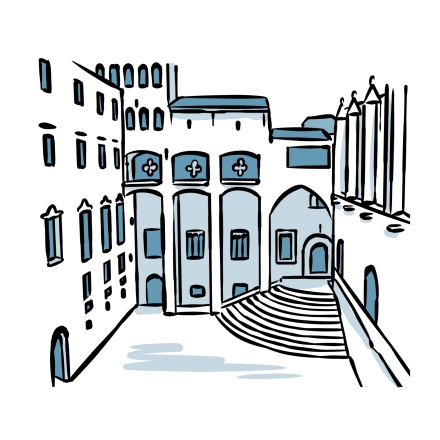
A hidden medieval gem, the Plaça del Rei transports you back to the Middle Ages and the time of the Counts of Barcelona. Facing the royal palace, it once served as the castle’s outer courtyard, hosting markets and tournaments. In 1387, it was the site of Barcelona’s very first bullfight! Built in the 12th century over Visigothic and Roman ruins

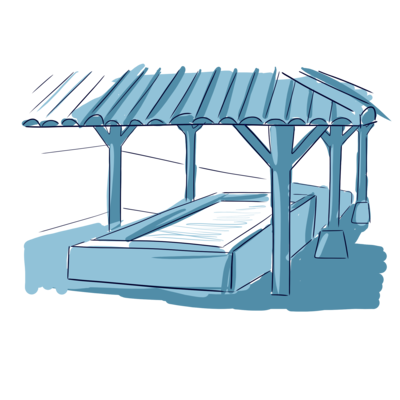
Dating back to the 19th century, this is the last remaining wash house in Antibes. You’ve probably seen similar ones in other towns across France—but do you know their history? They mostly date from the 1800s, when it became clear that dirty laundry could spread deadly diseases like smallpox, measles, and cholera.
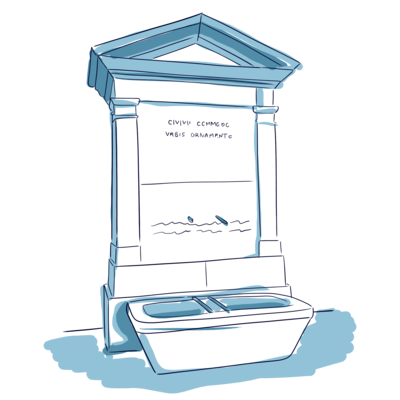
Take a look to your right—you’re facing the oldest fountain in the city, and it dates all the way back to Antiquity. During that time, two Roman aqueducts were built to supply water to the city of Antipolis: the Fontvieille aqueduct and the Bouillide aqueduct
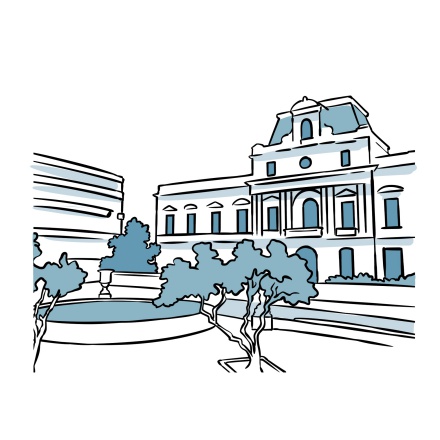
You’ve just arrived at one of the nicest squares in downtown Antibes! Surrounded by shops, bars, and restaurants, Place des Martyrs de la Résistance is a popular meeting spot for locals.
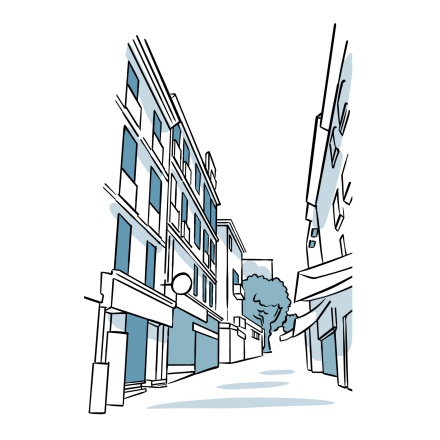
Welcome to Rue de la République, one of Antibes’ busiest shopping streets! Whether you're looking for clothes, jewelry, or shoes, there’s a bit of everything here.
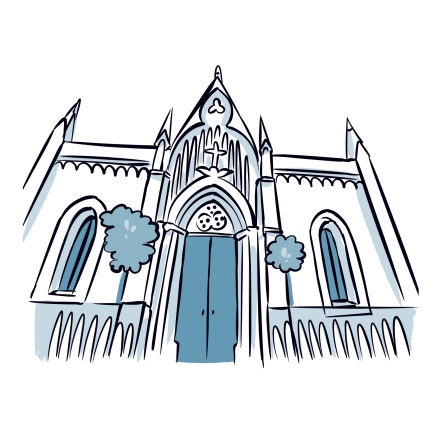
Look to your right to the building sitting on the corner with Rue Paul Martelli. This neo-Gothic chapel is part of Antibes' historic heritage. Although recently restored, it was built on ancient Roman foundations, suggesting that this site was already a place of worship in Antiquity. In the 16th century, the Brotherhood of the White Penitents
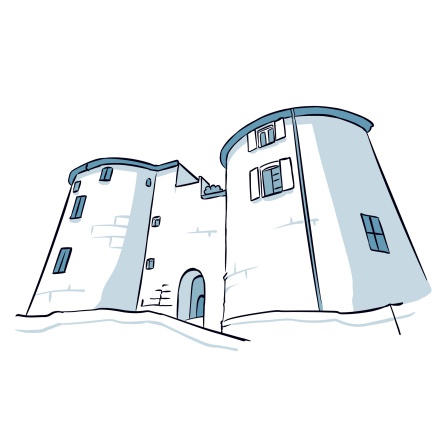
We’ve now arrived at the start of Cours Masséna, one of Antibes’ main streets. Right in front of you stands a striking structure that tells the story of the city’s long past. This is Porte de l’Orme—one of the original gateways built into the city’s walls. The first fortified enclosure was built by the Greeks,
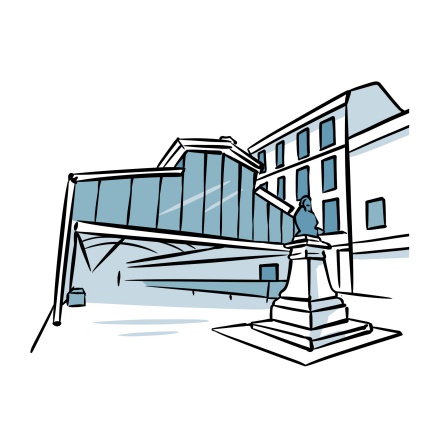
In front of you lays one of the most iconic markets in all of Provence! It’s open every morning from Tuesday to Sunday, if you happen to be here on a day whaere it’s closed, there’s probably a good chance you can come back when it is open! This covered market is a celebration of everything the Provençal terroir has to offer.

The Grimaldi Castle is one of the most important landmarks in Antibes. It’s building started in the 11th century on the foundations of a former Roman structure. The surrounding stones, rising 3 to 5 meters high, are actually remnants from Antiquity. Once a fortified tower, the original building became the residence of the bishops of Antibes From the 5th century
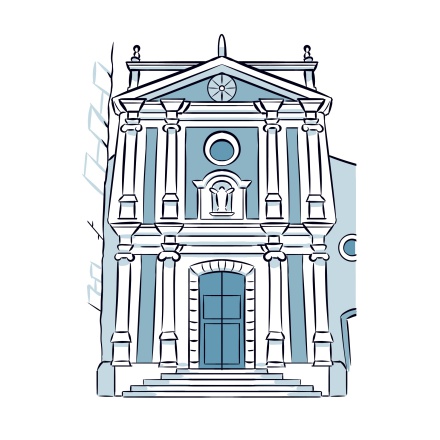
This colorful church is the cathedral of Antibes, a listed Historic Monument since 1945. It’s the largest church in the city, with a classical façade and several masterpieces of religious art inside. The first church on this site was built in the 5th century, followed by a cathedral in the 10th century.
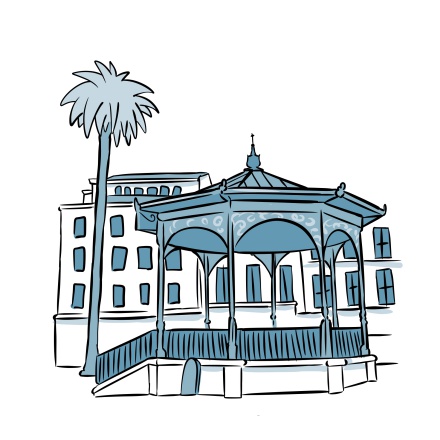
Now we’re arriving at Place Nationale, one of the city’s main squares. It’s another great spot to take a break, have a drink, or grab a bite. Just walk a little further into the square and you’ll see this lovely bandstand. The original one stood here from 1889 until 1963, but it had to be torn down after falling into disrepair.

You’re facing one of the most iconic viewpoints in Antibes, overlooking its harbor—one of the largest marinas in Europe. A perfect spot to snap a classic photo of the city! But what should really catch your eye is the large structure in the distance, perched on a small hill that seems to rise from the sea behind the boats.
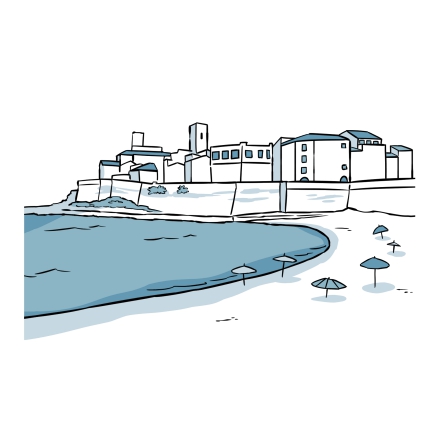
Look to your right for a great view of Gravette Beach, located right in the heart of Antibes. It’s ideally placed for a quick swim after a day of sightseeing, though it tends to get crowded due to it’s popularity with both tourists and locals. It’s easy to see why, the spot is lovely and tucked behind the ramparts with a beautiful view of Cap d’Antibes

There’s nothing like a stroll along the Mediterranean Sea to complete your visit to Antibes! The Promenade Amiral de Grasse offers stunning views and a peaceful walk just steps from the town center. It runs alongside the 17th-century ramparts, restored by the famous architect Vauban to protect the city.
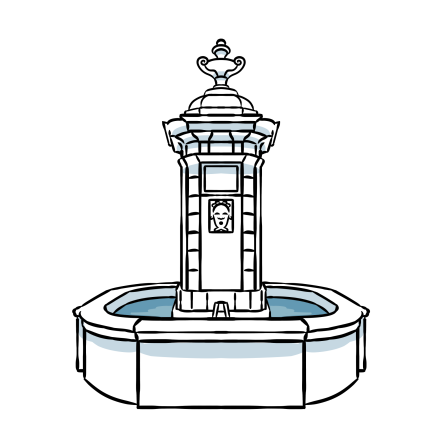
Here we are on Boulevard d’Aguillon, just a few steps from the harbor. On your right, you’ll see the Marine Gate, cut into what used to be the city’s ramparts. Back in the day, it was the only passageway linking the town to the port.

This is the Saint-Jaume Bastion. Entry is free but subject to opening hours, so if it’s closed when you arrive, be sure to check the schedule so you can come back. This site has a long history—back in Roman times, it was home to a temple, then a chapel, and eventually a fortified tower built to protect the city from invasions.

This monumental sculpture, standing around 10 meters tall, was created by Catalan artist Jaume Plensa. It depicts a man sitting and gazing out at the sea, made entirely of white steel letters. Known as The Nomad, it’s one of the city’s most unique and intriguing landmarks.
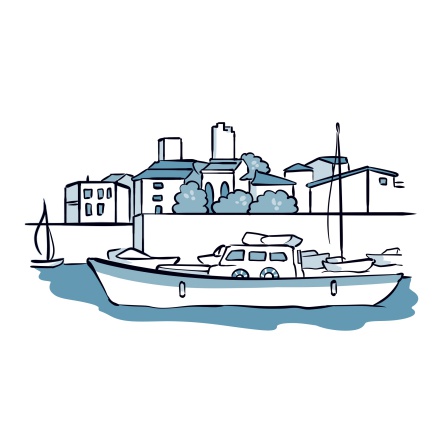
The port of Antibes has a long and rich history. As far back as the time of the Phocaeans, in the 4th century BC, the Saint-Roch cove was already used for trade and as a naval base for the city then known as Antipolis. By the 11th century, Port Vauban had taken on particular importance as one of the departure points for the First Crusade
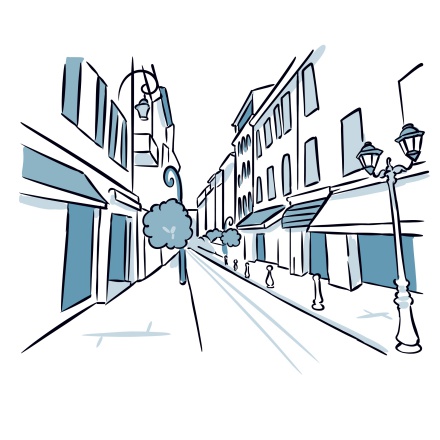
The history of Antibes is anything but recent. Founded in the 4th century BC under the name Antipolis, it was originally settled by the Greeks, even before the Romans arrived. It later became a prosperous Roman town, with a busy port that thrived on the trade of wine, olive oil, and ceramics. One of the most travelled roads in Gaul, the Via Aurelia,
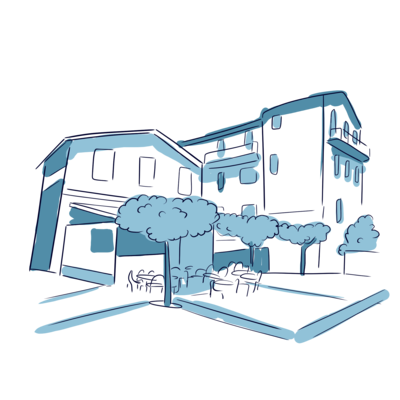
You’re now in the Safranier quarter, a part of Antibes' old town. With picturesque streets, it feels just like a small Mediterranean village. This place actually has a special story. In 1966, locals created the “Free Commune of Safranier,” a symbolic organization meant to preserve neighborhood traditions and bring the community together through festivals and events.

On your left, at number 12 on the street, you’ll find the studio of an artist whose work you might have already spotted around town — if you know where to look! His creations are tucked into the cracks, holes, and stains on building walls, sidewalks, and even the street itself, transforming everyday imperfections into art.

Look at this striking statue. It’s called Le Défi, or The Challenge, and it shows a figure standing on the ramparts, one foot extended into thin air. While it’s open to many interpretations, its creator, Nicolas Lavarenne, describes it as a symbol of stepping into the unknown.
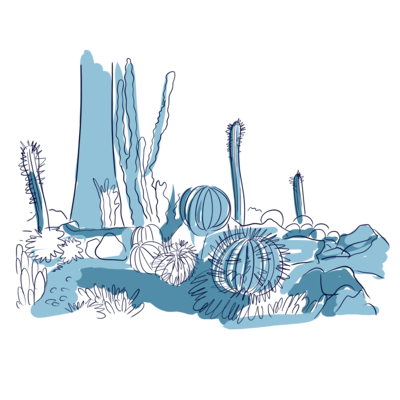
You’re now in front of the Garden of Poets. This small public park runs alongside the old city walls and is home to exotic plants, cacti, and succulents, giving it a unique vibe. Scattered around the garden are works and quotes that pay tribute to famous poets from France and around the world.


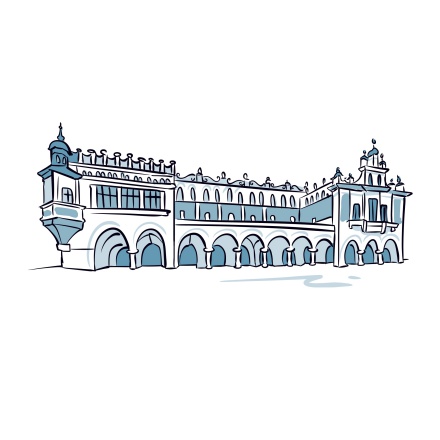
You’re now standing in Market Square, in front of one of the city’s most iconic landmarks: the Cloth Hall. This grand Renaissance gem dominates the centre of the square—it’s big, beautiful, and full of history. This is called the Sukiennice in
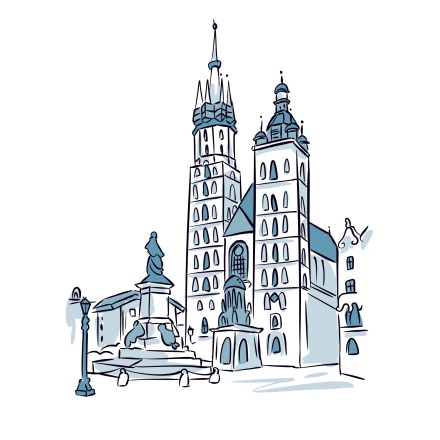
You’re now standing in Rynek Główny, at the heart of Kraków’s Old Town. Rynek means market, and Główny means main—so welcome to the Main Market Square! It was laid out in 1257, during the city’s reconstruction after the 1241 Mongol
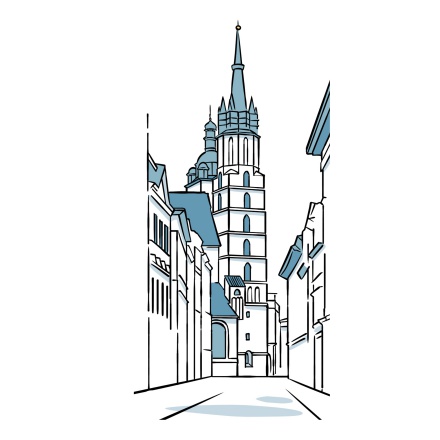
You're walking along Floriańska Street, one of the most iconic streets in Kraków. It’s part of the Royal Route that connects Wawel Castle to St. Florian’s Gate. The street has been known as Floriańska for over 700 years, named after the nearby
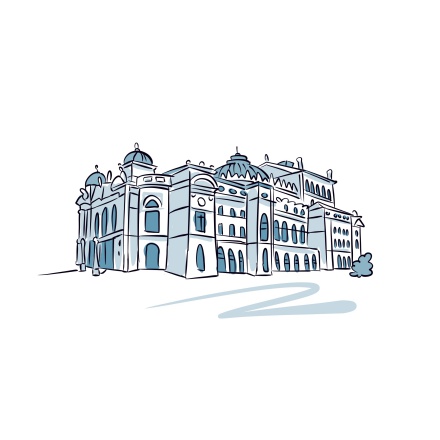
You're now standing in front of a beautiful example of Baroque architecture: the Juliusz Słowacki Theatre, Poland’s most famous theatre. It was built in 1893 on the ruins of the Holy Spirit Monastery. Constructing a cultural institution on a
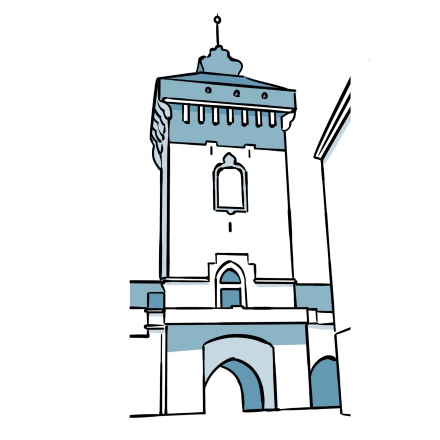
You’re now standing in front of Floriańska Gate. Kings would return from victorious battles through this gate, and dignitaries and diplomats would enter through here on official city visits. Kraków’s defensive walls once had seven gates. Floriańska
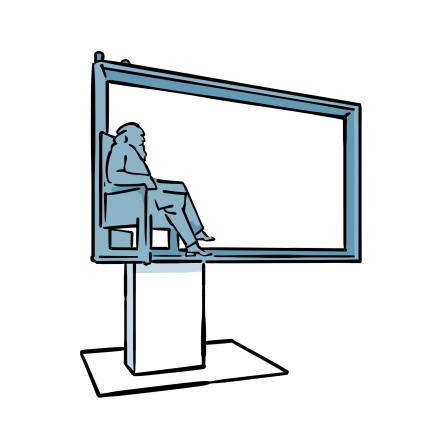
Here he is, seated calmly as if still in his frame—the famous Polish painter Jan Matejko. If you haven’t heard of him before, know that he is Poland’s most renowned painter. He captured the most pivotal moments in Polish history on canvas. One

Once you’ve passed through St. Florian’s Gate, you’ll arrive at Kraków’s Barbican. In medieval times, a “barbican” was an advanced fortification designed to protect a city entrance. It gave soldiers a place to gather and defend, while staying

This small Baroque church is the Piarist Church, also known as the Church of the Transfiguration of Jesus. It was built in 1718, along with the Piarist monastery next to it. In case you’re not familiar with the Piarists, they were a mendicant religious
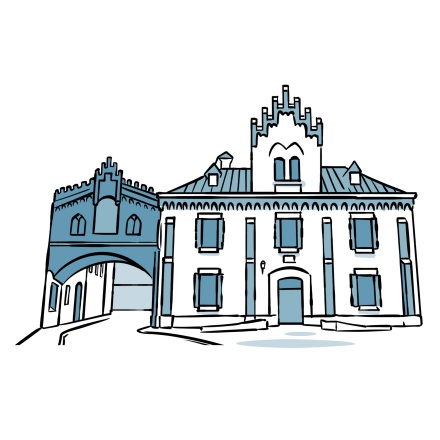
You’re now standing on Pijarska Street, which ran along the city’s old defensive walls. It leads you to the beautiful Czartoryski Princes’ Arsenal Museum. Founded in 1796 by Princess Izabela Czartoryska, the museum was created to protect
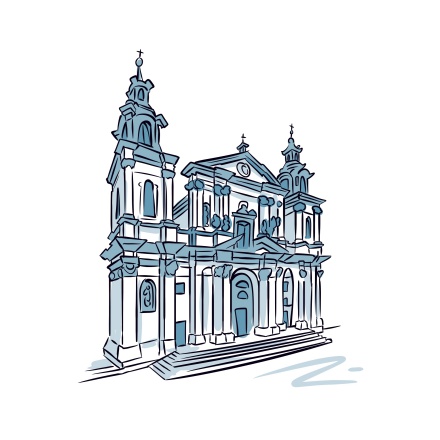
You’re now facing the beautiful St. Anne’s Church. This Roman Catholic church is one of the finest examples of Baroque architecture in Poland. The church you see today was built on the ruins of a Gothic church destroyed in a fire in 1689. The
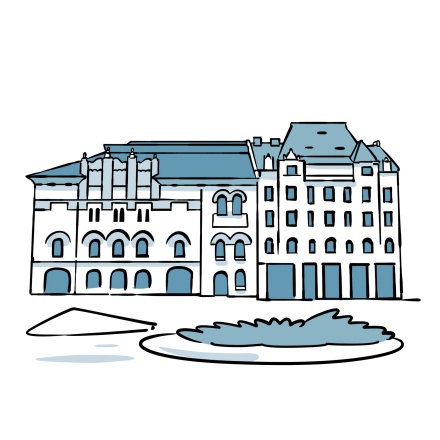
Welcome to the charming and peaceful square in front of the Palace of Arts. The grand building ahead was built in the early 20th century in Viennese Secession style, for the Society of Friends of Fine Arts, founded about fifty years earlier. If you
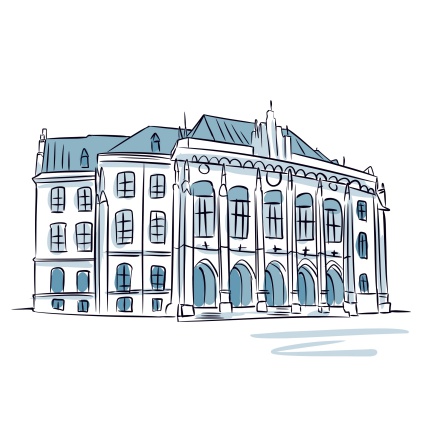
Welcome to the famous Jagiellonian University. You're surrounded by the neo-Gothic buildings of the Collegium Novum—the “New College,” as opposed to the Collegium Maius, the oldest part of the university. Founded in 1364, it’s one of the
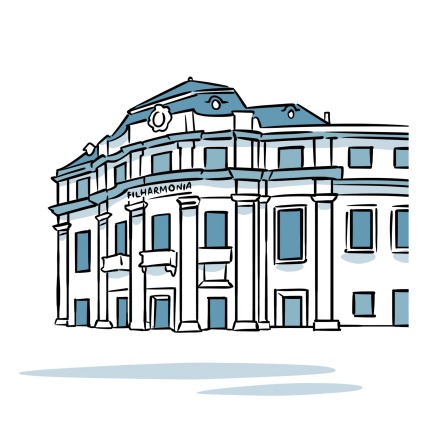
The building on the corner is the Kraków Philharmonic. Although that’s not hard to guess, as it’s written on the front! It’s the largest concert hall in Kraków and home to one of the finest symphony orchestras in the country. Behind its neo-

You’re not imagining things, that really is a fire-breathing dragon in front of you. There’s probably a crowd gathered around it, waiting to see the real flames it spits out every 5 minutes. By now, you’ve probably noticed that dragons are everywhere

Here it is—Wawel Castle, once home to Poland’s kings. You can explore the castle’s exterior, its courtyards, and ramparts free of charge, but the museums, the royal apartments and the cathedral require paid tickets. Two separate organisations

This pleasant walk along the Vistula offers a beautiful panoramic view of the river and the castle. At 1,047 kilometres long, the Wisła—or Vistula in English—is the longest river in Poland. For thousands of years, towns and cities have sprung up
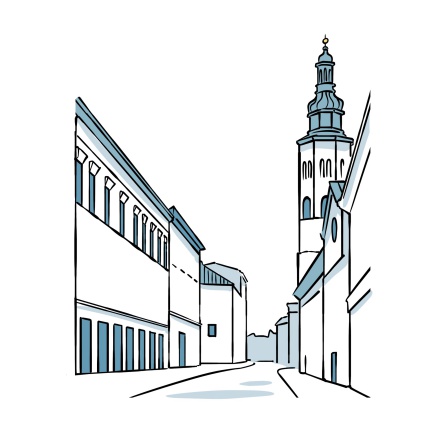
You’re now walking along Grodzka Street, the second section of the Royal Route, which runs from the Market Square to Wawel Castle. The first part of the route is Floriańska Street, which links the square to the Barbican. Grodzka is one of the

You’re now standing in front of the stunning Church of Saints Peter and Paul, one of the finest examples of Baroque architecture in Poland. Built at the end of the 16th century by the Jesuits, it marked the beginning of the Counter-Reformation in
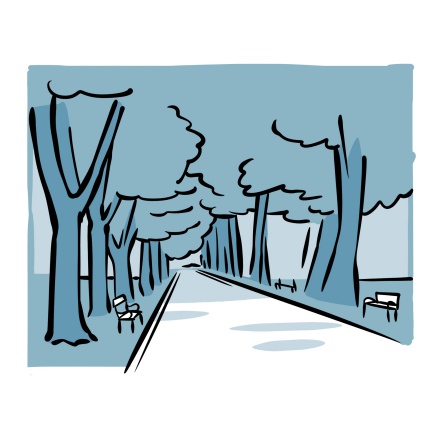
You’re now entering Planty Park. You may have noticed that Kraków’s Old Town is surrounded by a ring of green—and this is it: Planty Park. It wraps around the city like a protective wall, and that’s no coincidence, since it was created on the site
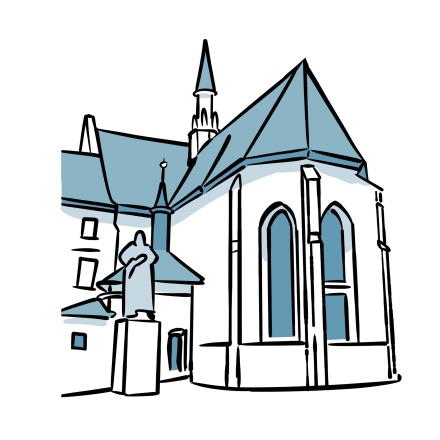
You’re now standing in front of the Basilica of Saint Francis of Assisi. Built in the 13th century by Franciscan friars from Prague, this is one of the oldest churches in Kraków—and one of the first brick buildings in the city. The Franciscans take




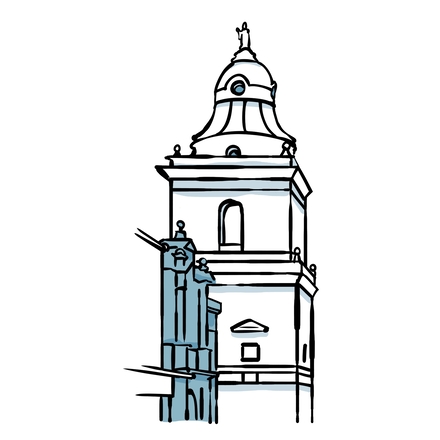
This striking church, built from dark volcanic stone and outlined with crisp white doorways, is the Church of San Agustín. It belongs to the Order of Saint Augustine, who arrived in Quito in the mid-1500s, though their
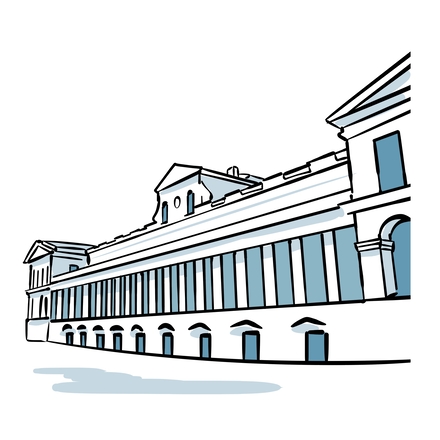
The Carondelet Palace, bordering Independence Square, is Ecuador's official presidential residence. Back in colonial times, it was the seat of the Royal Audience and the main hub of civil and military power in the region.
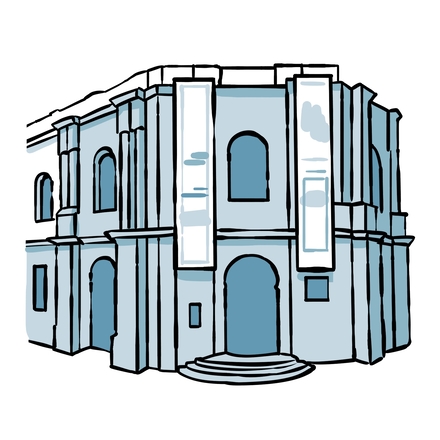
To your right, you’ll spot the entrance to the Metropolitan Cultural Center, the perfect place to explore if you’ve seen your share of churches and are in the mood for something a little more contemporary. Admission is free and
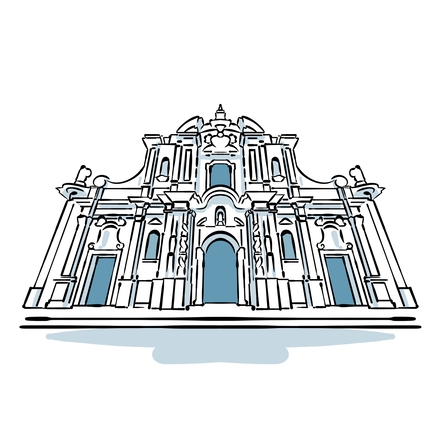
You’re now standing in front of what is, without a doubt, the most important church in Quito: the Church of the Society of Jesus ,or, as it’s more commonly known, La Compañía de Jesús. This is a church of superlatives.

The large church of San Francisco in front of you is one of the oldest in Quito, built just a year after the city was founded by Sebastián de Benalcázar following the Spanish conquest. You might be wondering why nothing
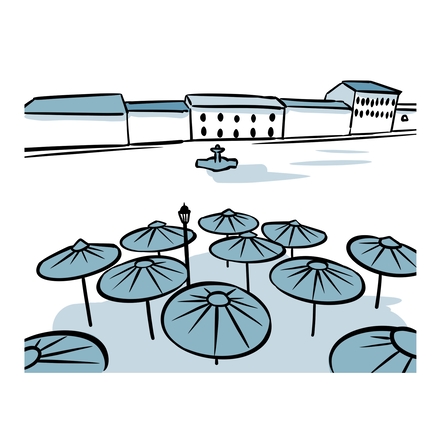
To your right, you’ll see the cultural center known as El Tianguez — a unique space that blends a museum, a handicraft shop, and a café all in one. It’s made up of seven exhibition and sales rooms, along with a cozy cultural
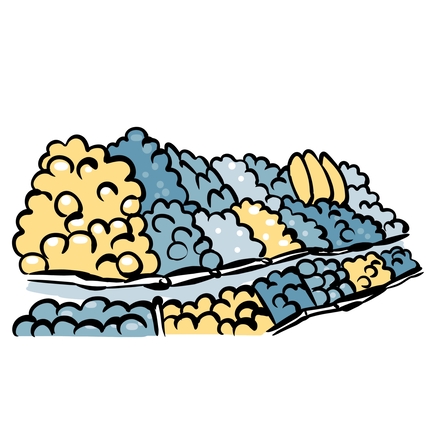
You’d probably agree , one of the best parts of traveling is discovering the local food. There’s really no better way to connect with a place than by eating like the locals do, and in Latin America, that means heading straight to
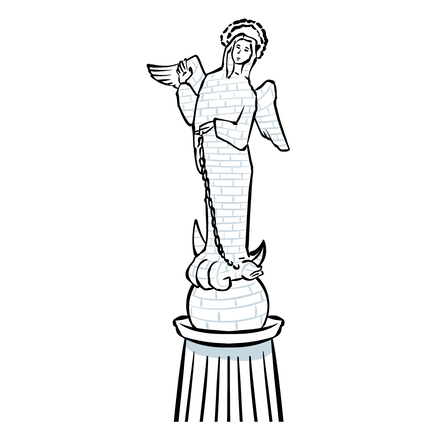
From this square and all along the 24th of May Boulevard, you’ve got a perfect view of El Panecillo and its iconic statue of the Winged Virgin. The name Panecillo, meaning “little bread roll,” was given by the Spanish because

This vibrant mural is the work of Spanish artist Óscar San Miguel, better known as Okuda, whose signature pop-surrealist style is instantly recognizable — bold colors, geometric patterns, and layered symbolism that blends
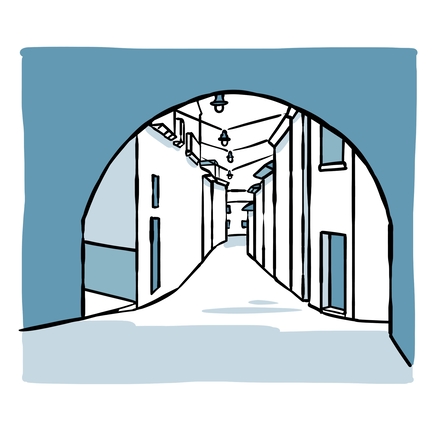
The street you’re walking up now is known as the most beautiful in Quito — and it’s not hard to see why. This well-preserved pedestrian lane looks almost exactly as it did in the 18th century, with its white colonial houses and
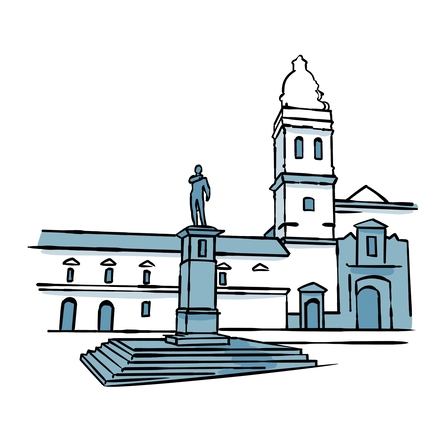
In the center of Santo Domingo Square stands a monument to Marshal Sucre — a towering figure in the fight for independence, perhaps less well-known than Simón Bolívar, but no less vital. He’s the man who freed Quito and
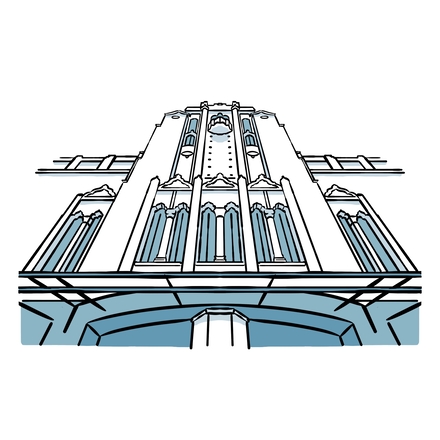
The elegant pale pink building in front of you is the Teatro Bolívar, founded on April 15th, 1933, with an original capacity of over 2,400 seats in its grand auditorium. Its facade is widely regarded as the finest example of Art

La Plaza Grande, also known as Independence Square, is surrounded by some of the most important buildings in Quito. That’s true for nearly every main square in South America, often called Plaza de Armas, because this
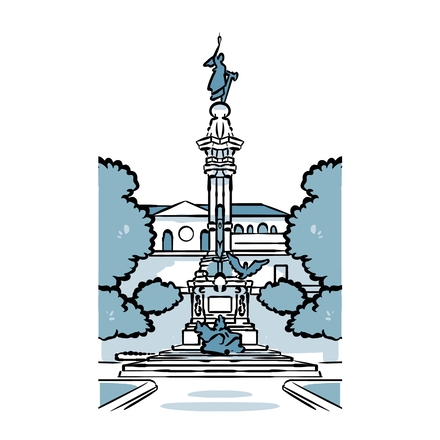
You are now at the heart of the city, in the Plaza de la Independencia, affectionately known as Plaza Grande. This is Quito’s main square, the political and historical center of the country, and the symbolic seat of the President
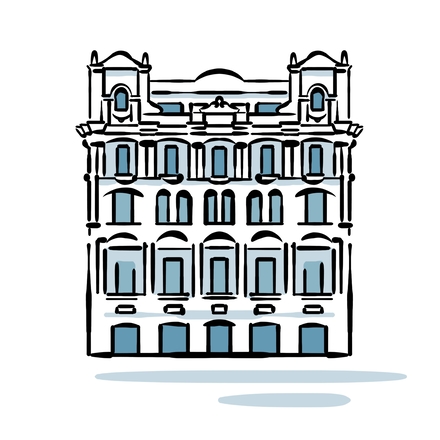
You’re now standing in front of the Palacio Arzobispal, the Archbishop’s Palace, the official home of Quito’s archbishop and the headquarters of the city’s Metropolitan Archdiocese. When the city’s parish was founded in

You’re now standing in the lovely Theatre Square, right in front of the beautiful facade of the Teatro Sucre : one of the oldest opera houses in South America and the most prestigious in Ecuador. It opened in 1886, beating both the
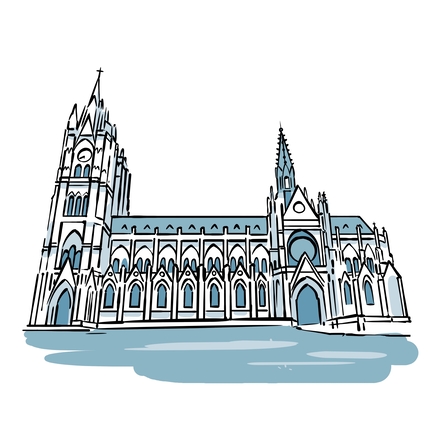
The Basílica del Voto Nacional makes quite the statement: it’s the largest neo-Gothic church in the Americas and the tallest in all of South America.The whole project started as a national devotion — Ecuador wanted to dedicate
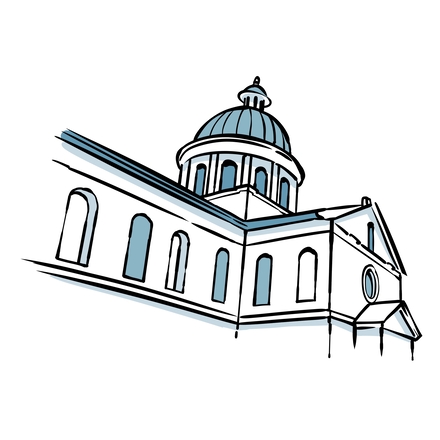
The charming white and blue church you see here is the Iglesia de Santa Bárbara. It was originally built in the 16th century and briefly used by the Jesuits between 1586 and 1589. Despite its age, it’s actually considered one of the
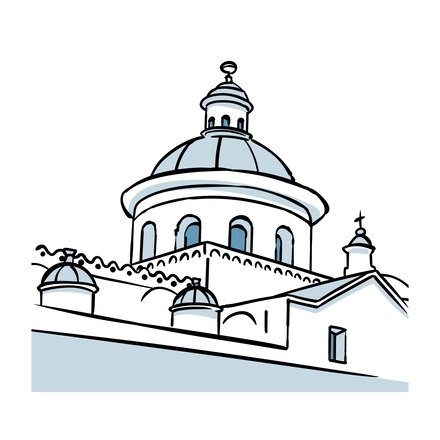
You’re now standing on the forecourt of the Church and Convent of La Merced — which means “Our Lady of Mercy.” The first church built here dates back to the early 1600s but was destroyed by an earthquake in 1660.








Union Square is known for its stunning views of the Capitol. Designed around the same time as the Capitol itself, near 1800, it was originally part of the Capitol complex before being transferred to the National Park

Photo time! From here, you can see the Capitol from a good angle near the Reflecting Pool. This is the moment to take photos of its beautiful dome, rising to an impressive height of 87 meters! If you turn around

The grand columns of this beautiful building remind us of an ancient temple, don’t you think? This is the National Gallery of Art! It was the first structure to welcome art collections. In 1978, the recent East Building
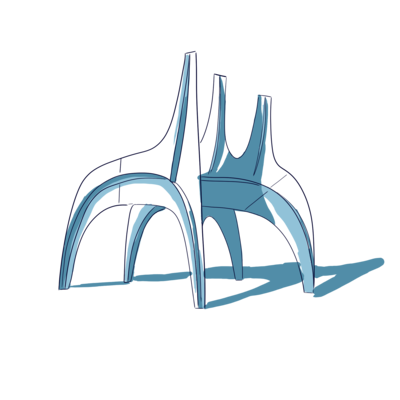
A more recent addition to the National Gallery of Art, the Sculpture Garden was inaugurated in 1999 with the aim of displaying primarily contemporary American works. Feel free to wander around the garden to discover the

You are now standing in front of the National Archives of the United States, home to three of the country’s most important documents: the Declaration of Independence, the Constitution, and the Bill of Rights.

The National Museum of Natural History has something for everyone. It holds a reputation as one of the most visited natural history museums in the world, and one of the most popular museums in the United States.
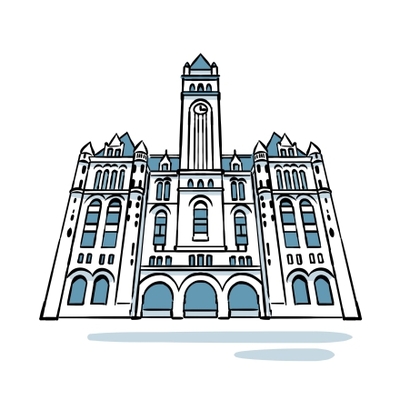
This is the beautiful Old Post Office building, which used to be the city's postal headquarters. Built between 1892 and 1899, this monument is known for its impressive neo-Romanesque architecture.
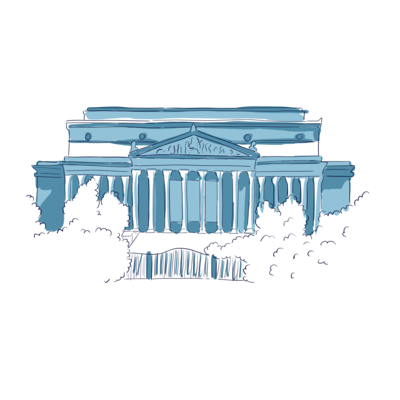
On your right, you’ll see a vast building complex known as the Federal Triangle. Built in the 1930s, it was one of the largest construction projects in the country aiming to establish seven federal buildings.
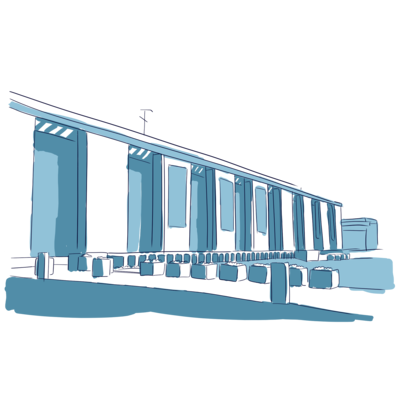
The National Museum of American History gives an insight of the country’s past through its history and heritage. With over 3 million artifacts, the museum traces the nation’s biggest events, greatest leaders

In front of you stands the National Museum of African American History and Culture. This museum is divided into three sections: slavery, segregation, and contributions to culture, sports, and arts.
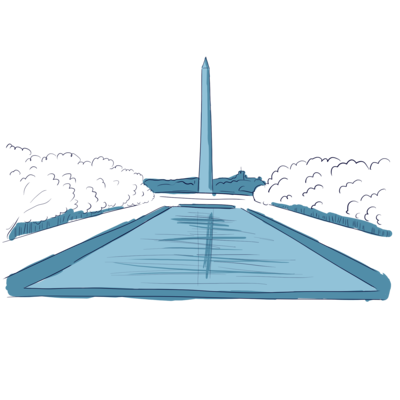
The National Mall is the most historic and visited part of Washington D.C. This vast public park stretches from the Capitol to the Washington Monument. It was originally designed around 1800 by Pierre Charles L’Enfant
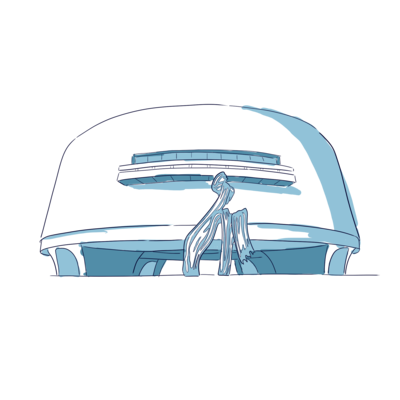
The idea of building an art museum on the National Mall was first proposed in 1930, but it wasn’t until 1969 that it was finally inaugurated. The museum is based on a large modern art collection gathered by Joseph

Dedicated to all space and aviation fans, this museum is one of the most visited in the world, with over 6 million visitors each year. Here, you’ll find the largest collection of aircraft and spacecraft in the world

This museum shows the history, culture, and arts of Native American people, with branches in New York and Maryland. Opened in 2004, it gives visitors a chance to learn about Indigenous tribes, Native Americans

Here is the Congress, also known as the Capitol. Construction first began in 1793, four years after George Washington was elected as the first American president. Designed in an elegant neoclassical style it was finally

Welcome to the Library of Congress, the largest library in the world, as well as the oldest in the United States. It was established in 1800 by President John Adams when Washington became the country’s capital.

In Washington, you have the White House, the seat of executive power; the Capitol, home to the legislative branch; and before you is the United States Supreme Court, representing judicial authority.
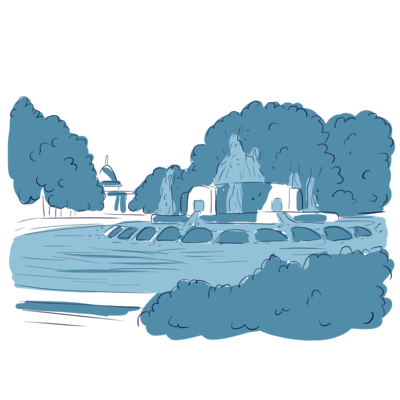
This beautiful fountain was designed in 1929. Installed in the Senate Park in 1932, it is a granite monolith with multiple water jets, creating an elegant display. The construction was supervised by the Capitol’s
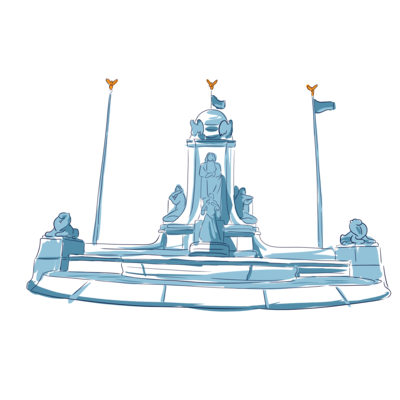
Topping the fountain, you’ll find the statue of one of the most famous figures in history: Christopher Columbus. On either side of him, the two figures represent the Old World and the New World.
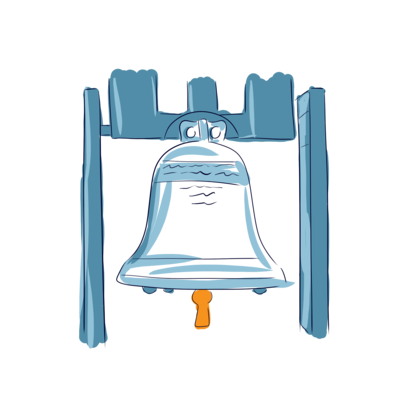
Between the Christopher Columbus Memorial and Union Station, this bell is a replica of the Liberty Bell, an iconic symbol of American independence in Philadelphia. This one is the Freedom Bell, a bicentennial gift from
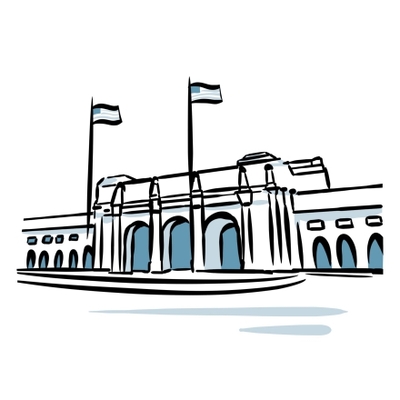
Welcome to Washington D.C.'s main transport center: Union Station. Opened in 1907, it has almost 40 million visitors each year! One of the largest transportation facilities in the United States, there are train and bus
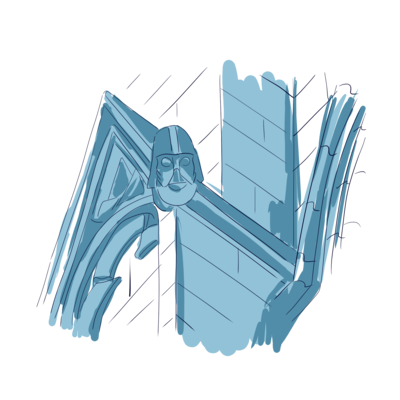
Having witnessed every U.S. president come and go since its founding in 1800, Washington D.C. is full of history. That same year, the White House became their offical residence, and over time, presidents have not only



















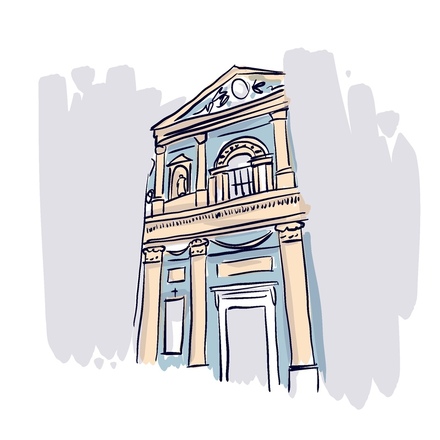
This little blue parish is the Saint-Jacques-le-Majeur church, commonly known as Gesu church. Its history began with that of a nicois merchant, who gave a significant amount of money to the Jesuits of Nice to found a college.
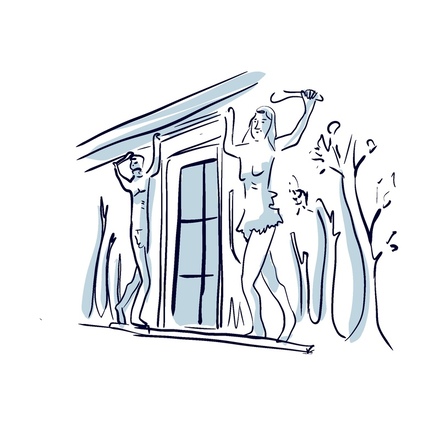
At the corner of “rue de la barillerie” and “rue de la Poissonnerie”, you can admire the only remaining relic of the old tradition of painted houses. During the middle age and the Renaissance, it was common to sculpt bas-reliefs inspired by the

You are now on Saleya Avenue. It was built at the start of the 18th century, on the space left by the surrounding wall. Buildings open to the public were built along the shore, and by the end of the 18th century, Saleya Avenue became a trendy
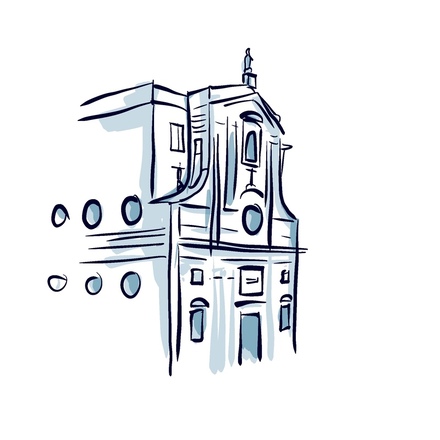
After Saleya Avenue is the small “Chapelle de le Miséricorde”, also known as “the black penitents’ chapel”. It is considered to be the most beautiful baroque chapel in Nice. It was built during the 18th century, on the land of the old salt cellars of

From where you stand, you may not be able to grasp this, but when viewed from above, the Paillon Promenade resembles an expansive green carpet unfurled across the city. This gigantic urban park connects the Modern and Contemporary Art
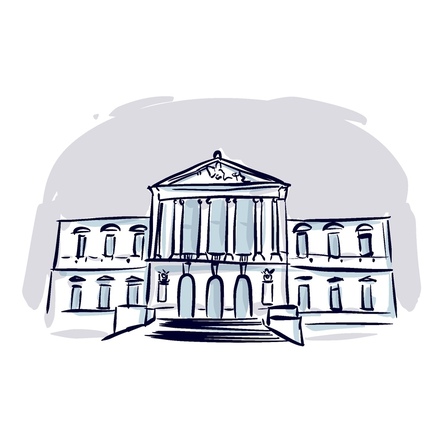
You arrive on Courthouse Square. This plaza was built in 1892 on the site of the old Dominican convent, and is overlooked by the imposing Courthouse. Right next to it you’ll see the “Oulivier” an artwork by artist Laurent Bosio which was

Created in 1852, Albert I Garden is one of the oldest public garden of Nice. The first one ever was born in 1828 on castle hill. Back in the day, taking a walk was the favorite physical activity of foreign winter tourists.
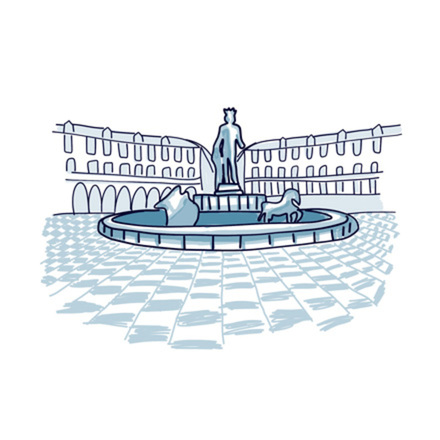
Under this sublime and mesmerizing checkboard plaza flows the Paillon. It was buried many years ago for health reasons. This entirely pedestrian square allows us to get from old Nice to the modern part of town pleasantly.
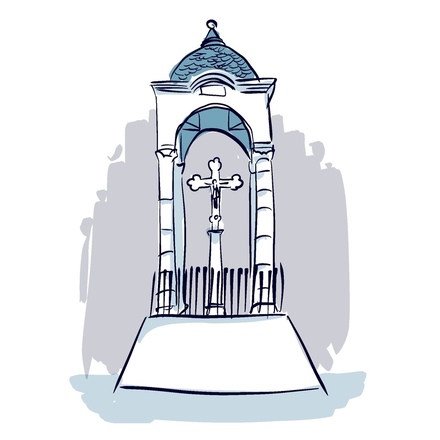
This street is named “Rue de France”, as it led to the border prior to Nice’s annexation to France. You now enter into new Nice, so no more paved streets or italian orange facades! This street, parallel from the sea, is framed with numerous
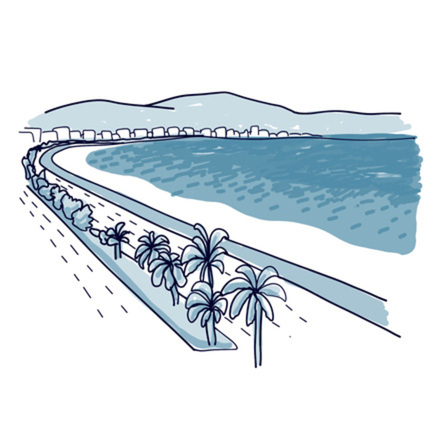
Here it is : Nice’s true star, the famous Promenade des Anglais : The English walkway. Fringing the “Baie des Anges” and its blue infinity, it invites you to contemplate as you wander. From the 18th century on, British aristocrats started leaving
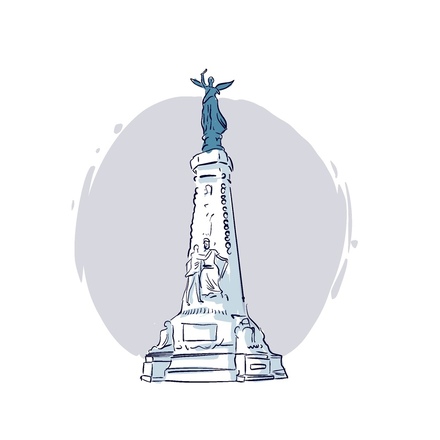
The commemorative monument that you see here is the “centenary monument”. You can see 2 women at the base of the pyramid. They are both allegories of Nice surrendering itself to France. Take a closer look to France.
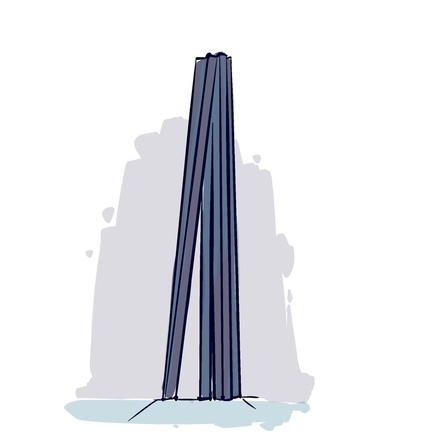
This imposing steel sculpture was commissioned by the mayor of Nice to celebrate the 150th anniversary of Nice's annexation to France. It was installed in 2010, and each of its lines represents one of the nine valleys that formed the County of
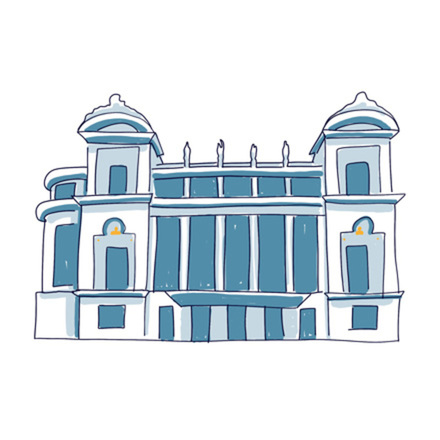
The Opera that stands before you today has gone through several changes since it was first built. The story begins in 1776, when the King of Sardinia allowed the Marquioness Alli-Maccarani to transform her house into a little wooden theater.

You now find yourself in front of a replica of the famous statue of Liberty. For sure it is a replica, but it’s not a fake one ! Indeed, it was signed by Bartholdi, the artist behind the actual Statue of Liberty. After Paris, Colmar, Tokyo

Every self-respecting city has to have an instagrammable spot, bearer of the famous hashtag. You are here on Rauba Capeu dock Square. It was originally a hiking trail dug inside of stone. Today, you will find a beautiful blue, white and red
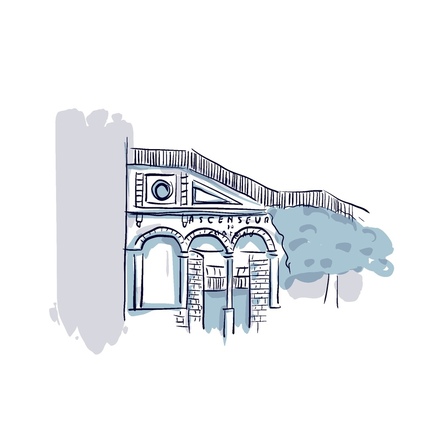
You have to climb up all the way to the top of Castle Hill to be able to enjoy the best view over Nice. This place is such a highlight that Nice went so far as to install a free elevator so that nobody misses it!! You can take it, or use the stairs.

Here you are, on the first belvedere of Castle Hill Park. You can admire the clear view that opens up from Bellanda Tower. This tower was entirely part of Nice’s landscape. It has been widely represented in paintings and photography since the

The waterfall that brings you freshness is artificial, but really pleasant. It was commissionned by King Charles Felix of Savoy during the 19th century. He wanted to expand and embellish his city. He gave the hill and its ruins to the municipality
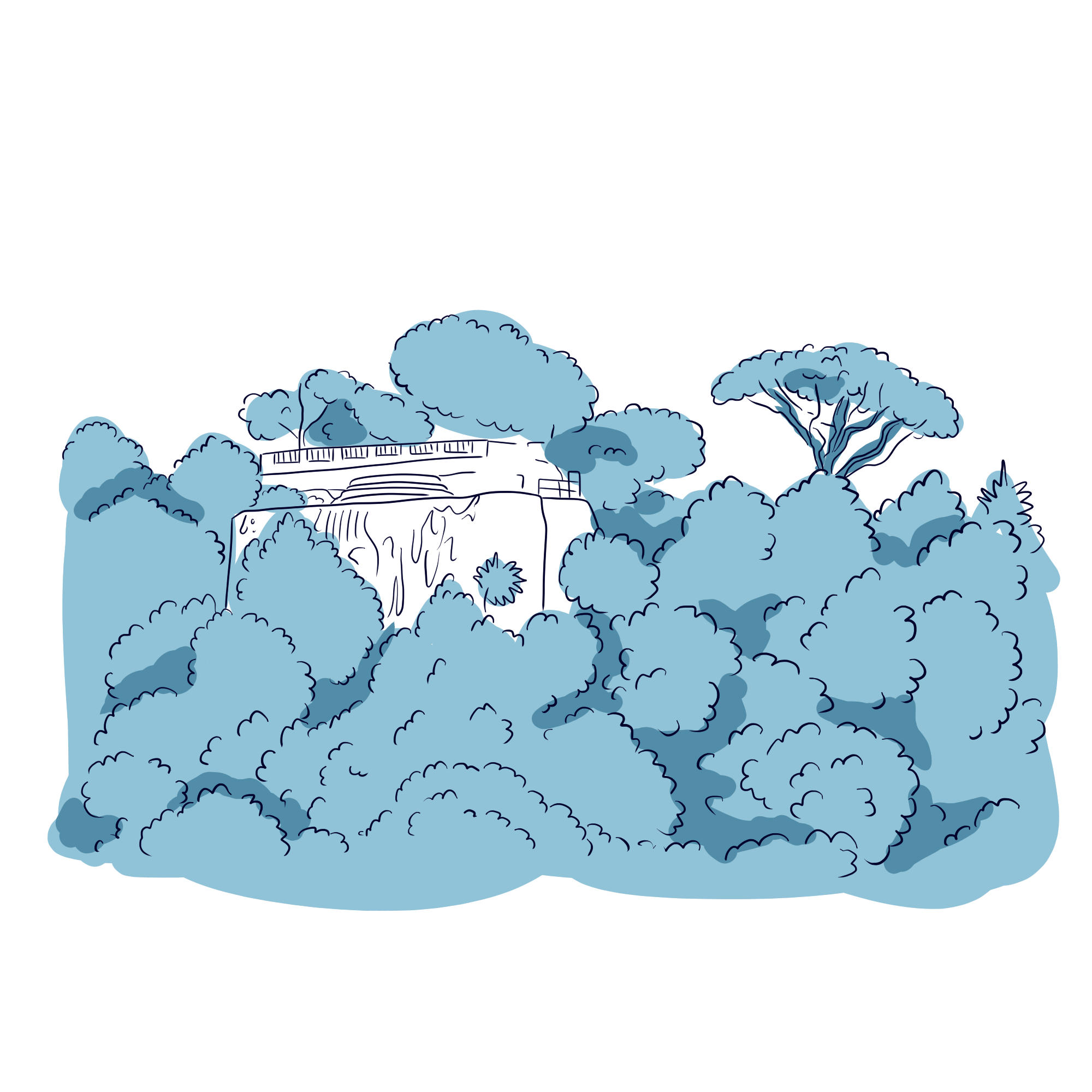
The phocean greeks have settled on that hill, overlooking the sea. The first inhabitants of Nice called it “Nikaia”, meaning “she through whom victory arrives” in ancient Greek! At that time, Nice was already sought after by the neighboring

On the Eastern side of the Park is the beautiful Lympia Harbor, along with the fabulous seaside, and Nice’s lighthouse. You can also see the long Frank Pilatte boulevard, running along side the sea, around Mount Boron and Cape Nice.
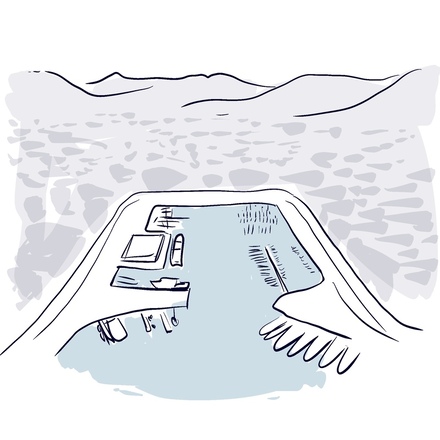
What could be more peaceful than a walk along the harbor. The old port of Nice lends itself perfectly to such an experience. It was built during the 18th century, right at the foot of the ancient citadel. Along with Cannes’ harbor, Port Lympia is
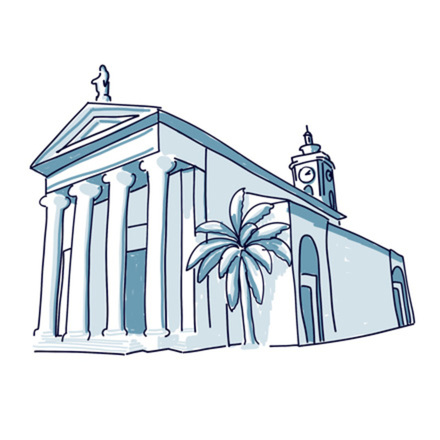
This charming square, named “Island of Beauty ”, offers a magical view over the old port and its “pointus”, the traditional pointy fishing boats.
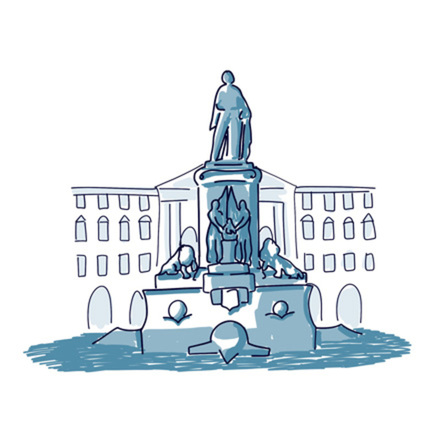
Nice’s history is closely intertwined with that of Italy. In 1780, the King of Sardinia, Victor Amadeus III, decided to build a road from Turin to Nice. He requested a great square to welcome the travelers that used this royal road.
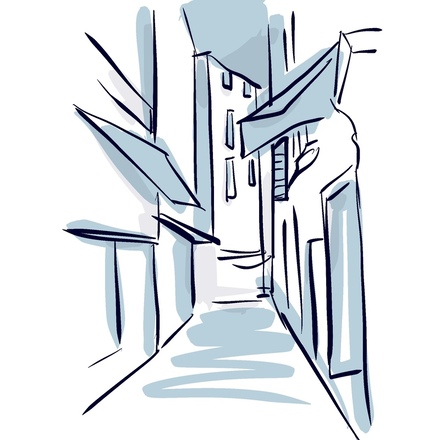
Here you are in one of Old town’s most iconic streets! During the Middle Ages, it housed the coppersmith’s guild, or “parouliers” in Niçois dialect, hence the name of the street. Today, the narrow and oh-so-typical street is lined with food shops.

Pay close attention to the corner of “rue Droite” and “Rue de la Loge”. Behold, what you witness before you is an authentic cannonball firmly lodged within the wall. It was fired during the Siege of Nice by the Turkish fleet in 1543.
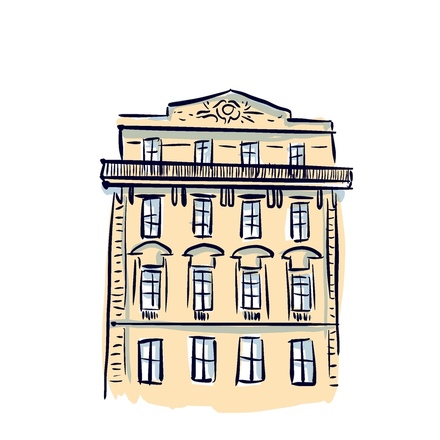
You are now in what used to be Nice’s main street during the 17th century. It linked the harbor to Garibaldi Square. Its name “Rue Droite” comes from the mistranslation of “Nissart Drecha”, which means “Direct street”, contrary to its current

Rossetti Square exudes an Italian charm, Ochre facades, flower-filled balconies, ancient fountain and cafés : it sure feels as if you were there! Saint – Reparate is the cathedral’s patron saint. She also is the one of Florence, and several other
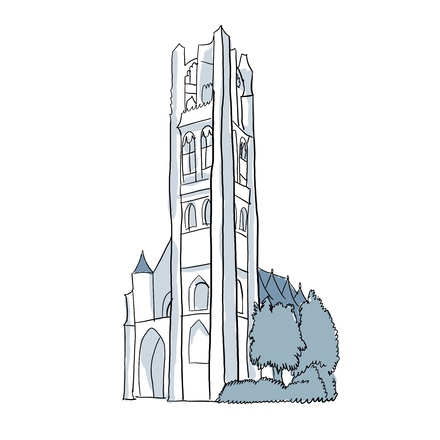
Who knew Rouen had so many churches? Shocking, right? And each one has a different story to tell about the city. The church of Saint-Laurent is a prime example. Dating back to the 11th century, it has had quite a tumultuous history.
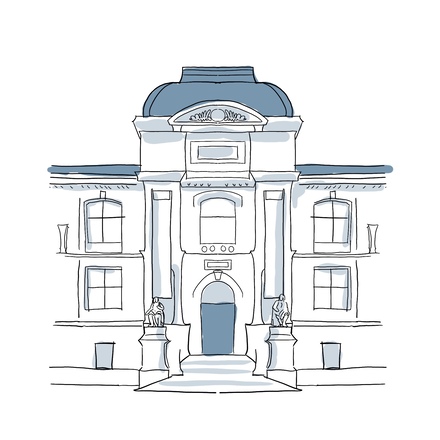
Fellow art enthusiasts, trust me when I say Rouen won't disappoint. You're in for a treat! And you'll see why as soon as you step into one of its many museums, several of which are even free! Take for example the Museum of Fine Arts, right before you.

Rouen's charm lies in its eclectic architecture. Where to start? From the dazzling clock tower to the cathedral with its lace-like stonework and the 2,000 or so timber-framed houses in a riot of colors and styles, this city's diverse heritage never ceases to amaze.

They say all roads lead to Rome, right? Well, then, you could also say all oceans lead to Rouen – but only for about ten days every four to six years. And why is that? That's how long it takes for the Armada to make its comeback to the capital of Normandy.
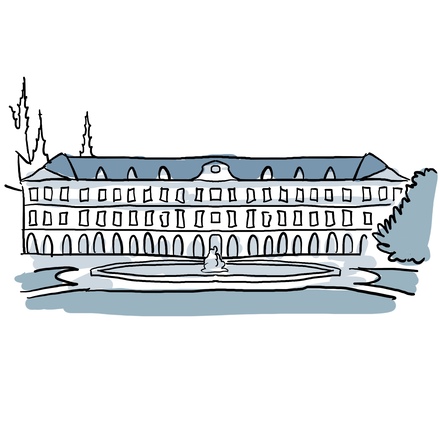
Right next to the Abbatial Church of Saint-Ouen stretching vertically toward the sky, you'll find its neighbor stretching horizontally along the ground. This is Rouen's current City Hall. And I say current,
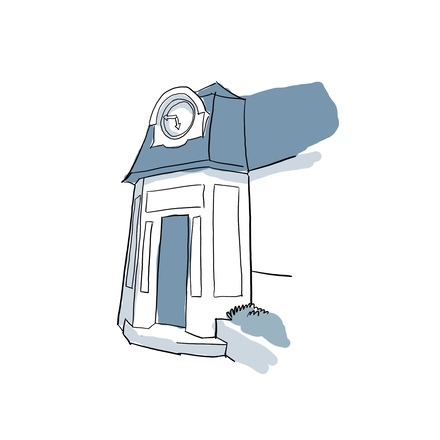
Truth be told, just about everyone knows Rouen's Gros-Horloge. But did you know there's a smaller, lesser-known one too? It's hidden in plain sight. To find it, all you have to do is take this mysterious passageway,
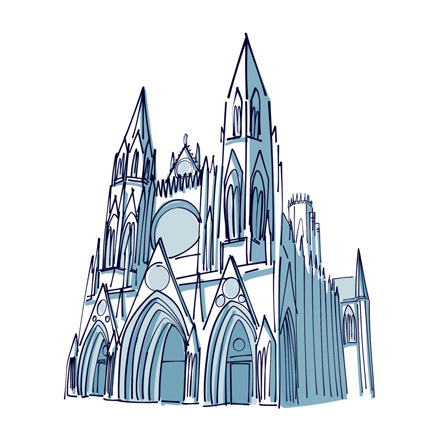
Introducing the Abbatial Church of Saint-Ouen, a fine example of the Rayonnant Gothic style. It's often mistaken for a cathedral due to its immense size - it's over 130 metres long and 33 metres high!

Rouen is a great place to explore on foot. It's quite easy to get lost in one of its 1,200 streets – but that's half the fun! Especially if most of them look like the Eau de Robec Street. Talk about picturesque!

A visit to the Saint-Maclou neighborhood is a must when visiting Rouen. Every local will tell you so. And while you’re there, don’t miss the charming Rue Damiette, with its half-timbered houses.

Strange, hidden, and unsettling, the Saint-Maclou Churchyard is shrouded in mystery. It's no surprise this eerie place is Rouen's second most visited site, after the iconic Notre-Dame Cathedral.
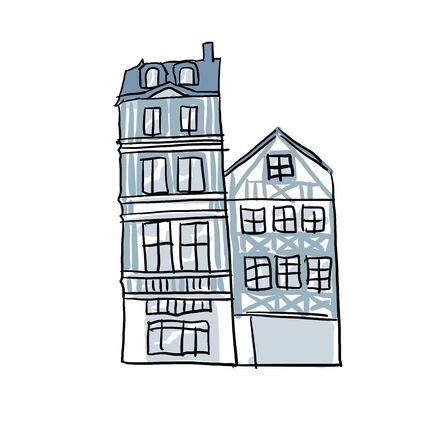
Of all the half-timbered houses in Rouen, we bet you haven’t seen one quite like this. Introducing the famous tilting house. Needless to say, its nickname fits it like a glove. You can actually see it tilting!
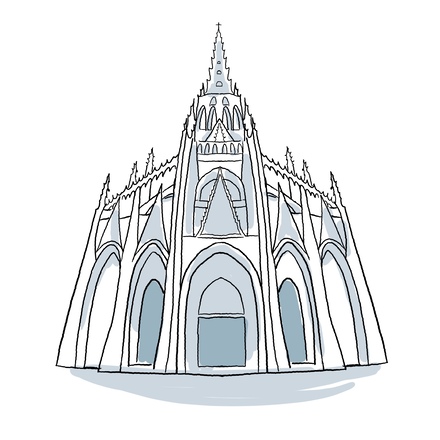
Set against a backdrop of half-timbered houses, the Saint-Maclou church stands out with its unmistakable elegance and character. The church was built between 1436 and 1517 on the marshlands of the Robec, an old stream in the Antiquaires district.

This is Chanoines Street, a charming hidden passageway, as picturesque as can be. The thing is, you have to know where to find it. You see, it's easy to miss. This quirky little alleyway, barely a meter wide at some points,
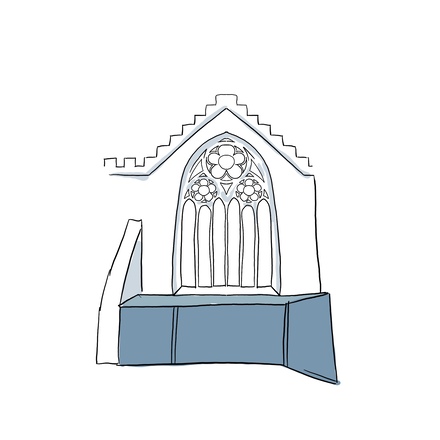
Rouen could have easily founded a museum to honor Joan of Arc, recounting her life with classic artwork and a few collector's items. But given her extraordinary story, the city felt it could do better.
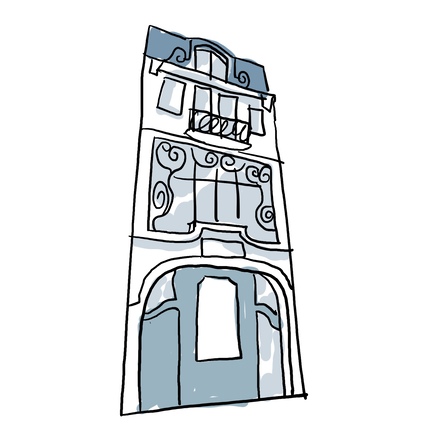
You're now walking up Saint-Romain Street. Once again, the only advice we can give you is to keep your eyes peeled and marvel at the architectural gems all around you. The city is a delightful blend of old and new,
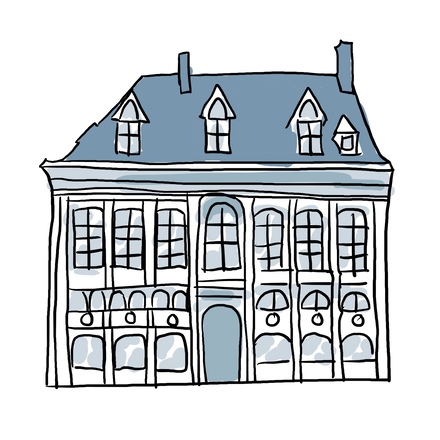
It's hard to look away from the stunning Rouen Cathedral, towering over the square that bears its name. And yet, if you manage to do so, you'll discover myriad more hidden gems nearby, starting with this corner building and its striking façade.
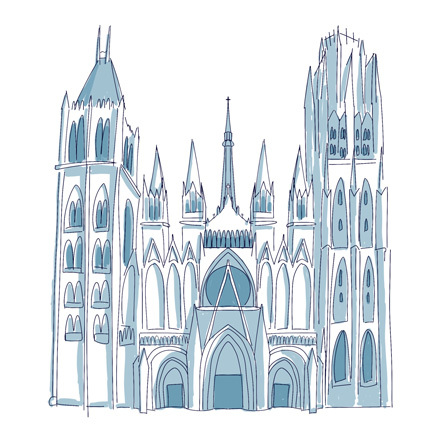
Introducing the Notre-Dame of Rouen. Unlike its more famous sisters in Chartres, Paris, Reims, Amiens, and Strasbourg, Rouen's cathedral is often overlooked. Let us tell you a bit about this little gem steeped in history.
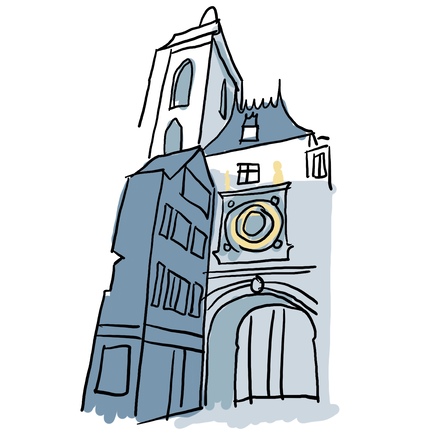
Looking for peace and quiet? Well, you won't find it here. You're currently on the busiest thoroughfare in the city. Gros-Horloge Street is popular for its varied shops and rich history. Big-name stores are gaining more and more ground on small local businesses.

The Gros-Horloge is a real eye-catcher; it's the first thing you see when you cross the street. This iconic landmark is a quintessential piece of Rouen's medieval history. It's mounted on a 14th-century Gothic belfry and its clockwork mechanism is one of France's oldest,

"So, friends, this is Rouen, the city of ancient streets and ancient towers, whispering tales of forgotten times. This is the city of a hundred chiming bell towers." These were the words of Victor Hugo, or rather a translation of them,
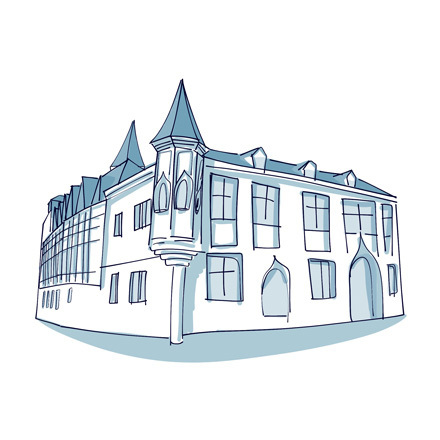
Standing proudly on the charming Place de la Pucelle, the Bourgtheroulde Mansion is just one of many architectural gems in the city's historic center. It was built at the end of the 16th century by William II of England,
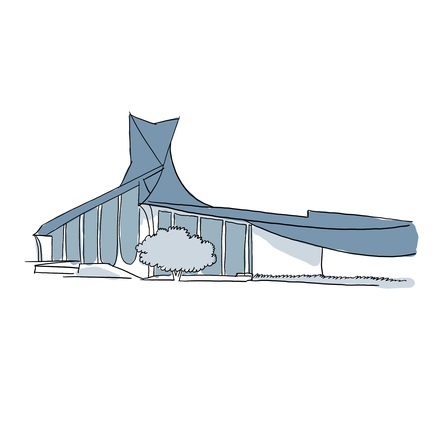
Built on the site where Joan of Arc was burnt at the stake back in 1979, this church is unlike any other in the city. It stands out from the crowd thanks to its bold, contemporary architectural style, which is nonetheless traditional.

You're definitely in the thick of it here! This is the historic center, so expect a crowd. The Place du Vieux-Marché, aka the Old Market Square, has seen its share of changes since its medieval beginnings.
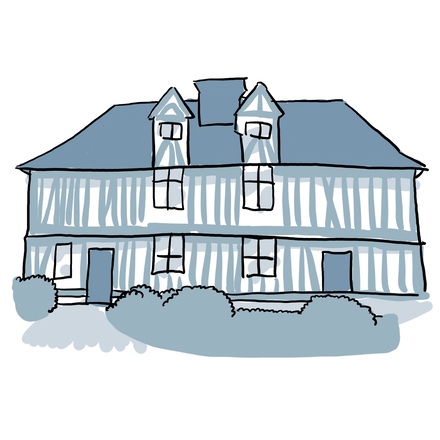
"To conquer without risk is to triumph without glory." Does this ring a bell for anyone? Classic French theater buffs, this is your time to shine! This is a quote from Pierre Corneille's most famous work, “Le Cid”.

May 30, 1431, is the one date that Rouen will never forget. It was on this day that Joan of Arc, a key figure in French history, met her tragic end. And this is where it all happened; this place is forever linked to the city's identity.

Time for a riddle! You find me perched on gutters, I’m made of stone, and often carved to look like an animal or a person. What am I? Any guesses? I'm a gargoyle! You'll find these strange, scary creatures in many streets and Gothic buildings in Rouen.

Introducing Rouen's Courthouse – a fine example of the Flamboyant Gothic style, with its intricate lace-like details. The edifice was built on the ruins of the city's former Jewish quarter and its story begins in the late 15th century,

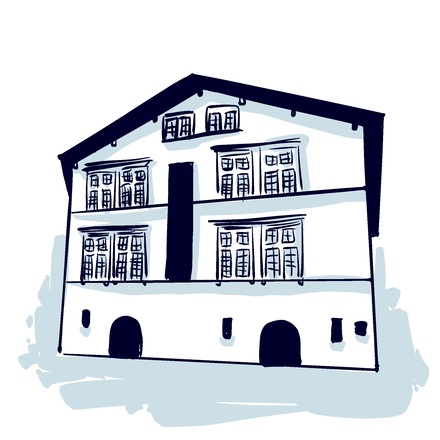
On your right, you'll find the Basque and Bayonne History Museum. It's housed in the Dagourette Mansion, built in the 17th century.
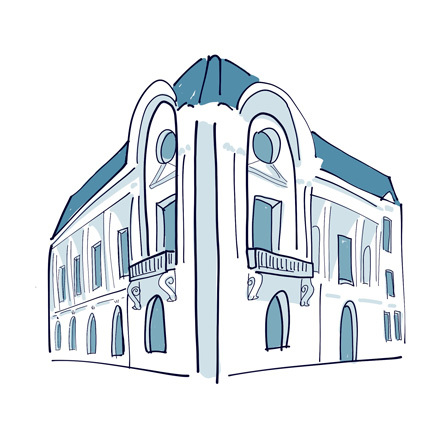
Housed in a purpose-built early 20th-century structure, the Bonnat-Helleu Museum is home to collections of paintings, drawings, sculptures, objets d'art and archaeological finds.
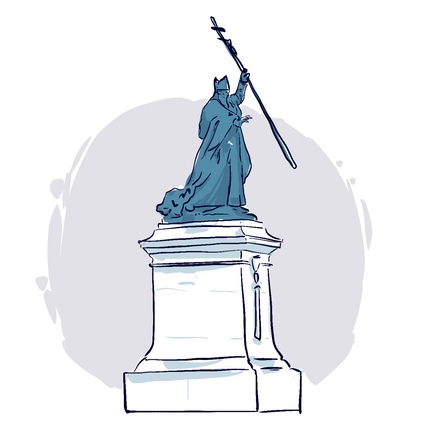
Welcome to Réduit Square, where the Adour and Nive rivers meet. Before you is the imposing statue of Charles Lavigerie, one of the city's most prominent figures.
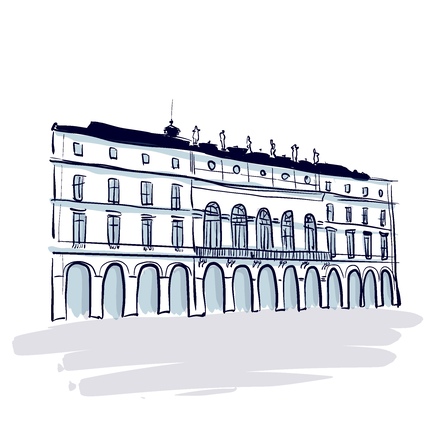
On your right, as you continue along the Nive River, you'll find the Place de la Liberté, the Liberty Square, and the striking Michel Portal Theatre. It serves both as a theater and as the town hall.

You're now approaching Port Neuf Street, one of Bayonne's busiest shopping streets. You can spot the cathedral's spires in the distance, peeking out between the two rows of colorful Basque houses lining the street.

Bayonne is best known for its annual festival, the Fêtes de Bayonne, which attracts thousands of visitors every year.
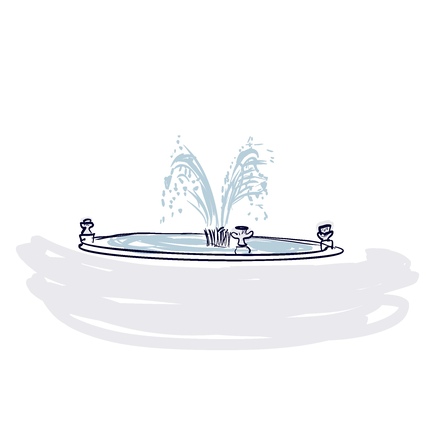
Welcome to the Léon Bonnat Public Garden, named after the local painter who created over 200 portraits of famous people like Victor Hugo, Louis Pasteur and Jules Ferry.
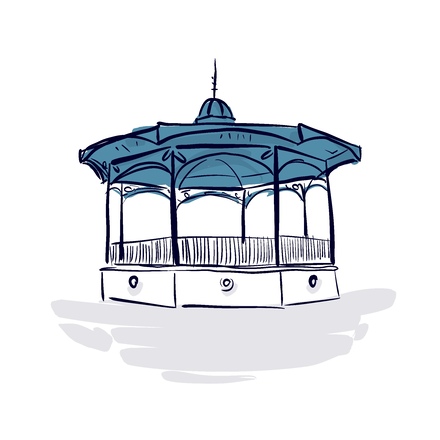
Unlike its neighbor, the Jardin René Cassin is a beautiful English-style garden with flowerbeds winding along its paths.
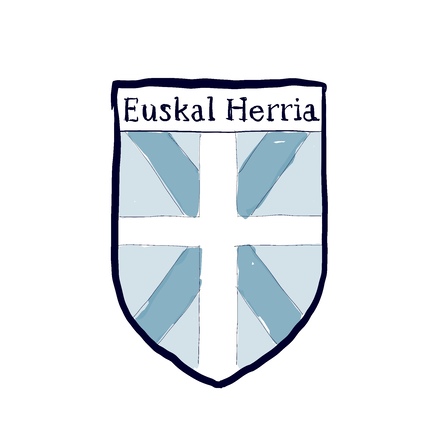
Let's make the most of our time here in Basque Square and talk a bit about the history of this magnificent region.

Facing you, against the city walls, is Bayonne's war memorial. Built in 1924, it's a tribute to the 800 locals who died fighting for France during World War I.
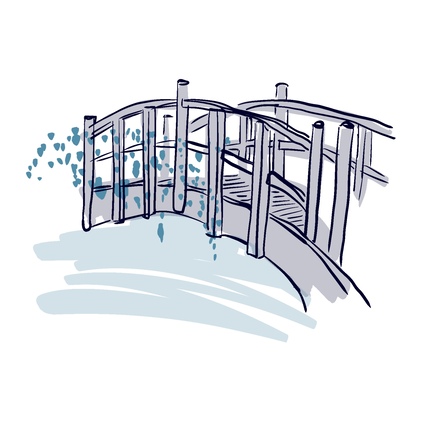
Here you are in front of the entrance to the Bayonne Botanical Gardens. This hilltop park actually sits atop the bastion of Vauban's fortifications, where cows once grazed in the moat.

The gate before you was built into the ramparts in the 19th century. It came to replace an earlier one leading to the Château-Vieux, the Old Castle.
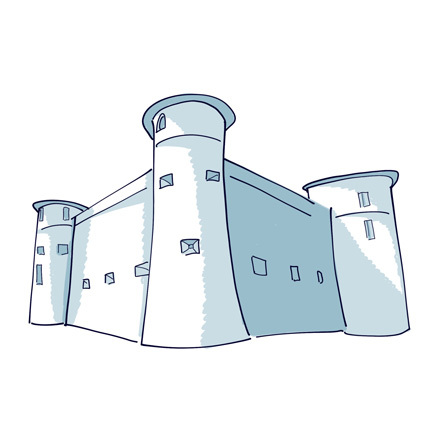
Bayonne's story begins in the 1st century with a Roman fort built to protect the troops stationed here, in a town they called Lapurdum.
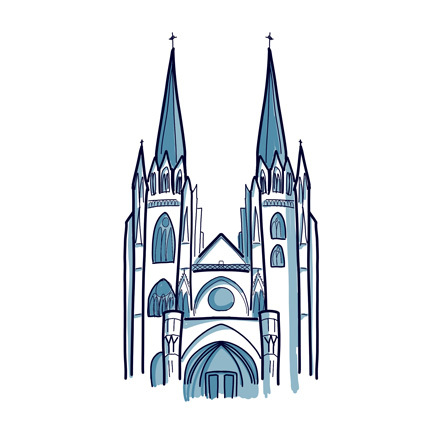
Introducing the Sainte-Marie Cathedral, built in the 13th century on the site of an earlier Romanesque church that was destroyed in a fire.
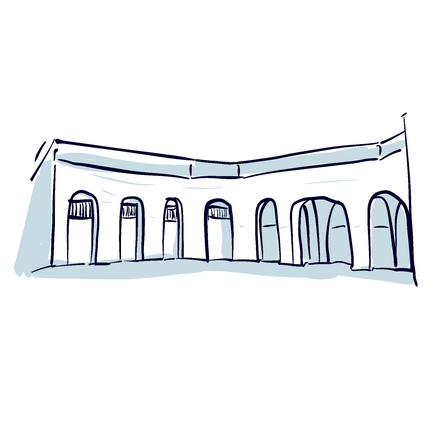
We're looking at an important piece of the city's history! The Spanish Gate has been part of Bayonne's fortifications since the 18th century - well, at least in its current form, completely revamped by architect Vauban.
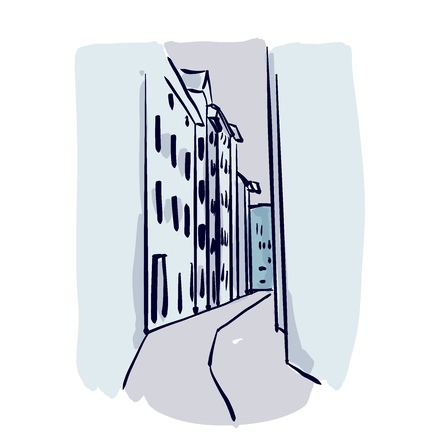
You can't help but look up on this street - the buildings here are just stunning! It's truly a feast for the eyes, with all the half-timbered houses and their colorful shutters. It's a textbook example of Bayonne architecture!
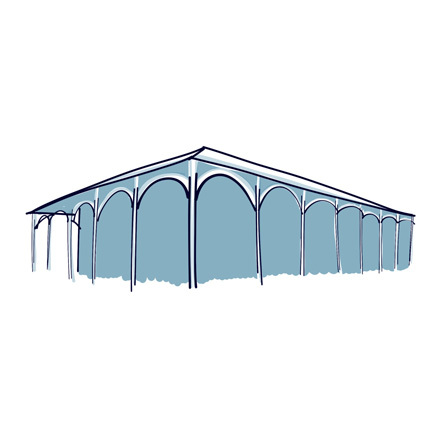
Bayonne’s covered market is an absolute must-visit. How can you resist? The city may be famous for its festival and rich history, but it's also a foodie’s paradise!
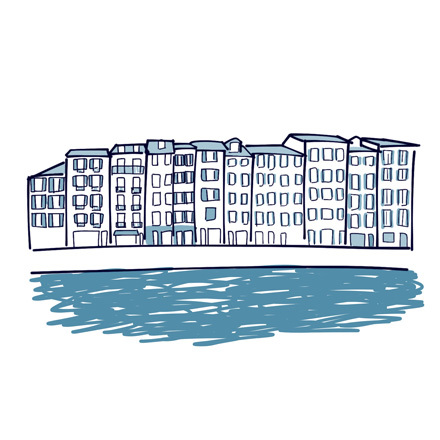
We're now on the banks of the Nive, where you can enjoy a stunning view of the brightly-colored half-timbered houses.
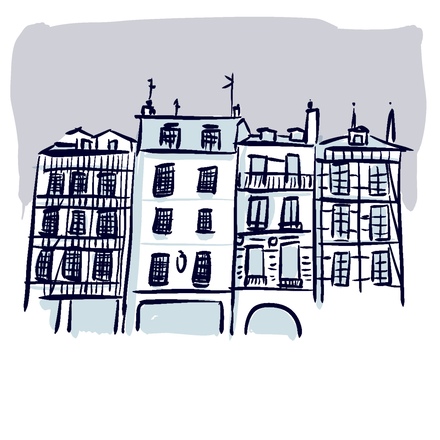
You are now on the right bank of the Nive, the longest river in the Basque Country. This part of town is known as Petit Bayonne, as opposed to the Grand Bayonne on the other side.
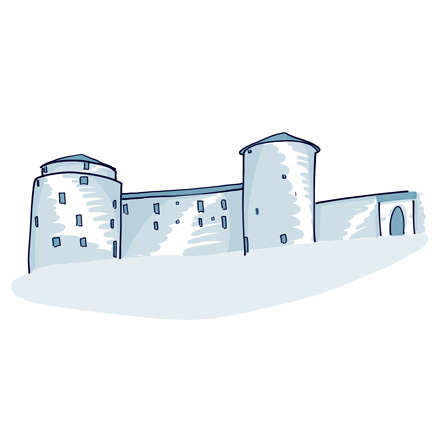
This castle's history is closely linked to that of the city. In 1152, Aquitaine, the region encompassing Bayonne, came under English rule following the marriage of the Duchess of Aquitaine to King Henry II of Plantagenet.
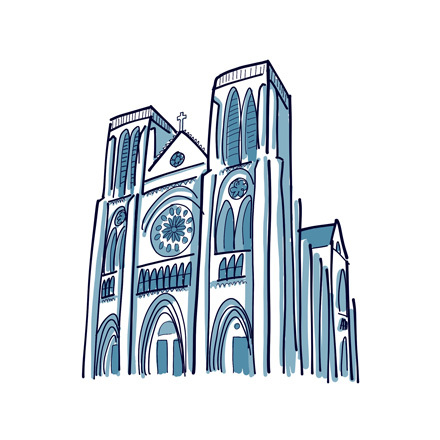
This beautiful church shaped like a Latin cross was built in the 19th century under Napoleon III.

Every summer, Bayonne comes alive hosting one of France’s biggest and most beloved events: the Fêtes de Bayonne, or Baionako Bestak in Basque.
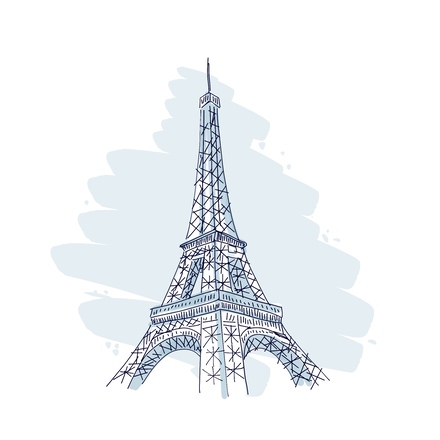
Without further ado, I present to you, the Eiffel Tower! You probably know this already, but it was created by Gustave Eiffel as the centerpiece of the 1889 Paris Exposition, to celebrate the centenary of the French Revolution.
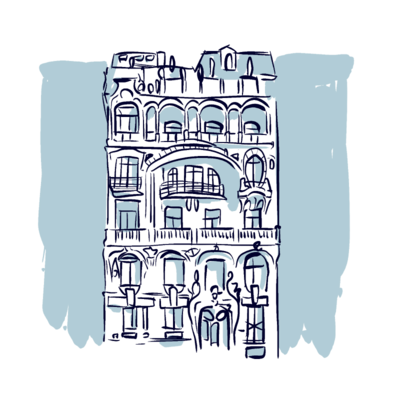
Take a moment to admire the beautiful façade of the Lavirotte Building. Art Nouveau, a short-lived yet influencial artistic movement, flourished between the 19th and 20th centuries, lasting but 30 years.
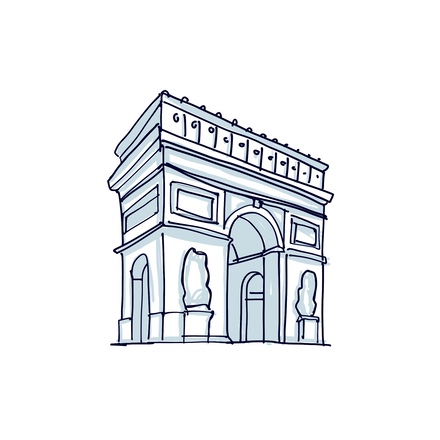
“You will only return home through triumphal arches”! Well, Napoleon certainly knew how to get his troops motivated.
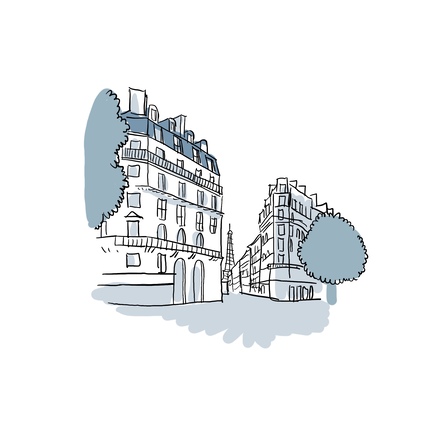
You're now walking along the beautiful Kléber Avenue, linking the Arc de Triomphe to the Trocadéro Esplanade for a little over a kilometer. It is one of the twelve avenues designed by Haussmann, all leading to the Place de l'Etoile.
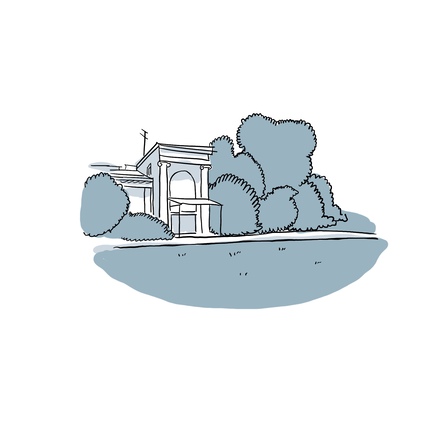
You're now strolling through the gardens at the foot of the Champs Élysées. They're not nearly as famous as the luxury boutiques here, but they're well worth the detour, especially if you're looking to escape the city's hustle and bustle.
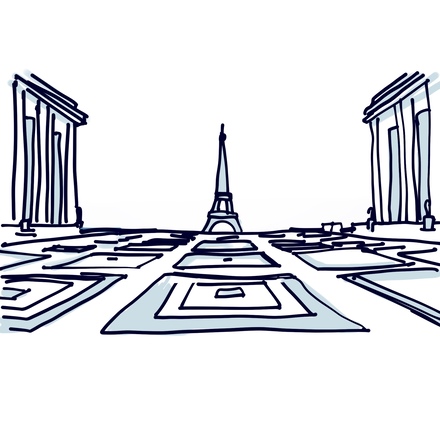
You've reached the Trocadéro Esplanade. Above you is the impressive Chaillot Palace, built on the hill of the same name. Few people know the history of Trocadéro.
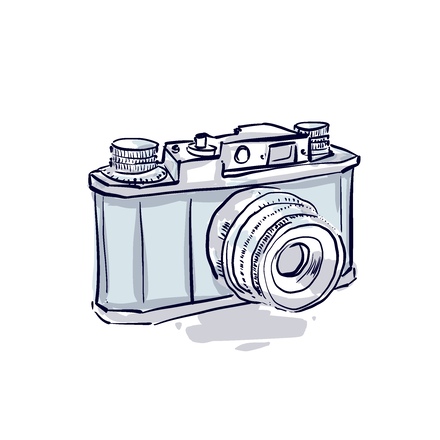
From here, you have a great view of the famous Iéna bridge. It was designed by Napoleon I to cross the Seine, linking the Military Academy to the Chaillot Hill, where he planned to build a palace for his son. He turned down all the names suggested and named the bridge “Iéna”, in memory of his victory over Prussia at the Battle of Jena
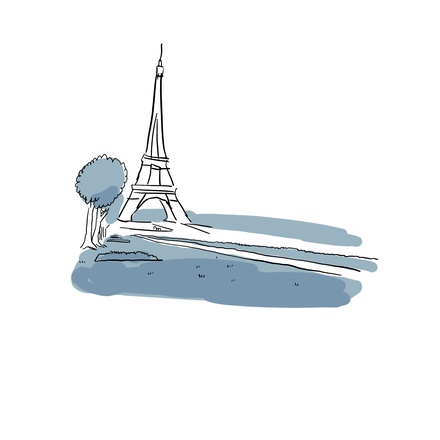
You're now walking through the Champ de Mars, aka the Field of Mars. This large public garden stretches some 780 meters, from the Iéna Bridge all the way to the Military Academy.

You're strolling past the Saint-Pierre du Gros Caillou Church, that has stood here, in the heart of the Gros Caillou district, since 1733.
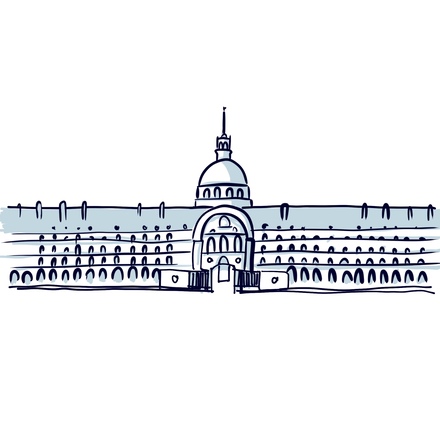
The Hôtel des Invalides, the grand building you see in the square, was the brainchild of Louis XIV, a king known for his compassion towards soldiers.

You're now in front of one of the most beautiful bridges in Paris, offering a stunning view of the Grand Palais with its gilded statues in the foreground.
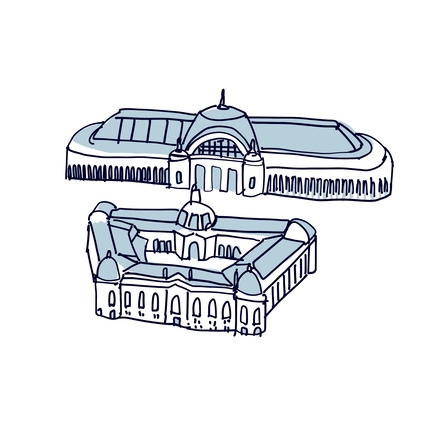
When you think about it, we owe a lot to the World's Fairs for their contribution to the city's cultural heritage. You see, although buildings constructed for such exhibitions were meant to be short-lived, some, like these ones, were built to last.
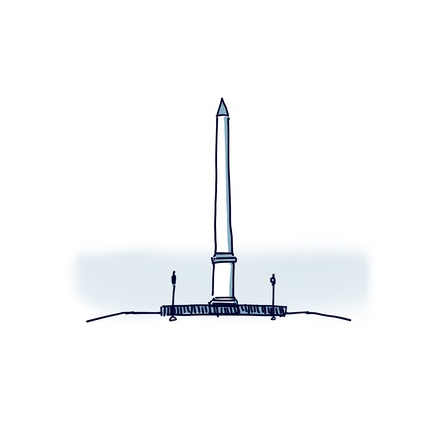
Welcome to the Place de la Concorde, the biggest one in Paris and one of the most beautiful. This historic square was created in the late 1700s at the request of Louis XV.

Who would've thought that this huge Greek temple on Place de la Madeleine is actually a church? I know, it's not your typical Catholic church, with its neoclassical architecture.
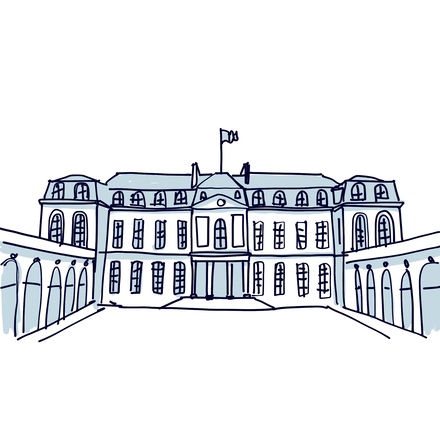
We're now on Rue Faubourg Saint Honoré, one of the most luxurious streets in Paris, lined with boutiques, art galleries and private mansions. More importantly, it's home to the President of...
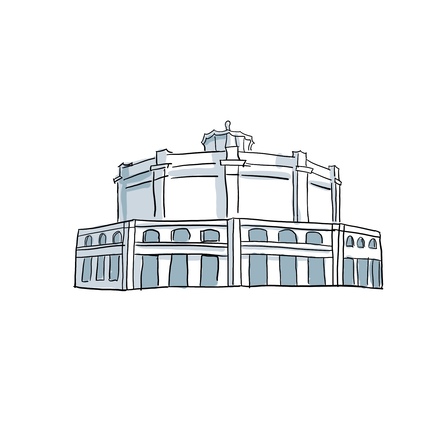
You'll now walk past the little Marigny Theater, listed as a historical monument. Its story begins way back in 1835, when a magician and physicist set up shop and performed in a tiny room...
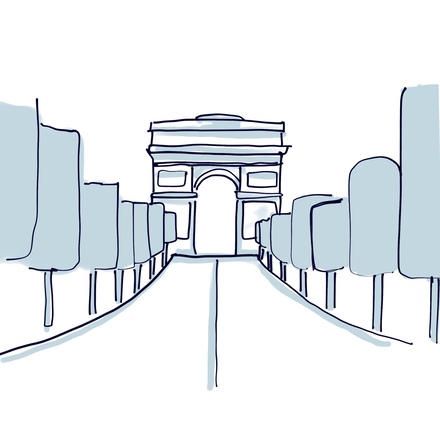
Welcome to the Champs-Élysées, the world's most beautiful avenue. This famous street stretches for two kilometers, lined with luxury stores and top-notch restaurants, all housed in...

Introducing the famous Lido Cabaret, just to your right. This legendary venue first opened in 1946, and has just taken a new direction with the launch of Lido 2.0. The Accor group recently

Nestled at the foot of the Rock and just below Monte-Carlo, Port Hercule is one of those places where time seems to slow down and life feels easy. Locals come here to unwind, families find ways to spend the afternoon, and wealthy sailors proudly dock their latest toys among the 700 berths spread out over

A small watchtower, arrow slits still visible—there’s little doubt: you’re standing on what was once a military zone. What’s now known as Fort Antoine was originally built in the early 18th century to strengthen the defense of the Principality. Monaco had been the target of enemy attacks on several occasions,
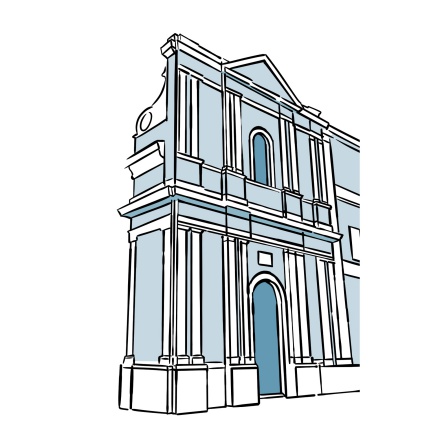
No stone statues of saints, no marble, nor bronze. No stained-glass windows—not a splash of colour, not even a simple geometric shape. No bell tower, not even a lone bell tucked away to the side. At first glance, nothing about this building says “place of worship.” And yet, if you look closely, right at the very

Perched dramatically on the cliffside and gazing out over the endless blue of the Mediterranean, the Oceanographic Museum looks every bit like a palace of the sea. After completing 28 scientific expeditions across the Mediterranean and Atlantic, Prince Albert I returned to Monaco with an even

“There are people who never truly fade away,” she used to say. But could she have imagined that one day, those words would be said about her? To Americans, she will always be Grace Kelly—that stunning blonde whose elegance lit up the silver screen in the 1950s. From her debut in High Noon to

Nature, nature—how beautiful you are! In Monaco, it’s no secret that the charm of the Mediterranean blends effortlessly with the majesty of the mountains and the peaceful green spaces tucked away here and there. Just look around you, here in the Saint-Martin Gardens, and you’ll see exactly what we mean.

For over 700 years, the Grimaldi family has shaped the history, destiny, and identity of Monaco. Their incredible story begins with the bronze figure standing right in front of you. Meet Francesco Grimaldi. His close friends called him “Malizia,” which means “the Cunning.” You’ll soon see why he

For most of the year, life in Monaco runs at a calm, easy pace. But when May rolls around, everything shifts into high gear. The reason? The Monaco Grand Prix roars into town. This legendary race is part of the famous “Triple Crown” of motorsport, alongside the Indianapolis 500 and the 24 Hours of

Tucked between two irresistibly charming countries—France and Italy—Monaco is still very much a world of its own. With its princes and princesses, the legendary Grand Prix, glittering casinos, and breathtaking coastal views, it continues to fascinate just about everyone—from casual tourists to the
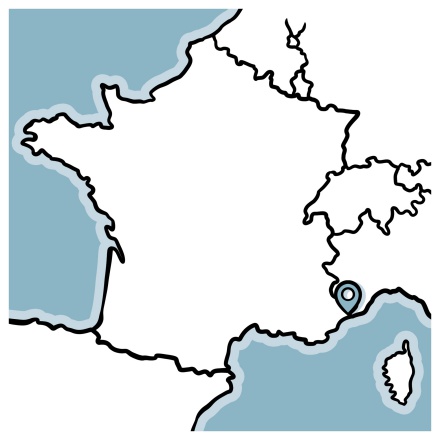
Whether it’s your first time in Monaco or your fiftieth, brushing up on a bit of its history is always worth it. At first glance, the story might sound like that of any ancient city—but dig a little deeper (literally), and things get interesting. Archaeological digs have shown that people were living in this area

The Condamine Market has been a local favorite ever since it first opened its doors on November 18th, 1880. Unlike the big supermarkets, this place brings the region’s essentials front and center—with a warm, welcoming vibe that’s unmistakably local. Whether you’re strolling through the open-air

Before you know it, you’ve stepped right into the heart of old Monaco—and let’s just say, it’s full of charm and picture-perfect corners. One of the loveliest spots has to be Princess Caroline Street. Locals sometimes call it a smaller version of nearby Garibaldi Street—but what really sets it apart is that it’s fully

There are many ways to discover Monaco—but this one’s by far our favorite. Rising above the sea yet still close to the heart of the city, “The Rock” is where it all began. This dramatic cliff is the birthplace of the Principality. Back in 1297, Francesco Grimaldi arrived from Italy, seized the fortress perched on this
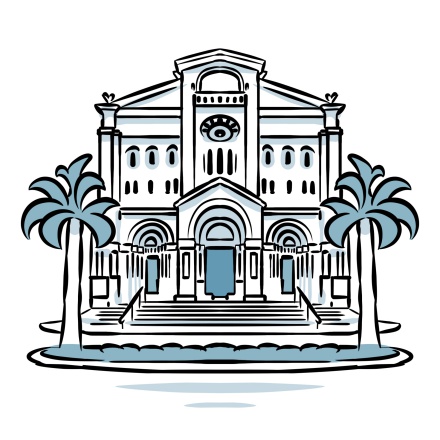
Visited by both the princely family and locals alike, the Cathedral of Our Lady Immaculate is Monaco’s spiritual heart. Built during the reign of Prince Charles III, construction began in 1875 and was completed in 1903, replacing the old Church of Saint Nicholas. That earlier church had served both the
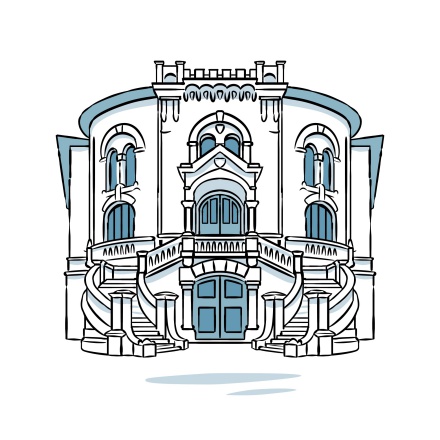
How could I not introduce you to the Monaco Courthouse? It makes a striking pair with the cathedral just next door ! Its foundation stone was laid in 1924 during a formal ceremony, thanks to the personal initiative of Prince Louis II. The building was completed and inaugurated just six years later.

Down you go, down you go! Your knees and joints are really getting a workout on the Major Ramp. But if you listen closely to the huffing and puffing of people climbing up the other way, you might feel like you’ve gotten off easy. And that’s no accident—we’d rather not lose you before the end of the tour!

If you’re looking for the best possible view of this eccentric, extravagant, and wildly wealthy City-State, there’s only one place to go—straight to the Rock. No hesitation needed. From up here, on this panoramic terrace perched at Monaco’s highest point, the word “contemplate” suddenly takes on a whole new
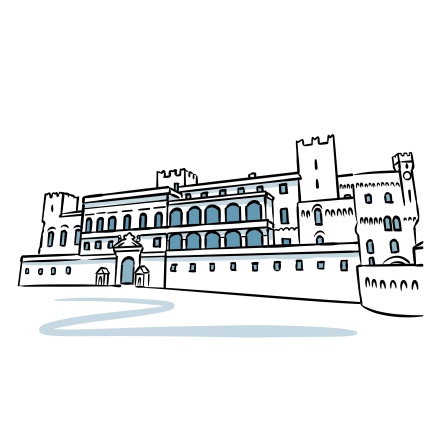
As soon as you arrive in Monaco, your eyes go straight to the Rock. Once you've spotted it, there’s only one thing to do—head for the legendary Prince’s Palace. Let’s not pretend otherwise: it’s an absolute must-see. Built on the site of a 12th-century Genoese fortress, the palace has seen it all—battles,

We weave our way through the trees, approach the edge of the cliff… and just like that—abracadabra—another side of Monaco reveals itself. Welcome to Fontvieille, the newest addition to the Principality. Hard to believe, but just 50 years ago, there was nothing here but sand at the foot of the Rock. A perfect

Many people dream of trading places with Monaco’s royal family—living in a palace, holding a title, and enjoying all the glitz and glamour that come with it. But behind the fairy tale, the reality isn't always so magical. Over the years, the Grimaldi family has faced its fair share of scandals, heartbreak
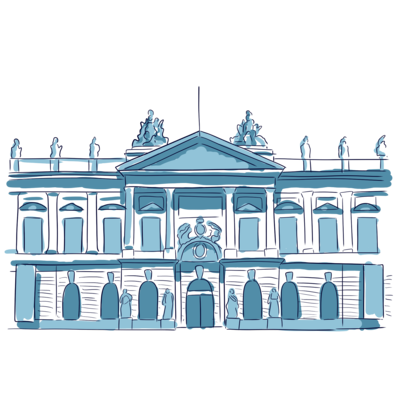
The grand buildings in this district form an impressive sequence with their similar classical styles. Here, you are standing in front of the entrance to the German Historical Museum, known as the Zeughaus, meaning Arsenal.

In front of you stand several royal residences dating back to the 18th century: the Crown Prince’s Palace and the Princesses' Palace, which is now home to the Opera Café. The so-called Crown Prince was the title given to the heir to the Prussian throne.
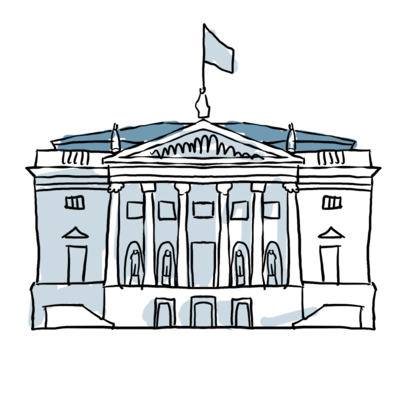
The famous avenue Unter den Linden, which literally means “under the lime trees”, stretches from the Brandenburg Gate to the castle bridge behind you. Lined with Berlin’s most prestigious institutions, it is the capital’s most important avenue.
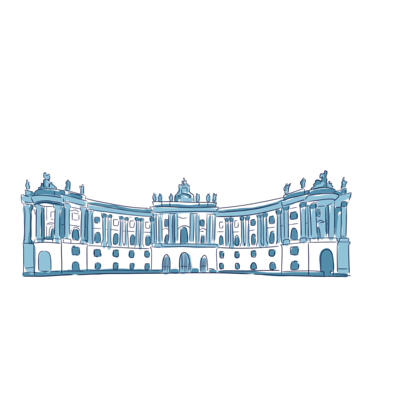
You are now standing in one of the most beautiful squares in the capital. It was renamed in 1947 to honor one of the founders of the Social Democratic Party of Germany: August Bebel. It was designed in the 18th century as part of the creation of the "Forum Fridericianum."
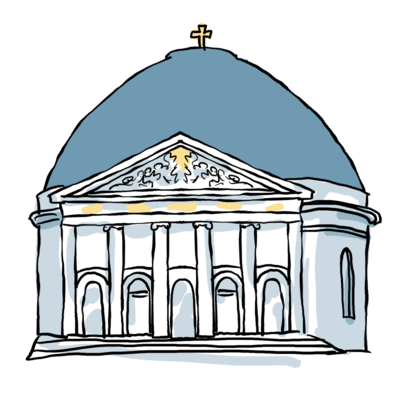
Here stands a magnificent symbol of religious tolerance. Saint Hedwig's Cathedral, which you see before you, is the episcopal seat of the Archdiocese of Berlin and one of the most important Catholic places of worship in Germany.
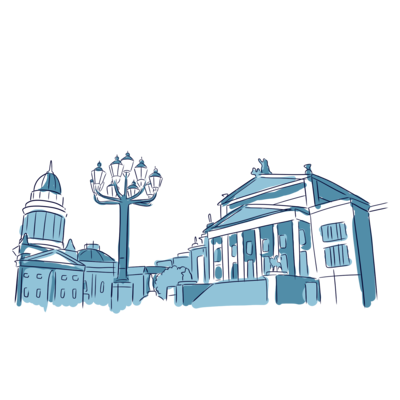
You are now on the Gendarmenmarkt, which in English translates to the Men-at-arms Market Square. Grand and harmonious, it is often described as the capital's most beautiful square. Some even call it the most beautiful square north of the Alps.

You’ve probably noticed that one of the main features of this square is the striking resemblance between the two churches, one on each side of the Konzerthaus theatre, keeping the place in perfect harmony. However, they were not built at the same time.

Since you’ll be walking down Charlotte Street for the next several hundred meters, I’ll take this opportunity to tell you a bit about the queen behind the name. Her husband Frederick, whom we've mentioned several times already, was the Elector of Brandenburg before crowning himself King of Prussia in 1701.
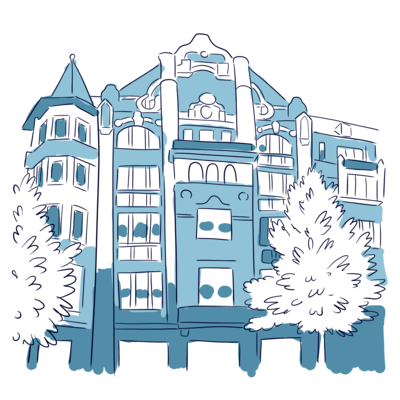
Look here, on the corner of the street, and you can see the beautiful Art Nouveau-style (or ‘New Art’) facade of the Michaelsen Palais. This hotel was designed by Otto Michaelsen—hence its name—for a wealthy German merchant named Emil Vogt, at the beginning of the 20th century.
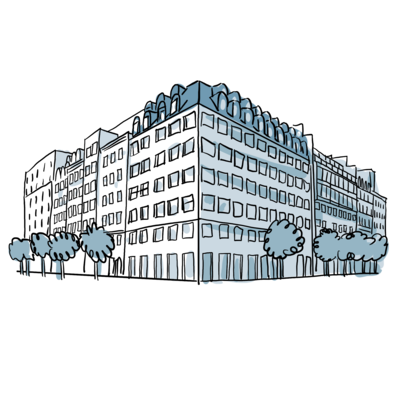
This ultra-colourful block of buildings, known as the Schützenstrasse district, sharply contrasts with the rest of the neighborhood, and is the work of the Italian architect Aldo Rossi.

You might walk past it without even noticing, so modest is the Peter Fechter Memorial. And yet, he is one of the most well-known victims of the Wall, if not the most symbolic. One year into life behind the Iron Curtain, Peter,
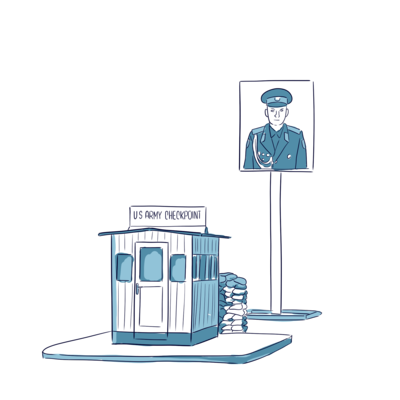
Here it is, the famous Checkpoint Charlie. It’s one of those iconic places in Berlin that you probably already had in mind before coming. It was, of course, the former border crossing between East and West Berlin, operated by the American, British, and French Allied forces.

On your right, you will see the Asisi Panorama of Berlin, known as The Wall, where you can relive the daily life of Berliners in the 1980s, thanks to hundreds of retouched and scaled photographs. On the other side, you will see the Trabi Museum,
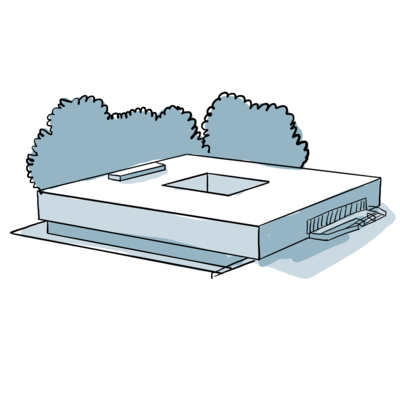
This is the site of the former headquarters of the Gestapo and the SS, whose ruins were demolished after the war. This served as the headquarters of the Third Reich leadership.
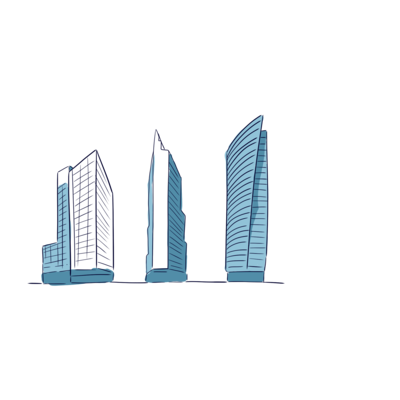
You’ve probably heard of Berlin's Potsdamer Platz, once considered the German version of Times Square. If you want to see it for yourself, you can find it about 500 metres to your right. Originally, it was located outside the old city walls of Berlin,
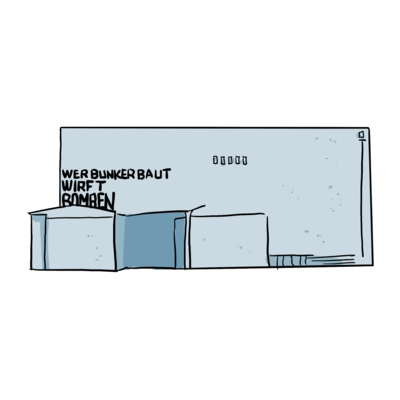
Before we learn a little more about the Memorial to the Murdered Jews of Europe, which you can see in front of you, I just wanted to talk a bit about Hitler. Not that I particularly want to talk about him, but you should know that it was here,
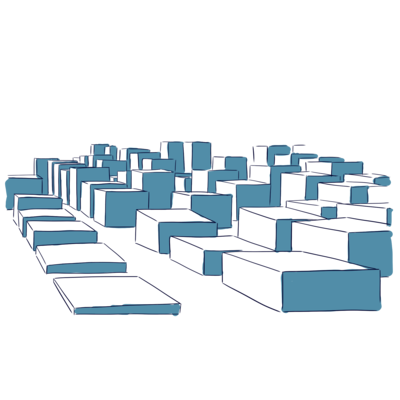
Prepare yourself mentally for the Memorial to the Murdered Jews of Europe because it is deeply moving. It is really one of the most moving Holocaust memorials ever created. You are about to enter a labyrinth of stone slabs.

Welcome to Pariser Platz –or “Paris Square” - right in the heart of Berlin. This square commemorates Prussia's capture of Paris in 1814, which led to Napoleon Bonaparte's fall. One man’s defeat is another man’s victory.
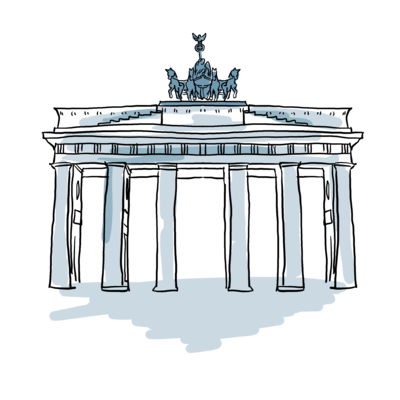
Like most other visitors, if you’ve come all this way, it’s probably to see the magnificent Brandenburg Gate—an enduring symbol of German reunification and the last remaining historic city gate! An example of Greek Revival architecture,

Throughout your visit to Berlin, be prepared to come across numerous memorials dedicated to the various communities persecuted by the Nazi regime. Germany has taken on an unwavering duty of remembrance,
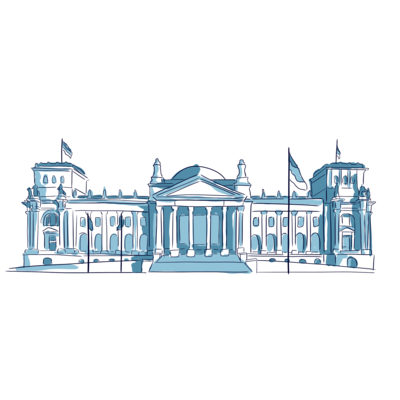
The Reichstag Palace has played a significant role in Berlin’s history. As its name suggests, it was originally built for the Reichstag, the parliamentary assembly of the vast German Empire, founded in 1871 by Otto von Bismarck.

The white crosses you see on the railings pay tribute to those who lost their lives trying to cross the Berlin Wall. Originally, there were crosses at every exact location where someone had been killed, but maintaining these scattered memorials throughout the city proved too complicated.

The beautiful ultra-modern building you see on the other bank is part of the parliamentary complex of the German federal government. Inaugurated in 2003, it was born from a large-scale redevelopment project of the government district known as the Federal Ribbon,

The Spree, which divides the German capital in two, embodies the tumultuous history of the city it flows through. It was along its banks that the first settlement was founded in the 13th century, and later, it served as a natural border between East and West Berlin.
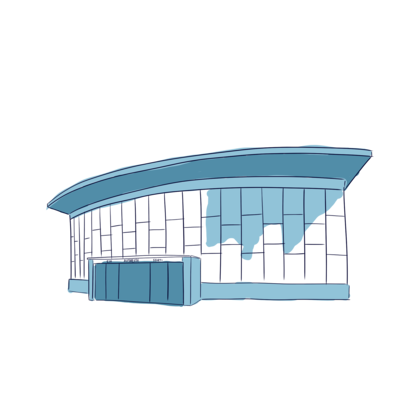
You are now in front of the Tränenpalast, known as the Palace of Tears in English, a highly symbolic site of Germany's division. After the construction of the Berlin Wall, Friedrichstrasse railway station ended up entirely within the Soviet sector.

The beautiful building that you see across the street, with its large ionic columns and countless decorative moldings, is one of the few grand entertainment halls from the early 20th century that is still used in Berlin today.
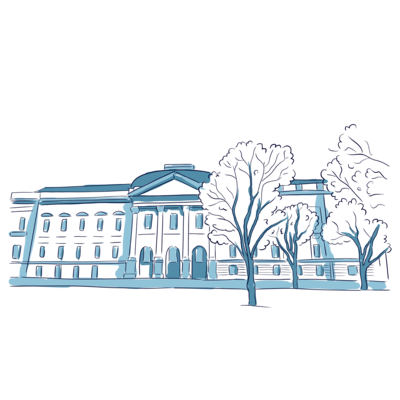
The impressive building on your left, and which seems to take up the entire block, is the Berlin State Library. It is one of the largest research libraries in the world and the most prestigious in Germany, explaining its size.

In case you were wondering, the equestrian statue you see in the middle of the street is that of King Frederick II of Prussia, also known as Frederick the Great. He is depicted on his horse, emphasizing his role as a military leader.
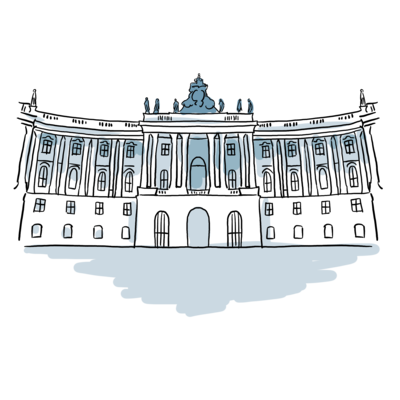
You are now surrounded by beautiful period buildings— which makes sense, as you have arrived in the Humboldt University district, encircled by the State Library and the Academy of Sciences. It is the oldest of Berlin's four universities.

Step closer to this columned temple and look inside. It is a moving memorial in remembrance of war victims . The striking statue within depicts a powerless mother holding her dead son in her arms. The monument was first built to honor those who perished in the Napoleonic Wars,

You're now between the two buildings housing the Unterlinden Museum, the most famous one in Colmar. It's a Museum of Fine Arts and one of the most visited in France. It's spread across two buildings; the one on your left is a former 13th-century convent.

Vous voici dans la Petite Venise, l’un des quartiers de Colmar les plus pittoresques ! C’est ici au rythme des canaux que vous découvrez les maisons typiquement alsaciennes, avec leurs pans de bois peints aux couleurs de la région, agencées de telle sorte qu’elles nous rappellent celles que l’on peut voir à Venise.
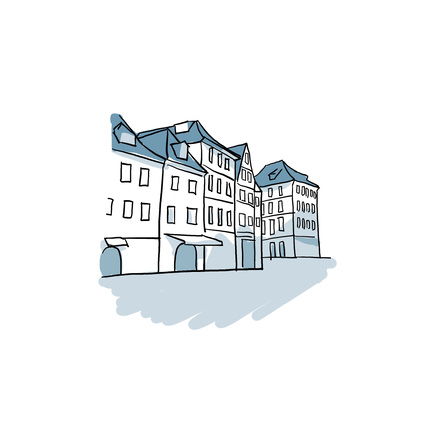
Rue commerçante, mais tout aussi pittoresque que le reste de Colmar, la Grand’Rue est le centre de la ville. Dans ce sens, elle vous mène tout droit à la place Jeanne d’Arc, où se tenait autrefois le marché aux bestiaux, mais surtout les exécutions publiques.
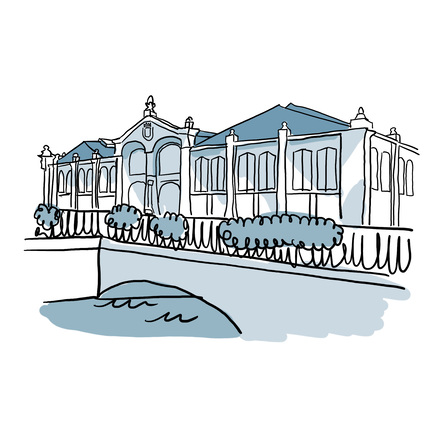
C’est un ensemble de briques et de charpentes métalliques qui renferme le marché couvert de Colmar depuis 1865. Un bâtiment historique donc, que l’on doit à l’architecte Louis-Michel Boltz, qui a également réalisé le théâtre municipal de la ville quelques années avant le marché.
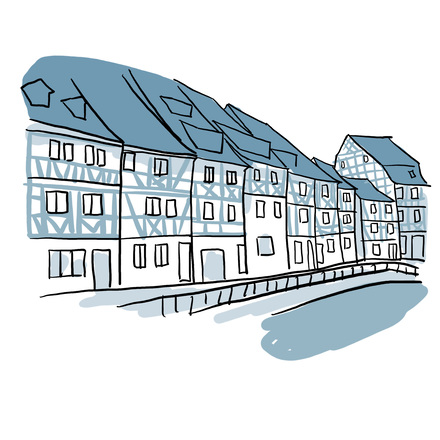
Ce quai porte bien son nom, puisque ce sont des maisons de pêcheurs qui bordent la Lauch. Considéré comme l’un des plus beaux spots pour admirer les maisons typiques de l’Alsace, le quai de la Poissonnerie abritait au XVIe siècle les pêcheurs qui vendaient ici leurs poissons.

La rue des Tanneurs marque l’entrée dans le quartier du même nom. Comme son nom l’indique, c’est ici que se trouvaient les tanneurs à l’époque, qui n’étaient d’ailleurs autorisés à travailler que dans cette rue.
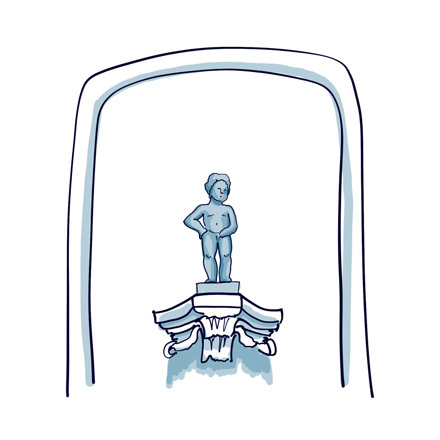
Un petit air de Bruxelles au cœur de Colmar ! Cette réplique du célèbre Manneken Pis, installée sur la façade du Palais de Justice, date de 1922 et a été offerte par Bruxelles à Colmar en hommage aux souffrances communes auxquelles les deux villes ont dû faire face pendant l’occupation allemande.

À ce croisement de rues se trouvent deux maisons emblématiques de la ville. À l’angle de la rue Mercière et de la rue des Marchands, on trouve la Maison Pfister, certainement la plus célèbre de Colmar.
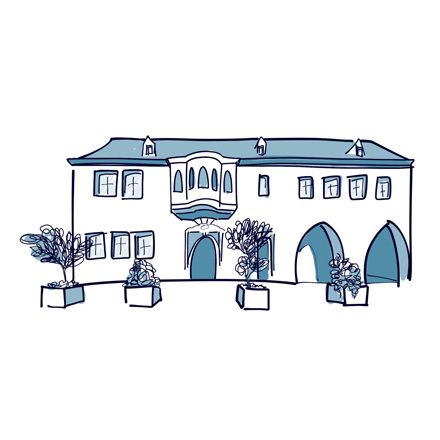
Vous voici sur la place de la Cathédrale, mais avant de porter votre attention sur l’imposante collégiale Saint-Martin, je vous invite à vous retourner et observer les bâtiments qui lui font face.

Au vu du nom que porte la place sur laquelle elle se trouve, on pourrait penser que cette église est la cathédrale de Colmar, mais il n’en est rien. Plus maintenant, du moins, puisque pendant la Révolution, elle avait bien été élevée au rang de cathédrale, mais seulement pour une dizaine d'années.
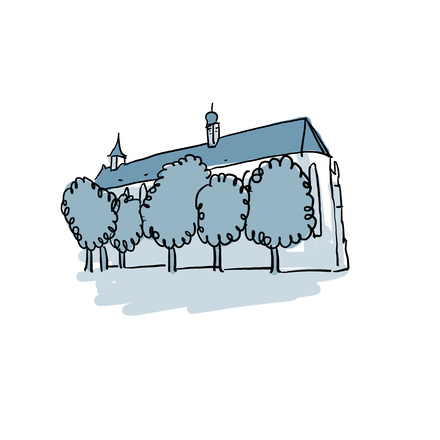
La construction de l’église Saint-Matthieu, destinée à être l’église franciscaine de la ville, débute à la fin du XIIIe siècle. Après la Réforme luthérienne, elle est mise à la disposition du culte protestant pendant près de deux siècles, avant d’être de nouveau affectée au culte catholique en 1715 sur ordre du roi de France.

Véritable chef-d'œuvre de l’art gothique, l’église des Dominicains est construite à partir du XIIIe siècle sur l’actuelle place des Martyrs de la Résistance. C’est d’ailleurs Rodolphe de Habsbourg, roi des Romains, qui posera la première pierre de l’édifice.
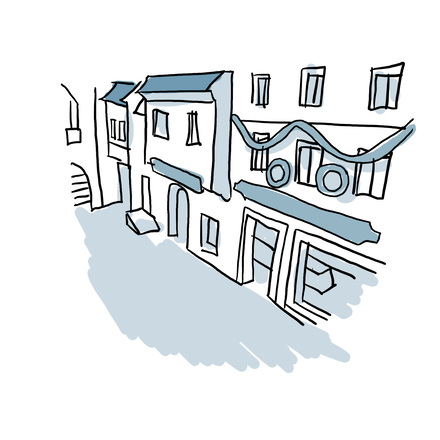
C’est un hommage à l'aquarelliste et illustrateur Jean-Jacques Waltz, connu à travers ses œuvres sous le nom de Hansi.
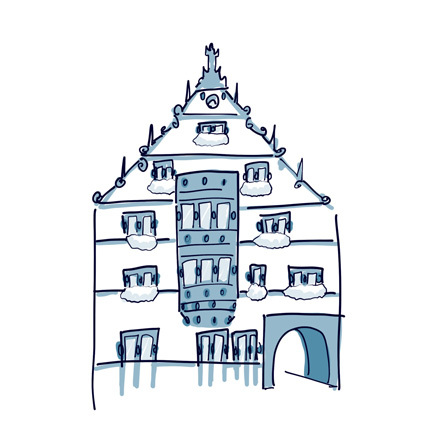
Ce bâtiment à l’architecture si particulière est appelé la Maison des Têtes, en référence aux 106 têtes qui ornent son impressionnante façade. Classée aux Monuments Historiques, c’est l’une des maisons les plus connues de Colmar.
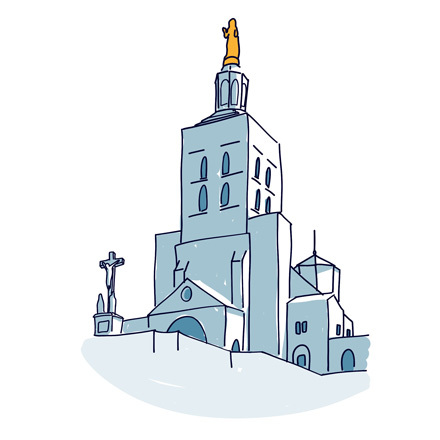
Behold another of Avignon's gems: the Cathedral of Our Lady of Doms.

Occupied as far back as prehistoric times, the Rocher des Doms has always been a prime spot. This rocky outcrop does not only offer stunning views of the surrounding area, but it is also a safe haven from the vagaries of the Rhône river, some 30 meters below.

Check out this view! Beautiful, right? The rooftops of the City of Popes and neighboring villages stretch right before you, mere steps from the Rhône River.

Yet another breathtaking view! The Rhône River stretches out in front of you, as does the Barthelasse Island, France's largest river island.

Introducing the famous Pont d'Avignon, also known as Saint-Bénézet Bridge. Get ready to be swept away by its history, and maybe even dance in circles...
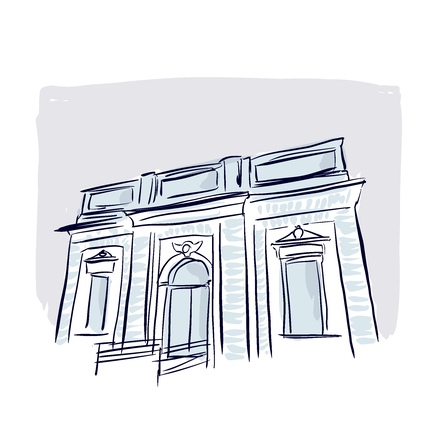
As you step through the Porte de la Ligne, aka Line Gate, and into the city, you'll come across one of the town's oldest buildings, just to your left.
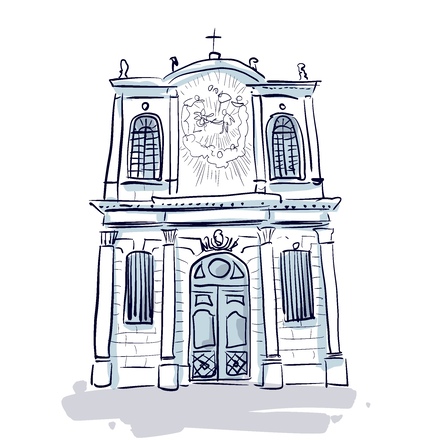
Right before you is the beautiful Baroque façade of the Chapel of the Black Penitents, once home to one of Avignon's major brotherhoods.
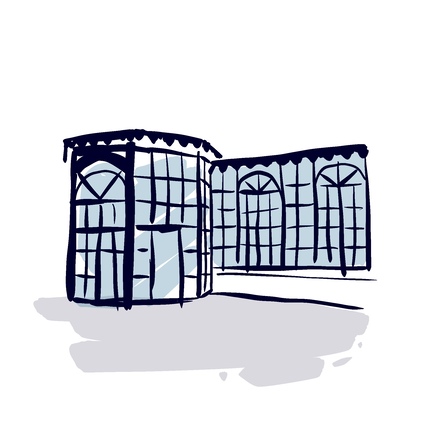
Welcome to Utopia Cinemas, a major cultural institution in the city.
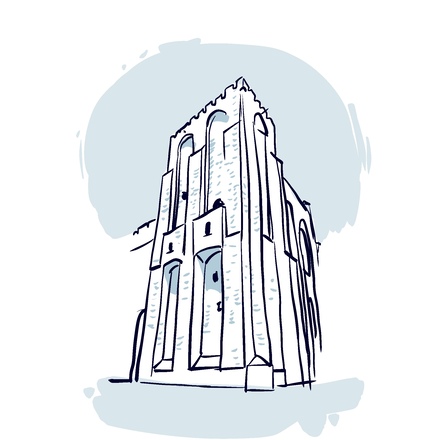
We've now reached Peyrolerie Street; its name alone whispers of Provence's rich past.
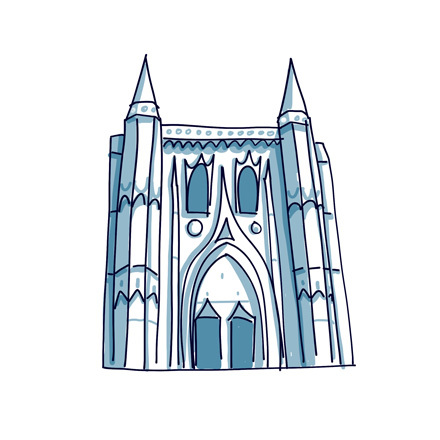
Just a stone's throw from the Papal Palace, you'll find St. Peter's Basilica.
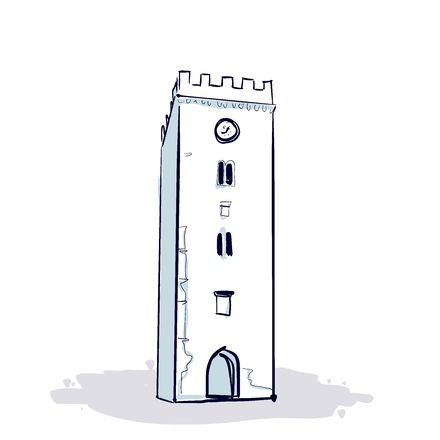
Welcome to one of the city's liveliest spots.

The charming Pie Square, home to the town's covered market, was laid out in the 16th century.
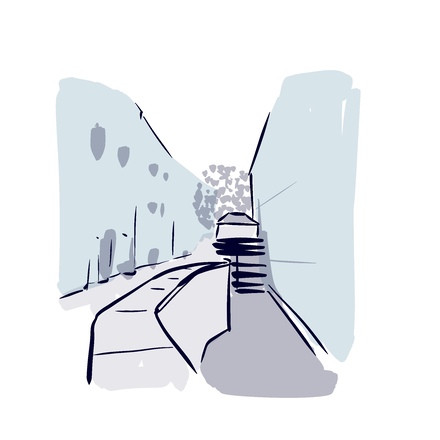
We'll take a right here, but before we do, take a peek at the street opposite you.
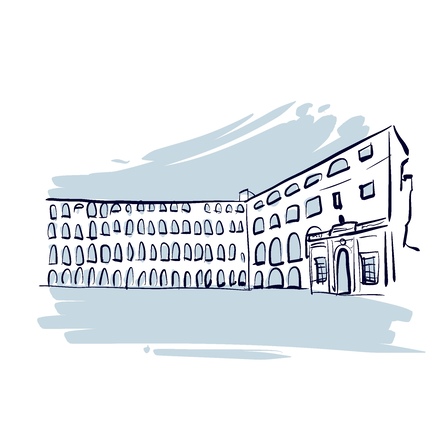
Just to your right, you'll see an imposing building that's very hard to miss.
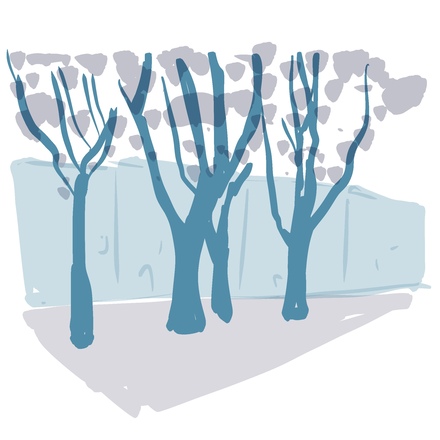
Welcome to the Place des Corps Saints, aka Square of the Holy Bodies, one of the city's most charming squares.
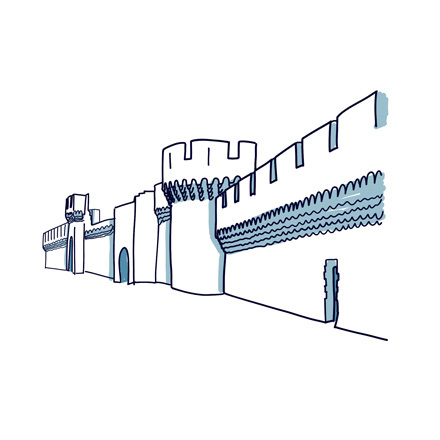
You've reached the St. Michel gate. Avignon is one of the few French cities to have kept its ramparts completely intact.
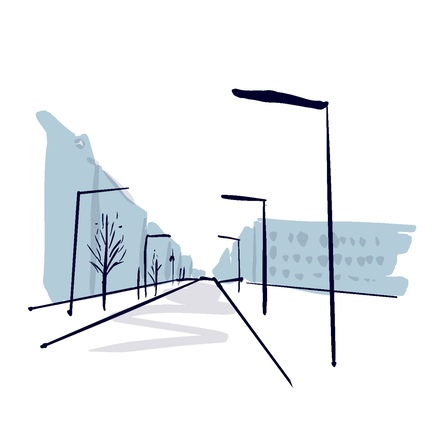
Welcome to Cours Jean Jaurès, one of Avignon's main thoroughfares, just outside the city walls.
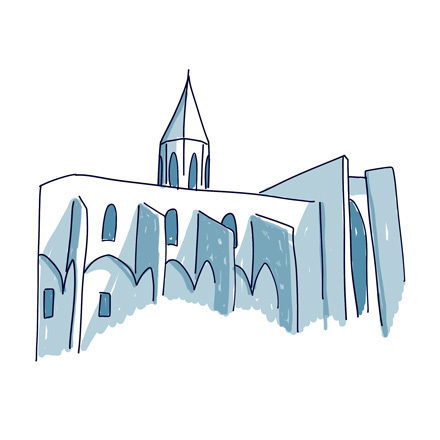
We've now reached the Square Agricol Perdiguier. Stop for a moment and take a look at the imposing building on your left.
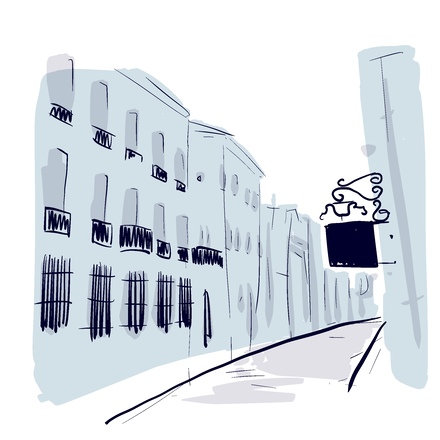
Vous voici dans la rue Joseph Vernet, une rue historique de la ville.

While still on Joseph Vernet Street, we'll take a left to catch a glimpse of something far older than the mansions we’ve just left behind.
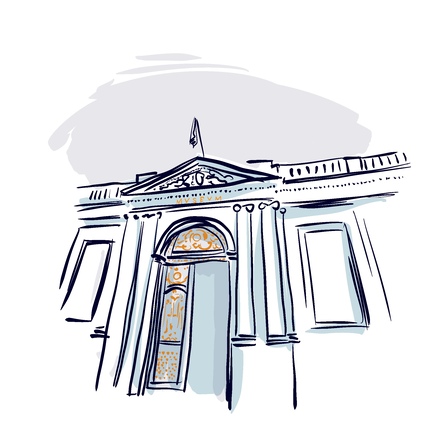
This is Avignon's number-one museum, the Musée Calvet. The building is but a remarkable 18th-century mansion, built by Joseph-Ignace de Villeneuve, first consul of Avignon; and let me tell you, he spared no expense in the process.
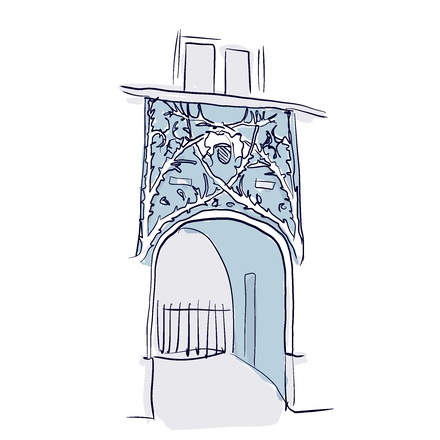
Introducing the Palais du Roure, known as the “oak palace”, a cultural center dedicated to the region's folk arts and traditions.
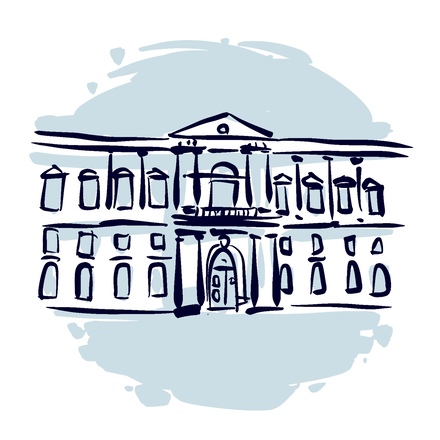
You've arrived at the very heart of Avignon! The bustling Horloge Square is a must-see in the city.
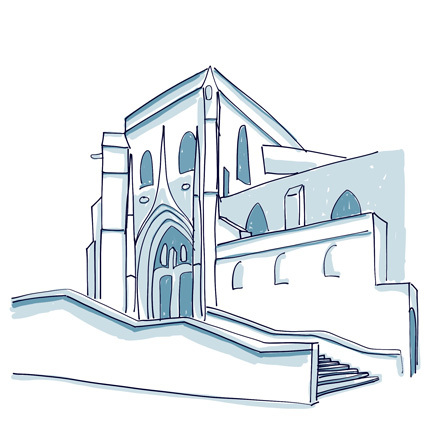
Come and enter this beautiful 14th-century church, the only one of its kind with side aisles.
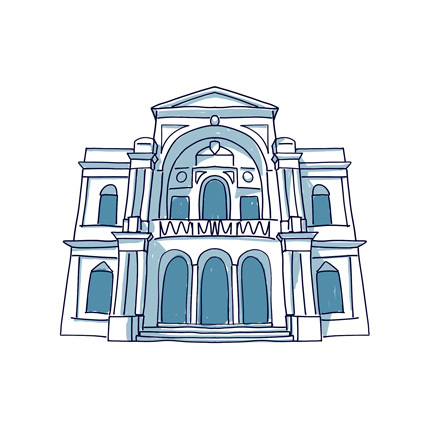
No trip to Avignon is complete without a visit to its Opera House. The city's theater scene is legendary, especially during the Avignon Festival.
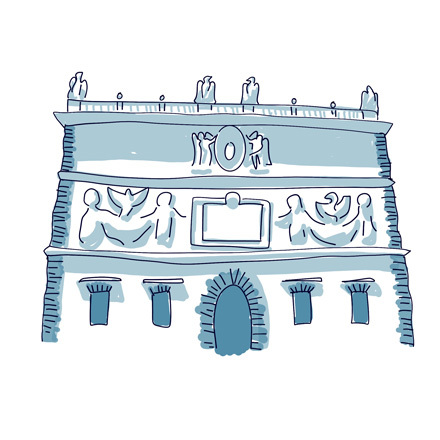
You've reached the Palace Square, the most impressive square in the city. Before you set your sights on the grand monument in the center, take a moment to look at the building on your left.
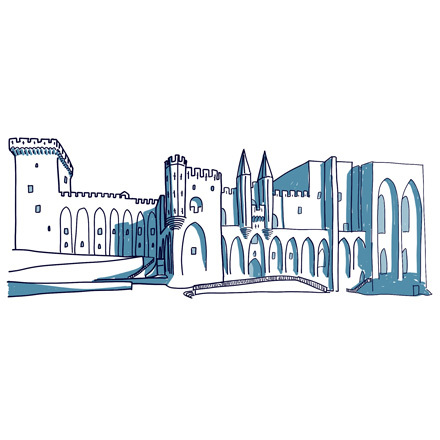
And now, let's talk about that giant of a building right in front of you: the Palace of the Popes. It’s one of the reasons why Avignon is such a popular tourist destination, welcoming over 4 million visitors every year.

Across the street, in the middle of his magnificent black-and-white mural, sits a local icon, Carlos Santana. Born in Jalisco, Mexico, it was here in San Francisco that the musician launched his legendary band in 1966.

Here's another of the neighborhood's most iconic facades, the New Mission Theatre. Originally built by the Reid Brothers in 1916, it was renovated for the Nasser Brothers by the same architect who built the Castro Theatre.
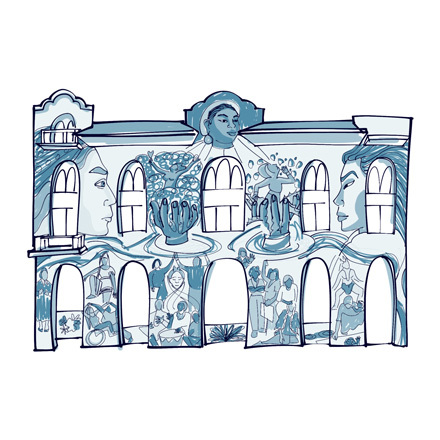
You can see it from a distance, and it seems to call out to you from the beginning of the street it’s the splendid “Women’s building”. It's the icing on the cake of this street art tour. Its name is "maestrapeace”.

You've now reached the entrance to Clarion Alley. The CAMP, Clarion Alley Mural Project is an organization born in the 90s, which has supported the realization of over 700 socially engaged murals.
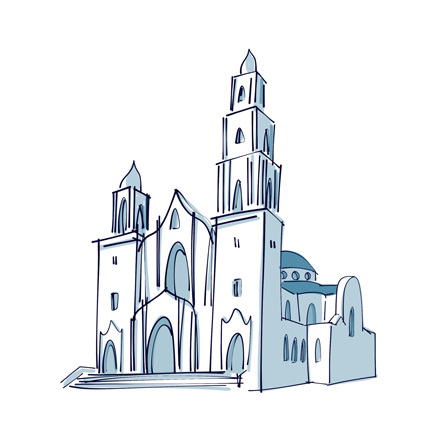
We're facing a drastic change of style, and you're now in front of the Mission of St. Francis of Assisi, also known as Mission Dolores due to its proximity to Dolores Creek. This Catholic church is the oldest in the city and the only one of the 21 missions established by the Franciscans along the Pacific coast

On your right is a large mural showing the struggles of the LGBT community, from Harvey Milk waving the multicolored flag, to the fight against the terrible AIDS epidemic. San Francisco played a key role in the fight against AIDS in the United States.
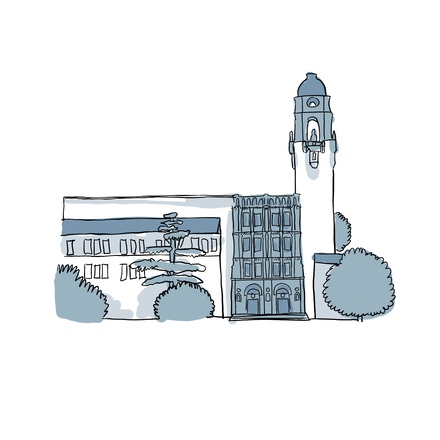
This beautifully sculpted façade is the entrance to Mission High School. It's the city's oldest high school, still located on its original site. Initially, in 1890, school was held in various houses in the neighborhood
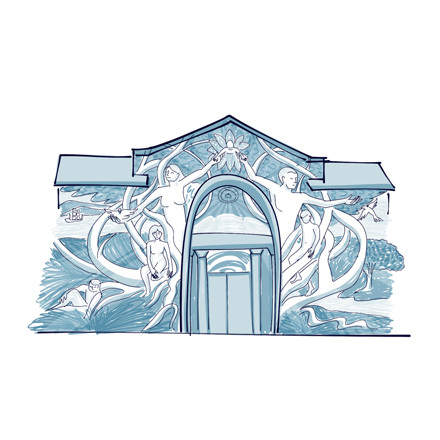
The beautiful facade covered with the New World Tree hides the Mission Pool, an outdoor swimming pool. It has been a gathering place since the 1930s when it was still called the Nickel Pool due to its entrance fee of a nickel
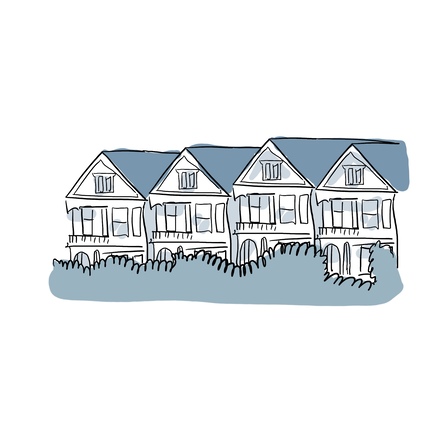
Just take a quick look at the facades of the 4 Victorian houses on your left. You can see that, at roof level, the facade continues like a stage set, with nothing behind it. Strange, isn't it?
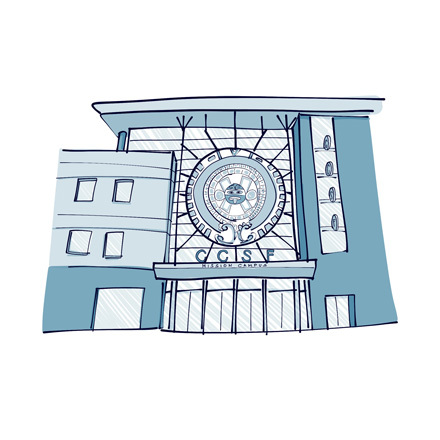
You certainly didn't expect to find a huge Aztec calendar in the middle of the street, but this is the emblem that has been chosen to adorn the facade of the Mission Campus. It's the largest mural representation of this famous calendar adapted from the Mayan calendar.
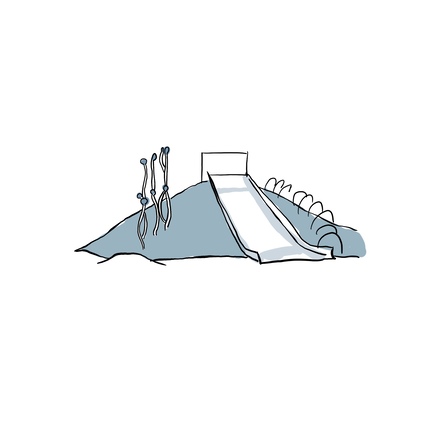
You are now crossing Mission Dolores Park. This park was created in 1905 on the site of a former Jewish cemetery. The following year, it became home to 1,600 people made homeless by the great earthquake.

Mythical and emblematic, this is the magnificent Castro Theater. Financed in 1922 by the Nasser brothers, its architecture is based on the Spanish Colonial Baroque style. Its architect, Timothy L. Pflueger
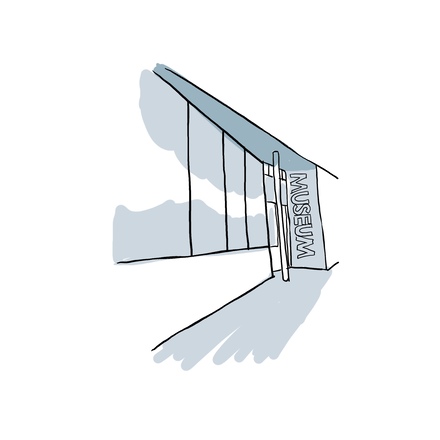
Around the corner on your right is the GLBT History Museum. This tiny museum, with a ridiculously small entrance fee is a gold mine of information tracing the history of the community.
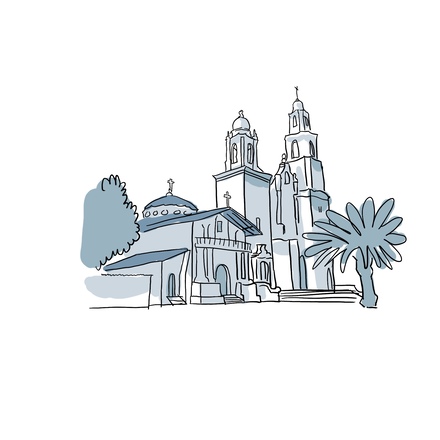
We now leave behind the colorful flags of the gay district, as we approach the Latino neighborhood of Mission Dolores. One of the city's oldest neighborhoods, it takes its name from the mission of St. Francis of Assisi
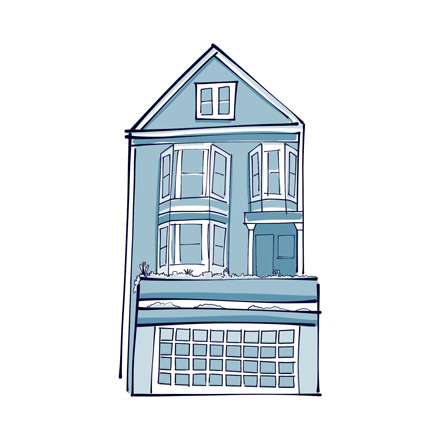
There is a famous French song about San Francisco and this small blue house, that every single frenchie knows! Allow me to tell you its story. At the age of 22, Maxime le Forestier traveled to San Francisco

Here is a little more cheerful story for once, you find yourself in front of the colorful façade overlooking the "house of brakes". This mural, known as "Golden Dreams of the Mission", was painted in 1983 by Daniel Galvez

At the corner of shotwell street, don't miss the postcard photo of the neighborhood with the famous "Once Upon a time in Mission District"! The mural was created by artists who grew up on the street, in collaboration with Precita Eyes' Urban Youth Arts Program.

Now you've arrived at the famous Balmy Alley. This is where you'll find the largest concentration of murals in San Francisco. Its history began in the 70s, when 2 women, Patricia Rodriquez and Graciela Carillo, decided to paint their apartment on Balmy Alley.

This house, entirely covered in paint, belongs to a local musician, Richard Segovia. The work is entitled "Take it from the Top, Latin Rock" and is a tribute to Latin rock, a musical movement that is very strong throughout Latin America.

Here, on the corner of Mission Street and 23rd Street, is a fine example of a mural painted in honor of the Mexican community by Cid Mario. On the left is a mariachi, accompanied by women in colorful traditional costumes, and the step pyramid of Tenochtitlan,
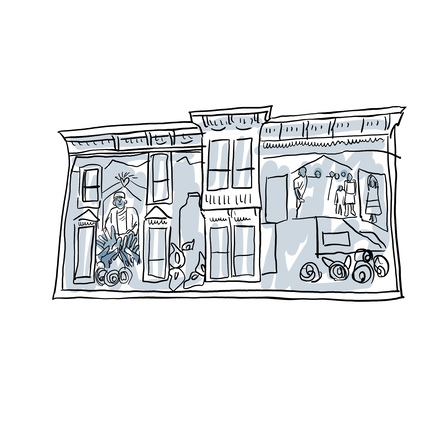
24th Street is particularly rich in street art, and I hope you've enjoyed the artwork you've come across so far. I'd now like to draw your attention to the facade of this house beautifully repainted in 2018 by several community muralists.
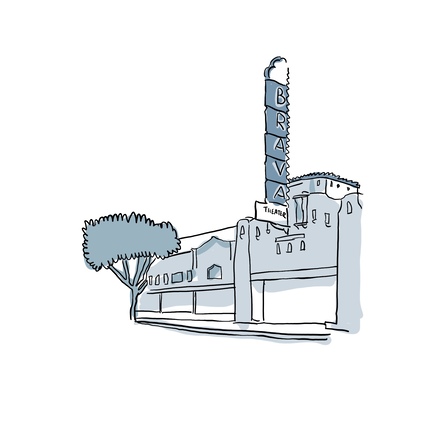
The façade of the Brava Theatre is so beautiful! And its magnificent exterior is only the reflection of its beautiful personality! Brava, which is short for “Brava for Women in the Arts”, promotes the artistic expression of women, people of color, LGBTQ people

This huge blue wall is called "La Llorona" and deserves to be decrypted. Well, actually, they all deserve it, but one day won't be enough if we stop in front of every wall! This work, entitled "la Llorona", is by Juana Alicia
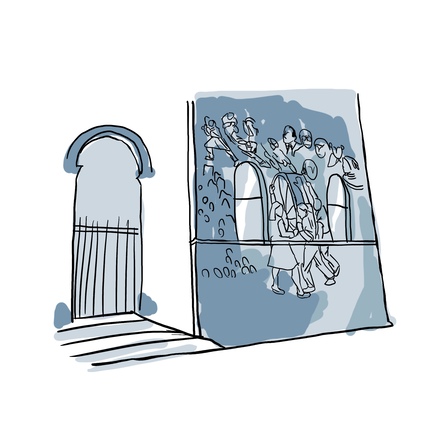
Arriving at the intersection with Florida Street, you find yourself surrounded on all sides by street art. Feel free to observe them all up close if you wish, but I'll focus only on the one painted on Saint Peter's Church.

After admiring a few of the other beautiful works of art along the street, you'll find yourself at the entrance to the Precita eyes mural visitor center. This association, founded in 1977 by Susan Cervantes, considered the leader of the muralist movement
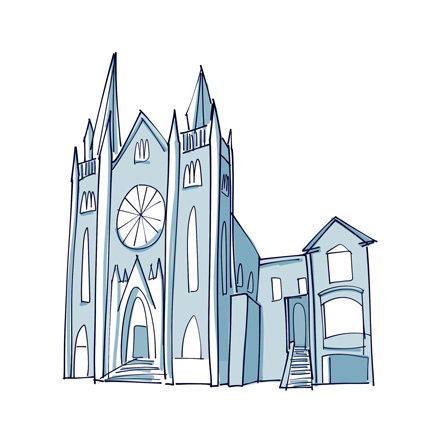
I bet you're surprised by this red church! It's true that it's a rather unusual religious building! It's the Hua Zhang Si Buddhist temple. Originally it was a Lutheran Gothic church, very typical in Europe.
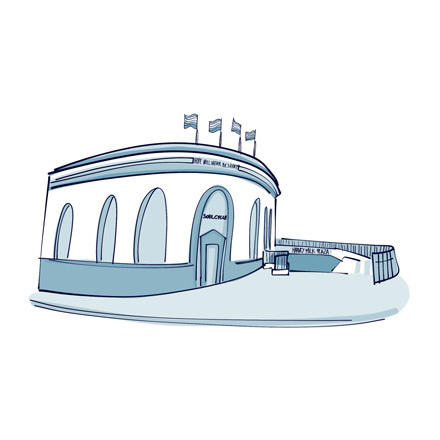
The rainbow flag floats proudly in the air at the intersection of Market and Castro street, you're obviously at the entrance to San Francisco's famous gay district. The rainbow flag was born here in 1978, at the request of Harvey Milk.

















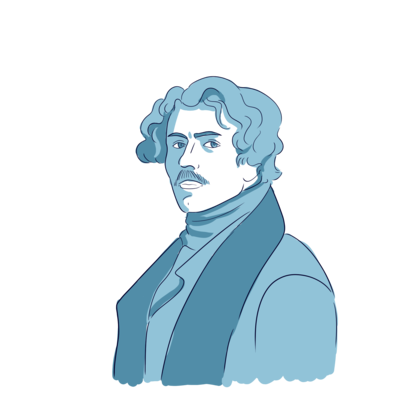
As you walk along Avenue Eugène Delacroix, you’ll see this renowned French painter’s grave on your right. His works have inspired countless artists and history books have certainly not forgotten about him. He created one of the most studied and admired paintings in all of French art.
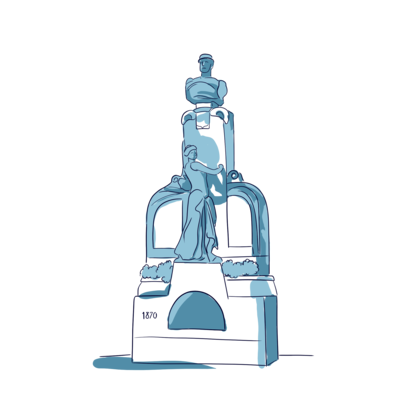
The Belfort Defenders Memorial on your left refers to the Franco-Prussian War that took place between 1870 and 1871. The four-metre high, granite and bronze structure was created by Jacques Robichon. At its centre is a bust of Colonel Denfert-Rochereau, better known by his nickname, the “Lion of Belfort.”

In front of you stands the East Chapel, a memorial dedicated to the victims of the 1871 Paris Repression. At just 14 metres long and 12 metres high, it’s not particularly striking, and some say it’s rather austere. Inside, you’ll find a modest space, used for religious ceremonies such as funerals and commemorations.

On your right, along Casimir Delavigne Path, lies the grave of Honoré de Balzac. France has produced some of the world’s most beautiful and renowned literature. Honoré de Balzac stands out as one of France’s greatest novelists, a key figure of the 19th century whose works left a lasting mark.

Félix Faure was a significant French statesman. Born in Paris in 1841, he also passed away there in 1899. He was elected President on January 17th, 1895, after a coalition of moderates came together upon Jean Casimir-Périer’s resignation. Nicknamed the “Sun President,” he was one of the French Third Republic’s most prominent figures.

Nothing makes us greater than a noble grief." These are the words of the famous French writer Alfred de Musset—often called the poet of the nights. Musset is a classic example of what the French might call a Shakespearean writer: his work blends comedy and tragedy, explores intense romantic passion, and captures a wide emotional range.

Walk a few steps to your right to find the grave of a woman who left a significant mark on France: Colette. On January 28th, 1873, a little girl with brown eyes and dark hair was born in the Yonne region. Little did they know at the time, but this child would become a symbol of French literature, alongside those of Victor Hugo and Voltaire.
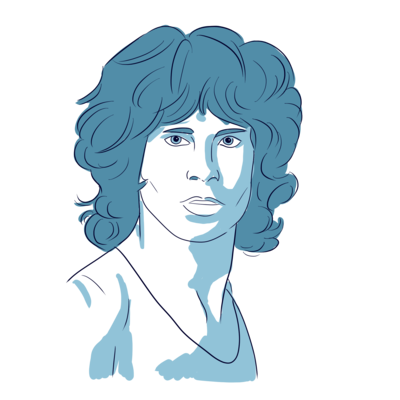
Let’s turn it up for Jim Morrison, a legendary rock icon. He was the lead singer of The Doors, an unforgettable American rock band that produced several timeless classics. Jim was born in Florida to a stay-at-home mother and a military father. During his childhood, he moved a lot all around the country.

On your left stands the memorial to the Opéra-Comique victims, built in 1888. This tomb holds a tragic story, dating back to May 25th, 1887. Around 9pm, a violent fire broke out inside the Opéra-Comique, the national theatre. It spread from above the stage while the audience was watching a play called Mignon.

To your left lies one of France's most celebrated singer-songwriters — Michel Delpech. Born in 1946, he became obsessed with iconic French singers as a teenager. In 1964, he dropped out of high school to release his first record, "Anatole."

On your right lies the one and only Édith Piaf. Known as La Môme Piaf, or the little sparrow, her unforgettable voice and face have undeniably shaped French culture. Her small frame, black outfits, cross pendant, and renowned voice became signature elements of her enduring image.
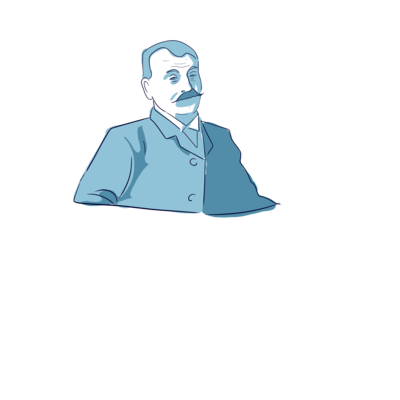
Here lies Georges Courteline — born Georges Moinaux — a French writer and playwright from the city of Tours. In a world tangled in bureaucracy, power, and greed, he held up a mirror. His writings reflected back characters so absurd,but so real.
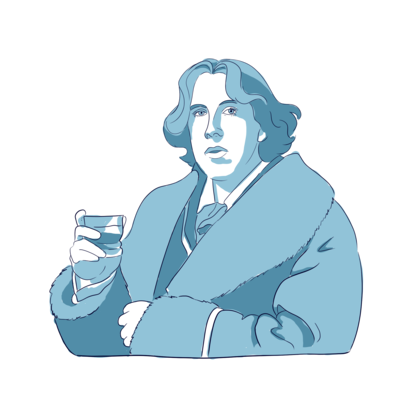
You are now standing before the tomb of Oscar Wilde — one of Ireland’s brightest minds, and one of the world’s most unforgettable writers. You’ve likely heard of some of his work... For example, he published the renowned The Picture of Dorian Gray in 1890, a philosophical novel about eternal youth.

France is the birthplace of cinema, dating back to 1895 and the Lumière brothers. But before that, in 1883, a star was born - Félix Galipaux. Raised in modest surroundings, Félix found his escape on stage—in the world of theatre and film. From a young age, he had a gift for making people laugh.

Did you know that France's overseas territories are home to nearly 80% of the country’s biodiversity? These stunning islands have also given rise to artists, philosophers, and athletes who have shaped French culture. To your right lies Henri Salvador. Born in French Guiana, he was a man of many talents - singer, composer, performer, writer, and comedian!
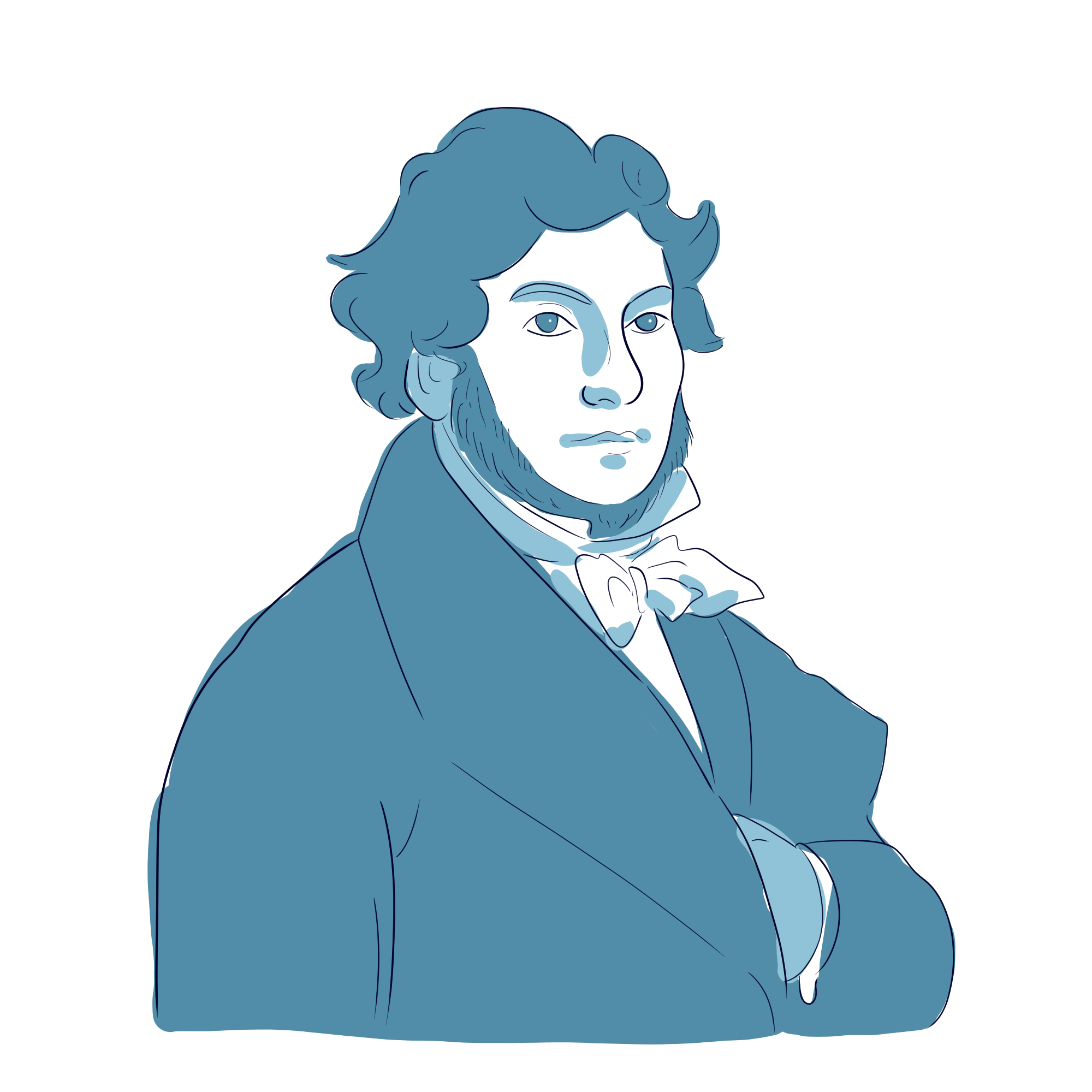
Here lies Jean-François Champollion, the man who gave a voice to Ancient Egypt. In 1822 he succeeded in deciphering hieroglyphs, quite the feat... But let’s start at the beginning. Champollion was born in 1790. From a young age, he was fascinated by the mysteries of Egypt — and he later became an Egyptologist, a linguist, and a historian.

Before you rest two giants of French literature. Jean de La Fontaine is one of the most famous and celebrated poets in the world, and his tale “The Fox and The Crow” is known in every corner of France. He passed away one evening in 1695 at the age of 73, but his words still walk among us.

Want to create an elegant, soothing mood? Chopin is exactly what you’ll want to tune into. Though originally from Poland, Frédéric Chopin spent most of his life in Paris. Today’s greatest musicians still consider him to be a genius in his field. The piano was his beloved instrument, through which he poured his deepest emotions into every composition.
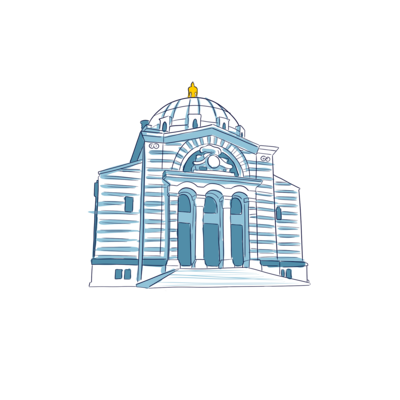
Here lie countless figures that have shaped France and are remembered by history. Welcome to Père-Lachaise, nestled in the heart of Paris’s 20th arrondissement. Its crematorium handles nearly 6,500 cremations each year.
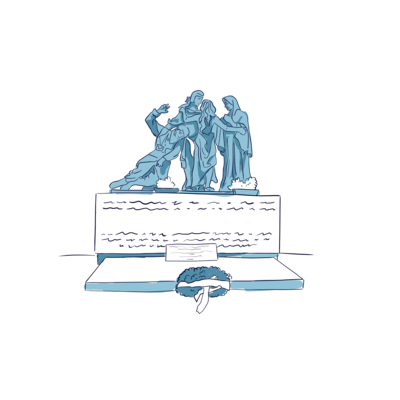
It’s time to pay our respects to the site’s many war memorials. The cemetery path you're walking along is called the Avenue of Foreign Soldiers Who Died for France. Around you, there are various plaques dedicated to Belgian, Armenian, Polish, Czechoslovakian, and Italian soldiers who died for France during the First World War, from 1914 to 1918.
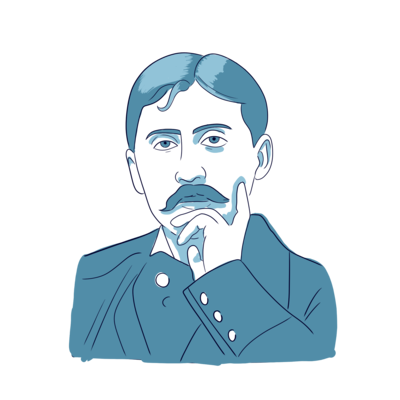
If you walk a few meters down the path on your right, you’ll soon arrive at Marcel Proust’s tomb. A French writer, critic, and essayist who inspired countless readers to immerse themselves in the world of literature. His body of work is considered amongst the greatest cultural treasures of France.
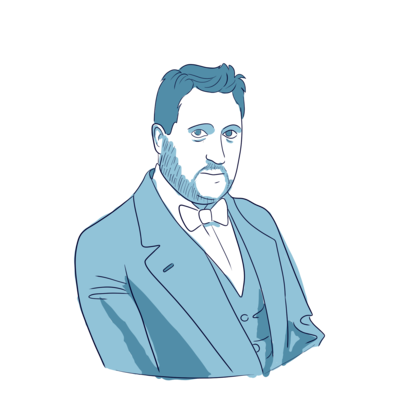
Let’s stop by Guillaume Apollinaire’s tomb. With a name that echoed through the early 20th century, he’s still considered a major figure in literature today. Although born in Rome to a Polish father and a French mother, this poet and writer was declared a national hero by the land of human rights, in recognition of his service during the war.

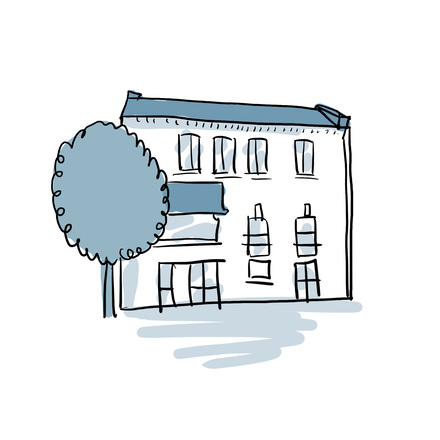
Had you been looking for parchement paper in Rennes during the 17th century, you would have come over here! Indeed, it was on this Parcheminerie square that all the parchment sellers gathered. They prepared them in their workshops
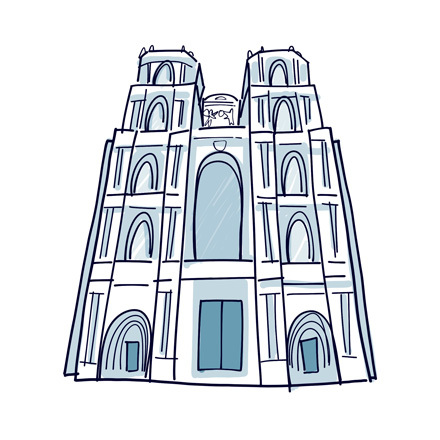
If you were Duke or Duchess of Britanny, this cathedral would be special to you! This is where you, your ancestors and descendants have been crowned for centuries! Today, this cathedral remains a highlight of your stay in Rennes!
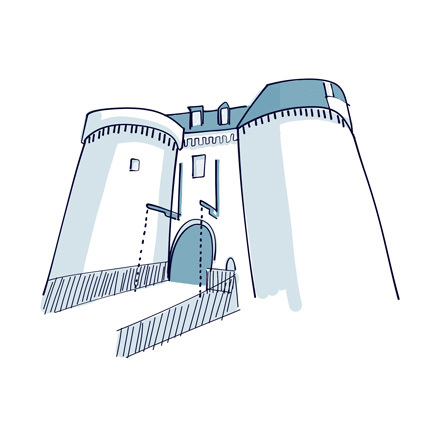
Let’s wind time back to 300 BC. Rennes was still named “Condate”, which means confluent in Celt. It was nicknamed “the Red”, as it was surrounded and protected by a red brick wall. Where you stand and observe the Mordelaise Gates

It is probably hard to imagine, but it was here, on the Place des Lices, that the constable Duguesclin, the quintessential knight and a major figure of the Hundred Years' War, fought his first battle ! This square was called a “medievel closed
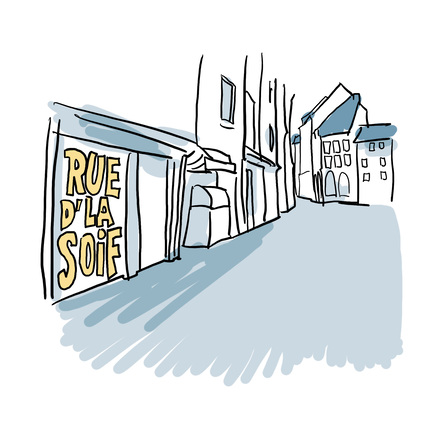
You now arrive to the small Saint-Michel Square, that opens up to the North on the famous Rue de la Soif. Rennes is renowned in France forbeing young at heart and full of students. So it is only natural for it to be the proud owner of this
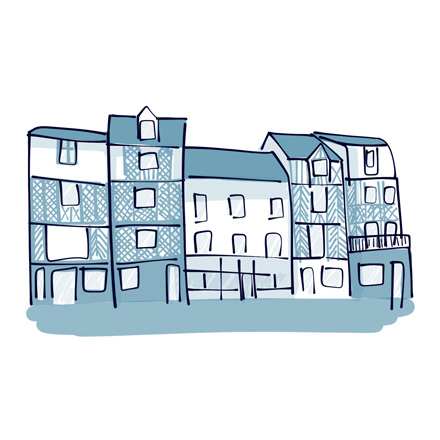
You are now on the very pleasant Rallier du Baty Square. Doesn’t it just make you want to sit at one of the cafés and observe Rennes’ everyday life go by? It was named this way in the year 1726, in honor of Toussaint Rallier du Baty

If you venture all the way till the end of the Rallier du Baty impasse, you will see the Saint-Michel Prison, pretty much untouched since the 18th century. The inner courtyard is now listed as a historic monument. This is where the inmates came
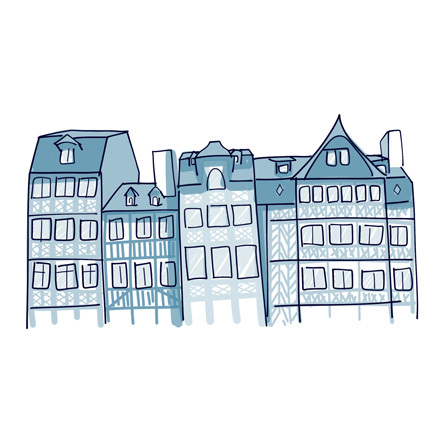
It’s crazy how a flaw can bring such charm! You have to admit that this place wouldn’t be the same if the facades were straight and aligned! No one would be interested in the Tower of Pisa if it weren’t leaning! It is the same here, the Champs
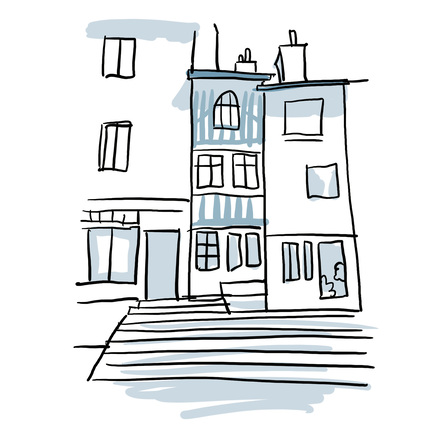
This Old Rennes street was named “rue de la Fracasserie”! It means “smashers’ street”. In these days, people working in the same field were often grouped together. This street was that of of blacksmiths and locksmiths, who made a terrible
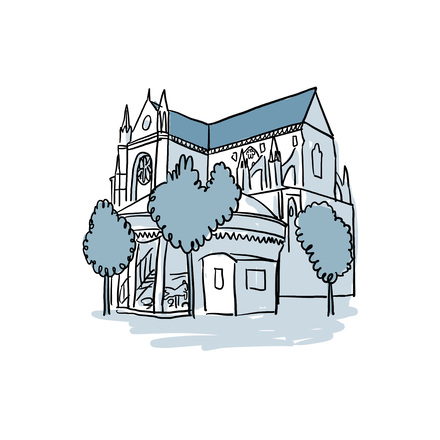
You are now on Saint-Anne Square. It is super charming with its row of multicolored facades ! When Rennes was surrounded by walls, this square was outside of the city, but was nonetheless quite lively. Its name could come from Anne of
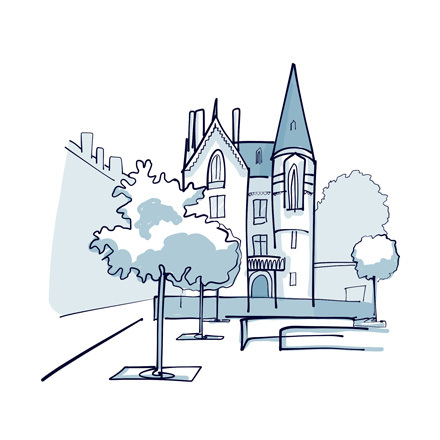
You are now on the delightful Hoche Square, bordered by chestnut trees, and charming townhouses. The city’s architect, Jean-Baptiste Marteno laid this plaza out at the end of the 19th century. Archery contests, firework shows, parties, balls

Saint-Melaine street brings us right in front of the abbatial church of the same name. It was dedicated to Saint Mélaine, who is considered to be Rennes’ first bishop. He isn’t just any bishop. In 511, he participated, along with 31 other bishops
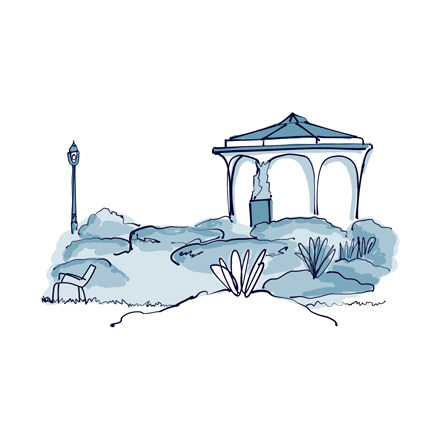
This is Rennes’ Central Park : Thabor Park. If you decide to visit or return later for a more in-depth exploration, you will discover 10 hectares of lush greenery, taking you through French and English gardens, past orangery and rose gardens
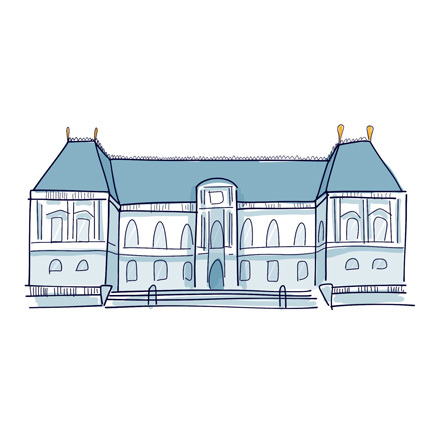
The Parliament is a true symbol of Britanny. Its assembly was established in the 13th century by the Dukes of Brittany. Later, in the 16th century, itbecame a Parliament under the French Ancien Régime meaning that it rendered justice in the
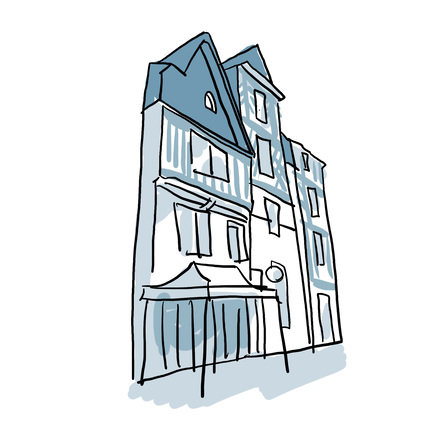
You're on rue Saint-Georges, along with rue du Chapitre, this typical Rennes street is the one with the most timber-framed facades. Completely spared by the Great Fire, Saint-George street is part of a vast project of renovation of the historic
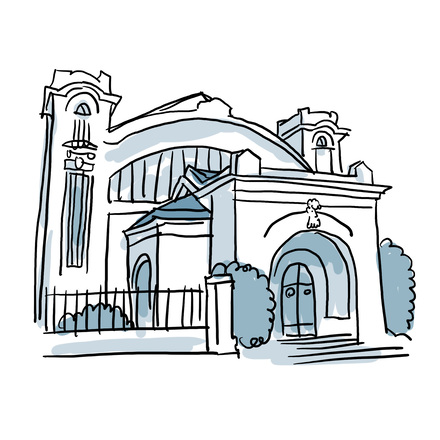
It isn’t every day that we stop to see the public swimming pool of the town we’re visiting! Quite frankly, it is impressive, it even was voted 8th best pool in the world! This beautiful Art Deco building from the 20s brings an undeniable artistic
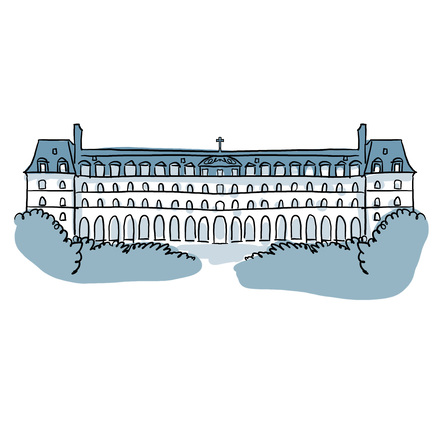
You are now standing in front of the beautiful Saint-Georges palace. You have to picture that, in the 11th century, you would be standing outside of the city’s walls, and in front of a great benedictine Abbey, founded by Duc Alain III. In 1670
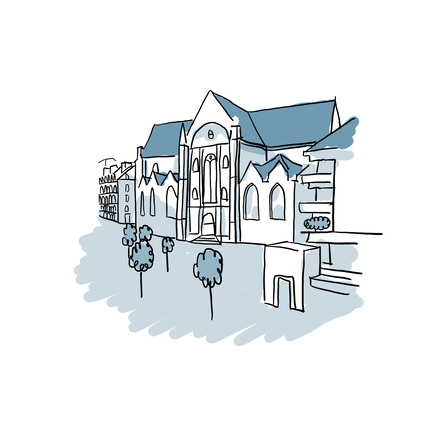
You are now on one of the town’s oldest squares! As the mandatory excavations for the metro were being pursued, archeologists found a ton of treasures dating back to the Middle Ages, bearing witness to a very active trading past!

From the Saint Germain footbridge, you will have a beautiful open view over the Vilaine River. You might be wondering why such a beautiful river got such an ugly name. Indeed Vilaine transaltes to naughty, ugly or even wicked. There are a

You are in Captain Alfred Dreyfus Street, close to the Emile Zola high school. You might not know it, but Rennes was the site of the retrial of the notorious Dreyfus affair. It’s a good opportunity to take a look back at this incredible story
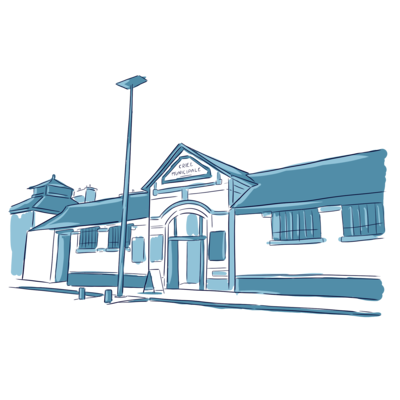
The covered market of Rennes, a truly convivial experience. If you’re fond of good food, enter the “Criée” and follow the various produce stalls. There is something for everyone and it is a good dive into local cuisine. Of course, you will find an
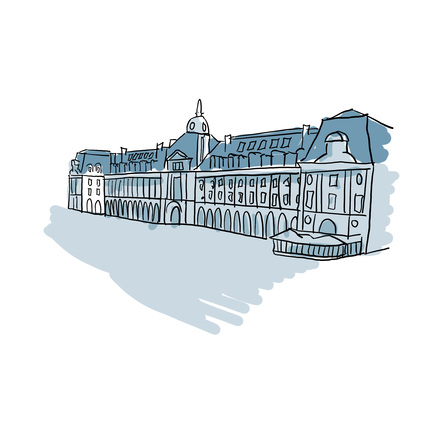
Just like other Republique squares in France, it is the city's most central place. The eye catching building standing majestically in front of you, is the Palace of trade. This is the former Rennes stock exchange, built at the end of the 19th century

The Town Hall on one side, the Opera House on the other. Take a look at these two buildings and feel the connection between them. After the fire of 1720, which swept through the northern half of the city, the king's architect decided to
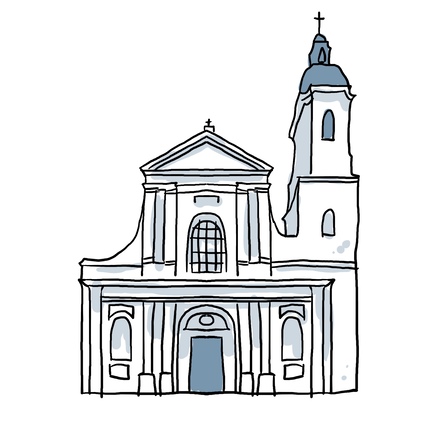
As we walk by the Saint-Sauveur Basilica, I would like to tell you a story. The current church was built in the 18th century, but it replaces a chapel that was here for as long as anyone can remember. Yet, I am not here to talk about architecture
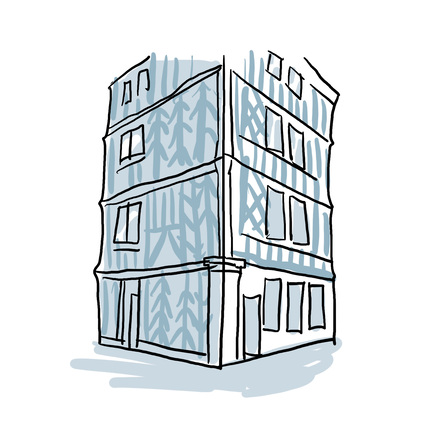
You’re now entering Rennes most beloved street! It’s an enchanted break from the town’s agitation. Here, you can stroll along the cobblestones, admiring the typical half-timbered facades, private mansions and beautiful boutiques.




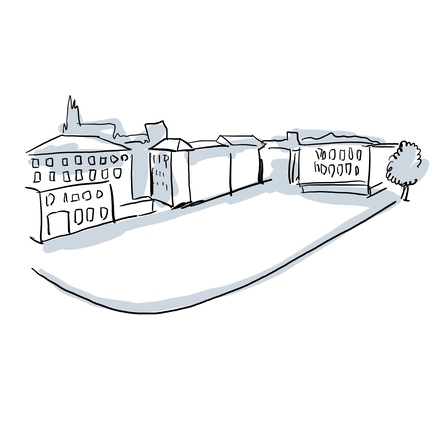
Affectionately nicknamed “the navel of Albi”, Vigan Square looks anything but historic. Well, looks can be deceiving! Back in Roman times, there were pottery kilns right here, under the big café Pontié, said to be the oldest in the city.

Though not as grand as the Cordeliers Grand Théâtre, the Lices Municipal Theater stands as one of Albi's most important cultural venues. Its indisputable elegance speaks volumes about the tireless efforts that went into creating it on this very spot two centuries ago.
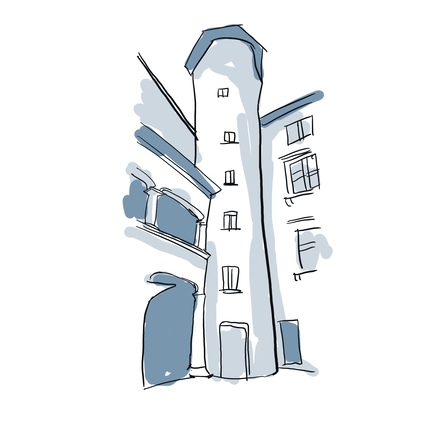
This stunning mansion, dating from 1530, was once home to the Reynès, one of Albi's most prominent families in the 16th century. They first made their fortune in the cloth trade, then in the woad trade. The Reynès held all the top jobs in town and their marriages
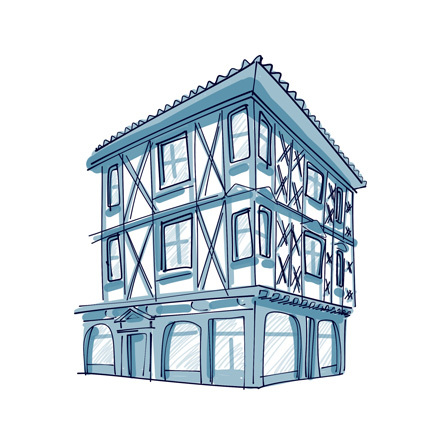
What you're looking at is one of the city's most iconic landmarks – the Enjalbert House! This 16th-century building is a real head-turner. Wood and brick come together to create stunning half-timbered motifs that are different on each side. And it gets better when you notice the perfect
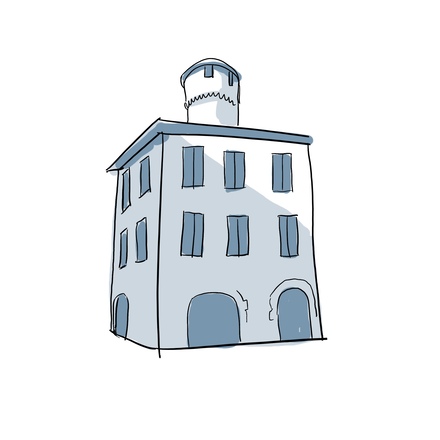
Toulouse, Lavaur, and Albi: these three Occitan cities aren't just neighbors – they all share a colorful past. Back in the day, they were major players in the woad trade. During the 15th and 16th centuries, Albi rose to prominence as the leader in global woad commerce. With its perfect climate
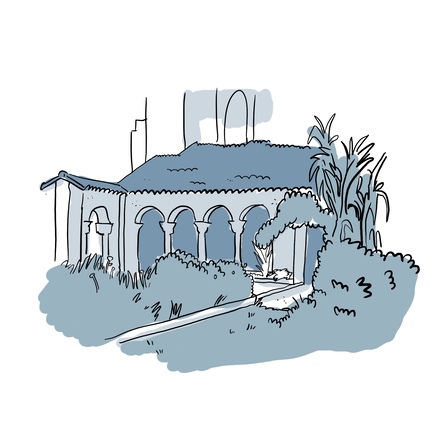
Welcome to a true oasis of tranquility! Here, history and nature come together. And let me tell you, there are plenty of secrets to uncover. Time to put your detective skills to the test and see what hidden details you can find! Don't be shy, join the fun! Let's start with
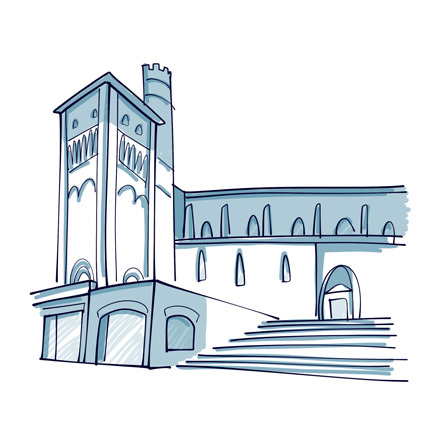
Just a stone's throw from the Saint-Cécile Cathedral, you'll find the collegiate church of Saint-Salvi. It might seem a bit overshadowed, but don't be fooled! This church boasts just as much history and hidden treasures. In fact, it's the oldest church in Albi. And that's no mean feat!

Calling all foodies and history buffs! Albi's covered market is nothing but ordinary. This spot has been buzzing with activity since the Middle Ages. Then, in 1860, it was chosen as the prime location for the future covered food market. Fast forward to 1902, and architect Thierry Bourdois and

The La Madeleine neighborhood across the Tarn River might seem pretty big at first glance. Well, believe it or not, it's actually the smallest one in Albi. It's all but an optical illusion. Back in the day, this district wasn't really part of the main city, but then things really took off thanks to the construction of
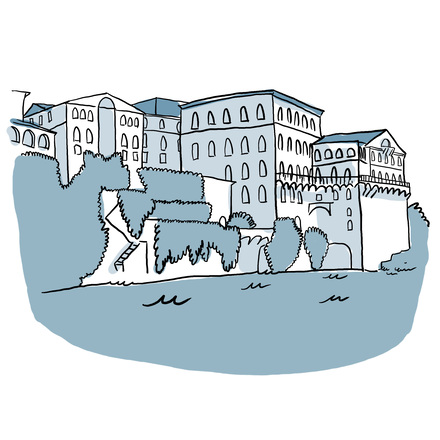
The La Madeleine district stretches out right before you, on the left bank across the Tarn river. Let me guess! The first thing that catches your eye is this cluster of brick buildings with rounded windows. These were once Albi's vermicelli factory, known as “Les Moulins Albigeois”, that is, the Albigensian Mills.

Just look at this view! I bet you can't wait to capture it with your camera! They say a picture is worth a thousand words, and that's definitely true here. Get ready to be blown away by the beauty of Albi, a city famous for its distinctive red-brick medieval architecture.

Walking through Albi, you can't miss the statue and the old house of Jean-François de Galaup, comte de Lapérouse. There's even a museum dedicated to him! If his name didn't ring a bell before, it will now. You see, Albi never forgets its own! There is no shortage of
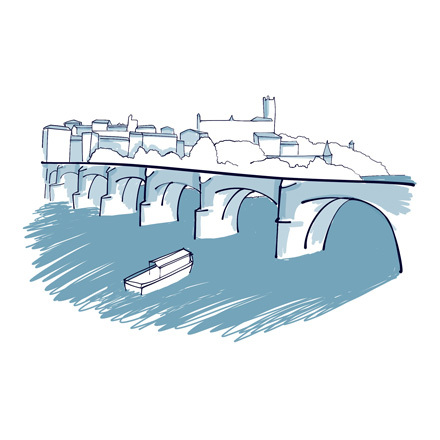
Introducing the Pont-Vieux, the Old Bridge, that has connected the two banks of the Tarn River for centuries. It's one of the oldest medieval bridges still in use in France and it was listed as a historical monument in 1921! Back in the Middle Ages, Albi was booming. With trade flourishing,

No visit to Albi is complete without a visit to the impressive cathedral and the majestic Berbie Palace. Prepare to be awestruck! One can’t help but feel humbled by their imposing presence and grandeur. These two buildings have a rather long history, dating back to the early days of the Episcopal City.
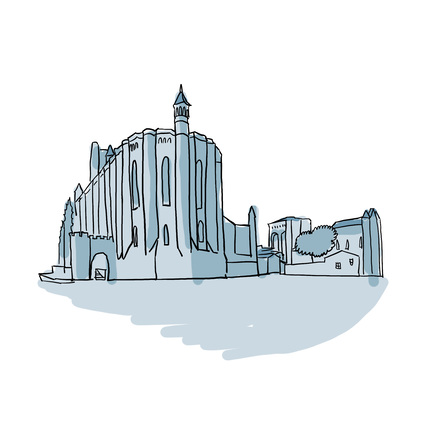
Towering over the entire city, the Episcopal City of Albi with its unique brickwork is sure to impress. Spread across a 50-acre surface area, it's impossible to miss as you enter the Red City. This essentially medieval architectural complex is made up of four districts that hold over twenty centuries of epic history.
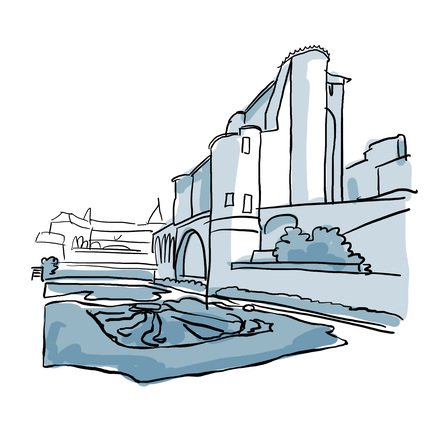
Lucky you! In a few seconds, you will be standing in one of the most magical spots in Albi! Just head down these stairs and take a left until you reach the terrace. Prepare to be blown away by the stunning panoramic views over the Tarn river!
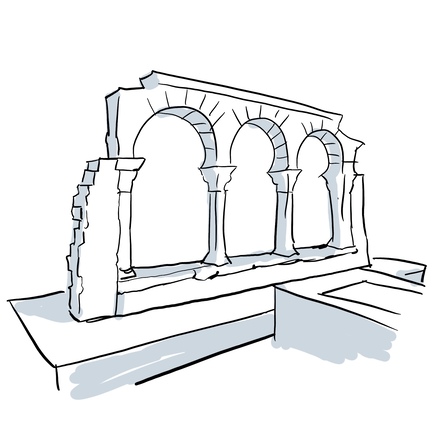
Albi has a way of surprising you with little gems like this, away from the crowds. Sure, it's not the most bustling part of town, but sometimes you have to venture off the beaten path to make the best of discoveries. Time just seems to stand still in this tiny square; it's almost like it's a secret only a few people know about.
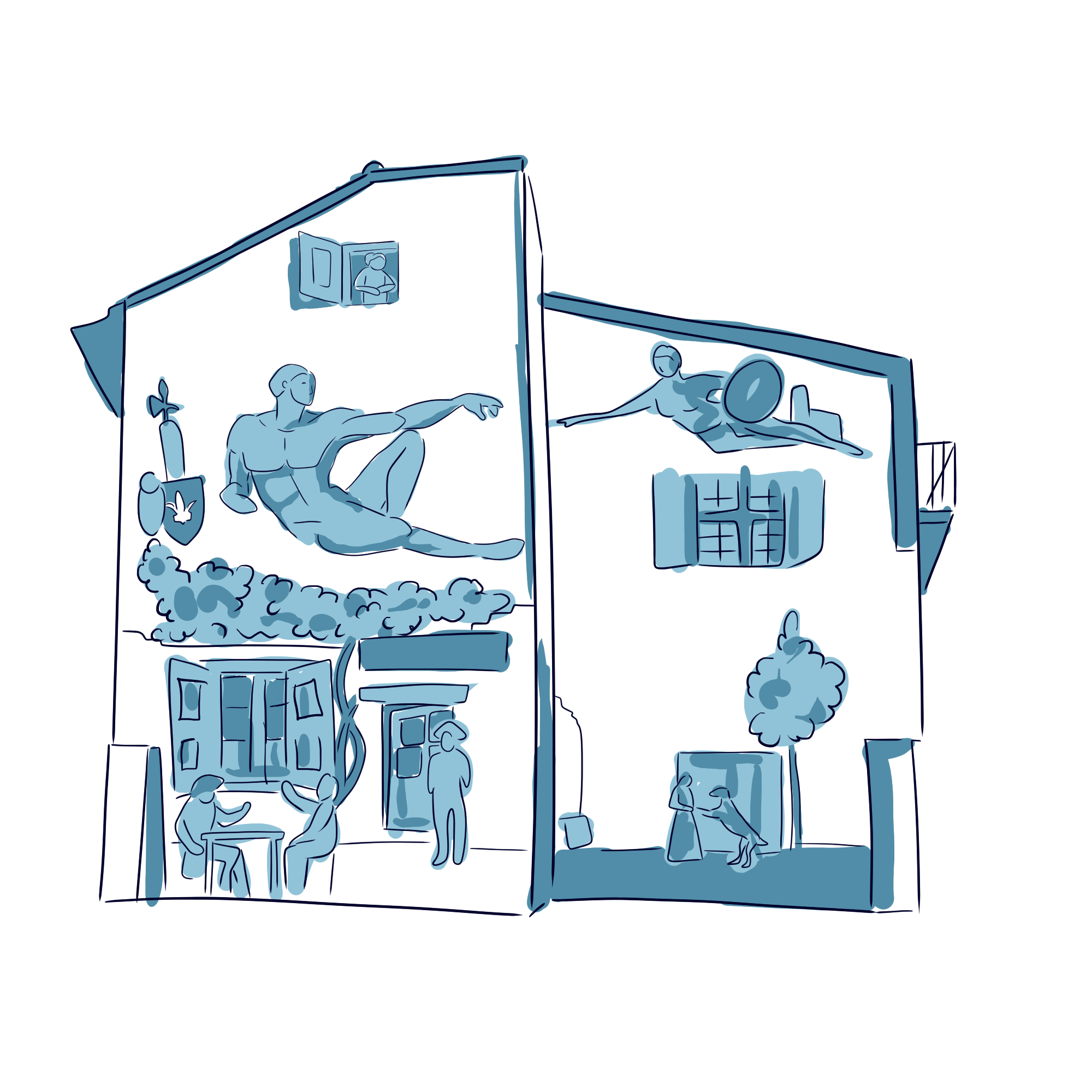
The Castelviel neighborhood is but a handful of streets west of the Saint-Cécile Cathedral. It's the oldest one in the city, dating from protohistoric times – we're talking all the way back to the era of early metalworking, even before writing was a thing! Every red brick here

I know, it might feel like we're a tad off the tourist trail! But do not fret – it's all part of the plan! Mark my words: this little detour will take you to one of the most charming spots in Albi! Just a few steps ahead, at the far end of this small dead-end street, you'll find the Savène Square.
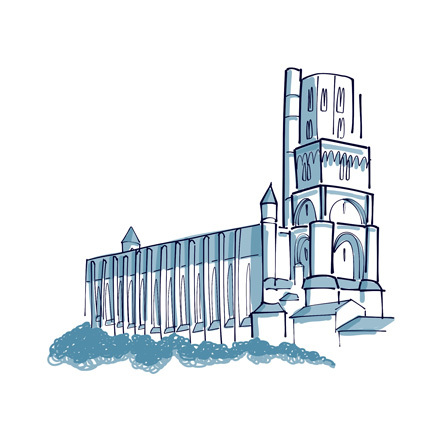
Albi’s Cathedral is a real head-turner! It actually looks more like a fortress than a church. It's measuring a whopping 113 meters long, 35 meters wide, and 78 meters tall! Talk about XXL! You're looking at the biggest brick cathedral in the world! For the most part, it's a fine example of Southern French Gothic architecture,
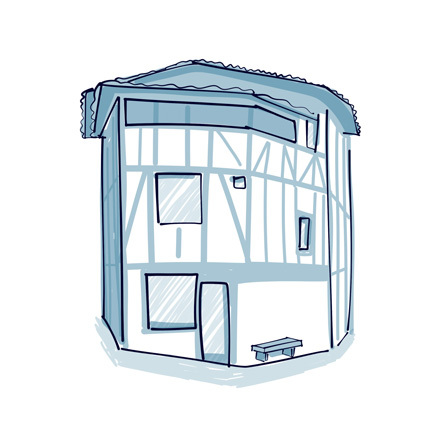
The Old Albi House is without doubt one of the most iconic buildings in the historic heart of the city. You can't miss it as you wind your way through the narrow streets of the Castelnau district. You'll be immediately struck by its brick and half-timbered façades, hallmarks of the Middle Ages.
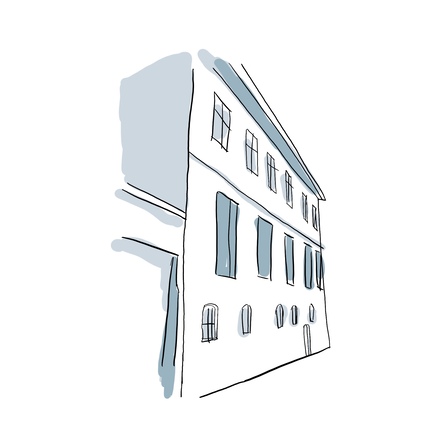
Exploring Albi's heritage isn't just about the sights; it's also about the people that made them this special. Our tour brings their stories to life. Take this house, for example. It might not look like much, but it belonged to a local legend – Jean-François de Galaup, Count of La Pérouse. This noble family name belies
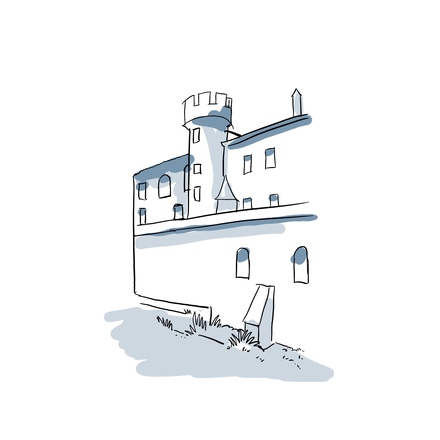
While most visitors to Albi come simply to explore its rich heritage, others make all this way for a mini pilgrimage to the birthplace of one of France's most famous 19th-century artists: Henri de Toulouse-Lautrec. You might not know this, but this world-renowned painter and illustrator was born here in Albi,
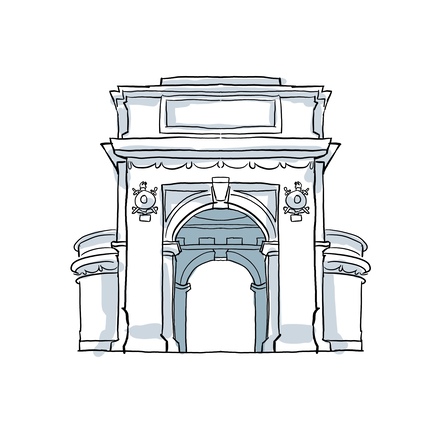
"Simple yet grand": no clearer instructions could have been given to the architect of the Albi war memorial, just to your right. And so it was. The monument stands out from afar with its classic Triumphal Arch design, which is said to have cost a hefty sum – nearly 280,000 French francs.
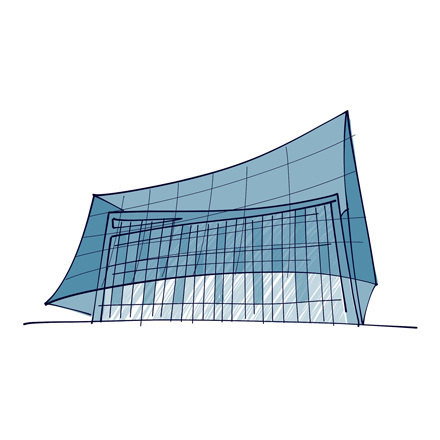
Halfway between the old town and the university campus, you'll find Cordeliers, Albi's cultural district dating back to the late 1990s. Spread over an area of 3.2 hectares, it is home to a multimedia library, a cinema and, above all, a theater like no other.

Before you is the bronze statue of Jean-François Galaup, Count of Lapérouse – his eyes fixed on the horizon, a spyglass in his right hand, a map and a broken mast at his side. The statue stands as a reminder of the remarkable man he was; you see, his legacy is cherished here more than anywhere else.

This imposing building is one of the finest examples of colonial architecture in Mexico City. It was built in 1588, nearly 70 years after the arrival of the Spanish settlers and the fall of the Aztec civilization. In the decades following the conquest, the Spanish embarked on a great evangelization effort to convert the indigenous population to Christianity,

You’re now in the city’s main park, established in the 16th century thanks to Luis de Velasco, the Viceroy of New Spain. You’re probably wondering its meaning—it was the name given to the Mexican territory newly claimed by Spanish colonists. His goal was to offer the city’s residents a place to relax right in the heart of Mexico City.
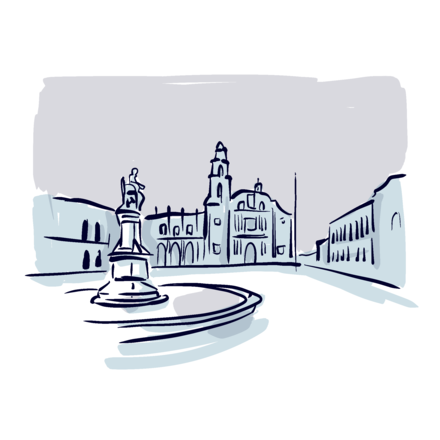
You are now standing on a square once occupied for a long time by public writers and printers, offering their services to illiterate clients—a common need after colonization. To this day, you can still find some scribes here, keeping alive this tradition so deeply rooted in the city’s history.
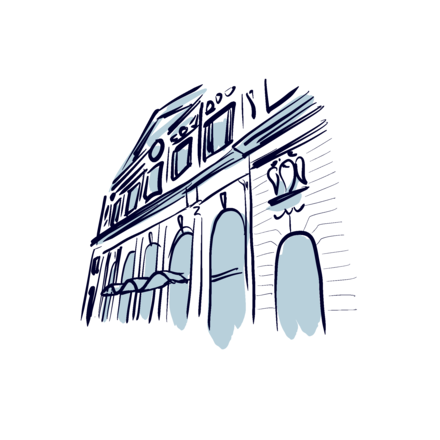
This theater, built in 1918, was long considered the city’s most important cultural venue—at least until the creation of the Palace of Fine Arts. From the moment it opened, it was named Esperanza Iris, after María Esperanza Bofill Ferrer, a Mexican singer and theater actress during the 20th century who was honoured by King Alfonso XIII of Spain and
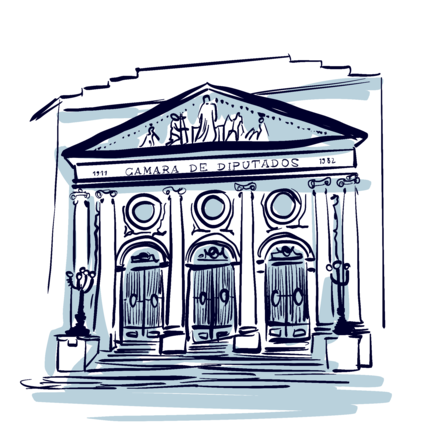
Behind you stand the six columns of the neoclassical façade belonging to the Donceles Legislative Palace, home to Mexico City’s Congress and the Chamber of Deputies. This is the perfect moment for a quick overview on the country’s political system. Mexico is a federal republic, governed by a Constitution that was established during the Mexican Revolution in 1917.

You are now in one of the liveliest squares of the city! This is where you’ll hear mariachi bands playing at all hours of the day, drawing both locals and visitors alike. The square is named after Peppino Garibaldi, an Italian lieutenant colonel who played a key role in the Mexican Revolution.

What would Mexico be without its iconic national drink, Tequila? Probably a little less spirited! The story begins in pre-Columbian times, when the Mesoamericans used agave plants to create fermented drinks below 8%. When the Spanish conquistadors took control of the region, they introduced distillation techniques brought to Europe by the Arabs centuries earlier.

Let’s take a moment here on Lázaro Cárdenas Avenue to revisit the city’s history. Mexico City, now the capital of Mexico, owes much of its early development to the Aztecs, who set foot in the valley in the 14th century and founded the city of Tenochtitlan around the year 1325.
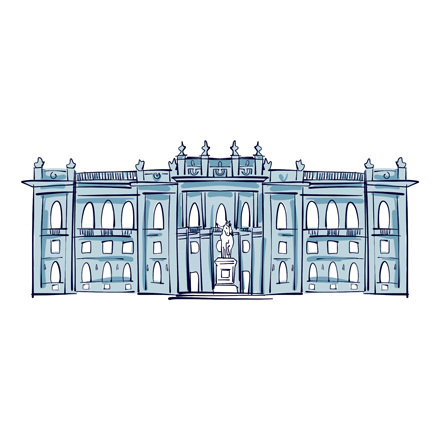
The museum in front of you retraces the history of Mexican art from the pre-Hispanic era to the early 20th century. It’s hard to miss such a striking façade when passing by this small square in Mexico City, which bears the name of Manuel Tolsá, the neoclassical architect who completed the Metropolitan Cathedral and designed the magnificent Palace of Mines.
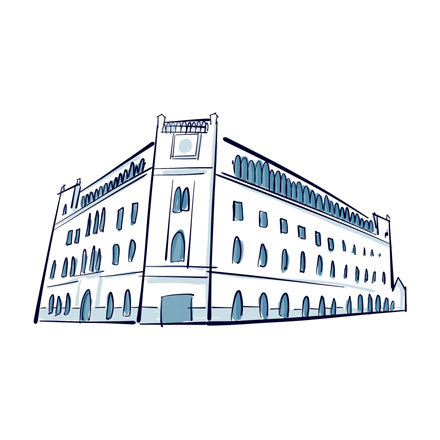
This post office, located in the heart of Mexico City, has been standing here for over a century. Housed in a magnificent palace, it was built in the early 20th century by architect Adamo Boari and engineer Gonzalo Garita y Frontera.
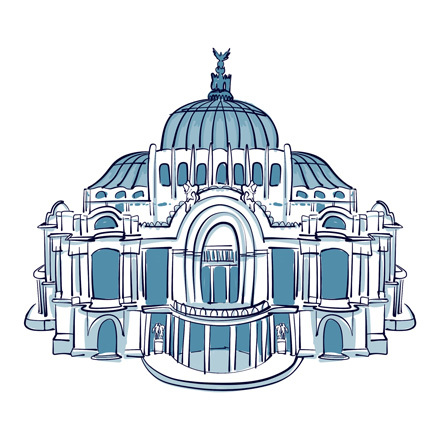
You’re now standing in front of one of the most iconic landmarks downtown: the magnificent Palace of Fine Arts. It took more than 30 years to complete this masterpiece, combining Art Nouveau on the outside with Art Deco inside.
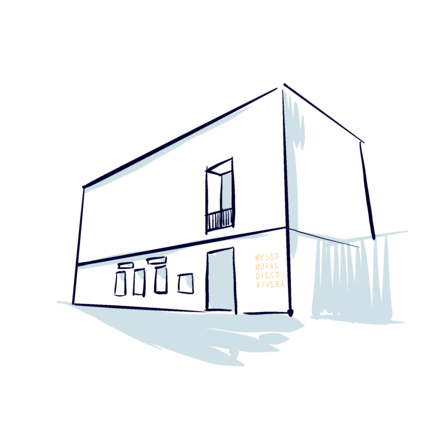
This museum is dedicated to Mexico’s most iconic painter. Yes, we’re talking about Diego Rivera! It was built in 1986 to house one of his most famous artworks called “Sueño de una Tarde Dominical en la Alameda Central”, meaning “Dream of a Sunday Afternoon in the Alameda Central”.
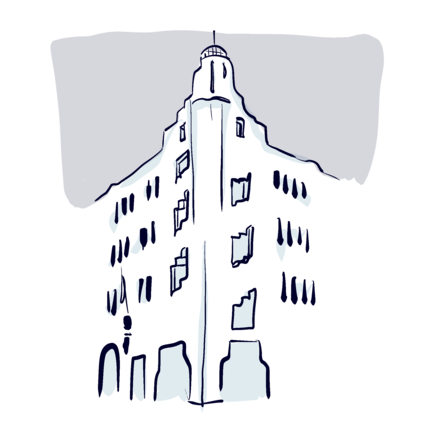
Dedicated to traditional Mexican art, the Museum of Popular Art offers a deep dive into the culture of many populations having lived across the country. In addition to temporary exhibitions showcasing the work of local artisans, the museum features nearly 3,000 permanent pieces from various eras and regions.

If there’s one thing you can’t miss when visiting Mexico, it’s learning about the many civilizations that have inhabited the land for thousands of years. Most of us have heard of the Aztecs, the Maya, maybe even the Toltecs—but did you know that, today, there are more than 70 Indigenous communities across the country?

You’re standing in front of one of Mexico’s most famous towers: the Torre Latinoamericana! Upon its completion in 1956, it was the tallest tower in the country until the WTC Tower surpassed it in 1984. However, it still remains one of the most emblematic landmarks in Mexico City.

As you can see, the Church of San Francisco comes straight out of the 18th century, once part of one of the largest convents in New Spain—the vast colonial territory established by the Spanish in the 16th century.

It was the Mexican leader Porfirio Díaz—a dictator having ruled the country just before the revolution—who commissioned this grand monument to honour President Benito Juárez, a man who tirelessly fought against social injustice and transformed Mexico into a modern nation, free from its long colonial past.
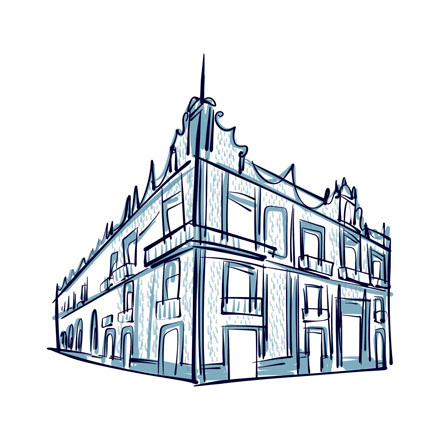
An unmissable gem, the Casa de los Azulejos easily stands out among the city’s buildings with its dazzling mudéjar-style architecture and vibrant blue tilework. Entirely covered in colourful mosaic tiles, this iconic landmark, also known as the Blue Palace, was completed in 1737.
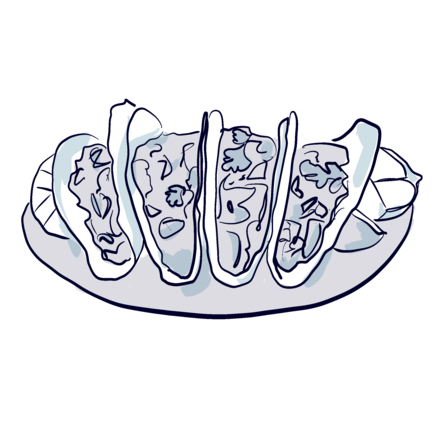
How could anyone visit Mexico without mentioning its countless world-famous flavors? Rich in both pre-Hispanic and Spanish influences, Mexican cuisine is wonderfully diverse and tends to win everyone over.

You're now walking along one of Mexico City's most important streets—not only because it's always been one of the capital's busiest avenues, but also since it bears the name of a man forever linked to the country's history: Francisco Madero, a president who once played a significant role in the Mexican Revolution, which began on the 20th of November 1910.

Running alongside the Constitution Plaza, this immense palace is full of history, one that started in the 16th century when Moctezuma II—ruler of the Aztec capital, Tenochtitlan—chose to build his royal residence here.
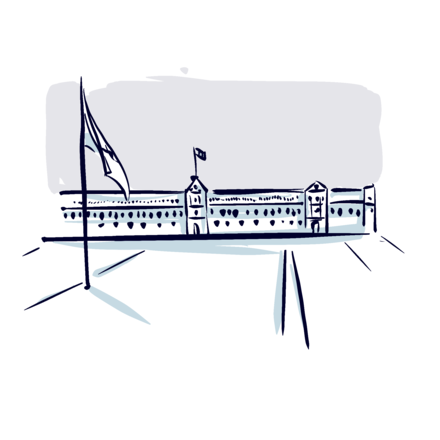
You’ve probably guessed it: we’re in the heart of Mexico as we stand on this monumental square, the Zócalo, also known as the Constitution Plaza. It’s one of the largest squares in the world, surrounded by some of Mexico City’s most important landmarks:
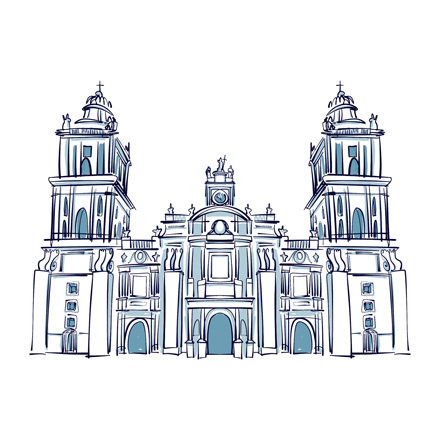
Construction began in 1571 for this immense cathedral, the largest in Latin America as a matter of fact. This impressive landmark will be completed nearly three centuries later, which explains the mix of architectural styles reflecting the different eras of its construction.
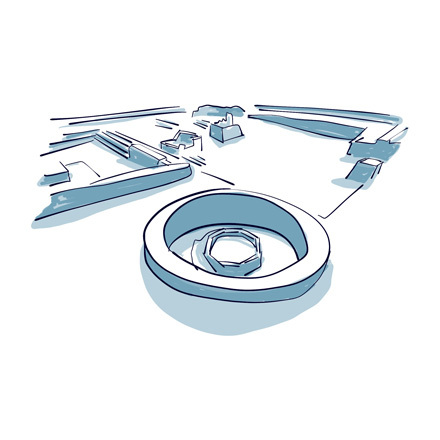
Here we are standing before a true remnant of one of the main monuments in Tenochtitlan, the city built by the Aztecs in the 14th century. This temple was once a 65-meter-high pyramid, erected in 1375 on what was used to be the land of Lake Texcoco. It is said that, a prophecy led the Aztecs to settle here.














We’ve done our homework, dug through the archives, and we’re ready to serve you—on a silver platter—three juicy facts about this industrial city that might just surprise you. Fact one: Saint-Nazaire was the last city in France to be liberated from German occupation during World War II.
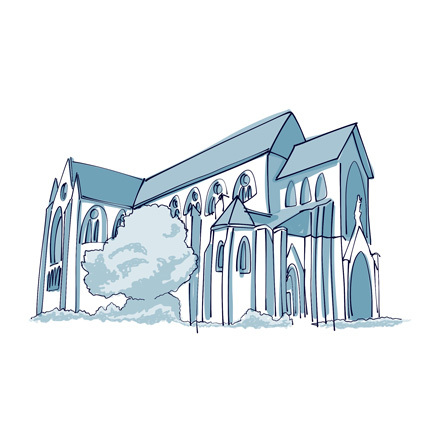
Many of the city’s iconic landmarks have lived two—or even three—lives simply to remain standing today.That’s especially true for the Church of Saint-Nazaire. It all began in the 16th century, when the growing local population needed a new place of worship. The decision was made to build a church
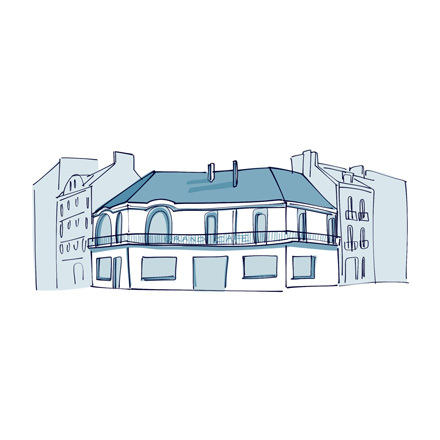
Centrally located in the heart of the city when it first opened in 1864, this former café wasn’t founded by just anyone. Its original owner was none other than the father of Aristide Briand—the renowned French lawyer and politician who served as minister an impressive 26 times during the Third
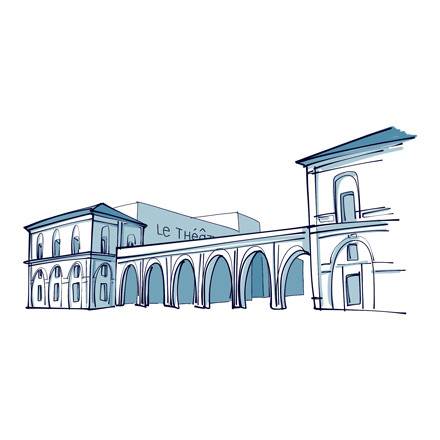
Another remarkable survivor of wartime destruction, the Simone Veil Theater stands as a fascinating blend of history and architecture. Inaugurated in 1867, shortly after the Paris–Saint-Nazaire railway line was opened, the building originally served as the city’s train station. It remained in operation
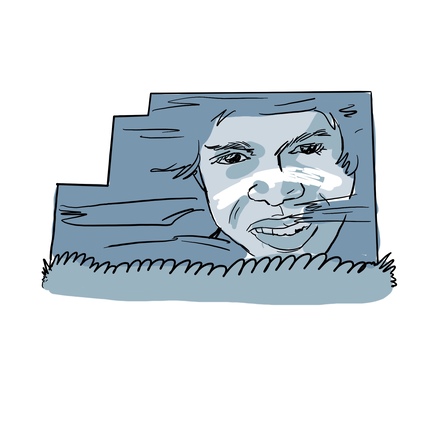
If you’re looking for art in Saint-Nazaire, there’s no need to search high and low—it’s right there in the streets. For several years now, artists from around the world have been invited to bring color and creativity to the city’s public spaces. As you wander through town, you’ll come across stunning
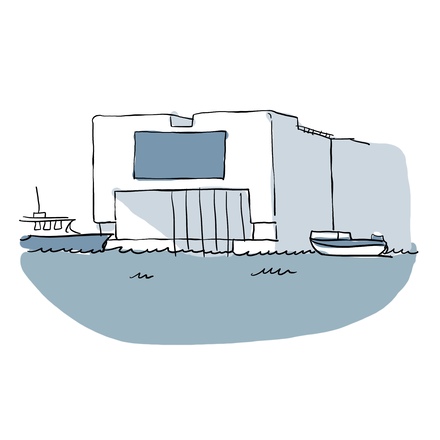
Keep going straight and you might start to feel like you're heading straight into a wall—a concrete one, no less. And you wouldn’t be wrong. But don’t worry... what’s ahead is well worth the approach! Right across from the submarine base, the fortified lock stands as another striking witness to Saint-
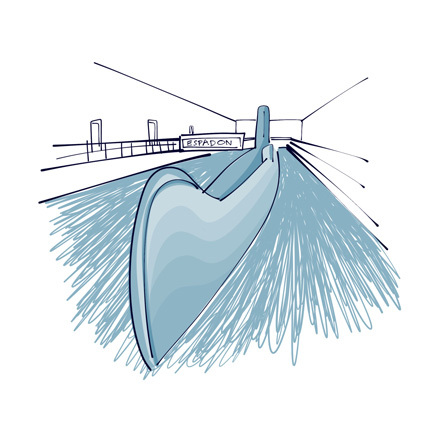
A true treasure of Saint-Nazaire, the Espadon submarine is the last of its kind—a proud representative of the Narval class, a series of French-built missile-launching submarines from the 1950s. For 25 years, the Espadon served on observation missions and helped train generations of submariners.

Let’s be honest—the first impression of Saint-Nazaire’s submarine base and fortified lock isn’t exactly cheerful. These massive concrete structures look more like giant safes than scenic landmarks, weathered daily by water infiltration and time. But don’t be fooled—these two “old ladies” actually offer
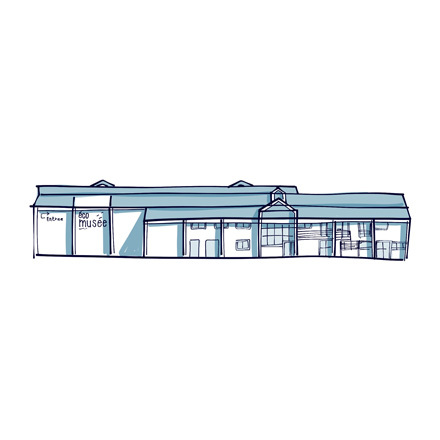
Located right on the edge of the Loire estuary, the ecomuseum couldn't be better situated to tell the complete story of Saint-Nazaire, its port, and its major industries. Opened in 1988 under the town council's initiative, this cultural destination invites us on a journey through time, featuring both
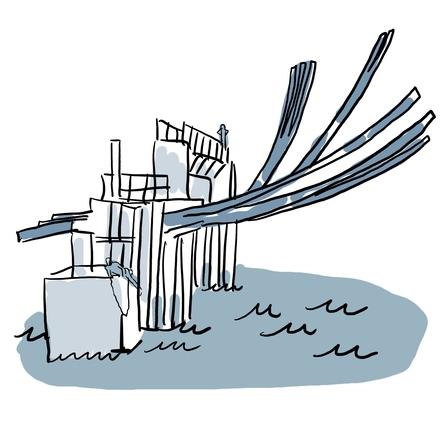
Constantly exposed to sea spray and ocean winds—which, over time, leave their mark—this memorial isn’t the easiest to interpret at first glance. But take a moment, look a little closer, and with a bit of context, its message becomes strikingly clear. Let’s start with a question: do you know what
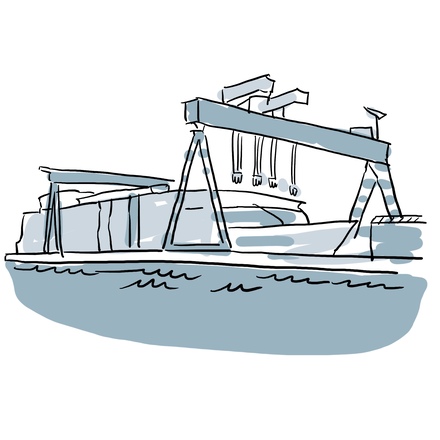
From a distance—or even up close—you might say Saint-Nazaire is all about cranes and gantries, dancing across the skyline. And you’d be right. But what if you looked a little closer? Because behind those towering structures is something far more impressive: a vast industrial and port complex

How about leaving dry land behind for a change, and diving—figuratively, of course—into the fascinating world of ocean liners? It's a unique experience, and yes, it does come with an entrance fee, but it’s well worth it. Saint-Nazaire and ocean liners go hand in hand. From 1862 until the eve

Towering over the Saint-Nazaire landscape, the submarine base is one of the city’s most striking landmarks—both in scale and in symbolism. Its story begins in 1941, when Nazi Germany built five massive submarine bases along the Atlantic coast to shield its U-Boats from British air attacks.

“Billions of blue blistering barnacles!”—what on earth is Tintin doing in Saint-Nazaire? If you’re a fan of the famous quiff-haired reporter, you might remember that in The Seven Crystal Balls, Tintin, along with his loyal dog Snowy and the ever-exasperated Captain Haddock, travels to Saint-Nazaire
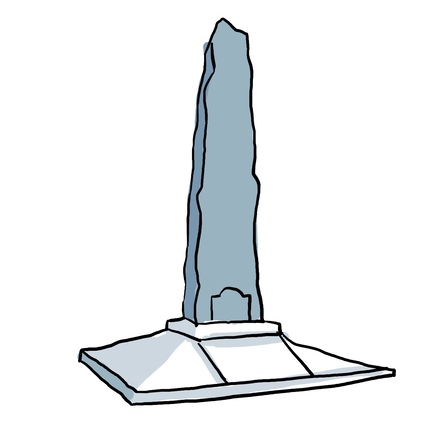
All around Saint-Nazaire, the echoes of World War II still linger. You’ll see them in the sturdy wartime buildings, now part of the town’s heritage. You’ll also sense them in quieter moments—at the many memorials honoring the brave souls who stood against Nazi Germany. One memorial in

It’s here, at the edge of this rocky outcrop, that your walk might suddenly come to an end—but not in a bad way, especially if you’ve made it all the way to the tip. At the foot of the Vieux Môle lighthouse—the city’s very first port structure, built back in 1835—you’ll find a kind of balcony with a
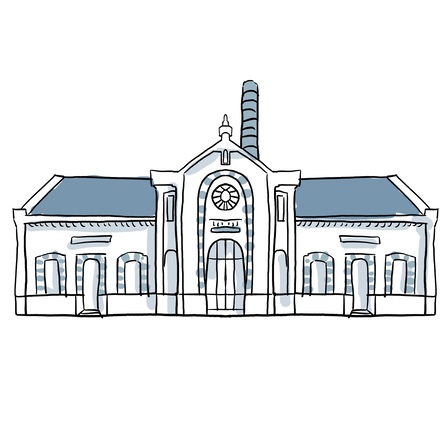
Across France, the scars of the Second World War are still visible. While the memories remain vivid for older generations, some cities were marked forever—devastated by bombings and forced to rebuild from the ground up. Saint-Nazaire is one of them. It’s said that 85% of the city was
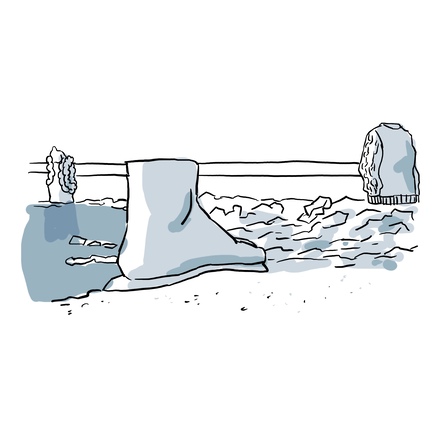
Staring out at the horizon—it’s something we all instinctively do when we’re by the sea, as if waiting for something to appear in the distance. Here, facing the main beach of Saint-Nazaire, something does catch your eye. Rising unexpectedly from the sand in
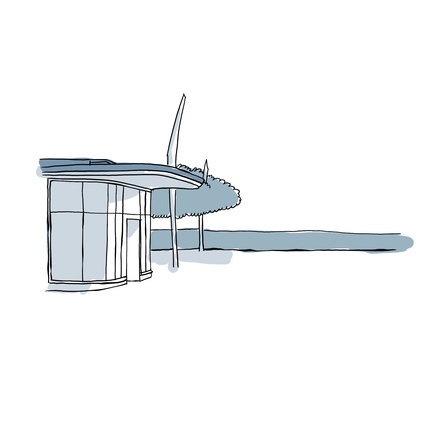
Place du Commando is perfectly positioned facing the Loire estuary—and it’s become the city’s new go-to spot for fun, relaxation, and good times. New? Yes, because this welcoming meeting place, popular with both longtime locals and curious visitors, was only officially opened in July 2018. It’s

You’ve probably already figured out that you’re walking along Saint-Nazaire’s seafront—but what you might not know is that this very path is actually part of the famous GR34, also known as the Customs Officers’ Path. Behind that slightly technical name lies one of France’s most iconic hiking trails.
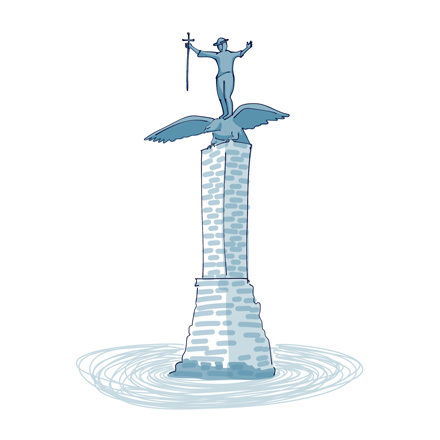
Whether you're sitting, walking, running, cycling, or even swimming, the Saint-Nazaire seafront offers countless ways to relax and take in the ocean views. That same ocean, just over a century ago, brought thousands of American troops to French shores to join the fight against Germany. Because
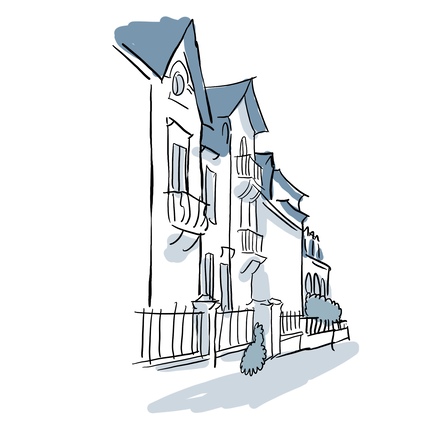
Saint-Nazaire may not immediately strike visitors with its architecture—after all, more than 80% of the city was destroyed during the war. What it offers instead is a strong maritime identity. But just when you start to think of the city only in terms of ships and shipyards, you stumble upon a hidden
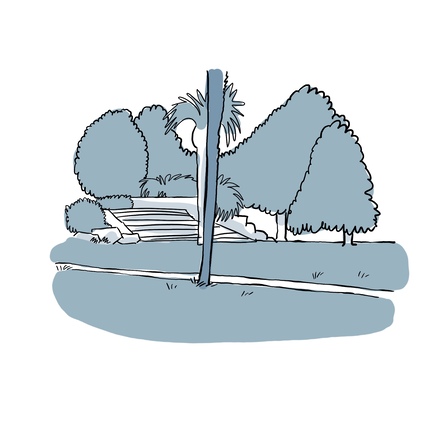
After the sea, it’s time to reconnect with the land. In Saint-Nazaire, it almost feels like you're exploring all five elements at once. Created in 1884 at the city's request, the botanical garden is a peaceful oasis overlooking the seafront—a perfect place to slow down and catch your breath. Originally laid out

You’re now inside one of the largest fortified structures in Europe, and quite possibly the most beautiful in Italy. This is Milan’s most important cultural complex.
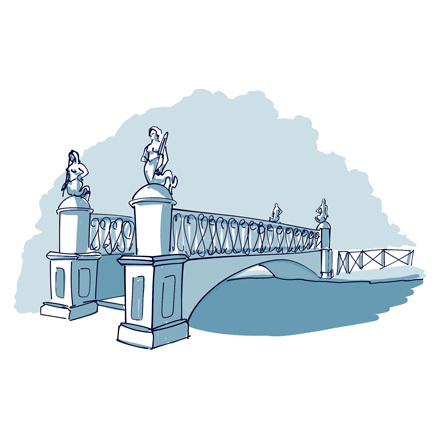
After so much culture, nothing beats a breath of fresh air. The beautiful Parco Sempione, designed in the English style, offers 40 hectares of greenery where you can stroll and take a break from the city.

The elegant triumphal arch you see on the other side of the park is the Arco della Pace, the Arch of Peace. If it reminds you of its Parisian counterpart, that’s no coincidence: it was built in 1807 during the Napoleonic era.

Via Dante, the street you’re walking along now, links the Sforza Castle to Piazza del Duomo. It was opened in 1888 as a direct thoroughfare to the castle, no wonder it’s one of Milan’s liveliest streets.

The remains of Milan’s Roman past may be discreet, but the city was once a major Roman settlement. Originally inhabited by the Insubrian Gauls, it was conquered by the Romans in 222 BC. Around 50 BC, the first permanent public buildings began to appear, including the theatre you see on your left.

Pause for a moment in Milan’s financial district to take in this bold and surprising statue. It was gifted by the famous contemporary artist Maurizio Cattelan, on one condition: it had to face the Stock Exchange.

Back in the Middle Ages, this was the heart of the city. Piazza Mercanti was Milan’s commercial and governmental hub. Take a look around and listen to the stories these buildings could tell.
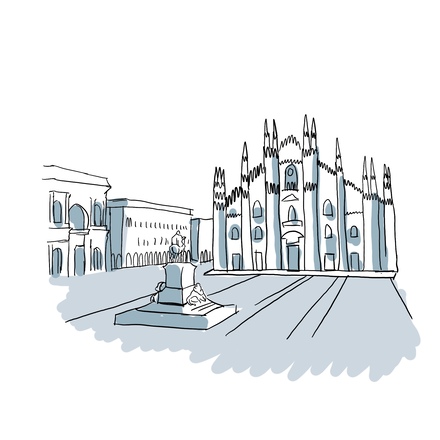
You can feel it, you can tell, you’re standing in Milan’s central square, the very heart of the city, where everything begins. This is where locals gather to mark big occasions. Spanning a vast 17,000 square metres, it’s the perfect stage to step back and take in, jaw dropped, the towering cathedral that dominates it all.
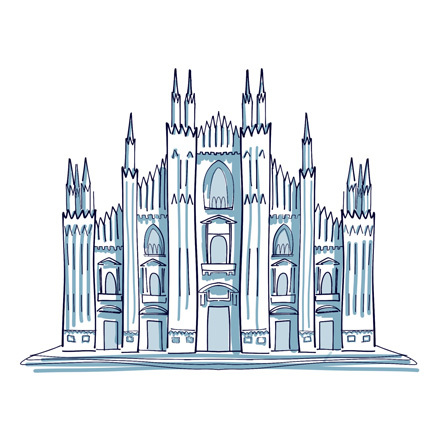
It’s hard not to be awestruck, you’re face to face with one of the largest and tallest cathedrals in the world! Only St. Peter’s Basilica in Rome and Seville Cathedral surpass it in size.

You’re now looking at the Royal Palace, built on the orders of Maria Theresa of Austria, back when the Duchy of Milan was under Habsburg rule.
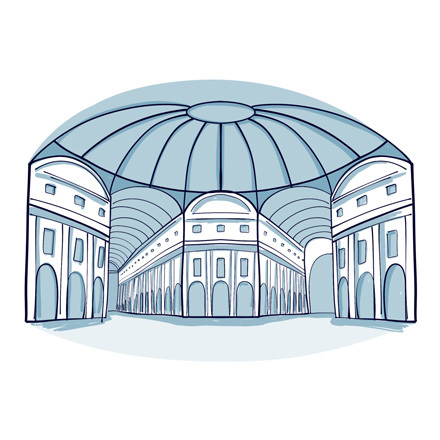
Stepping into what many consider the most beautiful gallery in Europe is nothing short of spectacular, and your eyes are instantly drawn to its magnificent, sweeping glass roof.
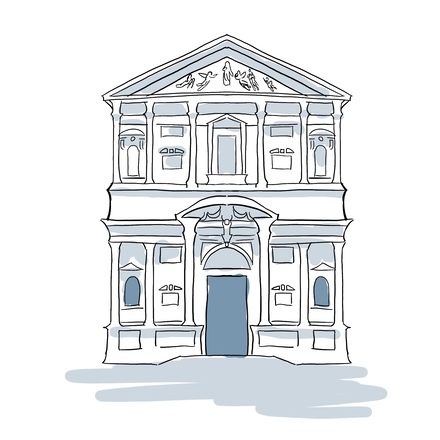
You’re now in Piazza San Fedele, facing the Jesuit church of the same name. This was the Jesuits’ first residence in Milan, built in the late 16th century and still an important parish centre today. It’s also listed as an Italian cultural heritage site.
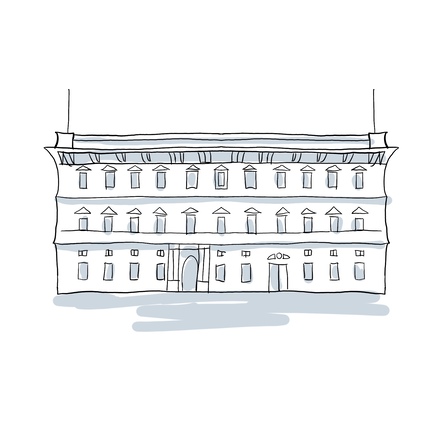
You’re now standing in front of Palazzo Marino, a remarkable 15th-century mansion built for a wealthy family of Genoese bankers. It became state property in 1781 and today serves as Milan’s City Hall.
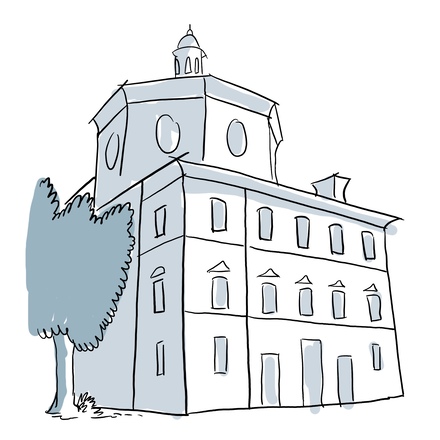
Another church, you might be thinking. But trust me, I’m not trying to make you visit every church in Milan. Step into the small building just to the left of the main church, and you’ll see it’s actually an ossuary.
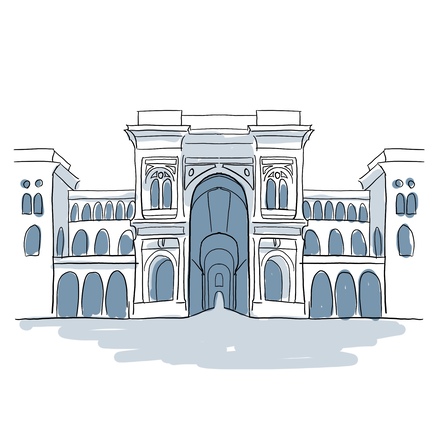
Au croisement des deux galeries se trouve ce que l’on appelle, vous devinez pourquoi, l’octogone. Surplombé par une impressionnante coupole et entouré des allégories des 4 continents, ce carrefour est une vraie merveille !
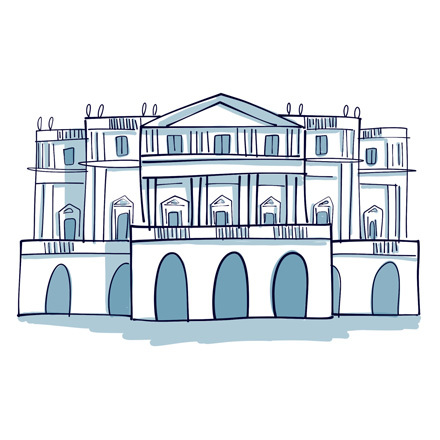
Don’t judge a book by its cover, that saying couldn’t be truer here. Yes, you might feel a twinge of disappointment. You’ve been told you’re about to see the most important Italian-style opera house in the world, and yet La Scala’s façade doesn’t quite match the grandeur you imagined.

A true oasis in the heart of Milan, this botanical garden is a delightful surprise that leads you straight to the famous Brera Palace and its renowned art gallery, the Pinacoteca di Brera.
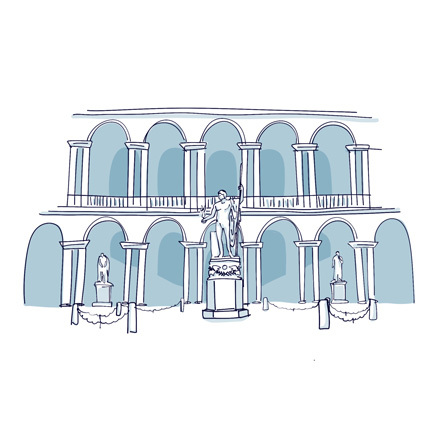
You’ve arrived at the famous Brera Palace, home to several major institutions. The Pinacoteca di Brera is one of Italy’s most important museums, ranking alongside the Uffizi Gallery in Florence and the Vatican Museums in Rome.
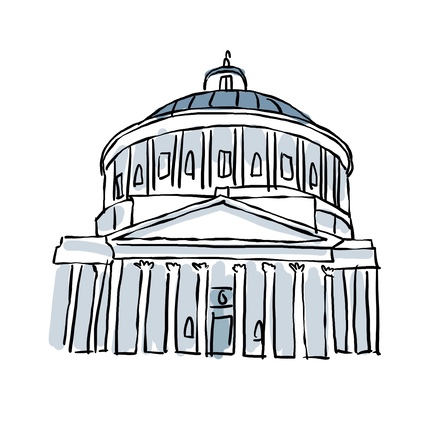
You’re walking along the main artery that links Piazza del Duomo to Piazza San Babila. This is Milan’s second pedestrian zone and the perfect place if you’re in the mood for a little shopping.
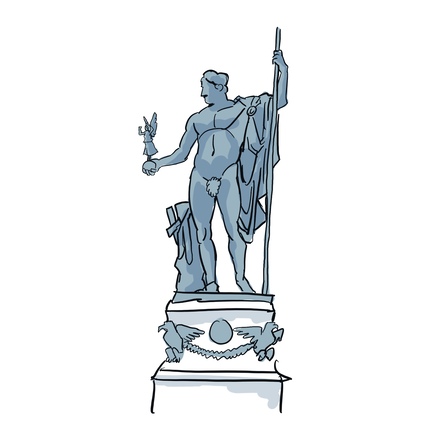
A quick word about the statue of Napoleon you see in the centre of the courtyard. Here, the Emperor is depicted as Mars the Peacemaker, unarmed, triumphant, and entirely nude, a work originally intended for a grand vestibule rather than an open square.
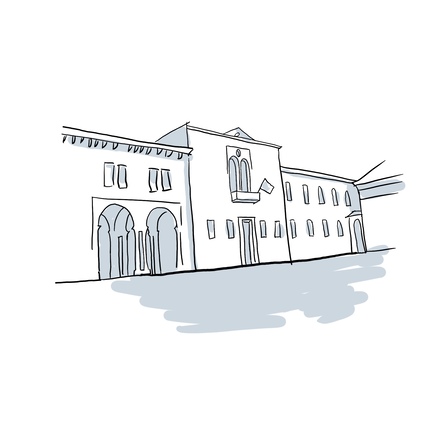
This beautiful corner building is the Bonacossa Palace, home to Milan’s Museum of Art and Science. The museum occupies the former San Vittore Monastery, founded in the 16th century.
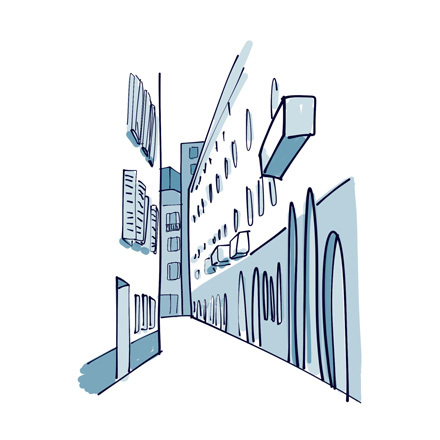
You’re in the heart of a bohemian, artistic, and picture-perfect neighbourhood, welcome to Brera. Here, cobblestone streets are lined with charming boutiques, bars, and restaurants.
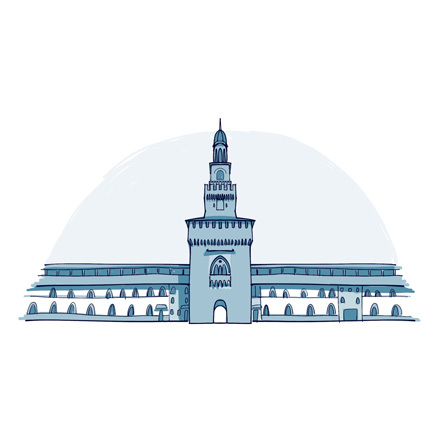
An iconic symbol of Milan, the Sforza Castle tells the city’s entire story in a single place. From its days as a fortress to its present life as a museum complex, it has witnessed centuries of foreign rule.
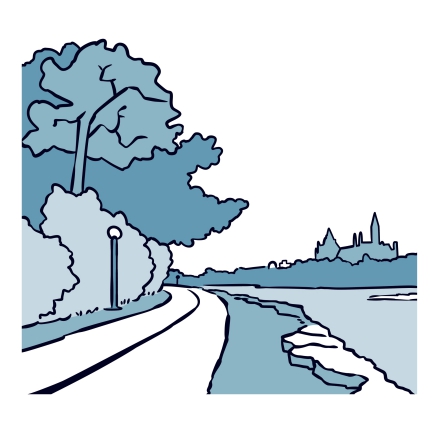
You are now walking along the Ottawa River, the main tributary of the St. Lawrence River. It is the longest river in Quebec and the eighth largest in Canada. Its source lies in the Laurentians, at Lake Capimitchigama

Canada is the second-largest country in the world, behind Russia but ahead of the United States. However, it has one of the lowest population densities, with most of its inhabitants concentrated in major cities such as Montreal

Here, you have a beautiful view on the Ottawa River! On the other side, you can see the city of Gatineau, which is part of Quebec. If you feel like exploring, you’ll find sites such as the Canadian Museum of History, Gatineau City Hall
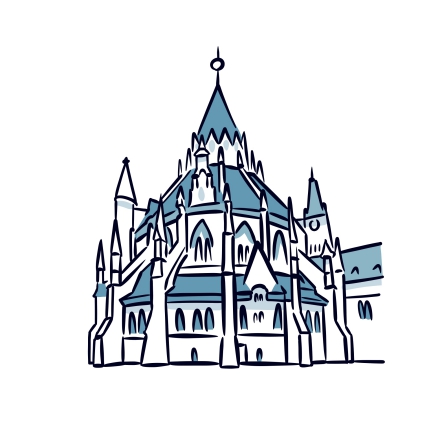
Behind the Center Block, you can admire the stunning Library of Parliament. Established in 1871, it regroups collections from two former legislative libraries in Upper and Lower Canada, which, as you may recall, were once separate
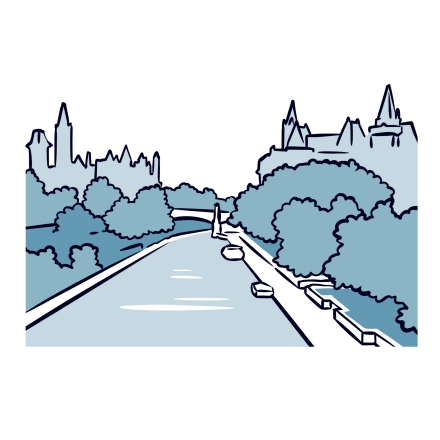
Here we are along the Rideau Canal. It connects the Ottawa River, on your left, to the St. Lawrence River in Kingston, Ontario. Stretching over a total of 202 kilometers, it was opened in 1832 and served for many years as a key commercial

Despite its name, this impressive building is not the Senate’s permanent home. Usually, the Senate meets up in the Centre Block of Parliament, alongside the House of Commons. However, since there are currently renovations on the main
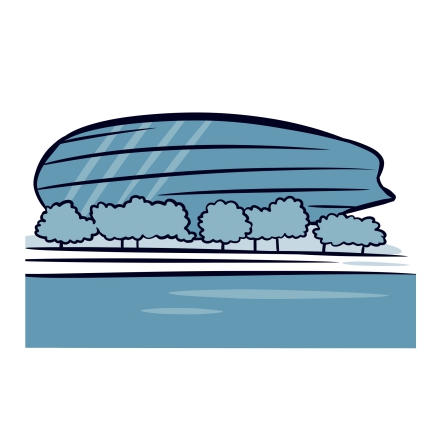
Here, you are looking at the Ottawa Convention Center. It features 37 different rooms, designed to host a wide range of events, including trade shows, business meetings, and weddings. Inside, you’ll find two grand ballrooms and two
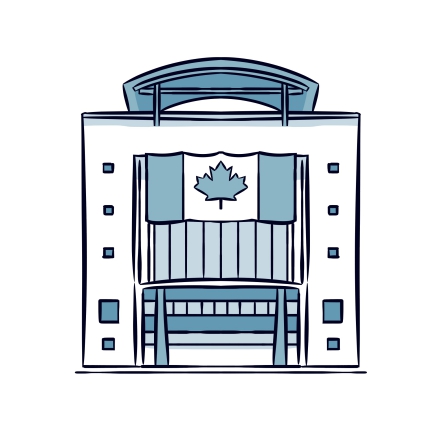
This is Ottawa City Hall, composed of two large buildings. The one in front of you is the new wing of the building. Its entrance is on the other side. Originally constructed during World War II to accommodate military staff, this structure
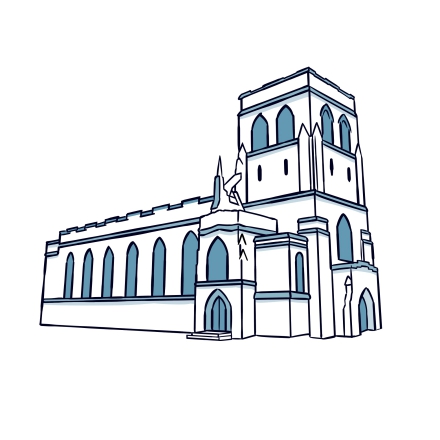
The beautiful church on your left is Knox Presbyterian Church. Named after the famous Scottish minister John Knox, a theologian and important leader of the Reformation in the 16th century. He founded the Presbyterian Church in

You are now standing in front of the Ottawa courthouse, located on the same grounds as the City Hall. Now’s the time to explain how the Canadian government is organised! Let's start by the fact that Canada is part of the Commonwealth
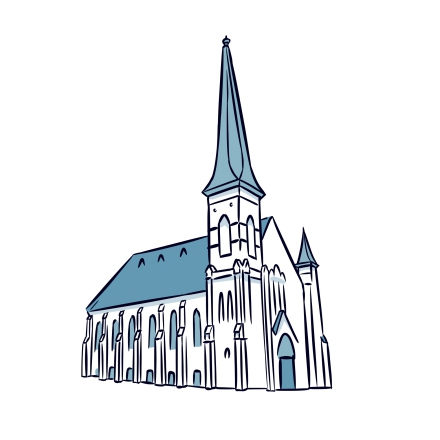
Take a look to your left. Do you see the beautiful church with its light-green spire? It belongs to Ottawa's first Baptist congregation. The Baptist denomination is an evangelical Christian movement founded by the English in the 17th
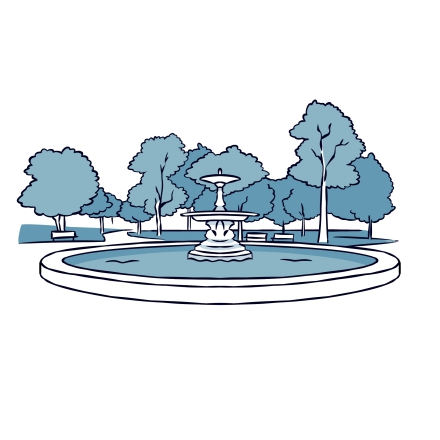
You are now in the heart of Confederation Park, one of the largest parks in the Canadian capital. Before you is a fountain made of Peterhead granite. It is a tribute to the founder of Ottawa, Lieutenant-Colonel John By, who came from
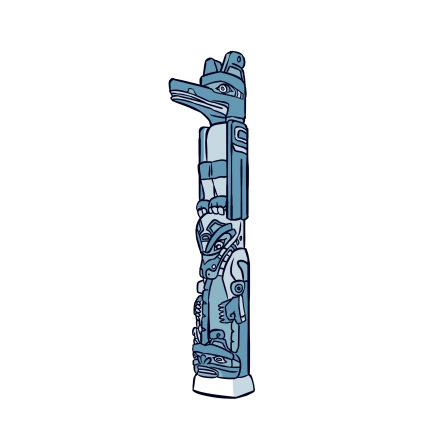
Before you stands a monument that will take you back a few centuries. Installed here in 1971, this totem pole commemorates the centennial of British Columbia joining Canada in 1871. It pays tribute to the Kwakiutl, the Indegenous people
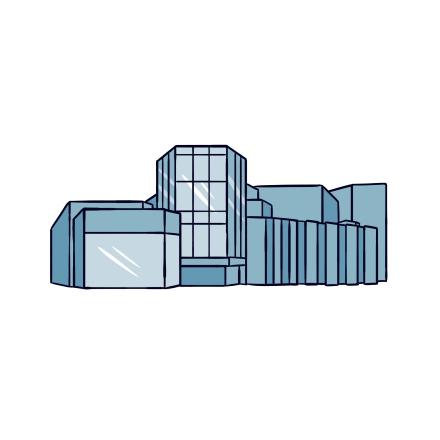
Here is one of the greatest jazz pianists and composers of all time! Born in Montreal in 1925, Oscar Peterson went by many nicknames: the “Maharaja of the keyboard”, the “Brown Bomber of boogie-woogie”, the “Master of swing” and the

We've reached the famous Confederation Square, one of the most important plazas in the city. Here, you'll find some of Ottawa's most emblematic buildings. Behind you, on the left, you can see the National Arts Centre. On your right
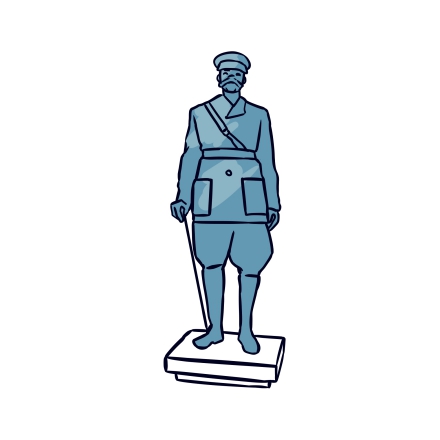
You may find yourself drawn to the immense building in front of you. But before focusing on the castle, look to your right. Leading down to the quay, these steps are known as the Sappers’ Staircase. It is surrounded by 14 sculptures: nine

Now, let’s talk about the giant building in front of you. This is Château Laurier, a four-star hotel that opened in 1912 after three years of construction. The project was commissioned in 1907 by Charles Melville Hays, president of the Grand
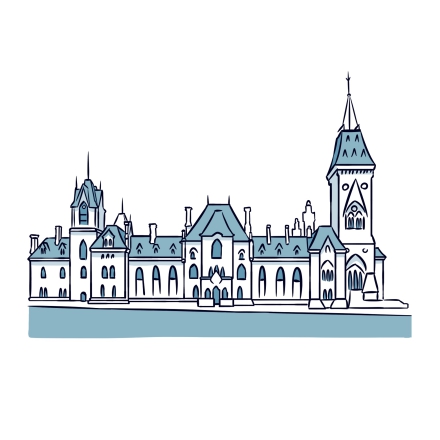
You'll see that Canada’s Parliament consists of several buildings, each one more beautiful and impressive than the other. Here, you are standing in front of the East Block, which like the others, is considered a National Historic Site.
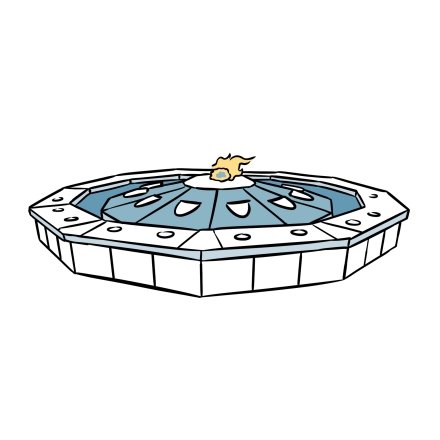
The Centennial Flame is a powerful symbol of Canada, representing the unity of the country through a flame that burns atop a fountain. It was first lit on December 31,1966, by former Prime Minister Lester Pearson to celebrate Canada’s
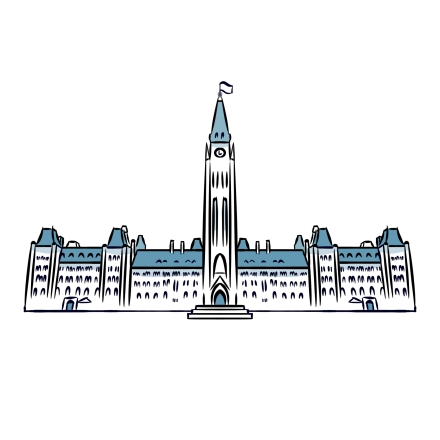
If there’s one thing you can’t miss in Ottawa, it’s the Parliament. First, because the capital is home to the country’s highest institutions. But also, just look at it, it’s an impressive building! In fact, it’s actually a collection of buildings
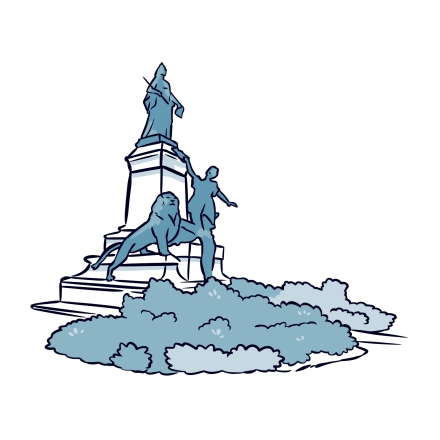
Here is an elegant statue depicting Queen Victoria, a figure deeply connected to Ottawa. In fact, Canada even has a public holiday dedicated to her—Victoria Day—celebrated on the last Monday preceding May 25.
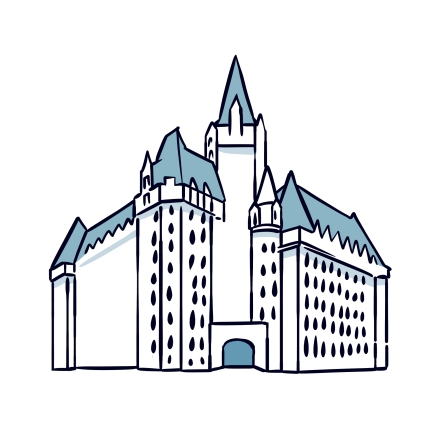
Let’s take a moment to observe the buildings in front of you. Across the road on your left stands the Bank of Canada Museum. It was opened in 2017, in a modern building next to the Bank of Canada. This museum invites visitors to
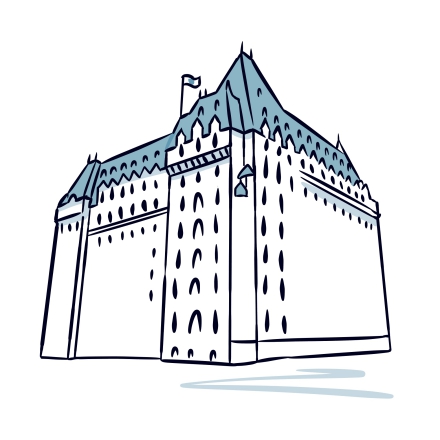
To your right stands the Justice Building, designed in the same architectural style as the other Parliament buildings. It was constructed between 1935 and 1938 by architect Thomas Fuller. It used to be the Department of Justice, which is
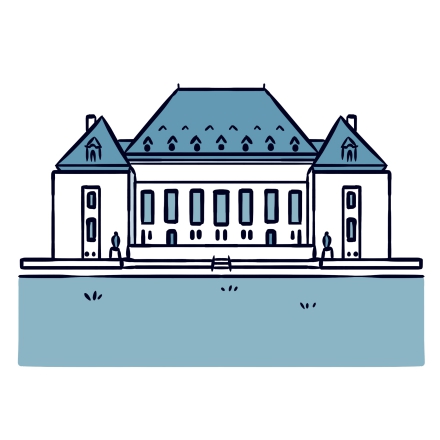
Here you are in front of another of the country’s most important buildings: the Supreme Court of Canada. As a symbol of Canada’s judicial authority, it is the highest legal authority for civil, criminal, administrative, and constitutional
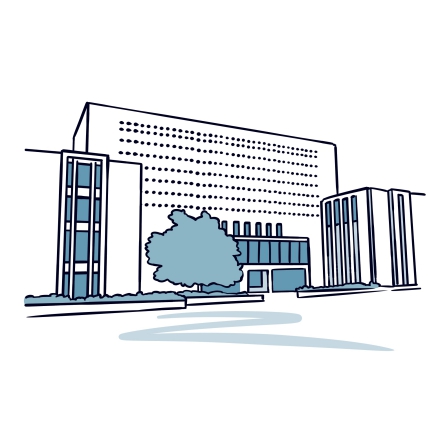
Look to your right—the large building before you is the Library and Archives Canada building. This is where countless works on the federal government and its institutions are preserved, along with numerous records on the Indigenous


If there’s one thing Brisbane excels at, it’s creating perfect backdrops to remember your travels by. For these views, you don’t have to climb dizzying heights or pay a fortune. No, none of that! We’re talking about stunning views shaped by both, nature and humans
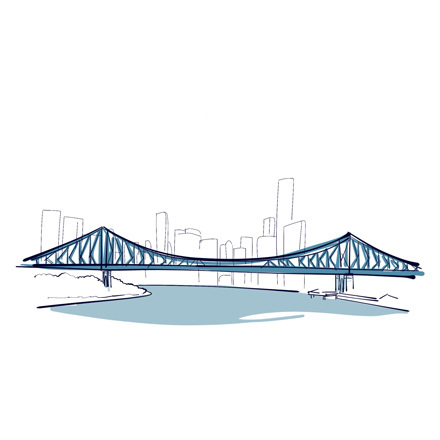
Go ahead and admire the massive steel structure right in front of you. This is Brisbane’s iconic Story Bridge. At the end of the 19th century, after the construction of the Victoria Bridge had already connected the northern and southern parts of the city, many Brisbane residents began calling for
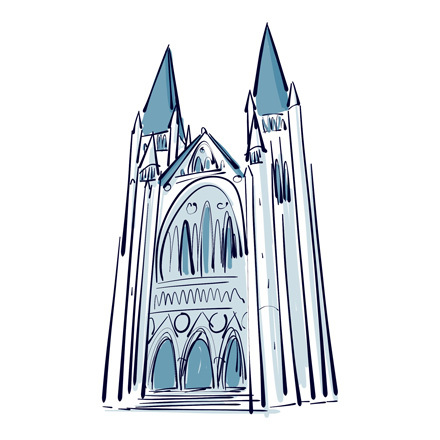
An unparalleled place of culture in Brisbane, St John’s Cathedral is the largest and most striking religious building you will encounter on our tour. While the foundation stone was laid in 1901, it took a staggering 108 years to complete. Throughout this period, close collaboration took place between the clergy

While it may not blend in with the towering skyscrapers around it, the Custom House is a key part of Brisbane’s heritage. Its Victorian architecture, grand colonnades, portico, and copper dome, transports us straight back to the 19th century. At that time, this Australian city was experiencing rapid growth, prompting the government of Queensland
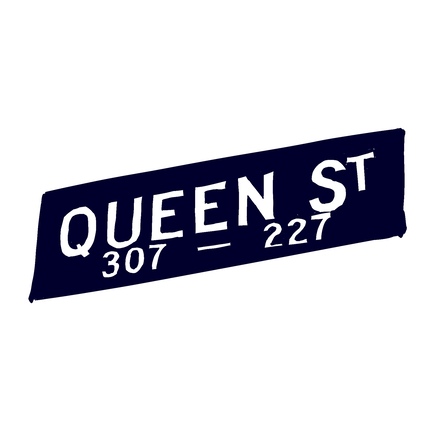
As you wander through the city, you'll soon realise that getting lost in the heart of Brisbane's CBD—the Central Business District—is almost inevitable. First, it's really big. Second, all streets look quite similar, aside from a few skyscrapers. So, to find your way around, you'll have to rely entirely on street names
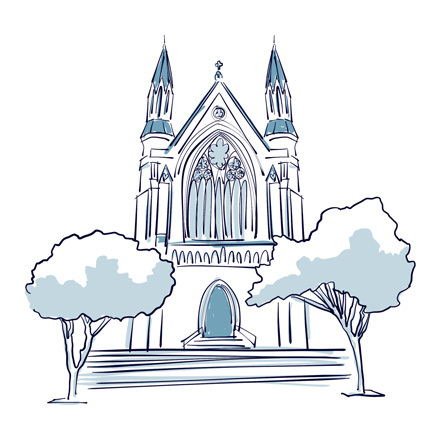
St Stephen’s Cathedral stands as a remarkable and rare piece of history in Brisbane. Just like most cathedrals, its construction spanned over a century, from its first stone in 1860 to its final additions in 1980. Its large dimensions, which were highly discussed in its design phase, allowed it to accommodate the growing number of worshippers
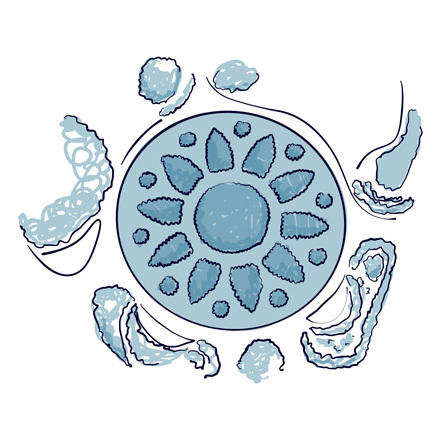
Contrary to what you may think, Brisbane isn’t all about skyscrapers. This Australian city has various green spaces where various plant species thrive, much to the residents’ delight. Right on the edge of the CBD stands the most popular of them all: the City Botanic Gardens. Listed on the Queensland Heritage Register, these gardens date back to 1828
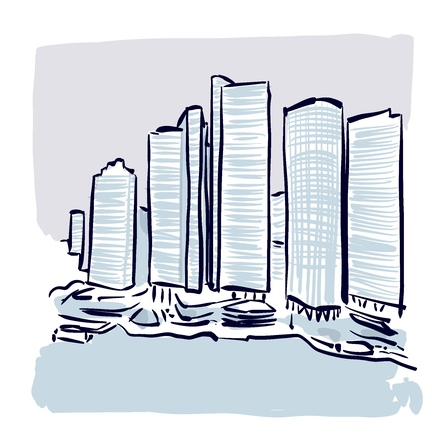
Wherever you wander in Brisbane, sooner or later, you'll find yourself in the CBD, or the central business district, – an unmissable part of your tour! Every street of this urban and economic hub has Brisbane’s culture running through it. More than 4,000 businesses, 1,000 local and international retailers, and 200 bars and restaurants

As you stroll along the Brisbane River, we’ll tell you a bit about the city's cuisine... There are some tasty things worth knowing! Queensland’s capital is very close to the sea, meaning it has access to delicious fresh produce while also offering up the wonders of the ocean: oysters, prawns, and all kinds of fish

Why do you think Brisbane is known as the "River City"? The answer is right beneath your feet. As the longest river in Southeast Queensland, the Brisbane River starts in the Australian Cordillera and flows 344 km westward into Moreton Bay. Given its winding path through Brisbane, it connects the city's central districts

A perfect example of Australia’s relaxed lifestyle, South Bank Parklands is a fantastic place to explore—especially on sunny days. Which is pretty much all year round in Brissie! Located in the heart of the city, and evidently on the south bank, this site was originally developed to host the 1988 World Expo.

So, we’ve already told you that Brisbane is Australia’s third-largest city, home to over 2.5 million people, and named after a former governor of New South Wales. These facts probably won’t help you impress your friends... But don’t worry, we’re not done yet! Before the British colonised Brisbane in the 19th century, it belonged to the Aboriginal Turrbal people

There’s truly no better place than here to capture your visit to Australia’s third-largest city. Designed and installed in 2014 for the G20 Leaders’ Summit—the intergovernmental forum of the world’s major economies—the Brisbane sign was only meant to be here temporarily. However, due to its growing popularity among both locals and visitors
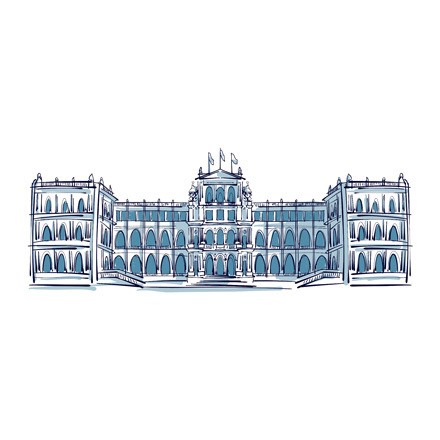
A majestic appearance, a precious name, and a rich history, the Old Treasury Building has it all. The building was originally designed in 1886 following a competition for the construction of "new public offices" on Treasury Square. The Prime Minister, the Colonial Secretary, and the other future occupants had to wait ten years for the work to be completed
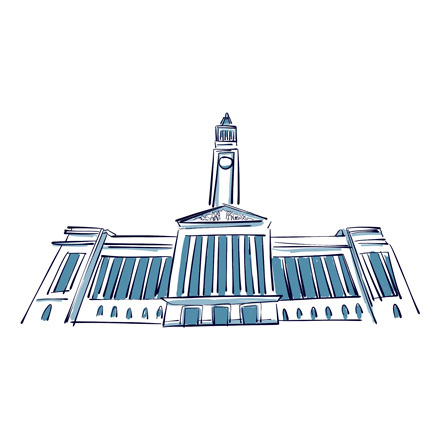
While 2020 marked its 100th anniversary, Brisbane City Hall hasn’t turned into an old relic, but rather into an architectural icon. Located at the heart of the city it took 10 years of construction, and nearly a million pounds, to be fully completed. At the time, it was one of the most expensive buildings in the country and the second largest

A picturesque landmark set against a modern backdrop, the Albert Street Uniting Church holds huge significance in Brisbane. Its inauguration in 1849, under the leadership of John Petrie, the city's very first mayor, marked the introduction of Methodism to the neighbourhood and beyond.
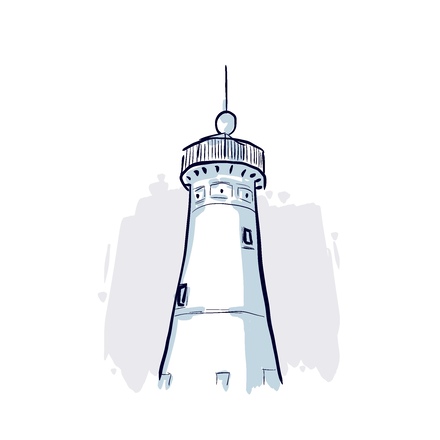
A windmill right in the middle of the city? This may be hard to believe... But Brisbane is full of surprises! Wingless but rich in history, the Old Windmill is loved by both tourists and locals. But did you know that behind the oldest building in Queensland lies a strange and dark past?
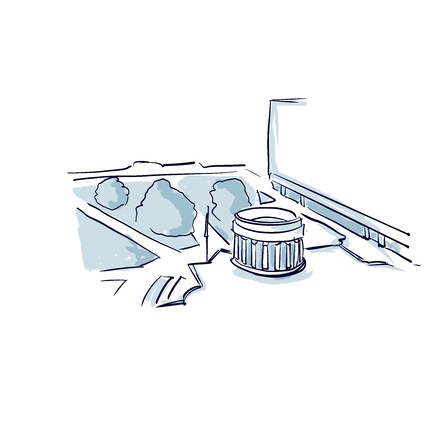
ANZAC Square is a place of remembrance for the whole of Brisbane and Queensland. Located at the junction of two main roads, this vast square recognises those who risked their lives by serving the nation. A series of memorials surrounds this magnificent neo-Greek mausoleum, erected in 1930.
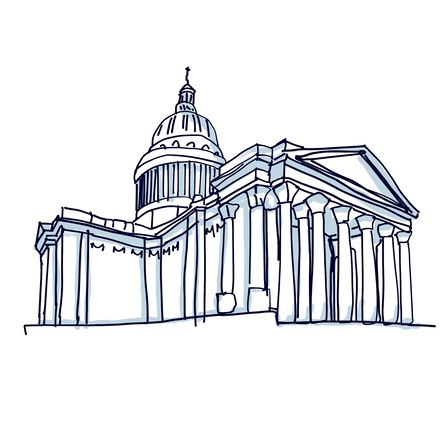
The impressive monument before you is none other than the Pantheon! In 1744, when Louis XV was gravely ill, he vowed to rebuild the Church of Sainte-Geneviève if he ever recovered. She was Parisians' favorite saint at the time, and her relics would...
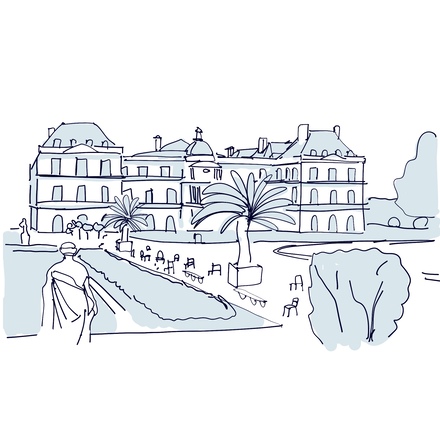
If you've ever been to Florence, chances are you'll have flashbacks when visiting the Luxembourg Gardens. Inspired by the Boboli Garden, they were created for the Florentine queen Marie de Médicis. Half the garden is in the formal French style, and the other half in...

We're heading for the Place de l'Estrapade, a spot that's become pretty famous thanks to Netflix's hit show "Emily in Paris." If you're a fan, you'll recognize the characters' favorite restaurant, called Terra Nera in real life, and the protagonist's favorite...
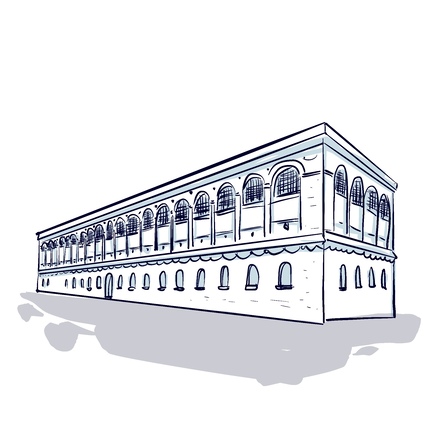
As you stroll past the Sainte-Geneviève Library, you're sure to notice the names engraved in stone. There are 810 of them! These aren't just random inscriptions; they're the authors of the library's very first books. As for the building, it's a fine...
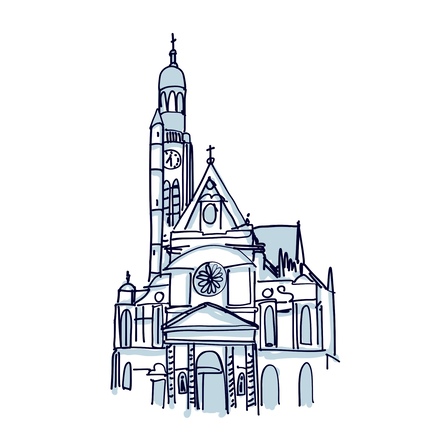
Just a few steps away from the Panthéon, you'll find the Church of Saint-Étienne-du-Mont. It's a real eye-catcher, with its flamboyant Gothic style and unique bell tower. The present-day building dates back to the 16th century, but its history goes back...
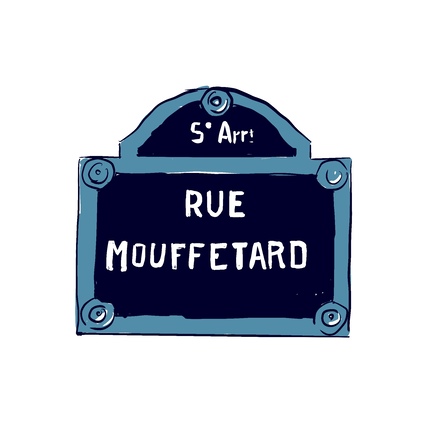
You're now strolling past the Place de la Contrescarpe, a spot made famous by the singer Jacques Brel, towards Mouffetard Street. This street follows an ancient Roman road that linked Paris to Italy via Lyon. It ran along...

As we've mentioned before, we're in the oldest part of Paris. The Lutetia Arena before you is a prime example. Imagine yourself back in the 2nd century, joining 17,000 others to watch a fight or a show in this arena at the heart of Lutetia.

The massive glass building before you is the Arab World Institute. It's more than just a museum; it's a multicultural hub celebrating Arab civilization. Inside, you'll find world-class permanent exhibitions and a fascinating library.
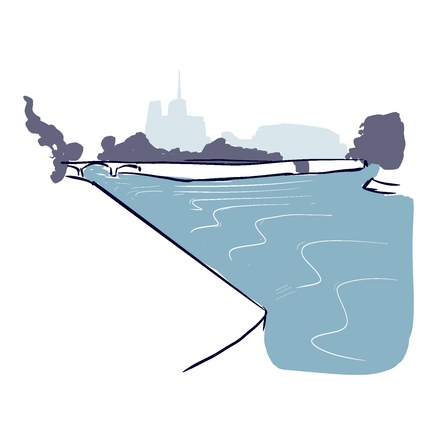
You're now standing on the Port de la Tournelle, the Tournelle Harbour, below the quays of the same name. The name "Tournelle" comes from an old fortified tower that was part of Philip Augustus's fortifications. Back in the day, there...
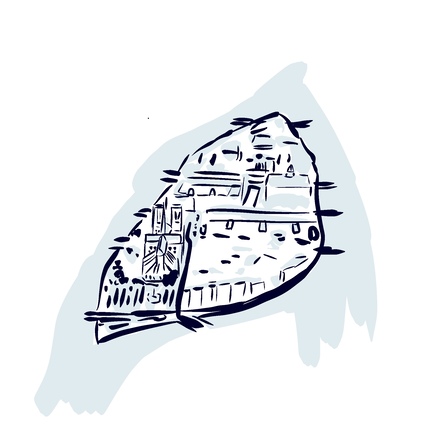
A leisurely stroll along the Seine is a must for any visitor to Paris. From here, you have a stunning view of the Île de la Cité. If you haven't already, be sure to check out our Louvre itinerary, which takes you across the island to iconic sights...
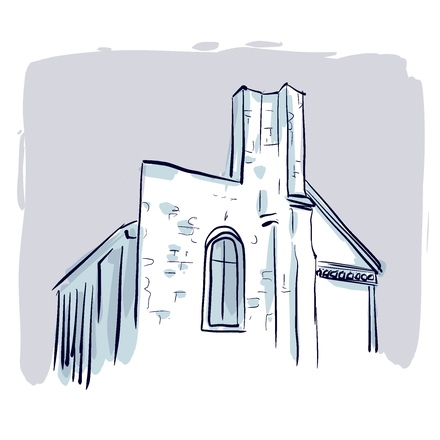
We're now strolling past the Church of Saint-Julien-le-Pauvre, aka Saint Julian the Poor. It’s one of the oldest churches in Paris! It was built in 1165 on the ruins of an even older church destroyed by the Normans in the 9th century.
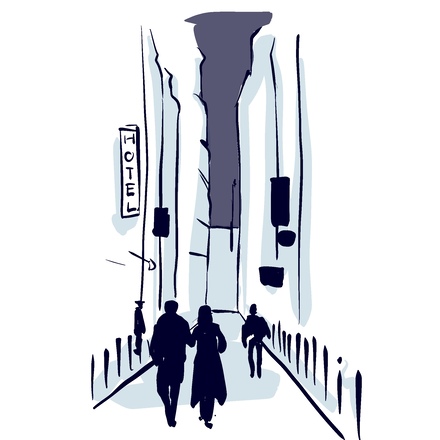
This little pedestrian street leading to Saint-Michel Square is as quaint as it gets! It has long been one of the most beautiful streets on the Left Bank, and was named Huchette after the store that stood at number 1 back in 1284, "La Huchette d'Or."
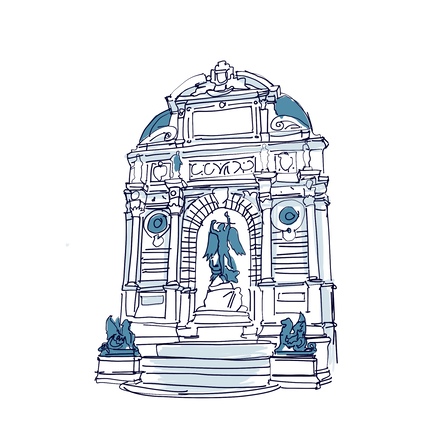
Imagine yourself back in time, for then, you'd be standing within the ancient city walls, near the Saint-Michel Gate, which stood a little further south, marking one of the entrances to the medieval city. Paris was much smaller back then, its center nestled...

You're strolling down a street steeped in history. Many others have taken this path before you over the centuries. Saint-André des Arts Street existed even in Roman times, under a different name. In 1211, it was named after the Church of Saint-André.

The ruins of the Cluny Thermal Baths, which you can see right here, in the center of town, date back to the 1st and 2nd centuries AD. In Roman times, they covered some 6,000 m². Today, this is all that's left, yet still, these are the best-preserved...
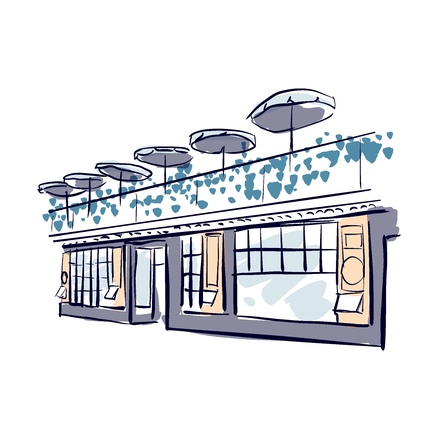
You're now strolling past the Saint-André Commerce Courtyard and the Café Procope. This passageway was built along the line of the ancient ramparts constructed by Philippe Auguste, one of the seven walls that have protected the city over the centuries.
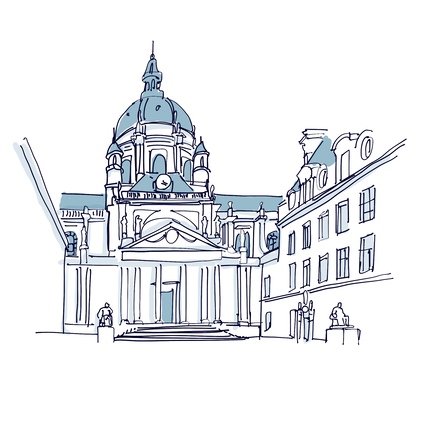
We're now standing at the corner of a massive building that takes up the whole block. This is the new Sorbonne University building, constructed by architect Henri Paul Nénot in the late 19th century. But the history of Sorbonne University goes much further back.
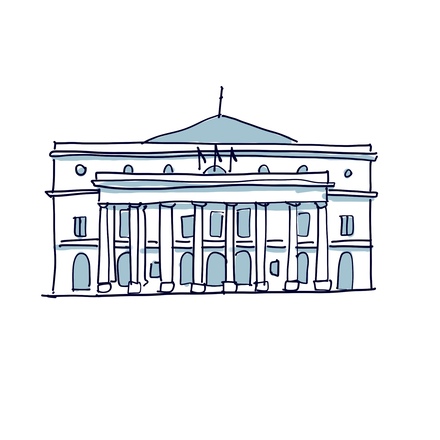
The Odéon Theater, located at the end of Racine Street, was founded in 1782 as the Théâtre Français to house the Comédie Française theatre company. The venue opened its doors on April 9 in the presence of Marie Antoinette, and saw the triumphant...



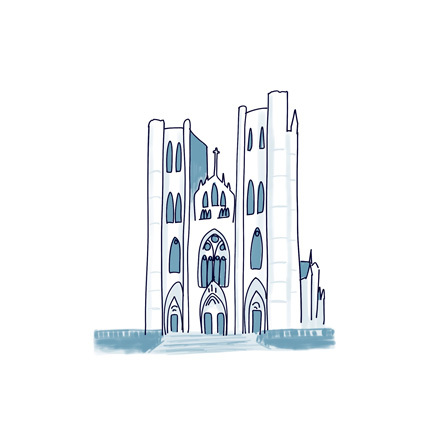
Here you are in front of the Cathedral of St. Michael and St. Gudula. This Gothic structure dates back to the 13th century and was built over the ruins of a former Romanesque church. It actually took two centuries to build
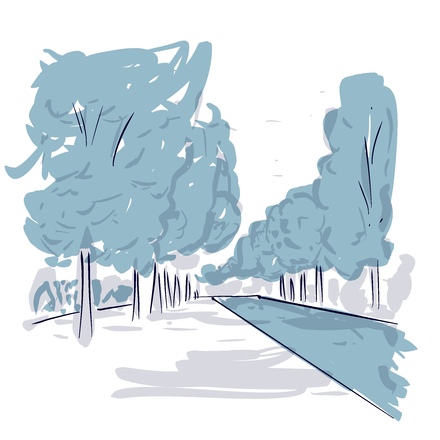
As you head toward the Royal Palace, you’re walking through Brussels Park, which was once known as the Royal Park.This is the oldest park in the city and also the first one to be declared public. It was built in same time as
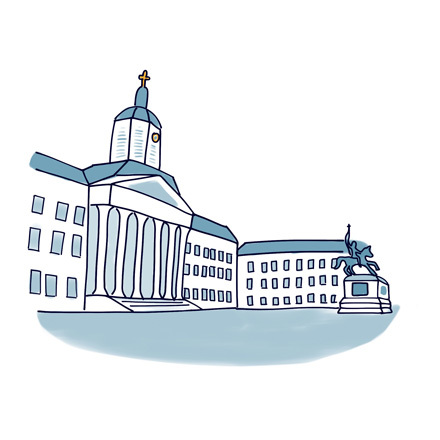
The Royal Square, surrounded by elegant mansions and the Church of Saint-Jacques-sur-Coudenberg, was built during a major urban redesign in the 1770s. Hard to believe it now, but you’re actually standing on a hill that once
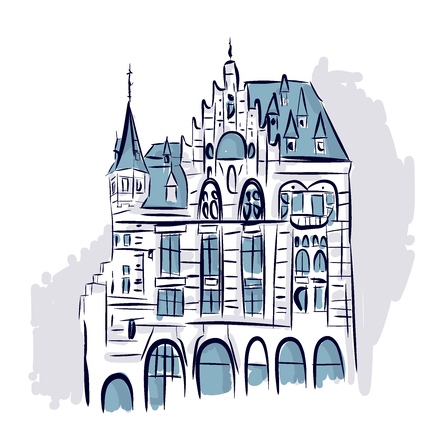
Not far from the MIM, you’ll find another masterpiece by architect Paul Saintenoy: the Pharmacie Anglaise! Now repurposed as a cocktail bar, it has preserved its original beauty. Who knew that Charles Delacre, the man behind

You’ve probably noticed that you’ve reached the top of Brussels, where the Royal Palace stands. Right in front of you, the Mount of the Arts seperates the Upper Town from the Lower Town. On this urban complex, you’ll find the
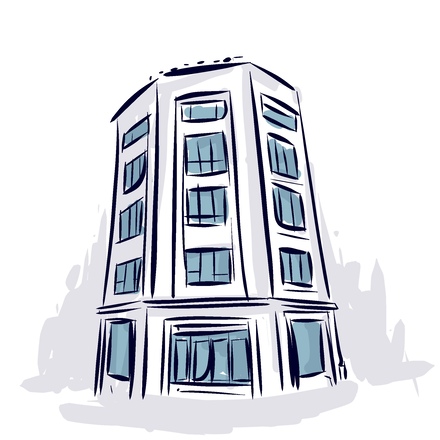
You’re passing by the House of Comics. If you’re a fan, head to the Comics Art Museum, on Rue des Sables. It’s housed in a splendid shop built by Victor Horta, inaugurated in 1906. At the same time, comic books had just
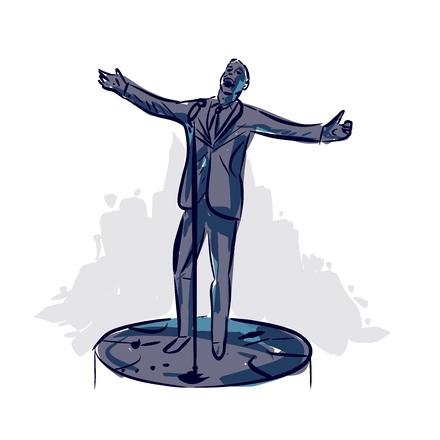
When I told you Belgium was full of artists, I wasn’t kidding! Here’s “L’Envol,” a statue honouring the great Jacques Brel, a Belgian artist born in Schaerbeek in 1929, and who passed away in France at only 49. He is an icon
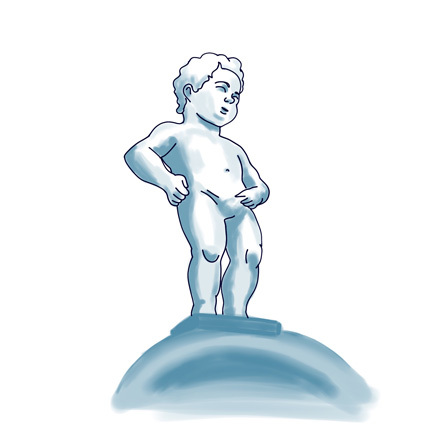
You see that crowd gathering at the corner of the street? No surprise, you’re now face to face with Belgium’s little celebrity: the famous Manneken Pis. You probably imagined him a bit taller, but he’s only 60 cm! The statue
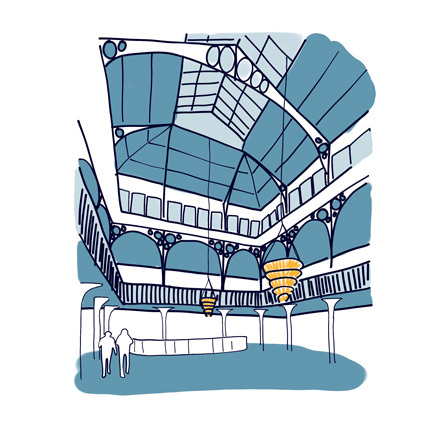
Halles, which are covered markets, are often a popular meeting point in cities, and Saint Géry is no exception. With a beautiful Flemish neo-Renaissance architecture, it has hosted markets and loyal customers since 1881. At
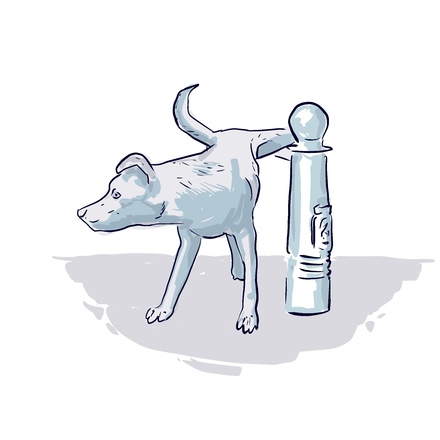
After the Manneken-Pis and his sister Janneken-Pis, here’s their dog: Zinneke Pis! An additional member to this bronze family, it serves as a great reminder that Belgians are quite the jokers! The person behind this
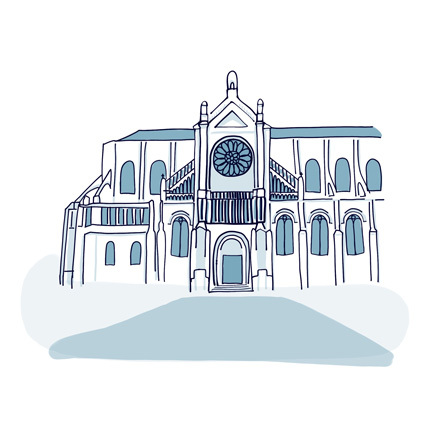
Sainte-Catherine Square sits at the heart of the lively neighbourhood that shares the same name. Here, creativity and culture are under the spotlight. The church you see over there was built on the site of a former dock from
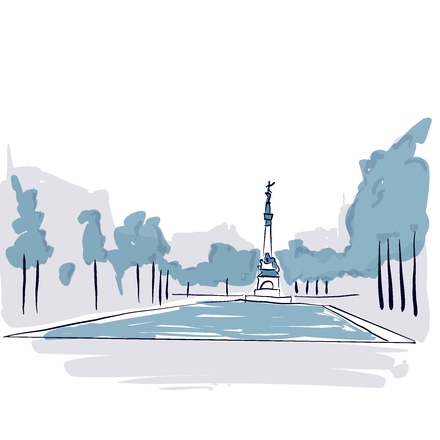
You get the strange feeling here of standing on a quay even if there isn’t any river in sight. The basins and the alignment of façades are a clear reminder that not so long ago, the port of Brussels reached all the way to
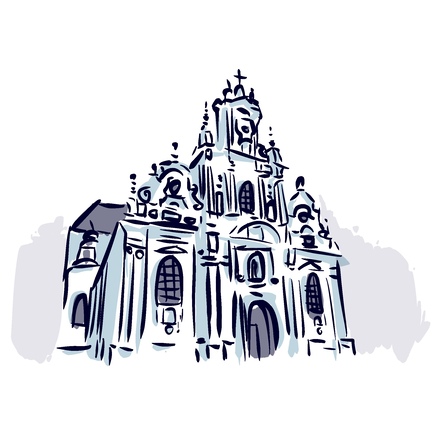
The church before you replaces the former chapel of the largest beguinage in Brussels, dating back to the 13th century. The beguines were not exactly nuns. They were women—usually single or widowed—who were allowed to live in a community under monastic
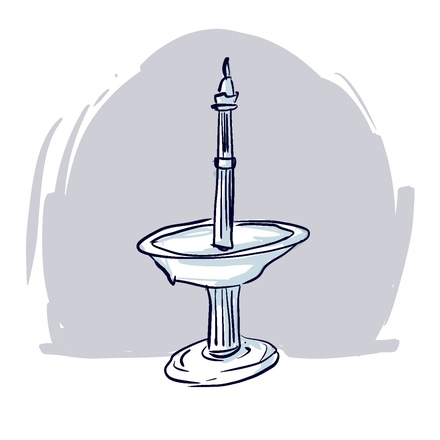
This little square starting on Rue au Beurre is well worth your attention. First, you have the Brussels Stock Exchange just behind you, housed in a beautiful neoclassical building. On your left is the Church of Saint
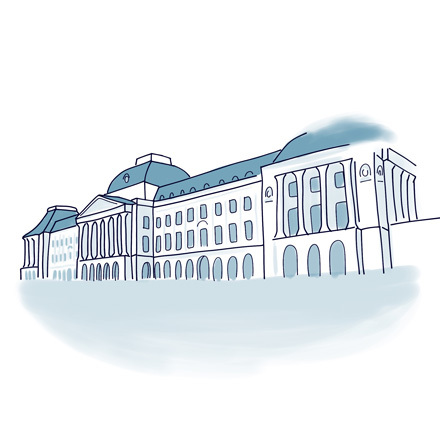
Unsurprisingly, the Palace Walkway takes you through the park towards the Royal Palace. So let’s start with a quick refresher; yes, Belgium is a monarchy, a constitutional hereditary monarchy to be exact, which means that
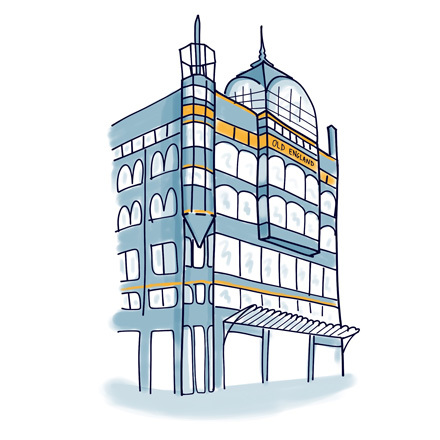
If Art Nouveau is your thing, then you’re in for a real treat when visiting Brussels! Let’s start with this magnificent building. Once the Old England department store, it was designed by architect Paul Saintenoy. Today, it
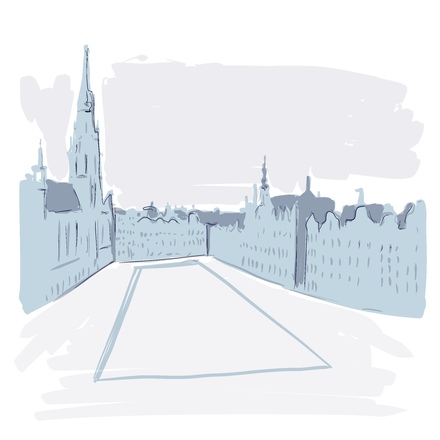
It’s okay to feel small here — the Grand Place is designed to impress. It rises up around you, wrapping you in its stunning architecture and centuries of history. There’s a real sense of majesty here— and you’re right at the
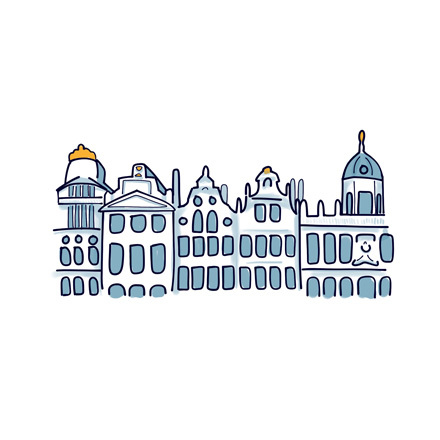
Each of the guild houses on the Grand-Place has more to offer than just lovely decorated facades. They’re all classified as historic monuments as a whole—but know that each one has its very own set of fascinating stories. If
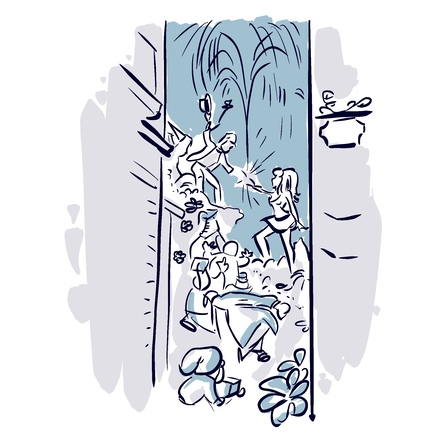
Let’s stop here to admire this firework mural. You’ve probably noticed that, here in Brussels, walls are often covered in paintings—a great way to honour Belgian comic art. Here, you’re face-to-face with Olivier Rameau and
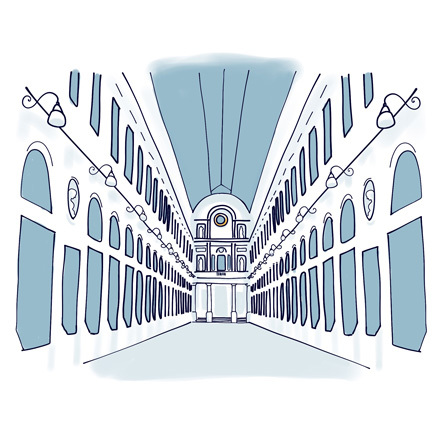
You’re now stepping into the Royal Gallery of Saint Hubert, divided into three sections: the Queen’s Gallery, where you are now, the King’s Gallery, and the Prince’s Gallery. Locals like to call them Brussels’ Umbrella. Built

Did you know that Belgian beer is listed as UNESCO Intangible Cultural Heritage? That’s right—beer really means business here. We’re passing in front of the Delirium, a Belgian institution. This bar is known for having one of

There’s so much to see in this busy street corner that it’s worth stopping for a few minutes. Soak in the colors, the unique façades, and the lively atmosphere emanating from the surrounding bars and shops. Look back in the
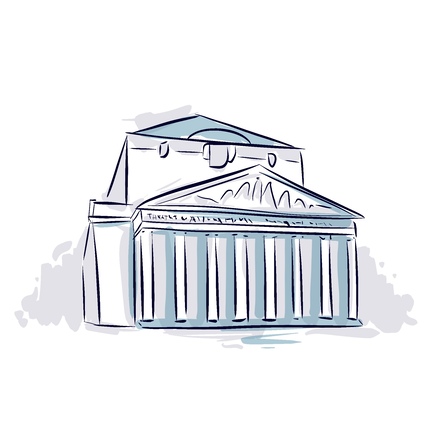
You’ve now arrived at Place de la Monnaie, standing in front of the impressive opera house that shares its name. Both the square and the theater are named after the building that once stood here, the Hôtel de la Monnaie. This
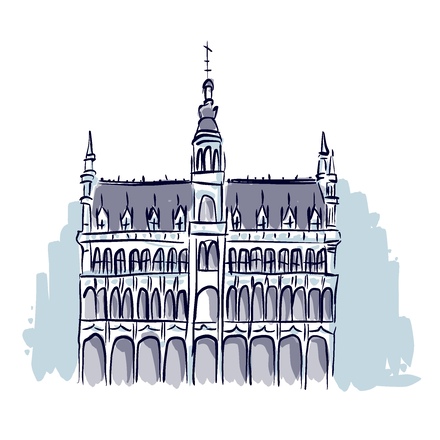
Here we are in front of the King’s House, a neo-Gothic structure that echoes the Town Hall opposite. It was first built in 1536, then renovated in 1873. Back in the 15th century, it used to be the administrative headquarters
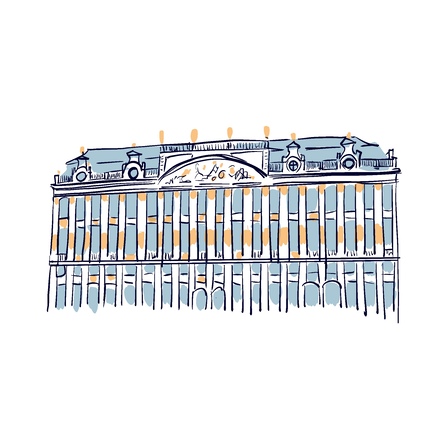
On Grand-Place, you’ll find another impressive architectural ensemble: the House of the Dukes of Brabant. An enormous structure, since it takes up the entire east side of the square. Behind a single monumental façade, it
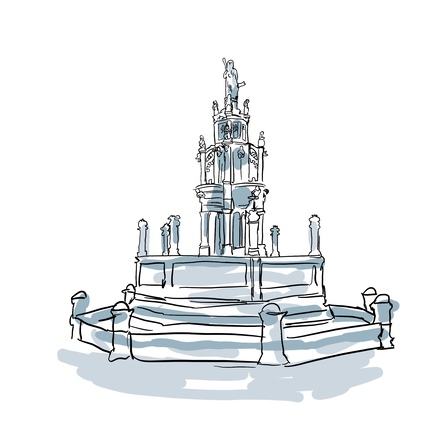
On this small square, once known as Place de la Poterne, the Amboise Fountain features a statue carved from Volvic stone — a volcanic rock widely used throughout the Puy-de-Dôme region. It comes from the lava flows of La Nugère, one of the volcanoes in the
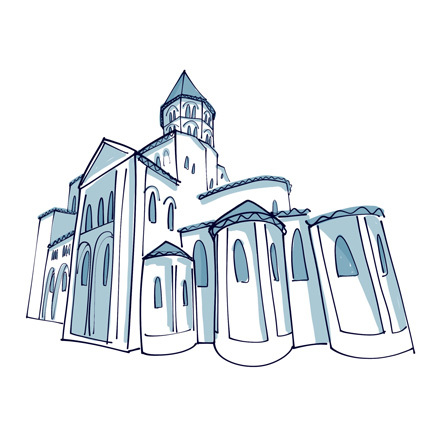
Built in the elegant Romanesque style typical of the Auvergne region, the Notre-Dame-du-Port Basilica takes its name from the neighborhood where it stands — the historic Port district. A UNESCO World Heritage Site, the basilica is part of the pilgrimage routes to

You are standing on one of the oldest squares in the city — Place Delille. This square has been part of city’s life for nearly a thousand years. Back then, it was known as Place Champet, and it was where the Royal Gate stood — the main entrance used by kings when
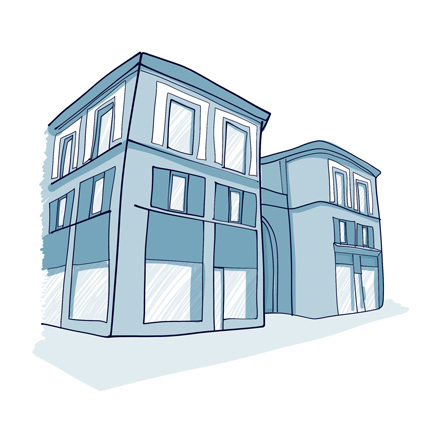
We owe this beautiful private mansion to Antoine de Montrosier. Well — he didn’t build it himself, of course — but it was built for him. The Hôtel Montrosier de la Vilatelle dates back to the mid-18th
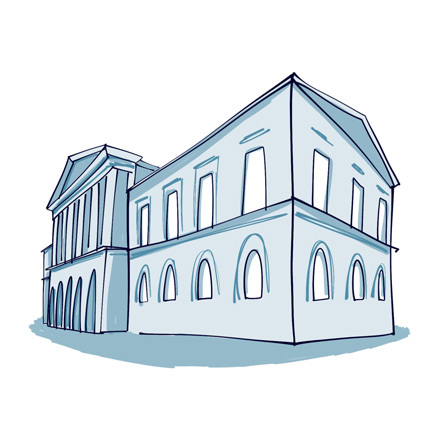
This impressive building is none other than Clermont-Ferrand’s City Hall. It was built in the 18th century from Volvic stone, and stands on the site of an earlier, historically significant structure — the Palais de Boulogne. That former palace, gifted to the city by Catherine de’
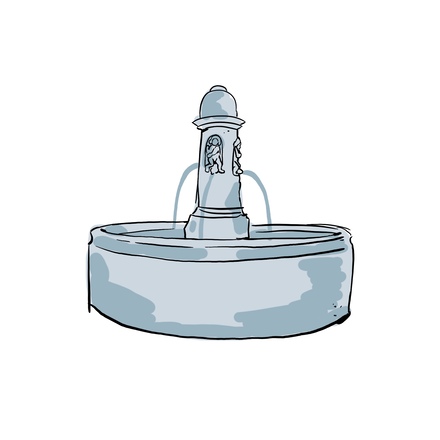
Listed as a Historic Monument since 1987, the Terrail Fountain dates back to the late 17th century. It stands on the square that shares its name, and originally decorated one of the main entrances to the city during the Middle Ages. An earlier version of the fountain was
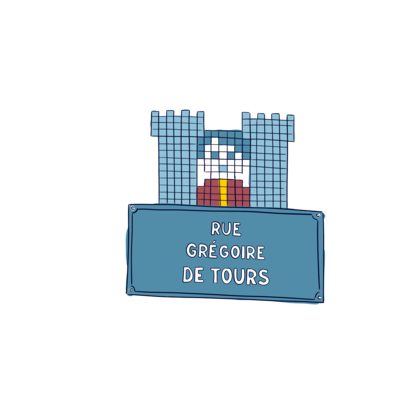
If you've got a sharp eye, you might have noticed small mosaics dotted around Clermont-Ferrand's walls. Turn around and look at the building behind you—you're seeing work by the city's most famous street artist. This colorful piece is a Space Invader, inspired by the
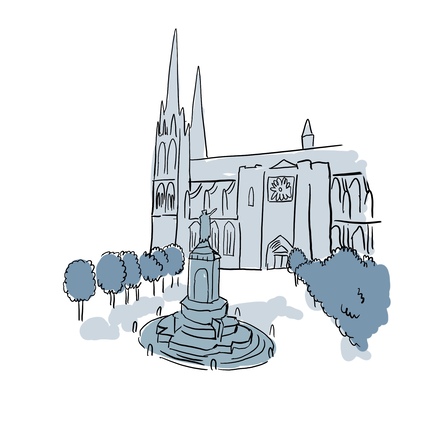
A landmark square in the city, Place de la Victoire is best known for the stunning view it offers of Clermont’s majestic cathedral. It’s also one of the most important squares in the city — and it’s earned that title. Over 2,000 years ago, this very spot was home to the Roman
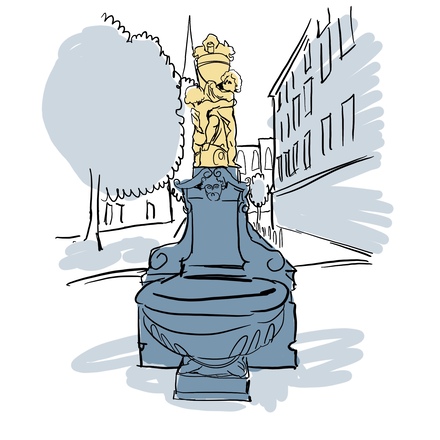
Just a short walk from Place de la Victoire and the cathedral, Place Royale features a beautiful fountain inspired by Italian Renaissance design — the Saint-Genès Fountain. Created by Antoine Durenne, the sculpture shows two children holding up a chalice — a sacred

Carved from the dark volcanic stone of Volvic, this lovely church, built by the Carmelites in the 14th century, still watches over the medieval quarter of Clermont-Ferrand. Listed as a Historic Monument since 1961, it showcases the Southern Gothic style and features
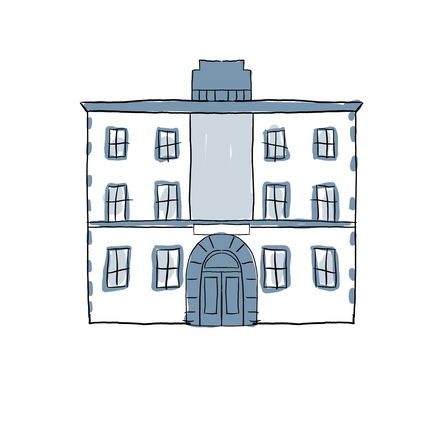
Named after the man who made it possible, the Henri-Lecoq Museum has stood in the heart of Clermont-Ferrand since 1873. A true museum of science, it is housed in a former private mansion that once belonged to botanist and pharmacist Henri Lecoq. Inside, it holds
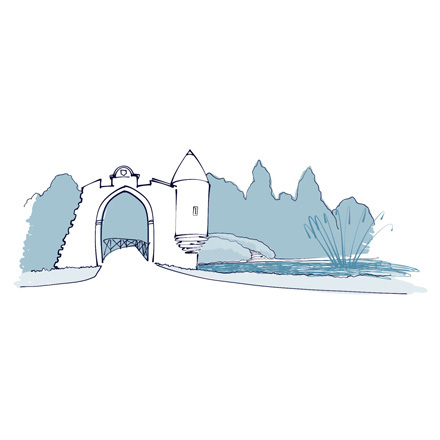
Thanks to the botanist Henri Lecoq, this garden began taking shape in 1863, built around a botanical garden that already stood on the site. First designed as Clermont’s Jardin des Plantes — a public botanical garden — it was transformed into the English-style garden we
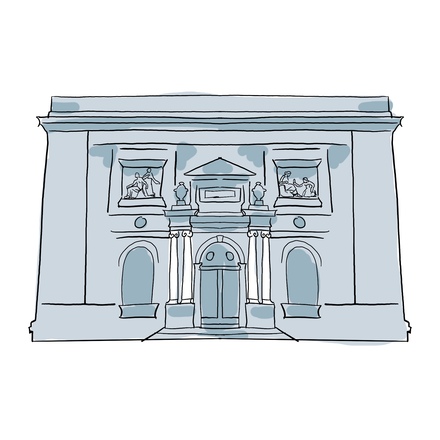
With its stunning neoclassical façade, the Bargoin Museum immediately catches the eye. Inside, you’ll find two main collections: one focused on archaeology — with discoveries made in and around Clermont-Ferrand — and the other on textile arts from around the

You’re now in Assas Square — just a few steps from Place de Jaude. Take a closer look at the unusual white arch in front of you. It’s actually a fountain, and if you look inside, you’ll spot a striking golden statue of Neptune — the Roman god of water and springs. He’s
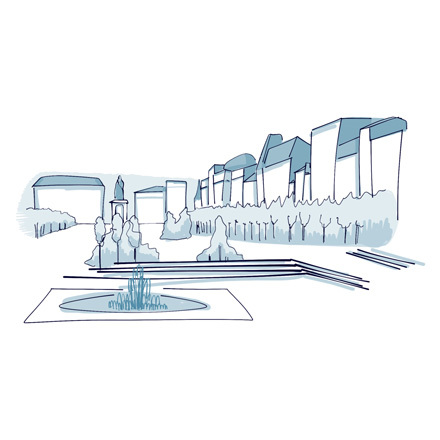
Imagine this… Two thousand years ago, Place de Jaude was already a bustling hub of daily life. Back in Roman times, it served as a busy marketplace — a key crossroad, nearly as important as the main forum located over on Place de la Victoire. Yet things changed ; during
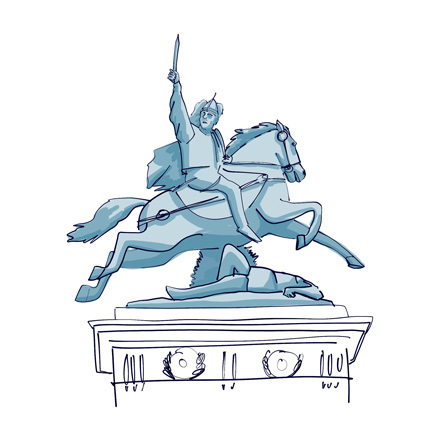
Time for a bit of Gallo-Roman history! You can’t visit Place de Jaude without stopping at the impressive equestrian statue of Vercingetorix. It was created by Auguste Bartholdi — the same artist behind the legendary Statue of Liberty in New York. But let’s get
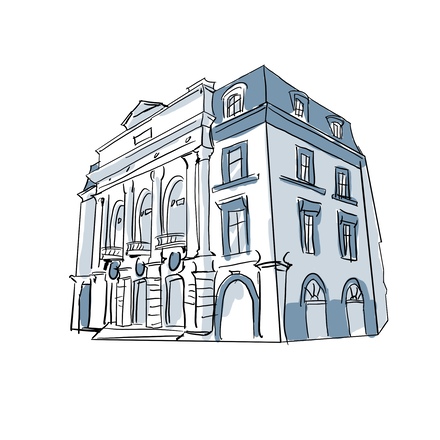
Look to your right — you're now facing the opera house! Built in the 1890s, the opera house brought new energy to Place de Jaude, turning it back into a popular spot for locals to meet and stroll. The building was designed by architect Jean Teillard, who also worked

You’re now on Rue des Gras — one of the most iconic streets in Clermont-Ferrand’s historic center. Lined with shops nestled in former townhouses, this street offers a stunning view of the cathedral’s two black towers, rising nearly 100 meters into the sky. It’s the perfect

A true symbol of the city, Clermont-Ferrand Cathedral took more than 700 years to complete. It was soon nicknamed the coalmen’s cathedral, thanks to its striking all-black appearance. Wrapped in deep black stone, the cathedral was built in the 13th century on the
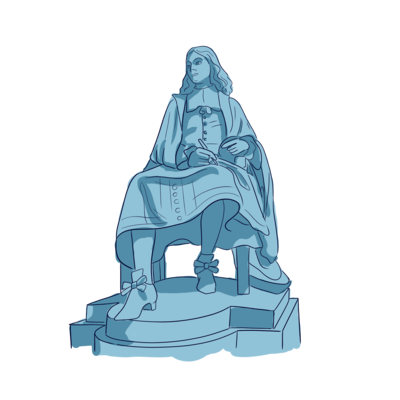
The square you’re walking through is named after him — and just to your right, you’ll see a statue in his honour. Blaise Pascal is without a doubt the most symbolic figure of the city. So allow me to take a moment to tell you a bit about his life. Born in Clermont in
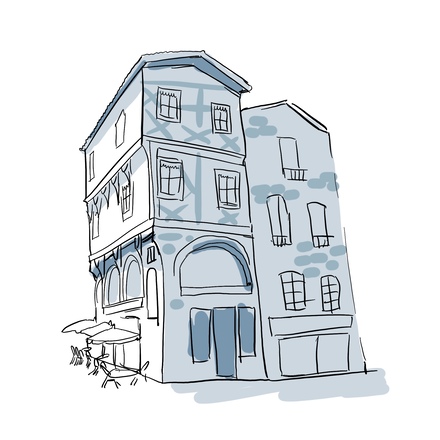
You’re now in the heart of one of Clermont-Ferrand’s two historic districts, built around the hilltop where the cathedral now stands. I say one of two because the other is Montferrand, located to the northeast of the city center. That district is known for its narrow
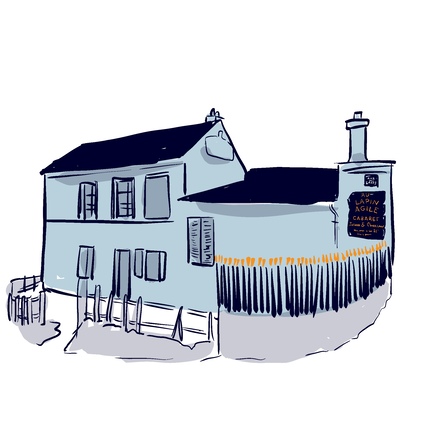
You're now looking at the Clos de Montmartre vineyards. Can you believe it? Vineyards right in the heart of Paris! And they're not new! They've been around since the year 944! That's how old they are, according to historical records.
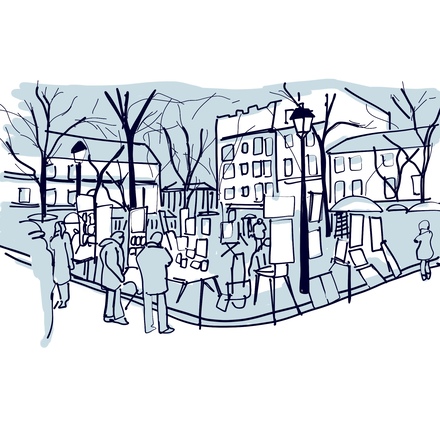
Welcome to the bohemian heart of Paris. Painters, songwriters, cabarets, easels... it's all here. This is where the myth of the starving artist was born, at a time and place when lives were fueled by art and love, not money. Rents were cheap, wine flowed freely, and artists...
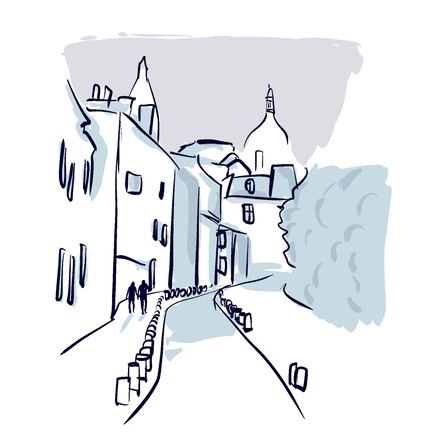
You're walking down the charming rue de l'Abreuvoir, the Watering Trough Street, one of Montmartre's most photographed streets. Its bucolic feel and the iconic pink house make it a must-see for any visitor. This street has been around since 1325, under the name of...

Montmartre pays tribute to the famous singer Dalida, with a statue of her by sculptor Alain Aslan, located here, in a square named after her. You see, this was her favorite neighborhood when she first came to France. We're actually just a stone's throw from...
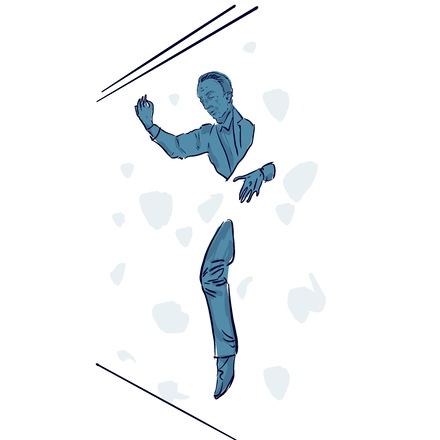
You've just arrived at the Marcel Aymé Square, where you'll come across a strange statue protruding from the wall. It's the Passe-Muraille, the passer-through-walls, a tribute to Marcel Aymé, who lived a stone's throw from here on rue Norvins.

Notting Hill – I mean, Villa Léandre – is a charming dead-end street lined with beautiful Anglo-Norman houses. It even has its own version of 10 Downing Street, home to the British Prime Minister. It's London's most famous address!
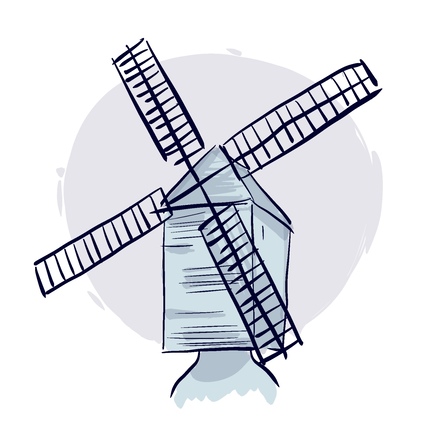
The mill you see above the restaurant here isn't just for show; it's real and has quite a history! Believe it or not, there used to be 30 mills on the Montmartre Hill. In 1812, a miller named Mr Debray, owner of two mills, decided to open a little canteen below one of them...
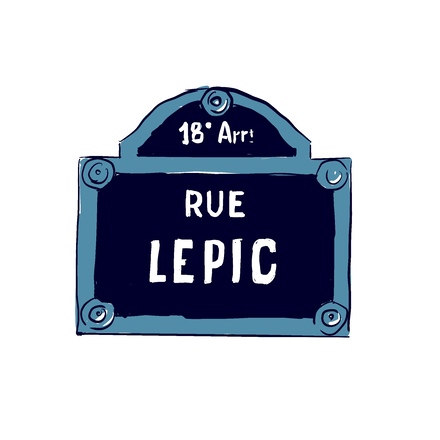
You're back on Lepic Street, which winds its way up the hill, linking Place Blanche to Place du Tertre. This iconic Montmartre street was actually laid out as a tribute to Napoleon Bonaparte. So, what's the connection to the Emperor, and why does the street zigzag so much?
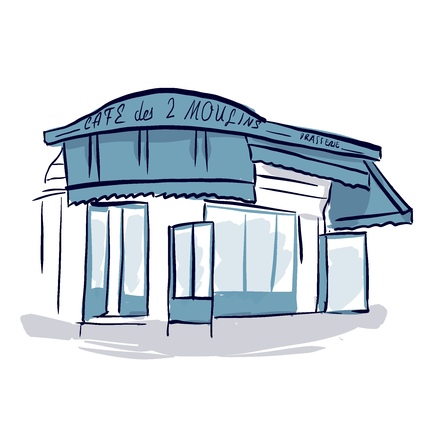
Introducing the Café des 2 Moulins, aka The Two Mills' Cafe. It's located right between the Moulin Rouge and the Moulin de la Galette – hence the name. It's your classic Montmartre café, and it's where Jean-Pierre Jeunet chose to set one of the...
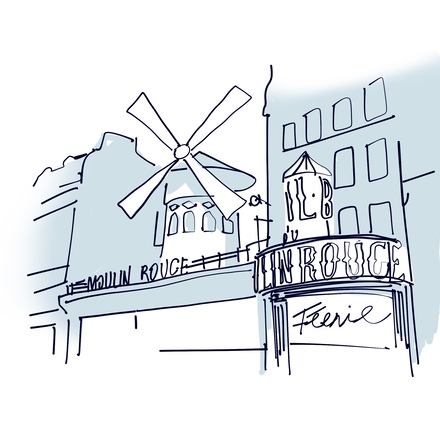
Sure, you've heard of the Moulin Rouge, but what do you really know of its history? The Moulin Rouge opened its doors on October 6, 1889, during the carefree days of the Belle Époque. Its goal was to amuse and entertain in a time of peace and prosperity.

We're now in the very heart of the famous Pigalle district. Today, it might seem like just another tourist spot, but back in the late 19th and early 20th centuries, it was a pretty seedy part of town. In 1881, the “Chat Noir” opened its doors, kicking off the golden age of Parisian cabarets at the height of the Belle Époque.
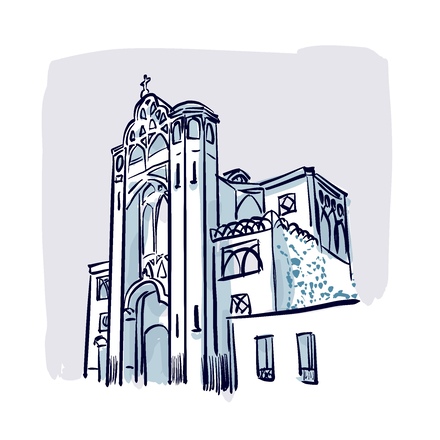
You're now on the Place des Abbesses, the Abbesses’ Square, opposite the only Art Nouveau church in Paris! This short-lived movement, which lasted around 20 years, gave free rein to the creativity of architects, who had been bound by Haussmann's strict uniformity rules until then.

Let's face it, Paris has a way of casting a love spell on you. It'll turn you into a hopeless romantic! It wasn't named City of Love for nothing! Lovers from around the world dream of strolling hand-in-hand along its bridges, sharing a kiss at the Eiffel Tower, or simply sitting on a bench in the Buttes Chaumont.
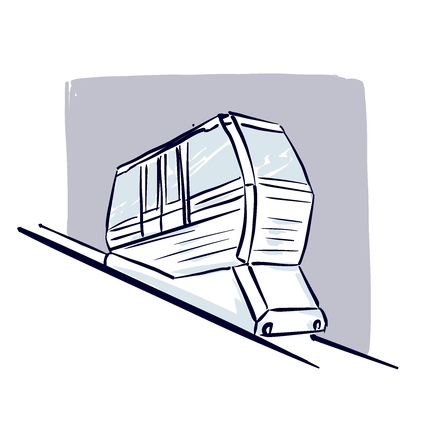
You're now at the foot of the Montmartre Hill. You can see the magnificent Sacré-Cœur Basilica at the top. If you don't want to climb the stairs, you can use a metro ticket to take the funicular, which will take you to the top in less than 2 minutes! It was first put into service in the 1900s and operated on...

There it is, Montmartre in all its glory. The old carrousel in the foreground, the lawns dotted with dreamers, and the beautiful Sacré-Cœur Basilica watching over us. Time for a nice souvenir photo.

You made it! And the best thing about climbing stairs is the view you get at the top, of course! So, take a 5-minute breather and enjoy the stunning views over Paris stretching out beneath you! This is one of the capital's best viewpoints, offering you...
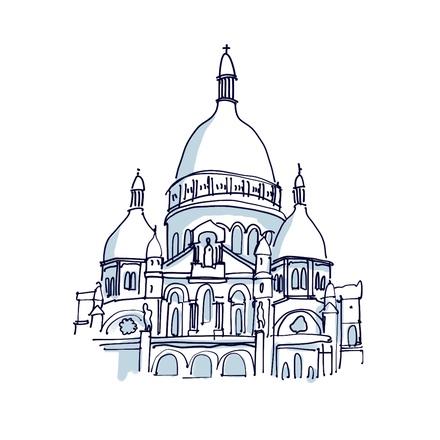
Introducing the beautiful Sacré-Cœur Basilica, all white and unlike any other French church with its neo-Byzantine style and cupolas. But Montmartre was a place of worship long before 1875, the year the church was built. From Gallic druids to Roman temples and...
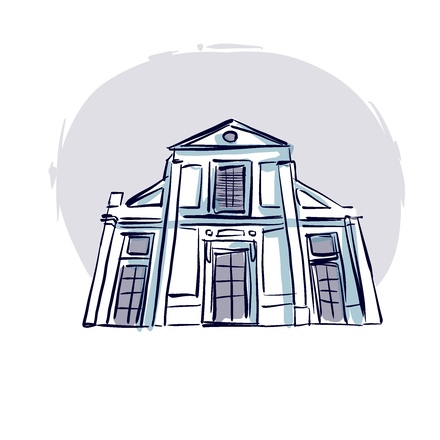
A word about this little church before you, which is so often overshadowed by the Sacré-Cœur Basilica. Construction began in 1134, making it the second oldest church in Paris after Saint-Germain-des-Prés. It was built on the site of a...

While you're on the old fortifications, take in this beautiful view of the Grund district in Luxembourg's lower town. Located right in the centre of the capital, is one of the oldest districts in the city.
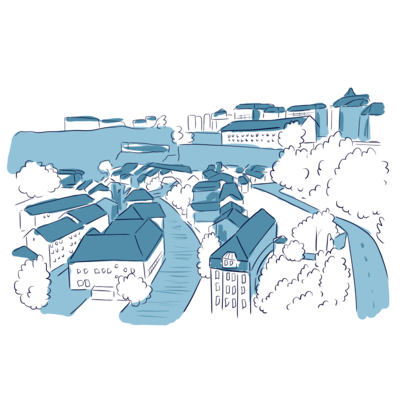
You're now walking along the most beautiful balcony in Europe! Nothing less! As the Luxembourg writer Batty Weber once said.

The 3D-printed statue you see here is the work of Luxembourg artist Serge Ecker. The creation of Luxembourg is closely linked to the legend of Mélusine, who was the companion of Count Sigefroi.

Spanning the Alzette, this small bridge is part of the old fortifications and is the gateway to the Grund district.
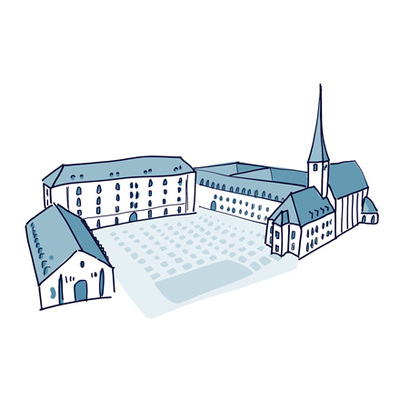
Neumünster Abbey is in the heart of the Grund district. In 1547, the Benedictine monks transformed the former St John's Hospital into a new abbey, as theirs had just been destroyed.
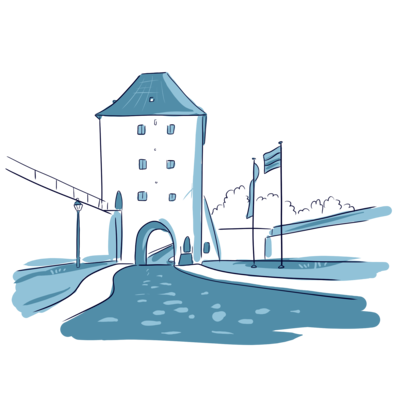
The impressive gateway on your left is the Jacob Tower, also known as the Dinselpuert. It was part of the 15th-century Wenceslas Wall.

We are now surrounded on three sides by the Alzette. This is the Rham plateau, which is now open to the public after 5 years of restoration work.

Take the free Grund elevator, which will take you up to the Saint-Esprit Plateau effortlessly .
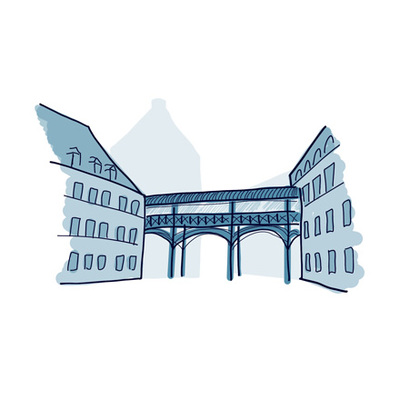
This is Luxembourg's judicial district. In 1234, you would have arrived at the heart of the Saint-Esprit convent, on the square bearing the same name.

A brief comment on the statue you see in the centre of the square. It represents Grand Duchess Charlotte.

This is Luxembourg's Notre-Dame cathedral! It was built in the early 17th century, when the city was under Spanish rule, as a church for the Jesuit College.
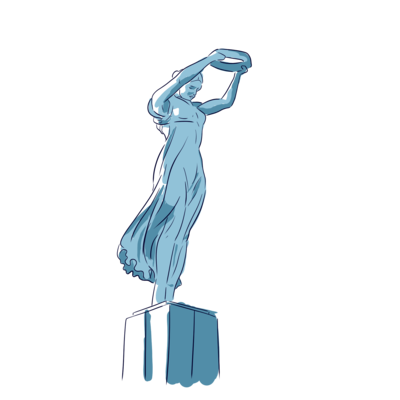
Welcome to the Constitution Square, located on the former Beck Bastion. From here you have a superb view of the Pétrusse valley and the Adolphe bridge.
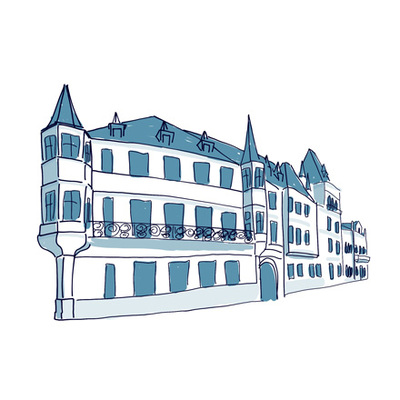
The beautiful sixteenth-century Renaissance building you see here is the Grand Ducal Palace.
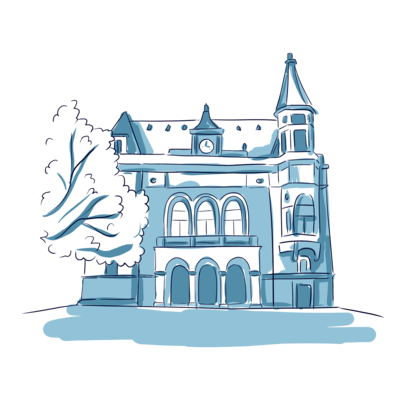
You're now standing on Luxembourg's most popular square, nicknamed the ‘Salon de la Ville’.
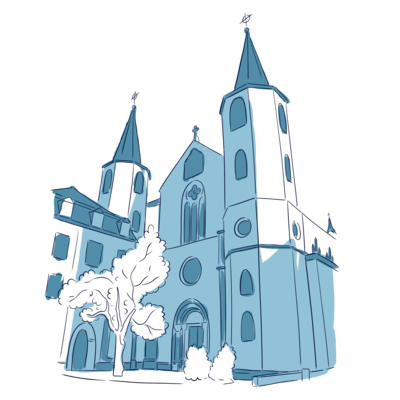
This is the neo-Romanesque church of Saint-Alphonse. Founded in 1856, the history of its construction is closely linked to the Prussian control of the city
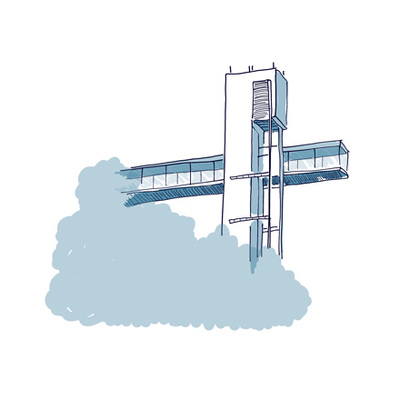
Let's take the new Pfaffenthal Grand Glass Elevator. It is a great way to admire the entire landscape!
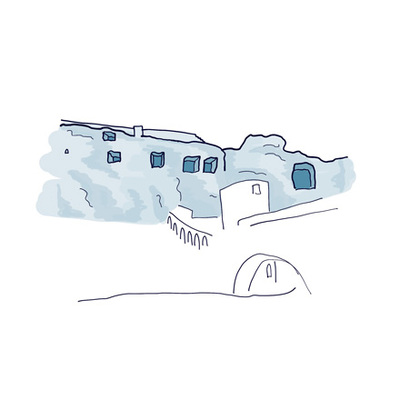
This is the entrance to the notorious Casemates of Bock. They are Luxembourg City's most famous attraction, bringing in over 100,000 visitors a year!
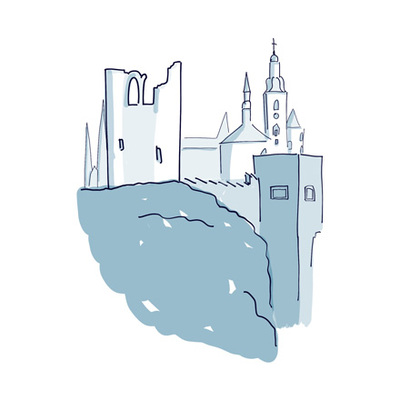
This is where it all began. In 963, the Count of Sigefroi, a descendant of Charlemagne, acquired this rocky promontory from the abbey of Saint-Maximin-de-Trèves and established his castle.
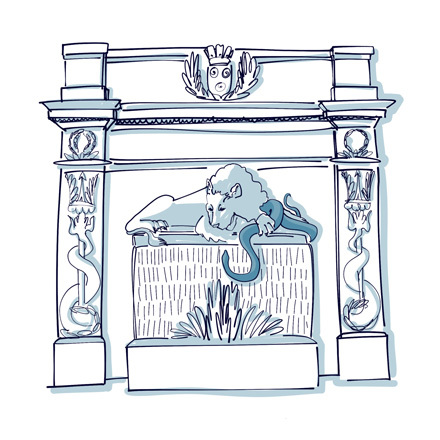
Arriving at the Cymaise square, you will see the emblematic fountain of the lion and the snake. It is also one of the oldest in the city, created by Victor Sappey in 1839 for the inauguration of the Isère riverbanks. This is the same sculptor who created the Fountain of the Elephant, which you may have seen in Chambéry.

You are crossing the Isère river, thanks to the Saint-Laurent footbridge. As you know, it was Grenoble's only bridge until the 17th century. Originally a wooden toll bridge, it was repeatedly swept away by the river and rebuilt countless times. It was, of course, the only access to the right bank, leading to Chambéry
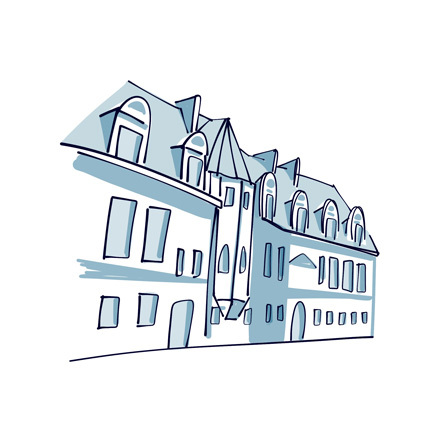
You are now on the Saint-André square, facing the beautiful flamboyant Gothic façade of the Palais du Parlement. The Parliament is a listed building, the oldest part of which dates back to the 15th century. It was the seat of the Parliament of the Dauphiné until the French Revolution. In the 16th century, it was divided into three
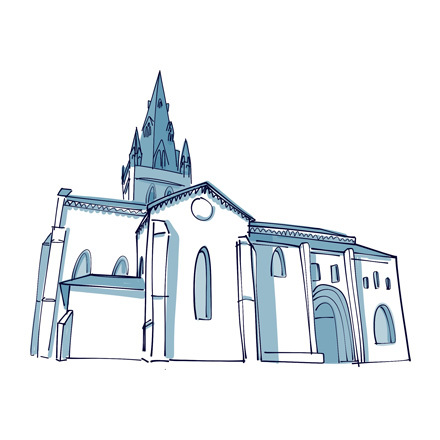
Here, opposite the collegiate church of Saint-André, you are in the heart of the Delphinal district, the seat of power of the Dolphins in the Middle Ages. Here, the Dolphin has nothing to do with the eldest son of the King of France. It is the title of the Counts of Viennois. This church was built in 1228 by Dauphin André to serve
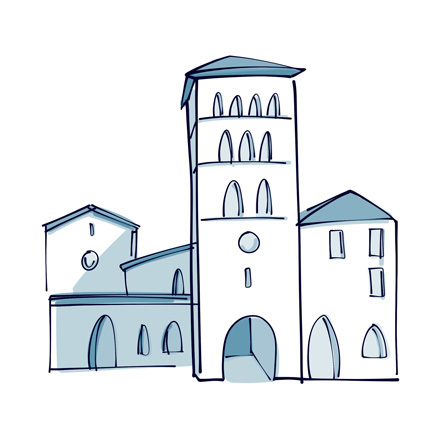
Here you are in front of Grenoble's Notre-Dame cathedral. The bishopric of Grenoble dates back very far! Almost to the beginnings of Christianity! It's worth remembering that Christians were considered outlaws by the polytheistic Romans and were often martyred in Rome. In 313, Emperor Constantine finally granted them
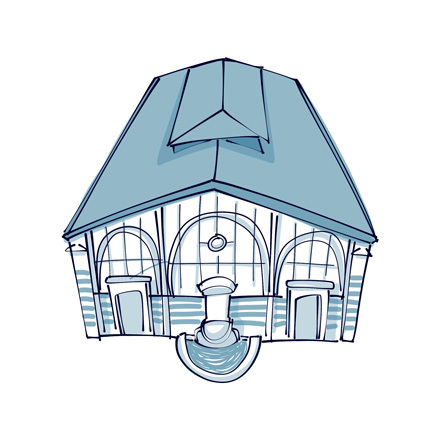
Now, onto gastronomy and local products! France is explored through the flavors of its various regions, and the Dauphiné is no exception when it comes to high-quality local products. Built on the site of the former Sainte-Claire convent, this beautiful covered market has been a listed building since 2007.

This is Grenette Square. Until the end of the 14th century, you would have been standing outside of the city walls, at the foot of the Gallo-Roman enclosure. At that time it was known as the “Granaterie Square”, because of the important grain market that took place there.

As you reach the square you will be facing the Saint-Louis Church, a structure dating back to the 17th century. Its construction was commissioned by the Bishop of Grenoble, Monseigneur Le Camus, who in fact had two churches built! Indeed, he sought to grow new parishes in the heart of the newly created neighborhoods of his
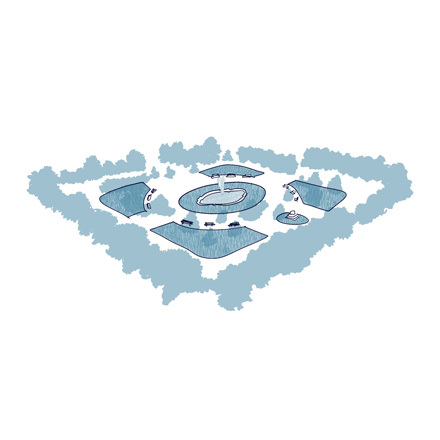
This beautiful green square is a tribute to Victor Hugo, who died the year it was inaugurated. It used to be the site of military barracks and the old city walls. At the end of the 19th century, when the barracks were moved and the ramparts demolished, it was decided to use the space left behind to create a pleasant square surrounded
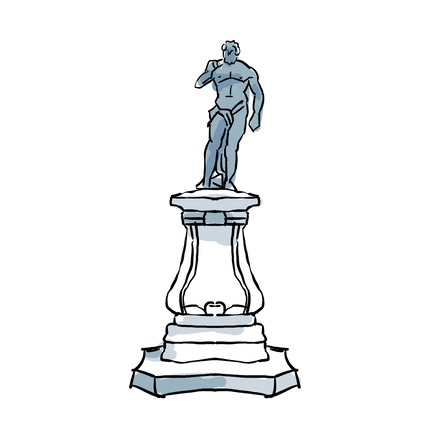
You have just entered the “Jardin de Ville”, City Garden in English, a little piece of nature at the heart of the city. It's a typical example of a Classic French Garden, with a wooded area of plane, chestnut, and lime trees on one side and a flowered area of roses, palm trees, and orange trees on the other. Before the 17th century

You will reach the quays, from where you can admire the row of colorful buildings on the other side of the Isère. Careful, here you have to make a crucial choice! We are going up to the Bastille, one of Grenoble's most famous sights, but it can also be hard to get there. You could choose an original way or go for a hike.

Attention please, we're about to start the climb to the Bastille fort. It's an ascent on well-maintained paths and steps, with a positive difference in altitude of almost 300 metres. This walk is a true immersion into nature, and the view of the valley is a delightful experience.

Why not take a quick photo stop to recover from the long climb to the Bastille. As you can see there’s no lack of great views! You've now reached the park Guy Pape, where you can enjoy a beautiful, unspoilt view of Grenoble and the surrounding mountains.
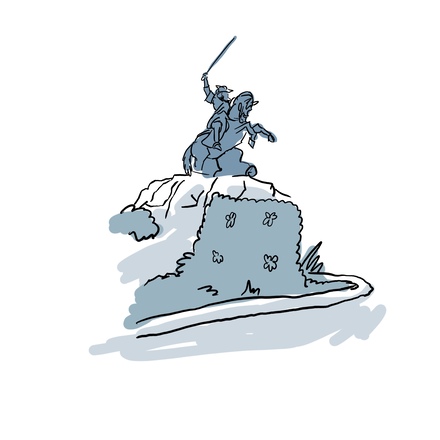
So here we are, in the Dolfins' Gardens. This is the starting point for the section of the long-distance hiking path -GR9 in Isère/Savoie. It is over a thousand kilometres long and stretches from the Jura mountain range to the Mediterranean sea. Today, we're just going to walk through the gardens of the former fortifications

Well done to those who walked! The rest of you, I hope you got a thrill and some great shots! Now that you've all arrived at the Fort de la Bastille. Don't hesitate to explore the site, with its terraces and belvederes offering breathtaking views, as well as information on Grenoble, the surrounding region and the fortifications.

Take one last look at the Vercors and Belledonnes ranges before heading back down to town. If the weather is clear, you might even catch a glimpse of the Mont Blanc in the distance, recognisable by its snowy dome. Of course, if you are taking this tour in the middle of winter
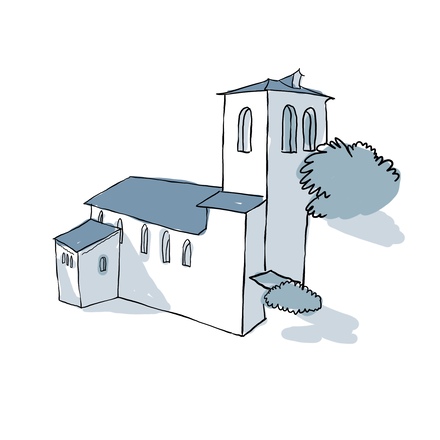
On your right, you can see the Archaeological Museum of Saint-Laurent. You might want to visit it today or later! The old Saint-Laurent church, constructed atop a Gallo-Roman necropolis from the 4th century, was secularised in 1983 to undergo transformation into an archaeological site and later, 3 years hence, into a museum
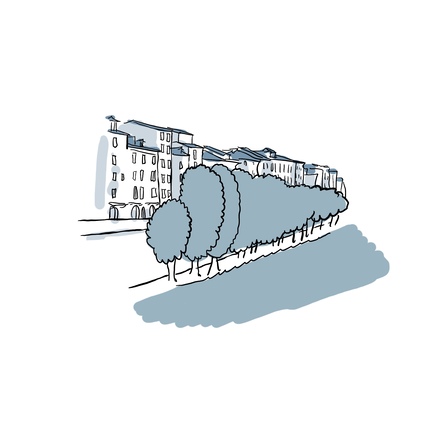
You are now on Saint-Laurent street, in the heart of the district of the same name. This is the oldest district of the city. Located on the right bank of the Isère, it is known “s "Little It”ly" because of its pretty, colourful facades and the fact that most of its inhabitants came from the Apulian region, in Italy.

On your left is the Saint Laurent gate. It was one of five entry gates of the 17th-century town wall. Built in 1615, it was the gateway to Savoy via the Grésivaudan valley. It was saved from destruction thanks to General Haxo who integrated it into his new fortifications. All that remains of Lesdiguières' enclosure are two gates
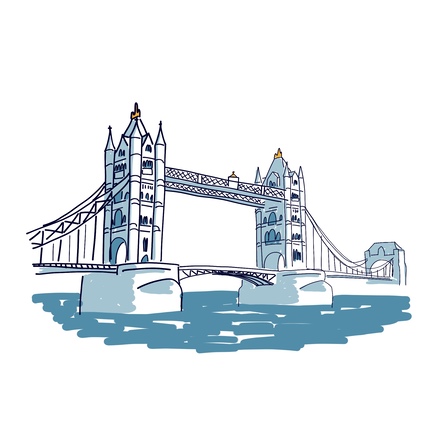
Out of the 33 bridges that make up the city of London, Tower Bridge is undoubtedly the one that attracts the most visitors.
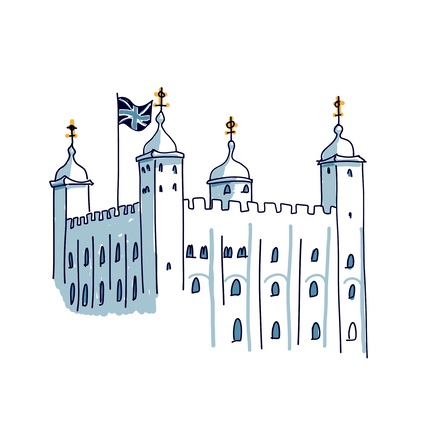
This impressive fortress was built in the 11th century by William the Conqueror, Duke of Normandy, following his conquest of England.

From this viewpoint on the banks of the Thames, you can admire London's tallest skyscraper known as The Shard.

Originally built in the 12th century, this church was completely reconstructed in the 17th century after the Great Fire of London.
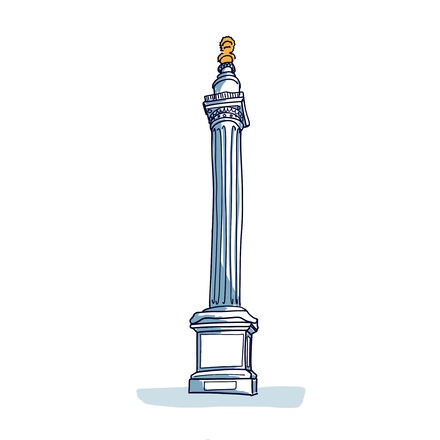
This 61-metre-high monument is a tribute to the tragedy that struck London in 1666.
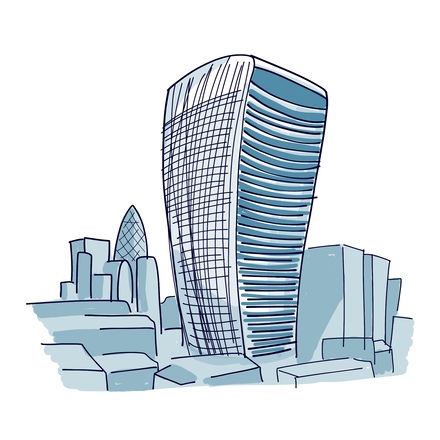
Here, you are at the foot of this astonishing building on the outskirts of London's financial district.v
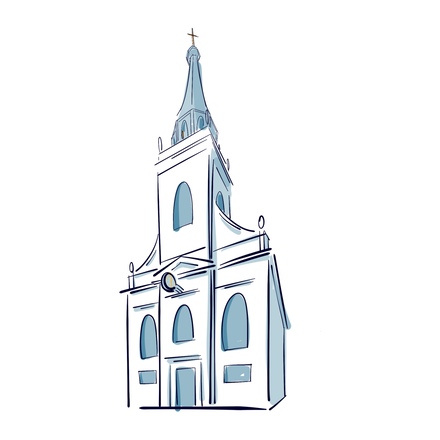
This Anglican church is dedicated to the martyred king Edmund of East Anglia, the last king of the territory before the Viking conquest in the 9th century.

This is the heart of the city's historic centre!
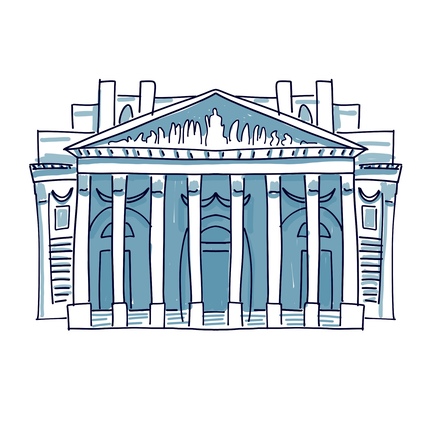
Built in 1840, this beautiful building with its eight Corinthian columns once housed the Stock Exchange.
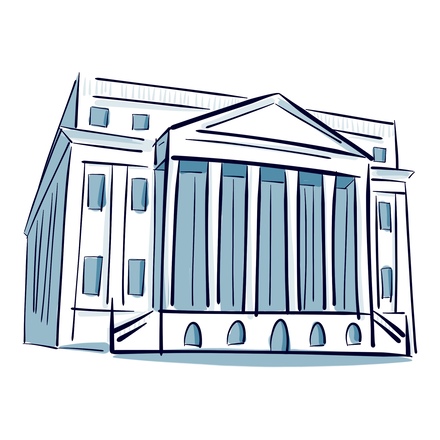
This imposing building is none other than the residence of the Lord Mayors of London!
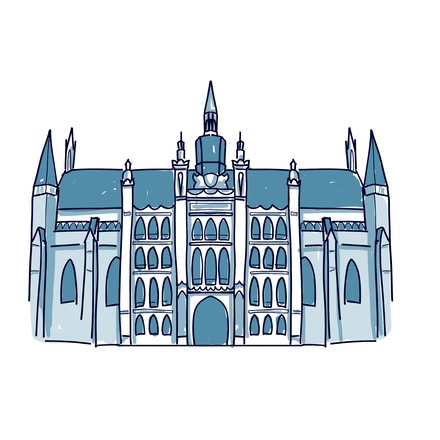
This little hidden square is a landmark in London's history: in Roman times, an amphitheater stood here.

If you take the street on the right and walk a few metres, you'll come across Finsbury Circus.
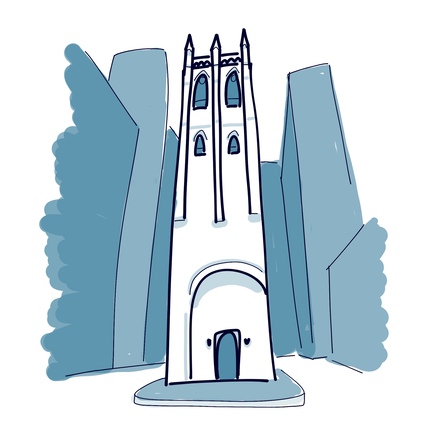
What on earth is this old tower that rises right in the centre of the City of London?
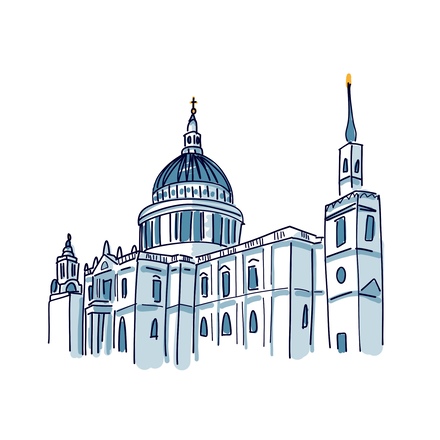
Welcome to St Paul's Cathedral, one of the largest cathedrals in the world, with its 110-metre-high dome!

You are now on Millennium Bridge, which allows you to cross the Thames to reach the Southwark district.
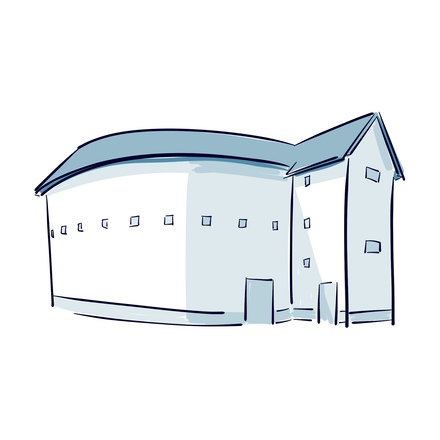
The building on your right is called the Globe Theatre of Shakespeare because this is where Shakespeare wrote and staged his greatest works, which are known all over the world.
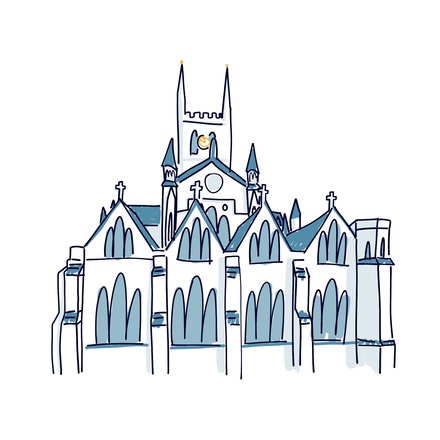
Southwark Cathedral is the oldest Gothic church in London, dating back to 1220.
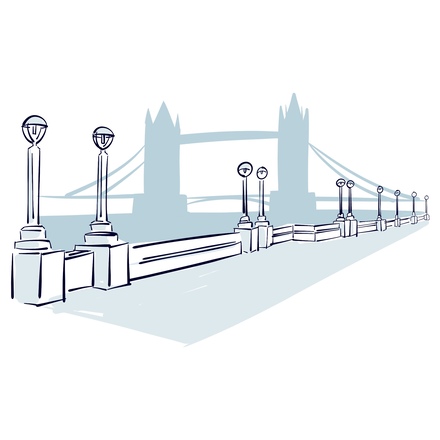
You're now on the Queens Walk, heading towards Tower Bridge. This pathway connects London's most iconic bridge to the London Eye, almost 4 km away.
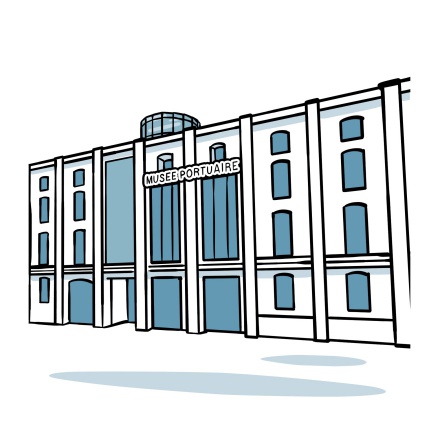
Alongside the three historic ships you can visit, the Port Museum offers a rich and immersive look into Dunkirk’s maritime heritage. Inside this former tobacco warehouse, you’ll find ship models, tools, photographs, and exhibits that tell the

As a reminder, Dunkirk is France’s third-largest port — and it’s also home to three marinas with a combined capacity of over 650 boats. There’s the Commerce Basin marina, the Marina Basin opened in 2004, and the Grand Large marina, which

You're now in the Grand Large district, once home to the city's shipyards. Today, it's been transformed into a residential neighborhood famous for its distinctive triangular-shaped houses, nicknamed the "Gables." These unique homes are
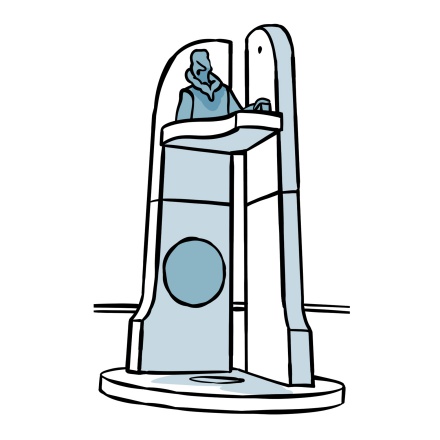
September 11, 1917 marks the death of one of France’s most celebrated World War I pilots — Georges Guynemer. He died in Belgium at just 22 years old, but in his short life, he racked up 53 aerial victories and survived eight crashes. Rejected by
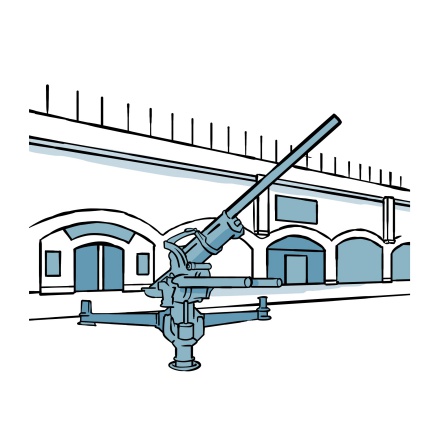
This museum offers a gripping account of Dunkirk during World War II — a city devastated by bombings, with 90% of its buildings destroyed. It focuses on one of the war’s most well-known episodes: the Battle of Dunkirk and Operation
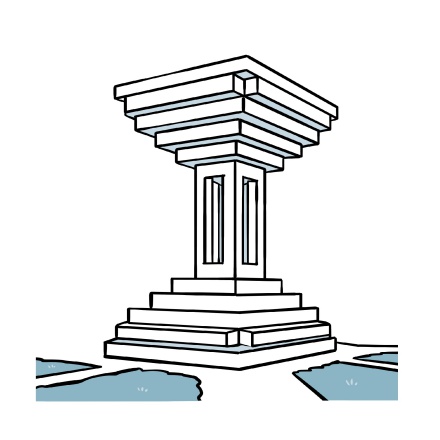
A real curiosity in Dunkirk, the Hourglass is a symbolic tribute to Operation Dynamo, the massive evacuation that saved hundreds of thousands of Allied soldiers from Dunkirk’s beaches. This towering hourglass stands as a haunting reminder of

A true symbol of the city, the Dunkirk Carnival takes over the streets for three months each year, peaking during Mardi Gras week. Parades and street parties draw thousands of locals and visitors, all dressed in wildly creative costumes called

Another iconic feature of the city — where there’s a port, there’s a lighthouse! From here, you can admire the Risban Lighthouse, classified as a Historic Monument. At 63 meters tall, it’s the sixth tallest lighthouse in France. Originally, a fort —
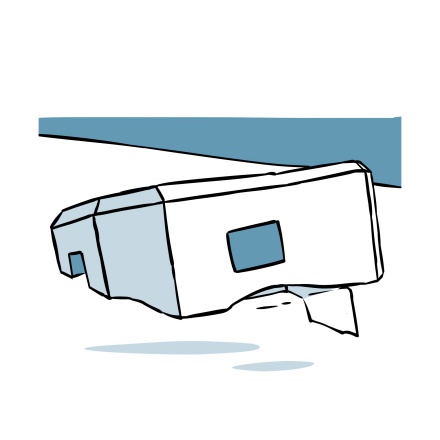
Here stands a blockhaus — a World War II bunker made of reinforced concrete, designed to withstand attacks. These were built by the Germans across occupied France, especially along the Atlantic coast, to defend against potential Allied

You’re now on the Allies’ Dike, bordered by the beach and the North Sea on one side and the outlet canal on the other. Built in 1876 to protect the city from sea invasions, the dike now serves as a peaceful path where locals come to walk, breathe
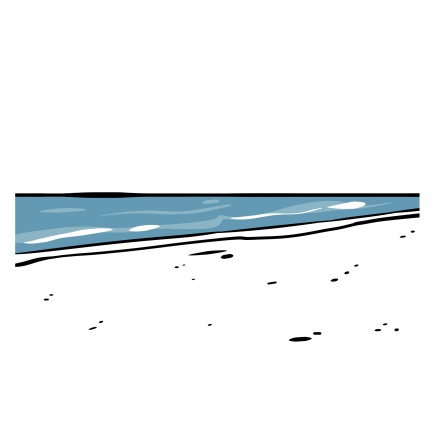
This lovely beach takes its name from a former town, Malo-les-Bains, which merged with Dunkirk in 1970 and is now one of its districts. Stretching across the city and neighboring towns, the sandy beach is perfect for swimming, relaxing, and

You’re now in the Sculpture Garden, a modern green space that surrounds the Contemporary Art and Action Center — better known as the LAAC. This striking museum, built in 1982 just two years after the park itself was created, is home to
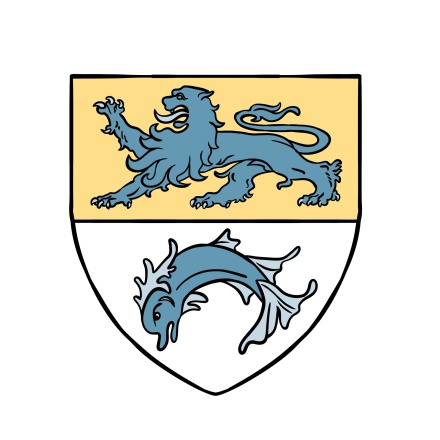
Now, let’s step back in time. Dunkirk’s story begins in the 10th century, when a few fishermen settled along the coast. Unlike many French cities that date back to Roman times, Dunkirk emerged much later. Back then, it was just a tiny hamlet,
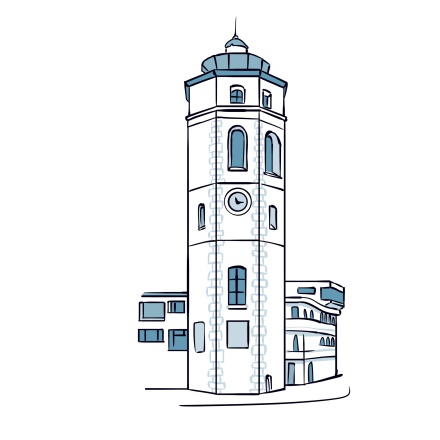
A true symbol of this maritime port city, this tower is also Dunkirk's oldest surviving building. Built in the 15th century, it was originally part of the ramparts—one of 28 towers that once surrounded and protected the town. When the

This is one of the most charming viewpoints in Dunkirk — a scene that perfectly captures the spirit of this maritime city. In front of you, the boats docked in the Commerce Basin create a peaceful harbor view, with rows of colorful Dunkirk
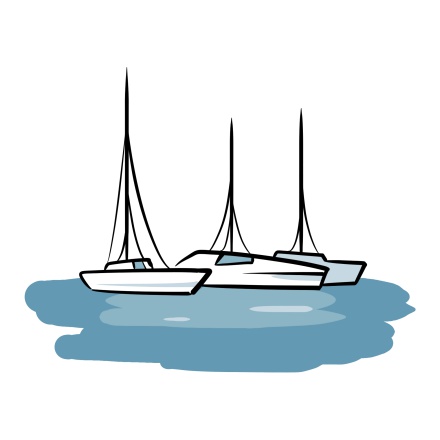
Dunkirk’s port is the third largest in France and a key part of the city’s identity. But it wasn’t always such a major player. When it was first built in the 11th century, the port was tiny and mainly used for herring fishing. It wasn’t until the 14th
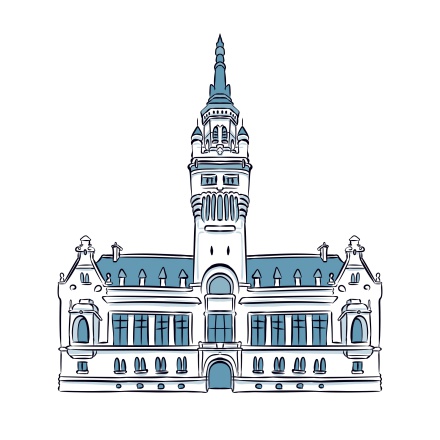
The grand building you see here, overlooking Charles Valentin Square, is Dunkirk’s Town Hall. It was built between 1897 and 1901 in a magnificent Flemish Renaissance style, designed by the Lille architect Louis-Marie Cordonnier. His son,
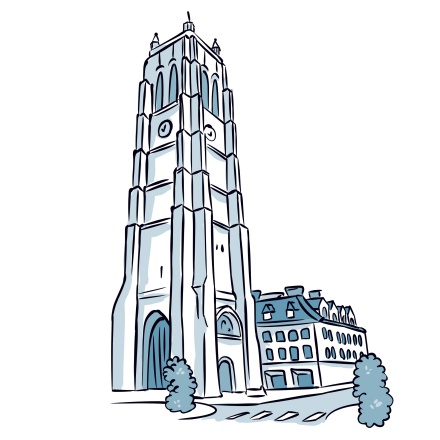
Rising 58 meters above the city, the Dunkirk Belfry is a must-see. It’s one of the oldest buildings in town, and if you’re up for a bit of a climb, the top offers a breathtaking 360-degree view over the city and beyond. Originally built in the 13th
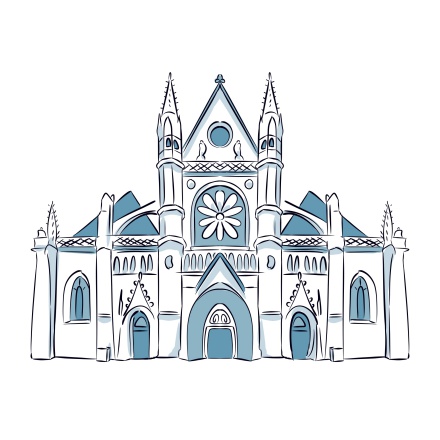
Right across the street from the belfry stands Saint-Eloi Church. Originally, the church and the tower were connected, but after a devastating fire, only part of the church was rebuilt — funds ran out before the two could be joined again. The
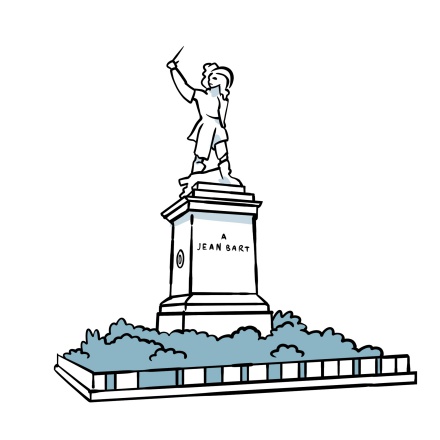
Here we are in Jean Bart Square, yet another tribute to the city’s most famous hero. In the center of the square stands a striking bronze statue of Jean Bart himself — sword in hand, raised high toward the sky. It’s a powerful symbol of his
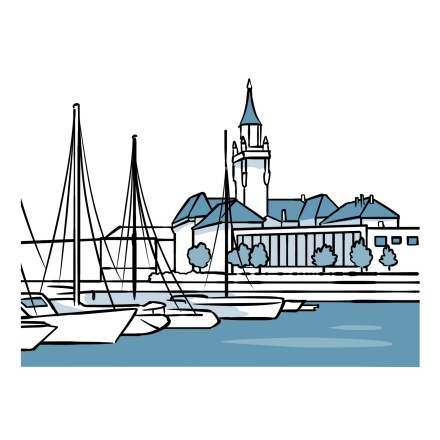
You’re now walking through one of Dunkirk’s marina areas. To your left is the Marina Basin, and to your right, the Commerce Basin. The Commerce Basin can host up to 140 boats, while the Marina Basin can accommodate 170. In the 19th

Standing as one of Dunkirk's most iconic sights, the Duchesse Anne is truly something to behold—a towering three-masted sailing ship that holds the distinction of being the largest vessel of her kind in France that welcomes visitors aboard.
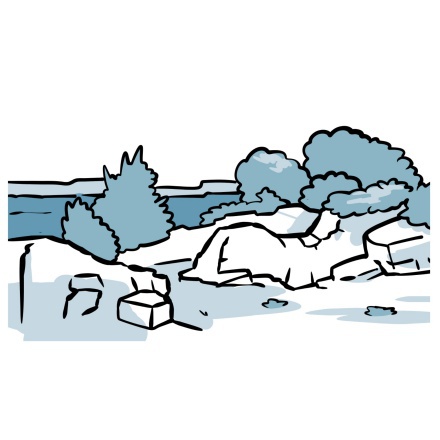
You don't want to miss the botanical walk – it's your gateway to the Saint-Eutrope hill! All you have to do is follow the Julia Barthet slope, which opens out before you and takes you to the park's staircase entrance.
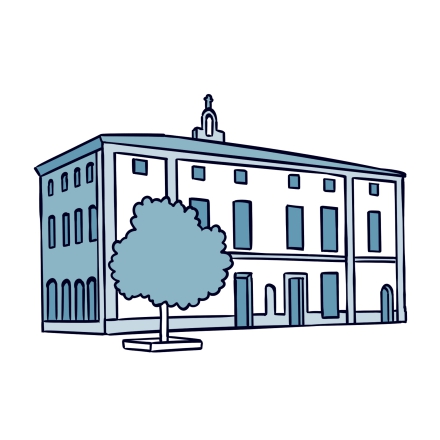
It's no surprise that the rue de l'ancien hôpital leads you right to the entrance of the former Hôtel-Dieu. This hospice, dedicated to caring for the poorest of the poor, was commissioned by Maurice de Nassau
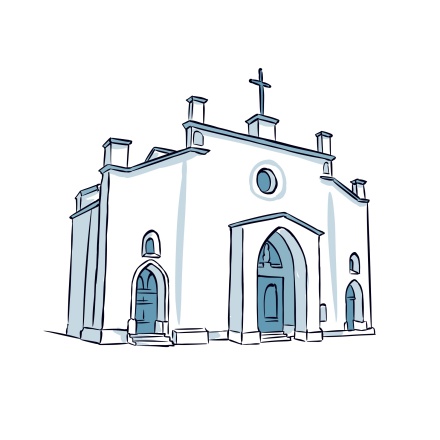
This small 14th-century Romanesque church is the former chapel of the Franciscans of Orange. It served as the final resting place for many of the lords from the House of Baux
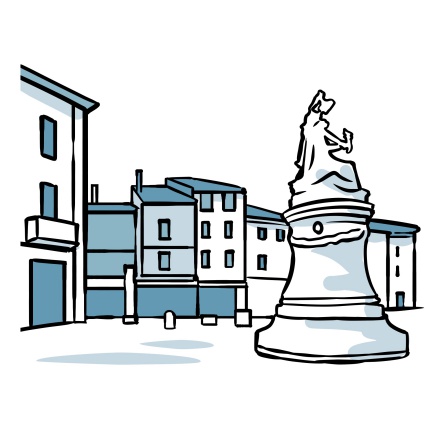
The beautiful Mounet brothers' square invites you to soak up the sunshine on one of its terraces. It's named after Jean and Paul Mounet, two brothers born in Bergerac in the 1840s

We're heading up the wide avenue in front of you to reach the impressive Triumphal Arch. If you're visiting Orange during the summer months, you can take the free shuttle buses provided by the city.

You're now standing in front of the entrance of the former cathedral of Notre-Dame of Nazareth, listed as a historical monument. It was the episcopal seat of Orange until 1801, before being downgraded when the bishopric
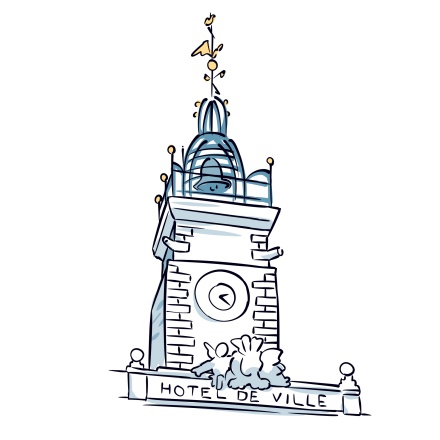
You're now at the very heart of the city. Talk about a lively spot! Georges Clémenceau square was practically built for good times. It dates all the way back to the 14th century.

Next stop on Rue Victor Hugo is Langes Square. It's the small square to your right, just behind the town hall. It used to be the private garden and orangery of the Lubières family mansion
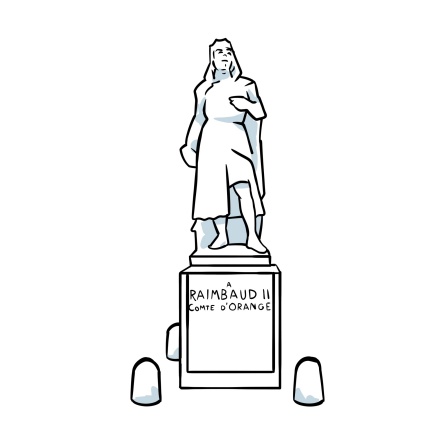
You've reached the Place de la République, a charming central square buzzing with cafés and restaurants. The statue right in the middle depicts a knight in chainmail
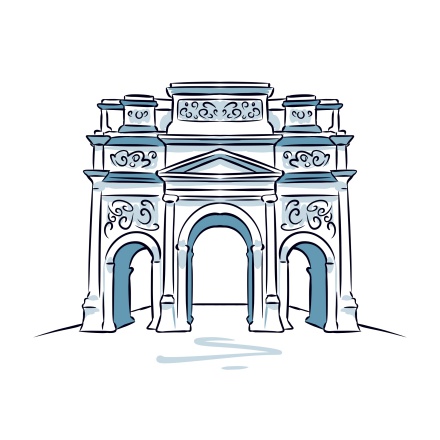
Imagine yourself a Roman in the 1st century AD, arriving at the northern gate of Arausio along the Via Agrippa. You're awestruck by this imposing, newly-built monument that stands as a symbol of Rome's supremacy.
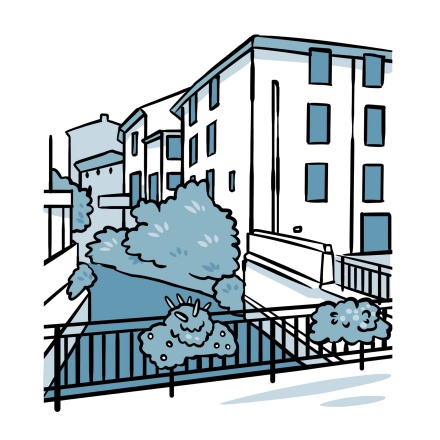
You're now crossing the Meyne river. It's a tributary of the Rhône, flowing through Orange and Caderousse. But don't be fooled by its peaceful looks; the Meyne has caused some pretty epic floods in the past
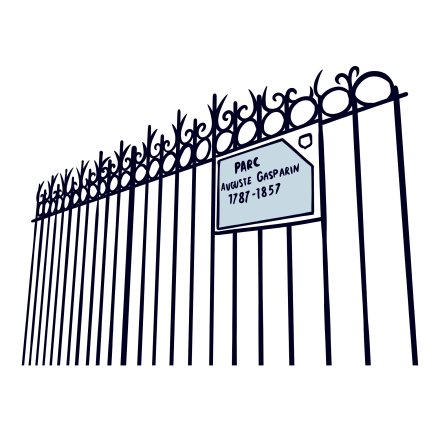
On your right is the entrance to the Auguste Gasparin park. This lovely green space was named after an illustrious Orange family who owned a manor house with a beautiful garden at this very spot.
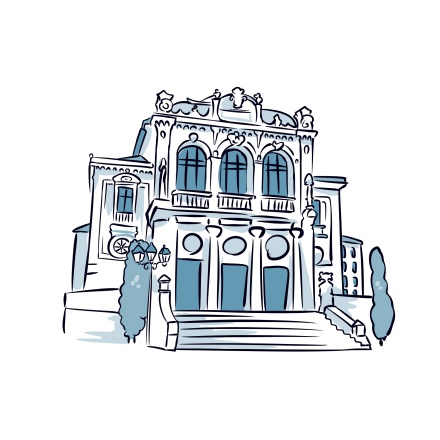
Now, Orange does not only have an ancient theatre, but also a magnificent municipal theatre, which is listed as a historical monument. It was built in the late 19th century by André Jean Boudoy

From here, you have a bird's-eye view of the Saint-Eutrope hill, once home to the castle of the princes of Orange-Nassau. Our initial tour took you as close as possible to these remains to tell you their story
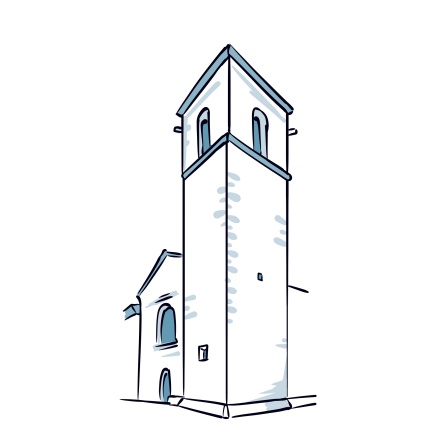
In the 16th century, with a Protestant prince at the helm, Orange became a true stronghold of the Protestant Reformation, in a France literally torn apart by the Wars of Religion.
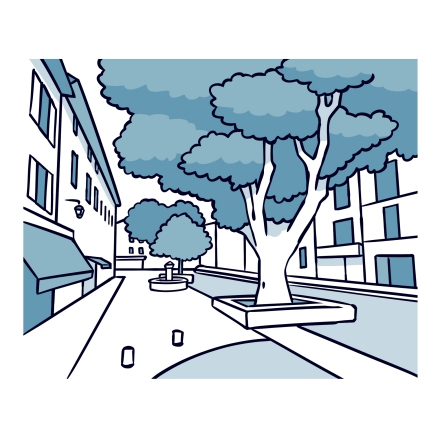
You've reached the André Bruey Square, named after the former mayor of Orange. Standing here, it's hard to imagine the horrors that unfolded at this very spot centuries ago.
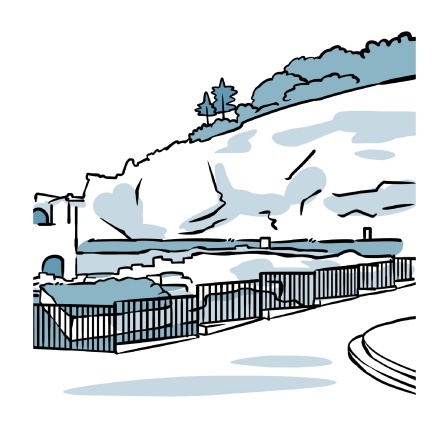
The ruins you see before you, protected by a railing and surrounded by a wooden walkway for better viewing, are all that remains of the ancient Roman Forum. Its construction most likely dates back to the 1st century BC

A city dripping with history like Orange is bound to have a fantastic Museum of Art and History. It's right here, just across the street, housed in this 16th-century mansion built for Georges Van Cuyl.
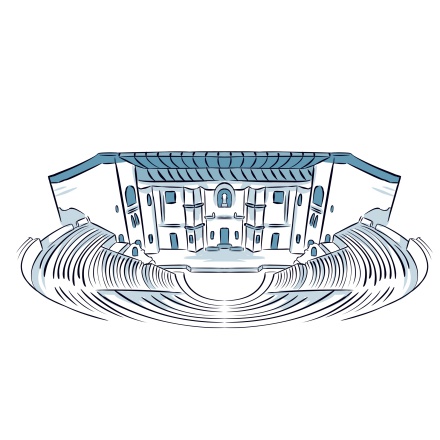
Yep, you've guessed it! Behind this spectacular 37-metre-high wall lies the city's internationally renowned showpiece, the famous Roman Theatre of Orange. We had actually planned to take you up to the Saint-Eutrope hill for better views, but unfortunately it's off-limits today.

Look at this fantastic view of the iconic Sky Tower! It was built using high-performance reinforced concrete to protect against winds of over 200 km/h and earthquakes of up to magnitude 8. Its captivating and sleek design makes for the

Welcome to the tallest tower in the Southern Hemisphere! The Sky Tower lives up to its name—rising 328 meters high, it dominates the city skyline and offers breathtaking views over Auckland’s rooftops, its bay, and the surrounding areas.
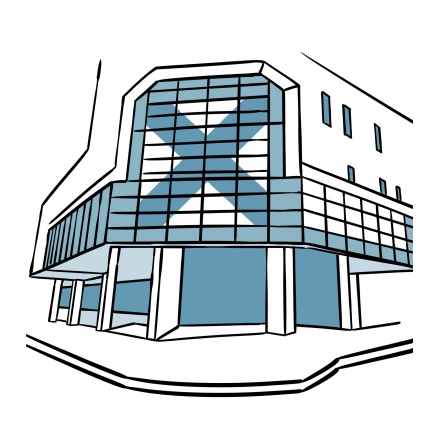
The building on your right is the largest courthouse in Australasia. It’s one of the key political buildings in Auckland’s financial center, as major judicial decisions are made here. We should introduce you to New Zealand’s political
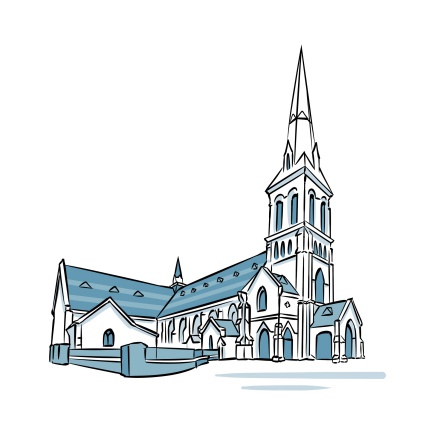
In front of you is the beautiful St. Patrick’s Cathedral. As you may have guessed, it is dedicated to St. Patrick, the patron saint of Ireland! Built just one year after Auckland was founded, in 1841, by Jean-Baptiste Pompallier
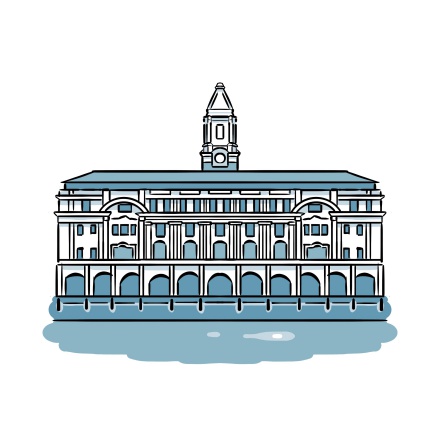
This building is the departure point for the many ferries that cross Auckland’s bay every day. These ferries connect the CBD—where you are right now—to the northern and western parts of the city. You can also go to the Hauraki Gulf
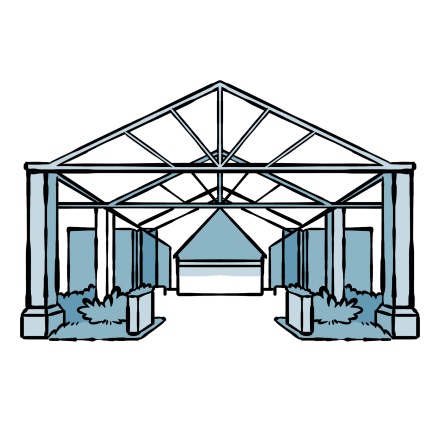
The Britomart Pavilions have a totally different atmosphere from any place you’ve seen so far. This pedestrian street is lined with small buildings designed by the Cheshire Architects group. Here, you'll find shops, restaurants, bars, offices
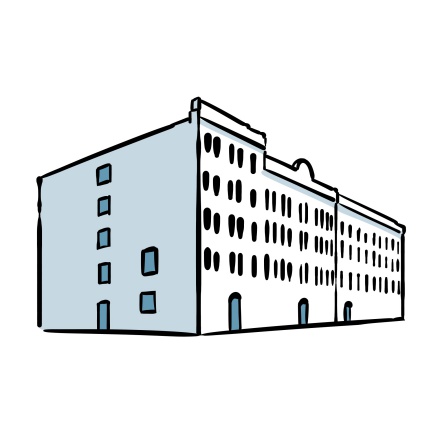
This building, known as Excelsior House, was constructed in 1885. It was originally intended to house the Brown, Barret & Co group, a group of tea, coffee, and spice merchants. Its architecture is reminiscent of 19th century New Zealand

Continuing along Commerce Street, you can see the imposing Pacifica tower, standing behind the white building in front of you. It’s the tallest residential skyscraper in the country, with 57 floors. Completed in 2020, it has won
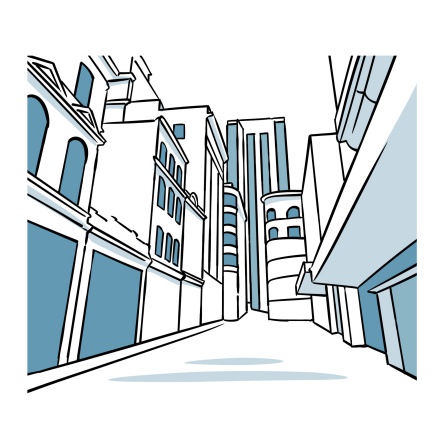
This charming lane is the perfect starting point for a shopping spree. A lively neighborhood filled with unique boutiques, restaurants, and bars, it has everything you need.
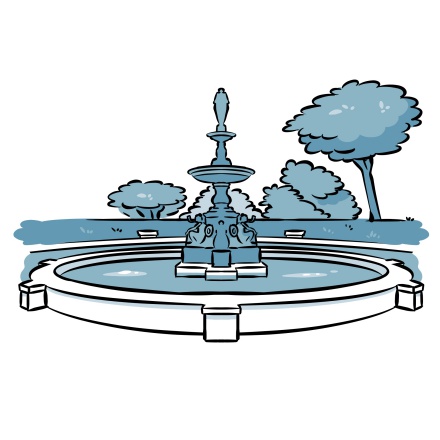
Here is Albert Park, one of Auckland's main downtown parks. Before European settlers arrived, this site was home to a Māori village. When the settlers founded the city
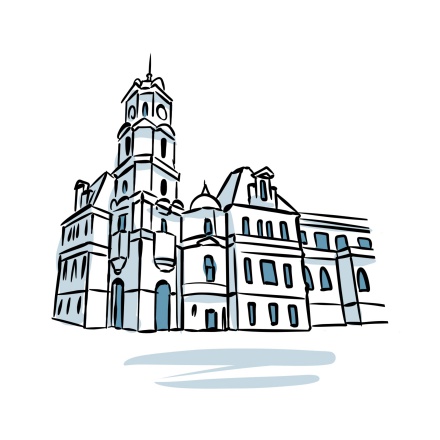
This beautiful building, in the corner of Albert Park, is the largest art museum in New Zealand. Founded in 1887, it houses a vast collection of paintings, including several
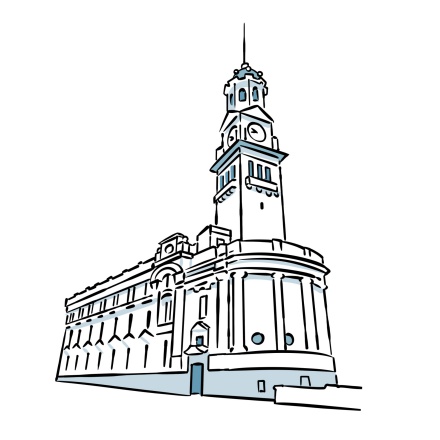
Auckland's Town Hall is an example of Edwardian architecture, and stands proudly along Aotea Square. Inaugurated in 1911, it was one of the city's most elegant buildings
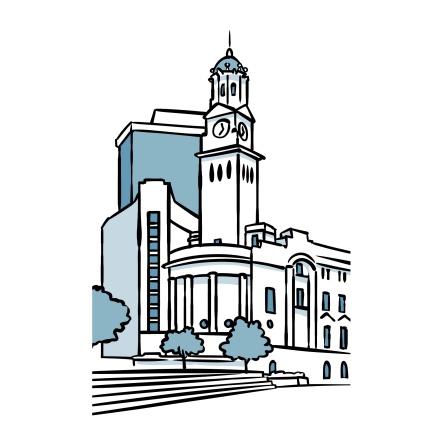
Welcome to Aotea Square, a plaza known for fairs, music festivals, concerts, markets, and political rallies. Originally designed in 1979, it was renovated in 2010 and
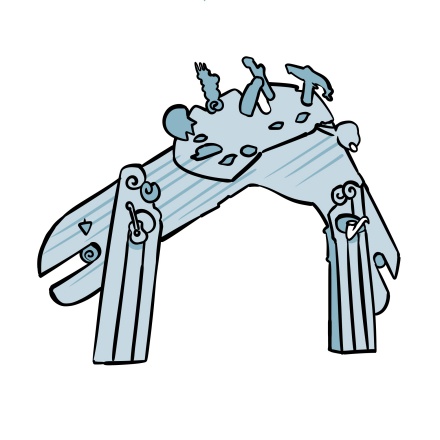
Aotea Square is surrounded by major cultural buildings and an impressive sculpture called Waharoa. It represents a traditional Māori gateway made of wood and copper
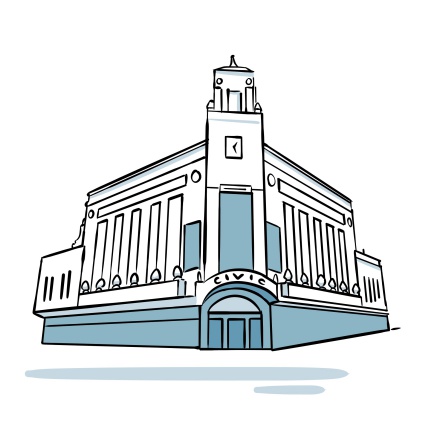
Go ahead and admire this imposing building on Queen Street. This is the Civic Theatre, a huge complex made up of a performance venue and a gigantic “atmospheric”
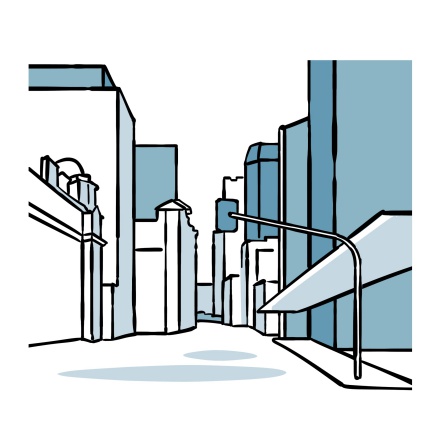
Queen Street is one of the main streets in downtown Auckland, even in the whole city. It was named after Queen Victoria, who reigned over the United Kingdom from 1837
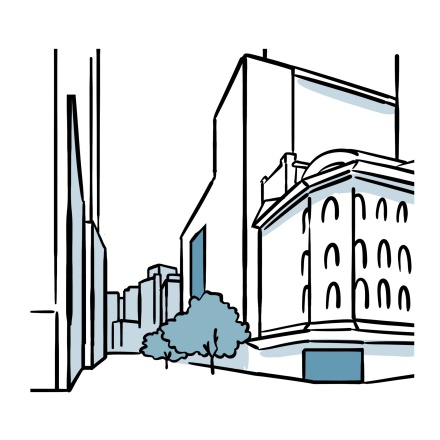
Auckland’s city centre is known as the Central Business District, or the CBD. The city was founded here in 1840 when British settlers arrived. Over time, it has grown into
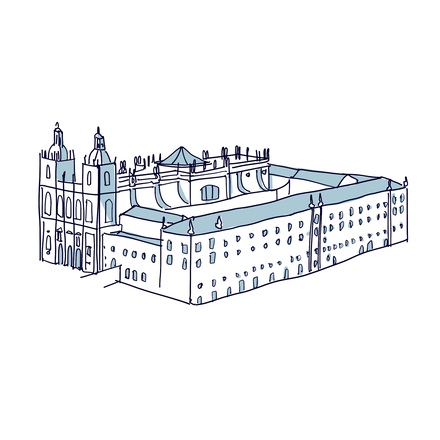
Introducing the Church of São Vicente de Fora, which we owe to Philip II. It was built in the 16th century and, at the time, it stood outside the main city walls. That's where its name comes from, since “Fora” means “outside.” This building, with
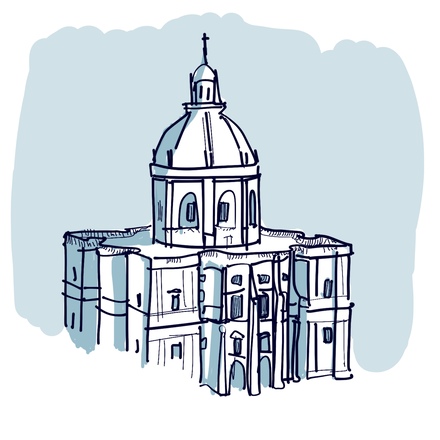
Architect João Antunes built this impressive edifice in the late 17th century, drawing inspiration from the St Peter's Basilica in Rome. It came to replace the earlier Church of Santa Engrácia, dating back to the 16th century.

We're now entering the Alfama district, one of the most iconic in the city. It stretches along the hillsides, made up of countless narrow, winding streets. And well, they're steep, but I guess you've already noticed! The district's name is of Arabic

Yet another picture-perfect view! The Portas do Sol Viewpoint offers stunning panoramic views of the Alfama district and its churches, the Pantheon and the Tagus River. The statue in the small square here shows Saint Vincent, Lisbon's patron

Now look at this view! Even though it's a bit off the beaten path, this place is well-known among tourists, who come here to enjoy the beautiful panoramic views of the old town, the Alfama district and the Tagus River.
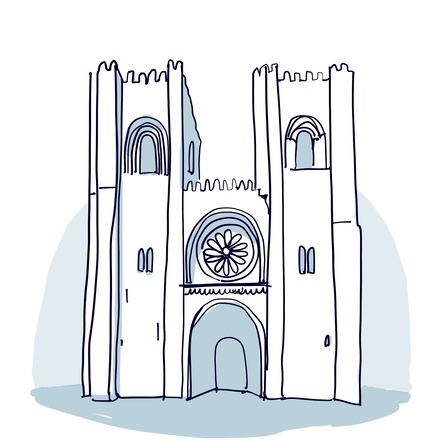
It was Afonso Henriques, Portugal's first king, who commissioned the construction of this cathedral in 1147, just after reclaiming the city from the Moors. It was rebuilt after the earthquake, retaining only its two original 12th-century towers
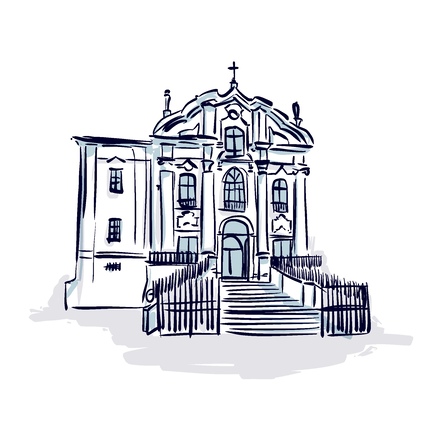
It is said that this church was built on the very site where St Anthony of Padua was born, hence its name. It was completely destroyed in the earthquake of 1755, with the exception of its crypt, and was quickly rebuilt in the Baroque and Rococo
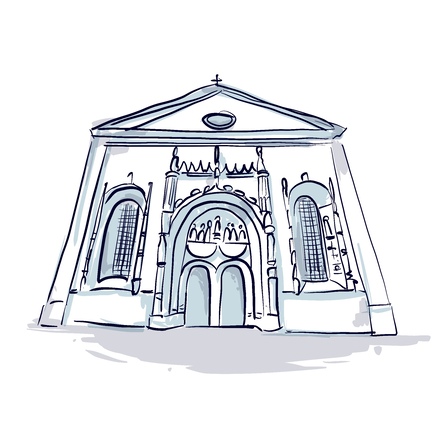
The beautiful façade of the church before you is a fine example of the Manueline style, a traditional Portuguese style that emerged at the end of the 15th century, under the reign of Manuel I. The façade is the only part of the church to have
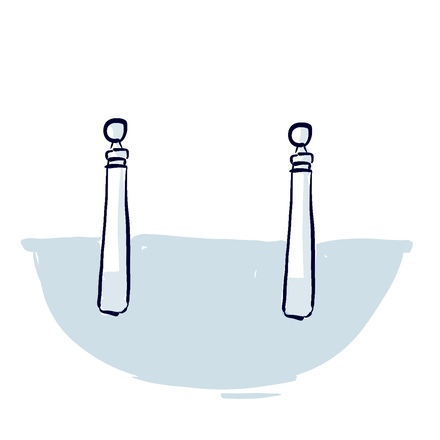
This is the port of call for countless famous figures, including Queen Elizabeth II and heads of state from across the globe. You see, Lisbon is not bordered by the ocean, but by the Tagus, the longest river on the Iberian Peninsula.
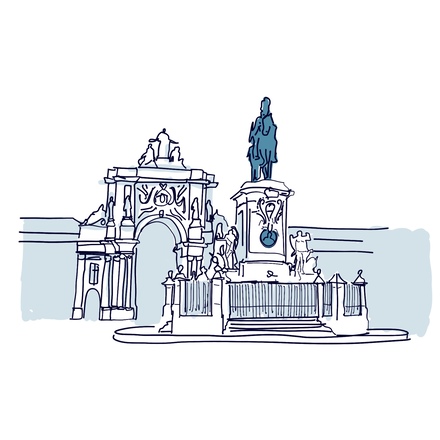
Welcome to the Commerce Plaza, one of the city's most emblematic squares and a favorite among visitors. Located just a stone's throw from the Tagus, this square has long been a hub for maritime trade. In 1755, Lisbon was hit by an earthquake
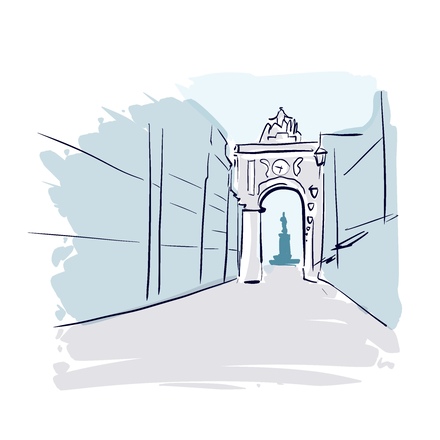
We saw that the Commerce Plaza was laid out in the 18th century, in the wake of the earthquake. Yet the Triumphal Arch before you wasn't built until 1875, marking the start of the Rua Augusta, the Augusta Street. It is visible all the way to the
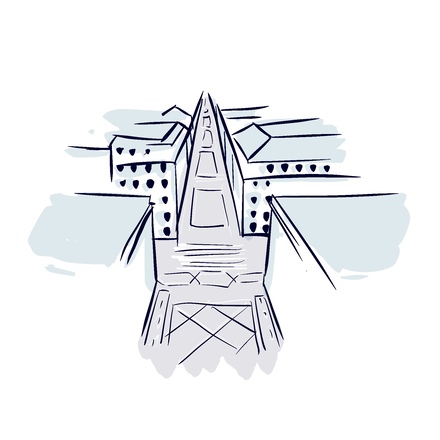
As you've probably gathered by now, Augusta Street is Lisbon's main shopping street. It's bustling with activity, drawing locals and visitors alike, especially during the summer months, when it's lined with bar and restaurant terraces.
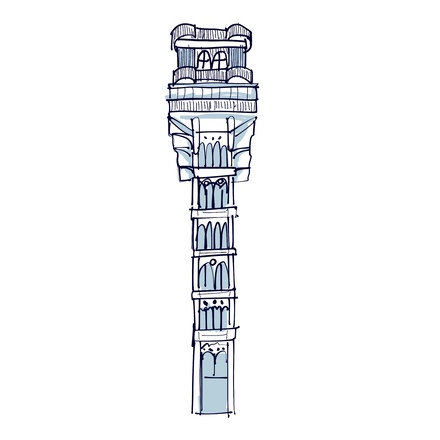
What's with this striking tower in the heart of the Baixa district? It looks a bit like the Eiffel Tower, doesn't it? Well, actually, it's an elevator, linking the Baixa with the Chiado district, yet another of the city's famous neighborhoods.
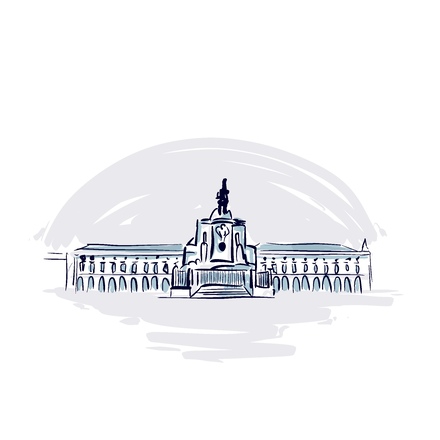
It was the Marquis de Pombal who brought the Baixa district back to life after the catastrophic earthquake of 1755. He had buildings constructed in the neo-classical “Pombaline” style and organized in a grid plan that gave the district a very
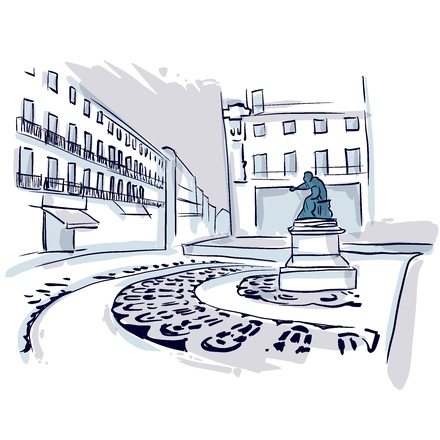
Hip, upscale, boho... The Chiado district is an essential stopover between Baixa, the city center, and Bairro Alto, higher up the hill. Home to both traditional and more modern boutiques, it's considered one of Lisbon's chic districts

You're now in Bairro Alto, one of the city's most vibrant districts. It really comes alive in the evenings when all the cafés and bars open their doors and people flood the narrow streets. Locals and visitors flock here to spend their evenings

There's no shortage of viewpoints in this city, built on hills overlooking the Tagus River that flows through Portugal. They offer breathtaking panoramas and allow you to see Lisbon in a whole new light.

On your left is Liberty Avenue, home to all sorts of luxury brands. No wonder it's often referred to as Lisbon's Champs-Élysées. It's the city's longest street, stretching for nearly 1,200 meters and connecting Marquis of Pombal Square to
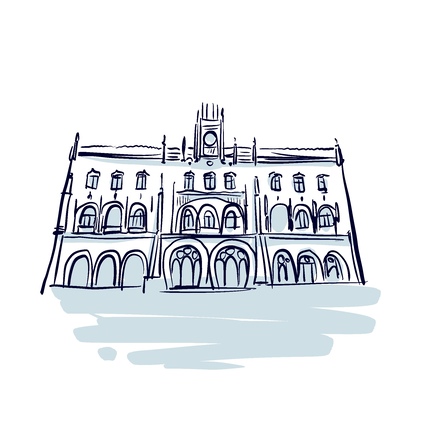
You're now standing in front of the Rossio Railway Station, connecting Lisbon to Sintra, via the Queluz National Park. What makes it so special is its stunning architecture in the Manueline style and the ornate details of its façade.
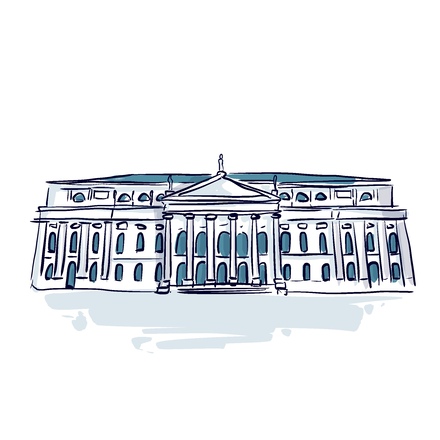
Look to your left and take in the magnificent architecture of this theater, considered one of the most important in the country. This was once the site of the Estaus Palace, the residence of foreign dignitaries visiting Lisbon, and later the seat of
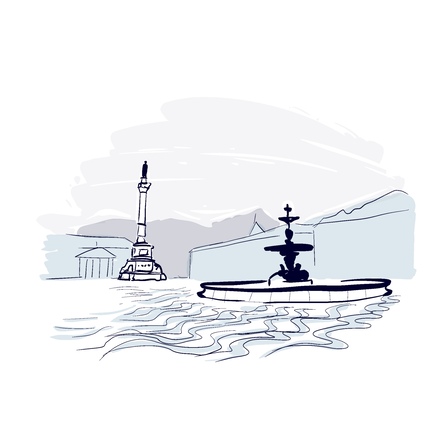
You're now on Rossio Square, also known as King Pedro IV Square. It's one of Lisbon's busiest and liveliest squares, home to bars, restaurants and stores. It really has it all! There are also two massive fountains, a beautiful theater, and a huge

Welcome to Martim Moniz Square, named after a Portuguese knight who sacrificed his life in the 12th century. This is the starting point of the famous Tramway no. 28, a true landmark of Lisbon. With a seating capacity of 58, this streetcar

From here, you can see the rooftops of Lisbon's historic center, their colors contrasting beautifully with the vivid blue of the Tagus River just behind. The 25th of April Bridge can also be seen in the distance. Looks familiar, does it not?
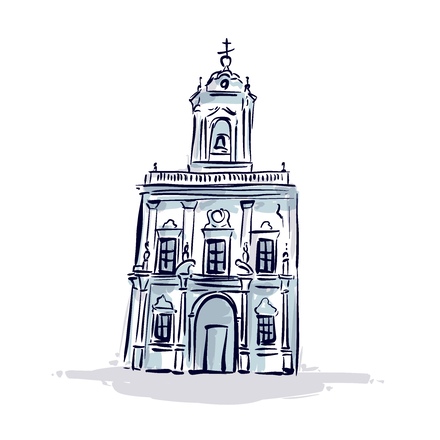
Founded in the 13th century, the Graça Convent took up residence in a church that already stood here, on one of Lisbon's seven hills. It was rebuilt in the 18th century after the earthquake, in a more Baroque style and offers superb views of the
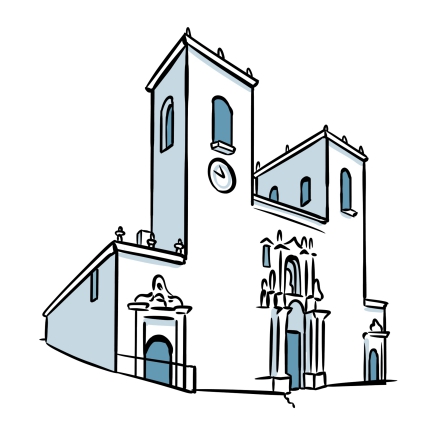
You’re now standing in front of the beautiful Basilica of Santa Maria, the oldest church in Alicante! It was built in the 13th century in the Valencian Gothic style, but the Baroque façade you see today dates back to the 15th century, when the church was rebuilt after being destroyed in a fire. Like the Co-Cathedral of San Nicolas de Bari, this
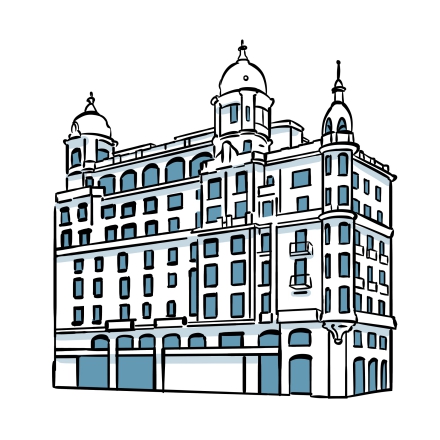
This striking building, known as the Casa Carbonell, is one of the many landmarks along Alicante’s Explanada de España. It’s a private mansion built in the 1920s by Juan Vidal Ramos, the architect behind much of the region’s architecture. The palace was commissioned by Enrique Carbonell, a wealthy textile manufacturer, and its lavish

This new elevated walkway offers a beautiful seaside stroll with sweeping 360-degree views. Behind you, you’ll spot Alicante’s marina, where elegant yachts and sailboats line the harbour. It’s a lively area, especially in the evenings, with bars and restaurants along the waterfront, all cooled by the gentle sea breeze. On the other side, you’re

Here’s the entrance to the lift that takes you up to the castle, perched at the top of Mount Benacantil. After some thought, we’ve decided to recommend this option, even though it’s a paid service, which we normally try to avoid. But the climb is fairly steep, and with the heat of the day, you may prefer to pay the small fee rather than hike all
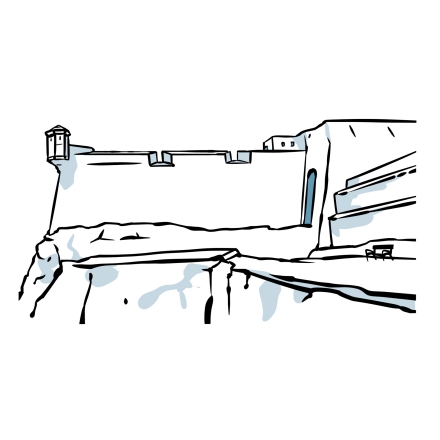
Here we are, at the top of Mount Benacantil! If you made the climb on foot, congratulations, you’ve covered over three kilometres and reached an elevation of 169 metres. For the rest of you, don’t worry, you’ll still get to enjoy the views and the walk, as we’ll be heading back down through Ereta Park. You’re now standing on the

As you take the path down through Ereta Park into Alicante’s old town, you’ll be treated to sweeping views over the sparkling bay. There are plenty of scenic balconies and viewpoints along the way, so take your time and don’t forget to snap a few photos! While you’re admiring the view, let me tell you the legend behind one of
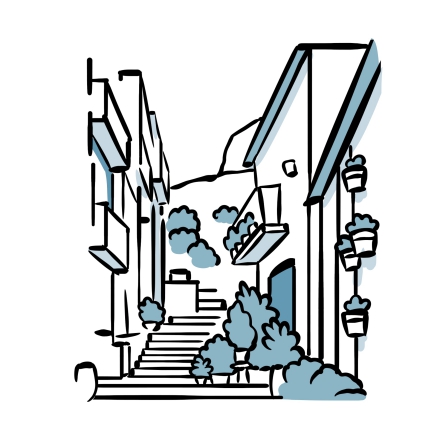
At the foot of Santa Barbara Castle, nestled on the slopes of Mount Benacantil, lies the picturesque Santa Cruz district, often called the Cuna de Alicante, or the cradle of the city. This is where the soul of Alicante lives, in a maze of narrow alleys and winding staircases. The colourful and whitewashed houses are decorated with hanging

You’re now standing in front of one of Alicante’s true institutions, its Central Market. No visit to a city is complete without stepping into its culinary heart, and that’s especially true in Spain, where delicious tapas tempt you at every corner. Just one look at the building is enough to know you’re in for something special. This magnificent

On your left is the Teatro Principal, Alicante’s main performing arts venue. It was built in 1845, when Alicante was thriving thanks to trade that stretched all the way to the Americas. A group of wealthy merchants, landowners, and aristocrats decided that Alicante deserved a theatre to match its growing cultural importance. There were
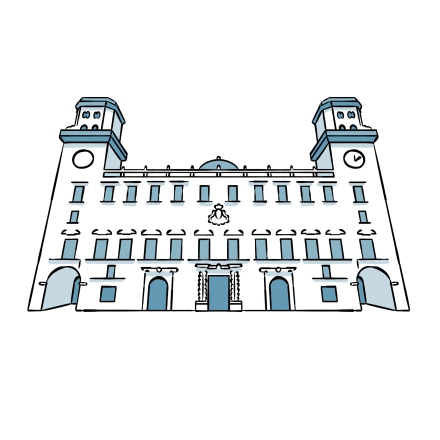
Juste un mot sur la porte d’entrée que vous voyez sur votre droite. Elle mène au palais du Portalet et vous permet de découvrir gratuitement les lieux.
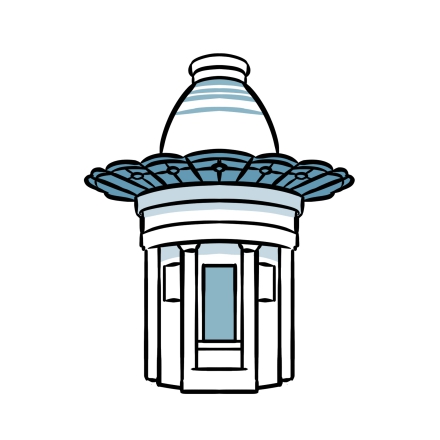
Welcome to Plaza Portal de Elche, a charming square filled with history and shade, thanks to its towering hundred-year-old ficus trees. The 19th-century kiosk, the inviting café terraces, and the peaceful atmosphere make this one of Alicante’s most beloved corners. Yet, before turning into this peaceful corner, the square went by a far

Welcome to San Francisco Street, better known by its nickname Calle de las Setas, or Mushroom Street! Strolling down this colourful walkway feels like stepping into a storybook, where giant insects rest alongside four-metre-tall mushrooms, all set on a colourful cobbled path. This street’s transformation was launched in late 2013, as

At the end of the promenade, you’ll spot a square marking the entrance to a park. The square, the monument, and the park are all named after José Canalejas, a Spanish politician active in the late 19th and early 20th centuries. He served as a minister, Speaker of the Congress, and Member of Parliament, before being assassinated in
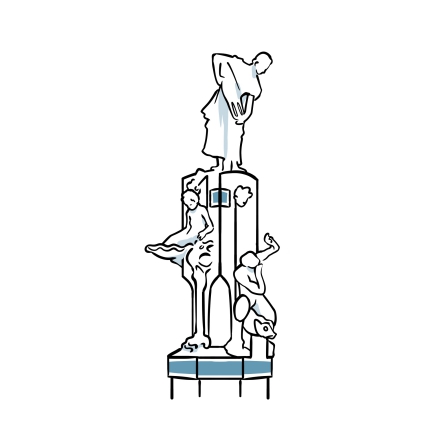
You’ve now arrived at one of Alicante’s most charming little squares, Plaza Gabriel Miró, named after the famous writer who was born here in the city. Locals sometimes still call it Plaza de Correos, a throwback to the old post and telegraph office on your left. Step into the centre of the square to find a beautiful fountain known as La
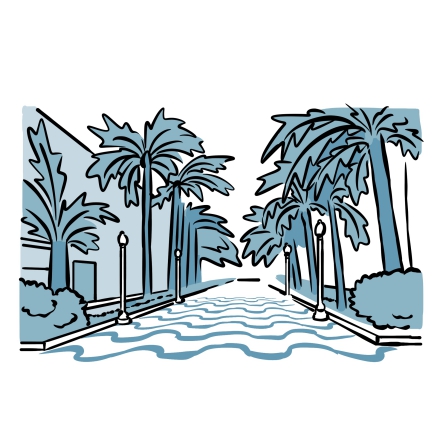
Alicante’s Explanada de España, reminiscent of Copacabana in Rio or the Promenade des Anglais in Nice, is a palm-lined avenue that runs along the waterfront, paved with more than six million red, white, and black marble tiles. The undulating wave pattern has become one of the city’s signature images. The promenade is dotted with

Welcome to the heart of Alicante, the Plaza del Ayuntamiento, or Town Hall Square. The town hall is housed in a beautiful 18th-century Baroque palace, built between 1699 and 1780. Its main façade stretches 49 metres wide and is flanked by two identical towers. Next to the entrance, you’ll see a bust of Cervantes, placed here to mark
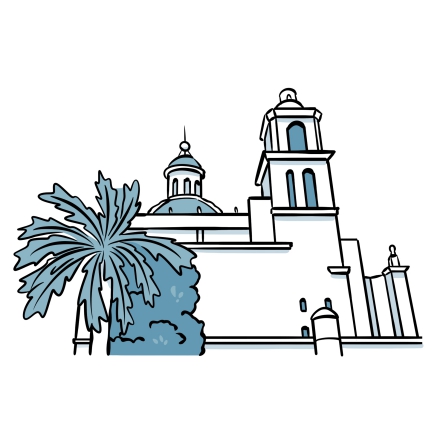
You’re now standing in front of the Co-Cathedral of San Nicolás de Bari, one of the largest churches in Alicante, and dedicated to the city’s patron saint, Saint Nicholas. It was built in the 17th century over the remains of a medieval temple, which served as a parish church in the 13th century constructed on the site of an old Moorish mosque.

This beautiful bronze statue depicts a nude woman brandishing a sword towards the sky, her face turned towards the light. You only have to look at it to grasp the explosion of mixed feelings our ancestors must have
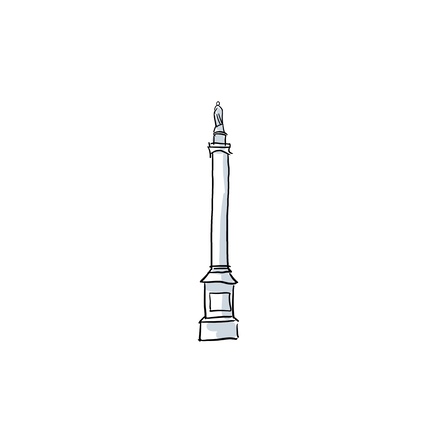
You arrive in front of Maréchal Foch square, named in honour of the commander-in-chief of Allied forces at the end of the First World War. General Ferdinand Foch was elevated to the rank of Marshal of France
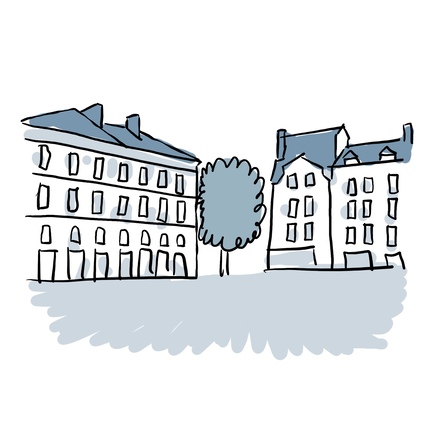
As you approach the back of the cathedral, you come across the best-kept remnants of Nantes' medieval period, the Saint-Pierre gate, which allowed passage through the city walls.
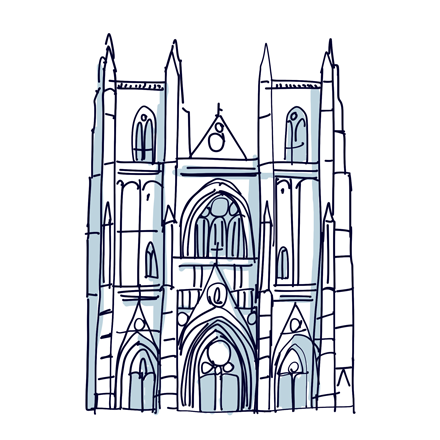
You're now at St. Peter's Square facing St. Peter and St. Paul Cathedral. About the same size as Notre-Dame in Paris, it was also hit by a major fire in 2020. According to popular legend, in the 3rd century, Saint Clair
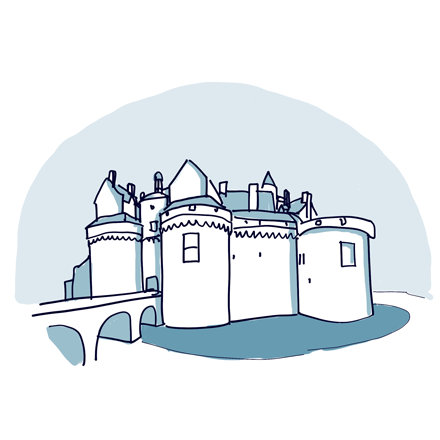
Right in the heart of medieval Nantes, the Castle of the Dukes of Brittany welcomes you to explore its ramparts, courtyard and moat for a leap back in time and history. In 57 BC, we find ourselves among the
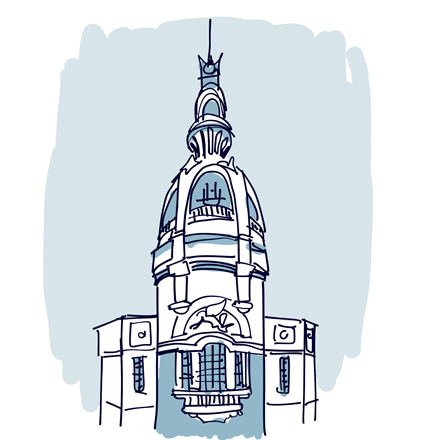
From the castle ramparts, you can see the beautiful blue-and-gold domed tower on the quayside opposite you. It belongs to the former factory of the famous Lefèvre-Utile biscuit factory, known as "LU" and its ever-
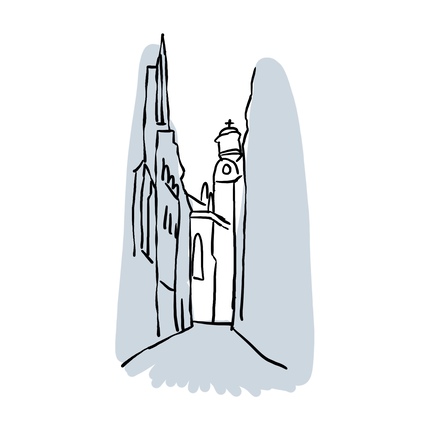
You are now entering the Juiverie street, which, as its name suggests, was the district hosting the Jewish community of Nantes in the Middle Ages. Evidence of Jewish presence here dates as far back as to Roman times.
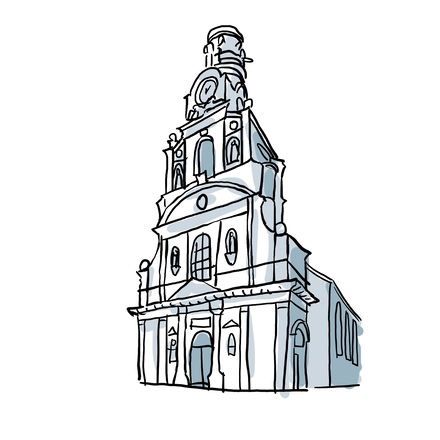
You arrive on the forecourt of the beautiful Saint Cross church elegantly set in the heart of Bouffay district, where it has been the parish since the 12th century. Its harmonious white facade is built in the Jesuit style, an
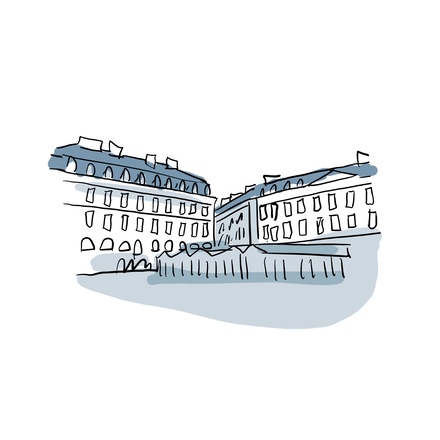
Bouffay district is the very heart of Nantais life! And it's nothing new, since it was here that the Namnètes founded their Celtic city. We know that the village had a fine bronze industry and that tools, wheat and hemp
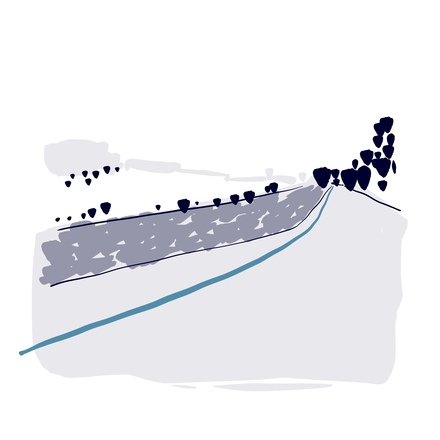
Let's take a moment to follow the green line, which you're sure to have spotted several times during your visit. Because Nantes has so many hidden gems to discover the city council has made your life easier by tracing a
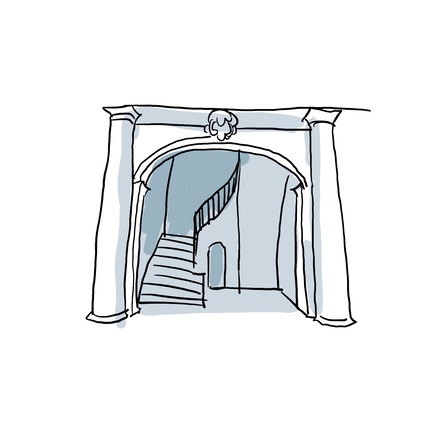
You are now crossing Kervegan street, the main route through the former Feydeau island. The island was originally separated from the city of Nantes by branches of the Loire. At the beginning of the 20th century, it was
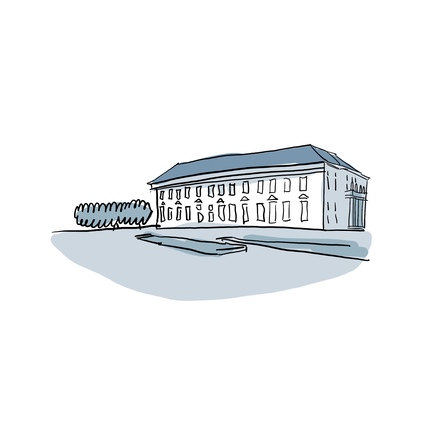
You are now standing on Commerce Square, an ideal meeting place, thanks to its proximity to public transport and the city's main streets. The square facing the former Stock Exchange, now Fnac, and the multiplex is
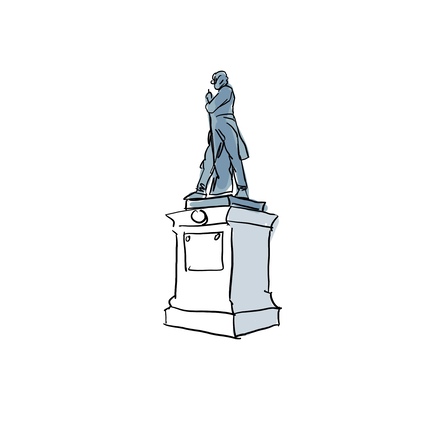
You're inside Cambronne Square. This beautiful garden is an integral part of Graslin's grand urban development plan dedicated to the bourgeoisie. His dream was to create a beautiful public walkway overlooking a large
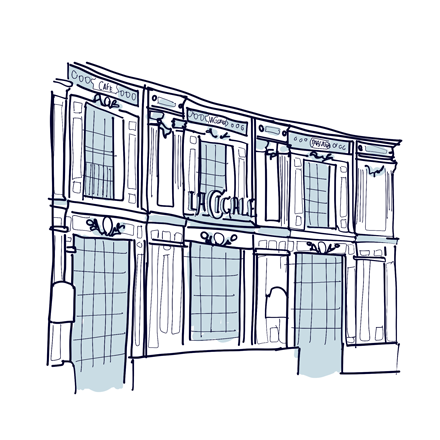
As you cross Graslin Square, you can't miss La Cigale, a truly magnificent brasserie. In fact, it's considered one of the most beautiful brasseries in France. Its exuberant art nouveau design bears witness to an era of
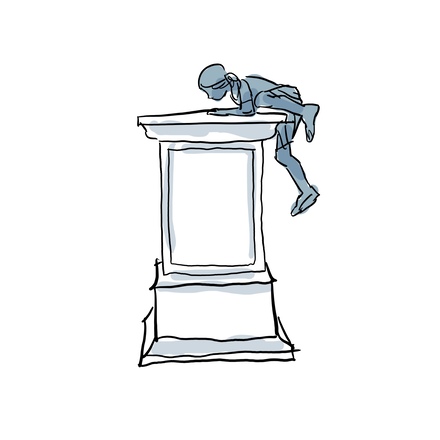
Just a word about this friendly statue you are now looking at. It's Philippe Ramette's Praise to Transgression. This artist enjoys playing with logic and gravity, here it is a tribute to a different way of being. According to
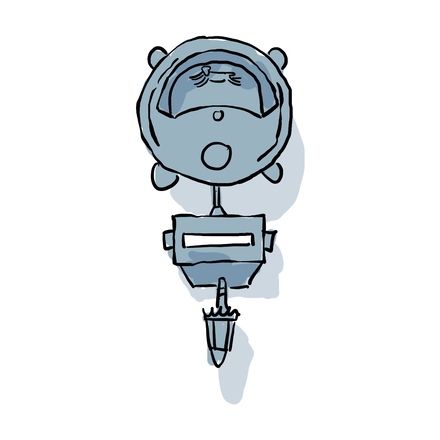
I'd like to draw your attention to that strange installation you see on the front of the hotel on your left. It's a sheep counter! This pendulum-type counter calculates the passage of sheep so one can fall asleep effortlessly.
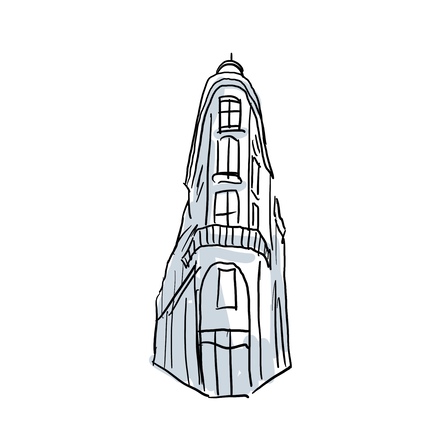
So let’s imagine you are crebilloning! Yes, exactly that, crebilloning! How many streets can boast of having given birth to a verb? When you stroll down Crébillon Street, full of beautiful shops, you are actually
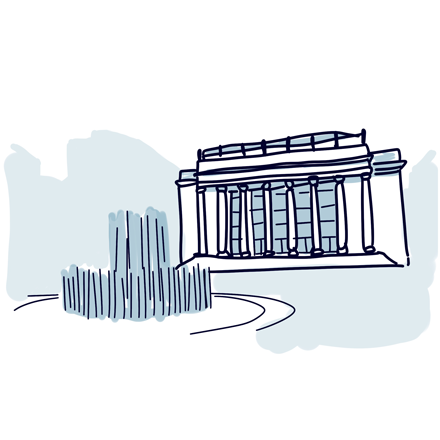
You are now in Graslin Square, the heart of the district of the same name. This is the chic side of Nantes. The entire district was imagined in the 18th century by Louis Joseph Graslin, an architect who wanted something
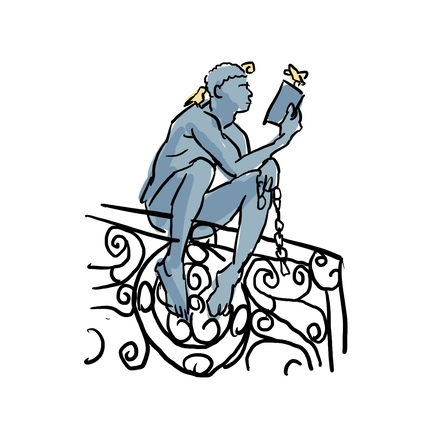
Take a look at the beautiful wooden bookshop on either side of La Fosse Street. Founded in 1919, Coiffard bookshop is one of the oldest in the city. It has kept its authenticity thanks to its beautiful wooden bookcases

Anyone who has been to Nantes will remember a sublime staircase passage surrounded by beautiful shops. I bet you'll be no exception. The Pommeraye passage impresses and envelops you with a sense of beauty.
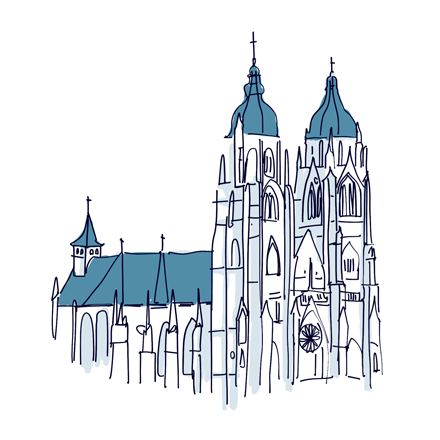
You are standing in front of one of the city's two basilicas. At the end of the 12th century, there was a small chapel, which would grow in size through repeated expansions century after century, along with its Saint-

The Royal Square was designed at the end of the 18th century by Mr. Crucy, the city's architect, to whom we owe the Graslin Opera House. After the recent demolition of the old medieval wall the freed space had to be
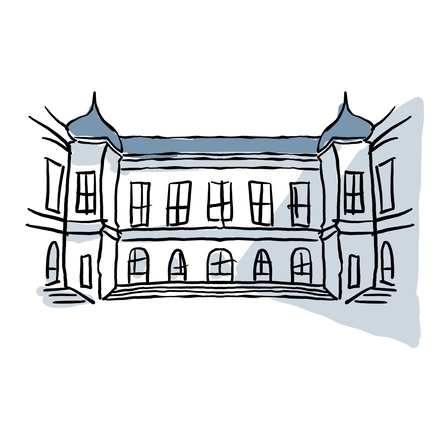
Here, tucked away behind its wrought-iron gate, you will find Nantes' beautiful City Hall. Today, the buildings accommodate the mayor's offices, the city council, and various administrative departments.
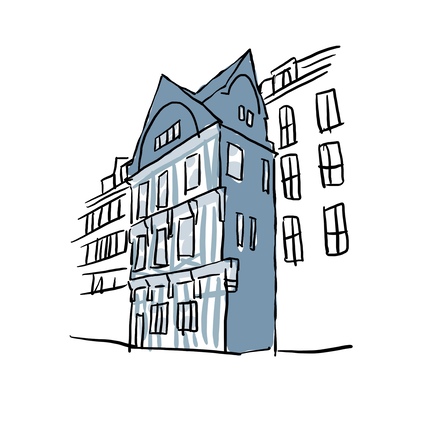
As you arrive at Exchange Square, you can admire one of the few remaining vestiges of the Middle Ages in Nantes. Unlike other towns in Brittany, such as Rennes or Vannes, you will have noticed that the town has
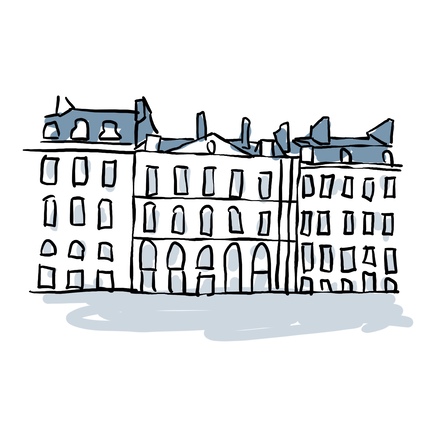
You may have noticed that several houses in Nantes tend to lean dangerously. This is really obvious on la Fosse Quay, opposite the port, where facades seem to follow a surrealistic angle. Look at the one of the bakery in
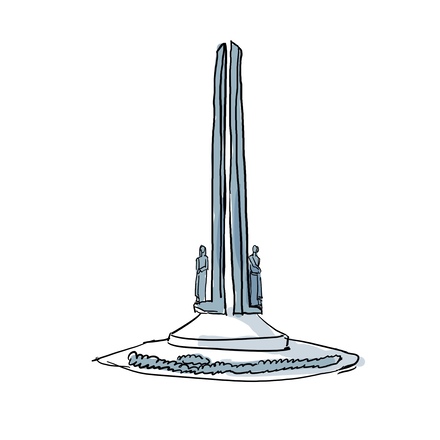
The fifty hostages square and its commemorative monument remind us of a sad story, but one that must be told. As with all the atrocities that men have been capable of committing and the suffering inflicted on so

You now have a beautiful panoramic view on river Edre. François 1st, adored the view so much that he called it the most beautiful river in France. River Erdre is a tributary of the Loire, which borders numerous manors
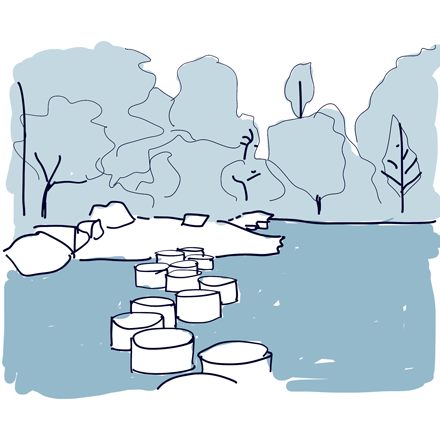
The quays lead you to the man-made island of Versailles, built entirely on the Erdre River. Once a marshland, the landscape was transformed in 1831 with the construction of the canal linking Nantes and Brest.

You're at the entrance of the Erdre House. This space, modelled on a Japanese tea pavilion, raises visitors' awareness on the biodiversity of the Erdre. It hosts exhibitions and a wide range of information about the river's

As you leave the island through this high footbridge, enjoy a panoramic view over the Erdre and its pretty barges. A perfect place for a great picture! The quay below you and the footbridge were both named after Henri
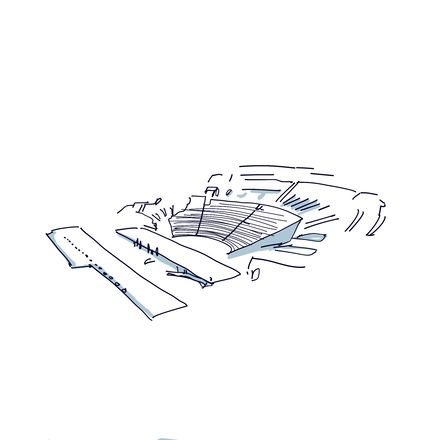
Here you are, in the heart of Lugdunum, Lyon's major archaeological site, listed Historical Monument since 1905. The ancient theatre that stands before you is thought to have been built around 15 BC under the Emperor Augustus. It's the oldest Gallo-Roman theatre in France, and one of the largest

The Basilique de Fourvière, a UNESCO World Heritage site and the city's most emblematic monument, is sure to surprise you. Its distinctive architecture is a blend of Byzantine, Gothic and Romanesque inspirations as it it underwent a great number of modifications throughout its existance.

Behold, as the entire city unfolds before you! From Vieux-Lyon at the foot of the hill to the towers of Part-Dieu, passing through the Presqu'île, the Saône, and the Rhône rivers, you have an all-encompassing panorama of the city and its surroundings. One of Lyon's most iconic views, cherished by visitors as each neighborhood unveils

Take a moment to enjoy this lovely view of the city! You're in the Parc des Hauteurs, literally the park of Heights. It links the Basilique de Fourvière and the centre of Vieux-Lyon through wooded slopes and flower gardens. Laid out in 1989 with the aim of sustaining the site of the Fourvière hill and enabling the people of Lyon to move
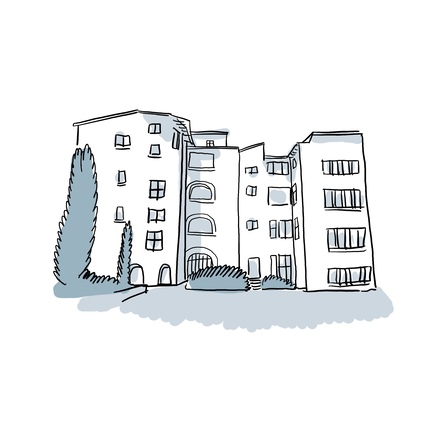
You arrive in front of the Place de la Basoche, where a beautiful lion statue waits for you. This square is surrounded by pretty, colorful houses with Tuscan galleries, presenting a fine example of the Renaissance architecture, also characteristic of the Vieux-Lyon district. In 1406, the square was home to an annex of the Palais de Justice
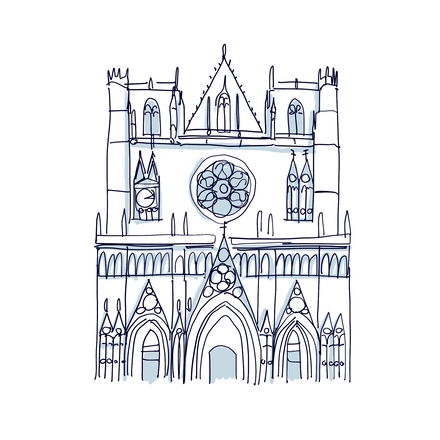
The central square of Vieux-Lyon, Place Saint-Jean is the oldest in the city. Overlooked by the Saint-Jean-Baptiste cathedral, Lyon's largest and most important church, the square features a fountain representing an ancient temple and a sculpture of Saint John the Baptist. The cathedral, formerly known as the Primatiale des Gaules
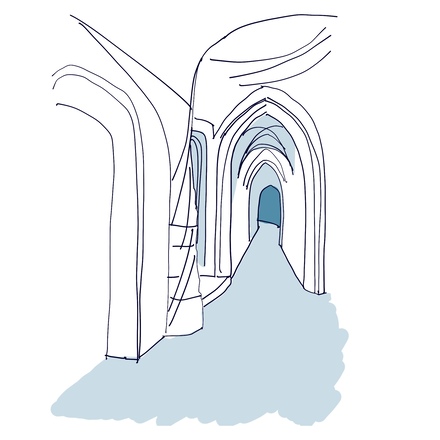
You're standing at the entrance to the Longue Traboule, at number 54 rue Saint-Jean. It is the longest traboule in Vieux-Lyon! Crossing five courtyards and four buildings, it links the two most important streets of the district, rue Saint-Jean and rue du Bœuf.
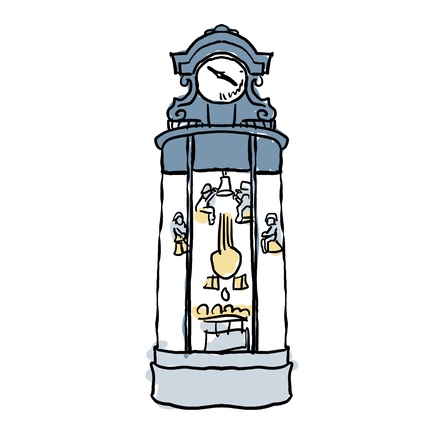
Right in front of you, elegantly set in the heart of the Vieux-Lyon, stands the Charvet clock. Come take a closer look to this very special clock! It's made up of 5 bells - no surprise there - but look even closer at the 4 automatons that surround them.
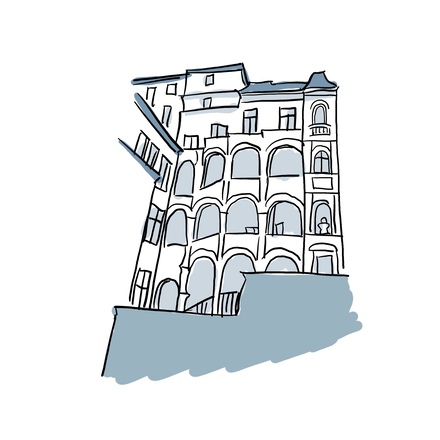
You are now in rue Juiverie, the heart of the old Jewish quarter. Here I suggest you to look up slightly and observe the various coats of arms hanging on either side of the street. These are the coats of arms of the town's various aldermen, from Guy de la Mure in 1294 to Jacques Imbert Colomès
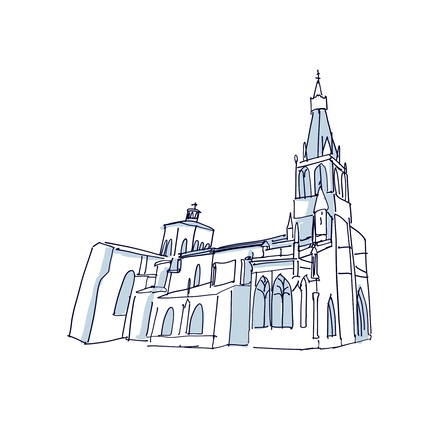
This is the Place Saint-Paul, part of the district of the same name, and one of the three districts of Vieux-Lyon. It was laid out at the same time as the railway station, on your left, which opened in 1876. It now serves Lyon's western suburbs. At the beginning of the 20th century, this square was the departure point for the Loyasse
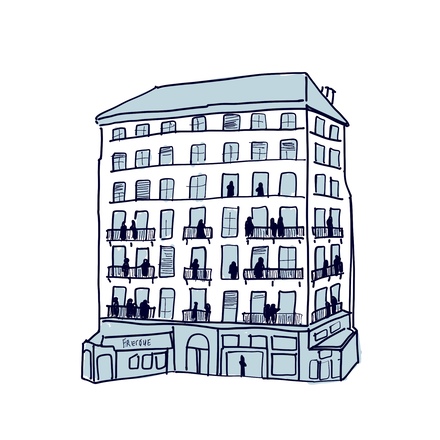
If you are found of learning more about Lyon’s history you absolutely have to see this fresco, painted in 1995. The 800 m² mural depicts 30 famous figures from Lyon who have left their mark on the city through their deeds or their talent. It includes 24 historical figures and 6 contemporary figures: the latter are located at the very
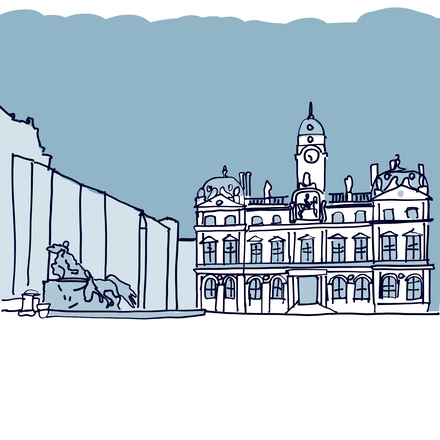
One of the liveliest squares on the Peninsula! With its expansive terraces and exceptional setting, Place des Terreaux appeals to both locals going out for a drink and visitors who appreciate history. The reason? The Town Hall, inaugurated in 1672 and restored in the 19th century, stands at the far end of the square and is one of Lyon's

Welcome to the National Opera of Lyon, a cultural haven where art comes alive. Located on the Place de la Comédie, opposite the City Hall, this iconic venue invites you to immerse yourself in a world of concerts, operas and ballets. Originally constructed in 1831, the building was redesigned in 1993 by Jean Novel
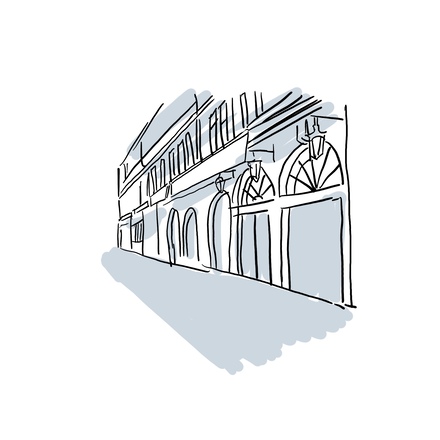
Here you are in Lyon's emblematic rue Mercière! This, now, pedestrian street is lined with restaurants on both sides. Here you are sure to find something to delight your taste buds. Indeed, Lyon bears the title of capital of gastronomy. This street is the home to several of Lyon's typical restaurants named “bouchon”.
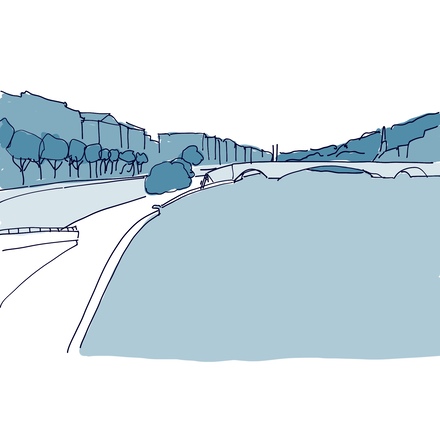
You're standing on the quays of the Saône river. Enjoy this lovely view of Vieux-Lyon and the Basilique de Fourvière dominating the hill! The Saône, along with the Rhône, is a river that flows through Lyon, separating the Old Lyon and the Presqu'île. It springs in the Vosges mountains and flows over 450 km into the Rhône
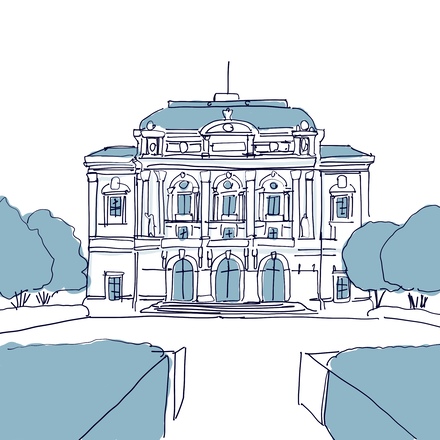
This is the magnificent Théâtre des Célestins. Located a stone's throw from the quays in the 2nd district, this Italian-style theatre is one of the only theatres to have seen over two centuries of dramatic art. Reduced to ashes in 1871, the Lyonnais architect Gaspard André undertook the task to rebuilt it.
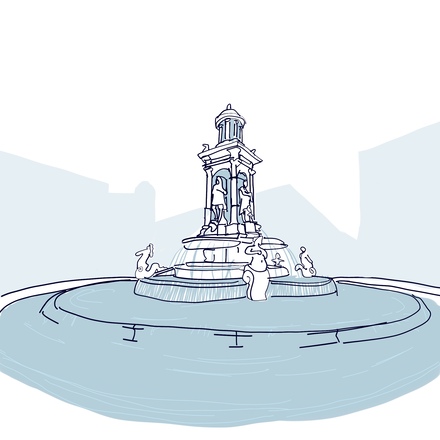
This square has, pretty much always, been an important gathering place for the people of Lyon. In his famous novel Pantagruel, François Rabelais wrote about this place, formerly known as Place Confort, characterizing the residents as the "chatterboxs of Confort”. Now known as Place des Jacobins
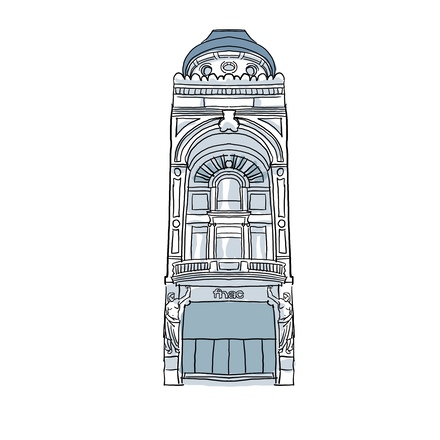
Here you are in the heart of Lyon's shopping streets, at the start of the famous rue de la République, where you'll find all the big brands at the foot of beautiful 19th-century buildings. Commonly known by the locals as "rue de la Ré", it is the Presqu'île's main thoroughfare and also it’s longest street.
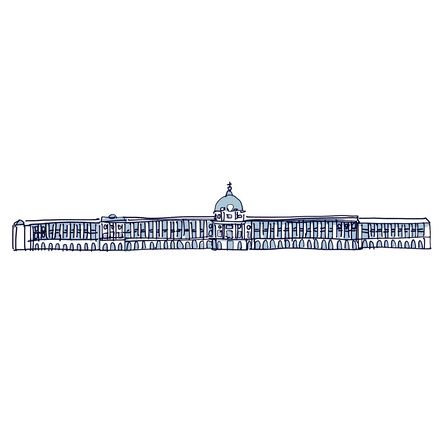
You are now entering Lyon's Grand Hôtel Dieu. Hôtel-Dieu’s were charitable institutions founded and run by religious orders, usually Christian, with the aim of providing medical care and charitable services to the sick and needy. These ancient and precious hospitals can be found in most French cities.
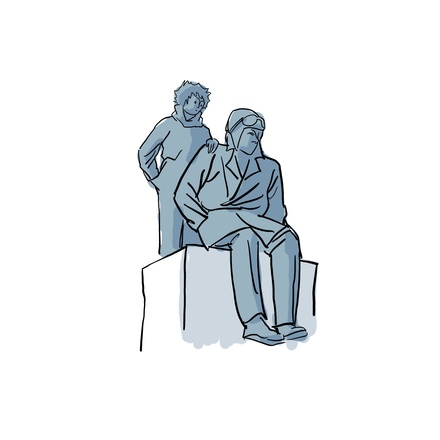
Few are aware of it, including the inhabitants of Lyon, but a true tribute to Antoine de Saint-Exupéry can be found here. Look up, he is there, sitting over 5 metres high next to his most famous figure: the Little Prince. This reknowned French writer and pilot was born in Lyon in 1900 and joined the French Air Force during the Second
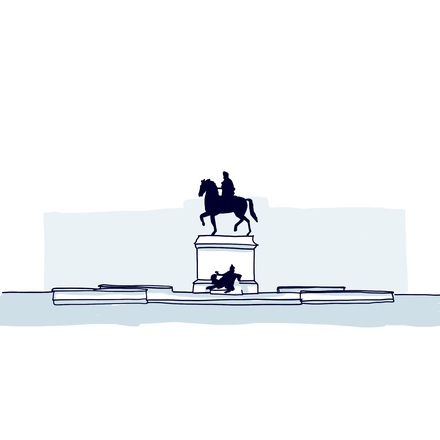
Welcome to one of the must-see places in the city of Lyon - Place Bellecour. It is one of the largest pedestrian squares in Europe and the third largest in France, after the place des Quinconces in Bordeaux and Place de la Concorde in Paris. As you can see its dimensions are impressive.
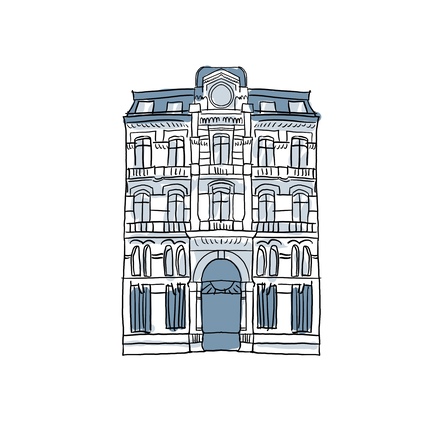
To your left, the building that blends in seamlessly with the backdrop of the Tilsitt quay is the Synagogue of Lyon. Look all the way to the top of it. You might notice a Star of David on the window of the top floor, however, it is probably the only element indicating it's a synagogue.

Savor this stunning panorama! It belongs to the city's most breathtaking views! In front of you, you’ll see the Saint-Georges Church, marking the entrance to the neighborhood of the same name. This area was once home to the Canuts, the Lyonnais silk workers, who later settled in the Croix-Rousse district.
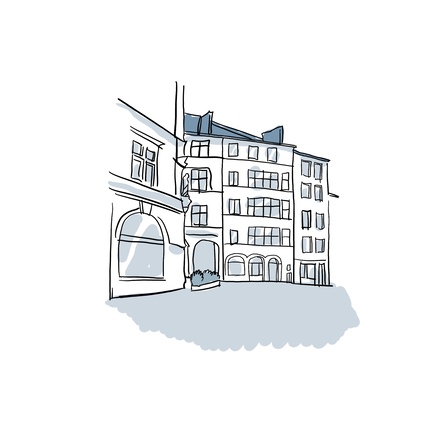
You're entering Vieux Lyon, the iconic district of the city! There is no doubt that you will be amazed of how different this area is, from the rest of Lyon. Don’t you feel like you've stepped into a picturesque village? That’s not surprising. Vieux Lyon is a Renaissance district, the largest in Europe after Venice, and one of the best preserved!
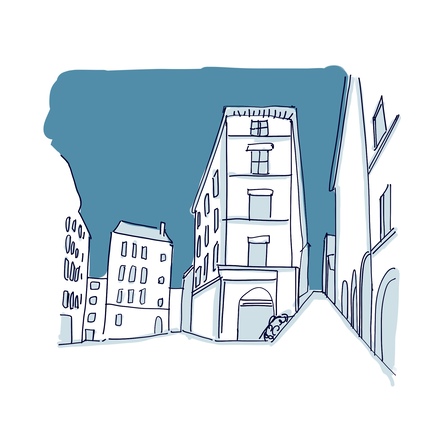
Trinity Square is located at the heart of the Saint-Georges district and was, at the time, a vibrant and essential place for the residents. This is where the stage for Guignol's shows was set up. Guignol is the iconic character of Lyon, created in 1808, just a few years after the Revolution.
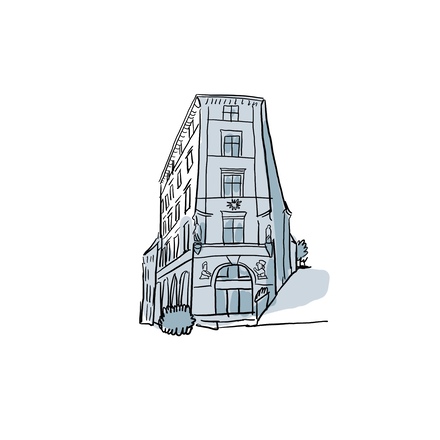
The montée du Gourguillon is one of the oldest Gallo-Roman roads in Lyon. In other words, it's over 2,000 years old! For a long time, it was the only road linking the Saint-Jean district in Vieux-Lyon to the Saint-Just basilica which is perched on the hill. It has been used by many people, including kings, princes and popes!

Sydney is without a doubt Australia’s most famous city, far more so than its capital, Canberra. Walking through the magnificent Botanical Garden is a wonderful way to learn more about this fascinating country that so many travelers around the world dream of visiting.
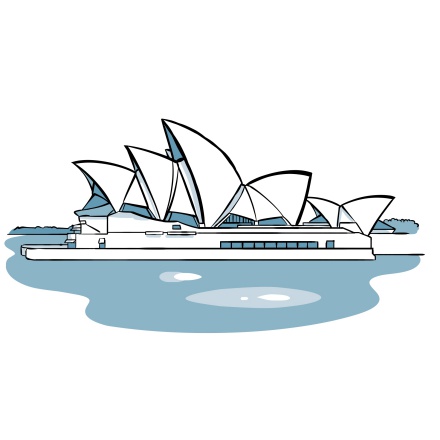
An iconic landmark of Sydney, known worldwide for its unique architecture, the Opera House is considered a true masterpiece designed by Danish architect Jorn Utzon. Inaugurated in 1973, its architecture is, reminiscent of a ship's sails
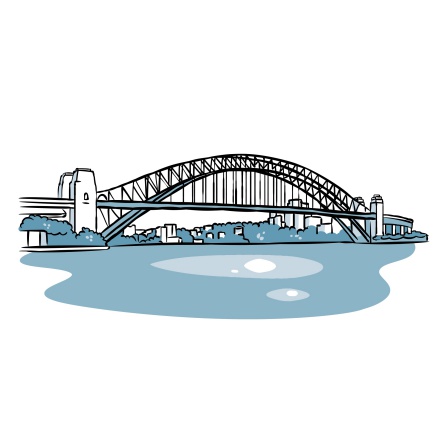
From here, you have a stunning view of the Harbour Bridge, Sydney’s second most iconic landmark after the Opera House. It took eight years to build this symbolic structure, which is still considered today as the widest bridge, with the
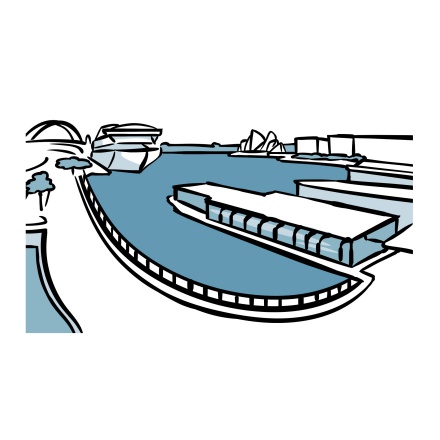
You are now in one of Sydney’s most popular tourist districts, a lively and bustling place at all times! Just a few steps from the Opera House, this quay is packed with cafés, restaurants, and shops of all kinds, making it the perfect spot to
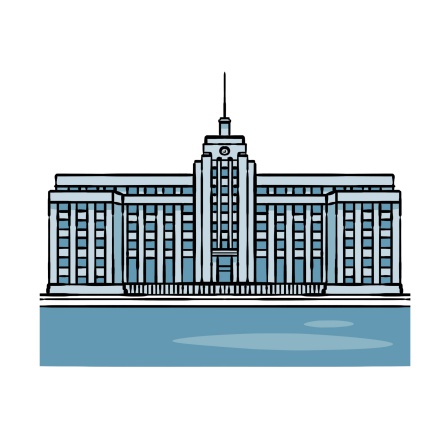
On your right stands the Museum of Contemporary Art in Sydney, Australia’s leading museum dedicated to both Australian and international contemporary art. Its main focus is to make art accessible to everyone, offering a wide range of
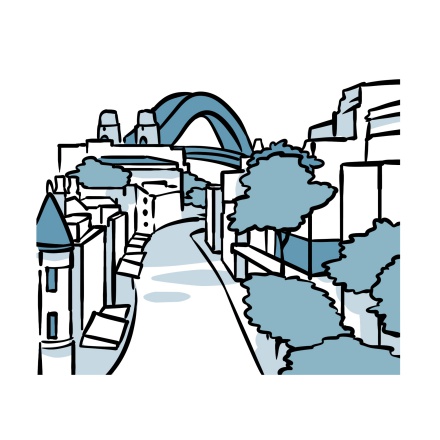
The Rocks is the oldest neighbourhood in Sydney. This is where the first settlers lived in the 19th century, just around the corner from Sydney Harbour. Captain Arthur Phillip officially founded the city in 1788, nearly 20 years after the

As you may have guessed, this is the perfect time to get your cameras out, and capture a must-have memory of one of the most famous landmarks in the world: the Sydney Opera House. From here, the view is just fantastic!
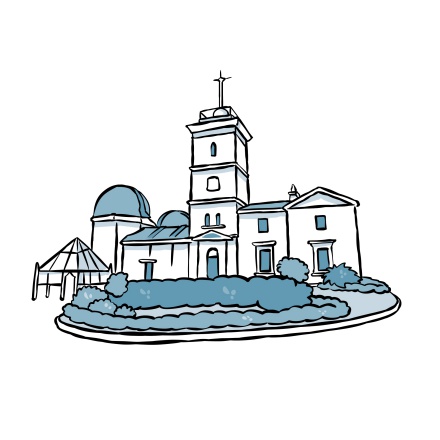
Just before you stands the Sydney Observatory, one of the most important sites showcasing Australia's scientific history. Designed in the early 19th century, this building was originally used as a fort. In 1859 it became a public museum

From the top of Observatory Hill, the view of Sydney’s skyline, features one of its most iconic towers, and also of one of the city’s newer districts: Barangaroo. This area’s redevelopment, which is still ongoing, began in 2012 and has led to

Sydney's city center, known as the City or the Central Business District, is the business hub of this Australian metropolis. Here, you’ll find the tallest skyscrapers, major hotel complexes, and the city's most renowned office buildings

As you walk along Angel Place, look up and listen closely to appreciate the artwork right above you, created by Michael Thomas Hill. These 120 birdcages were installed here in 2009, as part of a temporary project aimed at bringing life and

In front of you stands a key landmark of Sydney's business district: the General Post Office. Featuring sandstone walls, it’s a fine example of the architectural style used during the 19th century by the settlers. Inaugurated in 1874
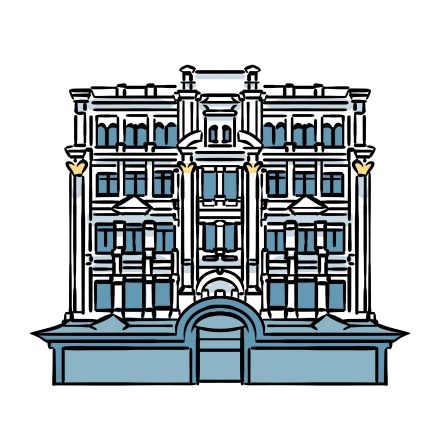
This amazing shopping arcade, located in the heart of Sydney’s business district, is a true delight for all shopaholics! Designed in 1892 in a beautiful Victorian style, Strand Arcade has shops across three levels, offering a perfect shopping

Turn around and look up for a perfect view of the Sydney Tower, the tallest tower in Sydney and the second tallest in Australia, which is also a UNESCO world heritage site. Its observation deck takes you 260 meters above the ground
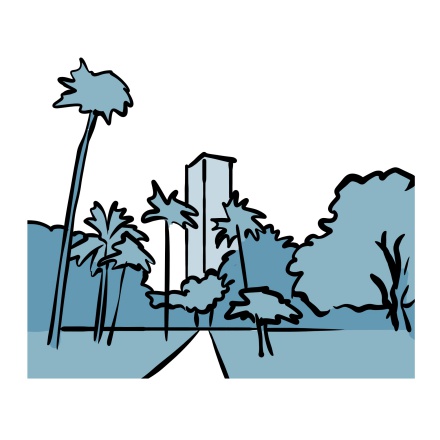
You are now standing in Australia’s oldest public park, named after the famous Hyde Park in London. It was created in 1827, inspired by the look of English parks, and is now the largest park in Sydney.
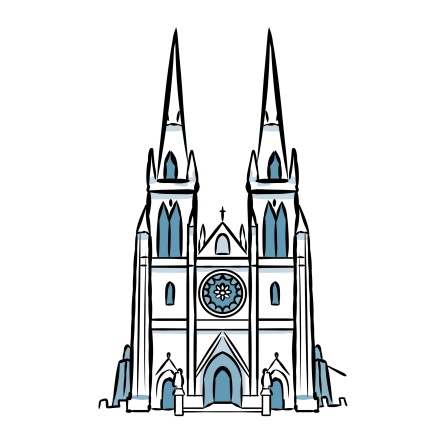
The construction of this grand cathedral began in 1821, under the direction of Governor Lachlan Macquarie who wanted a neo-Gothic style. Destroyed by a fire just a few years after its completion, reconstruction began in 1868.
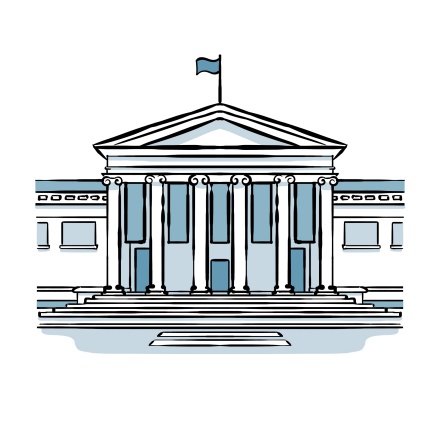
This is one of the main museums in Sydney, and in Australia as a whole. Inside, you will find collections of Australian, European, and Asian art, making it the largest public art gallery in Sydney. The Art Academy was founded in 1871, but it
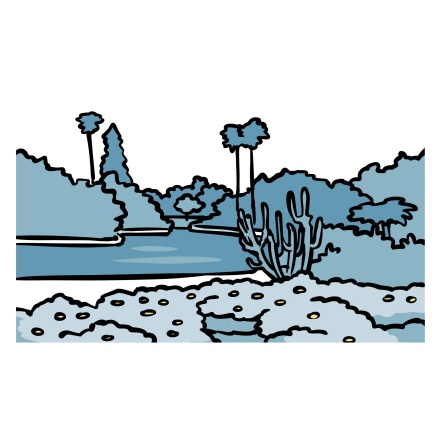
Opened in 1816, this magnificent Botanical Garden is one of Sydney's must-see attractions. With over a million plant species spanning across 30 hectares of gardens, it is the perfect place to enjoy a peaceful stroll, away from the city's hustle
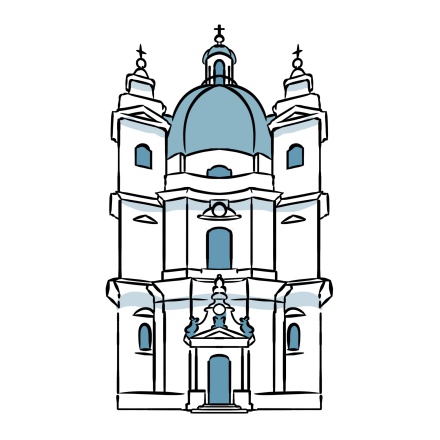
To your right stands St. Peter’s Church, beautifully framed by elegant façades. Inspired by St. Peter’s Basilica in Rome, it was built in the 18th century on the site of an earlier Carolingian church, originally founded in the year 800 by Charlemagne.

In Vienna, it’s not just the waltzes that will leave you feeling dizzy...At the corner of Graben and Kohlmarkt street, your head spins in every direction to see all the detailed architecture. Take a moment to admire the beautiful caryatids
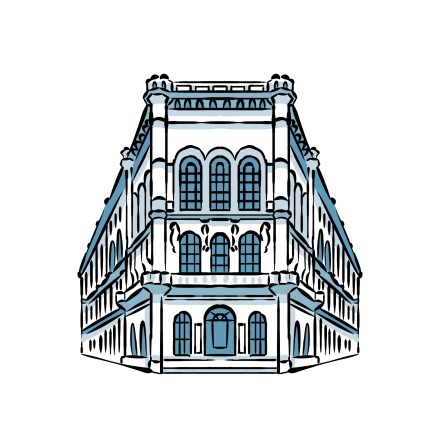
Café central is one of Vienna’s most iconic institutions, so don’t be surprised if you see a long queue outside! Some even call it the most beautiful café in the world... Being inside a palace certainly gives it a head start! Decorated with countless
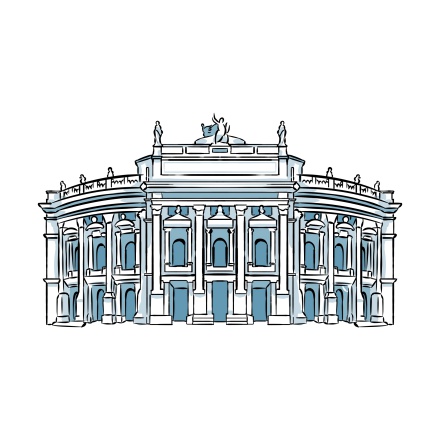
Welcome to the grand Burgtheater, one of Vienna’s most important cultural landmarks and the world’s largest German-speaking theatre. Inaugurated in 1888, it’s Europe’s second oldest theatre, built to replace the former Court Theatre founded
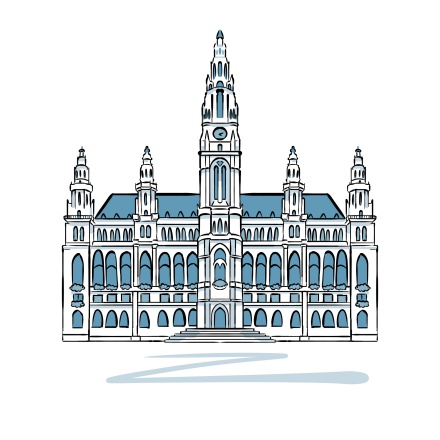
Just opposite the theatre stands Vienna’s beautiful City Hall. It feels like every building in Vienna is part of a beauty contest — each one trying to be more majestic, more ornate, and bigger than the last! You may think that this Gothic city hall
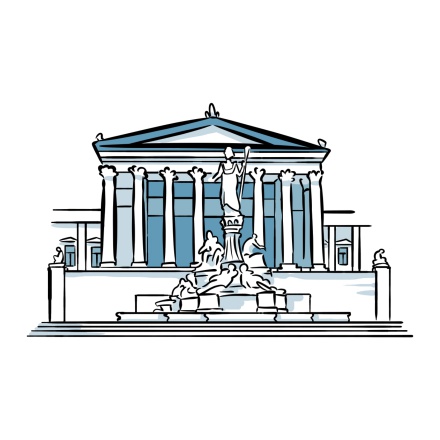
The imposing building in front of you is the Austrian Parliament. With its neoclassical style and Greek-inspired architecture, it’s one of the most striking and recognisable landmarks along the Ring. Built between 1874 and 1883 during the grand
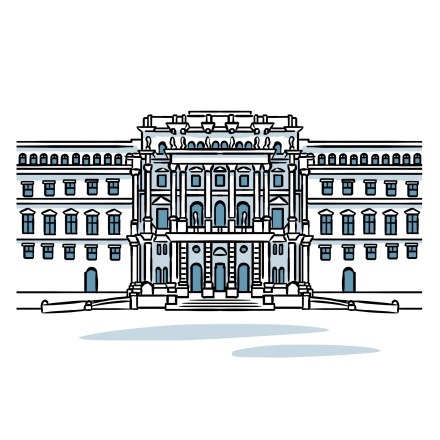
You can’t walk 5 minutes without passing a significant monument in Vienna, especially in this district. The Neo-Renaissance building in front of you is Vienna’s Palace of Justice, home to Austria’s Supreme Court. Emporer Franz Joseph I ordered
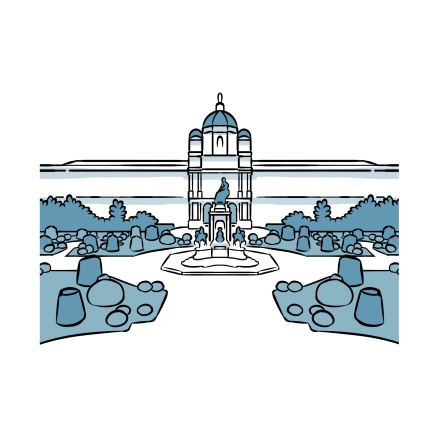
Welcome to Maria Theresa Square, surrounded by two twin palaces – one housing the Natural History Museum, and the other the Fine Arts Museum. Maria Theresa was the Archduchess of Austria, and the only woman to rule the Habsburg
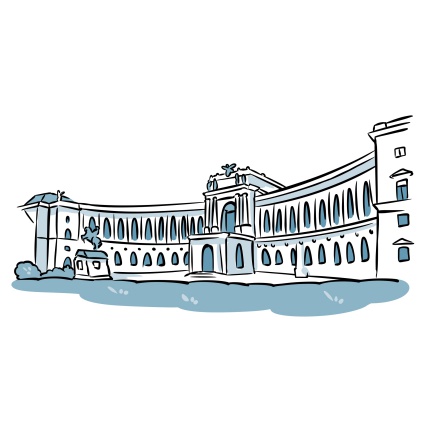
Welcome to Heldenplatz, Vienna’s historic Heroes’ Square. This area was part of the city’s defensive walls until the 19th century. A large bastion once stood here, protecting the Hofburg, but it was blown up by Napoleon’s troops during the War of

Discover X in Vienna with our audio-guided city tour on the Navaway® app.
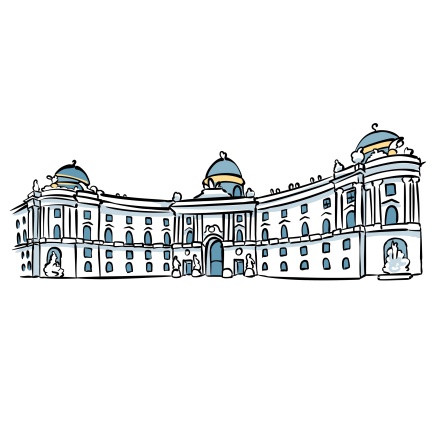
You’re now standing in what many consider the most beautiful square in Vienna —Michaelerplatz. This Baroque square is named after St. Michael’s church, a Romanesque rarity in the city dating back to 1219, and served as the parish church for
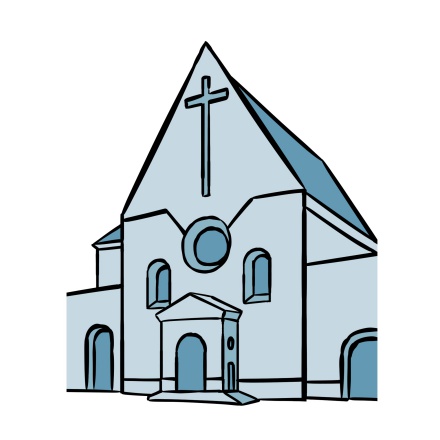
The church on your right may look modest from the outside, but it houses the striking Capuchin Crypt. This Baroque church was built between 1622 and 1632, and ever since, it has been the burial place of the Habsburg dynasty—including 12

A quick word about the monumental fountain at the tip of the museum, beneath the equestrian statue of Emperor Franz Joseph. It’s called the Albert Fountain, or sometimes the Danube Fountain. The figures represent the relationship between
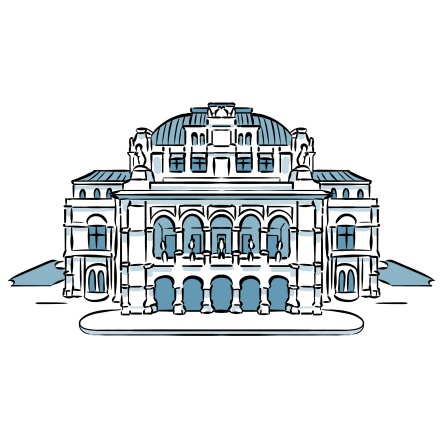
Here is one of Vienna’s most iconic landmarks—the Vienna State Opera. You probably already know it as one of the greatest opera houses in the world, famous for its exceptional programme of different performances every day! From June to
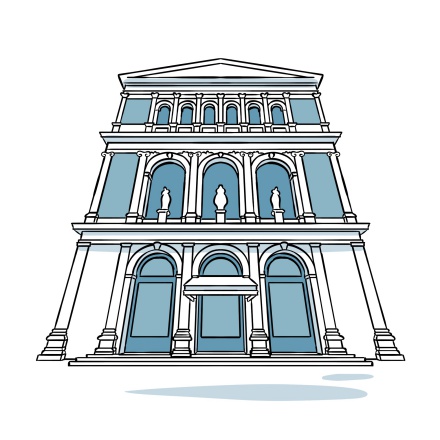
You’re now standing between two buildings devoted to art and music. On your left is the Musikverein, home to Vienna’s Music Society. Inaugurated in 1870, this concert hall is world-renowned for its acoustics. It’s also the seat of the Vienna
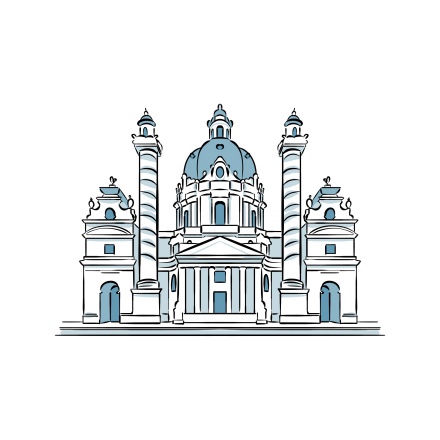
You’re now standing in front of a real masterpiece, Vienna’s iconic St. Charles Church. Even if churches aren’t usually your thing, it’s hard not to be moved by its beauty. That grand dome and those twisting columns are simply stunning.

Welcome to Schwarzenbergplatz, where Vienna’s old city walls once stood. When the walls were destroyed, the empty space was filled with beautiful buildings to line the small square. The large war memorial you can see behind the fountain was
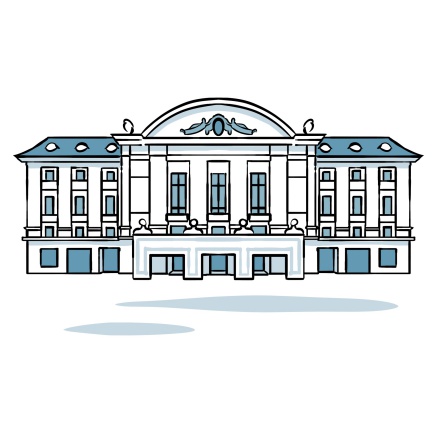
On your right stands the Vienna Konzerthaus. Inaugurated in 1913, this Austrian concert hall has always balanced tradition with innovation. It’s been a prestigious music venue from day one, renowned for high-quality performances and a varied
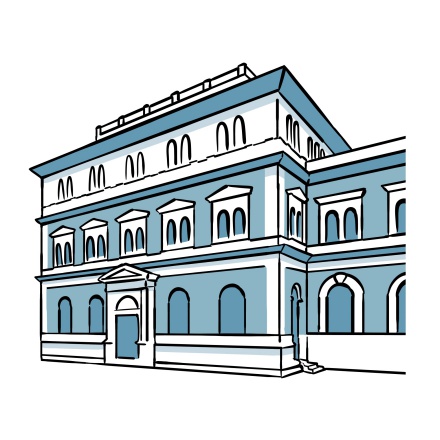
The beautiful red neo-renaissance palace on your right is the MAK – or the Museum of Applied Arts, one of Vienna’s most significant museums. Inside, you’ll find a fascinating collection of decorative arts, design pieces, and contemporary art.
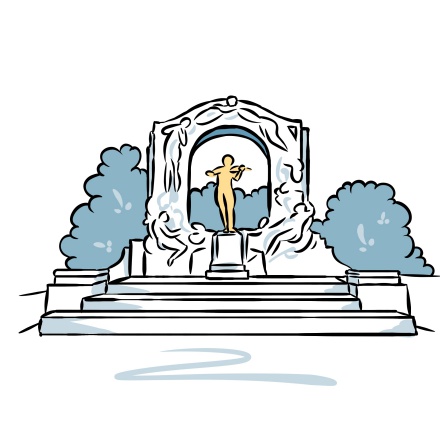
You’re now standing in one of Vienna’s oldest parks, Stadtpark. It’s been a favourite hangout spot for locals since 1862, feauturing English gardens, a wide variety of plants, and bridges taking you across the Wien river. The grand building you see
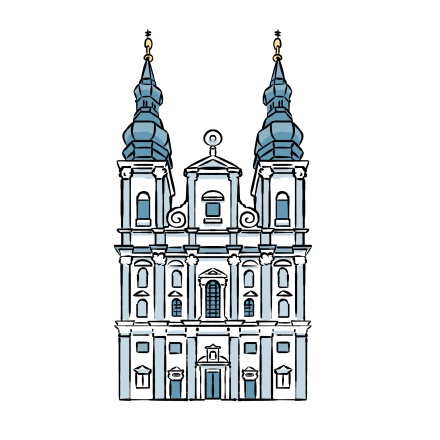
This square may be small, but its beautiful church and the stunning Academy of Sciences leave quite the impression! The baroque church before you is the Jesuiten Kirch, Vienna’s Jesuit Church. Built in 1627, it was modelled after the Gesù

In front of you stands Mozart’s old house, now a museum. The composer lived in about a dozen different houses in Vienna, but this is the only one to be preserved and turned into a museum. In the 17th century, it only had 2 floors, but it was later
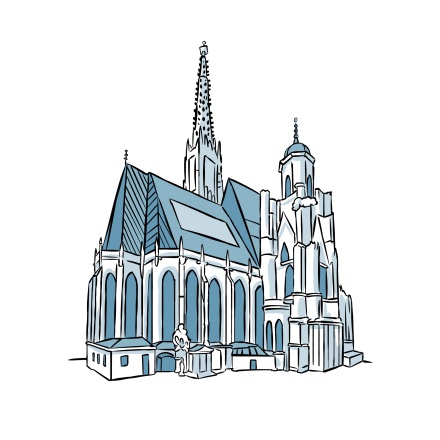
Here it is, the star of the show – the magnificent St. Stephen’s Cathedral. In German, it’s called Stephansdom, but the locals have nicknamed it Steffel, meaning Little Stephen. This is Vienna’s ultimate must-see landmark. Nestled in the heart of
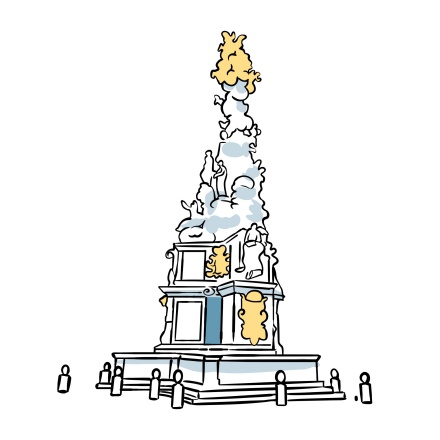
Welcome to the luxurious and elegant Graben Street, lined with high-end shops, ice cream parlours, and cafés housed in historic buildings. You won’t be surprised to know that this is Vienna’s main shopping street. It dates back to Roman times,
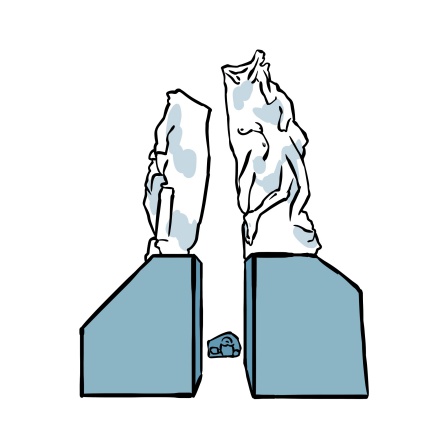
You’re now standing on Albertinaplatz, in front of the Albertina Museum. Once the palace of Archduke Albert, this elegant building now contains the world’s largest collection of graphic art. Between 1918 and 1934, the period known as “Red

On your left, you’re passing the arena of Vienna’s famous Spanish Riding School, located just opposite, in one of the Hofburg Palace wings. This prestigious institution is the only school in the world to have preserved the classical art of horse-

As you may have guessed, we're headed for the iconic Colosseum. But in the meantime, if you're up for visiting some of Rome's major churches, you can take the Via Cavour on your left to get to the famous Basilica of Santa Maria Maggiore.
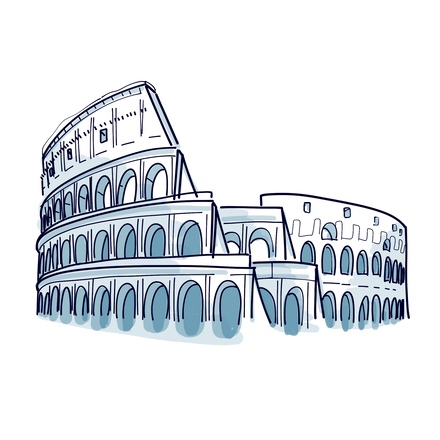
Introducing the famous Colosseum! I know, it's huge. The Flavian Amphitheater before you is the largest ever built by the Romans! That being said, the name Colosseum is not due to its size, but to the colossal statue that once stood at its entrance.
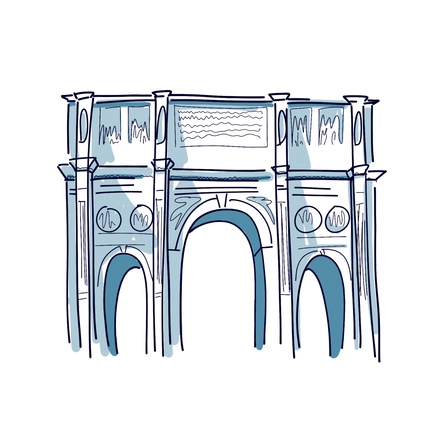
Before you is the Arch of Constantine, standing next to the Colosseum. It was built at the request of the Senate to celebrate Emperor Constantine's 10 years on the throne and commemorate his great victory over Maxentius at the Battle of the Milvian Bridge.
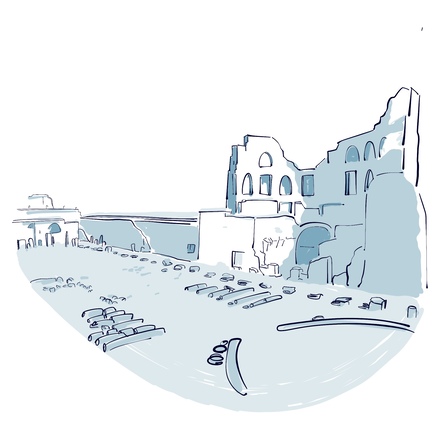
Next up is the Palatine Hill. You are welcome to buy an entrance ticket and explore this legendary hill that's said to be the birthplace of Rome. You'll get to roam the gardens and see the ruins of ancient Roman palaces, thermal baths and chariot-racing stadiums, all while enjoying stunning views over the city.

You're now walking beneath an arch of the Aqua Claudia, the ancient Roman aqueduct that once brought fresh water to the city.
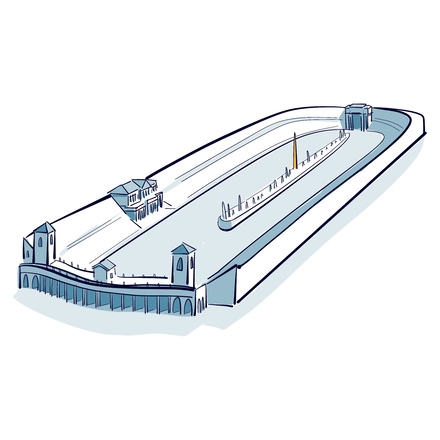
If you haven't cut across the Palatine Hill, you're in for a treat: here's your chance to explore the Circus Maximus.
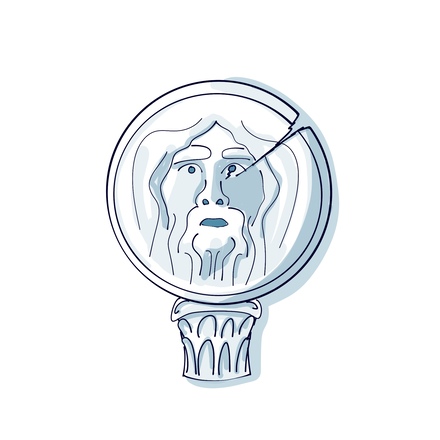
Welcome to the Piazza della bocca della verita, that is, the Square of the Mouth of Truth – surely a name you can't forget!
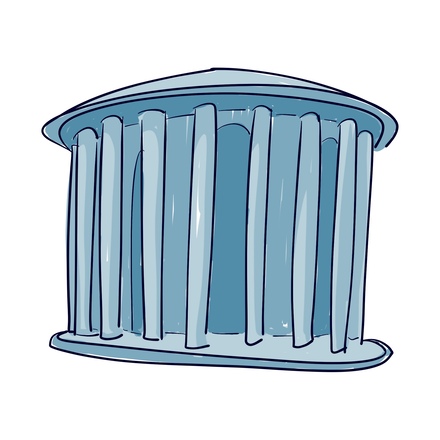
You can't walk two steps in Rome without stumbling upon a piece of ancient history. After you cross the piazza, you'll find yourself in the ancient Forum Boarium, the Old Ox Market.

Anyone who's visited Rome will tell you that you can't leave the city until you've crossed the Tiber River and strolled through the picturesque Trastevere district.
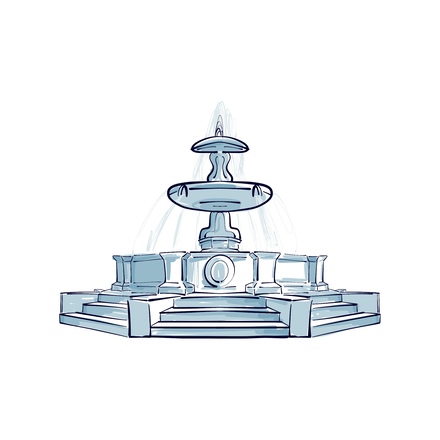
You've reached Piazza Mastai, named after Pope Pius IX, born Giovanni Mastai. The square was named after him because he chose this spot in 1860 to build the papal tobacco factory you see before you.
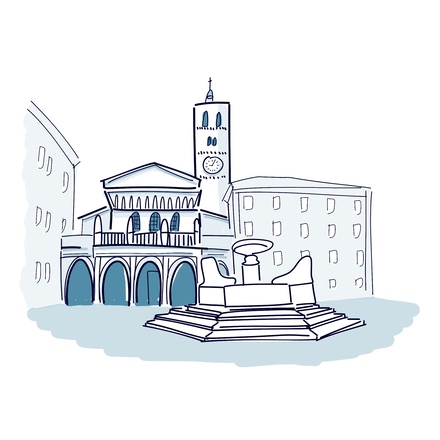
Introducing the Basilica of Santa Maria in Trastevere. This church in the heart of the Trastevere district has quite a history! It's believed to be the first official place of Christian worship built in Rome. Its original foundations date back to the 3rd century, and are said to have been laid by Pope Calixtus I.

A quick word about the door on your left. That's the Settimiana Gate. It's part of the remains of the ramparts built by Emperor Aurelian back in the 3rd century.

We're now crossing back over to the other side of the Tiber River via the Sisto Bridge, opposite the Piazza Trilussa.

You've probably seen those SPQR signs all over Rome. It's the motto of the Roman Republic and later the Roman Empire as well.

We've arrived at one of Rome's less touristy squares, home to one of the city's most beautiful fountains: the Fountain of the Turtles. In 1570, when the Aqua Virgo Aqueduct was restored, water was plentiful and fountains popped up everywhere.
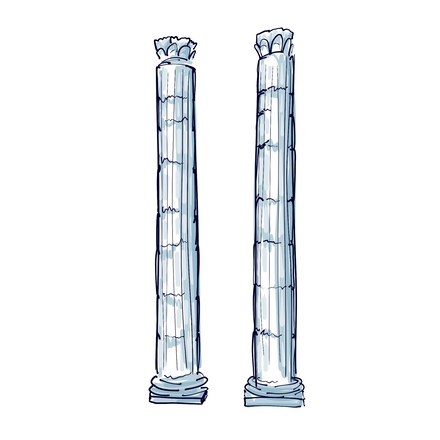
On your left, you can see what remains of the columns of what was once the Temple of the Nymphs. In ancient Greek mythology, nymphs were nature deities, tied to a specific place and usually depicted as maidens.
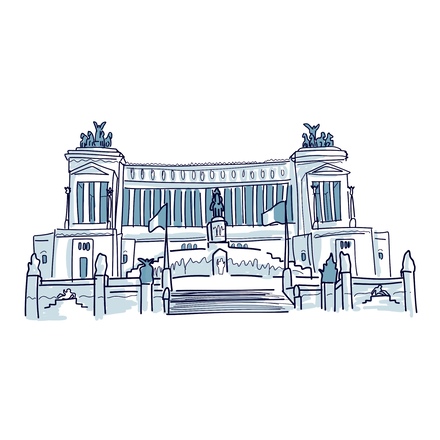
Before delving into the Roman Empire and meeting historical figures like Caesar and Augustus, we should first say hello to the man credited with unifying Italy: Victor Emmanuel II, the so-called “Father of the Fatherland."
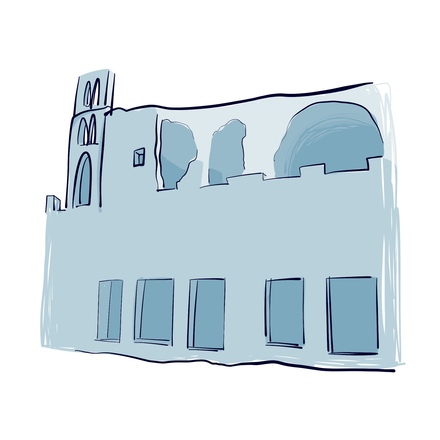
Over there, on your left, you'll see the remnants of the only surviving Roman insula. Insula is Latin for “island,” and it's the forerunner of today's apartment buildings.
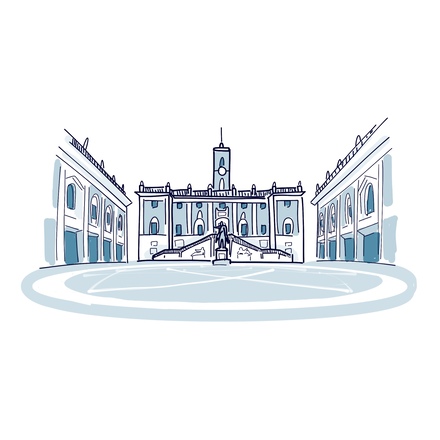
You're now in the very heart of Rome, atop the smallest of its seven hills, the Capitoline Hill. In ancient times, this was the site of a fortress overlooking the Forum.

Introducing the famous She-Wolf suckling Romulus and Remus, sitting atop this high column. The original, dating from the Middle Ages, is in the Capitoline Museums.
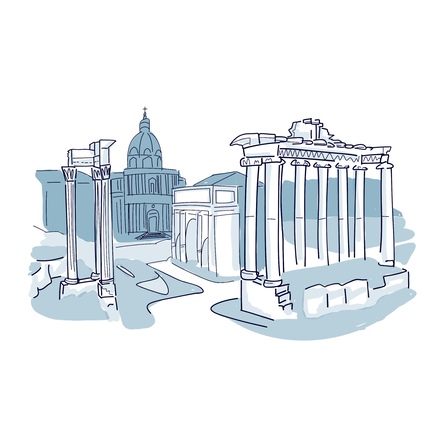
Imagine yourself transported back to the 10th century BC. Before you lies a marshy, inhospitable wasteland, serving as a necropolis for the villages on the surrounding seven hills.
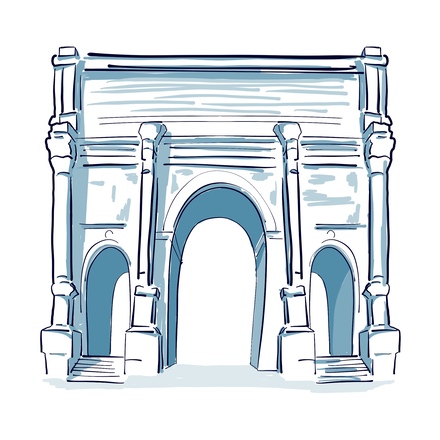
From here, you have a stunning view of the Arch of Septimius Severus and its beautiful bas-reliefs. The Senate had it built in 203 AD as a tribute to Emperor Septimius Severus and his sons, in commemoration of his military victory over the Parthians.

The small footbridge before you offers a lovely, unobstructed view of Trajan's Forum. It was the last imperial forum to be built in Rome, back in the 1st century AD.

You're standing on the banks of the Fontain Canal, which leads straight to the gardens bearing the same name!
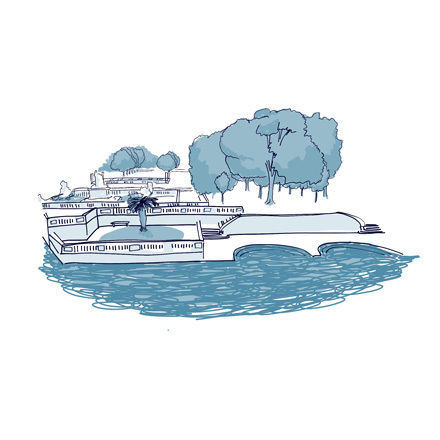
Welcome to one of the most beautiful gardens in the world! The Fountain Gardens have been ranked among the world's top 150 most beautiful gardens.
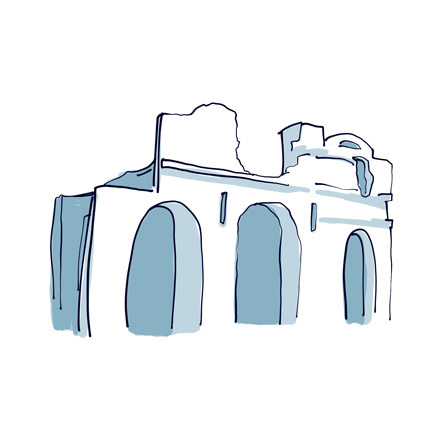
You can't miss this Roman remnant, located in the heart of the Fountain Gardens!

We'll stop here for a moment. You're standing between the two garden basins, which actually form the first natural spring of the city.

The Magne Tower is an outstanding remnant of the city walls that once surrounded the town of Nîmes. It overlooks the Fountain Gardens and bears witness to the rich historical past of the city known as French Rome.
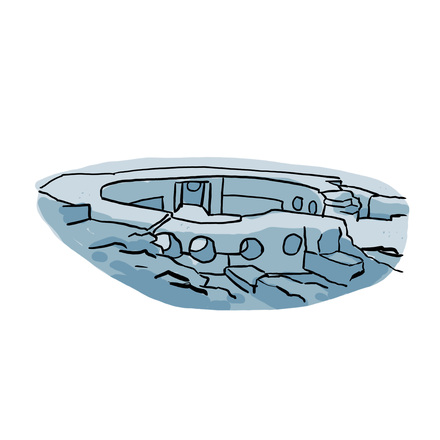
These are the remains of the castellum, standing right in the middle of the street, just a stone's throw from the University of Nîmes.

Take a look to your left: here's an interesting street art spot.

You’re now looking at The Spot, a building that has been home to a hybrid, alternative venue since 2013. The association bearing the same name is based here, with the aim of promoting alternative cultures.
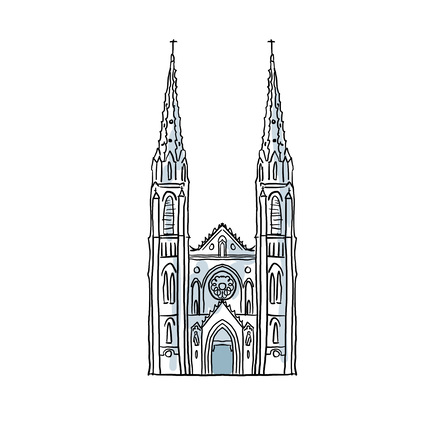
Built between 1867 and 1877, the magnificent Saint-Baudile church is far from being the oldest monument in Nîmes.
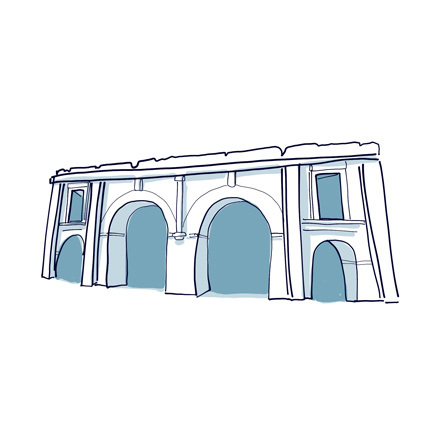
This is the Gate of Augustus, a landmark of Nîmes' heritage! Also known as Arles Gate, it is an ancient remnant of the walls that surrounded the town in Roman times, and dates back to the 1st century BC!
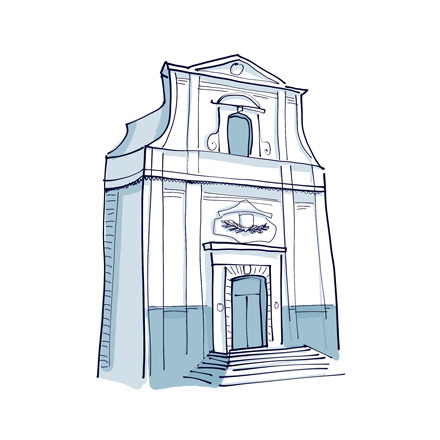
This is the Grand Dominicain Temple. Built between 1714 and 1736, it belonged to the Catholic religious Order of Preachers, founded in 1215.
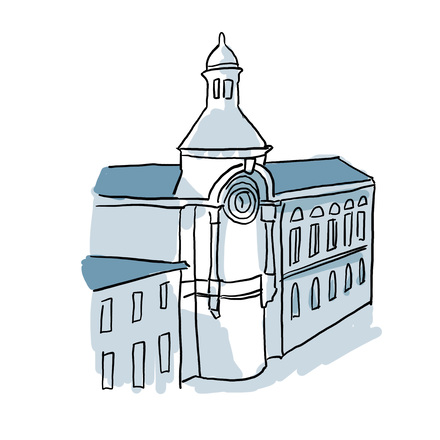
Welcome to the Chapel of the Jesuits, built at the end of the 17th century.
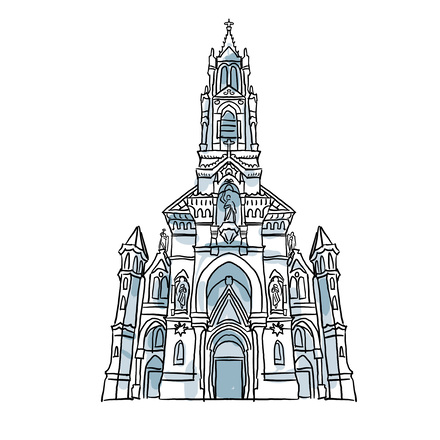
Built during the Second Empire, the Saint Perpetua and Saint Felicity Church exemplifies the eclectic style typical of the period. Its construction took around 12 years.
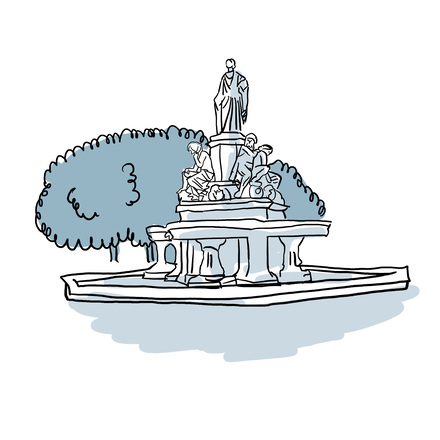
Built in the second half of the 16th century, the Charles de Gaulle esplanade was initially designed as a place for artillery exercises.
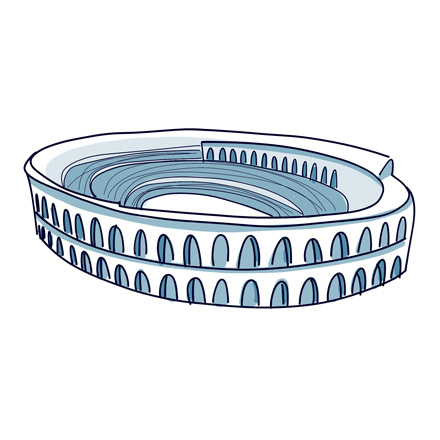
The Nîmes Arena is the best-preserved Roman amphitheatre in the world! From the 1st century onwards, over 23,000 spectators gathered here to watch gladiator fights!

Further down the Arena Square, you can spot the imposing Roman Museum. The museum opened in 2018 to showcase the city's archaeological collections, which were previously housed in a much older museum.
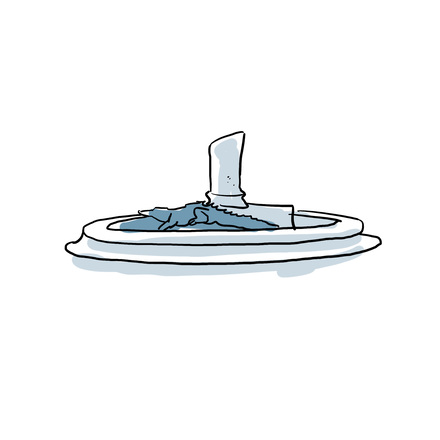
Quite a charming square, don't you think? Look out for the palm tree in the centre: it's one of the two landmarks of the city of Nîmes!
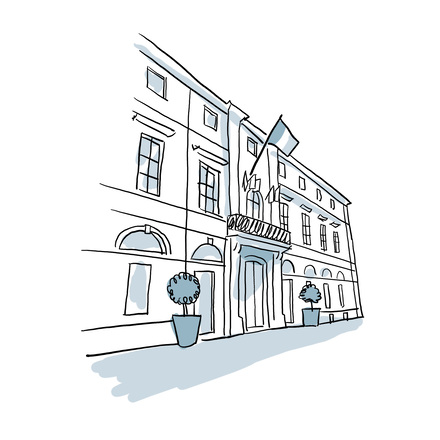
You are standing in front of the Town Hall of Nîmes. Initially, this building housed the Royal Treasury.
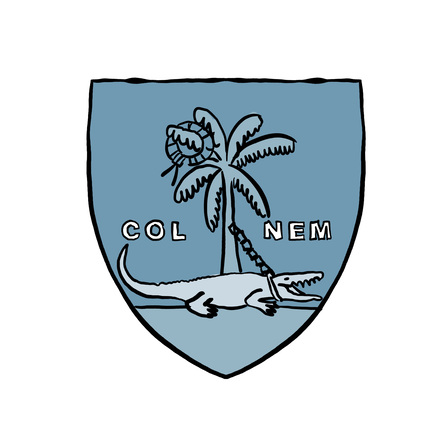
This is the heart of the historic centre of Nîmes, known as “Écusson” because of its shape, which, if you look on a map, does indeed resemble an escutcheon, or a badge!
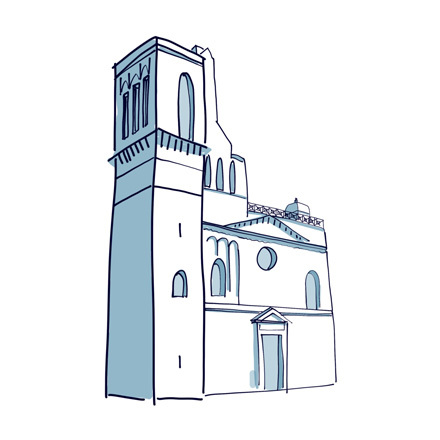
Welcome to the Cathedral of Nîmes, known as Notre Dame and Saint Castor.

You are standing before the Nîmes Romanesque House, at no. 1 Madeleine Street.
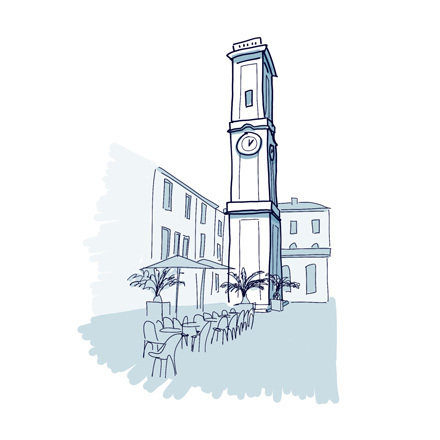
Welcome to Horloge Square. Here, you can see the 31 metre-high Horloge Tower overlooking over the square.
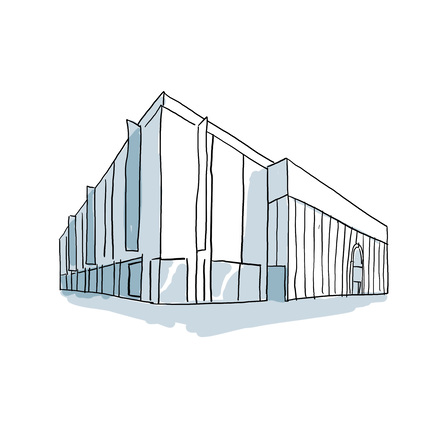
Food lovers, this is the place to be! The Nîmes Covered Market feature around one hundred stalls full of local produce.

The Small Temple of Nîmes has nothing to do with the Dominican Grand Temple. It was named as such to differentiate it from the Grand Calade Temple, which was located in Nîmes until 1686, when it was destroyed.
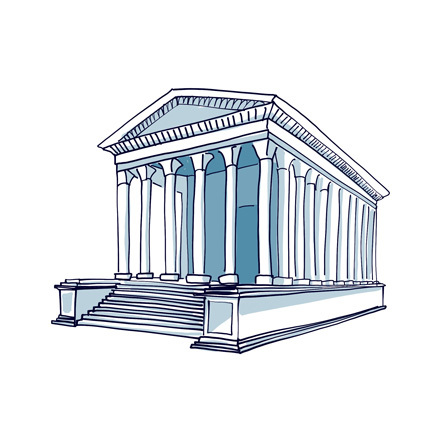
This is one of the finest remains from the Roman era! The Square House is the only completely preserved temple from the ancient world, after the world's best-kept Roman arenas!
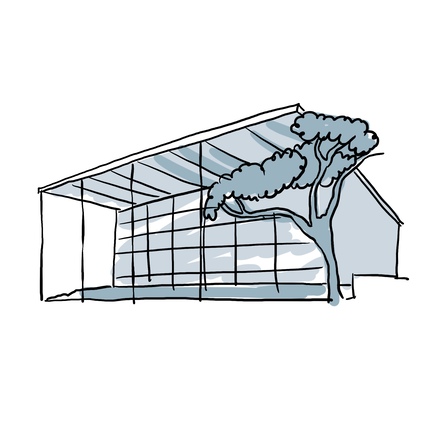
The large building on your left is called the Art Square.

Your eyes were likely drawn first to that old archway spanning the street. But trust us, it’s the building connected to it on the left that really deserves your attention. The Saint-Foy Chapel, commonly called the Chapel of the White Penitents

Having a coffee, shopping, attending an opera – is just a short list of activities that make Place de la Comédie the favorite leisure place of Montpellier resident. For more than 250 years, it has been the beating heart of the city, and its history
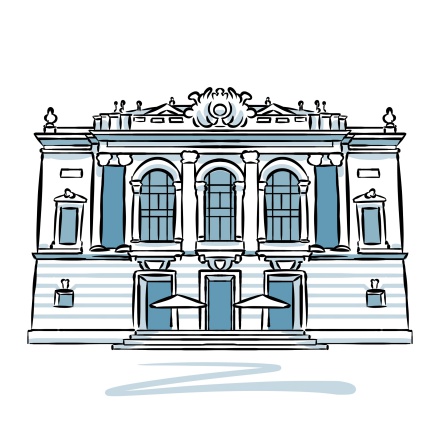
Comédie, the square, comédie, the theater, is there a Montpellier naming trend? Not really, no. However, if these two flagship attractions of the city do share the same name, it's not by chance. Their history is simply connected.
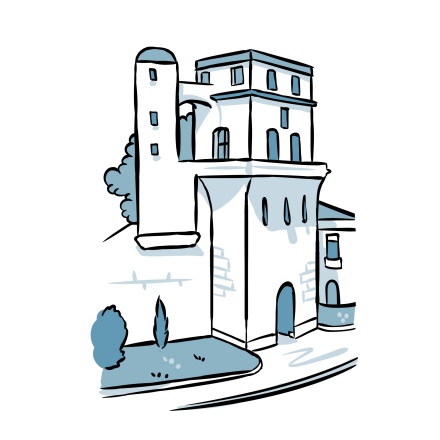
This fortified silhouette, classified as a historical monument since 1927, is well known to the people of Montpellier. But for us, who are quietly advancing into the unknown along the boulevard, the surprise effect is total.
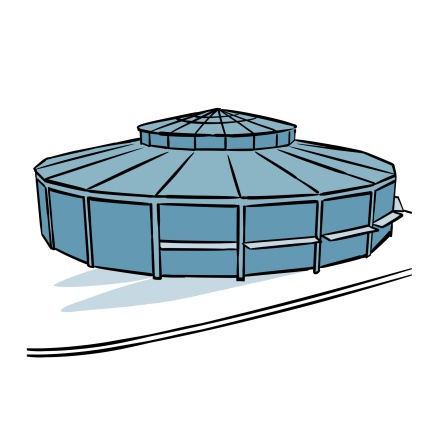
While grand monuments tell us the history of a city, local markets are the ones that take us on a tour of regional flavors. In Montpellier, a Mediterranean destination at the crossroads of taste, eating well is almost an art form.

The neighborhood you walk through, the square you enter, even the church you approach — everything points to one man: Saint Roch. Originally from Montpellier, the city of which he is the protector, Saint Roch is known as the healer of plague

In Montpellier, we can certainly talk about the old center, but in the mouths of the locals, the true locals, it's mostly referred to as l'Écusson. Guardian of stories and traces of the past, this district is the most famous and lively in the
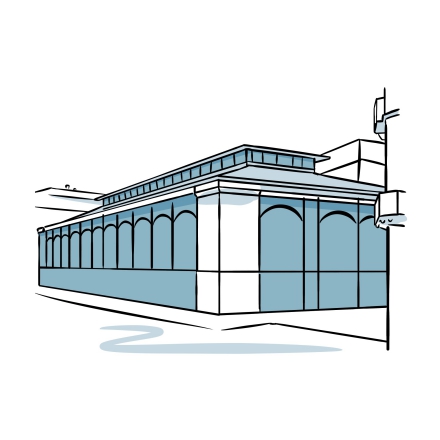
Neighborhood life in Montpellier gently rhymes with markets. This is beautifully showacesed here by the immense rectangular mass standing before you, or by everything that existed before it, if we go further back. Indeed, even in medieval
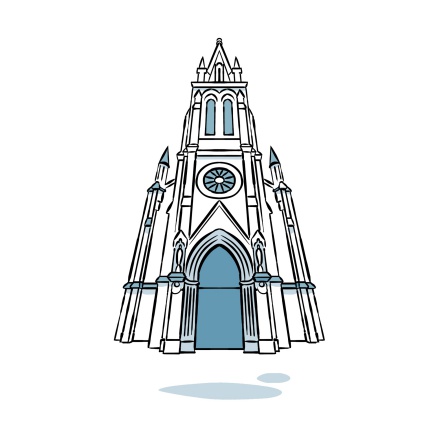
When we arrive at this square, our eyes are drawn only to the bell tower of the former Sainte-Anne church, visible throughout Montpellier. And by former, we don't mean to indicate the presence of another more recent place of worship with the
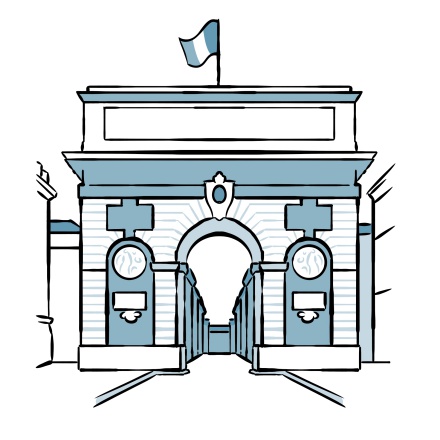
Paris isn't the only French city with its own Arc de Triomphe! Montpellier, known as the "gifted one," has one as well. They must have had something worth celebrating at some point in their history, Something or rather someone, to be more
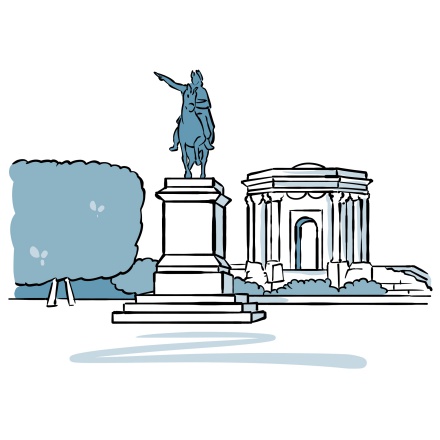
With its sweeping views of the countryside and elegant terraced gardens, the Peyrou Promenade is a place where many visitors find themselves daydreaming. However, getting to what we see today took time and this place went through several

Among the 82 botanical gardens across France and French-speaking countries, it's here in Montpellier that you'll find the oldest of them all. Impressed? You should be! But wait until you learn a bit more about this place that has been the pride

Supplying a city with water seems like a mundane task nowadays. But back then, you have to imagine that access to this natural resource was a real challenge. Montpellier can testify to that. Founded in the Middle Ages, the city severely lacked
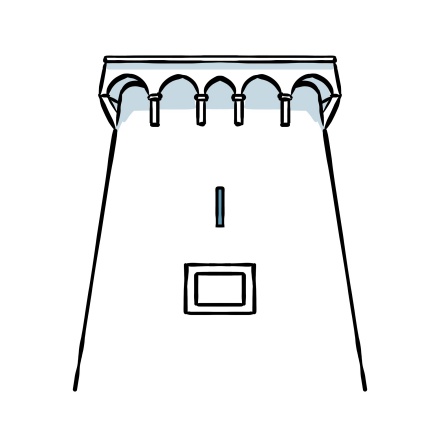
To admire another remarkable witness to Montpellier's history, all you need to do is to walk a 120 meters in a straight line from here. Nestled in the middle of a small square, the Tower of the Pines is one of the last remnants of the line of

The Botanical Garden is one of Montpellier's oldest attractions with a story that runs deeper than most visitors realize. During its 5 centuries of longevity, the site has accumulated incredible secrets and special features. Here are some gems!
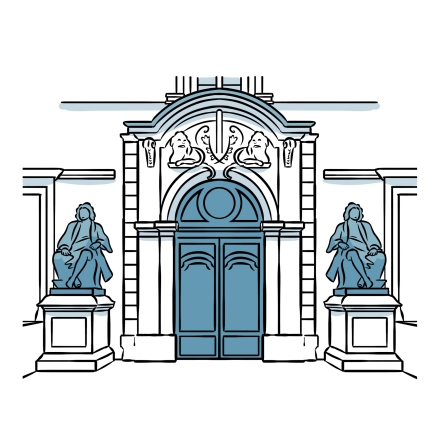
We promised to take you to the must-see attractions... but what if we showed you something truly unique? An undisputed treasure of the city, the Faculty of Medicine of Montpellier is the oldest medical school in the Western world still in

Get ready to be amazed—this iconic landmark of Montpellier is sure to take your breath away! Saint Peter's Cathedral towers majestually over the narrow streets of the Écusson district, offering a striking contrast to most cathedrals found in
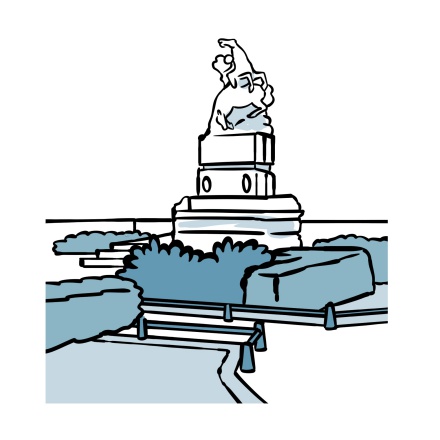
If Place de la Canourgue were to be described by its residents, discreet, beautiful, and romantic would certainly be the most recurring adjectives. Sure, from your current perspective, none of this stands out , but be ready, because in just a few

Despite being a relative young with only about 985 years old, Montpellier is filled with historical treasures and anecdotes that have shaped its character. While countless tales are still waiting to be discovered, we've dusted off a few of the best
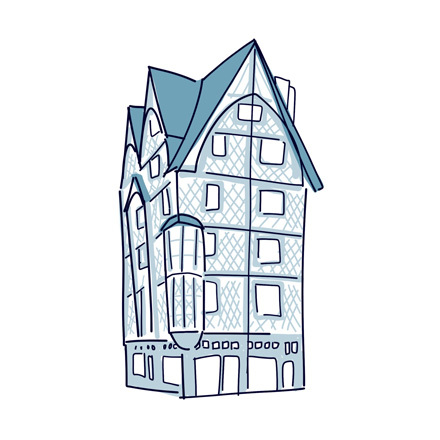
You've reached the beautiful Sainte-Croix square. Turn around and you'll see one of the most magnificent timber framed houses of the city and surely the most famous in Angers! Dating back to the 15th century.
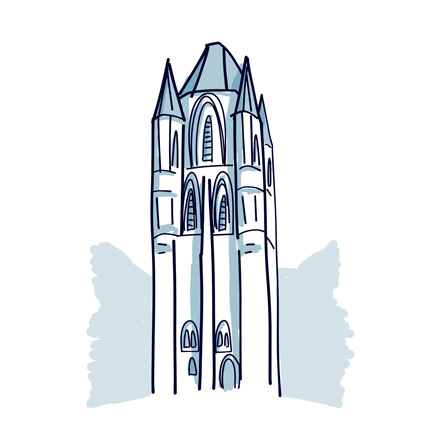
The Saint Eloi square, hidden behind the historic buildings, reveals some of the town's landmarks. The imposing Saint Aubin tower stands before you and is part of the abbey bearing the same name, which stood here between the 12th and 19th centuries.
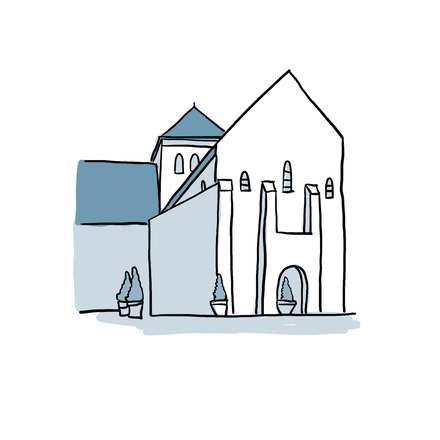
The Collegiate Church of Saint-Martin, which is one of the best-preserved Carolingian monuments in France, was discovered by archaeologists after 20 years of excavation.
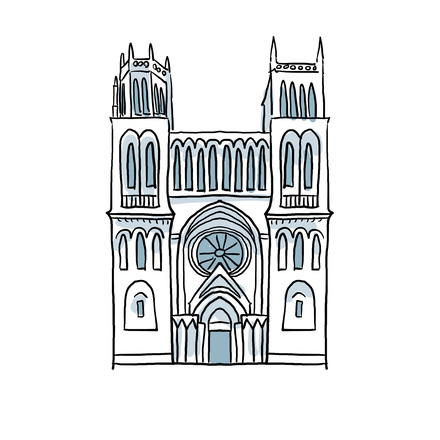
The beautiful Saint-Joseph church is impossible to miss !
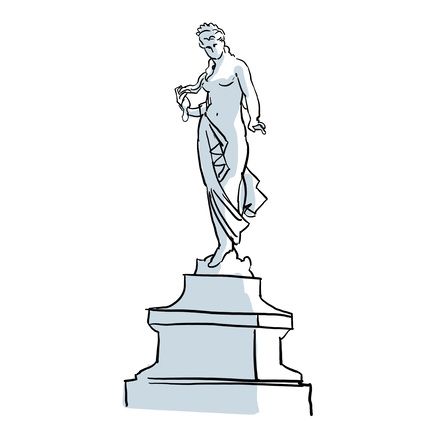
This is the heart of the Mail garden, one of the city's many parks! Did you know that Angers is considered one of the greenest towns in France?
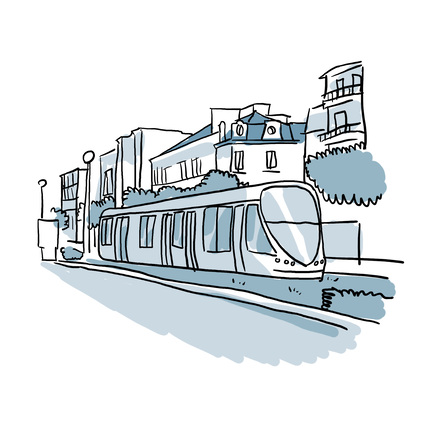
Foch Boulevard is one of the main thoroughfares in Angers' city centre. Here you'll find restaurants, pubs and shops, drawing large numbers of Angevins and students every day to enjoy the never-ending hustle and bustle.
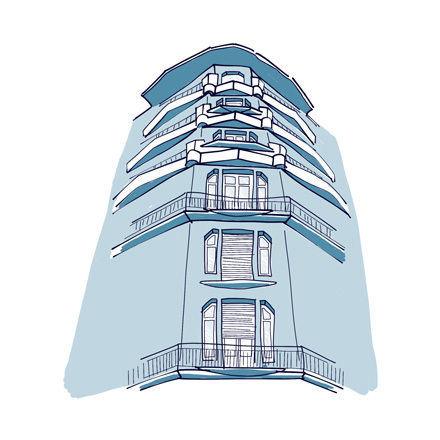
Take a look at the building on your right, whose top is a lovely shade of blue. Simply known as the Blue Mansion, it is adorned with magnificent mosaics and is one of the rare examples of Art Deco architecture in Angers.
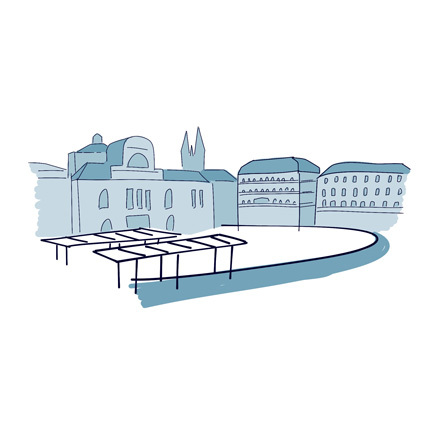
This central square, with its bars, restaurants and shops, is visited by thousands of Angevins every day! The square was originally home to three churches.

This pretty monument in the heart of Angers' shopping street is the Pincé museum. It was built between 1528 and 1535 in the Renaissance style by the Angevin architect Jean Delespine.
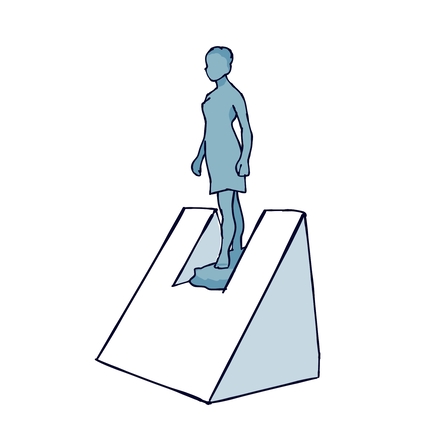
Pilori Square is a small square in the centre of Angers. This picturesque pedestrianised square is very busy, with many shops and restaurants.
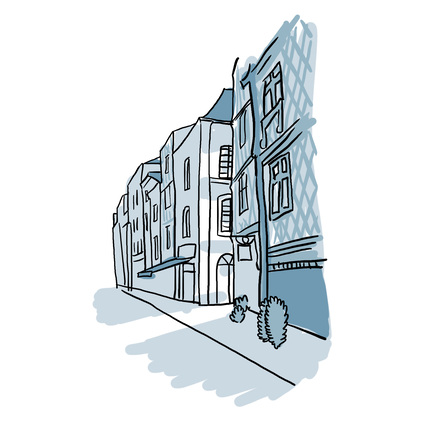
Saint-Laud is one of the students' favourite streets, and for good reason: it is lined with bars and restaurants of all kinds!
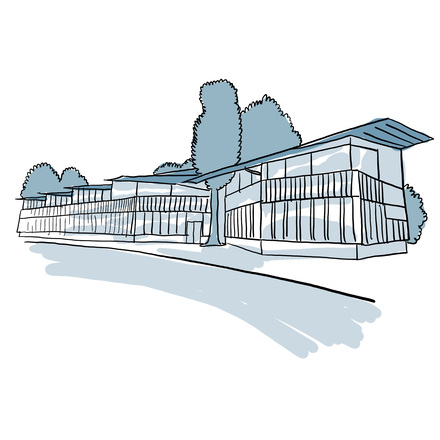
This is the city's covered marketis known as the Halles de Biltoki, or Halles Cœur de Maine. The project was commissioned by the Basque group Biltoki and opened in 2023.
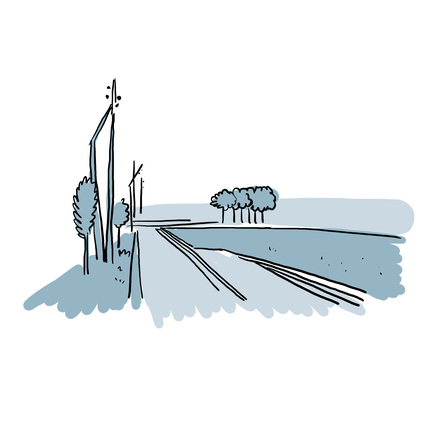
The green zone on your right is called the Cœur de Maine esplanade.
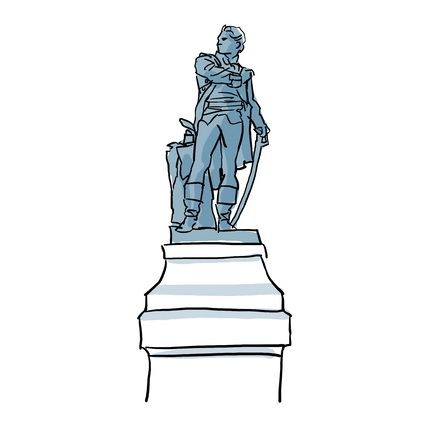
You are now crossing the oldest bridge on the Maine. It was first mentioned in the 6th century, but it is believed to have been there since Gallo-Roman times, although there is no evidence to support this claim.

Located away from the hustle and bustle of the city centre, the Doutre district resembles a small village.

The view from the quayside is a superb panorama of the left bank of the city of Angers!

Crossing this bridge gives you a great view of Angers castle, which stands proudly on the city's left bank.

This rocky spur has been inhabited by man since the Neolithic period, around 4,000 years ago!

You're standing on the end of the world promenade. It runs along the edge of the castle and is one of the most iconic sights in Angers.
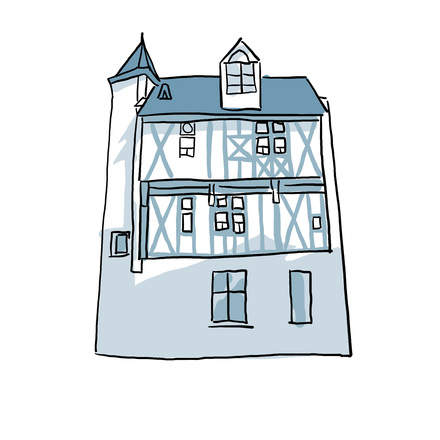
You are now walking through the medieval centre of Angers, with its winding streets just a stone's throw from the castle.
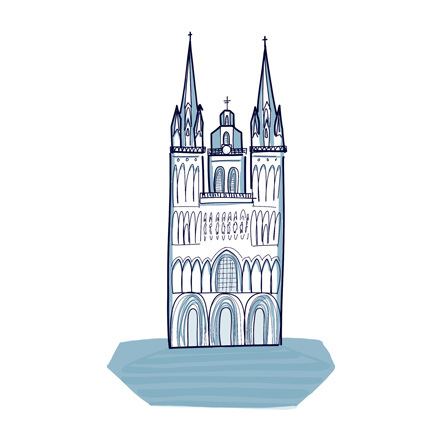
The impressive building standing before you is the Angers cathedral known as the Saint-Maurice cathedral. Built between the 11th and 13th centuries, it is a remarkable example of Angevin Gothic art, and is of course listed as a Historic Monument.
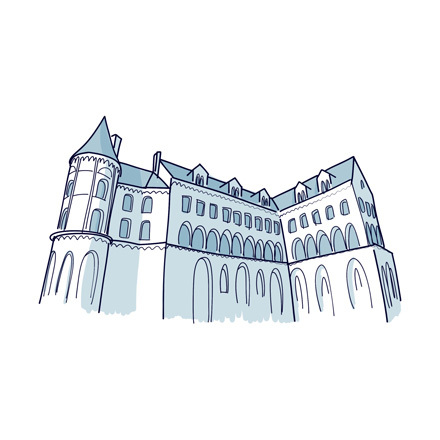
This is the imposing Angers Episcopal Palace, located behind Saint-Maurice Cathedral.
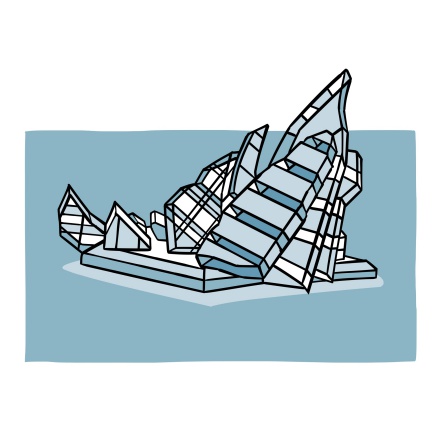
You're now walking along the Langkaia promenade, and you're probably wondering about that striking glass sculpture floating offshore. This is a permanent installation called She Lies, created by Italian
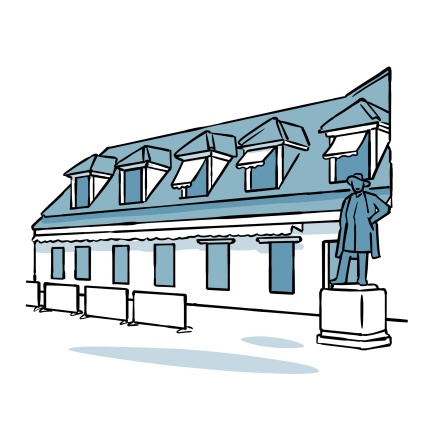
The charming, traditional house on the corner is the famous Engebret Café, the oldest in the city! In operation since 1857, it still bears the name of its founder. When Engebret Christoffersen decided to
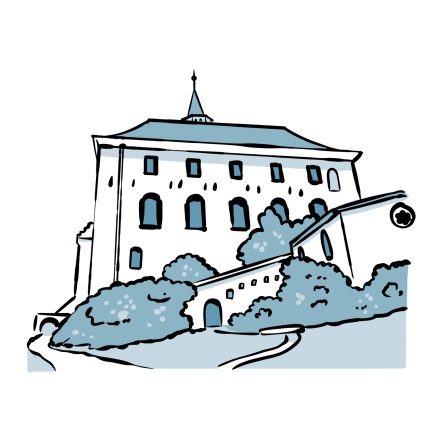
Welcome to Akershus Fortress, one of the most important landmarks in Oslo. Entry is free, and you’re welcome to wander through the citadel’s grounds while enjoying sweeping views over the fjord and the
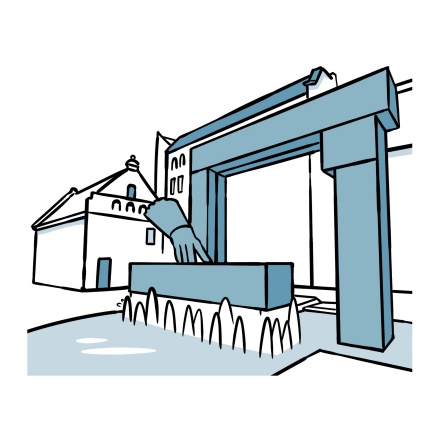
The hand pointing towards the centre of the fountain means that you’re standing at the spot where everything started. Or rather, where everything restarted. Right here, Danish King Christian IV decided to

Take a moment to admire the Franklin Roosevelt statue before you, and soak in the view of Oslo’s harbour and fjord. If you’re wondering why there’s a statue of the American president here, it was unveiled
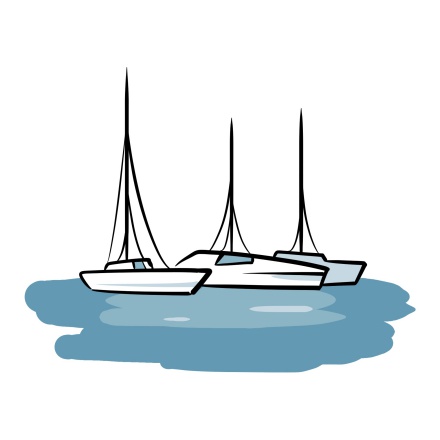
Opposite the City Hall lies Oslo’s harbour, the departure point for ferries and countless boat excursions. Take a look at those elegant three-masted sailing ships and that statue of a diver, ready to leap
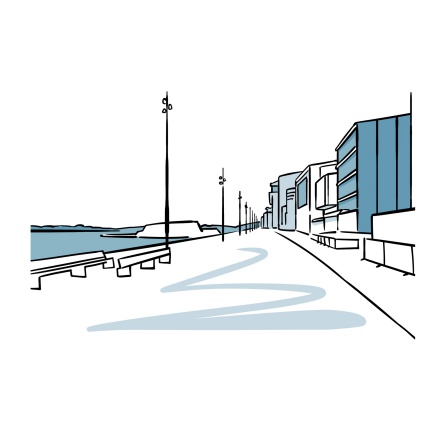
You’re now strolling along the waterfront promenade in the Aker Brygge district. The area’s named after the old Aker shipyards and mechanical workshops that once stood here for more than a century! At its
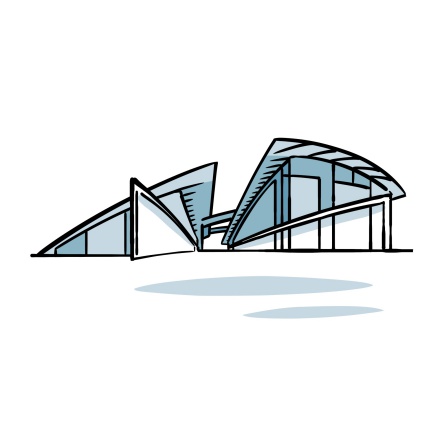
The beautiful building in front of you, with a glass roof shaped like a sail, is Oslo’s contemporary art museum, the Astrup Fearnley Museum. This private art gallery was created in 1993 by two foundations

You’ve probably passed by so many restaurants in the Aker Brygge district by now that it’s time for a little food talk! Salmon is definitely Norway’s star ingredient. The country is a paradise for seafood
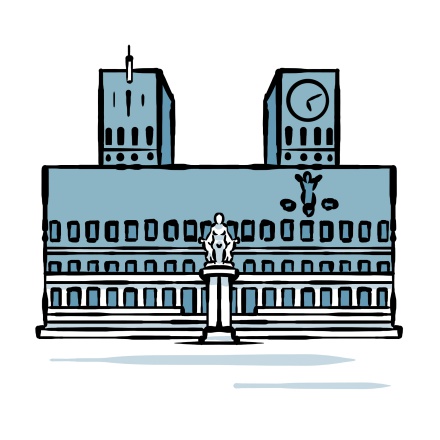
You’re now standing in front of the Oslo City Hall, one of the most iconic landmarks in the capital! It’s the administrative and political heart of the city. Despite its austere appearance, the Oslo City
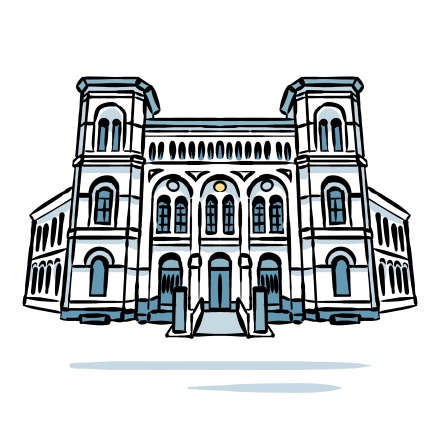
You’re now standing in front of the Nobel Peace Center, a museum part of the global network of Nobel institutions managed by the Swedish foundation. Housed in Oslo’s former train station, it’s been

You’re now standing in front of the beautiful neoclassical facade of the Oslo National Theatre. Built at the end of the 19th century by architect Henrik Bull, this theatre was the largest stage in the

Welcome to the beautiful Royal Palace of Oslo, the official residence of the Norwegian royal family and one of the capital’s key landmarks. Of course, it makes sense for a constitutional monarchy to have a
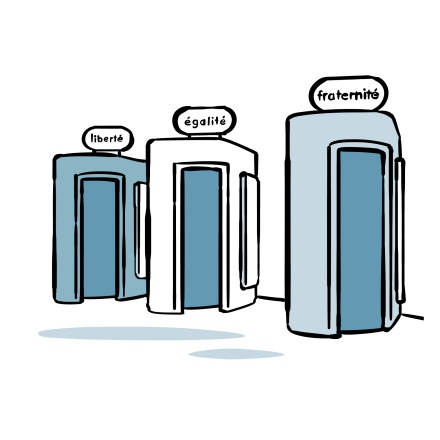
You’ve probably noticed that this park’s public toilets form the French flag. They’re also named after the French Republic’s motto: « Liberty, Equality, Fraternity ». France actually gifted these to Oslo in

The building complex on your left is the University of Oslo, the oldest and largest institution of higher education in Norway. It was founded in 1811 back when Norway was under Danish control. It was called
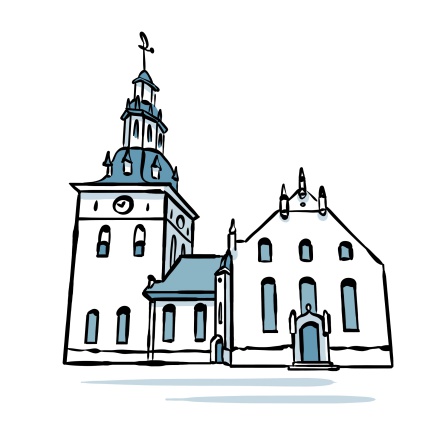
Here’s the famous Domkirke, which is also known as Oslo Cathedral or the Church of Our Savior. It may not be the most jaw-dropping cathedral you’ve ever seen, but it has a few standout features that make it

This imposing yellow-brick building is the Stortinget, Oslo’s Parliament. It was built in 1866 after the creation of the Storting, the supreme legislature established in 1814 by Norway’s Constitution. This

You’re now standing in front of Oslo’s Central Station, right in the heart of the capital, facing one of its most photographed landmarks: the famous tiger. This 4.5-meter-long bronze statue was a gift to
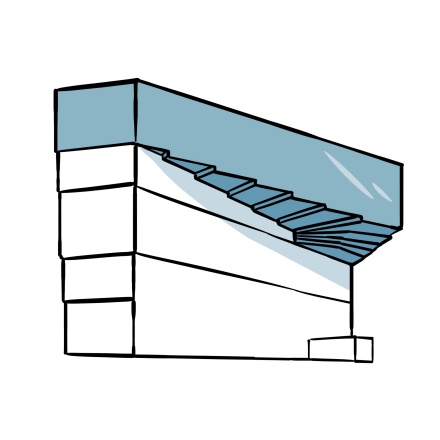
You’re now standing in front of Oslo’s new public library, the Deichman bibliotek. It’s named after Carl Deichman, an 18th-century Norwegian businessman and philanthropist from Oslo, who donated more than
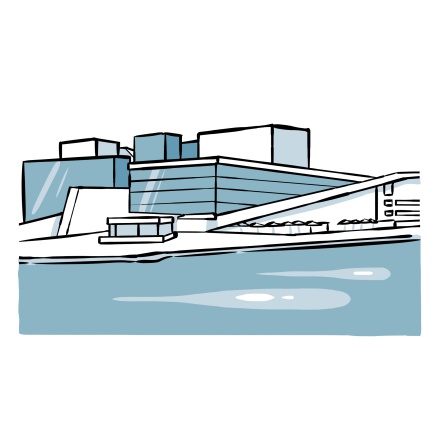
Rising from the water like an iceberg in the middle of a fjord, this is the iconic Oslo Opera House. The Opera invites you to walk up its slightly sloped white marble roof. Unlike most places where signs
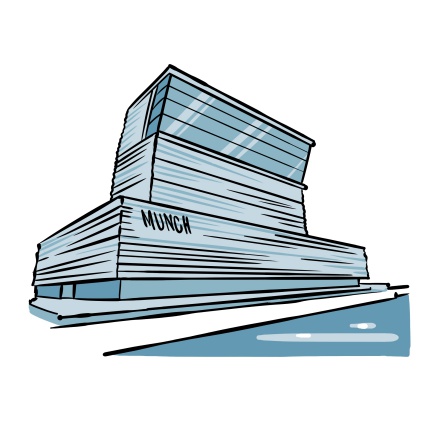
You’re now in front of the striking Munch Museum. When famous Norwegian painter Edvard Munch died in 1944, he left Oslo a remarkable gift: his entire art collection. In 1963, the first Munch Museum opened,

The Opera’s rooftop offers a stunning panorama that introduces you to the Norwegian capital. You’ve got everything here : the sparkling fjord, mountains in the distance, islands covered in colourful wooden
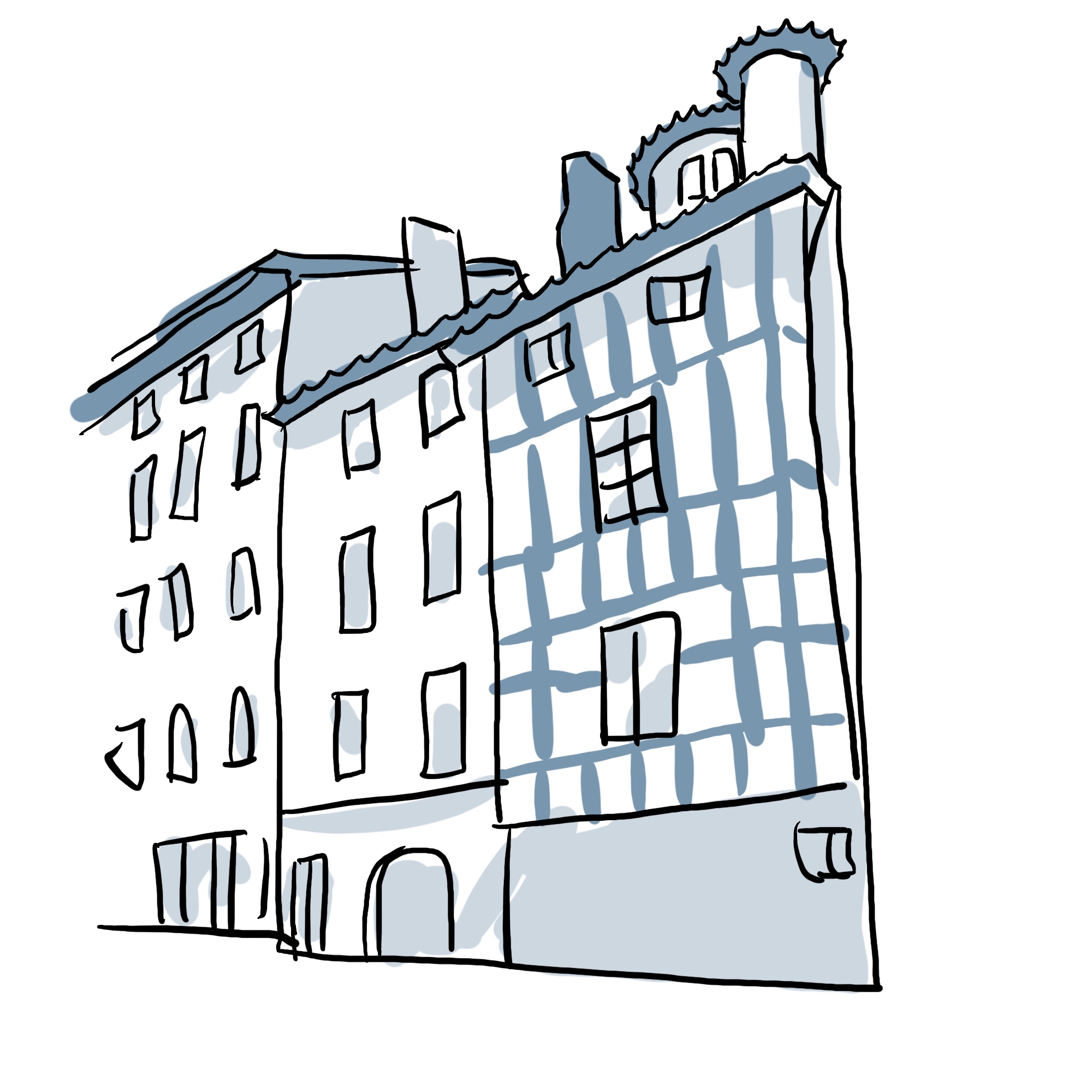
You are now on the "Place du Pilori", which is aptly named as it was once the place where condemned prisoners were tied to the pillory, the pole used to display them in front of everyone before they were hanged. The pillory has, of course, disappeared,

I’m aware this is a tough and long climb, but you'll be rewarded with a beautiful view of the city and surrounding areas once you reach the top. In the meantime, let's take a look back at the history of what is now known as the Holy City.

Here comes the pay off for the steep climb ! Isn’t the panorama offered by the Pipet Hill more than exceptional? The antique theater appears from below, unveiling its greatness and its remarkably well preserved state.
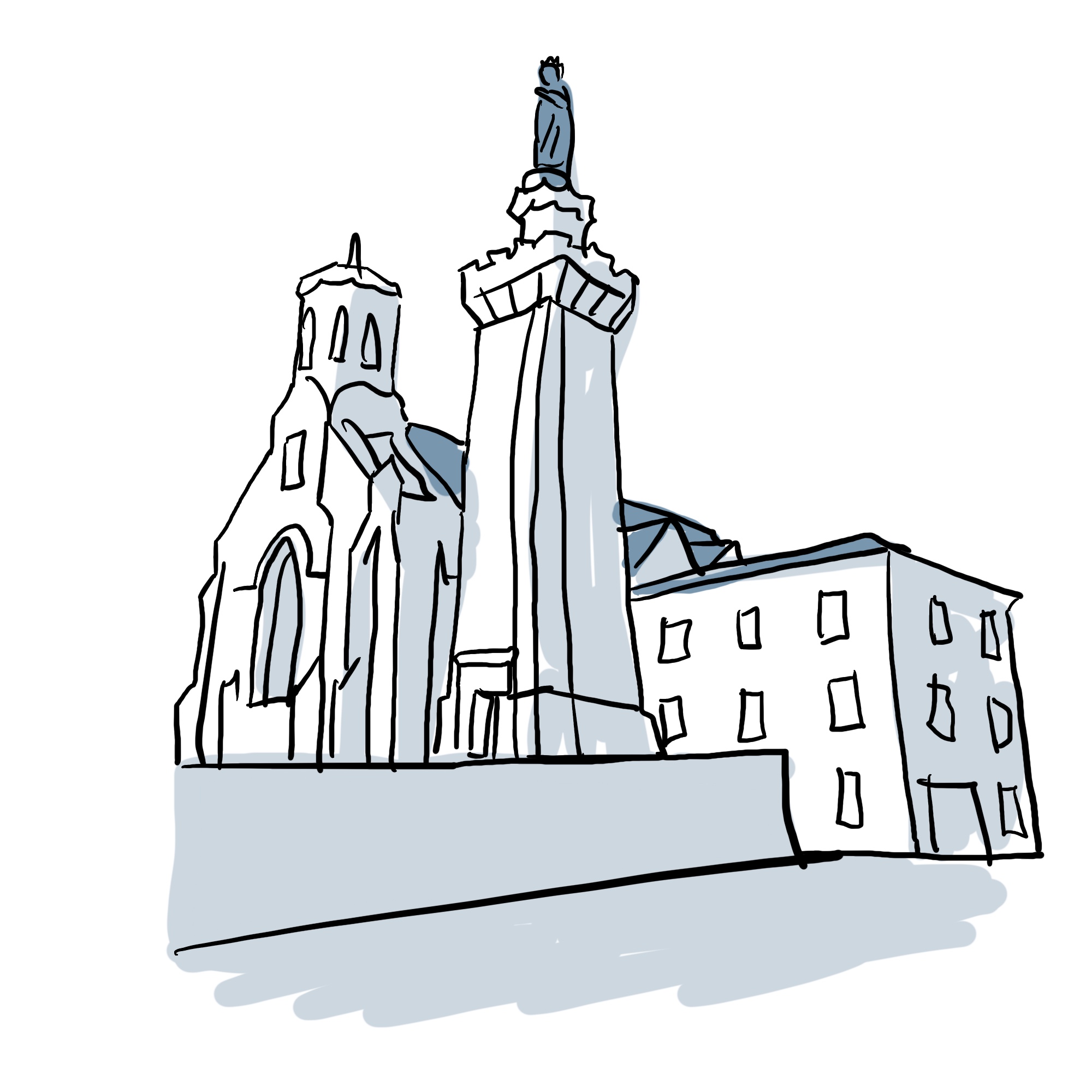
You are standing at the top of the Pipet Hill overlooking the whole city of Vienne. The Notre-Dame de Pipet Chapel built in 1873 is a central place dedicated to the Virgin Mary. It unveils a Volvic stone statue of Mary sculpted in 1858.
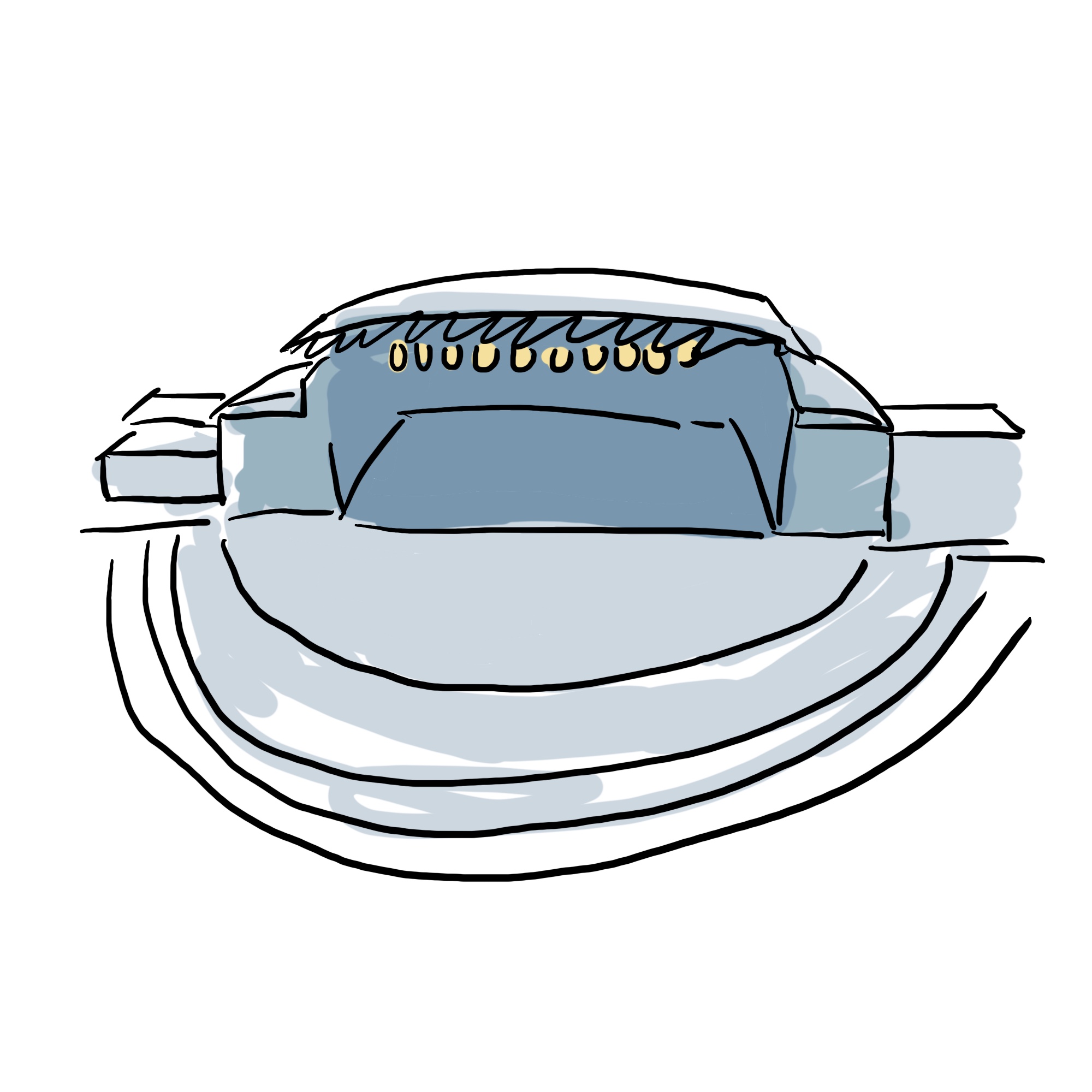
While we walk back down to the town’s center along the “Chemin des Amoureux”, literally “Lover’s Path”, let’s talk about the yearly event that brightens up Vienne for 2 weeks : Jazz in Vienne. This festival, held in the impressive antique theater,

Here is one of the greatest vestiges of Vienne, or even of France for that matter, taking into consideration its remarkable condition. Built during the first century AD, this theater was one of the biggest in Roman Antiquity, with 13,000 seats, and a small secondary theater right next to it,
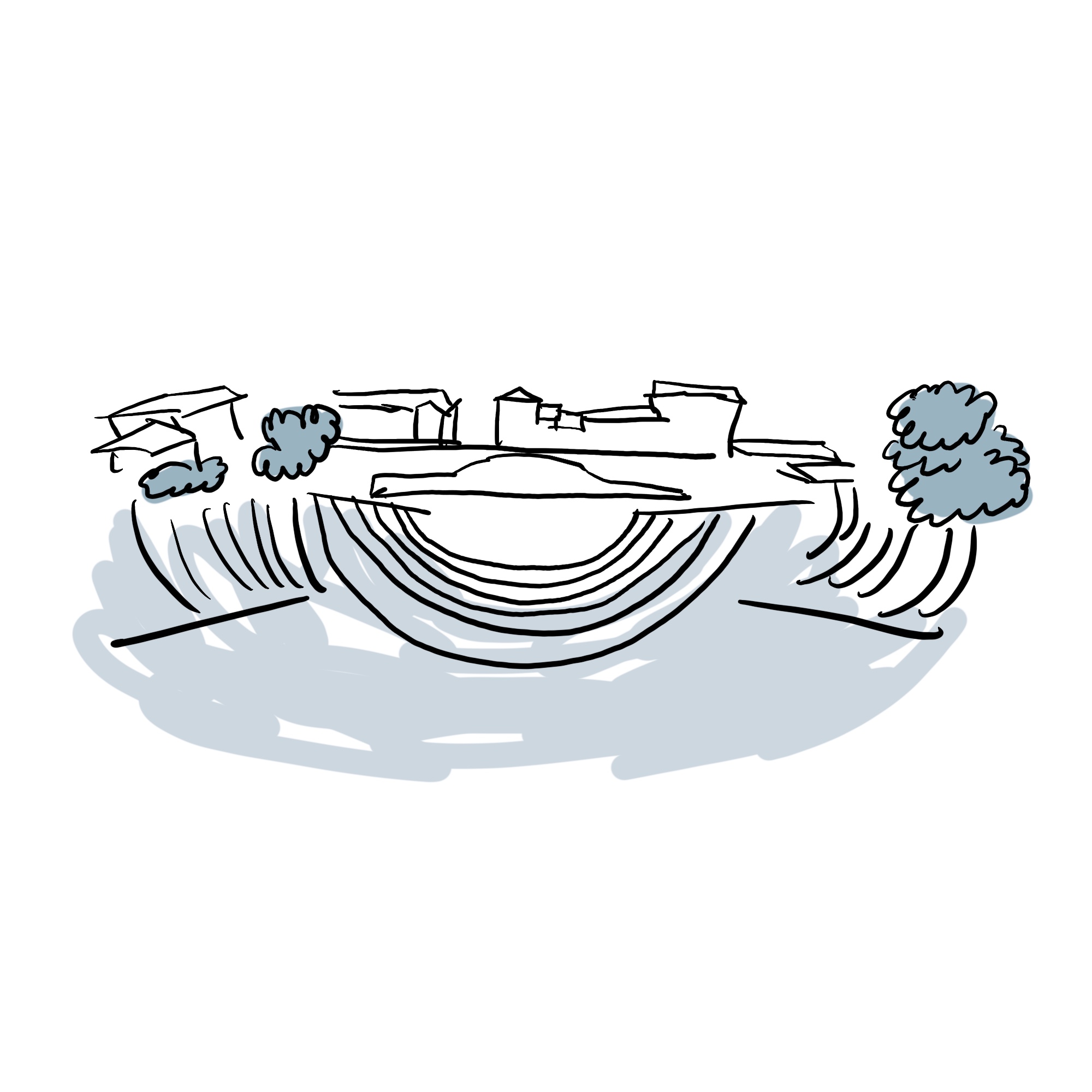
This theater, known as the François Ponsard Theater, stands on the site of Vienne's former town hall, demolished in the 18th century because of its poor condition. Archaeologist Pierre Schneyder built, at his own expense, an auditorium here, then later enlarged and
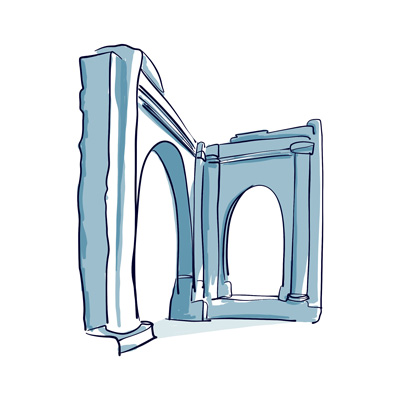
You've now arrived at the Cybèle archaeological garden, where most of the impressive remnants visible today are classified as Historic Monuments. Located right in the heart of Vienne, this garden features ruins of the antique buildings that made up the Roman forum in the 1st century AC.
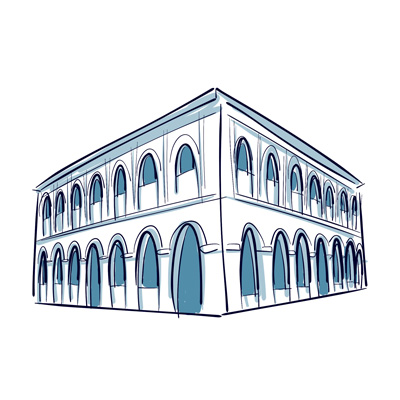
In order discover and understand Vienne’s rich history, there's nothing like a visit to the Beaux-Arts and Archeological Museum ! Housed in the elegant building in front of you, ruins of the city's rich past are unveiled here, in the 3 sections of the museum.

This is the Romestang Avenue, one of Vienne's main streets now bordered with restaurants and stores of all kinds. In medieval times, this avenue, already called Romestang, was outside the city walls, it’s name was indeed used for areas beyond the fortifications.

The War Memorial is in the middle of this roundabout, which connects Brillier Avenue to Romestang Avenue. Installed here in 1923, this large statue pays tribute to the victims of World War I, and depicts an angel, designed by twentieth-century Viennese sculptor Claude Grange.
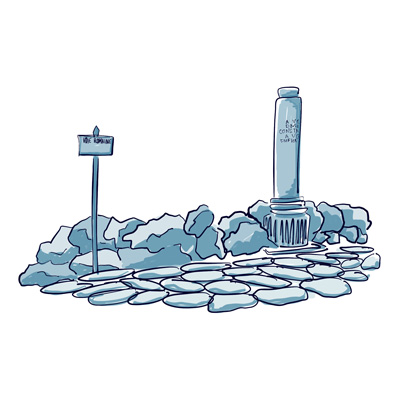
This beautiful garden located only a few meters away from the Rhone River, was built throughout the 19th century. It was renamed after World War 2, as “May, 8th 1945 Garden”, in honor of the day marking the End of the war.
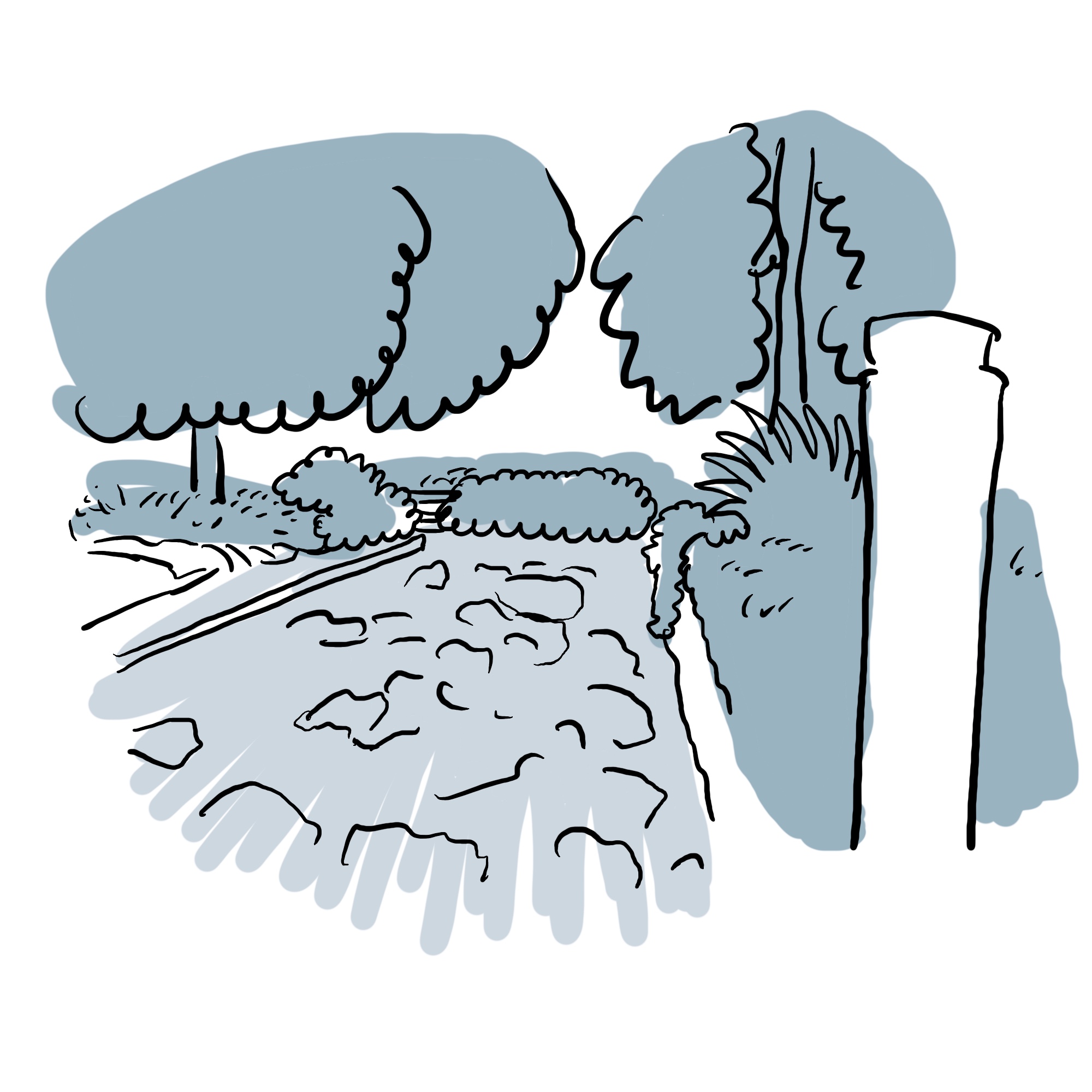
A true relic of the roman period, this roman cobbled path has lived through centuries. It previously led to huge warehouses along the shores of the Rhone River. Built throughout the 1st century, it’s almost 2,000 years old!
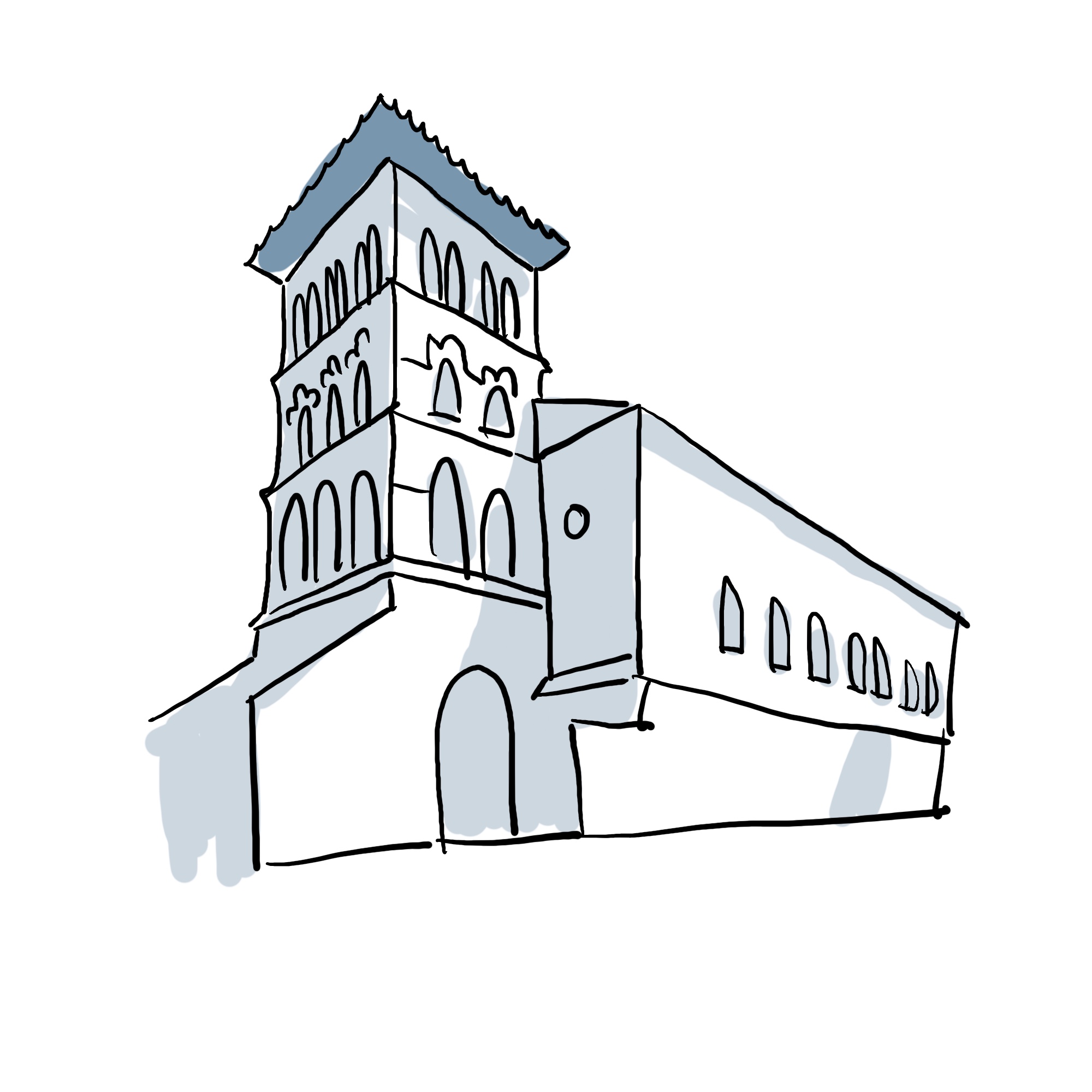
Here you stand in front the the St-Pierre Church. Not only is it the oldest in Vienne, it is also one of the oldest in France. Its structure and plans date to the 5th century. The church was of course rebuilt through the ages, but still keeps its original traits.
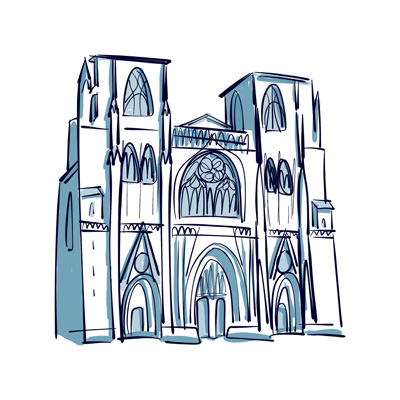
While Vienne is most known as a significant gallo-roman city, it later also played an essential role in the history of Christianity. Vienne belongs to the towns which built a cathedral very early on in their history, starting as early as the year 314.
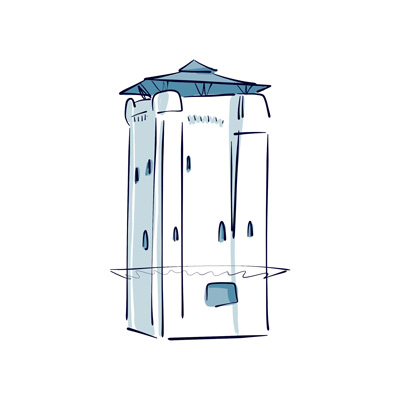
Here we find ourselves alongside the Rhone River, on the Jean Jaures dock, which enables us to enjoy a beautiful viewpoint over the other shore. On the other side of the river, it isn’t Vienne anymore, but the towns of Saint-Romain-en-Gal and Sainte Colombe.
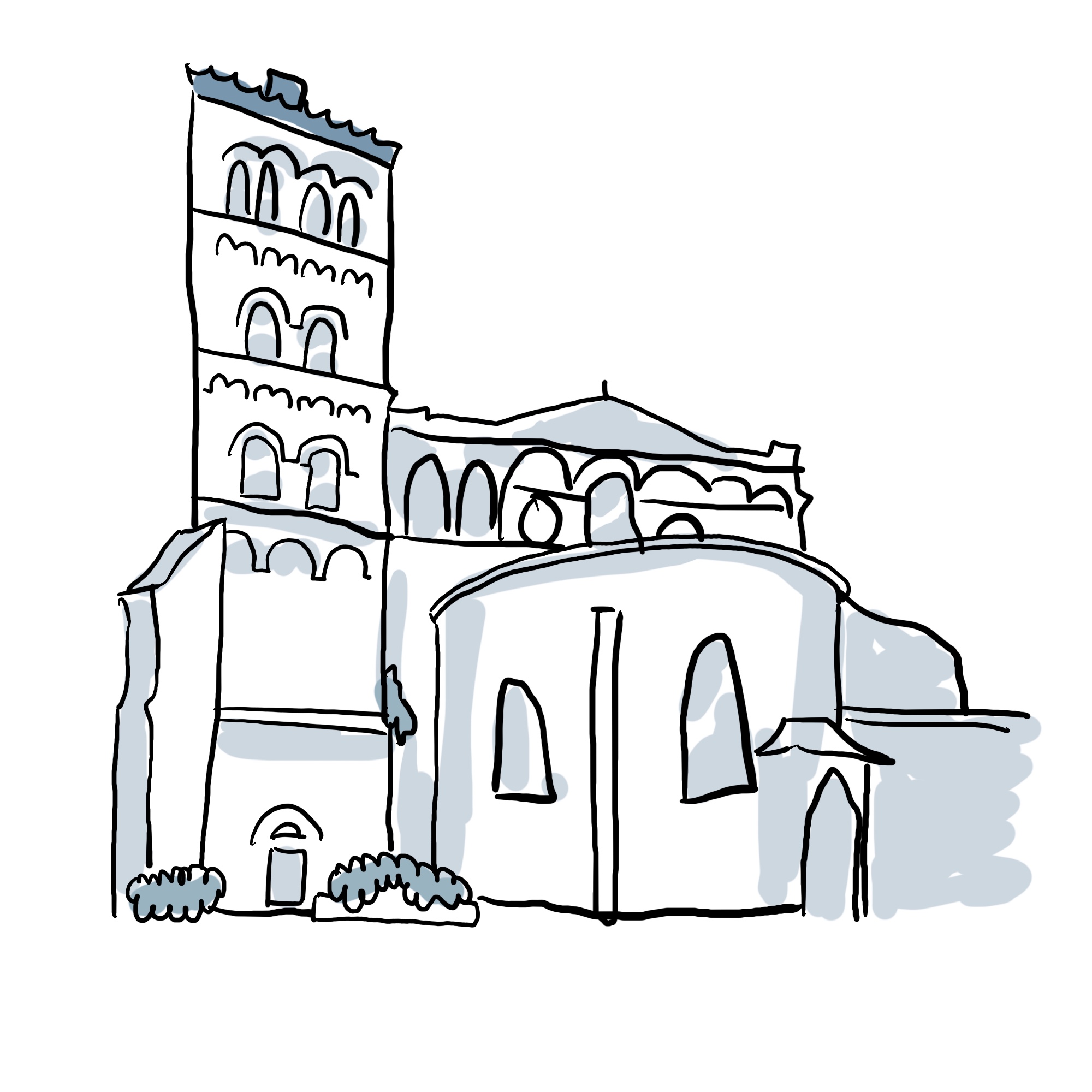
This huge church, well, more accurately it’s an abbey , was originally built throughout the 6th or 7th century. Despite not knowing the exact date of its construction or not, we know for sure that there was another abbey, Saint-Andre-le-Haut,

You are now in front of one of the only two fully preserved roman temples in France, with the other being in Nimes. Approach to get a closer look. It is truly a vestige of Vienne’s gallo-roman history.

Vienne’s townhall is located on the Francois Mitterand Square, right in the heart of the city. The city hall moved into an old private hotel in 1771, previously owned by the marquis of Rachais. The building itself was built between the 16th and 17th century.
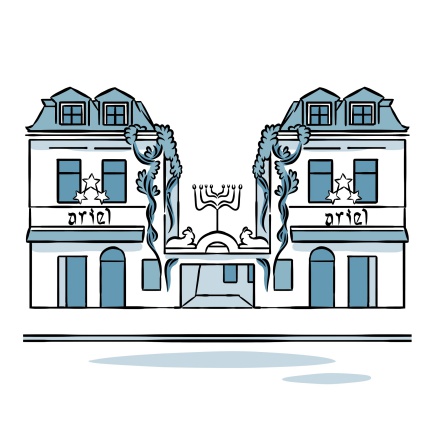
You’re now in the heart of Kraków’s Jewish history. Legend has it that here on Szeroka Street, King Casimir the Great first laid the foundations for the city’s university. In 1495, King John Albert issued a decree forcing Kraków’s Jewish population
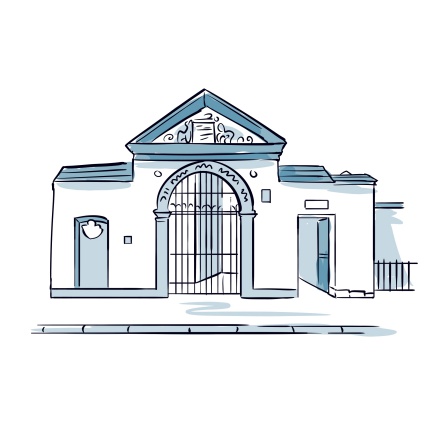
This is one of the few synagogues still standing in Kraków —the Remuh Synagogue, and its historic cemetery. “Remuh” is an acronym formed from the initials of Rabbi Moses Isserles. Above the entrance, a Hebrew inscription reads: “The New
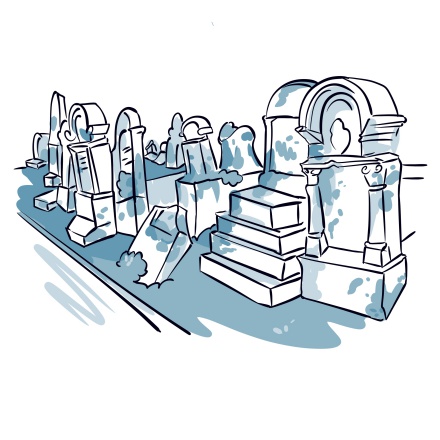
We promise that the tour isn’t all graveyards, but this one is too important to skip. This is Kraków’s New Jewish Cemetery, an essential stop in the Kazimierz district, and free to visit. When the cemetery beside the Remuh Synagogue closed in
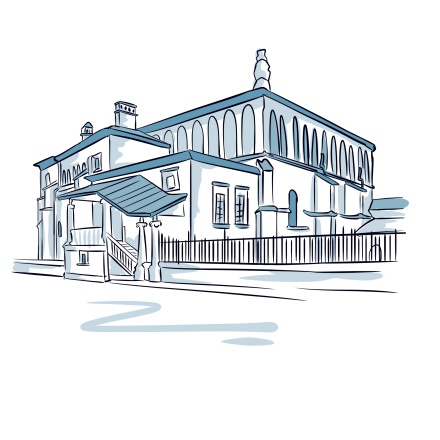
You’re now standing in front of the Old Synagogue—named so for good reason. It’s not only the oldest synagogue in Kraków, but in all of Poland, and listed as a protected national monument. The synagogue was founded in the 15th century by
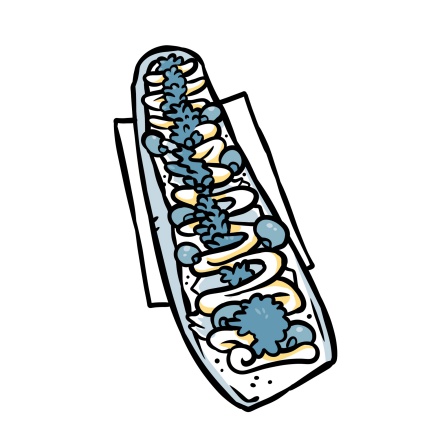
On your left, you’ll see several food trucks. The mouth-watering smells are enough to make you hungry. Beyond its rich history and culture, Poland also has fantastic culinary traditions that often fly under the radar. Here’s a quick food guide to

You're now crossing the Wisła—known as the Vistula in English—the main river of Poland. At 1,047 kilometres long, it's the longest river in the country, and flows entirely within Polish borders. Historically, the Vistula marked a natural boundary

The unusual building you see on your left is the Cricoteka, one of Kraków’s leading cultural centres. Housed in a former power station, this contemporary art museum is dedicated to the life and work of the avant-garde Polish theatre director
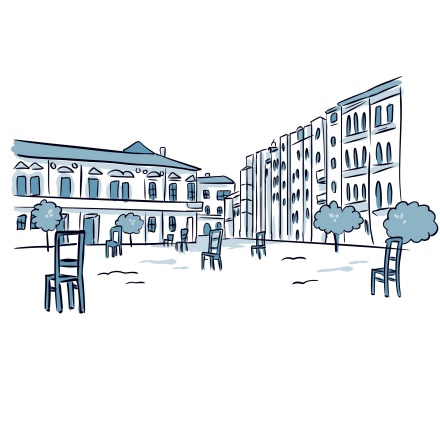
You’re now standing in Heroes’ Square, a space that might leave you feeling awe-struck. Once a lively marketplace, it’s now remembered as the gathering point for successive deportations from the Kraków ghetto during the Second World War.

You’ve now crossed the Vistula and arrived in the Stare Podgórze district. The atmosphere here is more traditional and less touristy than in Kazimierz. This is where the Kraków Jewish Ghetto was established in 1941. The ghetto covered an area of
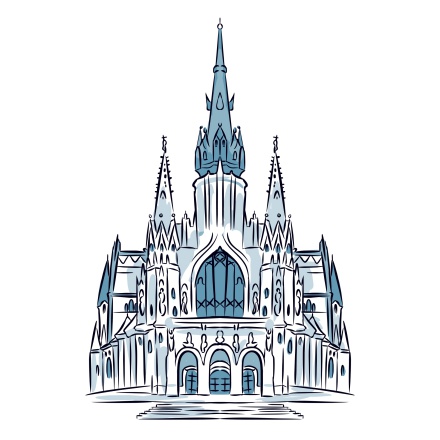
Welcome to the magnificent St Joseph’s Church, a striking example of neo-Gothic architecture. You might be surprised to find such a grand Christian church in the heart of Kraków’s former Jewish quarter—but before the ghetto was established
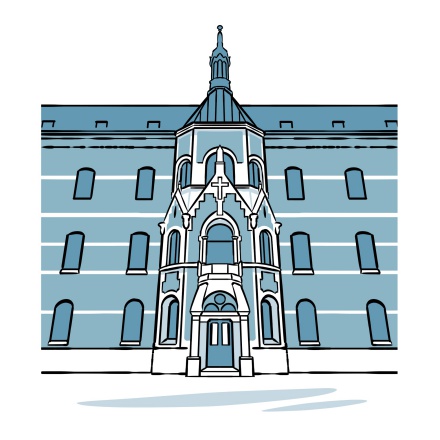
The large red-brick building you’re passing on your left is the hospital of the Brothers Hospitallers of Saint John of God, who are known in Poland as the Bonifraters. This Catholic order was founded in 1540 in Spain as a lay community, before
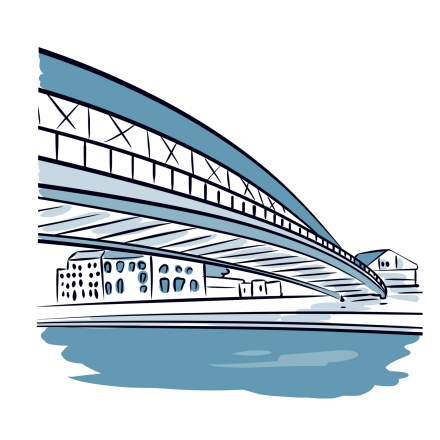
You’re now on the remarkable Father Bernatek Footbridge, built in 2010 to connect the districts of Kazimierz and Podgórze. The bridge is named after Father Laetus Bernatek, a monk renowned for his service to the community, especially for

You’ve arrived at Wolnica Square, once the main market square of the town of Kazimierz. Located along the salt route from the Wieliczka mines, the square, originally twice its current size, was the town’s administrative and commercial centre. Its
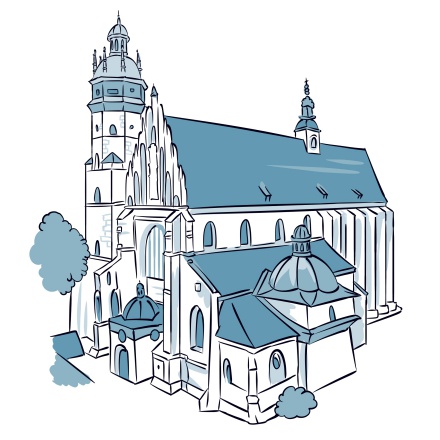
This impressive brick church was founded in 1340 by Casimir the Great. You’ve probably heard his name more than once on this tour—so for anyone wondering who he was, or why he’s called “the Great,” here’s a quick introduction. As his title
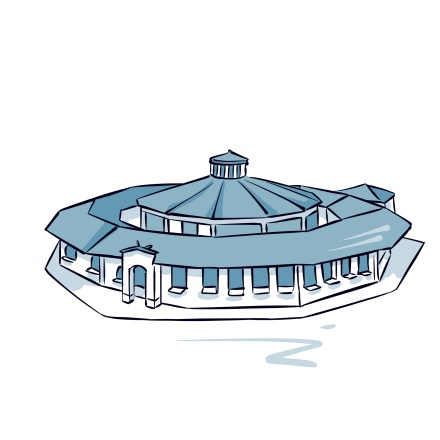
You’ve arrived at New Square, easily recognisable by the octagonal covered market standing at its centre. This market hall was built in 1900 to revitalise the square. It originally housed several stalls and a poultry slaughterhouse. In 1927, the
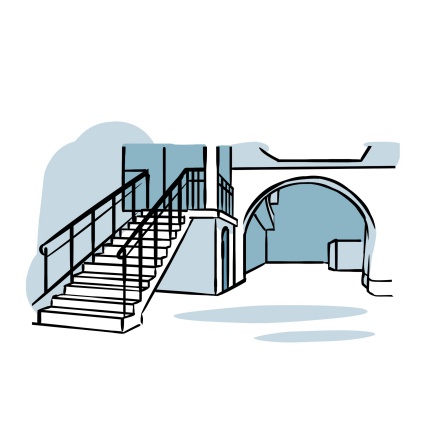
Step through the gate in front to enter the passage where one of the most powerful scenes from Schindler’s List was filmed. The movie is based on the real and tragic events surrounding the Podgórze ghetto. If you’ve watched it, you'll recognise

Welcome to the Izaak Synagogue. You may have noticed that no two synagogues in Kraków look the same. Just like churches, synagogues reflect a range of architectural styles. This one is distinctly Baroque, dating back to 1644. It was the largest
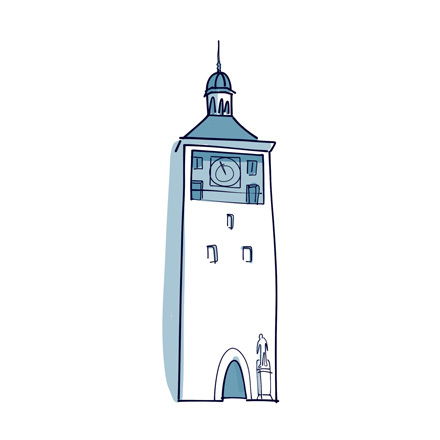
You’re now standing on the Island of Geneva—Island with a capital “I,” because funnily enough, it doesn’t have an official name, so locals simply call it “the Island.”
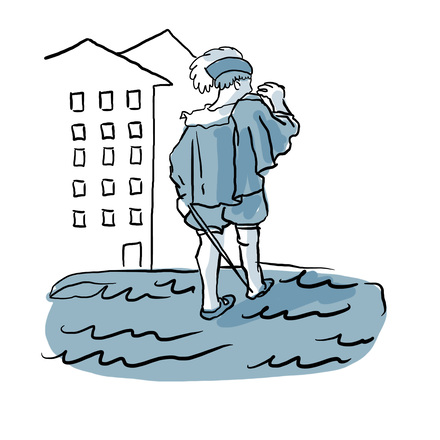
You simply can’t talk about Geneva without mentioning its legendary lake—Lake Geneva itself. It’s one of the main reasons the city is considered among the most beautiful in the region.
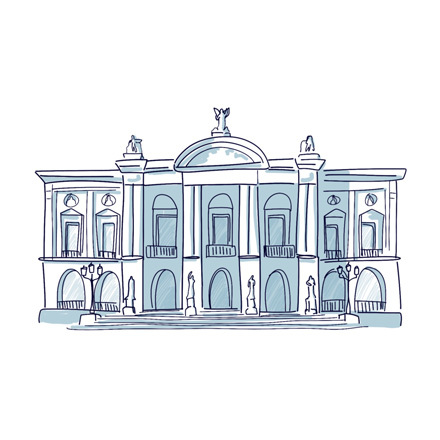
While it may seat fewer people than Victoria Hall, the Grand Théâtre is Geneva’s main stage for the performing arts. Located on the iconic Place Neuve, it was named “Best Opera House” in 2020 and continues to shine on the international scene with its world-class operas, ballets, recitals, and concerts.

Welcome to Bastions Park—a quiet bubble of nature tucked away in the middle of Geneva. Locals love its long, shaded walkways and outdoor activities, especially the giant chessboards where passionate players face off in open-air matches.

Tucked into the greenery, this imposing wall comes as a surprise to many visitors. It was inaugurated in 1917 to pay tribute to the giants of the Protestant Reformation. But to really understand its importance, we need to go back to the origins of the Reformation in Switzerland.
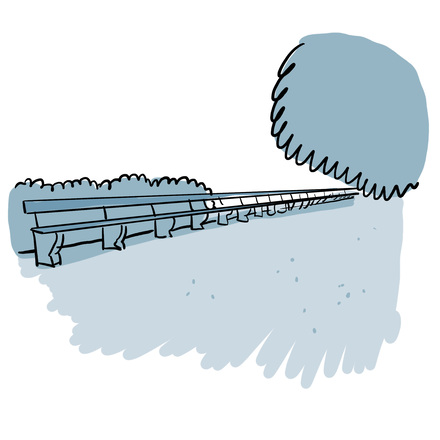
Welcome to the Promenade de la Treille—Geneva’s oldest promenade, with a charming view over Bastions Park just below. This walkway was originally built in 1515 as part of the city's fortifications, used to keep watch over the surrounding area.
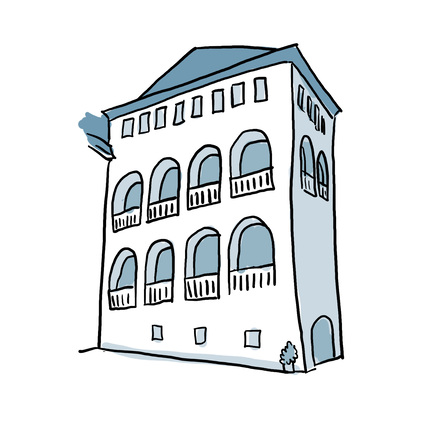
City Hall is the seat of government for the Canton of Geneva and a true architectural gem dating back to the 15th century. Construction began in 1405, and over time it was expanded and transformed into the impressive building you see today.
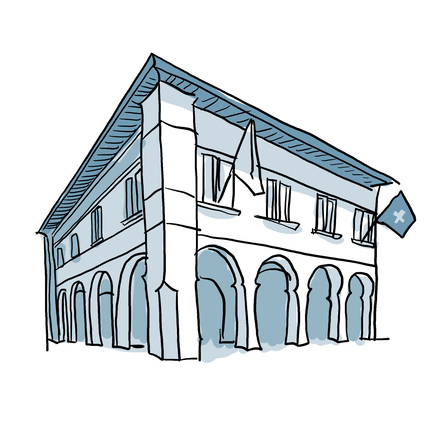
Originally, this site served as a covered market—a tradition going all the way back to Roman times. In the 16th century, the structure was repurposed as a granary, and that’s when the arcades you see today were added.

Just a few steps from the Old Arsenal and City Hall, the Tavel House stands out with its distinctive architecture, a rare example of medieval Swiss urban design.
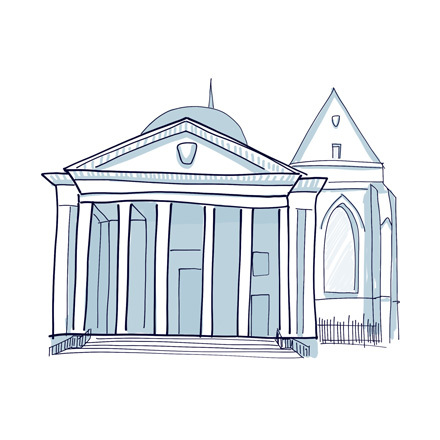
Here you are in front of Geneva’s stunning cathedral! Quite an unusual façade, isn’t it? That’s because St. Peter’s Cathedral has undergone countless changes over the centuries.

Built as a tribute to Théodore Agrippa d'Aubigné—a writer, poet, historian, and major figure of the Protestant Reformation—this terrace offers a breathtaking view over Geneva’s rooftops.
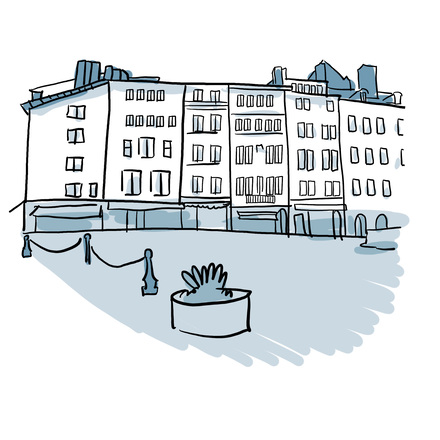
This is the most famous square in Geneva—and also the oldest!
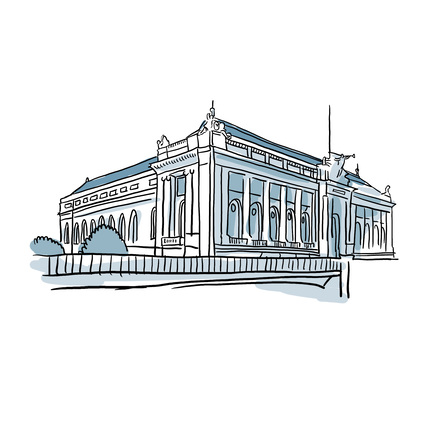
One of the largest museums in Switzerland awaits you here, offering a deep dive into Geneva’s rich artistic and historical heritage.
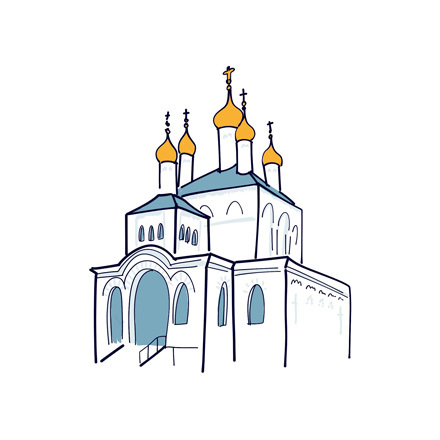
And here’s one of Geneva’s most unique architectural landmarks: the Russian Orthodox Church. After the Revolution of 1846, Geneva tore down its fortifications and opened itself to greater religious freedom.
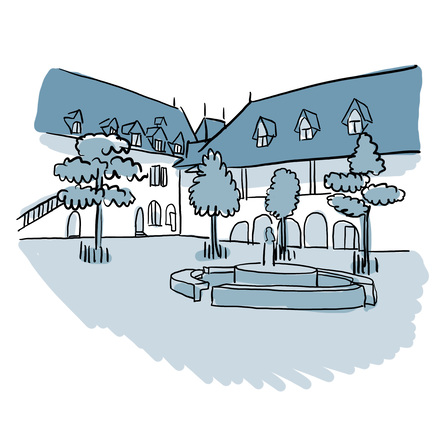
Previously known as the College of Geneva, this building was constructed in the 16th century, shortly after the city adopted the Reformation.

Welcome to the prestigious Rue du Rhône—Geneva’s ultimate destination for luxury shopping!
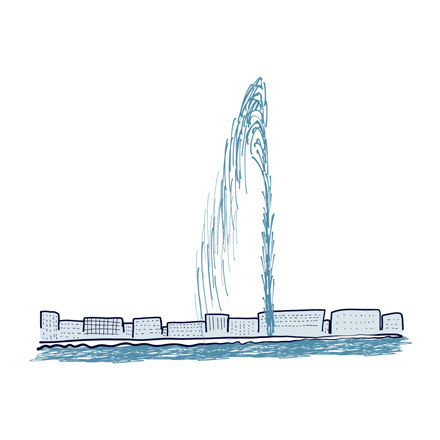
Impossible to miss during your visit to Geneva—at 140 meters high, the Water Jet is visible from just about everywhere!
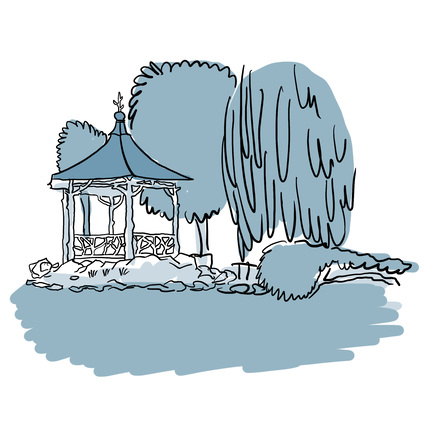
This is one of Geneva’s most beloved parks! Perfect for a peaceful stroll along the lake, the English Garden offers a calm and relaxing escape just moments from the city center.
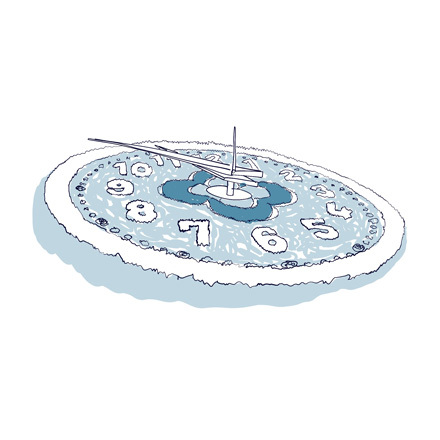
Here it is—one of the most famous clocks in the world! Second only to the Jet d’Eau as a symbol of Geneva, the Flower Clock is a true technical and artistic marvel.

Take a moment to enjoy this beautiful view of the Mont-Blanc Bridge—one of Geneva’s most iconic landmarks. Originally built in 1862 using sheet metal, it remains a key crossing point in the city.

This small pontoon just below the Bergues Quay offers a beautiful view of Geneva! Right in front of you lies Rousseau Island, a peaceful green oasis in the very heart of the city.

And here we are at another of Geneva’s iconic bridges—this one is the Pont de la Machine. It takes you across the Rhône River, which now flows freely after Lake Geneva ends just before, at the Mont-Blanc Bridge.
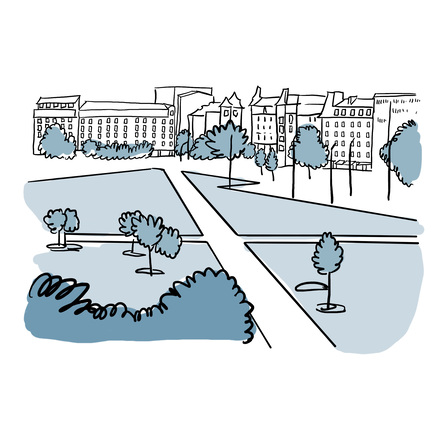
With its distinctive diamond shape stretching nearly 650 meters, it’s a popular gathering spot for locals who come here to enjoy the skatepark, playgrounds, or simply relax under the shade of the many trees lining the esplanade.
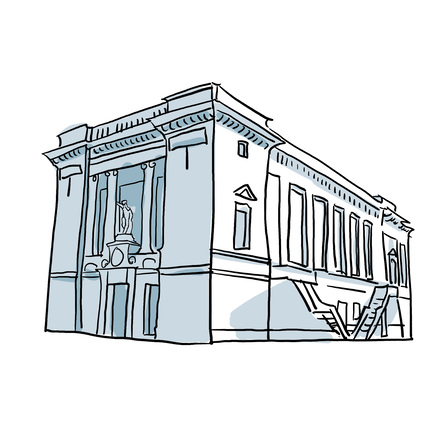
This theater was built in the late 19th century as a tribute to Queen Victoria of England.
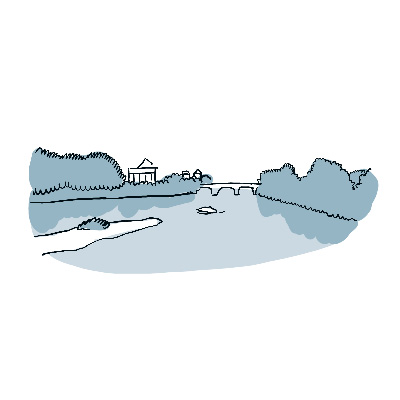
You're now strolling along the wild banks of the Loire River. This river, the longest in France with 1006 kilometers, may also be the most beautiful.
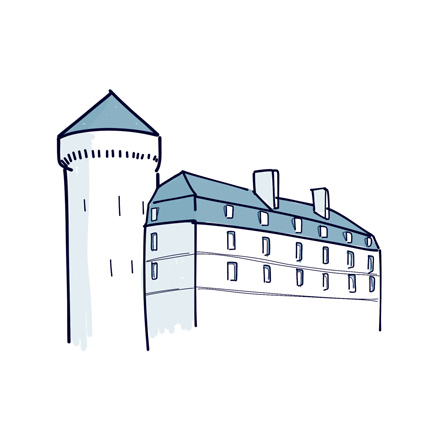
At the height of the Loire Valley, with its many sumptuous castles, the Tours castle might not be the most jaw-dropping one you've ever seen.

This little passage that we're walking through now is called the Passage du Cœur Navré, which translates to the Passage of the Broken Heart. It's like the Bridge of Sighs in Venice, evoking the sadness of the condemned who passed through this passage on their way to the scaffold set up in the Foire-Le-Roi square.

Here you are in front of the Grand Théâtre, the only opera house in the Centre region! Originally, like the famous La Scala theatre in Milan, there was a church here, the Church of the Cordeliers.
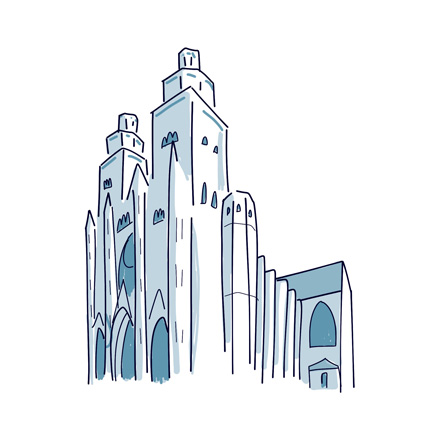
If you're a fan of the flamboyant Gothic style, Saint-Gatien cathedral is the place for you! Its construction began in the 13th century and lasted for about 400 years!

Welcome to the beautiful garden of the Museum of Fine Arts in Tours, located in the former episcopal palace of the city. Indeed, The bishops were housed near the cathedral in an ancient palace dating back to the 4th century.

As you enter the premises of the Museum of Fine Arts, you are immediately intrigued by the stuffed elephant in its showcase. Allow me to introduce Fritz, a star from the early 19th century, from the North American circus Barnum and Bailey.
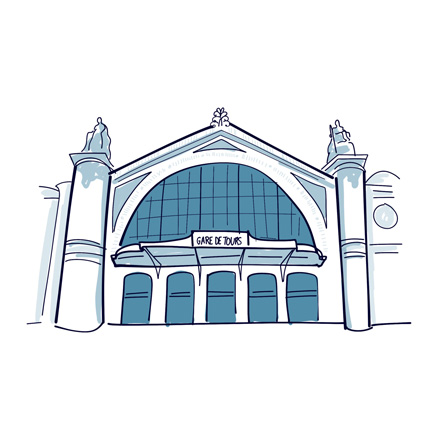
Not many train stations can brag about having any tourist appeal beyond getting you where you need to go. But the Tours train station is downright beautiful!

Right in front of you, on the little Jean Jaurès square, stands the imposing Tours City Hall. Built at the end of the 19th century and inaugurated in 1904, it looks more like a palace than anything else.

This is the town's main artery. Nationale street, stretching 700 meters long, connects Jean Jaurès square to Wilson Bridge crossing the Loire River.
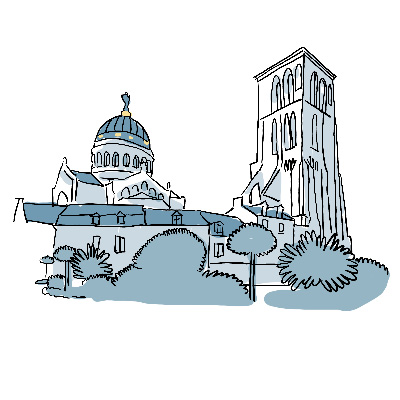
You can immediately tell that you're stepping into another era with the Charlemagne Tower standing before you. It's one of the few remnants of the former Basilica of Saint-Martin, which was destroyed in 1797, along with the Clock Tower and the Saint-Martin Cloister.
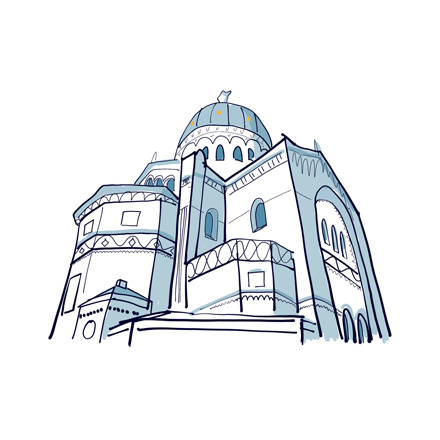
The Saint-Martin basilica you're looking at now was built from 1887 to 1902 by architect Victor Laloux, yes, the same one who worked on the city hall and the train station. He sure had a busy life!
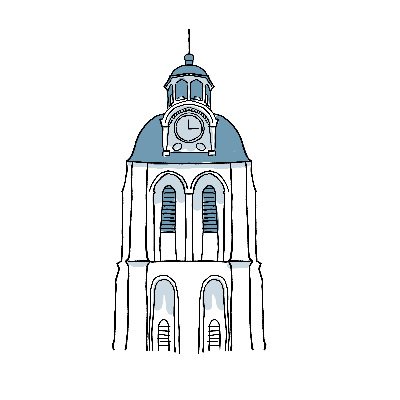
You’re now in front of the Clock Tower. It enables you to really get a sense of how big the old 11th-century Saint-Martin basilica was.
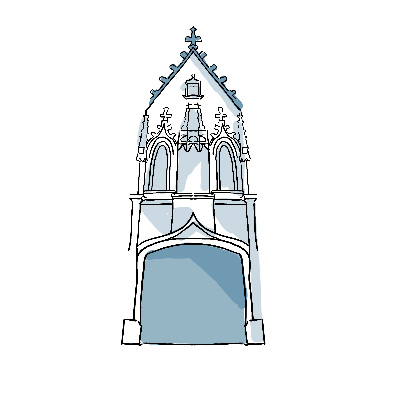
This intricately sculpted gate in flamboyant Gothic style is another testament to Tours' past. It's all that remains of a private mansion belonging to the treasurer of the canons.

A little anachronism in the heart of the historic district. Here you are face to face with the Monster of Market Square!
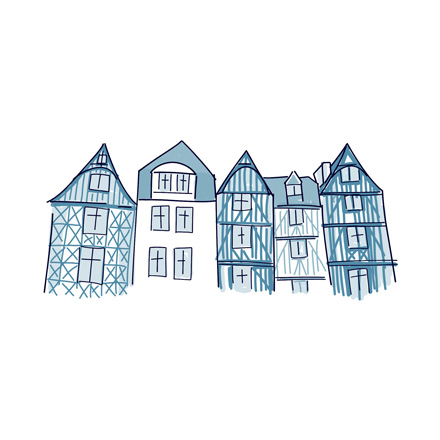
Here it is. This is what you came to see in Tours. A remarkable collection of half-timbered houses surrounding a cozy square filled with cafes and restaurants.
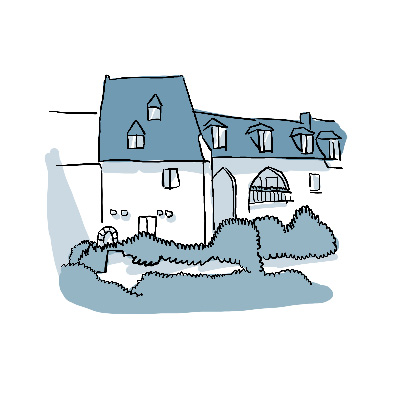
Here you stand in the midst of a rich tapestry of history, with Roman and medieval remnants intertwined. In the 500s, after her husband Clovis passed away, Queen Clotilde came to settle in Tours.
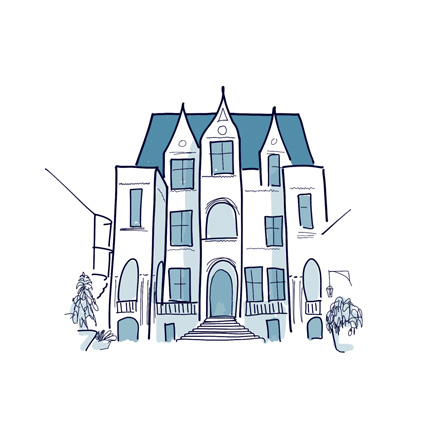
You're still in the Plumereau neighborhood of Tours, the city's most important historic area. Here stands the Goüin Mansion, a gorgeous example of Renaissance architecture.
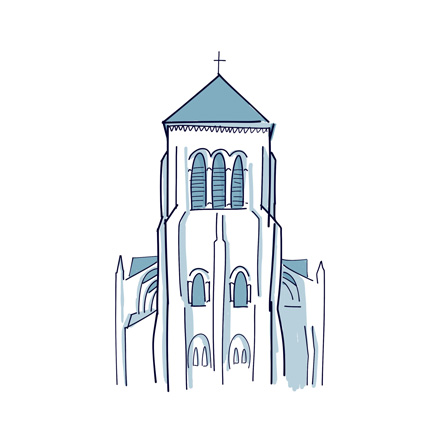
This is the Saint-Julien Church of Tours. Legend has it that in the 6th century, Clovis decided to erect a church to celebrate his victory over the Visigoths.
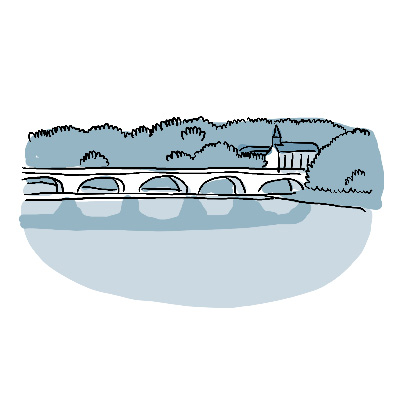
We are on the Wilson Bridge, offering a lovely view of the Loire River banks and an interesting perspective of the National street behind you.
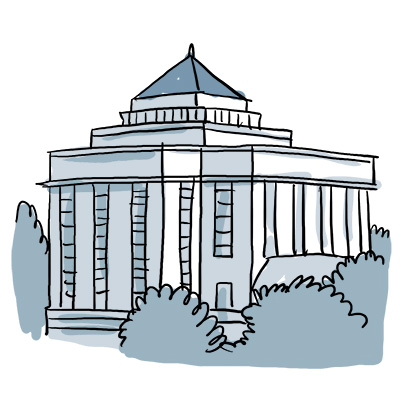
The beautiful Art Nouveau building you see there, comfortably nestled facing the Loire River, is the Tours municipal library. Its remarkable architecture and history have earned it the status of a historical monument.
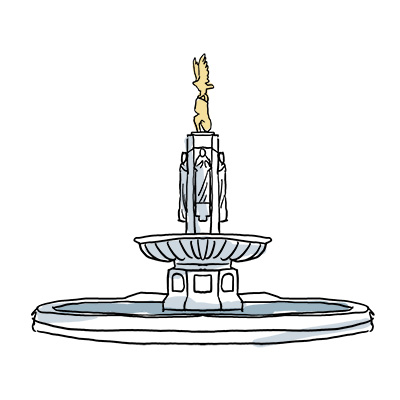
Passport, please! You're entering American territory. Yes, believe it or not, the plot of land on which this beautiful fountain stands belongs to the United States!

The Spice Souk is a feast for the senses! Here, colors and aromas blend in a lively market filled with spices from all across the Middle East. Herbs, powders, and some of the world’s most famous spices—such as pepper, cinnamon, and chili—are on full display in this vibrant and colourful setting.
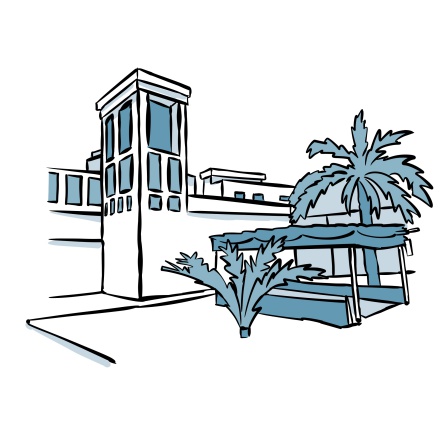
Here’s a true testimony to Dubai’s past. This traditional 19th-century house once belonged to the most famous pearl merchant in the region—back when pearl trading was one of the city’s main sources of income. Built in 1890, it showcases the typical architecture and decorative style you’d find at the time.
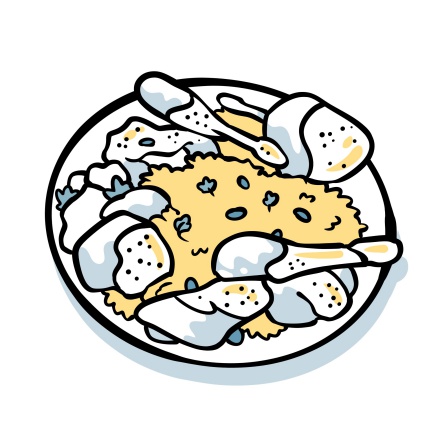
Before becoming this cosmopolitan city, Dubai was a small fishing village that depended on pearl trading and livestock farming. At the time, locals mainly ate dates, camel milk, and fish. Once the city started to grow, it welcomed expatriates who brought along their own traditions and recipes.
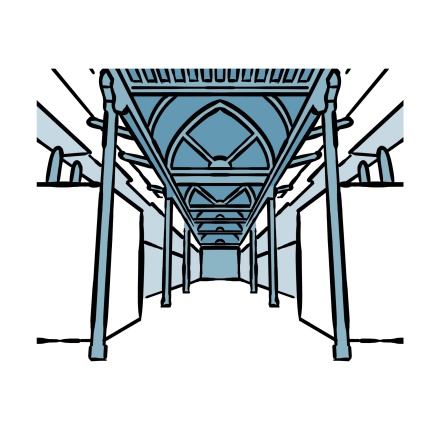
Time for bargaining! The Deira souk is packed with all kinds of products—and the prices can be very appealing if you’re good at negotiating. Don’t hesitate to haggle with the vendors when buying your souvenirs. It’s completely normal here to chat and negotiate for a better deal.
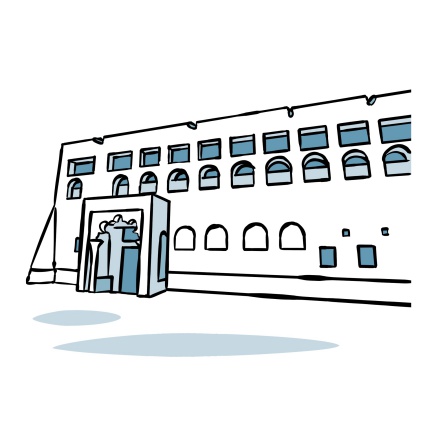
Here you are in front of the first school ever built in the Emirate of Dubai, dating back to 1912—long before the city’s many skyscrapers that only started appearing in the late 20th century. Traditional and authentic, this school is now open to all those willing to discover what education looked like in early Dubai.

To reach the Deira district, visitors have two options: either take the metro or hop on one of these traditional wooden boats called abras. You’ve probably already taken one to get here — it’s actually one of the most popular means of transport to get around Dubai, both fast and affordable.
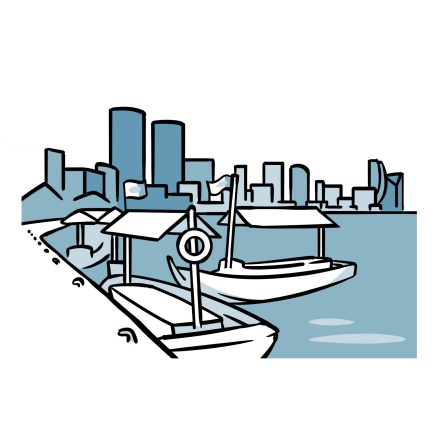
Khor Dubai means “Dubai River”, though it’s more commonly known as Dubai Creek. This natural saltwater creek, reaching into the desert, played a key role in the city’s development as it allowed the construction of a port.
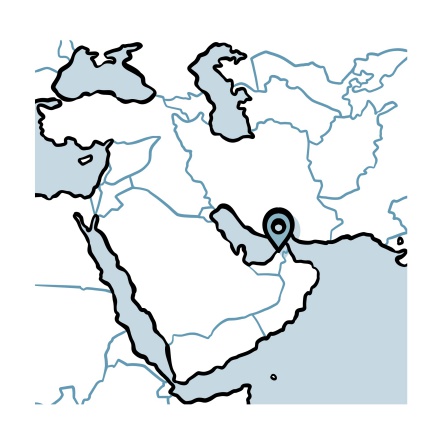
Let me tell you a bit about the history of Dubai during this short walk. You might be wondering how this extravagant city, right in the middle of a desert in the United Arab Emirates, has become what it is today—home to the tallest skyscraper in the world, the biggest shopping mall, and one of the most visited tourist destinations on the planet.

As the largest city in the United Arab Emirates, Dubai is truly a cosmopolitan place that has welcomed—and continues to welcome—expats from all over the world. Today, around 90% of Dubai’s population comes from other countries, particularly India and Pakistan.
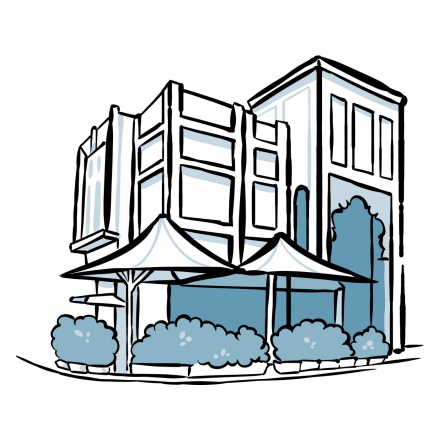
Dubai is home to a large number of souks, especially in the Deira neighborhood where you are right now, as well as in Bur Dubai on the other side of the creek. Here, you’ll likely find some great deals, whether you’re looking for traditional products, branded clothing—though watch out for counterfeits—perfume, electronics, or household goods.
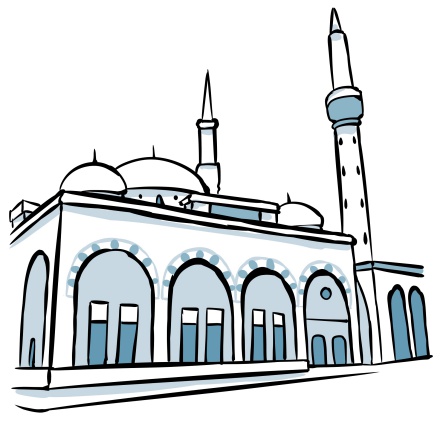
As you’ve probably already noticed, mosques are an integral part of Dubai’s landscape. They reflect the dominant religion in the United Arab Emirates, which is Islam. Mosques are easily recognizable by their typical structure, usually composed of the main prayer hall, a minaret, and domes.
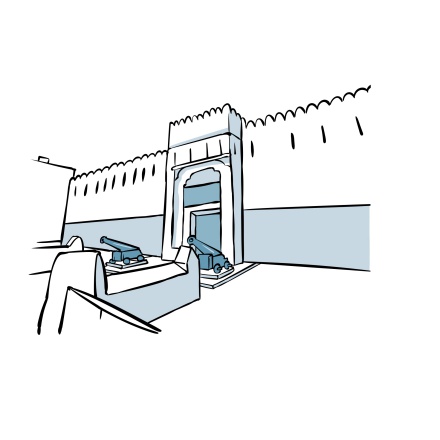
This clay building, built in 1939, is a museum dedicated to the history and development of Dubai’s police force, their uniforms and equipment, as well as the city’s judicial system. Inside, you’ll find exhibitions, life-size models of traditional police attire, weapons displayed, and many more!
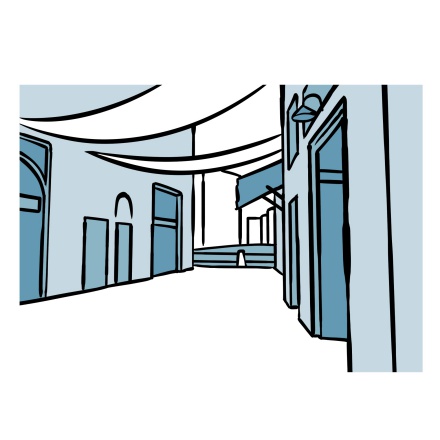
Far from the towering skyscrapers that dominate most of Dubai’s landscape, Deira is a must-see as it’s one of the city’s oldest neighbourhoods, along with Bur Dubai across the creek. This authentic and touristic area is home to many traditional souks selling clothing, perfumes, spices, and gold.
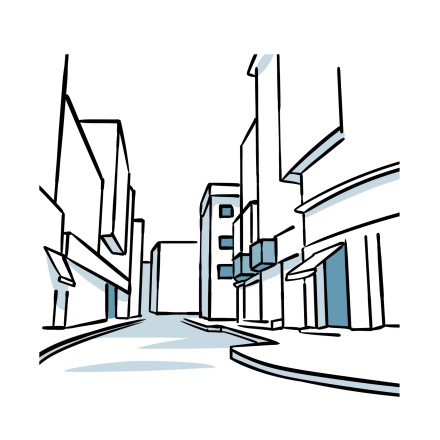
This is one of the main commercial streets in the Deira district, as well as being the longest. We’re right next to a souk that bears the same name, where you’ll find many traditional products and souvenirs in all sorts of little boutiques. This street also connects the centre of Deira to the Creek Harbour.
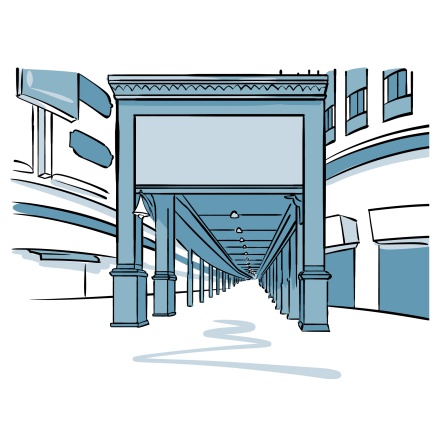
A real treasure trove in Dubai, the Gold Souk is quite impressive. With over 300 retailers selling gold, silver, and precious stones, the aisles of this unique market are dazzling. It's actually one of the largest gold markets in the world—and one of the cheapest too, so why not treat yourself to a little souvenir?

You’re now standing at one of the best viewpoints over the Bay of Menton. From up here on Boulevard de Garavan, you can see the Old Port to your right and the Port of Garavan to your left, with the long curve of Sablettes Beach connecting the two. With the terracotta rooftops of the
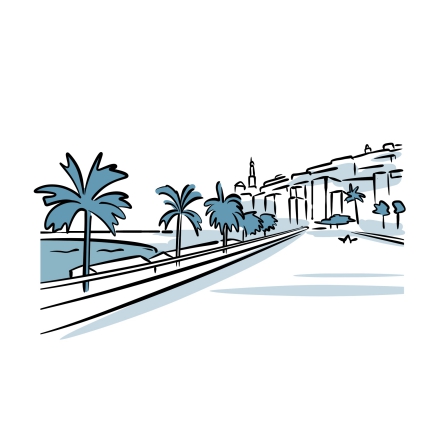
You’re walking along the Promenade de la Mer, which stretches behind you toward the Port of Menton-Garavan and ahead toward the Old Port. Completely redesigned in 2019, this walkway runs alongside Sablettes Beach and is one of the most enjoyable places for a stroll in Menton. On

There’s nothing quite like a stroll along the Impératrice Eugénie Quay to take in one of the very best views of Menton. The whole town unfolds in front of you, perched on the hillside above the sea, with its charming little colourful houses stacked like a postcard. From here, you can spot the
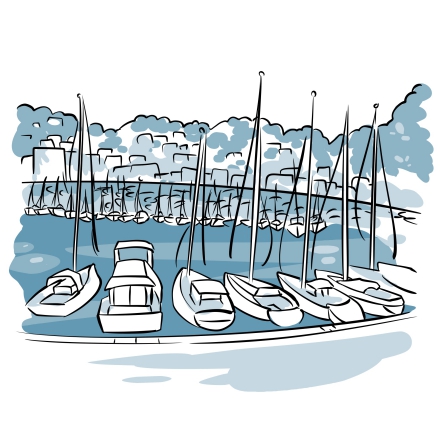
Just a stone’s throw from the old town, the Old Port is one of Menton’s most iconic landmarks. Stretching out here on your right along Quai Gordon Bennet, it’s lined with rows of pleasure boats set against the stunning backdrop of the Italian mountains. Originally, this was a
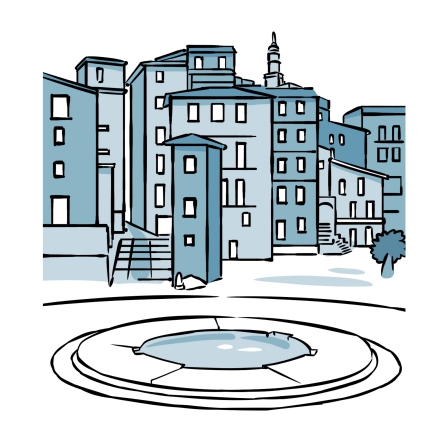
Place Fontana marks the end of the Seaside Promenade, which links the Port of Garavan to the Old Port. It was once called Place du Petit Port. The square is named after the Fontana family, and especially Louis Fontana, who came from a small town near Genoa in Italy. He was mayor of

This lovely viewpoint offers a beautiful panorama of Menton, with the mountains rising just behind the town. From here, you can see the pebble beach stretching along this part of the coast—a favourite spot for an evening walk, with the gentle sound of the waves in the background. Just
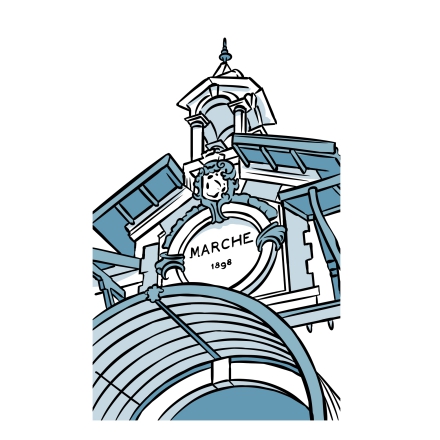
This beautiful market hall, built in 1898, is the perfect place to dive into the flavours of Menton—it’s open every day and packed with fresh, local produce. The building itself is worth a look, with its colourful brickwork and decorative ceramics, but it’s what’s inside that really makes it
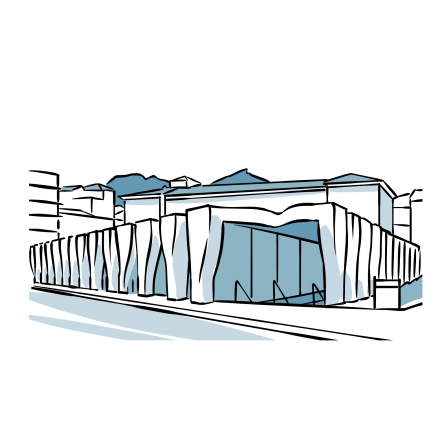
This is the most modern part of the Jean Cocteau Museum, with the other section located just a few steps away on Place Fontana. The museum’s main collection is housed in this bold, avant-garde building, designed by architect Rudy Ricciotti, who was awarded the Grand Prix National de
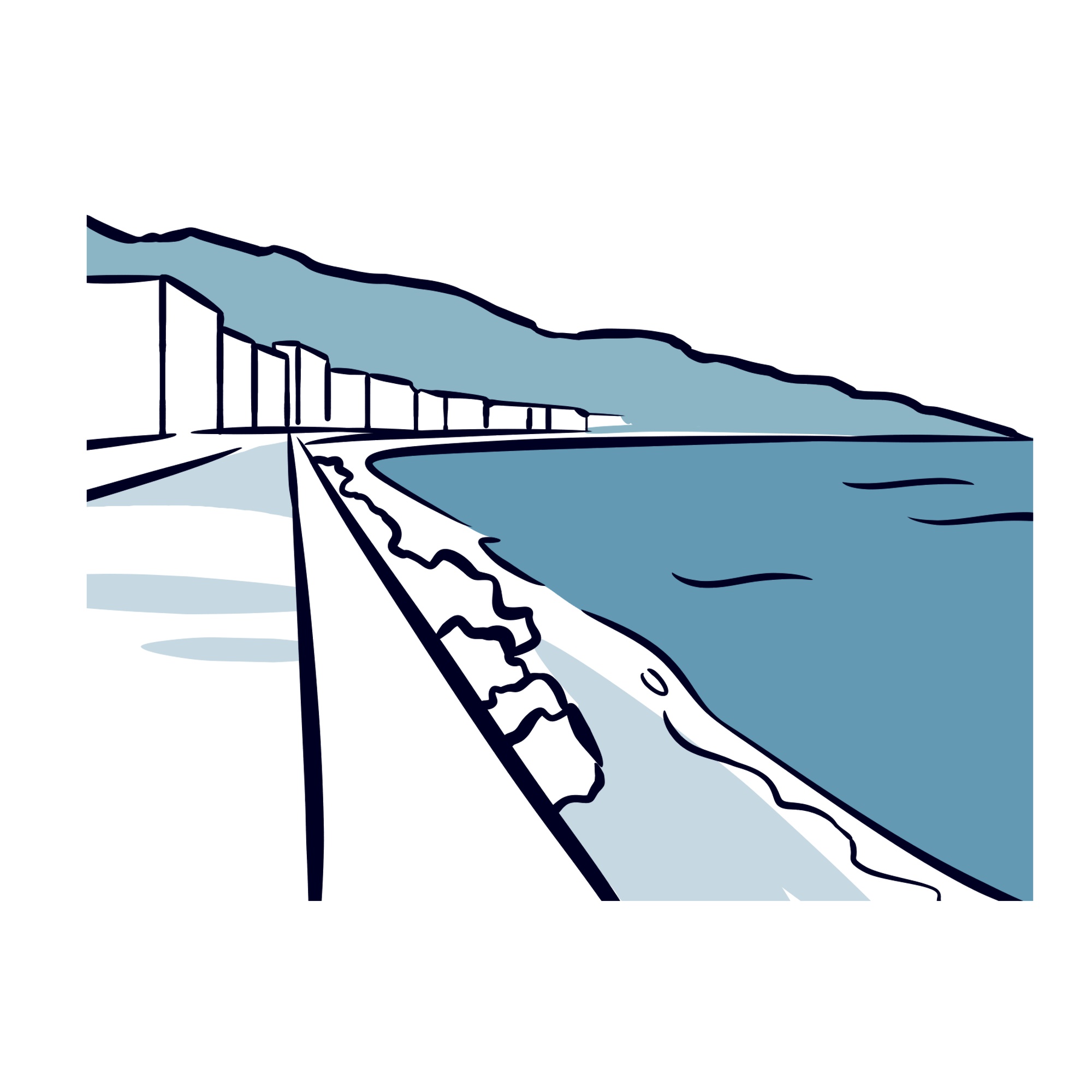
To your left is Marché Beach, a pebble beach right in the heart of Menton. It’s one of many beautiful spots to swim along what’s known as the Bay of Sunshine. Whether you’re in the mood for a dip in the sea, a leisurely stroll, or a sunny aperitif by the water, this beach is a favourite with
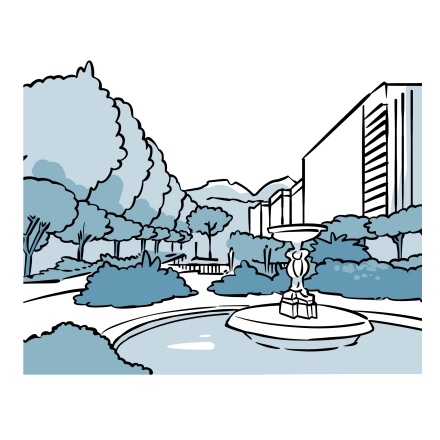
These beautiful gardens, named after Emile Biovès—the former mayor of Menton in the late 19th century—are the perfect spot for a peaceful stroll, with their lush greenery and colourful flowerbeds brightening up the square. But come February, they turn into something truly magical
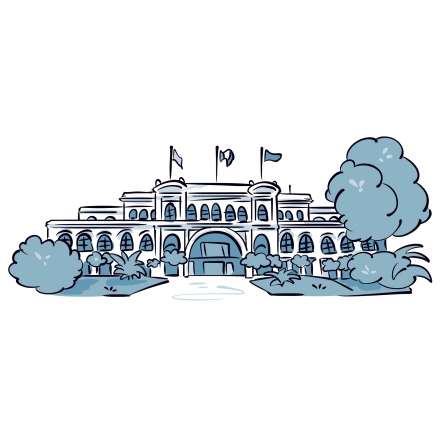
Look to your right. The impressive building facing the Biovès Gardens is the Palais de l’Europe. It’s home to the city’s convention centre and Menton’s largest performance hall. Concerts, plays, dance performances—some of the town’s biggest cultural events take place here, much to the
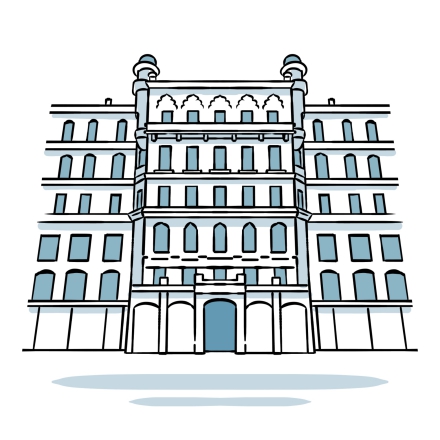
The huge building on your left is no ordinary place—it’s a palace, and one of the oldest in the city. Like the Palais de l’Europe, it dates back to the Belle Époque, though this one is even older, built in 1874. At the time, it was much smaller and looked quite different. It wasn’t until the
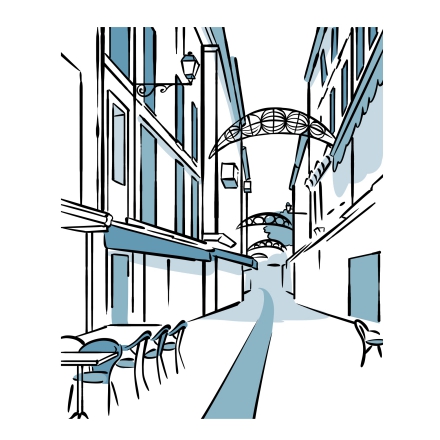
You’re now walking along Rue Saint-Michel, one of Menton’s main shopping streets. It’s full of life, with cafés, restaurants, and little shops selling all kinds of local specialities. It’s the perfect spot to taste the region’s flavours—especially anything made with Menton’s famous lemon,

With its elegant and ornate façade, Menton’s Town Hall is one of those buildings you just can’t miss. Built in 1861 by architect Victor Sabatier it was originally designed to house the Cercle des Étrangers—the “Foreigners’ Club.” Back in the mid-19th century, Menton was becoming a
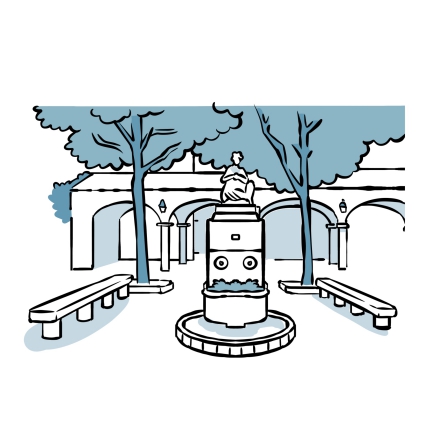
With its unmistakable Italian charm, central fountain, and buzzing café terraces, Place aux Herbes captures the essence of Menton—a sunny, welcoming seaside town with all the warmth of the South. Back in the Middle Ages, this was actually the site of the town’s main market. So it’s
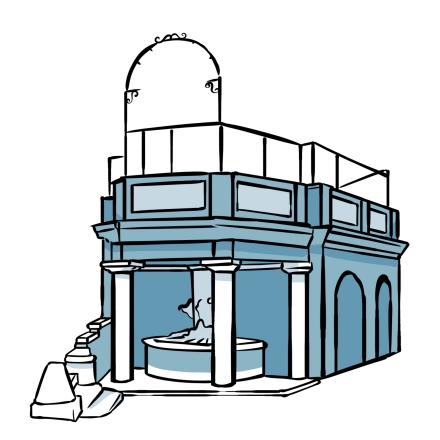
You’re now standing in front of the oldest fountain in the city. Built in 1779, it was thanks to this very fountain that water was brought into Menton for the first time. Originally, it stood just a few metres from here, by the archway you can see on Rue des Logettes. Once known as the
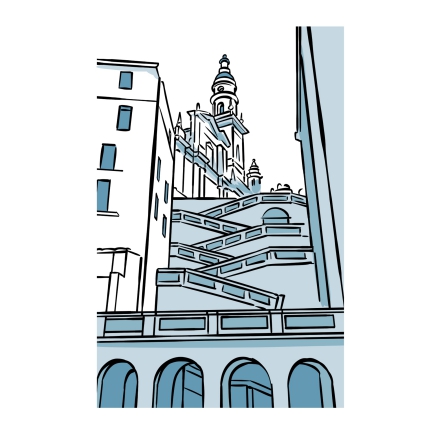
These beautiful ramps leading up to the forecourt of the Basilica of Saint Michael the Archangel were built in 1753. Their original purpose was to link Rue Longue—the main street of the old town—to the sea. Recently restored and repainted in warm shades of yellow and orange, they now
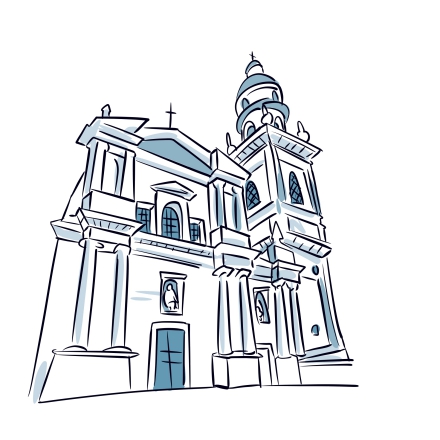
You’re now standing in front of the city’s most iconic landmark: the Basilica of Saint Michael the Archangel. Rising proudly in the heart of Menton’s old town, this stunning building is a true masterpiece of Baroque art. Construction began in 1639, but it wasn’t officially granted the
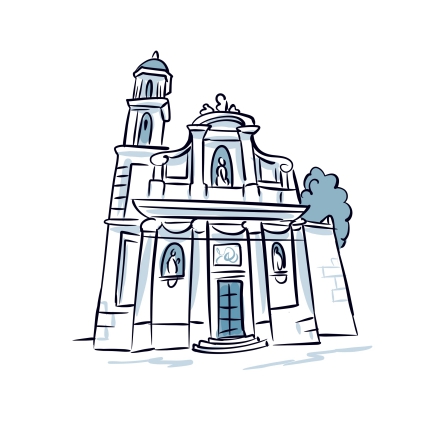
Also known as the Chapel of the White Penitents, this charming chapel stands on the same square as the Basilica of Saint Michael the Archangel and is also listed as a Historic Monument. With its elegant Baroque façade, similar in style to the basilica next door, the chapel was built a little

What could be more typical of Menton than Rue des Grenadiers? Narrow, steep, and bursting with colour, this little street brings together everything that defines the town’s unique charm. Menton is actually one of the most colourful places in all of France, a characteristic it shares
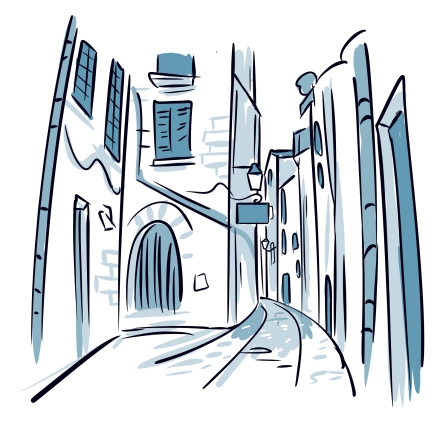
This is the street where you can really feel the medieval soul of Menton, a town that began to take shape in the 12th century. With its narrow alleyways and tightly packed, colourful houses, this neighbourhood is not only the oldest in the city—it’s also one of the most charming. As you
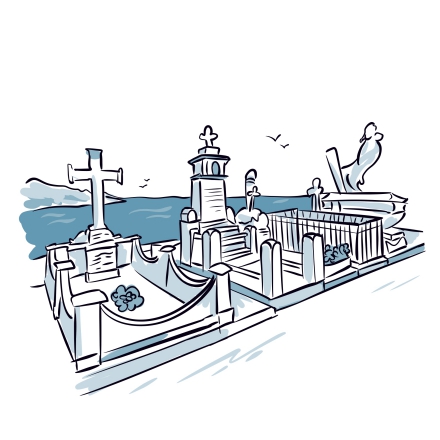
It might feel a little unexpected to find yourself in the middle of a cemetery during a tour—but there’s a good reason for it: this is one of the most beautiful cemeteries in all of France. You’ll instantly understand why, once you see the breathtaking 360-degree view over the town and
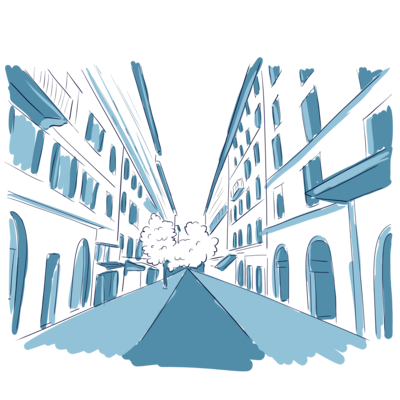
You’re now standing on one of Bastia’s main shopping streets. It’s named after César Campinchi, a Corsican-born lawyer and 20th-century political figure who served as Minister of the Navy and Minister of Justice, and a decorated hero of the First World War.
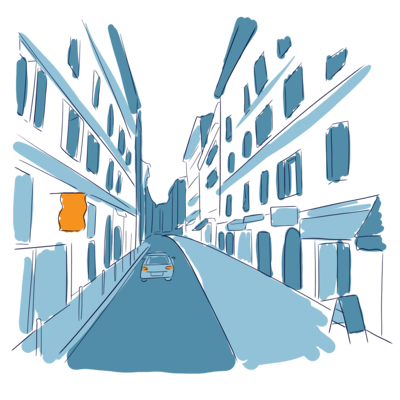
This charming little street is the gateway to Terra Vecchia, the oldest part of Bastia. Welcome to Rue Napoléon.
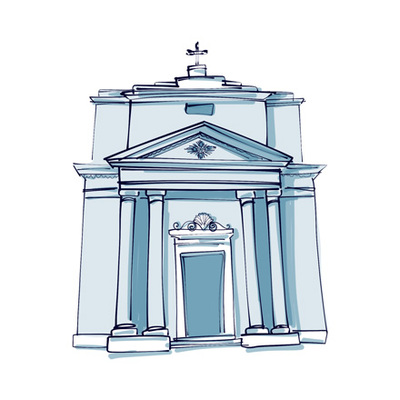
This small building tucked along Rue Napoléon is the Oratory of Saint Roch, a quiet space dedicated to prayer. While there was already a chapel here in the 16th century, the building you see today was constructed in 1604 by Francesco Marengo.

Welcome to Market Square! Once known as Town Hall Square, this lively spot has been the beating heart of Bastia’s weekend market scene since 1880.
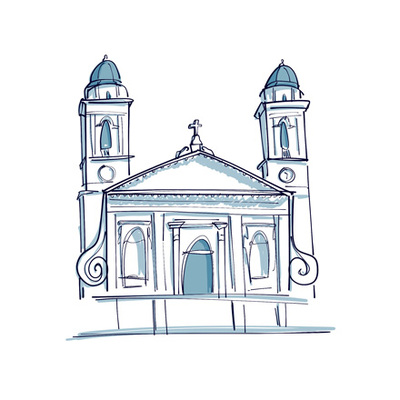
You’re now standing in front of the largest church in Corsica: Saint John the Baptist Church. You may have already spotted its twin towers from the Old Port, which rise above the rooftops and boats, making it one of Bastia’s most iconic landmarks.

You’re now standing in front of one of Bastia’s most iconic views, the kind you see on postcards. Boats gently bobbing in the foreground, rows of colourful old houses behind them, and the mountains rising up in the distance.

Tucked into a small cove at the foot of the mountains, Bastia’s Old Port is one of the must-see highlights of Corsica, the Island of Beauty.
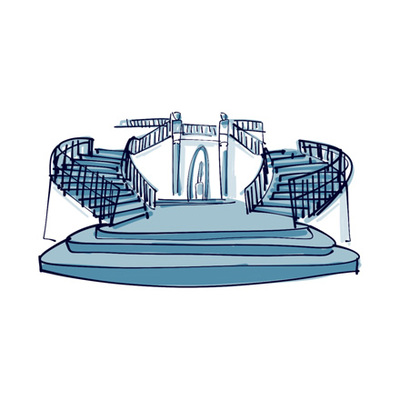
The Romieu Staircase leads up to the Citadel and was built between 1871 and 1873 with one goal in mind: connecting the Old Port to the upper town.

With the lighthouse on your right and Bastia’s Old Port stretching out to your left, backed by mountains, this panoramic viewpoint offers one of the most striking glimpses of the city.

In front of you stands the Aldilonda. Inaugurated in 2020, this recent addition to the city has become a favourite among locals and visitors.
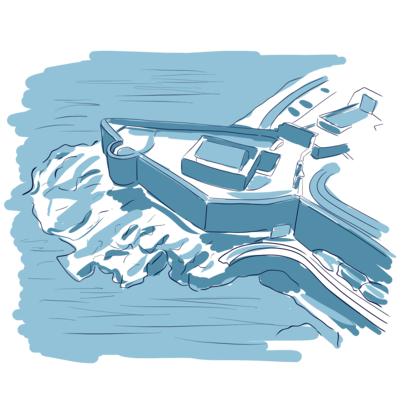
Made up of narrow, winding streets, colourful façades, and several of the city’s key landmarks, this area is also known as Terra Nova, or the “upper town,” in contrast to Terra Vecchia, the “lower town,” which covers the Old Port and the city centre.
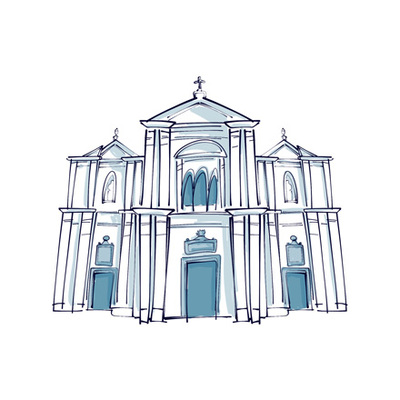
The first church built on this rocky outcrop in the upper town dates back to 1488 and became an official cathedral a century later. The building you see today was completed in 1625, replacing the original structure, which was destroyed during conflicts with France.
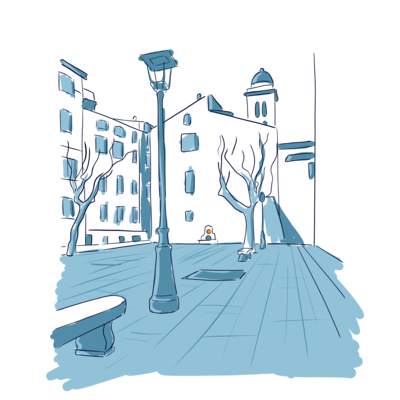
This little square is Place Guasco. With its traditional Corsican charm, it offers a peaceful break in the heart of the Citadel, and a few surprises beneath the surface. In 2019, it made headlines when archaeological remains were uncovered here.
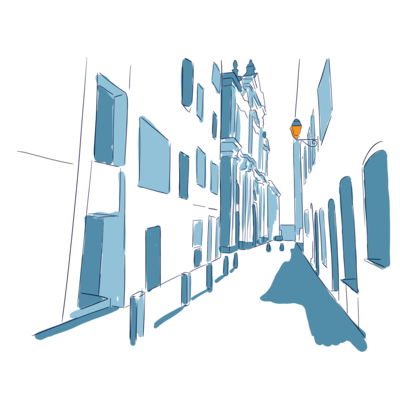
Rue Notre-Dame is one of the most historic streets in Bastia. Since the Citadel was built, this street has served as the main artery along the rocky promontory, connecting two of the city’s most important landmarks: Sainte-Marie Cathedral and the Governors’ Palace

Turn around and take a moment to admire the gate in front of you. This is the northern entrance to the Citadel. During the Genoese era, this was the only entrance into the fortified town. In front of this gate once stood a large public square where townspeople would gather and where executions were carried out.
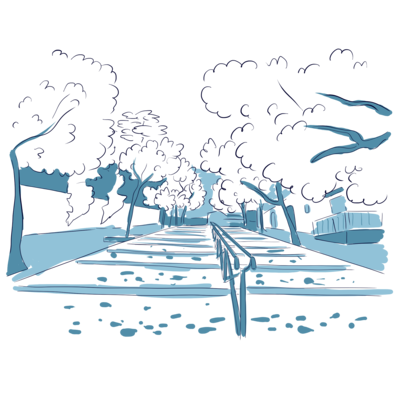
To your right is the entrance to Romieu Garden, which shares its name with the staircase just below, which leads up to it. Designed in the 19th century by architect Paul-Augustin Viale, the same man behind the Romieu Staircase, this peaceful garden offers a green and tranquil escape high above Bastia.
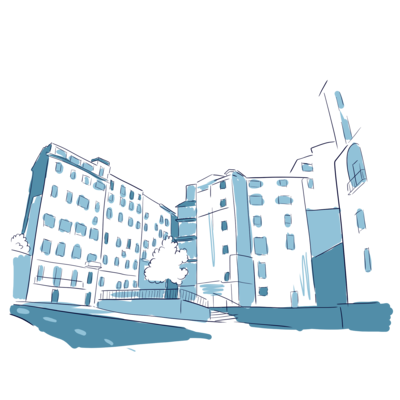
You’re now standing in Vattalapesca Square, nestled between the citadel and the Old Port. This part of Bastia underwent a major renovation in 2015, when the city set out to breathe new life into the area and turn it into a vibrant place to live and hang out.
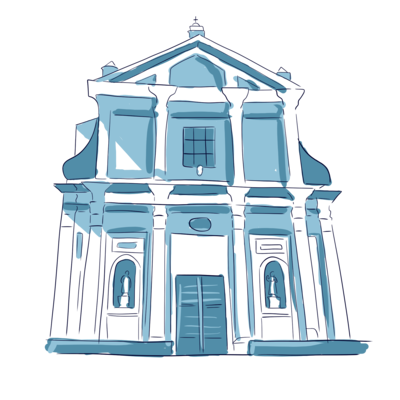
Tucked away among the houses of Bastia, Saint-Charles Church was built in 1635 by the Jesuits. Originally dedicated to Saint Ignatius of Loyola, it changed names in 1769 when the Jesuits were expelled and was rededicated to Saint Charles Borromeo, a 16th-century Archbishop of Milan and cardinal of the Catholic Church.
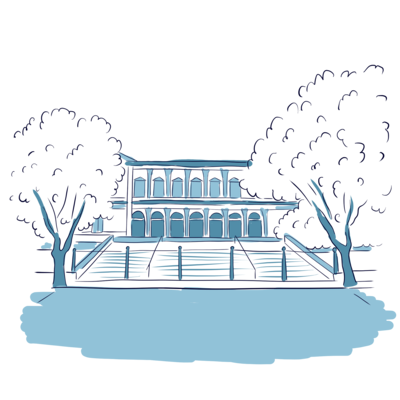
At the end of the street on your left, you’ll see Bastia’s courthouse. Its foundation stone was laid in 1852, after the city’s magistrates called for a building worthy of their profession.

On your left, along Campinchi Street, you’ll see the municipal theatre. You can walk up the steps to get a closer look at its façade, which overlooks Theatre Square.
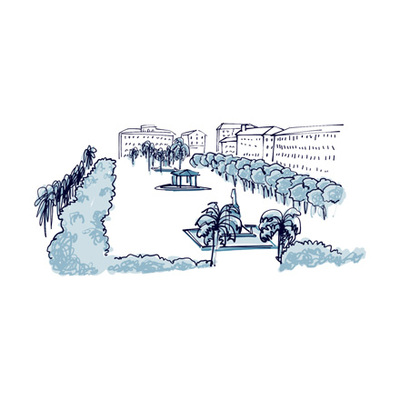
A real favourite with the locals, this lively plaza is buzzing with energy all year round. In summer, it hosts open-air concerts; in winter, there’s a Christmas market, a Ferris wheel, and an ice rink. What’s more, a charming flea market takes over every Sunday morning. There’s even a Chocolate Fair in October!
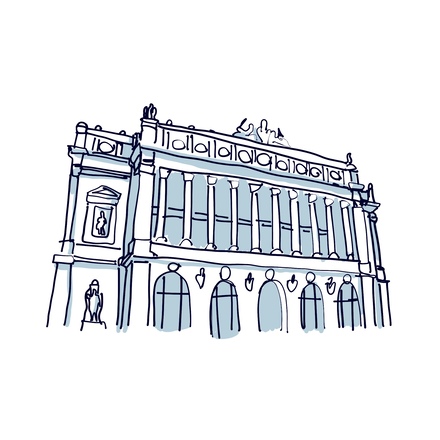
Located on the Canebière Avenue, the Palais de la Bourse, like most of the city's monuments, dates back to the Napoleonic era. It was inaugurated in 1860 in the presence of Napoleon III himself! Its imposing dimensions and spectacular façade hint at the wealth of the Phocaean city.
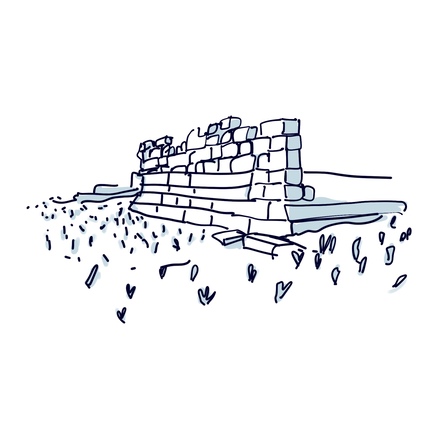
On your right, there’s the archaeological site of the Ancient Port, home to the remains of the city of Massalia, founded by the Greeks in 600 BC. This exceptional site was unearthed in 1967 during archaeological excavations,
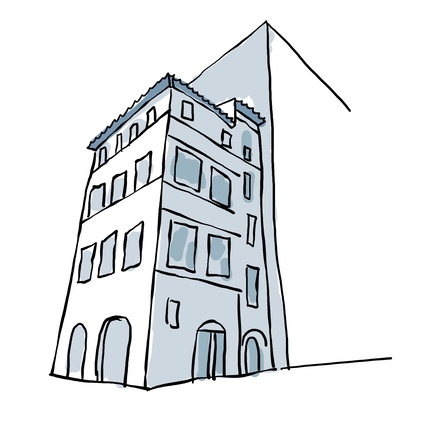
Check out the building on your right! It's actually the oldest house in all of Marseille. They call it the Hôtel de Cabre because it was built by a Marseille merchant of the same name, way back in the 1500s!
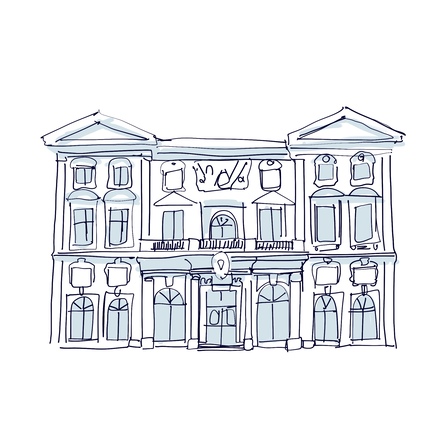
This Town Hall stands where the old 13th-century City Council building used to be. It’s one of the few buildings in the district to have survived World War II. Dating back to the 17th century,
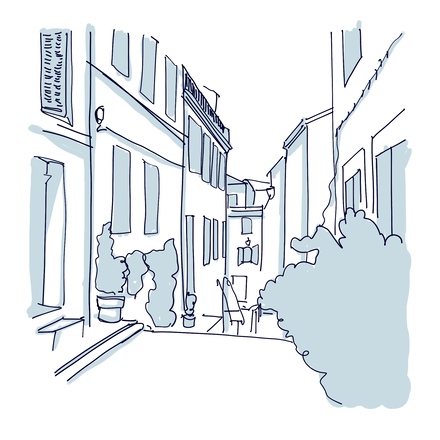
You are currently walking in the oldest district of Marseille, and one of the oldest in France! The Greeks settled here as early as 600 BC; you see, they chose this spot for its hilltop location and its proximity to the sea.

This street, full of graffiti of all kinds, is a testament to the importance of street art in the city. It’s right in the Panier district, where you'll find a multitude of artistic works spray-painted on walls,
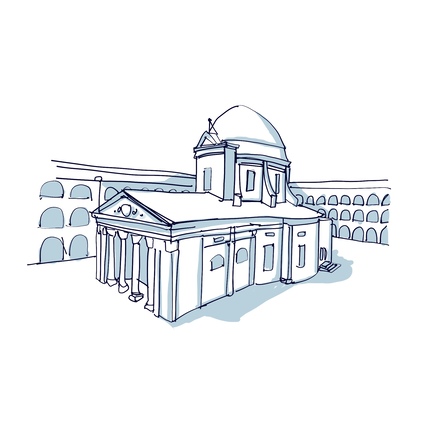
Tucked away at the very end of the charming Pistoles Square, you’ll find the “Vieille Charité”, the city’s former almshouse. It’s hard to miss; you see, it stands out as one of the city's main historic buildings!
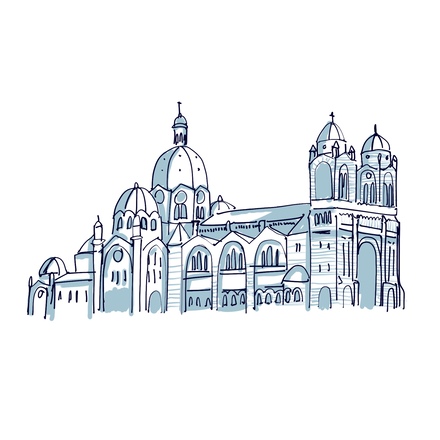
Breathtaking, isn’t it? This magnificent cathedral stands as a symbol of the city’s power. Unlike most French cathedrals, this one was actually built in the 1800s. It's actually a rebuild – there used to be an older cathedral here, known as the the Old Major (La Vieille Major),

This little neighborhood square oozes southern charm, with cafés and restaurants opening onto wide terraces in the summertime! Believe it or not, this was once the heart of the ancient Greek city of Massalia, which stretched out all around what's now known as the Panier district.

Picture this: more than 2,600 years ago, the Phocaeans landed here and founded the city of Massalia, which is now one of the three largest cities in France. The port of Marseille has a history spanning 26 centuries! No wonder it's a favorite hangout for locals and a must-see for visitors from all over the world.

Marseille’s Old Port also offers a breathtaking view of the Notre-Dame-de-la-Garde Basilica. This iconic landmark, nicknamed "the Good Mother" by the locals, stands tall on a hill, watching over the city at a whopping 157 meters high.
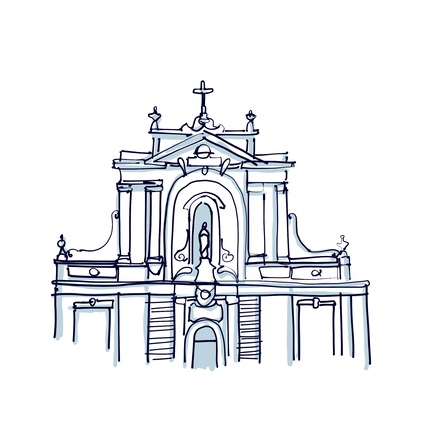
You’ve just entered Marseille's 1st arrondissement. From where you’re standing, you can spot the Saint-Ferréol Church right at the corner across the docks. It stands out with its bright white Neo-Baroque façade, all elegant and ethereal by the water.

Who would have thought? A modern marvel right at the heart of one of the oldest neighbourhoods in France! This mirrored sunshade was designed by British architect Norman Foster in 2013, so strollers can rest and escape the scorching heat.
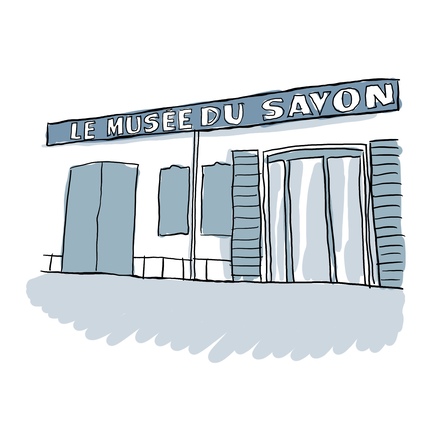
Let's face it, Marseille soap is iconic. In fact, on your left, you’ll find the world-famous Soap Museum, a true emblem of the city. You see, soap has been used in France for many centuries. As far back as Antiquity, the Gauls crafted their own soap, combining animal fat and ashes.
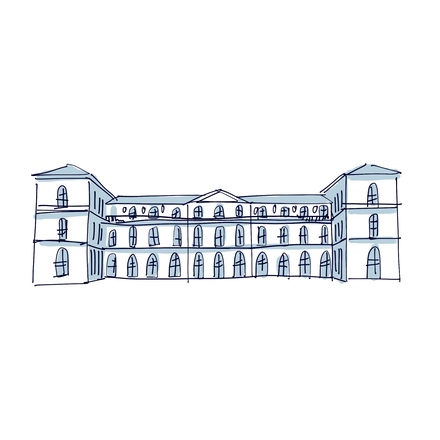
From here, through the fence on your right, you have a great panoramic view of the city and the Old Port. But that's not all! Look further out to the left and you'll see a stunning palace with an orange roof overlooking the sea - that's the Pharo Palace.
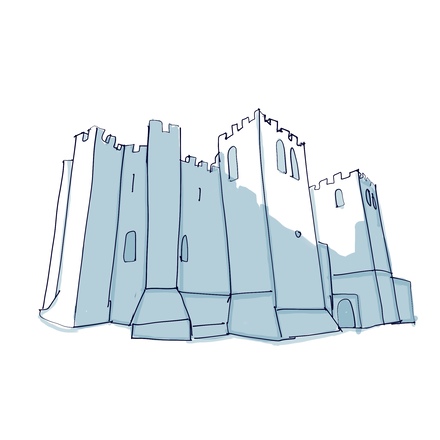
The striking building before you is the Saint-Victor Abbey, visible even from the Old Port. Founded back in the 5th century, this historic edifice draws on both Romanesque and Gothic styles.

Forget the sights for a moment! This walk down the Boulevard de la Corderie is the perfect opportunity to talk about the mouthwatering food scene of Marseille and the many delicious specialties that the city has to offer.

If you’re learning French, Marseille’s accent might not be the easiest to start with. Throw in all their unique expressions and slang, and things can get confusing fast!
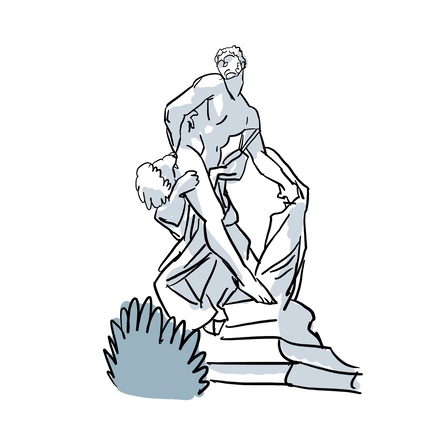
Here you are on this beautiful pedestrian square, designed by urban planner Charlie Bové and inaugurated in 1989. It’s named after World War II hero Honoré d'Estienne d'Orves, a French navy officer and Resistance martyr.

Located in the 1st arrondissement, the Marseille Opera House was built between 1786 and 1787 in a classical architectural style. Monsieur de la Tour, Intendant of Provence, laid the foundation stone and sent his very own troupe to perform
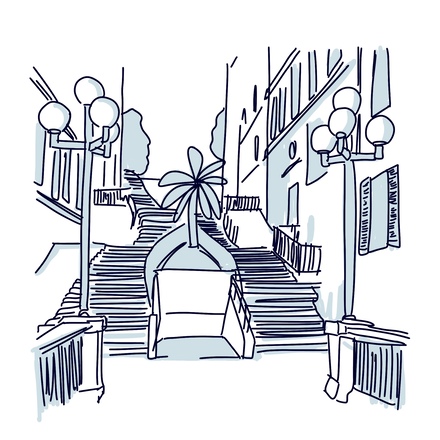
You're now entering the city's most colorful district. Cours Ju, as the locals call it, doesn't boast any historic monuments or pretty views over the city. Yet it’s a street bursting with colour, with murals on practically every wall.
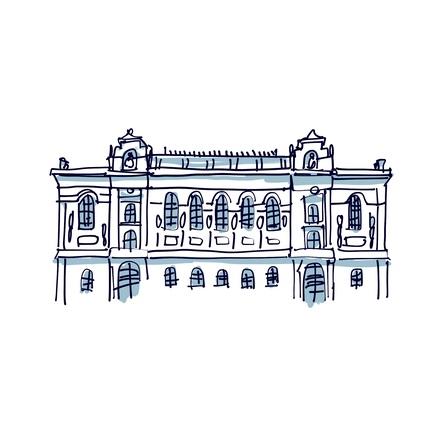
Introducing the Palais des Arts, the work of architect Henri Esperandieu, who also designed the Notre-Dame-de-la-Garde Basilica. The building now hosts concerts and exhibitions, having long housed the municipal library and the School of Fine Arts.

Welcome to the Capuchins’ Marketplace Square, located at the heart of the Noailles district. As its name suggests, it’s home to a farmers' market where some twenty producers sell their fruits and vegetables at unbeatable prices.
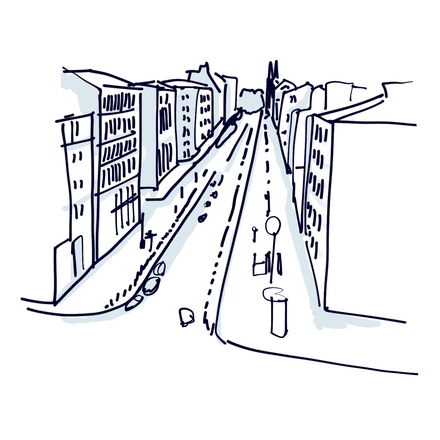
Can't talk about Marseille without mentioning the Canebière, right? I’m sure the word rings a bell, for most of you at least. For those not in the know, it's a very famous avenue. Its name comes from the Provençal word "canebe", meaning industrial hemp,

Here we are walking along a path across Shinobazu Pond, the main waterpoint in Ueno Park. To your right, you’ll find the park’s most famous section, as it’s here that lies one of the largest lotus collections in Japan. In summer, it transforms into

Built in 1631 by Tenkai, founder of the Tendai sect, Kannon-dō Temple is one of the oldest surviving structures in Tokyo. Unlike many of its counterparts, this wooden sanctuary has stood through time, only restored to return to its original form.
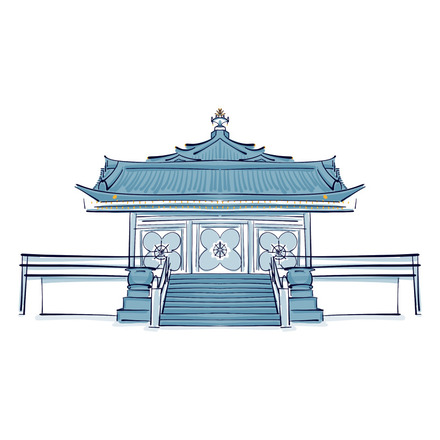
Before you stands Bentendo Temple, set at the heart of Shinobazu Pond. Built in the early 17th century, at the outset of the Edo period, this temple is dedicated to Benzaiten, also known as Benten—the Buddhist goddess of wealth, joy, wisdom,
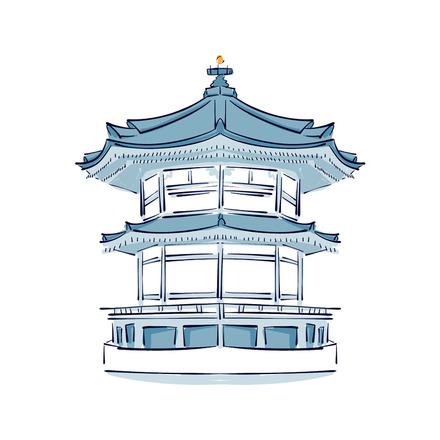
You’ve probably already noticed that this park is full of treasures, as it retraces the city’s historic events and traditions. Yet, did you know about its history? Let’s take a step back into Tokyo’s past to understand why it inspires millions of visitors
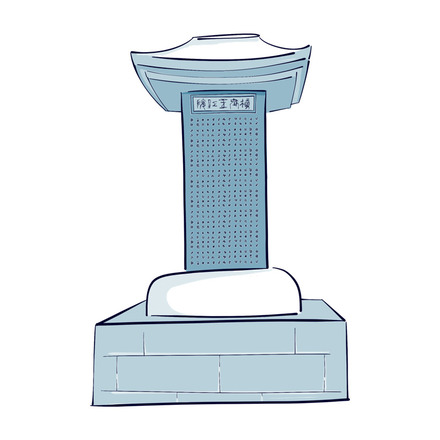
Here stands a monument honoring Doctor Wani, a scholar said to have come from Korea to introduce Confucianism in Japan. Whether that’s the truth or not, it’s up to you to decide because this story is only one version of history, and to this
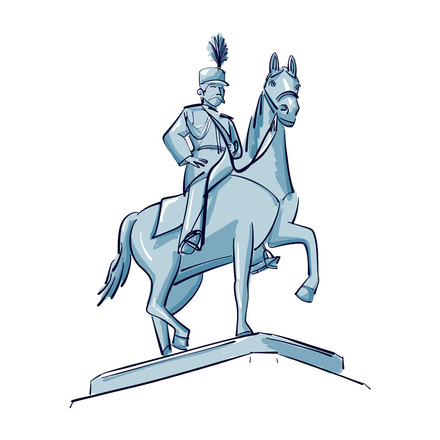
If there’s one statue in Ueno Park you simply cannot miss, it’s this one. Sitting proudly atop his noble steed, this man has played such a crucial role in Japan’s history that he now overlooks one of Tokyo’s most iconic parks. Elevated high above

In front of you stands a Shinto shrine, known as Ueno Tōshō-gū. Know that Tōshō was the posthumous name given to Tokugawa Ieyasu, the very first shogun of Tokugawa shogunate—the ruling dynasty that governed Japan from 1603 to 1868.

Welcome to the oldest zoo in Japan, home to hundreds of animal species from across the globe. Let’s be honest—the real stars here are Ri Ri and Shin Shin, the two pandas who have lived here since 2011, along with their adorable cub born in
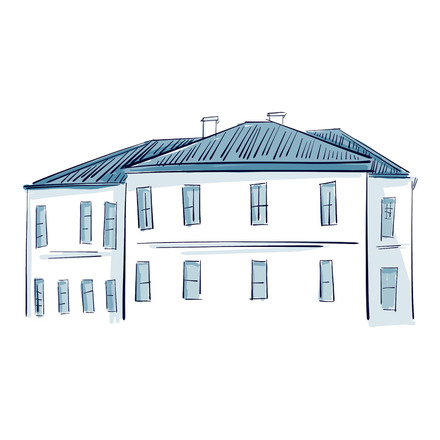
To your left stands an elegant Western building—the Sogakudo Concert Hall, the oldest of this type in Japan. When it first opened in 1890, it belonged to the Tokyo School of Music, then later served for the city's University of the Arts until the
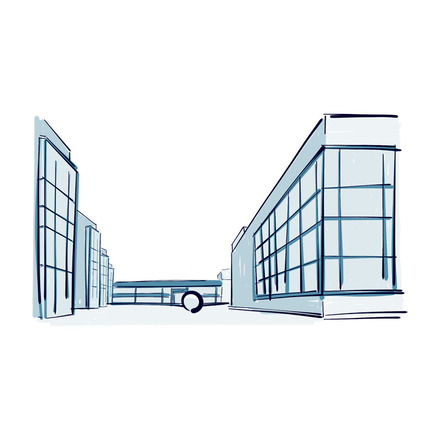
Far more modern than the other landmarks in Ueno Park, this building is none other than the Tokyo Metropolitan Art Museum—the first public art museum ever established in Japan. Opened in 1926, its mission was to make art accessible to
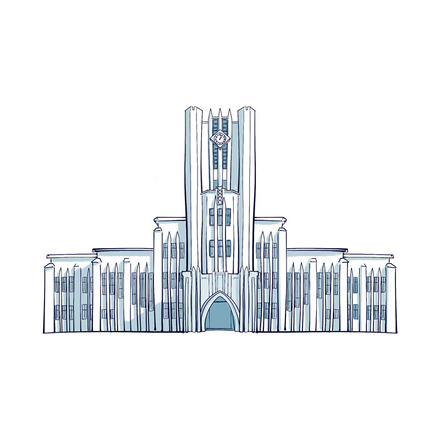
Welcome to the Tokyo University of the Arts—the most prestigious art school in the country, as well as being the oldest. As we walk in the heart of this vast campus, let me tell you about this school’s history. The university was officially founded
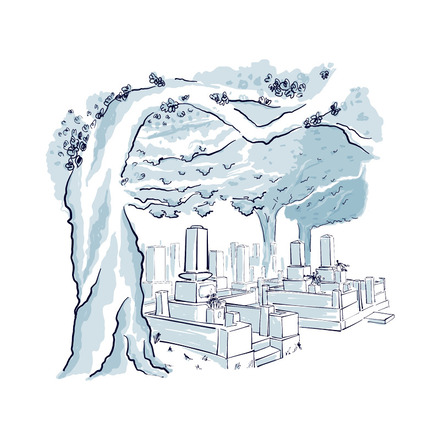
This one is quite different from the rest, as we are visiting one of Tokyo’s most remarkable cemeteries—not only for its beauty, but also for its historical significance. Many key figures from the Meiji era lie here—painters, sculptors, and statesmen
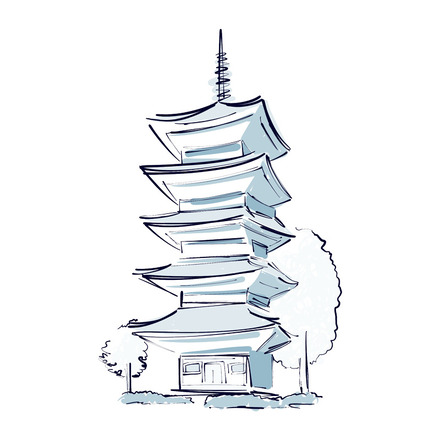
As we've already mentioned, Ueno Park was once a major Buddhist complex. Most buildings were destroyed in the 1870s when the Tokugawa shogunate fell and the Meiji era began. However, those which remain echo its historic past, which

Welcome to the building that’s home to Japan’s largest collection of art and archaeological treasures! Founded in 1872, this is also the oldest museum in the country. A vast collection of over 3 000 works spread across five different wings, this
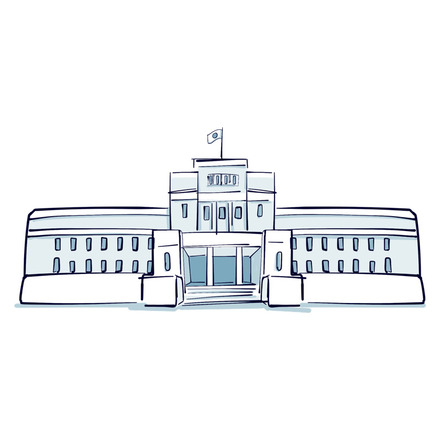
While Ueno Park offers a breath of fresh air in the heart of one of the most densely populated cities on Earth, it’s also a cultural treasure trove as it’s home to some of Tokyo’s finest museums. Here, rising proudly before you, is the National
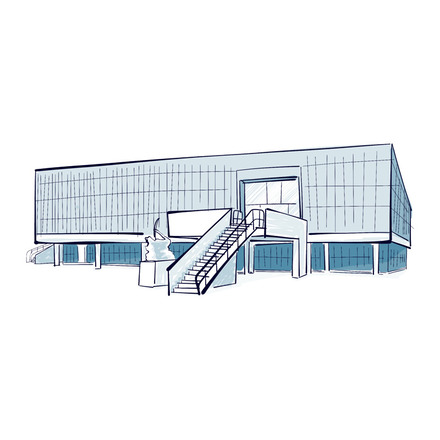
For those who may not have connected with Japanese art just yet, here’s a museum for those who love France! Monet, Renoir, Van Gogh, and Picasso adorn the walls of this remarkable building designed by none other than Le Corbusier.
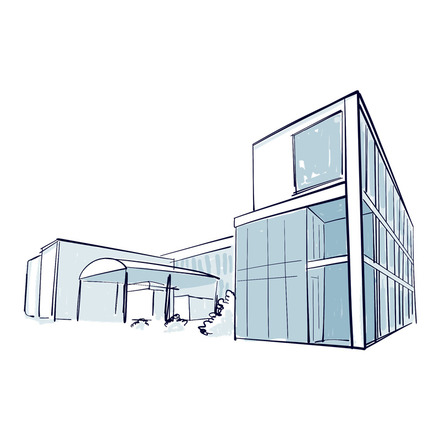
This is the most recent museum in Ueno Park as it opened its doors in 1972, yet it’s also the only private museum in the park, managed by the Japan Art Association, which is the oldest art institution in the country. Instead of exhibiting a
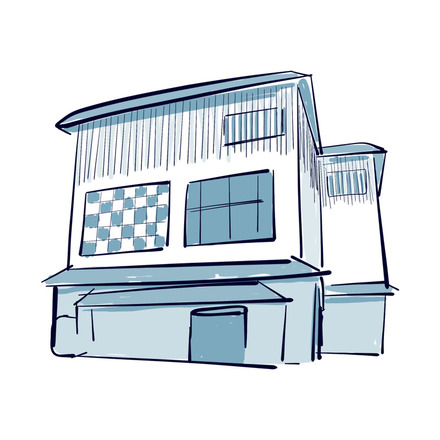
In front of you stands the Shitamachi Museum, devoted to the arts and traditions of Tokyo. Visiting this museum is like stepping into another era—particularly the Edo period, a defining chapter of the city’s development from 1603 to 1868.

You are now standing before Shinobazu Pond, and more precisely, in one of its most enchanting spots—the lotus garden. Each summer, lotus leaves and blossoms come to life to occupy this vast surface, forming one of the largest lotus collections
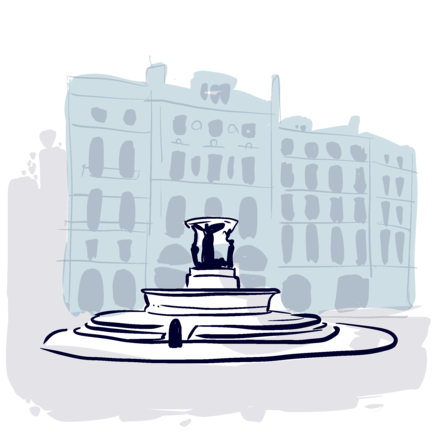
Let's take a moment to explore the beautiful Trinity Square with its lovely fountain. Built on top of the now-defunct Trinitairian convent, the square is lined with café terraces and is one of the city's most charming spots.
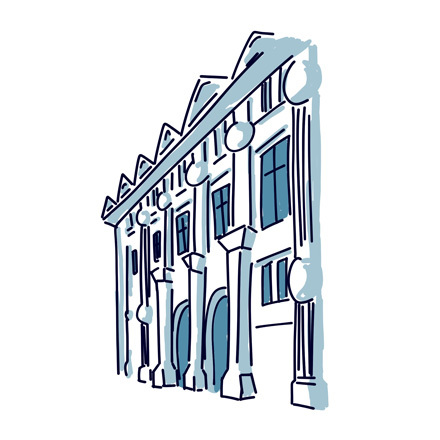
You get so used to the whole city being pink that you're genuinely surprised when you see a white facade! Hôtel de Bagis, also known as Hôtel de Clary or Hôtel Daguin, is in fact the city's only monument built entirely of stone.

There's nothing really special to see here, but allow me to tell you a little story: the street to your right, rue Maletache, was the starting point of the great fire of 1463, which devoured three-quarters of the city.
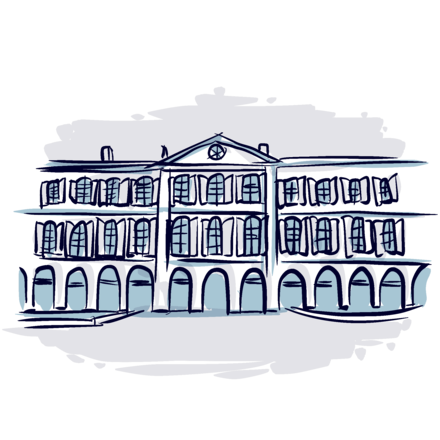
Everyone loves Saint-Georges square! It's always bustling with life, with its busy cafés during the summer.
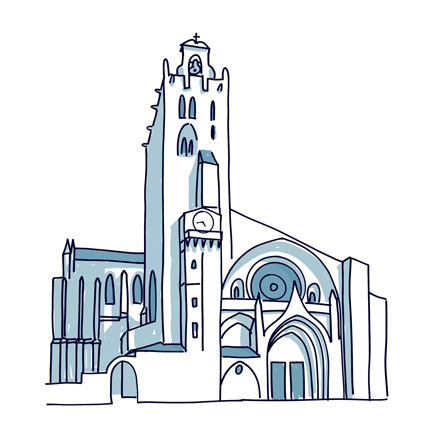
You're standing in front of Saint-Étienne Cathedral, one of the most iconic monuments in Toulouse!

Here’s a pro tip: if you're looking for a breathtaking panoramic view of Toulouse, you can ascend to the top floor of the Galeries Lafayette!
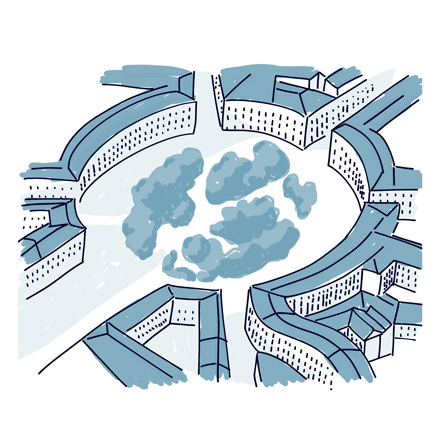
This is perhaps the busiest spot in Toulouse; there's a subway station, stores, cinemas, restaurants and shopping streets all around. This is President Wilson Square.
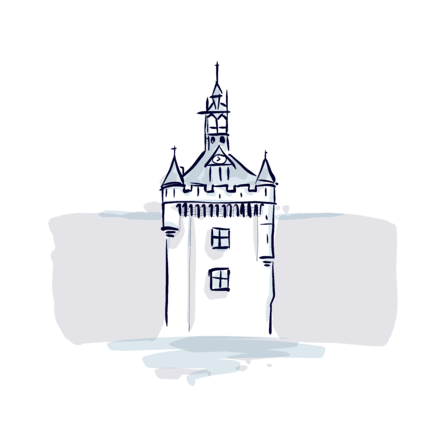
Just behind the Capitole, you'll notice a tower that seems to have appeared out of nowhere, in stark contrast to the overall architecture of the square.
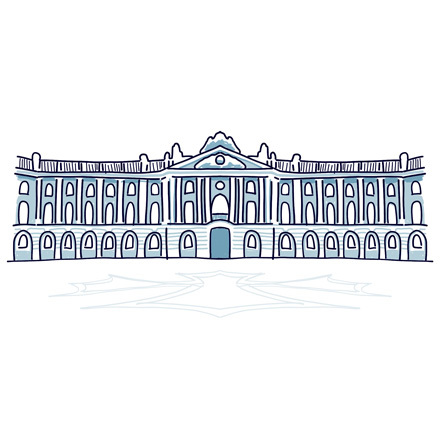
You're in the largest square in Toulouse, where some of the biggest events in all of France take place! It was cleared of the buildings formerly occupying it when the present-day capitole façade was built in the middle of the 18th century.
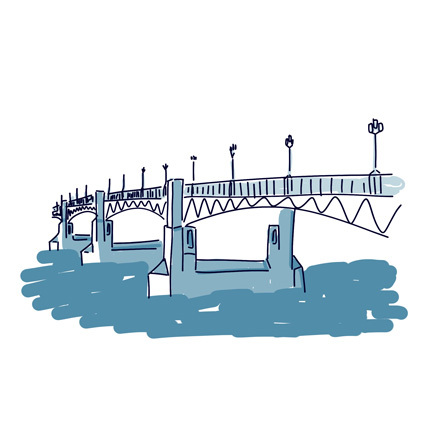
You’ve reached Saint-Pierre Square, where you'll get to dive into the city's lively student scene! The city is home to over 130,000 students! Here, plenty of bars and cafés stay open late into the evening; terraces are jam-packed, buzzing with chatter and laughter.

In past centuries, if you came to stand on this side of the Garonne, you were on the wrong side of history. This neighborhood housed the sick, the exiled and the plague-stricken. As always, time has worked its magic and today you find yourself on the cosmopolitan side of the Saint-Cyprien district.

You're now on the Pont-Neuf, paradoxically the oldest bridge built over the Garonne! The single arch you see in front of you, next to the Hôtel-Dieu, is all that remains of the old bridge that once stood here.

The Hôtel-Dieu Saint-Jacques on your left is the city's most important landmark! It traces its history back to 1130, when the Daurade Priory established a hospital foundation on the outskirts of Saint-Cyprien, on the left bank, affiliated to the monastery by the now-defunct Daurade bridge.
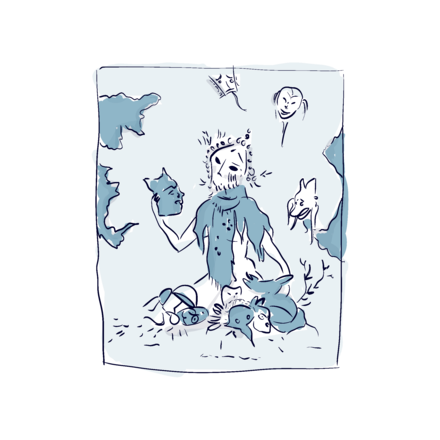
As you walk past the Occitan center for traditional music and dance of Toulouse, you'll catch sight of a beautifully painted wall depicting a young masked woman with long red hair. Seated amidst a number of expressive masks, she is choosing the one that suits her best.
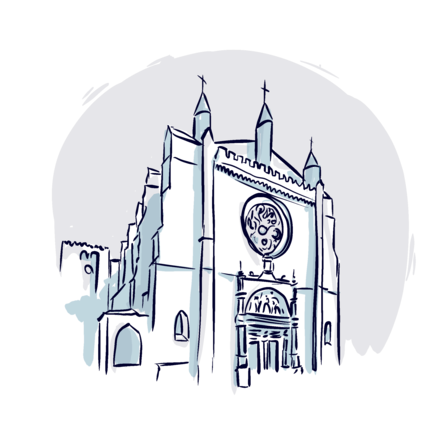
As you'd expect, we've come here to see the colorful tympanum of Notre-Dame de la Dalbade. This ceramic fresco dates back to 1878. It is the work of artist Gaston Virebent, inspired by the Coronation of the Virgin by the Italian painter Fra Angelico.
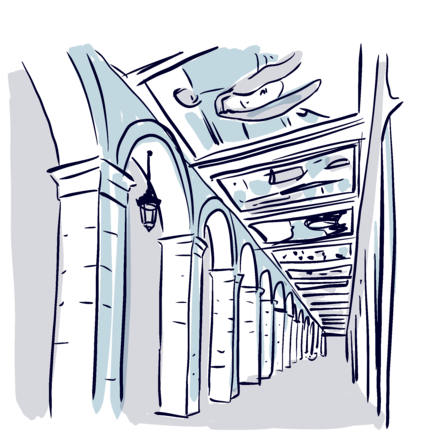
Time to look up, literally, and relive the history of Toulouse! The Arcades gallery, created in 1997 during construction works on the Capitole square, features 29 paintings and as many scenes recounting the city's history.
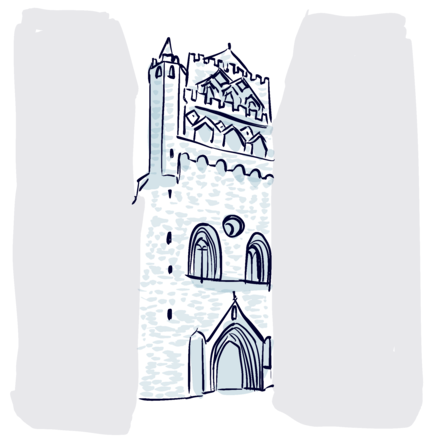
You're now in front of the church of Notre-Dame du Taur. It dates back to the 3rd century and it was built on the exact spot where the body of Martyr Saint Sernin was found.
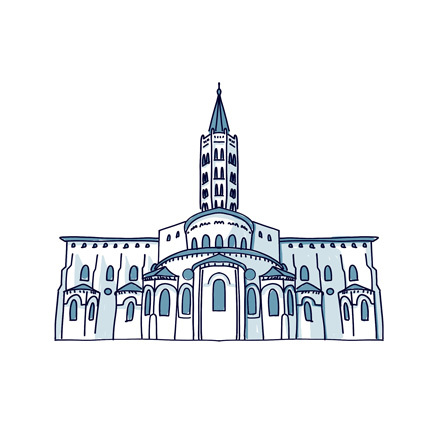
You've reached the famous Basilica of Saint-Sernin. It's quite impressive, and for good reason! It's in fact the largest Romanesque church in France! To give you an idea, the nave stretches the length of a soccer field, and you could easily fit a 7-storey building under the vault!

You're about to enter the very heart of a spectacular monumental complex! The Jacobins convent consists of a church, a cloister, a chapter house, a refectory and Saint-Antonin's chapel.
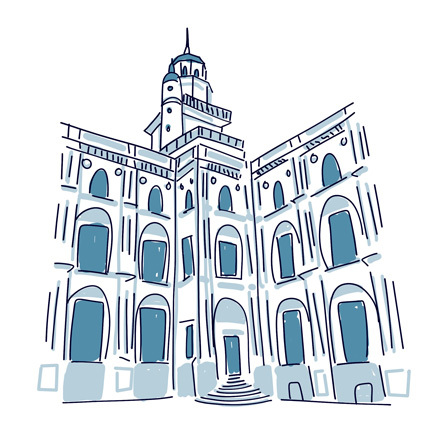
You must have heard of woad, the blue plant which, when crushed, can be used to dye textiles a beautiful pastel-blue color. Think of it as the blue gold! It made its mark in the Renaissance, adorning the kings of France.
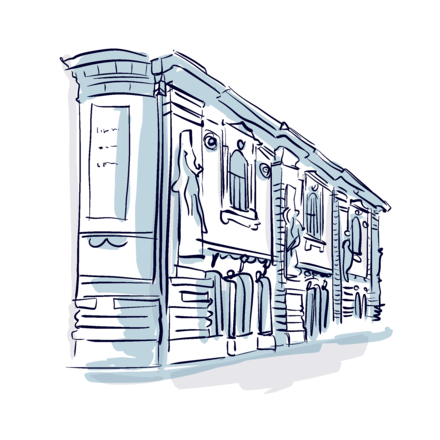
The beautiful, opulent façade before you is that of Toulouse's School of Fine Arts. It was one of the first artistic establishments in the Occitania region. The school succeeded to the Royal Academy of Painting, Sculpture and Architecture, founded by Louis the 15th in 1750 and dissolved after the Revolution, like all royal academies in France.
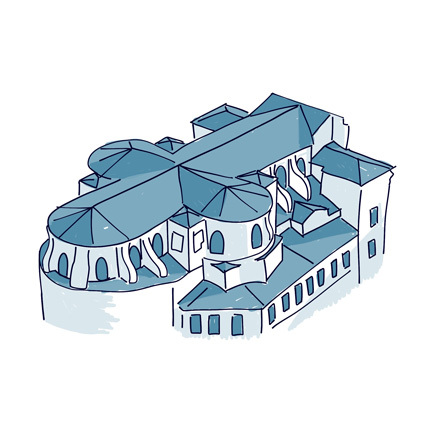
You're now standing in front of the Daurade basilica, with a beautiful panoramic view of the left river bank. The nearby quayside might lead you to believe that the name Daurade must refer to the homonymous fish!

From the quayside, you can enjoy a beautiful panorama on the Saint-Cyprien district on the left river bank. Now's your chance to take your camera and capture the view.

As you cross the San Telmo Bridge back to the left bank, you’ll get a perfect view of one of the iconic Torre del Oro—or the Golden Tower. Isn’t it stunning by the water, framed by palm trees and boats? You could almost imagine you’re somewhere in Morocco. Built by the Almohads in the 13th

If you haven’t heard about Seville’s mushrooms yet, you’re in for a surprise! This is the Metropol Parasol, better known as Las Setas de Sevilla—which means “The Mushrooms of Seville.” You’ve probably noticed that it gets very hot in Spain. The original idea behind the
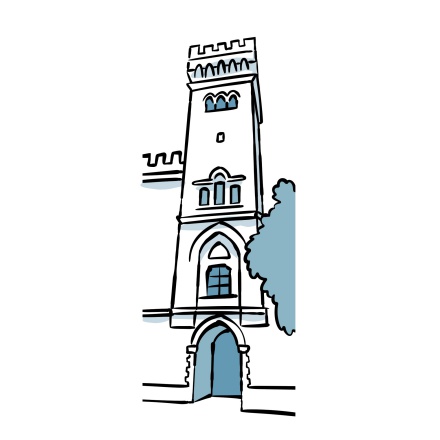
The elegant building on the corner is the Palace of the Marquis of La Motilla. Seville is full of grand townhouses like this—true hidden gems that recall a time of prosperity, when the city attracted top Italian and
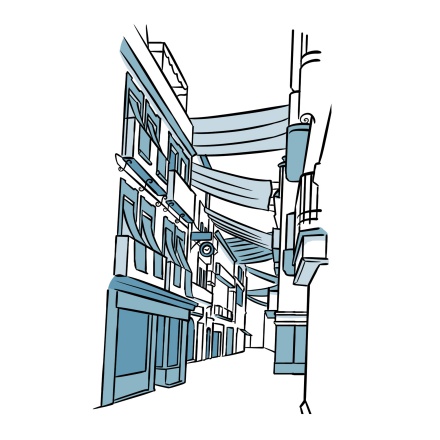
Welcome to Calle Sierpes, one of Seville’s main shopping streets.This narrow pedestrian street is one of the busiest and most popular spots in the city. It’s lined with elegant old-fashioned shops, lively café terraces, local boutiques and international brands. From June, large white canopies are
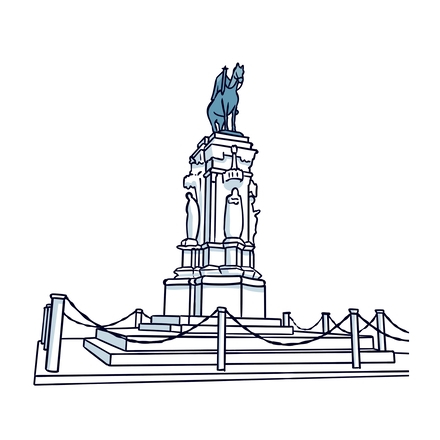
You’ve arrived at Plaza Nueva, on the other side of the Ayuntamiento. As the name suggests, this is the city’s “new” public square—though only “new” if you were around in 1856! This wide, open square was once home to the Casa Grande de San Francisco—an enormous 13th-century convent that

You’re now standing in front of one of Seville’s most iconic and visited landmarks: the Plaza de Toros. This is Spain’s largest and most prestigious bullring, especially when it comes to traditional corridas. The arena was built in the 18th century and can hold up to 13,000 spectators. It’s owned by

This is the Guadalquivir - its name comes from the Arabic for “the great river.” Seville wouldn’t be Seville without it. It’s the only river in Spain that boats can travel along, and brought the city both glory and wealth. In 1519, Ferdinand Magellan set off on the first voyage around the world right from
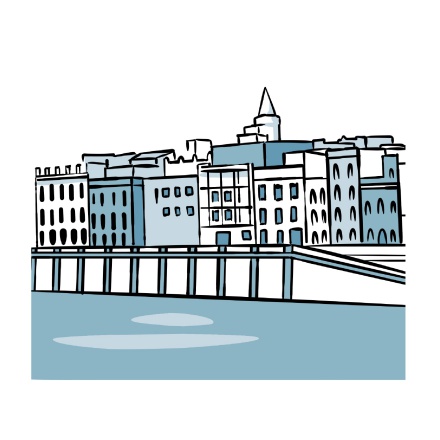
You’re now on the other side of the river, walking along Calle Betis—named after the Baetis, the Roman name for the Guadalquivir. Welcome to Triana, Seville’s bohemian quarter, birthplace of flamenco! This vibrant, working-class neighbourhood is where many of the city’s most famous
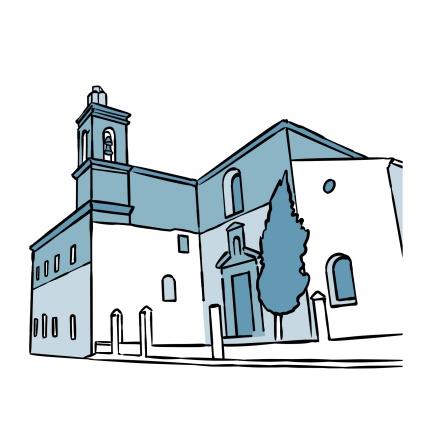
To your right is the entrance to the Church of the Convent of San José del Carmen. This is a cloistered Catholic convent, founded in 1586 by Saint Teresa for the Order of Discalced Carmelites. Step closer and look up above the entrance —you’ll see beautiful murals depicting various scenes from
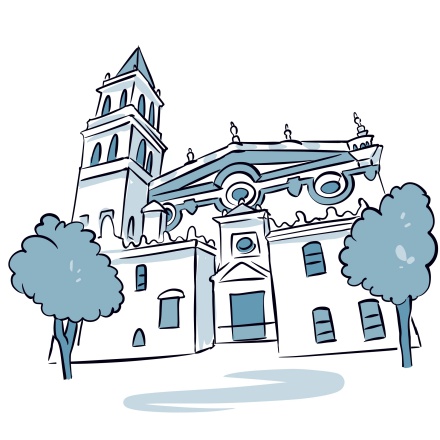
You’re now in the small square facing the Santa Ana Church. Known by locals as the “Cathedral of Triana”, this is the neighbourhood’s most iconic church. It was built on the orders of King Alfonso X, who wanted to honour Saint Anne, believing she cured his poor vision. For context, Alfonso X
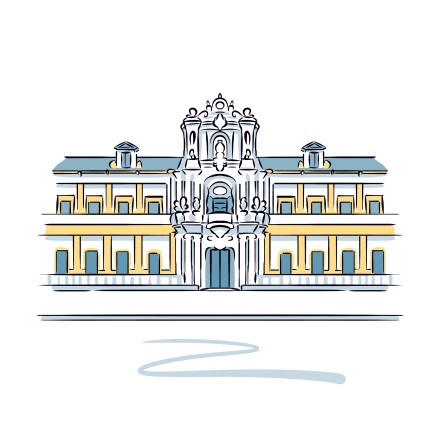
Here stands perhaps the most elegant building in all of Seville—the Palacio de San Telmo. It’s a vast, rectangular structure with four corner towers and a large central courtyard. Take a moment to admire the magnificent white gateway at its centre, composed of three levels. The first has a
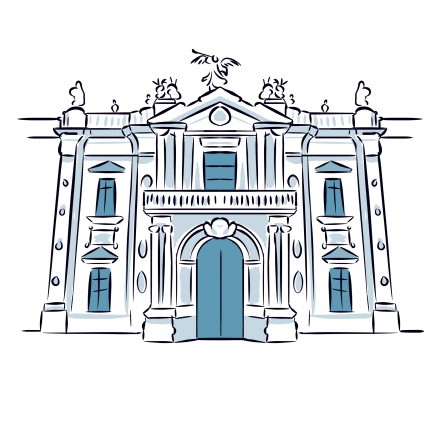
The Royal Tobacco Factory is another of Seville’s landmark buildings. The New World brought more to Europe than just gold—it also introduced a curious new plant: tobacco. Originally used as an ornament, tobacco's rise began in the mid-16th century when the Spanish king’s physician
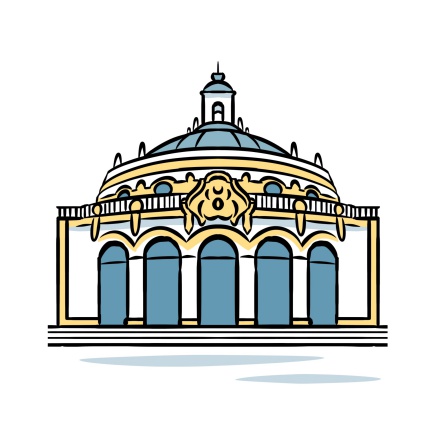
Welcome to the elegant Lope de Vega Theatre. Originally built for the Ibero-American Exposition of 1929, it was first known as the Exposition Theatre. To prepare for this international event, the city underwent a major redevelopment. The famous Plaza de España was constructed for the
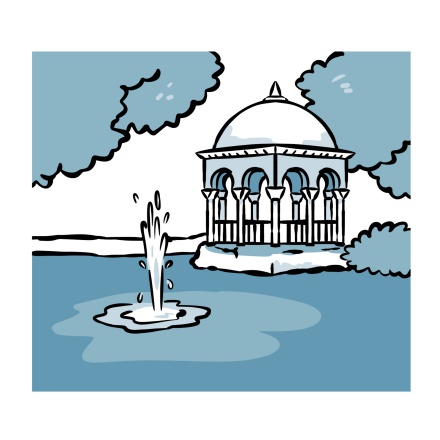
You are now walking through part of Maria Luisa Park, heading towards the Plaza de España. These gardens once belonged to the San Telmo Palace and were gifted to the city by Princess Maria Luisa, who gave the park its name. In 1911, ahead of the upcoming Ibero-American Exposition, the royal

You’re now standing in the Prado de San Sebastián gardens, which means the Meadow of Saint Sebastian. They’re named after the former hermitage that stood here during the 13th century. It’s hard to picture today, but this peaceful little park was once a mass burial site during the devastating
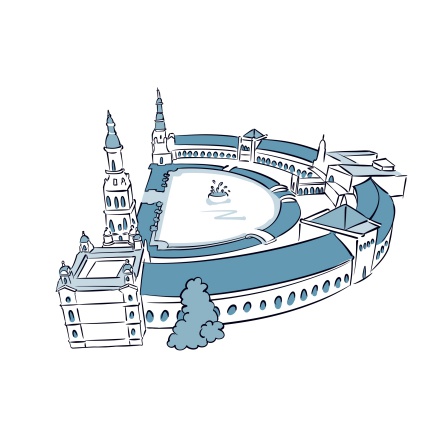
Standing in the heart of Seville’s magnificent Plaza de España, you can sense there’s something special about this place. No city builds a square this grand without a reason! To understand its grandeur, we need to travel back to the year 1898. This date might not mean much to you, but it was
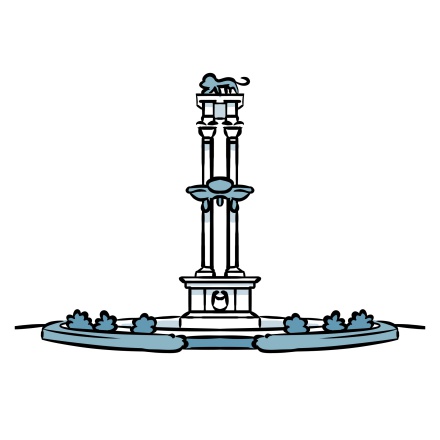
Welcome to the Murillo Gardens, which run alongside the Alcázar, separating Seville’s old town from the southern part of the city. These lush gardens are bursting with flowers and greenery for a reason—they once belonged to the Alcázar itself... In 1862, a small section was gifted to the city to open up
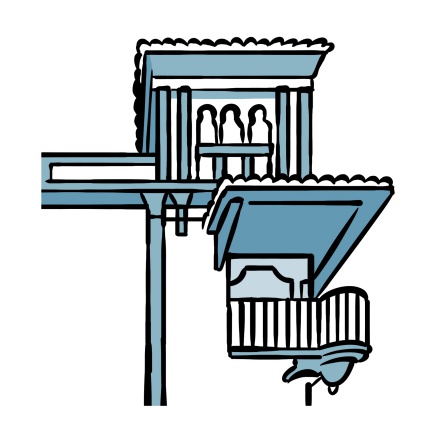
Seville has long been a dream destination for travellers, well before the days of low-cost flights. One of the most famous stories set here is The Barber of Seville written by Beaumarchais, a French playwright. It’s a timeless tale of love, disguise, and a clever servant named Figaro. We’re now standing
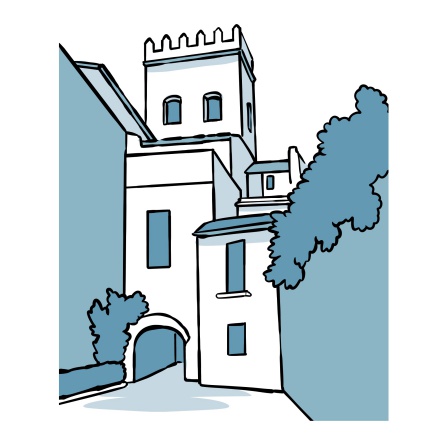
You’re now in the heart of Santa Cruz, arguably the most beautiful part of Seville. It’s certainly the most picturesque, full of cobbled streets and white-and-yellow houses. This was once Seville’s Jewish quarter, and today, it’s home to some of the city’s most iconic landmarks, including the Alcázar
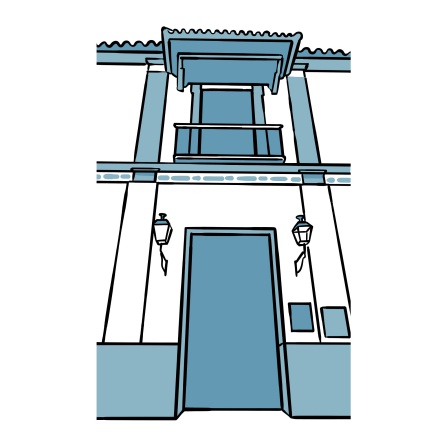
The beautiful Baroque building on this square is the Hospital de los Venerables. Built in the late 17th century, it housed elderly members of the clergy, serving as a luxurious retirement home for priests. Today, the former hospice is home to the Velázquez Centre, a museum dedicated to the life and
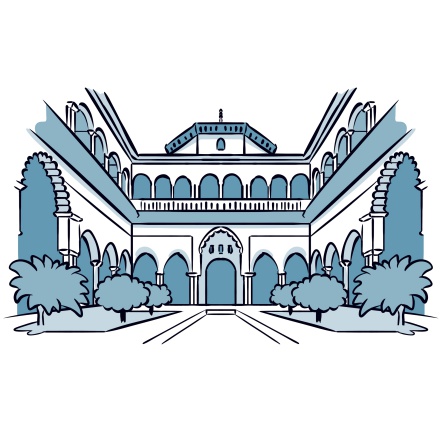
Welcome to the heart of Seville, where the buzz never stops. You might spot a long line in front of a red door just ahead—that’s the Lion Gate, the main entrance to the Alcázar. We highly recommend booking a skip-the-line ticket—or a combined pass that includes the cathedral. No trip to
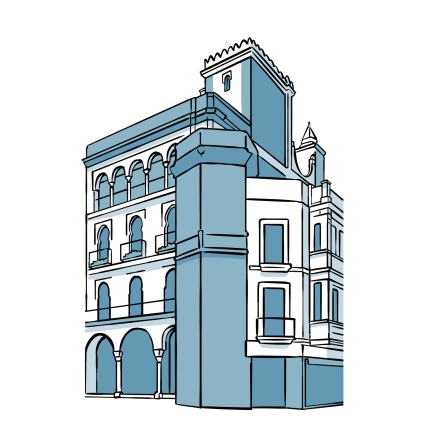
Look to your left and you’ll spot an old tower on the corner. It’s easy to miss, but this is one of the last remaining parts of the defensive wall built by the Almohads in the mid-12th century to protect the old city center. The tower was once part of a long wall stretching from the Alcázar to the Torre del Oro
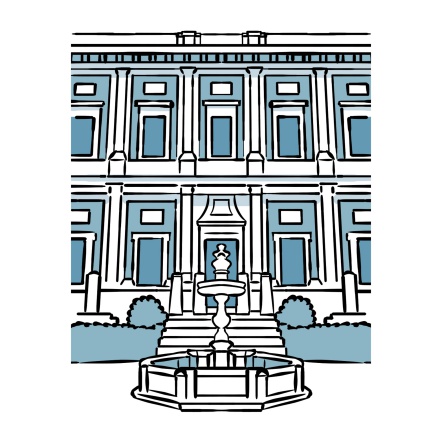
This large square building is home to the General Archives of the Indies. By Indies, we mean the Americas, discovered by Christopher Columbus. The discovery of the New World in 1492 marked the end of the Middle Ages, transforming Seville into Europe’s main port to the American continent. In
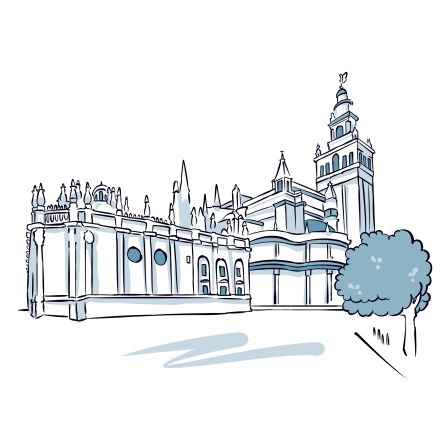
It may feel like there’s almost too much to see in this beautiful city, but here is the star of the show: the magnificent Seville Cathedral. This is the third largest cathedral in the world, after St. Peter’s in the Vatican and St. Paul’s in London. It was built to show the power and prestige of the

Here it is at last, the famous minaret everyone talks about. A small Visigothic church once stood here before Seville Cathedral took its place. When the Umayyads took control of the Iberian Peninsula, they demolished this church and built a grand mosque in its place. Today, that mosque has

From here you can spot the Patio de los Naranjos, or Orange Tree Courtyard. The doorway you’re looking through is the Puerta del Perdón—the Gate of Forgiveness. It’s the oldest surviving entrance to the cathedral and was most likely the main gateway to the mosque back in the 12th century. A gate
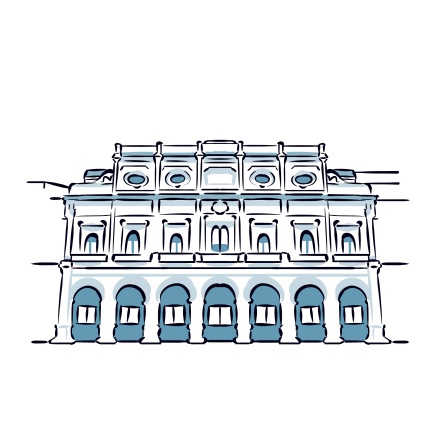
You’ve now arrived at the narrow yet elegant Plaza de San Francisco, the heart of Seville in the 16th century. Major public celebrations took place here, and it was also home to the city’s most important civic institutions. Like many central squares, its name changed over time with the country’s
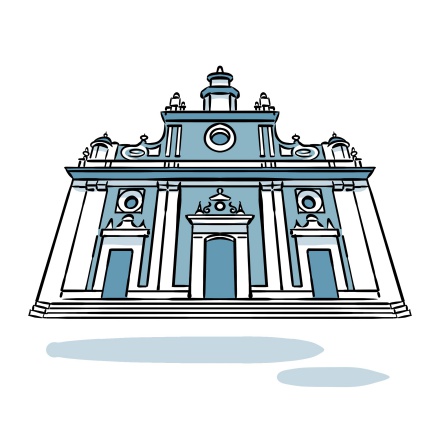
In front of you is the beautiful Baroque Church of the Divine Saviour. It’s the second-largest church in Seville, after the cathedral. If you're only planning to visit one other church in the city, make it this one. While there is an entrance fee, it’s well worth it. If you’ve already bought a ticket for the
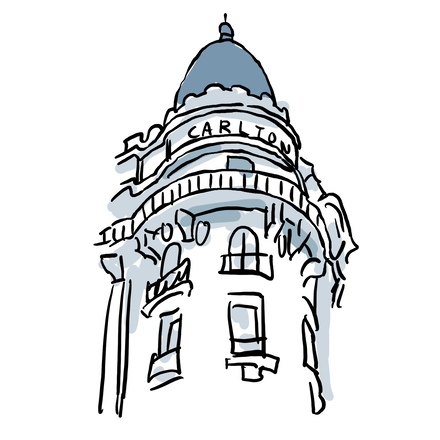
Of course, Cannes wouldn’t be Cannes without its Old Port, its Palais des Festivals, the Suquet district, and the famous Croisette. But the city also wouldn’t be the same without its legendary five-star palaces—the kind you come to admire and snap a few photos of, even if staying there is out of reach.

La Croisette is inseparable from Canne’s identity — a chic French boulevard that perfectly embodies glitz and glamour. Its elegant and luxurious image is famous the world over… But what many people don’t know is that this iconic 2-kilometre promenade took a long time to earn its fame.

If there’s one place that truly captures the spirit of Cannes, this is it. A cinematic haven since 1946, Cannes has repeatedly transformed its infrastructure to keep up with its world-famous film festival. The earliest editions were held at the municipal casino, before the Palais Croisette was built in 1947.

Los Angeles may have its legendary Walk of Fame — but Cannes has its own star-studded tribute. Welcome to the prestigious Cannes “Chemin des étoiles” litteraly the Path of Stars. Behind the glamorous name lies one of the most visited spots on the French Riviera.
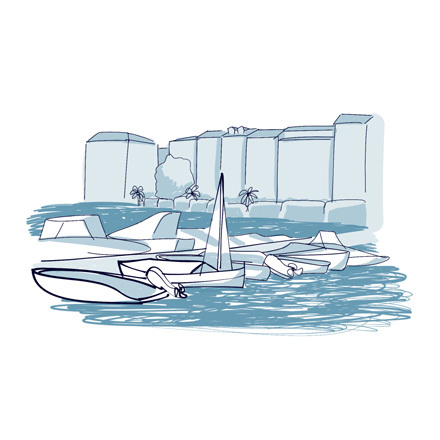
A central landmark in the city, the Old Port is an open invitation to enjoy the sea — and the art of doing nothing. Ranked among the oldest ports of its kind on the French Riviera, it sits right at the crossroads between historic Cannes and the glitzy, modern Cannes of showbiz.
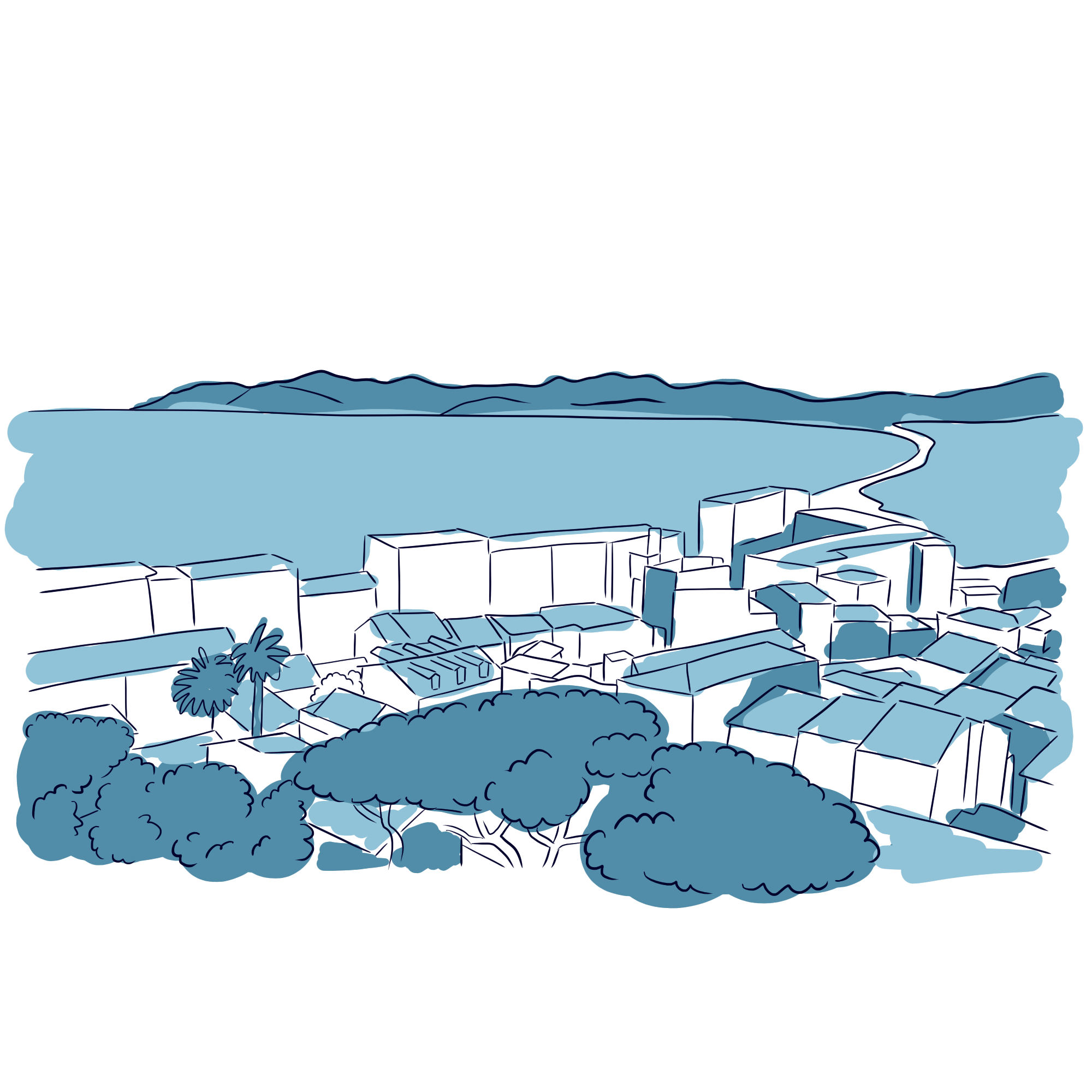
Cannes’history is often summed up to one word : cinema. But if you take a step back — and climb a little higher — you’ll soon discover there’s much more to this city than the red carpet. Away from the spotlights and the bustle of central Cannes lies “Le Suquet” — a name that means “the summit” in Provençal — an old local language once used across southern France.

As you make your way uphill toward the highest point of Le Suquet, you’ll pass by a rather discreet but intriguing site. Built in the 12th century, this stone tower was originally designed as a lookout and defensive post for the citadel — a strategic vantage point in case of enemy attacks.

With its breathtaking view over the Bay of Cannes, this church definitely enjoys a privilege few religious buildings can claim. Standing at the very top of the old Suquet district, Notre-Dame d’Espérance took over a century to complete.

Between two points of interest, we couldn’t resist showing you one of the very best views in the entire city. Here on Place de la Castre, the Bay of Cannes puts on its most dazzling display. It’s hard to get tired of that perfect meeting between the deep blue Mediterranean and the iconic symbols of the Croisette — it really is picture-perfect.
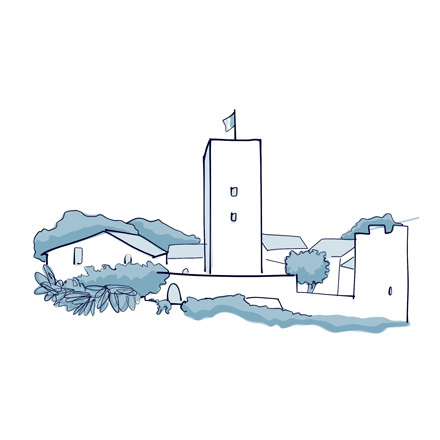
Tucked away in the remains of the medieval castle of the Lérins abbots since 1919, the Museum of World Explorations is one of Cannes’ true cultural landmarks. Formerly known as the Castre Museum, it owes its creation to a series of major donations, starting in the 19th century.
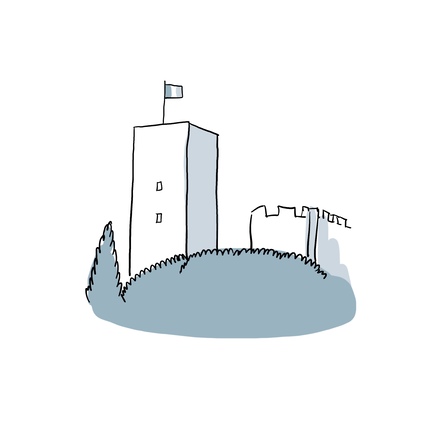
A remnant of the city’s old fortifications, the Suquet Tower was built between the 11th and 12th centuries at the initiative of the abbots of Lérins. Standing 22 meters tall, it once served as a lookout point, keeping watch over the Bay of Cannes — regularly threatened by enemy attacks,

Set apart on its rocky outcrop yet strikingly visible thanks to its grand scale, Vallombrosa Castle is without a doubt one of the finest properties in Cannes. It was built in 1852 by British developer Sir Thomas Robinson Woolfield, who hoped to attract wealthy buyers with high-end properties.
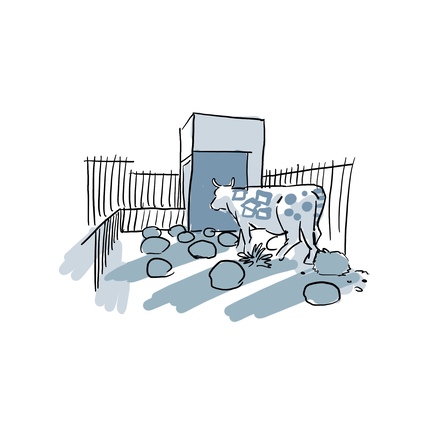
Managed by the Cannes’ Centre for Modern and Contemporary Art, this is the place in town where art truly speaks. Once used as a morgue, the building was fully renovated and reopened in 2016, now serving as a creative hub for Cannes-based artists. The site covers 850 square metres, all dedicated to showcasing and promoting contemporary visual art.
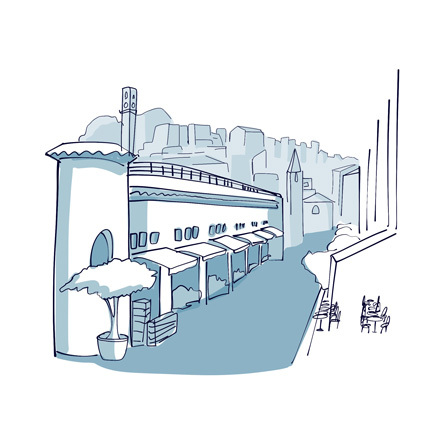
If you hear a bit of distant chatter and catch the scent of Mediterranean herbs in the air, chances are you’ve arrived at the right place. A beloved local institution, Forville Market is where people meet, mingle, and indulge in good food.

Is it possible to combine shopping and history in the same visit? Of course it is ! You can do that as you stroll down one of the oldest streets in the city: Rue Meynadier. Originally opened in the 16th century under the name “Grand-Rue,” it once served as the main road toward Antibes, the seaside town located about 11 kilometres from here.

With La Croisette and the Palais des Festivals just around the corner, it’s true that the Notre-Dame-de-Bon-Voyage Church doesn’t exactly steal the spotlight in Cannes. But its presence offers a rare chance to discover a quieter, more authentic side of the city.
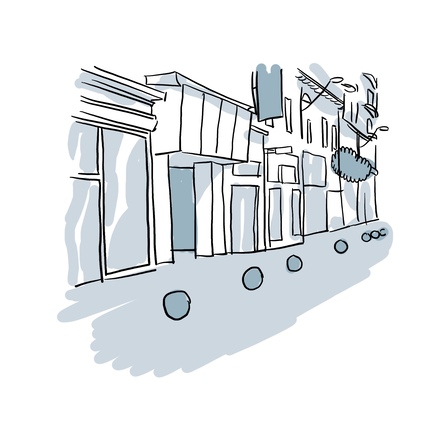
Running parallel to The Croisette, Antibes street is without a doubt the beating heart of shopping in Cannes. Built in 1914 and named after the old road that once led to the city of Antibes, this lively street is now one of the most vibrant in the city centre.
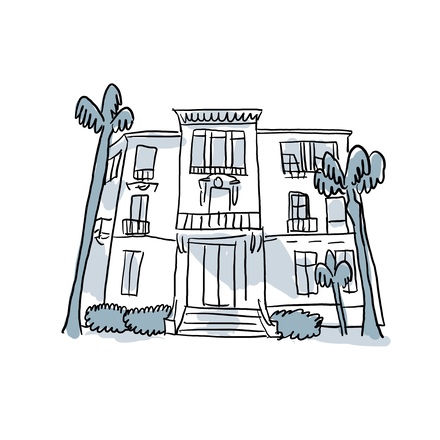
Overlooking the Croisette and the sea in the background, this small building is the last remaining piece of what was once the Grand Hôtel. Built in 1863, this spacious establishment included several gaming and lounge rooms, as well as 150 rooms.
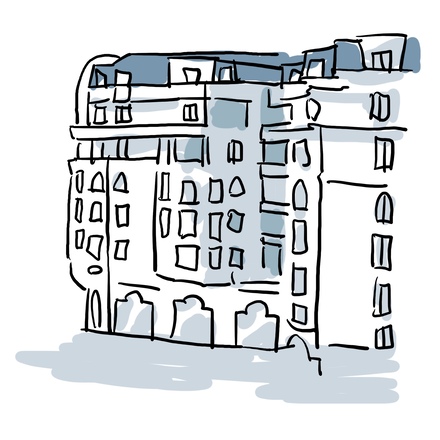
The Croisette may be open to everyone — locals and visitors alike — offering a touch of Mediterranean magic to anyone who walks its length. But when it comes to palaces, things are a little more exclusive. Only a privileged few can boast a front-row view of the sea, offering their guests the luxury of waking up face-to-face with the “Grande Bleue”.
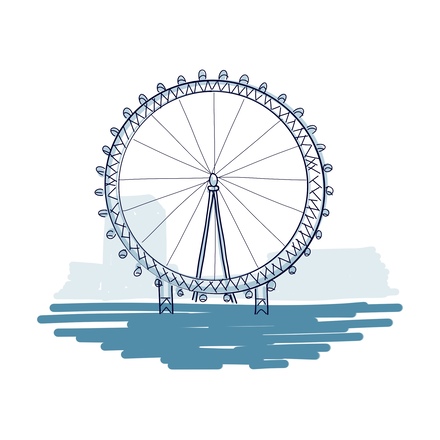
This is the London Eye, one of London's most iconic attractions! Installed in the year 2000, it was originally intended to remain in place for only a few years to celebrate the 3rd millennium, however, as a result of its great popularity with visitors coming from all over the world to see it, it's staying here for good.

In case you haven't had your fill of it yet, here's a lovely panorama overlooking the Thames and some of the capital's most iconic monuments!

Here, you are in front of the imposing Westminster Palace, overlooking the Thames on its opposite bank.
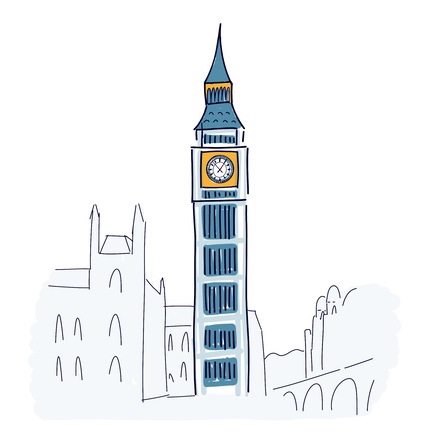
Big Ben chimed for the first time in 1859... This iconic bell is known all over the world.
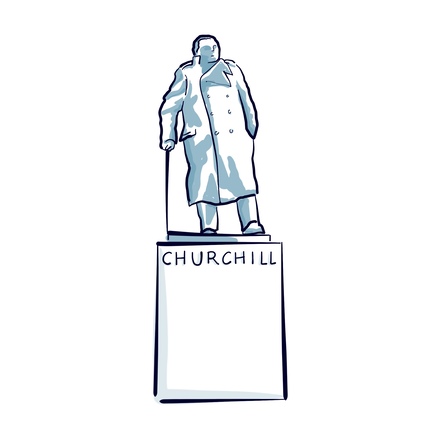
The statue in front of you is almost 4 metres high and impossible to ignore. An iconic figure in England and a World War II hero, this world-famous statesman has an extremely rich history.
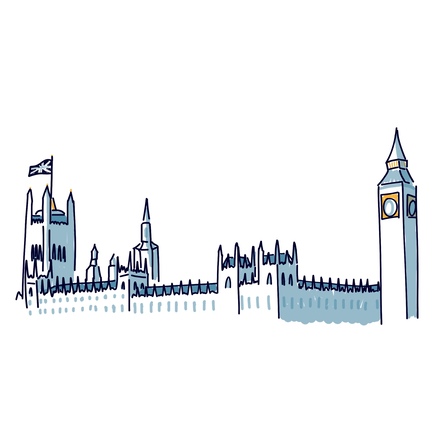
Behold, you're standing in front of the centre of British political power!
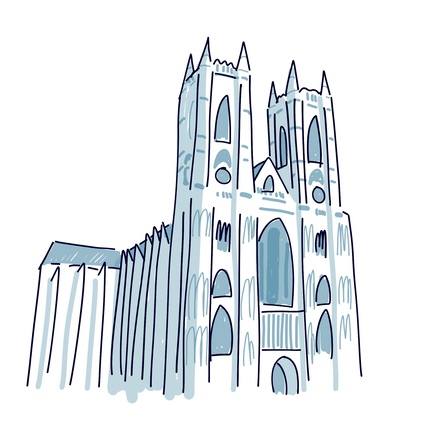
London's most famous church is over 1,000 years old! In the 10th century, Benedictine monks built a monastery here.
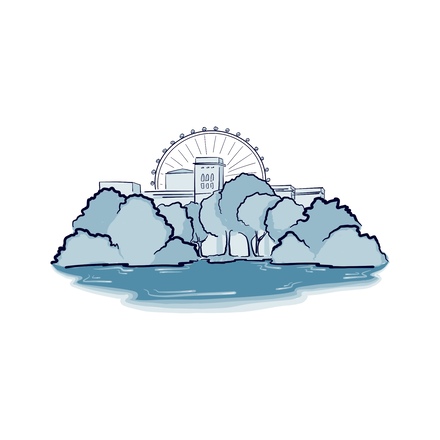
We're currently in the Parc Saint-James, and let me tell you, this park is far from an ordinary park. Not only does it take us straight to Buckingham Palace, one of the most famous palaces in the world, but it's also part of the Diana Princess of Wales Memorial Walk.

No visit to London would be complete without mentioning the famous British royal family. They have long commanded the admiration and respect of the British people, who are always on the lookout for the news or scandals that regularly make headlines about them.
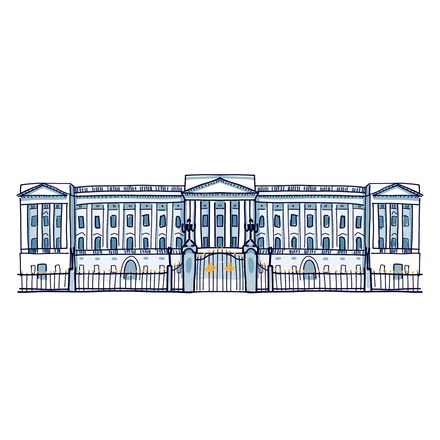
Originally owned by the Duke of Buckingham, this globally-renowned palace was built in 1703 as a private mansion.
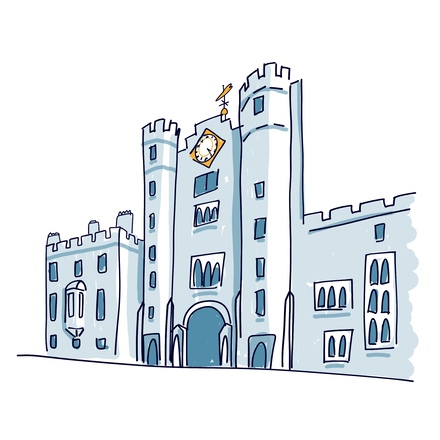
Saint-James Palace is one of the oldest palaces in London. Henry VIII had it built in 1532 in the distinctive Tudor style: red bricks, tall chimneys, narrow doors and windows, crenellated turrets...

There are numerous fascinating stories about the Royal Family, here's a quick rundown of a few that might bring a smile to your face!
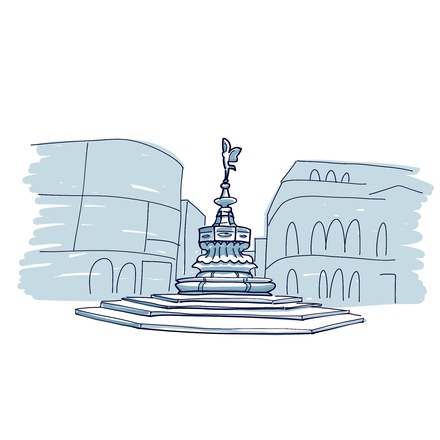
Piccadilly Circus is to London what Times Square is to New York! Granted, it's much smaller, but come on, Times Square is like the king of big, right? This famous intersection is one of the busiest spots in London, and let me tell you, the vibe here is something else.
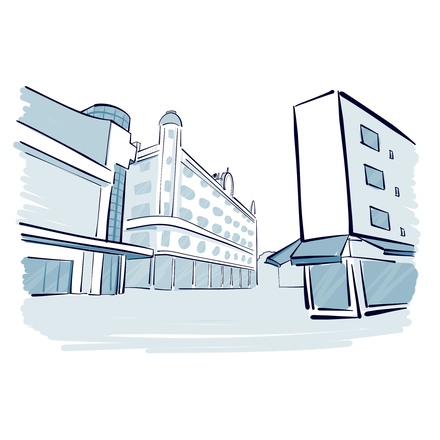
Like Trafalgar Square, this pretty square is one of the liveliest in the city. Known as a hot spot for entertainment, it is a popular place for restaurants, bars, and even casinos.
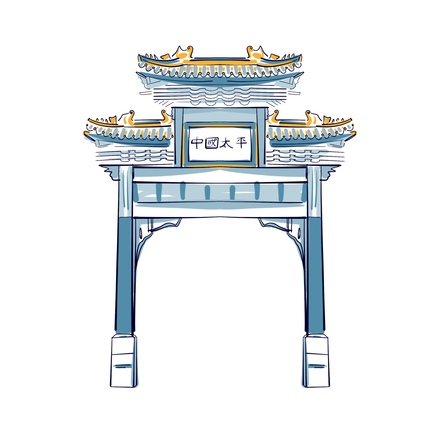
Welcome to London's Chinatown! Known for its plethora of Asian restaurants, this neighborhood is relatively new, established in 1970 to replace the original Chinatown that was heavily impacted by World War II.

Soho district is one of the most iconic districts in the World City! Here, entertainment is king!
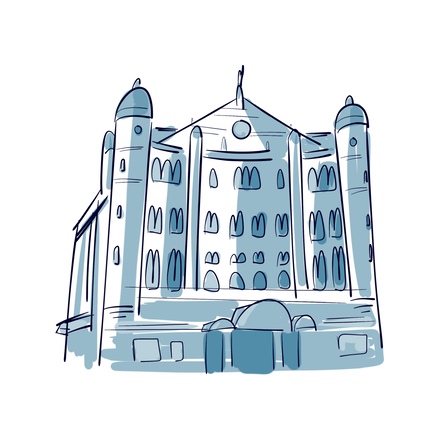
You are now standing in front of Palace theatre, one of the many theatres that make up Soho district. It is found on Shaftesbury Avenue, one of London's main thoroughfares.
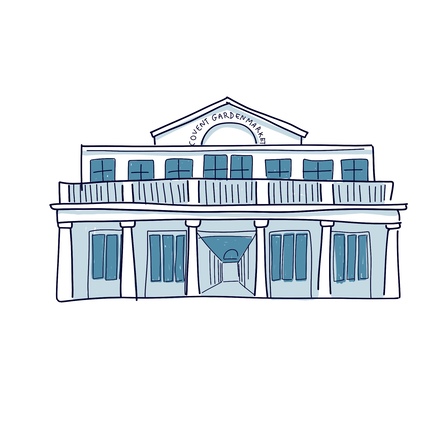
Covent Garden is not only the name of the district we're in, it is also the name of one of London's best-known covered markets. Well, ‘market’ isn't quite the right word...

Opposite Trafalgar Square is this pretty church in a rather atypical style. Saint Martin-in the Fields was built in 1726, in the Rococo style, and its name refers to the fields around which it was built.
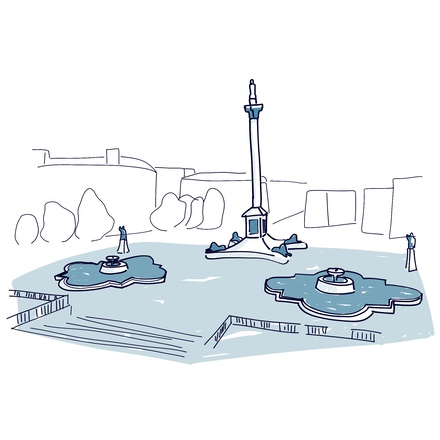
Trafalgar Square was built by the architect John Nash, who also designed Regent's Park, as a tribute to Admiral Nelson's victory in the bloody Battle of Trafalgar.
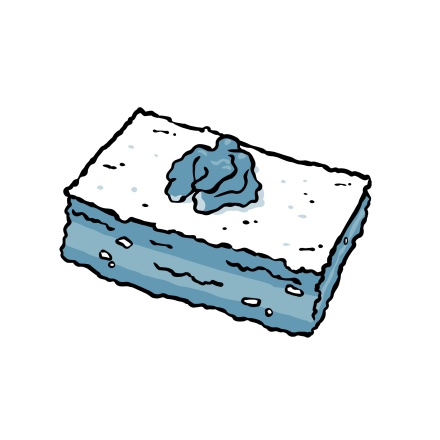
Coastal towns mean fishing — and fishing means fresh seafood on your plate! If you love to eat fish, you’re in for a real treat in Albufeira. The local cuisine is a celebration of the ocean, with dishes like cuttlefish in ink, fish stew, razor clam rice, clam
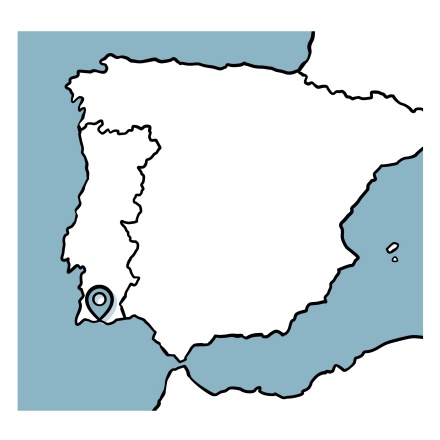
Let’s dive into the history of what is now known as the “Saint-Tropez of Portugal”! Only a small fishing village not so long ago, Albufeira has come a long way. Located in the heart of the Algarve, Albufeira’s past is closely linked to this beautiful
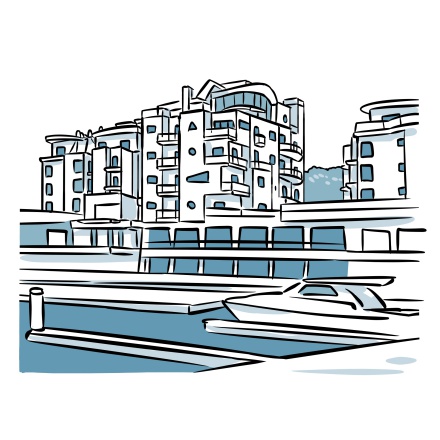
Arriving at Albufeira’s marina feels like stepping into a different world. This recently developed leisure port adds a splash of colour to the coastline. Its bright and cheerful buildings give the area a lively feel, offering a striking contrast to the historic

Welcome to one of Albufeira’s most beautiful viewpoints over the marina! The colourful buildings light up the quays of Albufeira’s leisure port. Many visitors arrive by here boat, docking at one of Portugal’s most renowned marinas, which can

The sea, the beach, and the sunshine... These give Albufeira its unmistakable charm. From here, the ocean stretches out before you, boats come and go from the harbour, and people make their way to the beach, towels in hand—this is the very
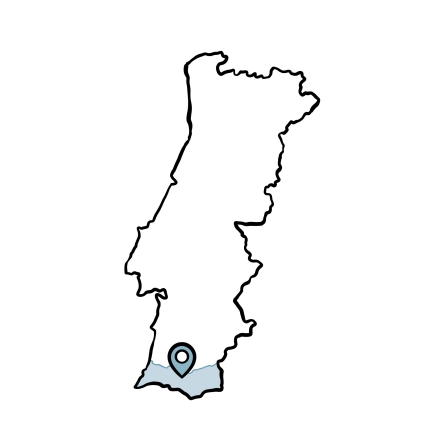
While you stroll along Albufeira’s harbour, let me share a few facts about the Algarve. By the end, you’ll know nearly everything there is to know about this beautiful Portuguese region that welcomes countless visitors each year. The
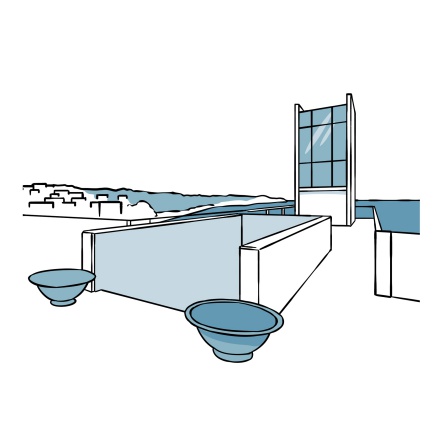
You’re now standing on the Albufeira Observation Deck—one of the city’s most iconic viewpoints. The sea stretches endlessly in front of you, crashing against the beaches and cliffs of this stunning Algarvian town. It’s the perfect spot to take
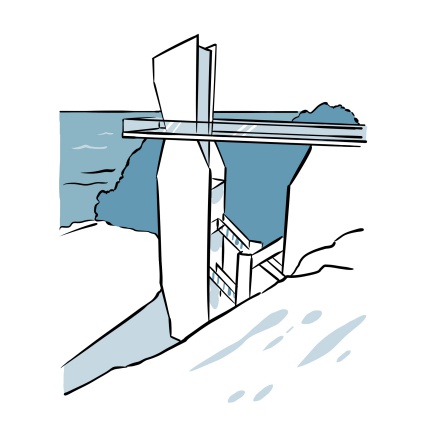
You’re now just 28 metres above Peneco Beach, which lies directly below your feet. This concrete lift was designed by architect Joao Castro Ferreira in 2008, and can carry up to 13 people. Connecting the upper town with one of Albufeira’s
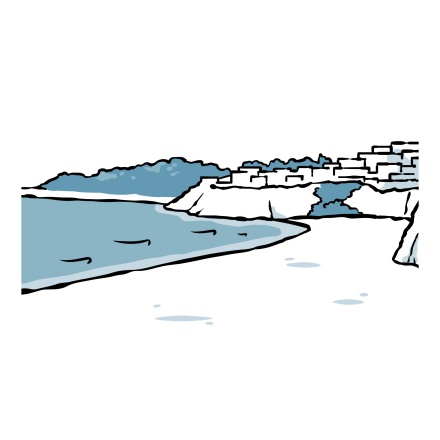
Peneco Beach is one of the most famous beaches in Albufeira and the Algarve, with yellow sandstone cliffs and golden sand. There’s something here for everyone. First, its long stretch of sand offers plenty of space for visitors. What’s more, its soft,
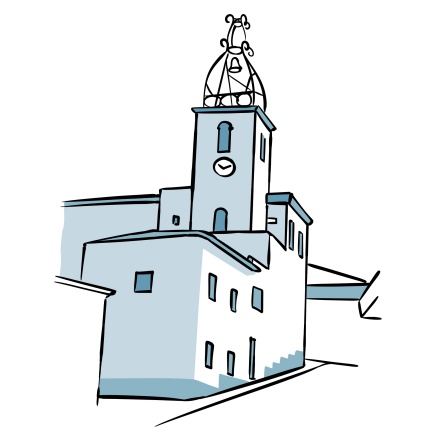
Before we head into the typical Algarvian street on the right, take a moment to admire the tower just ahead. This is the Torre do Relógio, or Clock Tower. As the name suggests, there’s a clock on its façade, and a bell at the top, framed by
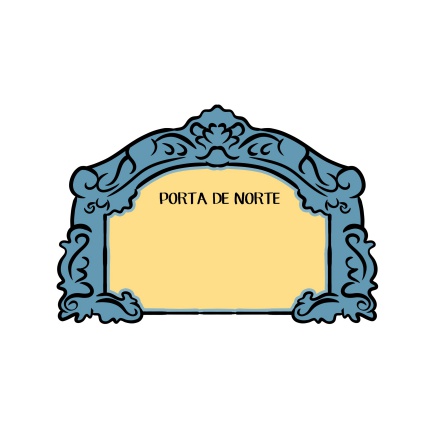
This is one of Albufeira’s most important historic relics: the Porta do Norte. There may not be much left of it, but the few stones at the junction of Joaquim Pedro Samora Street and Henrique Calado Street have survived centuries! They were once
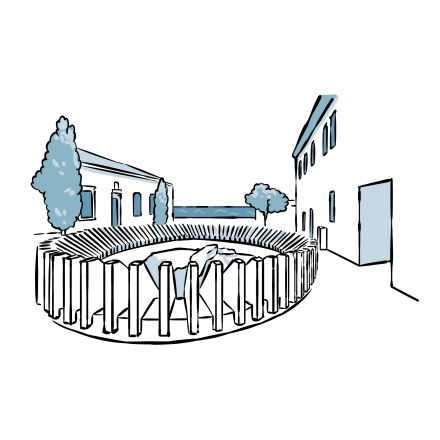
Republic Square is one of Albufeira’s main squares. It’s surrounded by beautiful whitewashed houses, typical of the Algarve, the Municipal Archaeological Museum, and the remains of two homes built in the 12th and 13th centuries, during the
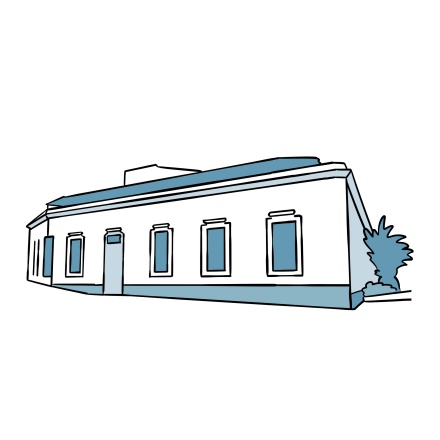
Calling all history buffs, and anyone curious about the roots of this seaside town! The Municipal Museum of Archaeology takes you through the many eras that have shaped Albufeira, with a collection of objects uncovered during excavations in

Praia dos Pescadores—or “Fishermen’s Beach”—is one of Albufeira’s most iconic beaches. Popular and family friendly, it offers a wide stretch of golden sand, perfect for sunbathing and playing. With plenty of bars and restaurants lining the
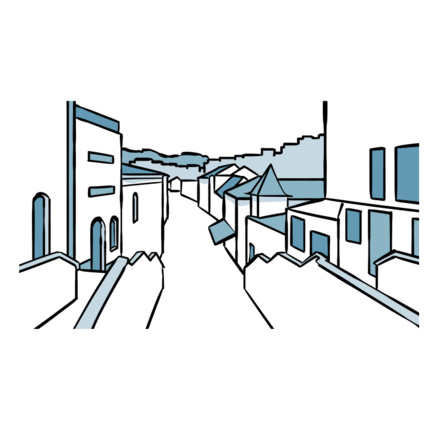
Aaah, Rua 5 de Outubro! Lively, festive, and full of energy—this bustling street captures the spirit of Albufeira. One of the town’s main thoroughfares, its cobbled path winds between shops, cafés, restaurants, and everything else that make it one
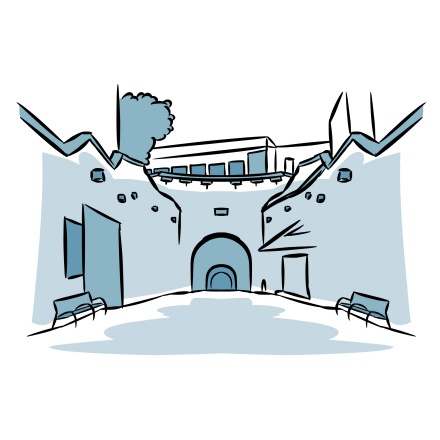
In front of you is an unusual tunnel leading to Peneco Beach, one of Albufeira’s central beaches. Hundreds of people walk through this passageway everyday to reach the sand and sea, especially during summer! This tunnel marks the end of Rua
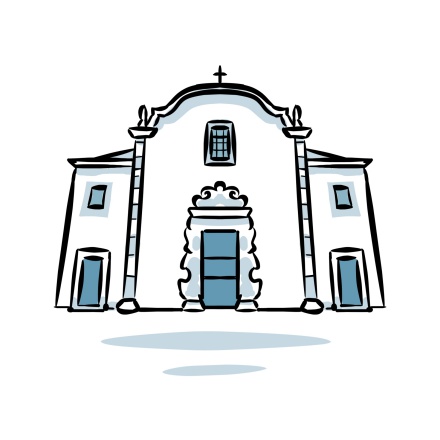
You’re now standing in front Saint Sebastian Church, a renowned example of Algarve architecture blended with Baroque elements. Like many buildings around here, its façade is bright white, thanks to the limewash that coats it. This tradition
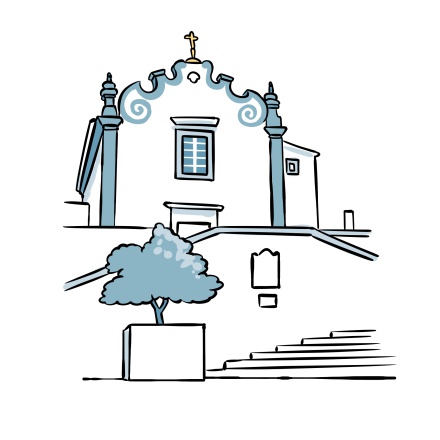
Welcome to Sant’Ana Church, dating back to the 18th century. Just like its neighbour, it blends traditional Algarve elements—such as white limewashed walls—with Baroque features, particularly in its façade. It’s one of Albufeira’s biggest churches

Praia dos Pescadores—or “Fishermen’s Beach”—is one of Albufeira’s most iconic beaches. Popular and family friendly, it offers a wide stretch of golden sand, perfect for sunbathing and playing. With plenty of bars and restaurants lining the
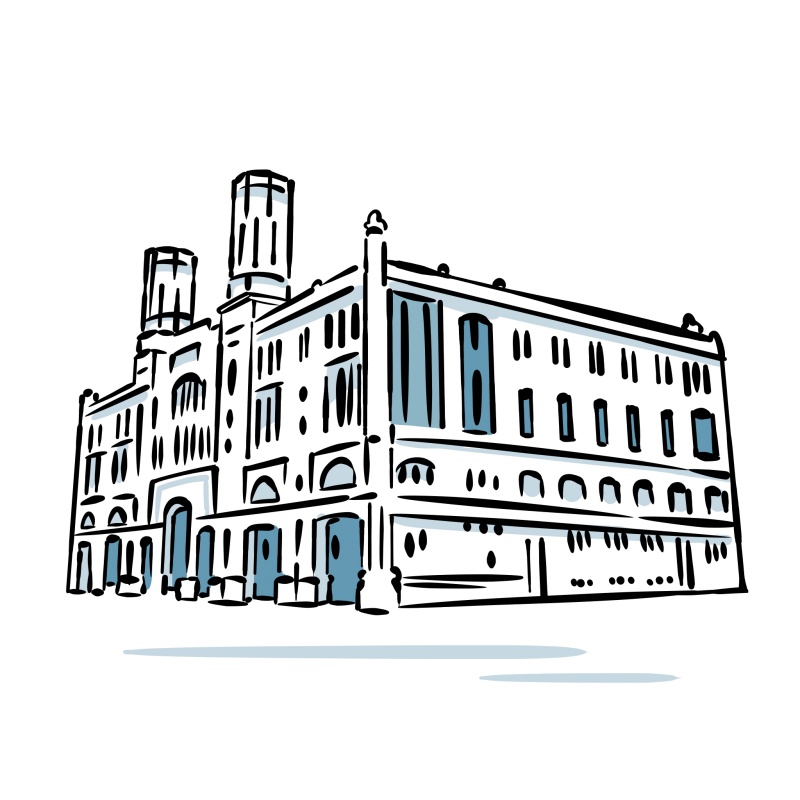
The beautiful Palazzo Bacaredda on the corner is Cagliari’s new City Hall. The municipal offices were located in a palace on Piazza Palazzo until the late 19th century. In 1896, the decision was made to build a new seat of government facing the port.
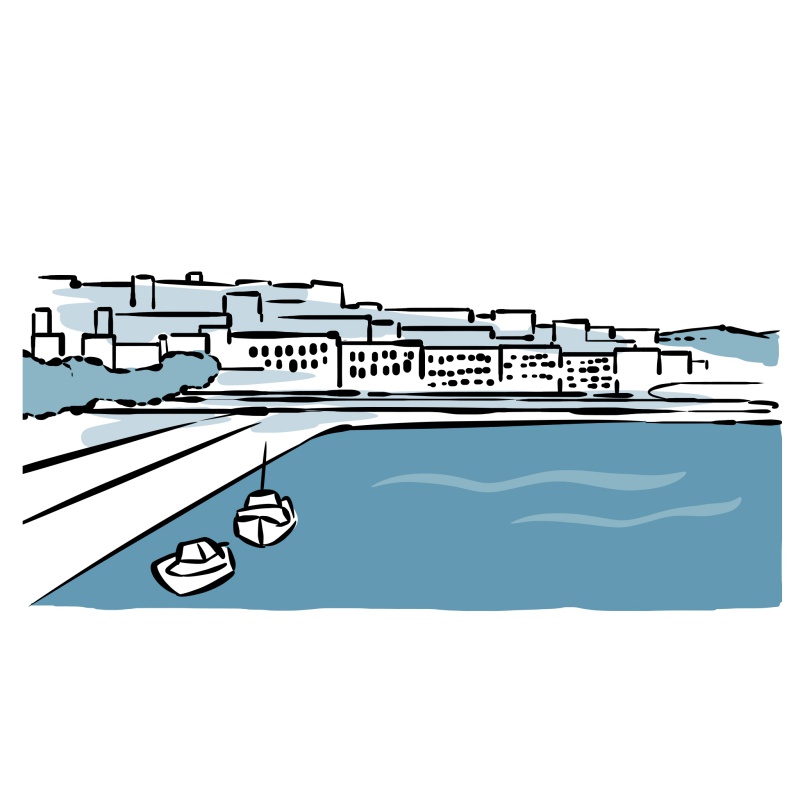
Via Roma, with its elegant Liberty-style arcades lined with cafés and shops, runs along Cagliari’s marina. It’s one of the city’s main arteries, and a favourite spot among locals, especially in the early evening. This is where people come for the passeggiata, the traditional Italian stroll, when everyone, stylishly dressed, heads out to walk and unwind at the end of the day.
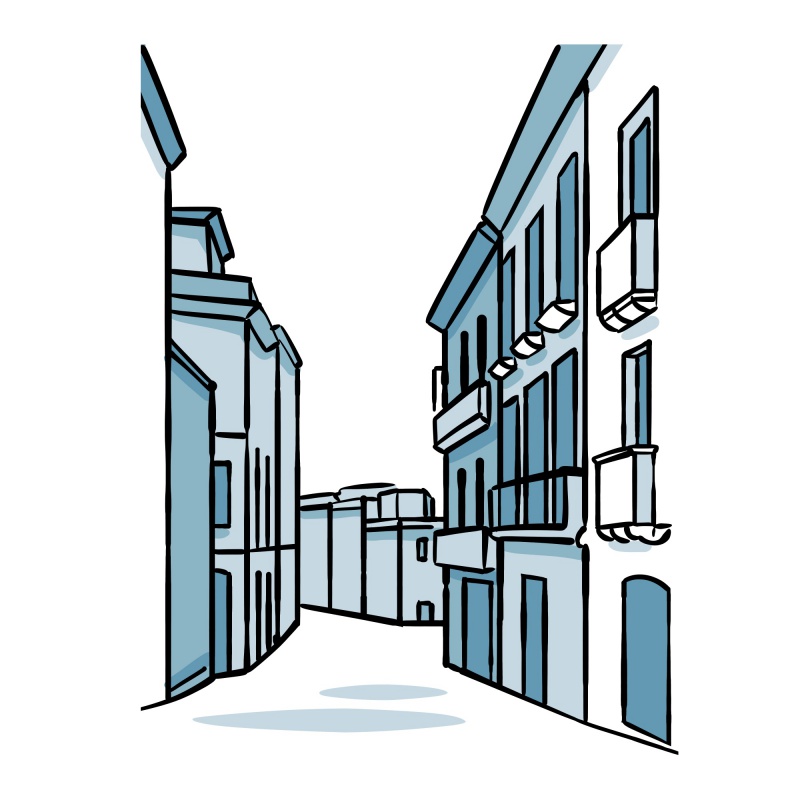
You’ve arrived on Via Garibaldi, a lively street in the Villanova district. As the name suggests, you're now in the “new town,” and the architecture around you is a far cry from the medieval heart of Castello.
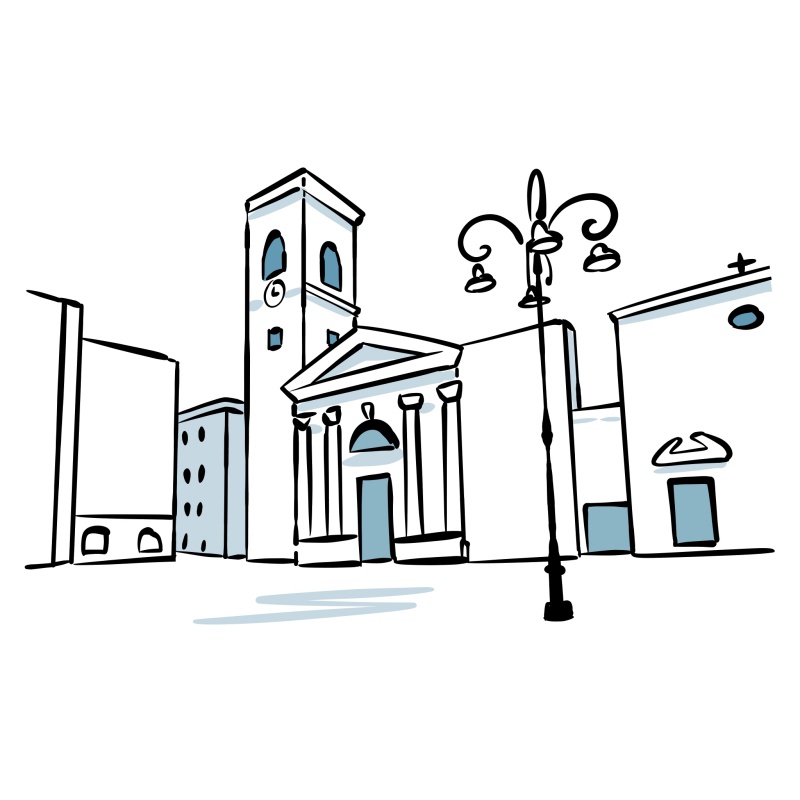
You’re now standing in Piazza San Giacomo, facing the church of the same name. To its right are the Oratories of the Souls and the Oratory of the Santissimo Crocifisso. The latter is home to the Archconfraternity of the Holy Crucifix, which plays a central role in many of the religious rites that take place in Cagliari during Holy Week.
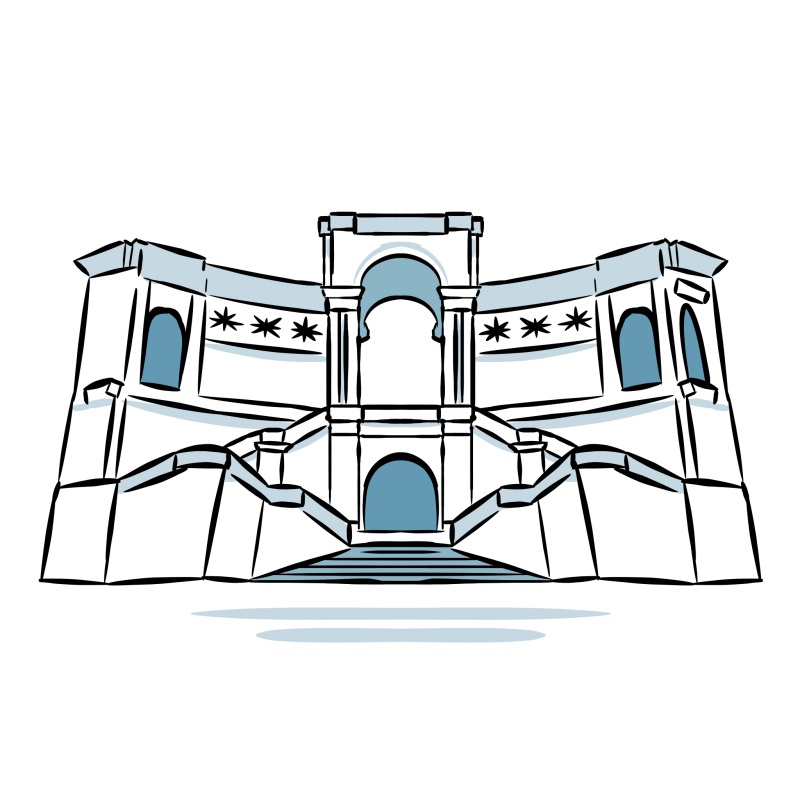
This grand staircase, topped by a triumphal arch, is one of Cagliari’s most iconic and striking landmarks. It’s called the Bastion of Saint Remy, named after the Baron of San Remy, who served twice as Piedmontese Viceroy of the Kingdom of Sardinia.

Once you reach the top of the bastion, you’re rewarded with a breathtaking panoramic view of the city. You can see Regina Margherita Avenue winding down towards the port, as well as the rooftops of the Villanova district, with the salt ponds and Mount Urpinu in the background
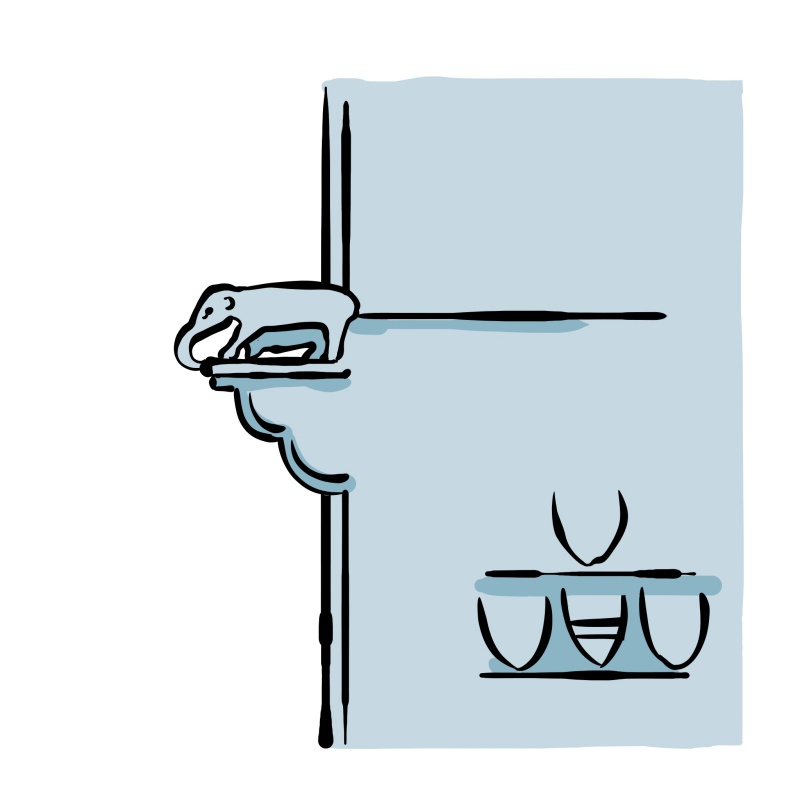
See that little elephant carved into the façade in front of you? It gives its name to the medieval tower it decorates, the Torre dell’Elefante. It was built in 1307, when Sardinia was under the rule of the Republic of Pisa, and the elephant was one of Pisa’s symbols.

The old city walls, built by the Pisans in the 13th century, once enclosed what was the administrative heart of Cagliari. Today, those same ramparts offer beautiful terraces and stunning views over the surrounding areas.
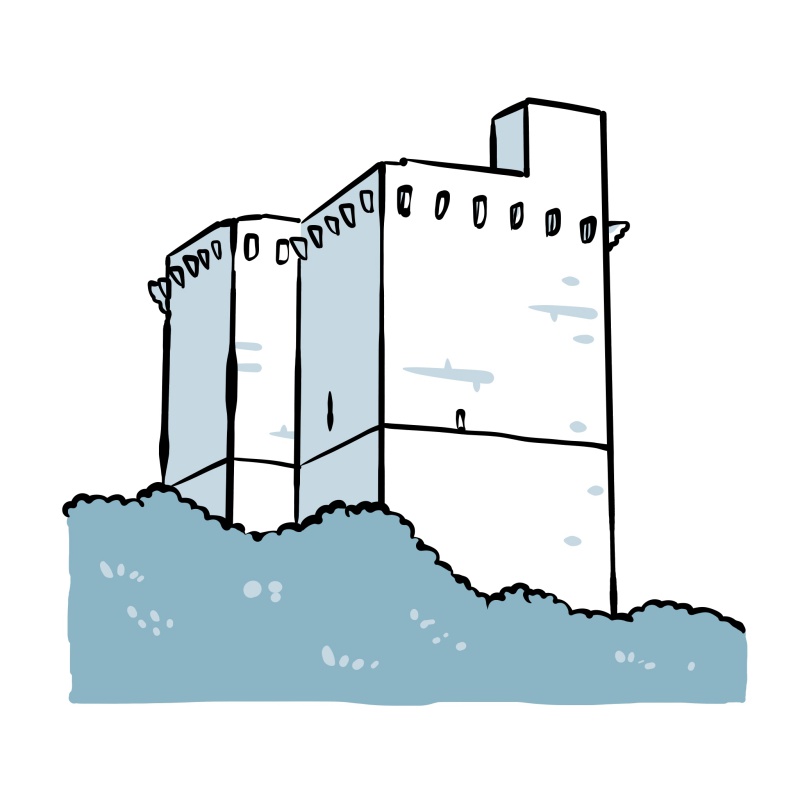
As you arrive at Independence Square, you’ll see the Torre di San Pancrazio to the right of the gate. It’s the tallest tower in Cagliari and one of the city’s most iconic landmarks.

The beautiful gate in front of you is called Porta Cristina. It was built in 1825 by Carlo Boyl, who drew inspiration from Porta Angelica in Rome. The gate was named in honour of Queen Maria Cristina of Bourbon, wife of King Charles Felix of Savoy, who was King of Sardinia at the time.

If there’s one thing Cagliari has in abundance, it’s breathtaking viewpoints. That’s the magic of a city built on a hill. From here, at Piazza Palazzo, you have a clear view over Villanova, one of the city’s four historic districts, dating back to the 12th century.
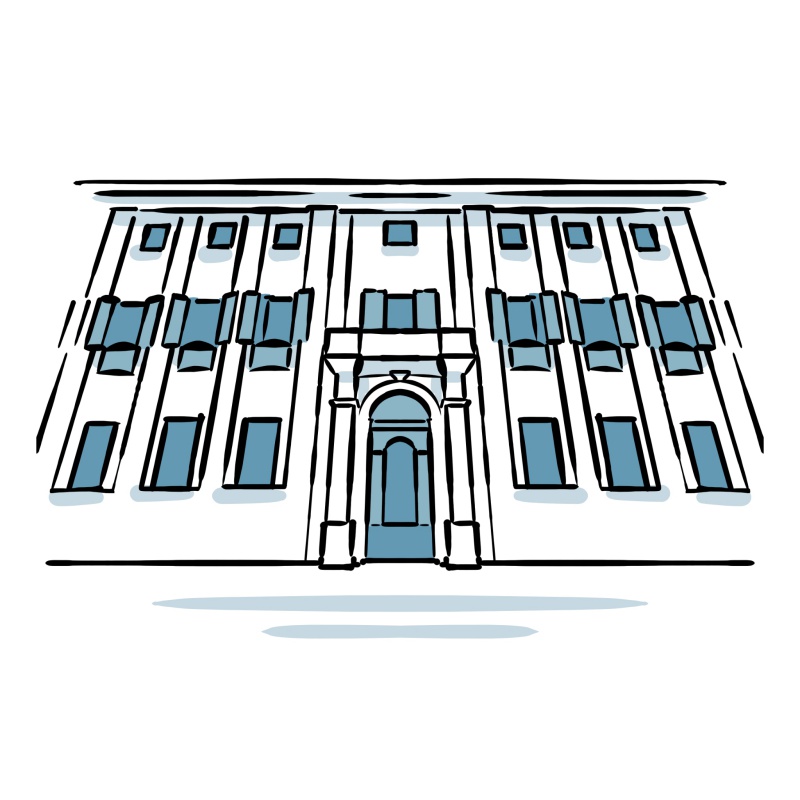
You’re now in front of the Royal Palace, also known as the Palazzo Regio. This building dates back to the 14th century, when Cagliari was under the control of the Crown of Aragon.
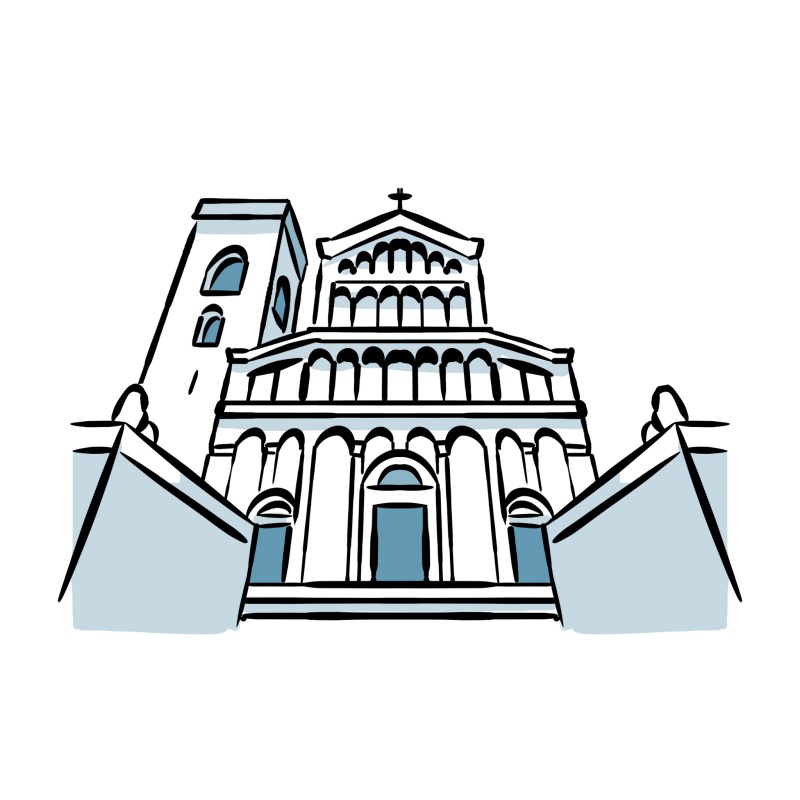
The cathedral of Cagliari is quite the beauty. Its unique style comes from the many transformations it went through over the centuries.
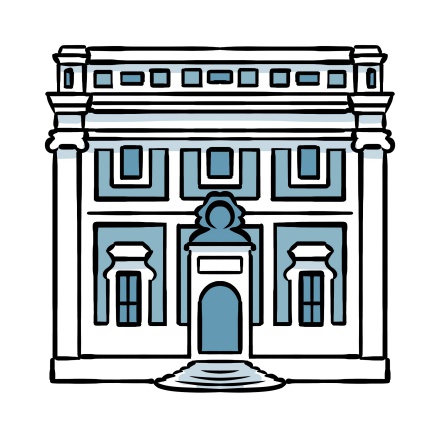
On the right-hand side of the square, you’ll notice a small, square-shaped building with a pink façade. This is the former Palazzo di Città, Cagliari’s original town hall. It served as the seat of the city’s government from the Middle Ages to the early 20th century.
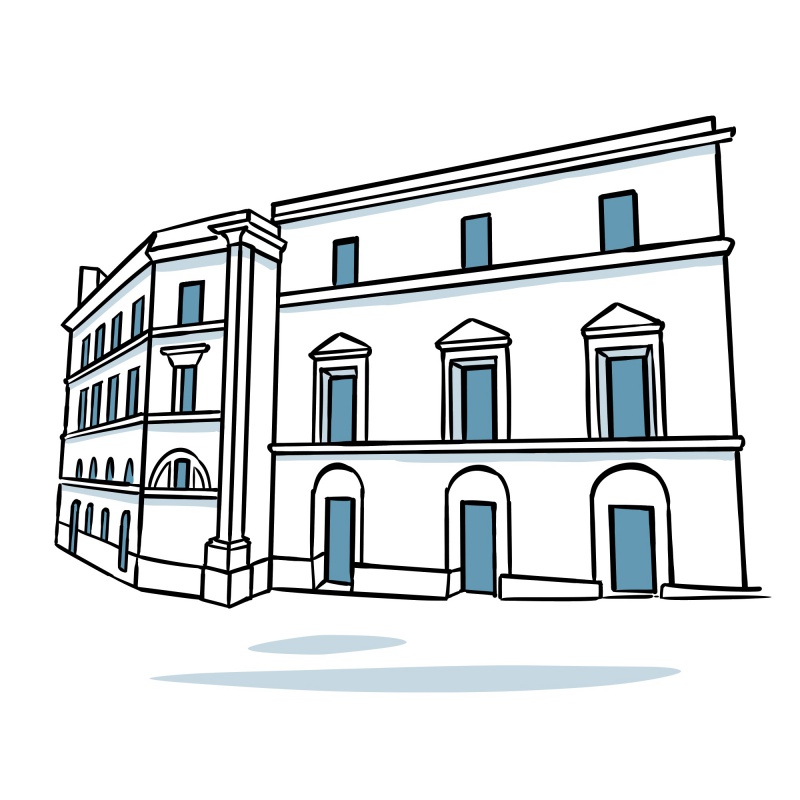
The pink building to your left is Cagliari’s Teatro Civico, or Civic Theatre. Built to replace an earlier wooden theatre, it was commissioned by the Marquis Zapata de las Plassas, who wanted to add a theatre to his palace.
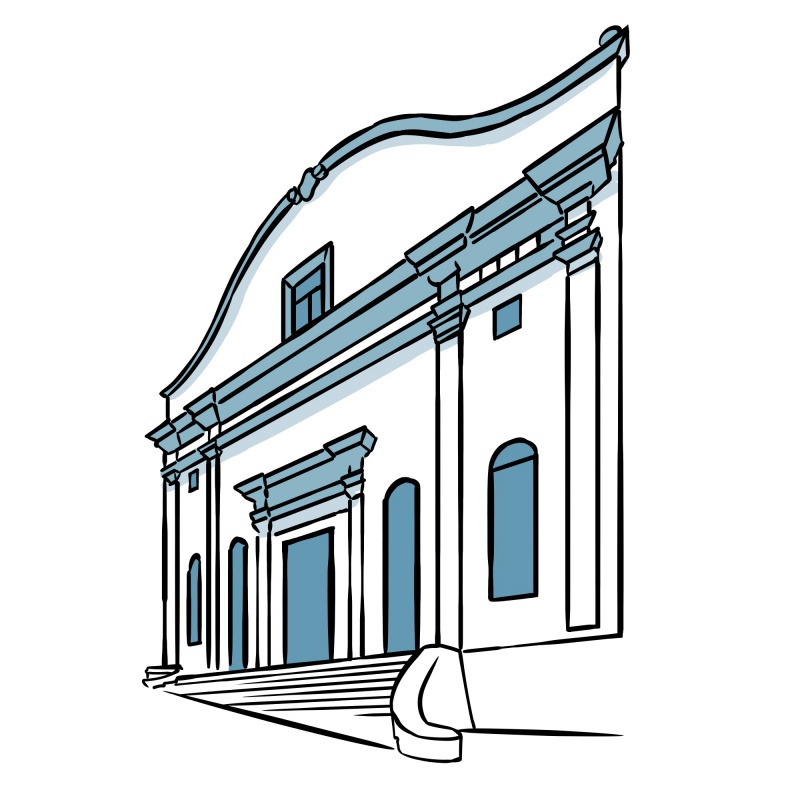
Just a quick word about the Municipal Auditorium. Yes, it really is a church… or at least, it used to be. This was once the Church of Santa Teresa, built in the 17th century by the Jesuits. In 1848, the church and the adjoining college became state property.

The beautiful church in front of you is the Collegiate Church of Santa Anna. It’s the main parish church in the Stampace district, and a fine example of Piedmontese Baroque style, with its twin bell towers and the grand staircase leading up to it.
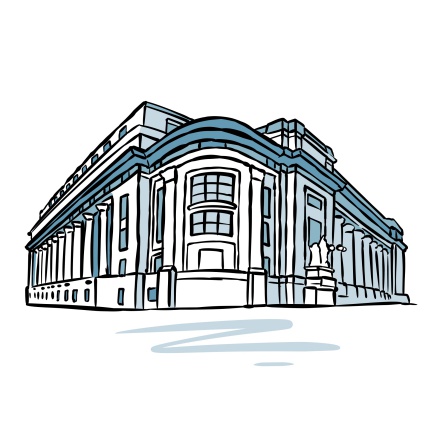
Zabala Street is lined with austere, imposing buildings, and none is more striking than the massive structure before you. This is one of Montevideo’s most important historical landmarks, and one of the Old Town’s most emblematic buildings: the headquarters of the Bank of the Republic. What is now Uruguay’s main state bank was
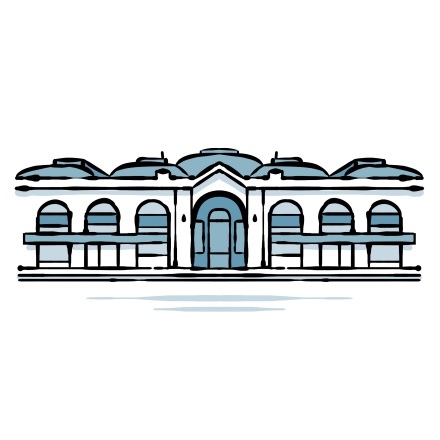
I hope this stroll through Montevideo has left you hungry, because you're now standing in front of its gastronomic hub: the Mercado del Puerto. Don’t be misled by the name, “Port Market” might make you think of fresh fish and seafood, but that’s not what you’ll find inside. This iconic spot is all about parrillas, or wood-fired grills
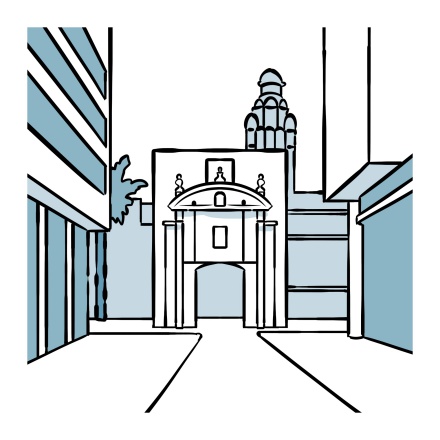
You’ve now joined Sarandí, the city’s bustling pedestrian street that stretches from the port all the way to Plaza Independencia. In the other direction, the street heads toward the sea. You can walk all the way to the end of the jetty, where you’ll often spot a few fishermen and enjoy a lovely view over the water. Sarandí is the most walked
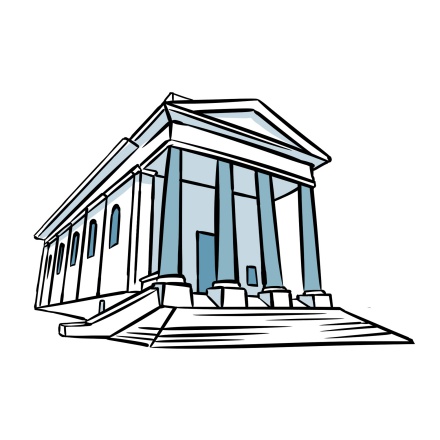
The English Temple stands on the edge of the Rambla, somewhat separated from its surroundings. It might seem a little out of place, after all, it’s quite rare to see a Protestant church, especially an Anglican one, in the heart of Hispanic America. Its origins go back to 1840, during what’s now referred to as the Great War—a chaotic

Let’s talk about the origin of the name Montevideo. There are two main theories about why the colonisers chose it. The first comes from the Portuguese: legend has it that as one of their sailors approached the coast, he exclaimed “Monte vide eu!”, which roughly means “I see a mountain!” in old Portuguese. The second theory leans

You're now walking along one of Montevideo’s most beloved landmarks: the Rambla. Stretching 24 kilometers along the bay, it’s the longest waterfront promenade in the world, and the heartbeat of the city. Can you really say that you’ve been to Montevideo if you haven’t walked the Rambla? This is the locals’ favourite gathering spot.

You’ve had plenty of time to admire it, so let me properly introduce you to the Río de la Plata. Depending on who you ask, or what book you’re reading, you’ll see it described as a river, an estuary, or even a gulf. It’s technically the mouth where two major South American rivers, the Uruguay and the Paraná, flow into the Atlantic

The street you’re crossing now is called Cumparsita. Since the last one was Carlos Gardel Street, this feels like the perfect moment to talk about tango. For those who don’t know, Gardel is the most iconic tango singer in history, his voice is even listed as part of UNESCO’s Memory of the World, and La Cumparsita is the most famous
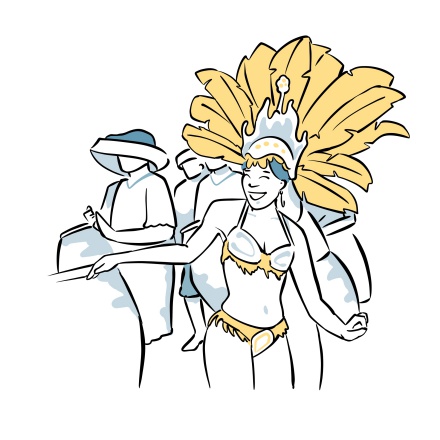
Isla de Flores Street, which you're walking up now, might seem like just another quiet residential street lined with traditional Montevideo homes. But when Carnival season arrives, it transforms into something magical, the stage for las llamadas. Carnival is one of Uruguay’s most powerful and beloved traditions. Las llamadas, which

A little further down this street, you’ll come across the Cannabis Museum, a reminder of just how different Uruguay is from many of its South American neighbours. Uruguay was the first country in the world to fully legalise cannabis, back in 2013. Just to clarify, it’s not actually legal in the Netherlands. There, it’s only allowed in

This imposing building in front of you is the Intendencia de Montevideo, the city’s municipal headquarters. Feel free to head inside and make your way to the top. On the 22nd floor, nearly 80 meters high, you’ll find the Mirador Panorámico, a rooftop observation deck that’s free to access. From up there, you’ll enjoy a stunning 360-degree

The fountain you see here, covered in padlocks, was brought from Mexico by the owners of the FACAL café as a way to boost the restaurant’s image. According to local legend, if you place a padlock on the fountain with the initials of two people, they’ll return to Montevideo together, and their love will last forever. Just beside it, sitting

Welcome to Plaza de la Cagancha, a square full of history and local life. On one side, you’ll see the elegant circular theater, and in the middle of 18 de Julio Avenue, rises the column of peace. This column marks kilometer zero, the point from which all distances in Uruguay are measured. The square was created in 1829, four years after the

You’ve probably noticed by now that you’re walking along the city’s main road, Avenida 18 de Julio. It stretches from Plaza Independencia all the way to the Obelisk of the Constituents, about three kilometers down the road, in the Tres Cruces neighbourhood near the main bus station. The avenue gets its name from the date Uruguay’s first
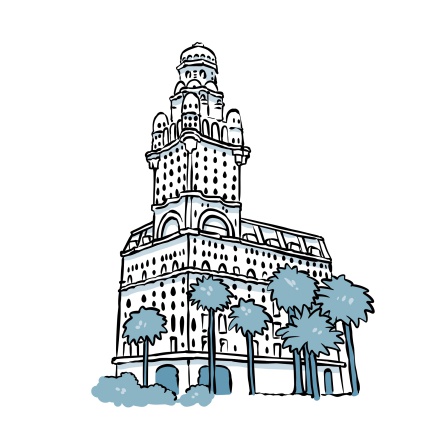
The Palacio Salvo, located at the corner of the square and Avenida 18 de Julio, is the most iconic building in Montevideo. This eccentric Art Deco skyscraper blends Gothic, Renaissance, and Neoclassical influences in one bold and unmistakable silhouette. As original as it may seem, it actually has a twin: the Palacio Barolo, located on
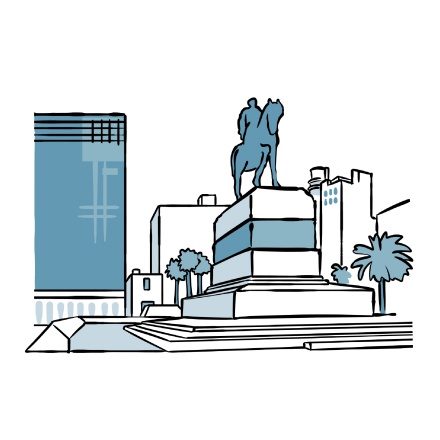
You’re now standing on Plaza Independencia, Independence Square, the gateway to Montevideo’s old town. This is the iconic square of Montevideo, bringing together many of the city's key landmarks. So let’s take a moment to explore what’s around you. In front of you is the old citadel gate, a reminder that Ciudad Vieja, the historic

You’re now standing in front of the Teatro Solís, Uruguay’s main opera house and the oldest theater in South America. Built in 1856, just 17 years after the country gained its independence, the Solís wasn’t just meant to be a stage for performances, it was designed to be a symbol. When it was first inaugurated, several names were
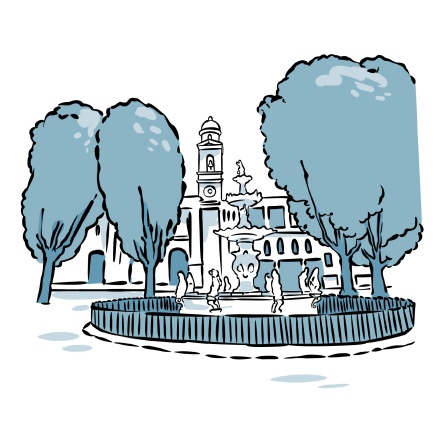
Welcome to Constitution Square, better known as Plaza Matriz, the oldest square in Montevideo. Back when the city was a Spanish fortified settlement called San Felipe y Santiago de Montevideo, this was its main square. It was actually the only public space at the time, and it didn’t even have defined boundaries. Its shape
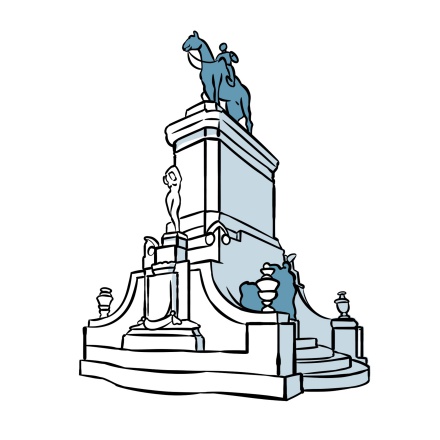
You've now arrived at Zabala Square, built in 1890. The idea of creating a square in the heart of the old town dates back to 1878, during the dictatorship of Colonel Lorenzo Latorre. He had the old Spanish fort torn down, and the space sat empty for years before finally being developed. In the center, they placed an equestrian statue
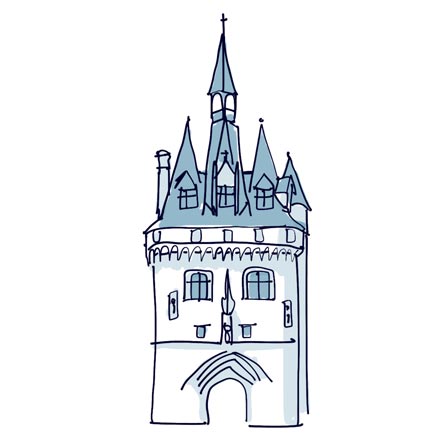
Beneath its castle-like appearance, this gateway, is also known as Porte du Palais, and serves a dual purpose. Built in the 15th century to celebrate the victory of King Charles VIII

Here you stand on the banks of River Garonne. This is the perfect moment to take a photo of The Stone Bridge. The Garona, in Occitan, which flows under the archways, is a mainly French river.
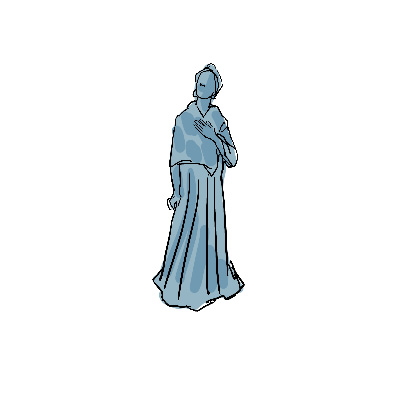
Following a request from the US consulate and a proposal from Alain Juppé, the city decided to pay tribute to Martin Luther King, an Afro-American non-violent civil right advocate who was assassinated...

As you will have noticed, the historic side of Bordeaux is concentrated on the left bank of the Garonne. There’s a rather simple explanation to that. The river used to be so difficult to...
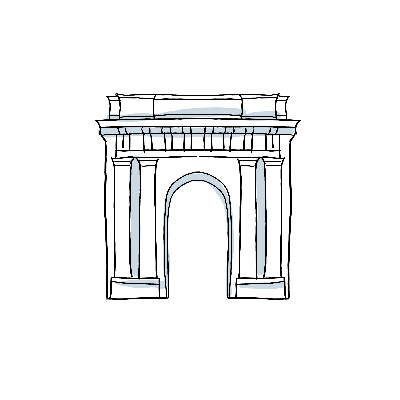
The Burgundy Gate, located on the charming square of Bir Hakeim is lined up with fine buildings. This Gate is the main entrance to Bordeaux from Paris. It was named in honour of the grandson of King Louis XV
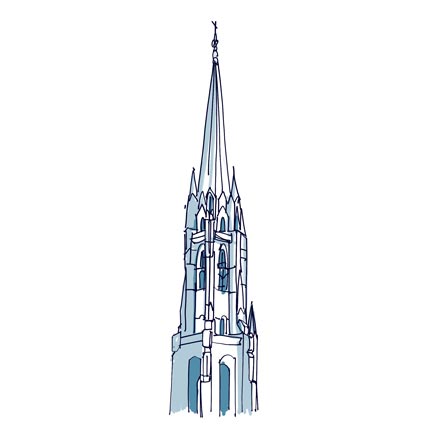
Big surprise ! The Saint Michel Basilica is also a classified UNESCO World Heritage Site, just like half of Bordeaux. It was built between the 15th and 16th centuries in a flamboyant Gothic style.
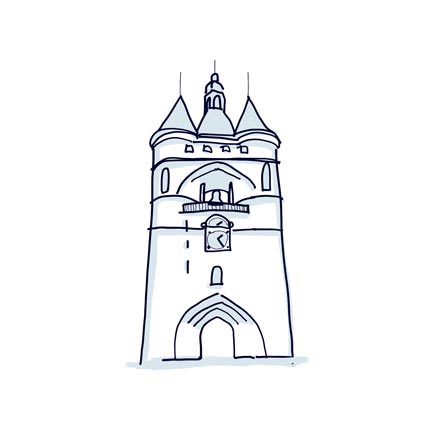
You are now ready to pass under the Big Bell, it’s the oldest belfry in France and one of the few preserved civil monuments in Bordeaux dating from the Middle Ages.

This car park offers a unique work of art, a beautiful car embedded in the wall that threatens to fall onto the pavement ! For experts out there,it's a MK1 Jaguar. It's also a great photo opportunity!

If you walk along Cours Pasteur, you'll see the imposing Aquitaine Museum on your right, it’s located on the site of the former Feuillants convent. Demolished during the Revolution, it became a secondary school
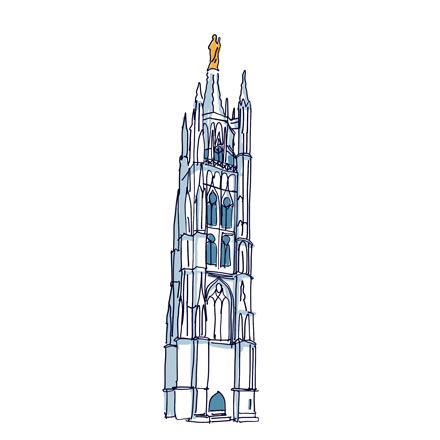
Once you arrive at the back of the cathedral, you'll be facing its bell tower, the famous Pey Berland tower, named after the archbishop of Bordeaux in office at the time it was built.
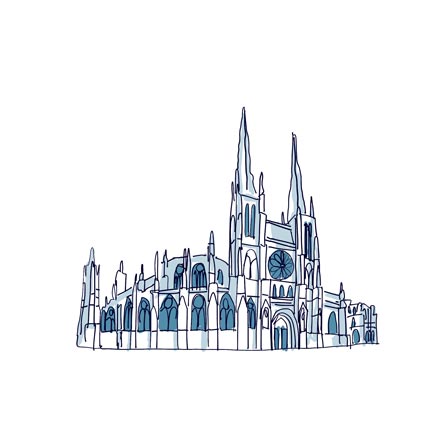
For once, we fully acknowledge that this isn't the most beautiful cathedral in France, nor the biggest, or anything else for that matter. At the same time, it's hard to compete in a country where the Chartres

Please take a moment here to admire the former Rohan Palace, built for the Archbishop of Bordeaux, Prince of Rohan, in the 18th century. during the Revolution of 1791, the palace became the headquarters of the...
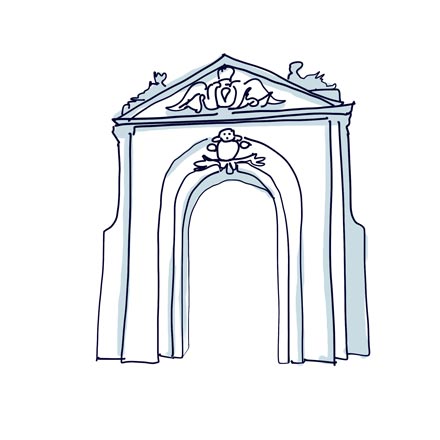
You can now see the Dijeaux Gate, which leads to Gambetta Square, where the dreaded guillotine was once installed. If you take a look around, you'll see the kilometre zero marker, from which all distances from...
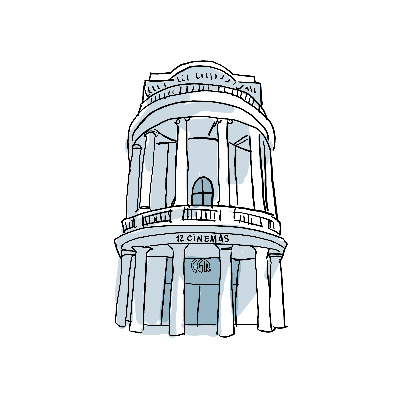
As you get to the end of Montesquieu street, you'll come across one of the most beautiful cinemas you've ever seen! It was originally a strange theatre, built in 1801 on a very small square, but with a capacity for 1600...
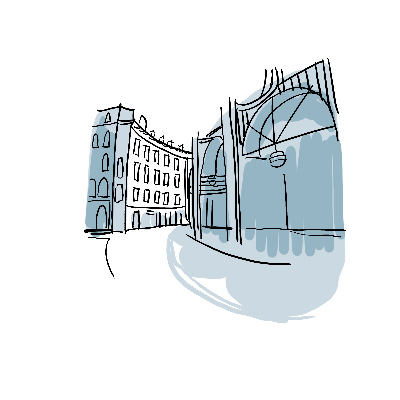
This circular square takes its name from the streets leading to it. Here, you are surrounded by Great Men honouring free spirits and utopias. You may have noticed that you arrived via Montesquieu street - there he goes
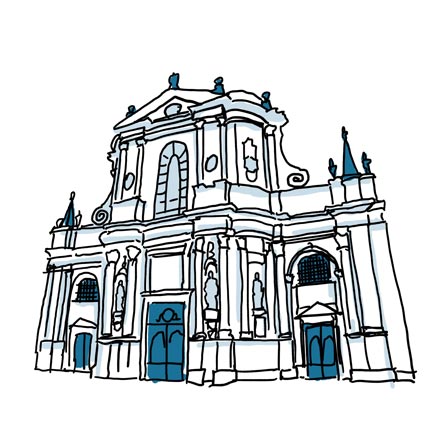
You now stand in front of the magnificent baroque Notre-Dame de Bordeaux church. Don’t worry, it’s totally normal if you feel like you've just landed in Italy. The architect was inspired by the famous Gesù church in

Here you stand in the centre of a place known as the Golden Triangle, named as such for its extraordinary concentration of beautiful architecture, historic monuments and works of art.
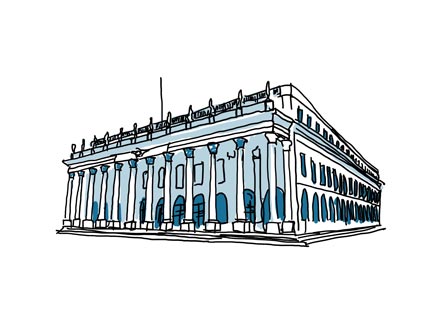
Once you've arrived at the Comedie square, the real excitement begins! Here, you are in front of one of the most beautiful 18th-century theatres in the world! The Great Theatre stands proudly in front of you on the...
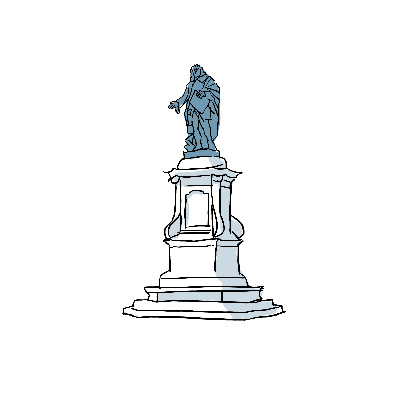
You are now on Tourny avenues, which together with Cours Georges Clémenceau and Cours de l'Intendance form the famous Golden Triangle. These beautiful, emblematic avenues were designed at the end of the 18th...
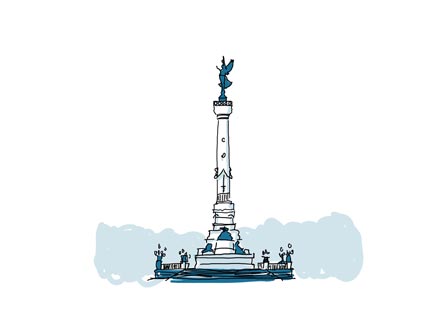
You now stand if front of one of Bordeaux's most important monuments. It is the emblem of the city, with the Angel of Liberty breaking its chains at the top. This imposing structure is a tribute to the Girondin...
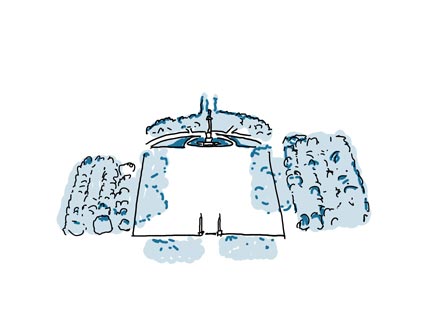
We're on Quincunx Square, Europe's largest square for that matter! It covers an area of 12 hectares, which is about the size of ten football pitches! Since its creation, the square has been a regular venue for major...
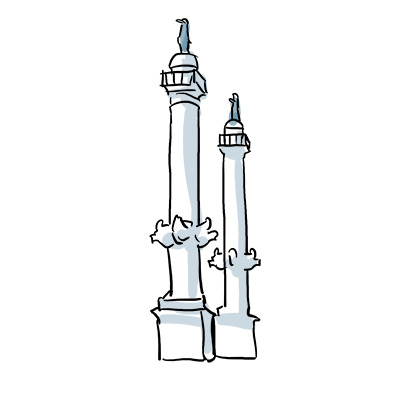
Here you can see two magnificent neoclassical rostral columns decorated with maritime symbols. Rostral columns are always erected as a tribute to naval victories. Legend has it that the very first one was erected in...
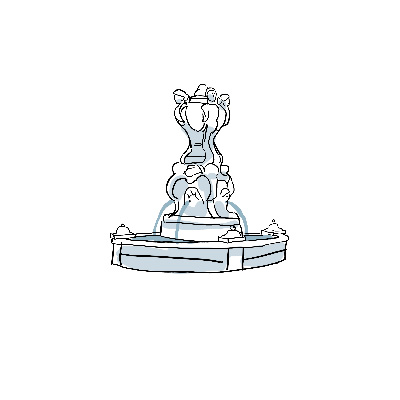
This square, with its symmetrical harmonious architecture reminiscent of classical Italian squares, is located in the heart of the Saint Pierre district. Created in 1760 under the name of Royal Market Square, it was...
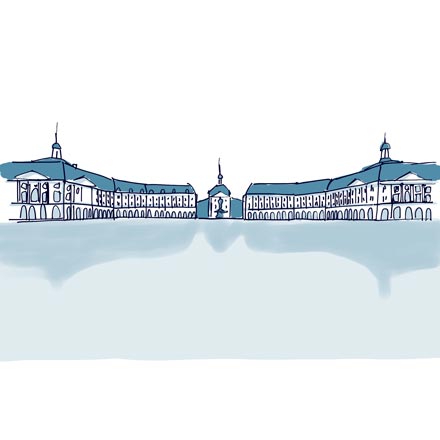
The water mirror, now a World Heritage Site, is clearly stealing the show from the Exchange Square, and you’ve got to admit that it’s quite impressive. It actually enhances the building through it’s reflection
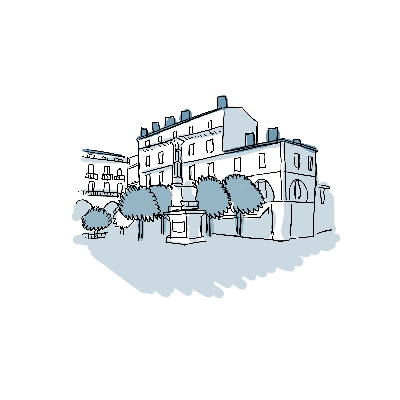
An essential part of Bordeaux's social life, Camille Jullian Square and Pas Saint-Georges street are very popular with students and artists. Host to craft shops, bars and café terraces, it's a lively neighbourhood always

If you're a shopping freak, this is Europe's longest pedestrian shopping street! 1,250 metres of shop windows stretch out before you! Cutting through the city centre from north to south, it links the Grand Theatre to...
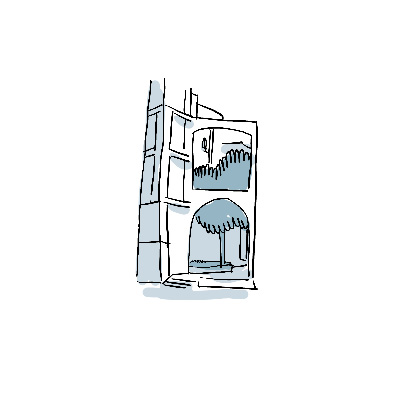
This is the entrance to the Gassie Tower pathway. If it's open, take this passage to join the tour on the other side. This relatively unknown passageway is located on the site of one of the wall towers dating from the 3rd
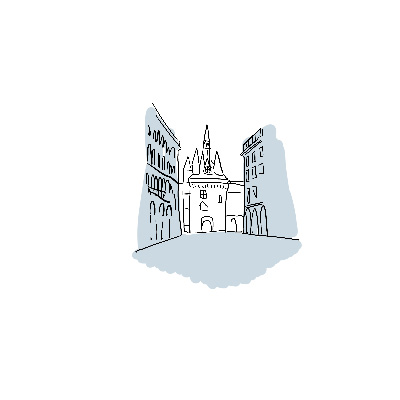
As you cross Palace Square, you're sure to notice some strange glowing balls, as if large drops of water had fallen from the sky and froze upon hitting the ground. It's a unique fountain, to say the least, and one that will
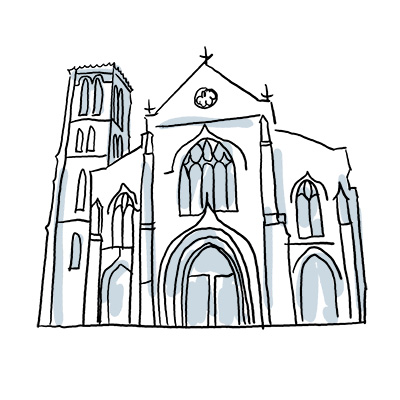
You are now on the forecourt of Saint Peter Church. Currently at the heart of Old Bordeaux, it marks the site of the city's ancient Gallo-Roman port. In 1832, during archaeological excavations beneath the square

Tall yet discreet, old yet current, public yet historic—that’s one way to introduce the Borg Hotel proudly standing before you. Beyond all its qualities, this Icelandic landmark also holds the honor of being the first and most iconic luxury hotel on

Were you eagerly waiting for the ultra-modern touch of the route? Well, we can definitely say you're in for a treat! Made entirely of glass and steel, the Harpa has positioned itself in just a few years as one of Reykjavik's most iconic buildings.

Do you see yourself as a globe-trotter? Well, you're in good company—here’s someone, or rather something, that fully earns that title. The Sun Voyager, or Sólfar in Icelandic, is Reykjavik’s most iconic sculpture. People come from all over the
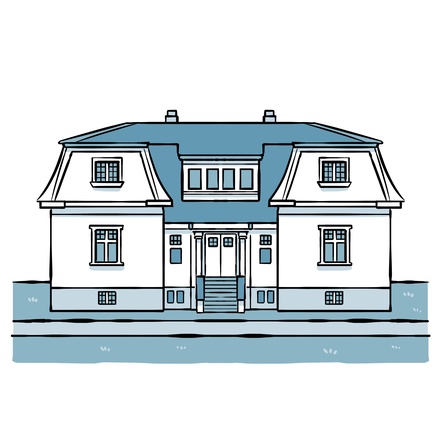
You don't always need to make a big splash to grab attention. Just look at Höfði House - its shape is classic, its color is as simple as can be, yet it captures our interest. There it stands, with its back to the ocean, accessible to everyone and almost
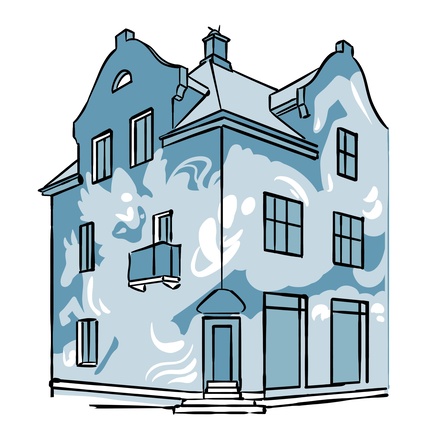
To find color in Reykjavik, it's simple—just look at the houses. But to find more of a creative edge, we're taking you to the street art in its streets. Inspired by music, Icelandic folklore, or purely drawn from the artists' imagination, murals can be

If hearing phrases like “line up in pairs”, “take out your notebooks,” or “recess is over” suddenly stirs up any past memories—don’t worry, we’re not here to take you back to old school days. I mean old, that depends on you... It’s just that, right
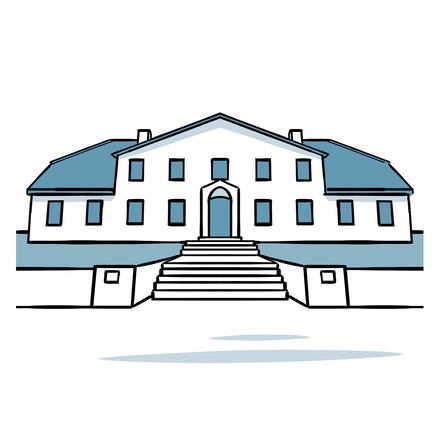
It may not be Reykjavik’s most eye-catching building, but the Government House doesn’t need any flashy features to prove its importance. Its story begins in 1770, when King Frederick V of Denmark—who ruled Iceland at the time—gave it a
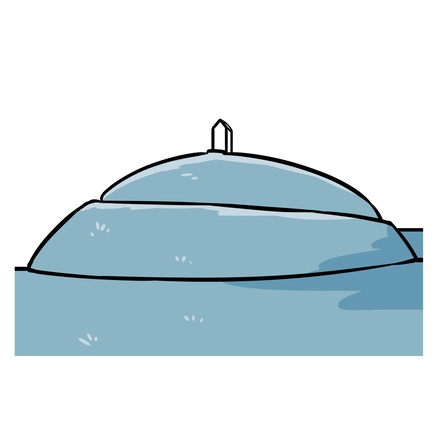
A few mountains, lots of water, and sitting right in the middle of it all, a small green hill. Small? Certainly from a distance, but the closer you get to this feature, the more you feel its 8 meters of height. That's almost like a 4-story building, believe

For the past few years, Reykjavik has experienced an unprecedented tourist boom. Many have figured it out—this Icelandic capital is unlike any other destination, and in the best way possible. Surrounded by extraordinary natural landscapes,
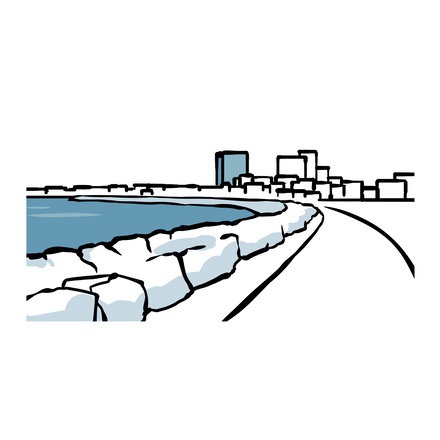
At the edge of Europe, surrounded by the Atlantic Ocean, Iceland is much more than just a small lost rock. It's a sequence of landscapes so surreal you'd almost think they were digitally enhanced. But once you're there, you quickly realize that

Here you are, my friend, right in the middle of Laugavegur Street. Remember its name—it’s the main shopping street in downtown Reykjavik. In other words, there’s no better place to immerse yourself in the locals’ daily life. Behind each
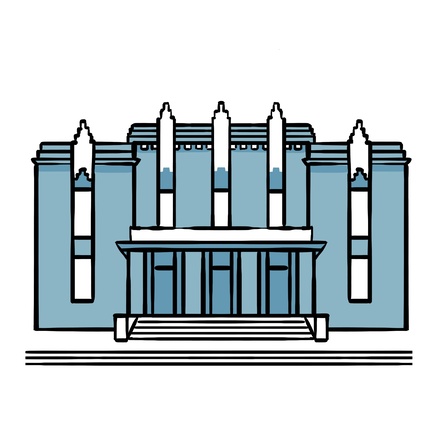
Modest public buildings, colourful houses, bold cultural landmarks — Reykjavik is quite a contrasted city. Just look at the National Theatre, right in front of you. How many theatres of this type have you seen? Let us guess—

Despite the Culture House being the complete opposite colour of the National Theatre, the two still share one important goal: bringing knowledge to the public. And that’s not a difficult task when you're the result of a
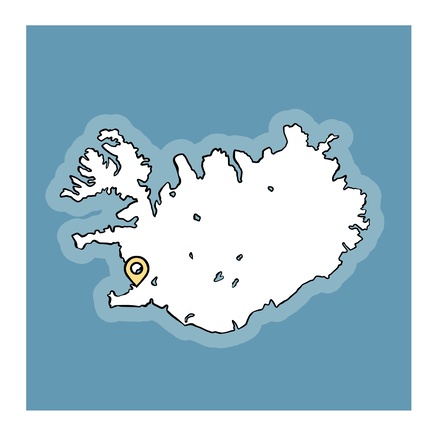
Home to 130,000 residents and visited by over 2 million tourists each year, Reykjavik is far from being deserted—and let’s be honest, that’s always been the case. It is said that the first people to set foot on the “Land of Fire
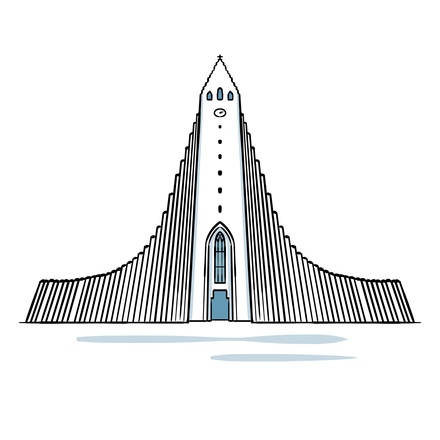
At the far end of the street, like a model waiting at the edge of the runway, stands Reykjavik’s iconic Hallgrimskirkja church. Let’s be honest—there’s no other religious building quite like this one in Iceland. Maybe even in the

One thing’s for sure: with a spot by the Tjörnin lake, the National Gallery of Iceland has found the perfect location to allow his art collections to survive. Before such fame, the institution has come a long way. Founded in 1884

Like many other Nordic cities, Reykjavik often faces a gloomy and chilly forecast. In winter, sunshine—and daylight in general—rarily appear, counting only a handful of bright days. To fight off the bad mood such weather

The more you explore it, the harder it is to believe that Reykjavik is actually a capital city. Not because it lacks character—quite the opposite. It's just that with its walkable size, charming little houses, and tree-lined paths, it

Though a small country compared to others, Iceland has no shortage of important names in its history—and here’s one of the most important. Jón Sigurðsson was a 19th-century historian and politician, but calling him just
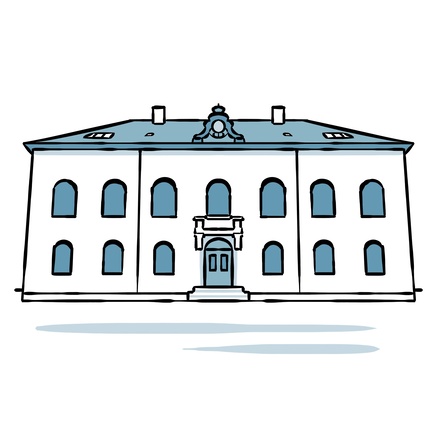
Now this, without a doubt, is one of Reykjavik’s most powerful public buildings. Its dark grey diabase facade easily stands out, and its age always impresses too. Ladies and gentlemen, you are now facing the Icelandic

I knew that you wanted to take the best possible picture of Painted Ladies. Well, walk no further, it’s happening here.

Yes, we have to climb again. That you knew long before coming to San Francisco that it was a hilly place. I sure hope you have brought good walking shoes! On the other hand, walking up all of these hills is starting to pay off!

Here, you find yourself in the oldest park in town. It was founded in 1867 under the name “Hill Park”, refering to the 175-meter-tall hill it is located on. In 1894, the park is renamed “Buena Vista”, which translates to “great view” from Spanish.
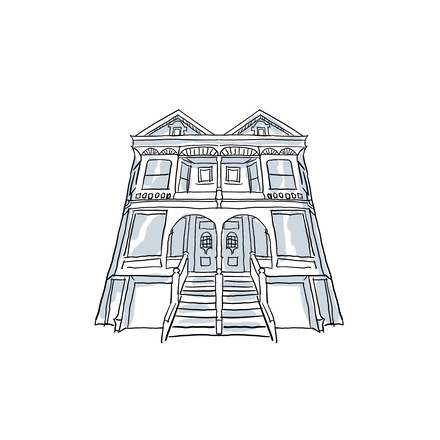
I'd like to take advantage of being on Page Street, as it features a fine collection of colorful Victorian houses, to tell you that before the 1970s, San Francisco's Victorian houses were not at all multicolored!
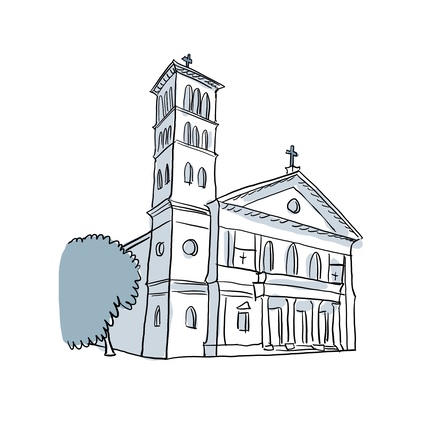
For you information, the church you just walked by has nothing of a traditional one. That is the famous Church of 8 Wheels. Yes you are indeed in front of a holy disco roller skating institution! If you want to skate, dance, or have the time of your life in a disco setting, go right ahead, and enter into this church that is like no other!
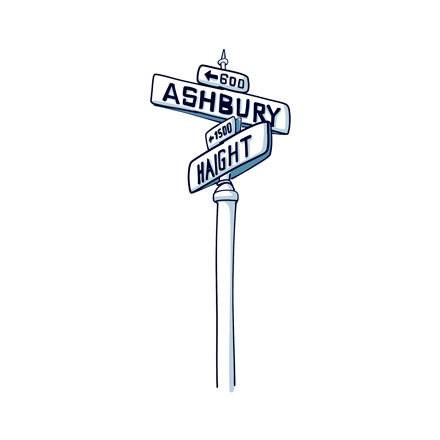
We're heading for the heart of the Haight-Ashbury neighborhood. Where it all began and ended rather badly, but foremost left us with a legacy and an "out of the box" way of thinking still in force today. Yes, folks, without the hippies, there would be no yoga or organic bulk groceries!

I'll leave you to admire the three stars of the neighborhood on one side, the three Js: Jimi, Janis and Jerry, and the evolutionary rainbow on the other. This rainbow was painted by Joanna Zegri in '67, when she was the building's business manager.
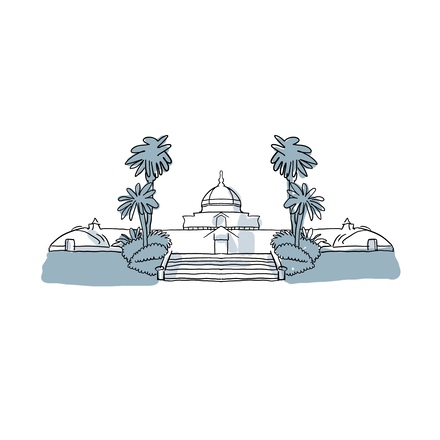
You're now walking along San Francisco's famous Golden Gate Park. You're free to explore it if you've got a bit of free time on your hands, but be warned, it's a big place! We're talking 412 hectares. To give you an idea, if you've been to New York
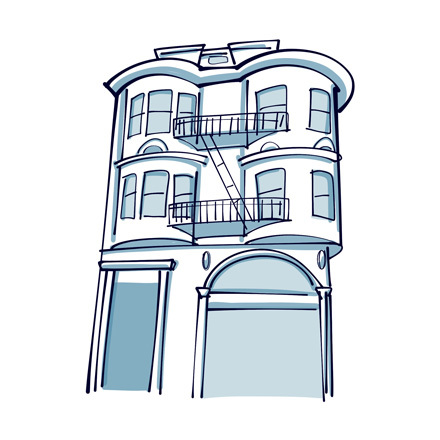
See the large house on the corner? That's the Haight Ashbury Free Clinic. It was founded in 1967 by Dr. David Smith, who was at the time head of the drug and alcohol testing unit at San Francisco General Hospital.
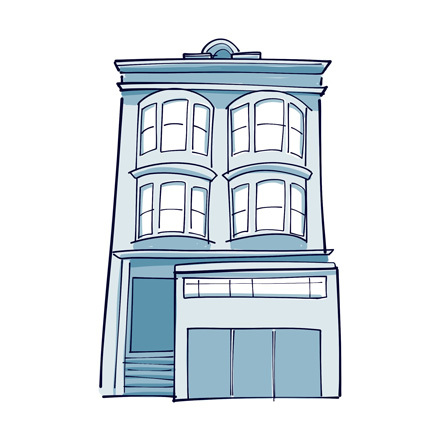
Here you are at the junction of the two legendary streets that gave their names to the district. Haight comes from Henry Huntly Haight, who was governor of California in 1870, and Ashbury from Munroe Ashbury,
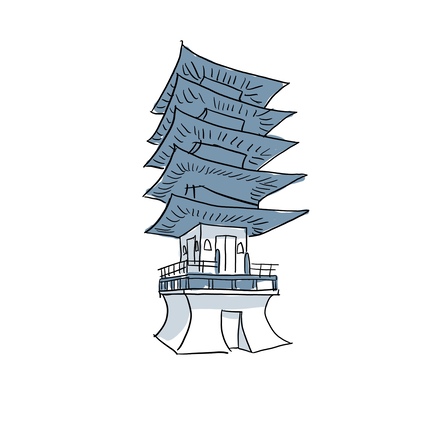
So, just for your information, and for the Zen minute of our tour, the orange house you see on the corner with the Tibetan prayer flags decorating the stairs, is actually the Kagyu Kunchab Buddhist temple created in 1974.

Far less known than the 7 Painted Ladies, the four neatly aligned houses on Lyon Street with the park in the background really deserve a quick photo break! If you were wondering, the street name has nothing to do with the city of Lyon in France
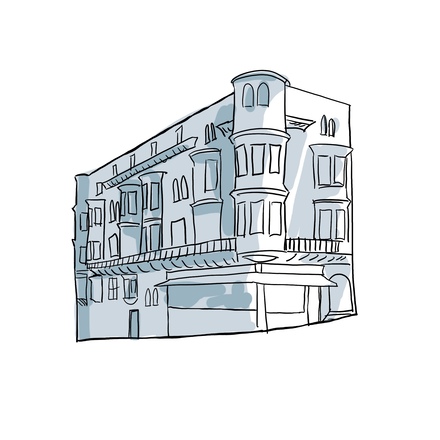
You're now on Divisadero Street, which, as its name suggests, divides San Francisco in two from North to South. It runs from Marina Street in the North to Castro Street in the South. Its history begins with that of the city.
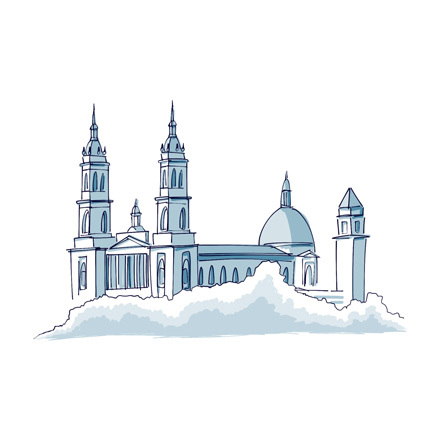
You are probably wondering where we are headed to after climbing these steep streets! The answer is right in front of you, and I sure hope you're dazzled! This is the magnificent Saint Ignatius Church!

You're now crossing the Panhandle Park, for its long and narrow shape. This strip of greenery is only one block wide and eight blocks long. It's an extension of the Golden Gate Park. It actually served as a testing ground, if not a draft,
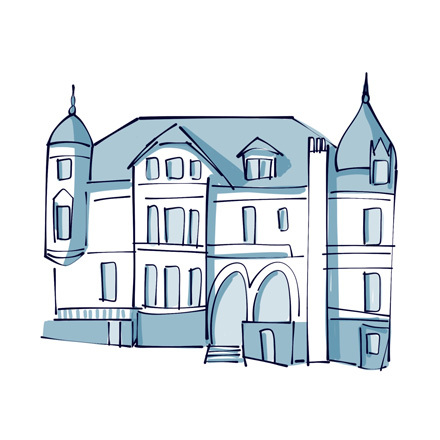
Well, Victorian style doesn't apply only to houses - some people think big and build themselves a castle! Take a look at this sumptuous mansion that takes up the entire street corner! It's Chateau Tivoli, now a luxury bed & breakfast.
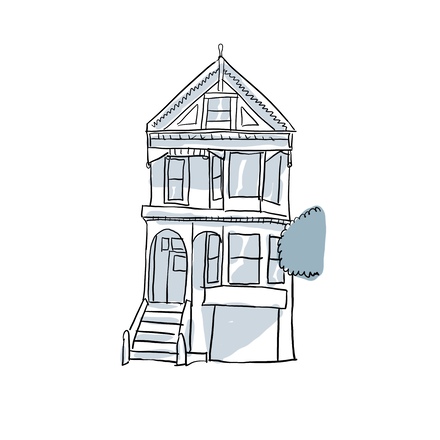
As you can see, we're in the district of beautiful Victorian houses. Here, all along the street, you'll find magnificent examples of the colorful buildings typical of the region. Above all, Victorian architecture refers to an era.

San Francisco's steep streets will undoubtedly feel like a leg workout, but we can't blame them for not offering superb views! From the top of Fulton street, you have a panoramic view of the Civic Center and the majestic City Hall.
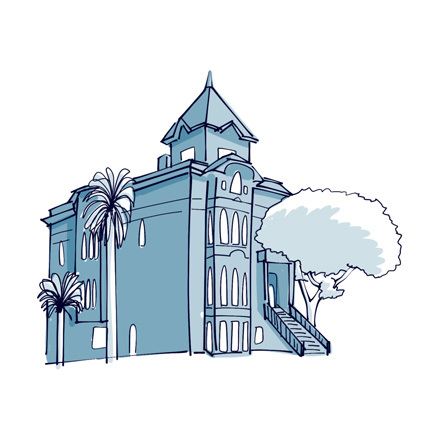
There's more to Alamo Square than the Painted Ladies. There's also the William Westerfeld House! Its history is as rich as it is extraordinary! The current occupant, Jim Siegel, recounts the story on how he fell in love with this house from the backseat of his parents' car!

Here you are, in the heart of the famous Alamo Square, so famous that it eventually gave its name to the entire neighborhood! From the heights of the park, once the view is clear and the well-known fog has lifted, you can catch a glimpse of the Transamerica Pyramid
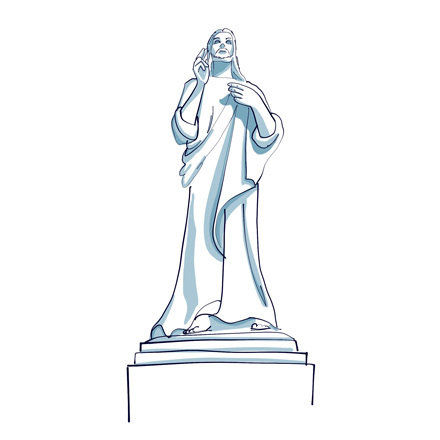
Look across the bay — can you see our next landmark? It’s big, striking, and looks almost human...Have you spotted it yet? That’s the Christ of Havana, standing tall on the hill of Casablanca, once a fishing village. At 20 meters high, this
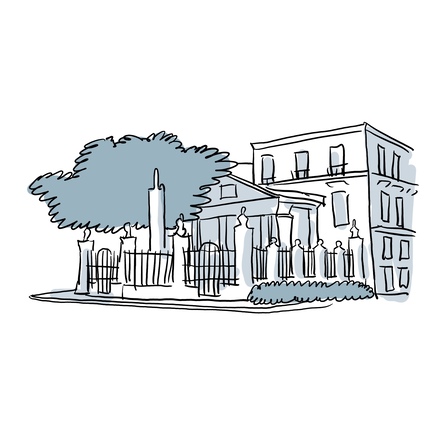
Although rarely mentioned among Havana’s major tourist landmarks, El Templete is one of the capital’s most significant historical sites. Inaugurated in 1828, this small Greco-Roman temple, with its miniature Pantheon look, was the city’s first
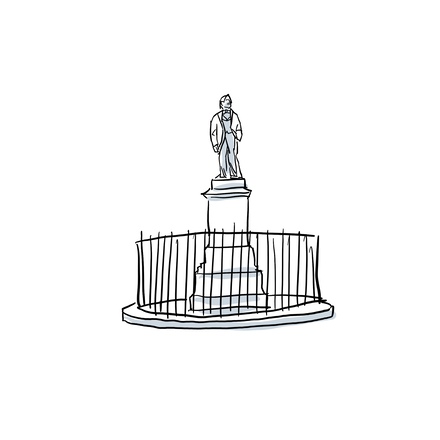
Located in the heart of Havana’s old town, Plaza de Armas is the city’s oldest town square, dating back to 1519. Back then, it was known as Plaza de la Iglesia, or Church Square, named after the Iglesia Parroquial Mayor, the church that stood here
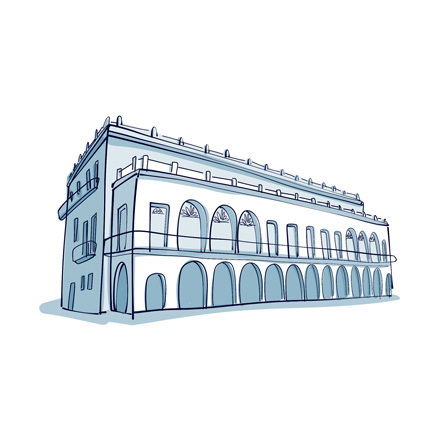
The Palacio de Los Capitanes Generales is the most striking example of Cuban Baroque architecture, complimenting the square it overlooks. Built in 1776 on the ruins of a former church, the building is so well preserved that you’d hardly guess its
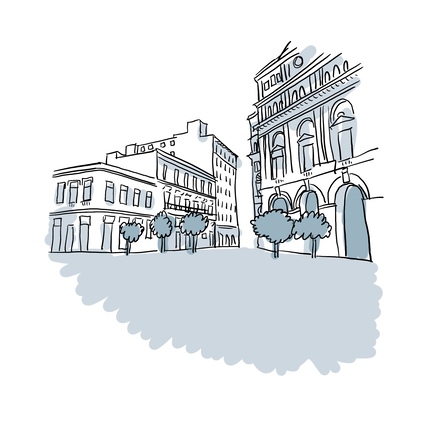
Open and breezy in every sense, Plaza de San Francisco de Asís has served as a gateway to Havana’s Old Town since the 16th century. Back then, the city was just beginning to take shape, and Spanish galleons crossing between the Caribbean and
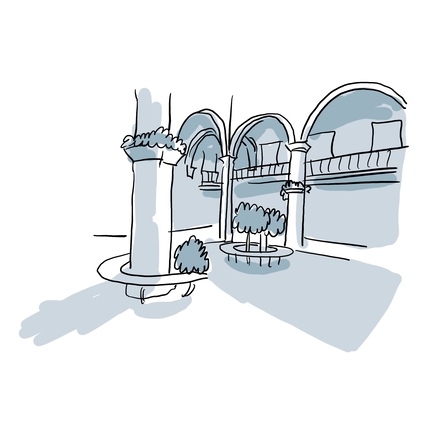
When you think of Havana, what comes to mind? Maybe colourful facades or iconic vintage cars — but let’s not forget about rum. A source of national pride, this amber spirit made from fermented sugarcane juice has become one of Cuba’s most
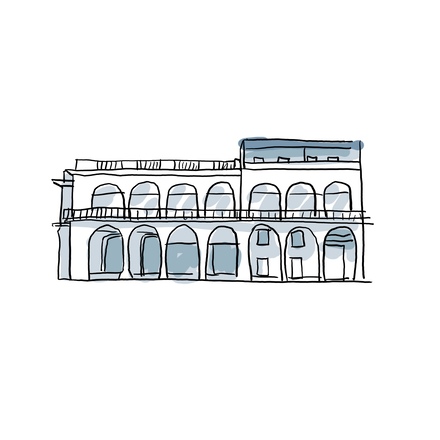
Havana is full of squares where you can stroll, relax, or grab a bite to eat - but don’t be fooled, not all plazas are the same. Each one has its own unique charm. As for Plaza Vieja, it’s the most eclectic and colourful of them all. Elegant mansions,
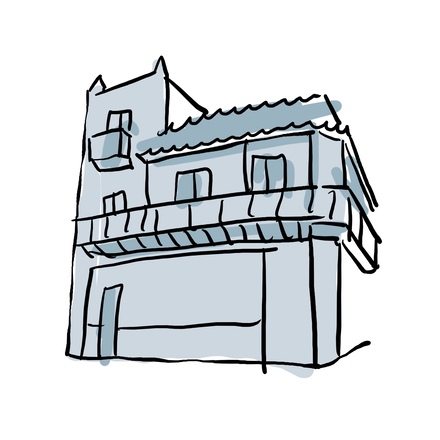
Havana’s museums cover just about everything — from timeless classics to the wonderfully unexpected. History, national figures, education, rum, tobacco, coins, chocolate — everything has its place in the Cuban capital. Pharmaceutical science is
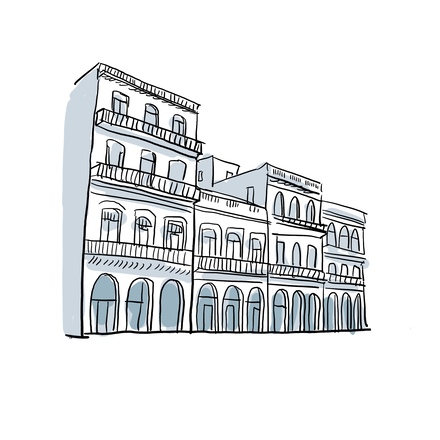
A treasure that’s been both restored and left untouched, Old Havana clings to a past that lingers in every wall and street. Listed as a UNESCO World Heritage Site since 1982 for its rich and varied architecture, Habana Vieja, as locals call it, is the

A striking and faithful replica of its Washington counterpart, El Capitolio is one of Havana’s most iconic landmarks. Built on the site of the city’s first railway station, this monumental structure was inaugurated in style on May 20, 1929 — after
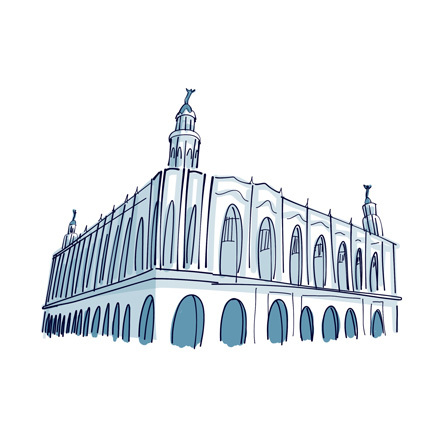
The Grand Theatre of Havana is one of the city’s most cherished architectural gems. Founded in 1838, this landmark is known for its iconic neo-Baroque style and stunning façade adorned with four white marble statues representing Theatre

If there’s one place that captures the spirit of Havana, it’s the Paseo de Martí. Originally called the Paseo del Prado, this was the first street built outside the old city walls, between 1772 and 1830. It was designed as Havana’s grand promenade —
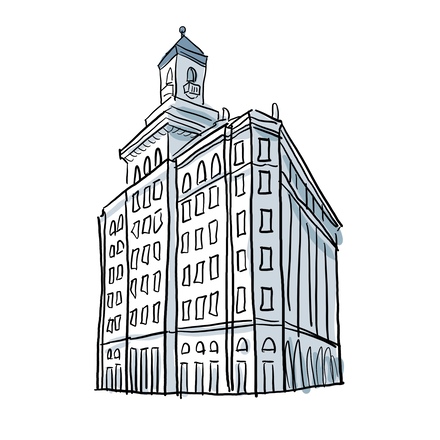
You’ve probably heard the name Bacardí before, but do you know the story behind it? The Bacardí family, originally from Catalonia in Spain, founded one of the most famous rum brands in the world. Let’s go back to the early 19th century, when
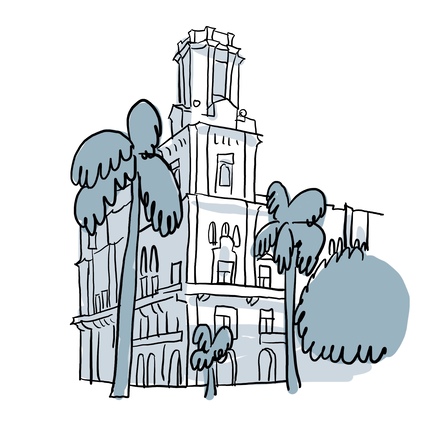
Looking for a real dose of art? The National Museum of Fine Arts is the perfect stop. Spread across two modernist buildings, it holds the largest collection of Cuban art in the world — with over 1,000 works on display. The museum is built around
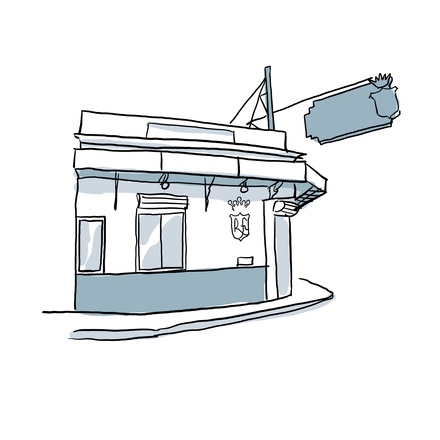
In Cuba, El Floridita and its famous daiquiris are a popular tourist attraction, and here’s why... Founded in 1817, this elegant cocktail bar became world-famous thanks to one of its most loyal customers: the American writer Ernest Hemingway.
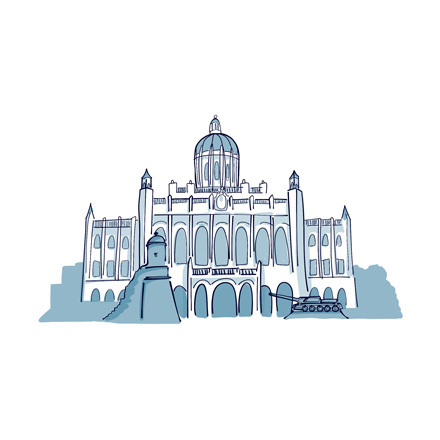
If you only have time for one museum in Havana, make it this one. Since 1959, the Museum of the Revolution has been the perfect place to understand Cuba’s complex history — from colonial rule and dictatorship to the fight for liberation.
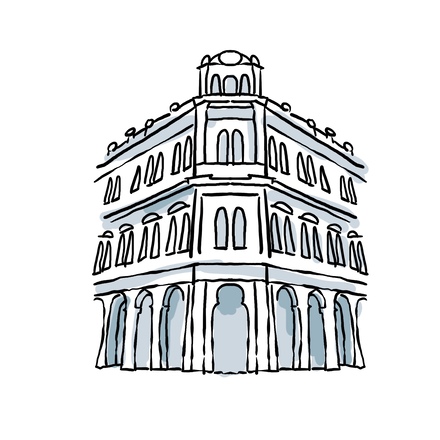
You’re now standing in front of Havana’s Centro de la Danza, housed in what was once the old Cantineros Club. It’s the perfect spot to talk about the role of dance in Cuba. This center hosts workshops, classes, exhibitions, and rehearsals, and it supports some of the country’s most renowned contemporary companies, such as Rosario Cárdenas, DanzAbierta, Malpaso,
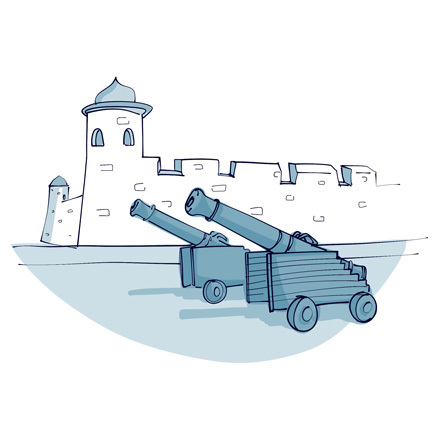
At first glance, the Castillo de San Salvador de La Punta might seem familiar, and that’s no coincidence. Havana’s four colonial forts were all built in a similar style, and three of them, including this one, feature on the city’s coat of arms. These
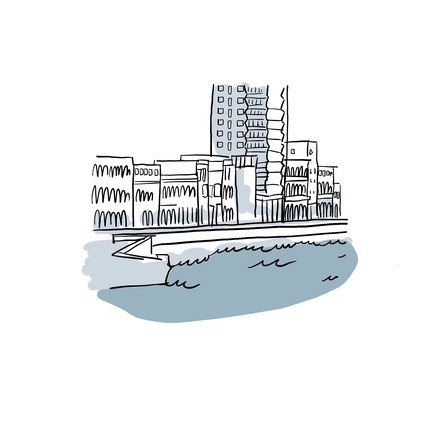
Welcome to the Malecón, also known as Maceo Avenue. Built in 1901 for Havana’s middle class, this seaside promenade has become one of the city’s favorite gathering spots. Whether it’s a romantic walk, fishing with friends, or dancing to Cuban
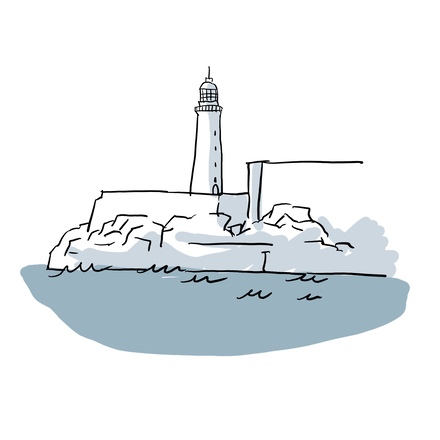
El Morro is Havana’s most iconic military structure, instantly recognisable by its lighthouse marking the entrance to the harbour. In Spanish, morro means “snout”, but it can also refer to a high or rocky point, which is exactly where this fortress was built.

A place steeped in history, the Cathedral of San Cristobal is one of the oldest buildings of its kind in all of Latin America. Built in the 18th century at the request of the Bishop of Salamanca, this Spanish Baroque monument is dedicated to the

Probably the most uniform of Havana’s four colonial squares, Cathedral Square is the heart of the historic district. Dating back to the early 1700s, it played a key role in reviving the area. Back then, the ground here was muddy and swampy — a far cry from the welcoming plaza you see today,
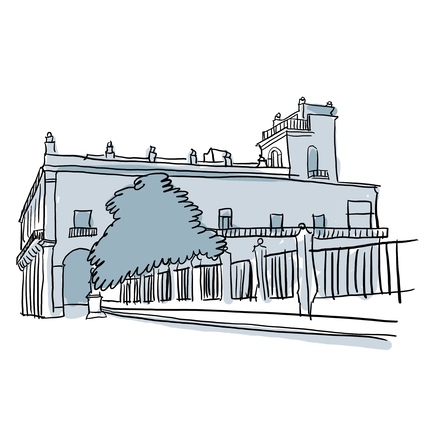
Built between 1770 and 1791, the Palacio del Segundo Cabo is one of the finest examples of colonial architecture. Over the centuries, the palace has served many roles: originally the Royal House of Posts, later the residence of the Lieutenant

The Castillo de la Real Fuerza is the oldest stone fortress in the Americas. Its striking star-shaped design is hard to miss, especially from above! Built in the 16th century on the ruins of a bastion destroyed by French pirates, this small castle was

Care to know the story behind this street's name? We have to go back in time to 1653, when New York was just a small Dutch colony, much coveted by the English. To defend their colony, then known as New Amsterdam, the Dutch built a wall south of Manhattan.

We all know Broadway as the birthplace of musicals, theater, and shows of all kinds, but did you know that Broadway is actually the name of New York's oldest and longest avenue? Plus, it's also the only avenue in Manhattan that doesn't follow the strict city grid pattern,
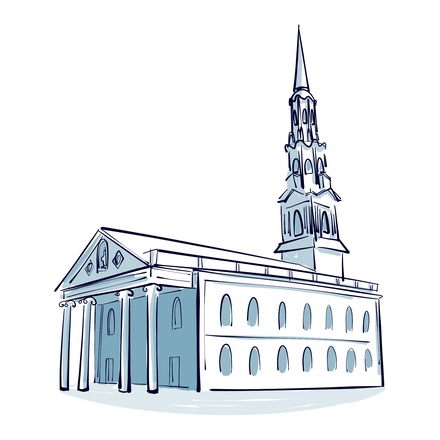
Introducing St. Paul's Chapel, one of Manhattan's oldest churches, located on Broadway, just steps from One World Trade Center. It's nicknamed "The Little Chapel That Stood," for it survived the Great Fire of 1776, ten years after its construction, as well as the 9/11 attacks.
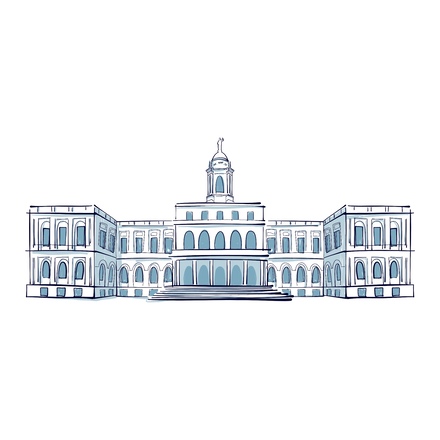
Before you is the City Hall, the seat of the New York City Government. Built between 1803 and 1812, it is the oldest city hall in the United States and still houses the offices of the city council, including the mayor's office.
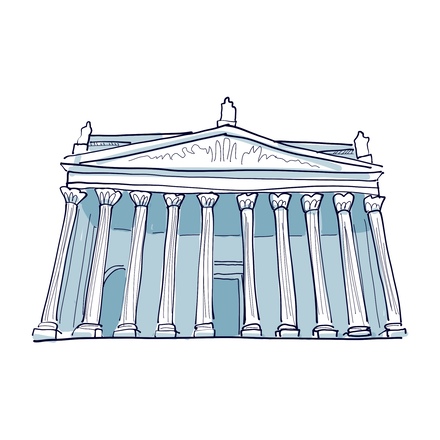
You're now in the legal heart of New York City! On your right, there's the David N. Dinkins Manhattan Municipal Building. It's right next to the New York City Hall and is actually an extension of it. It was built back in 1912 to house the new administrative services of the municipality.
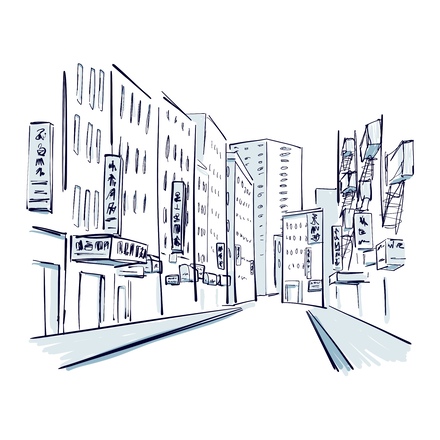
As you'll have gathered from all the colors, smells and little signs decorating the stores, you've arrived in Chinatown! This neighborhood was established in the 1850s, following the arrival of a large number of Chinese immigrants.
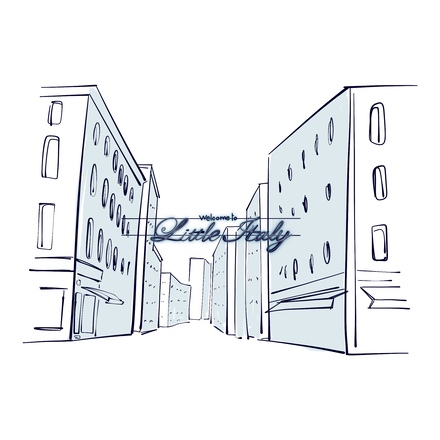
From the wonders of Chinatown, you've now stepped into Europe, Italy to be exact! This Manhattan neighborhood, known as Little Italy, is packed with small restaurants and bars with an Italian flair that'll set the mood straight away!
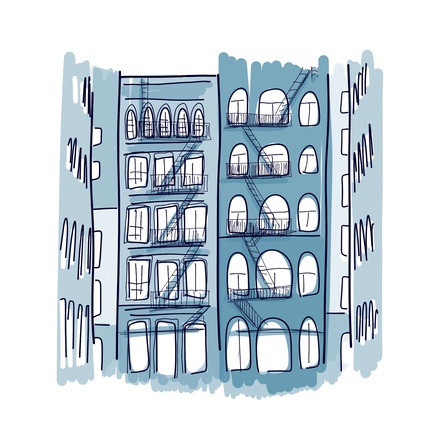
Welcome to SoHo, Lower Manhattan's trendiest neighborhood! It's packed with boutiques, restaurants, and cafes that are well worth checking out. No wonder it's one of New York's most popular neighborhoods!
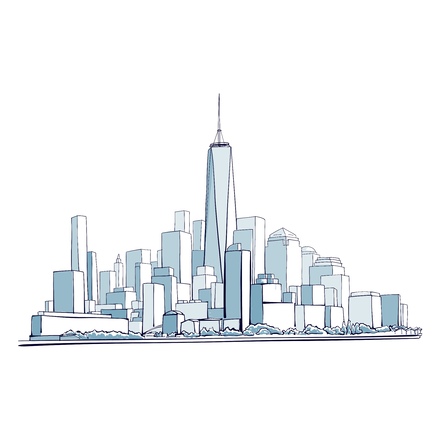
Lower Manhattan is part of the borough of Manhattan, one of New York City's five boroughs. It's the southernmost part of the island, home to the Financial District, as well as neighborhoods like Tribeca, Little Italy, Chinatown, and Greenwich Village.

Before you, you can see the state of New Jersey! Separated from New York by the Hudson River, which flows along the west side of Manhattan, Jersey City is home to a handful of skyscrapers. This eclectic, cosmopolitan city is a mere one kilometer from America's largest metropolis,

Hudson River Park is a rather unusual park, stretching along the river from the Upper East Side all the way to Battery Park, at the southern tip of Manhattan. It spans 550 hectares and includes a dozen or so piers that have been turned into fantastic spaces for everyone to enjoy.
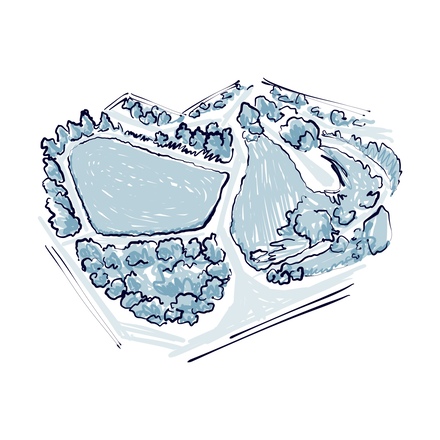
This park's pretty amazing, isn't it? You can't help but crane your neck to look up at the buildings surrounding Teardrop Park. It was designed as a sustainable park and is located in Tribeca, Manhattan's former industrial district.

No doubt about it, you've arrived in the Financial District! There's a sea of skyscrapers all around you, shaping the urban landscape of this world-famous neighborhood. Look up and to your left – that stunning tower reflecting the sky and surrounding buildings
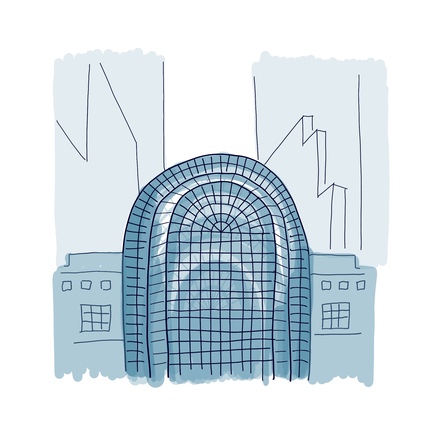
Just across from One World Trade Center, you'll find the entrance to Brookfield Place. This massive shopping mall practically marks the very start of the city's impressive Financial District. Built between 1982 and 1988, this complex of buildings is largely made up of business offices,
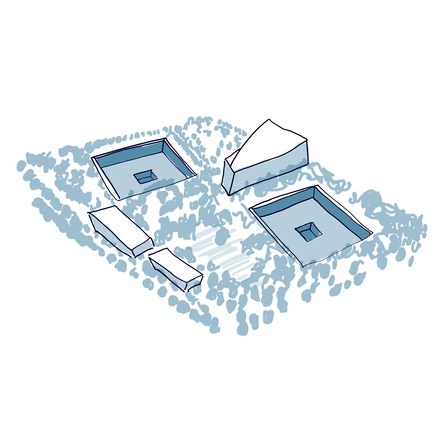
You're now standing before one of the twin waterfall pools that make up the 9/11 Memorial. This is the very spot where the Twin Towers of the World Trade Center once stood. Before the horrific attacks of 2001, this was a world-famous business complex, and for a time,
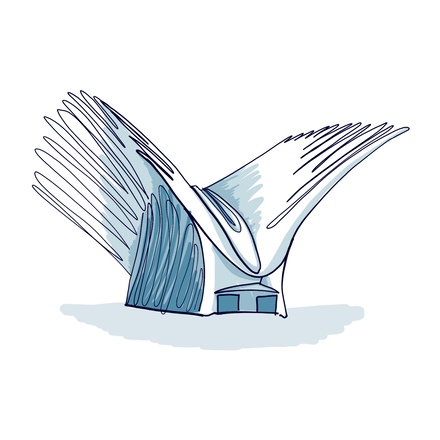
Stunning, bewildering, awe-inspiring… This strikingly unusual structure is none other than the station connecting Manhattan's Financial District with New Jersey. Resembling a bird in flight, this futuristic station, called Oculus, was designed by Spanish architect Santiago Calatrava.
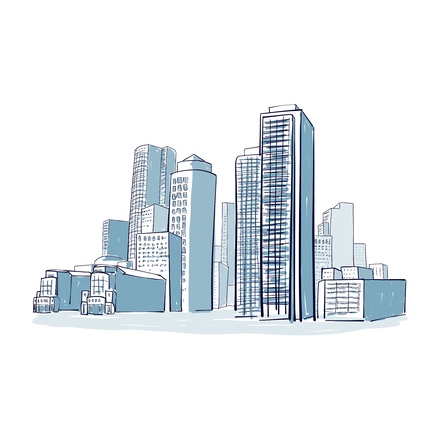
Before we reach the tip of Manhattan, let's talk a bit about the Financial District we're in. Often referred to as the Wall Street district, this world-famous business hub is actually called the Financial District — Wall Street itself is just one street within it.

Welcome to Battery Park, at the tip of Manhattan. From here, you'll enjoy lovely views of the Statue of Liberty, as well as Ellis Island and its impressive Immigration Museum. But before we get to Lady Liberty, let's talk a bit about Battery Park itself.

The Bull of Wall Street, also known as the Charging Bull, is an iconic sight in the Financial District. It was illegally installed in front of the New York Stock Exchange following the 1987 Stock Market Crash, but was eventually embraced by the city in 1989.
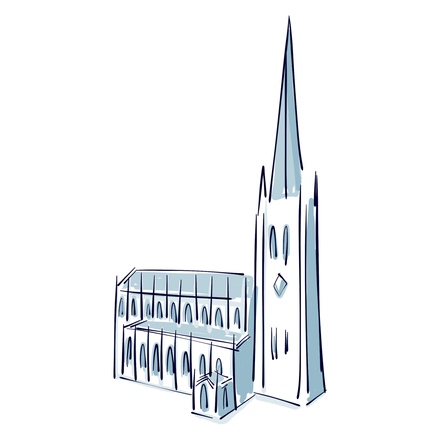
Before you is the beautiful Trinity church, nestled among the towering skyscrapers of the Financial District. Its 19th-century neo-Gothic architecture stands in stark contrast to the modern buildings around it.

The vast expanse of grass you see on the other side of the canal is none other than the Pâquier. Its real name is the Champ de Mars, but the people of Annecy still call it the Pâquier, which means "meadow" and reminds us that the area was once outside the city.
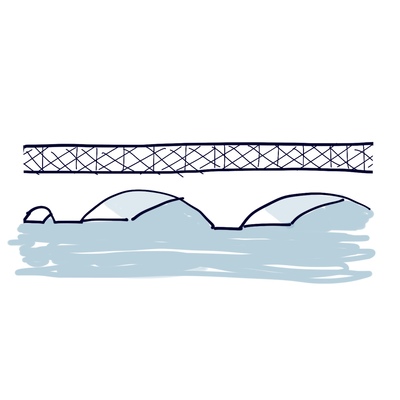
We arrive at the Pont des Amours, the Lovers bridge. Another symbolic landmark of the city. The bridge offers a breathtaking view of the lake and Swan Island. Its romantic name actually has a double meaning. It's a place where lovers like to meet, of course, but in the past, it used to be a prominent site of prostitution. Of course
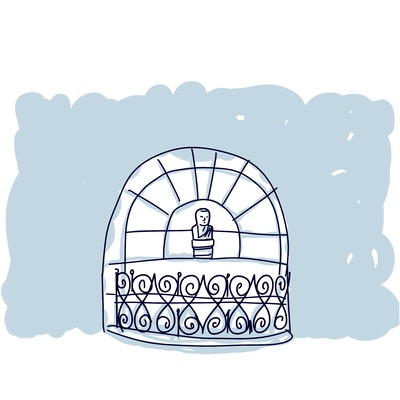
Certains souvenirs sont à marquer d’une pierre blanche, d’autres méritent un Balustre d’Or. Le jour de Pâques de l’année 1728, Jean Jacques Rousseau rencontre Mme de Warens.

It's time to reconnect with the surrounding beauty and enjoy your stroll through the gardens of Europe. This English-style park has seen many changes. In the Middle Ages, it was home to the so-called "health huts", built on small islands lost in the middle of the marshes. People were quarantined here during epidemics!
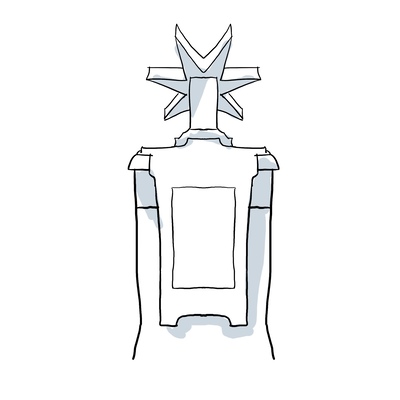
This strange sundial, originally known as the Gnomon du Frère Arsène, is a 7-pointed star that can measure time. It's a bit technical, so I suggest you read the plaque for more details. Called l'Unique, it was invented by a Capuchin monk from Annecy in 1874 and inaugurated a few years later.

With its Swiss postcard-like scenery, the Lake of Annecy is the true star of the city! France's second largest glacial lake after Le Bourget, this sewage-free, closely monitored lake has earned the nickname of "Europe's purest lake"! Surrounded by mountain ranges that seem to watch over it, this jewel offers many activities for nature lovers!
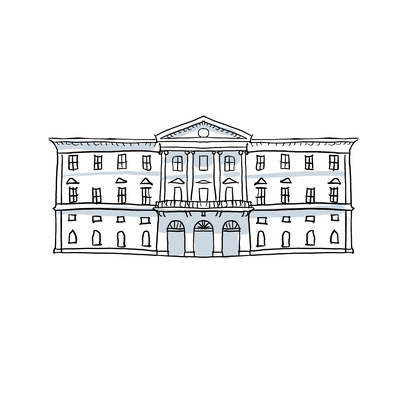
On the Hôtel de Ville square you'll find the town hall on one side and the church of Saint-Maurice on the other. That's a lot of churches for such a small town! Annecy is nicknamed "the city of 5 bell towers"! And they're all in different styles. This one is the oldest in the town. It's the former chapel of the Dominican convent
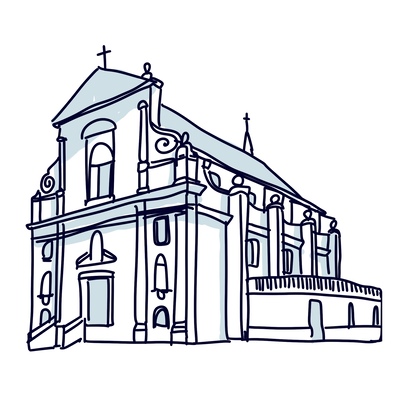
You're now in Saint-François-de-Sales square, in front of the church of the same name. It's also known as the Italians' church, for the simple reason that it's mainly attended by Annecy's Italian community. For a complete change of scenery, you can attend mass in Italian!

You've seen it and you've been waiting for it, so let's start with the famous “Palais de l'Ile”, better known as the old prison. It's the most photographed monument in the city. Wait patiently for the space along the balustrades to open up and enjoy this magnificent view for a moment.
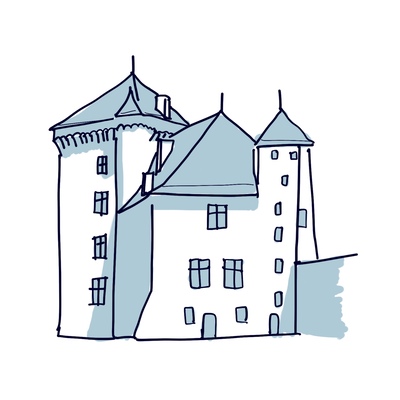
You're standing in front of the Château d'Annecy, overlooking the old town on the hillside. Strategically placed to overlook the entire plain, it was used to monitor movements on the road between Geneva and Italy. The origins of this ancient medieval fortress are uncertain, but we do know that it was the residence of the Counts of Geneva
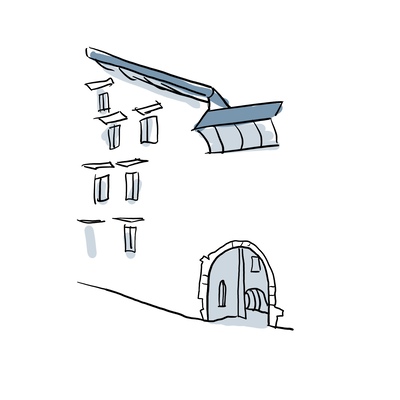
You might have noticed that the streets of Annecy are still very typically medieval. The fortified gates are a good example. To protect itself from outside attacks, the town was surrounded by a fortified wall. To enter and leave the town, you had to go through protected passages and pay a tax.

There's no shortage of photo opportunities in this city! Right here, no flower-filled canals or sparkling lakes, but the Esplanade Saint Maurice still offers a wonderful panorama of the rooftops of Annecy with the mountains beautifully set in the background.
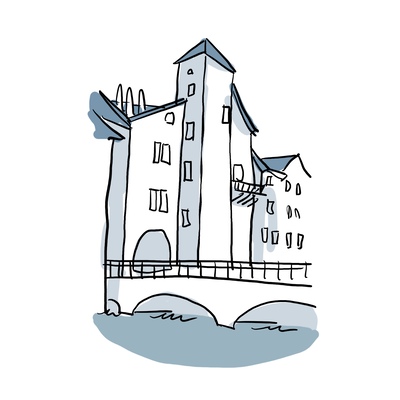
This is the first stone bridge in Annecy, built in the 13th century. It allowed the Alpine road from Geneva to Italy to cross the Thiou. Its name, Morens, comes from the word "demeurant", meaning “wich stays put”, because unlike other wooden bridges, which were regularly washed away by floods, this one "remained" in place!
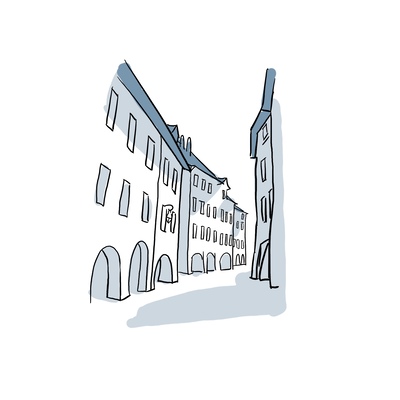
You are now on one of the city's main thoroughfares. This was the very first street which made it possible to cross the whole of Annecy by carriage! Characterised by its arcades and its façades in ochre, almond green or pink, the street is always busy, lined with bars, restaurants and souvenir shops.
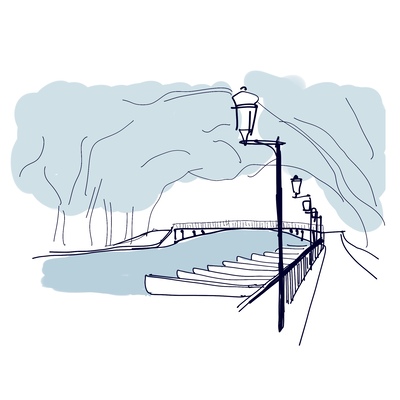
From the Bishop's Quay, you can observe a magnificent row of old houses at water level. It's a scene that sparks the imagination. However, it's important to note that the quays are relatively recent, and in the past, residents had to reach their homes by boat. In the Middle Ages, many craftsmen settled along the Thiou river to
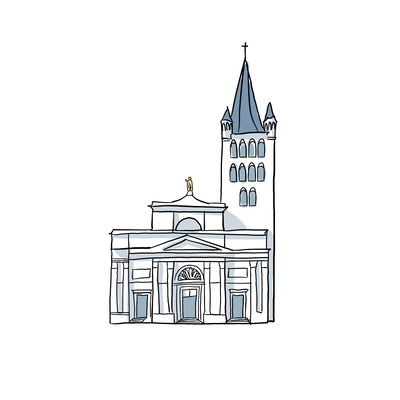
You've now reached the church of Notre-Dame de Liesse. It was founded in the 14th century by the Counts of Geneva, who wanted a place worthy of their name for their future burials. You may not be familiar with the Counts of Geneva. The title was only held by 17 lords and died out with the last one at the end of the 14th century.
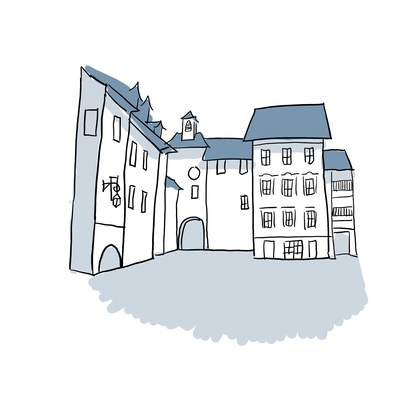
Here we are on a much more modern square, the Place Sainte-Claire. What's interesting here is the tiny fountain you see in front of an arcade column. It may not look like much, but it shows the ingenuity of the water distribution system of the past centuries. Drawing water from great depths, emptying it into an inner basin and pouring

Here you are in front of one of the canals of the Thiou. This river is one of the smallest in France, barely 4 kilometres long, but it has had a considerable impact on the creation and development of the city! As you know, the power of water has been used to drive machines since Roman times!
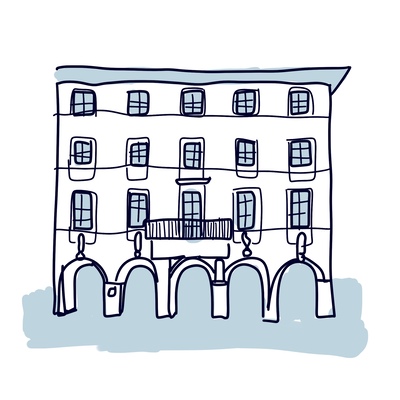
The Old Hotel de Sales you see before you is one of the rare private mansions in Annecy. It was built by the de Sales family, descendants of Saint François de Sales. In the 17th century, it was used as a residence by the nobles of the House of Savoy before being confiscated during the French Revolution.
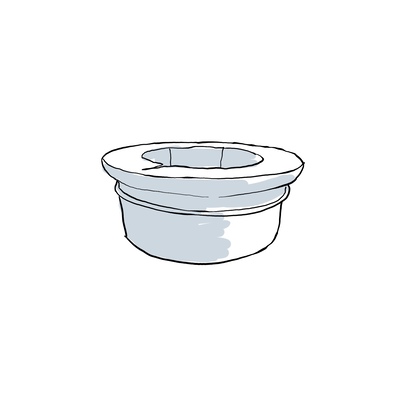
Where the Royal Street turns into the Pâquier Street, you can observe a very old well curb. This well dates from the 15th century. You can see the inscription 1689, but that's only the date of its renovation! Come on, I'll translate the Latin inscription for you, just for fun and because you never get to know what all the inscriptions around

At this point, it's no secret that this city is famous for its waters. The thing is, its green side is often overlooked. Vichy has even been awarded for its greenery!
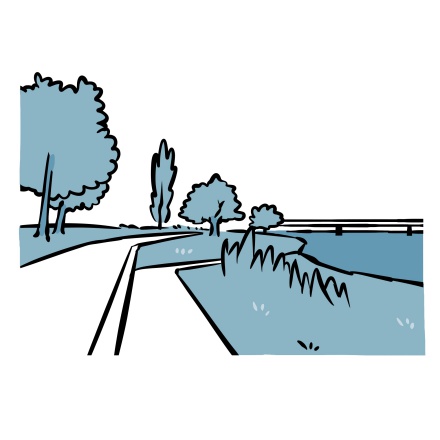
You’re probably thinking, 'Great, yet another body of water in Vichy'. It's starting to feel like we're never going to see dry land again!
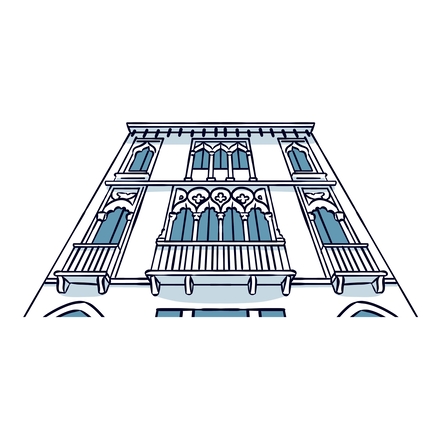
The Belgique Street is the crown jewel of the city's so-called "Golden Triangle", a prestigious area not far from Parc des Sources, located between the thermal baths and the opera house.

From top to bottom, right to left, the imposing façade of this building is a masterclass in high-end architecture. You've guessed it – today's subject is the former Hôtel des Ambassadeurs.
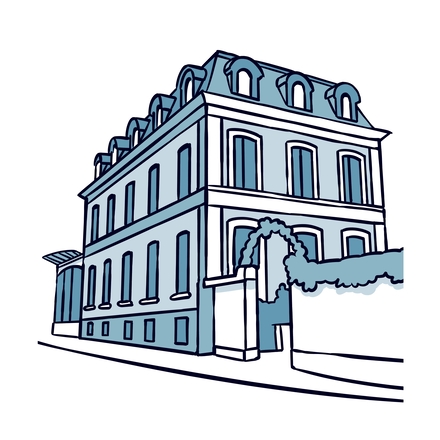
The Villa Strauss, with its strict neoclassical style, might not be the most striking building on Belgique Street, yet it’s one of great importance to the history of Vichy.
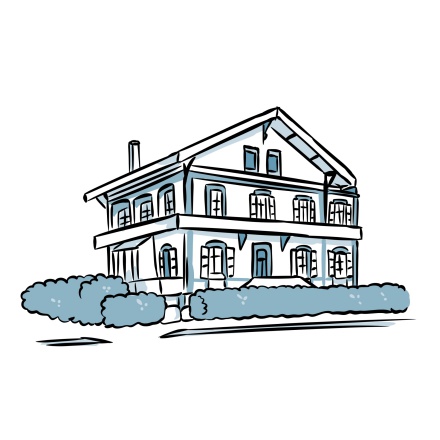
Visitors to Vichy are often surprised to see these adorable cottages on the shores of the Allier Lake. What’s even more surprising is that they were built as residences for Napoleon III and his court.
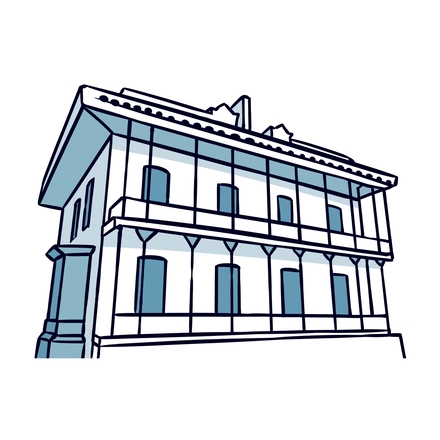
You thought you'd seen every imperial chalet? Think again! Hidden away at number 107 is the Emperor's Chalet, once home to Napoleon III himself.
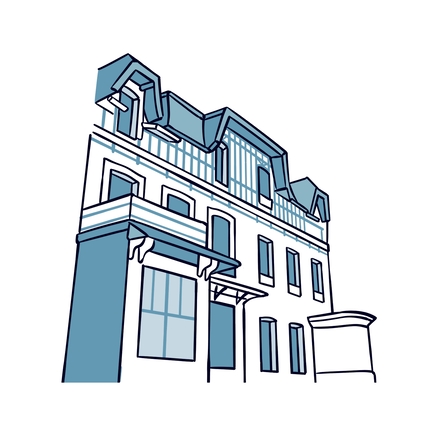
Of all the Vichy streets on our tour, this one is hands down our favorite. And if you appreciate beautiful things, it may soon become one of yours too. Running alongside the Parc des Sources and the Allier parks
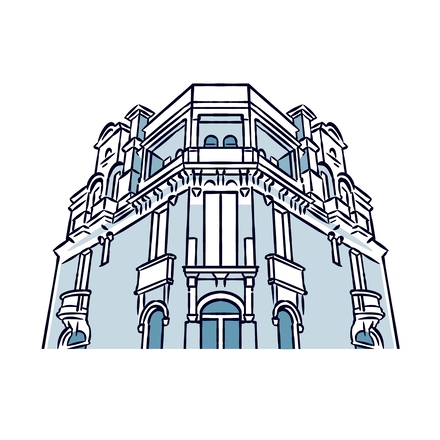
Introducing the Castel Flamand, aka the Flemish Castle – a grand Vichy mansion with a captivating history. Towering over the street, it stands out with its striking red façade
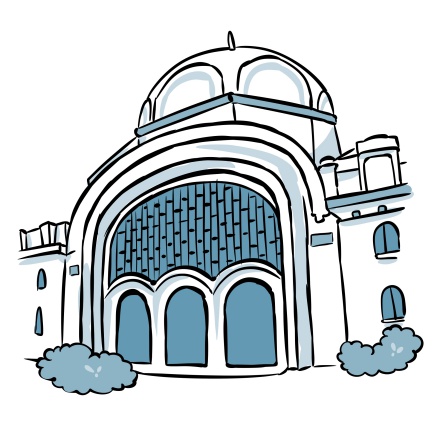
We need but a few keywords to describe this imposing building standing before you: care, dietetics and physical therapy. This place has a rich history and it’s still one of the city’s must-see attractions.
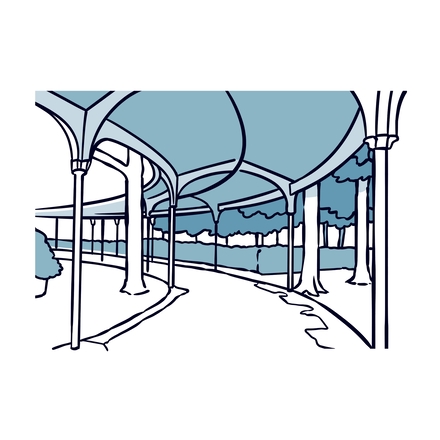
Napoleon III is everpresent in Vichy. It will be either him or another member of his family. Either way, his presence can be felt literally everywhere. The Parc des Sources is a prime example.
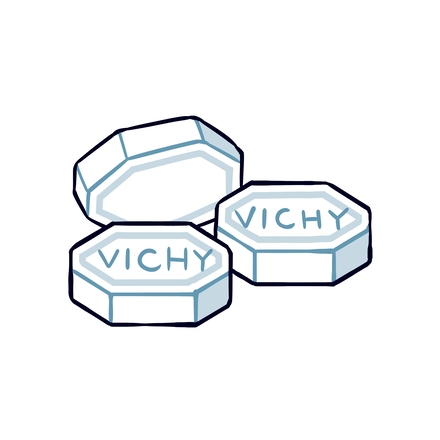
Who doesn't love candy? All sweet treats bring back happy childhood memories, for they’re the kind of guilty pleasure that nourishes the soul – the body, not so much. Well, technically speaking, there are a few exceptions!
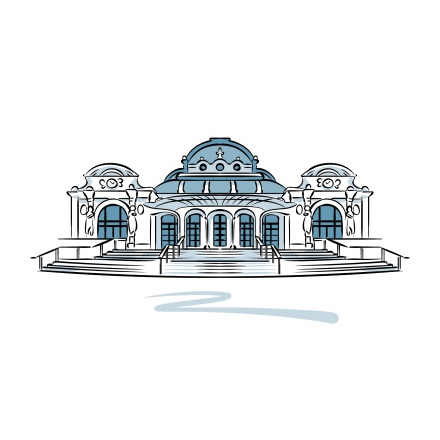
So how does it feel to be standing in front of Vichy's most famous landmark? It's quite a head-turner, isn't it? The Vichy Convention Center & Opera House sits right in the city center

We'll now stroll down President Wilson Street, one of the city's busiest thoroughfares. Take a breath of fresh air at the Parc des Sources, marvel at the grand old hotels, and peek into the charming little covered passages that whisper stories of a bygone era.

Vichy's identity shines brightly at the Hall des Sources. Here, you’ll find all that makes this town so famous. Built between 1898 and 1903, this elegant pavilion, made entirely from glass and steel
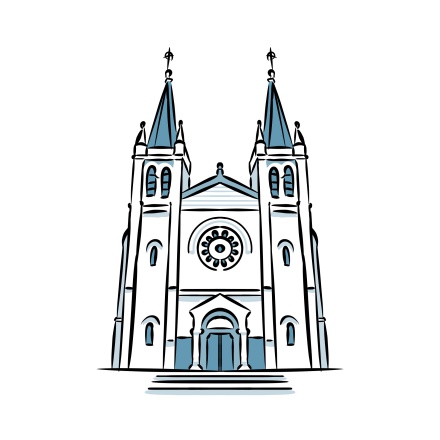
Nestled at the end of this scenic esplanade, you'll find the charming Saint-Louis church. It's Vichy's main church and its history is fascinating.

Before you is the bandstand of the Parc des Sources which might easily go unnoticed. It's hidden in plain sight, blending seamlessly into the cityscape.
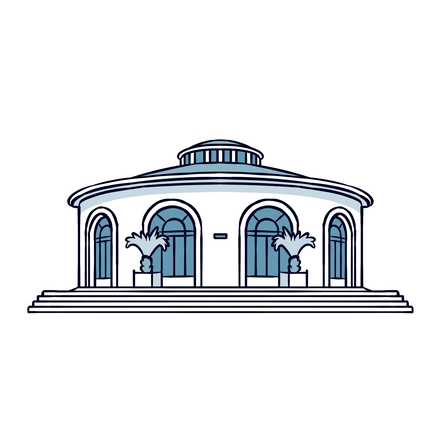
Vichy has a total of nine springs, including the Célestins, Chomel, Lucas and Grande Grille. And remember, there are some whose water can be consumed from drinking fountains for medicinal purposes.
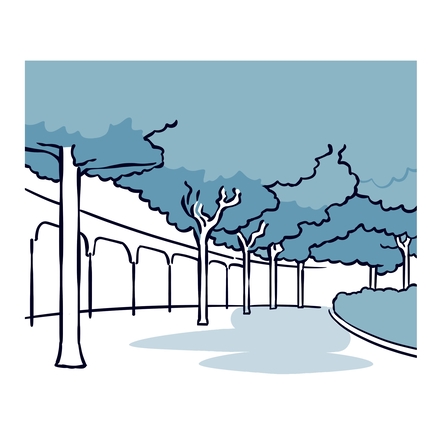
It's a battle between old and new these days. Everything's going obsolete, old-fashioned, outdated... You see, the past struggles to get a foothold in our ever-more avant-garde world.
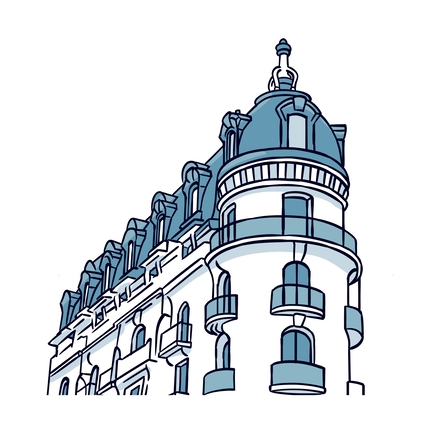
Vichy may hide its greatest treasures underground, but it certainly knows how to impress visitors above ground. You'll find some remarkable buildings here, and the one before you is a perfect example.

You're about to walk down Hubert Colombier Street. As you do, take a moment to look up, check out the building façades and take in every single detail. This little street used to be private and hence off-limits to the public.
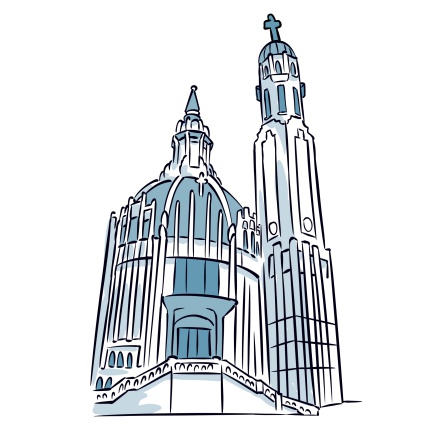
Introducing the Church of Notre-Dame-des-Malades, aka the Church of Our Lady of the Sick. It's much more recent than the neighborhood it calls home and it's a somewhat unique monument in Vichy.
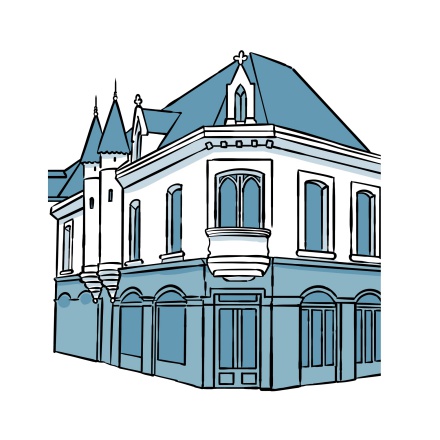
Are you a little surprised to see such an odd-looking house? Well, don't be, because Vichy's old town alone is full of quirky architecture.
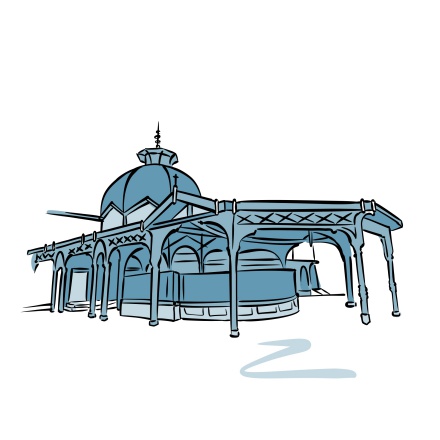
The Lardy Spring is the first thing you'll notice as you enter the park of the same name. But if you could time-travel a few hundred years back, things would be completely different.

There are those who've tasted it once and can't live without it! Then there are those who only know it from the TV commercial with the catchy slogan
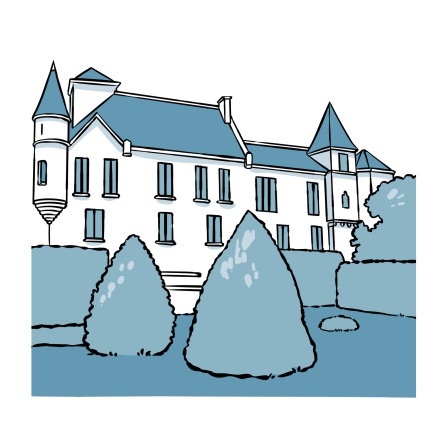
The Maison du Bailliage, also known as the Castel Franc, is a hidden gem in Vichy's Old Town. Built right on the city's ancient walls in 1482, it was originally home to the bailiff
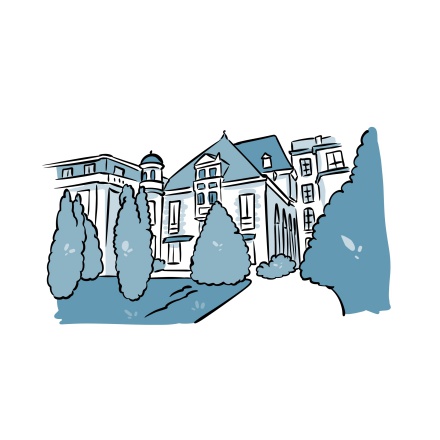
Guarded behind a wrought-iron gate, the Sévigné Pavilion is a modest yet elegant building with a small turret to its left. The property was built around 1624

The bell tower you see there, in the middle of the houses is the Saint-Barthélemy bell tower!

You are entering Saint-Nicolas street, the heart of the district bearing the same name and one of the city's must-visit thoroughfares.
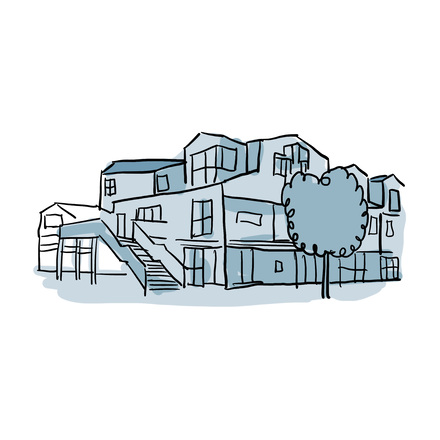
No, you're not dreaming, you're still in La Rochelle! Welcome to Gabut district. A unique neighbourhood that makes you wonder if you haven't just moved to another town, or even another country...

The famous La Rochelle Aquarium is on your left. It is one of the city's landmarks. In fact, it's one of the biggest aquariums in Europe!

This view takes your breath away, doesn't it? From this viewpoint, you can contemplate the ocean stretching as far as the eye can see to your left, as well as the town's three towers, bearing witness to its past as a fortified town from the 12th century onwards.
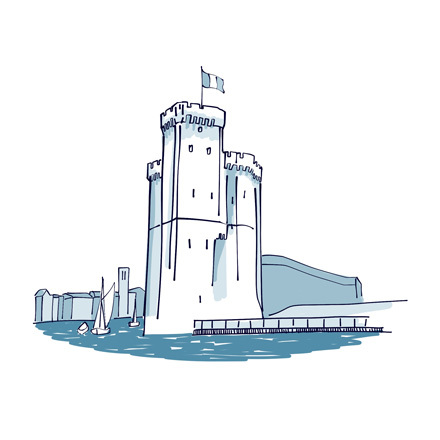
We are standing at the foot of Saint Nicolas Tower, the oldest in La Rochelle. A true symbol of the city's sovereignty.

Strolling around La Rochelle's Old Port is the perfect way to enjoy the city. Depending on the season you'll find bars, restaurants, ice-cream stands and churro vendors, the Old Port is always bustling with activity.
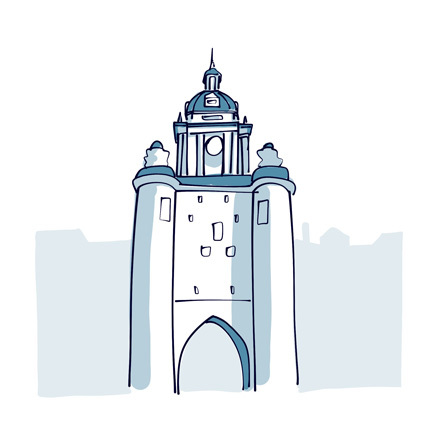
The Big Clock Gate, which marks the boundary between the Old Port and the old town, is one of the city's most iconic monuments, and certainly one of its oldest.
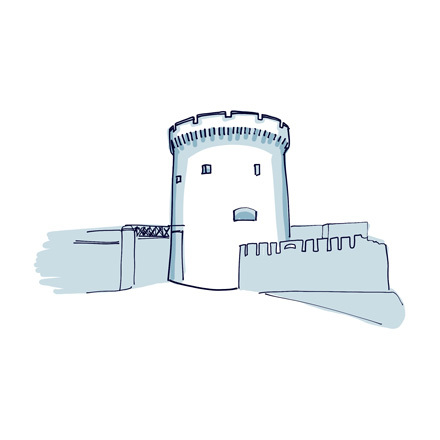
The Chain Tower is the smallest of La Rochelle's three towers, standing at just 24 metres high.
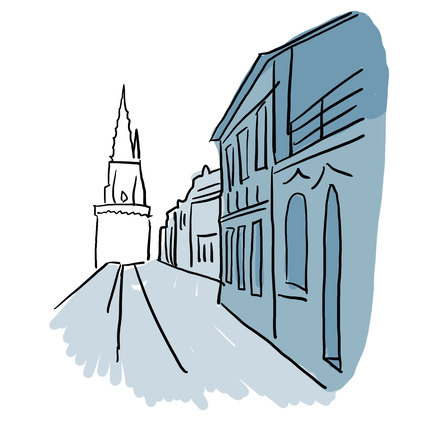
Rue sur les Murs is the only remnant of the town's ramparts spared by Richelieu, who chose not to demolish this part , not because it is one of La Rochelle's most beautiful promenades, as you would expect, but because it represented a strategic asset for keeping an eye on the English.
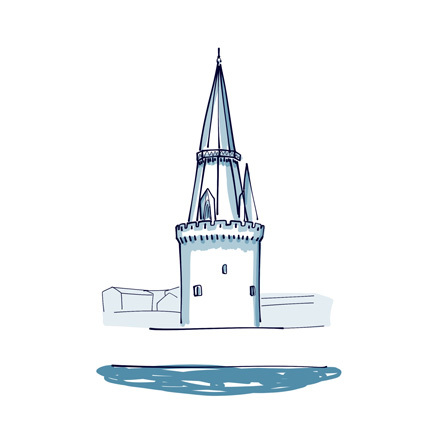
The Lanterne Tower is the oldest lighthouse on the Atlantic coast, with its astonishing white colour.
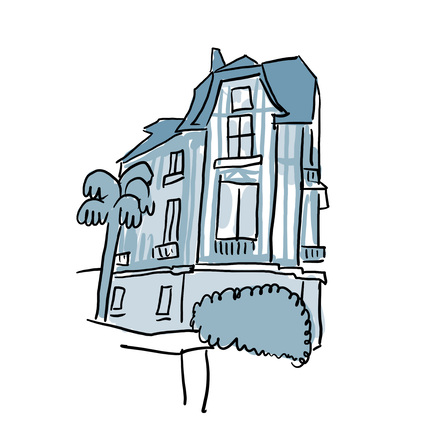
This pretty mansion, which you may have noticed from a distance, is quite unlike any other building in the town.
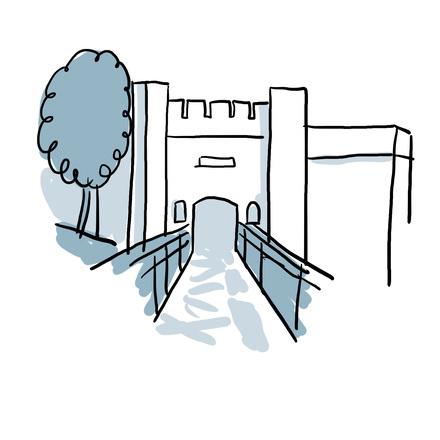
The Two Mills Gate is the oldest gateway to the town. It was initially built in 1200 as the gateway to the old town during the Middle Ages.
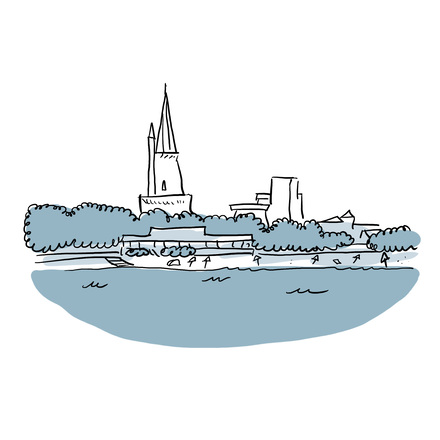
Here we are! How can one visit La Rochelle and not enjoy the fresh air of the Competition Beach, located just a few metres from the impressive Lantern Tower?
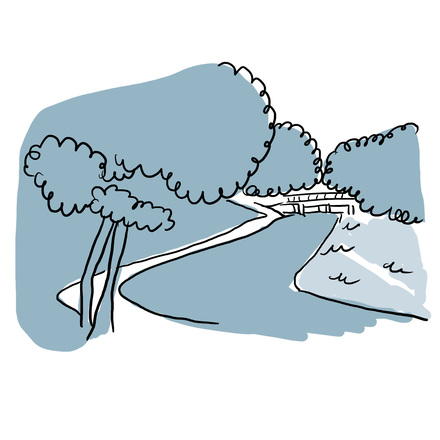
Charruyer Park is the perfect place to take a nature break, as you wind your way along the canals.

So, while we're here, in the peace and quiet of Charruyer Park, I'd like to give you a little more background on the history of La Rochelle.

Escale Street is one of La Rochelle's historic streets. Take a look at its cobblestones: it's the only street in the city that still has round cobblestones.
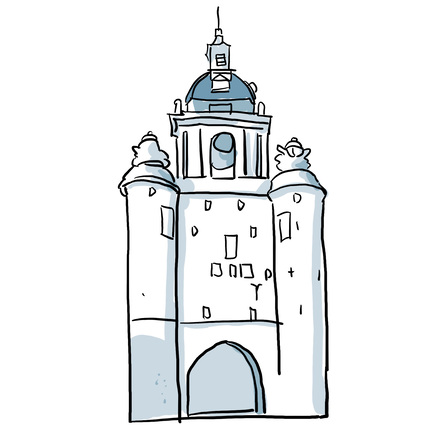
This is La Rochelle's notorious Old Town, a historic district with unusual arcades housing the town's shops.
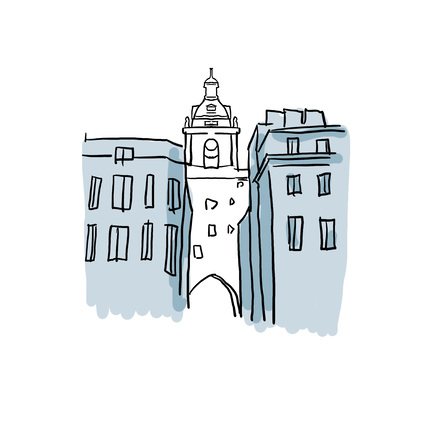
Palace Street is one of the main thoroughfares in La Rochelle, linking Verdun Square and the Big Clock through its shops and historic buildings.
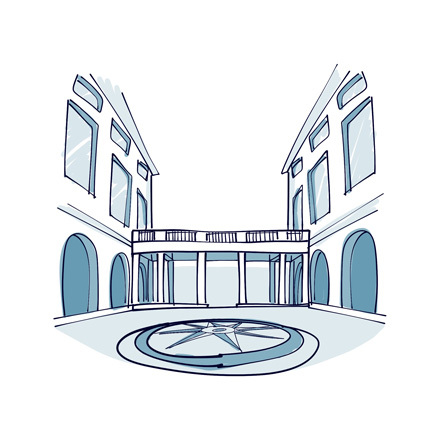
The building was constructed in 1760 to house the Chamber of Commerce and make it easier for merchants to trade.
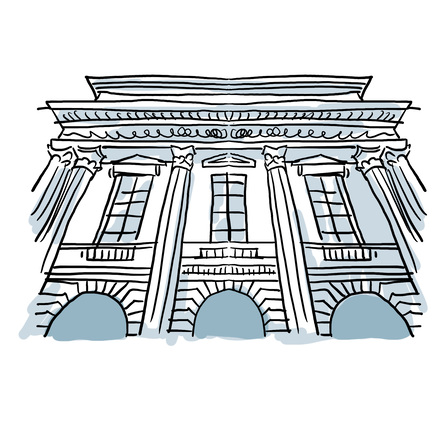
Listed as a Historic Monument, the Courthouse has a beautiful Corinthian-style façade in the Palace Street.
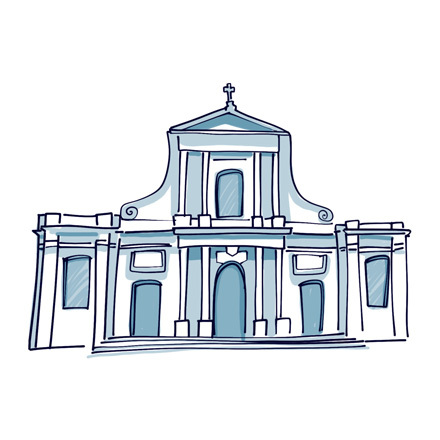
This is Saint-Louis cathedral. The site has hosted a place of worship since the 12th century, although the building you see here is not as old.
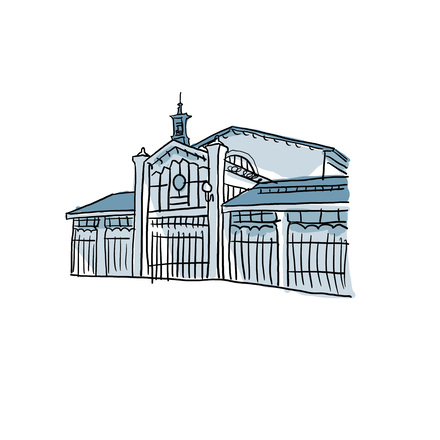
Can you hear the chatter, haggling, and laughter of the town's traders and residents?
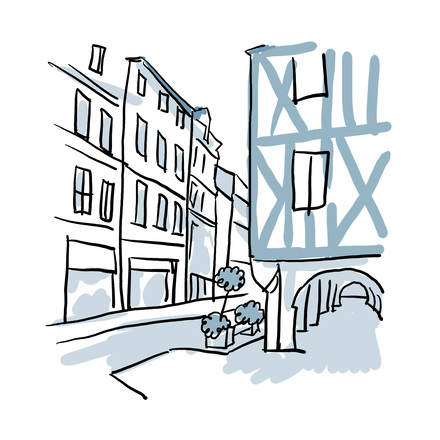
In the Middle Ages, this pretty street was used as a market for food, cloth, and linen.
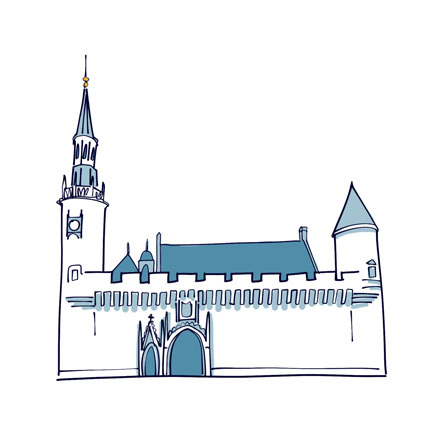
This is the oldest mansion in France.
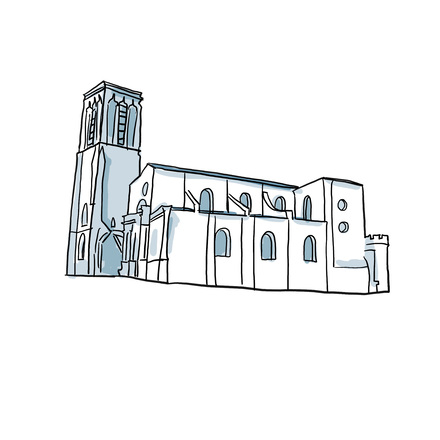
This 12th-century church was built by the monks of Aix Island, a small pedestrian island off the coast of La Rochelle.
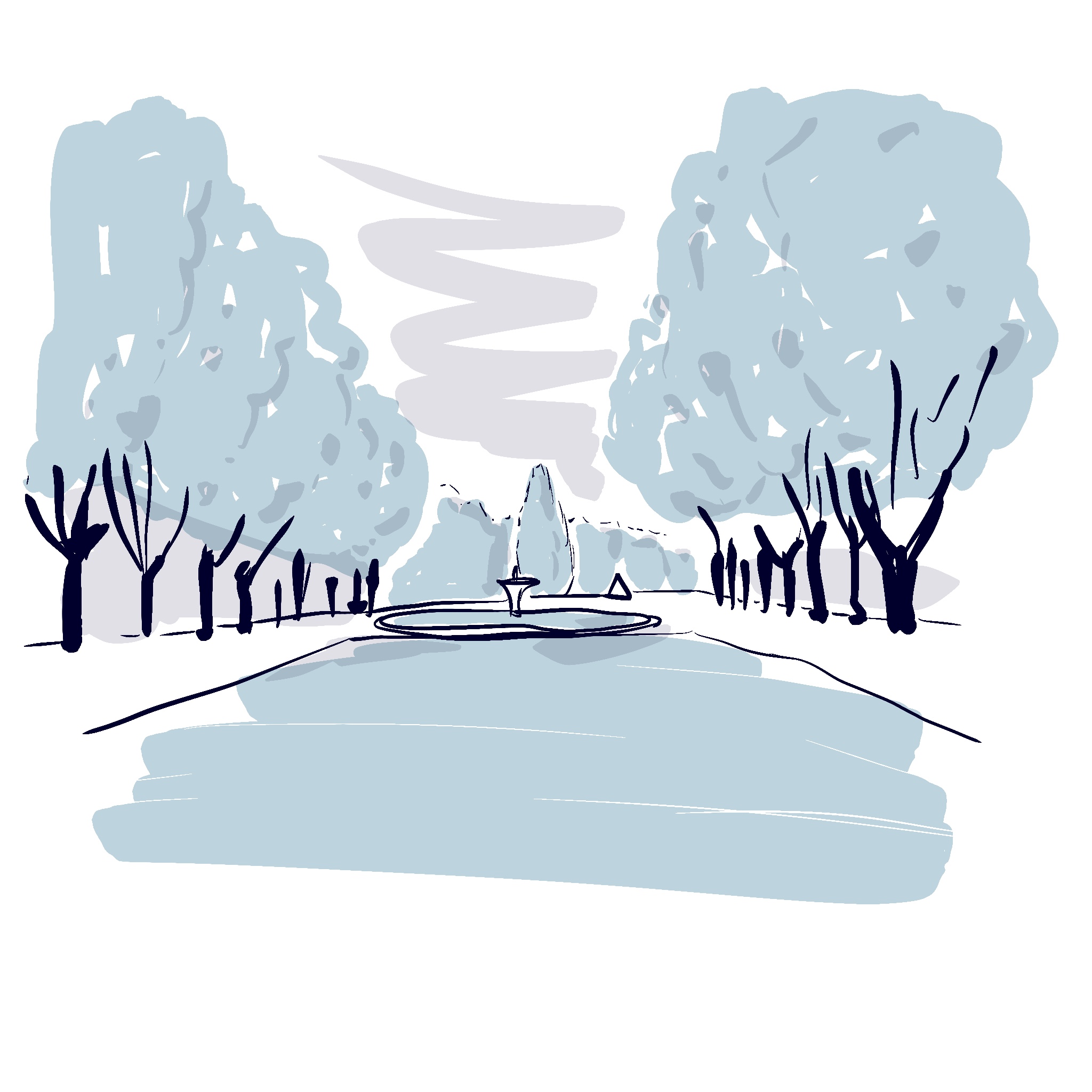
Welcome to the lovely Saint-Mauris Garden, marking the entrance to the historic center of Dole. It was laid out in the 18th century, on the site of the old city walls, demolished in the 17th century. It's a beautiful English garden, created to open up the old medieval city,

As you walk along the Dole harbor, you'll discover 30 berths reserved for yachtsmen wishing to explore this beautiful medieval city. The port is located on the Rhone-Rhine Canal, which promises some lovely boat trips through the region.

You're now looking out over the houses of Dole's historic center and its majestic collegiate church. In the foreground, you'll see boats peacefully moored on the canal that runs through the city! It's the perfect spot to capture a postcard-worthy image of the former capital Franche-Comté region.
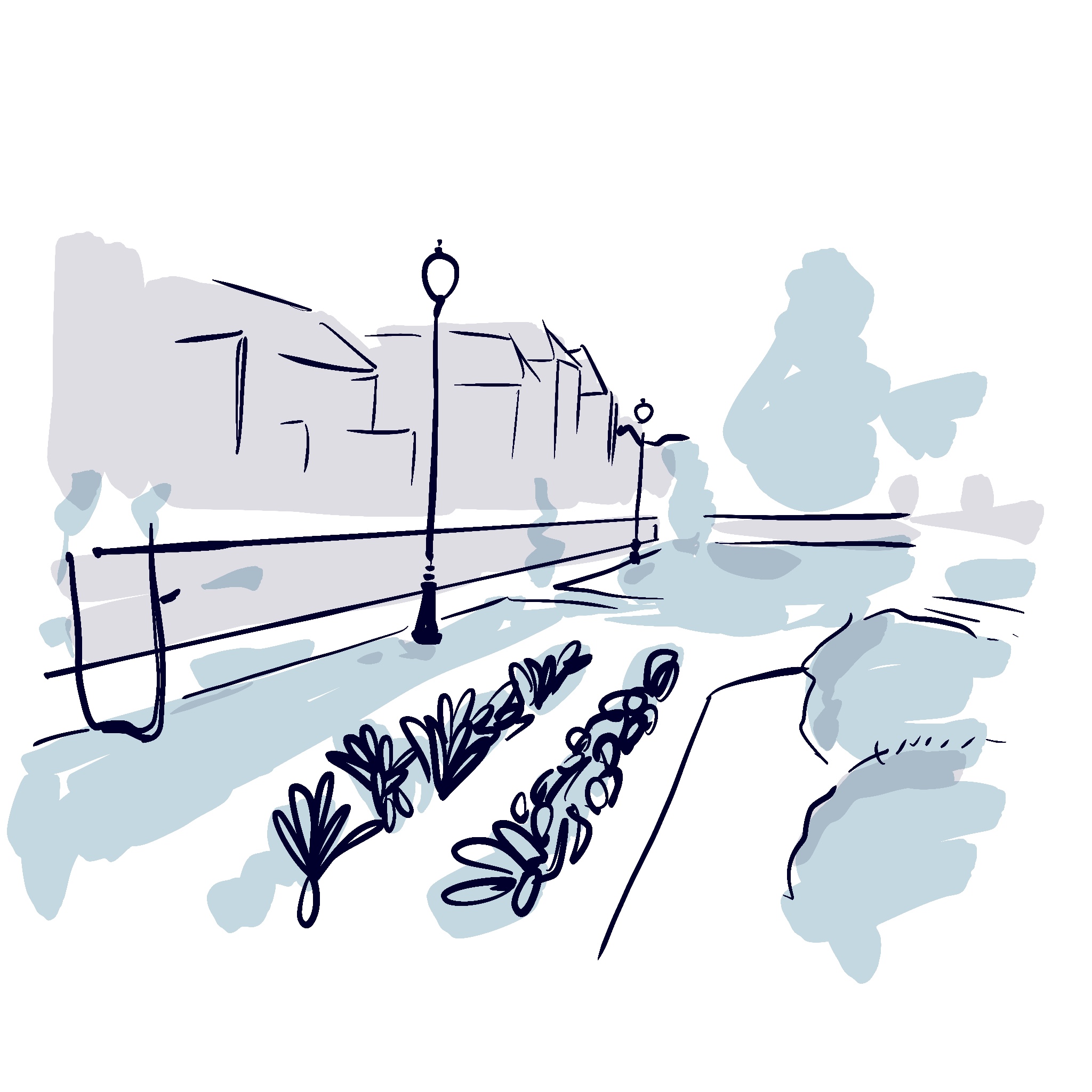
Welcome to the charming Chevannes Garden. Laid out in 1998 on the site of the town's old ramparts, it's perfect for a leisurely stroll in the historic heart of the town. Part of the garden is home to beautiful trees like sequoias and tulip trees, while another part reveals several plant families,
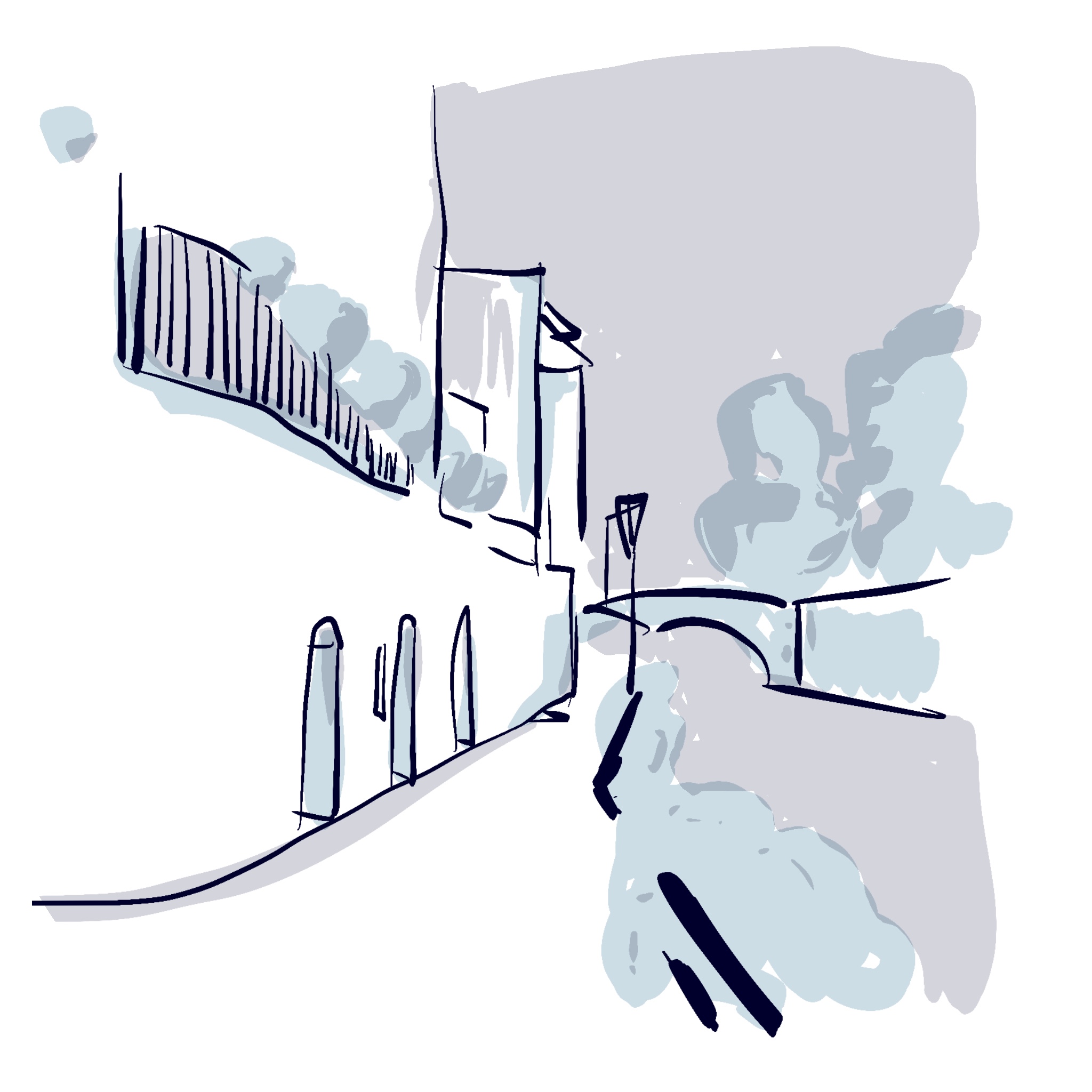
You're now walking along the canal on Pasteur Quay, named after the famous Louis Pasteur, who developed the rabies vaccine and was born not far from here. This is one of Dole's most picturesque spots, perfect for a leisurely stroll.
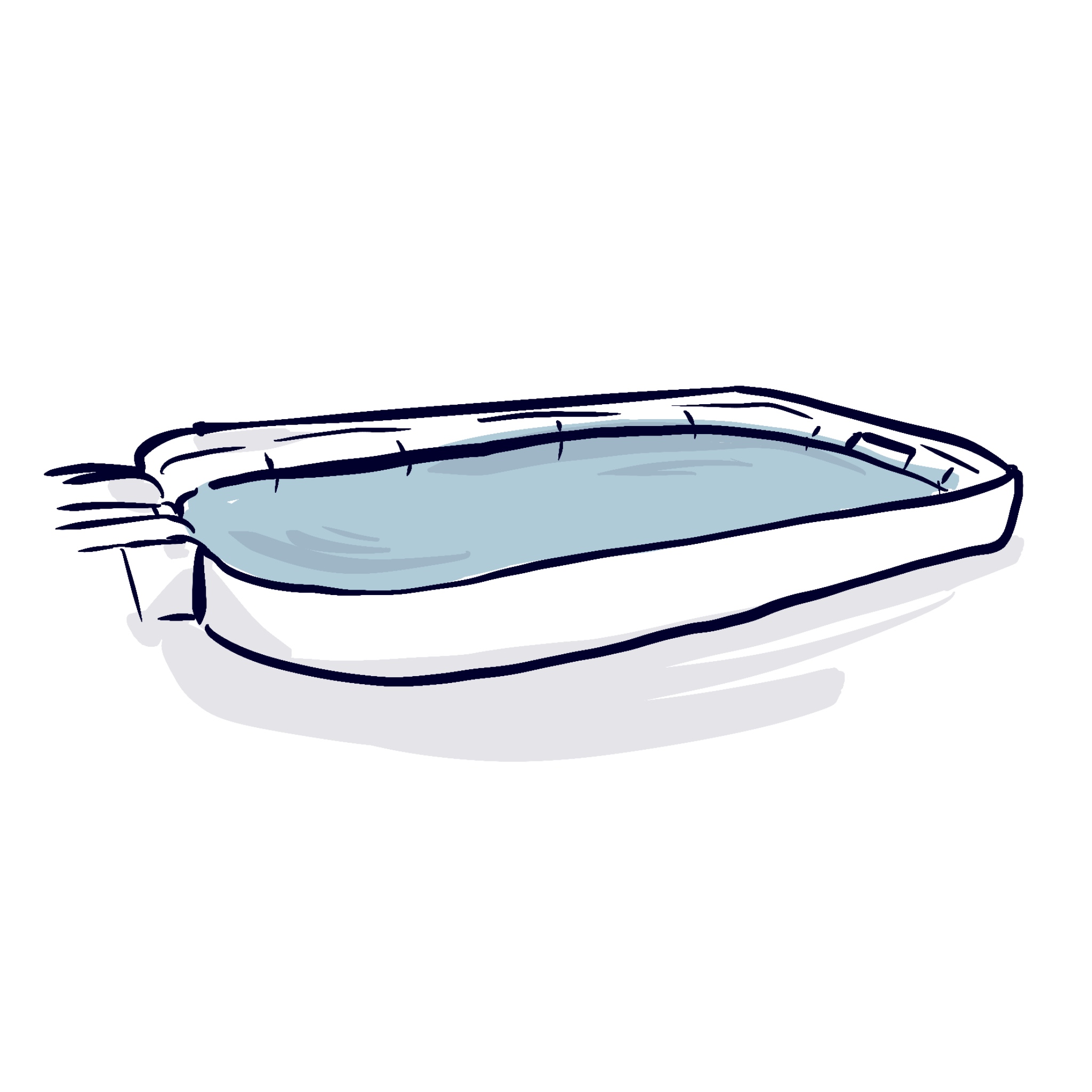
Hidden away in this underground passageway, you'll find the so-called Grande Fontaine, the Big Fountain. It's a spring that was made into a washhouse in the 18th century. The fountain, however, dates from the 13th century, as far back as 1274.
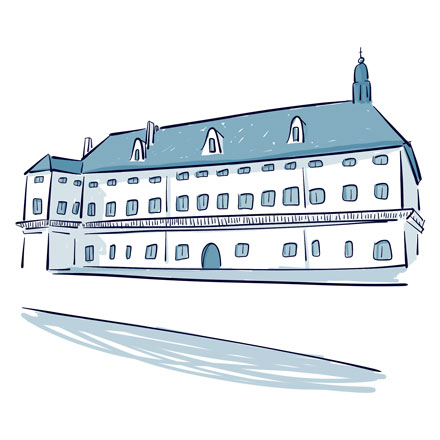
Take a look around. On your left, you have the charming Canal des Tanneurs, and on your right, the impressive Hôtel Dieu of Dole. This former hospital was built in the 17th century and it’s a fine example of Franche-Comté Renaissance architecture.
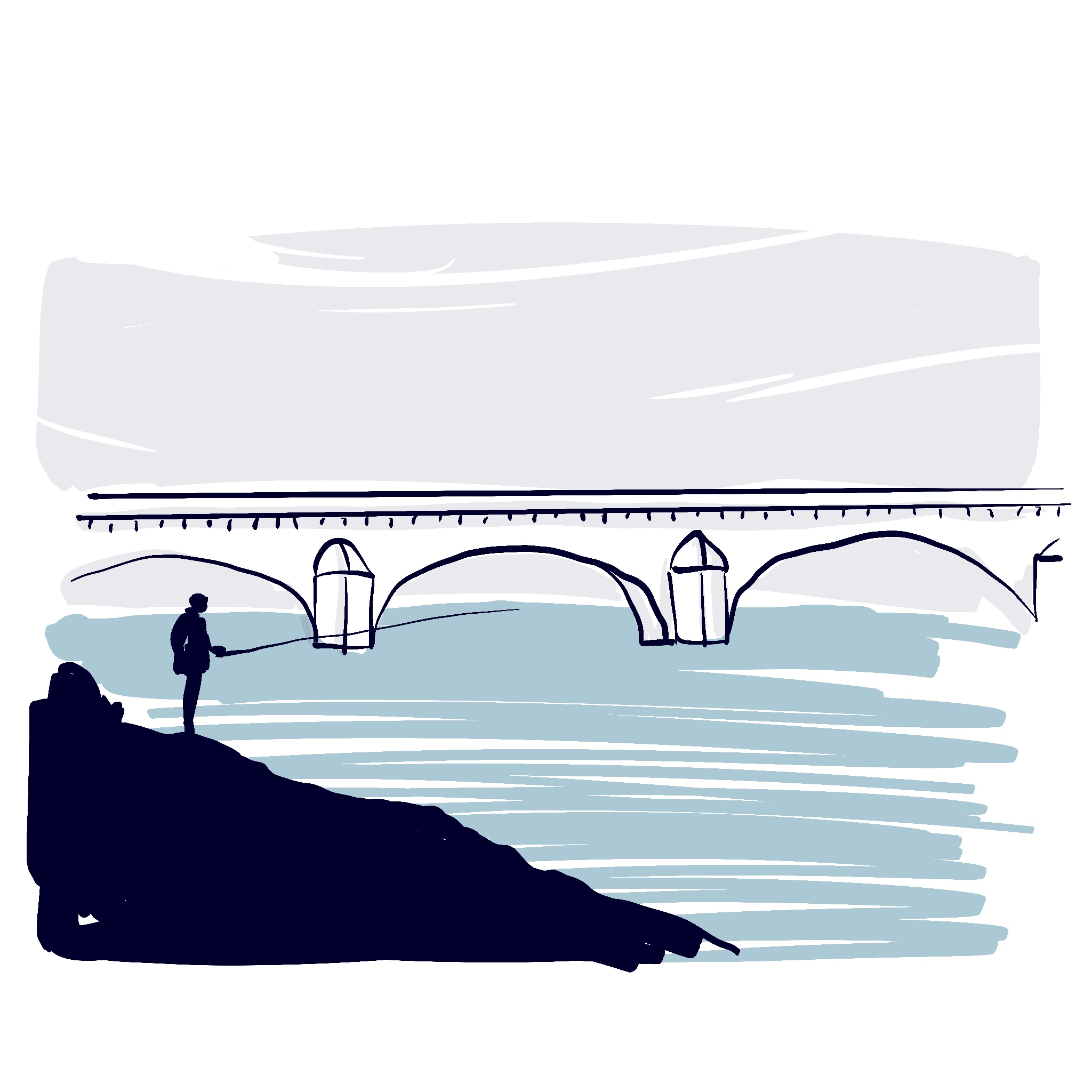
This is where the Rhône-Rhine Canal ends, flowing into the Doubs River, which gave its name to the department bordering the Jura. It is the main tributary of the Saône. It rises in the Jura massif and flows 453 km further into the Saône at the village of Verdun-sur-le-Doubs, 50 km from Dole.
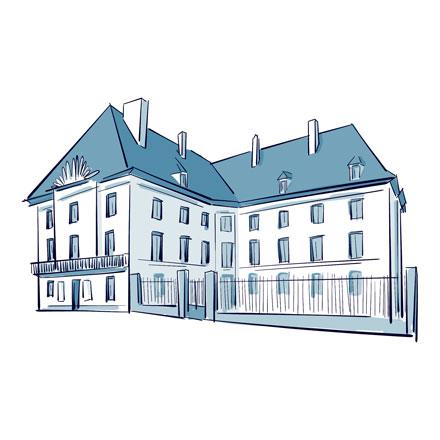
Built in the 18th century, the building before you was once the Officers' Pavilion, part of the former Castle of Dole. It's a fine example of 18th-century Franche-Comté architecture. The Fine Arts Museum was formerly housed in the Collège de l'Arc, a little further into town.
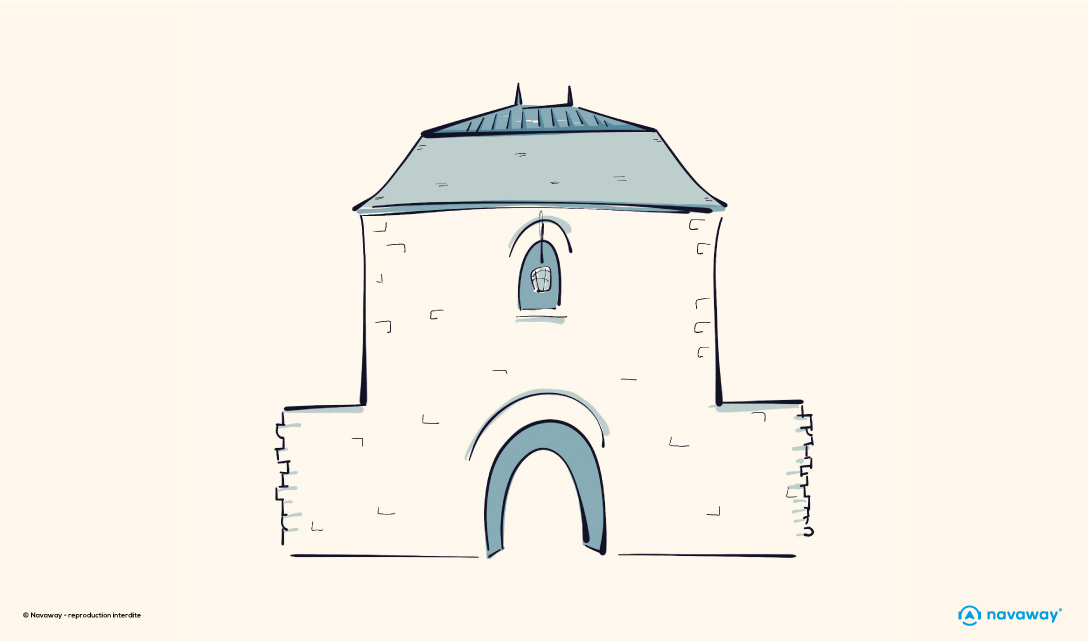
On your right, you'll see the Arans Gate, marking the entrance to the city center. Built in 1551, it was part of the fortifications surrounding the city at the time. Back then, Dole was part of the County of Burgundy and therefore had to protect itself against assailants from the Kingdom of France,
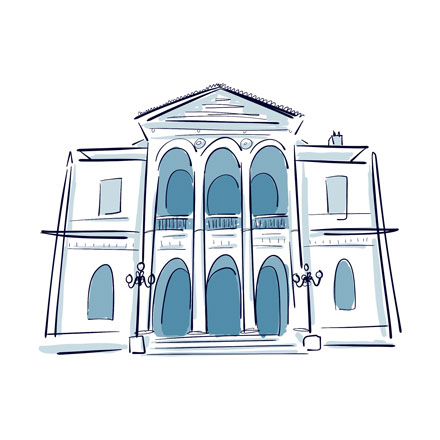
This beautiful theater is the cultural hub of the city. Built between 1840 and 1843, it boasts an Italian-style auditorium and an elegant, imposing neo-classical architecture. In the mid-19th century, the residents themselves called for the construction of a building that could stage plays, concerts and dance performances in a special venue.
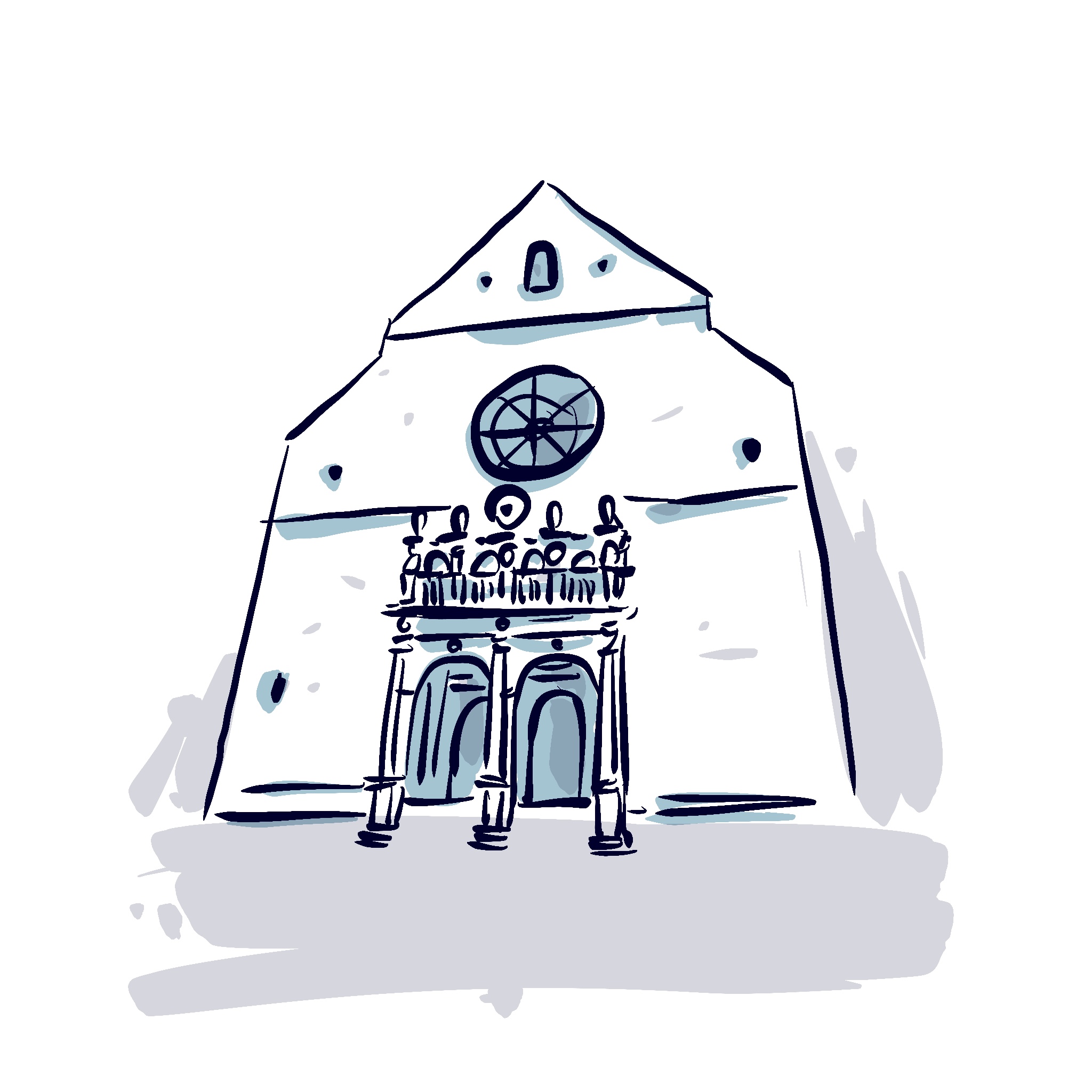
Check out the façade of the Jesuit Chapel of Dole. It is part of the Collège de l'Arc, which was a complex of educational institutions housed in buildings long occupied by the Jesuits. The chapel was built in the early 17th century, in1604, by Hugues le Rupt, a well-known local Renaissance artist.
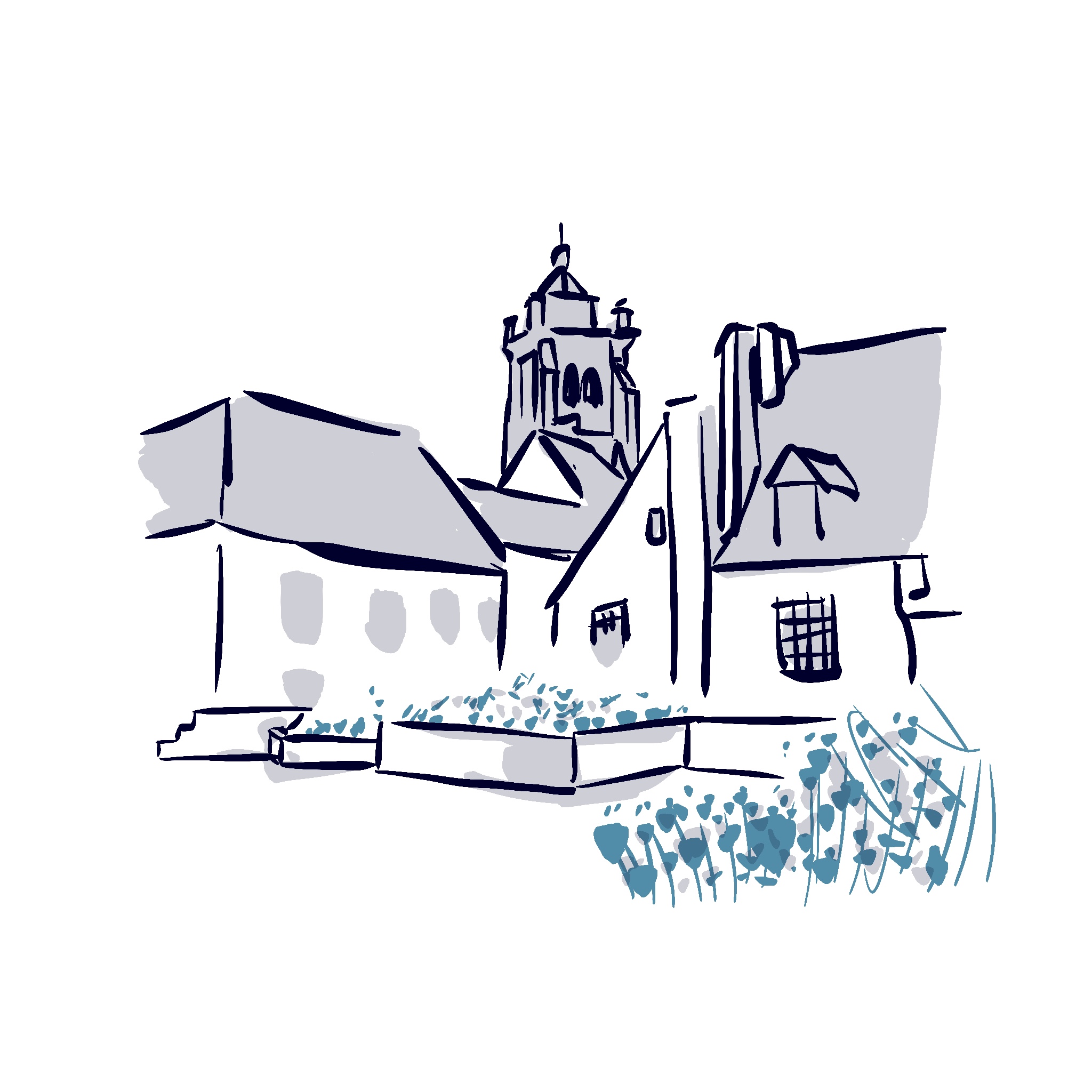
This lovely square, so typical of Dole, is the heart of the city's historic center. From here, you can enjoy views of the medieval alleys that weave through the city, as well as of the Fontaine à l'Enfant, that is, the Fountain with the Child, designed by François Rosset in 1805.

You're now strolling past Dole's Covered Market. This building was constructed in 1883 to replace the town's former Parliament, which had stood here since 1422. It was built of brick, cast iron, glass and iron, and now houses the stalls of a market serving the finest specialties of the Jura department.
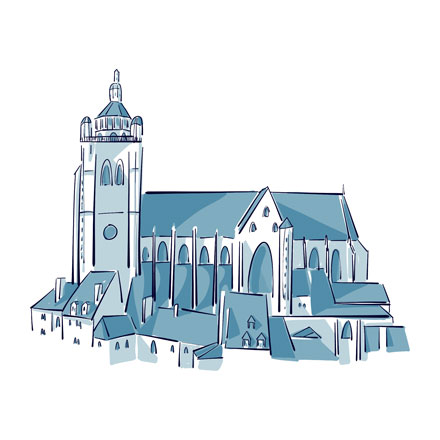
Dominating the city skyline at 73 meters, the Collegiate Church of Notre-Dame is the most impressive building in the former capital of the Jura region. Built in the 16th century, it sports two different architectural styles: Gothic and Renaissance.
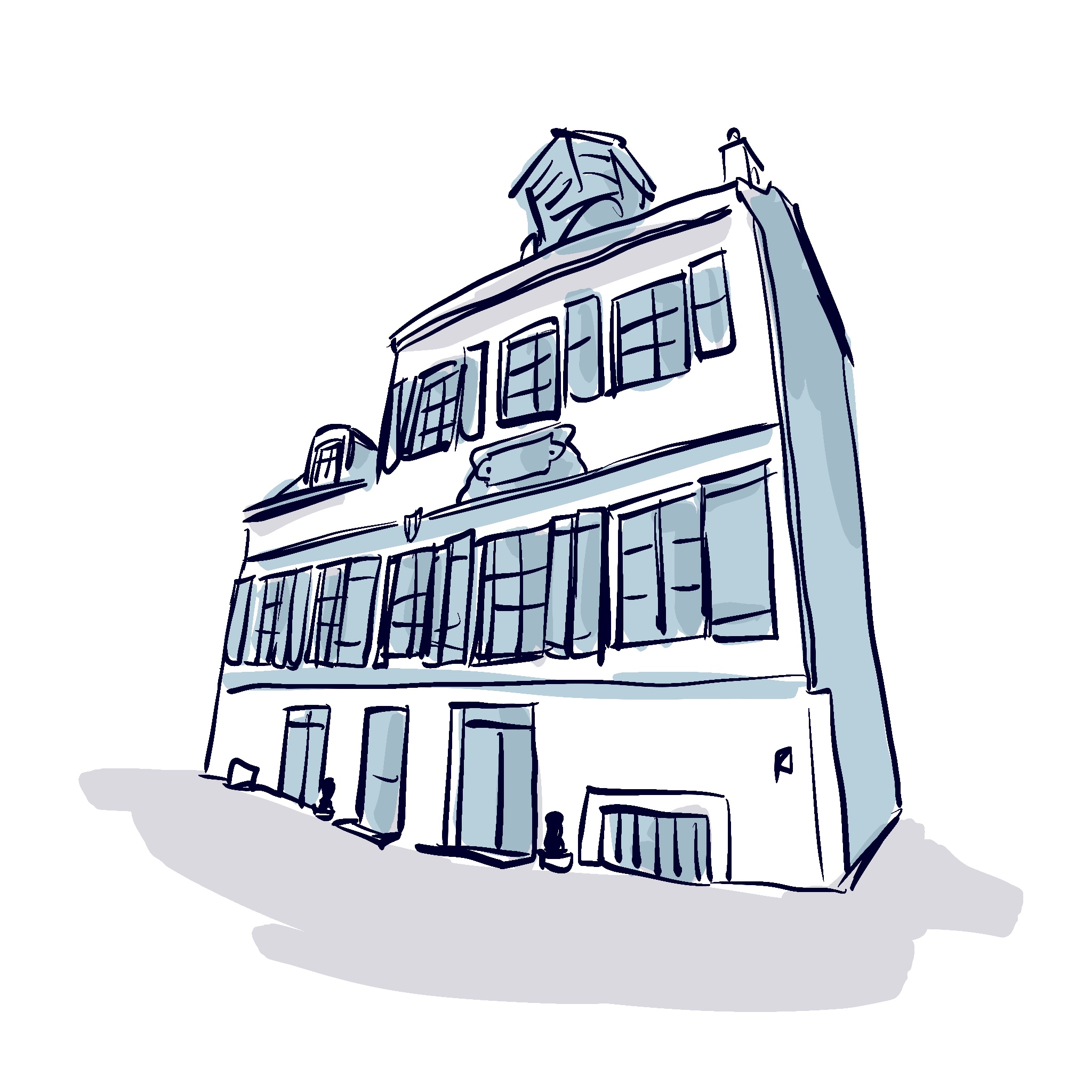
Come meet the famous Louis Pasteur, the French scientist, chemist and physicist who developed the rabies vaccine in 1885. It was one of the first vaccines developed in the history of human medicine, along with the smallpox vaccine, and it paved the way for the development of many others.
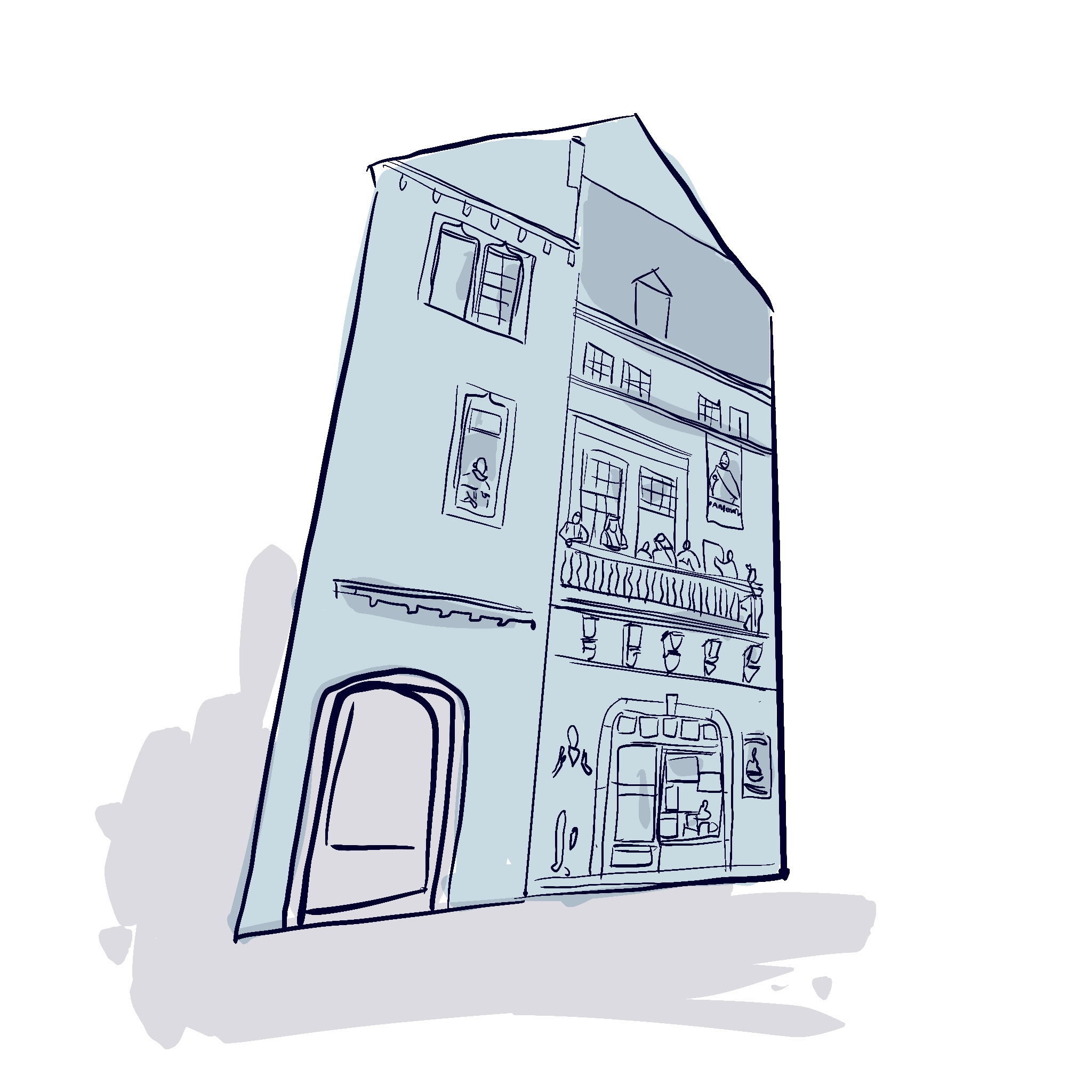
Take a look at the house on your right. It's a beautiful optical illusion! Artists from the Haut les Murs Collective painted this fresco back in 2017. It's right in the heart of the city and depicts some of Dole's most famous historical figures.
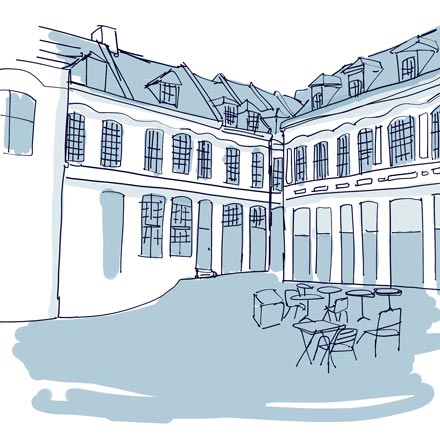
This picturesque square, often described as the prettiest in the city, was not the site of a vast onion market, but of a dungeon whose Latin name, dominium, turned. into dominion and later onions. In the 18th century, the houses around the
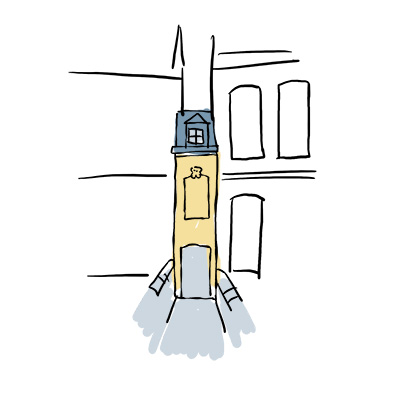
The narrow yellow façade you see is mistakenly thought to be the smallest house in Lille. It is in fact a passage leading to the other side on the Place du Lion d'Or, and has been there since the Middle Ages. It is part of a beautiful group of
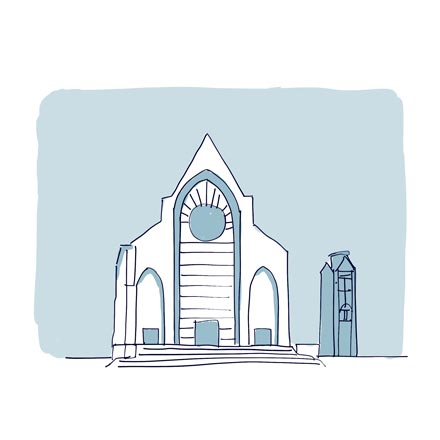
So, yes, I admit, it's not the kind of cathedral you're used to seeing, you know, proudly standing in the centre of a town. But you should know that it looks nothing like what was originally planned! This was the last cathedral to be built in

Before 1750, Lille had 2 quays on the Deûle river, small ports for the exchange of goods. The current Quai du Wault was known as the Petit Rivage (Small shore) on the Haute Deûle (High Deûle) and the other as the Grand Rivage
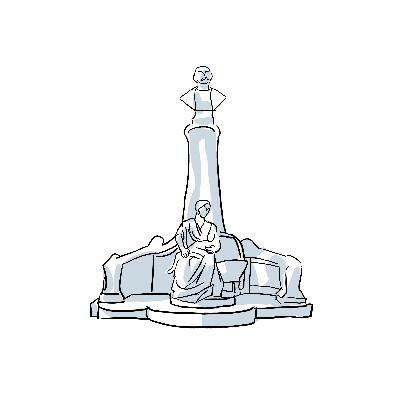
This beautiful white statue of a woman carrying a child is a tribute to the song P'tit Quinquin, undoubtedly the first hit in Lille’s history. If the name sounds familiar, it's because it's a lullaby written in Ch'ti, the dialect of the north
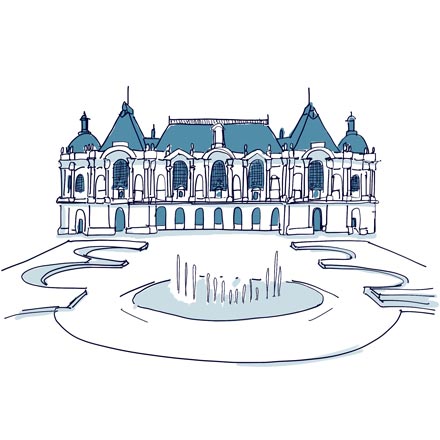
Much larger than the Grand-Place, this square was built after the Middle Ages when the city was enlarged by Vauban. It is the centre of the new perimeter of Lille. Initially called Place Napoléon III.
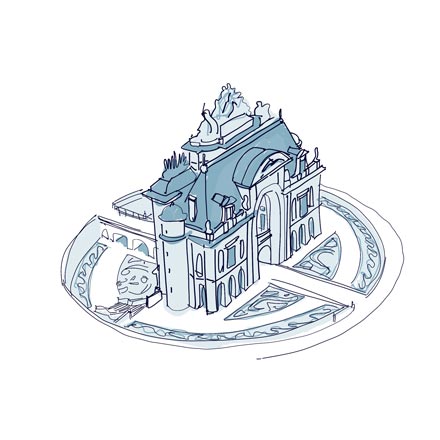
In the 13th century the new fortified walls of Lille, designed after the expansion of the city stood here on this round place. Inittally though the place was not round. You have to imagine that at the time, each addition of a neighborhood and
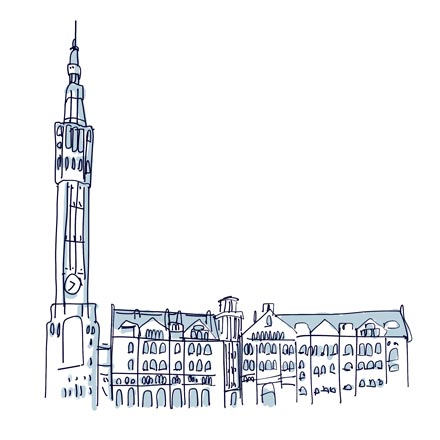
At the beginning of the 20th century, the Belfry, located at the heart of the Saint-Sauveur district, was added like icing to a cake, to the recently completed town hall building. It represents the industrial age of a booming city.
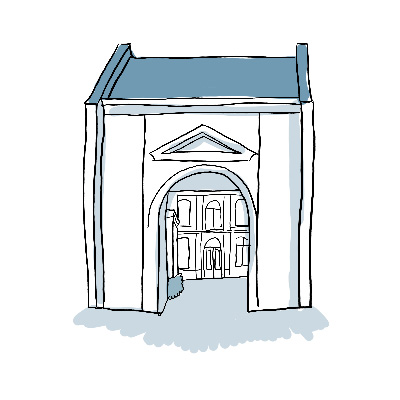
This arch, a listed building just like the hotel behind it, seems a little lost in this more modern part of the city centre. It's actually a piece of history that has survived. In 1620, the Abbot of Marchiennes bought two houses within the town's

Here, it's time for a creepy anecdote. This little medieval-looking cul-de-sac is an old passageway leading to the Brigittine Convent, built in 1604. It has been the scene for some gruesome and frankly bizarre events. It all began in 1608
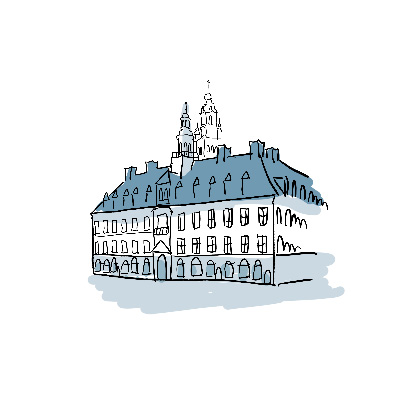
The church of Saint-Maurice definitely had a chance of becoming the cathedral of Lille. Its construction began in the 14th century and was enlarged over the centuries to accommodate the arrival of new worshippers as the city grew.

The Rihour Palace, on the square of the same name, is the only remnant of the city's Burgundian past. In fact, Lille has passed through several rulers, changing hands about every 2 centuries. In the Middle Ages it was part of the Kingdom of
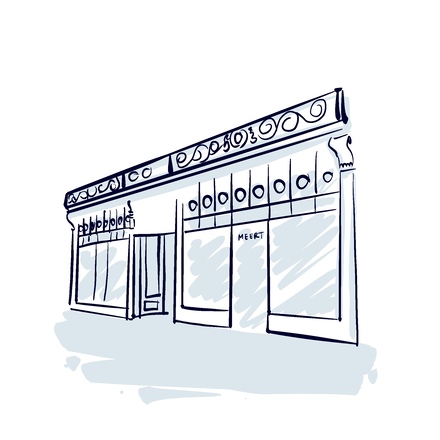
The magnificent golden façade you are about to pass is that of Méert. Much more than just a pastry shop, this lillois institution is one of the oldest pastry shops still in operation in the world. The shop and façade have been listed since 1980.

The Grand Place is the place where you can almost feel the pulse of Lille's city center. It was already the heart of the city in the Middle Ages, being the geographical, economic, social and administrative centre.

Let me tell you a little about the grand building of "La Voix du Nord", with its beautiful gabled façade, in the centre of the square. This is the headquarters of the famous newspaper, which was born underground in 1941 and was the driving
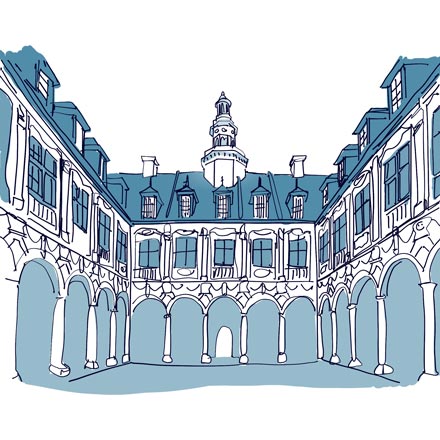
Let's cross the old stock exchange. Considered one of Lille's most magnificent edifices, it was constructed in the 17th century to accommodate the city's merchants' association during the Spanish Netherlands' rule. This era represents Lille's

Did you know that in France, numerous squares are named 'Lion d’or' due to their historical association with hotels? This naming tradition has become somewhat of an inside joke in French culture, as 'Lion d’or,' meaning the golden lion
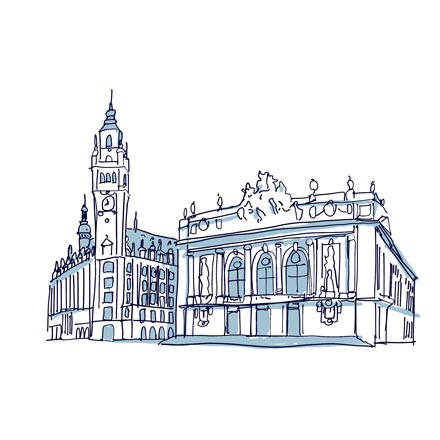
Do take your time as you enter this elegant square, which marks the boundary between old Lille and the central districts. Grab a coffee and sit back, there are so many things to observe and details to study in the buildings surrounding you.
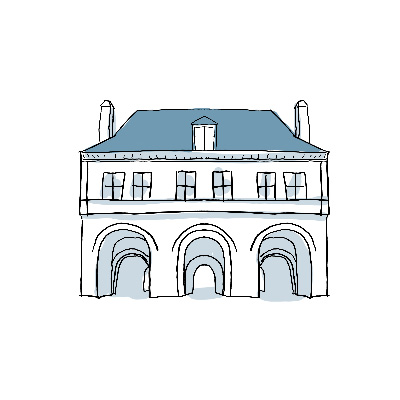
The only street with the hint of a slope in this rather flat town, the Gand street is a lively thoroughfare lined with bars and restaurants. There are a number of listed buildings here. It leads to the old gate of Gand, one of the few remaining
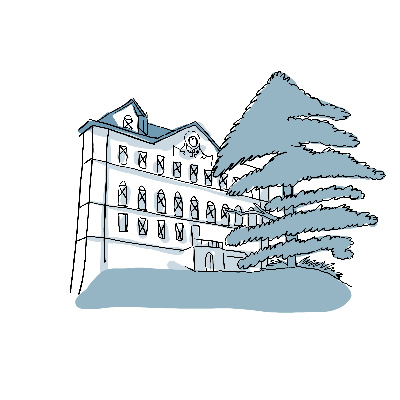
This pretty garden, surrounded by colourful brick buildings, was named the” îlot Comtesse” after Joan, Countess of Flanders. In 1237, she had a hospital built in her own palace, without skimping on the quality or wealth of the furnishings.
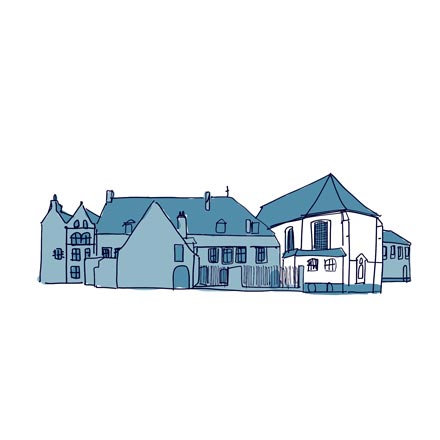
You are now walking up the Rue de la Monnaie, which is the oldest street in town. In the 11th century, it was the main cobbled street linking the two gates of the city. It took its present name with the arrival of Louis XIV, who had the Mint
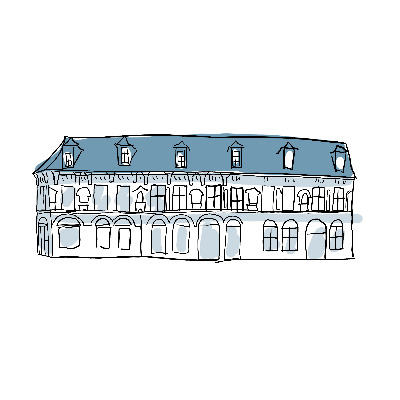
You are now in the beautiful Louise de Bettignie square. However, as we barely ever talk about the people behind the names of all these places, let’s start with a word on Louise. She was an extraordinary woman who, as a spy during the war

These curved piers are fantastic for getting a panoramic view of the city along the waterfront. From here, you have a stunning view of the skyline against Californian sky. Look, to the far left on Telegraph Hill, you can spot Coit Tower.

You were probably wondering when we would finally talk about the Golden Gate Bridge. Well, here it is—now's the time! For a start, If you want to know everything about how to visit it and the best vantage points for capturing a splendid photo of the bridge, head to the advice section of our app where you'll find all the necessary information.

You are now in the heart of Ghirardelli Square. This name might sound familiar to you. As it is a famous american chocolate company, and you find yourself in the middle of their old factory, which has been renovated and transformed into a mall.
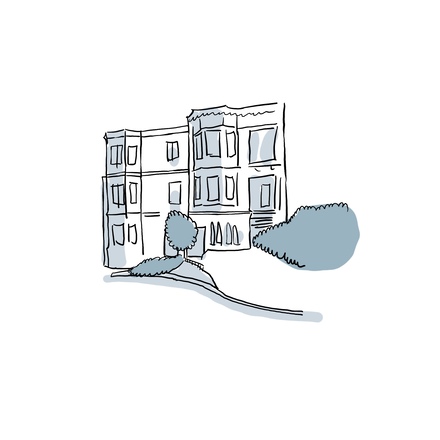
We now find ourselves in the fancy Russian Hill district. The name goes back to the Gold Rush period, in which new settlers found a Russian graveyard up on the hill. Although the corpses were never precisely identified, they were linked with Russian fur traders and sailors, who had settled in Fort Ross.
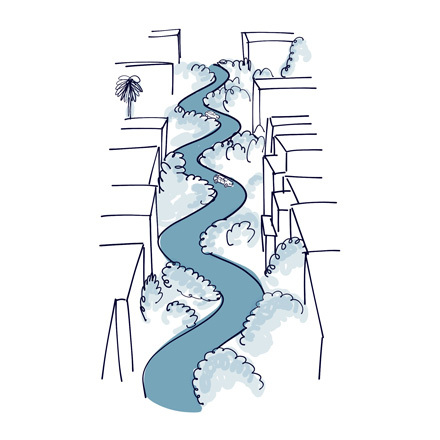
Another must-see in San Francisco, here's its most iconic street, the famous Lombard Street! Did you know before arriving in San Francisco that you were going to see one of the steepest streets in the world? In reality, it's not the steepest street in the world, nor even in San Francisco for that matter!
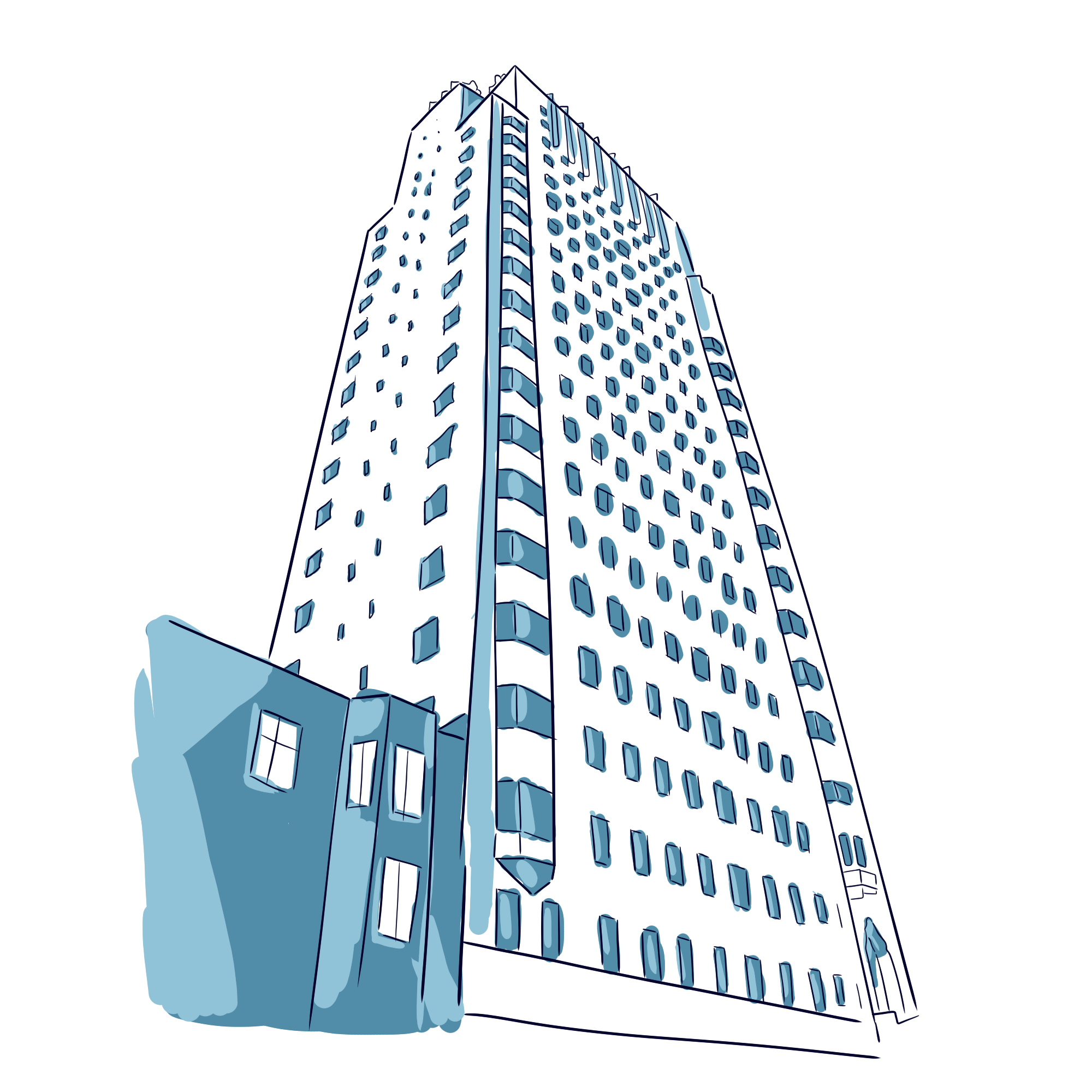
This 20-story white tower at the corner is stylish, isn’t it? That’s the Bellaire Tower, nicknamed “the Jewel”, which stands on top of Russian Hill. This magnificent Art Deco-style building
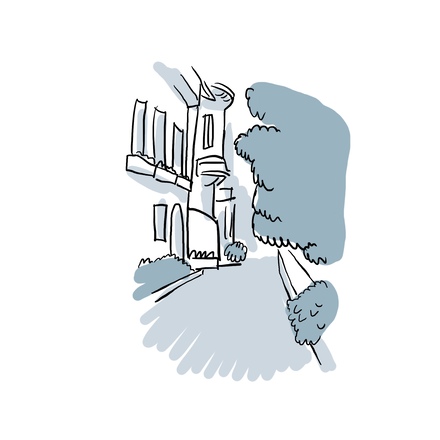
Before going down the beautiful Macondray Lane, I have to tell you that this is the perfect place to take pictures of the famous leaning houses ! Tip of the day, you should frame your shot so that the cars are straight, that way you will have wonderful pictures of dangerously leaning houses!

You now arrive in the Ina Coolbrith Park, named in honor of the famous poet, writer and librarian Ina Coolbrith. She was a key figure of San Francisco’s litterature community.
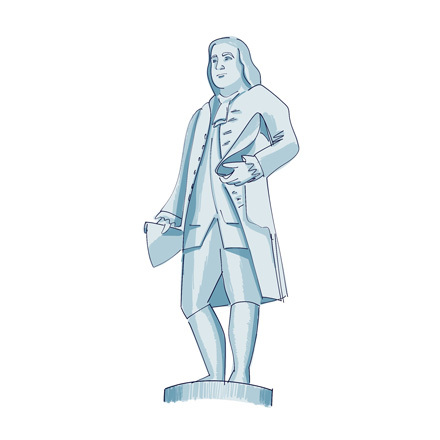
We find ourselves inside of the Washington Square Park, in the heart of the North Beach district. Picture yourself in the 1800s, surrounded by nothing but open land. This land was owned by a mexican farmer named Juana Briones, she grew potatoes and raised cattle.
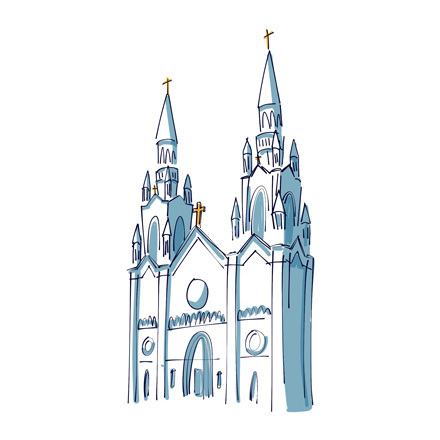
You've seen it from the beginning, here is the Church of St. Peter and St. Paul. It is known as the "Italian Cathedral of the West" despite not actually being a cathedral. It has served as a religious and cultural hub for the entire Italian-American community of San Francisco.

So you're now standing on top of Telegraph Hill, which, as its name suggests, is the hill on which San Francisco's first semaphore was installed before it was replaced by an electric telegraph. It was used to communicate with ships arriving in the bay.
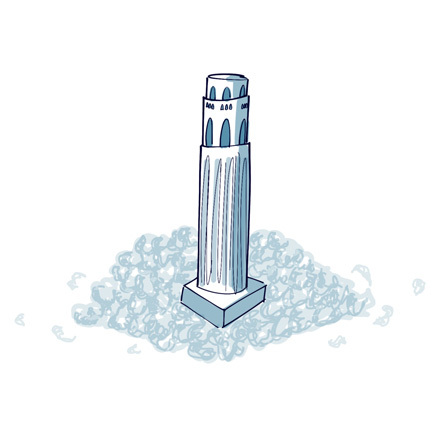
In front of you now rises one of the landmarks of the San Francisco’s skyline, the Coit Tower. If you want a 360° view of the surrounding area, you can climb up to the top of the tower, but the ticket isn't cheap. This beautiful 64-meter-tall tower was built in 1933, fulfilling the wishes of Lillie Hitchcock Coit, to honor San Francisco's firefighters.
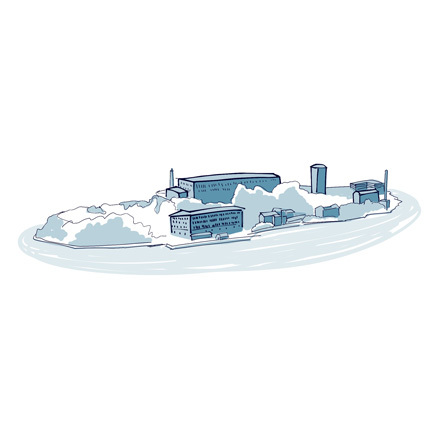
On your right, you'll see Pier 33, where boats depart for Alcatraz, San Francisco's main attraction. As we won't be able to go all the way there with you, I'd like to take you on a tour of the 3D model of one of the world's most famous prisons!

The stairs you are now taking are the famous Filbert Steps. They're the best way to walk from the Embarcadero to the Coit Tower. The three sections of the staircase take you past art deco buildings, through beautiful gardens and offer stunning views of San Francisco and beyond.
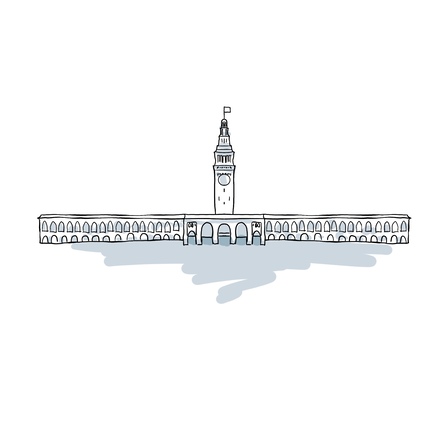
You're walking along what's known as the Embarcadero, quite simply meaning the Pier in Spanish. This long artery along San Francisco's waterfront begins at the Ferry Building, which you may have discovered on our Downtown tour of San Francisco
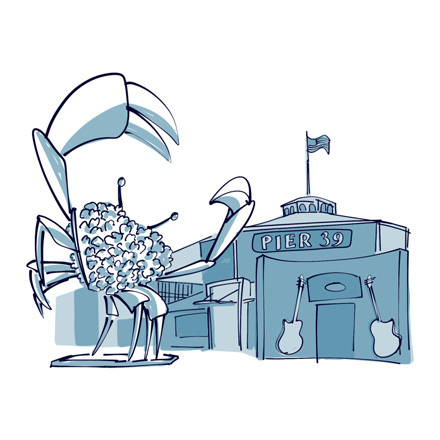
You see it in the big signs, the hustle and bustle, and the statue of that crab welcoming you with open claws, you're arriving at a popular place. This is Pier 39, the most visited pier in the city. In the same vein as Santa Monica Pier that you might know if you're coming from Los Angeles.

You had to come all the way to the end of the pier to have a beautiful open view of the horizon. Moreover, it's an excellent vantage point for observing Alcatraz Island. San Francisco Bay is an estuary.
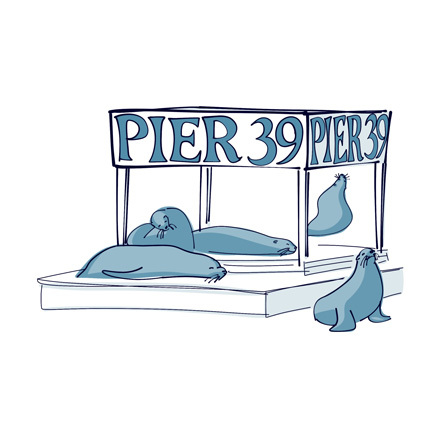
They are definitely the real stars of the pier ! The Sea Lions of San Francisco! They have affectionately been nicknamed "Sea-Lebrities." These elephant seals, also known as California sea lions, are not actally seals, so don't mistake them for seals—they don't like the comparison!

On your left, you'll see Madame Tussaud's Wax Museum in San Francisco. You're certainly familiar with these famous museums, the first of which was created by French sculptor Marie Tussaud in London in 1835. There are museums all over the world, in Berlin, Shanghai, Istanbul, Sydney, Prague, Tokyo, Washington, Vienna and Singapore.

Here's another iconic image of San Francisco: the Fisherman's Wharf sign, marking the renowned fisherman's wharf. So renowned that the entire dock area ended up with the name of Fisherman's Wharf. This is San Francisco's oldest harbor, created when the city's population was booming with gold fever.
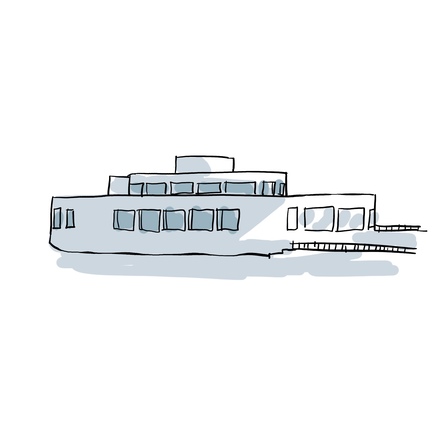
The park you're wandering through right now, just in front of the beautiful beach, is part of San Francisco Maritime National Historical Park. It is composed of The Aquatic Museum, housed in the large building behind you, which used to be a bathhouse
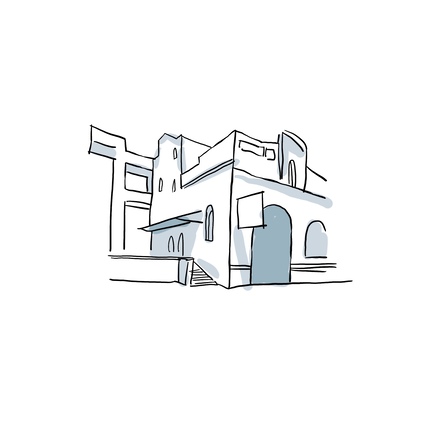
You're now walking through Cannery mall. This large red-brick building is a fine example of the reuse and renovation of industrial space.
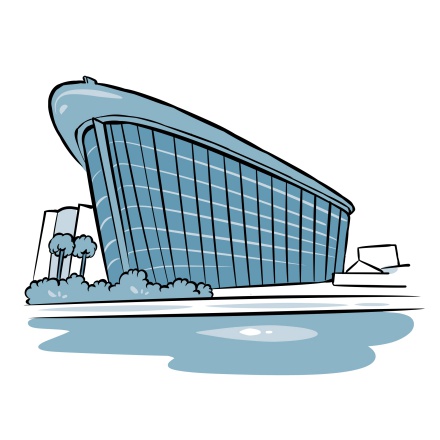
Here we are at the Dubai Opera — one of the city’s most striking landmarks. This impressive venue hosts a wide range of cultural events, from theater, opera, musicals and concerts, welcoming up to 2,000 guests. The seating can be partially removed to transform the space into a vast hall for receptions, weddings, conferences, or exhibitions.

You’re now in one of the most popular spots in Dubai — a favourite among locals who work nearby and visitors drawn in by the incredible view of the Burj Khalifa. This open square is lined with cafés and restaurants, where you can sit back with a drink or a bite to eat, while taking in the world’s tallest building in front of you.

In the basin in front of you, a stunning sound, light, and water show takes place every 30 minutes each evening. All this unfolds while you’re surrounded by Dubai’s tallest buildings, including the Burj Khalifa. It’s similar to the famous fountain show in Las Vegas— except that it’s much bigger.

You’ve probably already spotted the name EMAAR everywhere — on apartment buildings, shopping malls, and even on the city’s skyscrapers. It’s hard to miss! That’s because EMAAR is the largest real estate developer in Dubai — and one of the biggest players in the world.

This is one of the most breathtaking views you’ll get of the Burj Khalifa. This walkway leads straight to the Dubai Mall — the largest shopping center in the world — and offers a picture-perfect view of the tallest building on the planet. It’s an ideal spot to snap some iconic photos.
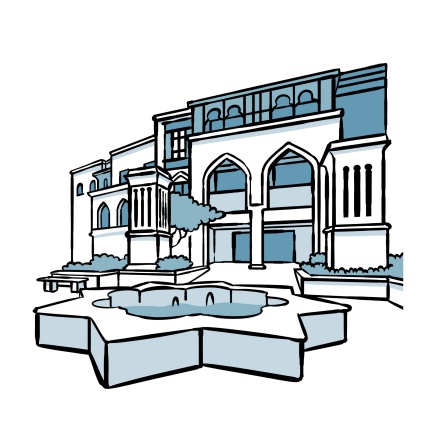
On your left, you’ll find the Souk Al Bahar. Dubai is known for its many souks — these are traditional markets you’ll often spot in older parts of the city, like Bur Dubai and Deira. If you're interested in exploring Deira, one of the city’s oldest neighbourhoods, check out our separate tour that guides you through it.
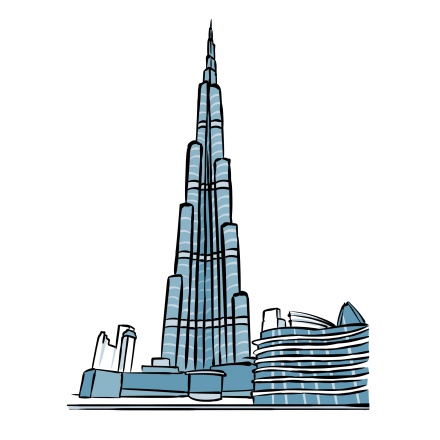
Rising to a jaw-dropping 828 meters, the Burj Khalifa has been the tallest building in the world since it opened in 2010. To give you some perspective, the Empire State Building — one of the most iconic skyscrapers in history and the tallest for nearly 40 years — stands at “just” 431 meters.

On your left is Old Town Island, a collection of hotel complexes and apartments built in a traditional Arabian architecture style. A tribute to Old Dubai, the buildings replicate the look of gypsum plaster, clay, and sarjool, the materials used in the 20th century to build the region’s old villages.
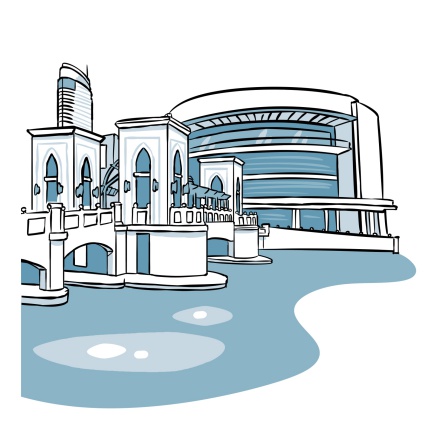
Next to the world’s largest fountain and tallest tower, what else could you expect but the world’s biggest shopping mall? Covering 1.1 million square metres—the equivalent of 50 football pitches—the Dubai Mall is home to around 1,200 shops, including the largest gold souk in the world and 450 high-end fashion boutiques in the Fashion Avenue.
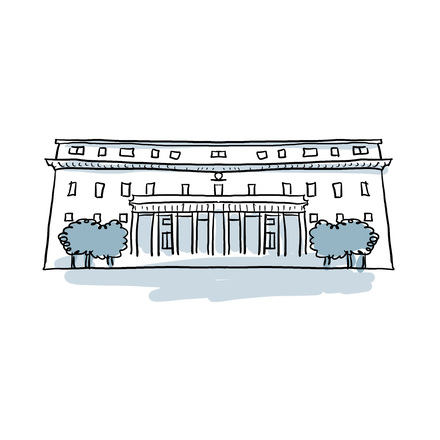
Voici la jolie place de Verdun. On entre ici dans un autre quartier de la ville, conçu avant celui de Mazarin. Il a en effet été aménagé à partir de 1583, dans le but d’étendre la ville, qui a connu un essor considérable lors des siècles précédents.

Before we move on to the church of St. Mary Magdalene, let's take a look at the square we're on; it's known as Place des Prêcheurs, the Preachers' Square. It owes its name to an old convent that stood nearby.

This little square, just a stone's throw from the City Hall, is home to Aix's Provençal market twice a week. Here, you'll find stalls piled high with fresh produce, local cheeses and all sorts of regional specialties!

Welcome to the Town Hall square, home to the Clock Tower, one of Aix's oldest monuments.

On your left is the Carders' Forum, one of the city's main squares. Feel free to take a little detour to explore it and soak up its pleasant, lively atmosphere.
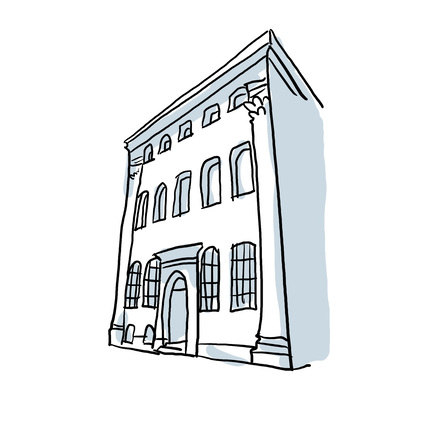
Just to your left, you'll find the Museum of Old Aix. It is housed in the former Estienne de Saint-Jean townhouse, built in the 17th century, most likely by architect Pierre Puget.
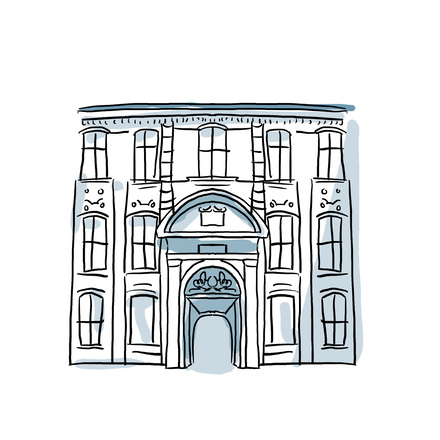
Moving on to the right, you'll see a grand building at the far end of the square; it's the former Archbishop's Palace, listed as a historical monument. Come closer and take a look.

Standing before you is the beautiful Saint-Sauveur Cathedral. It was built on the site of the ancient Roman forum, the main square of the ancient city once known as Aquae Sextiae.
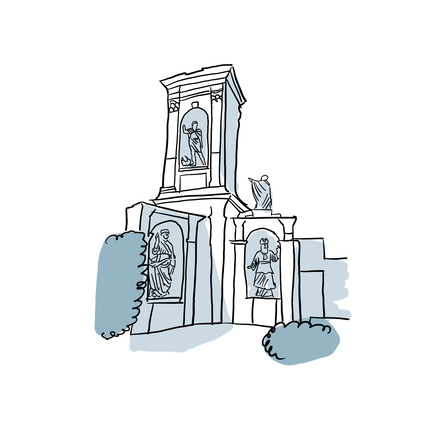
Just to your right, you'll see a funerary monument built by Joseph Sec, an 18th-century local bourgeois. He was a Jacobin, a member of the Grey Penitents brotherhood, a wood merchant and a skilled carpenter.
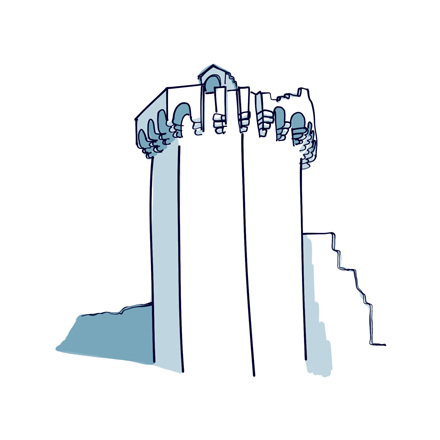
The tower before you stands as a true testament to the city's medieval past; it's all that remains of the ramparts that protected Aix-en-Provence in the Middle Ages.

Just off to your right, there's a little street that might not look like much at first glance. But guess what? The famous Émile Zola spent some of his life here.

Turn around now and you'll see the imposing Vendôme pavilion. We owe this stunning edifice to Louis de Mercoeur, Duke of Vendôme and Governor of Provence. He built it back in 1664 for the woman he was madly in love with, Lucrèce de Forbin Solliès.
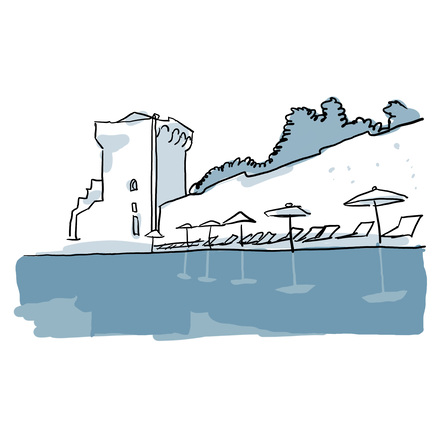
Aix-en-Provence is all about water! The city's been famous for its hot springs since way back in Antiquity.

Welcome to the charming Tanners' Square. The centerpiece of the square is a beautiful fountain – well, no surprise there! Come take a closer look.
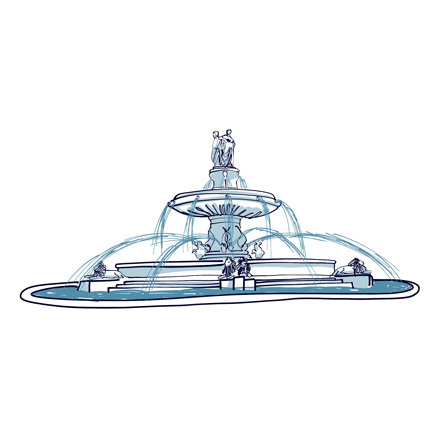
Welcome to General de Gaulle Square! Here, you'll find Aix's most famous landmark, the Rotunda Fountain.
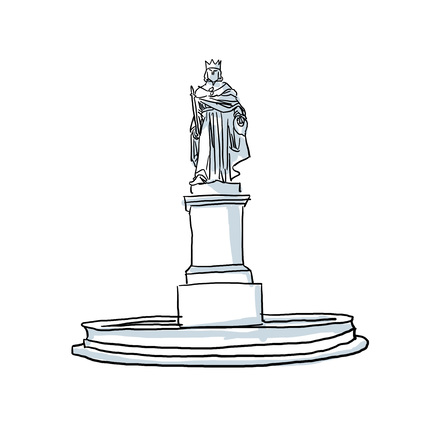
Cours Mirabeau isn't just any street; it's one of Aix-en-Provence's busiest thoroughfares. It was laid out in the 17th century, right on top of the old ramparts, as a promenade for the city's aristocracy.
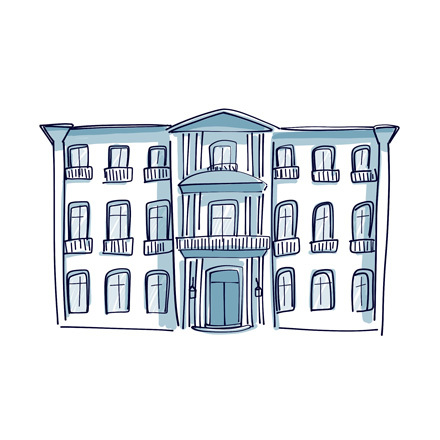
Before you is the Hôtel de Caumont, easily one of the most beautiful private mansions in the city. It was built between 1715 and 1742 by architect George Vallon, at the request of François de Rolland, then President of the French Court of Auditors.

Welcome to the Square of the Four Dolphins, home to the fountain of the same name, designed by Jean-Claude Rambot and Pierre Pavillon in the 17th century.
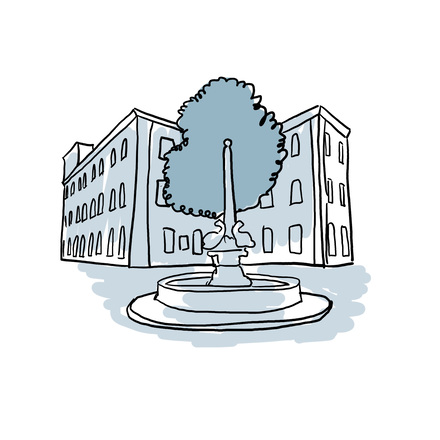
The Mazarin district dates back to the 17th century. It’s all thanks to Michel Mazarin, the city's archbishop and brother of Louis XIV's prime minister, who dreamt of expanding Aix-en-Provence southwards.
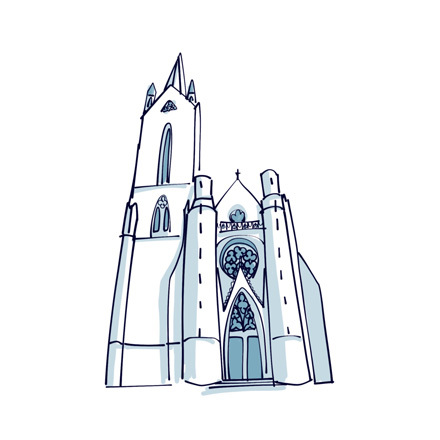
Built in the 13th century, most likely in the 1270s, the church of Saint-Jean-de-Malte is the very first Gothic church in all of Provence, even predating the Mazarin neighborhood!
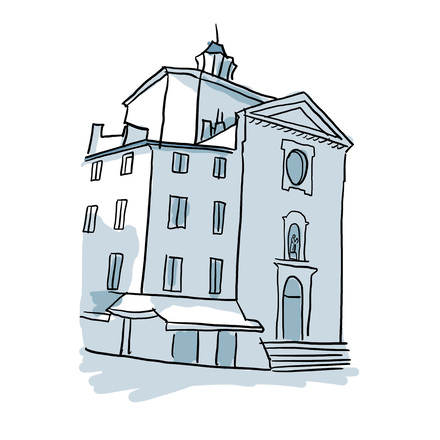
Forbin Square marks the end of the Cours Mirabeau. It was laid out at the same time as the latter boulevard to become one of the city's central squares.
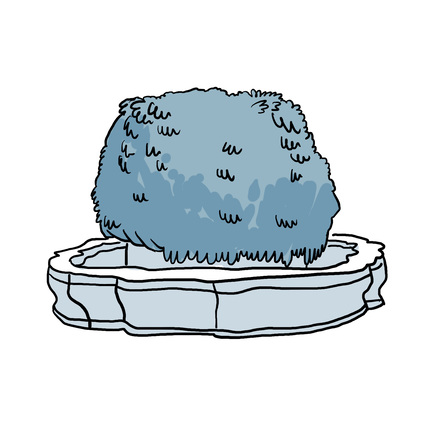
This fountain is no ordinary sight! It's called “Hot Water Fountain”, or more commonly, the “Mossy Fountain”. Can you tell why?
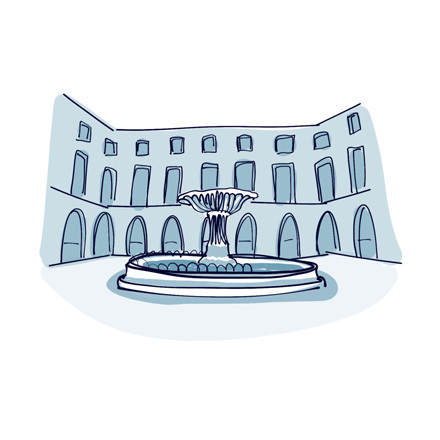
Welcome to Albertas Square. There's yet another fountain here, but this one is well worth a closer look.

You're looking at yet another private mansion, the Hôtel Boyer d'Éguilles, named after a former member of the Aix-en-Provence parliament.
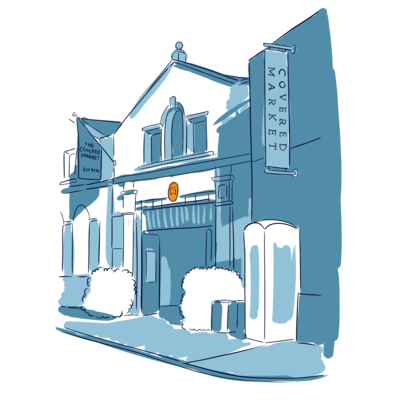
Every visit of a city is incomplete without exploring its gastronomy and local products. Here you have Oxford's Covered Market, a permanent indoor market. It dates back to 1774 and was opened two years after the existing market committee received a significant amount of money to build 20 butchers' shops.
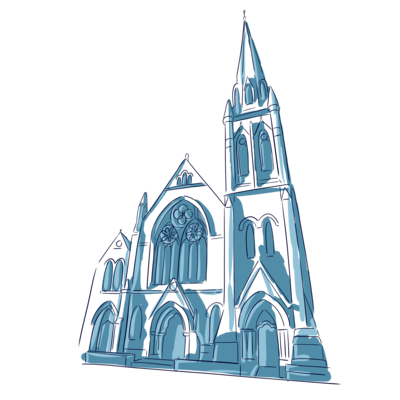
The charming St. Michael's Street leads you straight to the Wesley Memorial Church. You may not be familiar with the Wesley brothers, but they are the ones who founded the Methodist Church. In 1729, a handful of students began gathering in Oxford to pray, study, and express their Protestant faith through compassionate social actions.
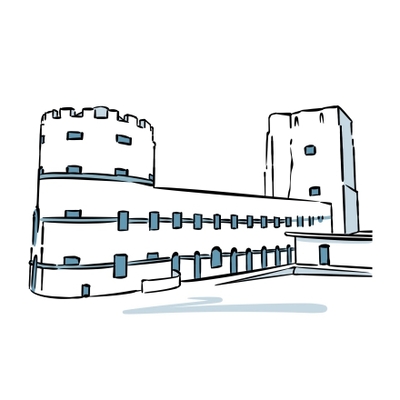
The city of Oxford may be primarily known for its incredible university, but it has many other historical treasures to reveal to you. Perhaps the most important is this Romanesque castle, which tells a whole chapter of the city's history.

Walk along the Castle Mill stream for a littke whike, It's a branch of the Thames and more exactly a backwater. This part of the river has little to no current. We're only using it between the two bridges, so you can get a feel for the place
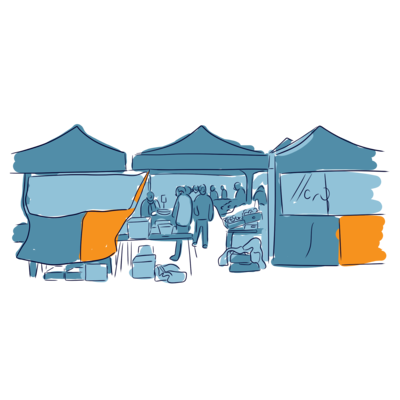
If you're lucky enough to be in Oxford between a Wednesday and a Saturday, then St. George's Square must be bustling with activity. Sorry for those who came on a Sunday, Monday or Tuesday, but you'll have to come back later if you want to see the Gloucester Green Market.
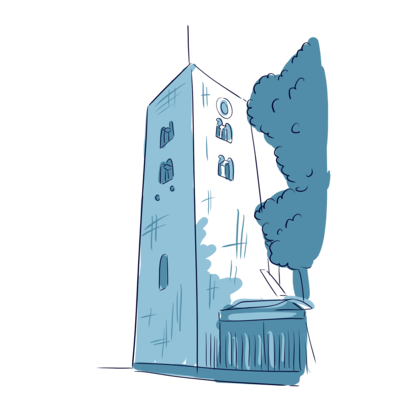
Here's another of Oxford's iconic towers, and you can guess that it's much older than anything you've seen before. It was built around 1050. It is part of a Romanesque church called St. Michael at the North Gate, it takes its name from the fact that it stands on the site of Oxford's North Gate when the city was surrounded by a wall.
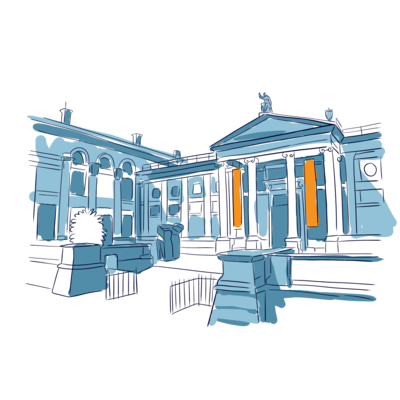
The imposing neoclassical monument in front of you, with its 4 large columns supporting the pediment, is the famous Ashmolean Museum. It was Britain's very first public museum! The first building was built in the late 17th century to house the cabinet of curiosities

Look up, towards the bell tower of Exeter College on your right. It looks as if a naked man, is standing on the roof. It's a strange feeling, and an original statue to say the least. It's the work of English sculptor Antony Gormley, now considered one of the leading artists on the contemporary scene.
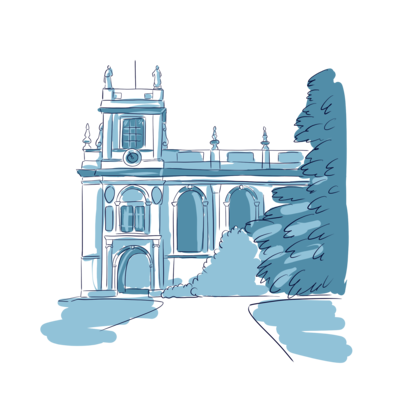
On your left here, you will find Trinity College. Unlike many colleges in Oxford, this one isn't entirely hidden, and you can admire its gardens and the external architecture of its buildings from where you are. The college was founded in the 16th century, during the English Reformation
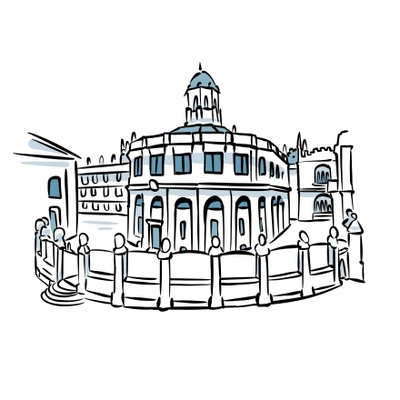
On your right, behind the grinning statues resembling Roman emperors, you’ll find the famous Sheldonian Theatre, one of Oxford's most emblematic historical monuments. Built in the 1660s, it was commissioned by Oxford University and named after the Dean in office at the time: Gilbert Sheldon.
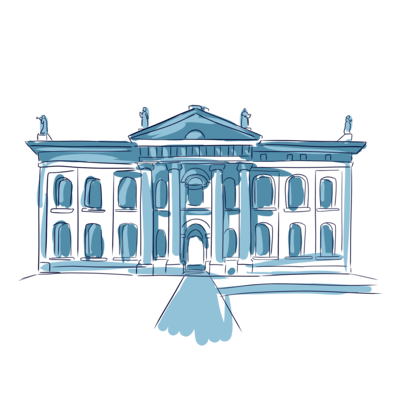
The neoclassical building next to the theater is the Clarendon Building. As a matter of fact, the theater originally had two functions. It was used for graduation ceremonies, but it also housed the printing press of the Oxford University Press.
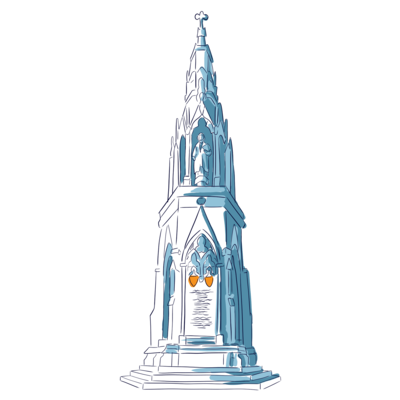
This elegant stone monument, which could easily be part of a religious building, commemorates the 3 Oxford martyrs: the bishops of London and Worcester, and the Archbishop of Canterbury. The monument was built 300 years after the events of the English Reformation.
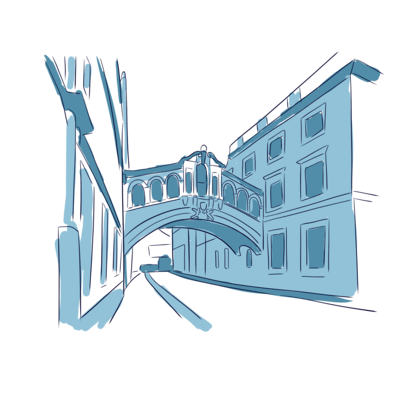
Yes, I know what you're thinking, it's like all of a sudden you feel like you are in Italy. Venice, to be more precise. The bridge you see in front of you, even though it looks exactly like the Rialto, is known as the Bridge of Sighs.
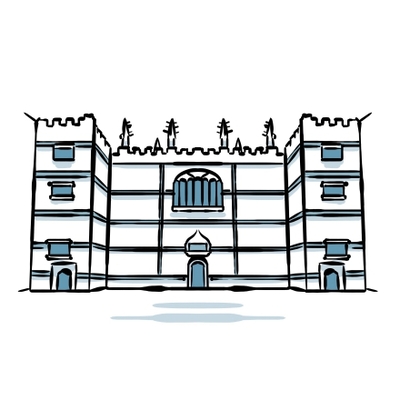
You're now in the heart of the Bodleian library. A highlight of your visit to Oxford. You immediately feel the presence of the place and the strength of its past. It's one of Europe's oldest bookshops, and with over 13 million printed articles, it's England's second-largest library.
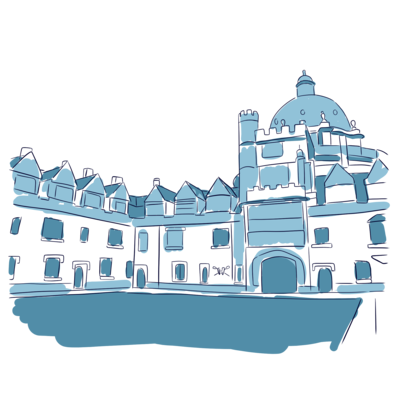
The imposing facade you see here belongs to Brasenose College, formerly known as Brazen Nose College. It is one of the 38 colleges that make up the University of Oxford. It was founded in 1509 by a lawyer and a bishop and built on the site of Brasenose Hall, a medieval Oxford university hall.
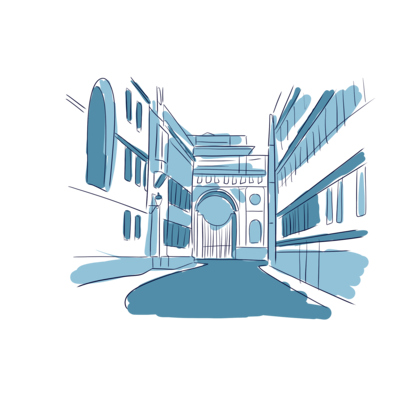
Oxford's cobbled streets reveal heritage treasures at every turn. Earlier you passed the magnificent Oriol College, founded in 1324 by King Edward II of England, making it the city's first college with a royal foundation. You may also have seen the entrance to the Corpus Christi College

Oxford's historical center is a melting pot of history in which you can't take two steps without coming face to face with an important new monument. Here, it's the University Church of St. Mary the Virgin. It really is the city's focal point, for it was around this university chapel that Oxford University developed.
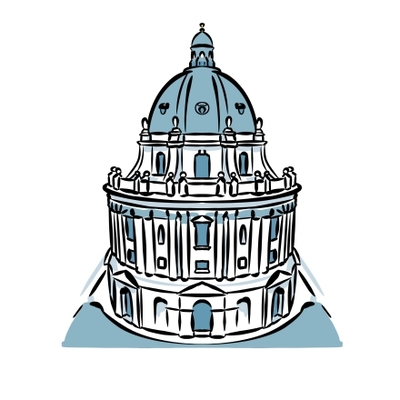
Another emblem of Oxford is the Radcliffe Camera. Or Rad Cam, from the Latin camera, meaning chamber. It's a neo-Gothic building constructed in the 18th century by James Gibbs to house the Radcliffe Science library, Oxford University's main scientific library. It's one of the city's most photographed buildings
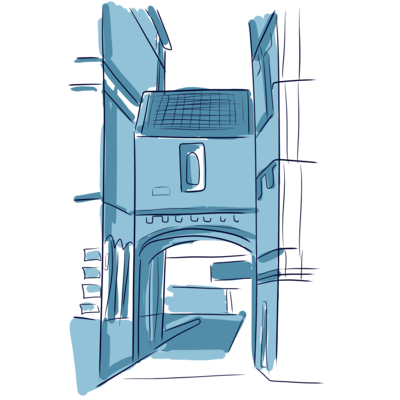
The narrow lane you're now walking down is called Logic Lane. It was previously known as Horseman Lane because it led to an old mill powered by horses. But Logic Lane primarily runs alongside University College, known to be the oldest in Oxford and for having educated, among others, Bill Clinton and Stephen Hawking!
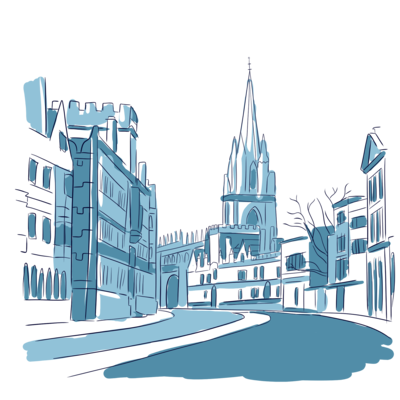
You are now joining High Street, which is the busiest street in the city, lined with beautiful monuments. The magnificent facade of Queen's College, was built in honor of a queen, but which one? It is Queen Philippa of Hainault, the wife of King Henry III.
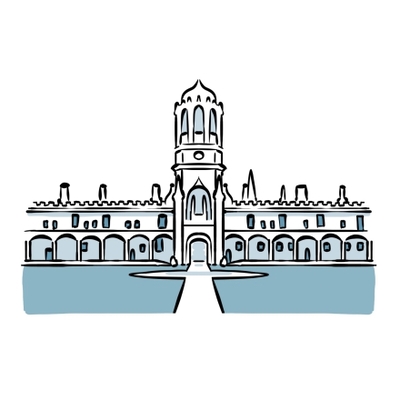
You've finally arrived in front of Oxford's undisputed star, its largest and most famous college, from which no fewer than 13 English Prime Ministers have graduated, the famous Christchurch College. If you have to visit only one, this is the one.
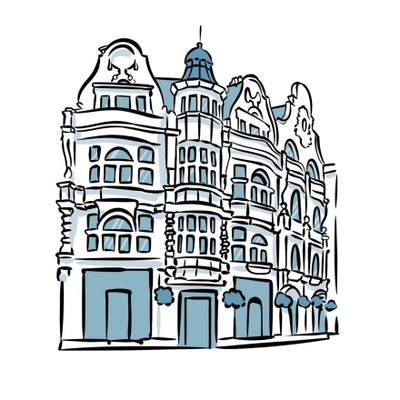
This is Oxford Town Hall. The beautiful stone façade you are now looking at reveals the third building designed to house Oxford's town council. The very first, already on this site, dates back as far as 1290, and was later replaced by a new building, designed by Isaac Ware in the Italian style in 1752.

You're now standing in front of the Carfax Tower. It is sadly everything that remains of the church of Saint-Martin, which was the town's main parish church since 1122. Seven centuries later, as you can imagine, the town has evolved.

You'll now reach Saint Aldate's, formerly Fish Street and renamed after the saintly bishop of Gloucester. Look for the store with the red door at number 83. It's called Alice's Shop and is much more interesting than just a souvenir store.
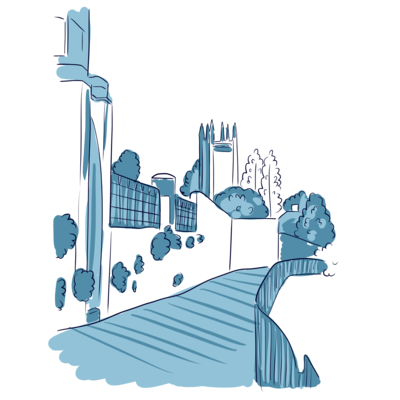
You are now walking alongside a portion of the 13th-century defensive wall that once surrounded the medieval city. As you walk up on your left, you'll see what's known as a bastion. It was built protruding from the wall so that those inside could shoot at attackers coming from all directions.
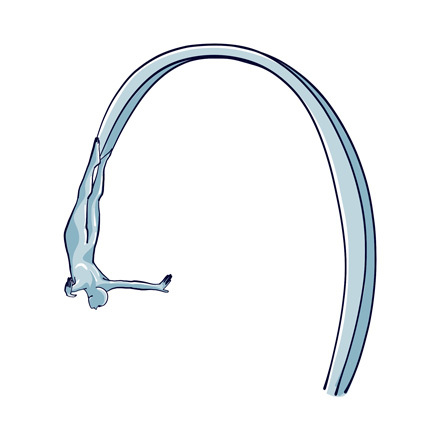
Hovering above the water, “La Plongeuse” is probably Mont-de-Marsan's most famous statue. And trust me when I say that this city knows a thing or two about this artistic discipline! In 2016, the city held its tenth annual “Mont-de-Marsan Sculptures” festival,
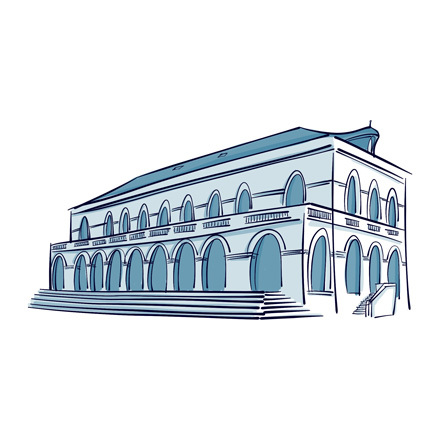
“Le Molière” Municipal Theatre is the beating heart of Mont-de-Marsan's cultural scene. From classical concerts to dramatic plays, it's the go-to place for entertainment. The first cultural and musical performances were staged in a room in the Barnabites convent,
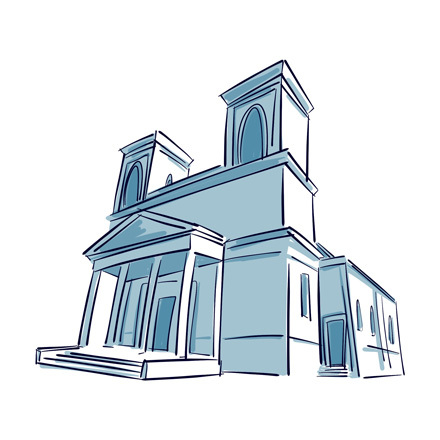
The Madeleine Church before you is the largest religious building in the city. When Mont-de-Marsan was founded around the 12th century, it chose Saint Mary Magdalene, an important figure in the history of Christianity, as its patron saint.

As we've seen, the past is ever-present along the riverbanks. Yet if we venture a little further, we'll find that Mont-de-Marsan has a more modern side. Take Victor Hugo Street, for example – you've been on it for a few seconds now.
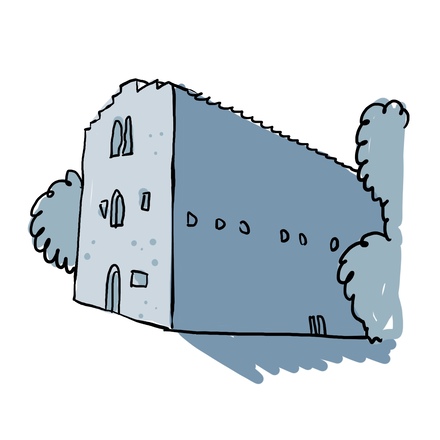
The Romanesque houses of Mont-de-Marsan are true medieval gems, built alongside the city walls and the Lacataye Keep. Take a look at the one in front of you, and you'll quickly see why. Built between the 12th and 13th centuries,

Located in a stunning architectural setting, the Despiau-Wlérick museum to your left is truly exceptional, as it is the only cultural venue in France dedicated to figurative art. It's an artistic style that captures objects and human forms in all their intricate detail.
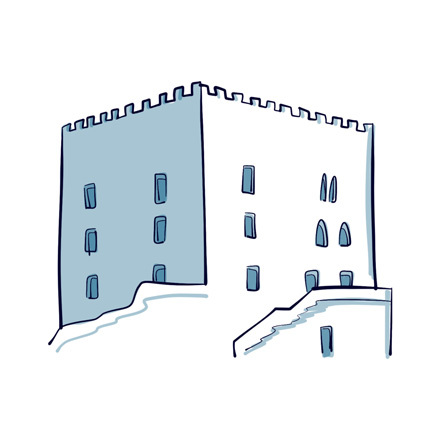
Mont-de-Marsan may have its share of historical treasures, but none quite as captivating as the Lacataye Keep. Believe it or not, the city's most famous landmark was once two Romanesque houses joined together to form a fortified manor.

With the ancient ramparts on your left, it's easy to imagine Mont-de-Marsan's medieval past. Founded in 1133 by Viscount Pierre de Marsan, the city was the seat of his lordship. As such, it had a major defensive role to play.
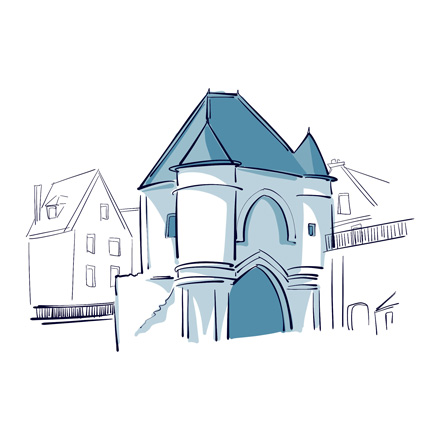
Laon may no longer be listed as one of France's major metropolises, but you should know that it once was a royal city, and the favorite residence of the Carolingians. This gate, which opens the entrance to the citadel, is called Ardon Gate.

Enter the garden of Laon's archaeological museum on your right and come discover the mysterious Chapel of the Templars. The Knights Templar... their name alone is full of mystery. Our minds drift off to hidden treasures; the Freemasons; Crusades and heresy trials.
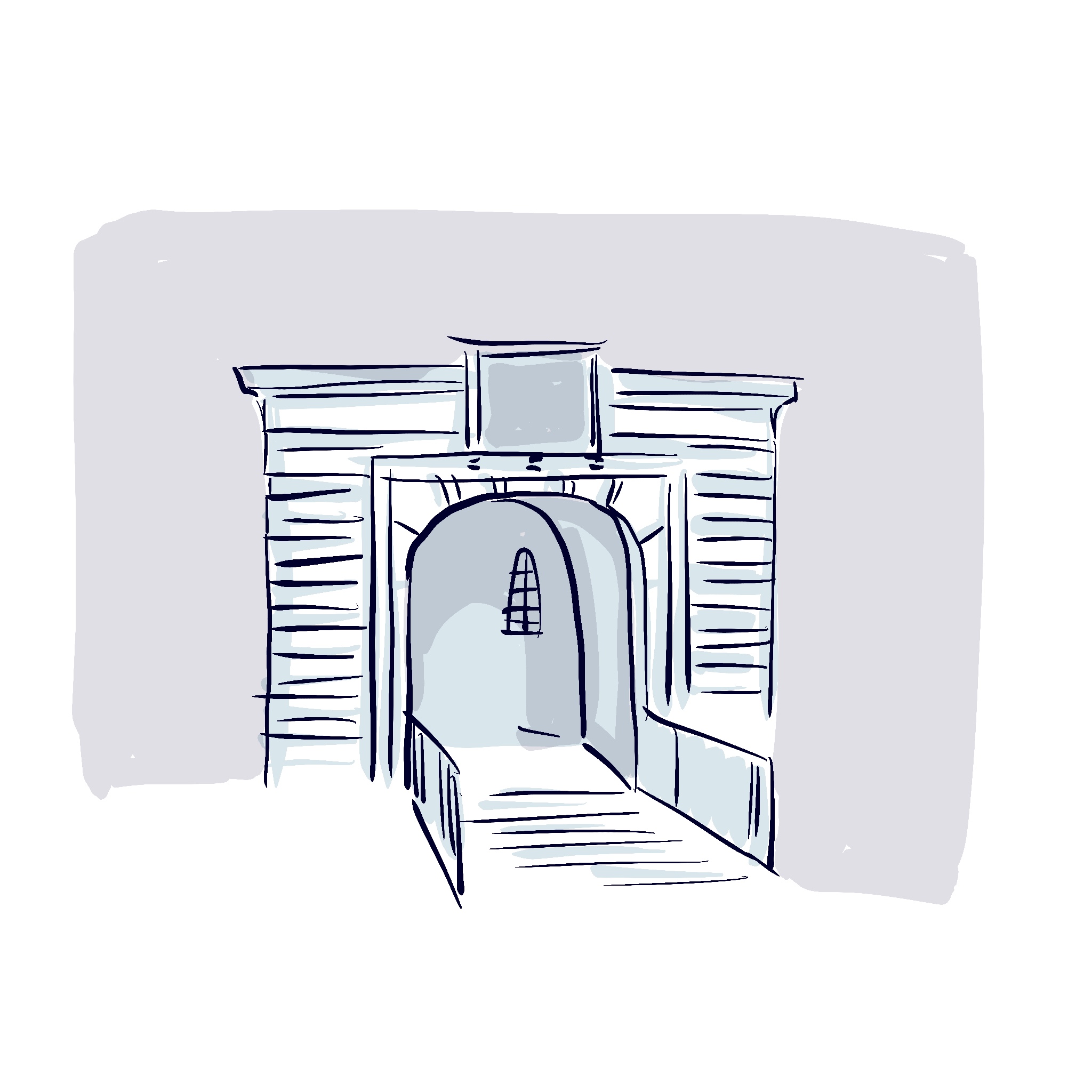
The ancient gateway before you is the Citadel Gate. It was built in 1595, and at the time it overlooked the city on one side and the famous citadel designed by Henry IV on the other. So why a citadel in the city of Laon?
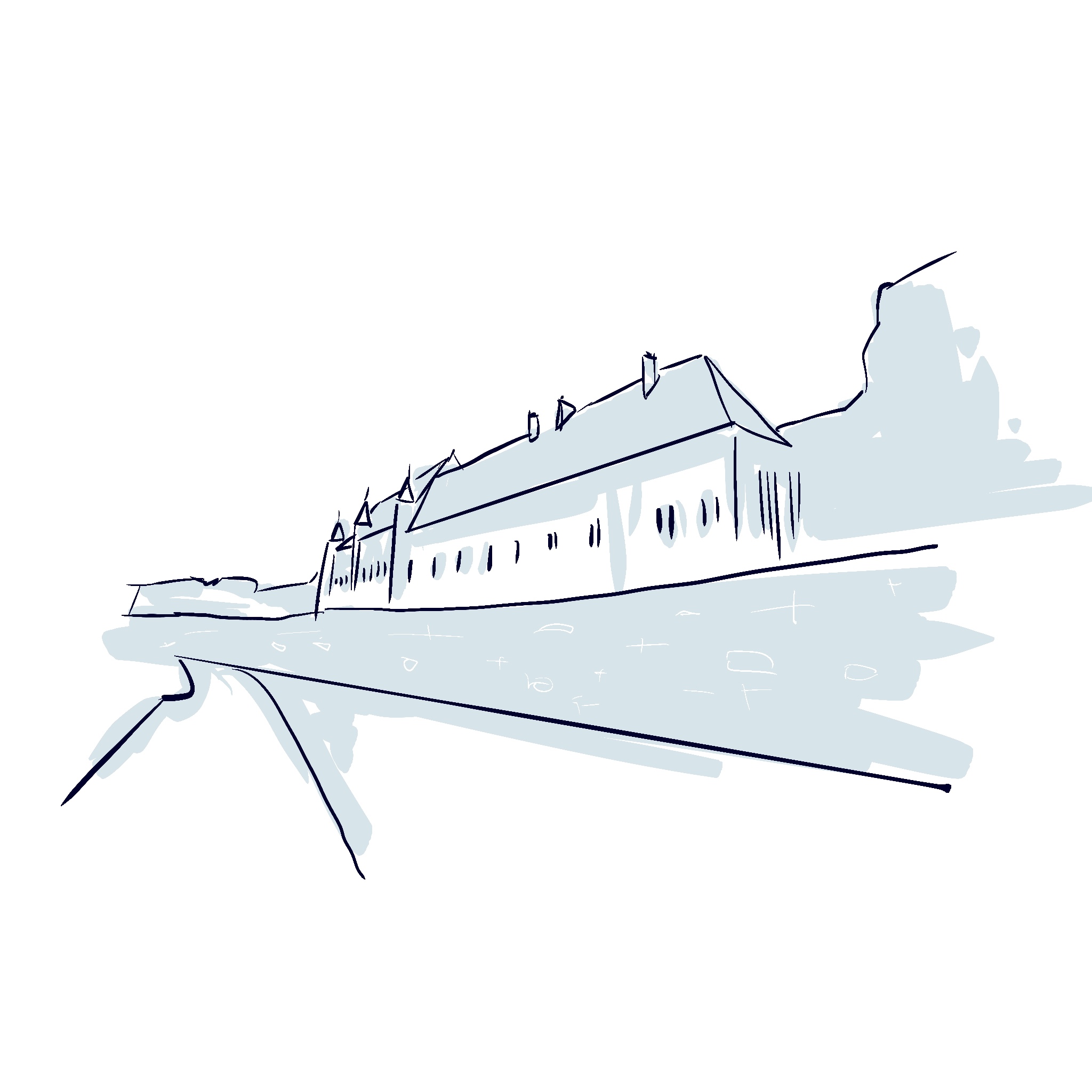
Take a moment to cross over to the other side of the ramparts and walk along the Yitzhak Rabin Promenade. From here, you can easily picture what Laon looked like in ancient times, when the small Gallic fortress, perched atop the highest hill, overlooked the surrounding plains.
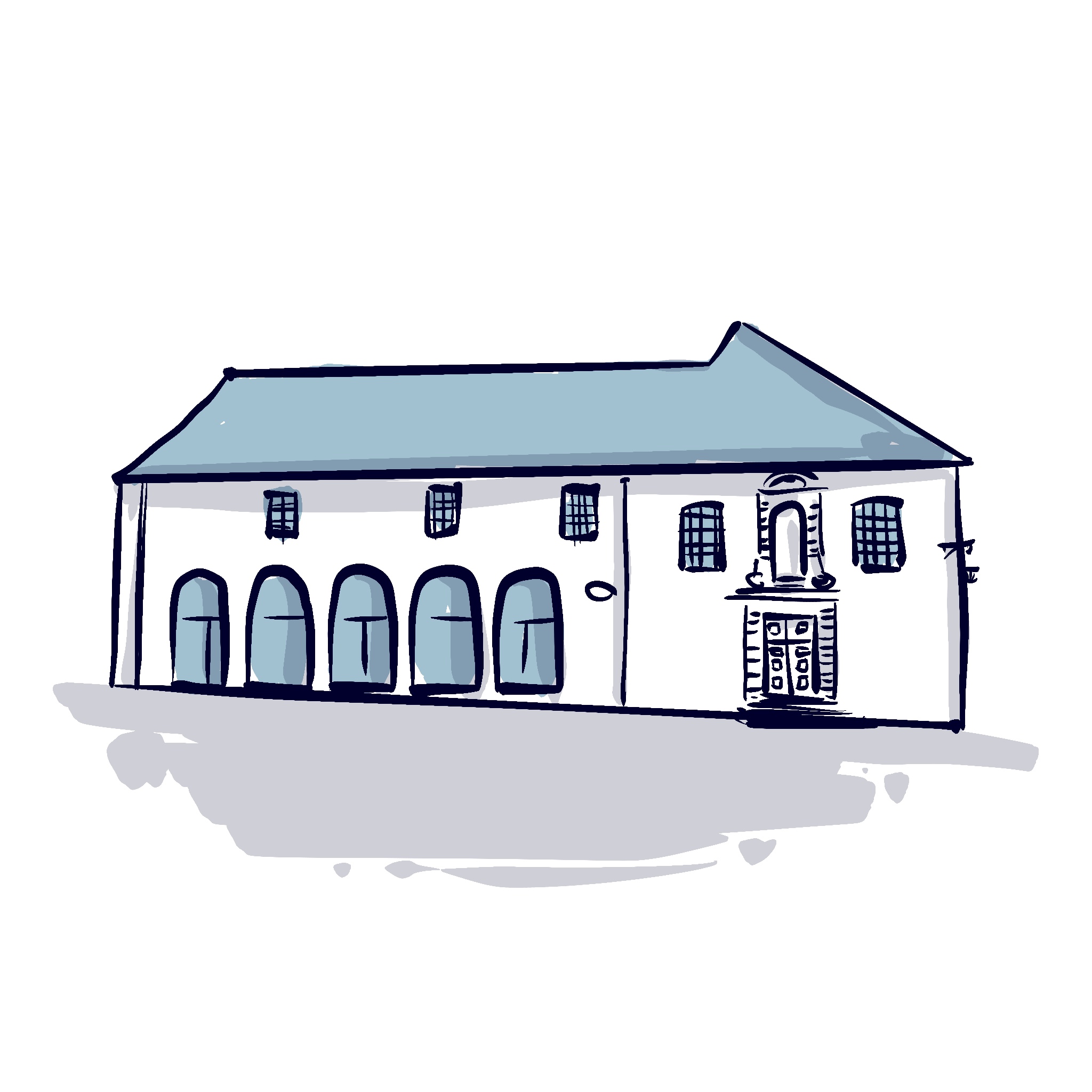
You've reached Aubry square, with a sublime view of the imposing cathedral on one side and the Picardy plains on the other. Before I tell you more about Notre-Dame de Laon, let me draw your attention to the building on your right.
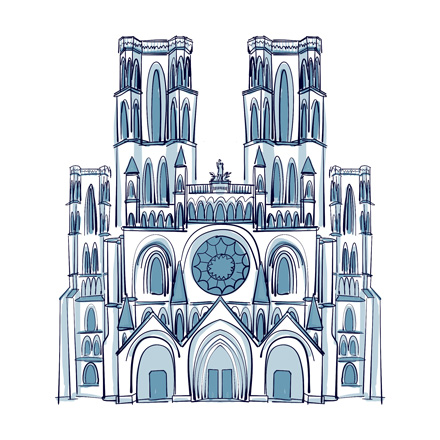
You're standing in front of the beautiful Notre-Dame de Laon. Commissioned by Bishop Gauthier de Mortagne, it was one of the first major Gothic buildings in France, predating the Notre-Dame in Paris! The cathedral before you was built
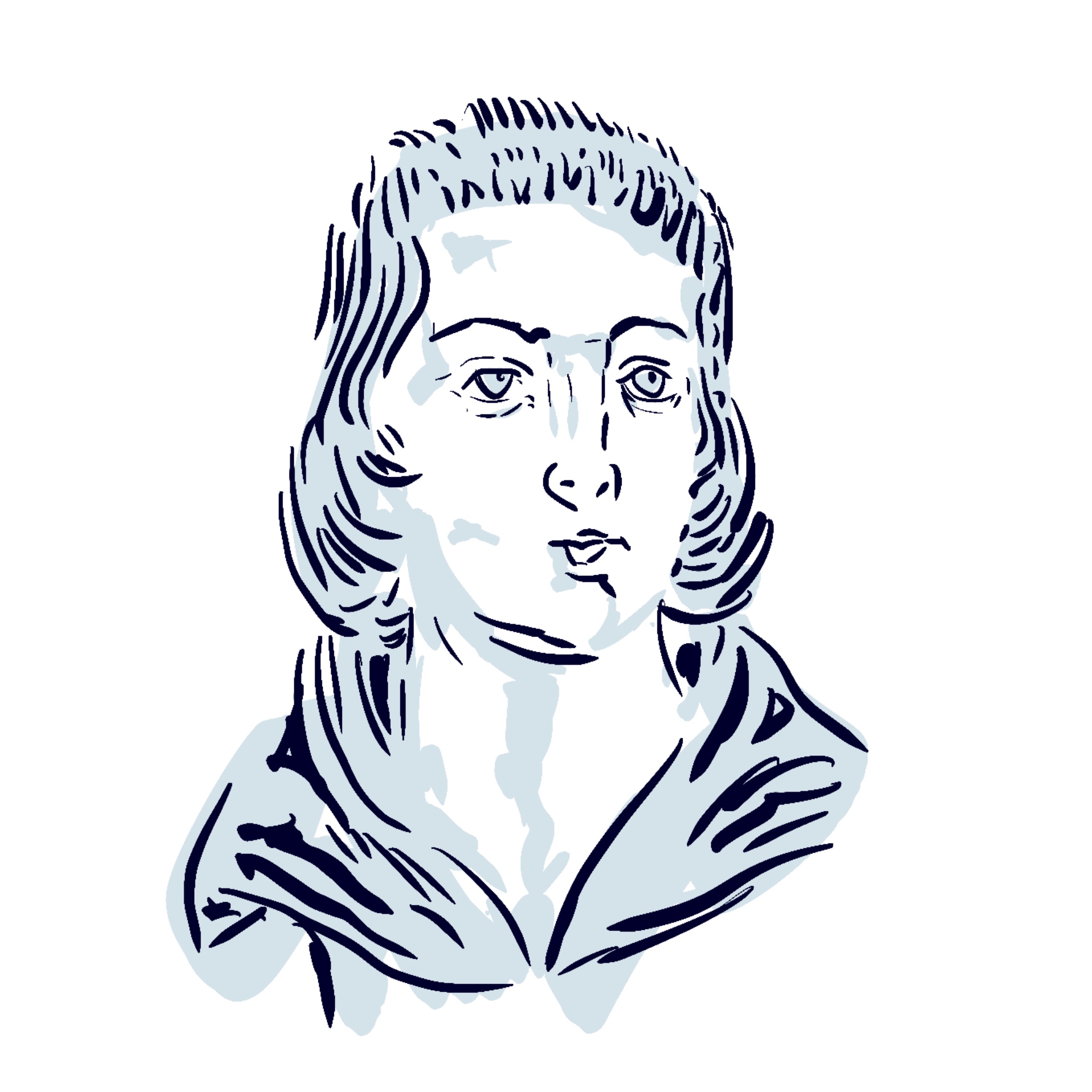
As you stroll through Laon, you'll notice that the town is full of little touches of street art depicting famous people. Here, you'll meet Abélard, whom you probably don't know - but then, he's been dead for nine centuries, so don't blame yourself.
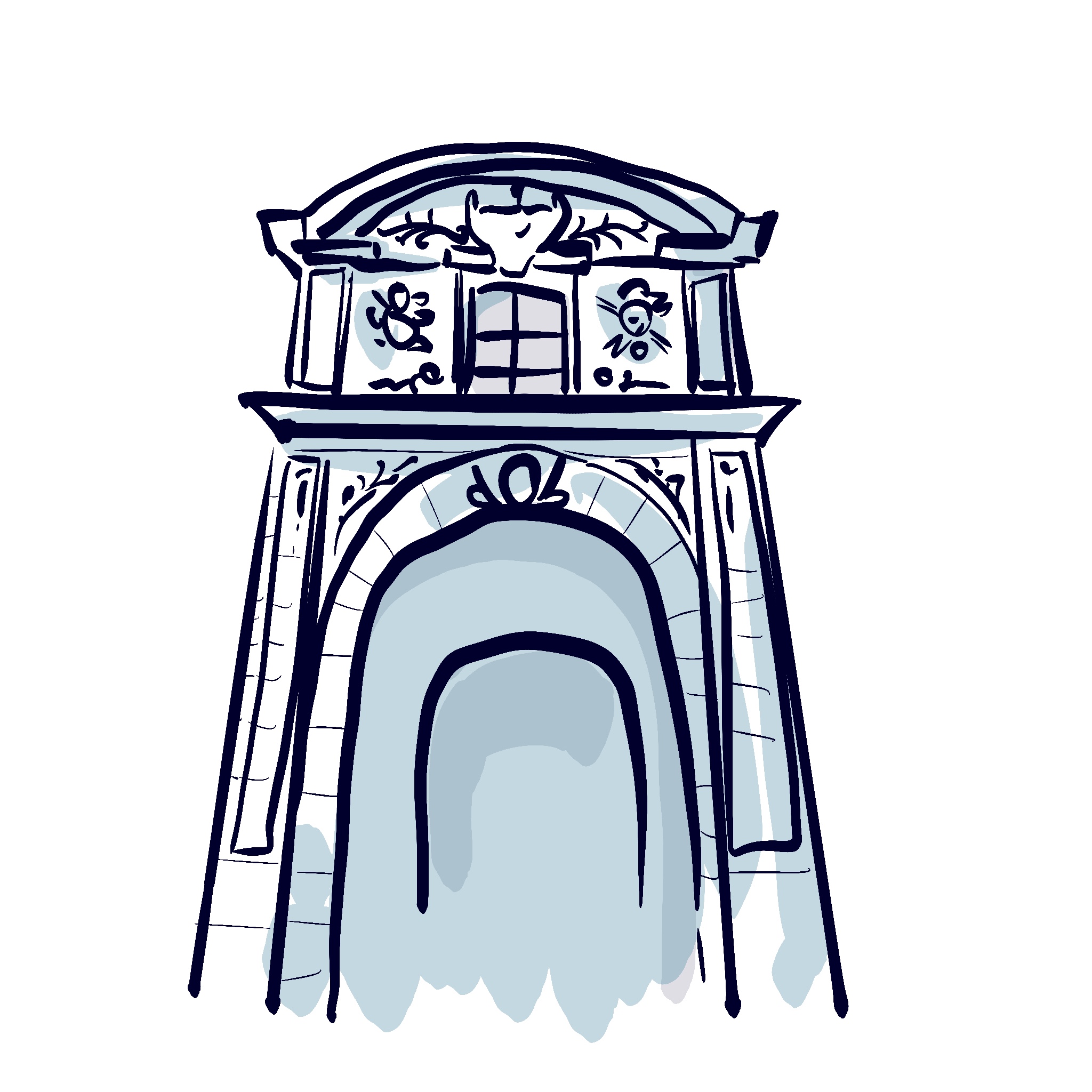
I'll quickly draw your attention to the ancient porch on your right. It's all that's left of Laon's former town hall. The building was constructed in 1736 to house the municipal services. Before that, it was the seat of the provost.

You've reached General Leclerc square. Opposite you is the new town hall - well, it’s new compared to the old one, because otherwise it’s been here since 1831. And on your right, you'll see the annex of the town hall, housed in the former church of Saint-Rémy-au-Velours.
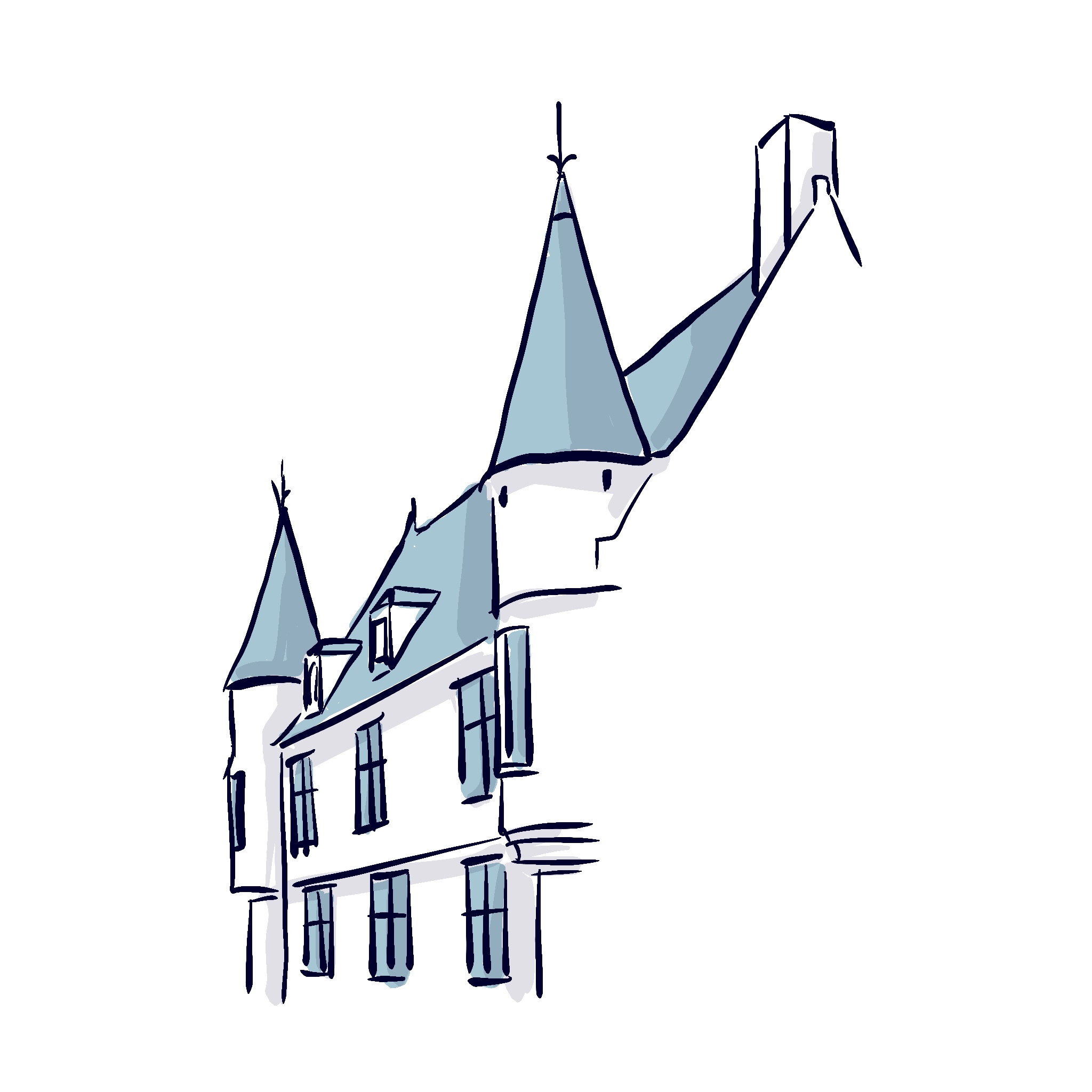
The building on your left, with its two turrets facing the street, dates back to the 15th century. It's the Petit Saint-Vincent hotel, a townhouse that belonged to the monks of the Saint-Vincent abbey. The abbeys were quick to understand the importance of
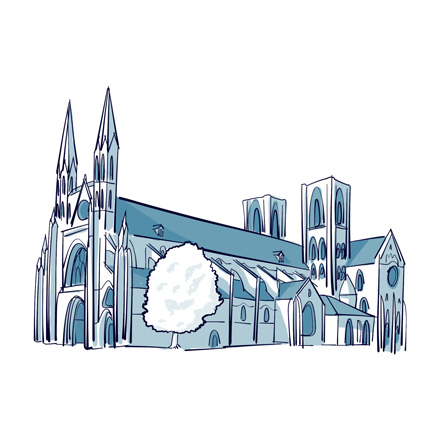
You're looking at yet another testament to Laon's medieval past: the Abbey of Saint-Martin. And it's quite imposing! It was built in 1124, on the initiative of the bishop of Laon and Saint Norbert, who had founded the Premonstratensian monastery 20 km away.
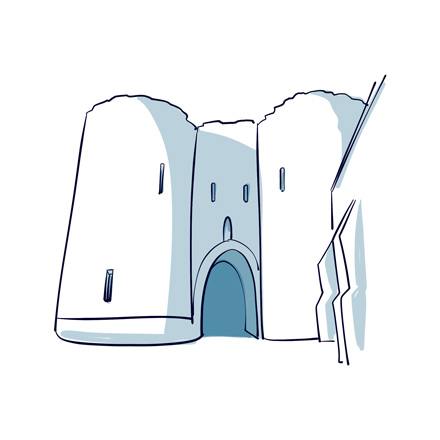
You've just crossed Soissons’ Gate, which once was one of the main entranceways to the western part of the medieval city. Built in the early 13th century, it was topped with a guardhouse in 1562. You may have noticed that the rear part, facing the city, has collapsed.
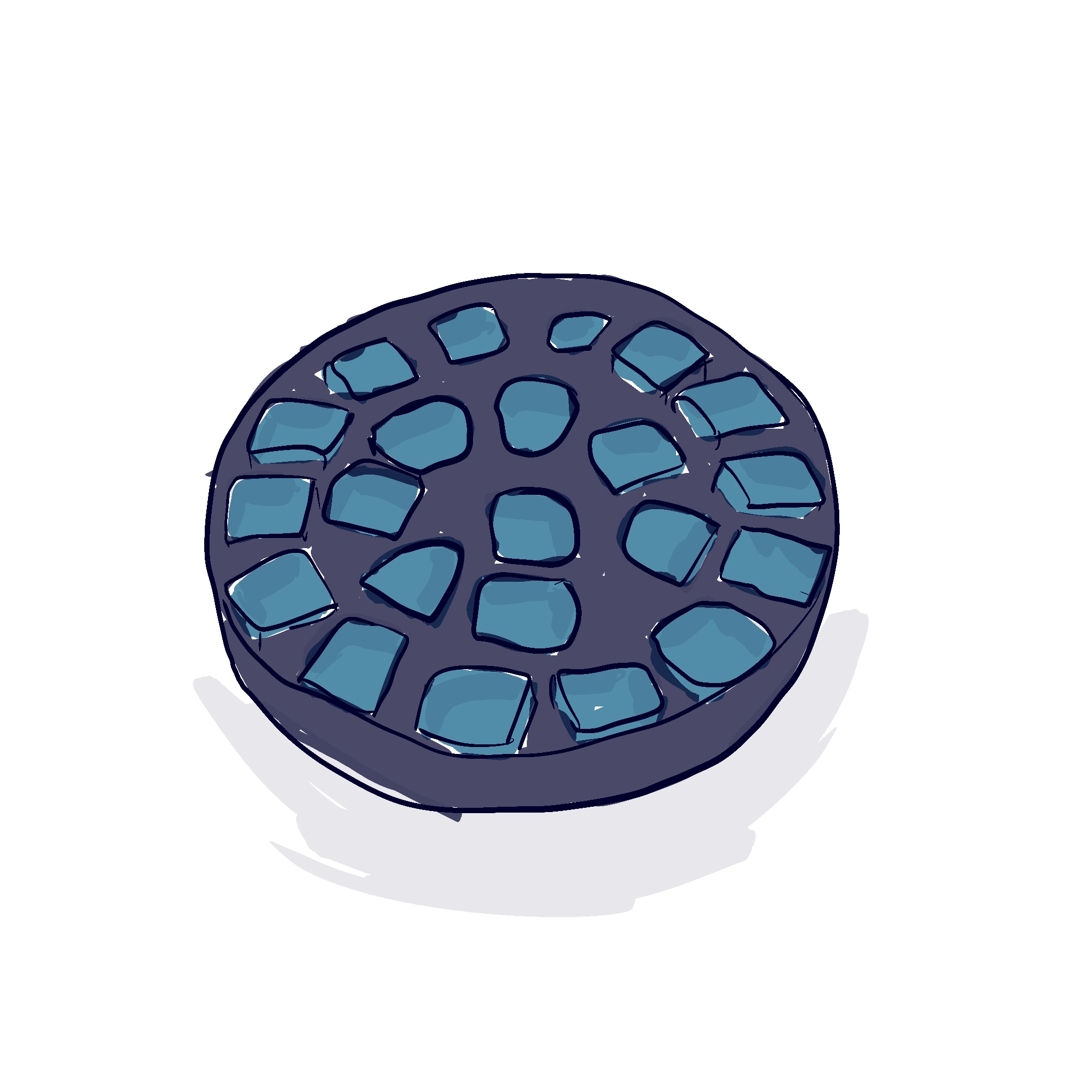
Now that you're heading up the Rue de la République back into the city center, let me introduce you to a local delicacy. Let's admit it; one of the most exciting parts of visiting a city is diving into local specialties and uncovering the treasures scattered across its foodie scene.

From this small plateau, you have a lovely, unobstructed view of the city and its surroundings. In the distance, across the plains of Picardy, you can see the infamous Chemin des Dames. This French departmental road is known to us as the setting of one of the most horrific events of World War I.
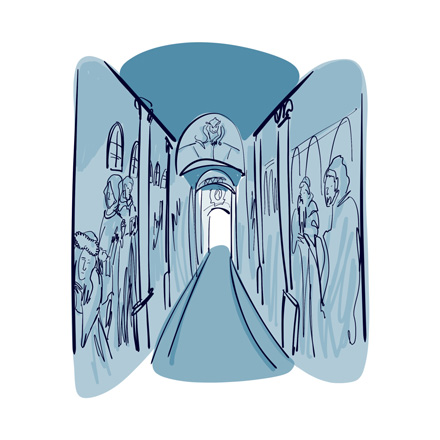
You may have noticed that the city of Laon loves to decorate and brighten up its streets. If you've been here during the summer, you may have had the chance to walk through streets decorated with multicolored umbrellas, floating silver ribbons,
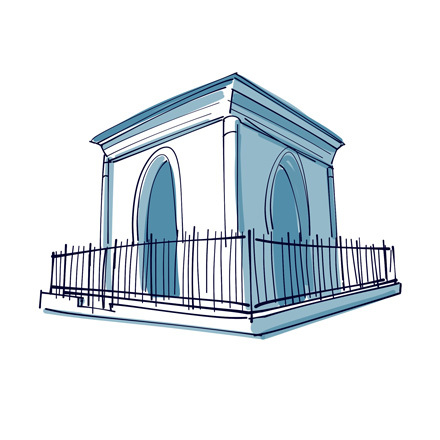
A true Valentinois landmark, the Pendentif has been part of the city's architectural heritage for over five centuries. Designed as a triumphal arch recalling those of Roman times, it was built in 1548 as a funeral chapel by Nicolas Mistral, one of the cathedral's monks.
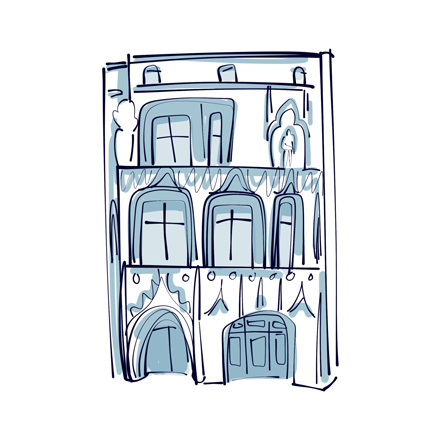
Take a look at the façade of this very special house: I don't need to tell you why it's called House of Heads, do I? The many sculptures that decorate it are heads representing Fortune, Time, Law, Medicine and so on... Built in the 16th century as a private mansion for Professor Antoine de Dorne,

La Grand rue, or Grand Street is one of the liveliest streets in Valence. In addition to housing the authentic House of Heads, it is lined with small boutiques ideal for shopping. It's the heart of Valence's historic center, and well represents the alleys of the medieval city

This charming street, is a great place to take a picture of an oh so typical medivial street representative of Valence’s town center, Narrow and lined with small houses with colorful blinds, Saint-James street hasn't lost any of its appeal over the years - quite the contrary!
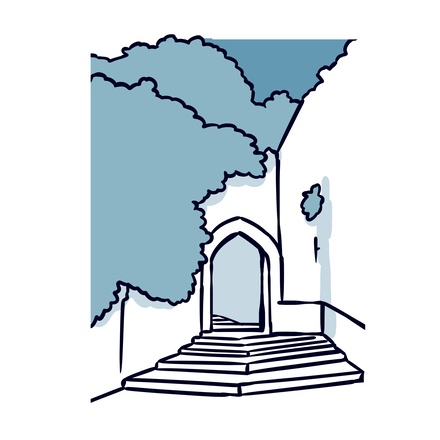
The Sylvante hill, where you're standing, is an integral part of Valence's history. The last traces of the fortifications that surrounded the city during the Middle Age can be found here. The Sylvante postern, which used to regulate access to the city by means of a portcullis,
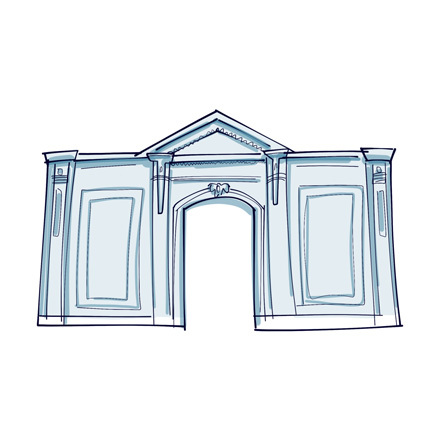
On your left, marking the entrance to Saint-Ruf park, stands the 18th-century gate of a former abbey of the same name. It was a huge religious complex of great importance to the town. It replaced an earlier abbey that had been in Valence for several centuries,
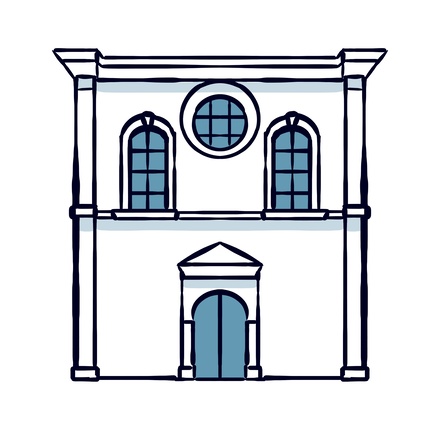
You're standing in front of the Saint-Ruf temple in Valence, dedicated to the Protestant faith. Originally, this building was the Saint-James church. Its name, Saint-Ruf, refers to one of the first founders of Avignon's Christian community, and to the congregation founded in his name.

The house in front of you is surprisingly different from the other buildings in town, in both architecture and appearance. Built in 1860, the facade of this large house is inspired by the oriental style that appeared in France in the 1830s.

This Catholic church is located on the highest point of the town and is the heart of Saint Jean's Square. A strategic location that suggests this religious edifice has stood here for centuries, perhaps even as far back as Roman times or the Early Middle Ages.

You are now standing in front of Valence's City Hall, inaugurated in 1894 by the mayor in office at the time, Jean-François Malizard. It enabled municipal assemblies to finally meet in a building dedicated to this purpose.

You now stand in front of the Center for Armenian Heritage, a cultural center opened in 2005 in the former Faculty of Law. It features an exhibition retracing the history of the Armenian genocide, which took place between 1915 and 1916.
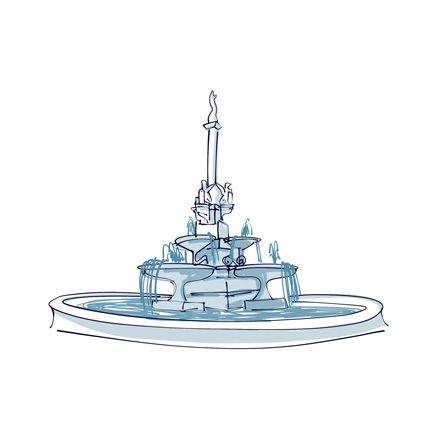
We've arrived at Maurice Clerc Boulevard, one of Valence's main streets. Featuring some of the finest houses in Valence, it is animated several times a week by various markets, boutiques and restaurants of all kinds, making it an ideal place for a walk.

Here, blending into the background of the Porte Neuve square, is a bronze statue of a seated man reading a book. It's a life-size statue of Napoleon Bonaparte, as he was back in 1786. The man who was to become Emperor of the French was, at the time,
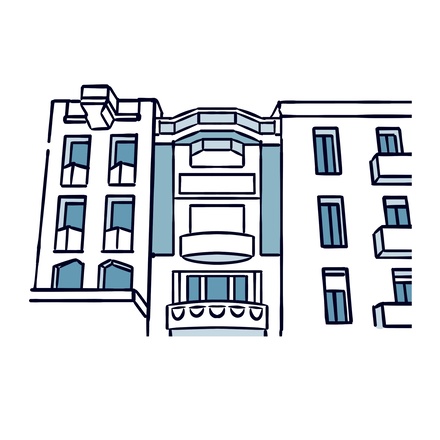
You're on Victor Hugo Avenue! What makes this street so special are the Art Deco-style houses overlooking the many stores. Take a look, for example, at the entrance to number 11 on your left. Walk a little further to the large building on the left, which holds the Victor Hugo shopping center.
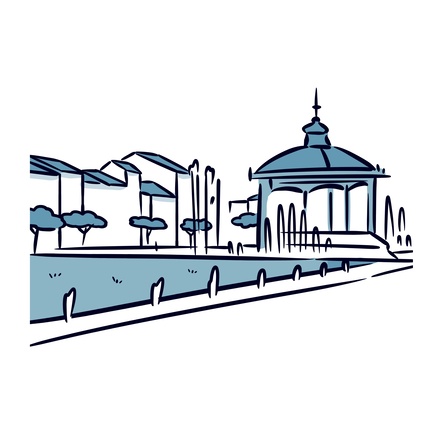
The “Champ de Mars” Square, in the heart of Valence is the city's main plaza. It's a popular spot for both locals and tourists, as it offers an exceptional panoramic view of the Ardèche mountains on the right. It's here, on this large square, that Valence's annual music festival,
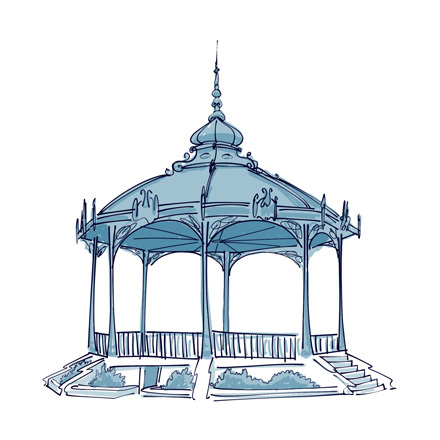
This lovely bandstand on the Champ de Mars Square was built in 1890 by Eugène Poitoux, who also designed Valence's monumental fountain. It was inspired by the old bandstand, which had decorated Valence for 30 years.
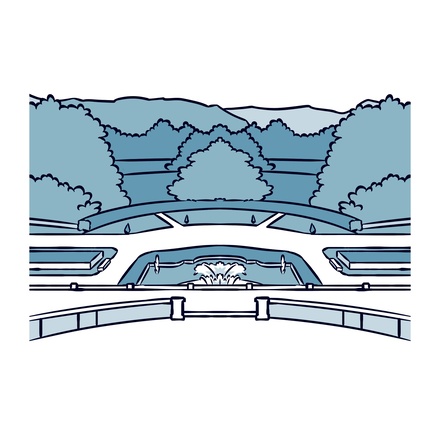
This is the Jouvet Park, a compound of landscape and formal gardens. The park was created in 1905 thanks to a generous donation from patron Théodore Jouvet, with the aim of providing the Valentinois with a calm, soothing, green place to wander ,
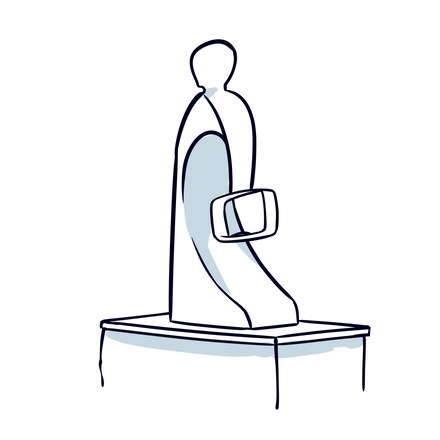
Here, you stand in front of two odd statues on the side of the road. They are actually in front of the Art and Archaeology Museum, which is housed in the building in front of you. This museum, whose entrance is further along, facing the cathedral,
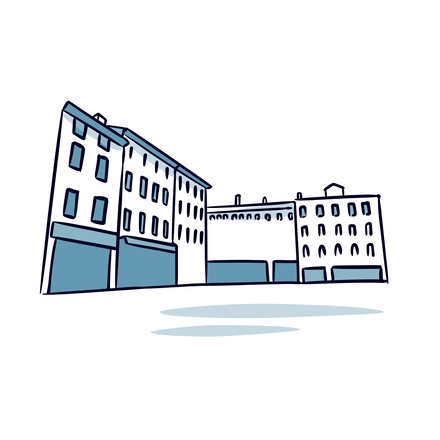
This is one of the town's oldest squares: it was mentioned as Clerks' Square as early as the 13th century. But already during the 5th century, it was a very important part of the city, with shops and markets. It was also where executions took place.
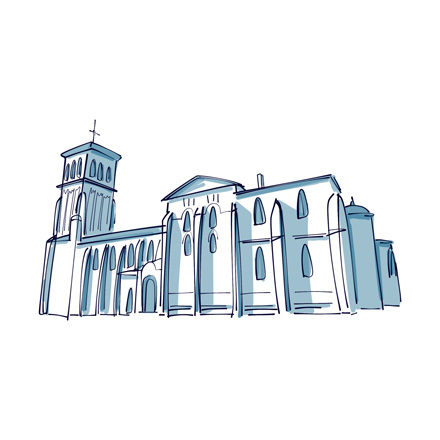
Saint-Apollinaire Cathedral was blessed by Pope Urban II in the 11th century, making it one of Valence's oldest monuments. Well, oldest through its plans, since the original 11th-century cathedral was destroyed and ruined during the Wars of Religion in the 16th century.
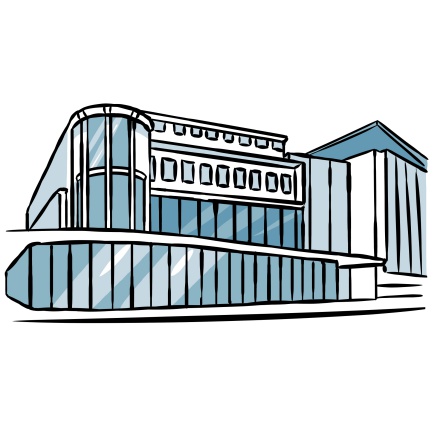
You have now arrived in the area of the old covered market, known as the “Halles”. All this space was renovated in the 2000s, literally offering a new district to the city. Originally, the Benedictine convent and the chapel of the Black Penitents stood here.

You cannot leave Savoie without knowing the legend of the “Dent du Chat”. What is called The Tooth of the Cat is that tooth-shaped mountain overlooking the Bourget Lake. It is a lovely hike at the end of which you can enjoy an exceptional view over the lake and the valley.
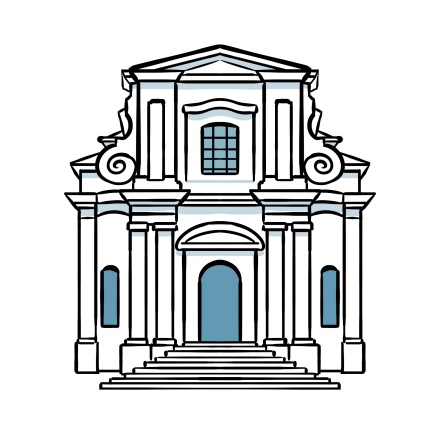
You are passing by the small chapel of the Vaugelas High School located just behind. This chapel is the only remains of the Visitation convent founded in 1610 by Saint Francis de Sales. Its beautiful Baroque facade has been listed as a historical monument since 1950.

Here you are in the square of the courthouse. On one side, you can see the Palace of Fine Arts, and on the other, the large palace inspired by Sardinian neoclassicism. In 1848, the government of the Kingdom of Sardinia, ruling the area decided to build a courthouse in Chambéry.
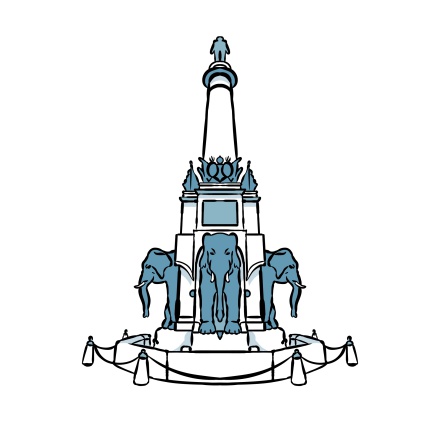
You are standing in front of the Fountain of the Elephants. The locals love to call it the famous four with no bum. If you say it in French, les quatre sans culs, you will hear the 400 without a bum. While the elephants are a reference to Hannibal's legendary crossing of the Alps, the monument is in
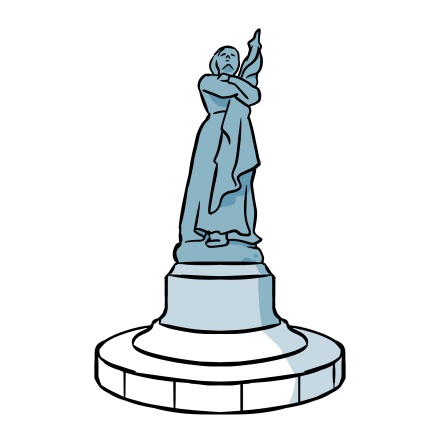
Allow me to introduce you to the Sasson! This bronze statue was erected for the centenary of the first attachment of Savoy to France during the revolutionary period. It is the work of the sculptor Alexandre Falguière. At that time, it was simply called "The Centenary Monument.
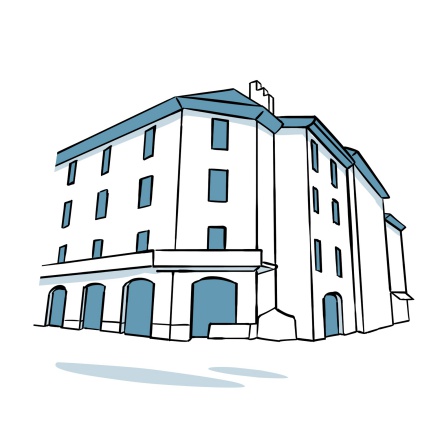
You are now at the intersection of Italy street and the Faubourg Montmélian. These two streets used to be just one, which was the main corridor that travelers from Italy had to take to enter Chambéry. Faubourg means suburb, which by definition is outside the city walls.
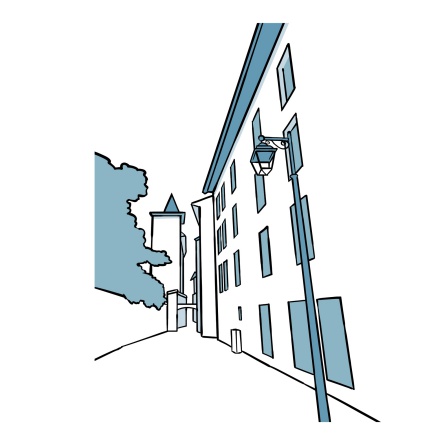
Now you are walking through the Mont-Blanc Passage. Before the 19th century, you would have had your feet in the water! This street was, in fact, a canal of the Albanne River, which supplied water to the inns of the suburb. Most travelers arrived on horseback, and this is where water was drawn to quench
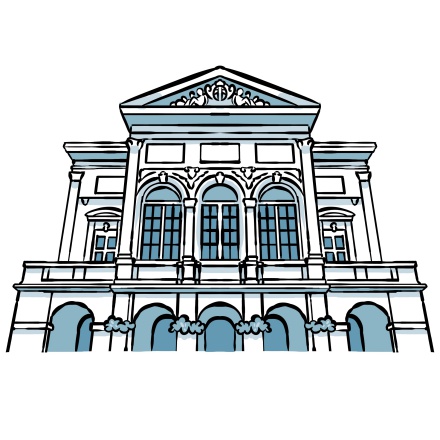
You have arrived at the Charles Dullin Theater, named after the actor and director born in the village of Yenne, in Savoy. It is considered to have one of the most beautiful Italian-style auditora of the region. One of its masterpieces is undoubtedly the magnificent stage curtain painted by Luigi Vacca
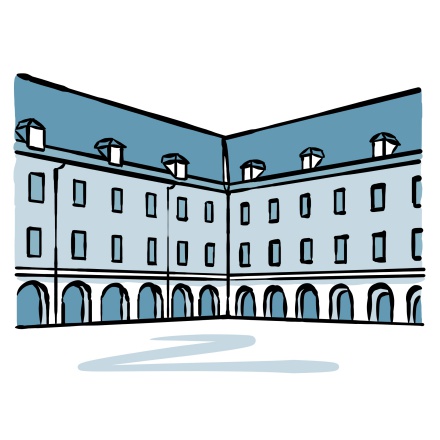
You are now standing at the heart of the Carré Curial, located at the back of the Jean-Jacques Rousseau Media Library. It has been named in honor of the famous Franco-Swiss philosopher, poet, and musician, who settled in Chambéry with Madame de Warens. He referred to this time as 'The short happiness of
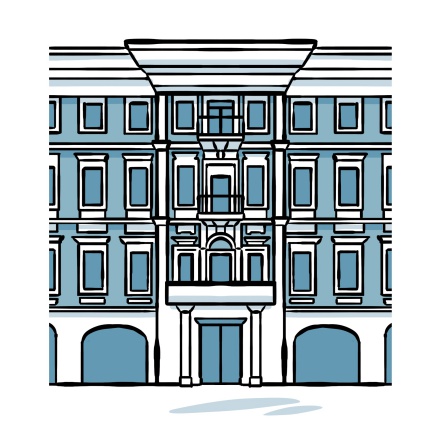
You are on the street of the Golden cross, “la Croix d’Or” in French. This historical street of the old Chambéry area used to be the one through which Italian travelers would arrive. It gets its name from a beautiful and large golden cross that overlooked the fountain that used to be there.
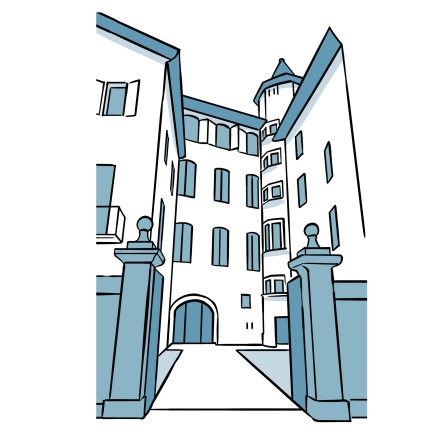
On your right, you have the entrance to the Hôtel de Cordon. The city boasts many private mansions, and this is the only one open to public. In french, private mansions carry the name Hotel, in reference to the fact that despite being very large it is usually the home to just one family.
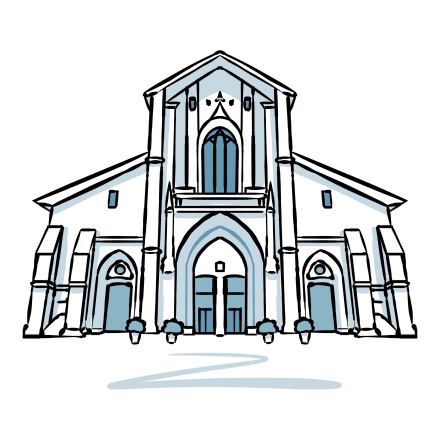
You are now on the charming Cathedral Square. This enclosed square provides a sense of intimacy in front of the Saint Francis de Sales Cathedral. It was once a Franciscan chapel, which explains the simplicity of its facade. The order of the Franciscans is devoted to a simple and humble life.
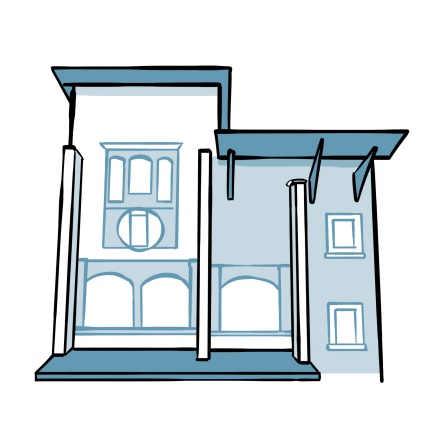
You have just ventured into one of the alleys of Chambéry. Although they may not be visible, about fifteen of these alleys radiate from Saint-Léger Square. The one you're on leads to the “Cour de l'Horloge”, literally the court of the clock. This courtyard, tucked away from view
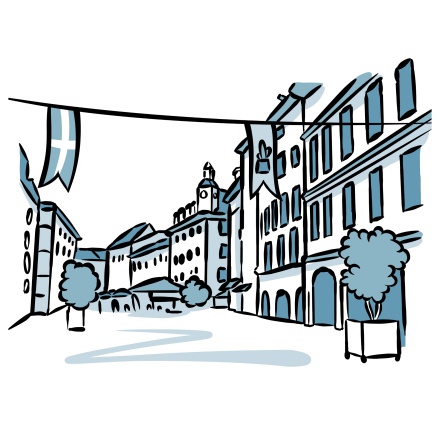
You arrive at the long Saint-Léger Square, so lengthy that it could be mistaken for a street. This is where the heart of the city was born when the Albanne River still flowed right through the middle. Similar to Annecy, Chambéry had numerous canals due to the river's branches.
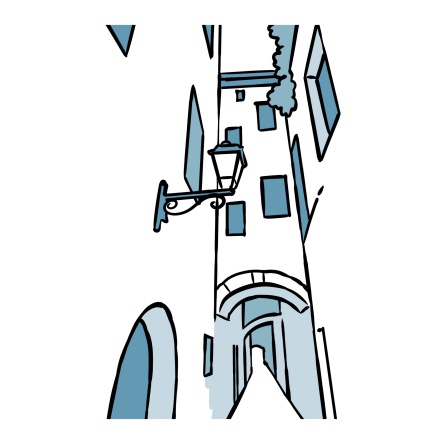
If you have ever visited the neighborhood of Vieux-Lyon, you are certainly familiar with the traboules system, those secret passages allowing you to cross building courtyards to reach two parallel streets. But do note that the term 'traboules' is exclusive to the city of Lyon.

You now have, much like the Maistre brothers on their pedestal, a bird's-eye view of Arcades Street with the Elephants fountain in the background. The men depicted in the statue are two brothers born in Chambéry in the 18th century. Joseph Maistre is a politician, philosopher, magistrate, and writer.
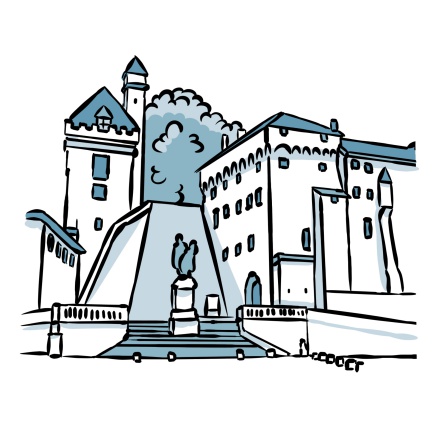
Here you are, where it all began, at the crossroads that, since antiquity, allowed control over the ancient Roman road connecting Vienne to Italy and then to the cities of Lyon, Grenoble, Annecy, or Geneva. All these roads converge through Chambéry before crossing Alpine passes.
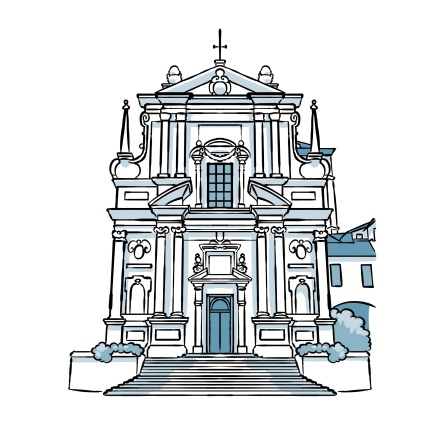
Here you can see the back of the Saint-Chapelle, which is one of the castle’s highlights. To see it from the front or to visit it, you will need to take a paid guided tour. The castle is currently not open to the public as it is the premise of the prefecture of Savoie.
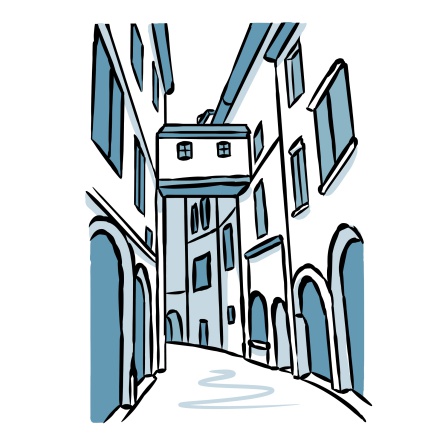
You are now walking along the lower street of the Castle. It is the oldest street in Chambéry and was the only one leading to the castle in the 14th century. Just imagine the number of high-ranked people who have passed through here before you! An iconic figure to the old town, it is now mainly known
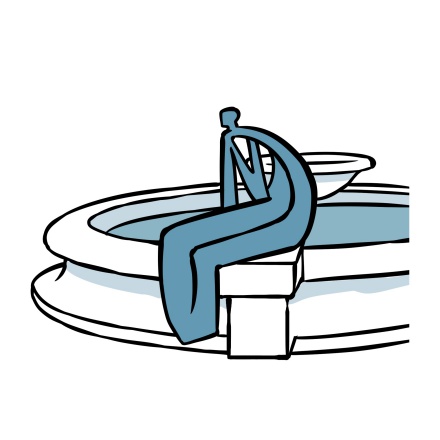
This pensive figure leaning on the fountain is Lorelai, a newcomer to the Saint-Leger Boulevard. In fact, in 2017 there was an open-air exhibition of works by the Italian artist Livio Benedetti, who died in 2013. The bond between the statue and the surroundings was so striking, that the city decided to
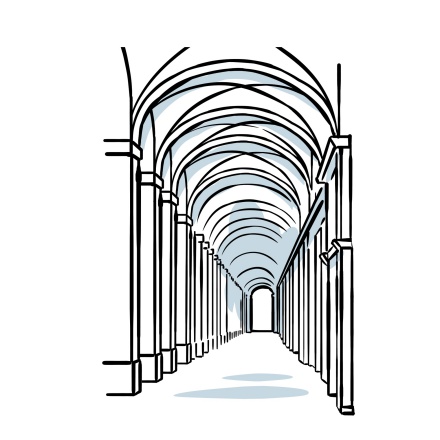
With the castle behind you and the Elephants in your line of sight, you have before you the beautiful Boigne Avenue. It is more simply known as the "Arcades." The creation of this grand and beautiful street took place between 1820 and 1830 to modernize the town, which had not yet emerged from its
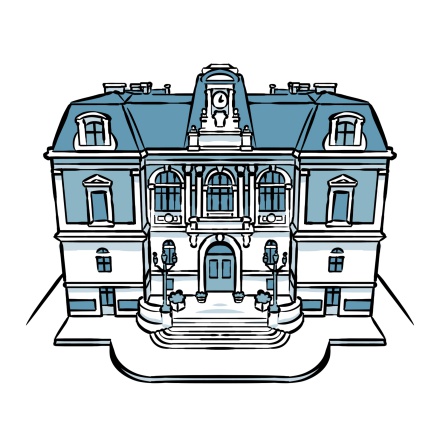
You have arrived on the charming square of the town hall. The hall was built in 1863. Let's put ourselves in context. If you were living here at that time, it would be just three years since your region belonged to France and no longer to a free province of the future Italy.

You’re now standing in front Lucerne’s most famous monument, a site that draws over a million visitors each year: the Lion of Lucerne. Carved directly into the rock in the 1820s, this powerful sculpture was designed by Danish artist
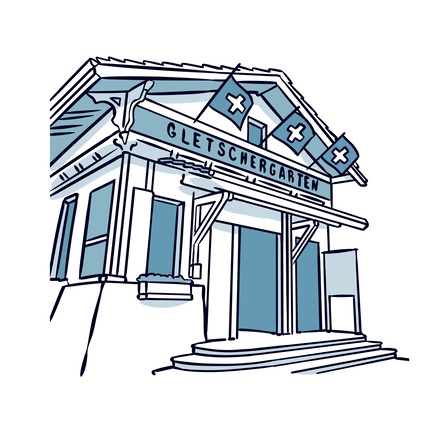
Before you stands the entrance to the Glacier Garden, a popular geological museum in Lucerne. If you’re travelling with the Swiss Travel Pass—which gives access to public transport and many activities across the country—then admission is
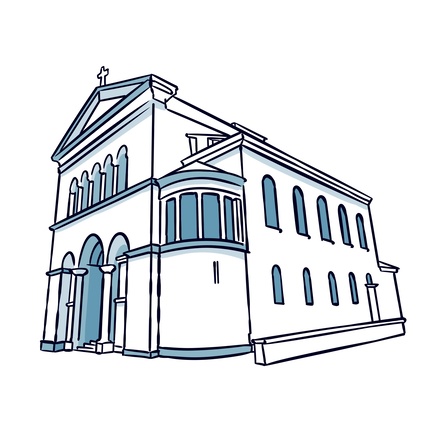
Once you’ve passed through the city walls, you’ll arrive in front of Lucerne’s Christuskirche, dedicated to Jesus Christ. In Switzerland, the religious wars of the 16th century led to a division between Catholic and Protestant cantons. The

The Musegg terraces offer a stunning view over the city, the lake, and the surrounding mountains, without the need to climb the ramparts. Take your time to enjoy this exceptional setting at your own pace. If you feel like staying around for

As you arrive in front of St. Peter’s Chapel, you’ll face one of Lucerne’s most colourful landmarks: the Fritschibrunnen fountain. Built in 1918 to replace an older fountain, it’s dedicated to Fritschi, a legendary figure from Lucerne’s

On your left, you’ll see one of Lucerne’s most remarkable buildings: the Zunfthaus zu Pfistern—the House of the Pfister Guild. In medieval times, guilds were professional associations that regulated trades, set standards, oversaw
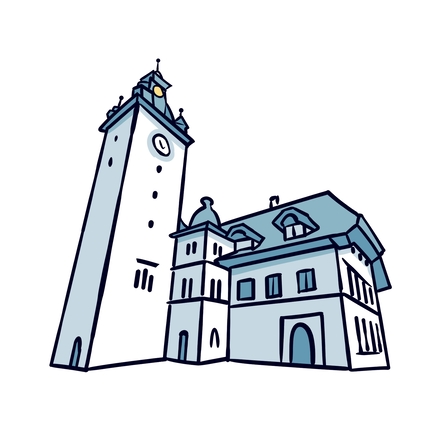
These steps take you to Kornmarkt Square, which means “Grain Market Square.” Since 1356, this has been the place where Lucerne’s residents came to buy and sell grain. Surrounded by historic buildings, it’s still one of Lucerne’s
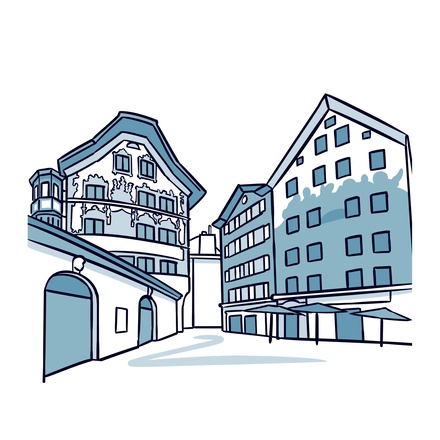
Sternenplatz may be small, but it’s an absolute must-see, and it won’t take you long to see why! One of the most striking features of Lucerne is its tradition of painted façades, with some of its most beautiful examples right here.
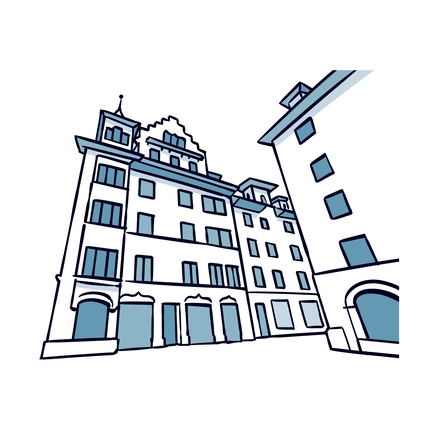
Switzerland — or at least Lucerne — has a habit of naming streets after where they lead you. Naturally, Hirschenplatz Street has brought you to the lovely Hirschen Square. If you don’t speak German, Hirschen means “deer” — which
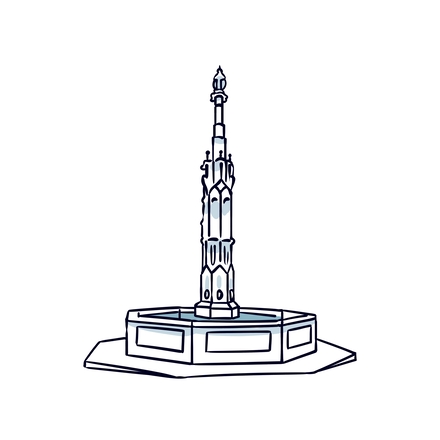
You’ve now arrived at Weinmarkt, or Wine Market Square. As the name suggests, wine was once sold here… but long before that, this square was the site of Lucerne’s fish market until the 16th century. Thanks to its location on the lake,
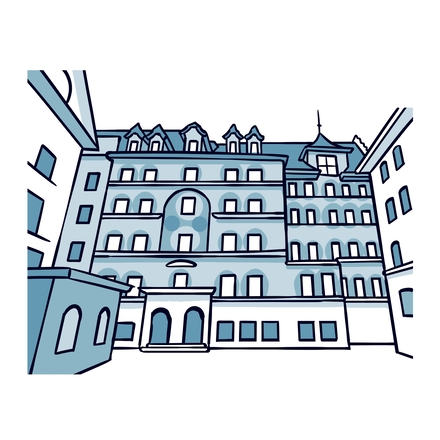
As you exit Weinmarkt Square, you’ll come face to face with a stunning painted façade, belonging to the Hotel des Balances. The fresco was painted in the style of Hans Holbein, a Renaissance artist best known for his portrait of Henry
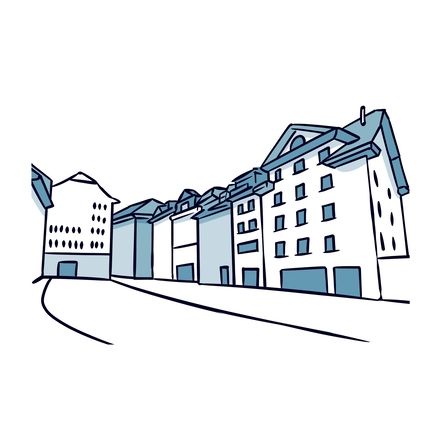
Welcome to Mühlenplatz — at 15,000 square metres, it’s the largest historic square in Lucerne. It was created towards the end of the Middle Ages, when several buildings were demolished to open up this space. Archaeological excavations
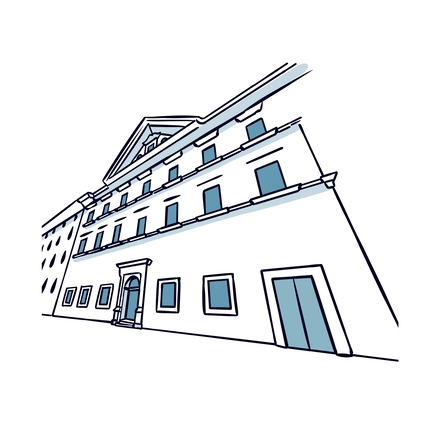
The imposing Renaissance palace before you is one of Lucerne’s most iconic buildings. It was built in the 1550s, when most of the city’s houses were made of wood. The locals were understandably stunned by this luxurious stone
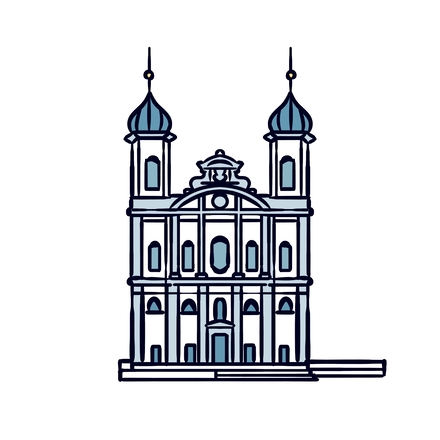
You’re now standing before the famous Jesuit Church of Lucerne. Nestled along the Reuss River, it’s visible from many points around the city. It’s a defining feature of Lucerne’s skyline — and one of its most photographed sites.
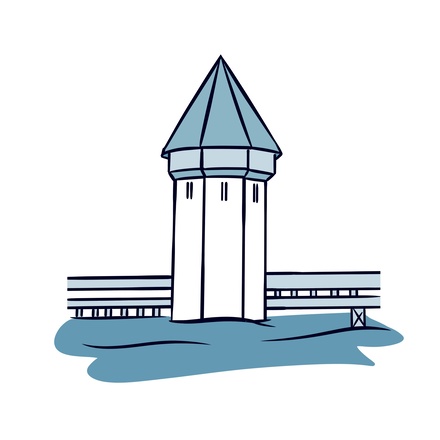
Before we cross the region’s most famous bridge, let me tell you about the iconic Water Tower next to it. Known in German as the “Wasserturm,” it’s often translated as “water tower”. Despite the name, it likely never served that
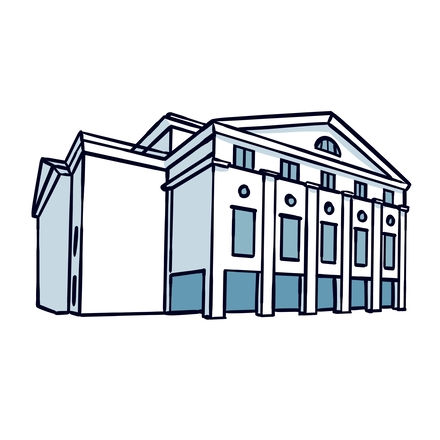
The large white building you’re passing is the Lucerne Theatre. It’s the only multidisciplinary theatre in the region, running performances all year round. It even has its own resident companies! Here, you can watch a play, a dance

Welcome to the heart of Lucerne’s story. You’re now crossing the iconic Kapellbrücke, or Chapel Bridge. In the Middle Ages, Lucerne was a unique city, crossed by three wooden bridges that spanned the river at different points,
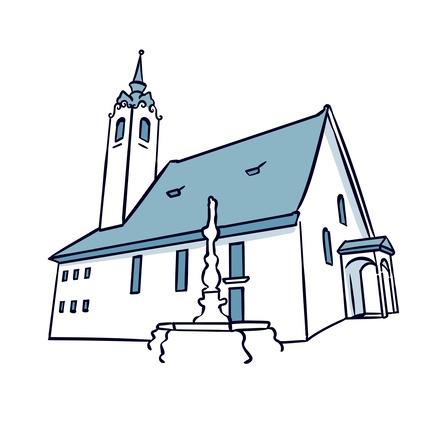
You’ve now arrived at Rosengart Square, behind St. Peter’s Chapel. This is the oldest Catholic church in Lucerne, which gave its name to the bridge you just crossed. It’s difficult to pinpoint when the chapel was built, but we do know that in
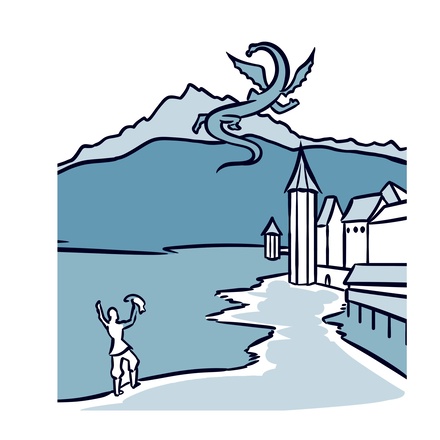
You may already know that Lucerne’s history is steeped in legends. The imposing Mount Pilatus, looming above the city, has sparked the imagination of locals for centuries. The origins of the mountain’s name remain unclear. It may
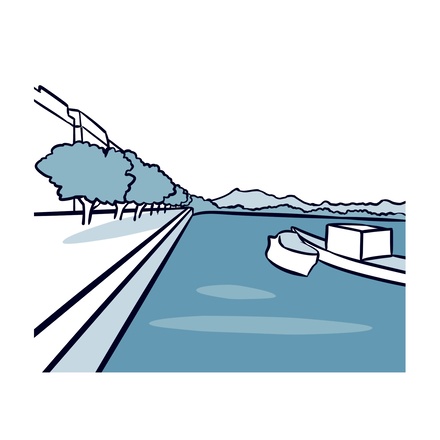
Welcome to the Nationalquai promenade, a beautiful path that follows the shores of stunning Lake Lucerne. The lake is the star of the city, offering fresh air and a peaceful setting by the water’s edge. You can follow the lakeside path for
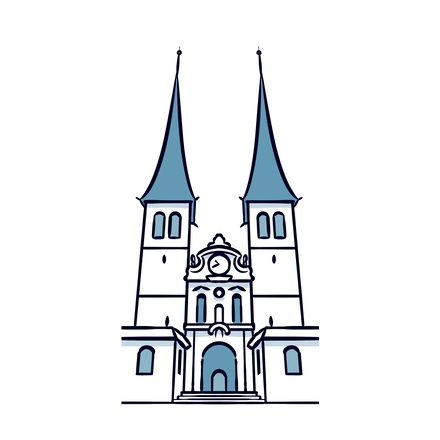
You’re now standing in front of Lucerne’s main church, and the most significant Renaissance-era religious building in Switzerland. It’s named after Saint Leodegar, a 7th-century bishop from Burgundy who became a martyr after his

One thing’s for sure — no trip is complete without tasting the local flavours. In Switzerland, this can sometimes be a challenge, as prices aren’t always budget-friendly. But don’t worry, here are a few tips for making the most of your
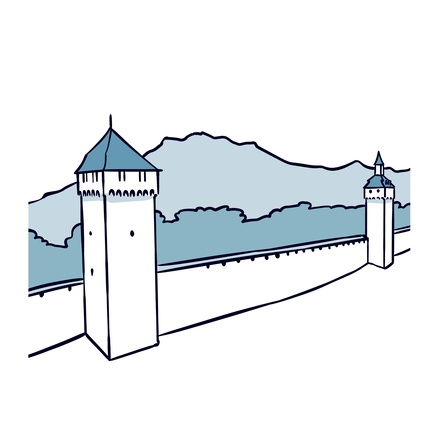
You’re now at the entrance to the Musegg Wall. The name Musegg comes from an old German word, Musen, meaning “to keep watch.” Lucerne was founded around 1180, near a cluster of monasteries, and had its first defensive wall as
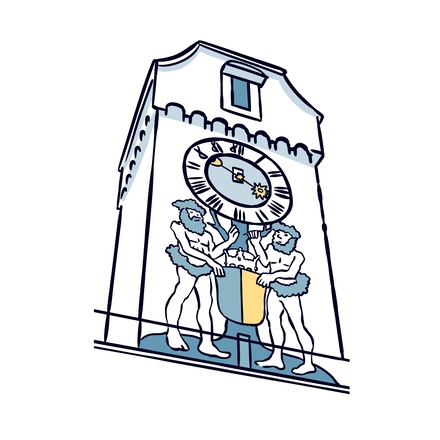
You’re now in front of the famous Zytturm, or Clock Tower. Standing 31 metres tall, it’s instantly recognisable thanks to the mural of two giants holding up the clock face. The tower was built in 1442, but the clock it houses goes even

Look up towards the hill across the river. From here, you have a perfect view of Château Gütsch, whose white façade beautifully contrasts with the surrounding forest. Its name means “hill” in Swiss German. This château looks like it’s
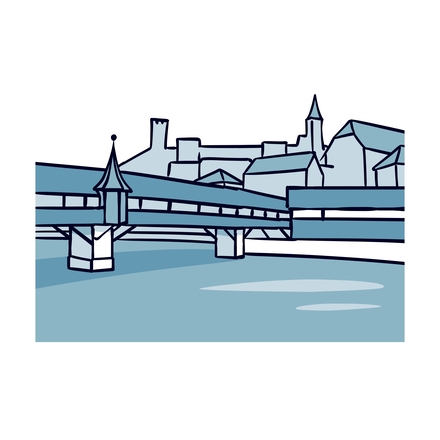
Welcome to the famous Spreuer Bridge. It was built in the early 1400s to connect the old mills on this side of the river with the bakers’ district on the opposite bank. While most of the city lived on the right bank of the Reuss, bakers were
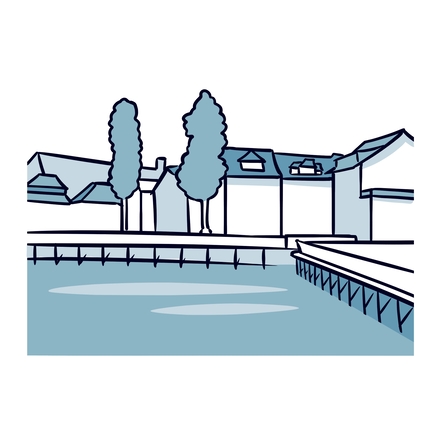
The peculiar dam you're looking at may seem like a tangle of old wooden beams, but it’s Lucerne’s needle dam. These wooden beams—or needles—maintain the optimal water level of the lake. Lake Lucerne is fed by several sources, yet the
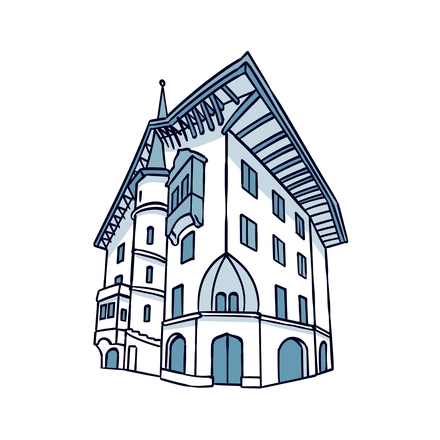
Let me draw your attention to the beautiful 16th-century building on the corner, recognisable by the small stair tower built into its façade. This is the Alte Suidersche Apotheke, Lucerne’s oldest pharmacy, still operating to this day. Step
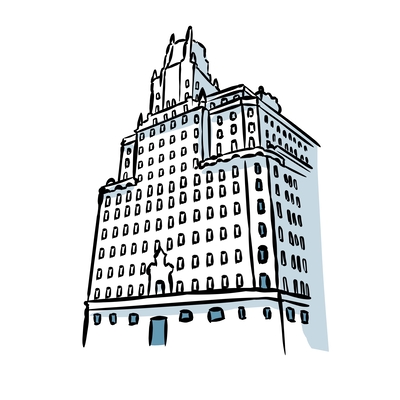
You’ll need to cross Gran Via and step back a little to fully take in the gigantic size of the Telefónica building. With its 1930s New York vibe, you’re not imagining things—it evidently took inspiration from American skyscrapers belonging to that era. It’s

Here we are at the most famous square of the city: Puerta del Sol. So where does "Gate" and "Sun" come from? Originally, there used to be a gate here that served as a passageway through the city walls of 15th-century Madrid—which explains the "Gate" part.
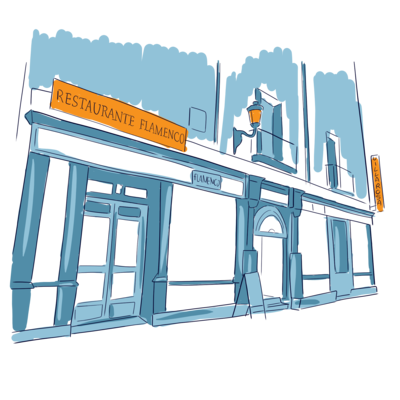
You’ve probably spotted it from afar, all those painted tiles belong to the Villa Rosa tablao, right before you. If you’re wondering what a tablao means, it’s a venue where flamenco shows are performed, and this one is an institution in Madrid, founded in 1911 on what

You’ve just arrived on Santa Ana Square, standing at the heart of the Barrio de las Letras, which is the Literary Quarter. Speaking about literature, this plaza is home to statues of two of Spain’s greatest playwrights: Pedro Calderón de la Barca and Federico García
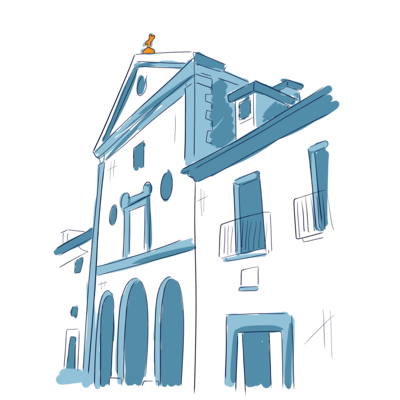
You’re now standing in front of the entrance to the Convent of the Descalzas Trinitarias — literally, the "barefoot Trinitarians"! Quite ironic, right? This monastery was established in what used to be the palace of Charles V and Isabella of Portugal. It was their
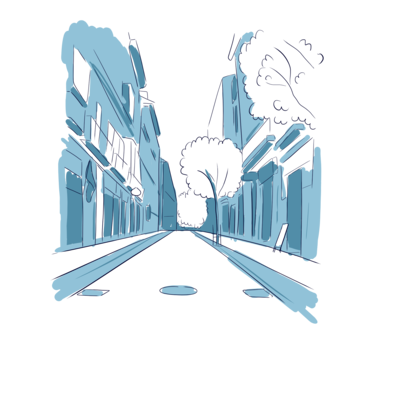
You’re reaching Calle de las Huertas, which means the street of orchards, since vegetable gardens used to grow in El Prado courtyard. A street filled with bars, it also goes by the name of Calle de las Copas, meaning the street of glasses. On a more poetic note, you’ll
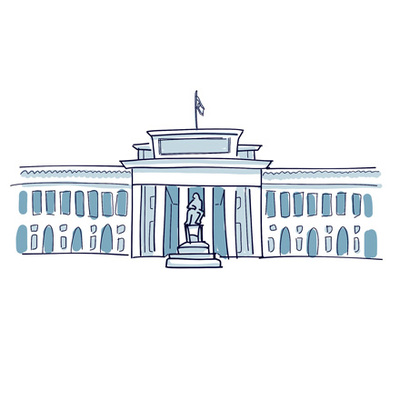
The statue honouring Velázquez on your right is a sign that you’ve reached the famous Prado Museum. The bronze figure shows the painter holding his palette and brush, echoing the pose he gave himself in his most famous painting: Las Meninas. The
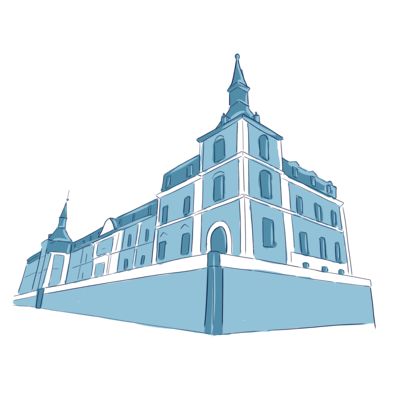
The pink palace you’re passing by right now is the Hall of Realms. It gets its name from the ceiling paintings inside, which depict the coats of arms of the 24 kingdoms and territories under the Spanish monarchy, during the reign of Philip IV. A member of the
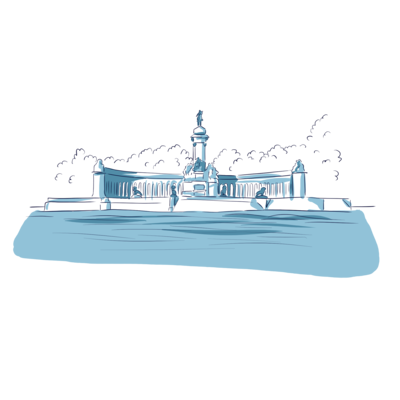
The beautiful Paseo de las Argentinas, nicknamed the Promenade of Statues, offers a grand entrance into the stunning Retiro Park. On the way here, you’ve come across ninety-four statues of Spanish kings, who stood on the cornice of the Royal Palace until
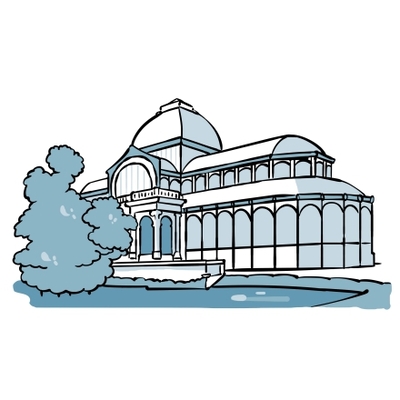
Here you are in front of the stunning Crystal Palace of Retiro Park. This enormous tropical greenhouse is truly a masterpiece of iron and glass architecture in Spain. Its architect, Ricardo Velázquez, was inspired by London’s Crystal Palace in Hyde Park, built
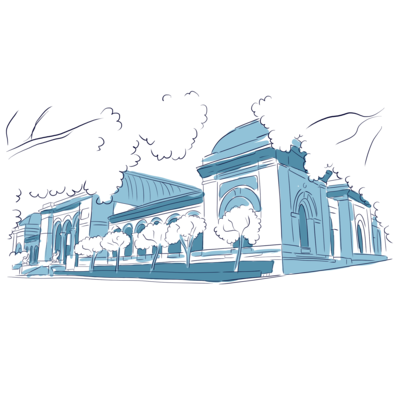
The Velázquez Palace, as it stands today, was specially built in 1883 by architect Ricardo Velázquez to host the National Exhibition of Mining. He would later go on to design the Glass Palace as well. He created a two-coloured brick building, covered by a spectacular
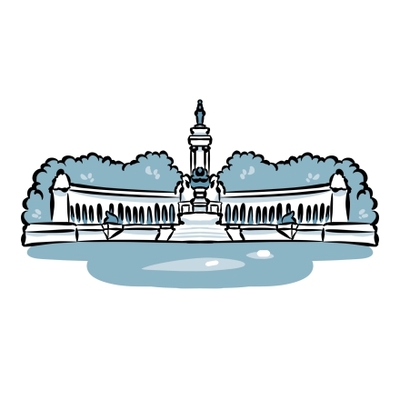
Here you are in front of the majestic monument to Alfonso XII, towering over the pond and serving as one of Retiro Park’s most iconic landmarks. Its story begins in 1887, when Maria Christina, Regent of Spain, decided to commission a monument to honour

Here’s a triumphal arch: the Puerta de Alcala, one of the five ancient entrances to the Old Town. It was the first ever built since the fall of the Roman Empire—even before the Arc de Triomphe in Paris! King Charles III wished to replace a former 16th century gate,
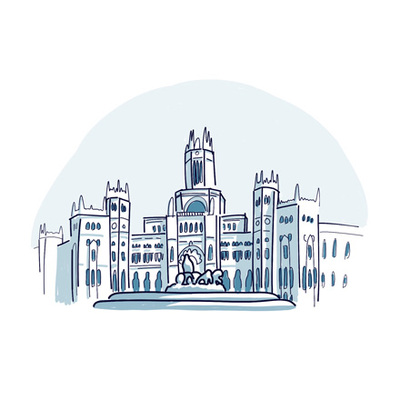
As you arrive on Plaza de Cibeles, you quickly realise that this is one of the most important—and definitely one of the most iconic—squares in the city. For any football fans out there, you may have recognized this place as the gathering point for Real Madrid fans to

Here’s the famous Gran Via, the city’s main street, facing a picture-perfect landmark: the Metropolis Building. A phoenix once stood at its top, back when the building belonged to La Unión y el Fénix. Since then, the phoenix has flown away to leave room for a winged

A complete change of scenery and atmosphere awaits you in the lively Chueca neighbourhood. Known as Madrid’s gay district, Chueca is one of the world’s top LGBTQ+ travel destinations. The area is packed with trendy bars, popular restaurants, and

You’ve now arrived at the San Ildefonso Market, the perfect spot for a “world food cuisine” break while exploring the neighbourhoods of Chueca, Malasaña, or Tribunal. This modern and stylish space is filled with street food stalls from around the globe, built just a few
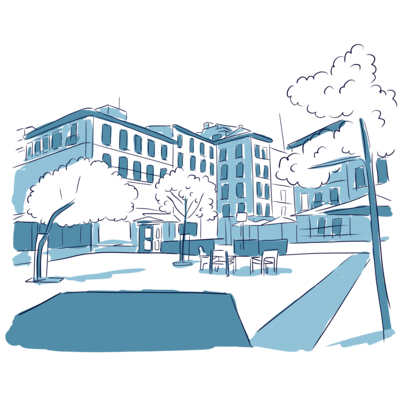
You’ve arrived at the charming Plaza San Ildefonso, a lively square lined with terraces and overlooked by the church bearing the same name. Right now, we’re in the heart of the Malasaña district, an area originally nicknamed “el barrio de las maravillas,”
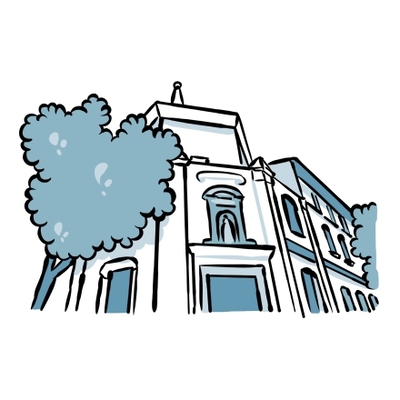
So, you’re probably wondering why we’re stopping in front of this church, which, I’ll admit, isn’t exactly the most stunning in the city. But trust me on this one: step inside—if the small entry fee doesn’t put you off—and you’ll be blown away. The entire interior
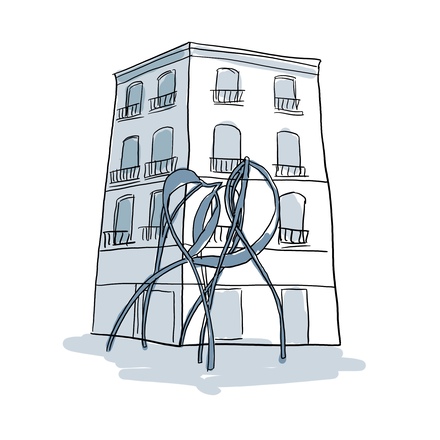
A quick stop on your route, Plaza del Siglo, or “Century Square”, is one of the most popular squares in all of Málaga. Yes, the city has a lot of important plazas, but that’s exactly what gives Málaga’s its charm and warmth.
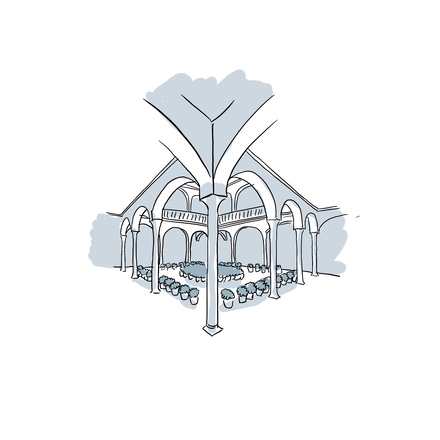
Even for those who couldn’t care less about art, it’s nearly impossible not to know who Pablo Picasso is. He’s arguably the most famous painter in the world, a creative force whose talent inspired countless other artists and
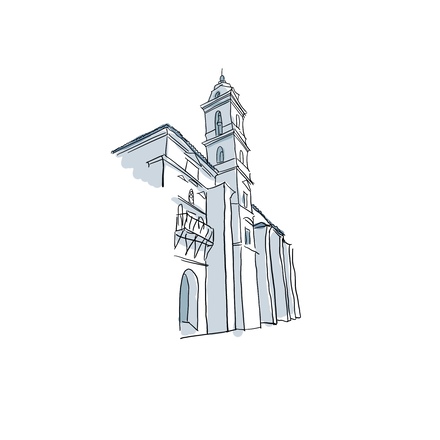
On your left you’ll find San Agustín Church, located on a typical Malagueño street. Built in the 16th century, it fits in perfectly with the scenery. The colourful structure is home to a luminous courtyard, a school, and a
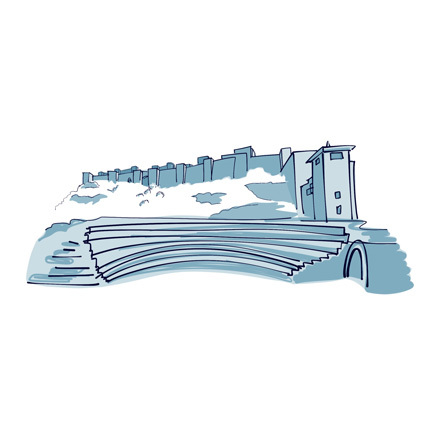
Accidentally unearthed in 1951 during construction work on the former Casa de la Cultura, Málaga’s Roman theatre is one of the city’s most fascinating archaeological treasures. Hidden for centuries beneath layers of

No doubt about it: Málaga is full of surprises, and one of them is just to your right: the Alcazaba viewpoint. What you're looking at is a remarkably well-preserved fortress, considered one of the most impressive and cherished
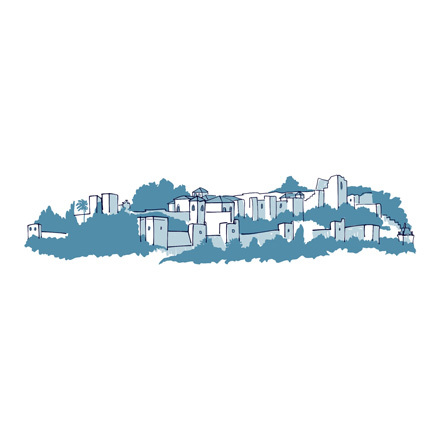
It’s hard to imagine a better introduction to Málaga’s history than the majestic Alcazaba, one of the city’s most iconic landmarks. Built between 1057 and 1063 on the remains of an old Roman fort, the Alcazaba , a word
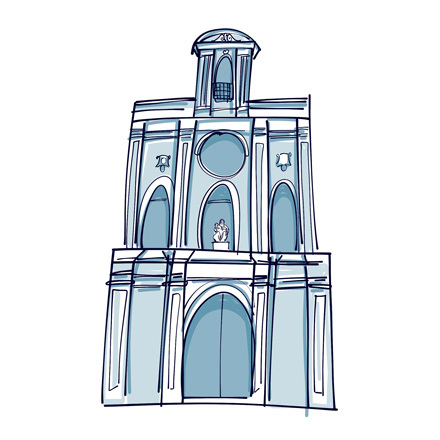
Locals might call it the Cistercian Abbey, but around here, everyone knows it simply as the Abbey of Santa Ana, a hidden gem right in the heart of Málaga. It may not be grand or flashy, but it has a quiet beauty that draws you
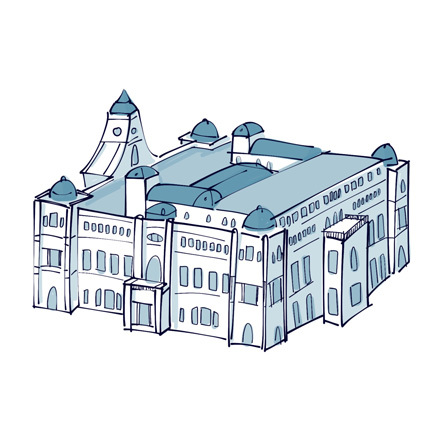
It takes a building as majestic as this one to house Málaga’s City Hall. Inaugurated in 1919, this imposing structure stands proudly at the entrance to the park, just a short walk from the historic centre. It was built on land
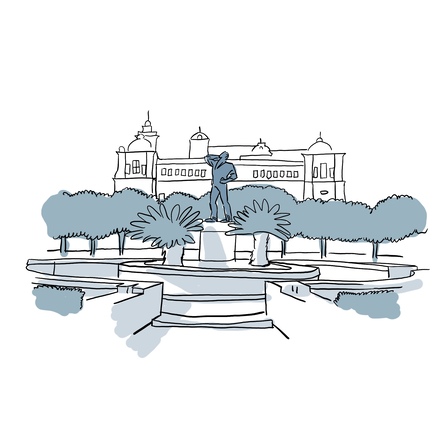
Welcome to the Pedro Luis Alonso Gardens, inspired by the Latin gardens and built in 1947. These lush gardens blend beautifully with their urban and historical surroundings. Spread across a rectangular 6,500-square-meter
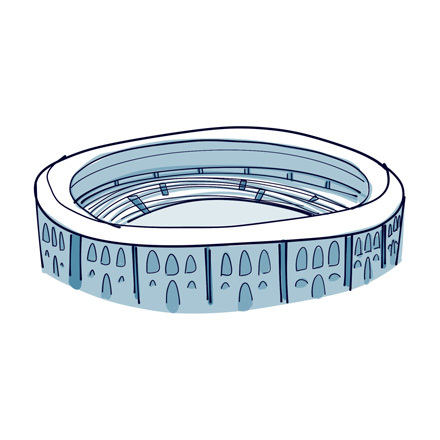
Located in the neighbourhood bearing the same name, the Malagueta bullring was inaugurated on the 11th of June 1876, debuted with a legendary first corrida led by the famous matador Rafael Molina, nicknamed Lagartijo,
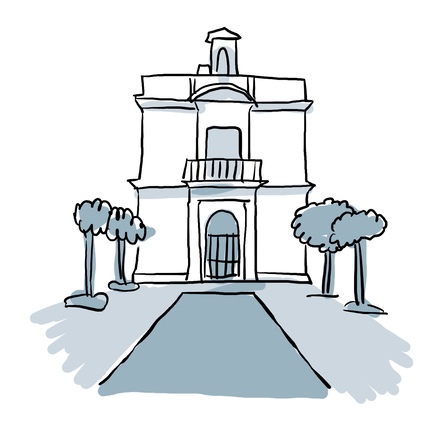
Much older than the sleek Muelle Uno, the Port Chapel of Málaga stands out as a curious destination on our path. Completed in 1732, this tiny, waterfront place of worship was mainly visited by those who lived and worked at
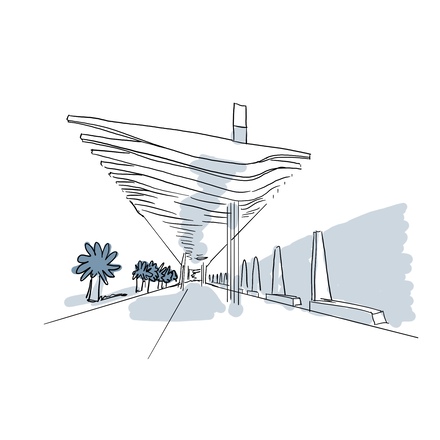
You might not picture a port as the ideal place for a relaxing stroll, let alone a buzzing hub of culture and cuisine. But in Málaga, Muelle Uno turns that idea on its head. Opened in 2011 on the site of an old dock, this bold
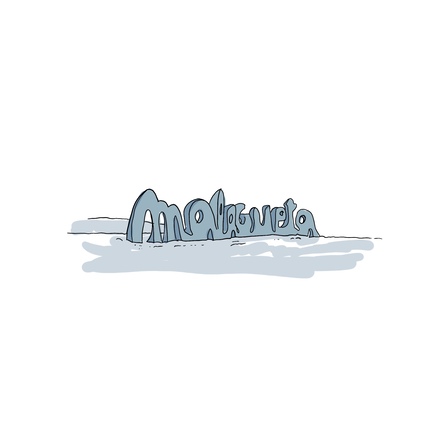
A trip to Malaga wouldn’t be complete without taking the time to dive into one of its turquoise-water treasures. And of course, we’re talking about the Malagueta beach. Thanks to its unbeatable location just 10 minutes from
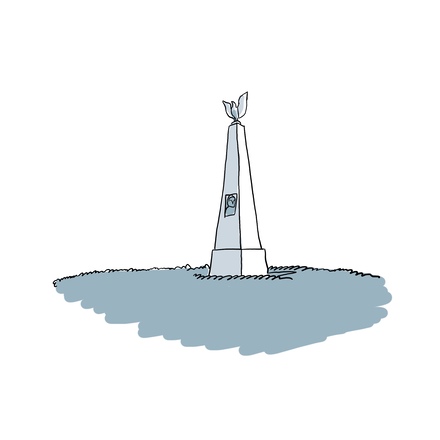
Whether it’s your first time here or your tenth, the Paseo del Parque has a unique appeal that never quite wears off. In fact, during your first stroll around Málaga, chances are you’ll find yourself drawn to this spot thanks to its
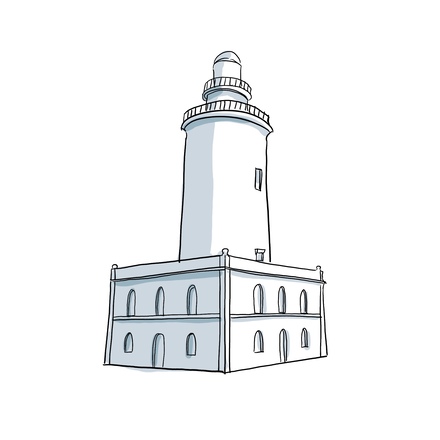
As you’re crossing the pedestrian zone, glance to your left, you’ll notice the Farola, the feminine Spanish word for ‘faro’ or lighthouse. This iconic structure is one of the most recognizable symbols of the Costa del Sol city.
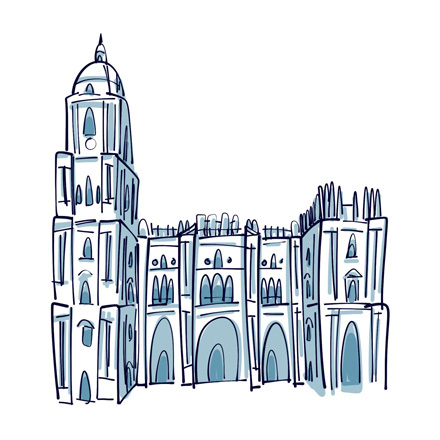
More than just a place of worship for the people of Málaga, the Cathedral of Santa María de la Encarnación is also a key landmark for finding your way around the city. Built between 1528 and 1782 on the site of a former
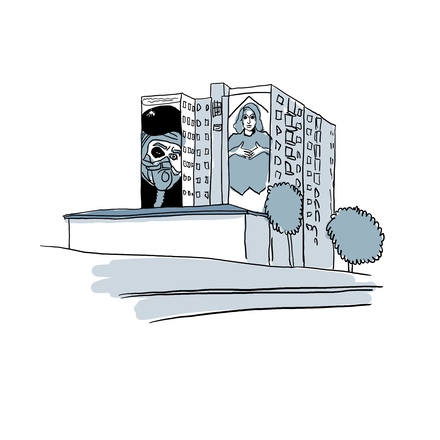
On your left you’ll find the Soho district, a perfect marriage between underground culture and urban art. Soho, also nicknamed the art district, runs along Córdoba Street and was once totally abandoned. Thanks to a local

When traveling, you can boost your general knowledge in many ways,through a local dish, language exchange, or a cultural visit. In short, there’s so many options. Unsurprisingly, the more curious you are, the more
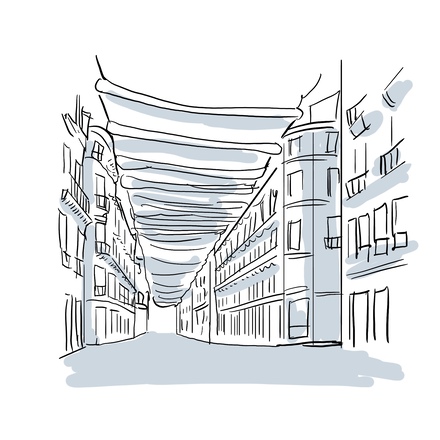
Going to Málaga without strolling down Marqués de Larios Street is like going to New York and skipping Fifth Avenue, unthinkable! This beloved avenue in the heart of the Costa del Sol’s capital was officially inaugurated in
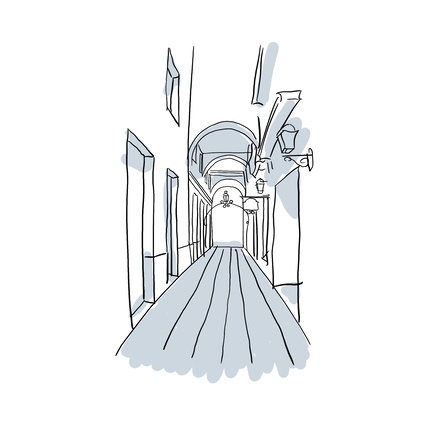
Built on the site of a former 17th-century convent, of which only a portico remains, visible from Plaza de la Constitución, Pasaje Chinitas is a true gem in Málaga’s historic centre. This narrow alleyway, opened in the late 19th
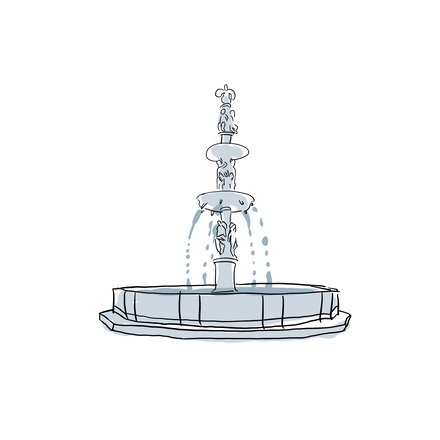
You’re now standing in the Plaza de la Constitución, the beating heart of Málaga since the city was under Islamic rule. Right in the heart of the historic district, this square attracts tourists and locals alike with its warm and

The Plaza del Obispo – literally “Bishop’s Square” – is one of the architectural gems of Málaga’s historic centre. Its exact origins are still debated: some say it dates back to Roman times, while others believe it was first laid out
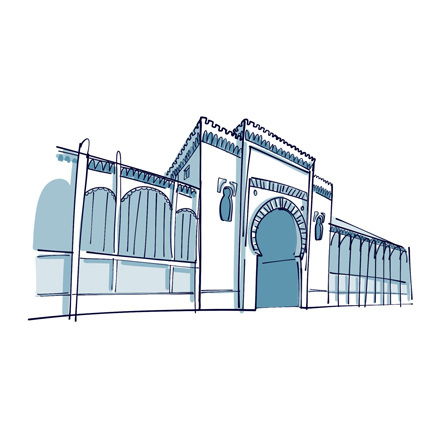
Atarazanas Market is a hidden gem right in the heart of Málaga, bustling, full of character, and yet surprisingly overlooked. Luckily for you, we give the Atarazanas Market the spotlight it truly deserves! Like many other

After losing one of the bloodiest battles of the 15th century, the Muslims of the Nasrid dynasty, the final Muslim dynasty to rule over the Iberian peninsula, saw no other option than to surrender to the Catholic monarchs. This
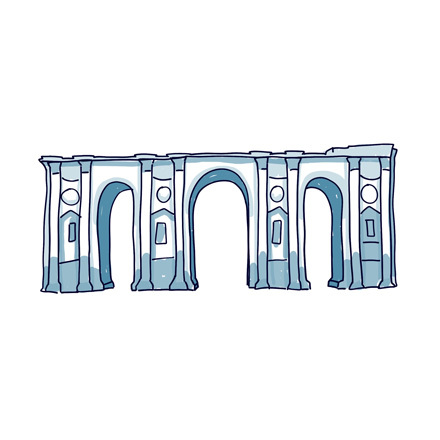
You are now standing in front of the largest known arch in the Roman Empire. You wouldn't expect to find it in this city, would you? Well, Reims has over 2,000 years of history, and in Roman times, it was known as Durocortorum. Legend even has it that the city was founded by Remus, the brother of the creator of ancient Rome
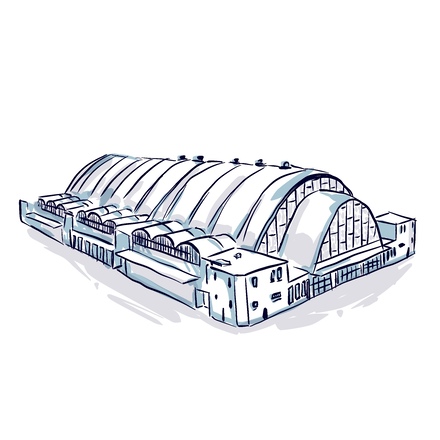
It's time for gastronomy! This astonishing semi-cylindrical building houses the town's covered market. The Boulingrin covered market was built five years after an architectural competition was organised in 1922. It was built by Emile Maigrot and Eugène Freyssinet. At the time, the materials and construction techniques used to build
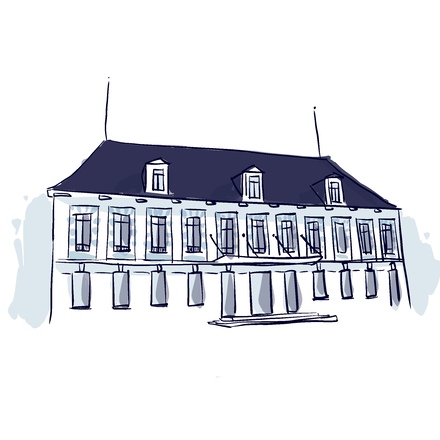
Look to your left, the imposing black gate that decorates Temple street is the entrance leading to the headquarters of the prestigious Veuve Clicquot Ponsardin Champagne House. It was founded in 1772 by Philippe Clicquot-Muiron, who worked with his son François. The latter married Barbe Nicole Ponsardin in 1798.
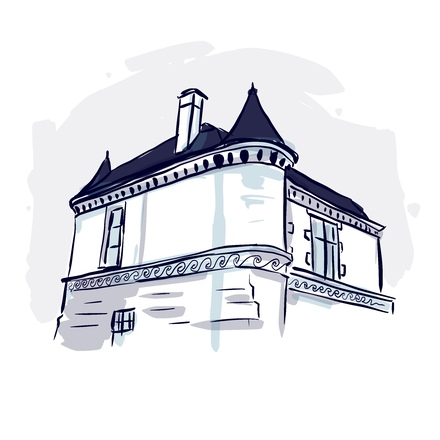
The elegant building on your right is Muire Pavilion, one of the few remaining examples of Renaissance architecture in the city. It was built in 1565 by Nicolas de Pâris, Lord of Muire. The land just behind it was bought by Madame Clicquot to house her cellars. She gave it to her partner Edouard Werlé, who built a residence there in
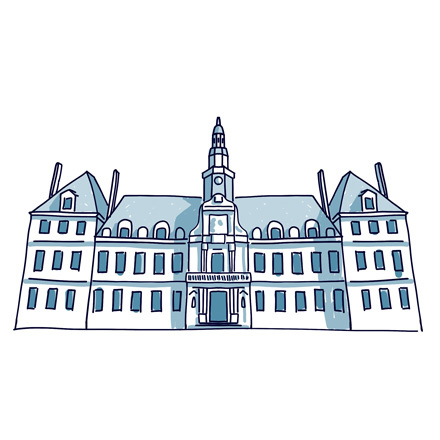
Look behind you. The people of Reims boast of having one of the most beautiful town halls in France for a reason! And yet this building has had its share of misfortune over the years. The first stone of the building was laid in 1627, on the very site where the town council had been located since 1499.

This is Tambour street, one of Reims' historic streets. It links the City hall square to the Forum square, in a succession of houses that plunge you straight back into the city's past. On your left is the Residence of the Counts of Champagne
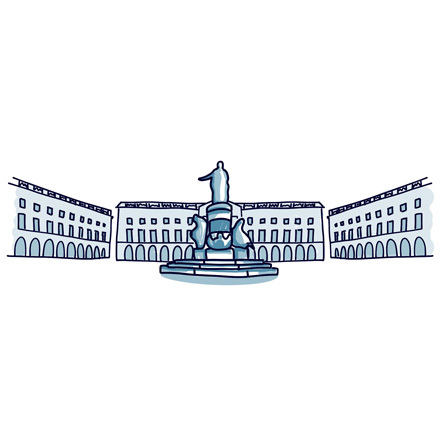
Well now, would you be surprised if I told you this place is called Royal Square? I guess not, given the clues that could set you on track, such as the gigantic statue of Louis XV at its centre or its almost perfect square shape surrounded by
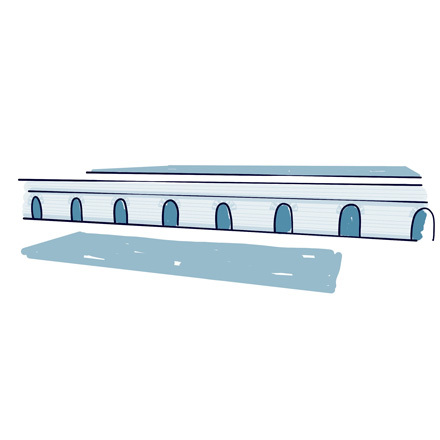
You are standing on Forum Square., it was the most important place in the city during Roman era, as it was here that the inhabitants met to deal with political, commercial, economic and judicial matters. After Antiquity

From here, you have a superb view of the western façade of the cathedral that enables you to clearly see just how intricate its architecture is. Did you know that the roof structure was completely rebuilt following the Great War?
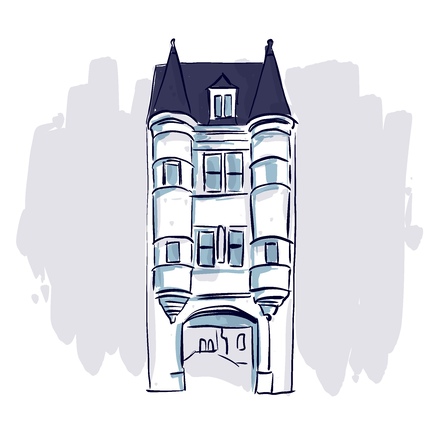
We will now go through the Chapter gate, recognisable by its two turrets and its architecture that distinguishes it from adjacent buildings. Dating back to the 16th century, it once led to the courtyard of the Cathedral Chapter
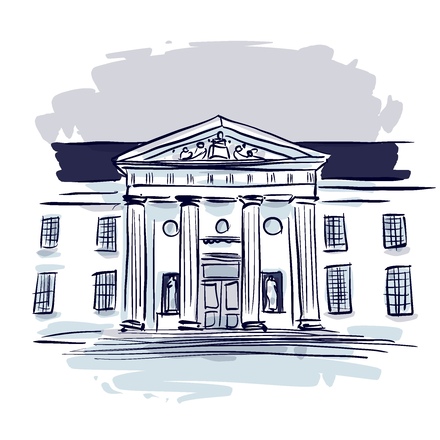
This building serving as the seat of the Reims courthouse, was constructed on the site of the former Hôtel-Dieu, and was inaugurated in 1839.. It was architect Auguste Caristie, with Nicolas Serrurier, who designed the new building
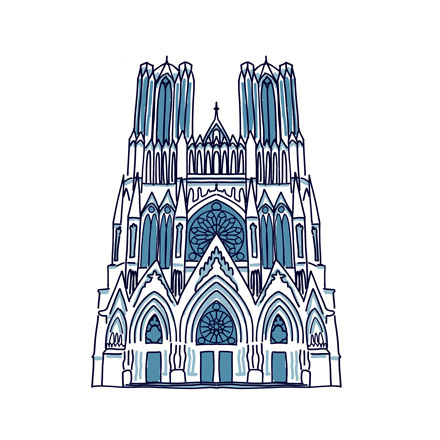
There it is! Notre-Dame Cathedral! Reims’ Cathedral stands before you with its breathtaking architecture. Get ready because there is a lot to say about this wonderful sanctuary. What you have here is a true Gothic art masterpiece
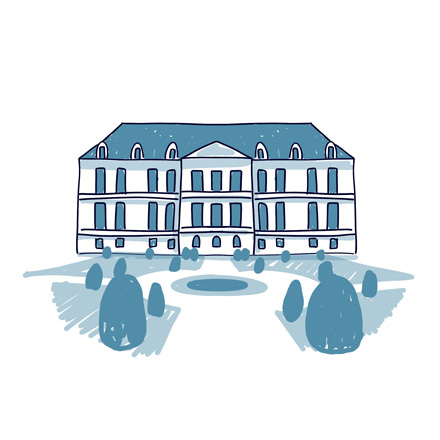
The Tau Palace adjacent to the cathedral was once the residence of the city’s archbishop and his entire administration . It was therefore the archiepiscopal palace of Reims. This palace also played a major role in the coronation of the kings
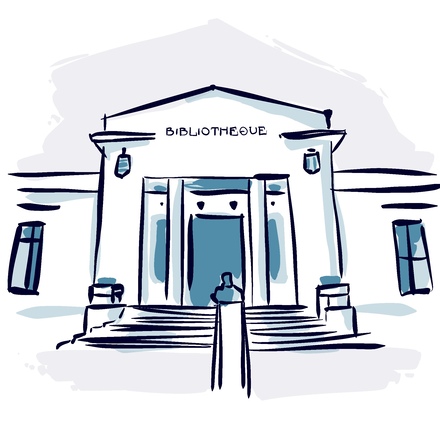
Yes, I am definitely taking you to see a library, but not just any library! The Carnegie Library is a true Art Deco masterpiece,reason being that Reims is considered the French capital of this style, which appeared in the 1920s.

You are now in Chanzy Street. Before I tell you about the street itself, I suggest you take a look at the house on your right, and raise your eyes to the top of the building. You'll see a head sticking out of the building, with its hat
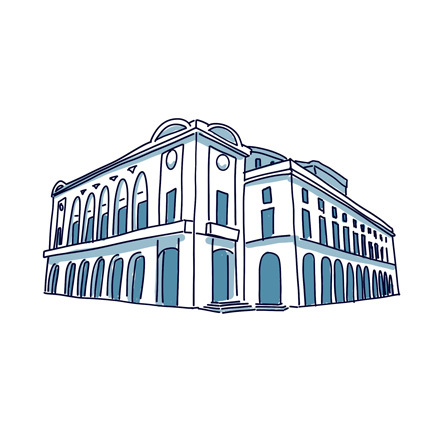
The Reims Opera House was inaugurated in 1873. Prior to that date, the city had only one small auditorium, where the very popular theatrical performances took place. But as the city and its population grew, the auditorium became too

Established by the Gallo-Romans as their decumanus maximus, this is one of the oldest streets in Reims. You may want to know what a decumanus maximus is.It refers to the main east-west oriented road or street in a Roman city grid.
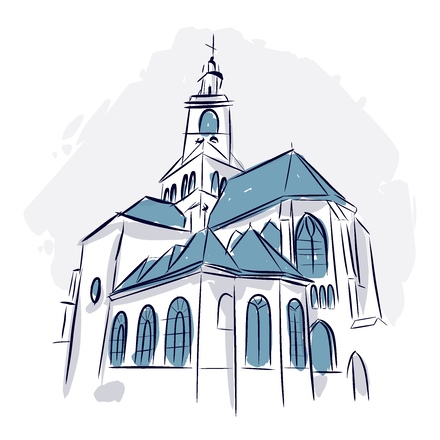
Founded in the 12th century, Saint-Jacques is the second oldest church in Reims. It is one of 3 medieval churches still standing in the city. Before the Revolution, Reims had more than thirty of them. Built in many phases, it reveals several
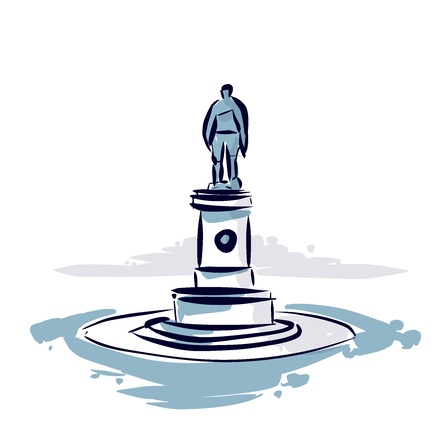
This small square bears the name of one of Louis XIV's most important ministers, Jean-Baptiste Colbert, who played a key role in the economic development of France in the 17th century. His statue, designed by Eugène Guillaume in 1860
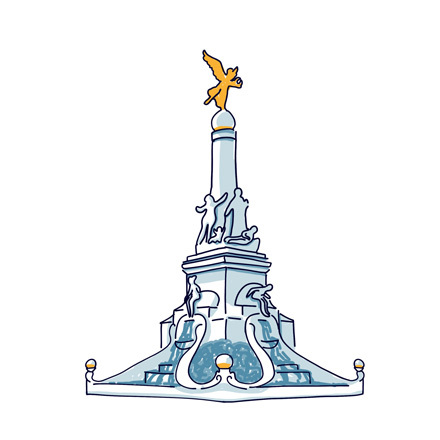
This is considered to be the largest terrace in France, measuring 400 metres in length. Lined with lively bars and restaurants, it is longer than the famous Place de la Concorde, Place des Quincunxs and Place Bellecour in Paris
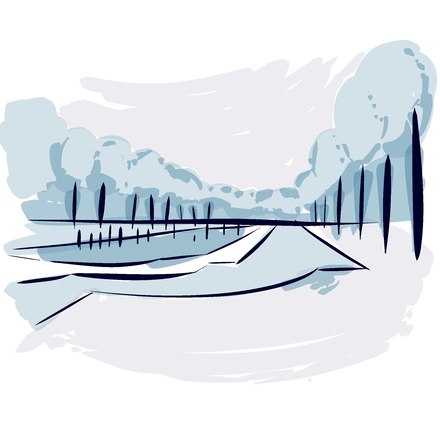
If you’re looking for a place to relax in the heart of Reims, you’re at the right spot. Reims promenades is a place dedicated to leisure activities, much to the delight of families. Although this 3,000 m² esplanade was inaugurated in its current
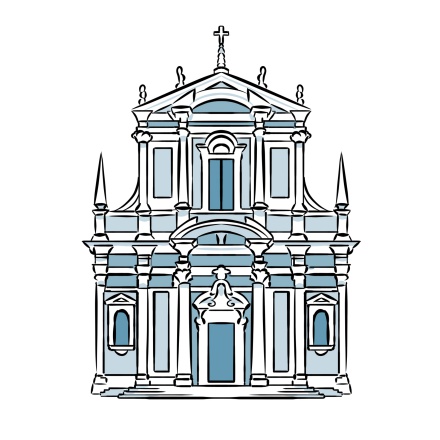
After climbing the grand baroque staircase, you’ll find yourself in front of one of Dubrovnik’s most treasured landmarks, St. Ignatius Church. Built between 1699 and 1725 and inaugurated in 1729, it was inspired by the design of Rome’s famous Church of the Gesù.
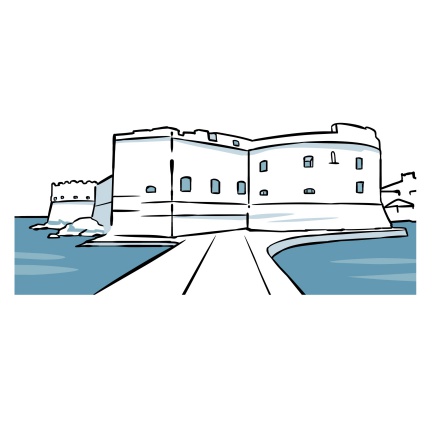
Look to your right... You should spot a stone structure with a flag on the top standing along the pier. This is St John’s Fortress, one of Dubrovnik’s most important defensive structures. Built between the 14th and 16th centuries, it was designed to protect the city’s port from naval attacks.
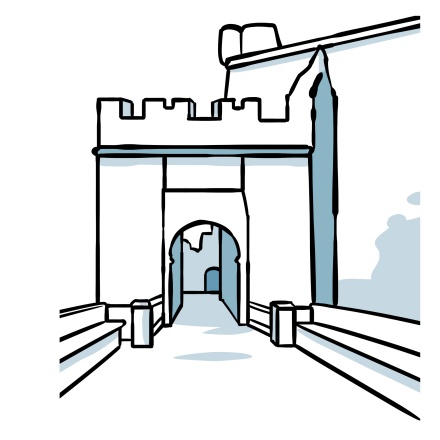
To explore Dubrovnik’s famous city walls, you’ve got three main entrances to choose from. Whilst Pile and Ploče usually get the most attention, Buže Gate is just as impressive as the rest, and the youngest of the three! In the early 20th century, the Austro-Hungarian army broke through the wall and created what we now know as Buže Gate.

If the west side of the city has Pile Gate, the east is equally well served with Ploče Gate. Part of Dubrovnik’s mighty city walls, this entrance still connects the outside world to the historic centre. The current outer section was built in 1628

Stretching for about 300 metres , the full width of Dubrovnik, the Stradun is almost impossible to miss when exploring the city. And really, why would you want to? This lively thoroughfare is the main street of the Old Town. Back in the 12th century, it linked the two
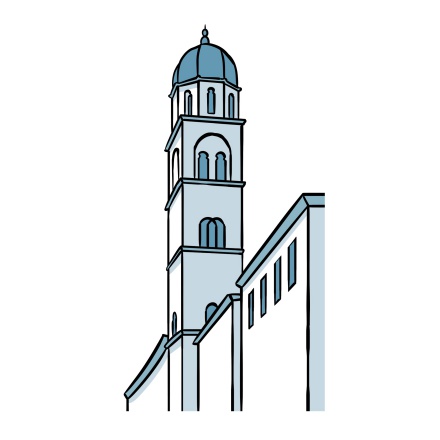
By the mid-14th century, the Republic of Ragusa was very prosperous. Dubrovnik attracted merchants, future residents, and Franciscan monks. In 1317, the monks began building a monastery on this main street, and that was no accident. Here, they were within the city walls and better protected during times of war.

Fort Lovrijenac perches on a rock 37 metres above sea level, making it the highest point of Dubrovnik’s old town outside the city walls. Legend has it that in 1018, the people of Dubrovnik built this fortress in just three months in order to protect the city.
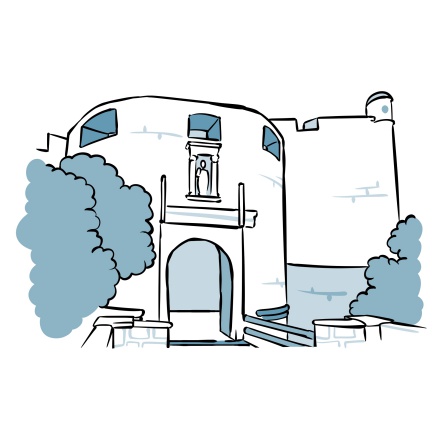
Pile Gate was built in 1537 as a grand entrance to Dubrovnik’s old town. Located on the western side of the city walls, it takes us back to when the city would shut its gates at night to keep out invaders. Beyond the imposing gates, there was once a long wooden drawbridge — later replaced by stone — to make entry even harder for unwelcome visitors.

Not far from the old town’s entrance lies one of Dubrovnik’s most iconic landmarks, the Large Onofrio Fountain. In the 15th century, Dubrovnik was one of the busiest trading ports in the Meditarranean, boosting its local economy. However, the city had very limited access to clean drinking water.
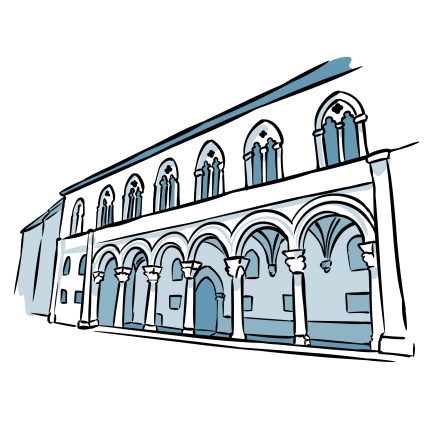
A true symbol of the power of the former Republic of Ragusa, the Rector’s Palace is like a journey back in time. Built in the 13th century as the seat of government, it was also the official residence of the Rector, the head of the executive branch. Elected for just one month,
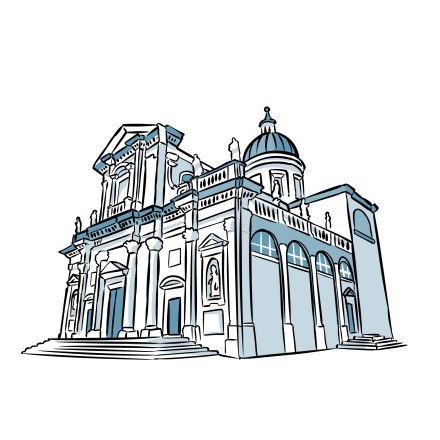
Welcome to Dubrovnik Cathedral, one of the city’s main religious landmarks. Back in the 12th century, a Romanesque church stood here, funded by the English King, Richard the Lionheart. He wanted to build a church for the local citizens who saved his life after his ship sank on a nearby island called Lokrum.
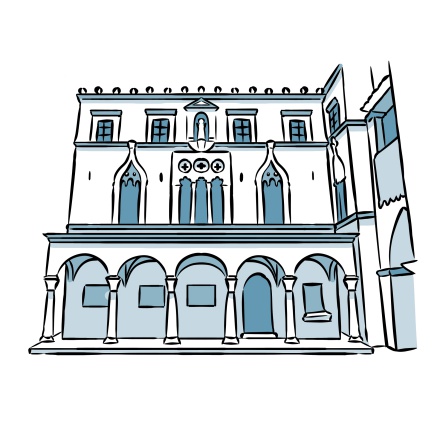
Luža Square is home to some of Dubrovnik’s most iconic landmarks - but there’s one that stands out above the rest... Sponza Palace. Its arched gallery is hard to miss, and it’s the only building that survived the devastating 1667 earthquake.
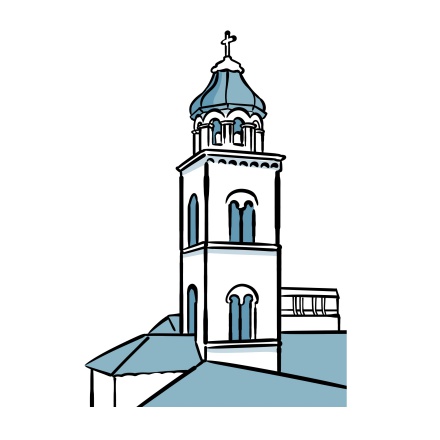
The Franciscan monks weren’t the only ones who found a home inside Dubrovnik’s city walls — Dominican monks and their friars also chose to settle here. Construction of their monastery began in 1300, and took 200 years to complete. During this time, the architecture evolved from Roman, to Gothic, to Baroque, resulting in the blend before you today.

Dubrovnik opens out onto the Adriatic sea, offering plenty of beautiful views to make your heart swoon! Just look in front of you... Isn’t it stunning? You’re looking at the city’s old port, a symbol of the former Republic of Ragusa.

In the past, the Ploče district was a stopover for many merchants and travellers passing through Dubrovnik. To protect the city and its inhabitants from epidemics brought in from elsewhere, a quarantine system was established in the 14th century.
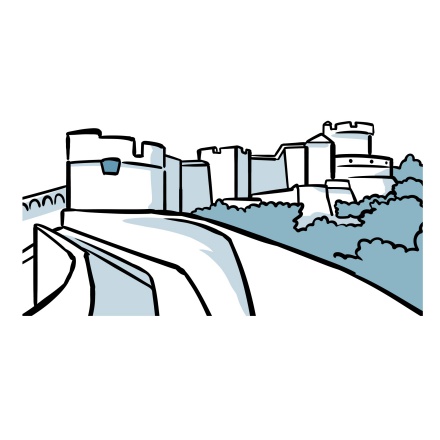
We can’t let you go before telling you about one of Dubrovnik’s most iconic landmarks... The old city walls. Built between the 8th and 16th centuries, these fortifications protected the city for hundreds of years — although the Republic of Ragusa often preferred diplomacy over war when dealing with rivals.
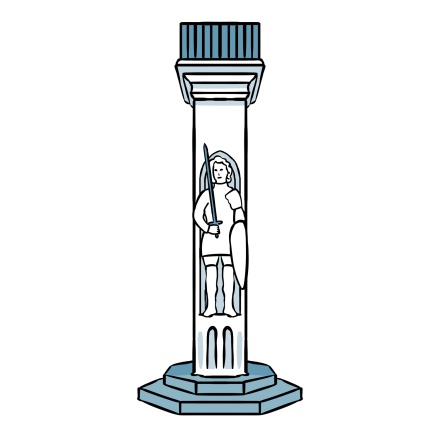
For over six centuries, Orlando has stood watch over Luža Square. Carved from a single block of stone in 1417 by a Milanese architect, this seemingly modest column carries powerful meaning. The figure is Roland—known here as Orlando—
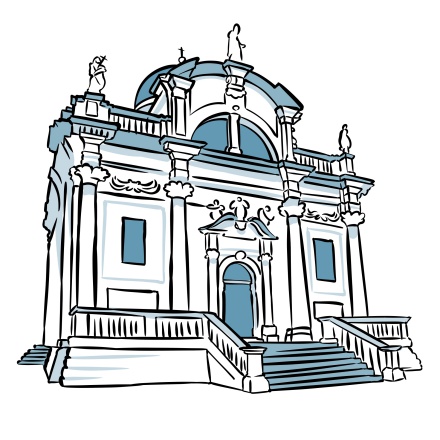
St Blaise’s Church is one of Dubrovnik’s most important landmarks. Tucked a little out of sight, it’s dedicated to the city’s patron saint. This baroque gem was built in the 14th century, though it looked quite different then.... The original structure was destroyed by an earthquake in 1667 and suffered a fire forty years later.
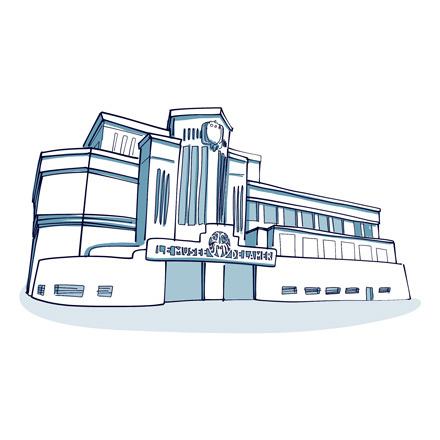
The beautiful Art Deco building in front of you is the Biarritz Aquarium, formerly known as the Sea Museum. Its beautiful white façade conceals one of France's largest aquariums dedicated to aquatic fauna.

This entire area around you is called the Atalaye plateau. Atalaye means promontory in Basque. In the past, there was a turret from which lookouts monitored the passage of whales or the arrival of enemy ships.
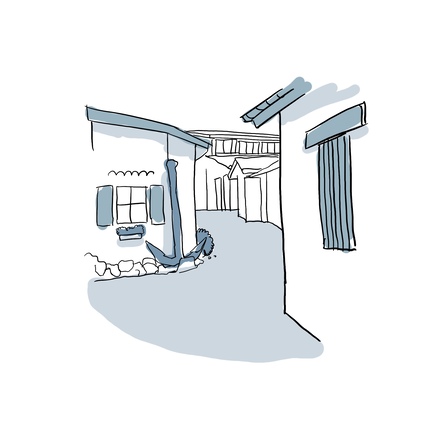
You're now in the old fishermen's port. Look at these pretty white and red houses, known as crampottes. They belong to the town of Biarritz, which rents them out to residents with boats moored in the port.

The perfect way to enjoy the bluish horizon is from a small headland overlooking the sea. From the tip of the Basta Rock, you have a superb view of the fishermen's port. On the other side, you can see the Sainte-Eugénie church,
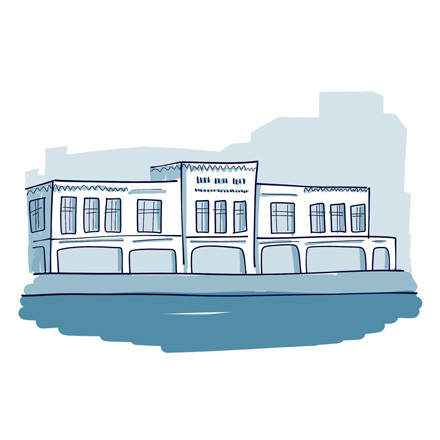
The famous Art Deco casino is another Biarritz landmark! Imagine what it was like back then. We're in the 1920s. World War I is finally over. New buildings are under construction. Youths all over the world want to LIVE, to consume, to exist.
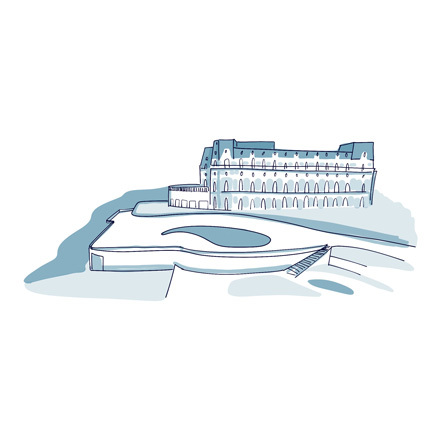
When Napoléon the Third realised that his wife Eugénie had set her sights on this little seaside town, he had to admit that he had to do something about their accommodation.
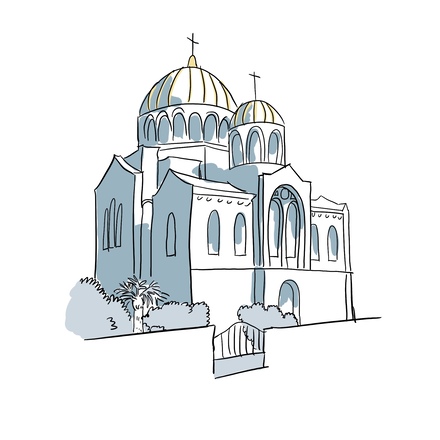
You may not know it, but in Biarritz there are a few Russian highlights here and there. The Orthodox church in front of you is a fine example of the Russian aristocracy's passage through the town in the late 19th and early 20th centuries.
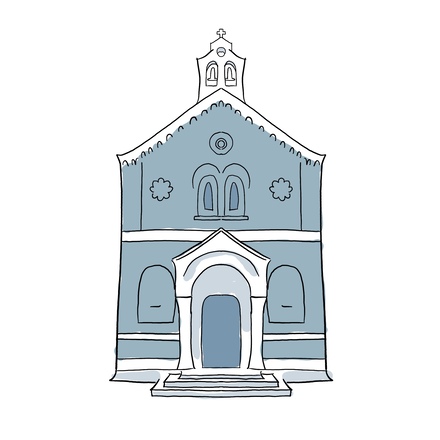
The pretty chapel you see is the Imperial Chapel, which served as a place of worship for Napoleon III and Empress Eugénie. Empress Eugénie was very devout and regularly attended church, and henceforth wished to worship in a private chapel.
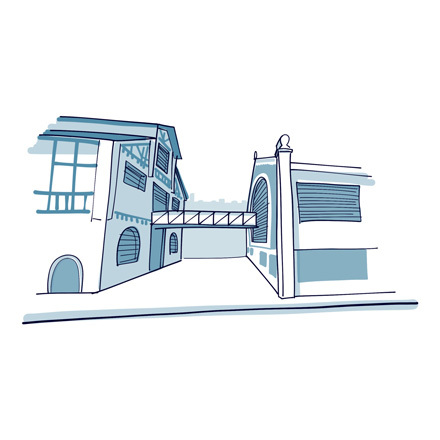
Here's a tip for Basque food lovers: just 150m away, in the Victor Hugo avenue on your left, you'll find the Biarritz covered market. No visit to any city in France is complete without a stop in its gastronomic hub!
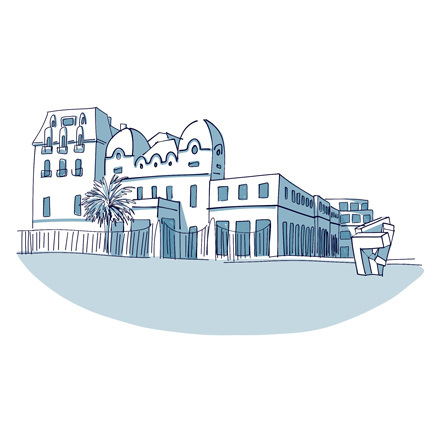
Welcome to Bellevue Square. As the name suggests, you can expect a pretty great view here, and it doesn't disappoint. In the manner of a belvedere overlooking the ocean, this square overlooks the main beach.
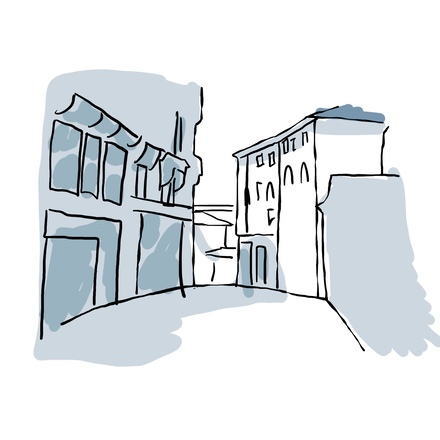
Now you're on Mazagran Street, the most iconic street in Biarritz! Locals and visitors alike love it for its lively atmosphere and Basque charm.
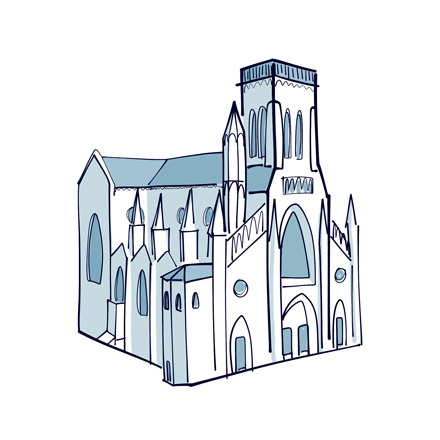
This is the magnificent Gothic church of Sainte-Eugénie, majestically overlooking the ocean. Prior to its construction, the Notre Dame de Pitié chapel stood here. The idea of building a new church to accommodate

Sorry to have made you climb the Dalbarade street like that!From here, it's downhill all the way! Although you have to admit that the view before you is well worth the effort. We're now on the prospect of the Basque coast.
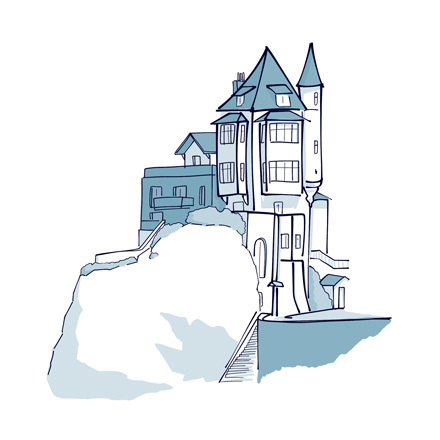
Welcome to the famous Belza Villa, perched on the side of a cliff and whose mysterious profile has become the town's landmark. Its name, Belza, means ‘black’ in Basque. Its proximity to the Devil's Hole and its incredible charm,
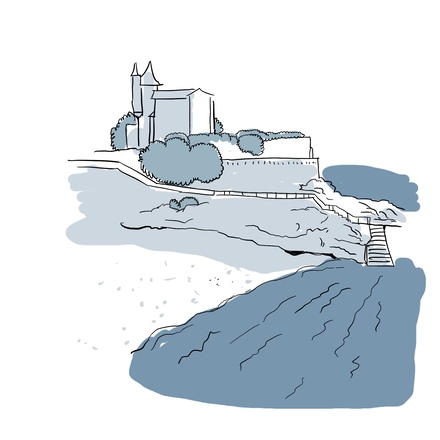
We're now overlooking the pretty cove of Port Vieux. This beach is a natural swimming pool with a Mediterranean vibe that is very popular with families. It's hard to believe that whales used to be butchered here!
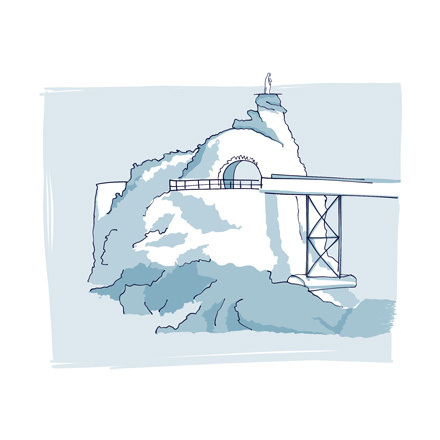
You're finally facing this iconic landmark of Biarritz! The Virgin Rock is inextricably linked with the town's image and its history is intimately linked with its maritime and imperial past! The name of this pierced rock obviously comes
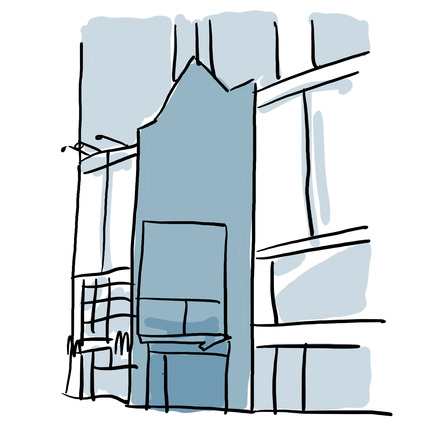
Just off to your left, you'll find the entrance to a huge cultural center. It's but an urban oasis at the heart of one of the most bustling neighborhoods in Buenos Aires! This was formerly the site of a covered market, the Mercado Modelo.
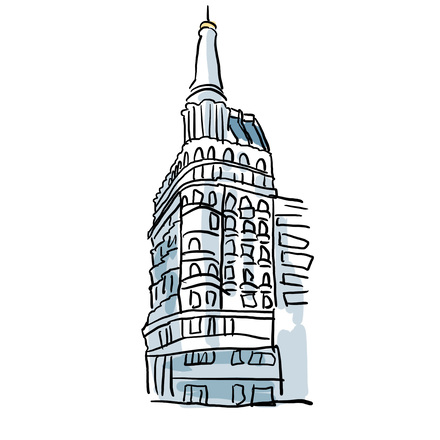
This is Callao Avenue, yet another of the city's major thoroughfares. It's actually been declared a protected historical zone. Take a look around – you're surrounded by impressive buildings, most of them dating from 1880 to 1940.
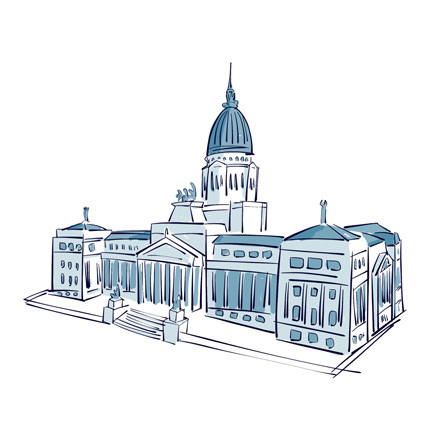
Let's face it – the National Congress of Argentina is a sight you can't miss. It's gigantic! This imposing building is the center of Argentina's political life, housing both the Senate and the Chamber of Deputies.
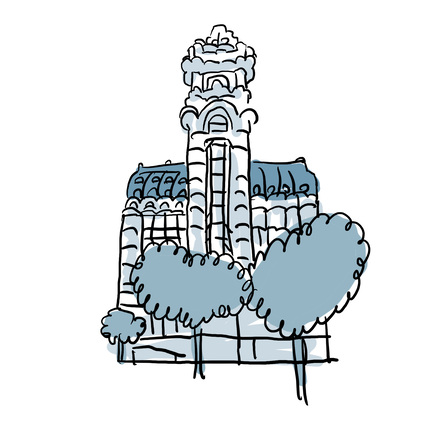
Check out that giant curvy building to your right! It's the Palacio Barolo. It's the brainchild of a young Italian immigrant who arrived in Argentina in 1890. He was the first to import cotton spinning machines and soon made a fortune in the textile industry.
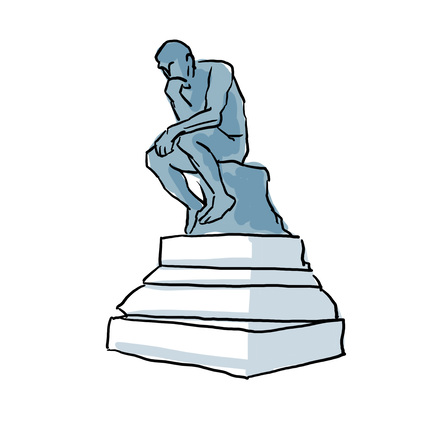
Behold, the iconic Thinker statue by Rodin, the famous French sculptor. Chances are you've seen it before! This bronze sculpture, installed in the Plaza del Congreso, was brought to Buenos Aires in 1908 .

You're now standing at the heart of the world's widest avenue, in front of the statue of the famous Don Quixote, a gift from Spain to Argentina in 1980. And look across the street – that's the iconic Evita Mural.
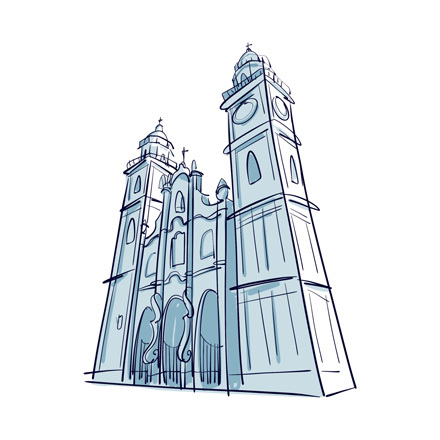
You've reached the beautiful all-white church of San Ignacio de Loyola. If the name Ignatius Loyola rings a bell, then you'll probably know this church must have some connection with the Jesuits; you see, Ignatius was a Spanish soldier who rose
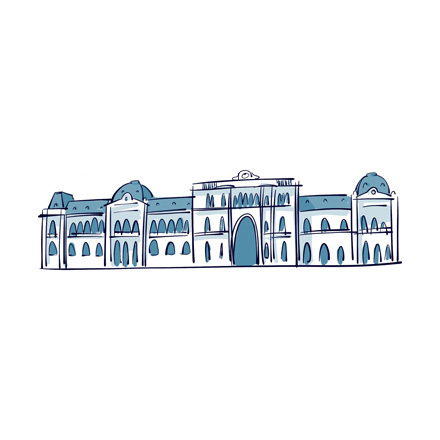
Introducing the famous Casa Rosada, aka Pink House, on the iconic Plaza de Mayo. That’s right, the seat of the Argentinian government really is pink, just like its name suggests! But why this colour?
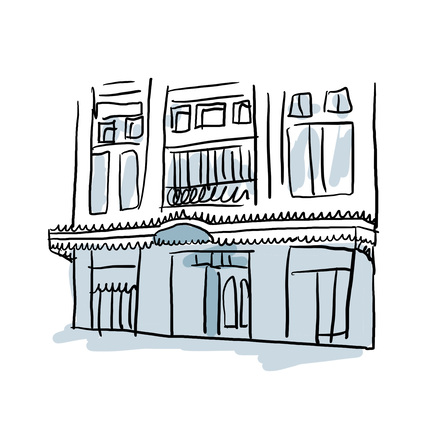
Introducing the Café Tortoni, the oldest and certainly the most famous café in the city. Buenos Aires wears its history on its sleeve. Its beautiful period cafés take you back to a bygone era, perfect for getting a taste of the city's rich tradition.
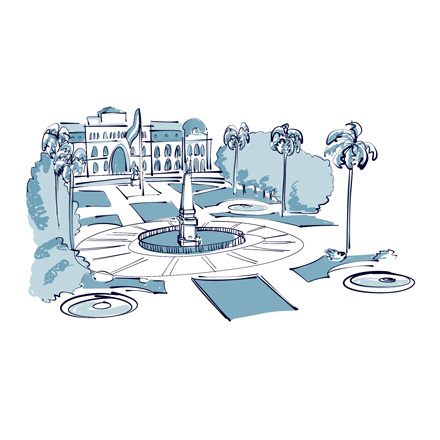
You're at the heart of downtown Buenos Aires, in the Plaza de Mayo, right opposite the Casa Rosada, the presidential palace. It takes us back to a dark chapter in Argentinian history: the days of the dictatorship.

Don't be fooled by its looks! This massive Greek-looking temple is actually the Metropolitan Cathedral of Buenos Aires.
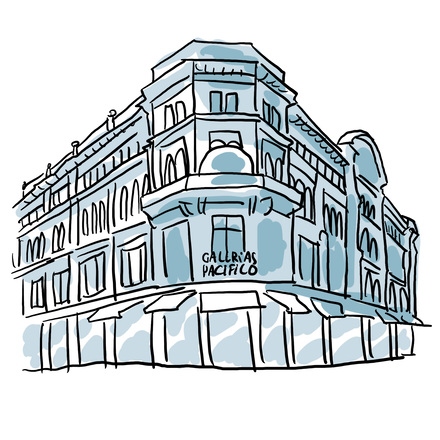
You're now walking up Florida Street, which is buzzing with life, no doubt! It's always been that way! In fact, it's one of the oldest streets in the city – you can even see it on the very first maps of Buenos Aires, dating back to 1580.
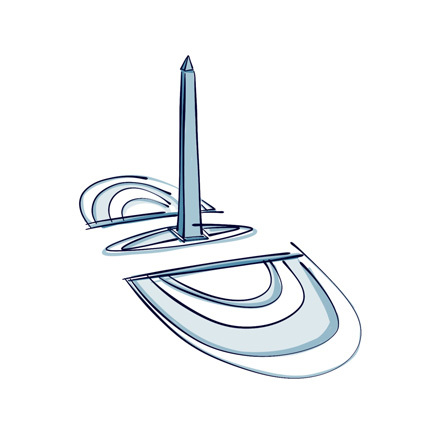
There it is! The famous Obelisk. It's hard to miss – you've probably seen it towering over the city skyline. It sits right in the middle of Plaza de la República, the city's central square. So how did it get there, and why has it become one of the most famous landmarks in Buenos Aires?
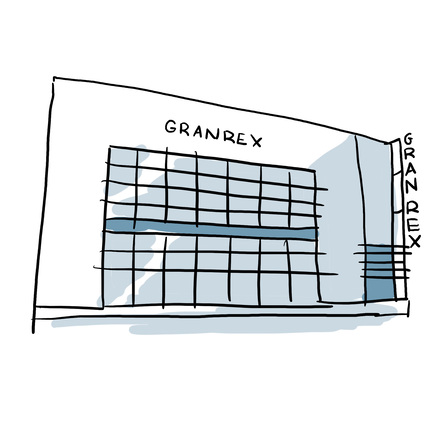
Look to your right and you'll see a grand Art Deco-style theater. It's the Gran Rex theater, the city's main cultural venue. It can seat 3,300 people and it's the country's largest cinema.

On your right, you'll see the entrance to the Güemes Gallery. It may not look like it from the outside, but it's made up of beautiful European-style covered galleries, inaugurated in 1915 and decorated in a stunning Art Deco style.
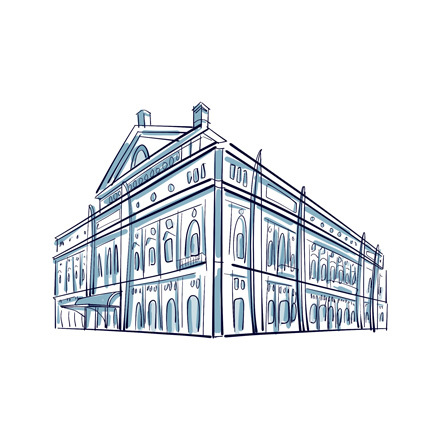
Standing right in front of you is Argentina's crown jewel theater, the Teatro Colón! It's easily one of the top 5 most beautiful opera houses on the planet, rubbing shoulders with the La Scala in Milan, the Vienna State Opera
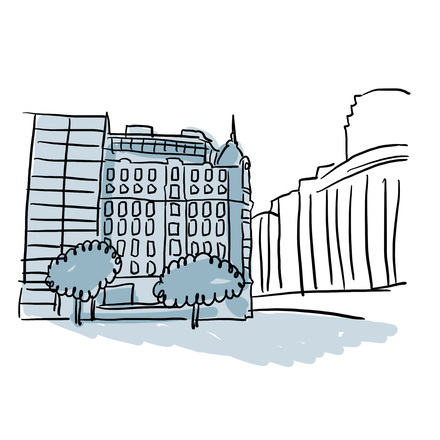
You're now standing on Avenida Corrientes, one of the city's main thoroughfares. It stretches on for what feels like forever – you could walk a good 8 kilometers straight ahead and still be on this same avenue!

You're now crossing the Plaza Lavalle, named after the man on top of the big column – General Juan Lavalle. He was a big-time Independence fighter, part of the Andes army led by Argentina's liberator, José de San Martín.
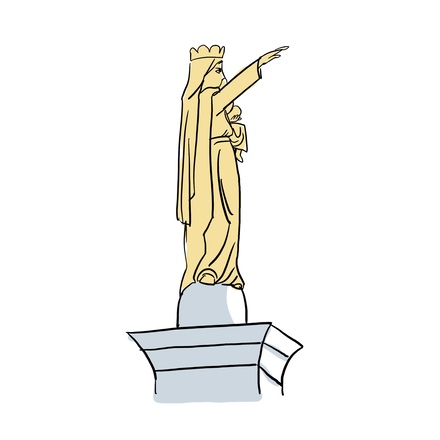
The Notre-Dame des Dunes statue on your left is far from insignificant. Although the statue blesses the town, there is some controversy as to why it was built in the first place as it was built during a particularly troubled period:
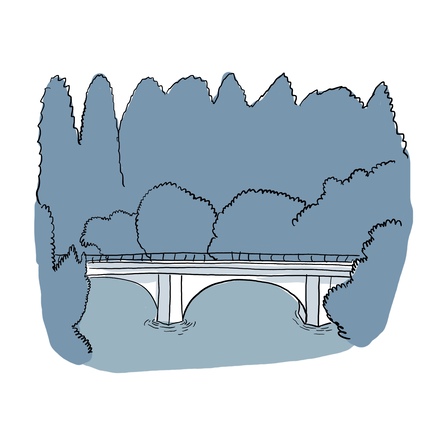
You are now on the Promenade Pasteur, which links the Pont Neuf to the Pont Saint-Cyprien. This lovely, landscaped walk takes you back to the city centre while soaking up the natural surroundings on the banks of the River Clain.
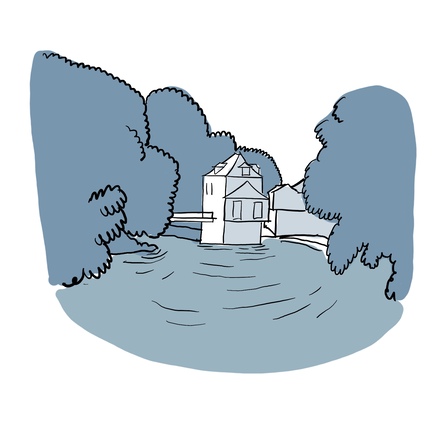
Poitiers is unique in that it offers real nature breaks right in the middle of the city. The city is divided into 3 sections by two rivers: the Clain and the Boivre. On your left is the entrance to the little Oreillères path, which runs alongside the banks of the Clain and
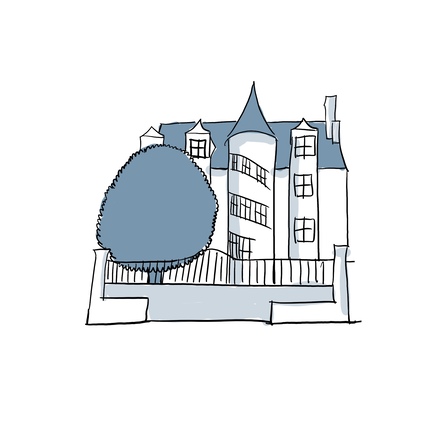
The beautiful Jean Beauce mansion is located right next to the town hall. Its delicate architecture immediately arouses our curiosity and makes us want to find out a little more about it. The history of this building began in 1554,
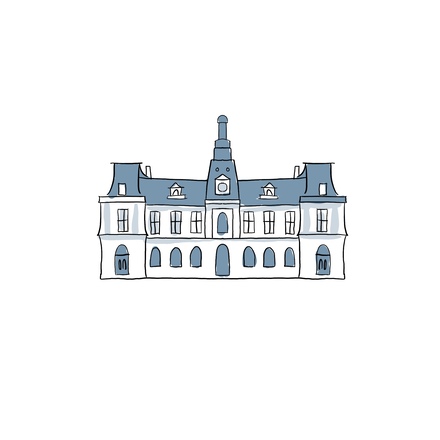
Here, you are in Maréchal Leclerc square, the main square in the centre of Poitiers! Still called Arms Square by some Poitevins, it was also called National Square during the Revolution, Royal Square during the Renaissance and Market Square in the Middle Ages
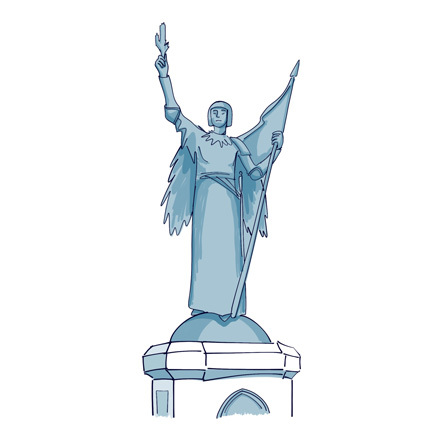
You are now at the back of the Counts of Poitiers Palace, with the Maubergeon tower and the small Joan of Arc square. The statue was erected to mark the 500th anniversary of Joan of Arc's visit to Poitiers.

One could expect the entrance to the Counts of Poitiers Palace to be even more impressive! Especially when compared to the rest of the building! Nonetheless, the palace itself is one of the most impressive masterpieces of medieval architecture found in France..
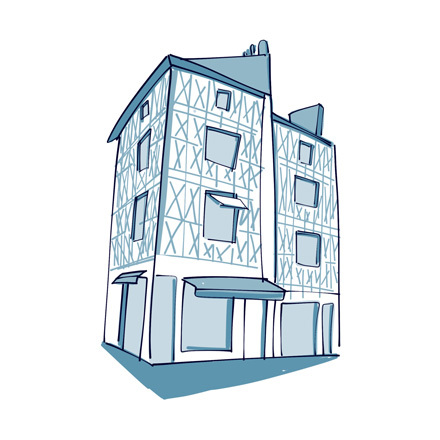
The Vieux Boucheries street is a fine example of the blend of modern and old architecture typical of Poitiers' historic centre. It features a number of fine timber-framed houses. As you know, in those days, trades were grouped together by district.
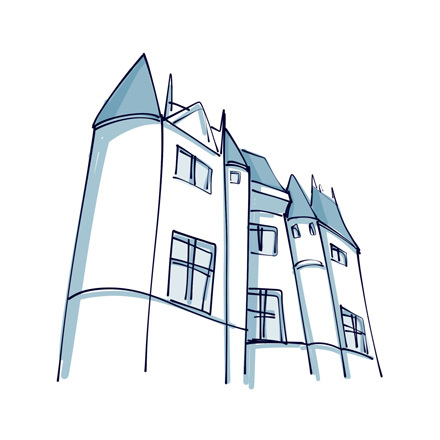
Take a moment to admire the beautiful flamboyant Gothic façade of this private mansion. It was built between the 15th and 16th centuries and is a wonderful example of the best of Renaissance architecture.

Can you guess how many replicas there are of the Statue of Liberty? While the exact number is uncertain, It is surely more than you can imagine! From Japan to Argentina, not forgetting Spain, Las Vegas, Rio and Poitiers, many cities have a smaller

Here you are in front of Poitiers' most imposing monument. Saint-Pierre and Saint-Paul cathedral was built on the remains of an earlier 11th-century religious building. The Bishop of Poitiers was in charge of its construction,
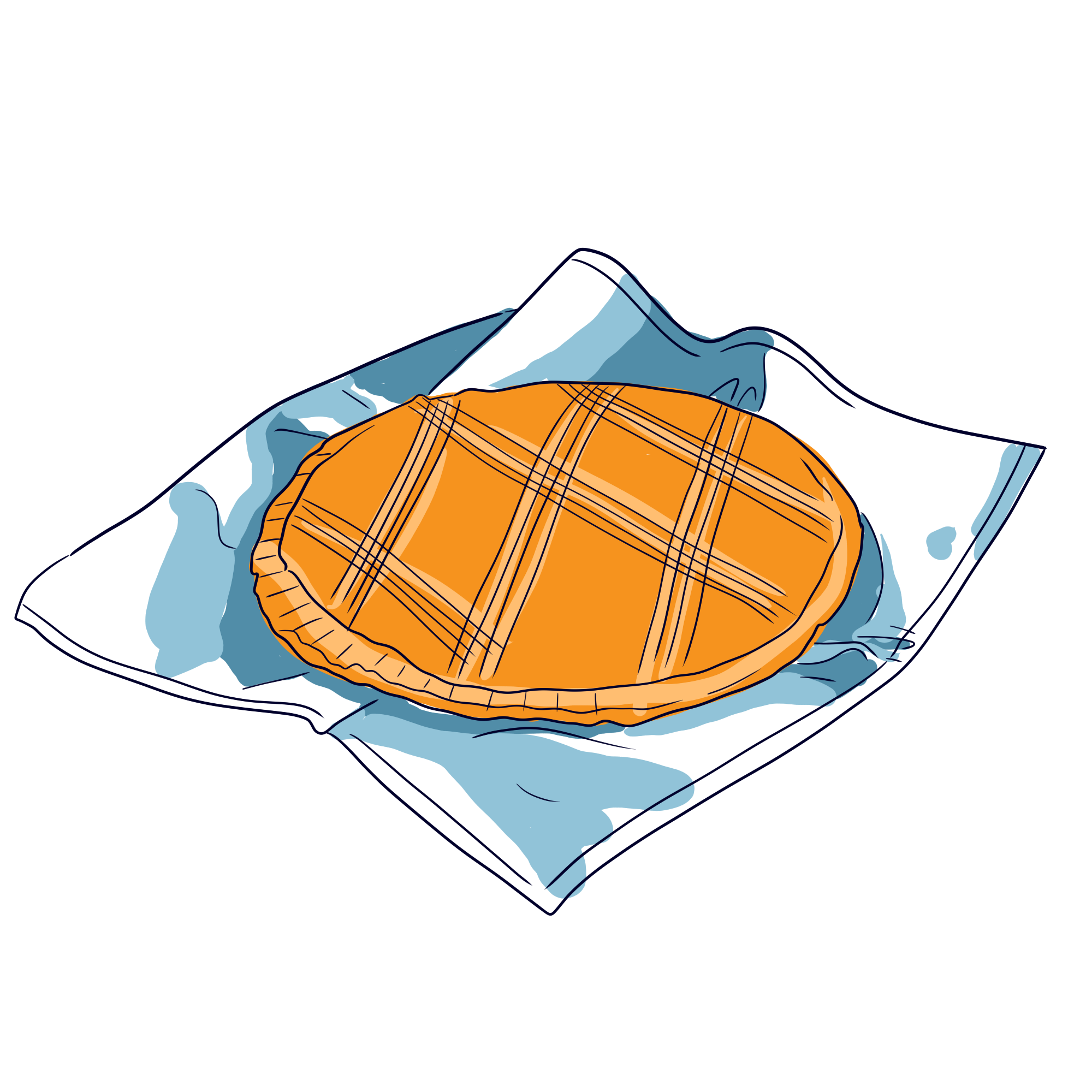
As we walk past the Notre Dame covered market, I'd like to take this opportunity to mention a few of the region's specialities. If you're visiting on a Saturday, you're likely to see a large market of local producers.
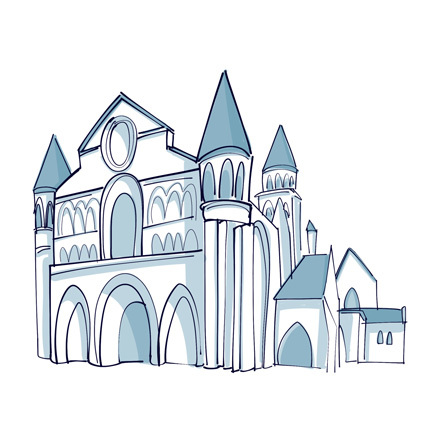
Welcome to the forecourt of Notre Dame de la Grande church! This is Poitiers' finest landmark ( and no, it's not the Futuroscope). The façade of this church is in an impressive Poitiers Romanesque style.
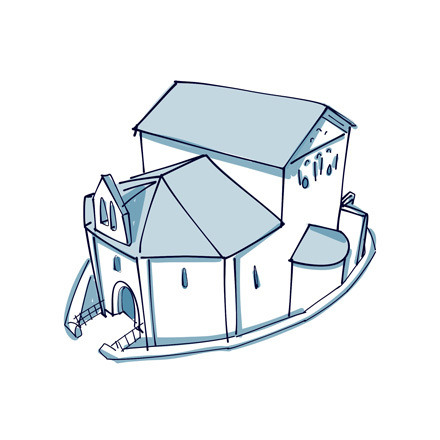
Beware, you are approaching a rare and precious building. The Saint-Jean Baptistery is one of Europe's earliest religious monuments. The building symbolises the arrival of Christianity as an official religion in France.
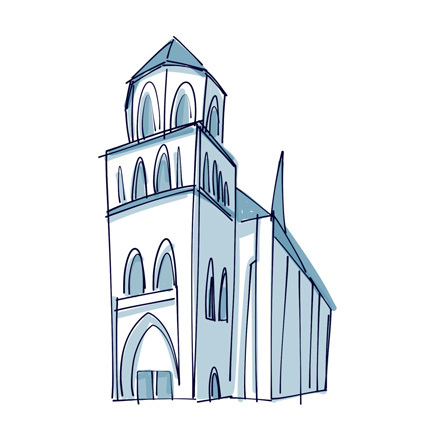
Sainte-Radegonde church, with its beautiful Gothic bell tower and porch, was formerly known as Sainte-Marie-Hors-Des-Murs. It took its current name when the saint was buried here. However, before becoming a saint, Dame Radégonde was the wife of Clothaire I,

As you can see, these few steps have taken you to a viewpoint overlooking most of the old town. You can see the main monuments jutting out from the slate and red-tiled roofs. You're now at the Dunes belvedere, considered to be the most beautiful viewpoint in Poitiers.
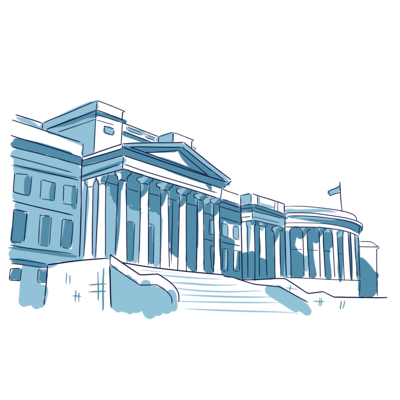
Another impressive neoclassical monument is the World Museum of Liverpool and Central Library. This world museum is the city's largest. It is a national institution, so once again entry is free. If you'd like to take a stroll through the marvellous archaeological, ethnological and natural science collections, or go stargazing in the planetarium
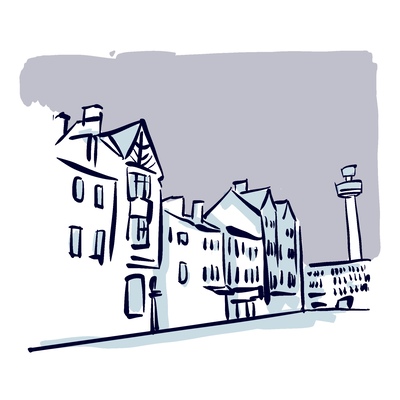
You are now strolling down the pleasant street of Mount Pleasant, lined with beautiful Victorian buildings. If you could time travel a few centuries earlier, you'd be on one of the hills that surrounded the town. But as Liverpool grew and expanded beyond its borders, streets like Mount Pleasant began to appear.

This is Hope Street, the main street in the pretty residential area of Canning. Hope street is not just any common street! It was voted as the best street in Liverpool and then in the whole of the UK and Ireland by the Academy of Town Planning. So please pay attention. It was named after a merchant called William Hope who had his house right here.
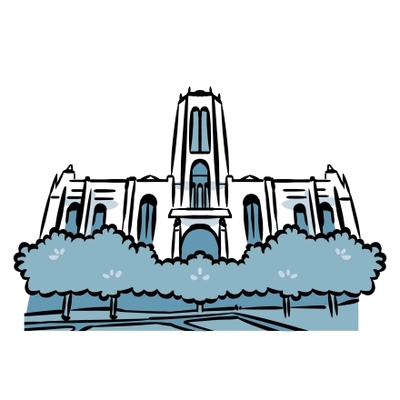
With its strongly religious character, Liverpool has not one, but two cathedrals, each as surprising and spectacular as the other. One is the Roman Catholic cathedral you see here and the other is the Anglican cathedral less than a mile down Hope Street.
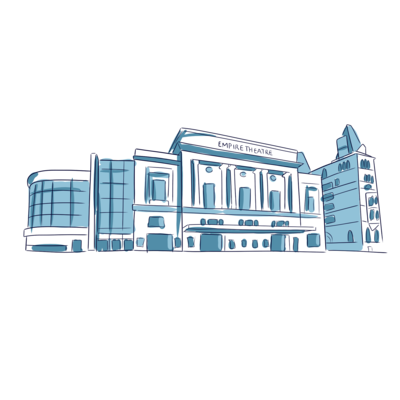
As you can see, we're in a cultural hub. Here you have the legendary Empire Theatre, which has seen some of the biggest names in music grace its stage. It is the second to be built on this site, replacing the first opera house, which opened in 1866 and was Liverpool's biggest stage at the time.
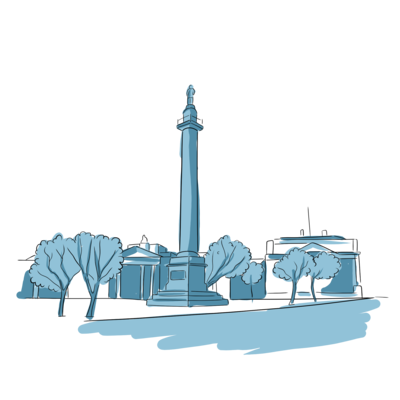
The entrance to the famous Walker Art Gallery is on this side of the building is Opened in 1877, this incredible art gallery houses the second largest collection of artistic masterpieces outside London's museums. This is all thanks to Sir Andrew Barclay Walker, a wealthy brewer and former Mayor of Liverpool, who founded the art gallery and donated it to the city.
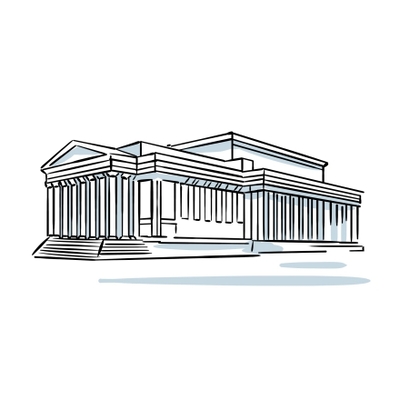
Saint George's Hall is an impressive sight. It is a sort of icing on the cake, in his district considered to be the soul of the city, as it is packed with museums, art galleries, concert halls, theatres and magnificent gardens. A large part of it is a UNESCO World Heritage Site.
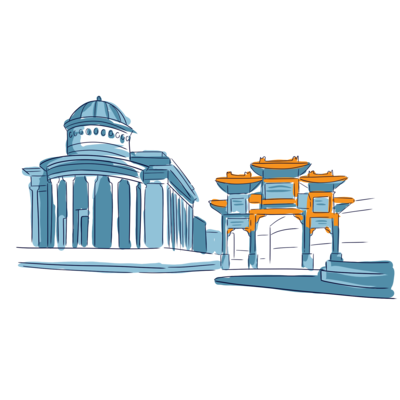
No need to draw you a picture to explain that on your left is the entrance to Chinatown. There are many Chinatowns all over the world, filled with Chinese communities. Liverpool's Chinatown is the oldest in the UK and certainly the oldest Chinese community in Europe.
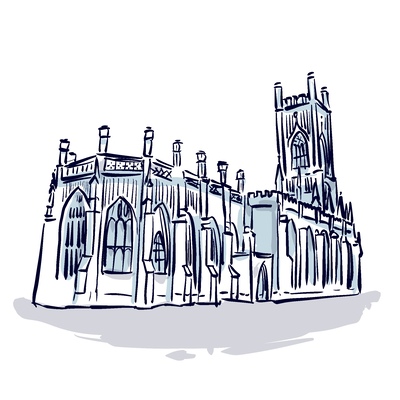
The church on your right is St Luke Church, but locals colloquially refer to it as the bombed church. This former Anglican parish was built in the early 19th century. At the time it was known as the Doctors' Church because of its proximity to beautiful the Rodney Street, famous for the number of doctors practising there.
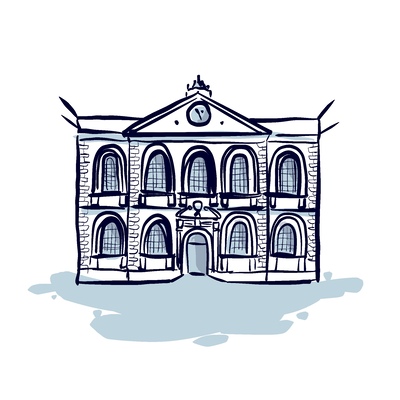
The building on your left has 300 years of history. It's known as the Bluecoat. The Bluecoats, or simply the Blue Schools, were the English charitable education centres founded in the 16th century. These institutions, managed by religious organisations, were intended to provide a basic education to the most disadvantaged children through volunteer work.
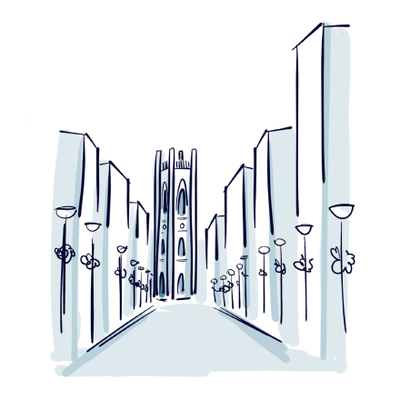
Bold Street is a must-visit street when you come to Liverpool. It's everything we love! A bohemian atmosphere, real musicians on every corner, a succession of restaurants to make Instagrammers swoon, design and vintage boutiques, record shops and a genuine good vibe.
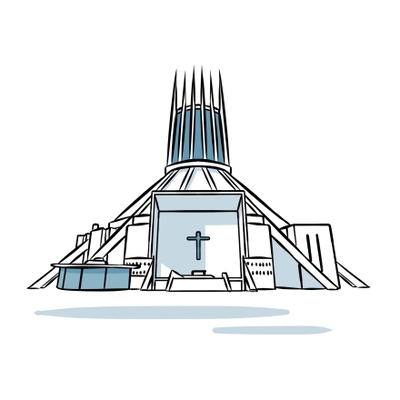
Standing majestically in front of you is the Liverpool Anglican Cathedral, you can't miss it. It's the biggest cathedral in the UK! The cathedral covers an area of 9,687m², filled with religious art treasures. Liverpool's cathedral is a youngster compared to its European cousins built during the famous cathedral era.

You're now entering Liverpool's marina and its famous Albert Dock. It stands as the city's, and indeed England's, most frequented site outside of London You're now one of the 5 million visitors who come here every year. Here, you'll find numerous museums, hotels, art galleries, as well as a wide variety of bars and restaurants.

You are in the heart of Liverpool, in front of Chavasse Park and its grand staircase, at the center of the popular shopping area of Liverpool One. The large sign you see, in Hollywood-style letters, is quite recent. It was commissioned in 2021 by the shopping center and Culture Liverpool after the city broke all records in tourism

Among the many museums at Albert Dock's, there's one that's a hit, and it's right in front of you: The Beatles’ Story Museum. Unfortunately, this one isn't free, but fans of the band cannot miss this visit! It's the largest permanent exhibition in the world telling the story of the Beatles.

As you might have guessed, Liverpool is the city of the Beatles. You're going to hear their songs, see their museum, come across countless references to their past, so while you're admiring all four of them, immortalized in bronze, let's do a quick biographical rundown to revisit this incredible global phenomenon that was the Beatles era.

This majestic building, with its colonnaded façade and beautiful dome, is the Liverpool City Hall. It owes its design to John Wood, a renowned architect from the city from Bath, who drew up plans for this sublime Georgian building. Sadly, in 1795, a fire ravaged the structure which was partially rebuilt.

The sculpture by Ugo Rondinone depicting a stack of colorful stones indicates that you're in front of the Tate Museum of Liverpool. Though less impressive than its counterpart in London, it's still a must-visit for contemporary art enthusiasts, featuring excellent collections including a free permanent exhibition.

You are facing the most iconic group of buildings in Liverpool: The Three Graces. Comprising, from left to right, the Royal Liver Building, the Cunard Building in the center, and the Port of Liverpool Building on the right. The latter was the first to be built, in 1907, to house the administration of the Mersey Docks.

From here, you have an interesting view on the contrasting architecture of the Liverpool port. The blend of protected heritage buildings and ultramodern constructions of the 21st century creates an original and iconic postcard of the city. From left to right, you have the Museum of Liverpool in the background

This is the Merseyside Maritime Museum. It's part of Liverpool's National Museums and was opened in the 1980s. Entry is free, so don't hesitate to take a quick tour. The museum's collections will show you the international importance of the Port of Liverpool as a gateway to the world.
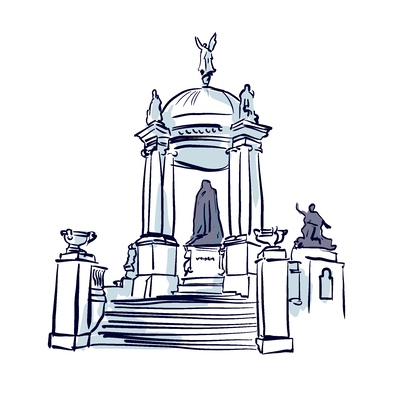
This beautiful Fine Arts monument you see in the center of the square is dedicated to Queen Victoria, one of Britain's most iconic monarchs. Her reign of 63 years and 7 months is the second longest in the history of the United Kingdom after Elizabeth II's.
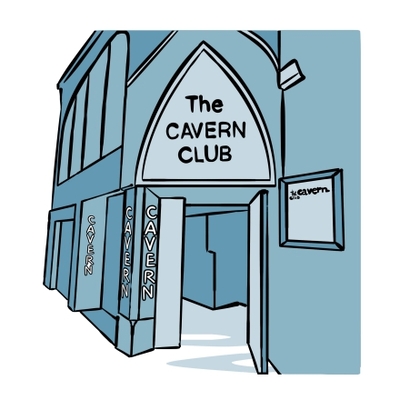
This is the famous Cavern Club. You probably know that this is where the Beatles made their official debut after warming up on the stages of Hamburg. It was in this small venue that their producer, Brian Epstein, discovered them. From then on, they had their hands full! In just three years, between 1961 and 1963, they performed at the Cavern 292 times!!

In most of the world's major metropolises, there's a tower that's taller than the rest of the towers in the city. We strongly advise you to climb to the top of this tower if you want to see the entire city in a single sweeping view. In Liverpool, as you've already guessed, this is where the fun unfolds.

Seated on her bench, you'll see Eleanor Rigby waiting for you. This stone statue is the work of artist Tommy Steele. Although today you'll discover him as a sculptor, he was also a youth idol in the 1950s. While performing in Liverpool in 1981, he offered to donate a work of art to the city in honour of the Beatles.
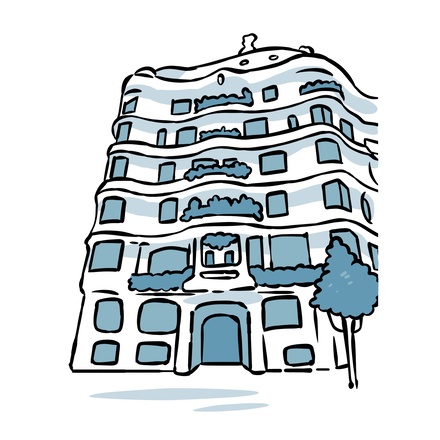
We’ve stopped here to admire Casa Milà, better known as La Pedrera — or “The Stone Quarry,” thanks to its rugged appearance. This was Gaudí’s last civil project before fully dedicating himself to the Sagrada Família. Once again, it was commissioned by a wealthy industrialist
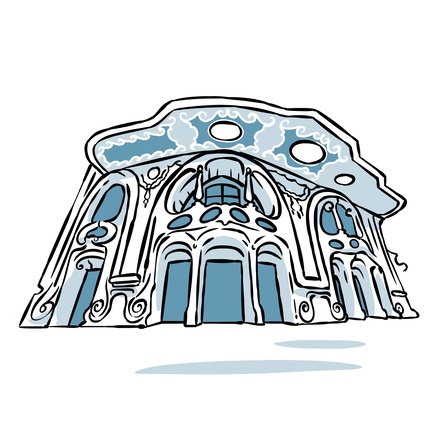
You’re now standing in front of one of Barcelona’s most beautiful Modernist houses: Casa Comalat. Commissioned by Señor Comalat, the building was designed by Salvador Valeri i Pupurull, an architect who made no secret of his admiration for Gaudí.
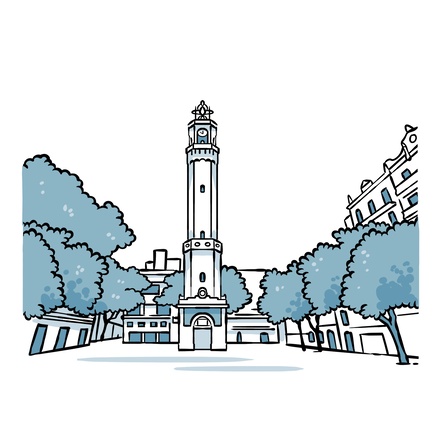
You’re now standing in the heart of Gràcia, on Plaça de la Vila de Gràcia. Feel that village vibe? That’s no coincidence — Gràcia was once an independent town from Barcelona. It wasn’t until 1897, after the creation of the Eixample district
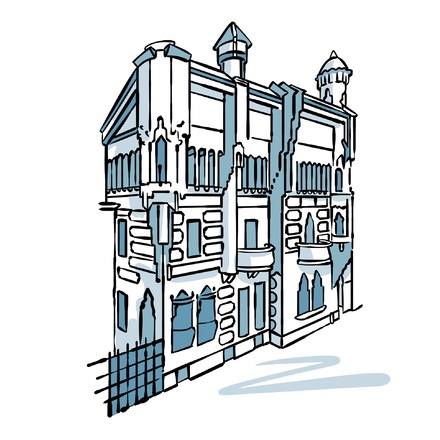
Here, you are in the Gracia neighborhood. A district that, in 1883, at the time of Casa Vicens' construction, was an independent town. This is Gaudí's first major work. The building is constructed in the architect's personal interpretation of Islamic and Oriental art
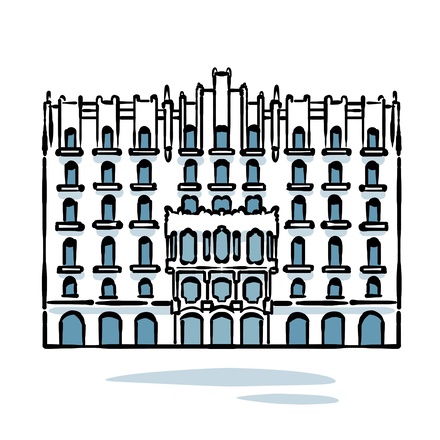
As you arrive at Plaça Lesseps, look to your left and take a moment to admire the striking Cases Ramos. This was the first Modernist building in Gràcia, constructed in 1906, just a few years after the town officially became part of Barcelona.
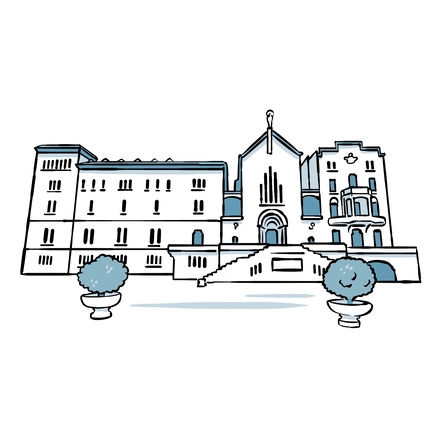
Catalan Modernism didn’t just influence houses and public buildings — it also made its way into religious architecture. The perfect example is the Sanctuary of Saint Joseph of the Mountain. This complex includes a church, a convent, and a neo-Romanesque chapel
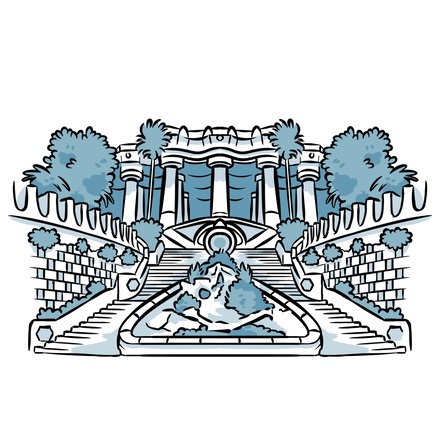
You’re now standing at the entrance of the mythical Park Güell. Since 2013, access has been limited, ticketed, and regulated — a necessary step to protect the site from any further damage with mass tourism. You’re probably wondering why it’s called Park Güell
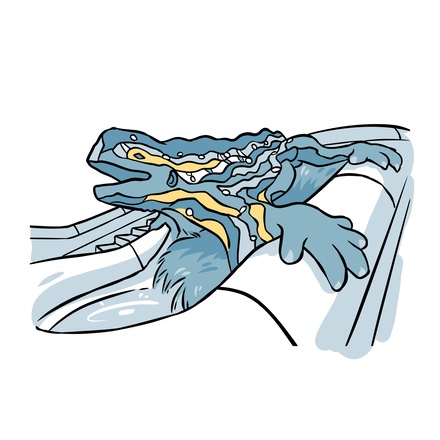
As you step inside the park, you can’t miss the monumental double staircase — better known as the Dragon Stairway, or in Catalan, l’Escala del Drac. And yes, that famous mosaic creature curling in front of you is one of Barcelona’s many dragons.
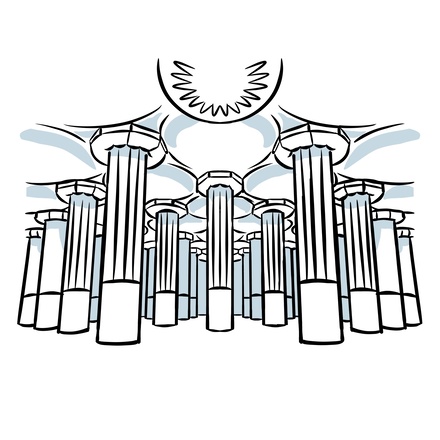
The staircase you just climbed up leads you to another iconic spot in Park Güell, the Hypostyle Hall. Look around — there are 86 Doric columns here, and not a single one is perfectly straight. Each column is tilted at the same angle, holding above you the white mosaic
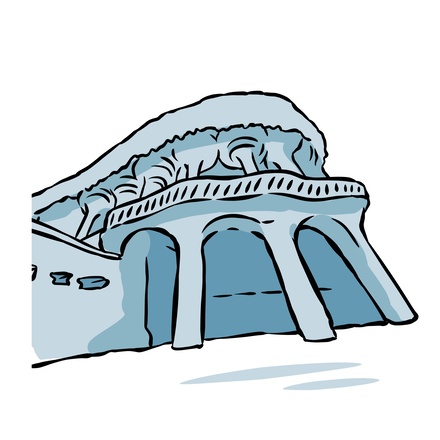
According to Salvador Dalí, this intricate wrought iron gate looks like… calf livers. Only Dalí could come up with something like that. Anyway, this gate marks the entrance to one of the park’s most curious features: the Portico of the Washerwoman

Here’s the cherry on top: the Greek Theatre, named this way as it was to welcome open-air performances. Gaudí had taken inspiration from the agoras of Ancient Greece — the beating heart of social, political and cultural life in the city.

You’ve reached it! THE postcard view of Barcelona. The one you’ve been waiting for. The famous colourful bench, weaving playfully in the foreground, sets the stage for the city's most iconic photo. There’s no room for rigidity and close-mindedness up here!

Since we’ve been talking so much about Gaudí and still got a bit of walking ahead, why not take a moment to get to know him a little better? Let’s start from the beginning. Antoni Gaudí was born on the 25th of June 1852, into a family of coppersmiths.
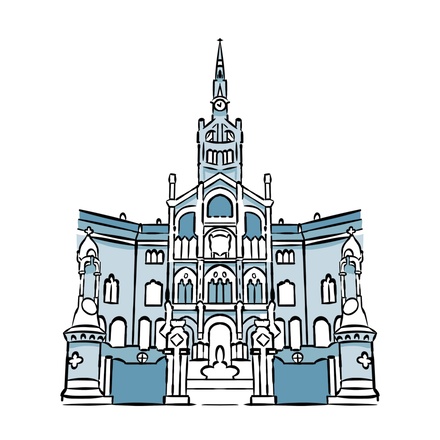
You’ve now reached Travessera de Gràcia, which—as the name suggests—cuts right through the heart of the Gràcia neighbourhood. If you’re feeling like it, take a left then walk 700 metres straight ahead. What awaits at the end of the street is another precious gem
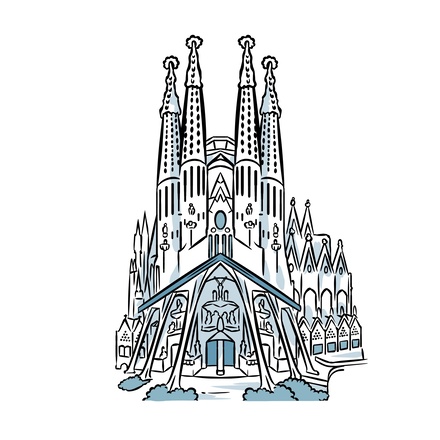
It’s not every day you get to feel what our ancestors—the great cathedral builders—must have experienced. Those men who devoted their entire lives to something they knew they’d never see completed. And yet, here you are, standing before a living
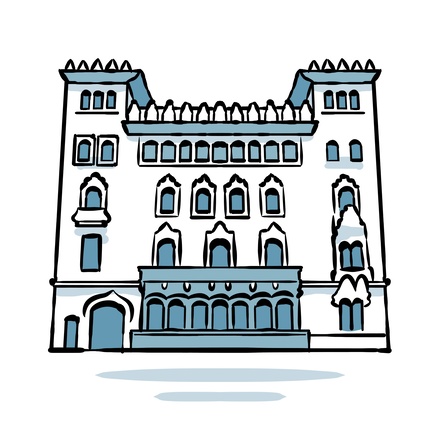
Here it is — the Passion Façade. This dramatic side of the basilica was sculpted by Catalan artist Josep Subirachs, who took on the challenge of interpreting Gaudí’s boldest vision. Gaudí wanted this façade to instill fear — to portray the raw brutality of sacrifice.
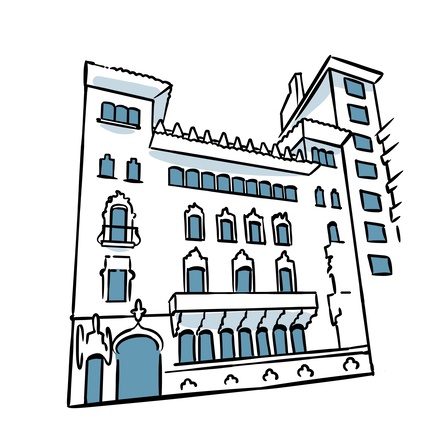
Alright, true — this palace wasn’t designed by Gaudí. However, the Macaya Palace is still a fantastic example of Barcelona’s Modernist architecture, and since we’re passing right by… why not stop and take a closer look?
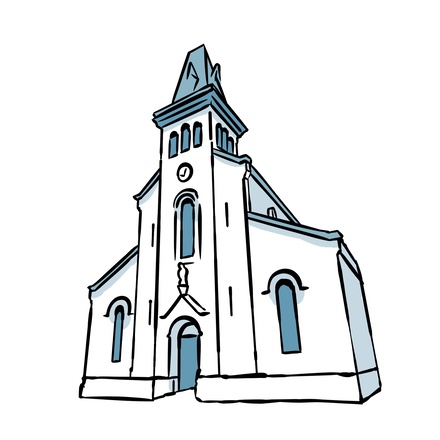
On your left, you’ll see the Church of Sant Francesc de Sales, peacefully nestled along the tree-lined Passeig de Sant Joan. With its distinctive bell tower rising from the façade, it’s considered one of the finest examples of Gothic architecture in Barcelona.

You’re walking along Carrer d’Aragó, one of the main arteries of Barcelona’s modern city layout. It dates back to the 1863 urban plan, and believe it or not, the original name proposed was simply “Street L.” Not exactly inspiring.

Here we are at Casa Calvet, one of Gaudí’s earliest works, completed in 1899. It’s often considered his most conservative design — but even here, you’ll spot plenty of unmistakable Modernist touches. You’re in the Eixample district, established in the late 19th century
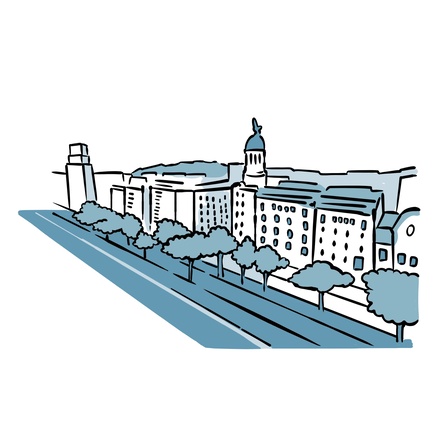
You’ve just arrived on Passeig de Gràcia, the grand boulevard at the heart of Barcelona’s Eixample district. It was born from an ambitious urban plan launched in 1860, as a response to a pressing problem.
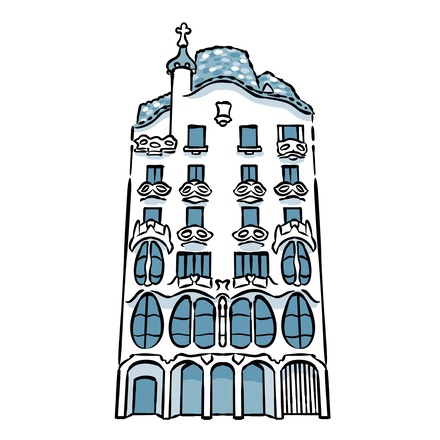
When it comes to Gaudí, let’s be honest — you don’t really need a sign to know you’ve arrived at one of his creations. Here it is: the famous Casa Batlló, arguably his most iconic house. There’s a twist though — Gaudí didn’t build it from scratch!

To your left is the entrance to the Chinese Garden of Friendship, a beautiful garden with a touch of Asian culture, inspired by ancient private Chinese gardens from the 5th century.

Pyrmont Bridge was opened in 1902, in a bid to replace a smaller bridge that could no longer keep up with the rapid growth of the city’s industrial and port activity. It’s a swing bridge, actually, the oldest one in the world still in operation.
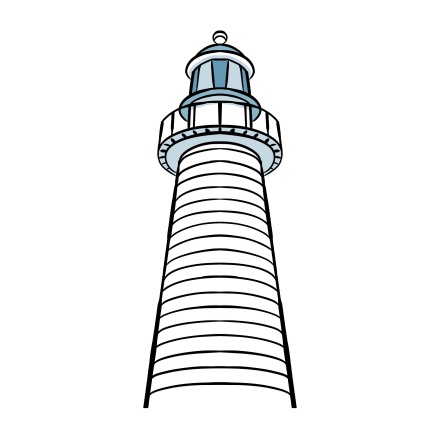
This lighthouse on the edge of Darling Harbour originally stood near the city of Townsville in Queensland, north of Sydney. It had been safeguarding the coastline since the late 19th century.
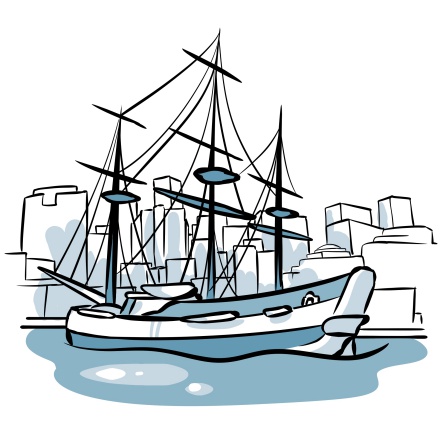
James Cook is a name forever linked to the city of Sydney, as he was the first European to set foot on these southern lands aboard his ship, the Endeavour, in 1770.
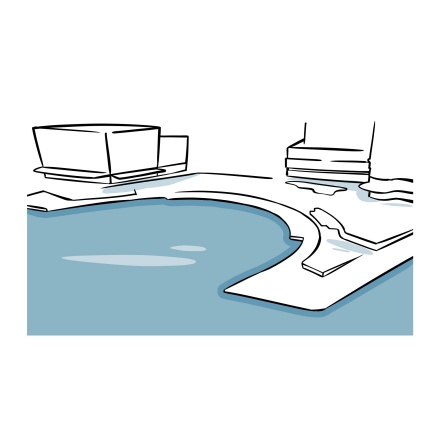
The Waterfront Promenade is one of the most popular walking spots for visitors. With shops, restaurants, and a stunning view of the City’s skyline, this little route along Darling Harbour is bustling at any time of day.
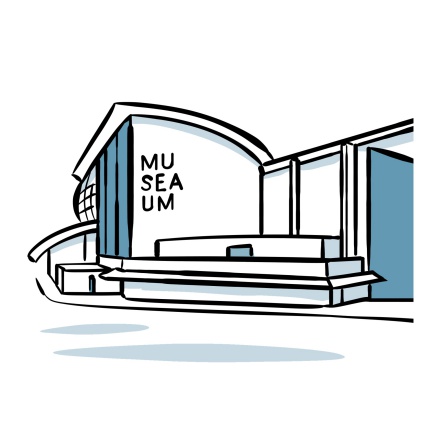
This museum showcases the close connection Sydney has with the sea and maritime life. Located along the Tasman Sea, in a country that was once only accessible by sea, and blessed with a harbor now considered one of the most beautiful
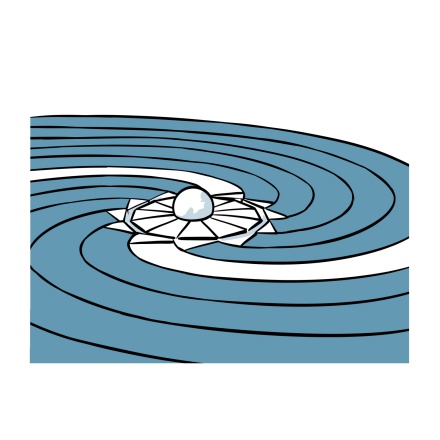
Right beside Cockle Bay, this peculiar fountain was inaugurated in 1988 along the Waterfront Promenade to celebrate the bicentenary of Sydney’s and New South Wales’ foundation.
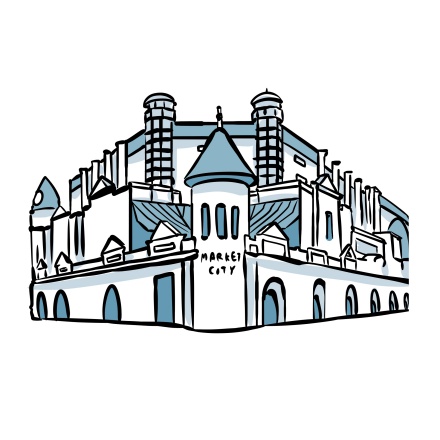
You are standing in front of one of Sydney’s most famous markets : Paddy’s Market, which includes not only the building before you but also a second site a few kilometers away, making it the largest in the city.

Chinese migration to Sydney and New South Wales began in 1828, and increased significantly in 1851 when gold was discovered.

You are now in front of Sydney’s Central Station, the largest and busiest train station in Australia! Listed on the New South Wales State Heritage Register, it seperates Haymarket from Surry Hills.

Considered to be one of Sydney’s most chic neighborhoods, Surry Hills is often compared to Notting Hill in London. It feels like a little village inside the city.
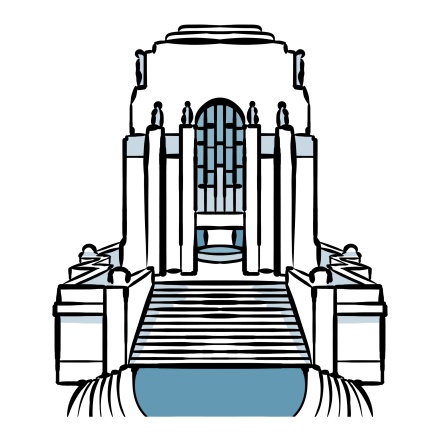
This war memorial was built in the 1930s to honor the men and women from New South Wales who served during World War I. Inside, there are several rooms: the Hall of Silence, the Hall of Memory, and the Hall of Service.

Named after the famous Hyde Park in London, this is the oldest public park in Australia. Established in 1827, it was designed in the style of English gardens and is now the largest park in Sydney.

Many say that it is the most beautiful shopping center in the world: the Queen Victoria Building. Known as the QVB by locals, it is undoubtedly one of Sydney’s most stunning places. Its architecture, inspired from Byzantine palaces, is truly
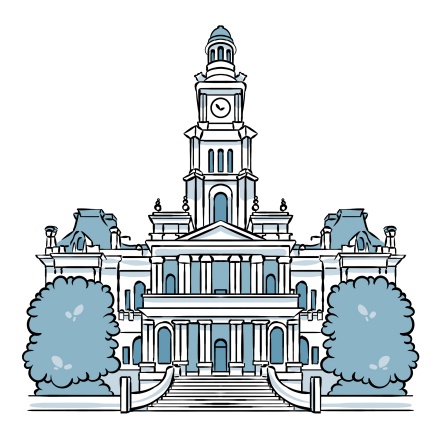
In front of you stands Sydney Town Hall, a fine example of the city’s characteristic sandstone architecture. Its construction began in 1869, and the building welcomed its first municipal services five years later in 1874.

You are standing in front of St Andrew’s Cathedral, which is the oldest cathedral in Australia. Built between 1837 and 1868, it showcases a beautiful neo-Gothic style, often found in churches from England.
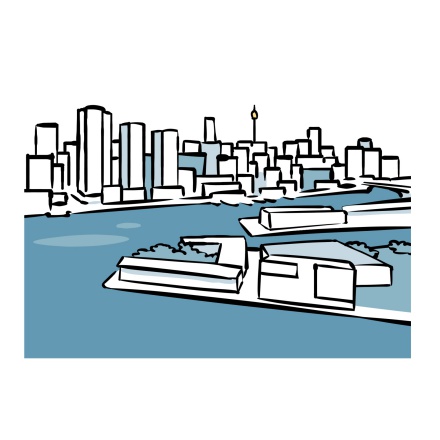
Darling Harbour is one of the liveliest districts in the city. Besides its harbour that offers beautiful strolls, this neighborhood is home to some of Sydney’s top attractions: such as the Australian National Maritime Museum, the aquarium
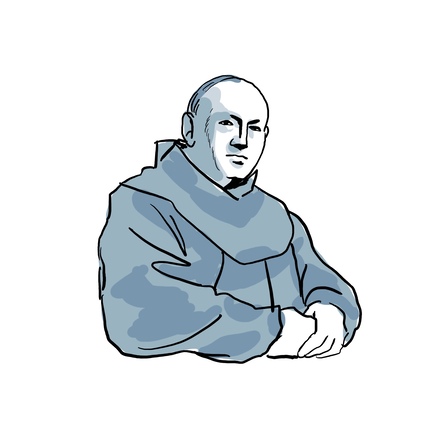
As you make your way down Rue Bourbonnoux, let me introduce you to a local legend: the Franciscan of Bourges. During World War II, Bourges sat just a few kilometers from the demarcation line.
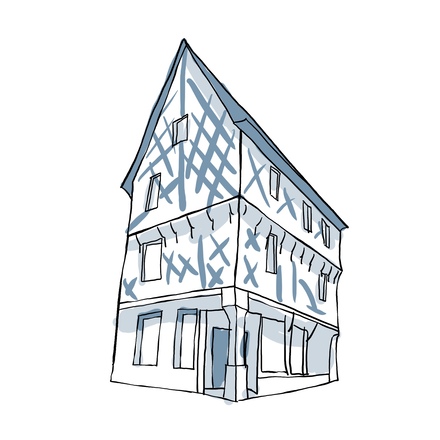
Let's make a quick stop here and turn right to observe the building we've just passed, right at the corner of Rue Joyeuse and Rue Bourbonnoux. Now, this house has a very special feature: its corner post is adorned with three carved flutes!
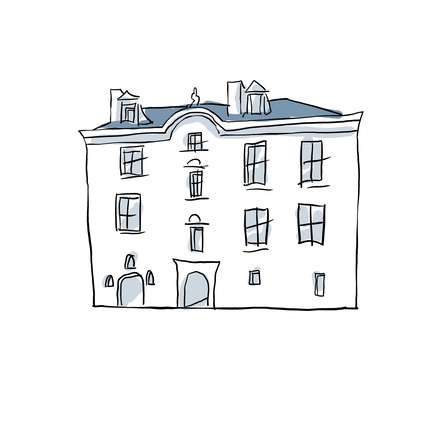
On your left, behind the gates, you'll find the Hôtel Lallemant, a former private mansion. Today, it houses the fascinating Museum of Decorative Arts. This beautiful building is a fine example of French Renaissance architecture, with some Gothic touches here and there.

Welcome to the charming Gordaine square, one of the liveliest and most picturesque spots in Bourges, featuring half-timbered houses, crowded terraces and stores of all kinds! Back in the 15th century, this is where you'd find butcher's and fishmonger's shops,
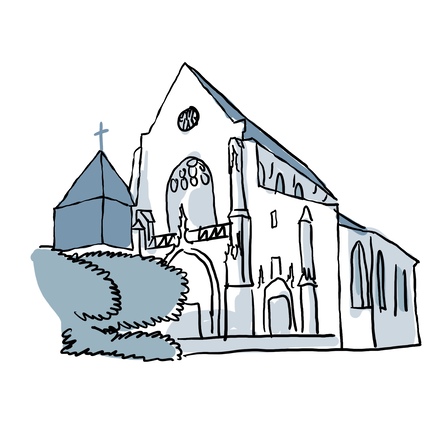
We've reached the far edge of the city's historic center. Right across from you is the church of Saint-Bonnet, built in the 13th century. Though outside the city walls from back then, it wasn’t spared by the fire that ravaged Bourges in 1487.

Just to your left, you'll see the Halles Saint-Bonnet, a large historic covered market. Built in the late 1800s, it was originally used for grain trade, as there was already another market set up in the Halle au blé. It was inaugurated in 1886, boasting a style quite unlike any other in the region
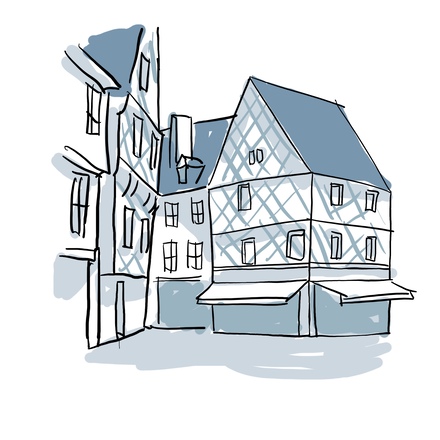
Rue Mirebeau is one of the main shopping streets in Bourges, stretching from Gordaine Square to Place de la Barre. Packed with shops housed in charming buildings, it's teeming with life, daily welcoming shoppers from all over the city!

Take the little passageway on your right into what's known as Espace Calvin, once home to the Augustinian convent dating from the 13th century. Feel free to peek inside and discover a secret courtyard tucked away between the houses of the historic center!

You've reached Rue Coursarlon, one of the most bustling streets in Bourges, and also one of the oldest. It's been around since Roman times, as one of the main thoroughfares in Bourges. Then, in the Middle Ages, it became one of the city's most popular shopping streets.

This private mansion was built in the 15th century to serve as Town Hall, just after the Great Fire of Bourges that ravaged the city in 1487. It rests on the remains of the Gallo-Roman ramparts, and its fine, elegant architecture is reminiscent of the nearby Jacques Coeur Palace.

Built in the 16th century, this magnificent building is a fine example of early French Renaissance architecture. It was bought by Jacques Cujas in 1585, who turned it into a remarkable mansion and gave it its name.
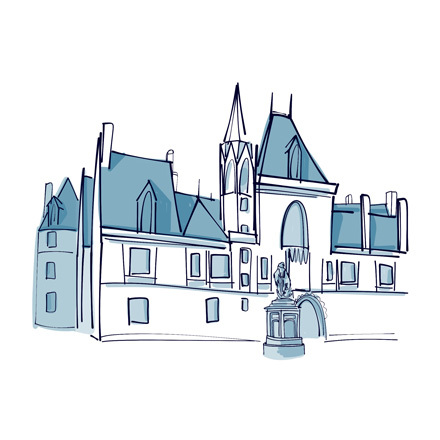
Second in importance only to the cathedral, this magnificent palace traces the footsteps of Jacques Coeur, merchant, adventurer and, above all, master of the mint under King Charles VII since 1439. The Palace is built in the flamboyant style of Gothic architecture and it's considered a true 15th-century masterpiece.

Check out the impressive building on your left. It's the Hôtel des Postes. In 1912, the decision was taken to build a structure to house the Post Office, to the designs of architect Henri Tarlier. As war broke out in 1914, construction work was halted, and not resumed until 1919.

As you make your way up the Rue Moyenne, allow me to tell you about one of the city’s' most renowned events: its music festival. It's called Printemps de Bourges, meaning "Springtime in Bourges", and it's actually the first major festival of the year in France, happening every April.
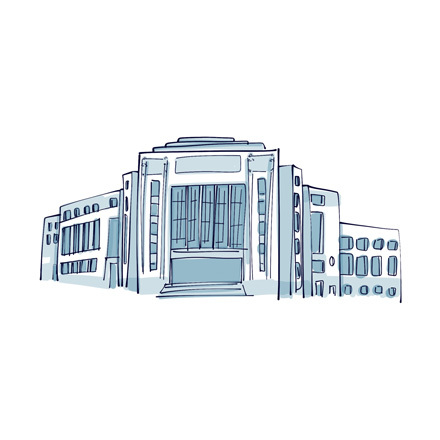
Built between 1936 and 1938 by local architect Marcel Pinon, this stunning edifice in light red brick started as a grand banquet hall. By the 60s, it had transformed into a go-to happening spot with performance halls, art shows, and even a disco!
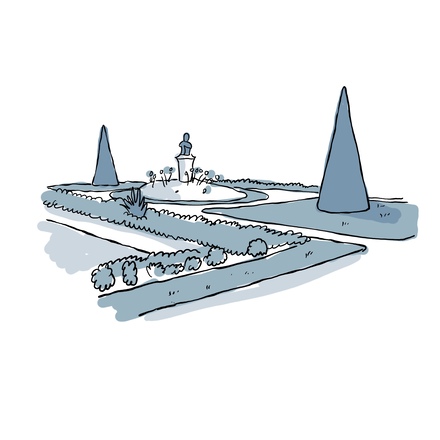
Welcome to the Garden of the Archdiocese, a Bourges favorite! Nestled at the heart of the historic center, this tranquil spot is perfect for unwinding. Tourists relax under the shady trees and students hangout or have picnics on sunny summer days.

Breathtaking, isn't it? This view is simply unbeatable! In the foreground, you've got the magnificent French formal garden designed in 1731 by a gifted gardener. And then, right behind it, there's the majestic Saint-Étienne cathedral, a sight that leaves everyone in awe!

Opposite the cathedral is the Musée des Meilleurs Ouvriers de France, aka the Museum of The Finest Craftsmen of France. It's housed in the former archiepiscopal palace dating back to the 17th century. This museum traces the history of the aforementioned competition,
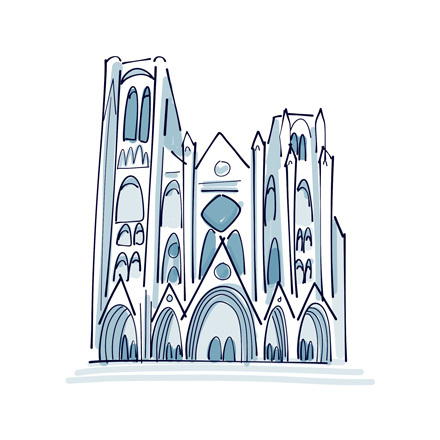
Saint-Étienne Cathedral is the crown jewel of Bourges and it’s sure to leave visitors speechless! Built between the 12th and 13th centuries, it was way ahead of its time. The builders used highly modern techniques to create an edifice with no transept, in a brand new Gothic style,
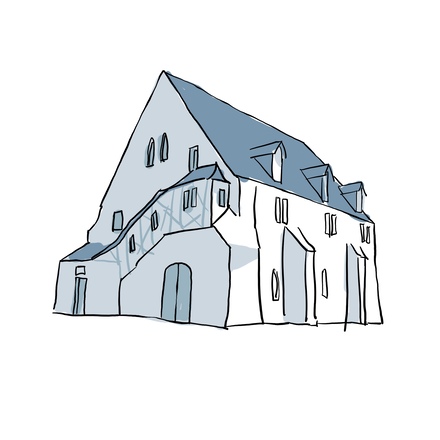
Dating back to the Middle Ages, the Grange aux Dîmes, that is, the Tithe Barn, certainly lives up to its name. From the 13th century onwards, it was used to store the taxes paid by peasants, known as tithes. This tax on agricultural income was levied by the Catholic Church;

This is the old shopping street of Bourges, where, back in medieval times, people came to buy all sorts of things from the city's craftsmen, shopkeepers and merchants. Authentic and full of charm, Rue Bourbonnoux features magnificent timber-framed houses dating from the 15th and 16th centuries,
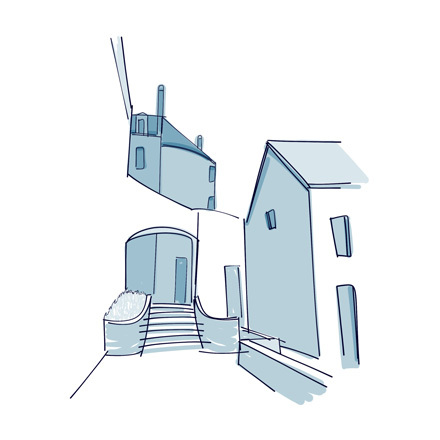
Tucked away amidst the local houses, this little passageway takes you back to Gallo-Roman times, when Bourges was known as Avaricum. Here, you can see some remarkably well-preserved remains of the ramparts built in the 4th century to protect the city from enemy attacks.














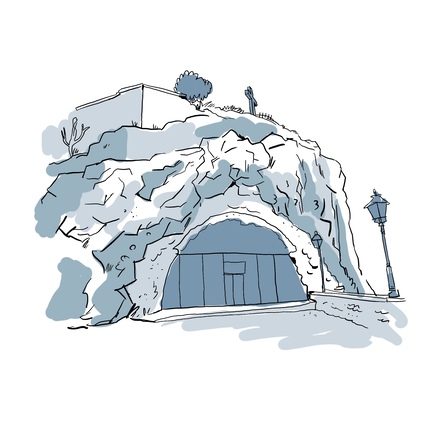
Budapest’s Cave Church is far from being a traditional place of worship, and definitely worth a visit! Even though it’s small, you’ll be blown away by this Catholic church, built inside a cave. Construction began in 1926
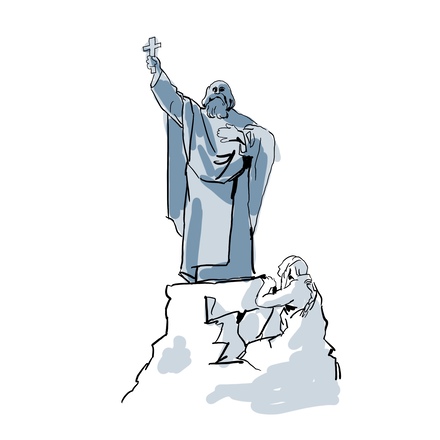
As you look out onto the Danube, this 7-metre-tall statue may catch your attention, even if it’s only seen from behind! Here is Gerard of Csanád, or Saint Gellért, holding a gold cross that points towards the sky.
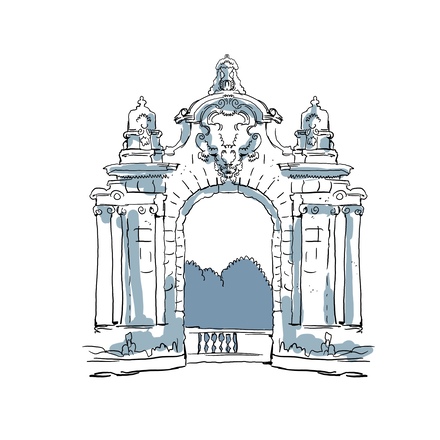
The royal and ornamental arch before you is the Buda Castle’s entrance – known as the Habsburg Gate. Dating from the early 20th century, its elaborate and imposing design charms every visitor. But not for too long, as something else to the

Welcome to the west bank of the Danube, welcome to Buda! You’re standing in the oldest part of Budapest, perched up on these green hills with a view that’s hard to beat. Take a moment to soak it in : the cobbled streets, the baroque buildings, the winding paths...
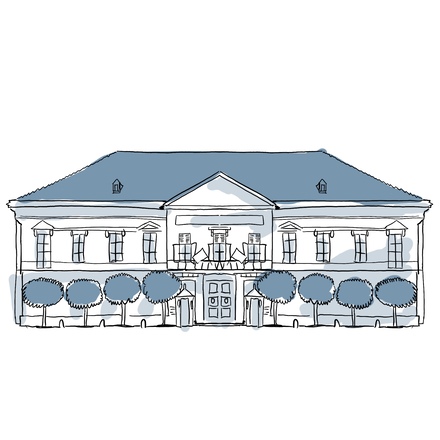
Its appearance, name, and location suggest that this is one of Budapest’s most significant landmarks – so let’s give this place the recognition it deserves. Sándor Palace was built between 1803 and 1806 as the private residence of a wealthy
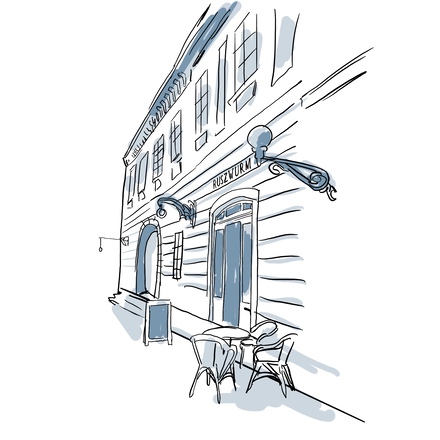
On your left, down Szentháromság Street, you’ll find the elegant and historic Ruszwurm Confectionery. Its striking pistachio-green façade gives you a taste of what’s inside... Opened in 1827, this is the oldest existing pastry shop in Budapest.
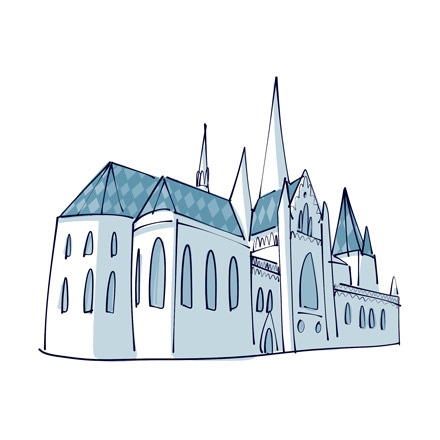
Over 800 years old, the Church of the Assumption of the Buda Castle—or more simply, the Matthias Church—has witnessed every major event that has shaped Budapest. Invasion, triumph, destruction, coronations, millennium celebrations,

Welcome to one of Budapest’s most popular tourist attractions, the Fisherman’s Bastion. It’s better known for it’s beautiful architecture, rather than its history. Completed in 1902 after 7 years of construction, this fairytale-like walkway was built as a tribute to the ancestors
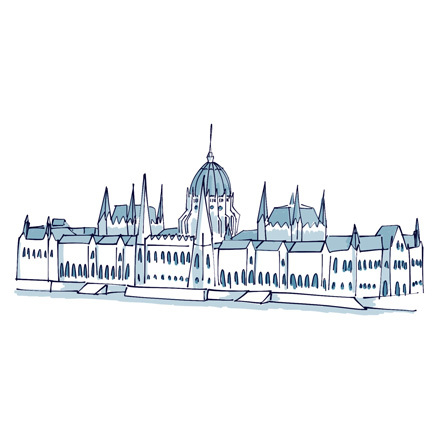
Beyond its obvious charm as a tourist attraction, the Fisherman’s Bastion also offers a royal view of one of the city’s most iconic landmarks: the Hungarian Parliament. Stretched along the Danube with perfect symmetry and a soaring central dome

Budapest is a city full of stories, and if you’ve made it here, chances are you’re not just a traveller, but a curious one. Perfect, because we’ve got some surprising facts to share with you. You might already know that Budapest is stunning on the surface, but what’s hidden
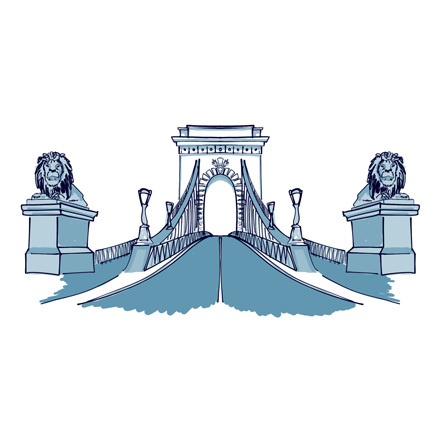
The Chain Bridge, officially known as the Széchenyi Chain Bridge, is one of Budapest’s most iconic landmarks. It was the very first permanent bridge to link Buda and Pest across the Danube, inaugurated in 1849 at a time when crossing the river meant taking a boat
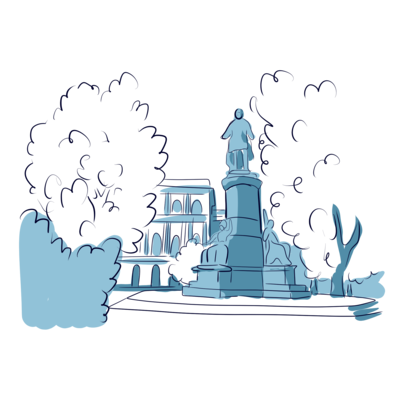
You’ve just arrived at Széchenyi Square… though you might have heard it called Roosevelt Square before. Don’t worry—your GPS isn’t confused. In fact, Roosevelt came before Széchenyi. In 1947, the square was renamed in honor of the 32nd president of the United States
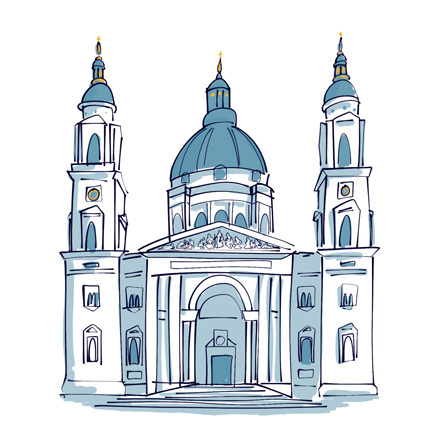
Compared to most of Europe’s major religious buildings, St. Stephen’s Basilica was built relatively recently! Inaugurated in 1905, this architectural masterpiece holds an important place in the heart of Budapest despite its young age.
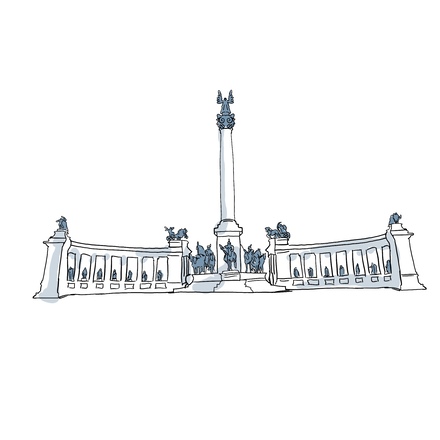
At 2,310 metres long, Andrássy Avenue is one of Budapest’s main and oldest streets. Constructed in 1872, it’s been bustling with people ever since! The name honours Gyula Andrássy — a Hungarian count and statesman known for his
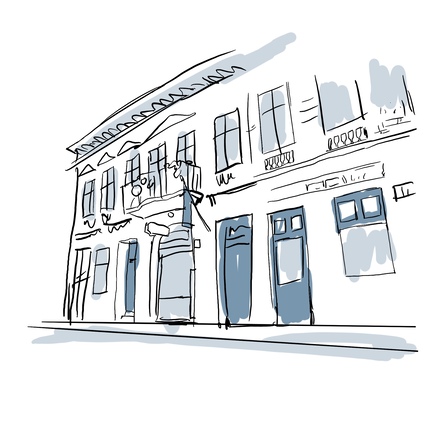
Balancing remembrance and renewal is no easy task, yet Budapest’s Jewish Quarter manages it with sensitivity. This part of the city now pulses with life—festivals, cafés, and the famous “ruin bars,” housed in once-abandoned buildings furnished with reclaimed odds and ends.
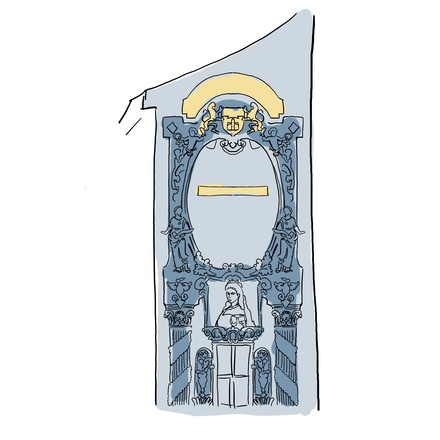
Bavarian by birth and Austrian by marriage, Elisabeth of Austria—known as “Sissi”—loved to be everywhere at once, except near her royal court in Vienna. She adored Greece, France, and Portugal. Calling herself “the seagull of the seas”
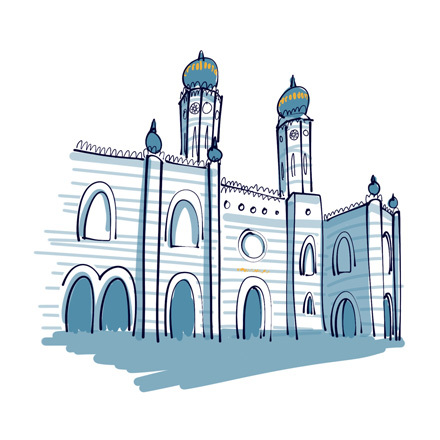
The Great Synagogue of Budapest lives up to its name, measuring 53 metres long and 26 metres wide. As the second-largest synagogue in the world, just behind Jerusalem, it’s a powerful symbol for Budapest and its Jewish Quarter, which was a
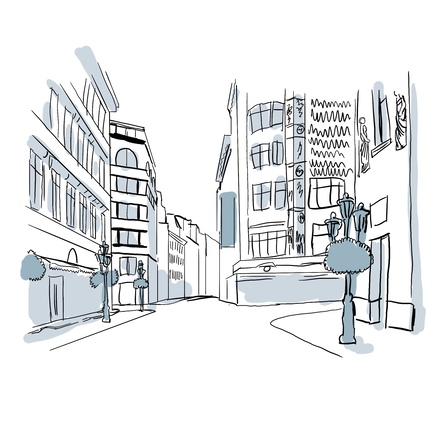
Running parallel to the Danube, Váci Utca is one of the best-known and most visited streets in Budapest. Without it, the city centre wouldn’t be the same! Back in medieval times, Hungary’s capital was surrounded by a city wall, and this street
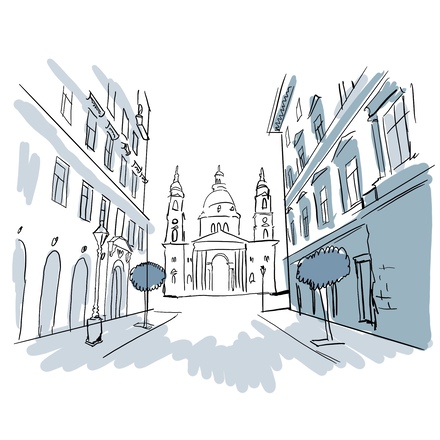
In Budapest, it’s the Danube that draws the line between the city’s two very different personalities: a natural divide that’s as much social as it is geographical. And it’s been that way for a long time. Before becoming one capital,
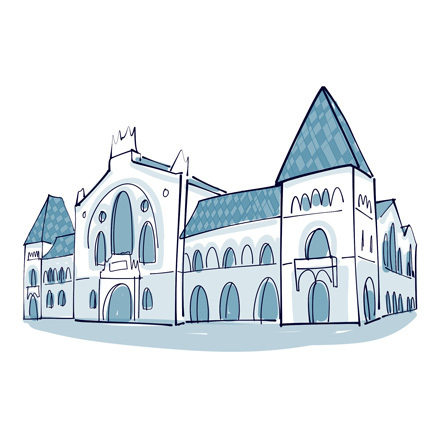
Its grand entrance makes this look like a train station – but you’re actually looking at Budapest’s Central Market Hall. In the 19th century, the city was experiencing a major public health crisis. Food was difficult to transport, food preservation

Perched 235 meters above the Danube on Gellért Hill, Budapest’s Citadel has watched over the city since the mid-19th century. It was built between 1851 and 1854 by order of Emperor Franz Joseph, not to defend the city from outside threats, but to keep a close eye on
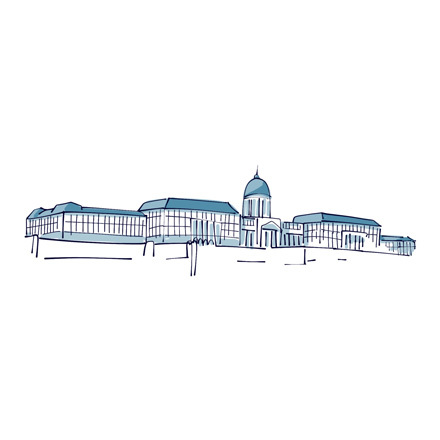
In the elegant district of Buda, grand old palaces still steal the show. Dozens of them remain standing, each one echoing the legacy of the noble and royal families who once lived on this side of the Danube. But none of them rivals the building right in front of you.
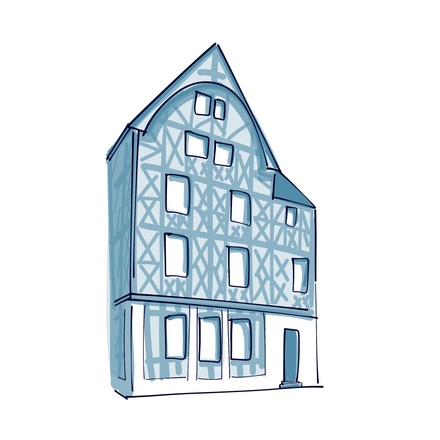
You’ve now arrived in front of the famous Joan of Arc House. The original building was destroyed during World War II bombings, but it was faithfully rebuilt in 1965. This is where Jacques Boucher, treasurer to the Duke of Orléans, had the honor of hosting Joan of Arc during her historic stay in the city
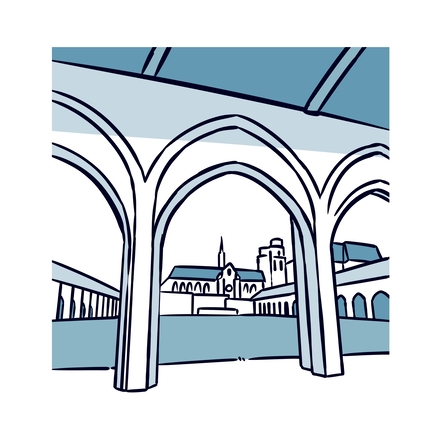
To your left, you’ll see a large grassy cloister framed by elegant arcades — this is the Campo Santo. It was once the city’s main cemetery, dating all the way back to the 12th century, and it’s now listed as a historic monument. The arcades you see today were added in the 15th and 17th centuries.
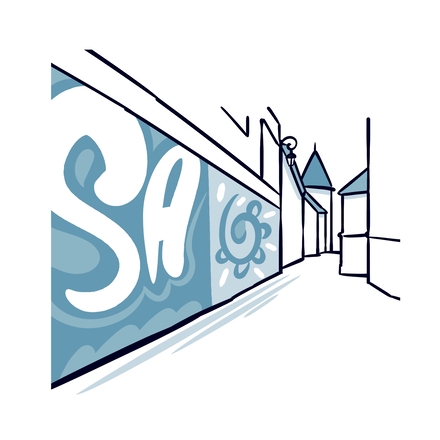
Just a quick heads-up as you reach the corner of Rue de Bourgogne and Rue Parisie — take a look around and you might spot a little surprise! Local street artist Mifamosa is known for blending wordplay with mosaics, scattering his witty, playful pieces across his hometown.
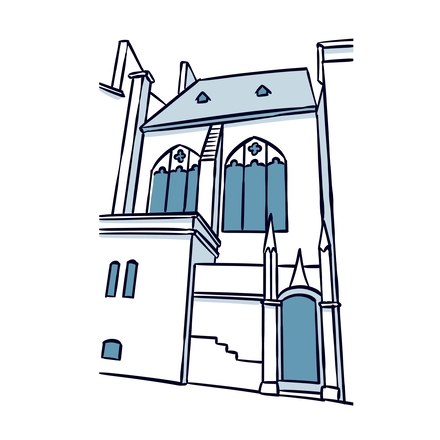
Now, you’re standing in the heart of ancient Orléans, right where the city stood during the Gallo-Roman era. Archaeological digs here have backed up claims made centuries ago by Benedictine monks, who believed they had uncovered stones from ancient pagan buildings.

You’re now standing in front of the Church of Saint-Aignan, dedicated to one of the city’s most legendary figures. Saint Aignan is remembered for his brave stand against none other than Attila the Hun. After laying waste to cities like Metz and Reims, the Huns marched toward Orléans. At the time, Orléans was a major city

The banks of the Loire have been beautifully redesigned, offering the perfect spot for a relaxing stroll along the river. With benches, lounge chairs, floating pontoons, and historic boats gently swaying in the current, the Châtelet quays have become a favorite place to unwind.
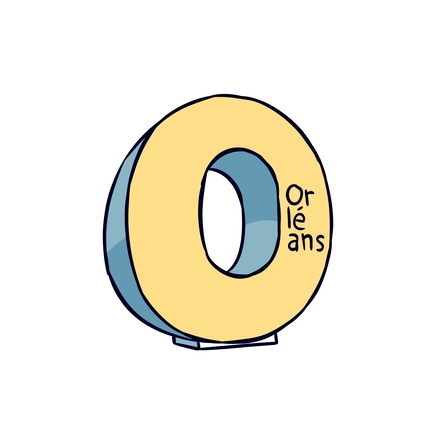
Following the example of several major cities in France and around the world, Orléans decided to create its own emblem — a bold, simple “O” standing three meters tall, designed by artist Jean Dubrana. The very first one was unveiled in 2017 on Place du Martroi
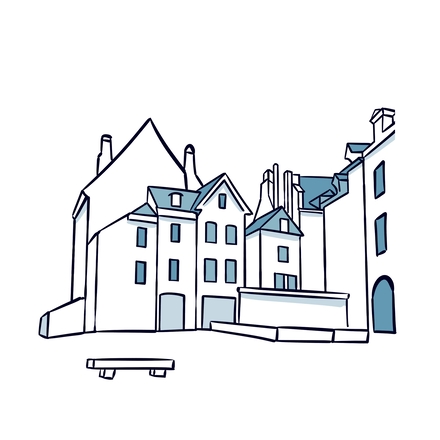
You’ve now arrived at Place du Châtelet, a square that came to life in the 1880s to make way for four large metal halls built to house the city’s wholesale market.

Just a quick glance to your right — see that beautifully sculpted façade? You’re looking at the House of Jean d’Alibert. It’s one of the rare 16th-century homes in this area that wasn’t torn down during the construction of the market halls.
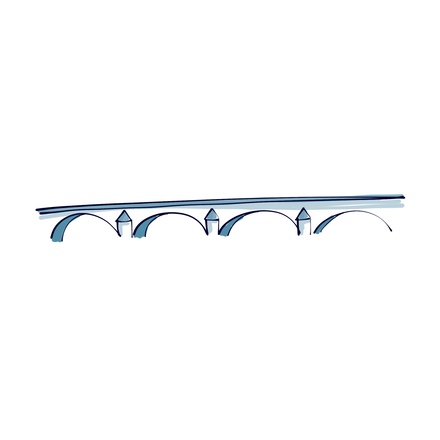
To your right, you’ll see the George V Bridge. The very first bridge to cross the Loire at Orléans dates all the way back to the Gallic period. It connected Rue du Lin — just behind you — to the Saint Marceau district on the opposite bank.

Bridges — whether ancient or modern — always offer the perfect vantage point to take a step back and admire the view. From here, you’re treated to two stunning scenes. On one side, the untamed banks of the Loire stretch out before you, with the sleek silhouette
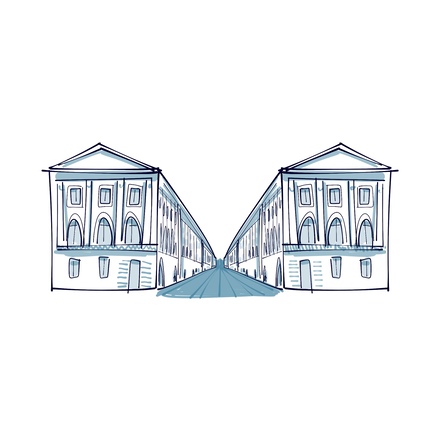
You’re now standing at one of the city’s gateways. As you arrive via the George V Bridge, a grand perspective opens up straight ahead — all the way to Place du Martroi. This is Rue Royale, a street that was created following the construction of the new bridge. It was designed by Jean Hupeau, the engineer behind the bridge
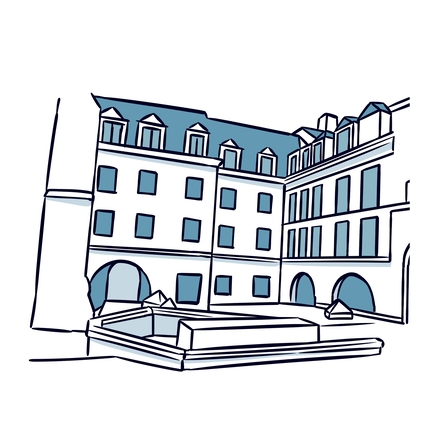
You’ve just arrived at the small but charming Place Louis XI. Now, Louis XI might not be the most famous among France’s many kings named Louis, but he had a real fondness for Orléans and spent time living here during his reign.
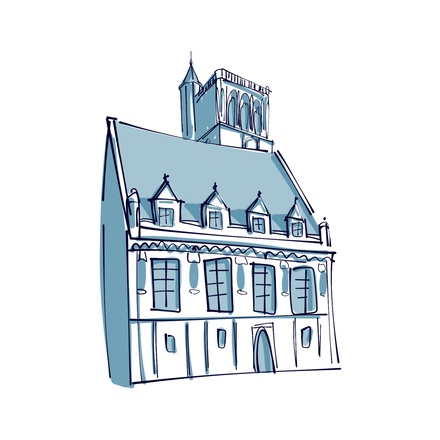
Yes, that 16th-century façade you’re admiring, with its elegant mix of Gothic and Renaissance styles, is truly a gem! As its name suggests, this is the Hôtel des Créneaux — Orléans’ very first city hall. Over the centuries, the building has worn many hats:
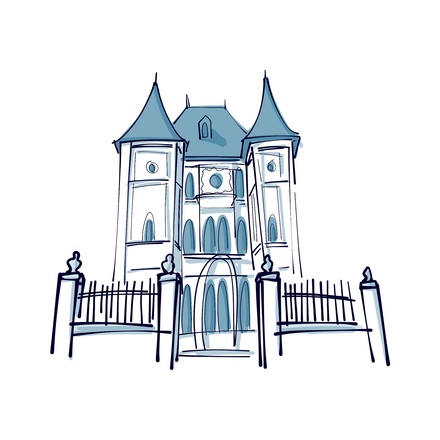
Just across the square, you can admire what is often considered the most beautiful Renaissance building in Orléans. This elegant mansion was originally built around 1550 by lawyer Philippe Cabu. In 1862, the city acquired it with the goal of creating a home for its historical museum.
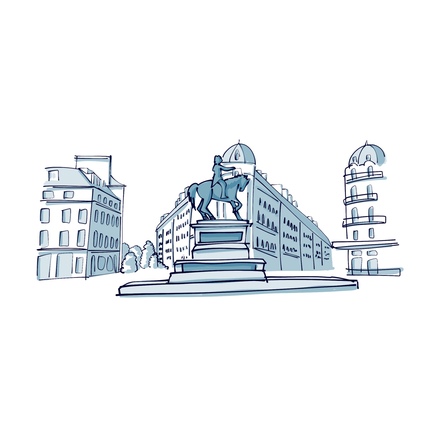
Alright, let’s dive right into the atmosphere. Here in Orléans, the star of the show is Jehanne — or as you probably know her, Joan of Arc. You know the story: during the Hundred Years’ War, she lifted the siege of Orléans and cleared the way for Charles VII to be crowned the rightful King of France.

Just over to your right is Place de la République. As you’ll notice, it doesn’t have the feel of one of those old squares that slowly evolved over time. That’s because it was actually created in the 19th century, when a block of houses was cleared to make way for the new Rue Jeanne d’Arc.

As you stand here on Rue Jeanne d’Arc, looking straight ahead to the majestic Sainte-Croix Cathedral, you're taking in one of the most iconic views of Orléans. It didn’t happen by chance! This breathtaking perspective is the result of years of ambitious urban planning—six entire streets were demolished to create this perfectly aligned view.
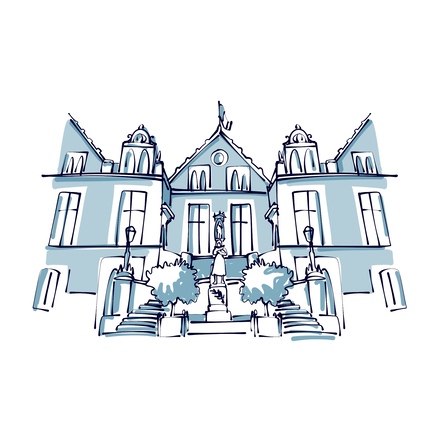
You're now standing in front of the stunning Groslot House, built in the 16th century by Mr. Groslot himself, who served as the king’s bailiff. That meant he was the king’s local representative, there to remind the bishops, lords, and town officials who was really in charge.
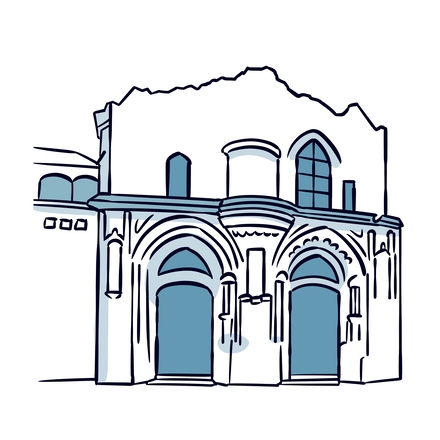
The hotel gardens offer a unique perspective and a peaceful spot to admire the rear façade of the Groslot House. With its neatly kept lawns and the cathedral’s towers rising in the background, it’s a picture-perfect setting — definitely worth a photo or two.

As you leave the Campo Santo behind, take a moment to soak in the breathtaking view of the cathedral’s north façade. It’s truly magnificent, with its intricate rose window and the central spire soaring 114 meters into the sky.Take a closer look at the rose window
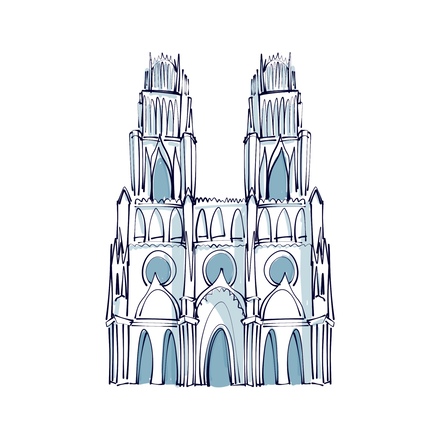
Now that you’ve seen it from every angle, let’s take a moment to talk about the remarkable Sainte-Croix Cathedral. The story begins all the way back in the 4th century, at the dawn of Christianity in Orléans. Back then, the first church on this site was said to house a fragment of Christ’s cross
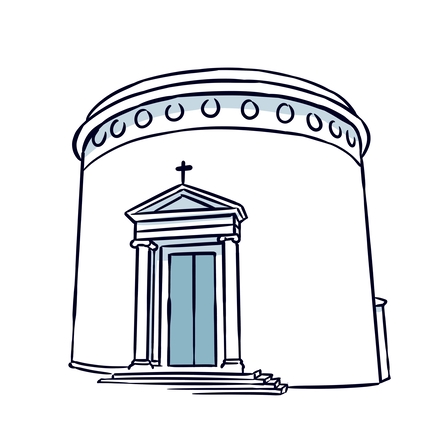
In a city full of straight lines and right angles, it’s always surprising to come across something round — like the building in front of you. This is the Protestant Temple of Orléans, and it’s one of the very few round Protestant churches in all of France. Inspired by classical architecture,



You’re standing on the small Colonel Fabien Square, facing the row of colourful façades that make up the Cour Perrinon shopping centre. If you’re in the mood for a bit of shopping, this is the place to go. With 35 stores offering major
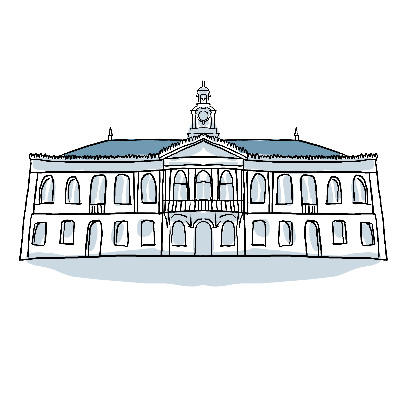
This beautiful neoclassical stone building was once the town hall of Fort-de-France, built in 1884. It’s a fine example of traditional Caribbean architecture, with its generous use of wood, the serrated trim along the roof, and its four-faced

The building in front of you, facing the small Victor Schœlcher Square, is the former courthouse, built in 1907 in a neoclassical style. Today, it houses the Camille Darsière Space, a multicultural venue that’s partially open to the public. If
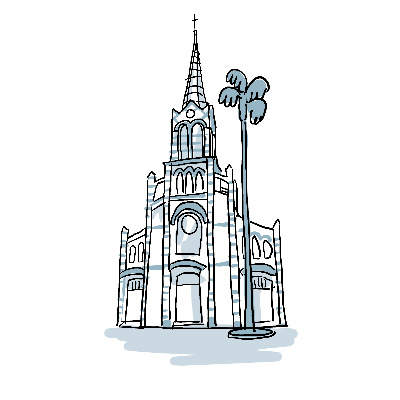
You’re now standing in front of the beautiful Saint-Louis Cathedral, right in the heart of Fort-de-France. The story of a place of worship on this site goes all the way back to the late 17th century, when the city was just beginning to grow
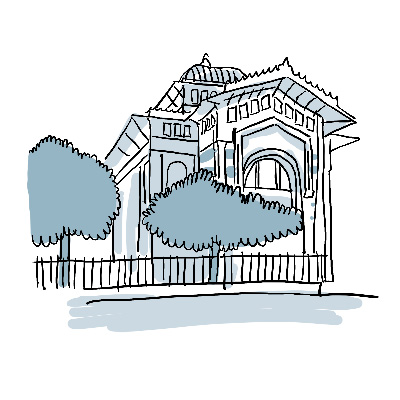
You’ve now arrived in front of one of the most iconic landmarks in Fort-de-France: the magnificent Schoelcher Library—undoubtedly the most photographed building in the city. It was founded in 1887, when Victor Schoelcher, a passionate

Take a seat on one of the benches nearby and get comfortable—we’re about to take a journey through the fascinating history of Martinique. Long before the arrival of Europeans, the island was home to the Arawak people, who had
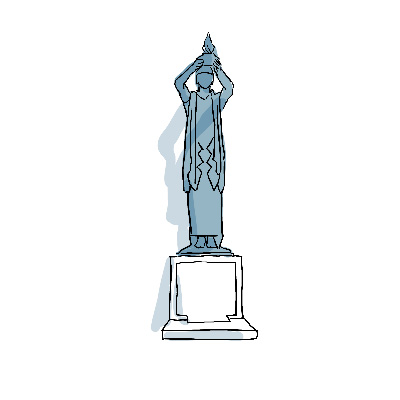
You're now standing in front of the war memorial in La Savane park. This statue was erected in 1926 to honour the Martinican soldiers who died in combat during the First World
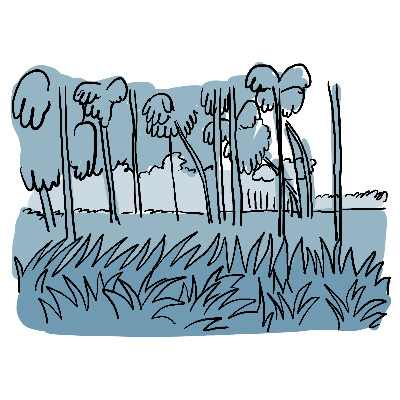
You're walking alongside La Savane, a five-hectare park nestled between the city, Fort Saint-Louis, and the sea. This vast green space has long been at the heart of life in Fort-de-France. Yet, originally, it was little more than a marshland
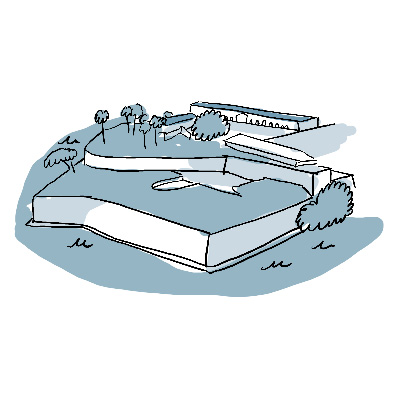
You're now standing in front of the entrance to the famous Fort Saint-Louis, perched on its rocky promontory overlooking the bay of Fort-de-France. Its story is as old as French

You’re now at the entrance to La Française beach—the only beach right in the heart of downtown Fort-de-France. It may not have the picture-perfect scenery of the island’s more
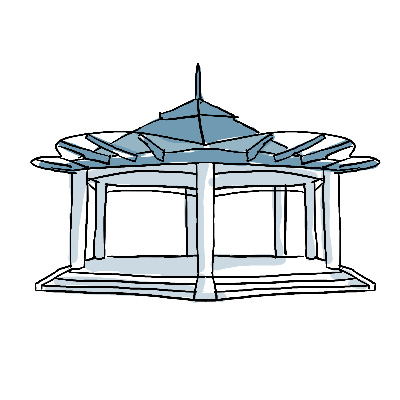
You’re now passing by the charming Henri Guédon bandstand, one of the most iconic landmarks along the Fort-de-France waterfront. Built in the late 19th century, it was designed

You’re now on the Malecon, the beautiful seaside promenade that runs along the Caribbean coast. From here, you get a stunning view of Fort-de-France Bay, its shimmering waters framed by lush green hills and distant mountains. This esplanade

You've reached the end of the Malecon, where a stunningly colourful piece of art unfolds beneath your feet. As you walk across it, you’ll spot familiar Martinican landscapes, iconic animals, and vibrant scenes that celebrate the island’s rich culture.
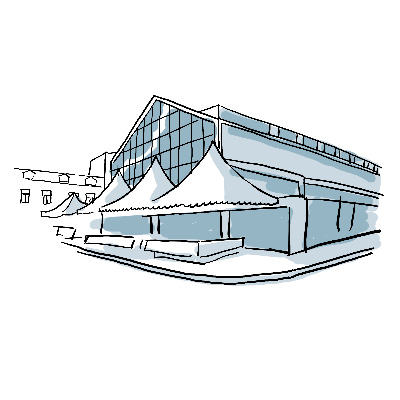
You’ve arrived at the entrance to the Grand Covered Market of Fort-de-France—a must for anyone who loves bold flavours and authentic local culture. This is the perfect place to dive into Martinican life and discover the island’s culinary traditions

Here is a stunning view of the Lincoln Memorial, dedicated to the 16th President of the United States. It stands at the far end of the Lincoln Memorial Reflecting Pool, the largest reflecting pool in Washington, D.C. You

You are now in front of the Vietnam Veterans Memorial. It’s a long black wall running along a pathway in Constitution Gardens. The wall has 72 granite panels engraved with the names of those who died or went missing
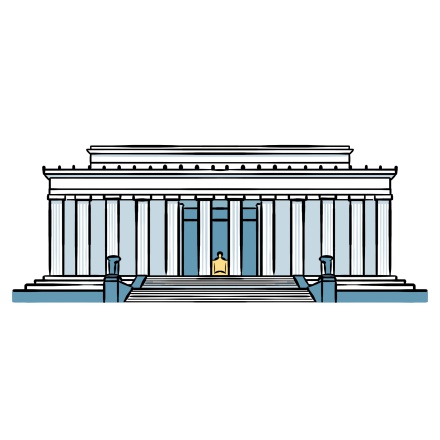
This monument was built in 1922 in honour of the 16th President of the United States, Abraham Lincoln. You probably already know that he was the President who abolished slavery in the United States! Lincoln was elected in
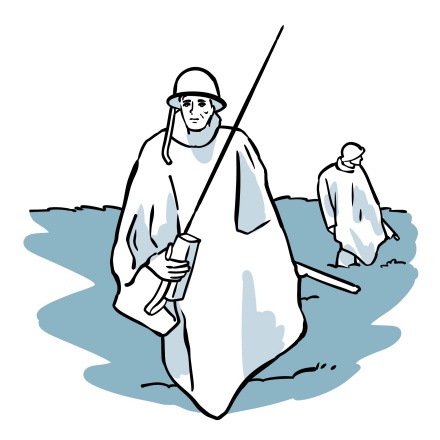
Inaugurated in 1995 by U.S. President Bill Clinton and South Korean President Kim Young Sam, this memorial honours the men and women who fought in the Korean War, which took place from 1950 to 1953. The memorial features

This memorial doesn’t honour an event or a person, but instead the residents of the District of Columbia who served during World War I. The District of Columbia is a federal district of the United States and includes

Martin Luther King Jr... A name that echoes through history. Here, carved in stone, his legacy lives on just as it does in our collective memory. He was THE leader of the civil rights movement in the United States
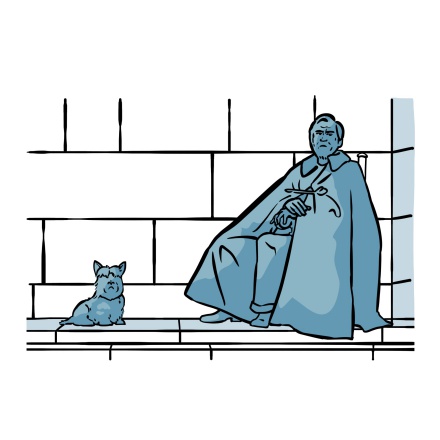
This memorial honours Franklin Delano Roosevelt, the 32nd president of the United States, who led the country from 1933 to 1945. Roosevelt made an indelible mark on American history, guiding the country through two
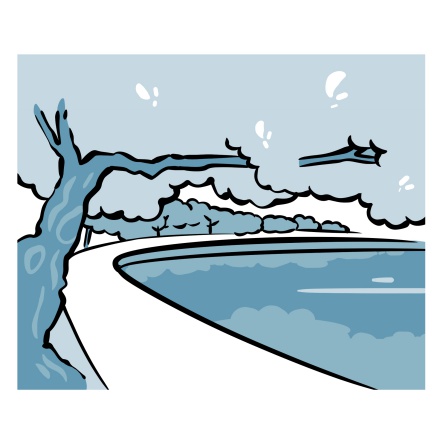
This large body of water is called the Tidal Basin. It’s a man-made reservoir, created in the 1880s. The Tidal Basin is famous for its many memorials, as well as the stunning cherry trees that bloom every spring.

This memorial honours another president, taking us back to the American Revolution. Completed in 1943, the Jefferson Memorial pays tribute to the third president of the United States, with some of his famous quotes
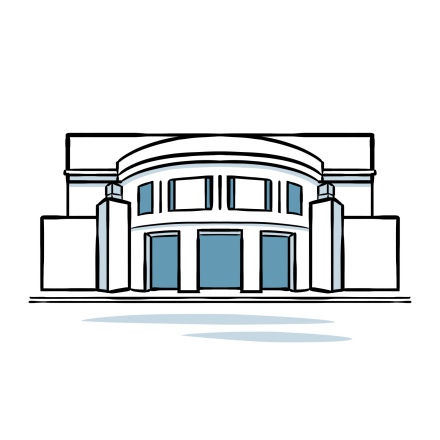
On your right is the United States Holocaust Memorial Museum. The main entrance is on the other side of the building. Opened in 1993, it was designed by architect James Ingo Freed and features documents

You’re looking at one of the city’s many iconic landmarks: the Washington Monument,built in honour of George Washington, the first President of the United States. He was elected in 1789 after playing a key role in the

Inaugurated in 1988, this small garden, featuring plant beds and two fountains, symbolises the relationship between Germany and the United States, commemorating 300 years of German immigration to America.

This impressive building is the headquarters of the United States Department of the Treasury. Some of its many duties include: ensuring the country’s financial security, producing coins and banknotes, reporting the

Here it is! The most famous house in the world is right in front of you, but its fence stops you from getting any closer. There is so much to learn about the US President’s home! It was built between 1792 and 1800
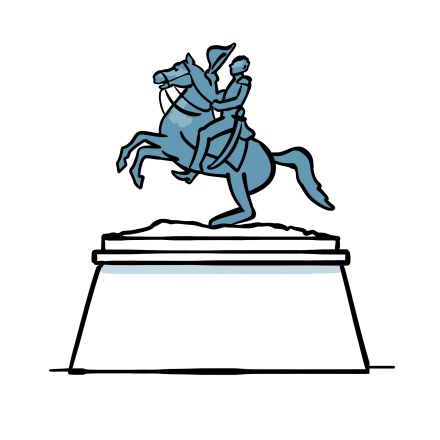
Lafayette Square used to be a part of President’s Park. It was separated from the White House in 1804 by President Thomas Jefferson, who had a road built between the park and the building.
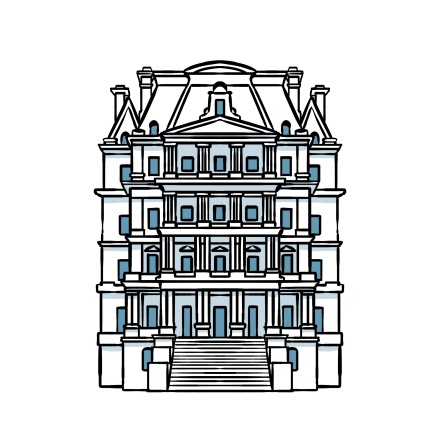
This elegant building was built to house the Departments of State, War, and the Navy. Built between 1871 and 1888, its architecture is a masterpiece of its time. However, upon its completion, the building faced harsh
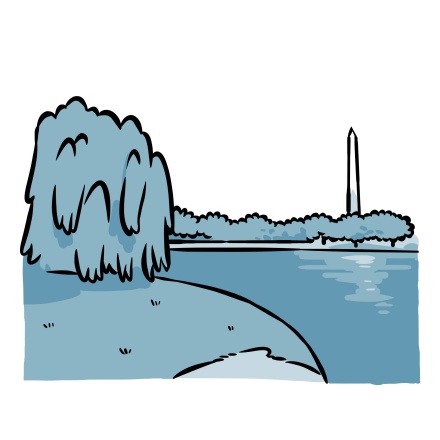
Built at the request of President Ronald Reagan in 1976, this park, was created 200 years after the United States declared independence, as a tribute to the "living legacy of the American Revolution".

As the capital of the United States, Washington has more than a hundred memorials, paying tribute to the nation's history and to great figures. In front of you is the World War II Memorial. Inaugurated on May 29, 2004, it

Pause for a moment by the Arve River and take in the view unfolding before you. The town spreads out like a postcard, ready to come alive. To your left, you’ll spot the old Chamonix Palace, built in the early 20th century to welcome high society

The main streets of Chamonix are full of life and tourists! Chances are, you’re hearing a mix of languages all around you. With visitors from across the globe, the town has gradually filled up with souvenir shops. To help you find something

The streets of Chamonix are packed with tempting restaurants, each one more inviting than the last. Whether you love to sit back and be served or prefer cooking your own meals, here are some local specialties you definitely shouldn’t miss. In
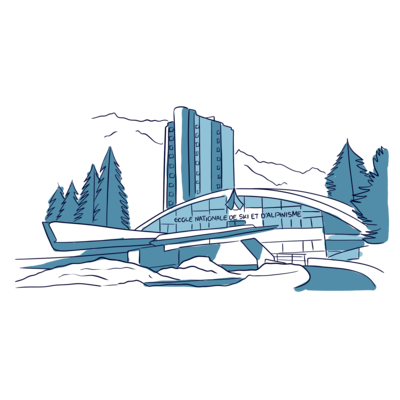
You’re just steps away from the National School of Skiing and Mountaineering — or ENSA, as the locals call it. This truly is a national school because, in France, becoming a high mountain guide means earning a state diploma. Wondering what
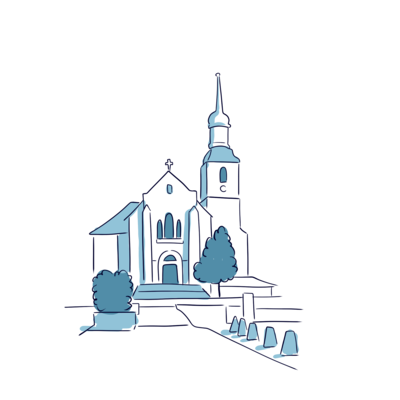
Let’s take a moment to talk about the small Saint-Michel church, right here on the square. It’s a listed historic monument, and it was built in a style known as Savoyard Baroque. That’s a form of art and architecture that developed in the former

In Chamonix, the names of local heroes are everywhere—even on the street signs. You’ve just walked along Rue du Docteur Paccard, named after the pioneering climber who made the first ascent of Mont Blanc. And now, you’re facing Avenue

If you continue straight down this street for about 200 meters, you'll reach Place de l'Aiguille du Midi, the departure point of the famous cable car. You've been seeing its antenna since you arrived in Chamonix – now it's high time to go see it
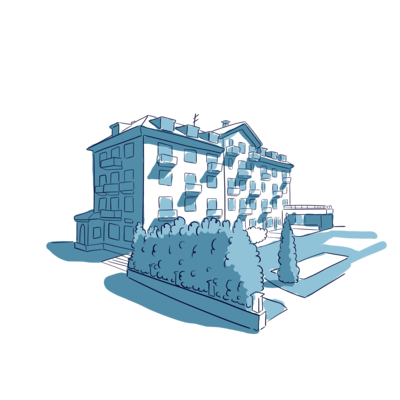
As you walk down this street, you're passing alongside a building well-known to mountain enthusiasts and which is, so to speak, part of the scenery. This is the UCPA Chamonix, where generations of young adventurers have come to satisfy their

I’d like to draw your attention to the name of this big restaurant on the corner: "Le Monchu." At the risk of disappointing you, this name doesn't refer to a good Savoyard dish or an old tradition. For mountain people, "Monchus" are a bit like

Right in the middle of the square, you can’t miss the Chamonix casino. The story of “gaming circles” here goes back to the 19th century, a time when gambling wasn’t exactly legal yet. In France, games of chance were actually banned at first. It

Here stands the most iconic statue in downtown Chamonix. This famous bronze sculpture shows two explorers pointing towards the Mont Blanc. But do you actually know who they are? Many people think these are the first two men to climb

Eventhough he wasn't standing beside Balmat looking toward Mont Blanc, the town simply couldn't fail to honor Doctor Paccard! Michel-Gabriel Paccard was born in 1757 in Chamonix, then part of the Duchy of Savoy in the Kingdom of
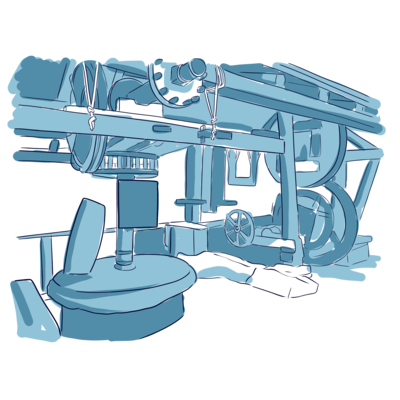
You're walking along Rue des Moulins – Mill Street – whose history is closely tied to the Arve, the powerful river that flows through Chamonix. As you may imagine, mountain villages learned very early how to harness the power of water
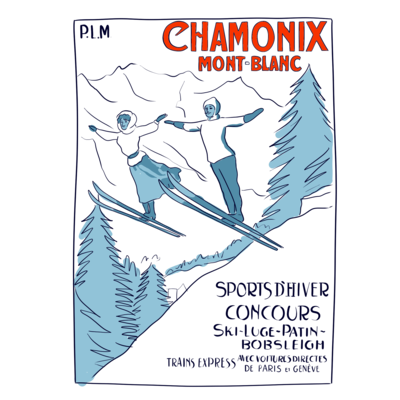
Here on Place du Mont-Blanc, facing the Alpine Museum, I'd like to tell you about a major event in Chamonix's history: the very first Winter Olympic Games. That's right – more than 100 years ago, in 1924, this town hosted the very first
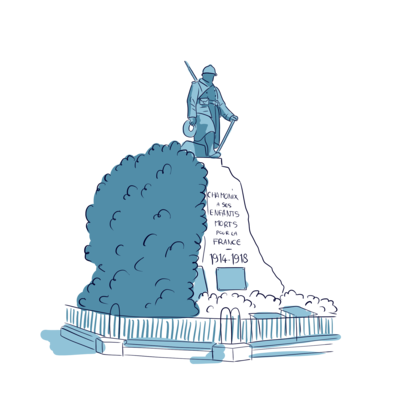
This war memorial, solemnly placed on Place du Poilu, honors the Chamonix residents who died for France. Inaugurated in 1921 for soldiers lost during World War I, it now also commemorates those from World War II and the War of Algeria.
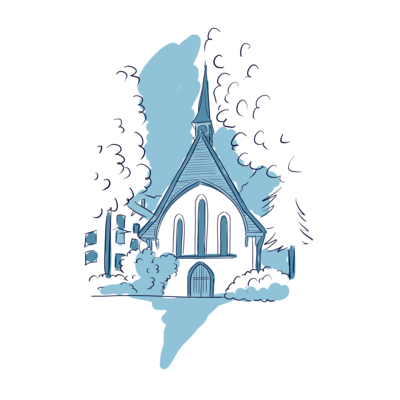
You might wonder: what’s an Anglican church doing in the middle of Chamonix? With its pointed slate roof and typically English style, it definitely stands out. But actually, it’s not that surprising. Most people know the British community is

If you’ve taken the rack railway, you're now standing in front of one of the most iconic sights in the Mont Blanc massif: the Mer de Glace. Even though the glacier has dramatically retreated, the view is still absolutely breathtaking. In this

You are back on Place du Mont-Blanc, facing the massif. A majestic setting... but one that also reminds us, at times, of the mountain’s darker side. Allow me to tell you about two tragedies that deeply marked the valley —
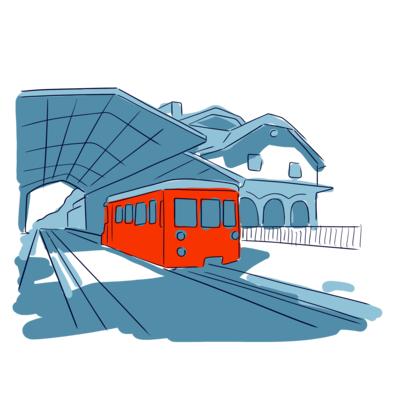
The metal walkway you see on your right takes you straight to Montenvers station. That’s where the bright red, traditional rack railway departs — heading all the way up to the Mer de Glace at 1,913 meters! Over a 5-kilometer route, it climbs
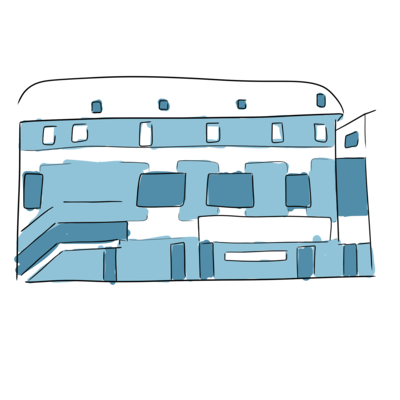
Take a look at the charming trompe-l’œil mural on the back of the building—it shows a film crew in action, and it’s a fun reminder that Chamonix doesn’t just have a cinema… the town has also made its mark on the big screen! The Vox cinema
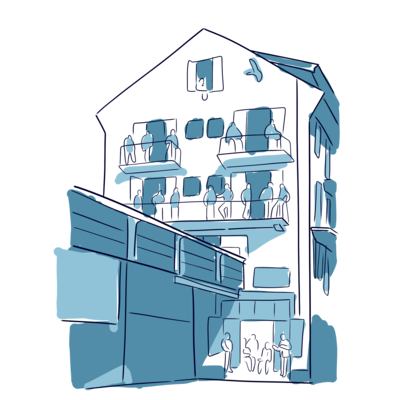
Take a moment here to look more closely at the trompe-l'oeil facade that covers the entire side of the building. This 180-square-meter mural, created in 2010 by street artist "A-Fresco," pays tribute to those who shaped the history of
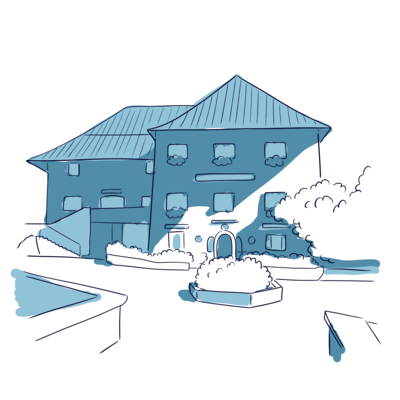
You’re now standing in front of the Maison de la Montagne—an iconic building in Chamonix that brings together everything related to mountain activities. If it looks old to you, and surprisingly close to the church, that’s no accident. This used

A real favourite among visitors, Albergheria is probably the oldest neighbourhood in Palermo. It was born on land once rich in water, crossed by the ancient Kemonia river, and over the centuries it became the seat of power for different rulers.
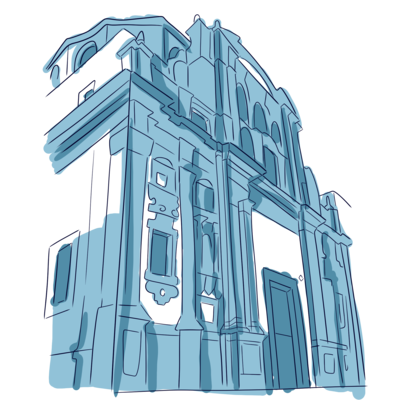
With a name like Santissimo Salvatore, you can already expect grandeur—and the church more than delivers. Built from 1682 on the site of a former 11th-century Benedictine convent, it is one of Palermo’s finest examples of Sicilian Baroque.

Welcome to the very heart of Palermo! Officially it’s Piazza Vigliena, but everyone calls it Quattro Canti : the “Four Corners.”
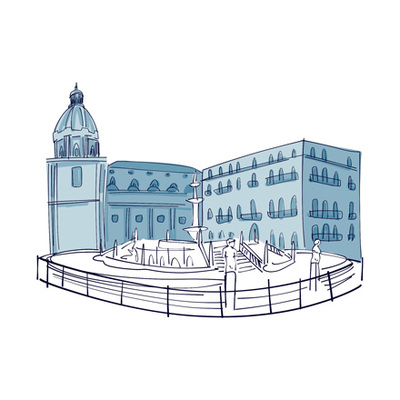
Here we are, right in the heart of Palermo’s old town, on Piazza Pretoria. And it’s not the palaces and churches around you that made this spot famous, but the spectacular fountain in the middle.

Welcome to Piazza San Domenico, one of Palermo’s most emblematic squares, opening right onto Via Roma, one of the city’s main streets. The square took shape in the 18th century, during the period of Austrian rule, when it was known as the “Imperial Square.”

It’s hard to explore Palermo without stepping into Il Capo, one of the city’s liveliest and most picturesque neighborhoods. Built on the old bed of the Papireto River, later filled in, the area grew around its market, active since the 17th century and still one of the most popular in town.
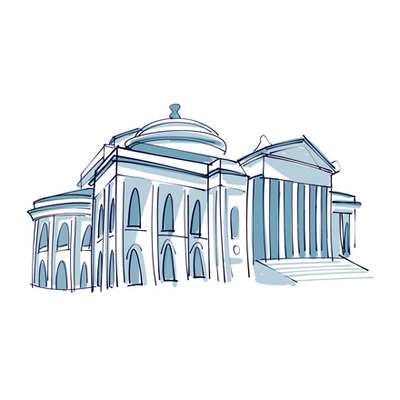
Italy, the land of commedia dell’arte and the birthplace of opera, boasts a fine selection of theatres, found in both its biggest cities and its smallest towns. While Palermo is home to at least a dozen, our favourite has to be the Teatro Massimo Vittorio Emanuele.
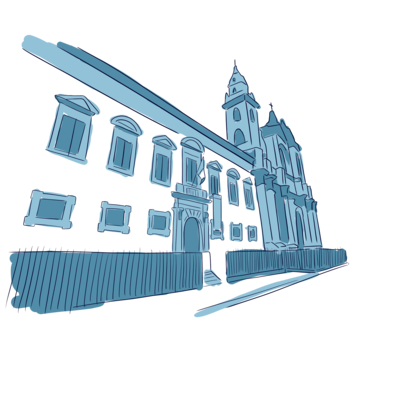
If you love to explore, reflect, and understand, then the Regional Archaeological Museum of Palermo is just the place to satisfy your curiosity. It’s been housed in the former Olivella convent since 1866, and features a remarkable collection that traces Sicilian history from prehistory all the way to Roman times.
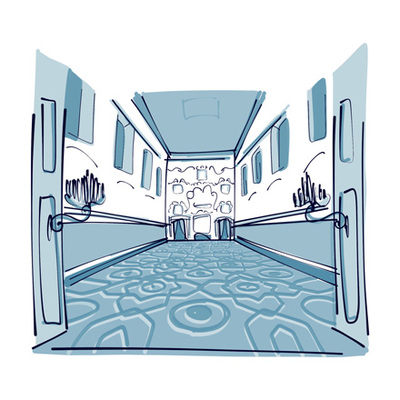
A religious gem in the heart of Palermo, the Oratorio del Rosario is best known for its stunning 17th-century interior. Lavishly decorated with wall plaster known as stucco, this sacred space offers a visual experience that’s a bit over the top, but above all, masterfully crafted.
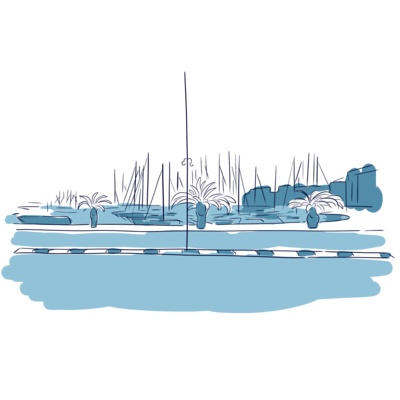
Welcome to La Loggia, one of Palermo’s oldest and most authentic neighborhoods. Tucked between the port and the Vucciria market, it has always been a place of trade and exchange. Since the Middle Ages, Italian and foreign merchants have gathered here, and its very name comes from an old loggia, a building where deals were made and meetings held.
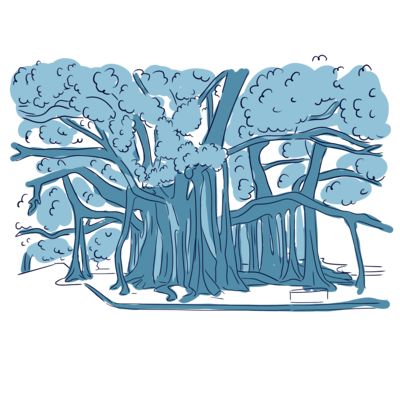
Green spaces are rare in Palermo, but Piazza Marina is home to one of the city’s most charming: the Giardino Garibaldi. Created in the 19th century by the architect Basile, the garden blends a touch of romance with a slightly wild atmosphere.

A blend of austerity and elegance, Palazzo Abatellis blends into its surroundings, until you look up at its façade or step closer to its finely crafted entrance. Built in the 15th century in a mix of Catalan Gothic and Renaissance styles, the building once belonged to Francesco Abatellis, the prefect of Palermo, who used it as his private residence.
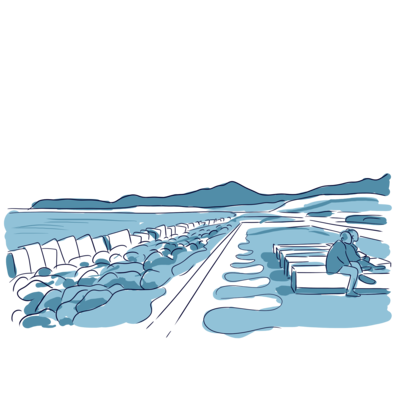
A meeting point between land and sea, the Foro Italico is a beautiful promenade where people come to relax, get some fresh air, read a book, or sit and reflect while gazing out at the endless stretch of blue water. These simple pleasures are the result of a long and complex history.
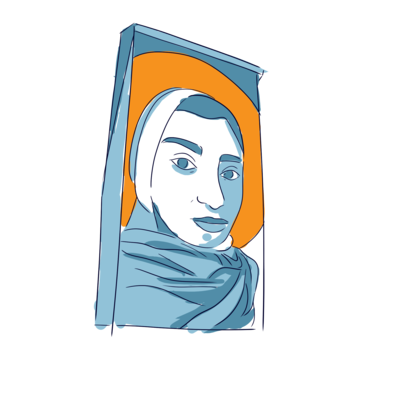
Slightly apart from the rest of the city, yet only steps from the sea, La Kalsa is a neighbourhood with an ancient soul that many visitors overlook. Its origins go back to the Islamic rule of Palermo, when the city’s emirs and their government made this area their home. The name “La Kalsa” comes from the Arabic Al Khalisa, meaning “the pure one” or “the chosen”, a name that reflects the neighbourhood’s original importance and prestige.
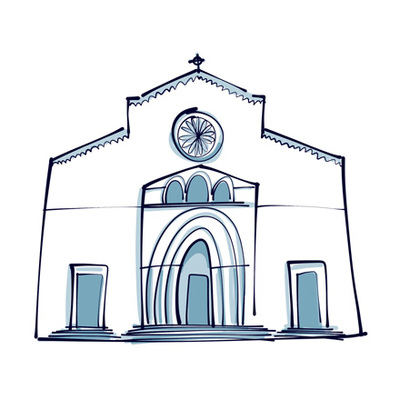
With its 80 churches and chapels, Palermo fully embraces its identity as a deeply religious city. While many of these buildings may sometimes look alike, a few still manage to stand out, like the Basilica of Saint Francis of Assisi, built in the 13th century, in the historic Kalsa district.

Villa Giulia is one of Palermo’s prettiest green escapes. Created in 1775 in a neoclassical style, this public garden was named after Giulia Guevara, the wife of Viceroy Marcantonio Colonna. Free to enter and wonderfully romantic, it’s a peaceful spot filled with tall palm trees, centuries-old specimens, and the scent of citrus trees in bloom.
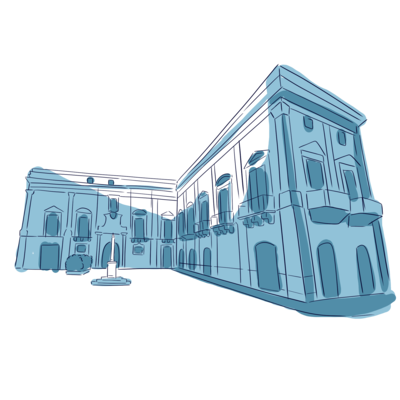
In Palermo, it’s easy to pass by a grand palace without even realising it. Modest in appearance, with no flashy signs to draw the eye, Palazzo Gangi has earned a quiet reputation.
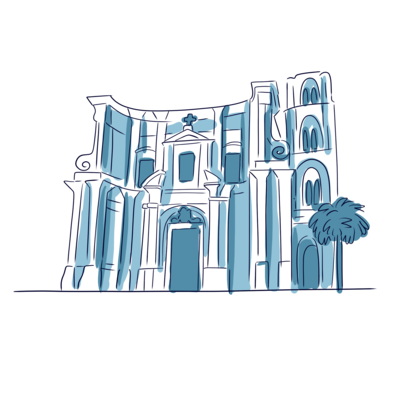
The Chiesa della Martorana, also known as Santa Maria dell’Ammiraglio, is unlike any other church in Palermo. Rooted in the Greek-Byzantine tradition, it’s one of the city’s most dazzling and unique treasures.

You’re now just a few steps from the Church of San Cataldo. This small yet striking church was built in the 12th century by Maione of Bari, Grand Admiral to William I, King of Sicily during the Norman era. In 1182, it was granted to a community of Benedictine monks, who turned it into a hospice for the sick.
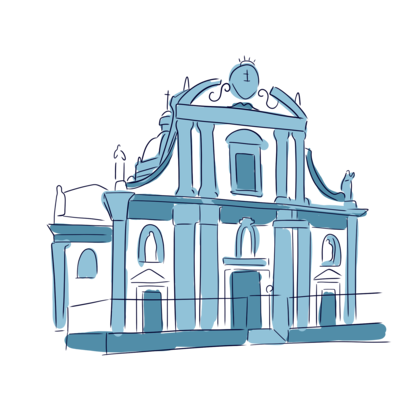
The Chiesa del Gesù was the first place of worship built by the Jesuit Catholic congregation in Palermo, back in 1564. Severely damaged during the Second World War, the church underwent several major restorations before it could welcome worshippers once again

If you keep going straight along Piazza Ballarò, which opens up just to your right, a little further down you’ll find one of Palermo’s most lively and colourful markets: the Mercato Ballarò. Here it’s a true festival of sounds, smells, and colours — an atmosphere that throws you right into the city’s popular soul

The Norman Palace is one of Palermo’s unmissable landmarks, whether you’re here for a quick visit or a longer stay. Standing on a strategic rise in the old city, it brings to life the island’s multicultural and sometimes turbulent past.
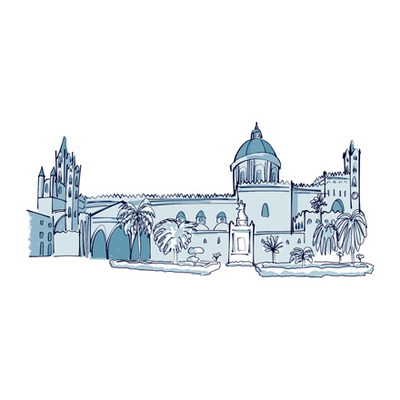
Whichever city you’re in, you're likely to come across a cathedral, but Palermo’s stands out from the crowd, just a short walk from Via Matteo Bonello. With its striking Arab-Norman architecture, Palermo Cathedral is unlike any other on the island.
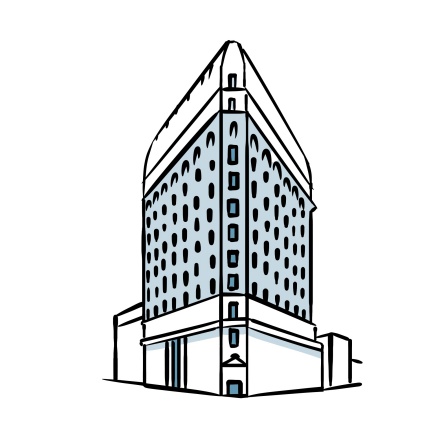
Standing before you is one of Vancouver's most iconic buildings, sparking our curiosity with its bright yellows and reds, and its old-world charisma.

Allow us a quick word about the building you see a little further down the street, coupled with an observation tower. This is the Harbour Center, a skyscraper built in 1977, which includes an office tower and the Vancouver Lookout.
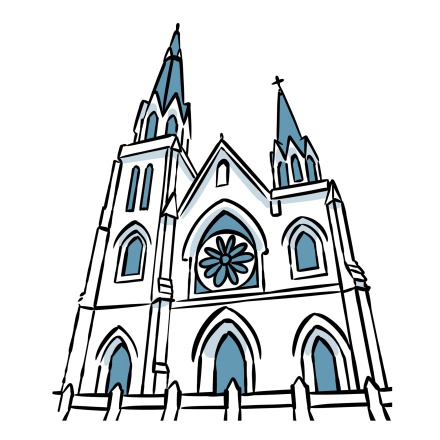
While it's unusual for Europeans to find a Gothic cathedral between two skyscrapers, in North America it's quite the norm. The building on your left is the Holy Rosary Cathedral.

This life-size bronze and platinum bull you see on your left is the work of Joe Fafard, the favorite artist of the building's owner, a certain Mr. Gordon Diamond.
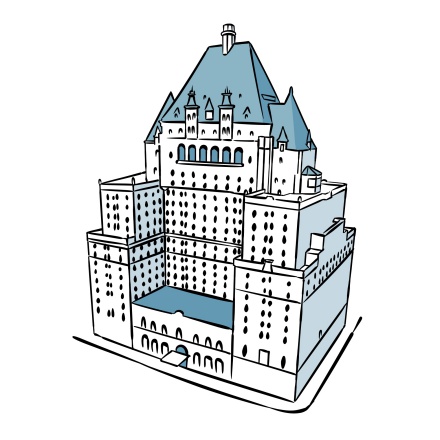
Across the street, you can't miss Vancouver's imposing Fairmont Hotel. If you've ever traveled around Canada, it's certainly not the first one you've stumbled upon, the best-known being in Quebec City.
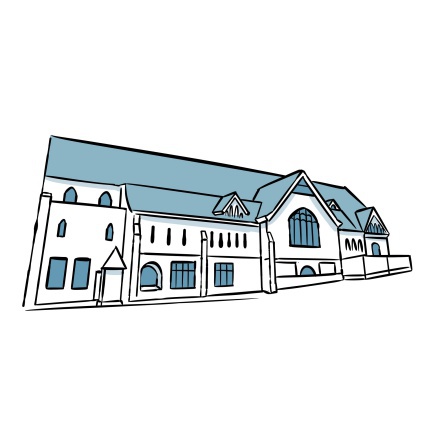
In case you were wondering, that little church on your right is the Cathedral of the Anglican Diocese of New Westminster. Built in 1895 in a gothic style, it is one of Vancouver's largest places of worship
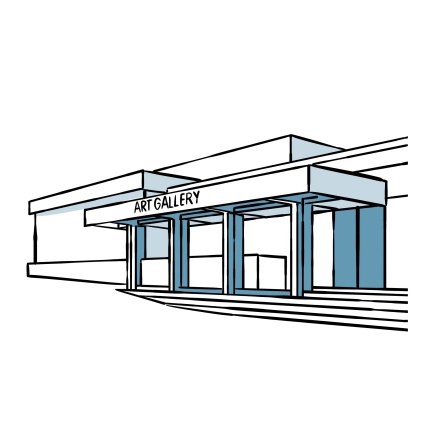
The neo-classical building on your left is the Vancouver Art Gallery. If the museum has this formal look, it's because the building was originally constructed in 1911 as the provincial courthouse.
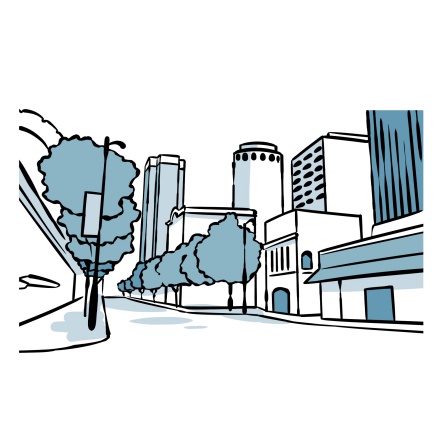
As you've probably noticed, Robson Street is one of the city's busiest shopping streets. In 1895, its high concentration of shops led to the installation of tramway lines.

To appreciate the importance of this sculpture, imagine it lit up- or rather, set on fire. As tradition dictates, after being lit by the sun's rays in Olympia, during a ceremony in the temple of Hera

Bute Street leads straight into Harbour Green Park, stretching along Coal Harbour. The city has many parks and green spaces, not to mention the incredible Stanley Park,

No, you are not dreaming, the sculpture in front of you truly is pixelated. It's called the "Digital Orca", and was built next to the convention center in 2009.

If there's one spectacle in Vancouver that both locals and tourists love, it's the ballet of the hydroplanes. As common as this may seem to our Canadian friends, it's not something you see every day in most places.
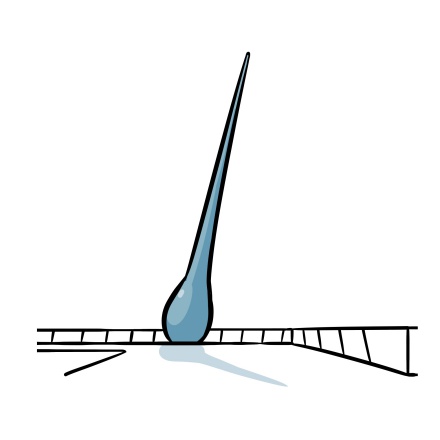
Another original sculpture, placed along the harbour, here comes "The Drop". You've no doubt heard about the city's unflattering nickname of "Raincouver" for its notorious rainfalls.
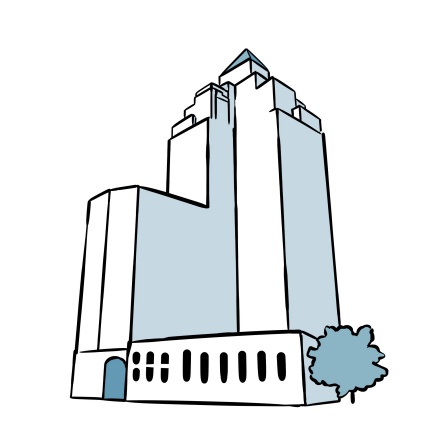
I'd like to draw your attention to the building on your right. It's the sublime 1930 Marine Building. You're looking at one of Canada's finest examples of Art Deco.
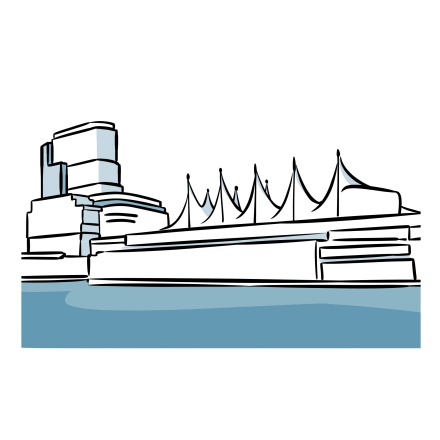
This long tip reaching out into the water is the part of the harbour known as Canada Place! It was created as the Canadian pavilion for the 1986 World's Fair.
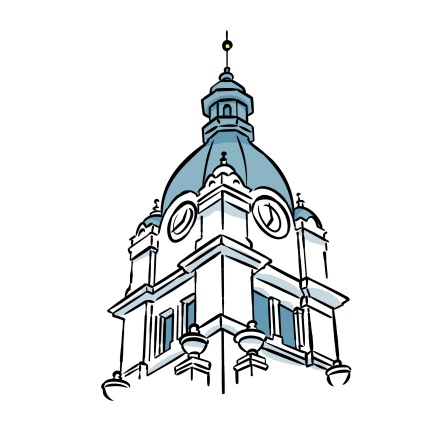
There are several imposing buildings here. On your left is the former Vancouver Post Office, it is now converted into a shopping mall. Designed in the Beaux-Arts style, it is a classic Vancouver landmark,
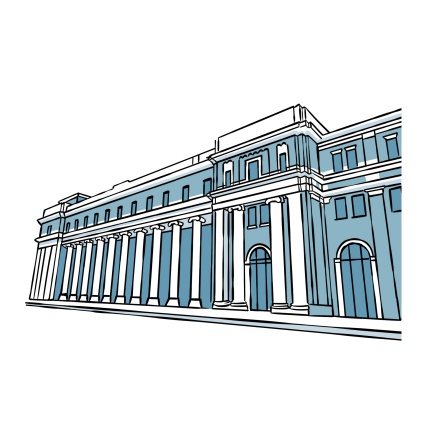
That beautiful column-supported building in front of you is the Waterfront Railway Station, owned by the Canadian Pacific Railway, one of Canada's national railroad companies.
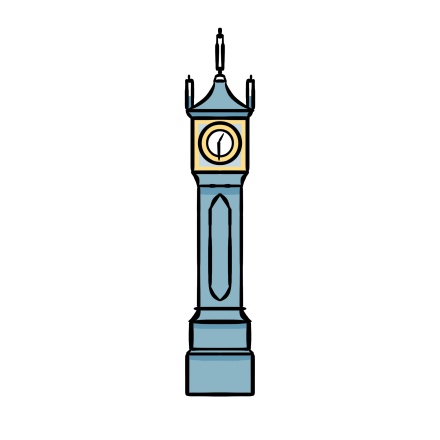
The real star of the show, the proud representative of Vancouver's historic town center, is her: Gastown's famous Steamclock. As its name suggests, it's a clock whose mechanism is powered by a steam engine.
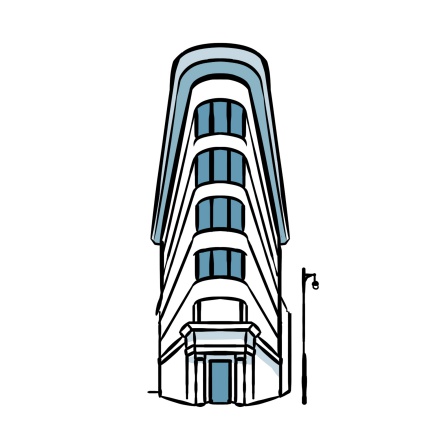
Your arrival at the intersection of Maple Tree Square, marks your entrance at the very heart of Vancouver's birthplace. Let's go back in time for a moment. You're standing where it all began, in the center of Gastown.
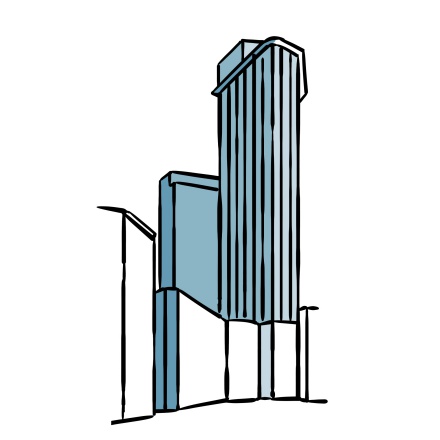
See this typical brick building, crowned by a big red W, sitting on top of a replica of the tip of the Eiffel Tower? This is the oldest part of a historic downtown building, constructed in 1903 for Woodward's department store.
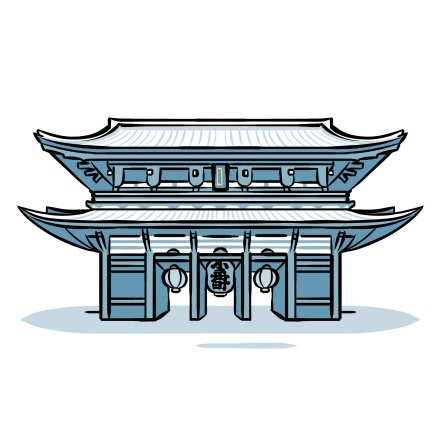
The Hozomon Gate, meaning “Treasure-House Gate”, was originally built in 942 to guard the sacred grounds of Senso-ji Temple. It has went through a lot over time—first burnt to the ground in 1631, it was rebuilt by Tokugawa Iemitsu, the third
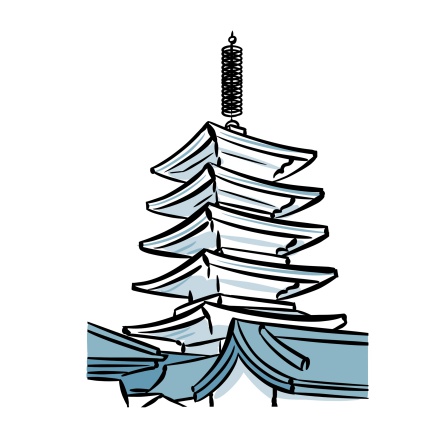
Right next to the Hozomon Gate stands one of Tokyo’s most remarkable buildings: the five-story pagoda, belonging to the Senso-ji temple complex. If you’re wondering, during ancient times, a temple wasn’t just a single building—it was often a
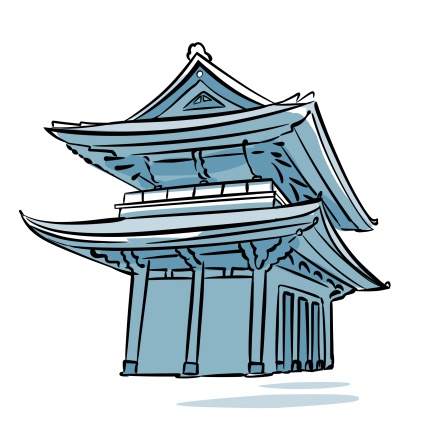
Here you are in front of Senso-ji, the oldest Buddhist temple in Tokyo. It was built in 628 to honour Kannon, the goddess of compassion. Back then, a temple wasn’t only a single building —no, it was bigger, as religious complexes often regrouped
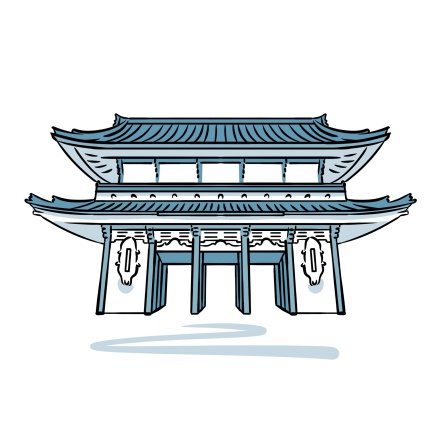
Unlike the Senso-ji Temple, this site is a Shinto shrine. To distinguish them, temples such as Senso-ji belong to the Buddhist faith, while shrines are part of Shinto. Built in 1649, only a few like this one survived the war—making it a rare and

You’re now in the heart of Asakusa, home to Tokyo’s oldest temple, Senso-ji. Unsurprisingly, it’s thanks to this landmark that the neighbourhood is one of the city’s most visited—if not the most visited—for its deep historical roots. A district

There’s just so much to say about Japan! Beyond the country’s religion, monuments, and culture, there’s also a lot to learn on its geography and people. First of all, know that the country covers over 6,850 islands of over 100m² in size. Good

You're walking along the docks of the Sumida River that runs through the heart of Tokyo. Just opposite, you’ll find the amazing Tokyo Skytree—one of the tallest towers in the world. Since its opening in 2012, it’s all everybody talks
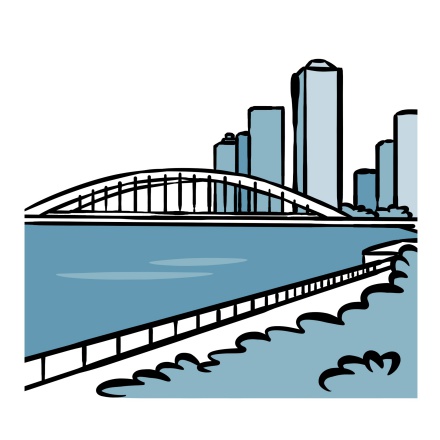
You're now walking alongside the Sumida River, passing next to the Tokyo Skytree through the northeast of the capital. It’s 23.5 kilometers long, and is quite important as it even gave its name to one of Tokyo’s 23 districts. The Sumida is the

As you make your way across this bridge that offers a beautiful view of the Tokyo Skytree, let’s pause for a moment and talk about Japanese culture. The first notable difference between Japanese and Western cultures, is the exceptional respect

Sumida Park stretches along both sides of the river it’s named after, offering a peaceful escape by the water among the famous cherry blossoms that bloom each spring. The park even hosts special events to celebrate the arrival of spring—
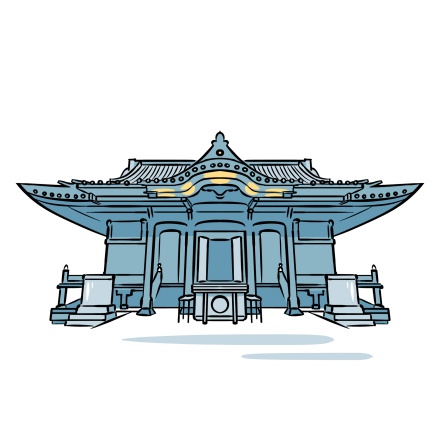
You’re now standing before the entrance leading to Ushijima Shrine, a Shinto sanctuary believed to have been built in the 9th century. It’s one of the few historic monuments in Tokyo that has survived both the devastating 1923 earthquake and

You cannot leave Japan without getting a glimpse of its rich and fascinating history—one that started thousands of years ago. It is believed that the first people arrived on the archipelago during the Paleolithic era, around 35,000 BC. Since
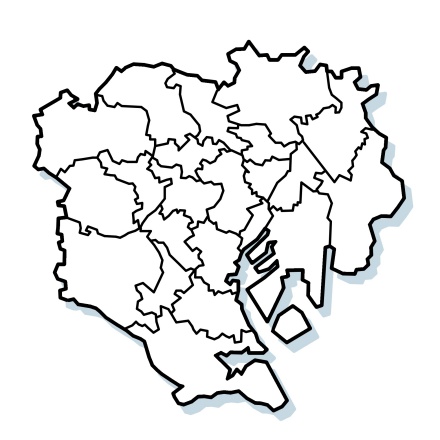
You’re now standing in front of the Sumida City Office. Tokyo consists of 23 wards, each with its own city hall and all overseen by the Tokyo Metropolitan Government. By the way, I highly recommend visiting the Tokyo Metropolitan
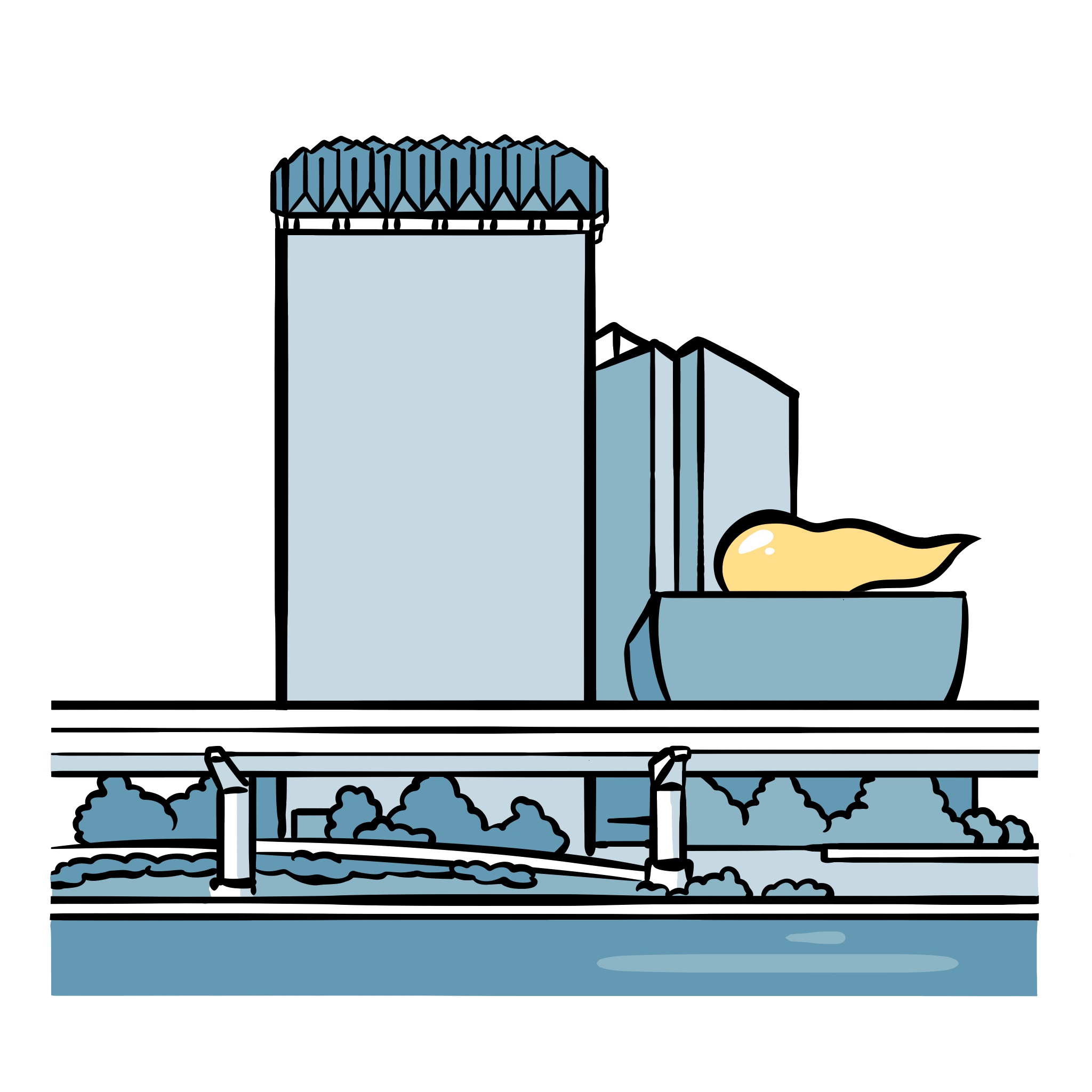
You’re now standing at the foot of one of Tokyo’s most unusual landmarks: the Asahi Flame. From down here, it might not seem obvious at first, but the taller one on the right was designed to resemble a beer pint with its frothy head. Inside,
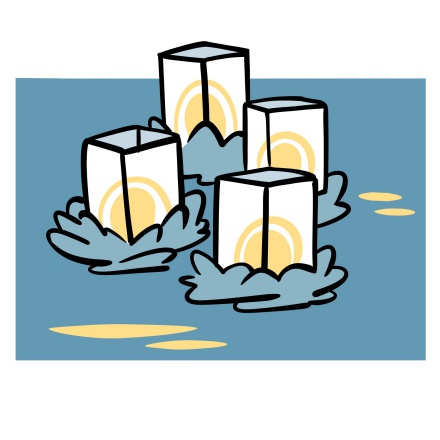
Crossing this bridge is the perfect moment to dive into a quick overview of the many festivals and religious celebrations that take place across Japan each year! An island with history deeply rooted into religion and tradition, it’s only logical for the

Here you are taking in a stunning view of the Tokyo Skytree—though, to be fair, it’s hard to miss since it’s the tallest tower in Japan! You can also spot the iconic buildings of the Asahi beer group, easily recognisable by their beer pint appearance

The gate before you marks the entrance to Sensō-ji—Tokyo’s oldest temple. It was built in the year 942, meaning it has stood through more than eleven centuries of history! Well not really, as the structure before you isn’t the original, since it was
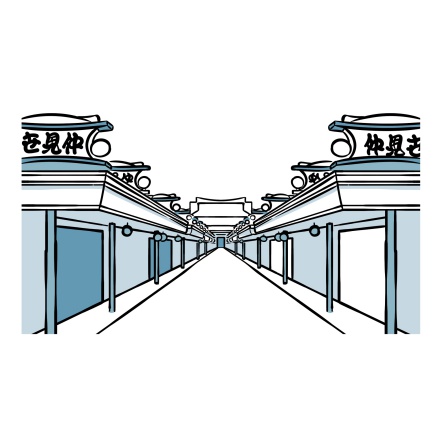
Welcome to Nakamise-dori, one of Japan’s oldest shopping streets. To walk down this vibrant avenue is like stepping straight into the heart of Japanese tradition. In front of you, these 90 stalls are mostly family businesses passed on through

You probably already know this, but if there’s one thing you cannot miss when visiting Tokyo, it’s trying its world-famous cuisine. When you think of Japan, images of skewers, sushi, maki rolls, or ramen naturally come to mind. But if you think

This promenade ends with a sweeping view over the Saint Lawrence river, one of the longest rivers in the world, stretching nearly 1200 kilometres. It links the Great Lakes to the Atlantic Ocean, and serves as their only natural outlet. Its estuary is the largest on
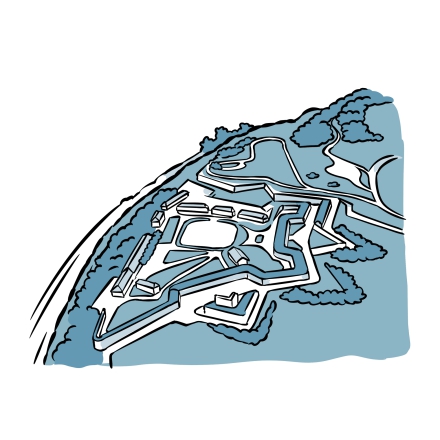
In front of you is the entrance to Battlefields Park, better known as the Plains of Abraham. To your right is the Citadel of Quebec, and to your left, the Plains of Abraham Museum. These two historic landmarks are among Quebec’s top attractions. The Citadel,
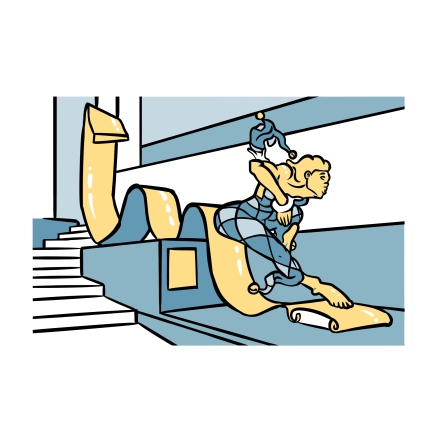
On the street corner, you’ll see a jester bowing and welcoming you with a dramatic flair! This playful sculpture is called Le Grand Bienvenue, or The Grand Welcome, and it’s the work of Quebec artist Nicole Taillon. For twenty years, this cheerful figure stood

The building in front of you is one of the most striking city halls in Canada. It was built on the site of an old Jesuit college dating back to the 17th century. The Jesuits arrived in New France in 1625 and established their college in Quebec to evangelise young
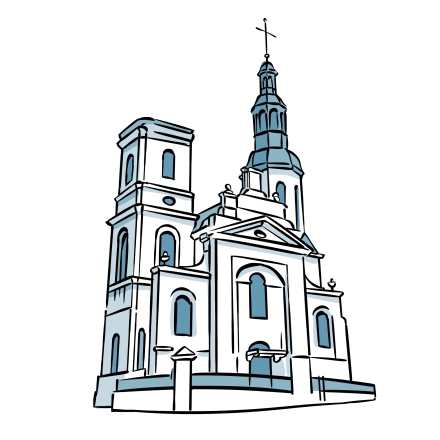
Welcome to Notre-Dame de Québec, the oldest Catholic church north of Mexico, and the only one outside Europe to have a Holy Door. The first church was built here in 1647 and named Notre-Dame-de-la-Paix, or Our Lady of Peace. In 1674, the church was
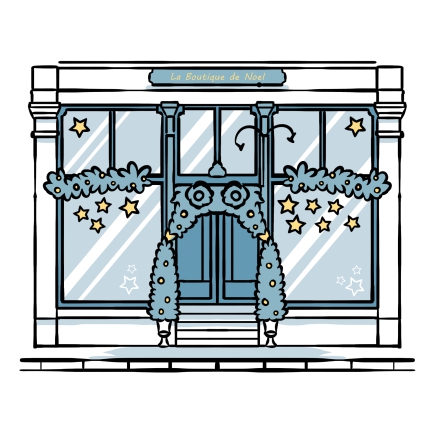
Whether the holidays are just around the corner or still months away, Quebec’s Christmas boutique is a must-see. This magical little shop is a dream come true for anyone who loves Christmas. It’s packed with decorations of every kind—from simple and classic, to
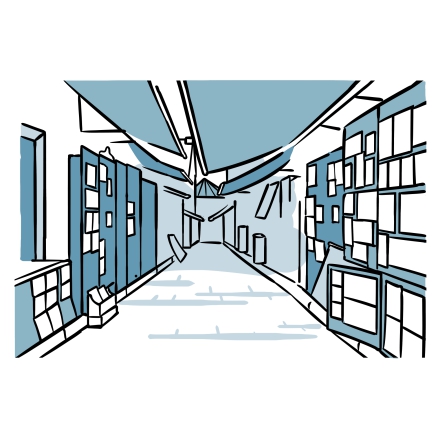
This charming little alley is called Rue du Trésor—or “Treasure Street.” It was given this name because it once led to the treasury on Saint-Louis Street, where colonists would exchange currency and pay their dues. In the 1960s, two artists started displaying their
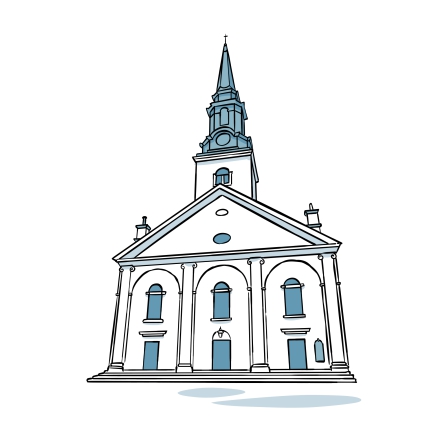
On your left, you’ll see a totem-like aluminum sculpture. It blends different elements of Old Quebec and is one of several commemorative monuments spread across the city’s four heritage districts—each one telling a piece of Quebec’s story. To your right
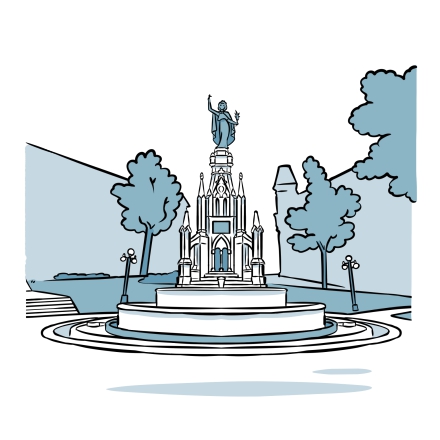
Welcome to Place d’Armes, one of the city’s top tourist spots. It sits at the foot of Château Frontenac, next to the Dufferin Terrace and the tourist information centre. This square dates back to the 1640s, when it was called Grand-Place and stood next to the old Château
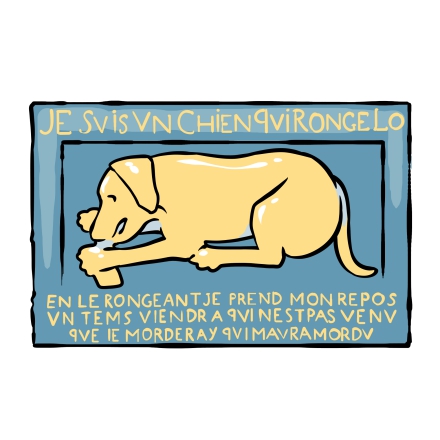
You’re now walking through the Passage du Chien d’Or, or Golden Dog Passage. It has nothing to do with the statue in front of you, which depicts Monseigneur de Laval, the first bishop of Quebec. To uncover the story behind the Golden Dog, look up at the
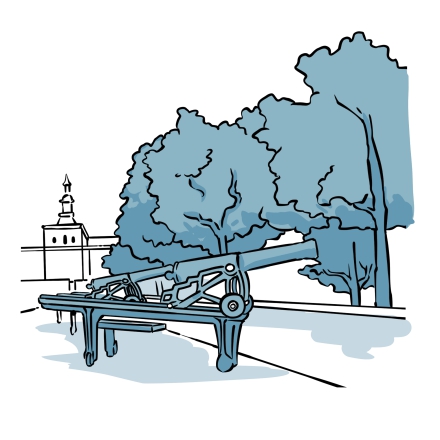
You’re now standing in front of Montmorency Park. The man on the pedestal is Georges-Étienne Cartier—a 19th-century politician, founder of the Province of Quebec, co-Prime Minister, lawyer, and author of the first version of the national anthem, O

Montmorency Park, perched at the tip of Upper Town, offers a breathtaking view over the Saint Lawrence River. This is the narrowest point of the river. In fact, the name Quebec means “where the river narrows” in the Algonquin language, used by the
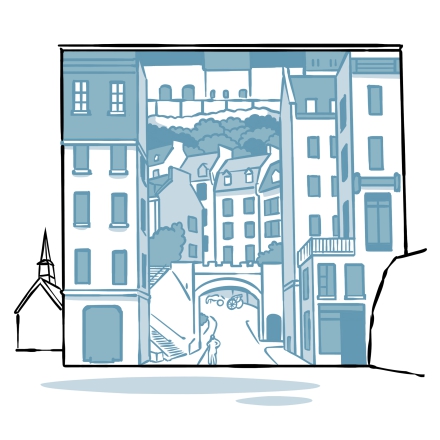
Here it is—the famous Fresque des Québécois, inspired by a similar mural in Lyon, one of France’s largest cities. This idea came from the president of Quebec’s National Capital Commission—a body responsible for promoting and beautifying the city. When he
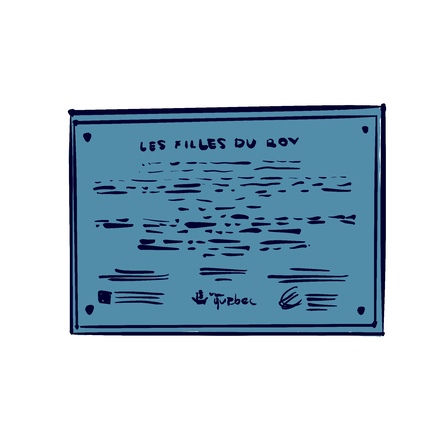
This commemorative plaque on the wall of the Barbel House pays tribute to the arrival of the Filles du Roy—the King’s Daughters—in New France. When Louis XIV ascended to the throne in 1661, the future of his American colony looked bleak. The British

Welcome to the heart of the city during the days of New France. This is where Samuel de Champlain settled, building his Habitation—a structure that served as a fort, a warehouse, a trading post, and a residence all at once. You can see its outline
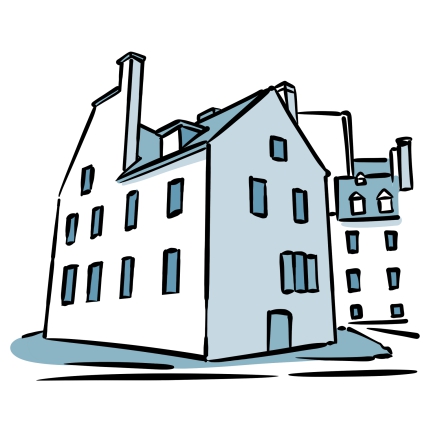
As you exit the charming rue du Cul-de-Sac—also known as Umbrella Alley, thanks to the colourful umbrellas overhead—you’ll find the entrance to the home of Jean-Baptiste Chevalier, a shipowner and merchant. It’s the house you just passed, with red shutters. The

To the left, you’ll see the beautiful Petit-Champlain mural, created by the Mural Création collective. The artwork depicts life in Cap Blanc, Quebec’s old working-class port district. It marks the entrance to Rue du Petit-Champlain—the most iconic tourist street in
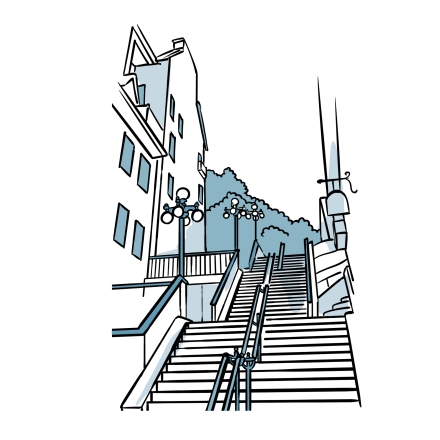
It’s time to head to Upper Town, at the top of Cap Diamant—the name early explorers gave to Quebec’s cliff, believing they discovered diamonds there. To reach the top, you have two options. For a few dollars, you can take the historic funicular, in service since 1879.
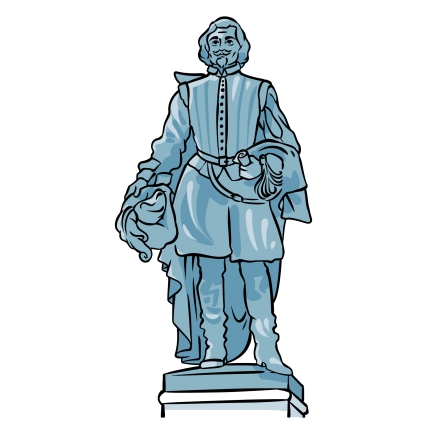
Let me introduce you to Samuel de Champlain, the founding father of New France. He laid the foundations for the colony and built alliances with Indigenous nations such as the Montagnais, Huron, Odawa, and Nipissing. He even fought alongside them in battle
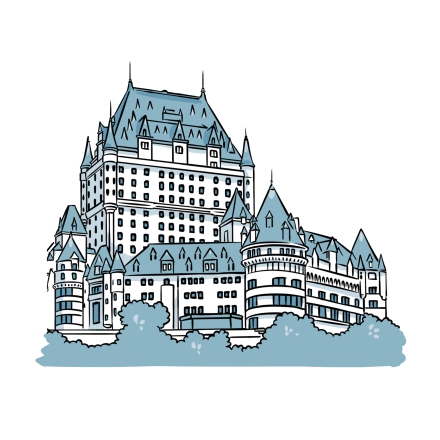
Rising up ahead of you is the Château Frontenac, an iconic symbol of the city, just like the Eiffel Tower or the Statue of Liberty. It’s the most photographed spot in Quebec—some even say it’s the most photographed hotel in the world. Yes, you heard that right—
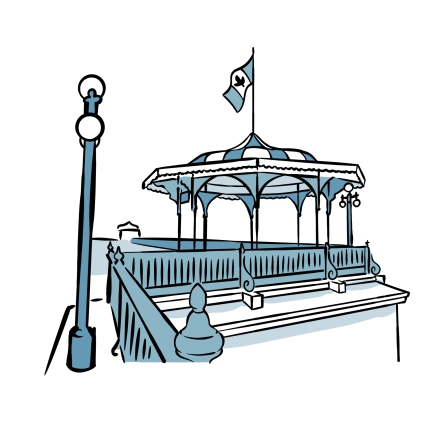
This beautiful walkway is Dufferin Terrace, one of the most popular tourist spots in the city. This was originally the site of Fort Saint-Louis, built in 1620 by Samuel de Champlain. His successor, Governor Montmagny, expanded the residence and built a
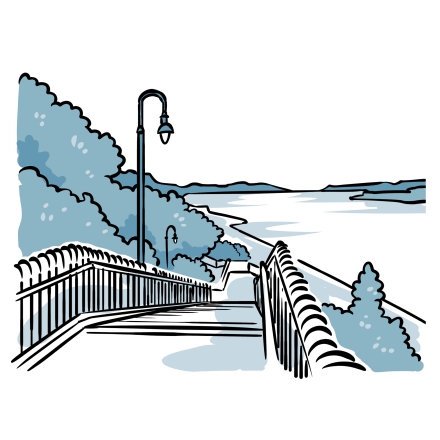
The wooden staircase in front of you leads to the Governors’ Promenade—an extension of Dufferin Terrace that connects Château Frontenac to the Plains of Abraham, along the Quebec Citadel. Stretching over 500 metres, it’s the perfect place for a peaceful walk,
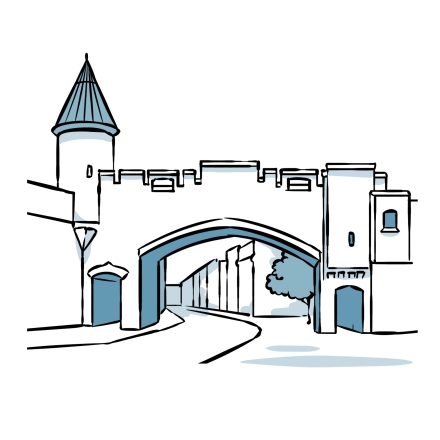
You’re now walking along the ramparts, between two of the most iconic gates of Quebec’s old city walls, surrounded by cannons aimed at a long-gone enemy. This is the only fortified city north of Mexico! The 4-kilometre wall was built around the city by the

Take a moment to admire the impressive building in front of you - the magnificent home of Quebec’s National Assembly. Built between 1875 and 1886, it’s one of the most iconic landmarks in the province. When the British North America Act was signed in
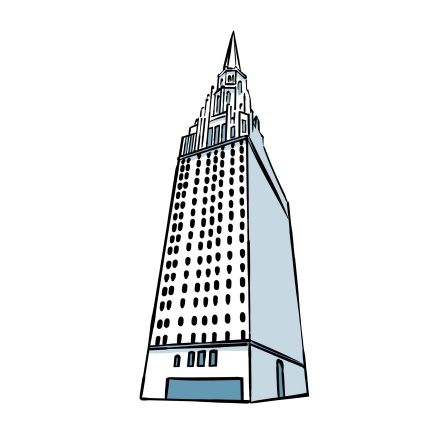
Across the street, the Gothic skyscraper you see is actually a church! That's right! In fact, it's the tallest church in the world, with its bell tower rising to 173 metres!

Vous voilà, arpentant la Riverwalk, tel un vrai Chicagoan. Oui, si vous n’aviez pas encore entendu ce mot, c’est bien comme ça que l’on appelle les habitants de Chicago.
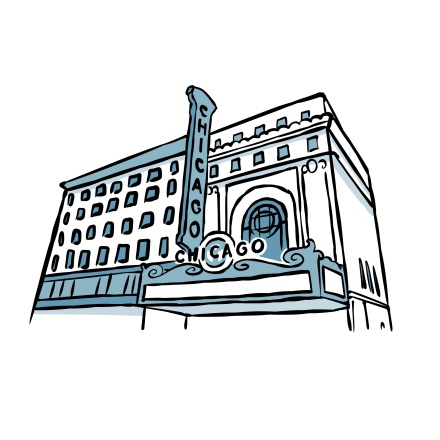
As magnificent as it is iconic, you're now looking at the superb Chicago Theatre! It opened its doors in 1921, in the glittering Baroque style that would set the tone for the opening of future movie theaters across the United States.
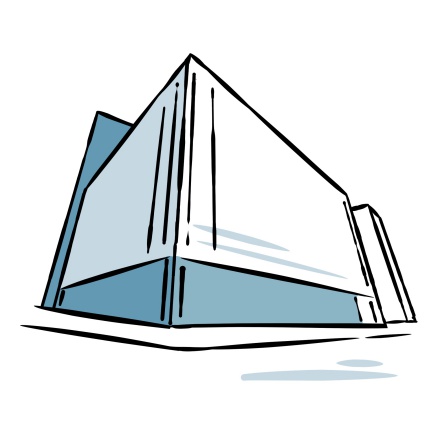
The famous clock at the corner of the Marshall Building indicates that you are passing the legendary Macy's department store. Classified as a historical landmark, this building, constructed at the end of the 19th century, undeniably contributes to Chicago's culture.
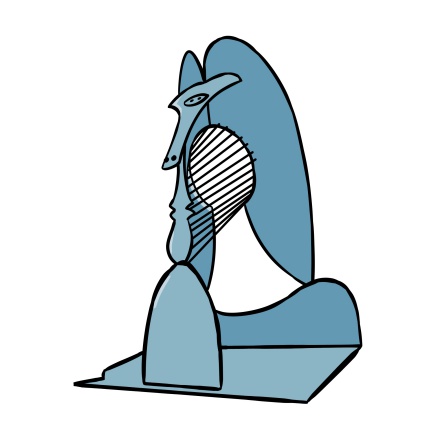
You're not dreaming, it really is a 15-metre-high Picasso, standing right in front of you in the heart of downtown, on Daley Plaza. This open-air work of art, accessible to all, will be the first of many.
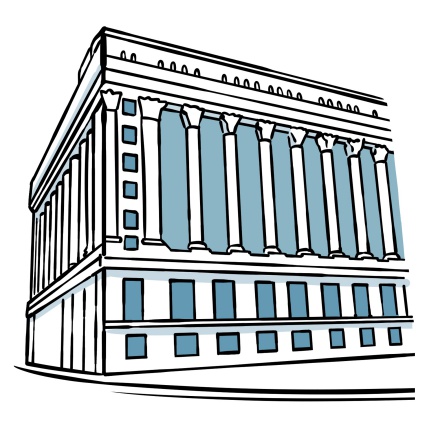
The imposing neoclassical building you've just walked past and left behind is Chicago's City Hall. This is where you'll find the office of the mayor, clerk and treasurer, as well as several municipal services and the chambers of the Chicago City Council.
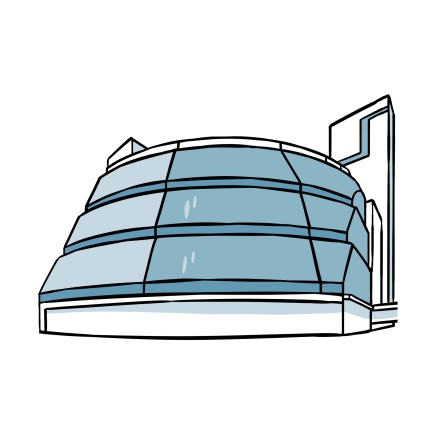
You are now inside the incredible Thompson Center. It's a civic building that houses government offices as well as the Atrium shopping center. Far be it from us to force you to go shopping, but once inside, you’ll quickly understand why we chose to have you walk through it!
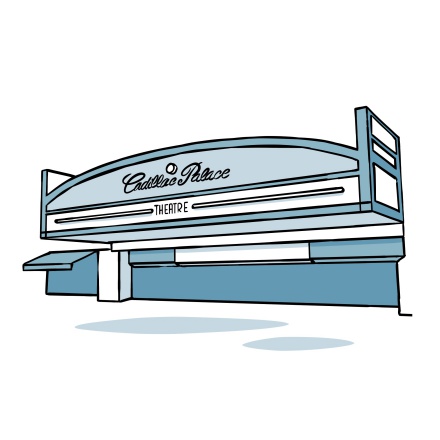
On your left, you’ll find the Cadillac Palace Theater. Built in 1926, it opened as the New Palace Theatre. The interior is grandiose, inspired by the Château de Fontainebleau and the Château de Versailles.
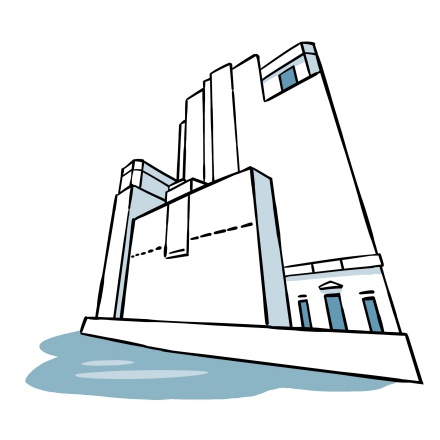
Across the river, you'll find the Civic Opera House, home to the Lyric Opera of Chicago. One of the most prestigious opera houses in the world, it boasts the second largest auditorium in North America.

You know well that a city full of skyscrapers, each taller than the other, inevitably offers numerous spectacular viewpoints. In Chicago, there is the Willis Tower, which you may have known by its former name, the Sears Tower.

You have before you one of the architectural icons of the city: The Rookery Building. Its name means "crow's nest". This alludes to the birds that perched there, but also and especially to the politicians who worked inside.
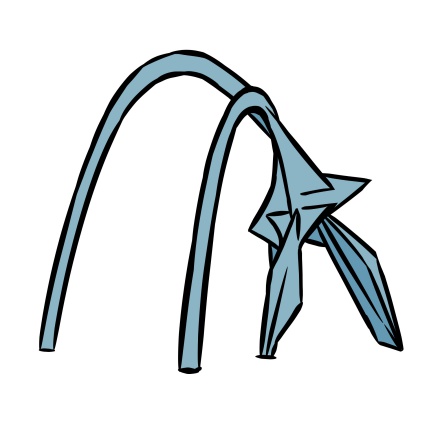
Here is a new street art piece, typical of Chicago. It's Calder’s Flamingo, by Calder. He is an American sculptor and painter who’s realm is abstract art, expressionism, modern art, and surrealism.
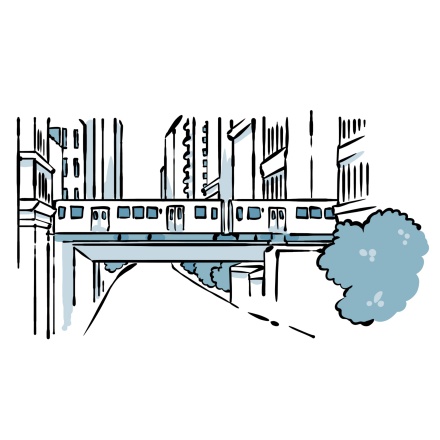
You have in front of you one of the elevated train bridges of Chicago's "L" system. You might even see one of those trains passing by, they’re a bit old school but integral to the city's charm.
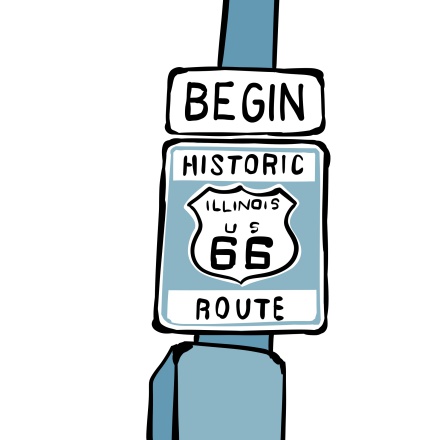
There it is: the famous "Begin route 66" marking its start. Because it's right here, on the corner of East Adams Street in Chicago, that it all begins. The End sign, on the other hand, can be found 3940 km away, on the Santa Monica pier in Los Angeles.
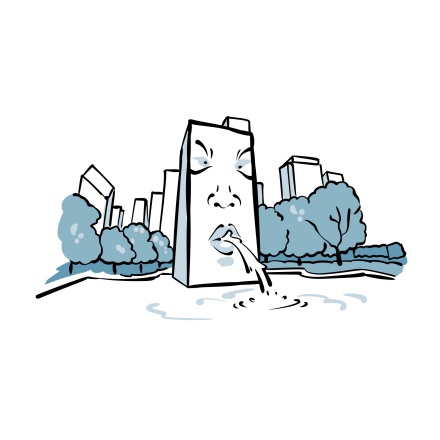
You now arrive in front of the famous Crown Fountain in Millennium Park.Created by the Catalan artist Jaume Plensa it was inaugurated in July 2004.
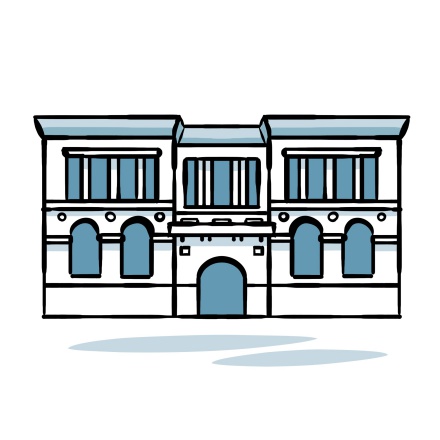
Spoiler alert: you're about to see a fabulous place! You're standing in front of the Chicago Cultural Center, the first completely free cultural center in the United States.

Here, you are in front of the famous magic bean of Chicago. Officially named the Cloud Gate, it is known as The Bean by insiders;Or the fabulous story of an artwork that became the symbol of a whole city in no time.
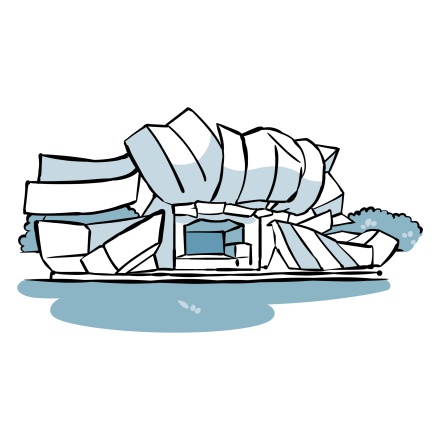
A couple of steps away from the famous Bean stands another of Millennium park's major works: the Jay Pritzker Pavilion. It's a huge bandstand designed by the renowned architect Frank Gehry, who is best known for equally strange and memorable structures such as the Guggenheim Museum in Bilbao and the Louis Vuitton in Paris.

You now find yourself on the BP Pedestrian Bridge. If it is indeed a simple pedestrian bridge, the name BP does serve a double purpose here, as the British Petroleum company BP, donated 5 million dollars for its construction.
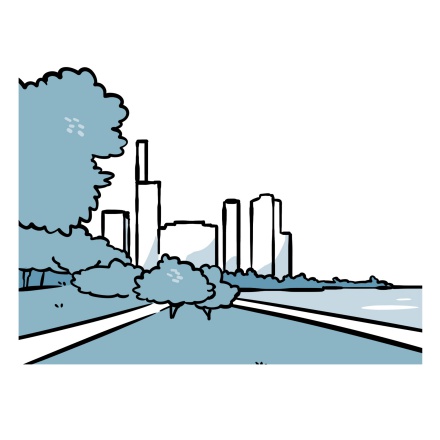
Have you noticed? Chicago is really green. Public parks are vast and well-maintained. Here, you are in the Maggie Daley Park, created in 2012 from the conversion of the northern part of Grant Park, previously a parking lot.
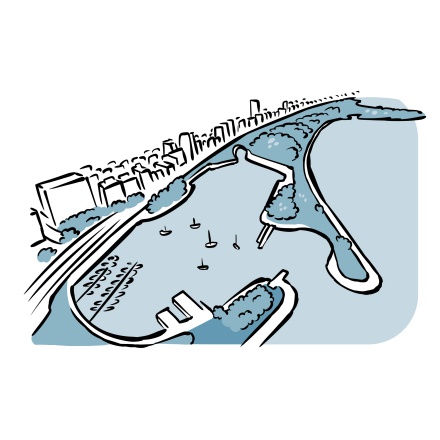
Just so you can find your bearings in this enormous town, know that you are about 500 meters away from the shores of Lake Michigan. If you continue on your right, you will come across the Lake’s front Trail, a renowned hiking trail that stretches along Lake Michigan for 29 kilometers, or 18 miles.

Allow me to take advantage of the fact we're passing a major fire station to explain the reason why Chicago seems so brand new. The remarkable and renowned architecture that Chicago can now boast about is actually owed to its most tragic event, the infamous Great Chicago Fire.

Look up, and you'll see a small bronze statue of a woman emerging from the waters of Lake Michigan, surrounded by flames, animals, and wheat.She represents the rebirth of the city after the Great Fire and how it subsequently became a pioneering city in several fields.
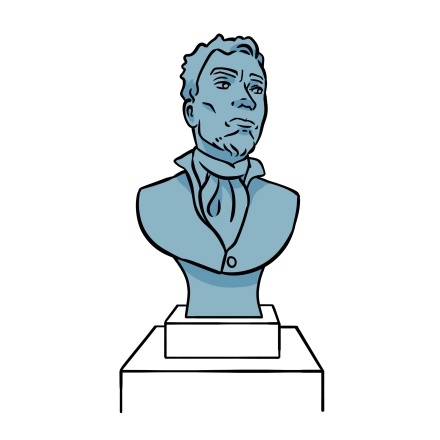
Right at the entrance of the bridge, you will see a statue of Jean Baptiste Point du Sable. His name may not ring a bell to you, but come closer and get to know the founder of Chicago! This sculpture , installed in 2009, is a gift from members of the Haitian-American community of Chicago.
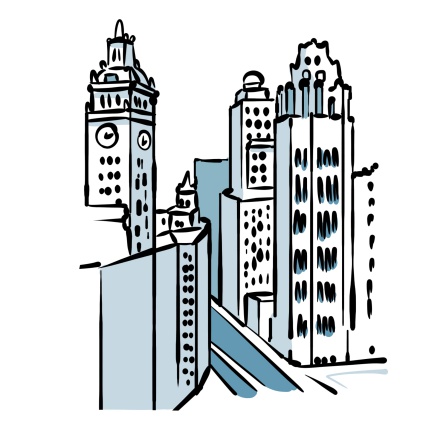
Let’s face it this bridge is a superb vantage point from which you can enjoy an iconic view over Chicago. This view is framed by the group of 4 buildings erected in the 1920s surrounding the bridge: 333 North Michigan, the London Guarantee, the Wrigley and the Tribune Tower.

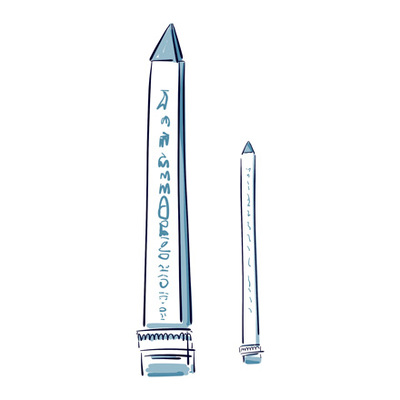
This long public square, now called Sultan-Ahmed Square, was once the Hippodrome of Constantinople, back in Roman times! It used to be a colossal arena for chariot races; construction began under Emperor Septimius Severus

Cisterns were a common sight in Constantinople, aka the capital of the Byzantine Empire. Since there were no rivers nearby, the city relied on a system of aqueducts to meet its water needs. And as Constantinople was much-

On your right you've got yet another Roman relic: the Column of Constantine. It's the last one still standing, but know that it was once part of a massive Roman forum, built right next to the Wall of Severus; this forum was
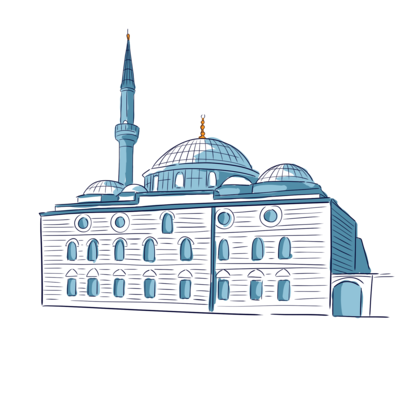
That little mosque on your right is the Ottoman Sinan Pasha Mosque. It dates from the 16th century and was built by Mimar Sinan, chief architect who designed over 300 buildings for Sultan Suleiman the Magnificent.

It's finally here! The moment you've probably been waiting for ever since you planned your trip to Istanbul: welcome to the Grand Bazaar! For centuries, goods from the East – spices, wheat, silk and honey – met goods from
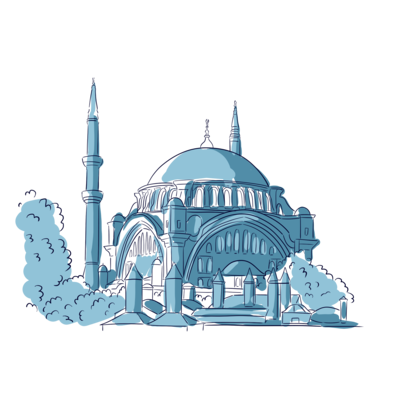
Near the Grand Bazaar, you'll find the Nuruosmaniye Mosque. You'll notice that it looks nothing like the other mosques you've seen so far – it's built in the Ottoman Baroque style, the very first of its kind in Istanbul!
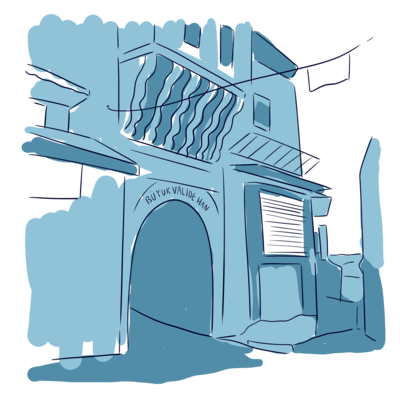
On your left, you'll find the entrance to the Büyük valide han, one of the many scattered around Istanbul. Back in the day, these were roadside inns for camel-riding merchants from the East, who would come to sell their
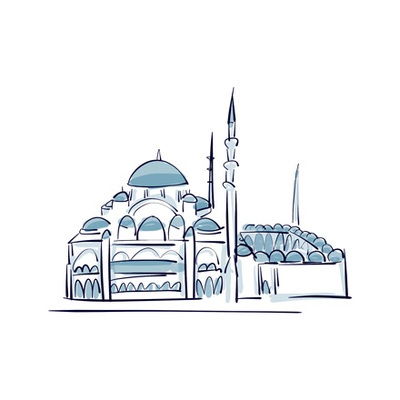
This is the mosque of Suleiman the Magnificent. It may not be on most tourist guides, but trust us, it's incredible and quite easy to get to. The best part? The mosque is perched on a hill, so the views are to die for!
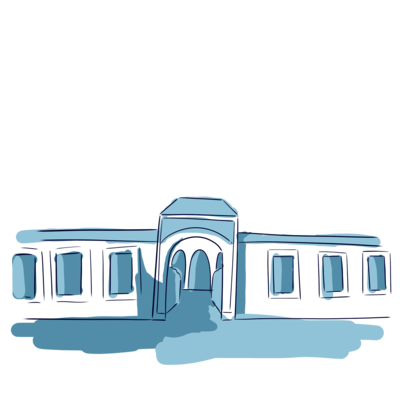
Welcome to the Süleymaniye Mosque courtyard. Here, you'll find a colonnade crowned with 28 domes resting on 24 antique columns. Right in the center, there's a small white marble structure. It's a sadirvan, a special

As you stroll through the gardens behind the mosque, it all clicks into place. No wonder Suleiman chose this hilltop location! This sea of grey domes with slender chimneys stretches all the way down to the Bosporus.
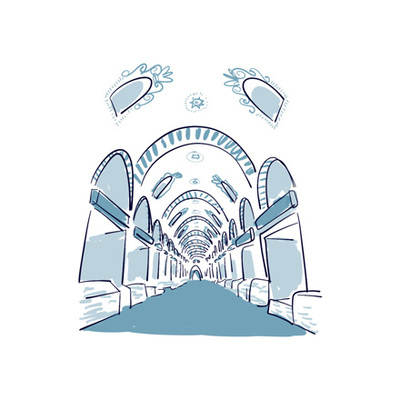
This is the entrance to the Egyptian Bazaar, Istanbul's famous spice market. It's a must-see on any trip to Turkey! Here, you can sample the country's spices, nuts and sweets – it's a real feast for the senses.

This is yet another of Istanbul's emblematic mosques. This so-called New Mosque was actually built in 1663. Yes, I know, with a name like this, you'd expect it to be a little more recent. But hey, it's a bit like the Pont
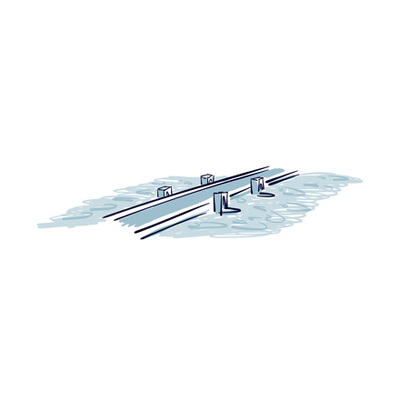
Life at its liveliest. Fishermen are reeling in their catches, people are dodging between musicians and caricature artists, restaurants are packed grilling fresh fish with lemon and coriander, and seagulls are squawking

From here, you have a breathtaking view of the Bosporus. This waterway has been a coveted passage for ages, playing a key role in Istanbul's history. As a matter of fact, the Bosporus and Dardanelles, on the other side of
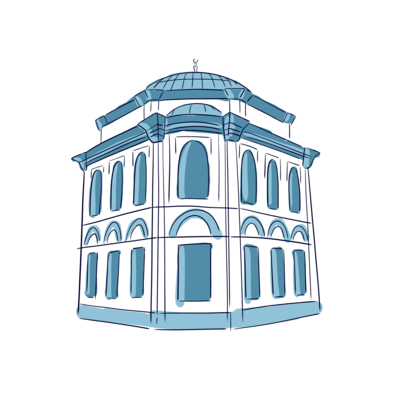
Just ahead on your right is the tomb of Sultan Abdul Hamid I. He was the 27th sultan of the Ottoman Empire. Inside the mausoleum, you'll find a total of 20 sarcophagi, including that of his assassinated son, Sultan Mustafa
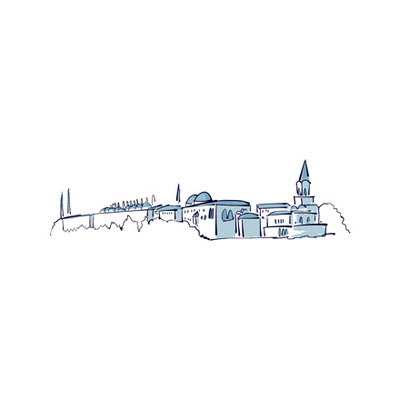
For a total of 400 years, from the 15th century all the way to the early 19th century, the Topkapi Palace was the beating heart of the Ottoman Empire. Built at the tip of the Seraglio Point overlooking the Golden Horn

Check out this beauty! This isn't just any station – it's the former terminus of the Orient Express! It was built in 1890 by a Prussian architect, commissioned by the Sultan to work for the Ottoman Empire.
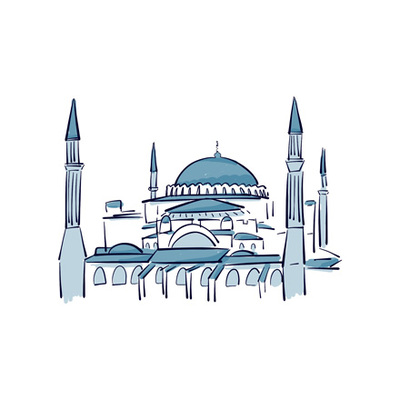
Let's talk a bit about the famous Hagia Sophia that's right in front of you. The building alone sums up the city's complex history and turbulent past. Today, it's yet again a mosque, but as its Christian name suggests

You're now in front of the entrance to the mythical and mystical Basilica Cistern. Surely the most mysterious and fascinating spot in all of Istanbul. It's a water reservoir built for the Byzantine emperor Justinian I
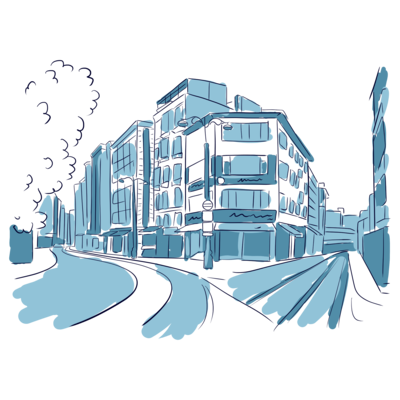
Here you are at the heart of Sultanahmet, Istanbul's most touristic district. This is where you'll find most of the city's tourist attractions. This district is dripping with history! Believe it or not, almost 3,000 years

Introducing Istanbul's most famous mosque, the Sultan Ahmed Mosque, or "Sultanahmet Camii" in Turkish. You probably know it as the Blue Mosque, as its interior’s covered in blue and white ceramic tiles, reminiscent of
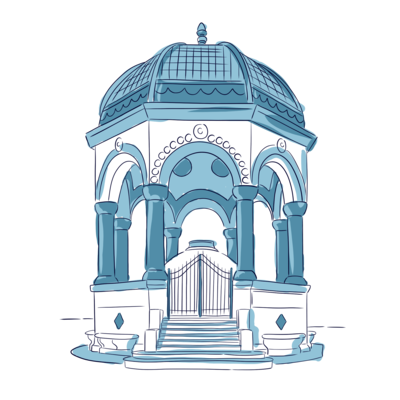
This is the German Fountain! This exquisite structure, topped by a neo-Byzantine gazebo, was a gift from Kaiser Wilhelm II, the last German Emperor and King of Prussia. It was built in 1898 to commemorate the second
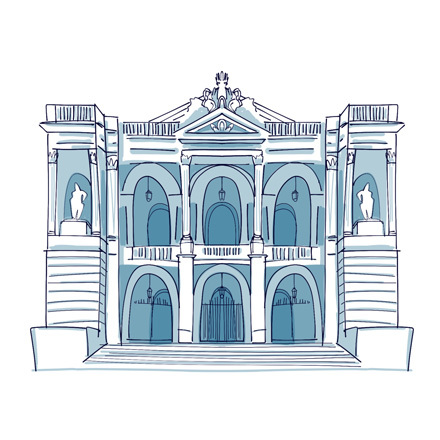
This magnificent building is the Toulon Opera House. Built in 1862, it was originally designed to seat nearly 1,800 people, just a hundred fewer than the famous Opéra Garnier in Paris.
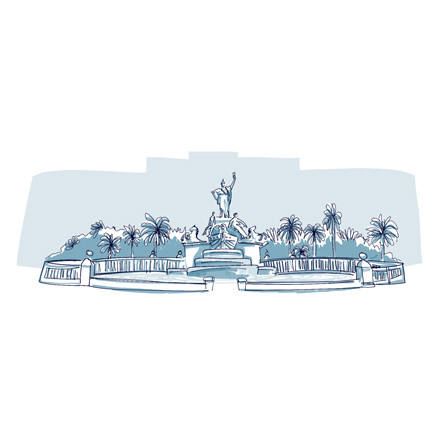
Place de la Liberté is the beating heart of Toulon. Designed in 1852 by two brothers, André-Joseph and Gaudensi Allar, this central square quickly became a favourite spot among locals.

Lined with cafés and restaurant terraces, it’s the perfect spot to sit back, relax, and take in the lively southern atmosphere. At one end of the square, you’ll find the Fontaine des Trois Dauphins, the Fountain of the Three Dolphins.
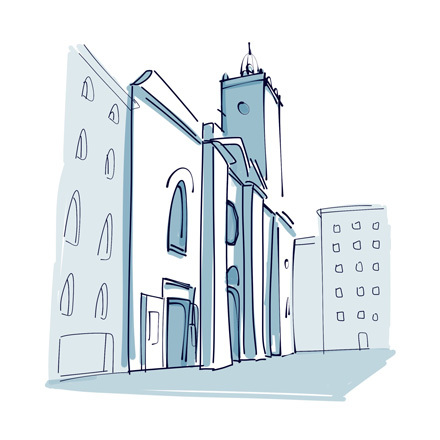
Welcome to the Sainte-Marie-de-la-Seds Cathedral, the oldest building in the city. The first church on this site was built in the 5th century, but the version you see today dates back to the 11th century, with renovations made over the years to accommodate a growing number of worshippers.
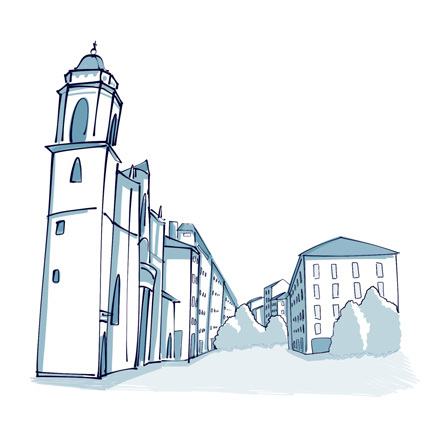
On both sides of the street, you’ll find shops of all kinds, including market stalls overflowing with the best Provençal flavours. This market even inspired a famous song by French singer, Gilbert Bécaud, called Les marchés de Provence.

On your left is 89 Cours Lafayette. Take a moment to look up at the second floor of the building… and you’ll spot one of Toulon’s quirkiest curiosities: a cannonball stuck in the wall!
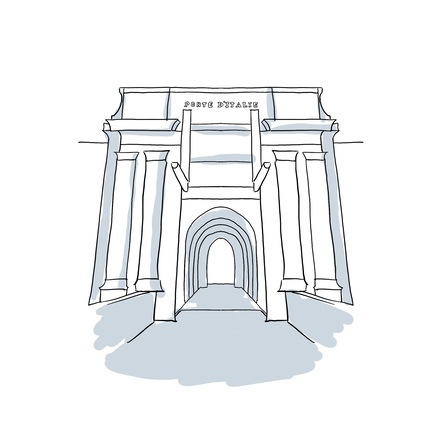
Built in the 18th century from plans by the famous French military engineer Vauban, this gate is one of the last surviving parts of the old fortifications that surrounded Toulon.
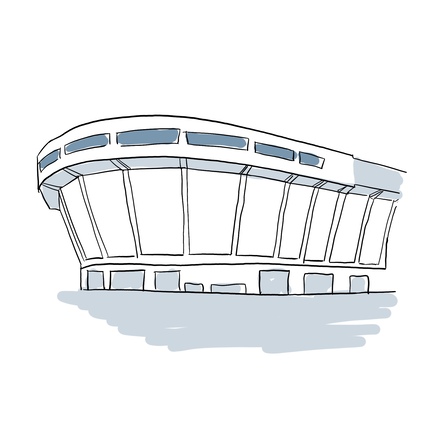
Calling all rugby fans! You’re now standing in front of the legendary Stade Mayol, a true symbol of Toulon. Built in 1919, Félix Mayol, a local singer and devoted rugby fan, donated the land to the Toulon Rugby Club.
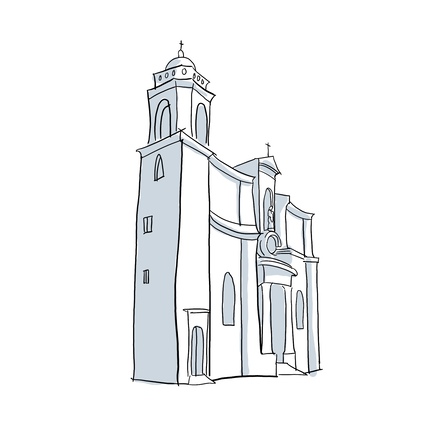
This beautiful church on Place Saint-Louis was built in the 18th century, replacing a chapel that stood here for over a hundred years. Its style is baroque, inspired by Roman and Piedmontese architecture, with a distinctive curved porch that makes it truly stand out.

Before you set off to explore, you should know that Toulon’s harbour offers more than its beauty. It’s France’s largest naval port and a key military base, home to most of the French navy’s fleet.
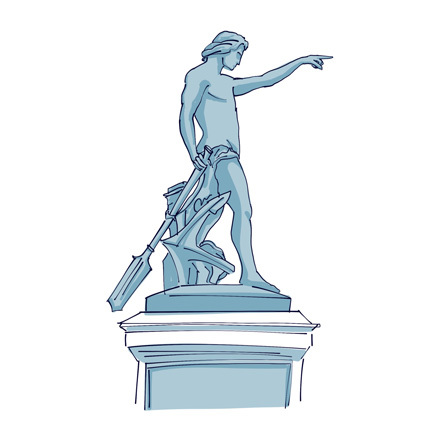
This statue is one of Toulon’s most iconic landmarks, the Génie de la Navigation, or “Spirit of Navigation.” Facing the harbour with one finger pointing out to sea, it captures the daring spirit of explorers braving the oceans.
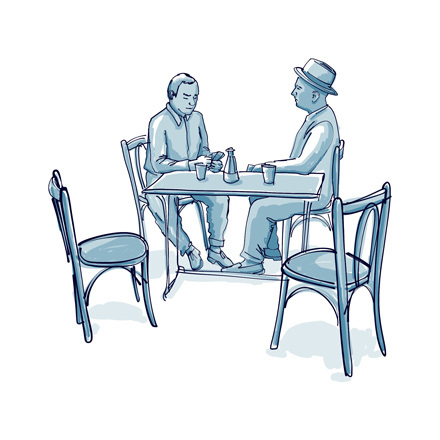
This charming life-sized statue, known as La Partie de Cartes, or the Card Game, features two beloved characters: César and Panisse, part of Marcel Pagnol’s famous Marseilles Trilogy

This street is a little slice of paradise for art lovers! With its galleries, studios, and creative boutiques, it’s become the hub of artistic expression in Toulon.

With its neoclassical architecture inspired by Greco-Roman design, Saint-Louis Church hasn’t always been a place of worship.
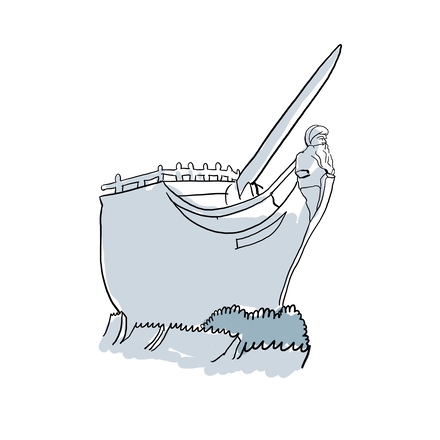
You’re now standing on Place Vatel. While the palm trees give this square in the historic centre plenty of charm, it’s the large ship sculpture on the wall that really grabs your attention.
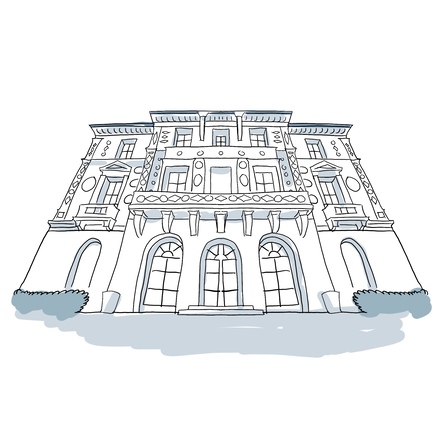
It’s hard not to be struck by this building’s vibrant colours! Located on Boulevard Général Leclerc, this multicoloured structure is the Hôtel des Arts.

This impressive U-shaped building is Toulon’s Museum of Art, a true haven for the city’s artistic heritage. Built in 1888, it houses over 3,000 works, from regional archaeological finds to contemporary art, including paintings spanning the 15th to the 20th century and a remarkable photography collection.

Once known as the “Jardin du Roy,” this small one-hectare park has long been a favourite spot for Toulon locals looking to relax.
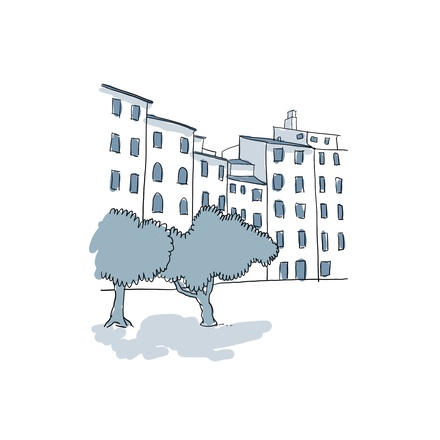
Place de l’Équerre is a fine example of the beautiful architecture that gives southern French cities their charm. Located in the heart of Toulon’s shopping district, this square is lined with cafés and restaurants sure to please any foodie.